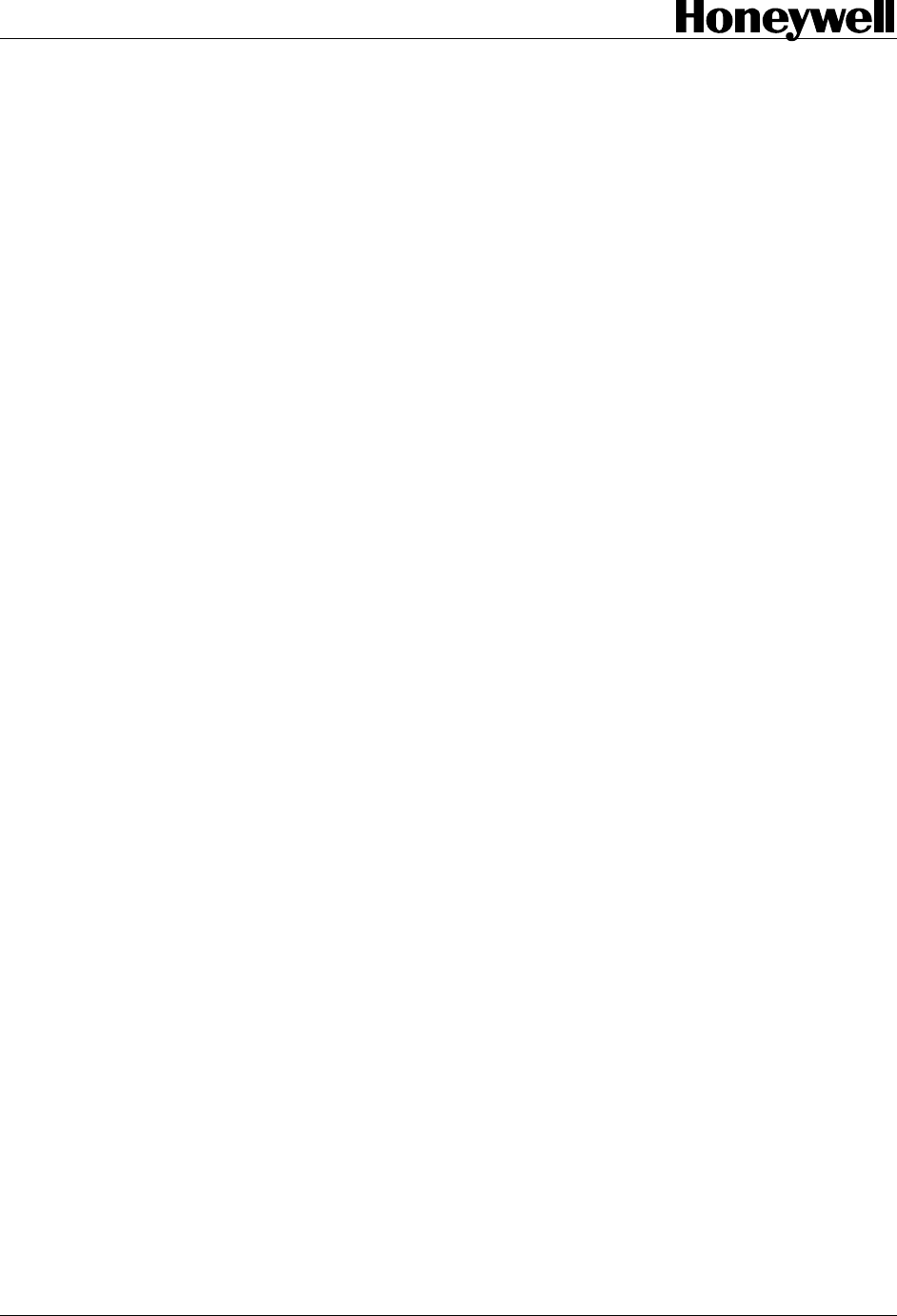
UDC3500
Universal Digital Controller
Product Manual
51-52-25-120
Revision 4
March 2012
Honeywell Process Solutions

ii UDC3500 Universal Digital Controller Product Manual March 2012
Notices and Trademarks
Copyright 2012 by Honeywell
Revision 4 March 2012
While this information is presented in good faith and believed to be accurate, Honeywell disclaims the implied
warranties of merchantability and fitness for a particular purpose and makes no express warranties except as may be
stated in its written agreement with and for its customers.
In no event is Honeywell liable to anyone for any indirect, special or consequential damages. The information and
specifications in this document are subject to change without notice.
Honeywell, PlantScape, Experion PKS, and TotalPlant are registered trademarks of Honeywell International Inc.
Other brand or product names are trademarks of their respective owners.
Honeywell Process Solutions
1860 West Rose Garden Lane
Phoenix, Arizona 85027
.
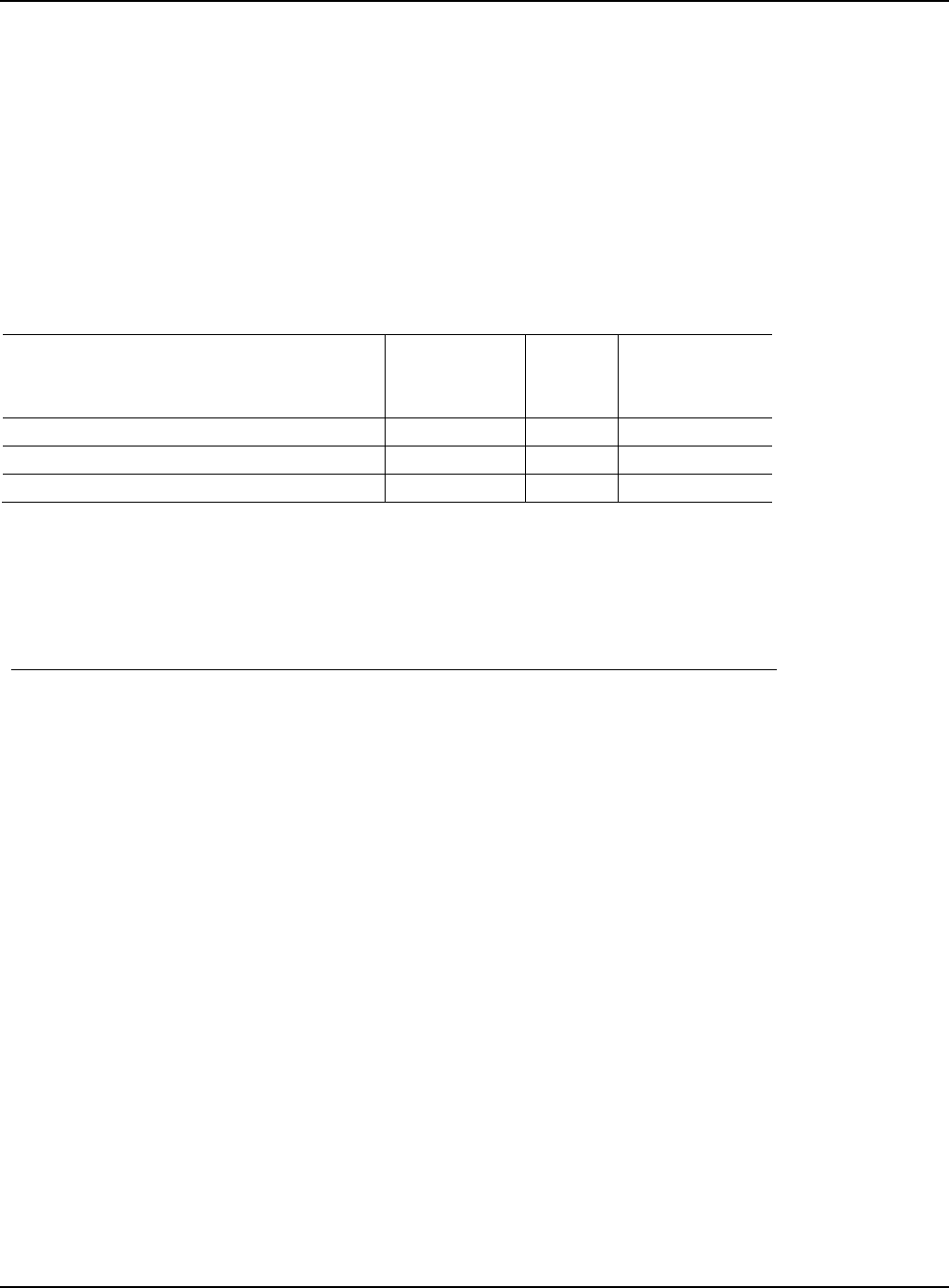
About This Document
Abstract
This document provides descriptions and procedures for the Installation, Configuration, Operation, and Troubleshooting of
your UDC3500 Controller.
Revision Information
Document Name
UDC3500 Universal Digital Controller
Product Manual
Document ID Revision
Number
Publication Date
Input Voltage change 51-52-25-120 4 March 2012
References
The following list identifies all documents that may be sources of reference for material discussed in this publication.
Document Title
Process Instrument Explorer manual 51-52-25-131
How to Apply Digital Instrumentation in Severe Electrical Noise
Environments.
51-52-05-01
Modbus RTU Serial Communications User Manual 51-52-25-66
MODBUS Messaging on TCP/IP Implementation Guide. 51-52-25-121
March 2012 UDC3500 Universal Digital Controller Product Manual iii
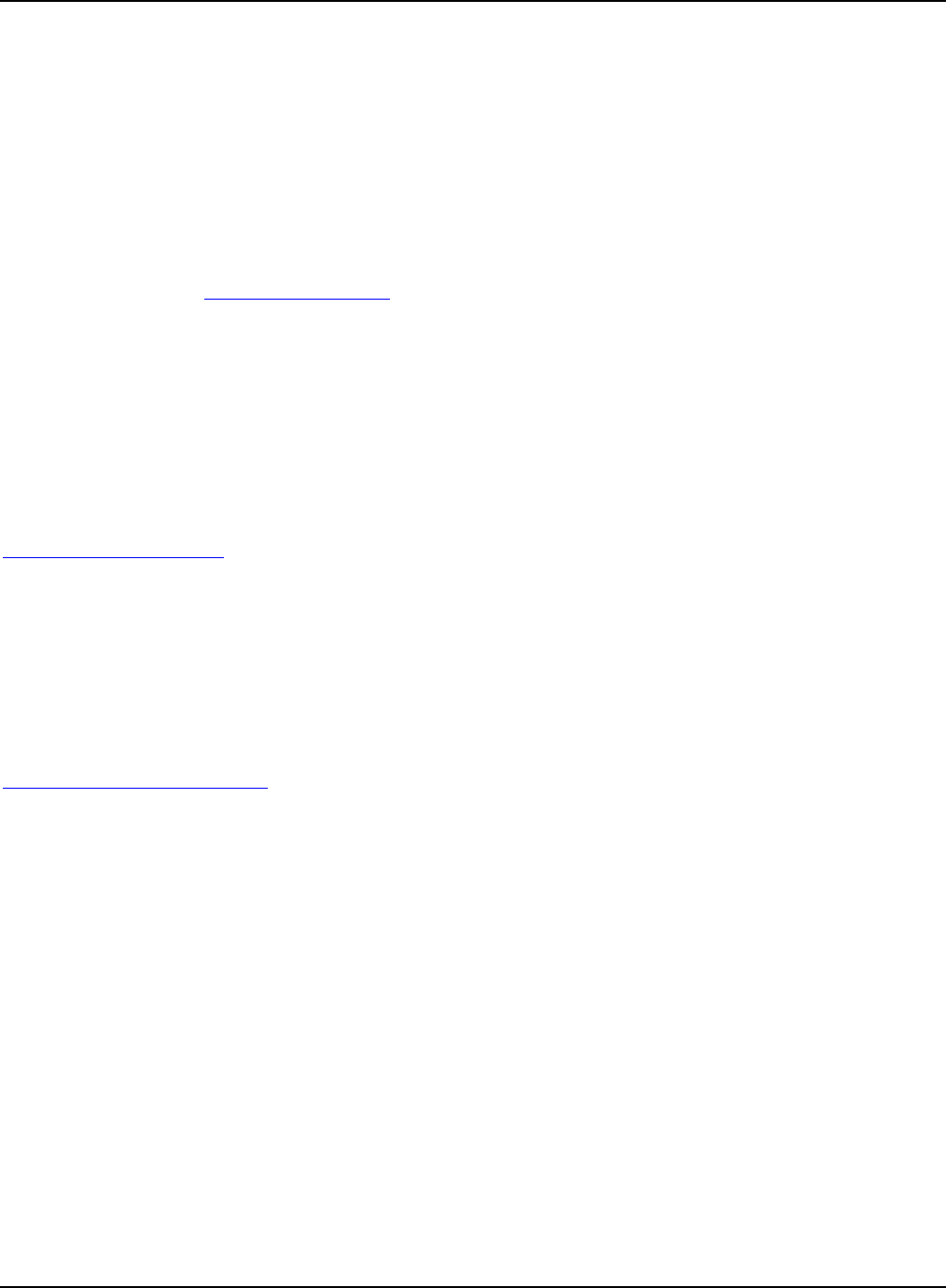
Support and Contact info
United States and Canada
Contact: Honeywell Process Solution
Global Technical Support - Phone: 001-800-423-9883
Customer Service (HFS) - Phone: 001-800-343-0228
Outside United States - Phone: 001-215-641-3610
Calls are answered by dispatcher between 6:00 am and 4:00 pm Mountain Standard Time.
Emergency calls outside normal working hours are received by an answering service and returned
within one hour.
Email support: [email protected]
Mail: Honeywell Process Solutions
1860 West Rose Garden Lane,
Phoenix, Arizona 85027
For more contact details for Europe, Asia, North and South Americas, please see back page.
World Wide Web
Honeywell Process Solutions Support Online:
www.honeywellprocess.com/
Elsewhere
Call your nearest Honeywell office.
Training Classes
Honeywell Automation College:
http://www.automationcollege.com
iv UDC3500 Universal Digital Controller Product Manual March 2012
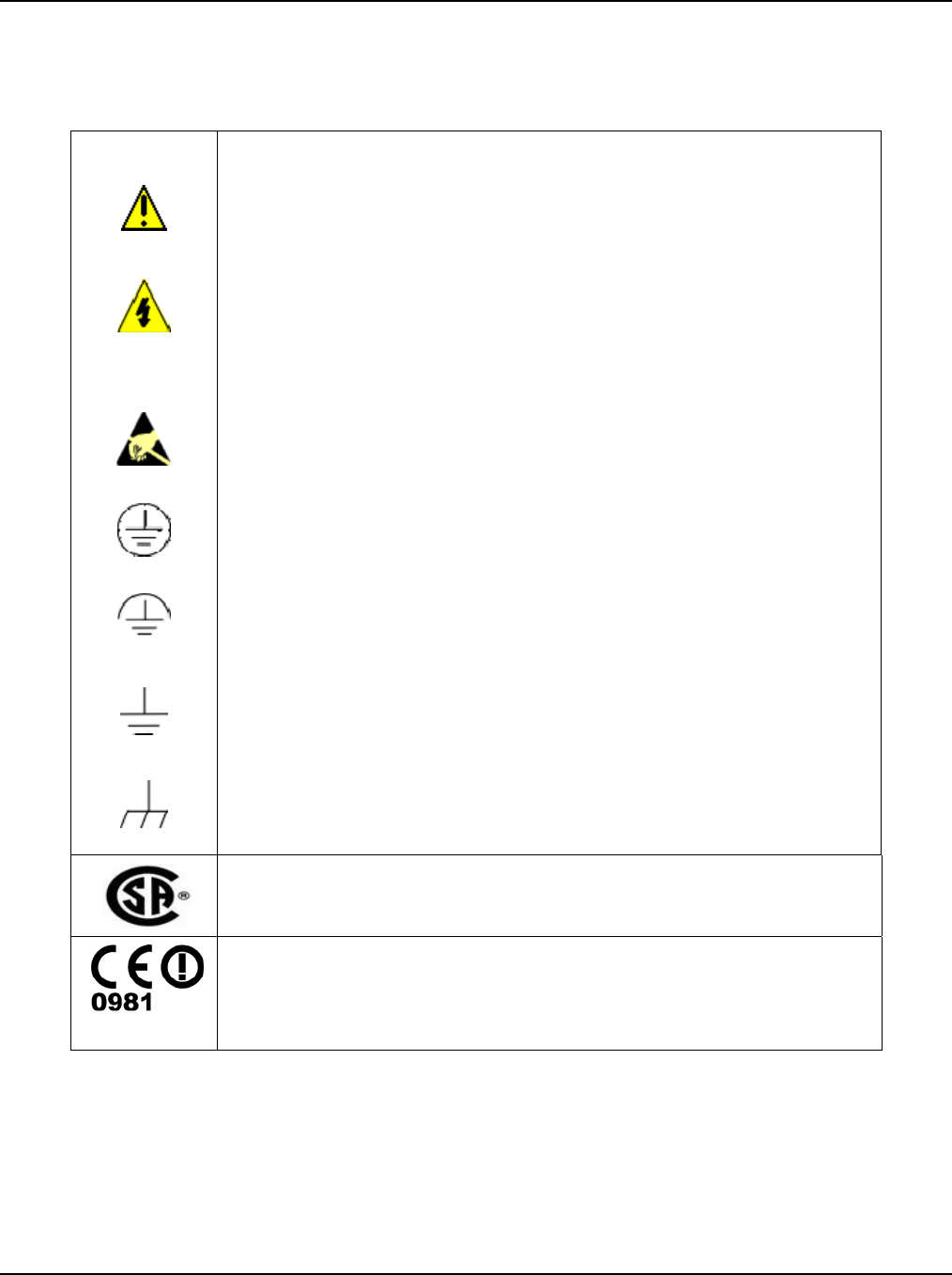
Symbol Definitions
The following table lists those symbols used in this document to denote certain conditions.
Symbol Definition
This CAUTION symbol on the equipment refers the user to the Product Manual for
additional information. This symbol appears next to required information in the
manual.
WARNING
PERSONAL INJURY: Risk of electrical shock. This symbol warns the user of a
potential shock hazard where HAZARDOUS LIVE voltages greater than 30 Vrms,
42.4 Vpeak, or 60 VDC may be accessible. Failure to comply with these
instructions could result in death or serious injury.
ATTENTION, Electrostatic Discharge (ESD) hazards. Observe precautions for
handling electrostatic sensitive devices
Protective Earth (PE) terminal. Provided for connection of the protective earth (green
or green/yellow) supply system conductor.
Functional earth terminal. Used for non-safety purposes such as noise immunity
improvement. NOTE: This connection shall be bonded to protective earth at the
source of supply in accordance with national local electrical code requirements.
Earth Ground. Functional earth connection. NOTE: This connection shall be bonded
to Protective earth at the source of supply in accordance with national and local
electrical code requirements.
Chassis Ground. Identifies a connection to the chassis or frame of the equipment
shall be bonded to Protective Earth at the source of supply in accordance with
national and local electrical code requirements.
The Canadian Standards mark means the equipment has been tested and meets
applicable standards for safety and/or performance.
For radio equipment used in the European Union in accordance with the R&TTE
Directive the CE Mark and the notified body (NB) identification number is used when
the NB is involved in the conformity assessment procedure. The alert sign must be
used when a restriction on use (output power limit by a country at certain
frequencies) applies to the equipment and must follow the CE marking.
March 2012 UDC3500 Universal Digital Controller Product Manual v
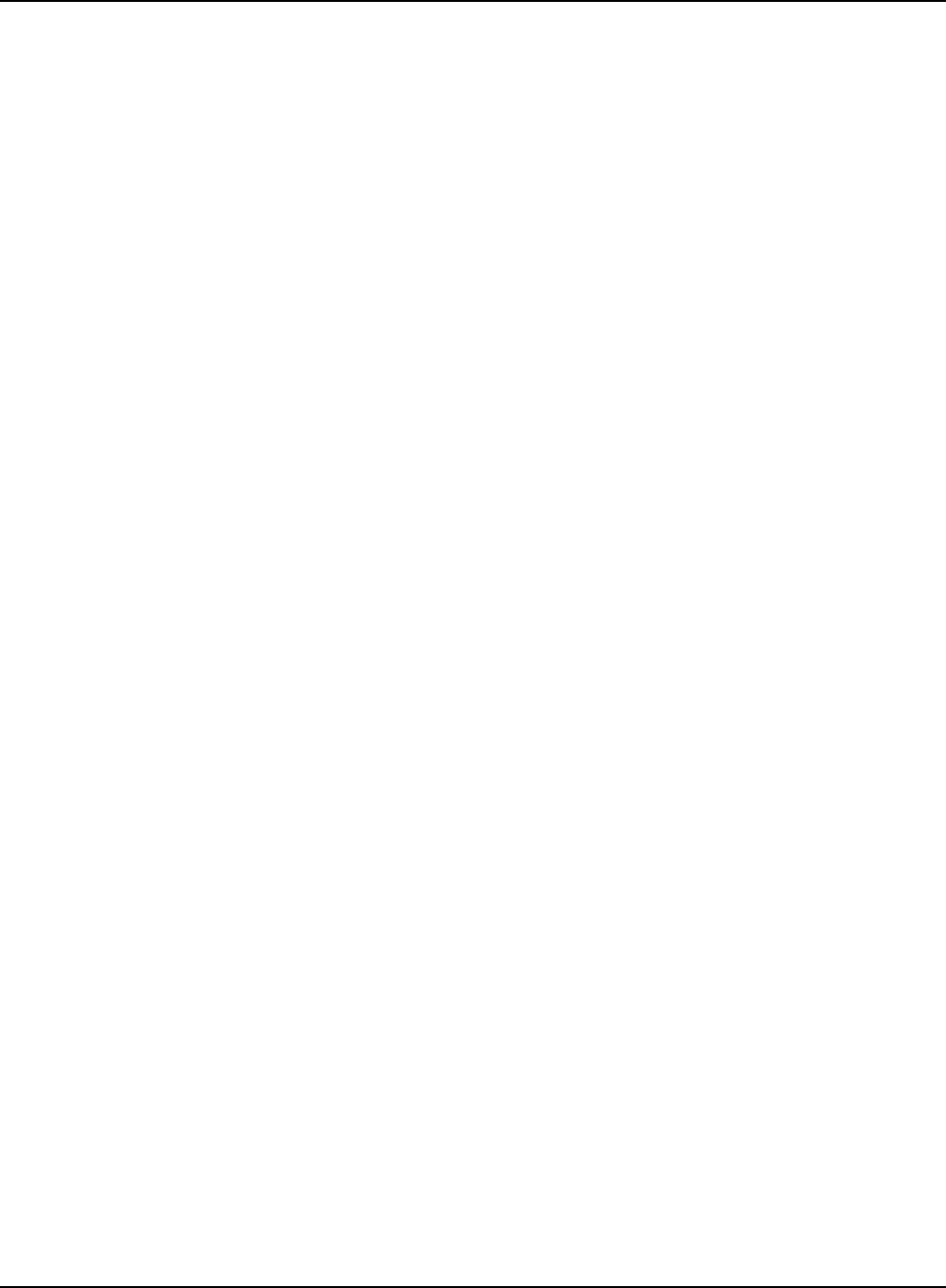
Contents
1 INTRODUCTION ...................................................................................................1
1.1 Overview.........................................................................................................................................1
1.2 Operator Interface...........................................................................................................................6
1.2.1 Function of Displays and Keys............................................................................................7
1.3 Process Instrument Explorer Software............................................................................................8
1.4 CE Conformity (Europe)...............................................................................................................10
2 INSTALLATION...................................................................................................11
2.1 Overview.......................................................................................................................................11
2.2 Condensed Specifications.............................................................................................................13
2.3 Model Number Interpretation .......................................................................................................17
2.4 Control and Alarm Relay Contact Information.............................................................................20
2.5 Mounting.......................................................................................................................................21
2.6 Wiring...........................................................................................................................................23
2.6.1 Electrical Considerations ...................................................................................................23
2.7 Wiring Diagrams...........................................................................................................................25
3 CONFIGURATION...............................................................................................45
3.1 Overview.......................................................................................................................................45
3.2 Configuration Prompt Hierarchy ..................................................................................................47
3.3 Configuration Procedure...............................................................................................................51
3.4 Loop 1 Tuning Set Up Group .......................................................................................................52
3.5 Loop 2 Tuning Set Up Group .......................................................................................................56
3.6 SP Ramp Set Up Group ................................................................................................................59
3.7 SP Program 2 Set Up Group.........................................................................................................65
3.8 SP Program 3 Set Up Group.........................................................................................................68
3.9 SP Program 4 Set Up Group.........................................................................................................71
3.10 Accutune Set Up Group ............................................................................................................74
3.11 Algorithm Set Up Group...........................................................................................................79
3.12 Math Set Up Group ...................................................................................................................94
3.13 Logic Gates Set Up Group ......................................................................................................100
3.14 Output Set Up Group...............................................................................................................107
3.15 Input 1 Set Up Group ..............................................................................................................118
3.16 Input 2 Set Up Group ..............................................................................................................122
3.17 Input 3 Set Up Group ..............................................................................................................125
3.18 Input 4 Set Up Group ..............................................................................................................128
vi UDC3500 Universal Digital Controller Product Manual March 2012
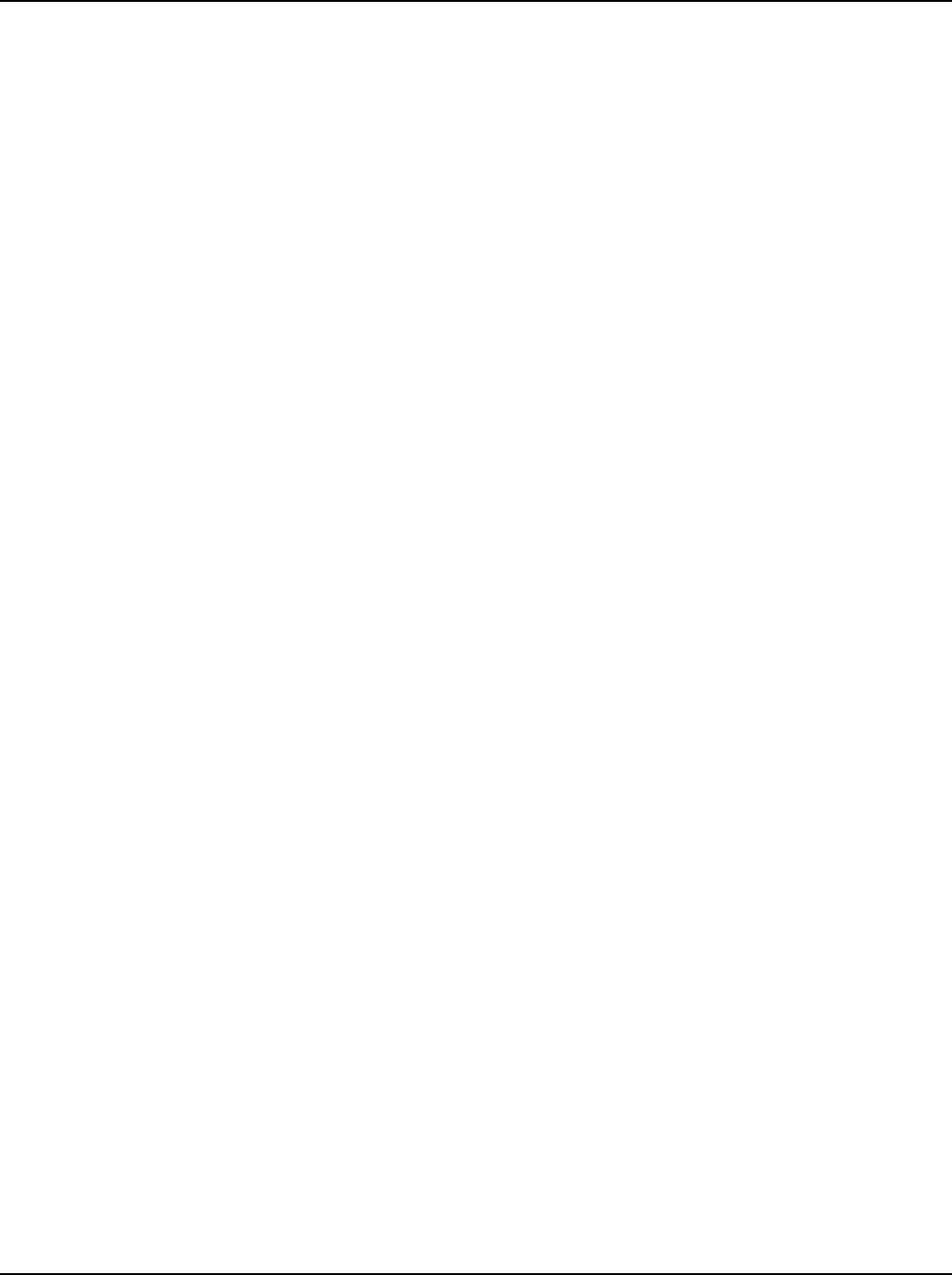
3.19 Input 5 Set Up Group ..............................................................................................................131
3.20 Control Set Up Group .............................................................................................................134
3.21 Control 2 Set Up Group ..........................................................................................................143
3.22 Options Set Up Group.............................................................................................................150
3.23 Communications Set Up Group...............................................................................................162
3.24 Alarms Set Up Group..............................................................................................................166
3.25 Real Time Clock Set Up Group...............................................................................................174
3.26 Maintenance Set Up Group.....................................................................................................175
3.27 Display Set Up Group .............................................................................................................178
3.28 Read Maintenance Set Up Group............................................................................................180
3.29 Time Events Set Up Group .....................................................................................................181
3.30 P.I.E. Tool Ethernet and Email Configuration Screens...........................................................183
3.31 Configuration Record Sheet....................................................................................................186
4 MONITORING AND OPERATING THE CONTROLLER...................................194
4.1 Overview.....................................................................................................................................194
4.2 Operator Interface.......................................................................................................................195
4.3 Entering a Security Code ............................................................................................................195
4.4 Lockout Feature ..........................................................................................................................196
4.5 Monitoring Your Controller........................................................................................................198
4.5.1 Annunciators....................................................................................................................198
4.5.2 Viewing the operating parameters....................................................................................199
4.5.3 Diagnostic Messages........................................................................................................200
4.6 Start Up Procedure for Operation ...............................................................................................201
4.7 Control Modes ............................................................................................................................202
4.7.1 Mode Definitions .............................................................................................................202
4.7.2 What happens when you change modes...........................................................................203
4.8 Setpoints......................................................................................................................................203
4.9 Timer...........................................................................................................................................205
4.10 Accutune III.............................................................................................................................206
4.10.1 Tune for Simplex Outputs ............................................................................................208
4.10.2 Tune for Duplex (Heat/Cool) .......................................................................................209
4.10.3 Using AUTOMATIC TUNE at start-up for Duplex (Heat/Cool).................................210
4.10.4 Using BLENDED TUNE at start-up for Duplex (Heat/Cool)......................................211
4.10.5 Using MANUAL TUNE at start-up for Duplex (Heat/Cool).......................................212
4.10.6 ACCUTUNE Error Codes............................................................................................213
4.11 Fuzzy Overshoot Suppression.................................................................................................214
4.12 Using Two Sets of Tuning Constants......................................................................................215
4.13 Input Math Algorithms............................................................................................................217
4.14 Logic Gate Operation..............................................................................................................219
4.15 Digital Input Option (Remote Switching)...............................................................................222
March 2012 UDC3500 Universal Digital Controller Product Manual vii
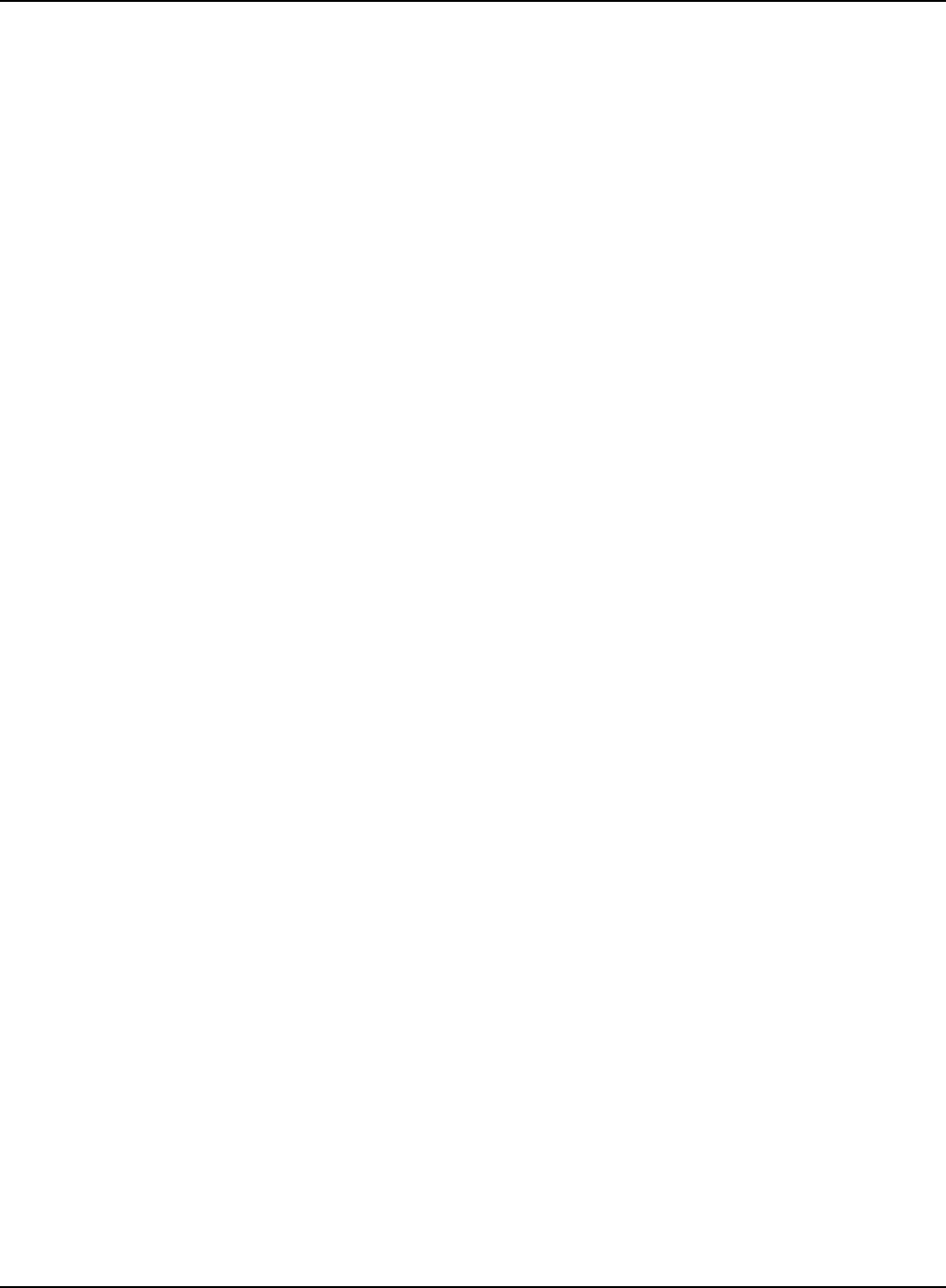
4.16 Auto/Manual Station ...............................................................................................................227
4.17 Two Loops of Control.............................................................................................................231
4.18 Configuring Two Loops of Control.........................................................................................234
4.19 Monitoring Two Loops of Control..........................................................................................235
4.20 Operating Two Loops of Control............................................................................................236
4.21 Alarm Setpoints.......................................................................................................................237
4.22 Three Position Step Control Algorithm...................................................................................239
4.23 Setting a Failsafe Output Value for Restart After a Power Loss.............................................240
4.24 Setting Failsafe Mode..............................................................................................................241
4.25 Carbon Potential, Oxygen and Dewpoint Algorithms.............................................................241
4.26 Healthwatch.............................................................................................................................244
4.27 Setpoint Rate/Ramp/Program Overview.................................................................................244
4.28 Setpoint Rate ...........................................................................................................................245
4.29 Setpoint Ramp.........................................................................................................................245
4.30 Setpoint Ramp/Soak Programming.........................................................................................247
4.31 P.I.E. Tool Maintenance Screens ............................................................................................262
4.32 Configuring your Ethernet Connection...................................................................................272
5 INPUT CALIBRATION.......................................................................................279
5.1 Overview.....................................................................................................................................279
5.2 Minimum and Maximum Range Values.....................................................................................280
5.3 Preliminary Information..............................................................................................................282
5.4 Input Set Up Wiring....................................................................................................................284
5.4.1 Thermocouple Inputs Using an Ice Bath..........................................................................284
5.4.2 Thermocouple Inputs Using a Thermocouple Source......................................................285
5.4.3 RTD Inputs.......................................................................................................................286
5.4.4 Radiamatic, Millivolts, Volts, Carbon, Oxygen or Thermocouple Differential Inputs....287
5.4.5 0 to 10 Volts or –1 to 1 Volts...........................................................................................289
5.4.6 Milliamperes ....................................................................................................................290
5.4.7 Dual High Level Voltage Inputs ......................................................................................291
5.4.8 Dual High Level Milliamperes Inputs..............................................................................292
5.5 Input Calibration Procedure........................................................................................................293
5.6 Restore Input Factory Calibration...............................................................................................295
6 OUTPUT CALIBRATION...................................................................................297
6.1 Overview.....................................................................................................................................297
6.2 First Current Output Calibration.................................................................................................298
6.3 Second Current Output Calibration.............................................................................................300
6.4 Third Current Output Calibration ...............................................................................................302
6.5 Position Proportional and Three Position Step Output Calibration............................................304
6.6 Restore Factory Output Calibration............................................................................................307
viii UDC3500 Universal Digital Controller Product Manual March 2012
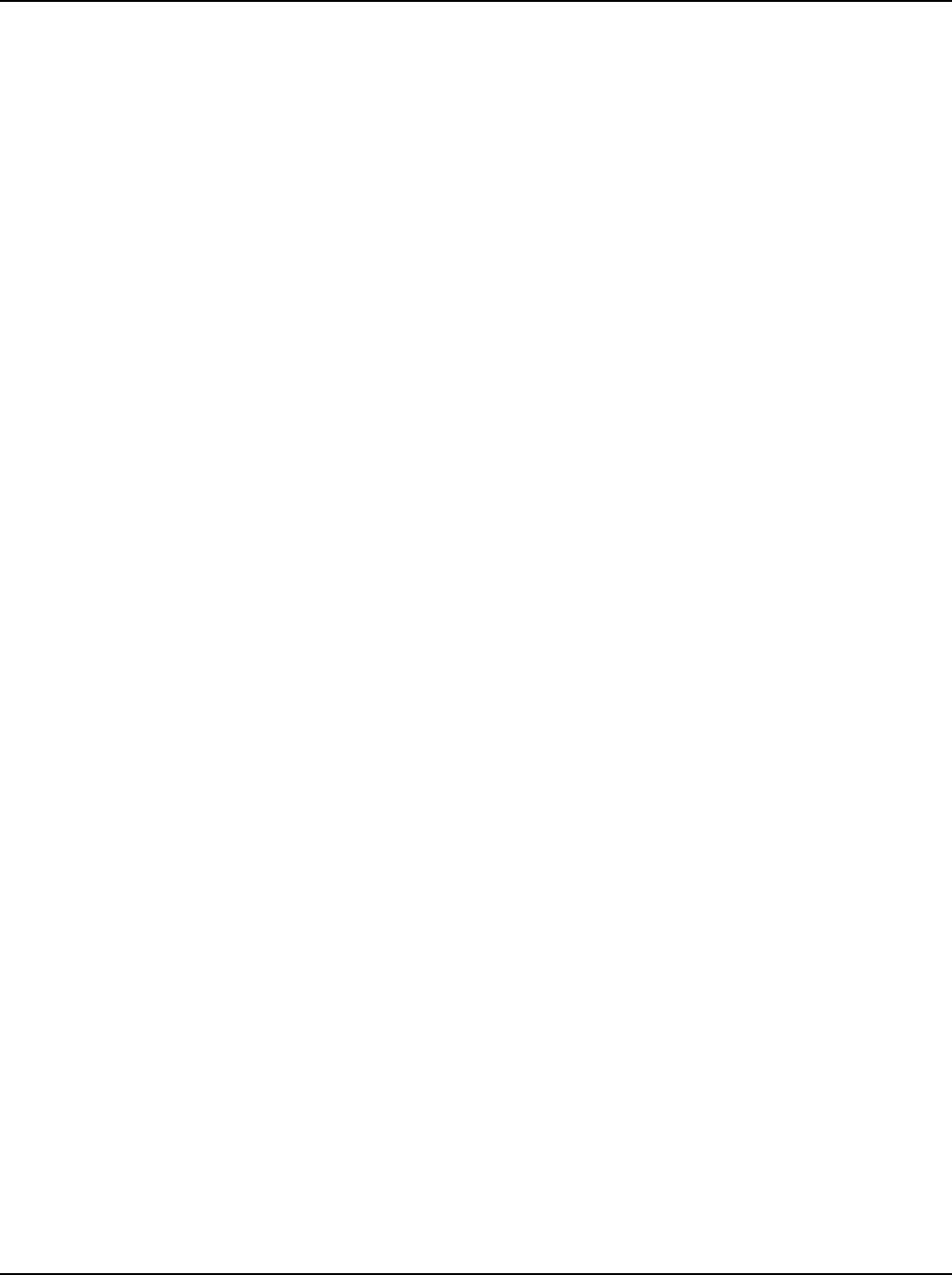
7 TROUBLESHOOTING/SERVICE......................................................................309
7.1 Overview.....................................................................................................................................309
7.2 Troubleshooting Aids..................................................................................................................310
7.3 Power-up Tests............................................................................................................................312
7.4 Status Tests .................................................................................................................................312
7.5 Background Tests and Diagnostic Messages..............................................................................313
7.6 Controller Failure Symptoms......................................................................................................318
7.7 Troubleshooting Procedures .......................................................................................................319
7.7.1 Procedure #1 – Power ......................................................................................................320
7.7.2 Procedure #2 – Current Outputs.......................................................................................320
7.7.3 Procedure #3 – Position Proportional ..............................................................................322
7.7.4 Procedure #4 – Time Proportional...................................................................................325
7.7.5 Procedure #5 – Current/Time or Time Current/Proportional...........................................326
7.7.6 Procedure #6 – Alarm Relays ..........................................................................................327
7.7.7 Procedure #7 – Keyboard.................................................................................................328
7.7.8 Procedure #8 – Analog Input ...........................................................................................329
7.7.9 Procedure #9 – RS-485 ....................................................................................................330
7.7.10 Procedure #10 – Ethernet .............................................................................................332
7.7.11 Procedure #11 – Email .................................................................................................333
7.8 Restoring Factory Configuration ................................................................................................334
7.9 Software Upgrades......................................................................................................................335
8 PARTS LIST......................................................................................................337
8.1 Exploded View............................................................................................................................337
8.2 Removing the chassis..................................................................................................................339
9 MODBUS RTU FUNCTION CODES..................................................................340
9.1 Overview.....................................................................................................................................340
9.2 General Information....................................................................................................................340
9.3 Function Code 20 (14h) - Read Configuration Reference Data..................................................342
9.3.1 Read Configuration Examples .........................................................................................344
9.4 Function Code 21 (15h) - Write Configuration Reference Data.................................................346
9.4.1 Write Configuration Examples ........................................................................................348
10 MODBUS READ, WRITE AND OVERRIDE PARAMETERS PLUS EXCEPTION
CODES........................................................................................................................349
10.1 Overview.................................................................................................................................349
10.2 Reading Control Data..............................................................................................................352
10.3 Read Software Options Status.................................................................................................353
10.4 Miscellaneous Read Onlys......................................................................................................354
10.4.1 Register Addresses for Read Onlys..............................................................................354
10.4.2 SetPoint Program Read Only Information....................................................................354
March 2012 UDC3500 Universal Digital Controller Product Manual ix
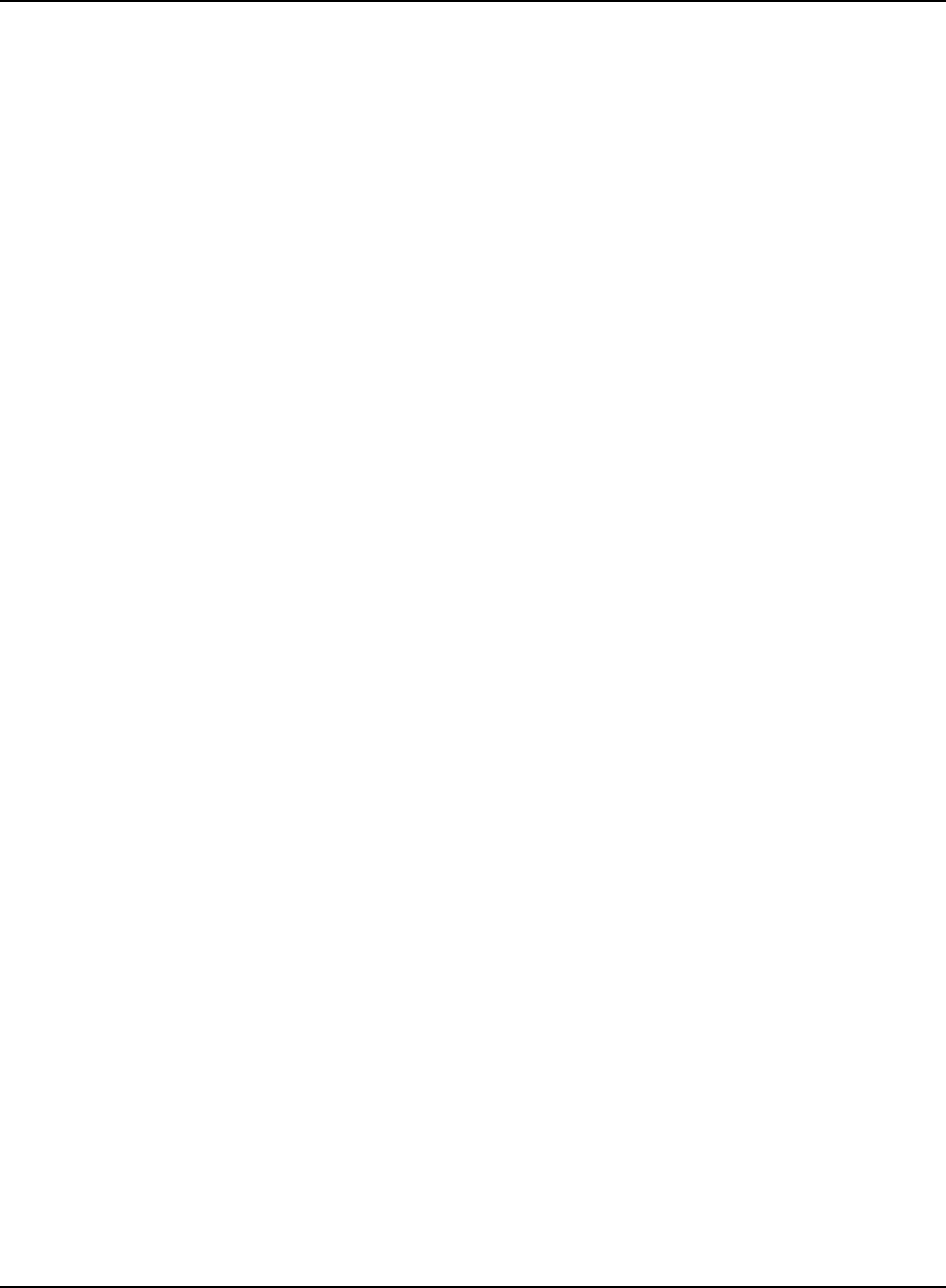
10.5 Setpoints..................................................................................................................................355
10.6 Using a Computer Setpoint (Overriding Controller Setpoint) ................................................357
10.7 Configuration Parameters........................................................................................................360
10.7.1 Tuning Loop 1..............................................................................................................360
10.7.2 Tuning Loop2...............................................................................................................362
10.7.3 SP Ramp/Rate/Program #1...........................................................................................363
10.7.4 Setpoint Program #2.....................................................................................................369
10.7.5 Setpoint Program #3.....................................................................................................375
10.7.6 Setpoint Program #4.....................................................................................................381
10.7.7 Accutune.......................................................................................................................387
10.7.8 Algorithm .....................................................................................................................389
10.7.9 Math..............................................................................................................................394
10.7.10 Logic.............................................................................................................................397
10.7.11 Output Algorithms........................................................................................................401
10.7.12 Input 1...........................................................................................................................403
10.7.13 Input 2...........................................................................................................................405
10.7.14 Input 3...........................................................................................................................407
10.7.15 Input 4...........................................................................................................................409
10.7.16 Input 5...........................................................................................................................411
10.7.17 Control..........................................................................................................................413
10.7.18 Control Loop 2 .............................................................................................................416
10.7.19 Options .........................................................................................................................419
10.7.20 Communications...........................................................................................................423
10.7.21 Alarms ..........................................................................................................................425
10.7.22 Maintenance .................................................................................................................429
10.7.23 Time Event ...................................................................................................................432
10.7.24 Display..........................................................................................................................434
10.7.25 Clock ............................................................................................................................435
10.8 Modbus RTU Exception Codes...............................................................................................436
11 FURTHER INFORMATION................................................................................438
11.1 Modbus RTU Serial Communications ....................................................................................438
11.2 Modbus Messaging on Ethernet TCP/IP.................................................................................438
11.3 How to Apply Digital Instrumentation in Severe Electrical Noise Environments..................438
12 INDEX................................................................................................................439
13 SALES AND SERVICE.............................. ERROR! BOOKMARK NOT DEFINED.
x UDC3500 Universal Digital Controller Product Manual March 2012
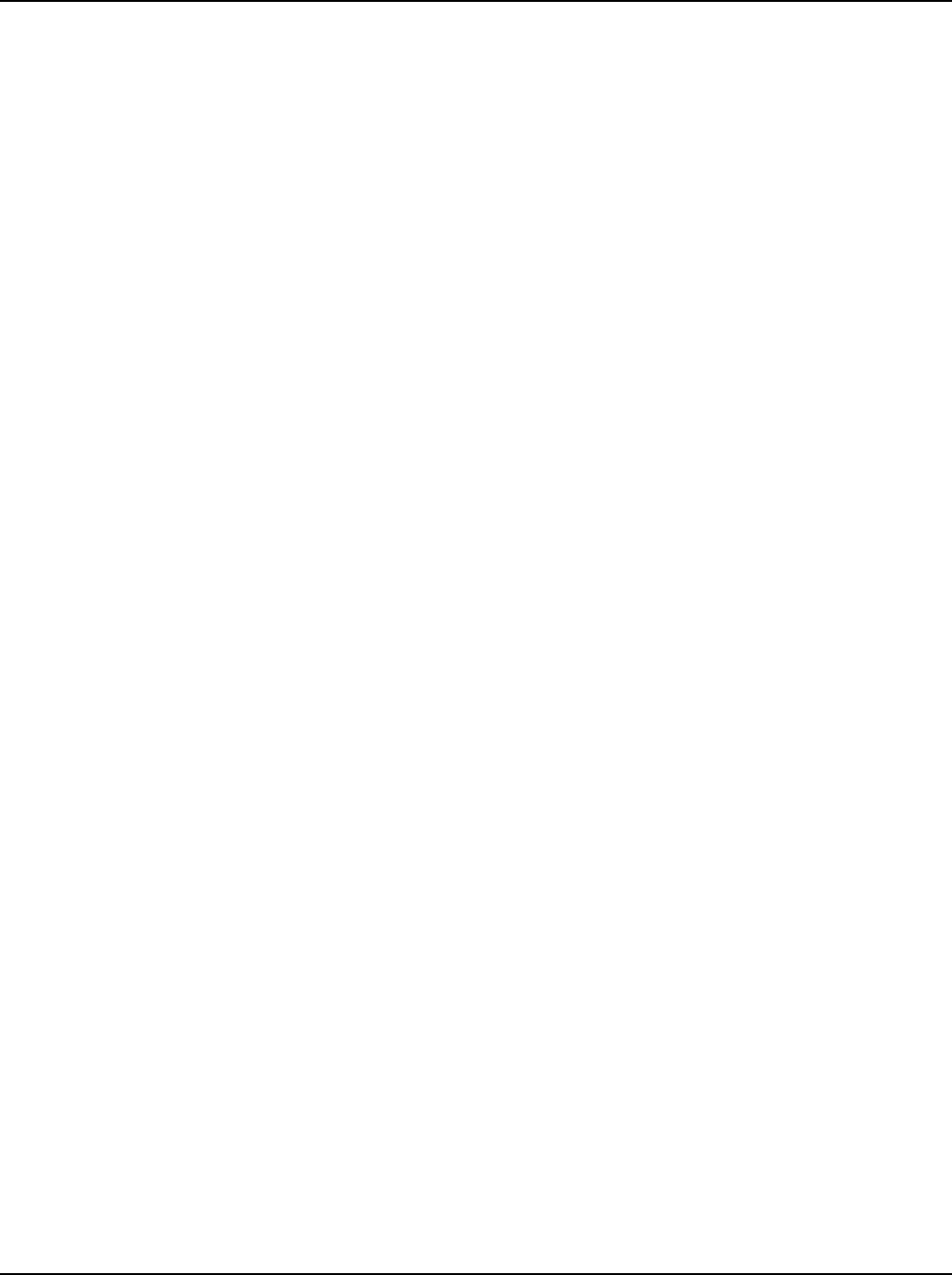
Tables
Table 2-1 Condensed Specifications ____________________________________________________ 13
Table 2-2 Control Relay Contact Information _____________________________________________ 20
Table 2-3 Alarm Relay Contact Information ______________________________________________ 20
Table 2-4 Mounting Procedure _________________________________________________________ 22
Table 2-5 Permissible Wiring Bundling__________________________________________________ 24
Table 2-6 Single or Cascade Loop Controller – Loop 1 Output Functionality and Restrictions _______ 26
Table 2-7 Dual Loop Controller – Loop 2 Output Functionality and Restrictions __________________ 27
Table 2-8 Terminals for connecting a UDC to a MDI Compliant Hub or Switch utilizing a cross-over cable
______________________________________________________________________________ 41
Table 2-9 Terminals for connecting a UDC directly to a PC utilizing a straight-through cable________ 42
Table 3-1 Configuration Topics ________________________________________________________ 45
Table 3-2 Configuration Prompt Hierarchy _______________________________________________ 47
Table 3-3 Configuration Procedure _____________________________________________________ 51
Table 3-4 TUNING Group Function Prompts _____________________________________________ 52
Table 3-5 TUNING 2 Group Function Prompts____________________________________________ 56
Table 3-6 SPRAMP Group Function Prompts_____________________________________________ 60
Table 3-7 SP PROG2 Group Function Prompts____________________________________________ 65
Table 3-8 SP PROG3 Group Function Prompts____________________________________________ 68
Table 3-9 SP PROG4 Group Function Prompts____________________________________________ 71
Table 3-10 ACCUTUNE Group Function Prompts _________________________________________ 75
Table 3-11 ALGORTHM Group Function Prompts ________________________________________ 79
Table 3-12 MATH Group Function Prompts______________________________________________ 94
Table 3-13 LOGIC Group Function Prompts _____________________________________________ 100
Table 3-14 OUTPUT Group Function Prompts ___________________________________________ 107
Table 3-15 INPUT 1 Group Function Prompts ___________________________________________ 118
Table 3-16 INPUT 2 Group Function Prompts ___________________________________________ 122
Table 3-17 INPUT 3 Group Function Prompts ___________________________________________ 125
Table 3-18 INPUT 4 Group Function Prompts ___________________________________________ 128
Table 3-19 INPUT 5 Group Function Prompts ___________________________________________ 131
Table 3-20 CONTROL Group Function Prompts__________________________________________ 134
Table 3-21 CONTROL2 Group Function Prompts_________________________________________ 143
Table 3-22 OPTION Group Function Prompts ___________________________________________ 150
Table 3-23 Communications Group Function Prompts _____________________________________ 162
Table 3-24 ALARMS Group Function Prompts __________________________________________ 167
Table 3-25 CLOCK Group Function Prompts ____________________________________________ 174
Table 3-26 MAINTENANCE Group Function Prompts ____________________________________ 175
Table 3-27 DISPLAY Group Function Prompts __________________________________________ 178
Table 3-28 READ MAINTENANCE Group Function Prompts ______________________________ 180
Table 3-29 TIME EVT Group Function Prompts _________________________________________ 181
Table 3-30 Configuration Record Sheet _________________________________________________ 186
Table 4-1 Procedure to Enter a Security Code ____________________________________________ 196
Table 4-2 Annunciators _____________________________________________________________ 198
Table 4-3 Lower Display Key Parameter Prompts_________________________________________ 199
Table 4-4 Procedure for Starting Up the Controller________________________________________ 201
Table 4-5 Control Mode Definitions ___________________________________________________ 202
Table 4-6 Changing Control Modes____________________________________________________ 203
Table 4-7 Procedure for Changing the Local Setpoints _____________________________________ 204
Table 4-8 Procedure for Switching Between Setpoints _____________________________________ 204
March 2012 UDC3500 Universal Digital Controller Product Manual xi
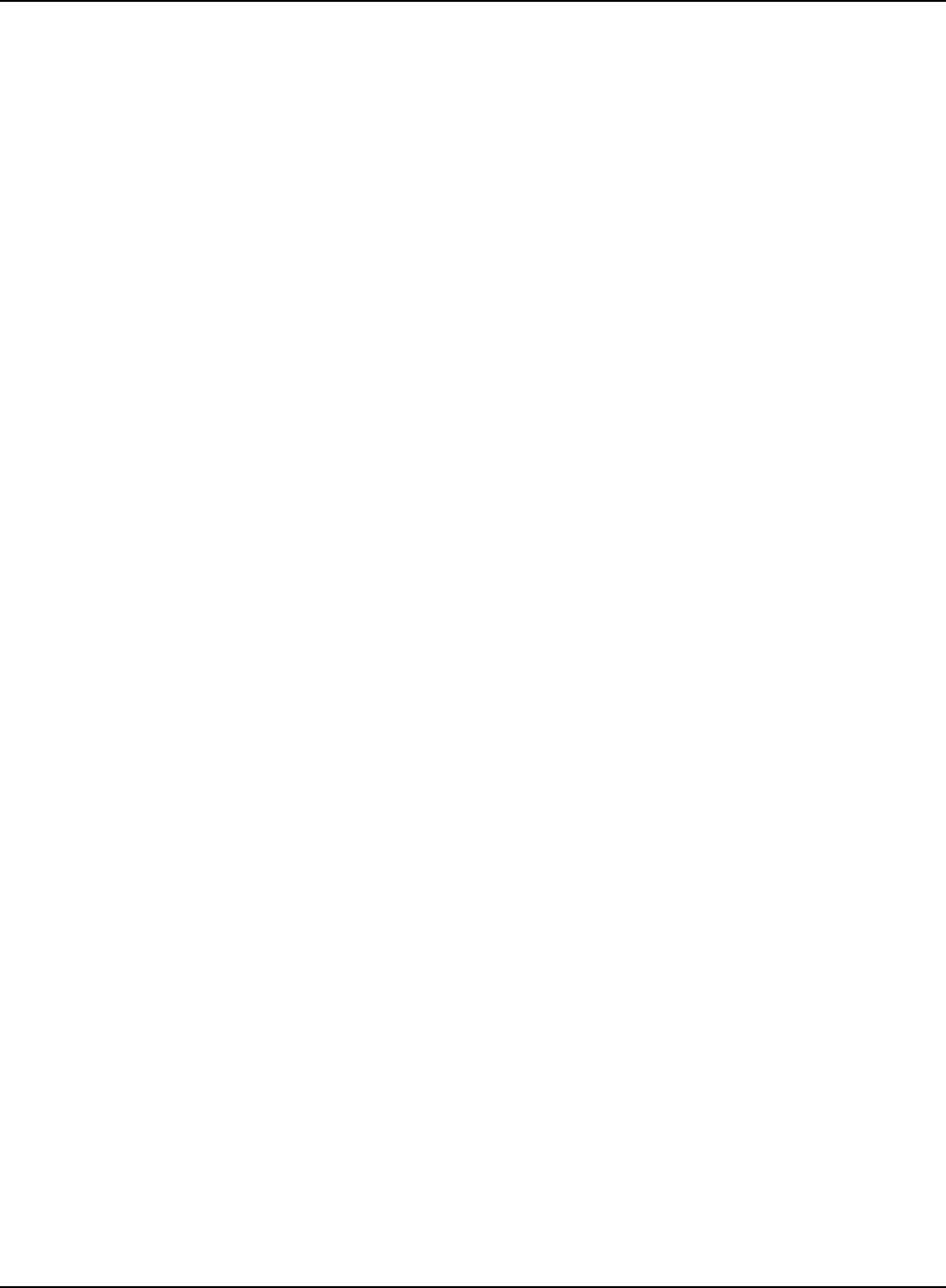
Table 4-9 Procedure for Starting “TUNE”_______________________________________________ 208
Table 4-10 Procedure for Using AUTOMATIC TUNE at Start-up for Duplex Control ____________ 210
Table 4-11 Procedure for Using BLENDED TUNE at Start-up for Duplex Control_______________ 211
Table 4-12 Procedure for Using MANUAL TUNE for Heat side of Duplex Control ______________ 212
Table 4-13 Procedure for Using MANUAL TUNE for Cool side of Duplex Control______________ 212
Table 4-14 Procedure for Accessing Accutune Error Codes _________________________________ 213
Table 4-15 Accutune Error Codes _____________________________________________________ 213
Table 4-16 Set Up Procedure _________________________________________________________ 215
Table 4-17 Procedure for Switching PID SETS from the Keyboard ___________________________ 216
Table 4-18 Logic Gates Constraints and Dynamic Operation Status___________________________ 220
Table 4-19 Digital Input Option Action on Contact Closure _________________________________ 222
Table 4-20 Digital Input Combinations “DIG IN1” or “DIG IN2” ____________________________ 225
Table 4-21 Digital Inputs 1 and 2 Combination___________________________________________ 226
Table 4-22 Auto/Manual Station Mode Configuration Procedure_____________________________ 228
Table 4-23 Procedure for selecting Two Loop Algorithm ___________________________________ 234
Table 4-24 Digital Display Indication—Two Loops _______________________________________ 235
Table 4-25 Procedure for Displaying Alarm Setpoints _____________________________________ 237
Table 4-26 Procedure for Displaying TPSC Motor Position _________________________________ 239
Table 4-27 Procedure for Setting a Failsafe Value_________________________________________ 240
Table 4-28 Procedure for Setting a Failsafe Mode_________________________________________ 241
Table 4-29 Running A Setpoint Ramp__________________________________________________ 246
Table 4-30 Program Contents_________________________________________________________ 248
Table 4-31 Ramp/Soak Profile Example (Using 12 Segments) _______________________________ 251
Table 4-32 Program #1 Record Sheets __________________________________________________ 252
Table 4-33 Program #2 Record Sheets __________________________________________________ 254
Table 4-34 Program #3 Record Sheets __________________________________________________ 256
Table 4-35 Program #4 Record Sheets __________________________________________________ 258
Table 4-36 Run/Monitor Functions ____________________________________________________ 260
Table 5-1 Voltage, Milliamp and Resistance Equivalents for Input Range Values _______________ 280
Table 5-2 Equipment Needed_________________________________________________________ 282
Table 5-3 Set Up Wiring Procedure for Thermocouple Inputs Using an Ice Bath ________________ 284
Table 5-4 Set Up Wiring Procedure for Thermocouple Inputs using a Thermocouple Source _______ 285
Table 5-5 Set Up Wiring Procedure for RTD Inputs _______________________________________ 286
Table 5-6 Set Up Wiring Procedure for Radiamatic, Millivolts, Volts, Carbon, Oxygen or Thermocouple
Differential Inputs (Except 0-10 Volts and –1 to 1 Volts)________________________________ 287
Table 5-7 Procedure to determine calibration voltages for Thermocouple Differential input types other than the
Factory Setting _________________________________________________________________ 288
Table 5-8 Set Up Wiring Procedure for 0 to 10 Volts or –1 to 1 Volts _________________________ 289
Table 5-9 Set Up Wiring Procedure for Milliampere Inputs _________________________________ 290
Table 5-10 Set Up Wiring Procedure for Dual High Level Voltage Inputs______________________ 291
Table 5-11 Set Up Wiring Procedure for Dual High Level Milliampere Inputs __________________ 292
Table 5-12 Input Calibration Procedure _________________________________________________ 293
Table 5-13 Restore Factory Calibration _________________________________________________ 295
Table 6-1 Set Up Wiring Procedure for the First Current Output _____________________________ 298
Table 6-2 First Current Output Calibration Procedure______________________________________ 299
Table 6-3 Set Up Wiring Procedure for the Second Current Output ___________________________ 300
Table 6-4 Second Current Output Calibration Procedure ___________________________________ 301
Table 6-5 Set Up Wiring Procedure for the Third Current Output ____________________________ 302
Table 6-6 Third Current Output Calibration Procedure _____________________________________ 303
Table 6-7 Position Proportional and Three Position Step Output Calibration Procedure ___________ 305
xii UDC3500 Universal Digital Controller Product Manual March 2012
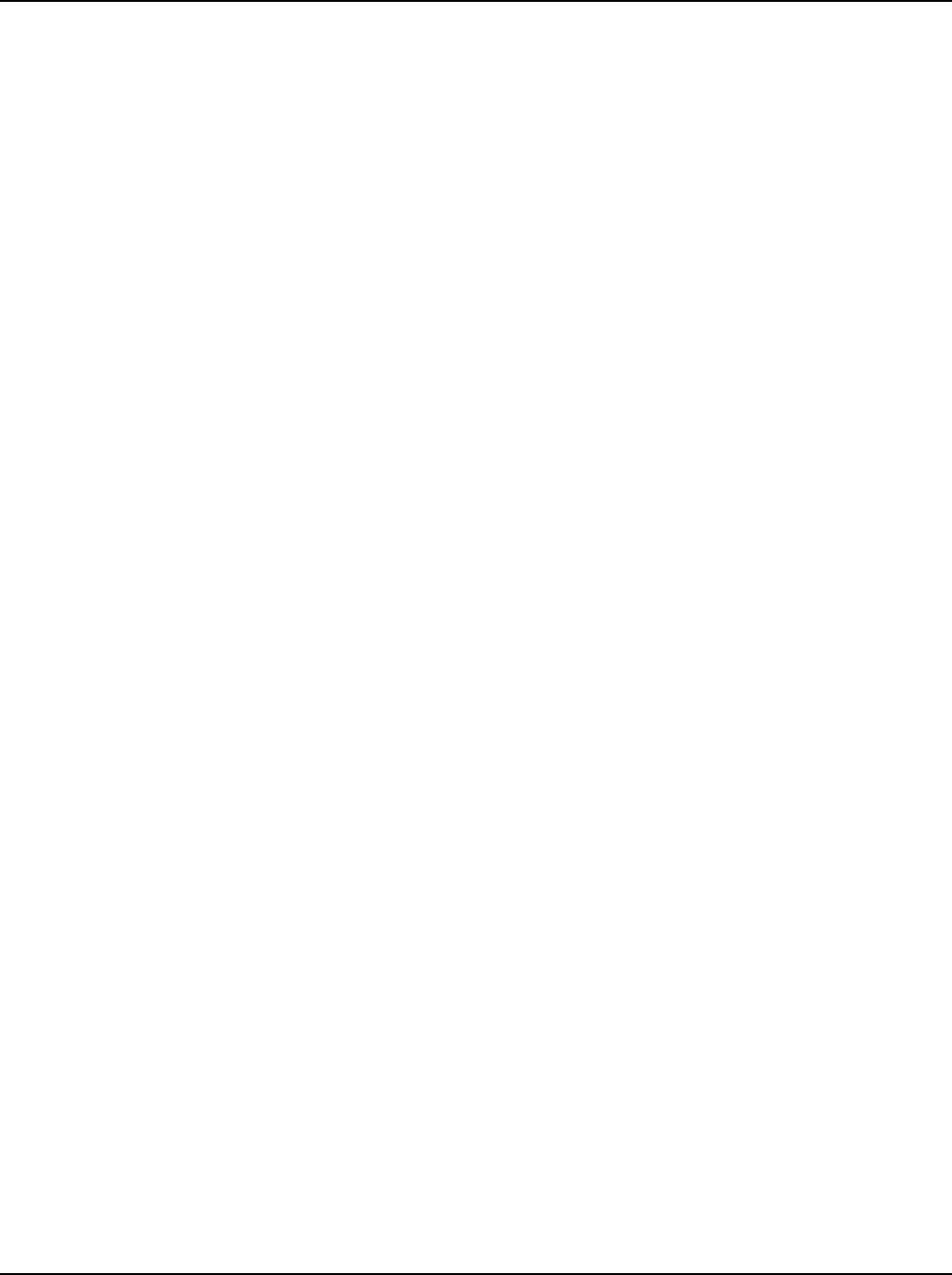
Table 6-8 Restore Factory Calibration __________________________________________________ 307
Table 7-1 Procedure for Identifying the Software Version __________________________________ 311
Table 7-2 Procedure for Displaying the Status Test Results _________________________________ 312
Table 7-3 Background Tests__________________________________________________________ 313
Table 7-4 Controller Failure Symptoms_________________________________________________ 318
Table 7-5 Troubleshooting Power Failure Symptoms ______________________________________ 320
Table 7-6 Troubleshooting Current Output Failure ________________________________________ 320
Table 7-7 Troubleshooting Position Proportional Output Failure _____________________________ 322
Table 7-8 Troubleshooting Time Proportional Output Failure _______________________________ 325
Table 7-9 Troubleshooting Current/Time or Time/Current Proportional Output Failure ___________ 326
Table 7-10 Troubleshooting Alarm Relay Output Failure ___________________________________ 327
Table 7-11 Troubleshooting a Keyboard Failure __________________________________________ 328
Table 7-12 Troubleshooting an Analog Input Failure ______________________________________ 329
Table 7-13 Troubleshooting a RS-485 Communications Failure______________________________ 330
Table 7-14 Troubleshooting an Ethernet Communications Failure ____________________________ 332
Table 7-15 Troubleshooting an Email Failure ____________________________________________ 333
Table 7-16 Restoring Factory Configuration _____________________________________________ 334
Table 7-17 Software Upgrades________________________________________________________ 335
Table 8-1 Parts Identification_________________________________________________________ 338
Table 8-2 Parts Not Shown___________________________________________________________ 338
Table 8-3 Software Upgrades (see Section 7.9) ___________________________________________ 339
Table 9-1 Integer Parameter Type _____________________________________________________ 341
Table 9-2 Floating Point Parameter Type________________________________________________ 341
Table 9-3 Register Parameter ID Address Format for Function Code 20 _______________________ 343
Table 9-4 Register Parameter ID Address Format for Function Code 21 _______________________ 347
Table 10-1 Control Data Parameters ___________________________________________________ 352
Table 10-2 Option Status ____________________________________________________________ 353
Table 10-3 Miscellaneous Read Onlys__________________________________________________ 354
Table 10-4 SetPoint Program Read Only Information______________________________________ 354
Table 10-5 Setpoint Code Selections ___________________________________________________ 355
Table 10-6 Setpoint Associated Parameters______________________________________________ 356
Table 10-7 Computer Setpoint Selection ________________________________________________ 357
Table 10-8 Computer Setpoint Associated Parameters for Loop 1 ____________________________ 358
Table 10-9 Computer Setpoint Associated Parameters for Loop2_____________________________ 359
Table 10-10 Set-up Group – Tuning Loop 1 _____________________________________________ 360
Table 10-11 Set-up Group – Tuning Loop 2______________________________________________ 362
Table 10-12 Set-up Group – Setpoint Ramp/Rate/Program #1 _______________________________ 363
Table 10-13 Set-up Group – Setpoint Program #2_________________________________________ 369
Table 10-14 Set-up Group – Setpoint Program #3_________________________________________ 375
Table 10-15 Set-up Group – Setpoint Program #4_________________________________________ 381
Table 10-16 Set-up Group – Adaptive Tune _____________________________________________ 387
Table 10-17 Set-up Group – Algorithm _________________________________________________ 389
Table 10-18 Set-up Group – Math _____________________________________________________ 394
Table 10-19 Set-up Group – Logic_____________________________________________________ 397
Table 10-20 Set-up Group – Output Algorithms __________________________________________ 401
Table 10-21 Set-up Group – Input 1____________________________________________________ 403
Table 10-22 Set-up Group – Input 2____________________________________________________ 405
Table 10-23 Set-up Group – Input 3____________________________________________________ 407
Table 10-24 Set-up Group – Input 4____________________________________________________ 409
Table 10-25 Set-up Group – Input 5____________________________________________________ 411
March 2012 UDC3500 Universal Digital Controller Product Manual xiii
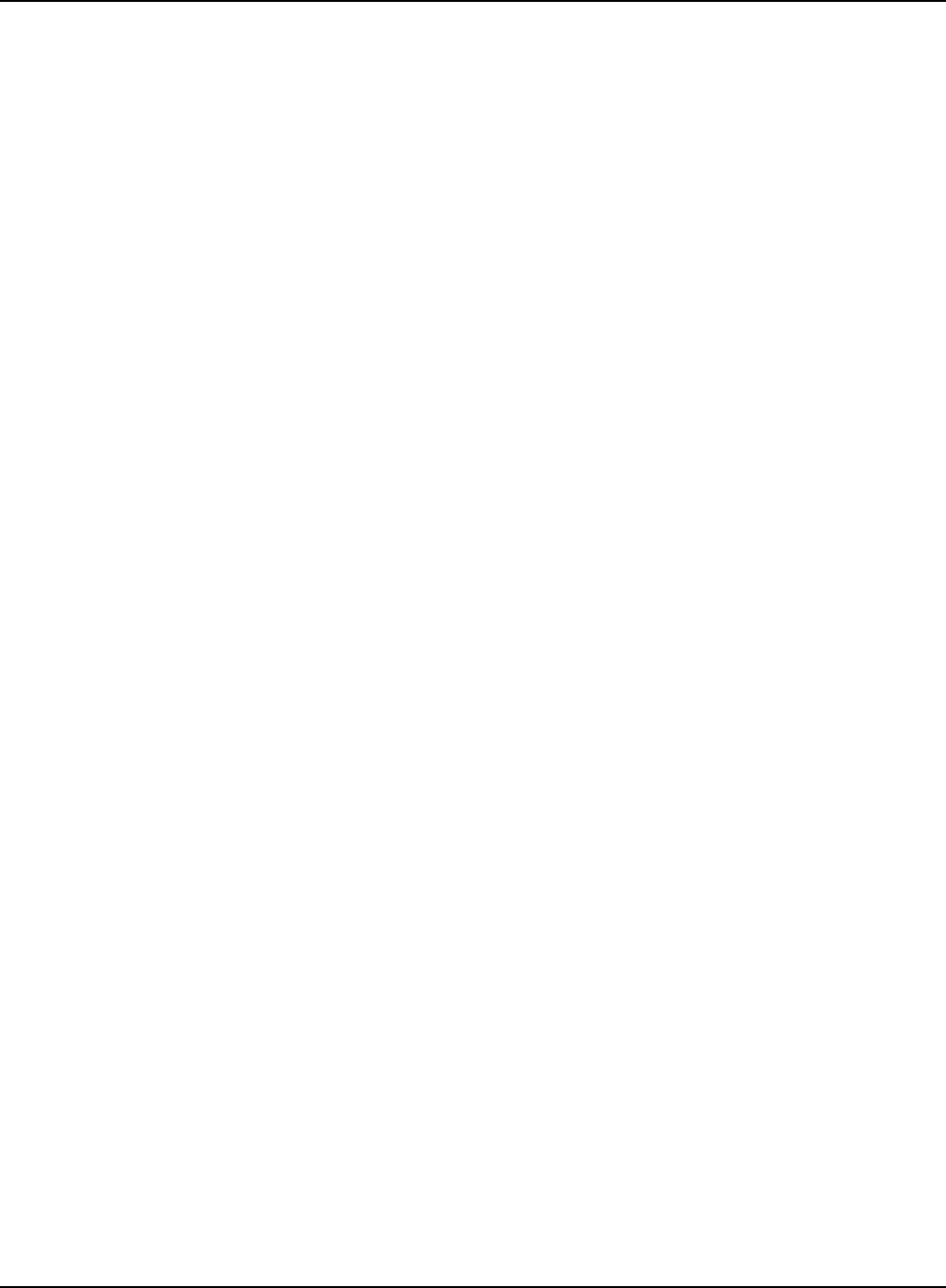
Table 10-26 Set-up Group – Control ___________________________________________________ 413
Table 10-27 Set-up Group – Control2 __________________________________________________ 416
Table 10-28 Set-up Group – Options ___________________________________________________ 419
Table 10-29 Set-up Group – Communications____________________________________________ 423
Table 10-30 Set-up Group – Alarms ___________________________________________________ 425
Table 10-31 Set-up Group – Maintenance _______________________________________________ 429
Table 10-32 Set-up Group – Time Event ________________________________________________ 432
Table 10-33 Set-up Group – Display ___________________________________________________ 434
Table 10-34 Set-up Group – Clock ____________________________________________________ 435
Table 10-35 Modbus RTU Data Layer Status Exception Codes ______________________________ 437
xiv UDC3500 Universal Digital Controller Product Manual March 2012
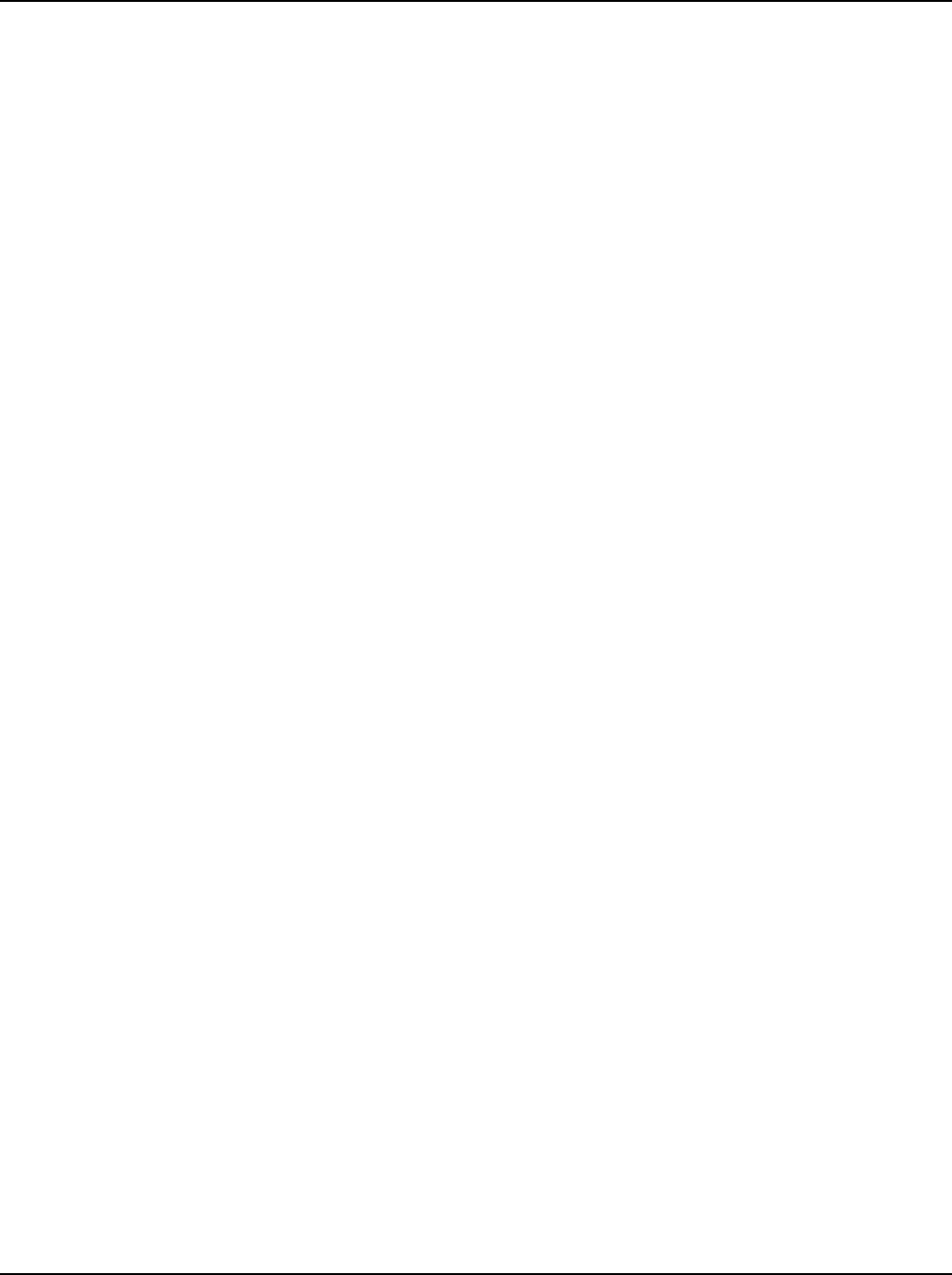
Figures
Figure 1-1 UDC3500 Operator Interface __________________________________________________ 6
Figure 1-2 Screen capture of Process Instrument Explorer running on a Pocket PC_________________ 8
Figure 1-3 Depiction of infrared communications ___________________________________________ 9
Figure 2-1 Model Number Interpretation_________________________________________________ 17
Figure 2-2 Mounting Dimensions (not to scale)____________________________________________ 21
Figure 2-3 Mounting Methods _________________________________________________________ 22
Figure 2-4 Composite Wiring Diagram___________________________________________________ 28
Figure 2-5 Mains Power Supply ________________________________________________________ 29
Figure 2-6 Input 1 Connections_________________________________________________________ 30
Figure 2-7 Input 2 Connections_________________________________________________________ 31
Figure 2-8 Input 3 Connections_________________________________________________________ 32
Figure 2-9 HLAI Inputs 2 and 4 Connections______________________________________________ 33
Figure 2-10 HLAI Inputs 3 and 5 Connections_____________________________________________ 34
Figure 2-11 Optional Analog Input Jumper Positions________________________________________ 34
Figure 2-12 First Current Output________________________________________________________ 35
Figure 2-13 Second Current Output _____________________________________________________ 35
Figure 2-14 Output #2 – Electromechanical Relay Output____________________________________ 36
Figure 2-15 Output #2 – Solid State Relay Output __________________________________________ 36
Figure 2-16 Output #2 – Open Collector Output- Third ______________________________________ 37
Figure 2-17 Output #2 – Third Current Output_____________________________________________ 37
Figure 2-18 Output #2 – Dual Relay Output for Time Duplex _________________________________ 38
Figure 2-19 Output #2 – Dual Relay Output for Position Proportional or Three Position Step Control _38
Figure 2-20 RS-422/485 Communications Option Connections________________________________ 39
Figure 2-21 Ethernet Communications Option with Adaptor Board_____________________________ 39
Figure 2-22 Ethernet Communications Option without Adaptor Board __________________________ 40
Figure 2-23 Digital Inputs_____________________________________________________________ 42
Figure 2-24 Optional Electromechanical Relay Outputs______________________________________ 43
Figure 2-25 Transmitter Power for 4-20 mA — 2 wire Transmitter Using Open Collector Output_____ 43
Figure 2-26 Transmitter Power for 4-20 mA — 2 Wire Transmitter Using Second Current Output ____ 44
Figure 3-1 Mass Flow Example ________________________________________________________ 92
Figure 3-2 Example of Eight Segment Characterizer________________________________________ 99
Figure 3-3 Ethernet Configuration Screen _______________________________________________ 183
Figure 3-4 Email Configuration Screen _________________________________________________ 184
Figure 4-1 Operator Interface_________________________________________________________ 195
Figure 4-2 Auto/Manual Station for Loop 1 (Loop 2 similar) ________________________________ 227
Figure 4-3 Functional Overview Block Diagram of a Single Loop (Loop #1) or
Dual Loop Controller (Loop #1 and Loop #2)_________________________________________ 232
Figure 4-4 Functional Overview Block Diagram of Internal Cascade Controller _________________ 233
Figure 4-5 Hi/Lo Override Selector ____________________________________________________ 234
Figure 4-6 Carbon Potential Control ___________________________________________________ 243
Figure 4-7 Ramp/Soak Profile Example_________________________________________________ 251
Figure 4-8 SP Program #1 Record Sheets _______________________________________________ 252
Figure 4-9 SP Program #2 Record Sheets _______________________________________________ 254
Figure 4-10 SP Program #3 Record Sheets ______________________________________________ 256
Figure 4-11 SP Program #4 Record Sheets ______________________________________________ 258
Figure 4-12 Loop Data Maintenance Screen _____________________________________________ 262
Figure 4-13 Alarm Details Maintenance Screen __________________________________________ 263
Figure 4-14 Digital Inputs Details Maintenance Screen_____________________________________ 264
March 2012 UDC3500 Universal Digital Controller Product Manual xv
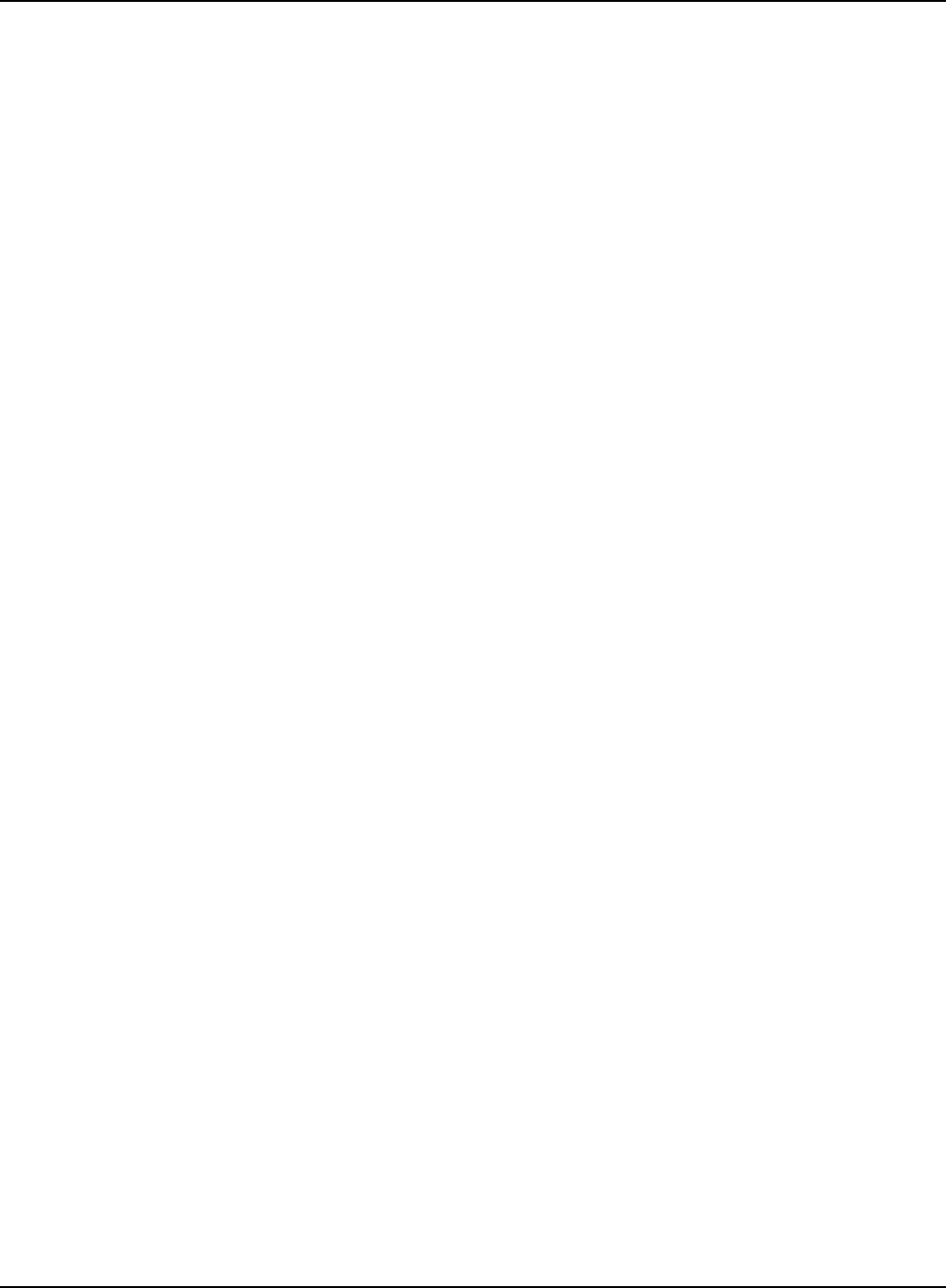
xvi UDC3500 Universal Digital Controller Product Manual March 2012
Figure 4-15 Status Data Maintenance Screen_____________________________________________ 265
Figure 4-16 Diagnostic History Maintenance Screen_______________________________________ 266
Figure 4-17 Ethernet Status Maintenance Screen__________________________________________ 267
Figure 4-18 Healthwatch Data Maintenance Screen _______________________________________ 268
Figure 4-19 Healthwatch Data Reset Screen _____________________________________________ 269
Figure 4-20 Totalizer Maintenance Screen ______________________________________________ 270
Figure 4-21 Real Time Clock Maintenance Screen ________________________________________ 271
Figure 4-22 IR Communications Address _______________________________________________ 272
Figure 4-23 Configuration Upload in Progress ___________________________________________ 273
Figure 4-24 Ethernet Communications Address __________________________________________ 275
Figure 4-25 Configuration Upload in Progress ___________________________________________ 276
Figure 5-1 Input Wiring Terminals ____________________________________________________ 282
Figure 5-2 Wiring Connections for Thermocouple Inputs Using an Ice Bath ____________________ 284
Figure 5-3 Wiring Connections for Thermocouple Inputs Using a Thermocouple Source __________ 285
Figure 5-4 Wiring Connections for RTD (Resistance Thermometer Device) ____________________ 286
Figure 5-5 Wiring Connections for Radiamatic, Millivolts, Volts, Carbon, Oxygen or
Thermocouple Differential Inputs (Except 0-10 Volts and –1 to 1 Volts)____________________ 287
Figure 5-6 Wiring Connections for 0 to 10 Volts or –1 to 1 Volts_____________________________ 289
Figure 5-7 Wiring Connections for Milliampere Inputs_____________________________________ 290
Figure 5-8 Wiring Connections for Dual High Level Voltage Inputs __________________________ 291
Figure 5-9 Wiring Connections for Dual High Level Milliampere Inputs_______________________ 292
Figure 6-1 Wiring Connections for Calibrating the First Current Output _______________________ 298
Figure 6-2 Wiring Connections for Calibrating the Second Current Output _____________________ 300
Figure 6-3 Wiring Connections for Calibrating Third Current Output _________________________ 302
Figure 8-1 UDC3500 Exploded View __________________________________________________ 337
Figure 10-1 Software Option Status Information__________________________________________ 353
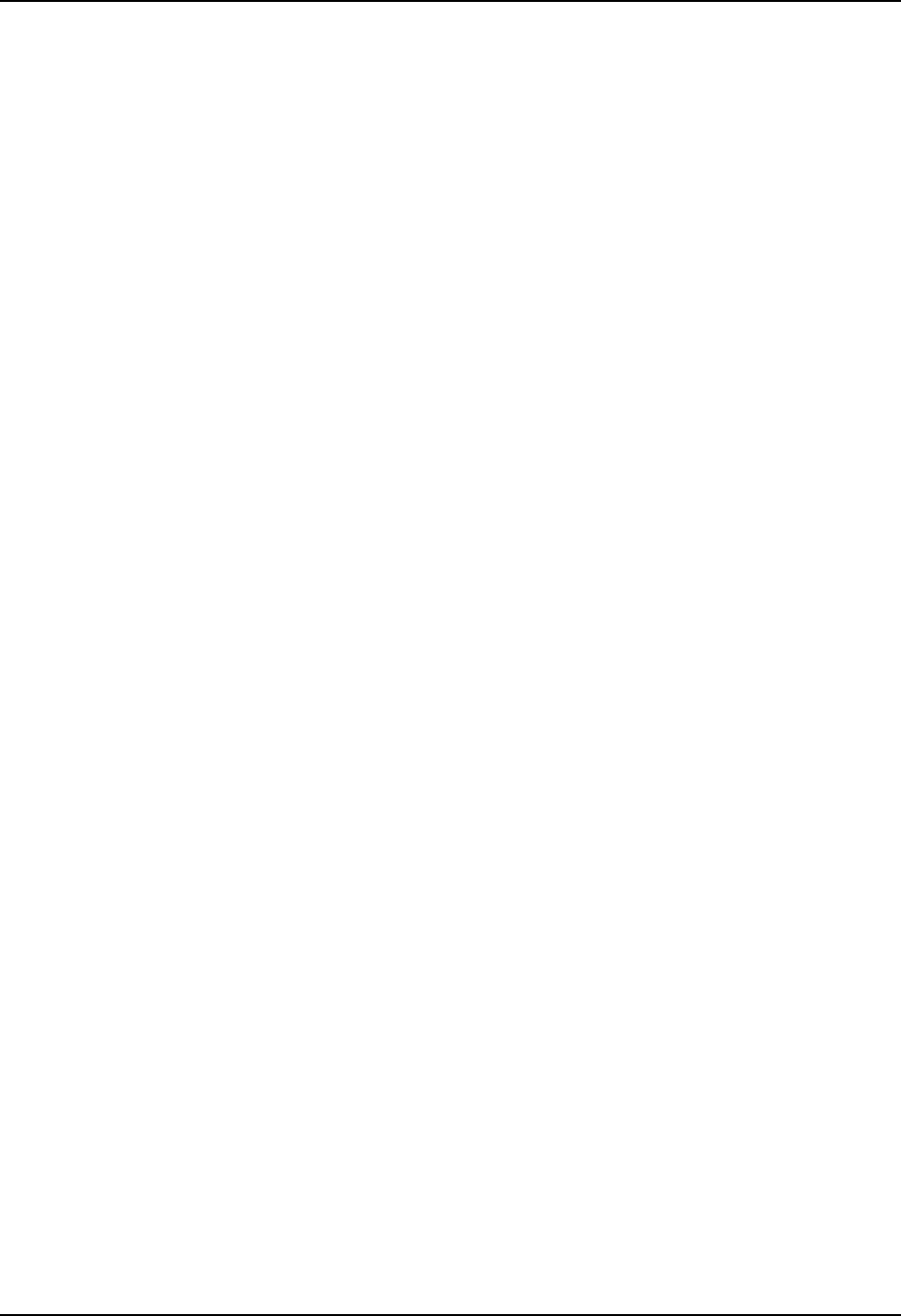
Introduction
1 Introduction
1.1 Overview
Function
The UDC3500 is a microprocessor-based stand-alone controller. It combines a high
degree of functionality and operating simplicity in a 1/4 DIN size controller. This
instrument is an ideal controller for regulating temperature and other process variables in
numerous heating and cooling applications, as well as in metal working, food,
pharmaceuticals, semiconductor, testing and environmental work.
The UDC3500 monitors and controls temperatures and other variables in applications
such as environmental chambers, plastic processing machines, furnaces and ovens, and
packaging machinery.
Features
3 Universal Analog Inputs (can be configured to act as one Universal and four High
Level)
± 0.10% Analog Input Accuracy (can be Field Calibrated to ± 0.05%)
16-bit Analog Input resolution typical
Fast scanning rate (166ms)
Up to 7 Analog and Digital Outputs
4 Digital Inputs
Two Math Functions, two Characterizers, one Polynomial equation and one
Totalizer available
Two Independent Loops or Cascade Loop
Up to four 20-segment Setpoint Programs (can be concatenated to form two 40-
segment Setpoint Programs)
Ethernet TCP/IP with Email or RS-485 Modbus communication
Infrared PC & Pocket PC configuration
NEMA4X and IP66 front face protection
Multilanguage prompts
¼ DIN Size
Easily Field Upgradeable
Easy to read displays
Bright, dual displays with multi-language prompts (in English, French, German, Spanish,
or Italian) make the operator interface easy to read, understand, and operate. Simple
keystrokes let you set operating parameters that meet your process control needs.
March 2012 UDC3500 Universal Digital Controller Product Manual 1
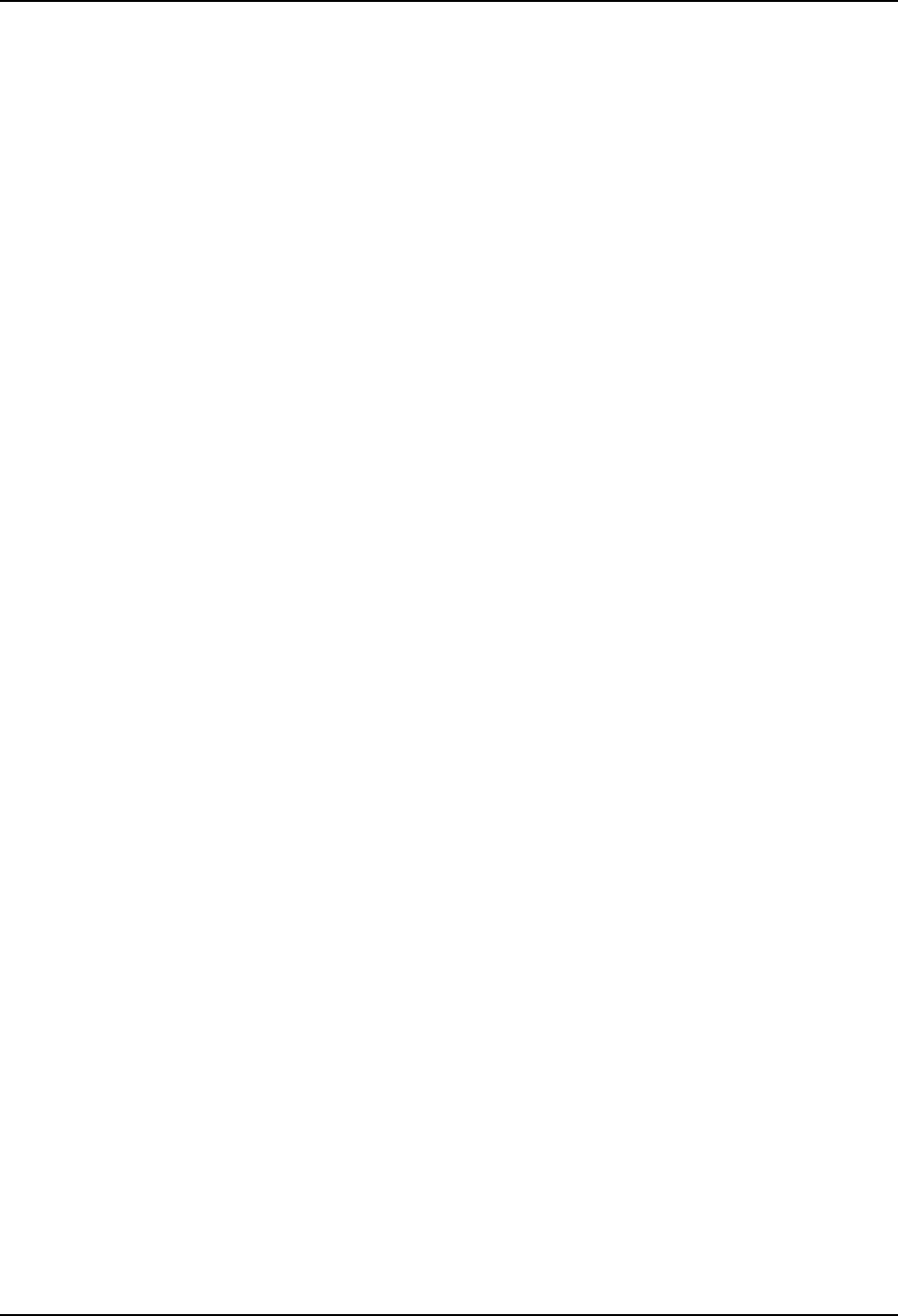
Introduction
Analog Inputs
The UDC3500 has three universal analog inputs with a typical accuracy of ±0.10% of
full-scale input and a typical resolution of 16 bits. These can be configured to act as one
Universal and four High Level Inputs for a total of five analog inputs. All analog inputs
are sampled six times per second (every 166 ms).
The Process Variable input can be one of the various Thermocouple, RTD, Radiamatic or
linear actuations. Linear actuations have Thermocouple, RTD, and Radiamatic
transmitter characterization capability as a standard feature. Linear actuations also have
square root capability.
The optional second and third inputs are isolated from each other and all other inputs and
outputs and accept the same actuations as input one. Input 3 provides the Slidewire input
for Position Proportional control. These optional inputs can each be split into two high
level inputs. The fourth input is enabled by first configuring Input 2 as a 20 mA or 5 Vdc
input type (high level) and moving a jumper on the Second Optional Input Board. Input 4
will then be available as a high level input. The fifth input is enabled by first configuring
Input 3 as a 20 mA or 5 Vdc input type (high level) and moving a jumper on the Third
Optional Input Board. Input 5 will then be available as a high level input.
All actuations and characterizations are keyboard configurable. Cold junction
compensation is provided for thermocouple type inputs. Upscale, downscale or failsafe
sensor break protection is keyboard configurable. A configurable digital filter of 0 to 120
seconds provides input signal damping.
Thermocouple Health—In addition to the standard configurable upscale, downscale or
failsafe output burnout selections, the condition of the thermocouple can be monitored to
determine if it is good, failing or in danger of imminent failure.
Math Functions
Algorithm—Two pre-configured algorithms are available for easy implementation. This
includes the capability of using a Ratio and Bias with any input. You can select from the
following menu:
Feedforward Summer—Uses any input, followed by a Ratio/Bias calculation, summed
directly with the computed PID output value to provide a resultant output to the final
control element (standard feature).
Weighted Average —Computes the weighted average of a PV or SP for the control
algorithm from two inputs (standard feature).
Feedforward Multiplier—Uses any input, multiplied by the calculated PID output to
provide a resultant output, which is sent to the final control element (standard feature).
Summer/Subtractor—Will add or subtract inputs with the result used as the derived PV.
Multiplier/Divider—Uses the analog inputs to calculate a derived PV. It is available
with or without Square Root.
Input High/Low Select—Specifies the PV input as the higher or lower of two inputs.
2 UDC3500 Universal Digital Controller Product Manual March 2012
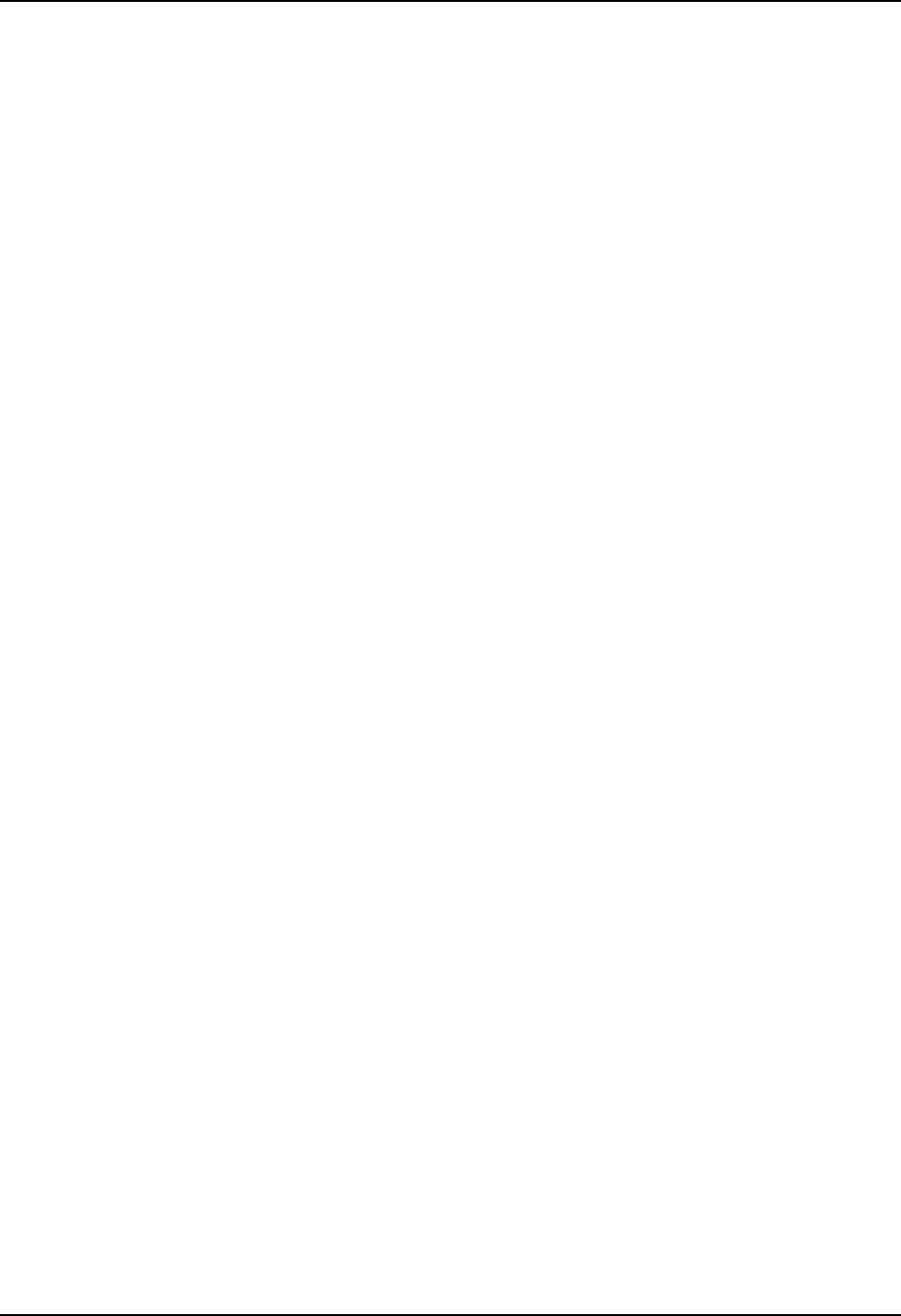
Introduction
8 Segment Characterizers—Two characterizers are available that can be applied to any
Analog Input, to Loop 1 Output or to Loop 2 Output. The Characterizers can be
combined to produce a single 16-segment characterizer.
†
Totalizer—Calculates and displays the total flow volume as measured by any of the
analog inputs or as derived by either Math algorithm. Displayed value is eight digits with
a configurable scaling factor. The totalizer value may be reset.
Combinational Inputs—Inputs can be combined for use with Relative Humidity, %
Oxygen, Carbon Potential, Dewpoint or Math Algorithms. This controller can accept
carbon probes from Cambridge, Marathon Monitors, Corning, A.A.A.C, Barber
Coleman, MacDhui, Bricesco or Furnace Controls.
Polynomial Curve Characterizer—A fifth order polynomial equation can be used on
any one of the analog inputs.
Logic Gates—Five Logic Gates configurable as OR, NOR, AND, NAND, XOR, XNOR,
or COMPARATOR. Each Gate has two inputs and one output. The Gates may be linked
together to perform more complex functions.
†
Characterizers are mutually exclusive with Setpoint Program #4.
Digital Inputs
Four isolated digital inputs are provided for remote dry contact closure to select one of 25
actions. Also, two of these digital inputs can allow one of six additional selections to be
combined with one of the above selections.
Outputs
Output Types - The UDC3500 may have up to seven of the following outputs:
Current Outputs (4-20 or 0-20 mA)
Electromechanical Relays (5 amps)
Solid State Relay (1 amp)
Dual Electromechanical Relays (2 amps)
Open Collector Output (+30 VDC @ 20 mA)
Alarms
Up to four electromechanical alarm relays are available to activate external equipment
when preset alarm setpoints are reached. Each of the four alarms can be set to monitor
two independent setpoints. Each alarm setpoint can be either high or low alarm. The
alarm type can be selected to be either of the inputs, the Process Variable, Deviation,
Output, Shed from communications, PV rate of change, or to alarm on manual mode
activation or a Current Output Open failure. It can also be used as an On or Off event at
the beginning or end of a Ramp/Soak segment. An individual alarm hysteresis setting is
provided for each relay and these are configurable from 0 to 100% of range.
Alarms can be configured as latching or non-latching. continued
March 2012 UDC3500 Universal Digital Controller Product Manual 3
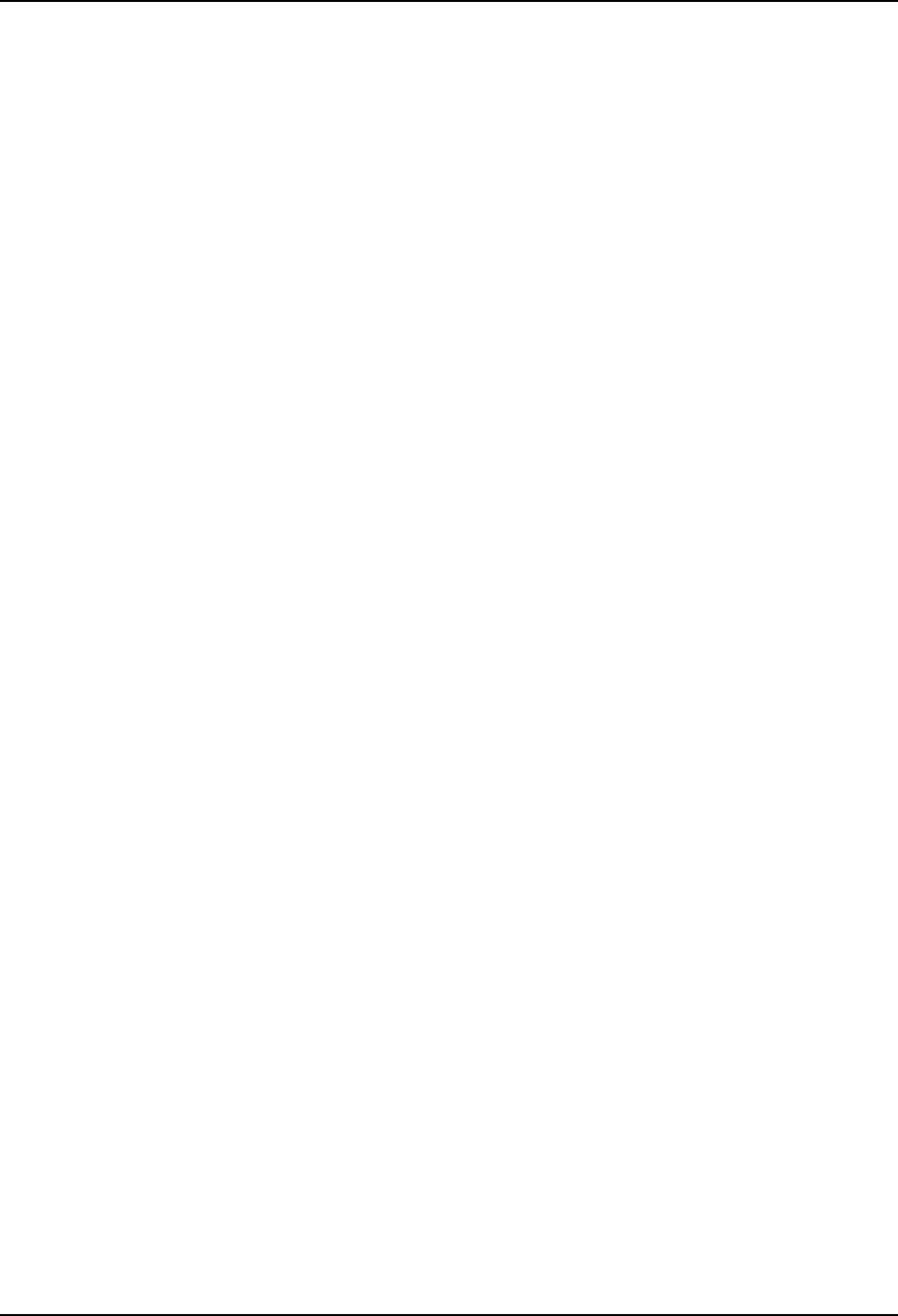
Introduction
Alarm blocking is also available which allows start-up without alarm energized
until after it first reaches the operating region.
PV rate of change alarm.
Loop break alarm.
Timer output reset.
Diagnostic Alarm
Communications
A communications link is provided between the UDC3500 and a host computer or PLC
via the RS422/485 Modbus® RTU or Ethernet TCP/IP * communications option. An
infrared communication link is also available allowing a non-intrusive configuration of
the instrument.
Miscellaneous Features
Auxiliary Output * (optional)—All of the three current outputs can function as Auxiliary
Outputs which can be scaled from 4-20 ma for 0 to 100% for any range. These can be
configured to represent any analog input, PV, active Setpoint, Local SP1, Deviation, or
the Control Output for either control loop.
Transmitter Power—This feature provides up to 30 volts dc to power a 2-wire transmit-
ter (requires the use of open collector output selection or one of the current outputs).
Four Local and one Remote Setpoints—Can be configured to provide four Local and
one Remote Setpoints, which are selectable either via the keyboard or by Digital Input.
Universal Switching Power—Operates on any line voltage from 90 to 250 Vac 50/60 Hz
without jumpers. 24 Vac/dc instrument power is available as an option.
Timer—This standard feature provides a configurable time period of 0 to 99 hours, 59
minutes or units of minutes and seconds. It can be started via the keyboard, alarm 2, or by
a digital input. The timer output is Alarm 1, which energizes at the end of the Timer
Period. Alarm 1 can be automatically reset. The Timer Period can be changed between
each batch. Status is shown on the lower display.
Healthwatch—Consists of three timers and three counters, which can each be assigned to
track UDC3500 controller functions. Selected Maintenance & Diagnostic data can be
accessed from the front panel or via communications. Alarms can be configured to
activate when a desired threshold is reached. A security code is required to perform
resetting of any of the above listed counter or timer functions.
Real Time Clock—An optional battery-backed clock feature that allows the user to
perform such things as starting an SP Program on a specific date and time.
Auto/Manual Station Plus Back-up Control—A UDC3500 can act as both an
Auto/Manual Station PLUS as a back-up PID Controller, should the primary loop
controller fail. Since the PID control is sometimes implemented via a PLC, this feature
provides a very cost-effective way to insure the process does not have to shutdown or
4 UDC3500 Universal Digital Controller Product Manual March 2012
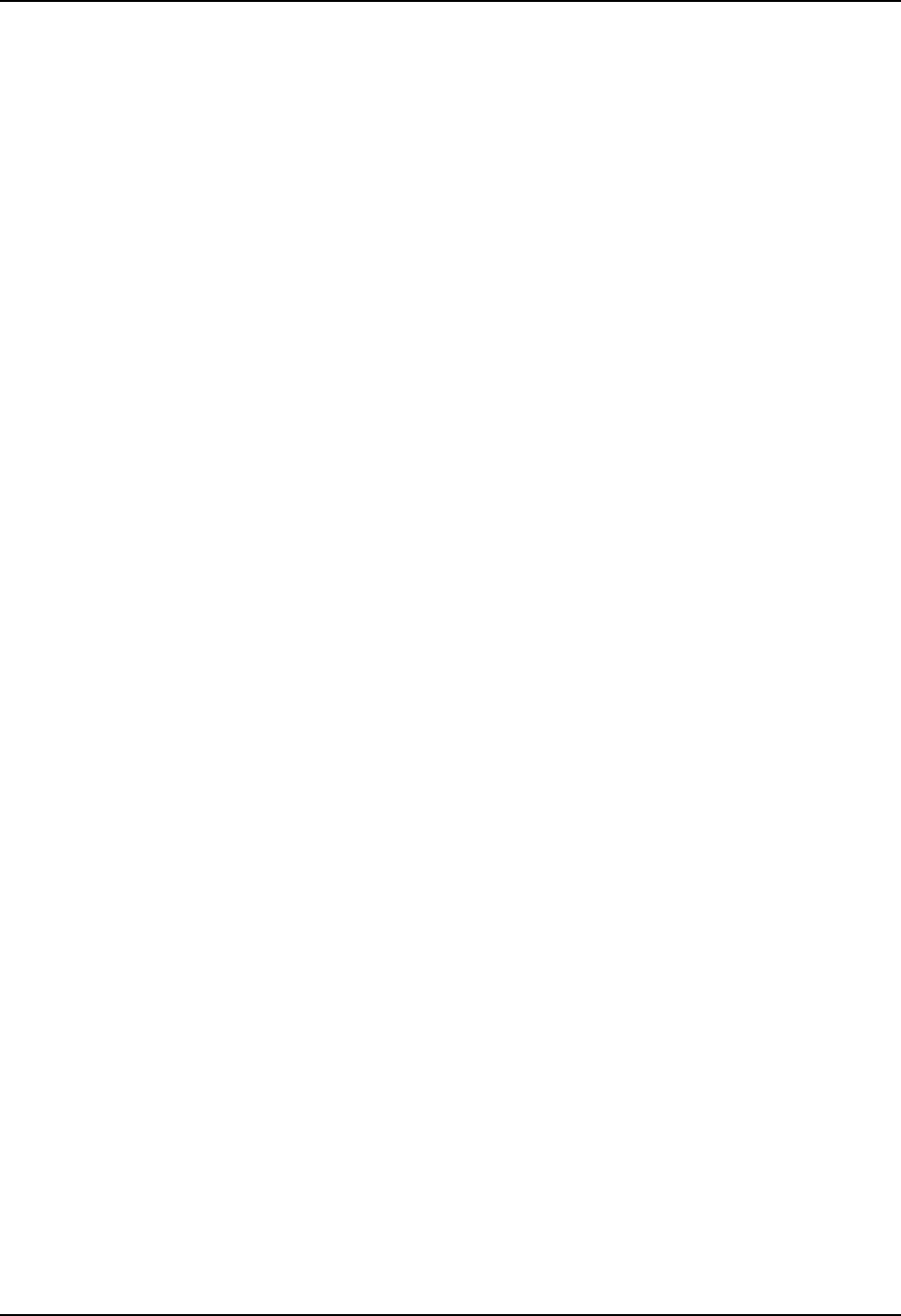
Introduction
remain in manual mode if the PLC should fail. Switching from the Auto/Manual Station
to the back-up control mode is accomplished using the Digital Input option.
Moisture Protection—The NEMA4X and IP66 rated front face permits use in
applications where it may be subjected to moisture, dust, or hose-down conditions. UL
and CSA approved as Type 4 protection.
Setpoint Ramp/Soak Programming (Optional)—Enables you to program and store ten
Ramp and ten Soak segments (total of twenty segments) for setpoint programming. Run
or Hold of program is keyboard or remote digital switch selectable.
Enhanced Setpoint Programming (Optional) )—Four Setpoint Programs each of ten
Ramp and ten Soak Segments. Each pair can be concatenated so as to form a single
Setpoint Program of twenty Ramps and twenty Soaks.
†
Setpoint Rate—Lets you define a ramp rate to be applied to any local setpoint change. A
separate upscale or downscale rate is configurable. A single setpoint ramp is also
available as an alternative.
Output Rate Limiter—A maximum output rate may be configured for both the upscale
and the downscale output directions.
CE Mark—Conformity with 73/23/EEC, Low Voltage Directive and 89/336/EEC, the
EMC Directive as a standard feature.
Approval Body Options—CSA certification and UL listing are available as an option.
Four Sets of Tuning Constants—Four sets of PID parameters can be configured for each
loop and automatically or keyboard selected.
Data Security—Five levels of keyboard security protect tuning, configuration, and
calibration data, accessed by a configurable 4-digit code. Nonvolatile EEPROM memory
assures data integrity during loss of power.
Diagnostic/Failsafe Outputs—Continuous diagnostic routines detect failure modes,
trigger a failsafe output value and identify the failure to minimize troubleshooting time.
High Noise Immunity—The controller is designed to provide reliable, error-free
performance in industrial environments that often affect highly noise-sensitive digital
equipment.
Accutune III™ —This standard feature provides a truly plug and play tuning algorithm,
which will, at the touch of a button or through a digital input, accurately identify and tune
any process including those with deadtime and integrating processes. This speeds up and
simplifies start-up plus allows retuning at any setpoint. The algorithm used is an
improved version of the Accutune II
TM
algorithm found on earlier controllers. Two
possibilities are now offered when tuning your process: Fast Tune and Slow Tune.
Fast Tune will tune the process in such a way that the temp is reached faster, a
slight overshoot will be allowed.
Slowtune will minimize overshoot, but it will take more time for the process
temperature to reach the target setpoint.
March 2012 UDC3500 Universal Digital Controller Product Manual 5
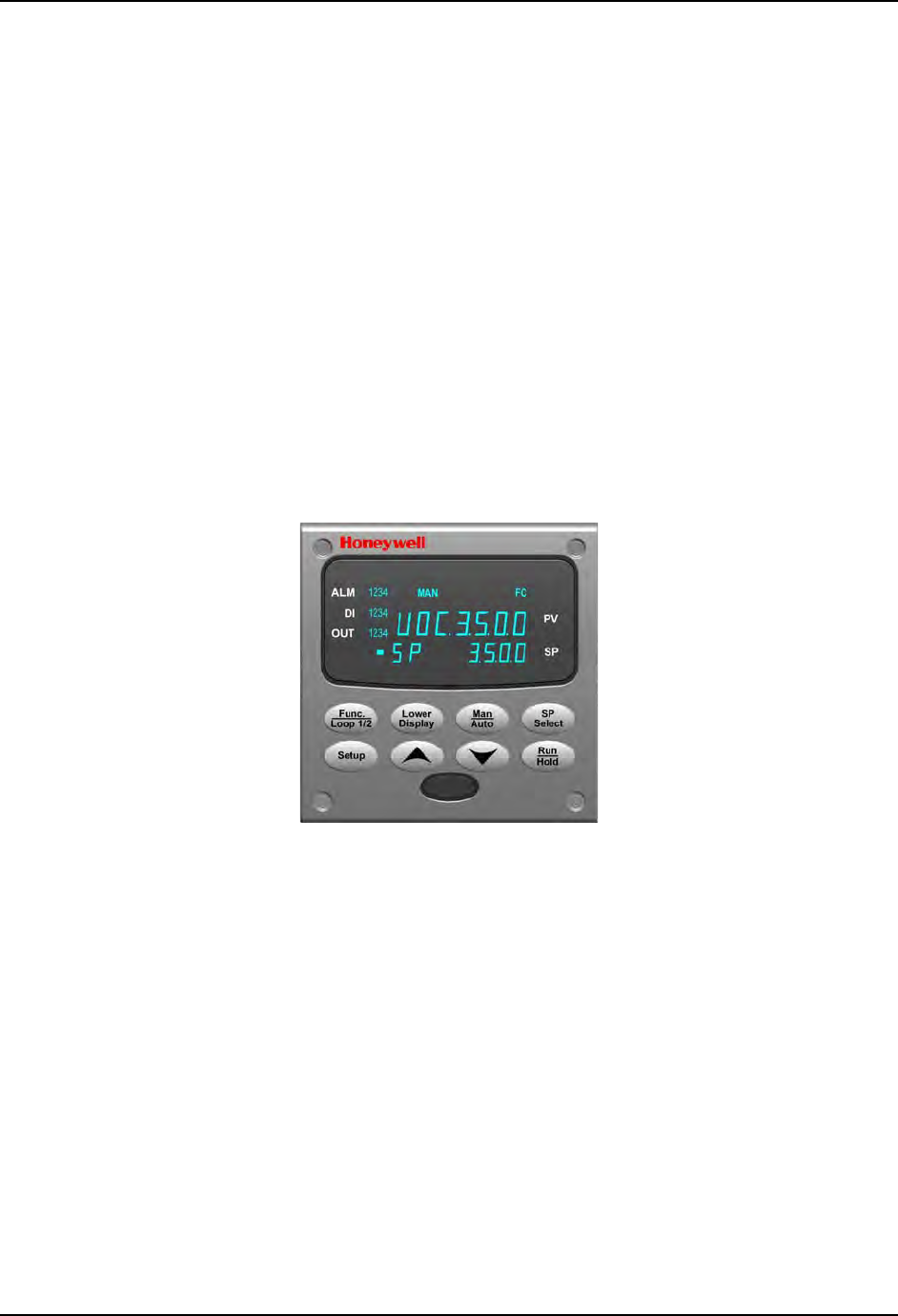
Introduction
Heat/Cool (Duplex Tune) will automatically tune both the heating and cooling
sides of the process.
Fuzzy Logic—This standard feature uses fuzzy logic to suppress process variable
overshoot due to SP changes or externally induced process disturbances. It
operates independently from Accutune III tuning. It does not change the PID
constants, but temporarily modifies the internal controller response to suppress
overshoot. This allows more aggressive tuning to co-exist with smooth PV
response. It can be enabled or disabled depending on the application or the control
criteria.
* The Second Current Output option is mutually exclusive with the Ethernet
Communications option.
†
Characterizers are mutually exclusive with Setpoint Program #4.
1.2 Operator Interface
Figure 1-1 UDC3500 Operator Interface
6 UDC3500 Universal Digital Controller Product Manual March 2012
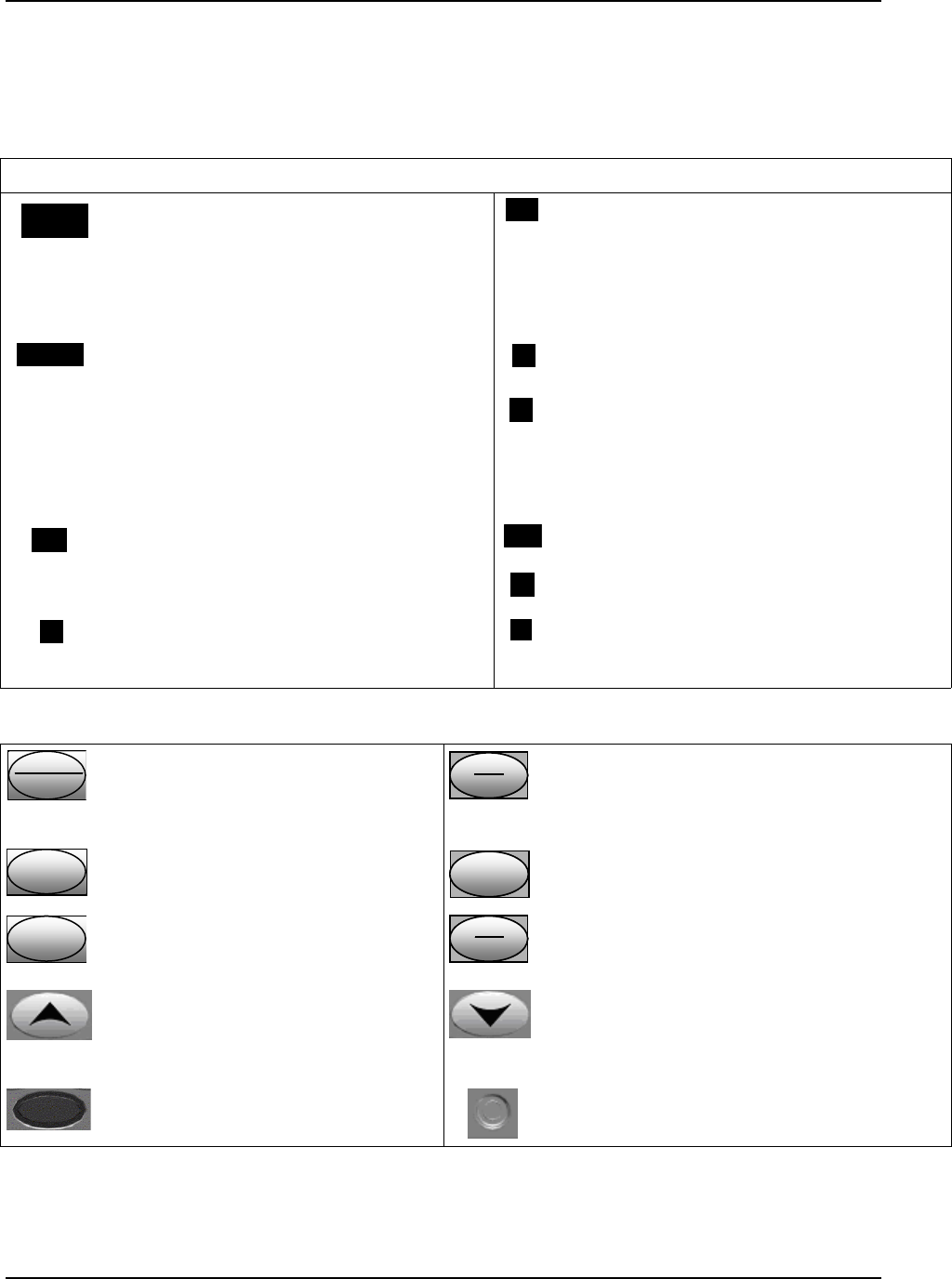
Introduction
March 2012 UDC3500 Universal Digital Controller Product Manual 7
1.2.1 Function of Displays and Keys
Table 1-1 Function of Displays and Keys
Display Indicators
3200
3500
Upper display with 4 larger digits shows
Process Variable value (normal operation)
and special annunciator features. During
Configuration, the upper display provides
guidance for the operator through prompts (7
– characters)
OUT
Indicates Control Relay 1 and/or 2 on.
SP
SP 3500
During normal operation, the lower display
shows key-selected operating parameters
such as Output, Setpoints, Inputs, Deviation,
active Tuning Parameter Set, Timer Status, or
minutes remaining in a setpoint ramp (4
digits). During configuration, the lower display
provides guidance for the operator through
prompts (8-characters).
FF
Or
CC
Indicates either degrees Fahrenheit or
Centigrade.
ALMALM
Indicates Alarm 1 and/or Alarm 2 conditions
exist.
MAN
Or
AA
Indicates either Manual or Auto mode.
DIDI
Indicates Digital Input 1 and/or 2 on.
SPSP
Indicates Local Setpoint #1. Also, a bar is
lighted when the setpoint being used is shown
on the lower display.
Keys and Functions
Func
Loo
p
1/2
Selects functions within each
configuration group. Switches between
Loop Displays for Two Loop and
Cascade units.
Man
Auto
Man
Auto
Man
Auto
Selects Manual or Auto mode.
SetupSetup
Scrolls through the configuration
groups.
SP
Select
SP
Select
SP
Select
Hold key down to cycle through configured
setpoints.
Lower
Display
Lower
Display
Lower
Display
Returns Controller to normal display
from Set Up mode. Toggles various
operating parameters for display.
Run
Hold
Run
Hold
Run
Hold
Enables Run/Hold of the SP Ramp or Program
plus Timer start.
Increases setpoint or output value.
Increases the configuration values or
changes functions in Configuration
mode groups.
Decreases setpoint or output value. Decreases
the configuration values or changes functions in
Configuration mode groups.
Infrared transceiver
NEMA4X and IP66 screw attachment (each
corner)
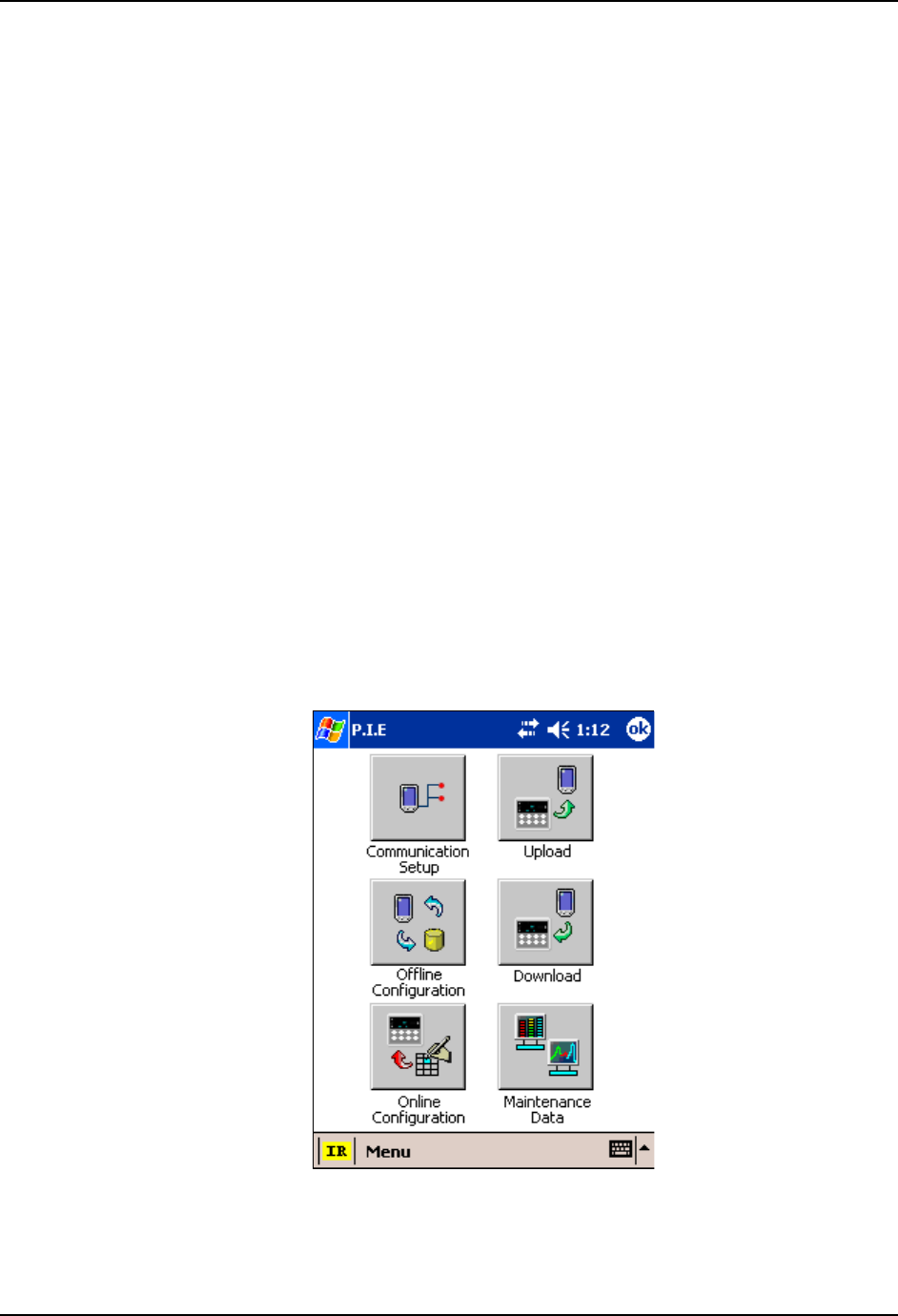
Introduction
1.3 Process Instrument Explorer Software
Overview
Process Instrument Explorer (P.I.E.) lets you configure your instrument on a
desktop/laptop or Pocket PC. For details see Process Instrument Explorer Manual #51-
52-25-131.
Features
Create configurations with intuitive software program running on a Pocket PC, a
Desktop or a laptop computer.
Create/edit configurations live, just connect software to the controller via a
communications port.
Create/edit configurations offline and download to controller later via a
communications port.
Communication types available on every UDC3500:
Infrared (standard)
RS 485 (optional)
Ethernet (optional)
Same port types on UDC2500 and UDC3200 allow interconnectivity.
This software is available in English, Spanish, Italian, German and French.
Figure 1-2 Screen capture of Process Instrument Explorer
running on a Pocket PC
8 UDC3500 Universal Digital Controller Product Manual March 2012
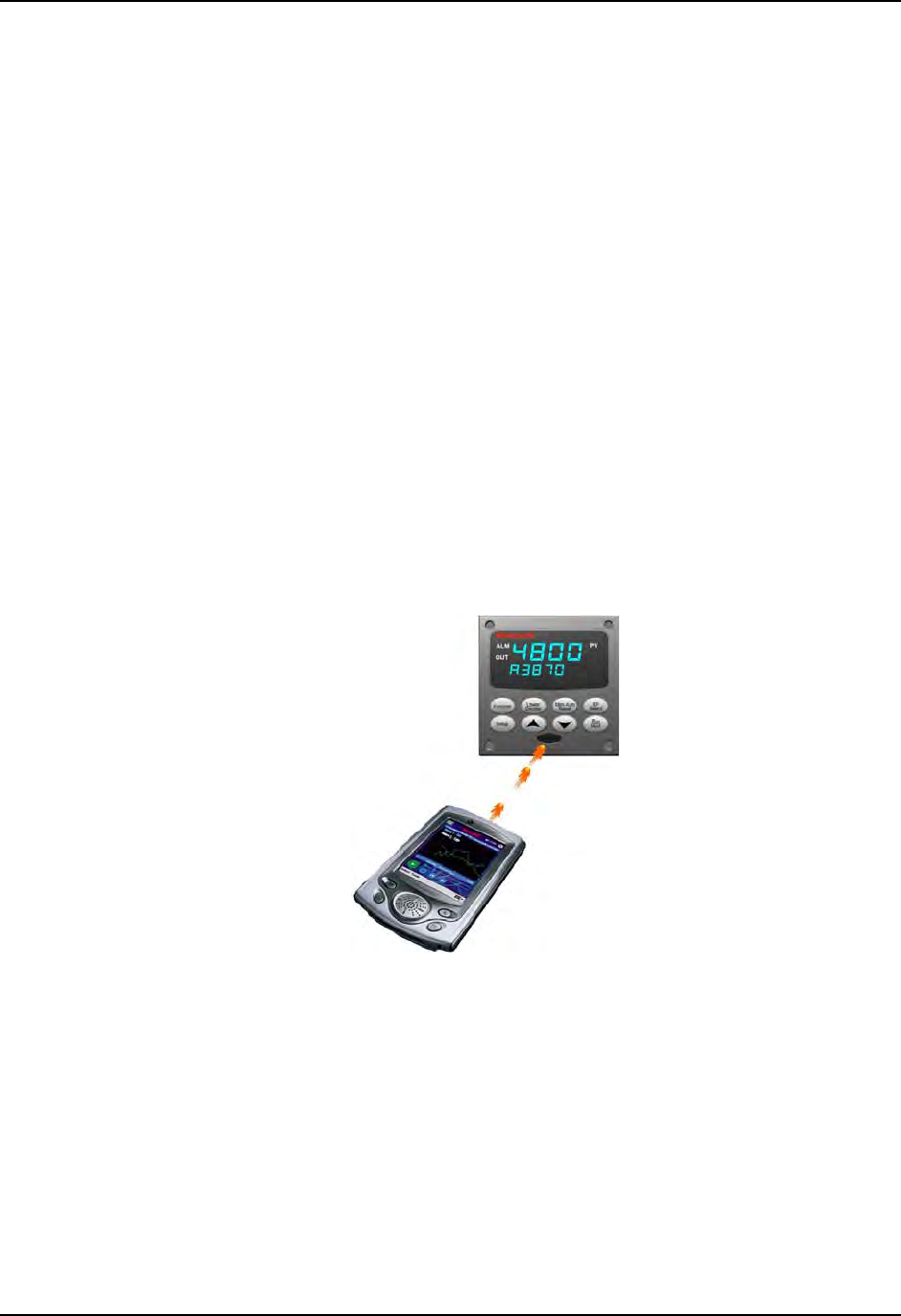
Introduction
Infrared communications
The infrared connection provides a non-intrusive wireless connection with the instrument
and maintains NEMA4X AND IP66 integrity.
No need to get access to the back of the controller to communicate with the instrument,
no need to take your screw driver to wire the communication cable, no wiring mistake
possible. You can now duplicate an instrument’s configuration, upload or download a
new configuration in a matter of seconds, just by pointing your Pocket PC in the direction
of the instrument.
It takes just a few seconds to upload a configuration from an instrument. You can then
save the configuration file onto your PC or pocket PC for review, modification or
archiving. Furthermore, this software also gives you important maintenance information
on the controller: instantly, get information on the current operating parameters, digital
inputs and alarm status, identify internal or analog input problems.
Question: What if I have several controllers on the same panel? How can I be sure I am
communicating with the correct one?
Answer: The infrared port of the controller is normally “off”. You activate the infrared
port by pressing any controller’s key. You can now communicate. After 4 minutes, the
port will be shut down again. Each controller may also be assigned a different
communications address.
Figure 1-3 Depiction of infrared communications
March 2012 UDC3500 Universal Digital Controller Product Manual 9
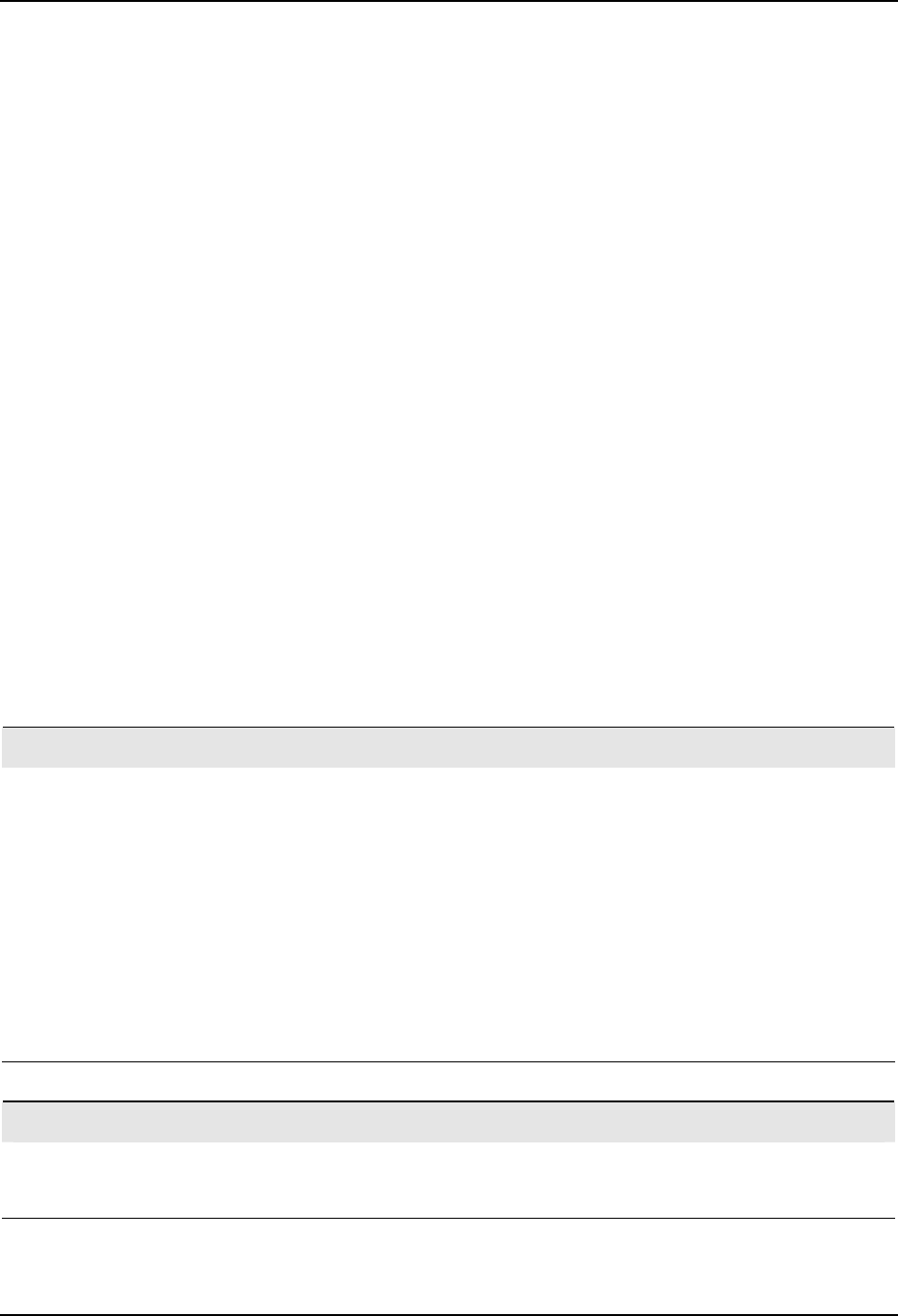
Introduction
10 UDC3500 Universal Digital Controller Product Manual March 2012
1.4 CE Conformity (Europe)
This product is in conformity with the protection requirements of the following European
Council Directives: 73/23/EEC, the Low Voltage Directive, and 89/336/EEC, the EMC
Directive. Conformity of this product with any other “CE Mark” Directive(s) shall not be
assumed.
Product Classification: Class I: Permanently connected, panel-mounted Industrial
Control Equipment with protective earthing (grounding) (EN61010-1).
Enclosure Rating: This controller must be panel-mounted with the rear terminals
enclosed within the panel. The front panel of the controller is rated at NEMA4X and IP66
when properly installed.
Installation Category (Overvoltage Category): Category II (EN61010-1)
Pollution Degree: Pollution Degree 2: Normally non-conductive pollution with
occasional conductivity caused by condensation. (Ref. IEC 664-1)
EMC Classification: Group 1, Class A, ISM Equipment (EN61326, emissions), Industrial
Equipment (EN61326, immunity)
Method of EMC Assessment: Technical File (TF)
Declaration of Conformity: 51453681
Deviation from the installation conditions specified in this manual, and the special
conditions for CE conformity in Subsection 2.1, may invalidate this product’s conformity
with the Low Voltage and EMC Directives.
ATTENTION
The emission limits of EN61326 are designed to provide reasonable protection
against harmful interference when this equipment is operated in an industrial
environment. Operation of this equipment in a residential area may cause harmful
interference. This equipment generates, uses, and can radiate radio frequency
energy and may cause interference to radio and television reception when the
equipment is used closer than 30 meters (98 feet) to the antenna(e). In special
cases, when highly susceptible apparatus is used in close proximity, the user may
have to employ additional mitigating measures to further reduce the
electromagnetic emissions of this equipment.
WARNING
If this equipment is used in a manner not specified by the manufacturer, the
protection provided by the equipment may be impaired.
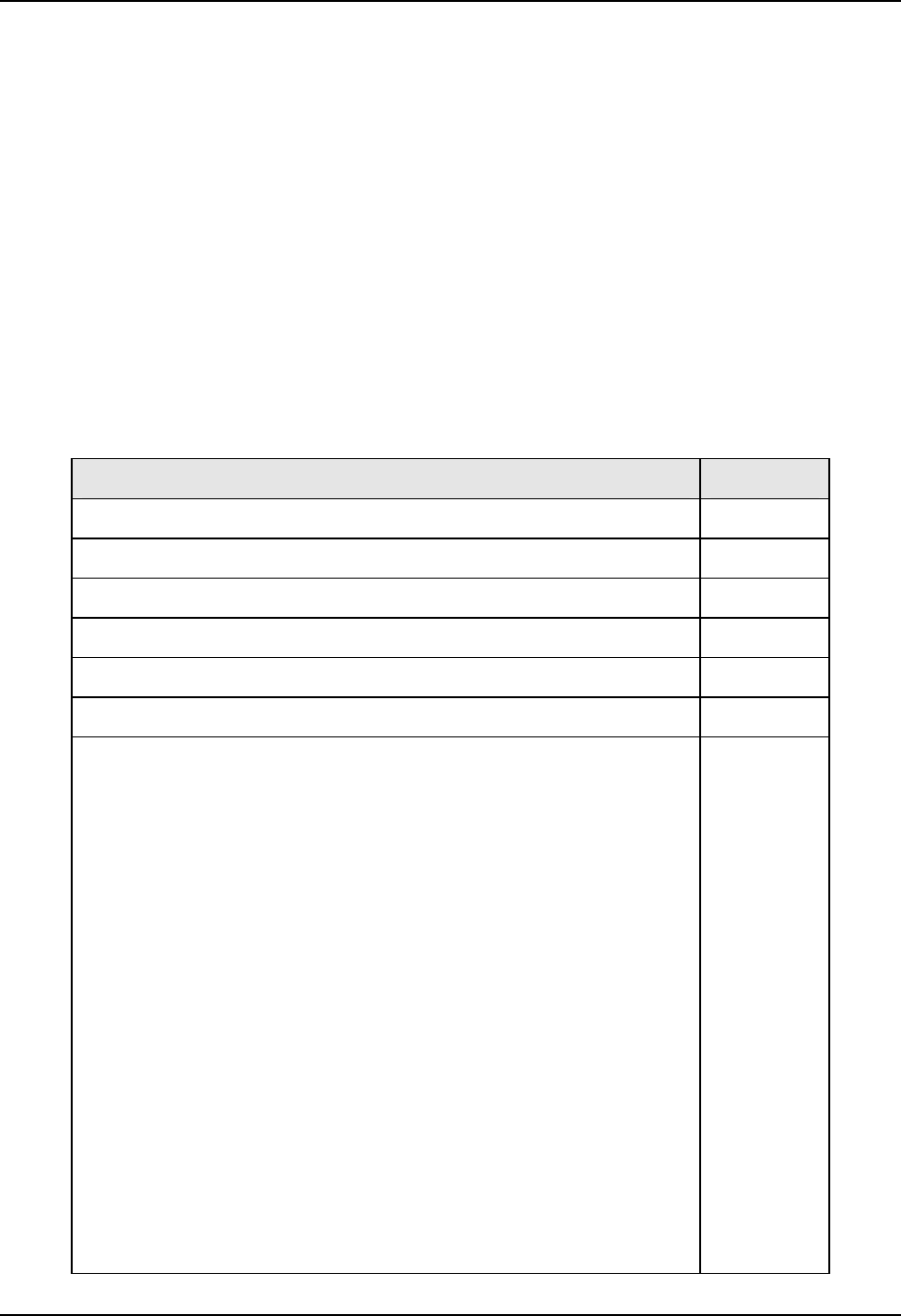
Installation
2 Installation
2.1 Overview
Introduction
Installation of the UDC3500 consists of mounting and wiring the controller according to
the instructions given in this section. Read the pre-installation information, check the
model number interpretation (Subsection 2.3) and become familiar with your model
selections, then proceed with installation.
What’s in this section?
The following topics are covered in this section.
TOPIC See Page
2.1 Overview 11
2.2 Condensed Specifications 13
2.3 Model Number Interpretation 17
2.4 Control and Alarm Relay Contact Information 20
2.5 Mounting 21
2.6 Wiring 23
2.7 Wiring Diagrams
Figure 2-4 Composite Wiring Diagram
Figure 2-5 Mains Power Supply
Figure 2-6 Input 1 Connections
Figure 2-7 Input 2 Connections
Figure 2-8 Input 3 Connections
Figure 2-9 HLAI Inputs 2 and 4
Figure 2-10 HLAI Inputs 3 and 5
Figure 2-11 Optional Analog Input Jumper Positions
Figure 2-12 First Current Output
Figure 2-13 Second Current Output
Figure 2-14 Output #2 – Electromechanical Relay Output
Figure 2-15 Output #2 – Solid State Relay Output
Figure 2-16 Output #2 – Open Collector Output
Figure 2-17 Output #2 – Third Current Output
Figure 2-18 Output #2 – Dual Relay Output for Time
Duplex
Figure 2-19 Output #2 – Dual Relay Output for Position
Proportional or Three Position Step Control
Figure 2-20 RS-422/485 Communications Option
28
29
30
31
32
33
34
34
35
35
36
36
37
37
38
38
39
40
March 2012 UDC3500 Universal Digital Controller Product Manual 11
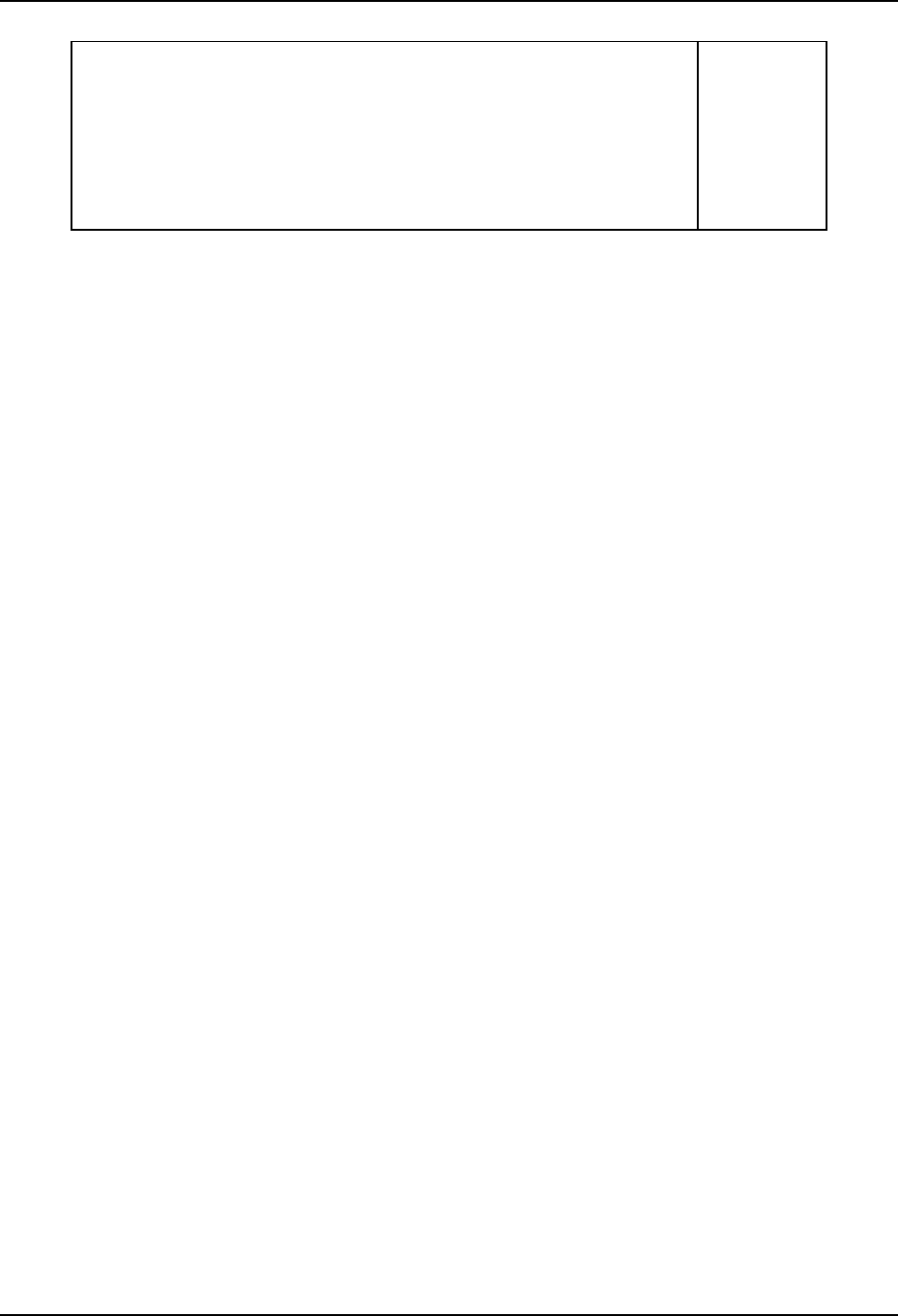
Installation
Figure 2-22 Ethernet Communications Option
Figure 2-23 Digital Inputs
Figure 2-24 Optional Electromechanical Relay Outputs
Figure 2-25 Transmitter Power for 4-20 mA — 2 wire
Transmitter Using Open Collector Output
Figure 2-26 Transmitter Power for 4-20 mA — 2 Wire
Transmitter Using Second Current Output
42
43
43
44
44
12 UDC3500 Universal Digital Controller Product Manual March 2012
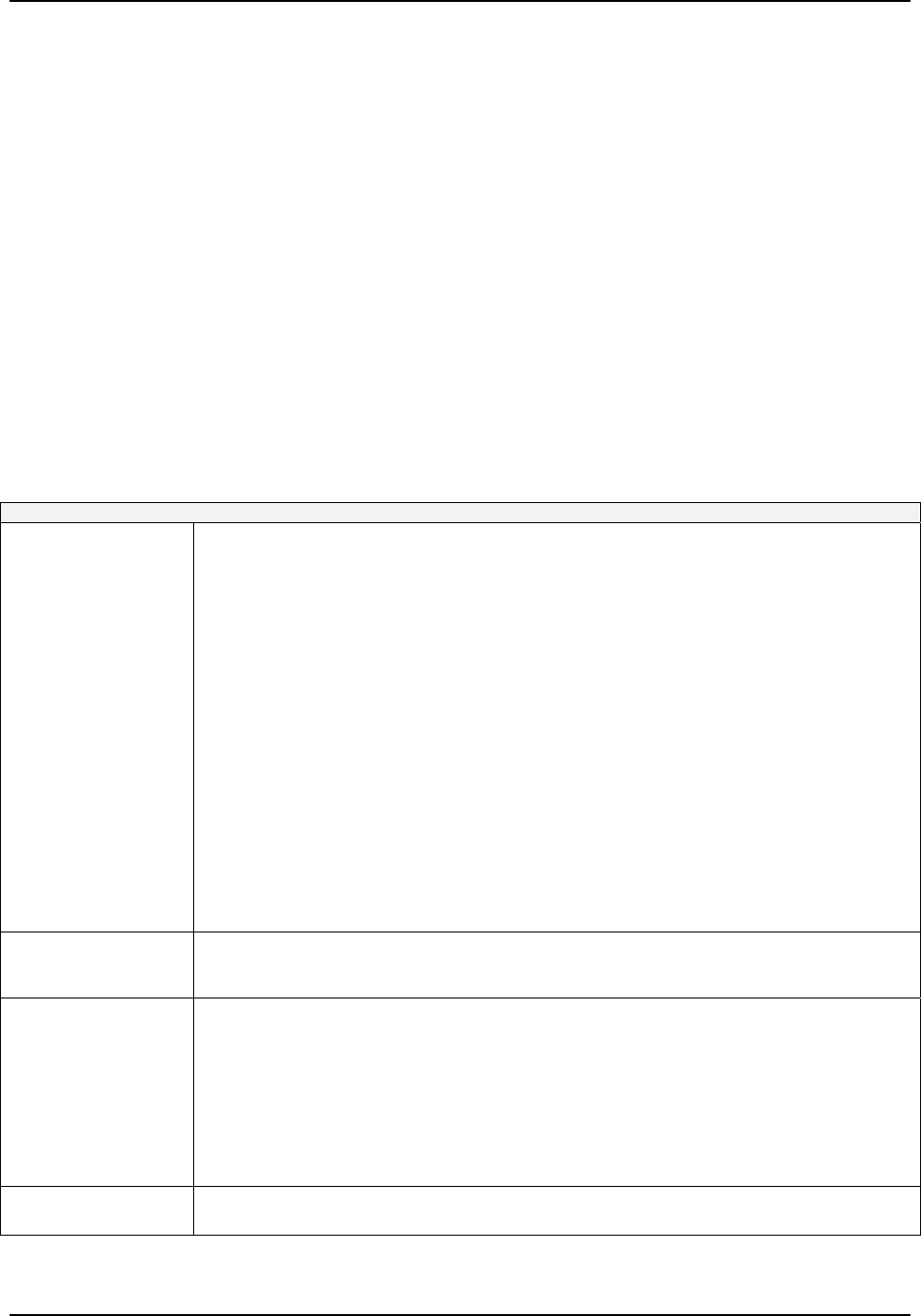
Installation
Pre-installation Information
If the controller has not been removed from its shipping carton, inspect the carton for
damage then remove the controller.
Inspect the unit for any obvious shipping damage and report any damage due to
transit to the carrier.
Make sure a bag containing mounting hardware is included in the carton with the
controller.
Check that the model number shown on the inside of the case agrees with what you
have ordered.
2.2 Condensed Specifications
Honeywell recommends that you review and adhere to the operating limits listed in Table
2-1 when you install your controller.
Table 2-1 Condensed Specifications
Specifications
Analog Inputs
Up to three Universal analog inputs. These can easily be configured to operate as 2
Universal and 2 High Level or as 1 Universal and 4 High Level inputs.
Accuracy:
± 0.10% of full scale typical (± 1 digit for display)
Can be field calibrated to ± 0.05% of full scale typical
16-bit resolution typical
Sampling Rate: All inputs are sampled six times per second
Temperature Stability: ± 0.0075% of Full Scale span / ˚C change—typical
Input Impedance:
0-20 and 4-20 Milliampere Inputs: 250 ohms
0-10 Volt and –1 to +1 Volt Input: 200K ohms
All Others: 10 megohms
Maximum Lead Wire Resistance:
Thermocouples: 50 ohms/leg
100 ohm, 200 ohm, 500 ohm and 1000 ohm RTD: 100 ohms/leg
100 ohm Low RTD: 10 ohms/leg
Slidewire Input for Position Proportional Control (Input 3 only):
100 ohm to 1000 ohm resistive slidewire types
Herculine
Models 10260 and 11280 Slidewire Emulation
Analog Input Signal
Failure Operation
Burnout Selections: Upscale, Downscale, Failsafe or None
Thermocouple Health: Good, Failing, Failure Imminent or Failed
Failsafe Output Level: Configurable 0-100% of Output range
Stray Rejection Common Mode
AC (50 or 60 Hz): 120 dB (with maximum source impedance of 100 ohms) or ± 1 LSB (least
significant bit) whichever is greater with line voltage applied.
DC: 120 dB (with maximum source impedance of 100 ohms) or a ±1 LSB whichever is
greater with 120 Vdc applied.
DC (to 1 KHz): 80 dB (with maximum source of impedance of 100 ohms) or ±1 LSB
whichever is greater with 50 Vac applied.
Normal Mode
AC (50 or 60 Hz): 60 dB (with 100 % span peak-to-peak maximum)
Digital Inputs (Four)
(Optional)
+30 Vdc source for external dry contacts or isolated solid-state contacts. Digital Inputs are
isolated from line power, earth ground, analog inputs and all outputs.
March 2012 UDC3500 Universal Digital Controller Product Manual 13
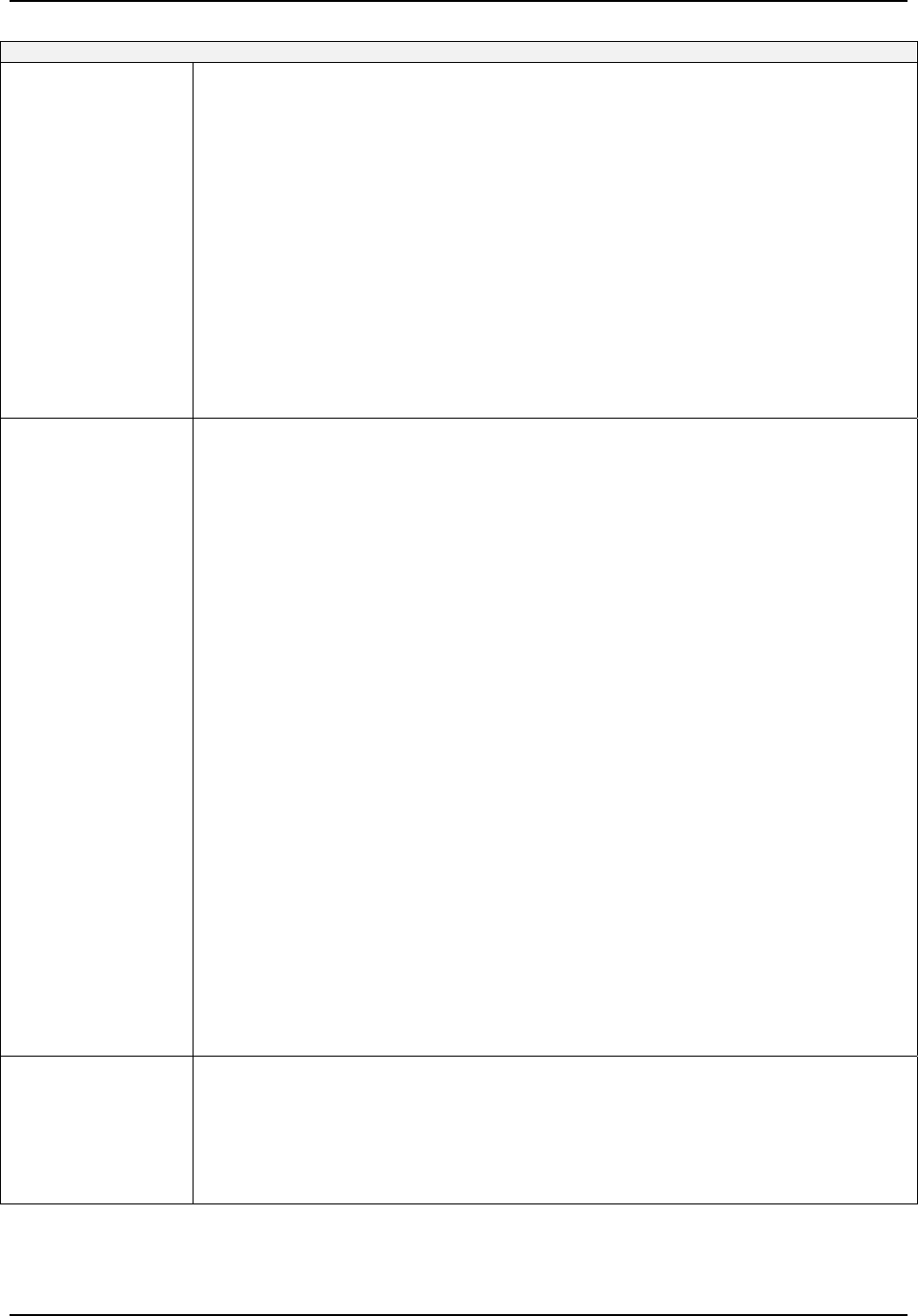
Installation
14 UDC3500 Universal Digital Controller Product Manual March 2012
Specifications
Current and Auxiliary
Outputs
Up to three Milliamp Outputs. These outputs provide a 0 to 21 mA current output into a
negative or positive grounded load or into a non-grounded load. Current outputs are isolated
from each other, line power, earth ground and all inputs. Outputs can easily be configured
via the keyboard to be 0 to 20 mA or 4 to 20 mA without field calibration and for either direct
or reverse action when used as a control output.
Any current output not being used as a control output can be used in an Auxiliary Output
mode. Auxiliary Outputs can be configured to represent any Analog Input, PV, Setpoint,
Deviation, or Control Output. The range of an Auxiliary Output can be scaled per the range
of the selected variable and can be set anywhere between 0 to 21 mA.
Resolution: 14 bits over 0 to 21 mA
Accuracy: 0.05% of full scale
Temperature Stability: 0.01% F.S./°C typical
Load Resistance: 0 to 1000 ohms
The First Current Output is a standard feature and is present on all instruments. The Second
Current Output is an option and is mutually exclusive with Ethernet Communications. The
Third Current Output is an option and is mutually exclusive with the other Output 2 Options
listed directly below.
Output 2 Options
Output 2 is a socket which may be populated with any one of the following output types:
Electromechanical Relay
SPDT contacts. Both Normally Open and Normally Closed contacts are brought out to the
rear terminals.
Resistive Load: 5 amps @ 120 Vac or 240 Vac or 30 Vdc
Inductive Load (cos
= 0.4): 3 amps @ 130 Vac or 250 Vac
Inductive Load (L/R = 7 milliseconds): 3.5 amps @ 30 Vdc
Motor: 1/6 H.P.
Dual Electromechanical Relays
Two SPST relays. One Normally Open contact for each relay is brought out to the rear
terminals. This option must be used as the Loop 1 output for On-Off Duplex, Time Duplex,
Three Position Step Control and Position Proportional Control applications. Instruments with
this option can have a total of five relays plus one or two current outputs.
Resistive Load: 2 amps @ 120 Vac, 240 Vac or 30 Vdc
Inductive Load (cos
= 0.4): 1 amp @ 130 Vac or 250 Vac
Inductive Load (L/R = 7 milliseconds): 1 amp @ 30 Vdc
Solid State Relay
SPST solid-state contact consisting of a triac N.O. output with zero-crossing detection.
Resistive Load: 1.0 amp @ 25°C ambient temperature and 120 or 240 Vac
0.5 amp @ 55°C ambient temperature and 120 or 240 Vac
Inductive Load: 50 VA @ 55°C ambient temperature and 120 or 240 Vac
Minimum Load: 20 milliamps
Open Collector Output
Transistor drive for powering an external relay. Isolated from earth ground and all other
circuits except the First Current Output. Internally powered @ 30 Vdc.
Note: Applying an external power supply to this output will damage the instrument.
Maximum Sink Current: 20 mA
Overload Protection: 100 mA
Third Current Output
See above.
Three Relay Board
(Optional)
Three SPDT contacts. Both Normally Open and Normally Closed contacts are brought out to
the rear terminals for each relay. These relays are used for Alarm outputs or for the output of
the second control loop. They may also be used as outputs for Logic Gate functions.
Resistive Load: 5 amps @ 120 Vac or 240 Vac or 30 Vdc
Inductive Load (cos
= 0.4): 3 amps @ 130 Vac or 250 Vac
Inductive Load (L/R = 7 milliseconds): 3.5 amps @ 30 Vdc
Motor: 1/6 H.P.
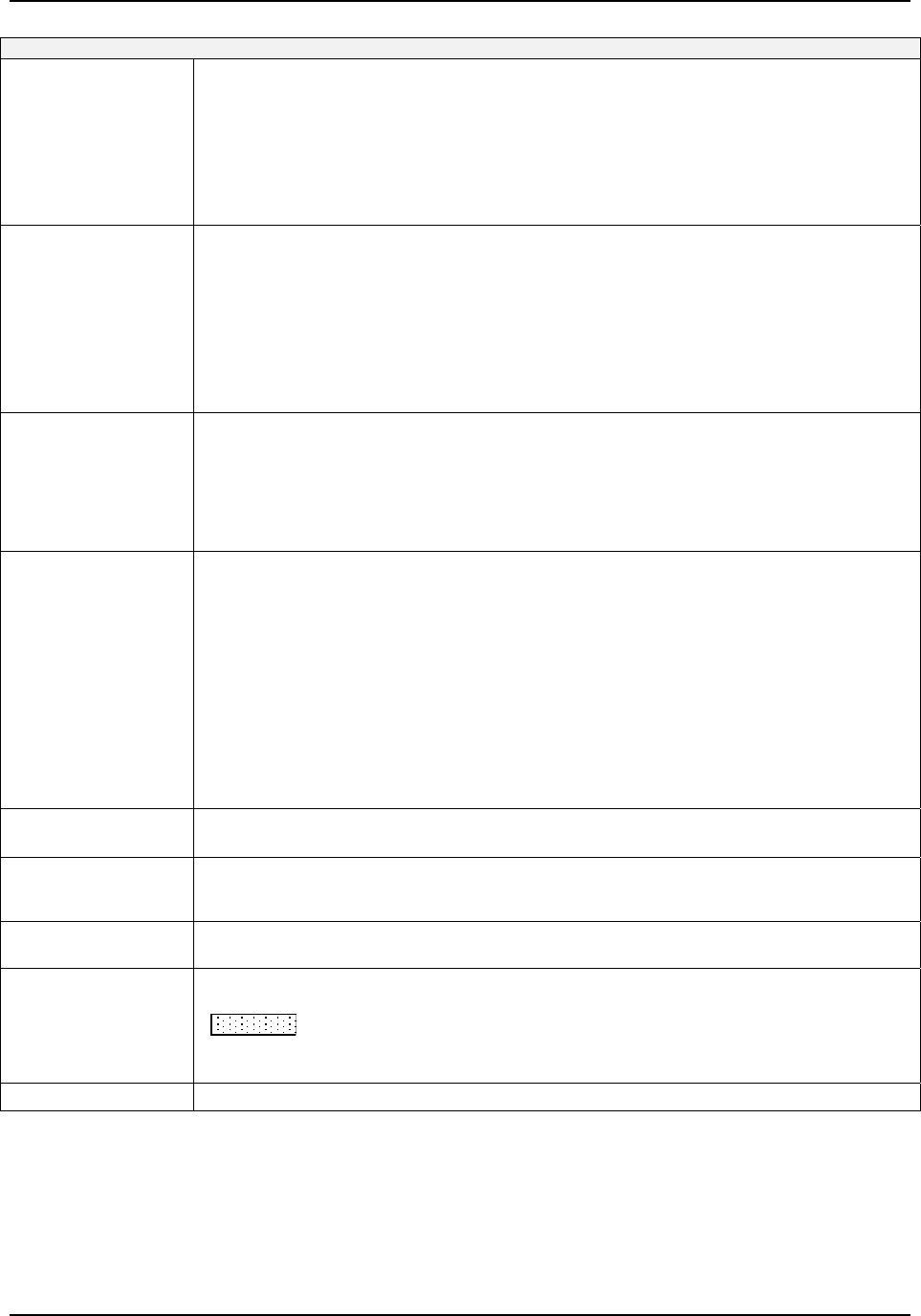
Installation
March 2012 UDC3500 Universal Digital Controller Product Manual 15
Specifications
Alarm Outputs
(Optional)
A maximum of four alarm relays are available, depending upon the type and quantity of
outputs used for control purposes. Each alarm may have one or two setpoints, each of which
can be independently set as high or low alarm. Setpoints can be on any Input, Process
Variable, Deviation, Manual Mode, Failsafe, PV Rate, RSP Mode, Communication Shed, or
Output. A single adjustable hysteresis of 0.0 to 100.0% is provided. The alarm can also be
set as an ON or OFF event at the beginning of a Setpoint Program Ramp or Soak segment.
Alarm status is accessible via any communications port and is shown on the display
annunciators.
Isolation (Functional)
AC Power: Electrically isolated from all other inputs and outputs and earth ground to
withstand a HIPOT potential of 1900 Vdc for 2 seconds per Annex K of EN61010-1.
Analog Inputs and Outputs: Are isolated from each other and all other circuits to withstand a
HIPOT potential of 850 Vdc for 2 seconds per Annex K of EN61010-1.
Digital Inputs and Digital Outputs: Electrically isolated from all other circuits to withstand a
HIPOT potential of 850 Vdc for 2 seconds per Annex K of EN61010-1.
Relay Contacts: With a working voltage of 115/230 Vac, these are electrically isolated from
all other circuits to withstand a HIPOT potential of 345 Vdc for 2 seconds per Annex K of
EN61010-1
RS422/485 Modbus
RTU
Communications
Interface (Optional)
Baud Rate: 4800, 9600,19,200 or 38,400 baud selectable
Data Format: Floating point or integer
Length of Link:
2000 ft (600 m) max. with Belden 9271 Twinax Cable and 120 ohm termination resistors
4000 ft. (1200 m) max. with Belden 8227 Twinax Cable and 100 ohm termination resistors
Link Characteristics: Two-wire (half-duplex), multi-drop Modbus RTU protocol, 15 drops
maximum or up to 31 drops for shorter link length.
Ethernet TCP/IP
Communications
Interface (Optional)
Type: 10Base-T
Length of Link: 330 ft. (100 m) maximum. Use Shielded twisted-pair, Category 5 (STP
CAT5) Ethernet cable.
Link Characteristics: Four-wire plus shield, single drop, five hops maximum
IP Address: IP Address is 10.0.0.2 as shipped from the Factory
Recommended network configuration: Use Switch rather than Hub in order to maximize
UDC Ethernet performance.
Configuration: Ethernet parameters are configured via the Process Instrument Explorer.
Email: The capability to send two different Emails is provided. These must be configured via
the Process Instrument Explorer. It is recommended that the Real Time Clock Option be
purchased for any instrument that needs to send Email.
Ethernet Communications is mutually exclusive with the Second Current Output.
RS-485 and Ethernet
Transaction rates
Host computer must allow a minimum of 20 milliseconds between Read transactions and a
minimum of 200 milliseconds between Write transactions.
Infrared
Communications
(Standard)
Type: Serial Infrared (SIR)
Length of Link: 3 ft. (1 m) maximum for IrDA 1.0 compliant devices
Baud Rate: 19,200 or 38,400 baud selectable
Power Consumption 24 VA maximum (90 to 250 Vac)
18 VA maximum (24 Vac/dc)
Power Inrush Current
10A maximum for 4 ms (under operating conditions), reducing to a maximum of 265 mA (90
to 250 Vac operation) or 900 mA (24 Vac/dc operation) after one second.
CAUTION
When applying power to more than one instrument, make sure that sufficient
power is supplied. Otherwise, the instruments may not start up normally due to voltage drop
from the inrush current.
Weight
3 lbs. (1.3 kg)
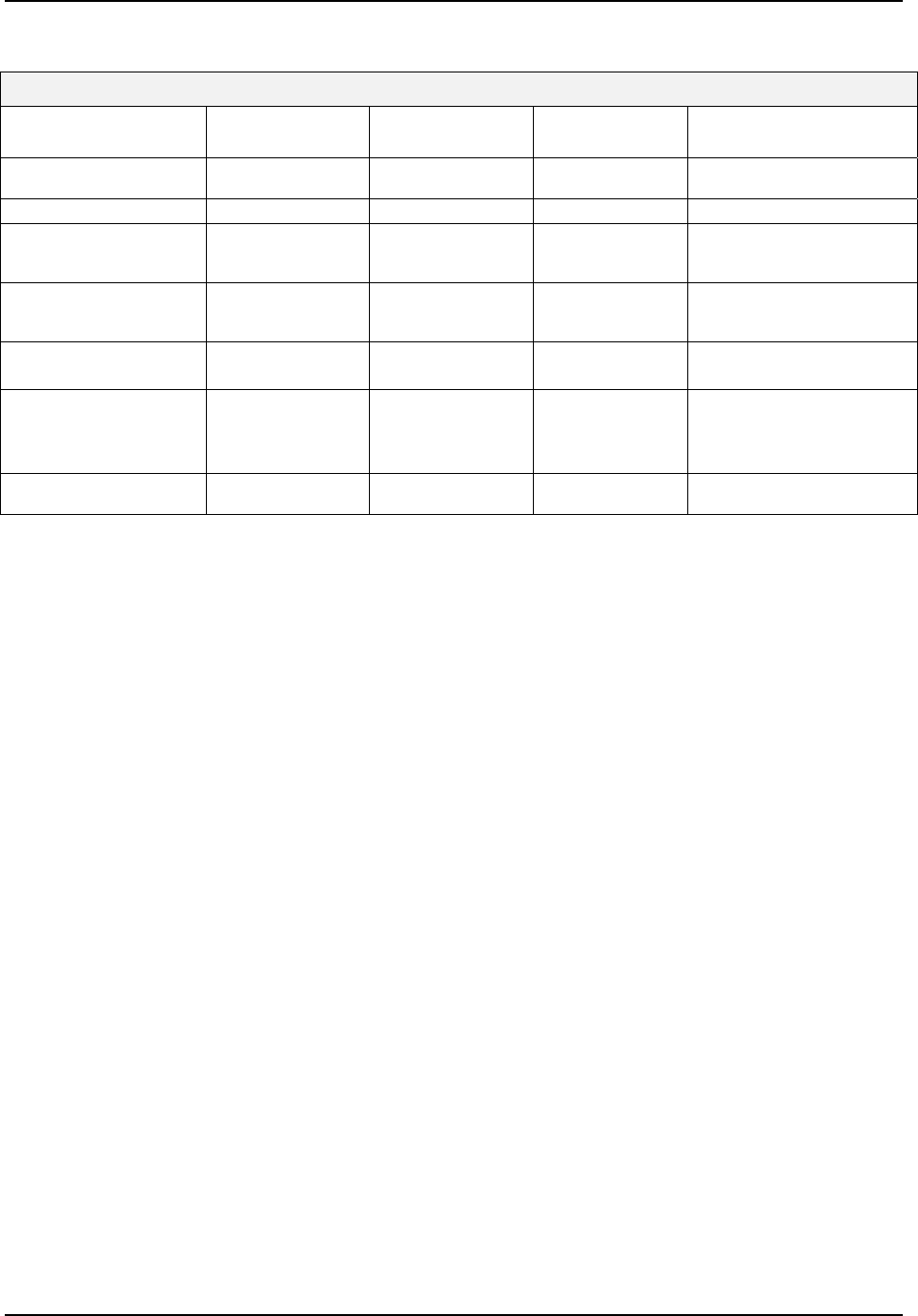
Installation
Environmental and Operating Conditions
Parameter Reference Rated Operative
Limits
Transportation and Storage
Ambient Temperature
25 ± 3 °C
77 ± 5 °F
15 to 55 °C
58 to 131 °F
0 to 55 °C
32 to 131 °F
–40 to 66 °C
–40 to 151 °F
Relative Humidity
10 to 55* 10 to 90* 5 to 90* 5 to 95*
Vibration
Frequency (Hz)
Acceleration (g)
0
0
0 to 70
0.4
0 to 200
0.6
0 to 200
0.5
Mechanical Shock
Acceleration (g)
Duration (ms))
0
0
1
30
5
30
20
30
Line Voltage (Vdc)
24 Vdc
+24 ± 1
22 to 27
20 to 30
- -
Line Voltage (Vac)
90 to 240 Vac
24 Vac
120 ± 1
240 ± 2
24 ± 1
90 to 240
20 to 27
90 to 250
20 to 27
- -
- -
- -
Frequency (Hz)
(For Vac)
50 ± 0.2
60 ± 0.2
49 to 51
59 to 61
48 to 52
58 to 62
- -
- -
* The maximum moisture rating only applies up to 40 °C (104 °F). For higher temperatures, the RH specification is derated to
maintain constant moisture content.
16 UDC3500 Universal Digital Controller Product Manual March 2012
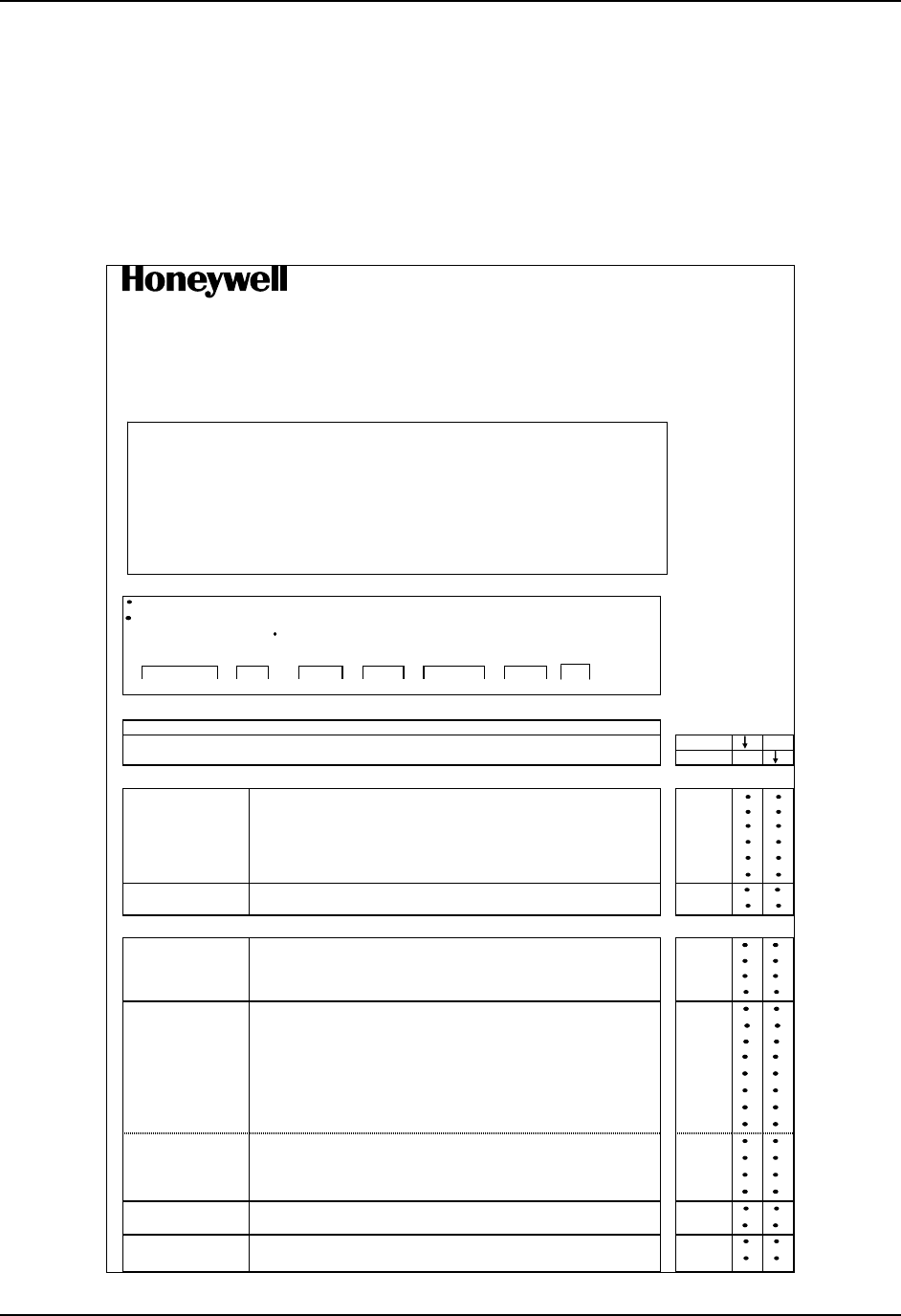
Installation
2.3 Model Number Interpretation
Introduction
Write your controller’s model number in the spaces provided below and circle the corresponding
items in each table. This information will also be useful when you wire your controller.
Figure 2-1 Model Number Interpretation
UDC3500 Universal Di
g
ital Controller
Model Selection Guide
Instructions
Select the desired key number. The arrow to the right marks the selection available.
Make the desired selections from Tables I through VI using the column below the
proper arrow. A dot ( ) denotes availability.
Key Number
-- - -
_
_ _ _
_
- _
KEY NUMBER - UDC3500 Single & Dual Loop Controller
Selection
Digital Controller for use with 90 to 250Vac Power + Current Output #1 DC3500
Digital Controller for use with 24Vac/dc Power + Current Output #1 DC3501
TABLE I - Specify optional Output and/or Alarms
None
TABLE II - Communications and Software Selections
0 _ _ _
1 _ _ _
2 _ _ _
3 _ _ _
_ 0 _ _
_ A _ _
_ B _ _
_ C _ _
_ D _ _
_ E _ _
_ F _ _
_ G _ _
Enhanced SPP (4 Programs, 20 Segments each)
_ H _ _
Enhanced SPP + Math (4 Programs, 20 Segments each)
_ J _ _
Enhanced SPP + HealthWatch (4 Programs, 20 Segments each)
_ K _ _
Enhanced SPP + Math + HealthWatch (4 Programs, 20 Segments each)
_ L _ _
_ _ 0 _
_ _2 _
_ _ _ 0
_ _ _ C
Enhanced
Communications
Loops of Control
Single Loop
Real-Time Clock
HealthWatch
Math Option
Set Point Programming (1 Program, 20 Segments)
Software Selections
2 Loops + Internal Cascade
None
Real-Time Clock (RTC)
IIIII
_
_ _
_
_
VI
Output #2
Solid State 1 Amp (Zero-Crossing Type)
VIIV
_
_
_ 0
T _
R _
Electro Mechanical Relay (5 Amp Form C)
Description
0 _
Relay Outputs #3, #4
and #5
_
_ _ _ _ _
Dual 2 Amp Relays (Form A) (Heat/Cool, Pos Prop, TPSC, Relays 1 & 2)
Current Output (4 to 20mA, 0 to 20 mA) (Current Output #3)
C _
E _
_
_ _
_
Availability
None
Three (3) E-M Relay (5 Amp Form C)
Standard Functions, Includes Accutune
Math + HealthWatch
Set Point Programming Plus Math (1 Program, 20 Segments)
Current Output #2 + (4) Digital Inputs + Modbus RS-485
10 Base-T Ethernet (Modbus RTU) + (4) Digital Inputs
None
Current Output #2 + (4) Digital Inputs
A _
Open Collector transistor output
_ E
SPP + Math + HealthWatch (1 Program, 20 Segments)
SPP + HealthWatch (1 Program, 20 Segments)
New! Easy To Use UDC3500 1/4 DIN Single & Dual Loop Controller
The UDC3500 Controller packs new powerful features while retaining all the simplicity and flexibility of
the industry standard UDC3300 Controller. Many new features include:
- NEMA 4X, IP66 Front Face Protection
- Built-in infrared communications port for configuring with a Pocket PC or Laptop
- PC Based Configuration Tools
- Ethernet Communications
- 20 Segment Set Point Programming
- One or Two Loops of Control
- Real Time Clock
March 2012 UDC3500 Universal Digital Controller Product Manual 17
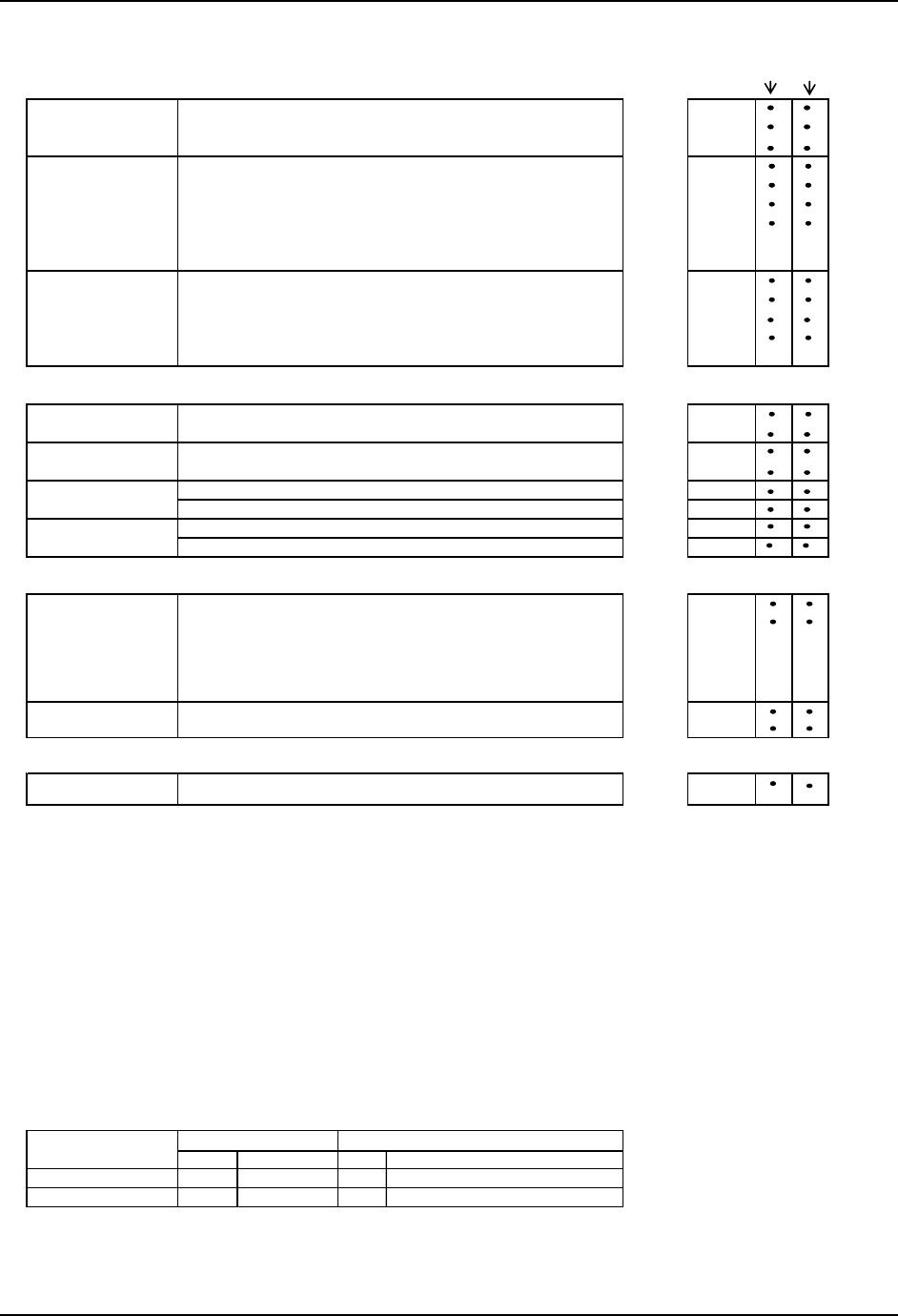
Installation
Availability
DC 3500 3501
TABLE III - Input types can be changed in the field
Selection
1 _ _
2 _ _
3 _ _
_ 0 _
_ 1 _
_ 2 _
Two HLAI instead of 1 LLAI
_ 3 _
_ 5 _
bb
_ 6 _
bb
_ _0
_ _1
_ _2
Two HLAI instead of 1 LLAI _ _3
Slidewire Input for Position Prop. (Requires Dual Relay Output)
_ _4
aa
TABLE IV - Options
0 _ _ _ _
1 _ _ _ _
_ 0 _ _ _
_ T _ _ _
_ _ 0 _ _
_ _ 1 _ _
_ _ _ 0 _
_ _ _ _ 0
TABLE V - Product Manuals
Product Information on CD - (English) 0 _
English Manual (Hard Copy) E _
French Manual (Hard Copy) F _
German Manual (Hard Copy) G _
Italian Manual (Hard Copy) I _
Spanish Manual (Hard Copy)
S _
_ 0
_ C
TABLE VI
None 0
Note 1:
The specific range and input actuation to be calibrated to 0.05% must be specified for each input.
Form F3399 Supplemental Data must be completed. This form can be downloaded from the Honeywell SalesNet site
or Global Technical Services site: >http://content.honeywell.com/ipc/faq/<
Only one range type can be calibrated for each input. All other universal ranges will remain at 0.10%.
ORDERING INSTRUCTIONS: These are provided as guidance for ordering such as those listed
1. Part numbers are provided to facilitate Distributor Stock.
2. Orders may be placed either by model selection or by part number.
3. Part numbers are shown within the model selection tables to assist with compatibility information.
4. Orders placed by model selection are systematically protected against incompatibility.
5. Compatibility assessment is the responsibility of the purchaser for orders placed by part number.
6. Items labeled as N/A are not available via the stocking program and must be ordered by model selection.
RESTRICTIONS
Table
Manuals
Certificate
TC, RTD, mV, 0-5V, 1-5V, 0-20mA, 4-20mA
Tags
None
Stainless Steel Customer ID Tag - 3 lines w/22 characters/line
None
None
None
Input 3
Selection
Available Only With Not Available With
TC, RTD, mV, 0-5V, 1-5V, 0-20mA, 4-20mA, -1-1V, 0-10V
None
None
1 _ _
Custom Calibration (0.05%) For one Range Type Only (
Note 1)
Selection Table
TC, RTD, mV, 0-5V, 1-5V, 0-20mA, 4-20mA, -1-1V, 0-10V
Relative Humidity (Requires Input 2)
TC, RTD, mV, 0-5V, 1-5V, 0-20mA, 4-20mA
None
Certificate of Conformance (F3391)
TC, RTD, mV, 0-5V, 1-5V
Future Options
Special Options
TC, RTD, mV, 0-5V, 1-5V, 0-20mA, 4-20mA
TC, RTD, mV, 0-5V, 1-5V, 0-20mA, 4-20mA, -1-1V, 0-10V
a
I
R _
b
Input 1
Input 2
Carbon, Oxygen or Dewpoint (Requires Input 2)
III
Approvals
CE (Standard)
CE, UL and CSA
Restriction Letters
18 UDC3500 Universal Digital Controller Product Manual March 2012
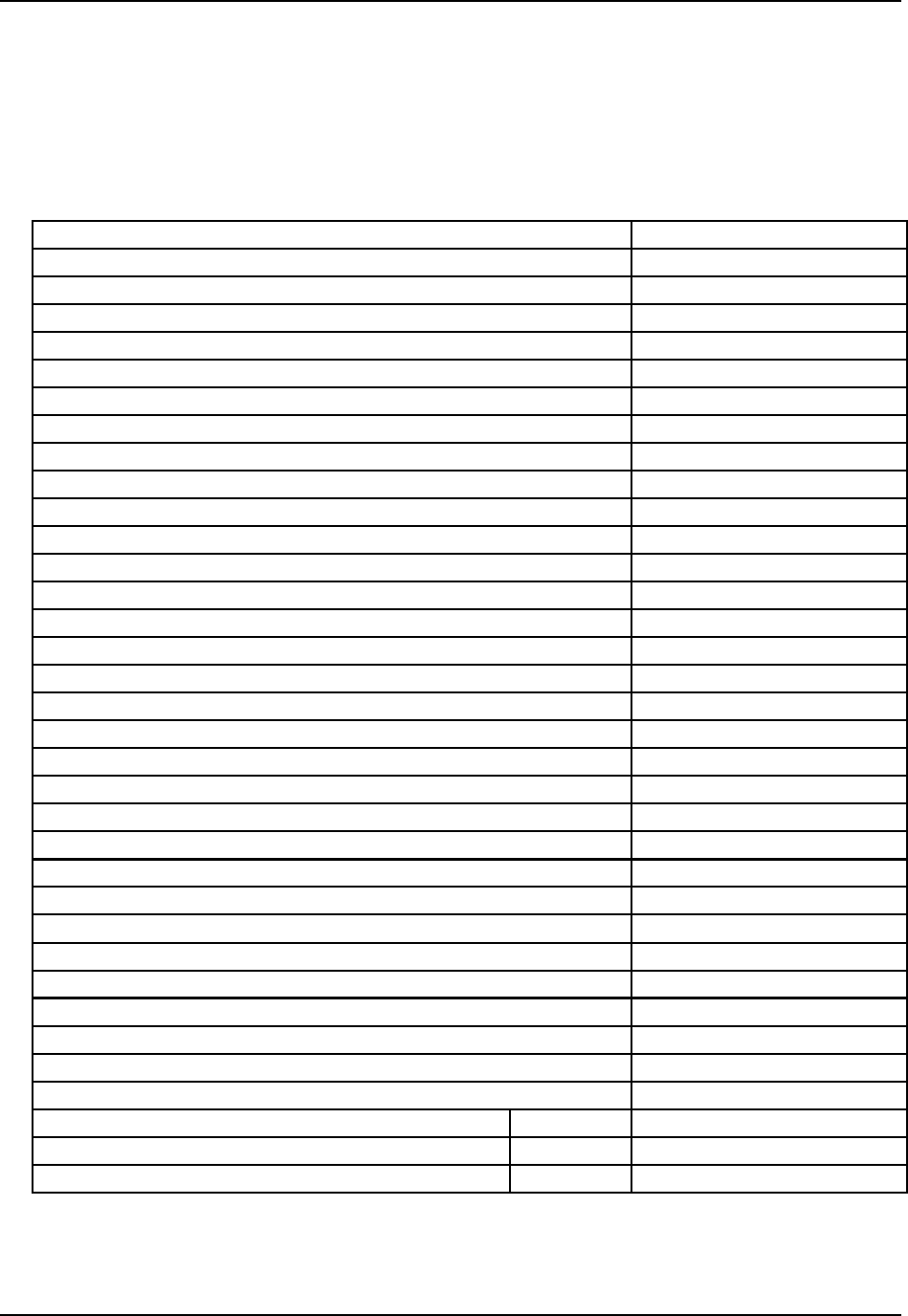
Installation
UDC3500
Supplemental
Universal Digital Controller
Accessories & Kits
Description Part Number
Bezel Assembly and Bezel Gasket 51453143-503
Display/Keyboard (with IR) 51452845-501
Power/Output PWA with Current Out #1 and E-M Relay (90-264 Vac) 51452831-501
Power/Output PWA with Current Out #1 and E-M Relay (24 Vac/dc) 50006376-501
Optional Analog Input PWA 51452825-501
2nd Current Output/Digital Inputs/RS-422/485 Communications PWA 51452837-502
Digital Inputs/Ethernet Communications PWA 51452840-501
MCU/Inputs PWA 51452828-502
Electro-Mechanical Relay 30755306-501
Open Collector Output PWA 30756679-501
Solid State Relay 30756725-501
3rd Current Output PWA 51452834-501
Dual Electromechanical Relay PWA 51452807-501
Optional Relay PWA (Relays 3, 4 & 5) 51452843-501
Ethernet Cable Jack Assembly (DONGLE) 50002382-501
Ethernet Adaptor Kit 50010425-501
Case Assembly (including Mounting Kit with four brackets) 51452846-501
Varistor (MOV) 120 Vac 30732481-501
Varistor (MOV) 240 Vac 30732481-502
Thermocouple Input Cold Junction Resistor Assembly 51453364-501
4-20 mA Input Resistor Assembly (250 ohm) 30731996-506
0-10 Volt Input Resistor Assembly (100K pair) 30754465-501
Mounting Kits (12 Brackets) 51452763-501
DIN Adaptor Kit 30755223-003
Process Instrument Explorer Software 50001619-001
Math Software Upgrade 50004636-501
SPP Software Upgrade 50004636-502
Healthwatch 50004636-503
Two Loops/Cascade 50004636-504
Battery Replacement Kit 51453140-501
Panel Bracket Kit 50004821-501
Product Information on CD All Languages
Quick Start Manual (2 page) Standard English
Product Manual English 51-52-25-120
51453375-501
51-52-25-130
March 2012 UDC3500 Universal Digital Controller Product Manual 19
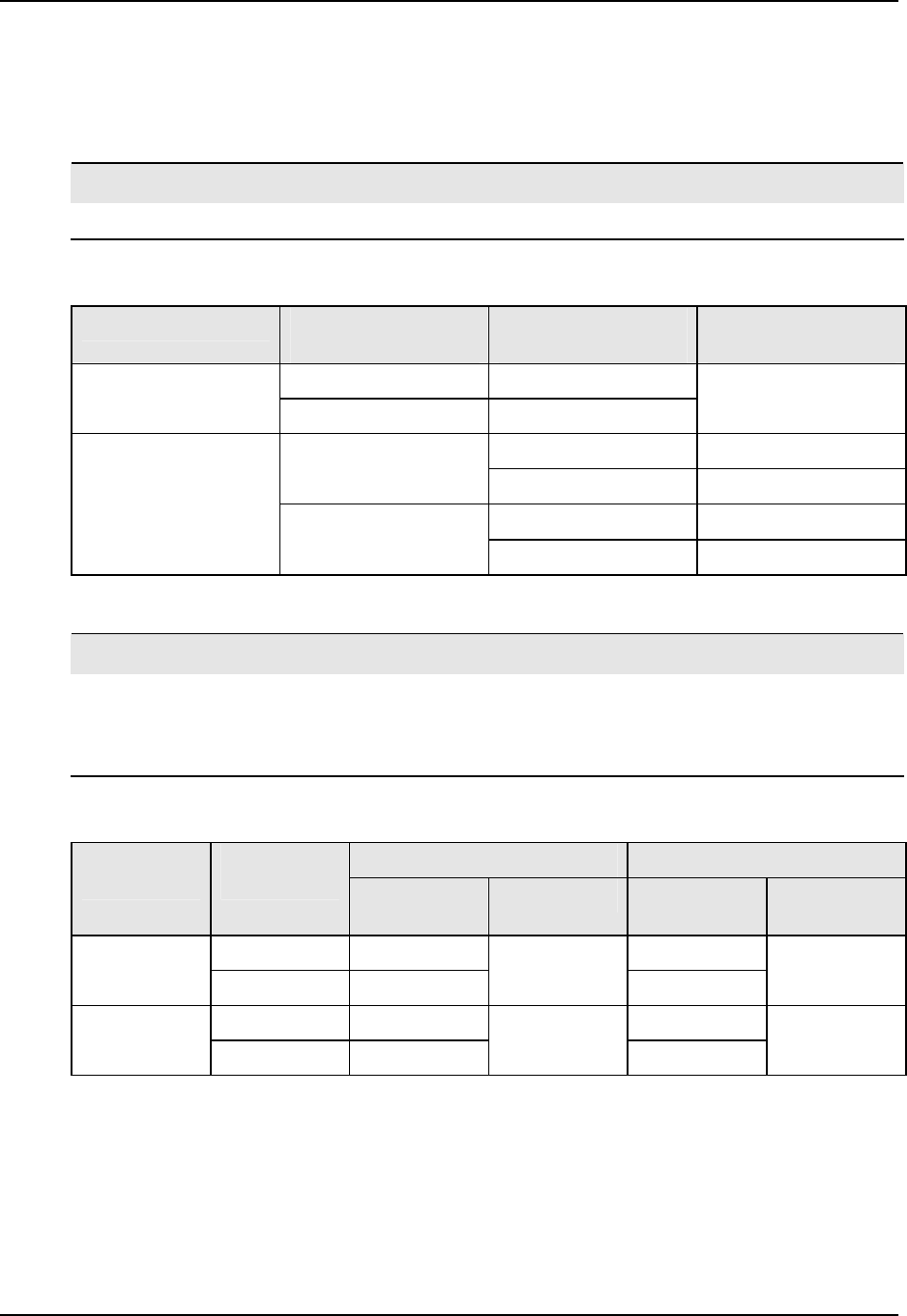
Installation
2.4 Control and Alarm Relay Contact Information
Control Relays
ATTENTION
Control relays operate in the standard control mode (that is, energized when output state is on).
Table 2-2 Control Relay Contact Information
Unit Power Control Relay
Wiring
Control Relay
Contact
Output #1 or #2
Indicator Status
N.O. Open
Off
N.C. Closed
Off
Open
Off
N.O.
Closed
On
Closed
Off
On
N.C.
Open
On
Alarm Relays
ATTENTION
Alarm relays are designed to operate in a failsafe mode (that is, de-energized during alarm
sate). This results in alarm actuation when power is OFF or when initially applied, until the unit
completes self-diagnostics. If power is lost to the unit, the alarms will de-energize and thus the
alarm contacts will close.
Table 2-3 Alarm Relay Contact Information
Variable NOT in Alarm State Variable in Alarm State Unit
Power
Alarm Relay
Wiring
Relay
Contact
Indicators Relay
Contact
Indicators
N.O. Open Open
Off
N.C. Closed
Off
Closed
Off
N.O. Closed Open
On
N.C. Open
Off
Closed
On
20 UDC3500 Universal Digital Controller Product Manual March 2012
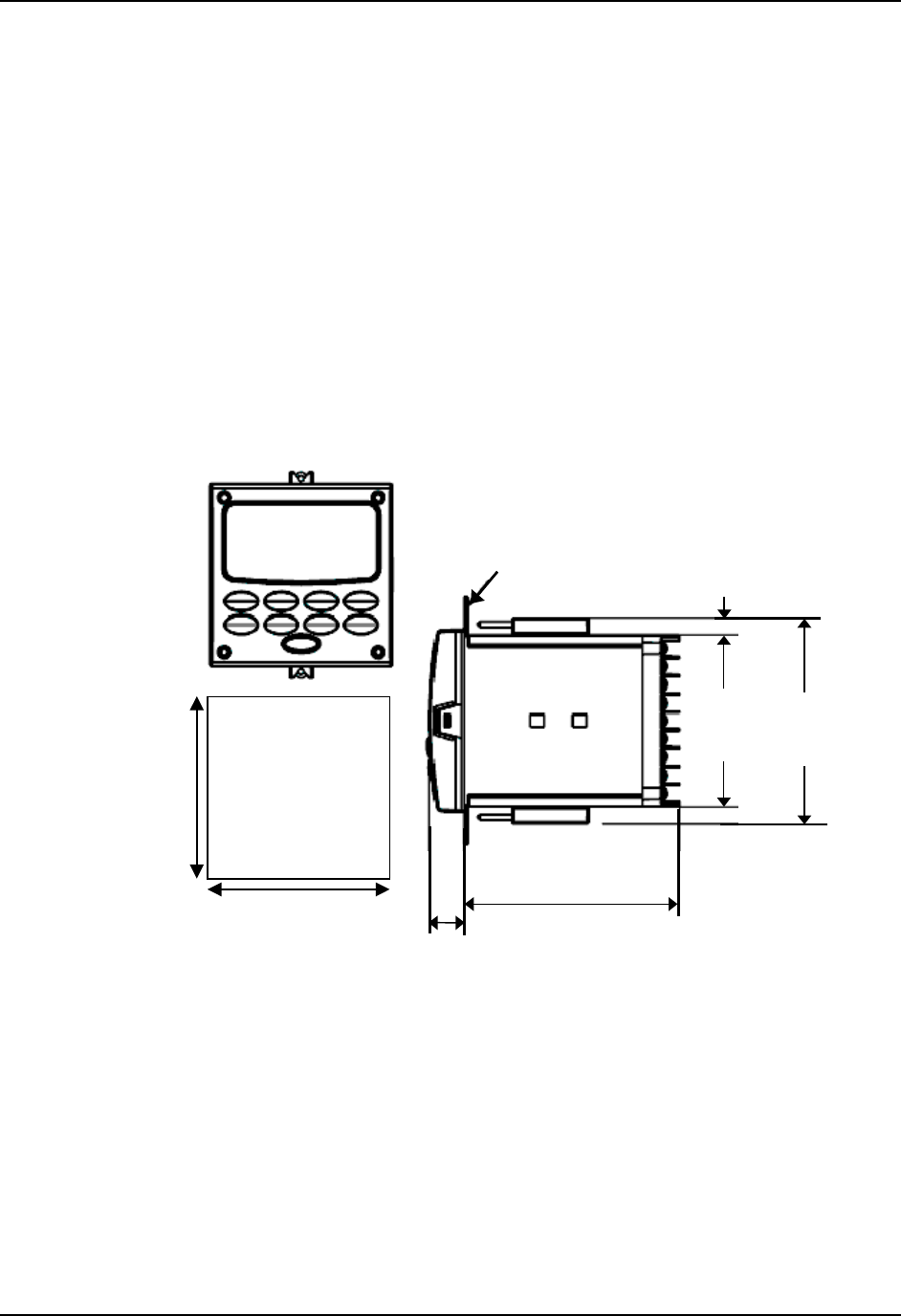
Installation
2.5 Mounting
Physical Considerations
The controller can be mounted on either a vertical or tilted panel using the mounting kit
supplied. Adequate access space must be available at the back of the panel for installation
and servicing activities.
Overall dimensions and panel cutout requirements for mounting the controller are
shown in Figure 2-2.
The controller’s mounting enclosure must be grounded according to CSA standard
C22.2 No. 0.4 or Factory Mutual Class No. 3820 paragraph 6.1.5.
The front panel is moisture rated NEMA3 and IP55 rated and can be easily upgraded
to NEMA4X and IP66. See Figure 2-3 and Table 2-4 Mounting Procedure.
Overall Dimensions
Max. panel thickness
19,1
0.75
Panel
Cutout
92,0 + 0,8
- 0,00
3.62 + 0.03
- 0.00
92,0 + 0,8
- 0,00
3.62 + 0.03
- 0.00
mm
inches
17,9
0.70
148,0
5.81
90,6
3.57
108,6
4.28
9,0
0.35
Figure 2-2 Mounting Dimensions (not to scale)
Mounting Notes
Before mounting the controller, refer to the nameplate on the outside of the case and
make a note of the model number. It will help later when selecting the proper wiring
configuration.
March 2012 UDC3500 Universal Digital Controller Product Manual 21
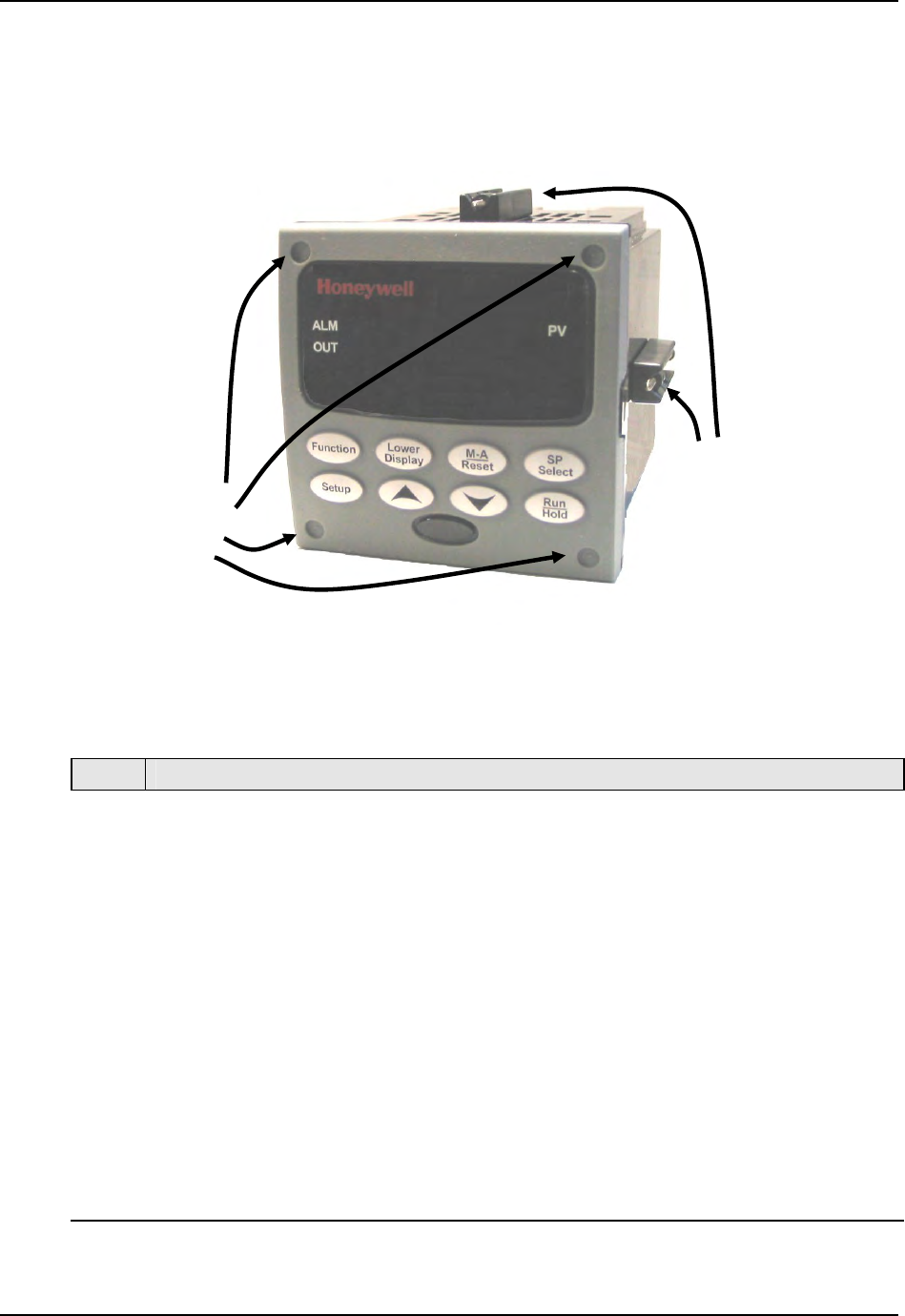
Installation
Mounting Method
Before mounting the controller, refer to the nameplate on the outside of the case and
make a note of the model number. It will help later when selecting the proper wiring
configuration.
Attach screws and
washers here for
water protection
Mounting clips
Figure 2-3 Mounting Methods
Mounting Procedure
Table 2-4 Mounting Procedure
Step Action
1
Mark and cut out the controller hole in the panel according to the dimension
information in Figure 2-2.
2
Orient the case properly and slide it through the panel hole from the front.
3
Remove the mounting kit from the shipping container and install the kit as follows:
For normal installation (NEMA 3/IP55) two mounting clips are required. Insert
the prongs of the clips into the two holes in the top and bottom center of the case
For water-protected installation (NEMA 4/IP66) four mounting clips are
required. There are two options of where to install the mounting clips:
1) Insert the prongs of the clips into the two holes on the left and right side of the
top and bottom of the case or
2) on the center on each of the four sides.
Tighten screws to 2 lb-inch (22 Ncm) to secure the case against the panel.
CAUTION: Over tightening will cause distortion and the unit may not seal properly.
4
For water-protected installation (NEMA 4/IP66), install four screws with washers into
the four recessed areas in the corners of the front bezel (Figure 2-3). Push the point of
the screw through the center piercing the elastomeric material and then tighten screws
to 5 lb-in (56 Ncm).
22 UDC3500 Universal Digital Controller Product Manual March 2012
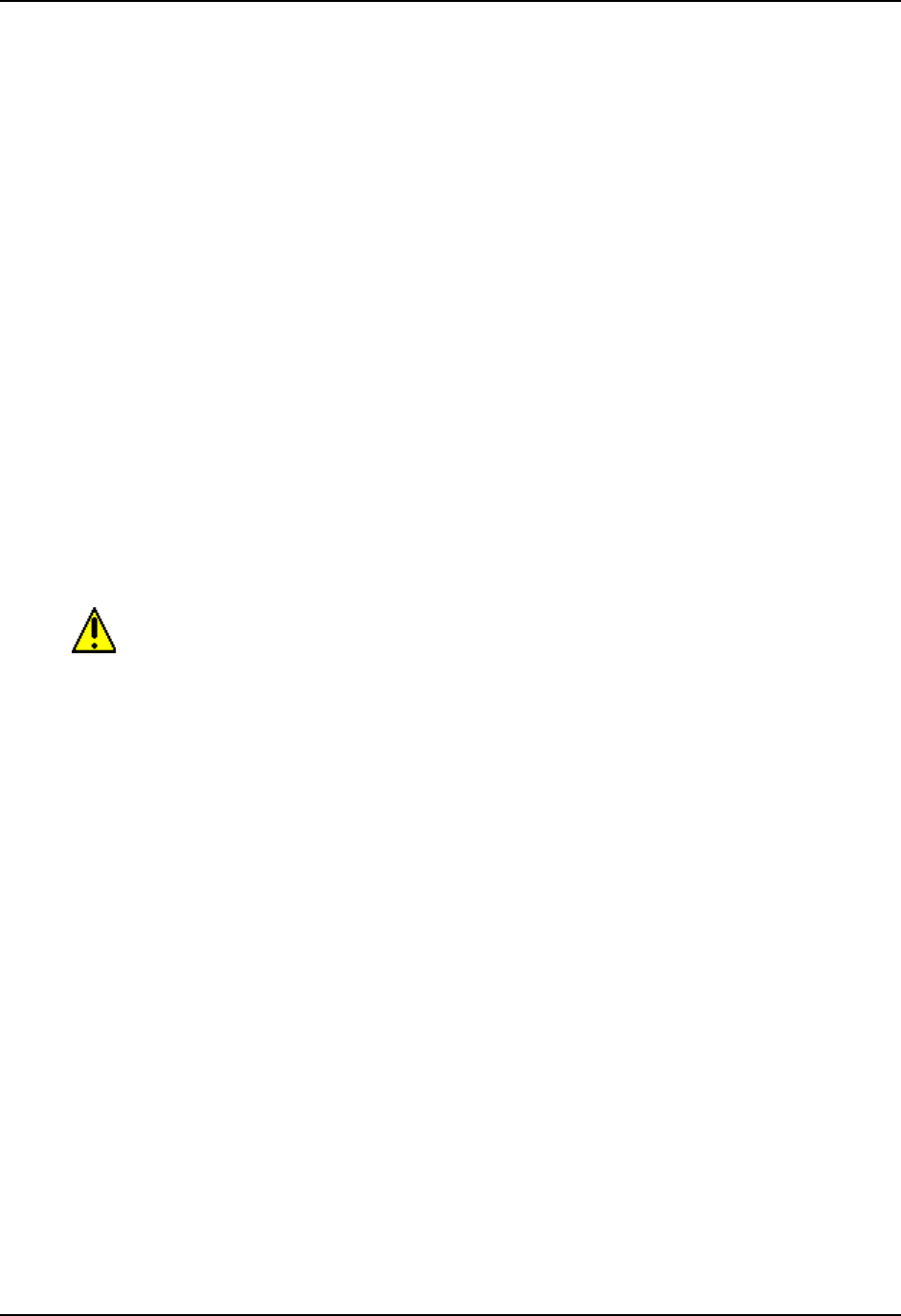
Installation
2.6 Wiring
2.6.1 Electrical Considerations
Line voltage wiring
This controller is considered “rack and panel mounted equipment” per EN61010-1,
Safety Requirements for Electrical Equipment for Measurement, Control, and Laboratory
Use, Part 1: General Requirements. Conformity with 72/23/EEC, the Low Voltage
Directive requires the user to provide adequate protection against a shock hazard. The
user shall install this controller in an enclosure that limits OPERATOR access to the rear
terminals.
Mains Power Supply
This equipment is suitable for connection to 90 to 250 Vac or to 24 Vac/dc 50/60 Hz,
power supply mains. It is the user’s responsibility to provide a switch and non-time delay
(North America), quick-acting, high breaking capacity, Type F (Europe), 1/2A, 250V
fuse(s), or circuit breaker for 90-250 Vac applications; or 2 A, 125 V fuse or circuit
breaker for 24 Vac/dc applications, as part of the installation. The switch or circuit
breaker shall be located in close proximity to the controller, within easy reach of the
OPERATOR. The switch or circuit breaker shall be marked as the disconnecting device
for the controller.
Applying 90-250 Vac to an instrument rated for 24 Vac/dc will severely
damage the instrument and is a fire and smoke hazard.
When applying power to multiple instruments, make certain that sufficient current is
supplied. Otherwise, the instruments may not start up normally due to the voltage drop
caused by the in-rush current.
Controller Grounding
PROTECTIVE BONDING (grounding) of this controller and the enclosure in which it is
installed shall be in accordance with National and Local electrical codes. To minimize
electrical noise and transients that may adversely affect the system, supplementary
bonding of the controller enclosure to a local ground, using a No. 12 (4 mm
2
) copper
conductor, is recommended.
Control/Alarm Circuit Wiring
The insulation of wires connected to the Control/Alarm terminals shall be rated for the
highest voltage involved. Extra Low Voltage (ELV) wiring (input, current output, and
low voltage Control/Alarm circuits) shall be separated from HAZARDOUS LIVE (>30
Vac, 42.4 Vpeak, or 60 Vdc) wiring per Permissible Wiring Bundling, Table 2-5.
Electrical Noise Precautions
Electrical noise is composed of unabated electrical signals, which produce undesirable
effects in measurements and control circuits.
March 2012 UDC3500 Universal Digital Controller Product Manual 23
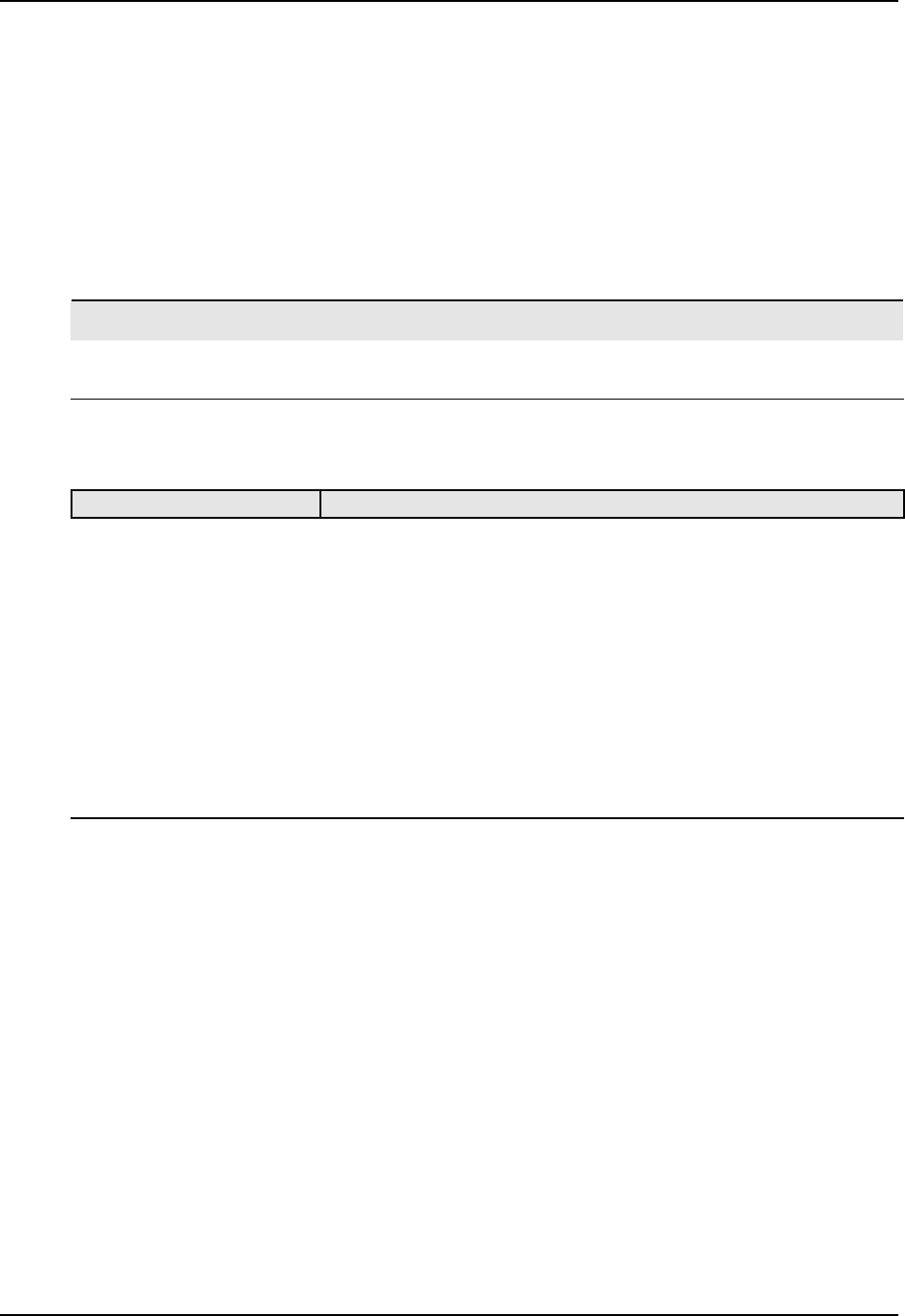
Installation
Digital equipment is especially sensitive to the effects of electrical noise. Your controller
has built-in circuits to reduce the effect of electrical noise from various sources. If there
is a need to further reduce these effects:
Separate External Wiring—Separate connecting wires into bundles
(See Permissible Wiring Bundling - Table 2-5) and route the individual bundles
through separate conduit metal trays.
Use Suppression Devices—For additional noise protection, you may want to add
suppression devices at the external source. Appropriate suppression devices are
commercially available.
ATTENTION
For additional noise information, refer to document number 51-52-05-01, How to Apply Digital
Instrumentation in Severe Electrical Noise Environments.
Permissible Wiring Bundling
Table 2-5 Permissible Wiring Bundling
Bundle No. Wire Functions
1
Line power wiring
Earth ground wiring
Line voltage control relay output wiring
Line voltage alarm wiring
2 Analog signal wire, such as:
Input signal wire (thermocouple, 4 to 20 mA, etc.)
4-20 mA output signal wiring
Digital input signals
3
Low voltage alarm relay output wiring
Low voltage wiring to solid state type control circuits
Low voltage wiring to open collector type control circuits
24 UDC3500 Universal Digital Controller Product Manual March 2012
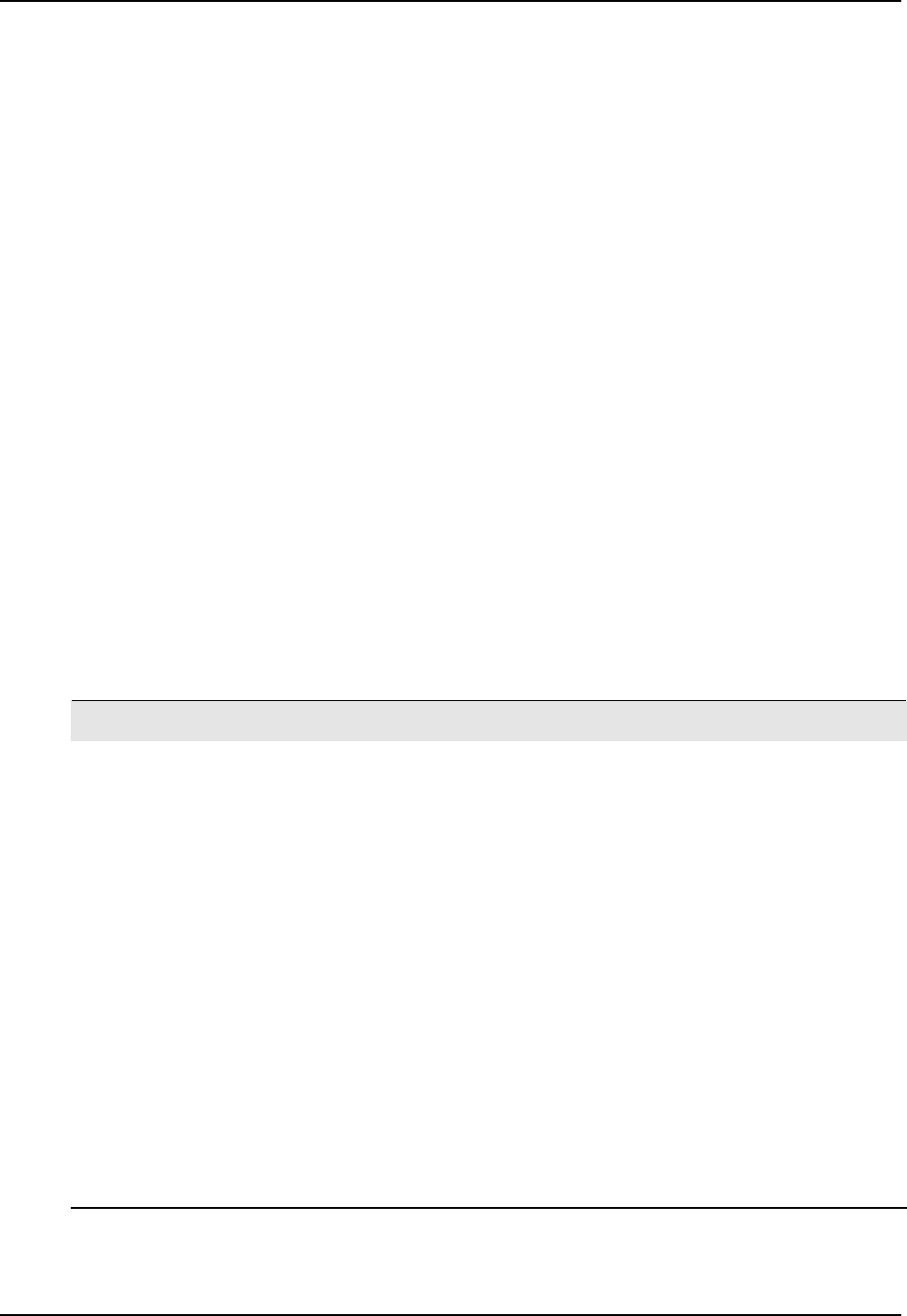
Installation
2.7 Wiring Diagrams
Identify Your Wiring Requirements
To determine the appropriate diagrams for wiring your controller, refer to the model
number interpretation in this section. The model number of the controller is on the
outside of the case.
Output Functionality and Restrictions
Table 2-6 and Table 2-7 show the control functionality and number of alarms that are
available based upon the installed outputs quantity and type. First, use the left-most
column to find the Control Output Algorithm desired for your instrument. Then use the
second column to find the Output 2 Option selection installed in your instrument. The
rest of the columns will then show how the instrument delivers your desired Output
functionality and the quantity of alarms available.
In Table 2-6, “HEAT” is used as meaning Loop 1 Control Output #1 and “COOL” is
used as meaning Loop 1 Control Output #2. When Position Proportional or Three
Position Step Control (TPSC) is configured, then “HEAT” means OPEN while “COOL”
means CLOSE.
In Table 2-7, “Loop 2 HEAT” is used as meaning Loop 2 Control Output #1 and “Loop 2
COOL” is used as meaning Loop 2 Control Output #2.
See Figure 2-4 Composite Wiring Diagram, for information on where the customer
terminals are for all of these outputs and alarms.
ATTENTION
The selection for Loop 1 Output takes precedence over the selection for Loop 2 Output.
For example, if you select the Loop 1 Output Algorithm as Current Duplex 50%, then
you cannot have Current Duplex 50% as the Output Algorithm for Loop 2.
The Output 2 option shown in these tables as “Single Relay” can be any of the
following selections: Electro-Mechanical Relay, Solid-State Relay or Open Collector
Output.
If the controller is configured to use the same relay for more than one function, then the
following priority is used to determine how the relay functions: Control Outputs take
precedence over Alarms, which in turn take precedence over Time/Events, which in turn
take precedence over Logic Gate Outputs.
For example, if you select the Loop 2 Output Algorithm as Time Simplex (which uses
Relay 3), enable Alarm 3 (which also uses Relay 3) and configure a Logic Gate to use
Relay 3, then the instrument will use Relay #3 to perform the Time Simplex output and
ignore the Alarm and Logic Gate functions.
March 2012 UDC3500 Universal Digital Controller Product Manual 25
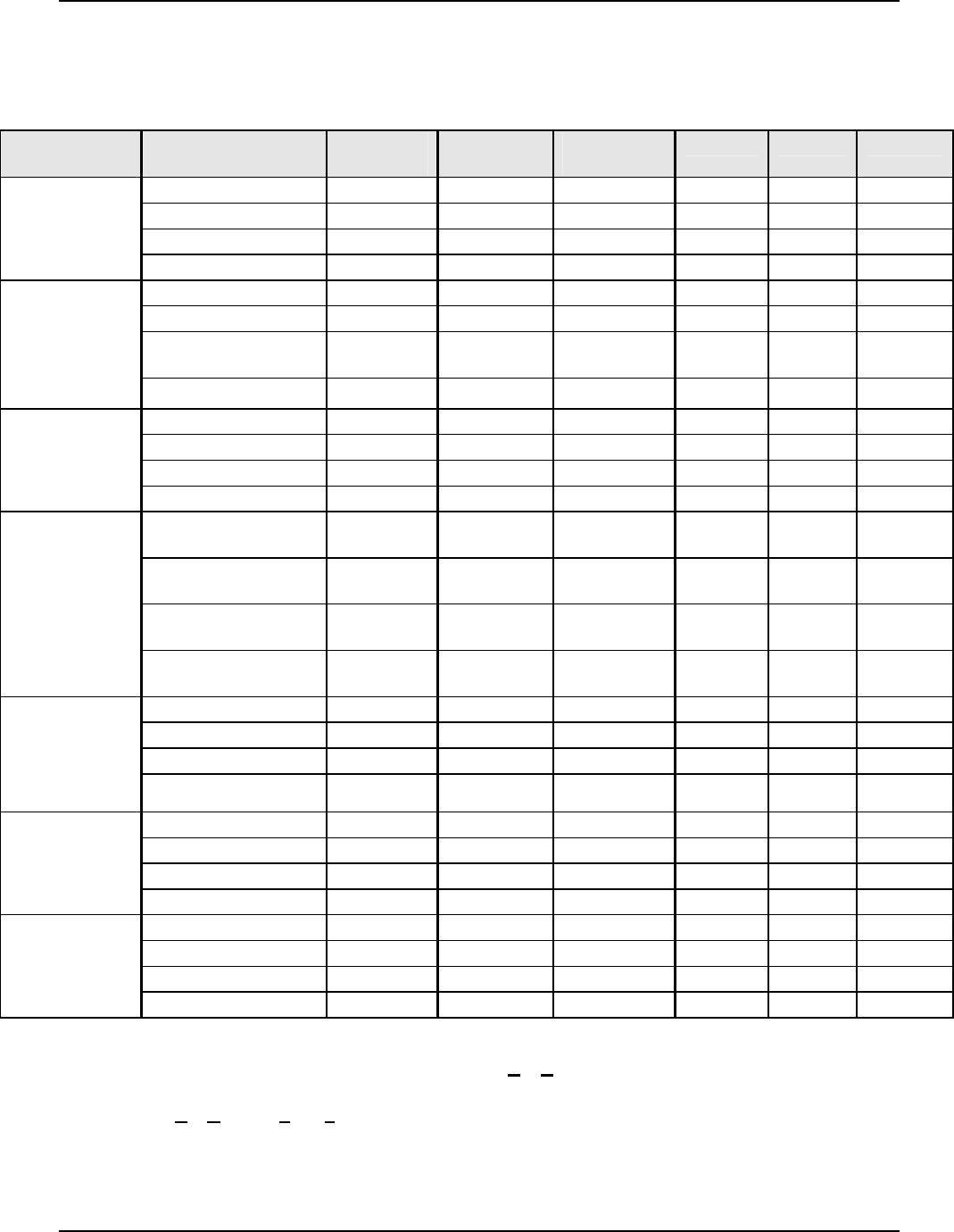
Installation
Table 2-6 Single or Cascade Loop Controller – Loop 1 Output Functionality
and Restrictions
Output Alg.
Selection
Output #2
Option
Function of
Output #2
1st Current
Output
2nd Current
Output *
Relay #3 Relay #4 Relay #5
Single Relay HEAT NUL1 NUL1 Alarm 3 Alarm 2 Alarm 1
Third Current Output N/A N/A N/A N/A N/A N/A
Dual Relay HEAT NUL1 NUL1 Alarm 3 Alarm 2 Alarm 1
Time Simplex
or ON-OFF
Simplex
None N/A N/A N/A N/A N/A N/A
Single Relay N/A N/A N/A N/A N/A N/A
Third Current Output N/A N/A N/A N/A N/A N/A
Dual Relay HEAT and
COOL
NUL1 NUL1 Alarm 3 Alarm 2 Alarm 1
Time Duplex or
ON-OFF
Duplex or
TPSC or
Position
Proportional **
None N/A N/A N/A N/A N/A N/A
Single Relay Alarm 4 HEAT NUL1 Alarm 3 Alarm 2 Alarm 1
Third Current Output NUL1 HEAT NUL1 Alarm 3 Alarm 2 Alarm 1
Dual Relay Alarm 4 HEAT NUL1 Alarm 3 Alarm 2 Alarm 1
Current
Simplex
None N/A HEAT NUL1 Alarm 3 Alarm 2 Alarm 1
Single Relay Alarm 4 HEAT and
COOL
NUL1 Alarm 3 Alarm 2 Alarm 1
Third Current Output NUL1 HEAT and
COOL
NUL1 Alarm 3 Alarm 2 Alarm 1
Dual Relay Alarm 4 HEAT and
COOL
NUL1 Alarm 3 Alarm 2 Alarm 1
Current Duplex
100 %
1st Current
Output =
COOL and
HEAT
None N/A HEAT and
COOL
NUL1 Alarm 3 Alarm 2 Alarm 1
Single Relay Alarm 4 HEAT COOL Alarm 3 Alarm 2 Alarm 1
Third Current Output NUL1 *** HEAT COOL *** Alarm 3 Alarm 2 Alarm 1
Dual Relay Alarm 4 HEAT COOL Alarm 3 Alarm 2 Alarm 1
Current Duplex
50 % ***
Cur #1 = HEAT
Cur #2 or #3 =
COOL
None N/A HEAT COOL Alarm 3 Alarm 2 Alarm 1
Single Relay HEAT COOL NUL1 Alarm 3 Alarm 2 Alarm 1
Third Current Output N/A N/A N/A N/A N/A N/A
Dual Relay HEAT COOL NUL1 Alarm 3 Alarm 2 Alarm 1
Current/Time
First Current
Out = COOL
Time = HEAT
None N/A N/A N/A N/A N/A N/A
Single Relay COOL HEAT NUL1 Alarm 3 Alarm 2 Alarm 1
Third Current Output N/A N/A N/A N/A N/A N/A
Dual Relay COOL HEAT NUL1 Alarm 3 Alarm 2 Alarm 1
Time/Current
Time = COOL
First Current
Out = HEAT
None N/A N/A N/A N/A N/A N/A
TPSC = Three Position Step Control
N/A = The output form or the individual output is N
ot Available, not operable or is not used for this
Output #2 Option selection.
NUL1 = N
ot Used on Loop 1 – This particular output is not used for the selected Loop 1 Output
Type, But it may be used for the Second Loop Output Type. Refer to the selection made in
Table 2-7. Any current output not used as a Control Output for either loop may be used as
an Auxiliary Output.
26 UDC3500 Universal Digital Controller Product Manual March 2012
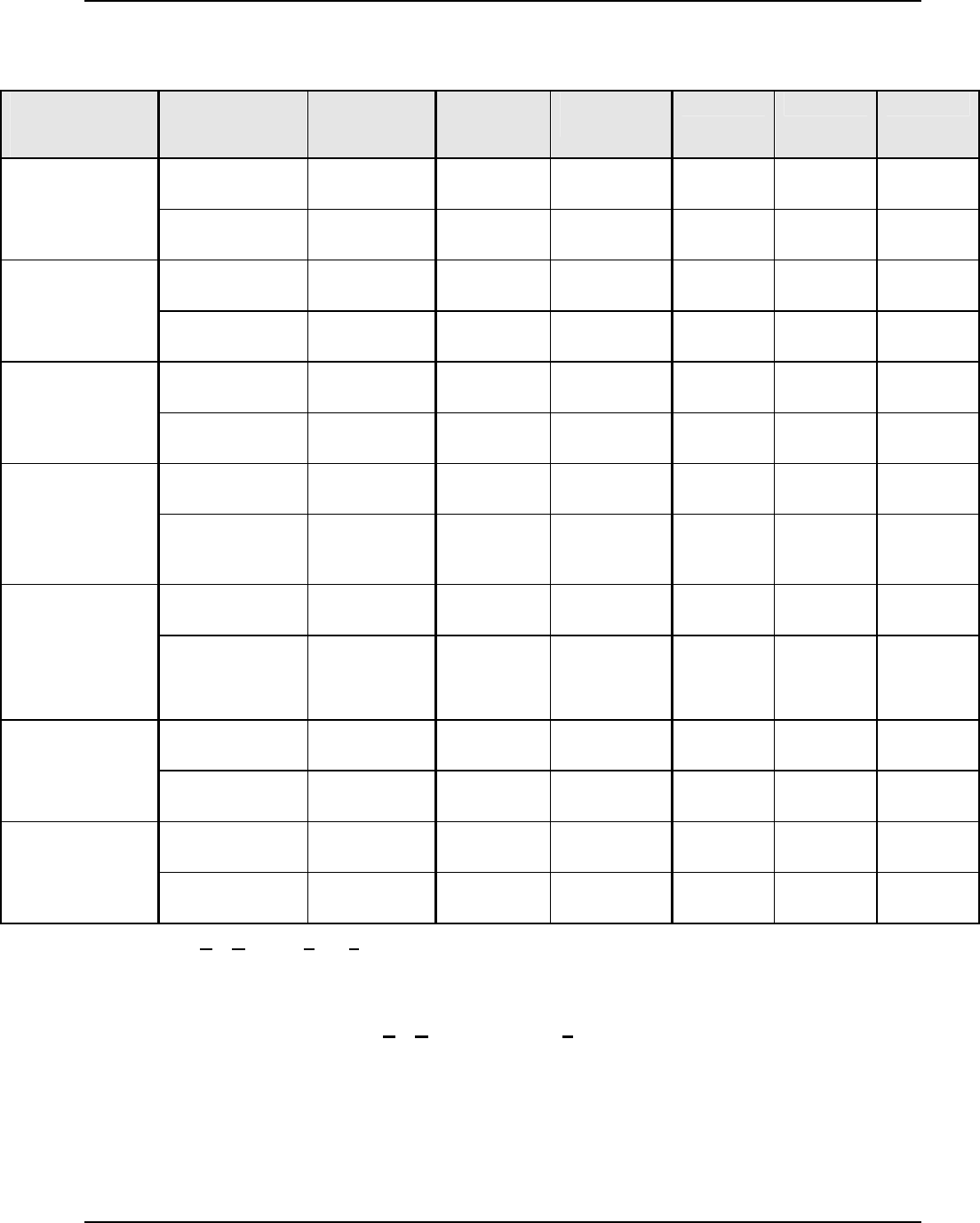
Installation
Table 2-7 Dual Loop Controller – Loop 2 Output Functionality and
Restrictions
Loop 2 Output
Algorithm
Selection
Output #2
Option
Function of
Output #2
1st Current
Output
2nd Current
Output *
Relay #3 Relay #4 Relay #5
Third Current
Output
NUL2 NUL2 NUL2 Loop 2
HEAT
Alarm 2 Alarm 1 Time Simplex or
ON-OFF Simplex
All Other
Options
NUL2 NUL2 NUL2 Loop 2
HEAT
Alarm 2 Alarm 1
Third Current
Output
NUL2 NUL2 NUL2 Loop 2
HEAT
Loop 2
COOL
Alarm 1 Time Duplex or
ON-OFF Duplex
All Other
Options
NUL2 NUL2 NUL2 Loop 2
HEAT
Loop 2
COOL
Alarm 1
Third Current
Output
Loop 2 HEAT NUL2 NUL2 Alarm 3 Alarm 2 Alarm 1 Current Simplex
All Other
Options
NUL2 NUL2 Loop 2
HEAT
Alarm 3 Alarm 2 Alarm 1
Third Current
Output
Loop 2 HEAT
and COOL
NUL2 NUL2 Alarm 3 Alarm 2 Alarm 1 Current Duplex
100 %
Second or Third
Current Out =
COOL and HEAT
All Other
Options
NUL2 NUL2 Loop 2
HEAT and
COOL
Alarm 3 Alarm 2 Alarm 1
Third Current
Output
Loop 2 HEAT NUL2 Loop 2
COOL
Alarm 3 Alarm 2 Alarm 1 Current Duplex
50 % ***
Second Current =
HEAT
Third Current =
COOL
All Other
Options
N/A2 N/A2 N/A2 N/A2 N/A2 N/A2
Third Current
Output
Loop 2 COOL NUL2 NUL2 Loop 2
HEAT
Alarm 2 Alarm 1 Current/Time
Second or Third
Current = COOL
Time = HEAT
All Other
Options
NUL2 NUL2 Loop 2
COOL
Loop 2
HEAT
Alarm 2 Alarm 1
Third Current
Output
Loop 2 HEAT NUL2 NUL2 Loop 2
COOL
Alarm 2 Alarm 1 Time/Current
Time = COOL
Second or Third
Current = HEAT
All Other
Options
NUL2 NUL2 Loop 2
HEAT
Loop 2
COOL
Alarm 2 Alarm 1
NUL2 = N ot Used on Loop 2 – This particular output is not used for the selected Second Loop
Output type, but it may be used for the First Loop Output type. Refer to the selection made
in Table 2-6. Any Current Output not used as a Control Output on either loop may be
configured as an Auxiliary Output.
N/A2 =
Current Duplex 50% is N
ot Available on Loop 2 unless the Third Current Output is
installed.
* The Second Current Output and Ethernet Communications are mutually exclusive.
** TPSC and Position Proportional are available only on Loop 1.
*** Current Duplex 50% is available only on Loop 1 or Loop 2, it cannot be used on both loops. If the
Second Current Output is not present, then the Third Current Output is used as Loop 1 COOL output.
March 2012 UDC3500 Universal Digital Controller Product Manual 27
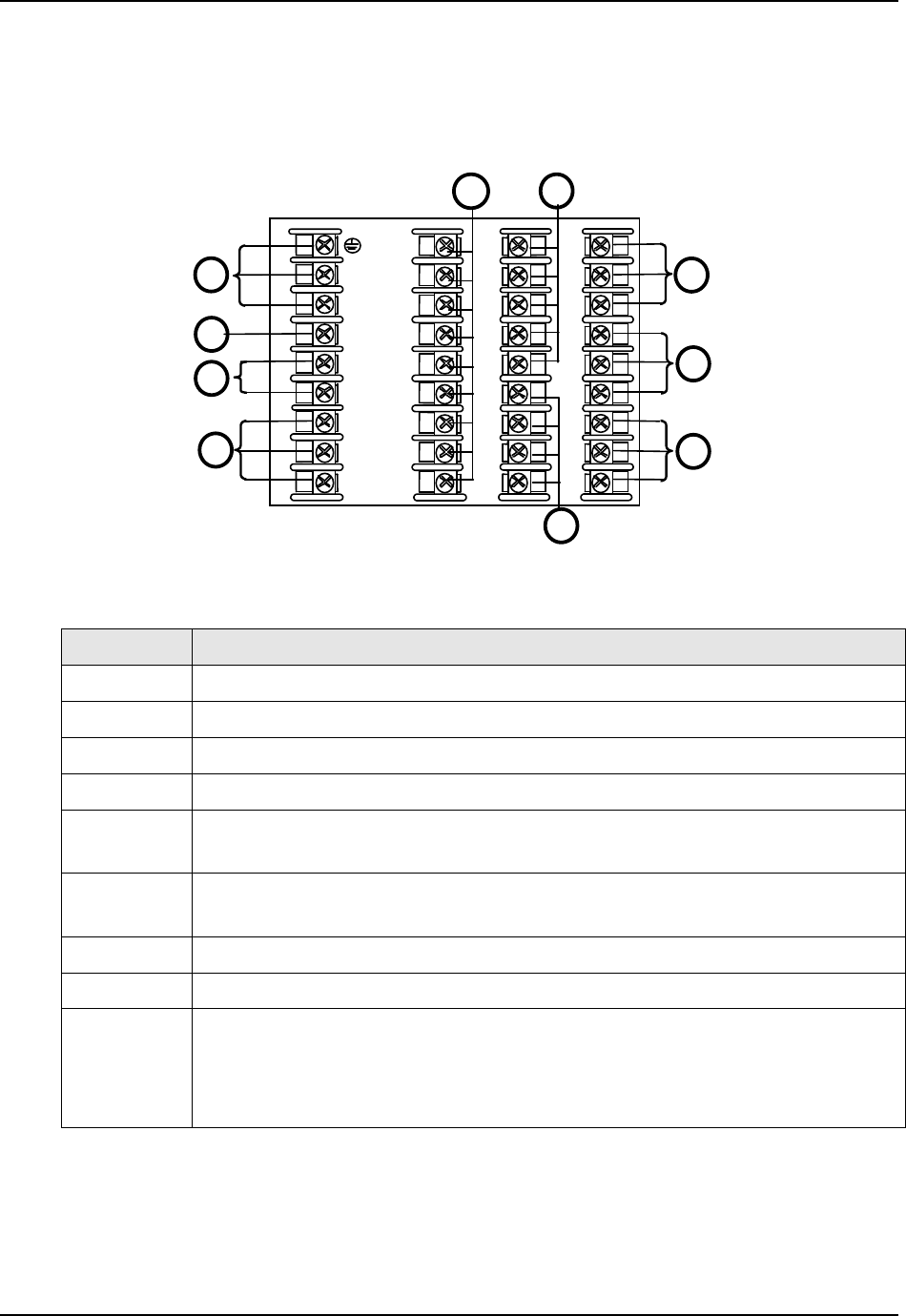
Installation
Wiring the Controller
Using the information contained in the model number, select the appropriate wiring
diagrams from the composite wiring diagram below. Refer to the individual diagrams
listed to wire the controller according to your requirements.
See table for callout details
4
5
6
7
8
9
10
11
12
13
14
15
16
17
L1
L2/N
22
23
24
25
26
27
18
19
20
21
31
32
33
34
35
36
28
29
30
6
5
4
1
2
3
7
8
9
9
Figure 2-4 Composite Wiring Diagram
Callout Details
1 AC/DC Line Voltage Terminals. See Figure 2-5.
2 First Current Output Terminals. See Figure 2-12.
3 Output 2 Option Terminals. See Figure 2-14 through Figure 2-19.
4 Input #1 Terminals. See Figure 2-6.
5 Input #2 Terminals. See Figure 2-7.
Dual HLAI Inputs #2 and #4 Terminals. See Figure 2-9 and Figure 2-11.
6 Input #3 Terminals. See Figure 2-8.
Dual HLAI Inputs #3 and #5 Terminals. See Figure 2-10 and Figure 2-11.
7 Digital Inputs Terminals. See Figure 2-23.
8 Optional Relays Terminals (Relays 3, 4 and 5). See Figure 2-24.
9 Optional Interface
Second Current Output Terminals. See Figure 2-13.
RS-485 Communications T
erminals. See Figure 2-20.
Ethernet Communications Terminals. See Figure 2-22.
28 UDC3500 Universal Digital Controller Product Manual March 2012
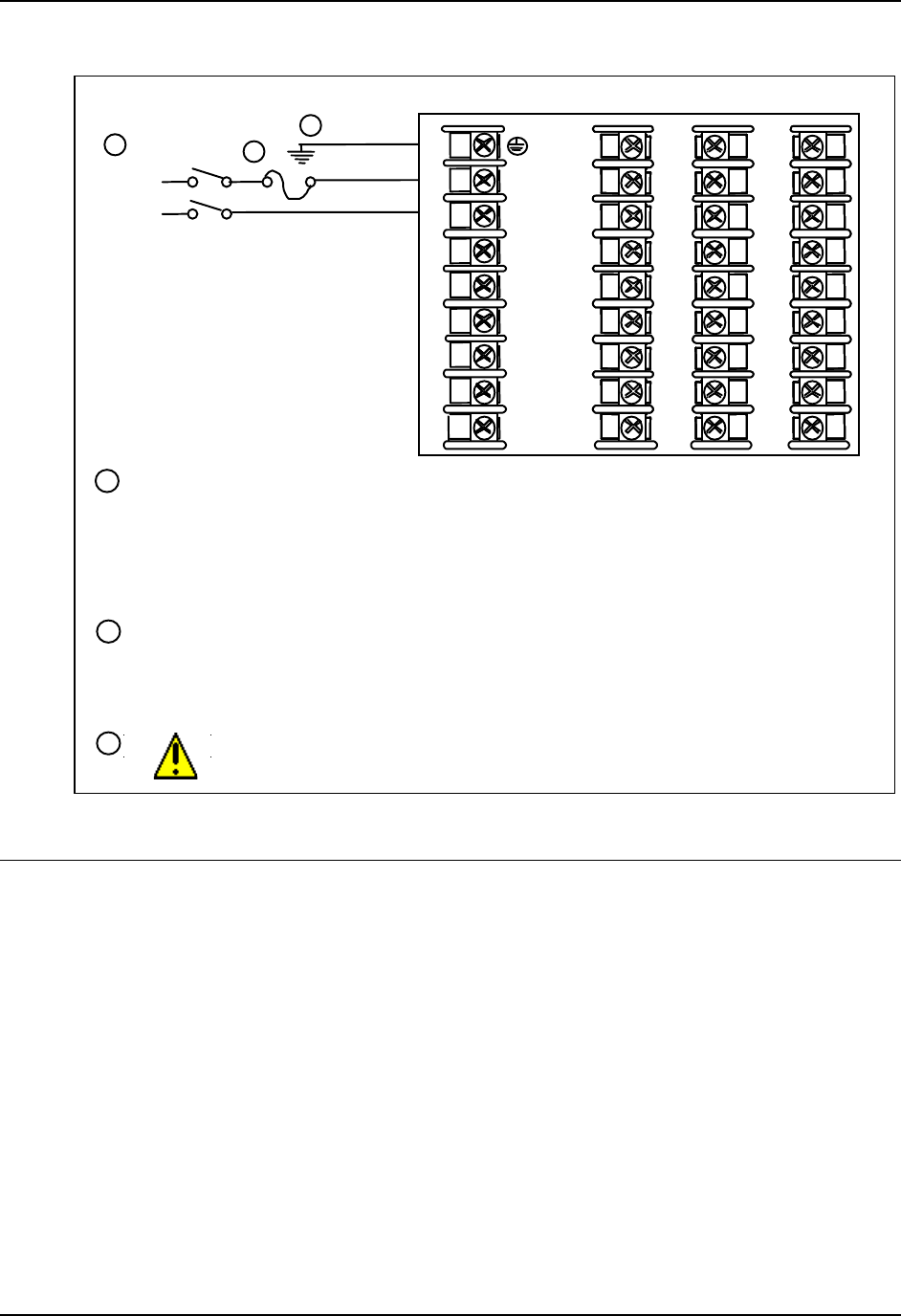
Installation
Earth
Ground
Hot
Neutral
AC/DC
Line
Voltage
1
2
PROTECTIVE BONDING (grounding) of this controller and the enclosure in which it is
installed, shall be in accordance with National and local electrical codes. To minimize
electrical noise and transients that may adversely affect the system, supplementary
bonding of the controller enclosure to local ground using a No. 12 (4 mm
2
) copper
conductor is recommended. Before powering the controller, see “Prelimnary Checks” in
this section of the Product Manual.
1
It is the user’s responsibility to provide a switch and non-time delay (North America),
quick-acting, high breaking capacity, Type F (Europe), 1/2A, 250V fuse(s), or circuit -
breaker for 90-264 Vac applications; or 2 A, 125 V fuse or circuit breaker for 2 4 Vac/dc
applications, as part of the installation.
Applying 90-264 Vac to an instrument rated for 24 Vac/dc will severely
damage the instrument and is a fire and smoke hazard.
3
2
3
4
5
6
7
8
9
10
11
12
13
14
15
16
17
L1
L2/N
22
23
24
25
26
27
18
19
20
21
31
32
33
34
35
36
28
29
30
Earth
Ground
Hot
Neutral
AC/DC
Line
Voltage
1
2
PROTECTIVE BONDING (grounding) of this controller and the enclosure in which it is
installed, shall be in accordance with National and local electrical codes. To minimize
electrical noise and transients that may adversely affect the system, supplementary
bonding of the controller enclosure to local ground using a No. 12 (4 mm
2
) copper
conductor is recommended. Before powering the controller, see “Prelimnary Checks” in
this section of the Product Manual.
1
It is the user’s responsibility to provide a switch and non-time delay (North America),
quick-acting, high breaking capacity, Type F (Europe), 1/2A, 250V fuse(s), or circuit -
breaker for 90-264 Vac applications; or 2 A, 125 V fuse or circuit breaker for 2 4 Vac/dc
applications, as part of the installation.
Applying 90-264 Vac to an instrument rated for 24 Vac/dc will severely
damage the instrument and is a fire and smoke hazard.
3
2
3
4
5
6
7
8
9
10
11
12
13
14
15
16
17
L1
L2/N
22
23
24
25
26
27
18
19
20
21
31
32
33
34
35
36
28
29
30
Figure 2-5 Mains Power Supply
March 2012 UDC3500 Universal Digital Controller Product Manual 29
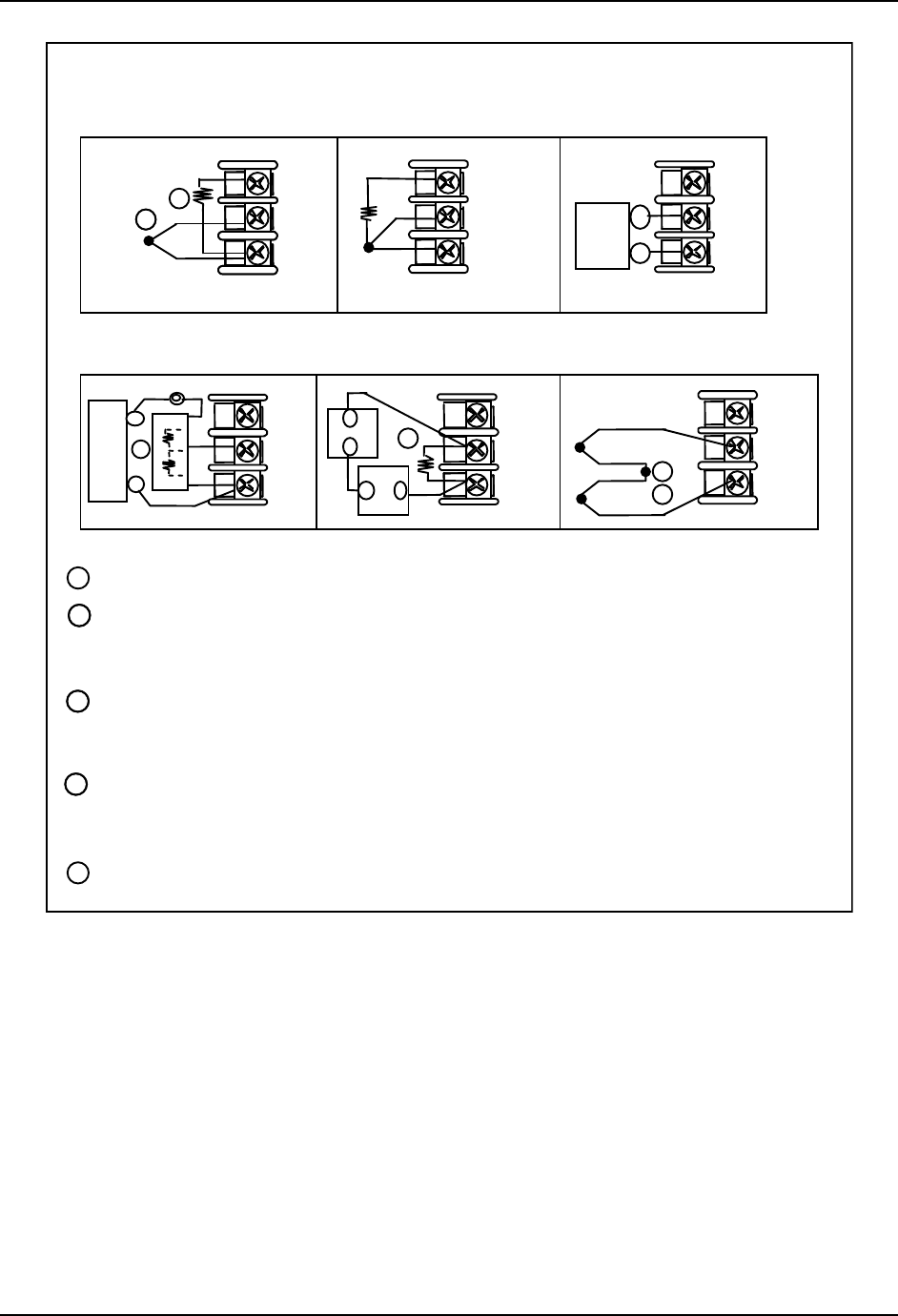
Installation
22
23
24
Use Thermocouple
extension wire only
Thermocouple
RTD
Milliamps
–
+
+
R
–
1
2
3
–
Volt
source
+
100K
100K
Power
Supply
–+
Xmitter
+
–
250
22
23
24
+
R
–
22
23
24
+
R
–
1
22
23
24
+
R
–
1
Input #2
mV or
Volt
source
22
23
24
Use Thermocouple
extension wire only
+
R
–
Thermocouple Differential
+
+
–
–
2
3
22
23
24
+
R
–
34
35
36
Use Thermocouple
extension wire only
Thermocouple
RTD
Milliamps
–
+
+
R
–
1
2
3
–
Volt
source
+
100K
100K
Power
Supply
–+
Xmitter
+
–
250
34
35
36
+
R
–
34
35
36
+
R
–
3
34
35
36
+
R
–
3
Input #1
mV or
Volt
source
34
35
36
Use Thermocouple
extension wire only
+
R
–
Thermocouple Differential
+
+
–
–
4
1
34
35
36
+
R
–
3
4
1
The millivolt values for the Thermocouple Differential Input are for a pair of J thermocouples at an ambient
temperature mean of 450°F / 232°C. Cold Junction Compensation is not required for this input type.
5
2
5
3
2
This controller does not produce a steady current for burnout detection. For that reason, when a
thermocouple is used in parallel with another instrument, it may be desirable to configure the burnout
selection for this controller to “NOFS” and use the burnout current from the other instrument to also drive
this controller. The Failsafe Output must be set to ensure proper operation when the thermocouple fails.
Splice and tape this junction between the two thermocouples. This junction may be located anywhere
between the thermocouples and the instrument terminals, it does not need to be close to the other
thermocouple junctions. Both thermocouples must be of the same type. For the highest accuracy, the
thermocouples should be matched or, preferably, made from the same batch of wire.
Remove the “R” terminal screw and install the C/J Sensor in its place. Connect the tang to the “
“ terminal.
The 250 ohm resistor for milliamp inputs or the voltage divider for 0 to10 Volt or –1 to 1Volt inputs are
supplied with the controller when those inputs are specified. These items must be installed prior to start up
when the controller is wired. For 0-20 mA, -1 to 1 Volt and 0-10 Volt applications, the resistor should be
located at the transmitter terminals if Burnout detection is desired.
Carbon, Oxygen, Millivolt or Volts
except 0 to 10 Volts or –1 to 1 Volts
0-10 Volts or –1 to 1 Volts
Figure 2-6 Input 1 Connections
30 UDC3500 Universal Digital Controller Product Manual March 2012
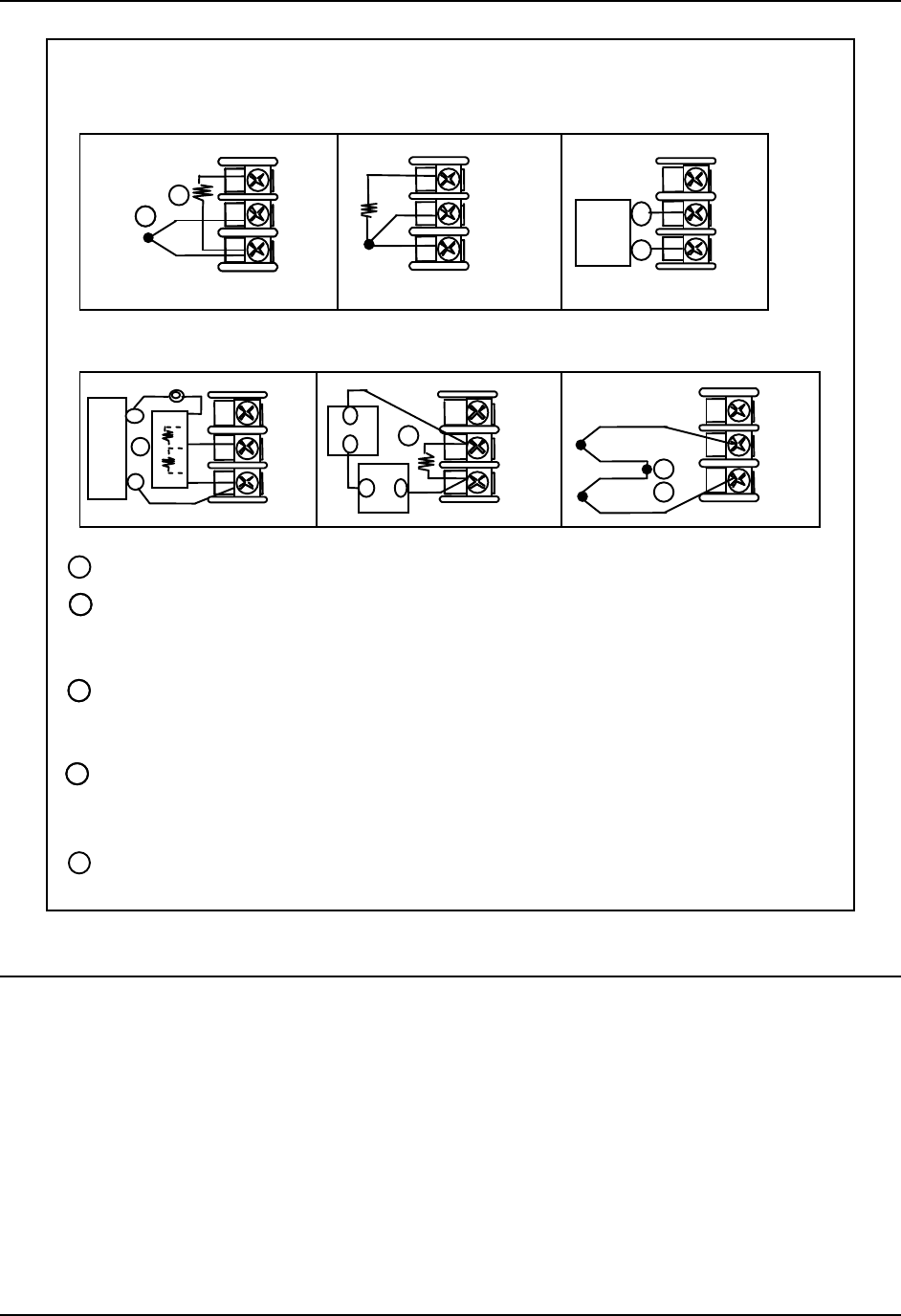
Installation
22
23
24
Use Thermocouple
extension wire only
Thermocouple
RTD
source
Milliamps
–
+
+
R
–
1
2
3
–
0
–
10
Volt
source
+
100K
100K
Power
Supply
–+
Xmitter
+
–
250
22
23
24
+
R
–
22
23
24
+
R
–
1
22
23
24
+
R
–
1
Input #2
mV or
Volt
source
22
23
24
Use Thermocouple
extension wire only
+
R
–
Thermocouple Differential
+
+
–
–
2
3
22
23
24
+
R
–
31
32
33
Use Thermocouple
extension wire only
Thermocouple
RTD
source
Milliamps
–
+
+
R
–
1
2
3
–
Volt
source
+
100K
100K
Power
Supply
–+
Xmitter
+
–
250
31
32
33
+
R
–
31
32
33
+
R
–
3
31
32
33
+
R
–
3
Input #2
mV or
Volt
source
31
32
33
Use Thermocouple
extension wire only
+
R
–
Thermocouple Differential
+
+
–
–
4
1
31
32
33
+
R
–
3
4
1
The millivolt values for the Thermocouple Differential Input are for a pair of J thermocouples at an ambient
temperature mean of 450°F / 232°C. Cold Junction Compensation is not required for this input type.
5
2
5
3
2
This controller does not produce a steady current for burnout detection. For that reason, when a
thermocouple is used in parallel with another instrument, it may be desirable to configure the burnout
selection for this controller to “NOFS” and use the burnout current from the other instrument to also drive
this controller. The Failsafe Output must be set to ensure proper operation when the thermocouple fails.
Splice and tape this junction between the two thermocouples. This junction may be located anywhere
between the thermocouples and the instrument terminals, it does not need to be close to the other
thermocouple junctions. Both thermocouples must be of the same type. For the highest accuracy, the
thermocouples should be matched or, preferably, made from the same batch of wire.
Remove the “R” terminal screw and install the C/J Sensor in its place. Connect the tang to the “
“ terminal.
The 250 ohm resistor for milliamp inputs or the voltage divider for 0 to10 Volt or –1 to 1Volt inputs are
supplied with the controller when those inputs are specified. These items must be installed prior to start up
when the controller is wired. For 0-20 mA, -1 to 1 Volt and 0-10 Volt applications, the resistor should be
located at the transmitter terminals if Burnout detection is desired.
Millivolt or Volts except
0 to 10 Volts or –1 to 1 Volts
0-10 Volts or –1 to 1 Volts
Figure 2-7 Input 2 Connections
March 2012 UDC3500 Universal Digital Controller Product Manual 31
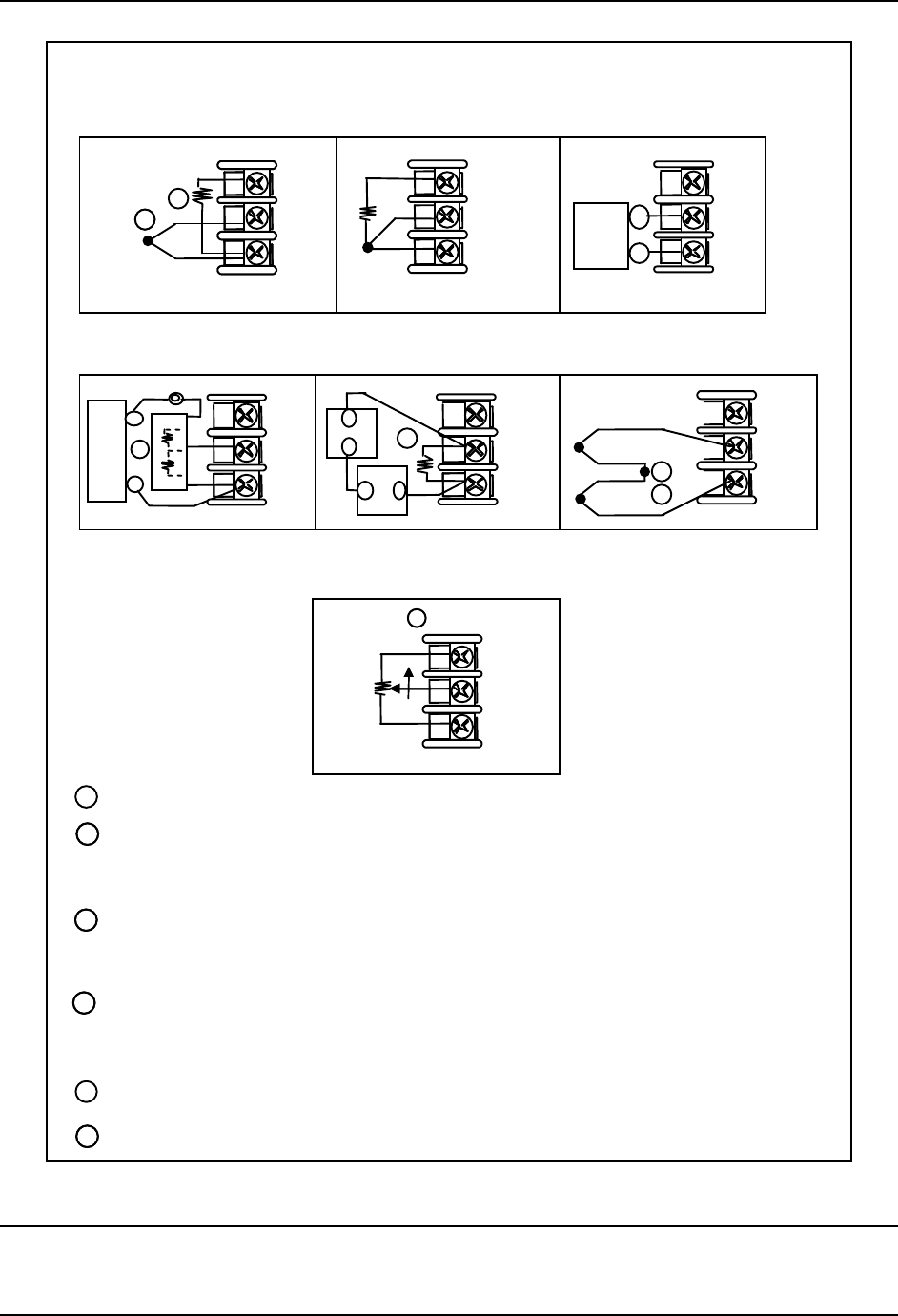
Installation
22
23
24
Use Thermocouple
extension wire only
Thermocouple RTD
source
Milliamps
–
+
+
R
–
1
2
3
–
Volt
source
+
100K
100K
Power
Supply
–+
Xmitter
+
–
250
22
23
24
+
R
–
22
23
24
+
R
–
1
22
23
24
+
R
–
1
Input #2
mV or
Volt
source
22
23
24
Use Thermocouple
extension wire only
+
R
–
Thermocouple Differential
+
+
–
–
2
3
22
23
24
+
R
–
Slidewire Input
(for Position Proportional Control or Three Position Step Contro
22
23
24
+
R
–
Open
Wiper
Close
4
xxxx
The 250 ohm resistor for milliamp inputs or the voltage divider for 0-10 Volt inputs are supplied
with the controller when those inputs are specified. These items must be installed prior to start
up when the controller is wire d. For 0-20 mA applications, the resistor should be located at the
transmitter terminals if Burnout detection is desired.
1
Splice and tape this junction between the two thermocouples. Thi s junction may be located
anywhere between the thermocouples and the instrument terminals, it does not need to be close
to the other thermocou ple
j
unctions. Both thermocouples must be of the same type. For bes t
accuracy, the two thermocouples should be matched or, preferably , made from the same batch
of wire.
2
This controller does not produce a steady current for burnout detection. For that rea son, when a
thermocouple is used in parallel with another instrument, it may be desirable to configure the
burnout selection for this controller to “NOFS” and use the burnout current from the other
instrument to also drive this controller.
3
28
29
30
Use Thermocouple
extension wire only
Thermocouple RTD
source
Milliamps
–
+
+
R
–
1
2
3
–
Volt
source
+
100K
100K
Power
Supply
–+
Xmitter
+
–
250
28
29
30
+
R
–
28
29
30
+
R
–
3
28
29
30
+
R
–
3
Input #3
mV or
Volt
source
28
29
30
Use Thermocouple
extension wire only
+
R
–
Thermocouple Differential
+
+
–
–
4
1
28
29
30
+
R
–
Slidewire Input
(for Position Proportional Control or Three Position Step Control)
28
29
30
+
R
–
Open
Wiper
Close
46
Input 3 is used to measure the Slidewire Input for Position Proportional Control.
5
3
2
6
Millivolt or Volts except
0 to 10 Volts or –1 to 1 Volts
0-10 Volts or –1 to 1 Volts
3
4
1
The millivolt values for the Thermocouple Differential Input are for a pair of J thermocouples at an ambient
temperature mean of 450°F / 232°C. Cold Junction Compensation is not required for this input type.
5
2
This controller does not produce a steady current for burnout detection. For that reason, when a
thermocouple is used in parallel with another instrument, it may be desirable to configure the burnout
selection for this controller to “NOFS” and use the burnout current from the other instrument to also drive
this controller. The Failsafe Output must be set to ensure proper operation when the thermocouple fails.
Splice and tape this junction between the two thermocouples. This junction may be located anywhere
between the thermocouples and the instrument terminals, it does not need to be close to the other
thermocouple junctions. Both thermocouples must be of the same type. For the highest accuracy, the
thermocouples should be matched or, preferably, made from the same batch of wire.
Remove the “R” terminal screw and install the C/J Sensor in its place. Connect the tang to the “
“ terminal.
The 250 ohm resistor for milliamp inputs or the voltage divider for 0 to10 Volt or –1 to 1Volt inputs are
supplied with the controller when those inputs are specified. These items must be installed prior to start up
when the controller is wired. For 0-20 mA, -1 to 1 Volt and 0-10 Volt applications, the resistor should be
located at the transmitter terminals if Burnout detection is desired.
Figure 2-8 Input 3 Connections
32 UDC3500 Universal Digital Controller Product Manual March 2012
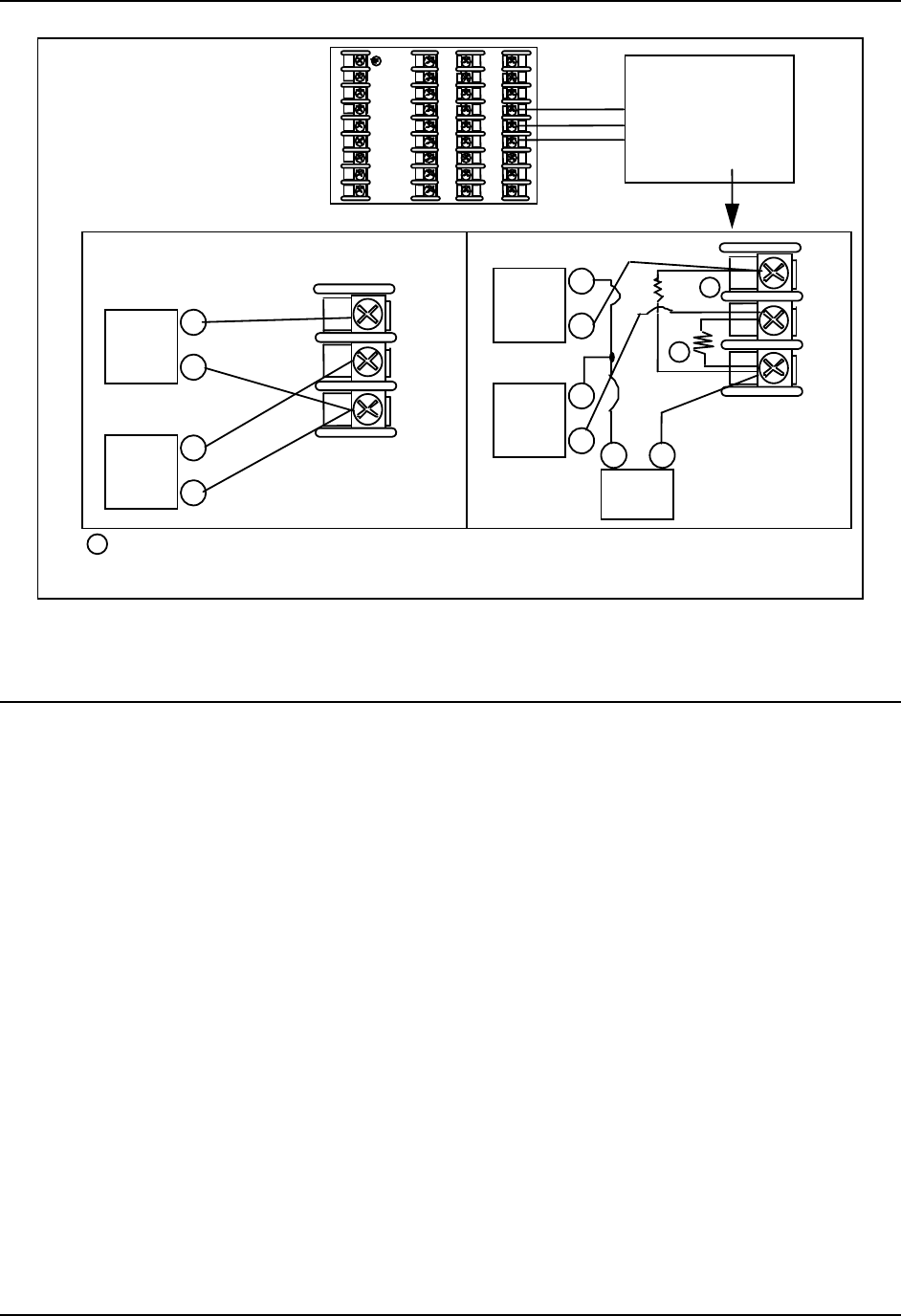
Installation
19
20
21
22
23
24
25
26
27
10
11
12
13
14
15
16
17
L1
L2/N
4
5
6
7
8
9
+
+
–
0-5V or 1-5V Connections
0-20 or 4-20mA Connections
250
31
32
33
+
+
–
1
1
31
32
33
+
+
–
High Level
Analog Input
Connections
See Below
Input 4 Source
Input 2 Source
–
+
–
+
250
Transmitter 4
Transmitter 2
–
+
–
+
Power
Supply
1
–
+
A
TTENTION:
Check Input 2 jumper when
replacing single input with two
HLAI.
28
29
30
31
32
33
34
35
36
18
The 250 ohm resistors for milliamp inputs are supplied with the controller when those inputs are specified.
These items must be installed prior to start up when the controller is wired. For 0-20 mA applications, the
resistor should be located at the transmitter terminals if Burnout detection is desired.
Figure 2-9 HLAI Inputs 2 and 4 Connections
See Figure 2-11 for Jumper Positions.
March 2012 UDC3500 Universal Digital Controller Product Manual 33
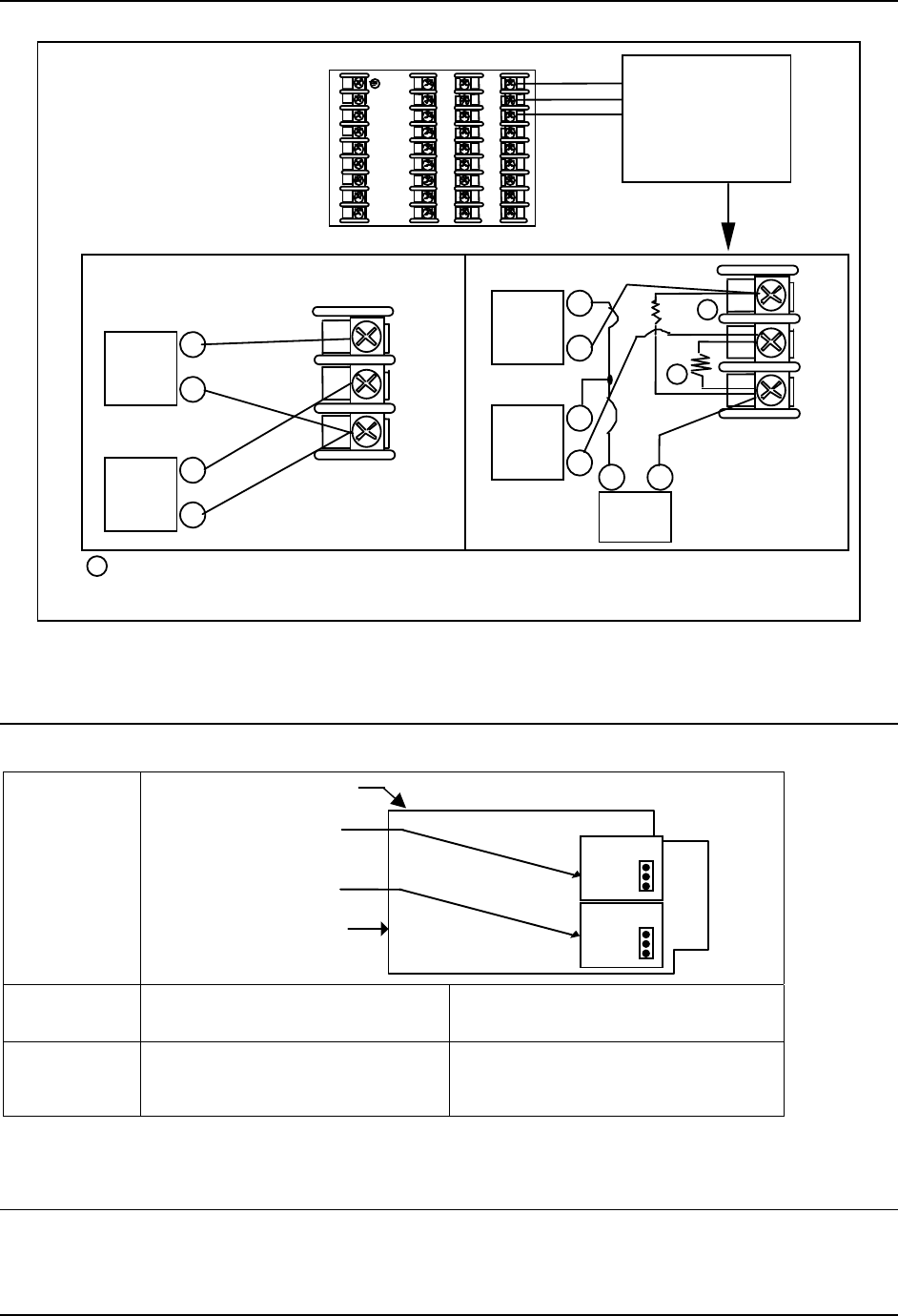
Installation
19
20
21
22
23
24
25
26
27
10
11
12
13
14
15
16
17
L1
L2/N
4
5
6
7
8
9
+
+
–
0-5V or 1-5V Connections
0-20 or 4-20mA Connections
250
28
29
30
+
+
–
1
1
28
29
30
+
+
–
High Level
Analog Input
Connections
See Below
Input 5 Source
Input 3 Source
–
+
–
+
250
Transmitter 5
Transmitter 3
–
+
–
+
Power
Supply
1
–
+
A
TTENTION:
Check Input 3 jumper when
replacing single input with two
HLAI.
28
29
30
31
32
33
34
35
36
18
The 250 ohm resistors for milliamp inputs are supplied with the controller when those inputs are specified.
These items must be installed prior to start up when the controller is wired. For 0-20 mA applications, the
resistor should be located at the transmitter terminals if Burnout detection is desired.
Figure 2-10 HLAI Inputs 3 and 5 Connections
See Figure 2-11 for Jumper Positions.
Jumper
Location
W2
W1
MCU/Input PWA
2
nd Input PWA
W2
W1
3rd Input PWA
Top of unit
Jumper
Position
W1
Single Input
W2
Two HLAI
Input Types
Available
Thermocouple, RTD, Volt, Millivolt,
Milliamp, Radiamatic and
(Input 3 only) Slidewire
2
nd
Input becomes HLAI Inputs 2 & 4
3
rd
Input becomes HLAI Inputs 3 & 5
Figure 2-11 Optional Analog Input Jumper Positions
34 UDC3500 Universal Digital Controller Product Manual March 2012
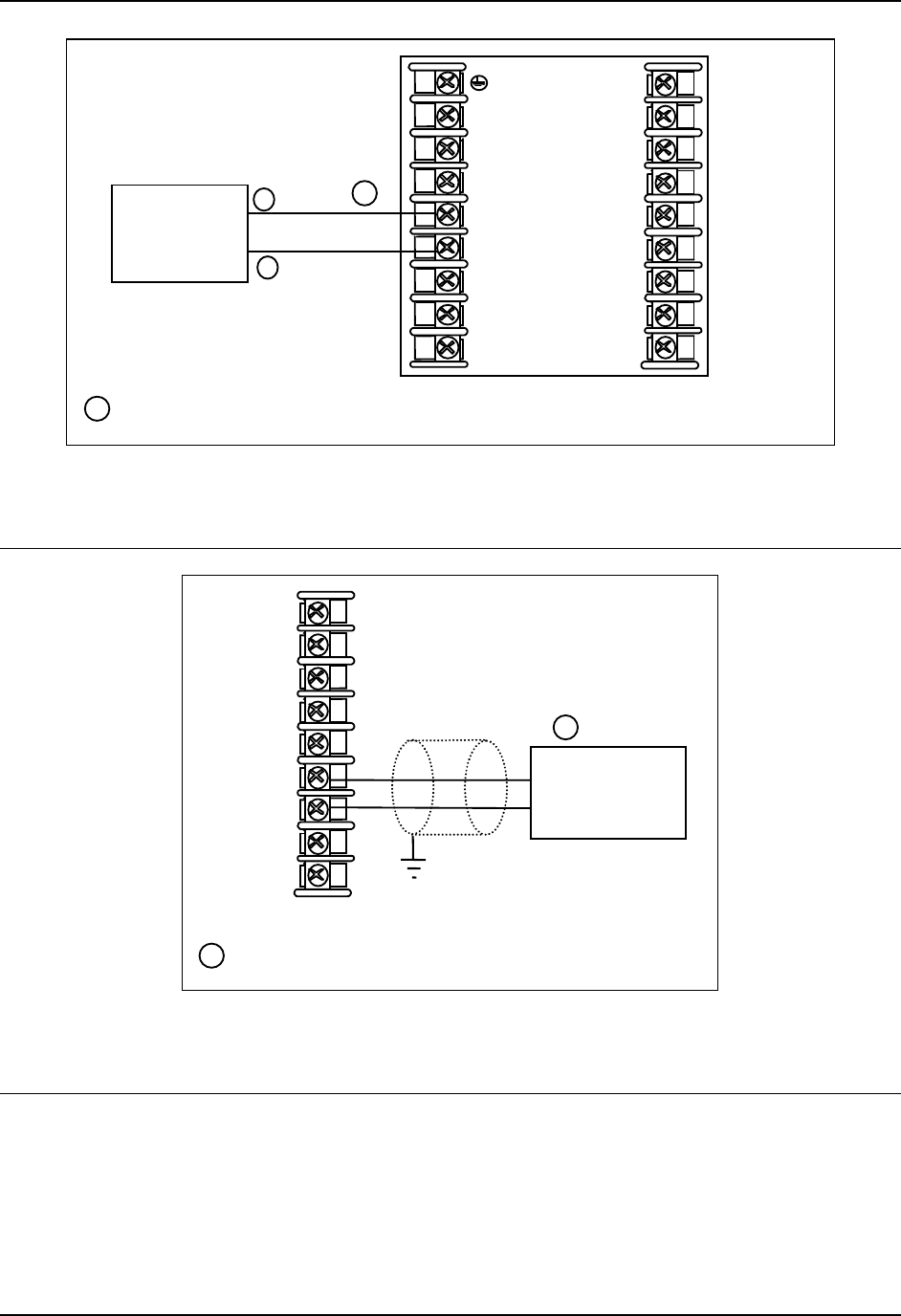
Installation
The First Current Output is standard on all instruments.
+
Output Load
0 - 1000 ohms
–
Current Output
0-20 or 4-20 mA
1
L1
L2/N
4
5
7
8
9
28
29
30
31
32
33
34
35
36
6
1
Figure 2-12 First Current Output
See Table 2-6 and Table 2-7 for other information about output types.
+
_
Output Load
0 – 1000 ohms
Connect shield
to ground at one
end only.
19
20
21
22
23
24
25
26
27
The Second Current Output is mutually exclusive with Ethernet
Communications.
1
1
Figure 2-13 Second Current Output
See Table 2-6 and Table 2-7 for other information about output types.
March 2012 UDC3500 Universal Digital Controller Product Manual 35
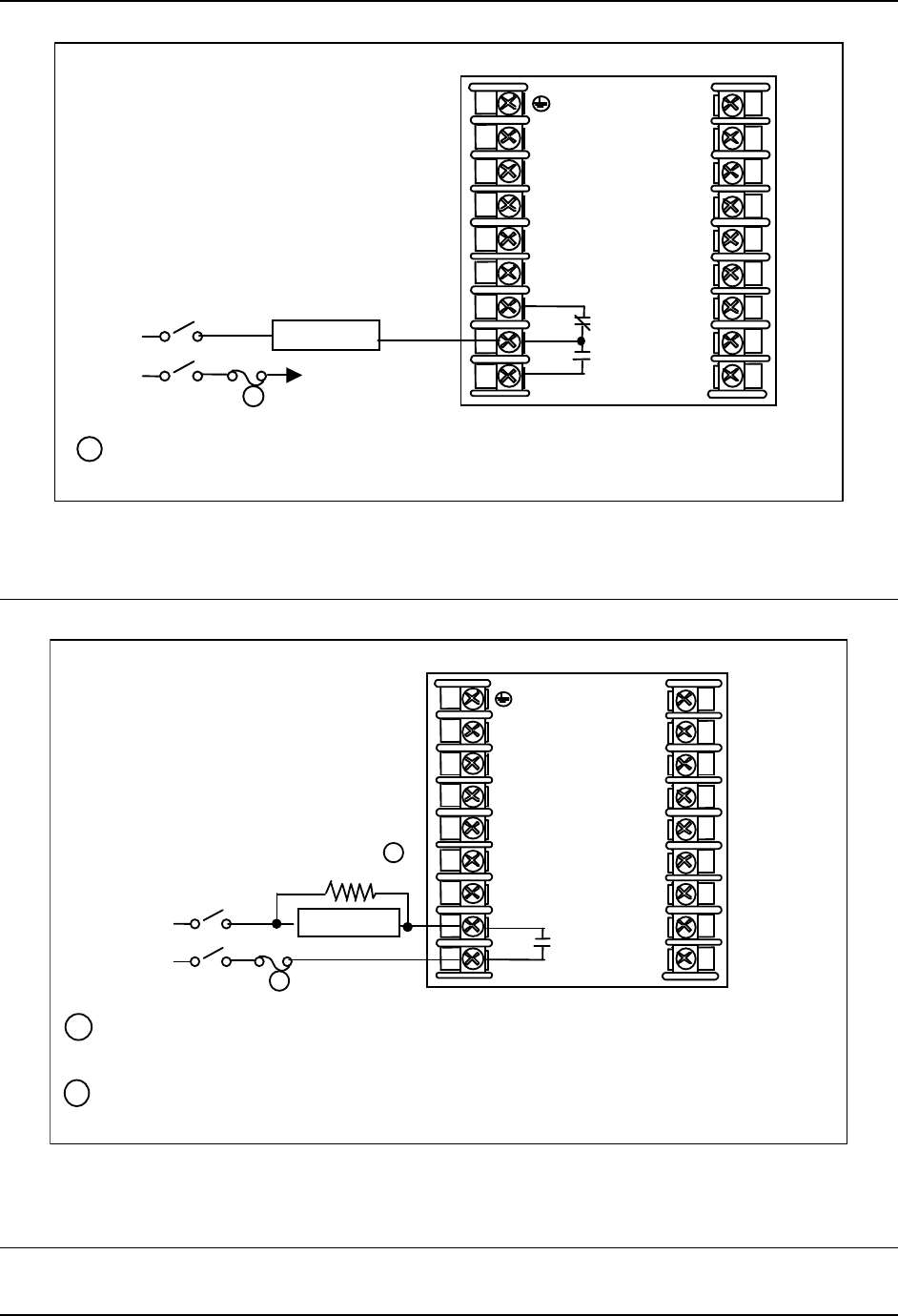
Installation
1
Electromechanical relays are rated at 5 Amps @ 120 Vac or 240 Vac or 30 Vdc.
Customer should size fuses accordingly. Use Fast Blo fuses only.
To terminal
7 (N.C.) or 9 (N.O.)
Relay Load
1
Load
Supply
Power
L1
L2/N
4
5
7
8
9
28
29
30
31
32
33
34
35
36
6
N.C.
N.O.
Figure 2-14 Output #2 – Electromechanical Relay Output
See Table 2-6 and Table 2-7 for other information about output types.
If the load current is less than the minimum rated value of 20 mA, then there may be residual voltage across both
ends of the load even if the relay is turned off. Use a dummy resistor as shown to counteract this. The total
current through the resistor and the the load must exceed 20 mA. Solid State Relays are zero-crossing type.
2
1
Solid State relays are rated at 1 Amp at 25°C and derated linearly to 0.5 Amp at 55°C. Customer should size
fuse accordingly. Use Fast Blo fuses only.
L1
L2/N
4
5
7
8
9
28
29
30
31
32
33
34
35
36
6
N.O.
2
Relay Load
Load
Supply
Power
Dummy Resistor
1
Figure 2-15 Output #2 – Solid State Relay Output
See Table 2-6 and Table 2-7 for other information about output types.
36 UDC3500 Universal Digital Controller Product Manual March 2012
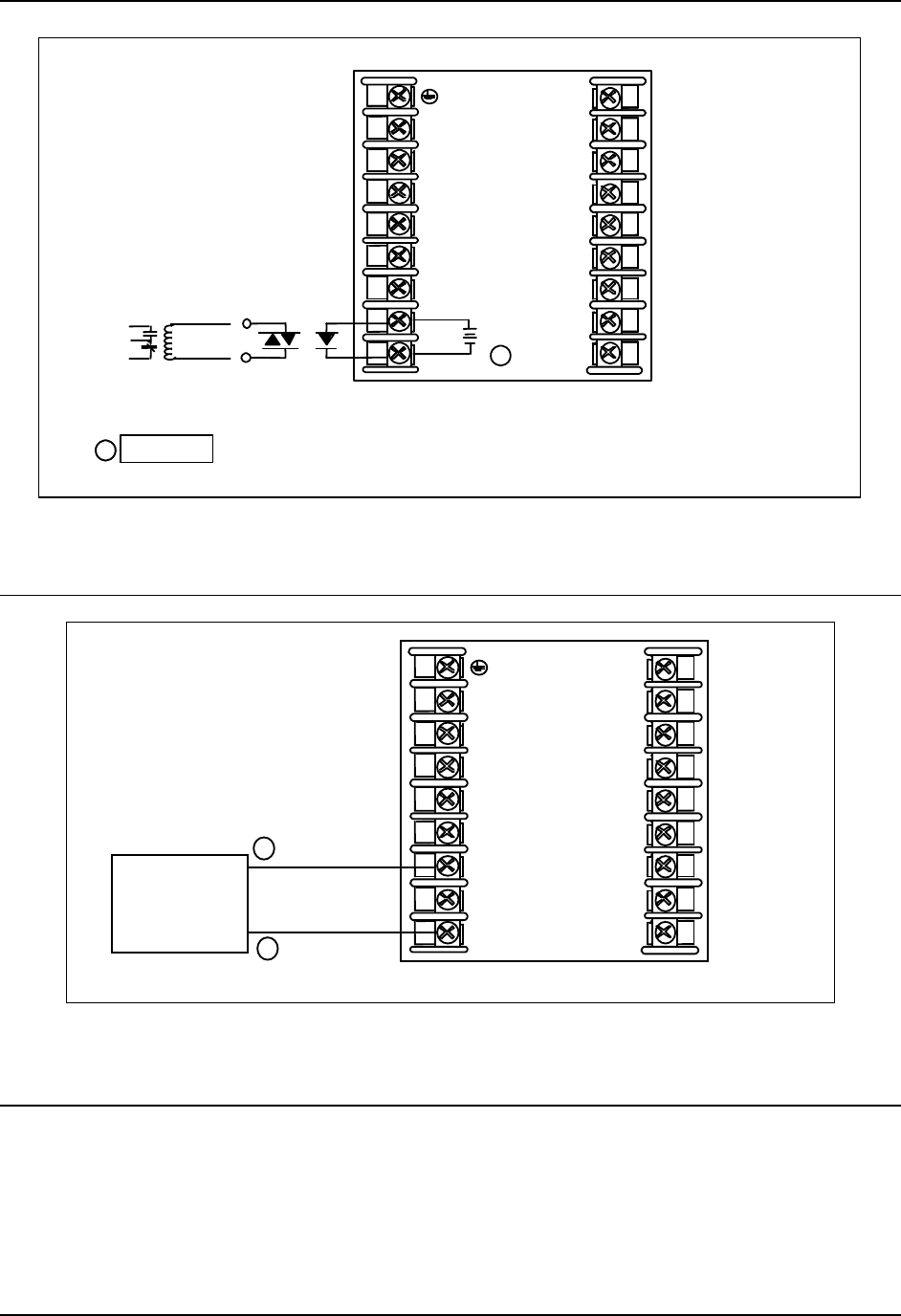
Installation
L1
L2/N
4
5
7
8
9
28
29
30
31
32
33
34
35
36
6
–
+
+
–
OC Output
1
+
–
Customer Supplied
Electromechanical relay
Customer Supplied
Solid-State relay
CAUTION
Open collector outputs are internally powered at +30 Vdc. Connecting an external
power supply will damage the controller.
1
Maximum Sink Current: 20mA
Overload Protection: 100mA
L1
L2/N
4
5
7
8
9
28
29
30
31
32
33
34
35
36
6
–
+
+
–
OC Output
1
+
–
Customer Supplied
Electromechanical relay
Customer Supplied
Solid-State relay
CAUTION
Open collector outputs are internally powered at +30 Vdc. Connecting an external
power supply will damage the controller.
11
Maximum Sink Current: 20mA
Overload Protection: 100mA
Figure 2-16 Output #2 – Open Collector Output- Third
See Table 2-6 and Table 2-7 for other information about output types.
+
Output Load
0 - 1000 ohms
–
L1
L2/N
4
5
7
8
9
28
29
30
31
32
33
34
35
36
6
Current Output
0-20 or 4-20 mA
Figure 2-17 Output #2 – Third Current Output
See Table 2-6 and Table 2-7 for other information about output types.
March 2012 UDC3500 Universal Digital Controller Product Manual 37
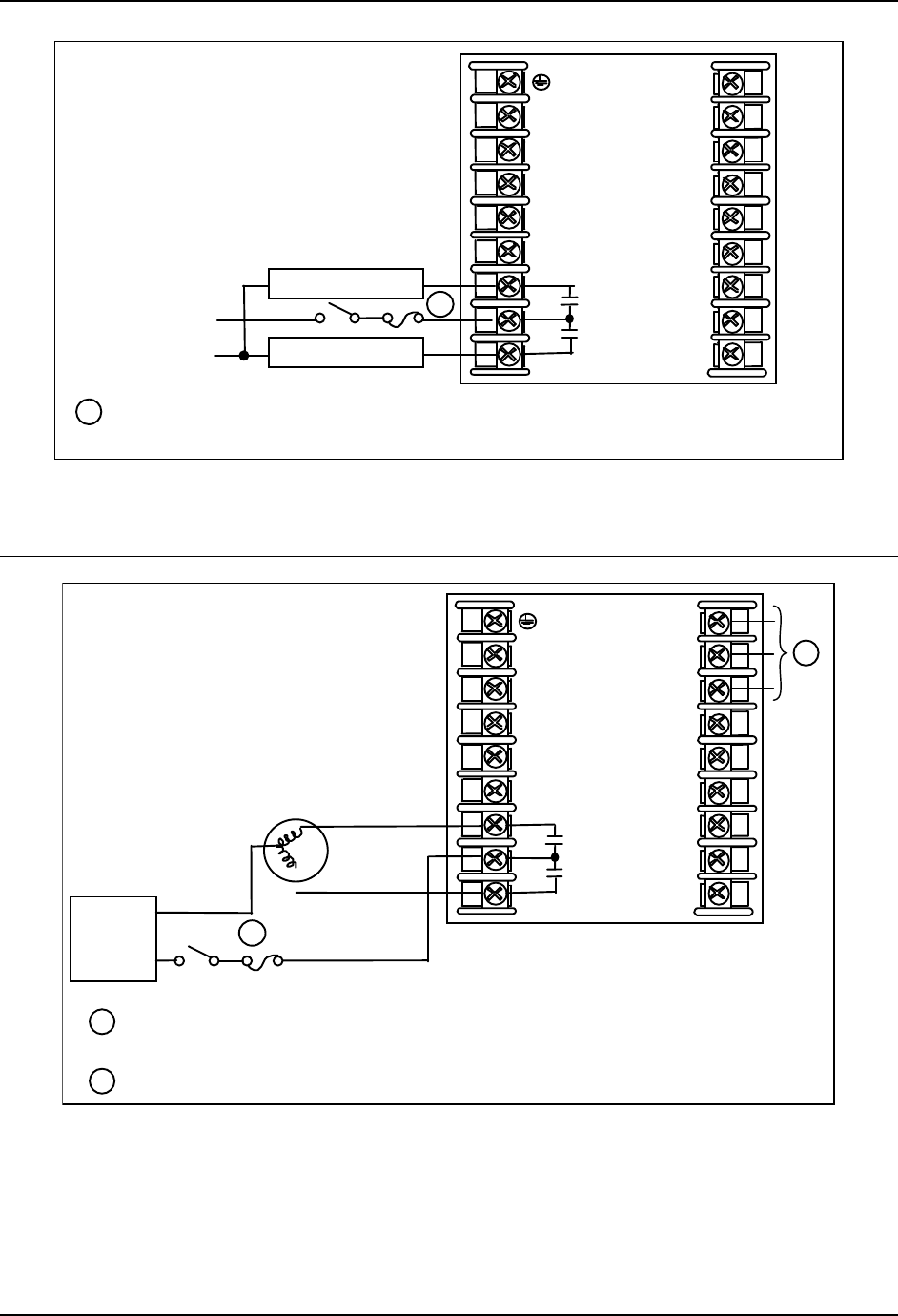
Installation
L1
L2/N
4
5
7
8
9
28
29
30
31
32
33
34
35
36
6
Cool Relay Load
Load
Power
Supply
Heat Relay Load
Out Relay #1
N.O.
N.O.
Out Relay #2
1
Dual Electromechanical relays are rated at 2 Amps @120 Vac or 240 Vac or
30 Vdc. Customer should size fuses accordingly. Use Fast Blo fuses only.
1
Figure 2-18 Output #2 – Dual Relay Output for Time Duplex
See Table 2-6 and Table 2-7 for other information about output types.
L1/Hot
1
Dual Electromechanical relays are rated at 2 Amps @120 Vac or 240 Vac or
30 Vdc. Customer should size fuses accordingly. Use Fast Blo fuses only.
See Input 3 Wiring Diagram for Slidewire Connections.
2
L1
L2/N
4
5
7
8
9
28
29
30
31
32
33
34
35
36
6
Motor
Power
Supply
Close (CCW)
Open (CW)
L2/N
1
Out Relay #1
N.O.
N.O.
Out Relay #2
2
Motor
Figure 2-19 Output #2 – Dual Relay Output for Position Proportional or
Three Position Step Control
See Table 2-6 and Table 2-7 for other information about output types. See Figure 2-8 for
Slidewire connections.
38 UDC3500 Universal Digital Controller Product Manual March 2012
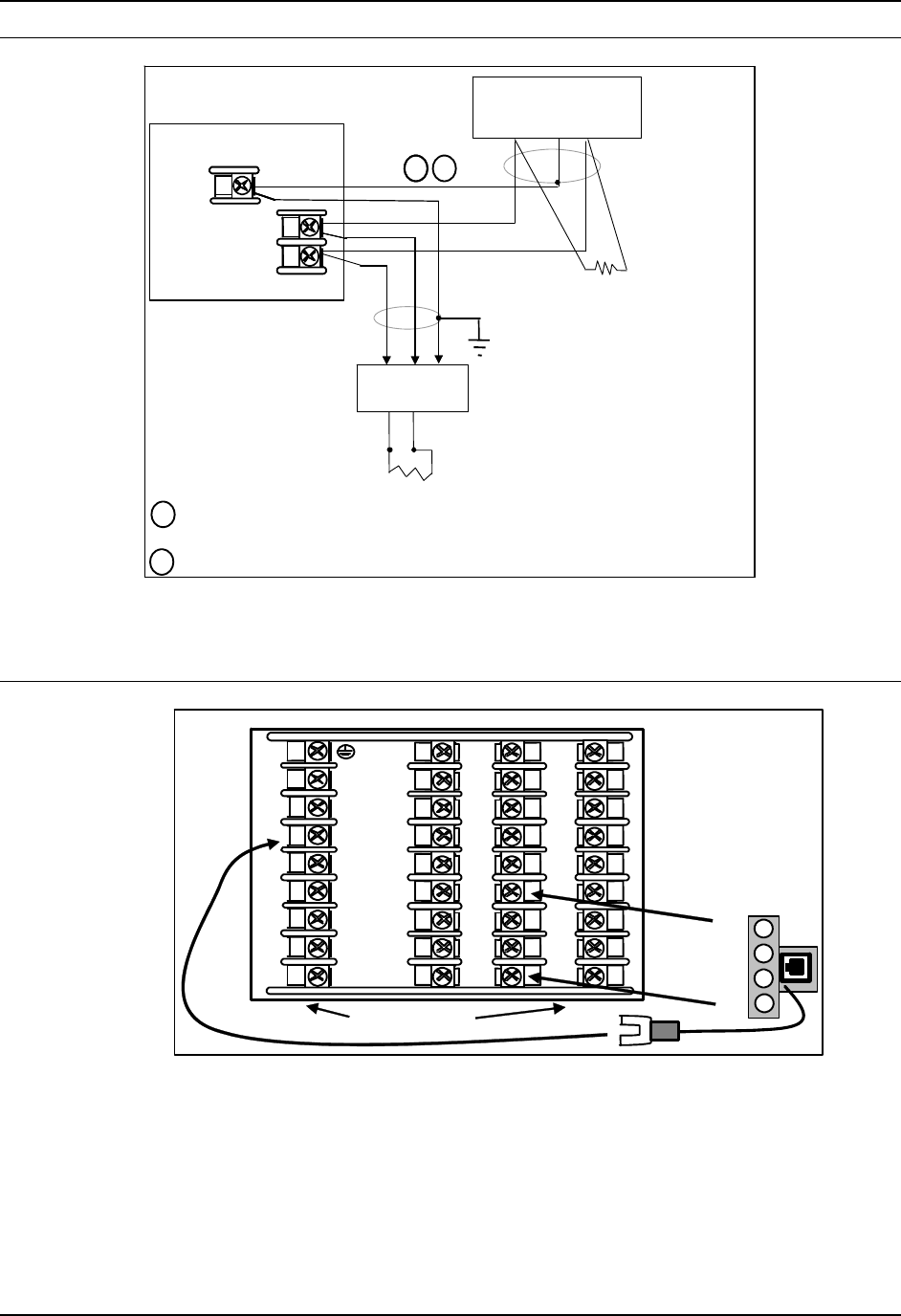
Installation
1
Do not run the communications lines in the same conduit as AC power.
D–
D+
COMMUNICATION MASTER
D+ (B)
SHLD D– (A)
120 OHMS
TO OTHER
COMMUNICATION
CONTROLLERS
D+D–
120 OHMS ON LAST LEG
Connect shield
to ground at one
end only.
SHLD
2
Use shielded twisted pair cables (Belden 9271 Twinax or equivalent).
2
1
26 D+ (B)
27 D– (A)
4 SHLD
UDC3500
Maximum Distance 4000 feet.
1
Do not run the communications lines in the same conduit as AC power.
D–
D+
COMMUNICATION MASTER
D+ (B)
SHLD D– (A)
120 OHMS
TO OTHER
COMMUNICATION
CONTROLLERS
D+D–
120 OHMS ON LAST LEG
Connect shield
to ground at one
end only.
SHLD
2
Use shielded twisted pair cables (Belden 9271 Twinax or equivalent).
2
1
26 D+ (B)
27 D– (A)
4 SHLD
UDC3500
1
26 D+ (B)
27 D– (A)
4 SHLD
UDC3500
26 D+ (B)
27 D– (A)
4 SHLD4 SHLD
UDC3500
Maximum Distance 4000 feet.
Figure 2-20 RS-422/485 Communications Option Connections
RS-422/485 connections must be “daisy-chained,” T-drop connections are not allowed.
Ethernet
Adaptor
Ethernet
Cable To
Hub or
4
5
6
7
8
10
11
12
13
14
15
16
17
L1
L2/N
22
23
24
25
26
27
18
19
20
21
31
32
33
34
35
36
28
29
30
24
27
9
Tie Wraps (2)
Figure 2-21 Ethernet Communications Option with Adaptor Board
Instruments equipped with the Ethernet Communications Option come with an Ethernet
Adaptor Kit. To use this kit, first remove the four screws on your instrument from
Terminal Block positions 24 through 27. Place the Ethernet Adaptor Board on to the
terminal block as shown and then secure it in place with the four long screws provided in
the kit. Route the long wire on the Ethernet Adaptor Board over to Terminal #4 on your
instrument. The RJ-45 connector on the Ethernet Adaptor Board will allow you to use a
March 2012 UDC3500 Universal Digital Controller Product Manual 39
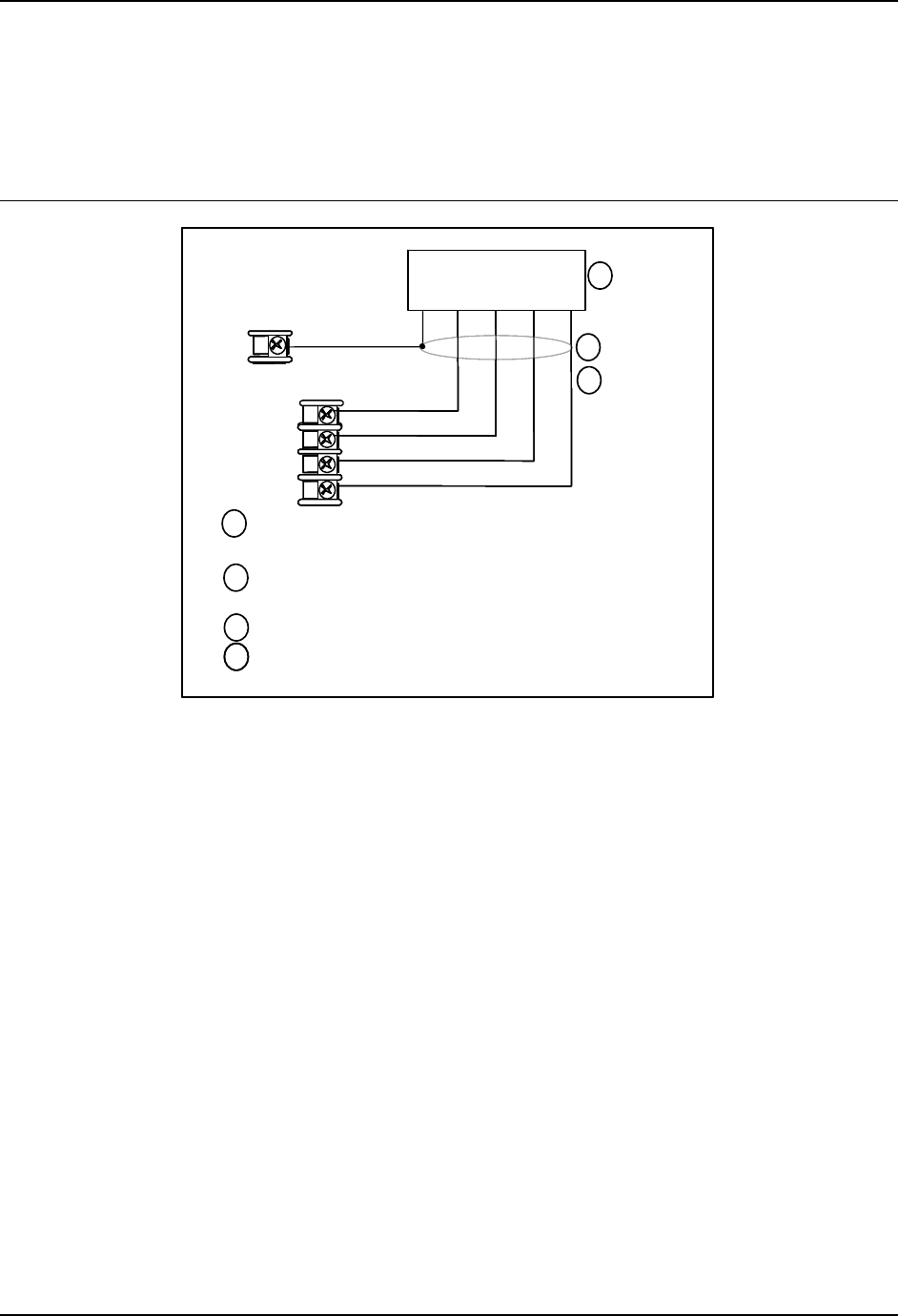
Installation
straight-through cable to connect the controller to a MDI Compliant Hub or Switch.
Alternatively, you may use a crossover cable to connect your controller directly to a PC,
which is useful for commissioning purposes. Use only Category 5 (STP CAT5) shielded
twisted-pair Ethernet cables. For strain relief, secure your Ethernet cable to the controller
with the tie wraps included in the kit using the holes in the bottom controller flange.
26 TXD +
4 SHLD
3
25 RXD -
24 RXD +
Do not run the communications lines in the same conduit as AC
power. Direct connection to a PC may require the use of an
Ethernet cross-over cable.
COMMUNICATION MASTER
RXD +
27 TXD -
Use Shielded twisted-pair, Category 5 (STP CAT5) Ethernet cable.
Use Switch rather than Hub to maximize performance.
RXD -
TXD +TXD -SHLD
2
1
3
1
2
4
Ethernet Communications is mutually exclusive with the Second Current
Output.
Maximum Distance 330 Ft.
26 TXD +
4 SHLD
3
25 RXD -
24 RXD +
Do not run the communications lines in the same conduit as AC
power. Direct connection to a PC may require the use of an
Ethernet cross-over cable.
COMMUNICATION MASTER
RXD +
27 TXD -
Use Shielded twisted-pair, Category 5 (STP CAT5) Ethernet cable.
Use Switch rather than Hub to maximize performance.
RXD -
TXD +TXD -SHLD
2
1
3
1
2
4
Ethernet Communications is mutually exclusive with the Second Current
Output.
4
Ethernet Communications is mutually exclusive with the Second Current
Output.
Maximum Distance 330 Ft.
Figure 2-22 Ethernet Communications Option without Adaptor Board
If you would rather wire your UDC to your Ethernet connection without using the
Ethernet Adaptor Board, then Figure 2-22 and Table 2-8 show the connections for a
UDC to a MDI Compliant Hub or Switch utilizing a straight-through cable or for
connecting a UDC to a PC utilizing a crossover cable.
40 UDC3500 Universal Digital Controller Product Manual March 2012
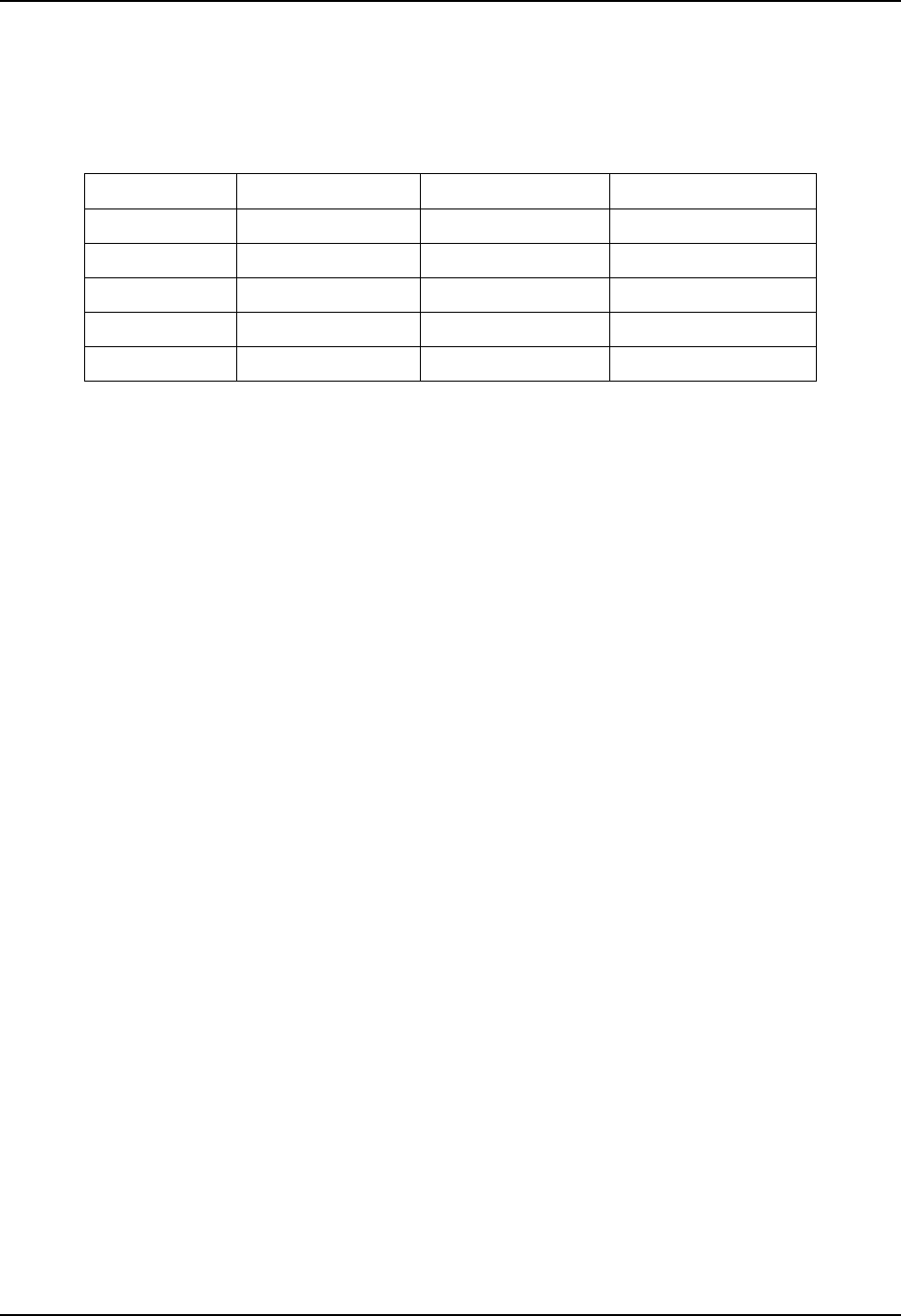
Installation
Table 2-9 shows the connections for a UDC to a PC utilizing a straight-through cable
(wiring the UDC cable this way makes the necessary cross-over connections).
Table 2-8 Terminals for connecting a UDC to a MDI Compliant Hub or
Switch utilizing a cross-over cable
UDC Terminal UDC Signal Name RJ45 Socket Pin # Switch Signal Name
Position 4 Shield Shield Shield
Position 24 RXD- 6 TXD-
Position 25 RXD+ 3 TXD+
Position 26 TXD- 2 RXD-
Position 27 TXD+ 1 RXD+
March 2012 UDC3500 Universal Digital Controller Product Manual 41
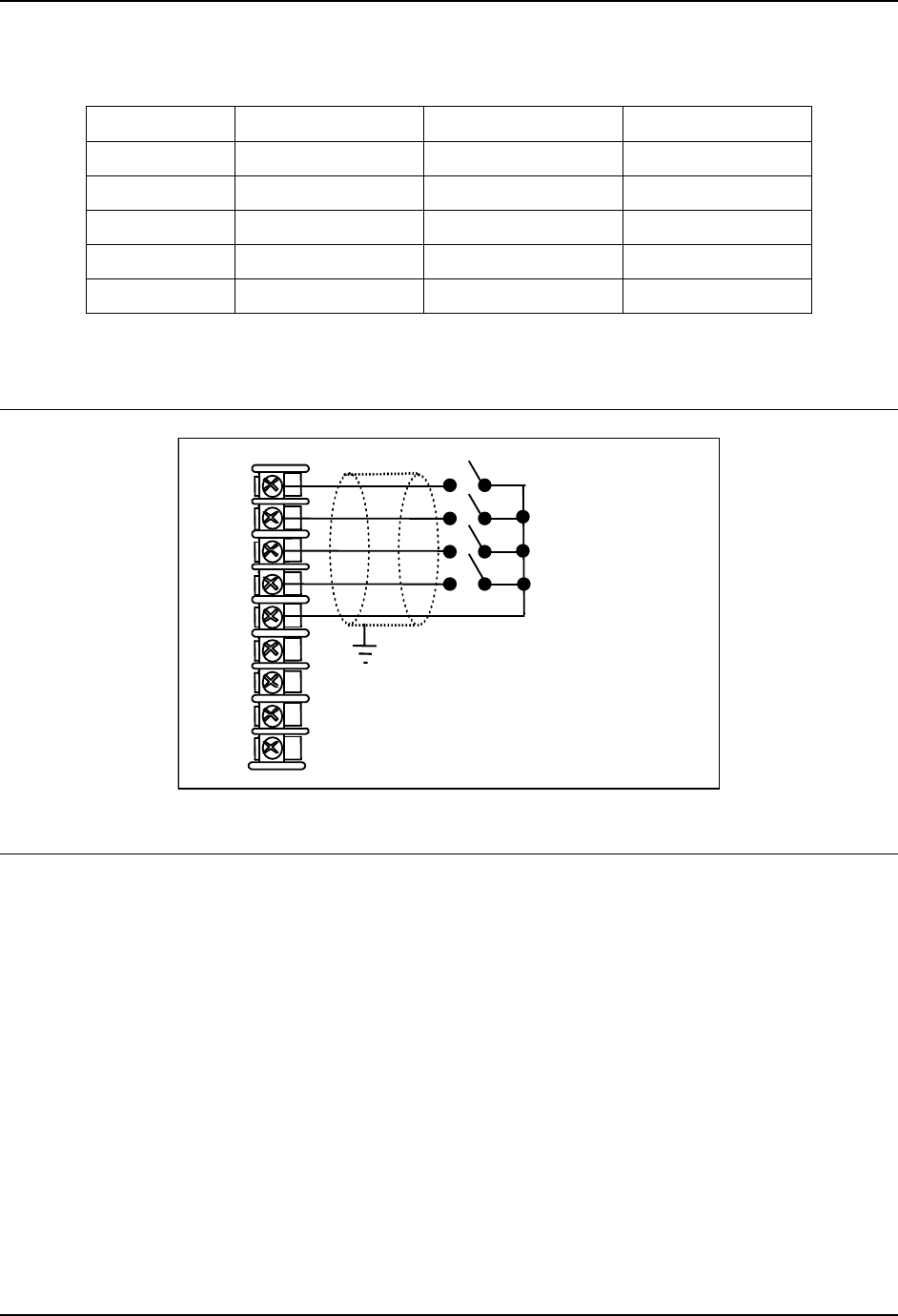
Installation
Table 2-9 Terminals for connecting a UDC directly to a PC utilizing a straight-
through cable
UDC Terminal UDC Signal Name RJ45 Socket Pin # PC Signal Name
Position 4 Shield Shield Shield
Position 24 RXD- 2 TXD-
Position 25 RXD+ 1 TXD+
Position 26 TXD- 6 RXD-
Position 27 TXD+ 3 RXD+
Use only Category 5 (STP CAT5) shielded twisted-pair Ethernet cables.
Connect shield
to ground at one
end only.
_
Digital Input #1
+
Digital Input #2
+
Digital Input #3
+
Digital Input #4
+
19
20
21
22
23
24
25
26
27
Figure 2-23 Digital Inputs
42 UDC3500 Universal Digital Controller Product Manual March 2012
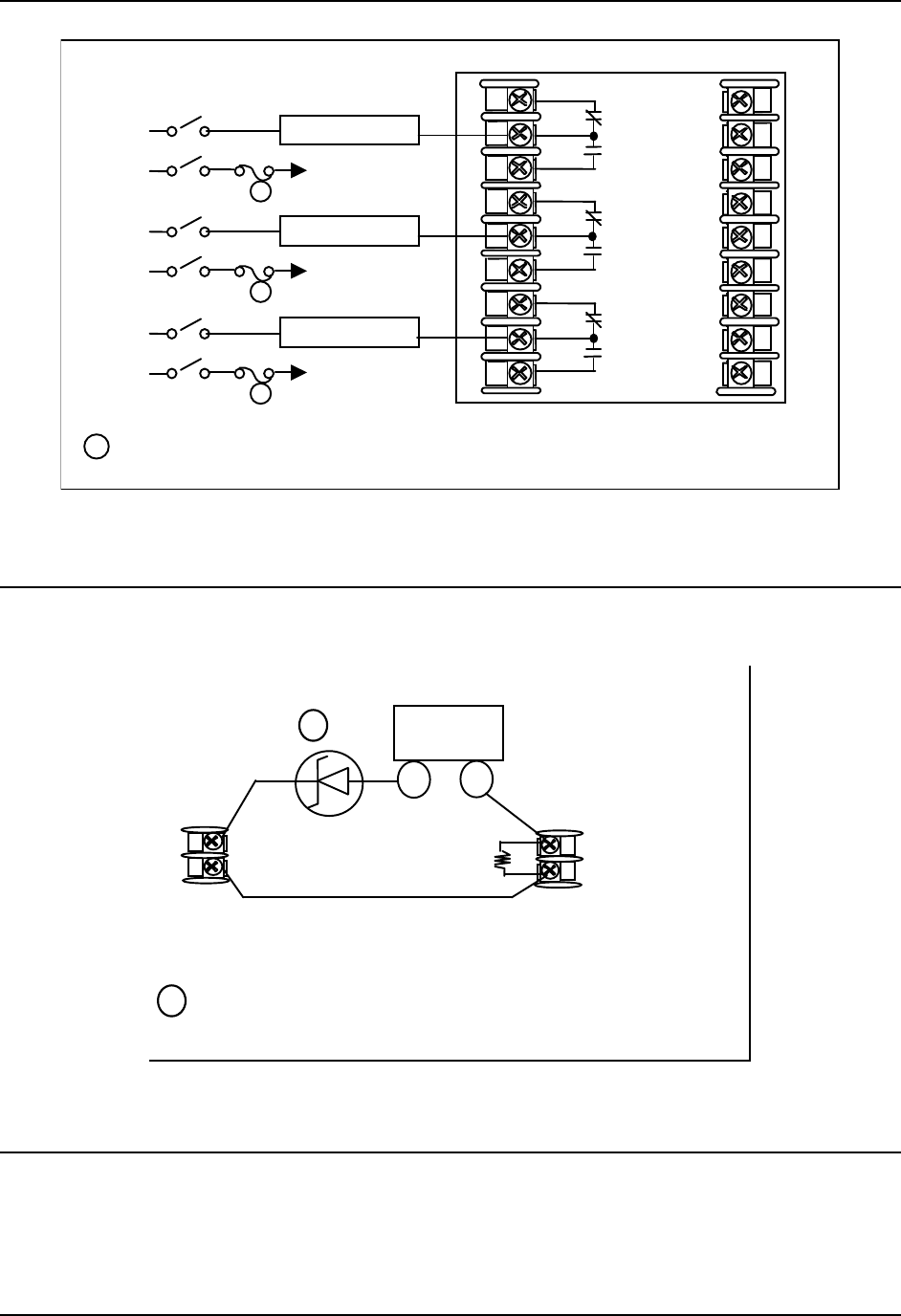
Installation
March 2012 UDC3500 Universal Digital Controller Product Manual 43
1
Electromechanical relays are rated at 5 Amps @ 120 Vac or 240 Vac or 30 Vdc. Size fuses
accordingly. Use only Fast-Blo fuze types.
To terminal
16 (N.C.) or 18 (N.O.)
Relay #5 Load
1
Load
Supply
Power
28
29
30
31
32
33
34
35
36
N.C.
N.O.
11
12
13
14
16
17
18
15
10
To terminal
13 (N.C.) or 15 (N.O.)
Relay #4 Load
1
Load
Supply
Power
N.C.
N.O.
To terminal
10 (N.C.) or 12 (N.O.)
Relay #3 Load
1
Load
Supply
Power
N.C.
N.O.
Relay #3
Relay #4
Relay #5
Figure 2-24 Optional Electromechanical Relay Outputs
See Table 2-6 and Table 2-7 for other information about output types.
Configure:
A
4S1TY = NONE
A
4S2TY = NONE
2 Wire Transmitter
_
+
Input 1
A
larm 4
250
35 +
36 -
8 +
9 -
If necessary, install a zener diode here to reduce voltage at the
transmitter. A 1N4733 will reduce the voltage at the transmitter to
approximately 25 Vdc.
1
1
Figure 2-25 Transmitter Power for 4-20 mA — 2 wire Transmitter Using Open
Collector Output
Configure:
A4S1TY = DEV
A4S1VAL = 9999
A4S1HL = HIGH
A4S2TY = NONE
OUTALG = CURRENT
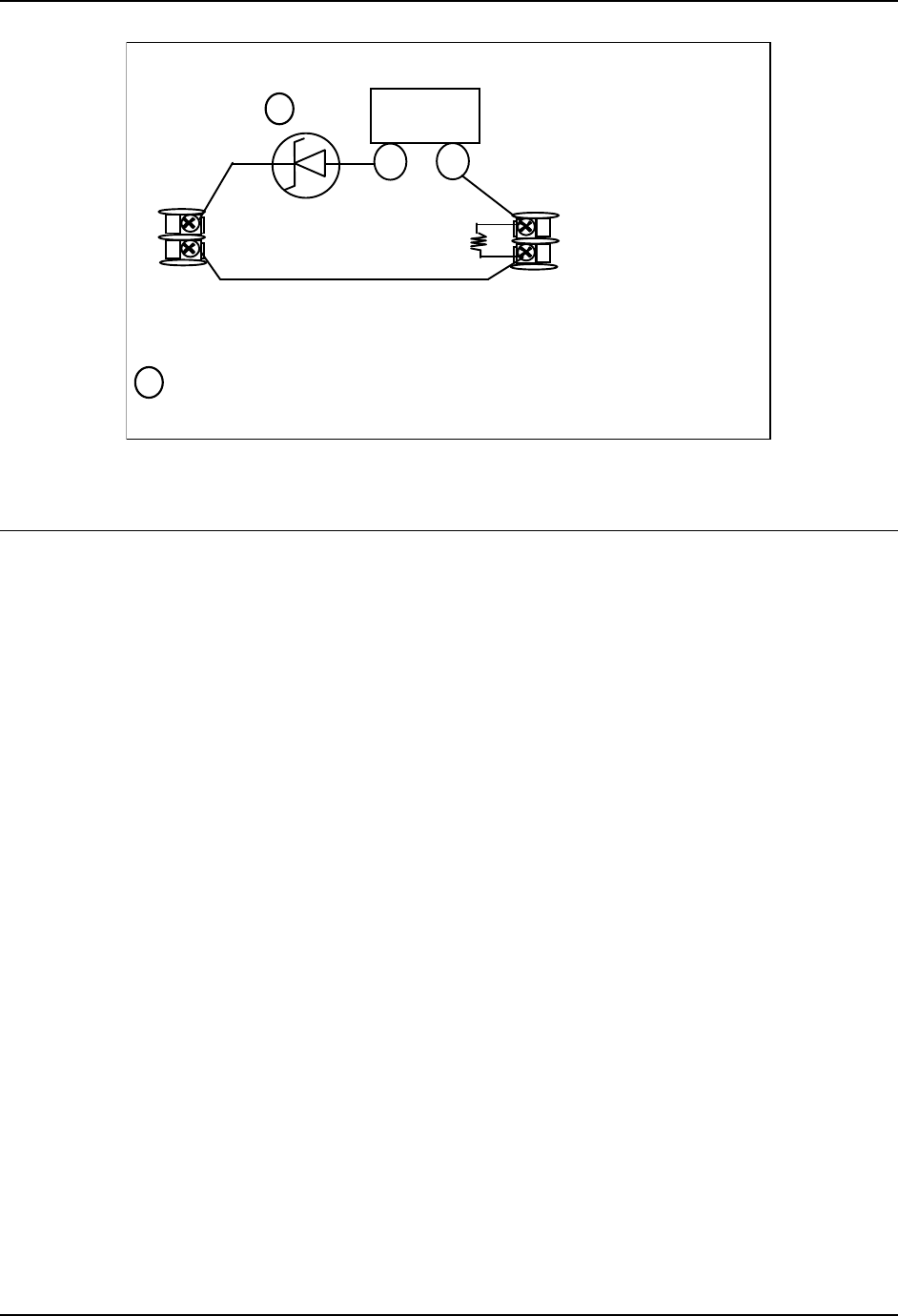
Installation
2 Wire Transmitter
_
+
Input #1
Second Current Output
250
35 +
36 -
24 +
25 -
Configure:
CUROUT2 = OUT
Current Output #2 Calibration
ZEROVAL = 16383
SPANVAL = 16383
If necessary, install a zener diode here to reduce voltage at the
transmitter. A 1N4733 will reduce the voltage at the transmitter to
approximately 25 Vdc.
1
1
Figure 2-26 Transmitter Power for 4-20 mA — 2 Wire Transmitter Using Second
Current Output
44 UDC3500 Universal Digital Controller Product Manual March 2012
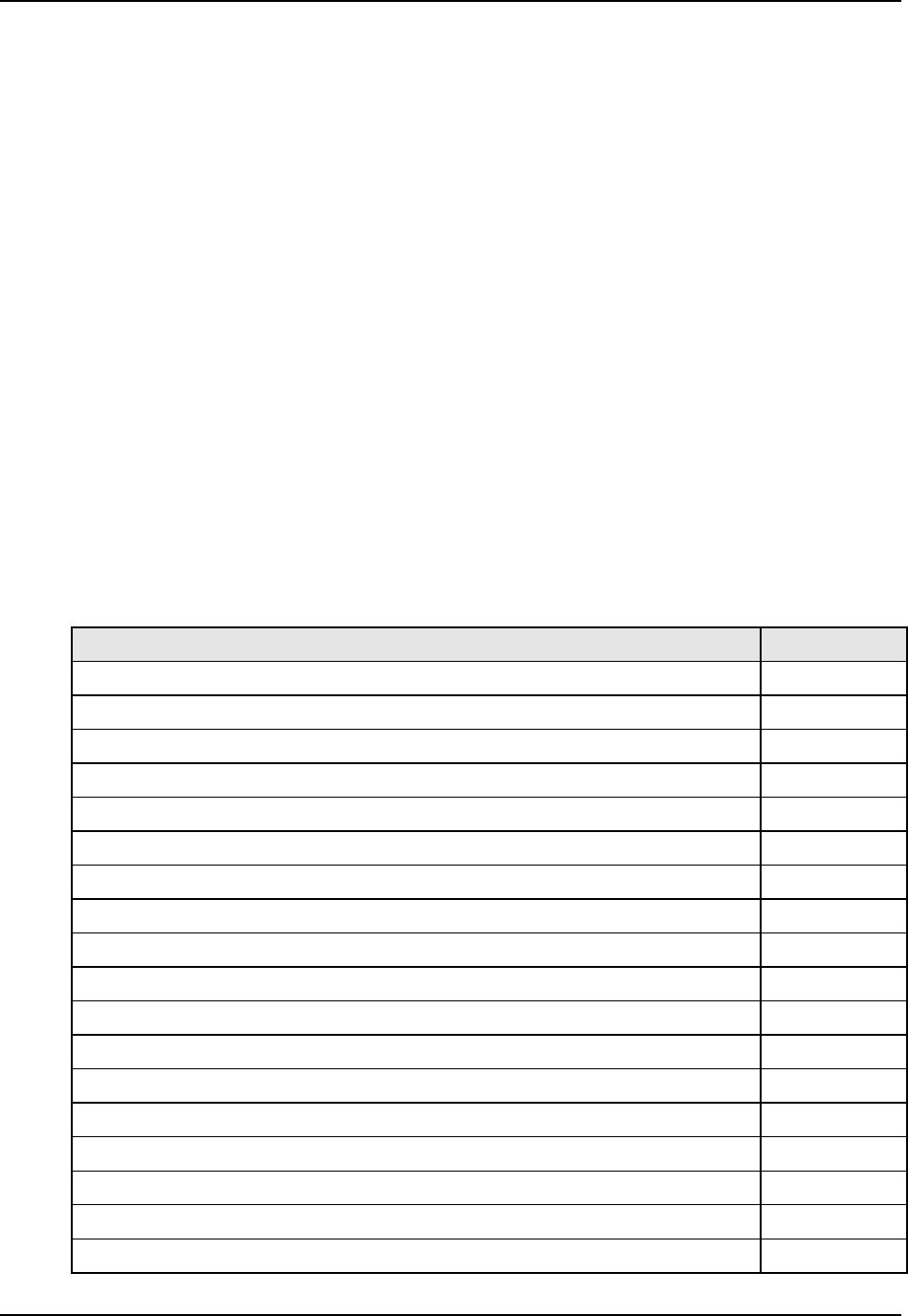
Configuration
3 Configuration
3.1 Overview
Introduction
Configuration is a dedicated operation where you use straightforward keystroke
sequences to select and establish (configure) pertinent control data best suited for your
application.
To assist you in the configuration process, there are prompts that appear in the upper and
lower displays. These prompts let you know what group of configuration data (Set Up
prompts) you are working with and also, the specific parameters (Function prompts)
associated with each group.
Table 3-1 shows an overview of the prompt hierarchy as it appears in the controller.
What’s in this section?
The following topics are covered in this section.
Table 3-1 Configuration Topics
TOPIC See Page
3.1 Overview 45
3.2 Configuration Prompt Hierarchy 47
3.3 Configuration Procedure 51
3.4 Loop 1 Tuning Set Up Group 52
3.5 Loop 2 Tuning Set Up Group 56
3.6 SP Ramp Set Up Group 59
3.7 SP Program 2 Set Up Group 65
3.8 SP Program 3 Set Up Group 68
3.9 SP Program 4 Set Up Group 71
3.10 Accutune Set Up Group 74
3.11 Algorithm Set Up Group 79
3.12 Math Set Up Group 94
3.13 Logic Gates Set Up Group 100
3.14 Output Set Up Group 107
3.15 Input 1 Set Up Group 118
3.16 Input 2 Set Up Group 122
3.17 Input 3 Set Up Group 125
3.18 Input 4 Set Up Group 128
March 2012 UDC3500 Universal Digital Controller Product Manual 45
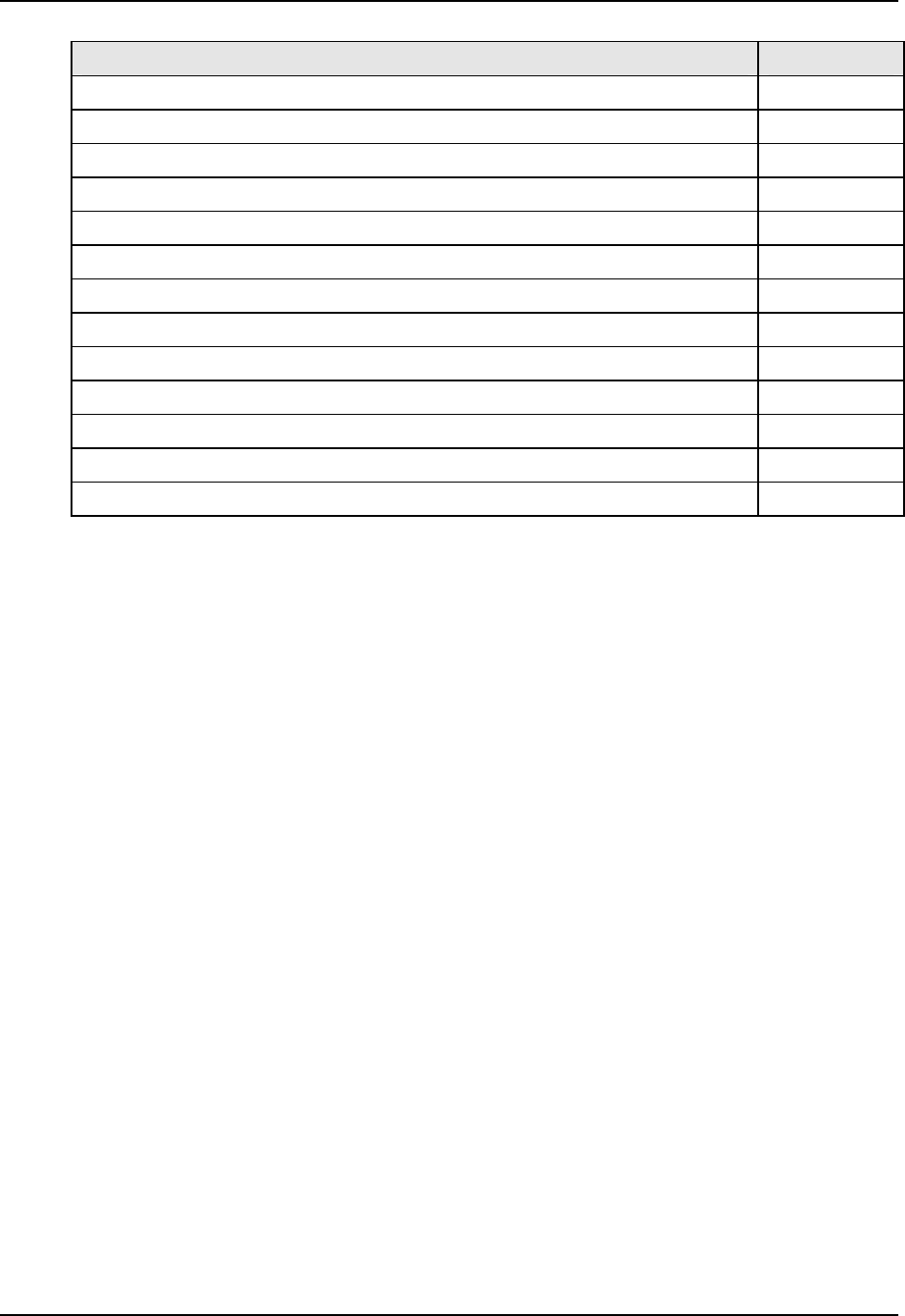
Configuration
46 UDC3500 Universal Digital Controller Product Manual March 2012
TOPIC See Page
3.19 Input 5 Set Up Group 131
3.20 Control Set Up Group 134
3.21 Control 2 Set Up Group 143
3.22 Options Set Up Group 150
3.23 Communications Set Up Group 162
3.24 Alarms Set Up Group 166
3.25 Real Time Clock Set Up Group 174
3.26 Maintenance Set Up Group 175
3.27 Display Set Up Group 178
3.28 Read Maintenance Set Up Group 180
3.29 Time Events Set Up Group 181
3.30 P.I.E. Tool Ethernet and Email Configuration Screens 183
3.31 Configuration Record Sheet 186
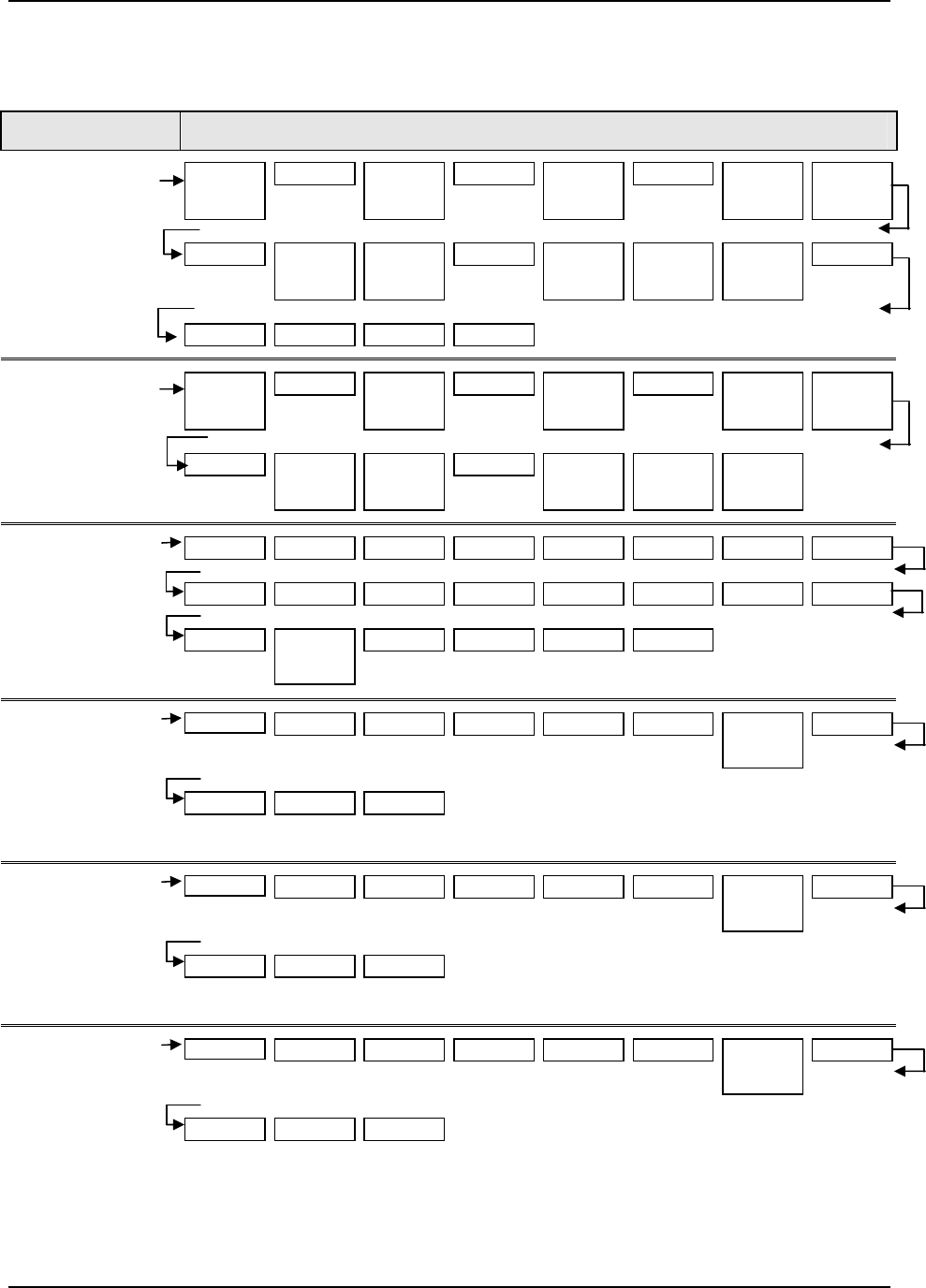
Configuration
3.2 Configuration Prompt Hierarchy
Table 3-2 Configuration Prompt Hierarchy
Set Up Group Function Prompts
TUNING
PROP BD
or
GAIN
RATE MIN RSET MIN
or
RSET RPM
MAN RSET PROPBD2
or
GAIN 2
RATE2MIN RSET2MIN
or
RSET2RPM
PROPBD3
or
GAIN 3
RATE3MIN RSET3MIN
or
RSET3RPM
PROPBD4
or
GAIN 4
RATE4MIN RSET4MIN
or
RSET4RPM
CYC SEC
or
CYC SX3
CYC2 SEC
or
CYC2 SX3
SECURITY
LOCKOUT AUTO MAN RUN HOLD SP SEL
TUNING 2
PROP BD5
or
GAIN5
RATE5MIN RSET5MIN
or
RSET5RPM
MAN RSET PROPBD6
or
GAIN 6
RATE6MIN RSET6MIN
or
RSET6RPM
PROPBD7
or
GAIN 7
RATE7MIN
RSET7MIN
or
RSET7RPM
PROPBD8
or
GAIN 8
RATE8MIN RSET8MIN
or
RSET8RPM
CYC5 SEC
or
CYC5 SX3
CYC6 SEC
or
CYC6 SX3
SPRAMP
SP RAMP TIME MIN FINAL SP HOTSTART SP RATE EU/HR UP EU/HR DN SP PROG
STRT SEG END SEG RAMPUNIT RECYCLES PROG END STATE POWER UP KEYRESET
HOTSTART
* x = 1 to 20. Program
concludes after
Segment 20
SEGxRAMP
or
SEGxRATE*
SEG x PID* SEGx SP* SEGxTIME* SOAKxDEV
SP PROG2
PROGRAM2
STRT SEG END SEG RAMPUNIT RECYCLES HOTSTART
SEGxRAMP
or
SEGxRATE*
SEG x PID*
SEGx SP* SEGxTIME* SOAKxDEV
* x = 1 to 20. Program
concludes after
Segment 20
SP PROG3
PROGRAM3
STRT SEG END SEG RAMPUNIT RECYCLES HOTSTART
SEGxRAMP
or
SEGxRATE*
SEG x PID*
SEGx SP* SEGxTIME* SOAKxDEV
* x = 1 to 20. Program
concludes after
Segment 20
SP PROG4
PROGRAM4
STRT SEG END SEG RAMPUNIT RECYCLES HOTSTART
SEGxRAMP
or
SEGxRATE*
SEG x PID*
SEGx SP* SEGxTIME* SOAKxDEV
* x = 1 to 20. Program
concludes after
Segment 20
March 2012 UDC3500 Universal Digital Controller Product Manual 47
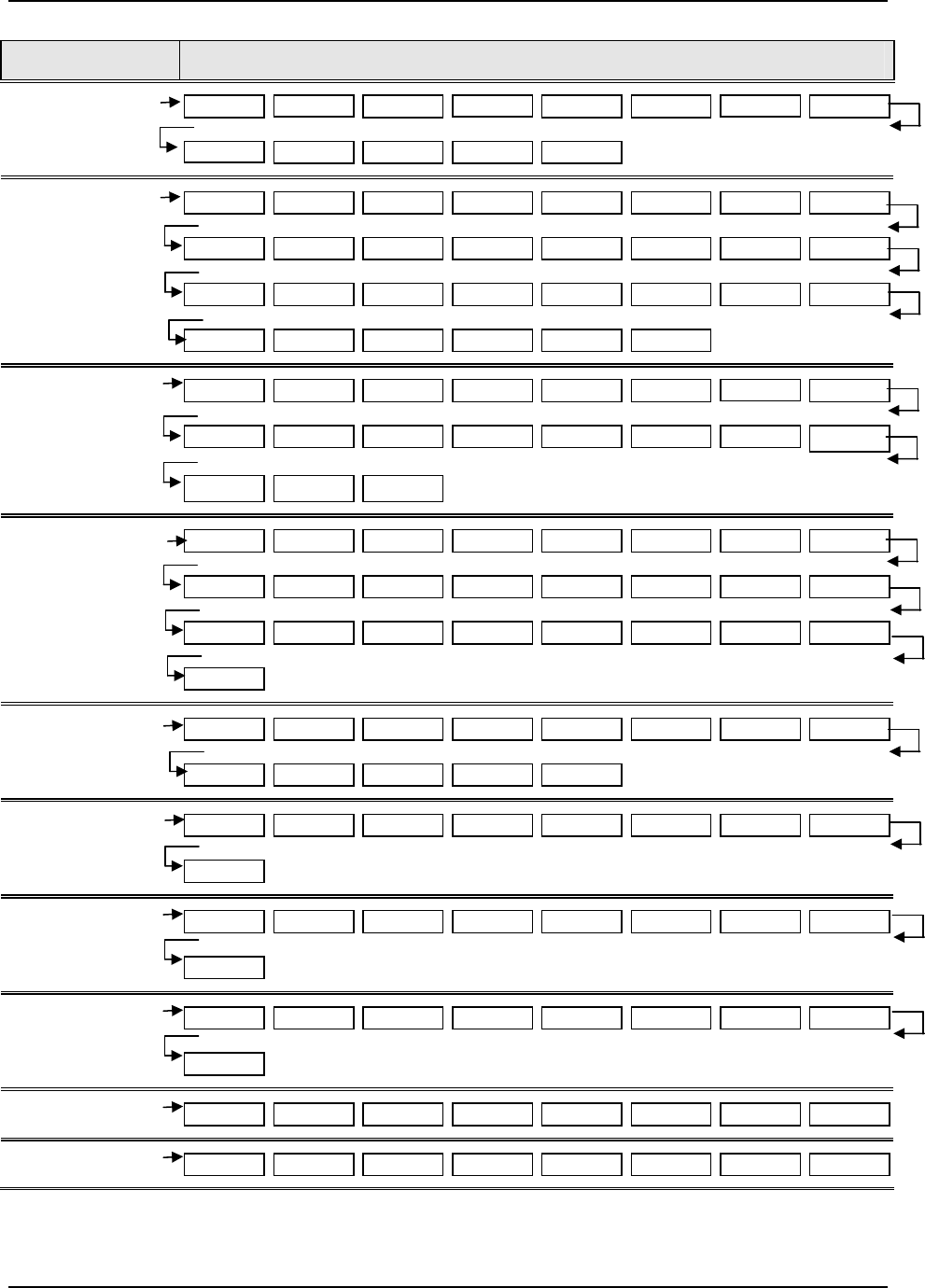
Configuration
48 UDC3500 Universal Digital Controller Product Manual March 2012
Set Up Group Function Prompts
ACCUTUNE
FUZZY
ACCUTUNE
DUPLEX
SP CHANGE
KPG CRITERIA
ACCUTUN2
DUPLEX
SP CHANG2
KPG2 CRITERIA2 AT ERROR AT ERR 2
ALGORTHM
CONT ALG PIDLOOPS CONT2ALG OUT OVRD TIMER PERIOD START LWR DISP
RESET INCRMENT INALG 1 MATH K CALC HI CALC LO ALG1 INA ALG1 INB
ALG1 INC PCO SEL PCT CO PCT H2 ATM PRES ALG1 BIAS INALG 2 MATH K2
CALC HI CALC LO ALG2 INA ALG2 INB ALG2 INC ALG2 BIAS
MATH
8 SEG CH1 Xn VALUE Yn VALUE 8 SEG CH2 Xn VALUE Yn VALUE
TOTALIZE
ΣXXXXXXX
TOT SCAL TOT SCR Σ RESET? TOT RATE POLYNOM C0 VALUE C1 VALUE
C2 X 10
-1
C2 X 10
-3
C2 X 10
-4
C2 X 10
-5
LOGIC
LOG GATE GATE1TYP GATE1INA GATE1 K GATE1INB GATE1OUT GATE2TYP GATE2 K
GATE2INB GATE2OUT GATE3TYP GATE3INA GATE3 K GATE3INB GATE3OUT GATE4TYP
GATE4INA GATE4 K GATE4INB GATE4OUT GATE5TYP GATE5INA GATE5 K GATE5INB
GATE5OUT
OUTPUT
OUT ALG OUT RNG C1 RANGE RLYSTATE RLY TYPE MOTOR TI OUT2 ALG OUT2 RNG
C3 RANGE RLYSTAT2 CUR OUT1 LOW VAL HIGH VAL
INPUT1
IN1 TYPE XMITTER1 IN1 HIGH IN1 LOW RATIO 1 BIAS IN1 FILTER 1 BURNOUT1
EMISSIV1
INPUT2
IN2 TYPE XMITTER2 IN2 HIGH IN2 LOW RATIO 2 BIAS IN2 FILTER 2 BURNOUT2
EMISSIV2
INPUT3
IN3 TYPE XMITTER3 IN3 HIGH IN3 LOW RATIO 3 BIAS IN3 FILTER 3 BURNOUT3
EMISSIV3
INPUT4
IN4 TYPE XMITTER4 IN4 HIGH IN4 LOW RATIO 4 BIAS IN4 FILTER 4 BURNOUT4
INPUT5
IN5 TYPE XMITTER5 IN5 HIGH IN5 LOW RATIO 5 BIAS IN5 FILTER 5 BURNOUT5
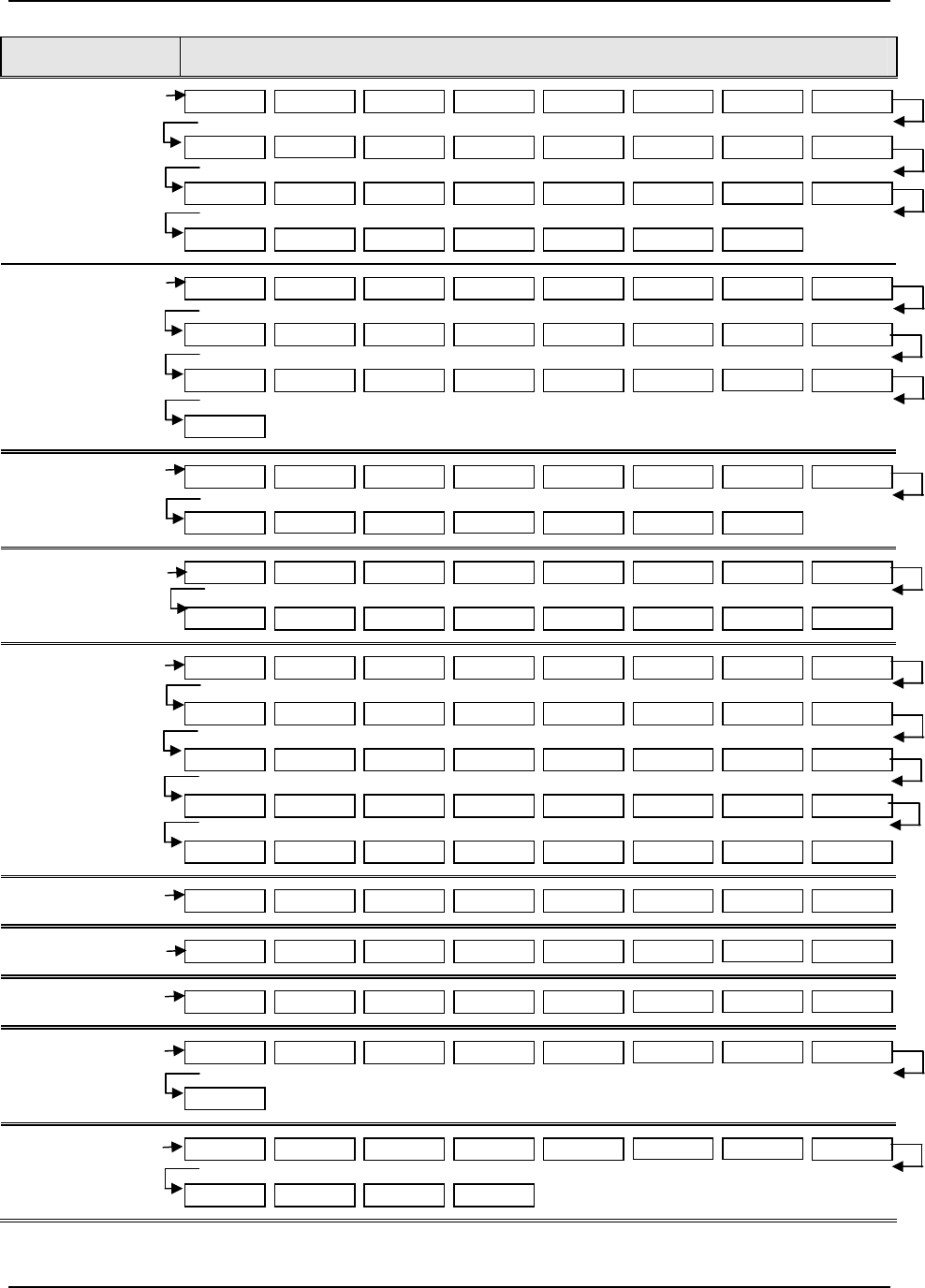
Configuration
Set Up Group Function Prompts
CONTROL
PV SOURC PID SETS SW VAL12 SW VAL23 SW VAL34 LSP’S RSP SRC AUTOBIAS
SP TRACK
PWR MODE
PWR OUT SP HiLIM SP LoLIM ACTION OUT RATE PCT/M UP
PCT/M DN OUTHiLIM OUTLoLIM I Hi LIM I Lo LIM DROPOFF
DEADBAND
OUT HYST
FAILMODE
FAILSAFE SW FAIL MAN OUT AUTO OUT PBorGAIN MINorRPM
CONTROL2
PV 2SRC LINK LPS PID SETS SW VAL 12 SW VAL23 SW VAL34 LSP’S RSP SRC
AUTOBIAS SP TRACK PWRMODE SP HiLIM SP LoLIM ACTION OUT RATE PCT/M UP
PCT/M DN OUTHiLIM OUTLoLIM I Hi LIM I Lo LIM DROPOFF
DEADBAND
FAILMODE
FAILSAFE
OPTIONS
CUR OUT2 C2RANGE HIGH VAL LOW VAL CUR OUT3 C3RANGE LOW VAL HIGH VAL
DIG1 INP
DIG1 COMB
DIG INP2
DIG2 COMB
DIG INP3 DIG INP4 Dion LP2
COM
Com ADDR ComSTATE IR ENABLE BAUD TX DELAY WSFLOAT SHEDENAB SHEDTIME
SHEDMODE
SHEDSP UNITS CSP RATO CSP BIAS CSP2RATO CSP2BIAS
LOOPBACK
ALARMS
A1S1TYPE A1S1 VAL A1S1 H L A1S1 EV A1S2 TYPE A1S2 VAL A1S2 H L A1S2 EV
A2S1TYPE A2S1 VAL ALHYST1 A2S1 H L A2S1 EV A2S2TYPE A2S2 VAL A2S2 H L
A2S2 EV ALHYST2 A3S1TYPE A3S1 VAL A3S1 H L A3S1 EV A3S2TYPE A3S2 VAL
A3S2 H L A3S2 EV ALHYST3 A4S1TYPE A4S1 VAL A4S1 H L A4S1 EV A4S2TYPE
A4S2 VAL A4S2 H L A4S2 EV ALHYST4 ALM OUT1 BLOCK DIAGNOST ALRM MSG
CLOCK
HOURS MINUTES SECONDS YEAR MONTH DAY SET CLK? ADJUST
MAINTNCE
TIME 1 TIME 2 TIME 3 COUNT 1 COUNT 2 COUNT 3
PASSWORD
RES TYPE
DISPLAY
DECIMAL DECIMAL2 TEMPUNIT PWR FREQ RATIO 2
LANGUAGE TC DIAGN IDNUMBER
READ
DAYS 1 HRS:MIN1 DAYS 2 HRS:MIN2 DAYS 3
HRS:MIN3 COUNTS 1 COUNTS 2
MAINTNCE
COUNTS 3
TIME
EVENT 1 TIME 1 HOUR 1 MINUTE 1 MONTH 1
DAY 1 EVENT 2
TIME 2
EVENT
HOUR 2
MINUTE2 MONTH 2 DAY 2
March 2012 UDC3500 Universal Digital Controller Product Manual 49
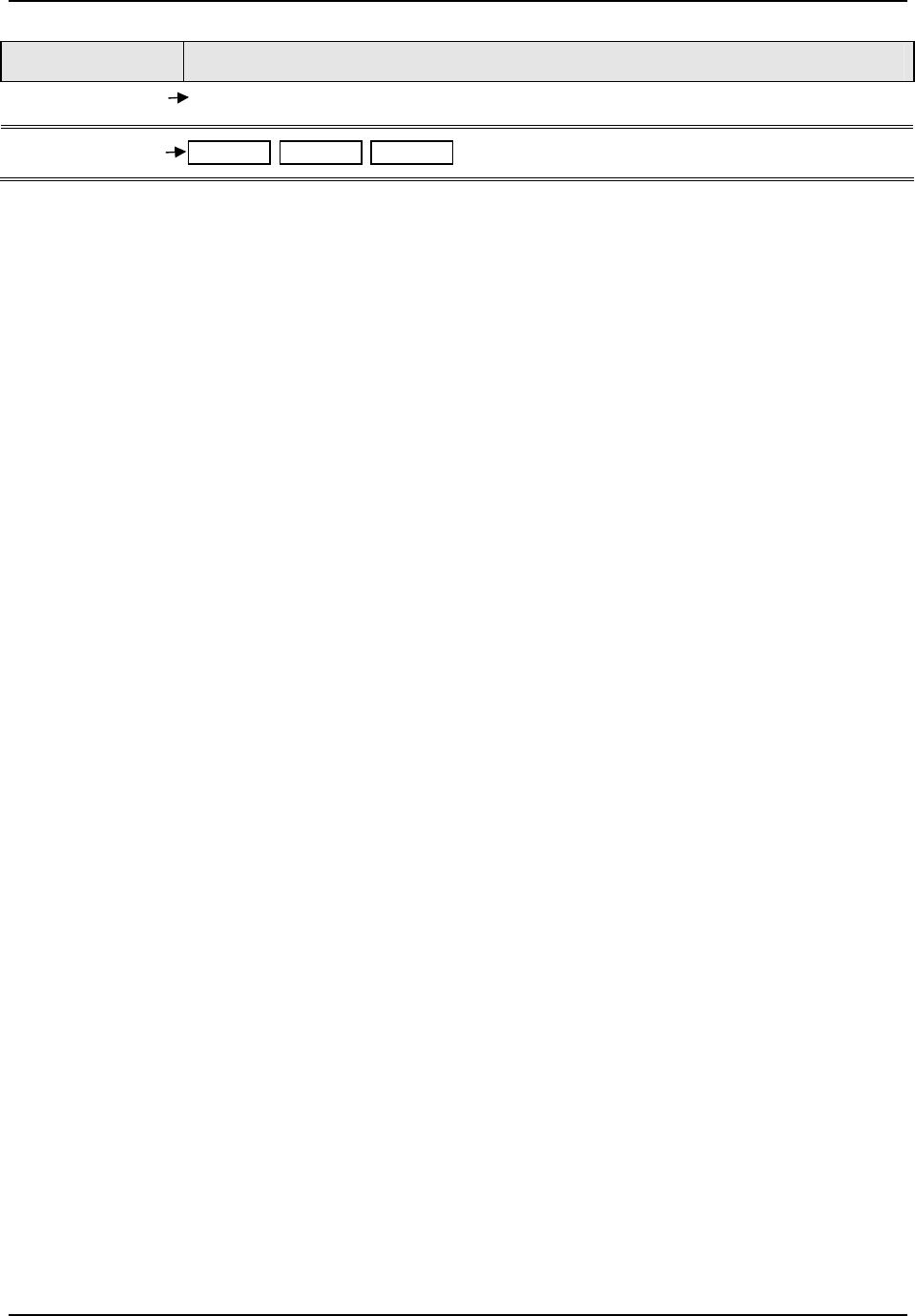
Configuration
Set Up Group Function Prompts
CALIB
USED FOR FIELD CALIBRATION
STATUS
VERSION FAILSAFE TESTS
50 UDC3500 Universal Digital Controller Product Manual March 2012
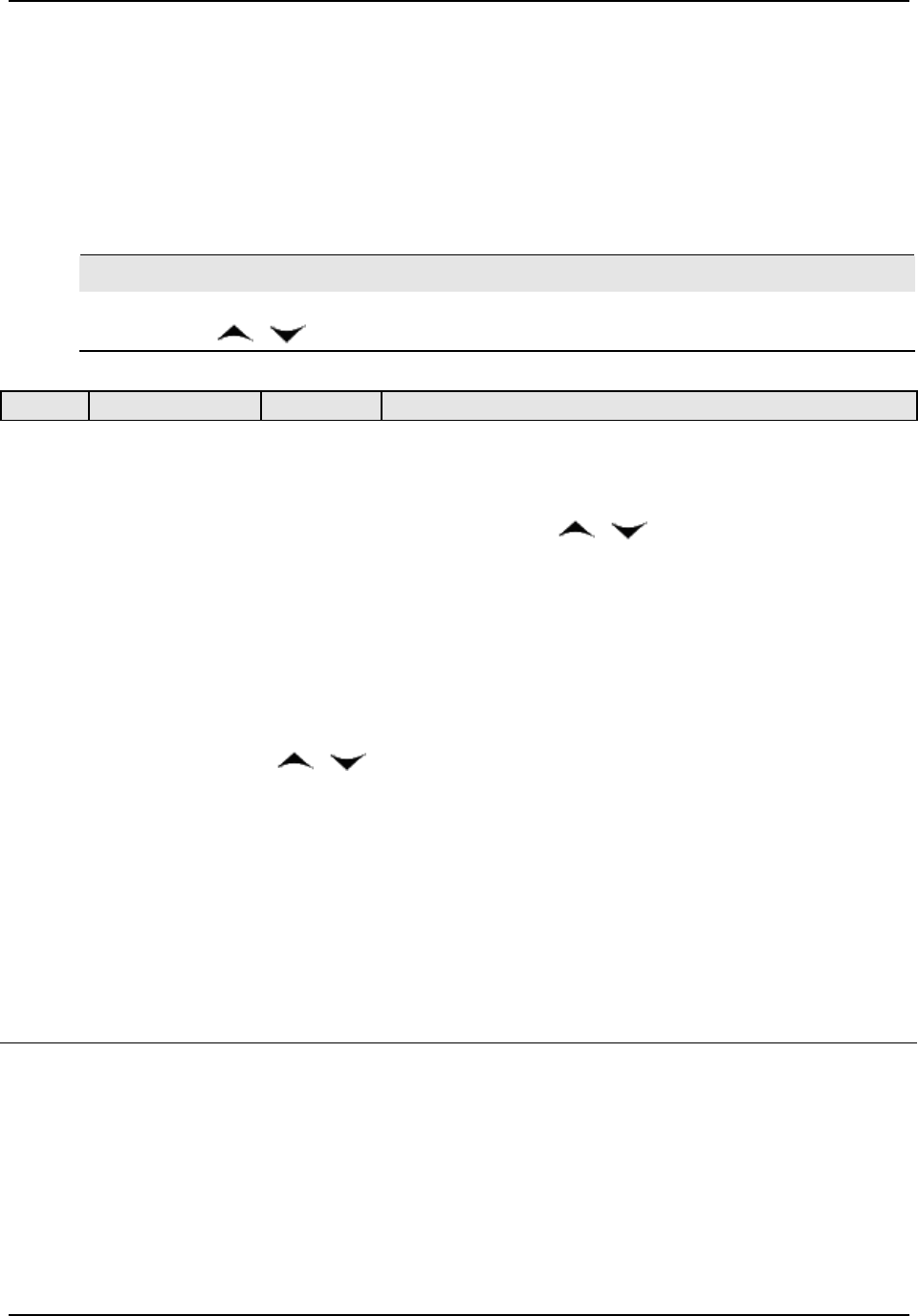
Configuration
3.3 Configuration Procedure
Introduction
Each of the Set Up groups and their functions are pre-configured at the factory.
The factory settings are shown in Table 3-4 through Table 3-24. If you want to change
any of these selections or values, follow the procedure in Table 3-3. This procedure tells
you the keys to press to get to any Set Up group and any associated Function prompt.
Procedure
ATTENTION
The prompting scrolls at a rate of one group every 2/3 seconds when the SET UP or FUNC/LOOP 1/2 key
is held in. Also, or keys will move group prompts forward or backward twice as fast.
Table 3-3 Configuration Procedure
Step Operation Press Result
1
Enter Set Up Mode
Set Up Upper Display = SETUP
Lower Display = TUNING (This is the first Set Up Group title)
Sequentially
display
s the other Set Up group titles shown in the
prompt hierarchy in Table 3-2 Configuration Prompt Hierarchy.
You can also use the
or keys to scan the Set Up groups
in both directions. Stop at the Set Up group title that describes the
group of parameters you want to configure. Then proceed to the
next step.
2
Select any
Set Up
Group
Set Up
3
Select a F
unction
Parameter
Func
Upper Display = the current value or selection for the first function
prompt of the selected Set Up group.
Lower Display = the first Function prompt within that Set Up group.
Sequentially displays the other function prompts of the Set Up
group you have selected. Stop at the function prompt that you want
to change, then proceed to the next step.
4
Change the Value
or Selection
or
Increments or decrements the value or selection that appears for
the selected function prompt. If you change the value or selection of
a parameter while in Set Up mode but then decide not to enter it,
press the Man/Auto key once. This will recall the original
configuration. This “recall” procedure does not work for a Field
Calibration process. Field Calibration is a one-way operation.
Enters value or selection made into memory after another key is
pressed.
5
Enter the Value or
Selection
Func
6
Exit Configuration
Lower
Display
Exits configuration mode and returns controller to the same state it
was in immediately preceding entry into the Set Up mode. It stores
any changes you have made.
If you do not press any keys for 30 seconds, the controller times out
and reverts to the mode and associated display used prior to entry
into Set Up mode.
March 2012 UDC3500 Universal Digital Controller Product Manual 51
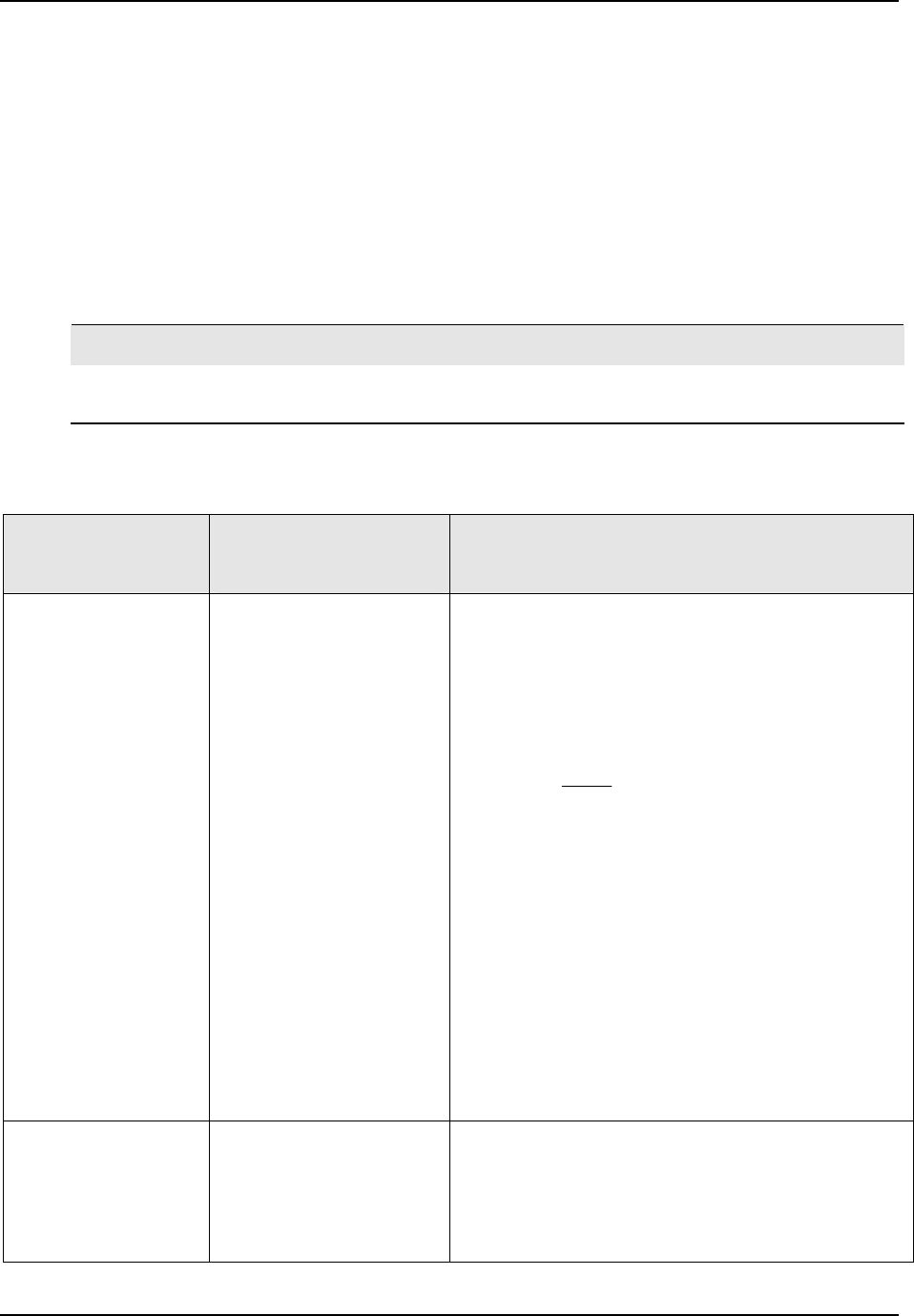
Configuration
3.4 Loop 1 Tuning Set Up Group
Introduction
Tuning consists of establishing the appropriate values for the tuning constants you are
using so that your controller responds correctly to changes in process variable and
setpoint. You can start with predetermined values but you will have to watch the system
to see how to modify them. The Accutune feature automatically selects Gain, Rate, and
Reset on demand.
There can be as many as four PID sets available for Loop 1.
ATTENTION
Because this group contains functions that have to do with security and lockout, we recommend
that you configure this group last, after all other configuration data has been loaded.
Function Prompts
Table 3-4 TUNING Group Function Prompts
Function Prompt
Lower Display
Selections or
Range of Setting
Upper Display
Parameter
Definition
PROP BD
or
GAIN
0.1 to 9999 %
or
0.001 to 1000
PROPORTIONAL BAND (simplex) is the percent of
the range of the measured variable for which a
proportional controller will produce a 100 % change
in its output.
GAIN is the ratio of output change (%) over the
measured variable change (%) that caused it.
G =
100%
PB%
where PB is the proportional band (in %)
If the PB is 20 %, then the Gain is 5. And, at those
settings, a 3 % change in the error signal (SP-PV)
will result in a 15 % change in the controller’s output
due to proportional action. If the Gain is 2, then the
PB is 50 %.
Also defined as “HEAT” Gain on Duplex models for
variations of Heat/Cool applications.
The selection of Proportional Band or Gain is made
in the CONTROL parameter group under prompt
PBorGAIN.
RATE MIN
0.00 to 10.00 minutes
RATE action, in minutes, affects the controller’s
output whenever the deviation is changing; and
affects it more when the deviation is changing faster.
Also defined as “HEAT” Rate on Duplex models for
variations of Heat/Cool applications.
52 UDC3500 Universal Digital Controller Product Manual March 2012
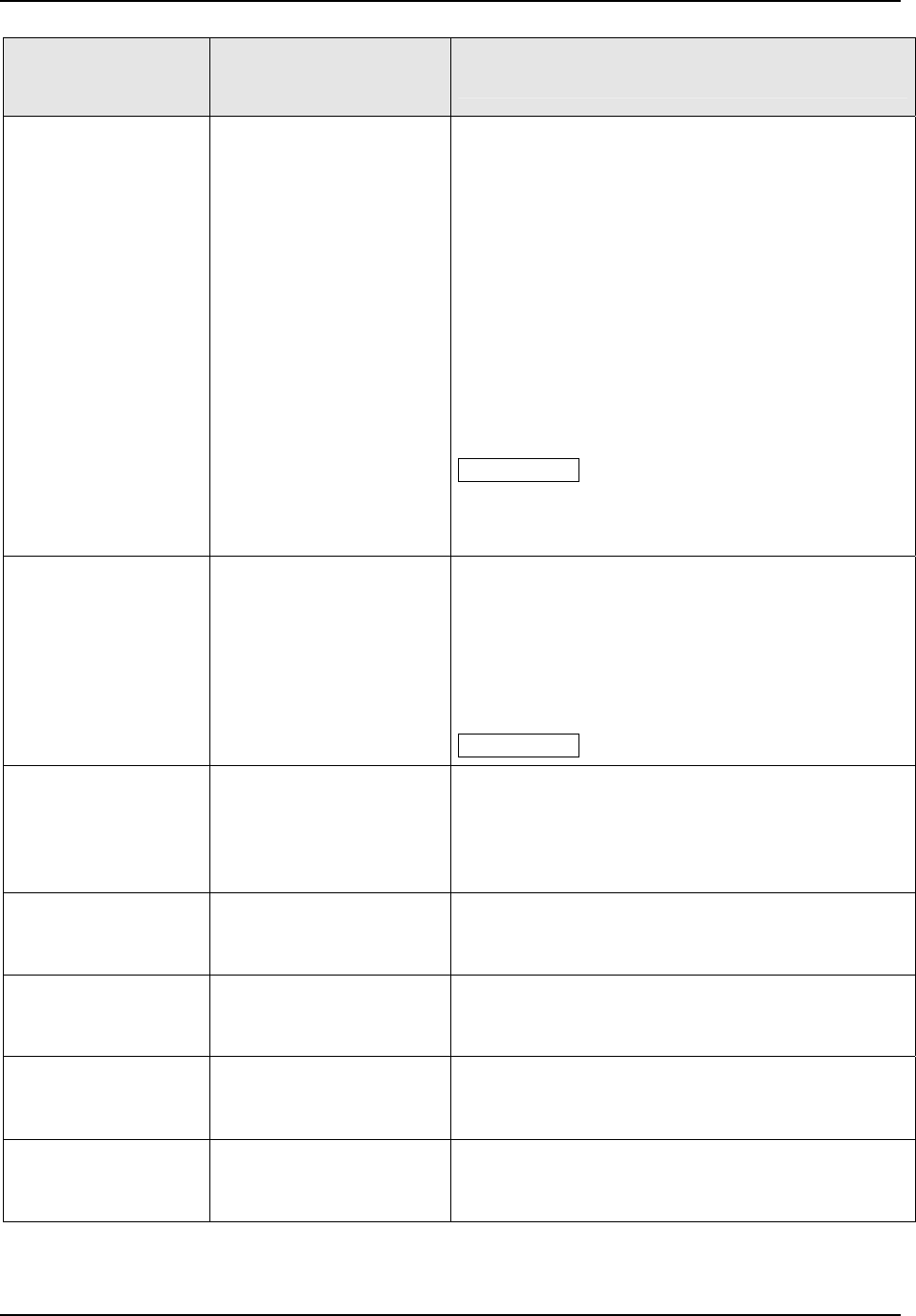
Configuration
March 2012 UDC3500 Universal Digital Controller Product Manual 53
Function Prompt
Lower Display
Selections or
Range of Setting
Upper Display
Parameter
Definition
RSET MIN
or
RSET RPM
0.02 to 50.00
RSET MIN = Reset in Minutes per Repeat
RSET RPM = Reset in Repeats per Minute
RESET (or Integral Time) adjusts the controller’s
output in accordance with both the size of the
deviation (SP–PV) and the time that it lasts. The
amount of the corrective action depends on the
value of Gain. The Reset adjustment is measured as
how many times proportional action is repeated per
minute or how many minutes before one repeat of
the proportional action occurs.
Used with control algorithm PID-A or PID-B.
Also defined as “HEAT” Reset on Duplex models for
variations of Heat/Cool applications.
ATTENTION The selection of whether Minutes per
Repeat or Repeats per Minute is used is made in the
CONTROL parameters group under the prompt
MINorRPM.
MAN RSET
–100 to +100
(in % output)
MANUAL RESET is only applicable if you use
control algorithm PD WITH MANUAL RESET in the
Algorithm Set Up group. Because a proportional
controller will not necessarily line out at setpoint,
there will be a deviation (offset) from setpoint. This
eliminates the offset and lets the PV line out at
setpoint.
ATTENTION Bias is shown on the lower display.
PROPBD2
or
GAIN 2
0.1 to 9999 %
or
0.001 to 1000
PROPORTIONAL BAND 2 or GAIN 2, RATE 2, and
RESET 2 parameters are the same as previously
described for “Heat” except that they refer to the
cool zone tuning constants on duplex models or the
second set of PID constants, whichever is pertinent.
RATE2MIN
0.00 to 10.00 minutes
This is the same as above except that it applies to
Duplex models for the “COOL” zone of Heat/Cool
applications or for the second set of PID constants.
RSET2MIN
RSET2RPM
0.02 to 50.00 These are the same as above except that they apply
to Duplex models for the “COOL” zone of Heat/Cool
applications or for the second set of PID constants.
PROPBD3
or
GAIN 3
0.1 to 9999 %
or
0.001 to 1000
PROPORTIONAL BAND 3 or GAIN 3 parameters
are the same as previously described. This prompt
appears only when four PID sets are enabled.
RATE3MIN
0.00 to 10.00 minutes
RATE 3 MINUTES parameter is the same as
previously described. This prompt appears only
when four PID sets are enabled.
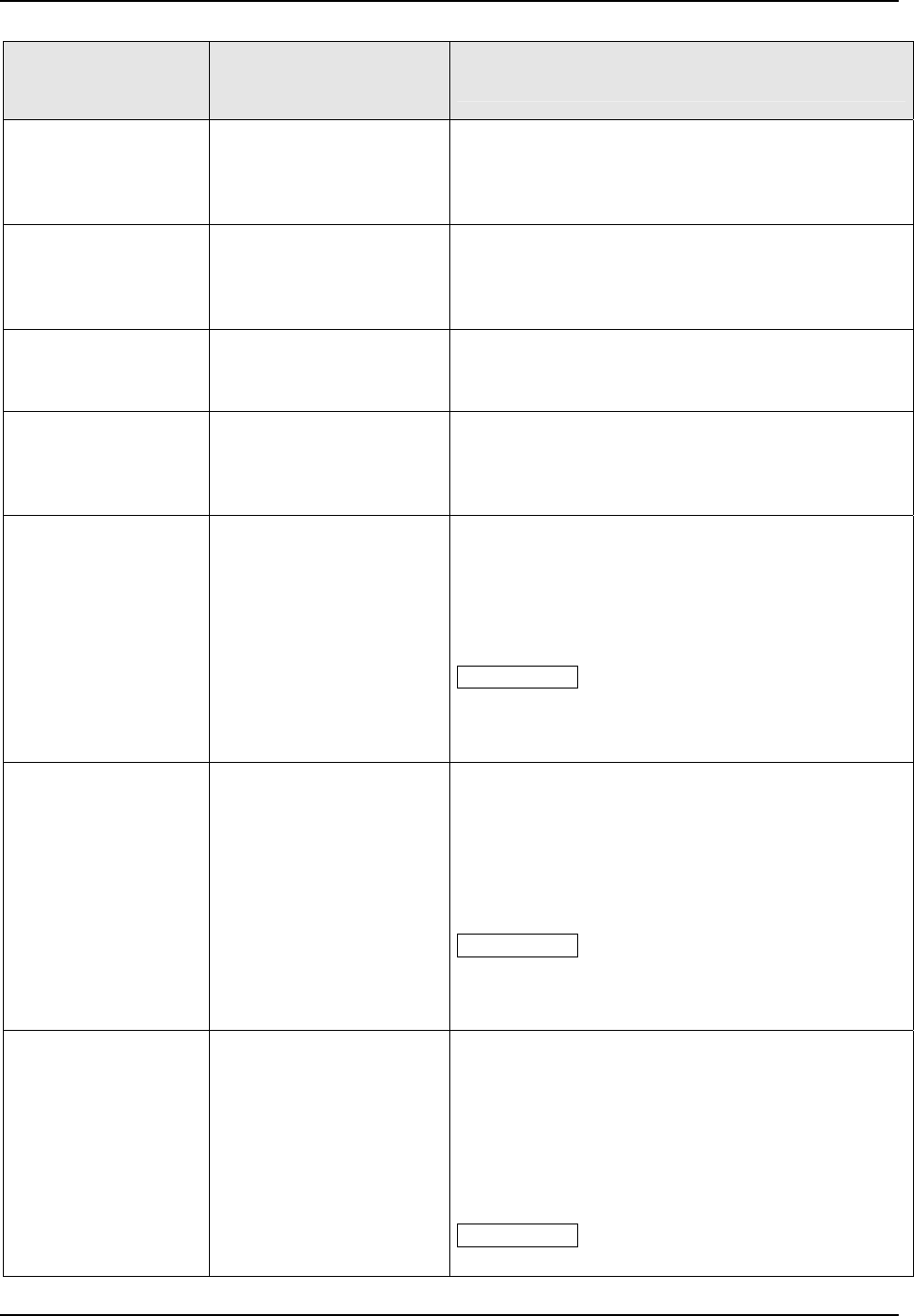
Configuration
54 UDC3500 Universal Digital Controller Product Manual March 2012
Function Prompt
Lower Display
Selections or
Range of Setting
Upper Display
Parameter
Definition
RSET3MIN
RSET3RPM
0.02 to 50.00
RESET 3 MINUTES or RSET 3 REPEATS PER
MINUTE parameters are the same as previously
described. This prompt appears only when four PID
sets are enabled.
PROPBD4
or
GAIN 4
0.1 to 9999 %
or
0.001 to 1000
PROPORTIONAL BAND 4 or GAIN 4, RATE 4, and
RESET 4 parameters are the same as previously
described. This prompt appears only when four PID
sets are enabled.
RATE4MIN
0.00 to 10.00 minutes
RATE 4 MINUTES parameter is the same as
previously described. This prompt appears only
when four PID sets are enabled.
RSET4MIN
RSET4RPM
0.02 to 50.00
RESET 4 MINUTES or RSET 3 REPEATS PER
MINUTE parameters are the same as previously
described. This prompt appears only when four PID
sets are enabled.
CYC SEC
or
CYC SX3
1 to 120
CYCLE TIME (HEAT) determines the length of one
time proportional output relay cycle. Defined as
“HEAT” cycle time for Heat/Cool applications.
CYC SEC—Electromechanical relays
CYC SX3—Solid state relays
ATTENTION Cycle times are in either second or
1/3-second increments depending upon the
configuration of RLY TYPE in the Output Algorithm
Set Up group.
CYC2 SEC
or
CYC2 SX3
1 to 120
CYCLE TIME 2 (COOL) is the same as above
except it applies to Duplex models as the cycle time
in the “COOL” zone of Heat/Cool applications or for
the second set of PID constants.
CYC2 SEC—Electromechanical relays
CYC2 SX3—Solid state relays
ATTENTION Cycle times are in either second or
1/3-second increments depending upon the
configuration of RLY TYPE in the Output Algorithm
Set Up group.
SECURITY
0 to 9999
SECURITY CODE—The level of keyboard lockout
may be changed in the Set Up mode. Knowledge of
a security code may be required to change from one
level to another. This configuration should be copied
and kept in a secure location.
NOTE: The Security Code is for keyboard entry only
and is not available via communications.
ATTENTION Can only be changed if LOCKOUT
selection is NONE.
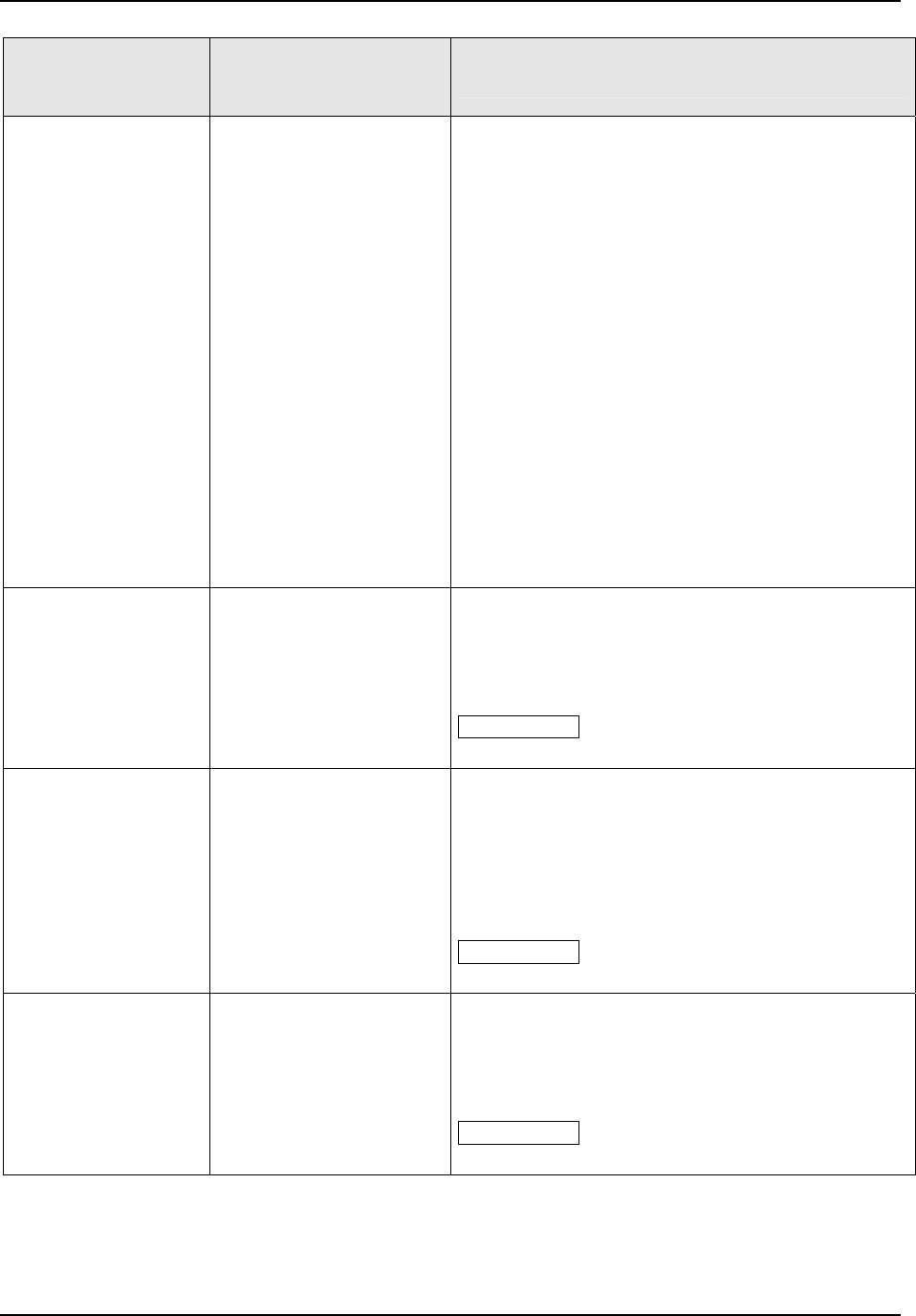
Configuration
March 2012 UDC3500 Universal Digital Controller Product Manual 55
Function Prompt
Lower Display
Selections or
Range of Setting
Upper Display
Parameter
Definition
LOCKOUT
LOCKOUT applies to one of the functional groups:
Configuration, Calibration, Tuning, or Accutune.
DO NOT CONFIGURE UNTIL ALL OTHER
CONFIGURATION IS COMPLETE.
NONE
NONE—No lockout; all groups are read/write.
CALIB
CALIB—All groups are available for read/write
except for the Calibration and Keyboard Lockout
groups.
+ CONF
+ CONF—Tuning, SP Ramp, and Accutune groups
are read/write. All other groups are read only.
Calibration and Keyboard Lockout groups are not
available.
+ VIEW
+ VIEW—Tuning and Setpoint Ramp parameters are
read/write. No other parameters are viewable.
MAX
MAX—Tuning and Setpoint Ramp parameters are
available for read only. No other parameters are
viewable.
AUTO MAN
DISABLE
ENABLE
MANUAL/AUTO KEY LOCKOUT—Allows you to
disable the Manual/Auto key
DISABLE
ENABLE
ATTENTION Can only be viewed if LOCKOUT is
configured for NONE.
RUN HOLD
DISABLE
ENABLE
RUN/HOLD KEY LOCKOUT—Allows you to disable
the
Run/Hold key, for either SP Ramp or SP
Program. The Run/Hold key is never disabled when
used to acknowledge a latched alarm 1
DISABLE
ENABLE
ATTENTION Can only be viewed if LOCKOUT is
configured for NONE.
SP SEL
DISABLE
ENABLE
SETPOINT SELECT KEY LOCKOUT—Allows you
to disable the Setpoint Select key
DISABLE
ENABLE
ATTENTION Can only be viewed if LOCKOUT is
configured for NONE.
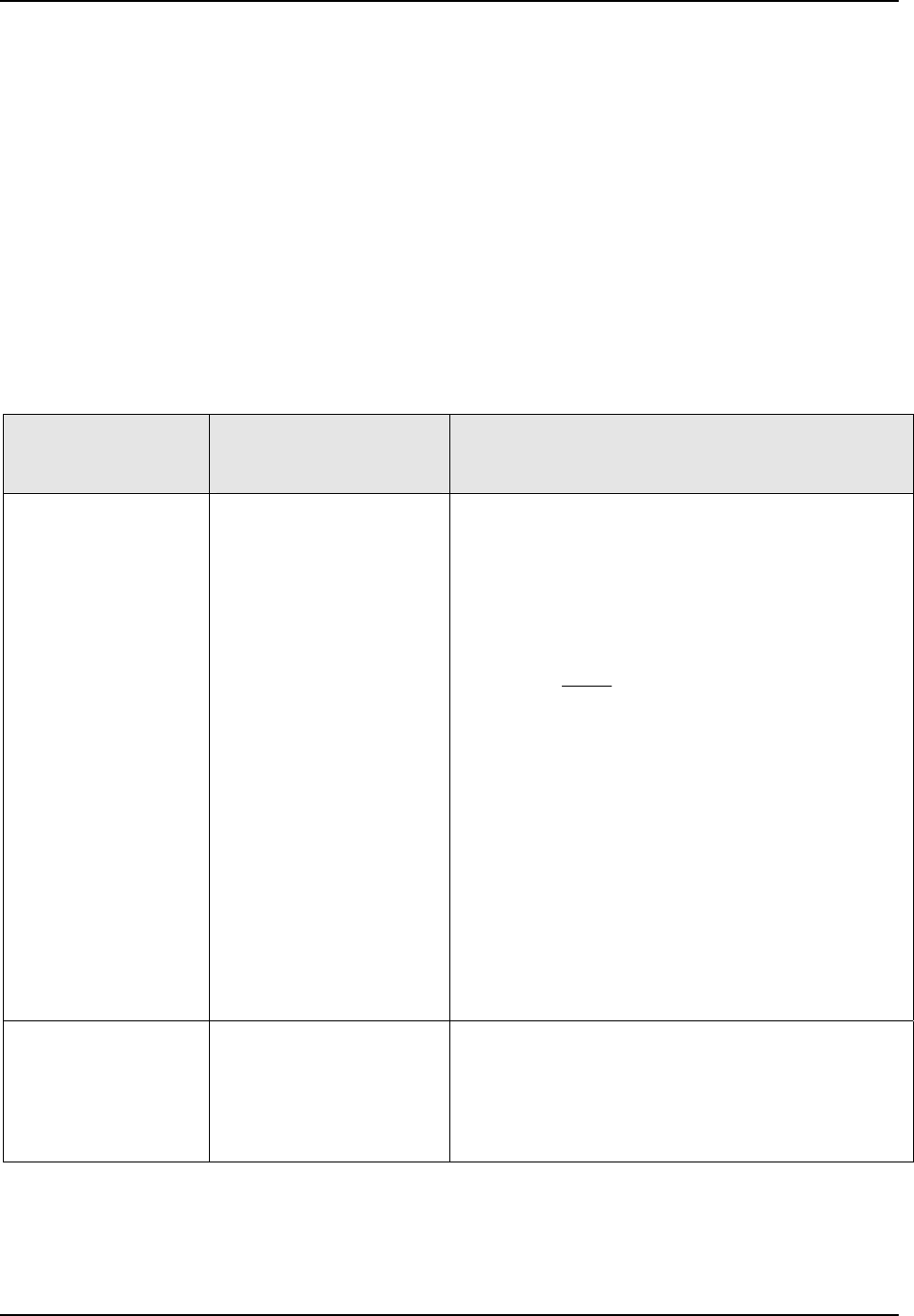
Configuration
3.5 Loop 2 Tuning Set Up Group
Introduction
Tuning consists of establishing the appropriate values for the tuning constants you are
using so that your controller responds correctly to changes in process variable and
setpoint. You can start with predetermined values but you will have to watch the system
to see how to modify them. The Accutune feature automatically selects Gain, Rate, and
Reset on demand.
There can be as many as four PID sets available for Loop 2.
Function Prompts
Table 3-5 TUNING 2 Group Function Prompts
Function Prompt
Lower Display
Selections or
Range of Setting
Upper Display
Parameter
Definition
PROP BD5
or
GAIN 5
0.1 to 9999 %
or
0.001 to 1000
PROPORTIONAL BAND (simplex) is the percent of
the range of the measured variable for which a
proportional controller will produce a 100 % change
in its output.
GAIN is the ratio of output change (%) over the
measured variable change (%) that caused it.
G =
100%
PB%
where PB is the proportional band (in %)
If the PB is 20 %, then the Gain is 5. And, at those
settings, a 3 % change in the error signal (SP-PV)
will result in a 15 % change in the controller’s output
due to proportional action. If the Gain is 2, then the
PB is 50 %.
Also defined as “HEAT” Gain on Duplex models for
variations of Heat/Cool applications.
The selection of Proportional Band or Gain is made
in the CONTROL parameter group under prompt
PBorGAIN.
RATE5MIN
0.00 to 10.00 minutes
RATE action, in minutes, affects the controller’s
output whenever the deviation is changing; and
affects it more when the deviation is changing faster.
Also defined as “HEAT” Rate on Duplex models for
variations of Heat/Cool applications.
56 UDC3500 Universal Digital Controller Product Manual March 2012
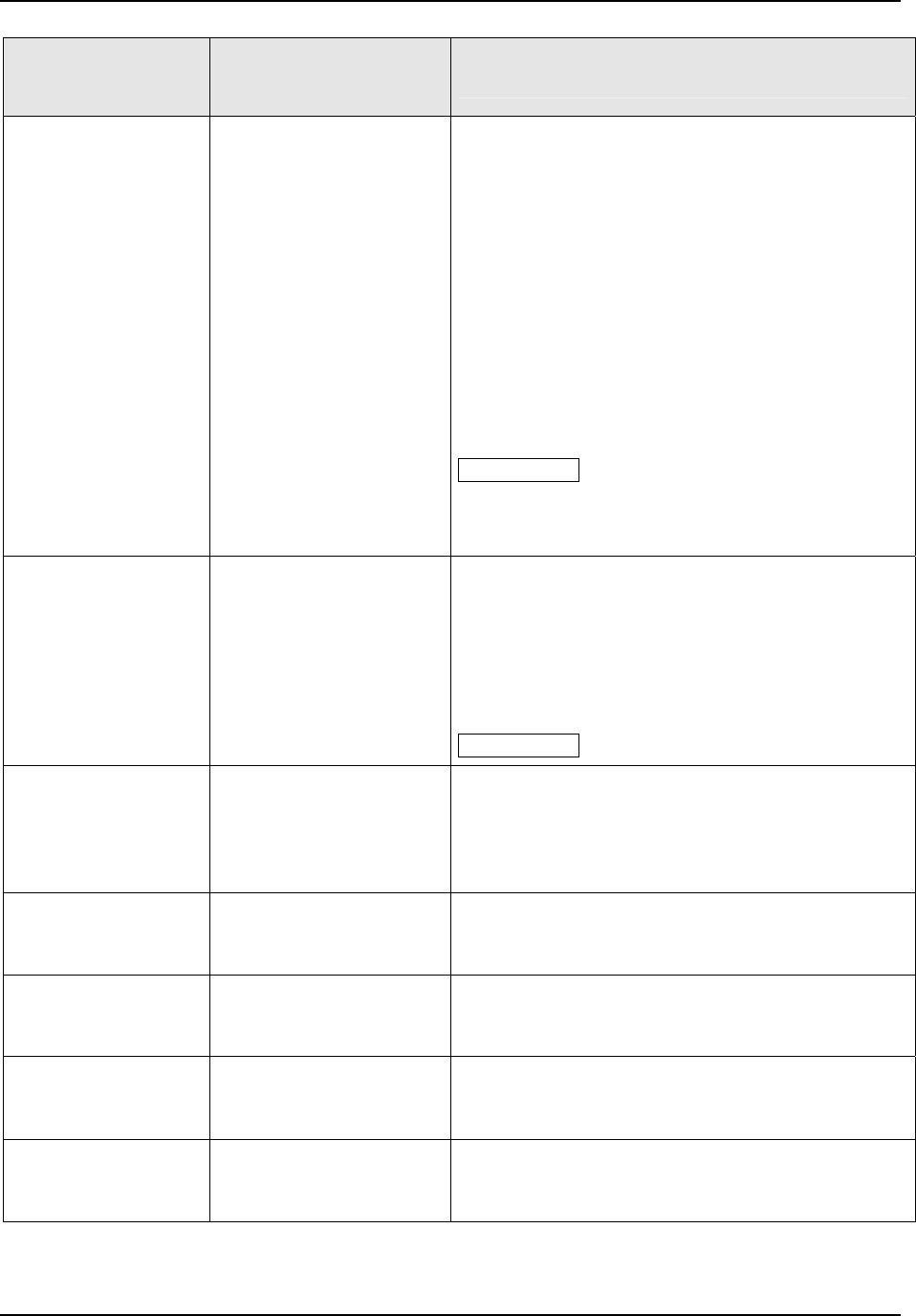
Configuration
March 2012 UDC3500 Universal Digital Controller Product Manual 57
Function Prompt
Lower Display
Selections or
Range of Setting
Upper Display
Parameter
Definition
RSET5MIN
or
RSET5RPM
0.02 to 50.00
RSET5MIN = Reset in Minutes per Repeat
RSET5RPM = Reset in Repeats per Minute
RESET (or Integral Time) adjusts the controller’s
output in accordance with both the size of the
deviation (SP–PV) and the time that it lasts. The
amount of the corrective action depends on the
value of Gain. The Reset adjustment is measured as
how many times proportional action is repeated per
minute or how many minutes before one repeat of
the proportional action occurs.
Used with control algorithm PID-A or PID-B.
Also defined as “HEAT” Reset on Duplex models for
variations of Heat/Cool applications.
ATTENTION The selection of whether Minutes per
Repeat or Repeats per Minute is used is made in the
CONTROL2 parameters group under the prompt
MINorRPM.
MAN5RSET
–100 to +100
(in % output)
MANUAL5RESET is only applicable if you use
control algorithm PD WITH MANUAL RESET for
Loop 2 in the Algorithm Set Up group. Because a
proportional controller will not necessarily line out at
setpoint, there will be a deviation (offset) from
setpoint. This eliminates the offset and lets the PV
line out at setpoint.
ATTENTION Bias is shown on the lower display.
PROPBD6
or
GAIN 6
0.1 to 9999 %
or
0.001 to 1000
PROPORTIONAL BAND 6 or GAIN 6, RATE 6 and
RESET 6 parameters are the same as previously
described for “Heat” except that they refer to the
cool zone tuning constants on duplex models or the
second set of PID constants, whichever is pertinent.
RATE6MIN
0.00 to 10.00 minutes
This is the same as above except that it applies to
Duplex models for the “COOL” zone of Heat/Cool
applications or for the second set of PID constants.
RSET6MIN
RSET6RPM
0.02 to 50.00 These are the same as above except that they apply
to Duplex models for the “COOL” zone of Heat/Cool
applications or for the second set of PID constants.
PROPBD7
or
GAIN 7
0.1 to 9999 %
or
0.001 to 1000
PROPORTIONAL BAND 7 or GAIN 7 parameters
are the same as previously described. This prompt
appears only when four PID sets are enabled.
RATE7MIN
0.00 to 10.00 minutes
RATE 7 MINUTES parameter is the same as
previously described. This prompt appears only
when four PID sets are enabled.
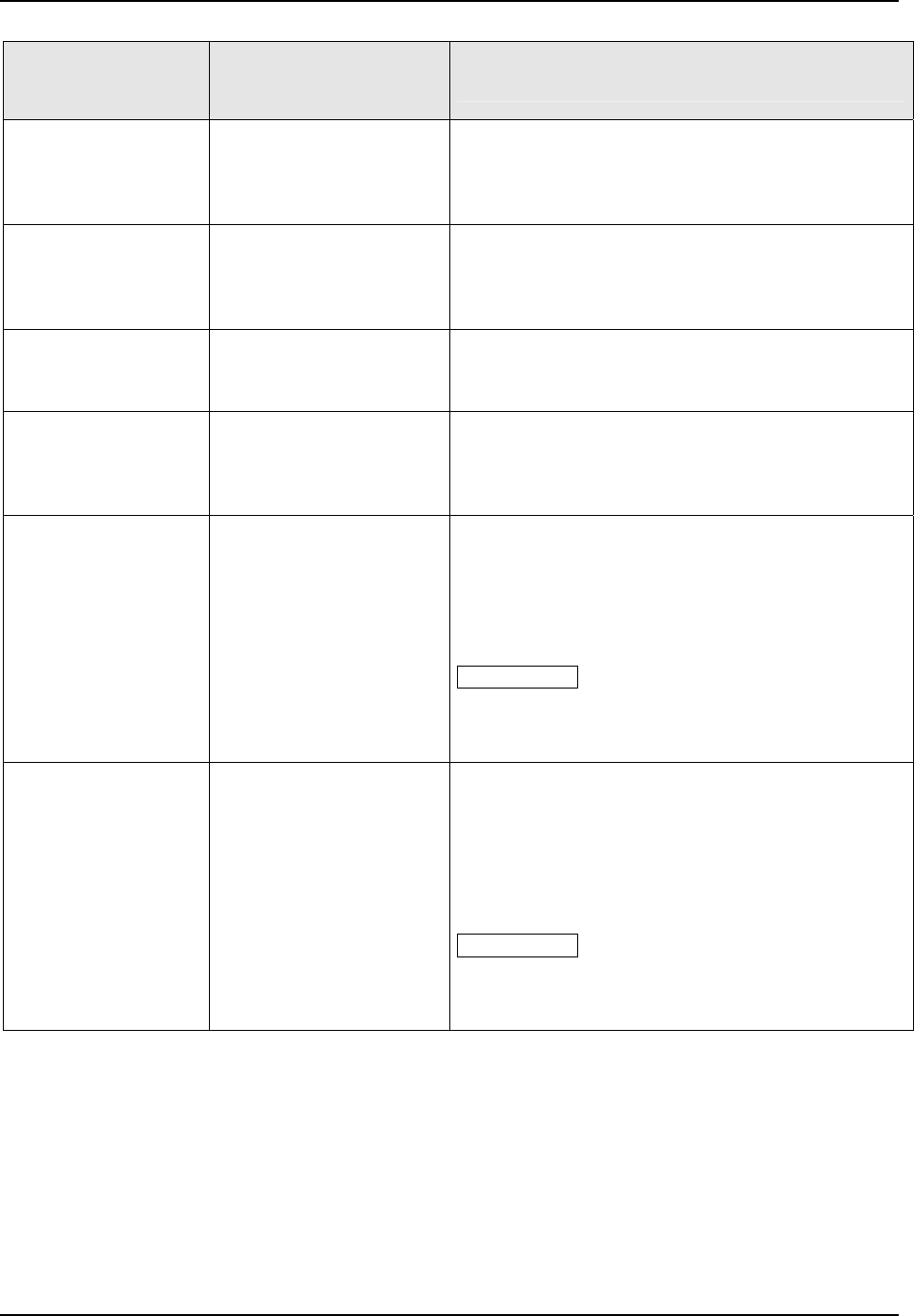
Configuration
58 UDC3500 Universal Digital Controller Product Manual March 2012
Function Prompt
Lower Display
Selections or
Range of Setting
Upper Display
Parameter
Definition
RSET7MIN
RSET7RPM
0.02 to 50.00
RESET 7 MINUTES or RSET 7 REPEATS PER
MINUTE parameters are the same as previously
described. This prompt appears only when four PID
sets are enabled.
PROPBD8
or
GAIN 4
0.1 to 9999 %
or
0.001 to 1000
PROPORTIONAL BAND 8 or GAIN 8, RATE 8, and
RESET 8 parameters are the same as previously
described. This prompt appears only when four PID
sets are enabled.
RATE8MIN
0.00 to 10.00 minutes
RATE 8 MINUTES parameter is the same as
previously described. This prompt appears only
when four PID sets are enabled.
RSET8MIN
RSET8RPM
0.02 to 50.00
RESET 8 MINUTES or RSET 8 REPEATS PER
MINUTE parameters are the same as previously
described. This prompt appears only when four PID
sets are enabled.
CYC5 SEC
or
CYC5 SX3
1 to 120
CYCLE TIME (HEAT) determines the length of one
time proportional output relay cycle. Defined as
“HEAT” cycle time for Heat/Cool applications.
CYC5 SEC—Electromechanical relays
CYC5 SX3—Solid state relays
ATTENTION Cycle times are in either second or
1/3-second increments depending upon the
configuration of RLY TYPE in the Output Algorithm
Set Up group.
CYC6 SEC
or
CYC6 SX3
1 to 120
CYCLE TIME 2 (COOL) is the same as above
except it applies to Duplex models as the cycle time
in the “COOL” zone of Heat/Cool applications or for
the second set of PID constants.
CYC6 SEC—Electromechanical relays
CYC6 SX3—Solid state relays
ATTENTION Cycle times are in either second or
1/3-second increments depending upon the
configuration of RLY TYPE in the Output Algorithm
Set Up group.
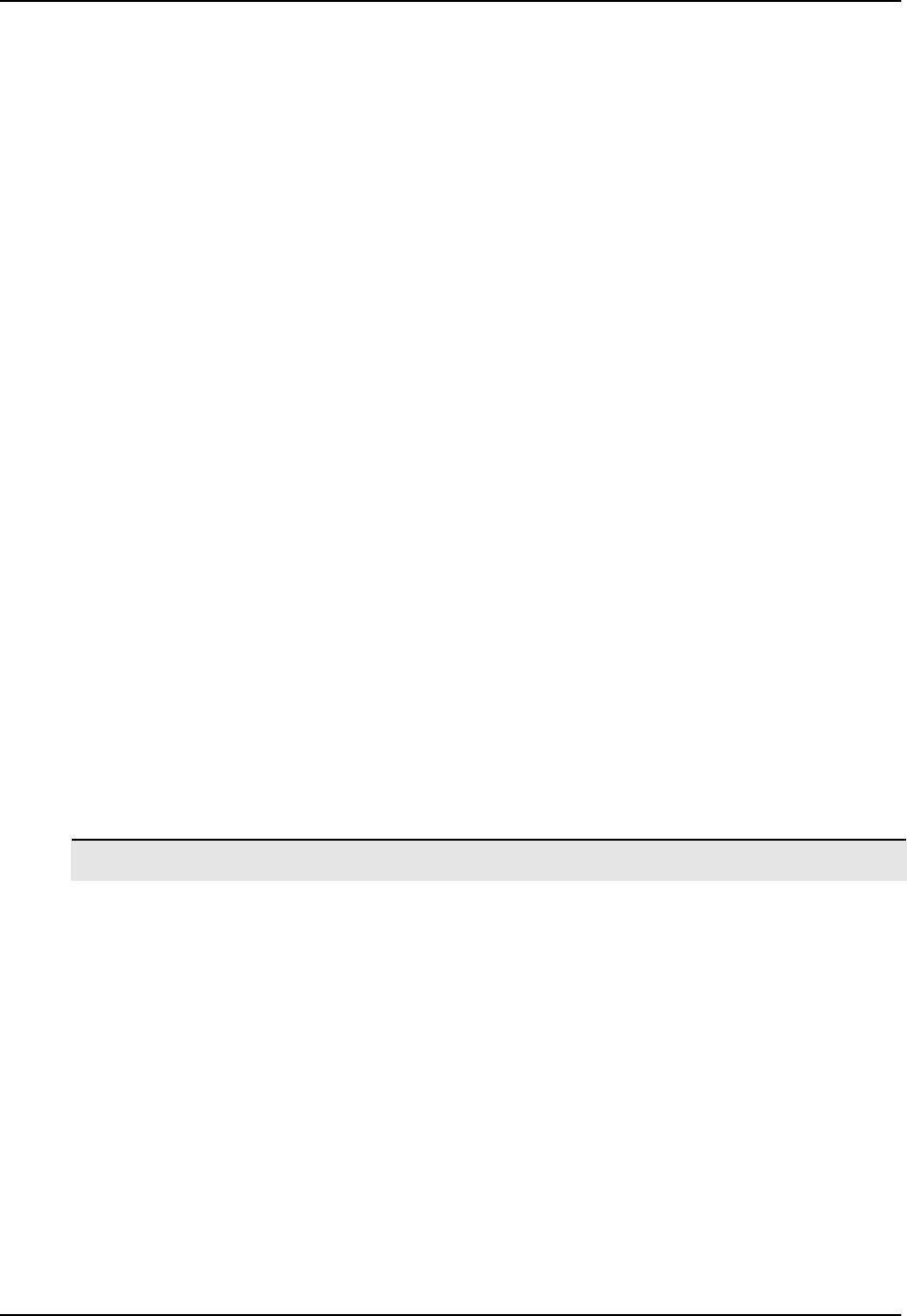
Configuration
3.6 SP Ramp Set Up Group
Introduction
Set Point Ramp, Set Point Programs and Set Point Rates can be configured in this group.
A single Setpoint Ramp [SP RAMP] can be configured to occur between the current local
setpoint and a final local setpoint over a time interval of from 1 to 255 minutes.
A Set Point Rate [SPRATE] lets you configure a specific rate of change for any local
setpoint change.
A single Set Point Program [SP PROG] with up to 20 segments can be configured.
For more information on Set Point Rate, Ramp and Programming, see Sections 4.27
through 4.30.
You can start and stop the ramp
/program using the
RUN/HOLD key.
PV Hot Start is a configurable feature and means that, at initialization, the setpoint is set
to the current PV value and the Ramp or Rate or Program then starts from this value.
Added Features not found in other UDC products:
Up to Four SP Programs rather than one
20 segments instead of 12 in each program
SP Programs 1 and 2 can be linked to give a SP Program of up to 40 segments
SP Programs 3 and 4 can be linked to give a SP Program of up to 40 segments
Guaranteed Soak Settings for each Soak Segment
PID Set selection for each Segment
Function Prompts
ATTENTION
Please note that the configurations used in SP Program #1 for Program End,
Program State, Power Up and Key Reset affect all other SP Programs. For this
reason, Program #1 must always be enabled in order to enable Programs #2, 3
and/or 4.
March 2012 UDC3500 Universal Digital Controller Product Manual 59
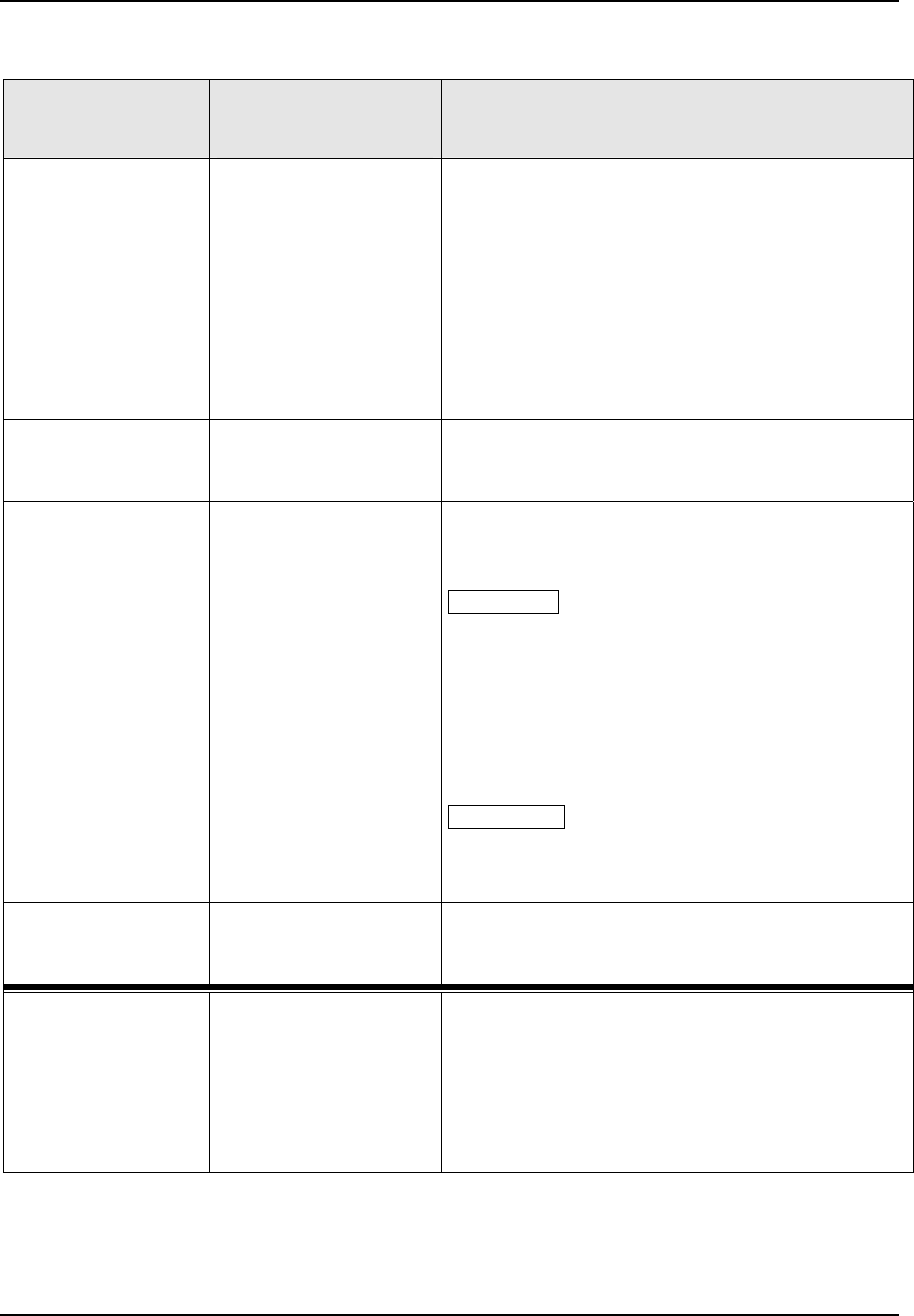
Configuration
Table 3-6 SPRAMP Group Function Prompts
Function Prompt
Lower Display
Selections or
Range of Setting
Upper Display
Parameter
Definition
SP RAMP
SP Program must be
disabled for SP Ramp
prompts to appear
SINGLE SETPOINT RAMP—Make a selection to
enable or disable the setpoint ramp function. Make
sure you configure a ramp time and a final setpoint
value.
SP Programming must be disabled.
DISABLE
ENABLE
DISABLE SETPOINT RAMP—Disables the setpoint
ramp option.
ENABLE SETPOINT RAMP—Allows the single
setpoint ramp prompts to be shown.
TIME MIN
0 to 255 minutes
SETPOINT RAMP TIME—Enter the number of
minutes desired to reach the final setpoint. A ramp
time of “0” implies an immediate change of setpoint.
FINAL SP
Within setpoint limits
SETPOINT RAMP FINAL SETPOINT—Enter the
value desired for the final setpoint. The controller will
operate at the setpoint set here when ramp is ended.
ATTENTION If the ramp is on HOLD, the held
setpoint can be changed by the ▲ and ▼ keys.
However, the ramp time remaining and original ramp
rate is not changed. Therefore, when returning to
RUN mode, the setpoint will ramp at the same rate as
previous to the local setpoint change and will stop if
the final setpoint is reached before the time expires. If
the time expires before the final setpoint is reached, it
will jump to the final setpoint.
ATTENTION SP RAMP and SP RATE will cause the
SP portion of Accutune to abort. PV Tune will
continue to function normally. Ramp is placed into
HOLD while tuning (TUNE configuration).
HOTSTART
DISABLE
ENABLE
DISABLE—LSP1 is used as the initial ramp setpoint.
ENABLE—Current PV value is used as the initial
ramp setpoint.
SP RATE
SP Rate operates on
any LSP when both
SP Ramp and SP
Programming are not
active.
DISABLE
ENABLE
SETPOINT RATE—Lets you configure a specific rate
of change for any local setpoint change.
DISABLE SETPOINT RATE—Disables the setpoint
rate option.
ENABLE SETPOINT RATE—Allows the SP rate
feature.
60 UDC3500 Universal Digital Controller Product Manual March 2012
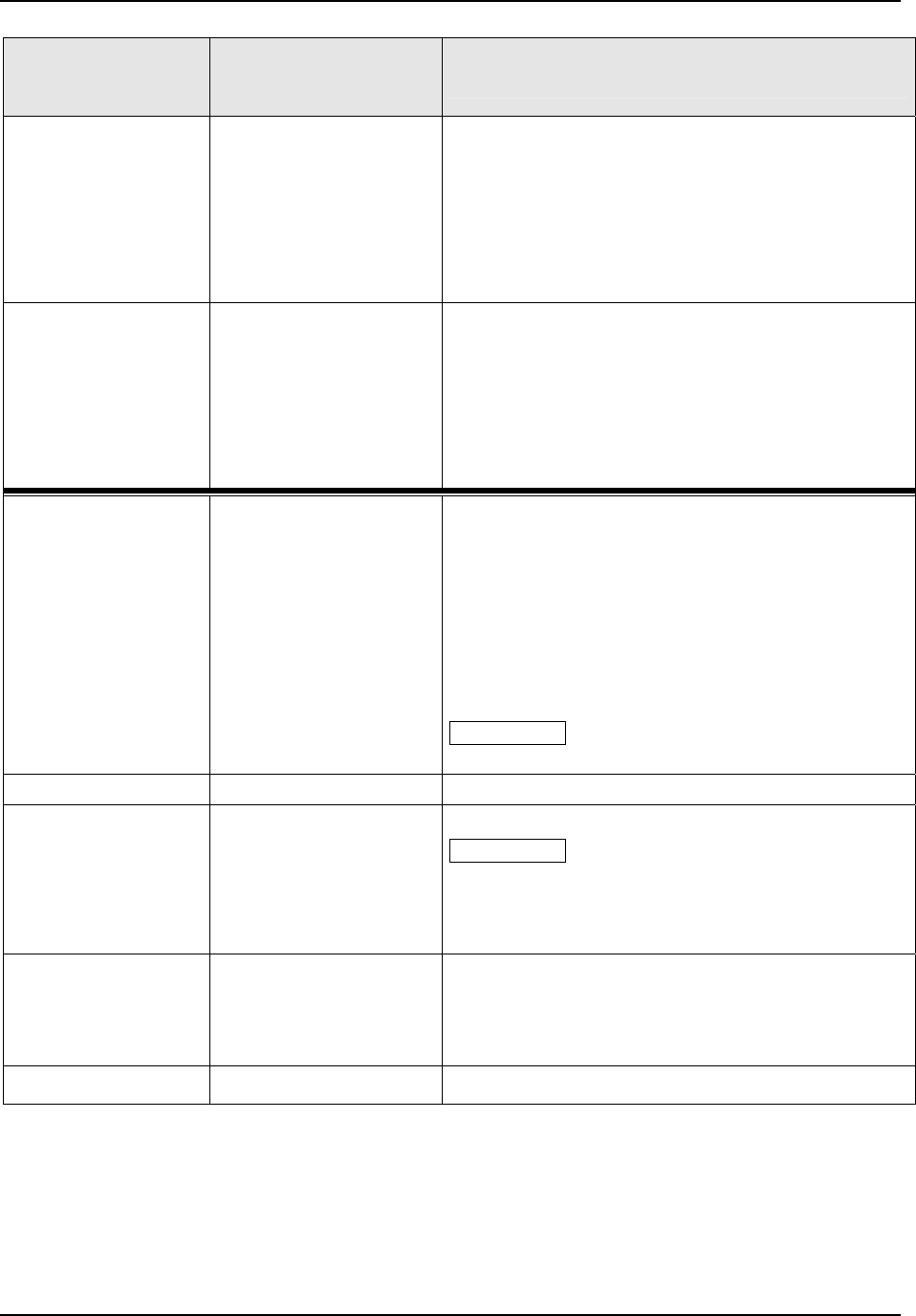
Configuration
March 2012 UDC3500 Universal Digital Controller Product Manual 61
Function Prompt
Lower Display
Selections or
Range of Setting
Upper Display
Parameter
Definition
EU/HR UP
0 to 9999 in engineering
units per hour
RATE UP—Rate up value. When making a setpoint
change, this is the rate at which the controller will
change from the original setpoint up to the new one.
The ramping (current) setpoint can be viewed as SPn
in the lower display.
Entering a 0 will imply an immediate step change in
Setpoint (i.e., no rate applies).
EU/HR DN
0 to 9999 in engineering
units per hour
RATE DOWN—Rate down value. When making a
setpoint change, this is the rate at which the controller
will change from the original setpoint down to the new
one. The ramping (current) setpoint can be viewed as
SPn in the lower display.
Entering a 0 will imply an immediate step change in
Setpoint (i.e., no rate applies).
SP PROG
(optional feature)
SP Ramp must be
disabled for SP
Program prompts to
appear. If SP Rate is
enabled, it does not
operate while an SP
Program is running.
DISABLE
ENABLE
ENABLE2
ENABL12
SETPOINT RAMP/SOAK PROGRAM #1—Available
only with controllers that contain this option.
SP RAMP must be disabled.
DISABLE—Disables all Setpoint Programs.
ENABLE—Setpoint Program runs on Loop 1.
ENABLE2—Setpoint Program runs on Loop 2.
ENABL12—Setpoint Program runs on both Loop1
and Loop 2.
ATTENTION SP Program #1 must be enabled in
order to use SP Programs 2, 3 and 4.
STRT SEG
1 to 20
START SEGMENT NUMBER
END SEG
2 to 20 even numbers
Always end in a soak
segment
(2, 4, ... 20)
END SEGMENT NUMBER
ATTENTION When SP Programs 1 and 2 are
linked, this parameter does not appear. The value is
automatically set to 20 and the End Segment Number
is controlled by the selection for End Segment in SP
Program #2.
RAMPUNIT
TIME
EU/MIN
EU/HR
RAMPUNIT—Engineering Units for Ramp Segments
TIME in hours: minutes
RATE in Engineering units per minute
RATE in Engineering units per hour
RECYCLES
0 to 100 recycles Number of Program Recycles
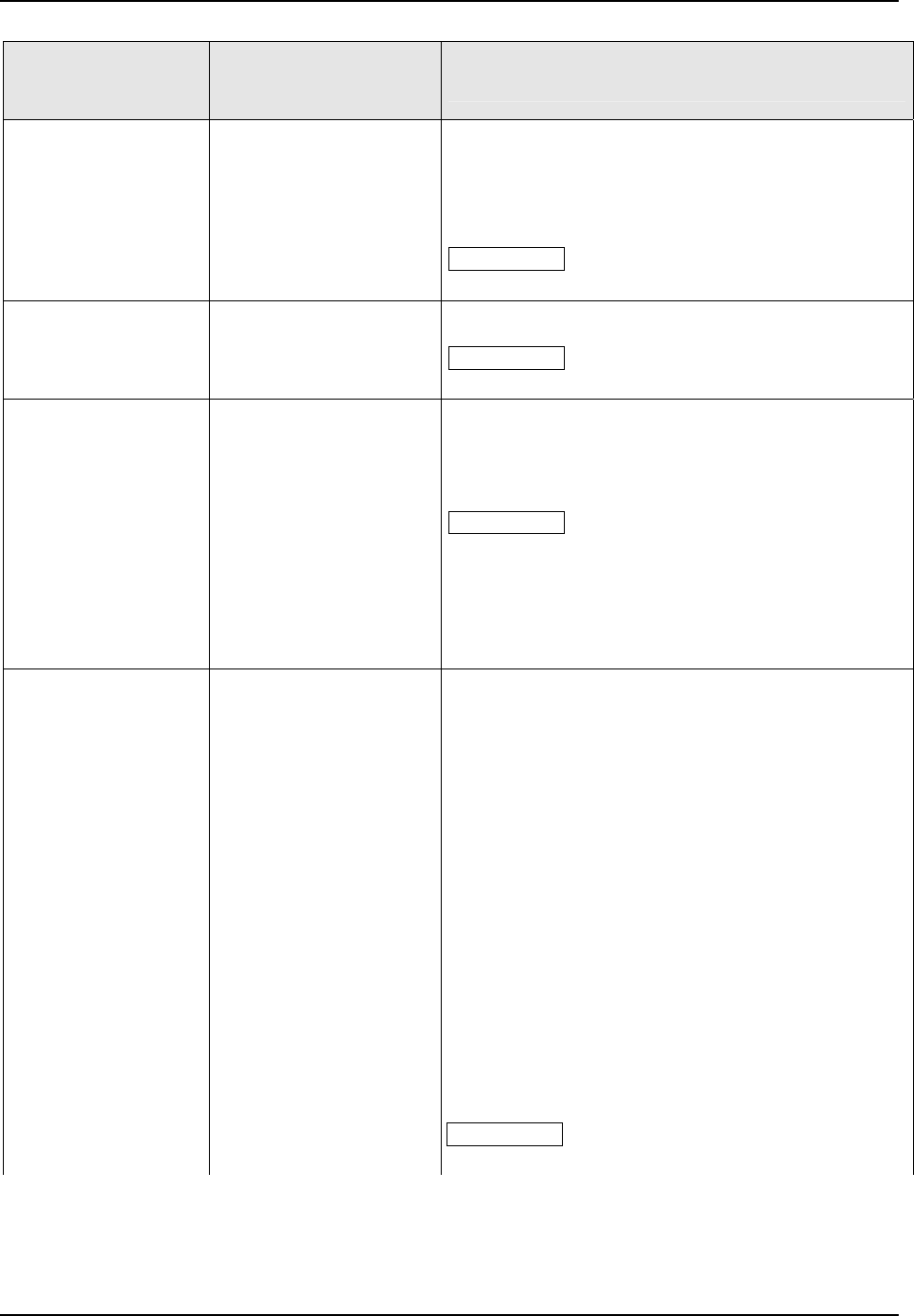
Configuration
62 UDC3500 Universal Digital Controller Product Manual March 2012
Function Prompt
Lower Display
Selections or
Range of Setting
Upper Display
Parameter
Definition
PROG END
LASTSP
F SAFE
PROGRAM TERMINATION STATE
LAST SETPOINT—Hold at last setpoint in the
program
FAIL SAFE—Manual mode/Failsafe output
ATTENTION Selection affects all enabled SP
Programs.
STATE
DISABLE
HOLD
PROGRAM STATE AT PROGRAM END
ATTENTION Selection affects all enabled SP
Programs.
POWER UP
POWER UP—This configuration determines what the
Program will do in the case of a power outage during
the Program. This prompt only appears on those
instruments that have the Real Time Clock option.
ATTENTION Selection affects all enabled SP
Programs.
ABORT
RESUME
RESTART
ABORT—Program terminated on power up
RESUME—Continue at the same point in program
RESTART—Restart program at beginning of the
same cycle
KEYRESET
DISABLE
KEY RESET—Reset/Rerun SP Program
DISABLE
ToBEGIN
RESET TO BEGINNING OF SETPOINT
PROGRAM—When enabled, this selection allows you
to reset via the keyboard to the beginning of the
program and resets the Recycle value to 0. The
program mode is placed in HOLD.
If the current Local Setpoint 1 value is at any value
other than that Setpoint value used in the first Soak
segment in the program, then the program will restart
at the current Local Setpoint 1 value and at the
beginning of the first Ramp segment in the program.
If the current Local Setpoint 1 value is at the same
Setpoint value as that used for the first Soak segment
in the program, then the first Ramp segment is
skipped and the program will restart at the beginning
of the first Soak segment in the program.
ATTENTION Selection affects all enabled SP
Programs.
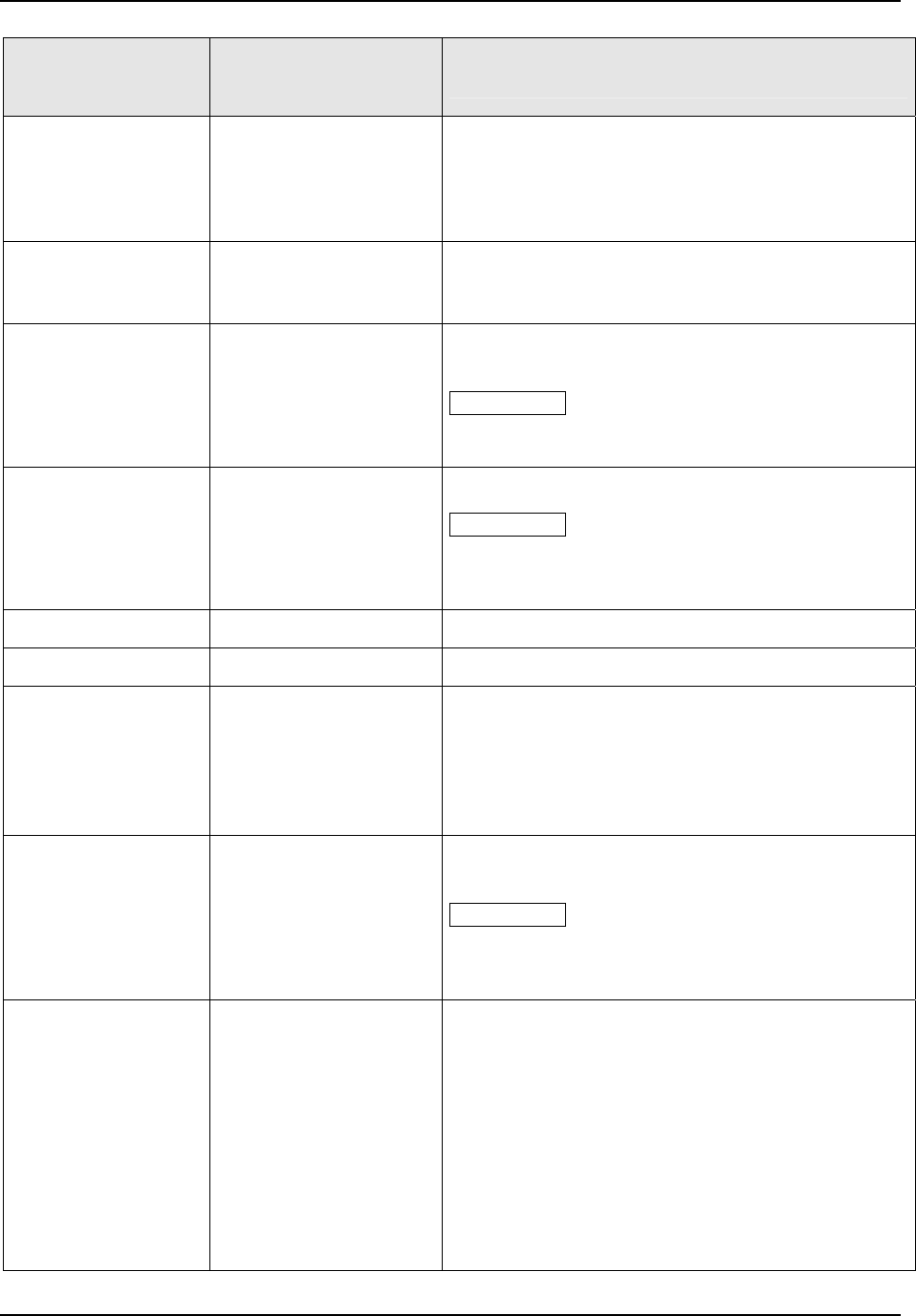
Configuration
March 2012 UDC3500 Universal Digital Controller Product Manual 63
Function Prompt
Lower Display
Selections or
Range of Setting
Upper Display
Parameter
Definition
RERUN
RERUN CURRENT CYCLE—When enabled, this
selection allows you to reset the program via the
keyboard to the beginning of the current cycle. The
Recycle value is not affected. The program mode
(RUN or HOLD) is not affected.
HOTSTART
DISABLE
ENABLE
HOT START—This feature allows the SP Program to
start at the current PV value rather than the current
Setpoint value.
SEG1RAMP or
SEG1RATE
0-99 hours.0-59 minutes
Engineering units/minute
or
Engineering units/hour
Segment #1 Ramp Time or
Segment #1 Ramp Rate
ATTENTION This parameter is affected by the
RAMPUNIT configuration (see above). All ramps will
use the same selection.
SEG1PID
1-4
PID Set Selection
ATTENTION The PID Set Selection prompts will
only show up when PID SETS in the Control 1 or
Control 2 Setup Group is set to 4 KEYBD. See
Section 3.20 (Control 1) and Section 3.21 (Control 2).
SEG2 SP
Within the Setpoint limits
Segment #2 Soak Setpoint Value
SEG2TIME
0-99 hours.0-59 minutes
Segment #2 Soak Duration
SOAK2DEV
0.000 to 99.99
Guaranteed Soak Deviation Value For Soak
Segment #2—The number selected will be the PV
value (in engineering units) above and below the
setpoint outside of which the Soak Segment timer
halts. A value of 0.000 is equivalent to no Guaranteed
Soak.
SEG2 PID
1-4
PID Set Selection—This selection is Loop
dependent.
ATTENTION The PID Set Selection prompts will
only show up when PID SETS in the Control 1 or
Control 2 Setup Group is set to 4 KEYBD. See
Section 3.20 (Control 1) and Section 3.21 (Control 2).
SEG3RAMP or
SEG3RATE
SEG3 PID
SEG4 SP
SEG4TIME
SOAK4DEV
SEG4 PID
SEG5RAMP or
SEG5RATE
SEG5 PID
SEG6 SP
SEG6TIME
Selections are same as
above.
Same as above
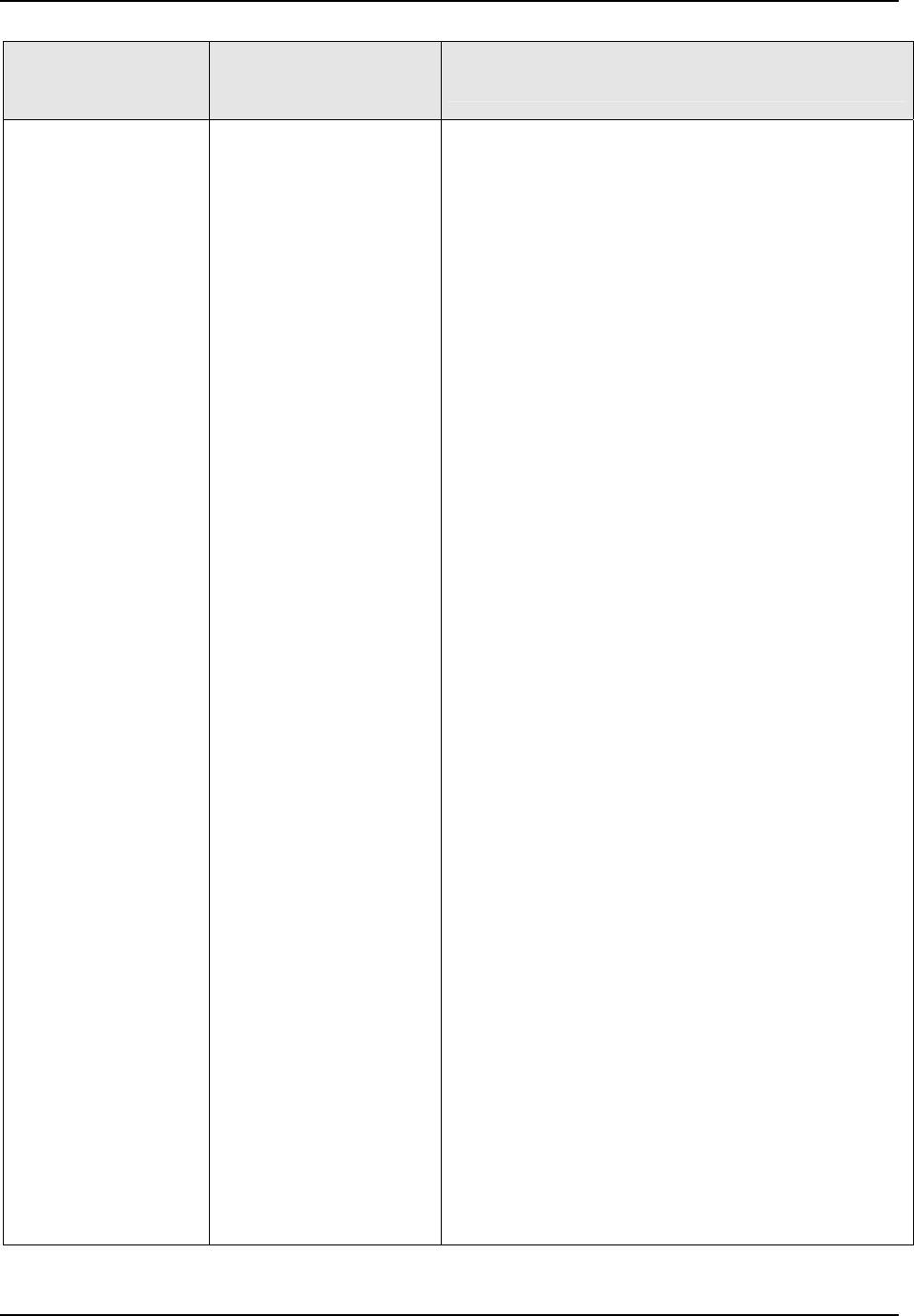
Configuration
64 UDC3500 Universal Digital Controller Product Manual March 2012
Function Prompt
Lower Display
Selections or
Range of Setting
Upper Display
Parameter
Definition
SOAK6DEV
SEG6 PID
SEG7RAMP or
SEG7RATE
SEG7 PID
SEG8 SP
SEG8TIME
SOAK8DEV
SEG8 PID
SEG9RAMP or
SEG9RATE
SEG9 PID
SG10 SP
SG10TIME
SOAK10DEV
SG10 PID
SG11RAMP or
SG11RATE
SG11 PID
SG12 SP
SG12TIME
SOAK12DEV
SG12 PID
SG13RAMP or
SG13RATE
SG13 PID
SG14 SP
SG14TIME
SOAK14DEV
SG14 PID
SG15RAMP or
SG15RATE
SG15 PID
SG16 SP
SG16TIME
SOAK16DEV
SG16 PID
SG17RAMP or
SG17RATE
SG17 PID
SG18 SP
SG18TIME
SOAK18DEV
SG18 PID
SG19RAMP or
SG19RATE
SG19 PID
SG20 SP
SG20TIME
SOAK20DEV
SG20 PID
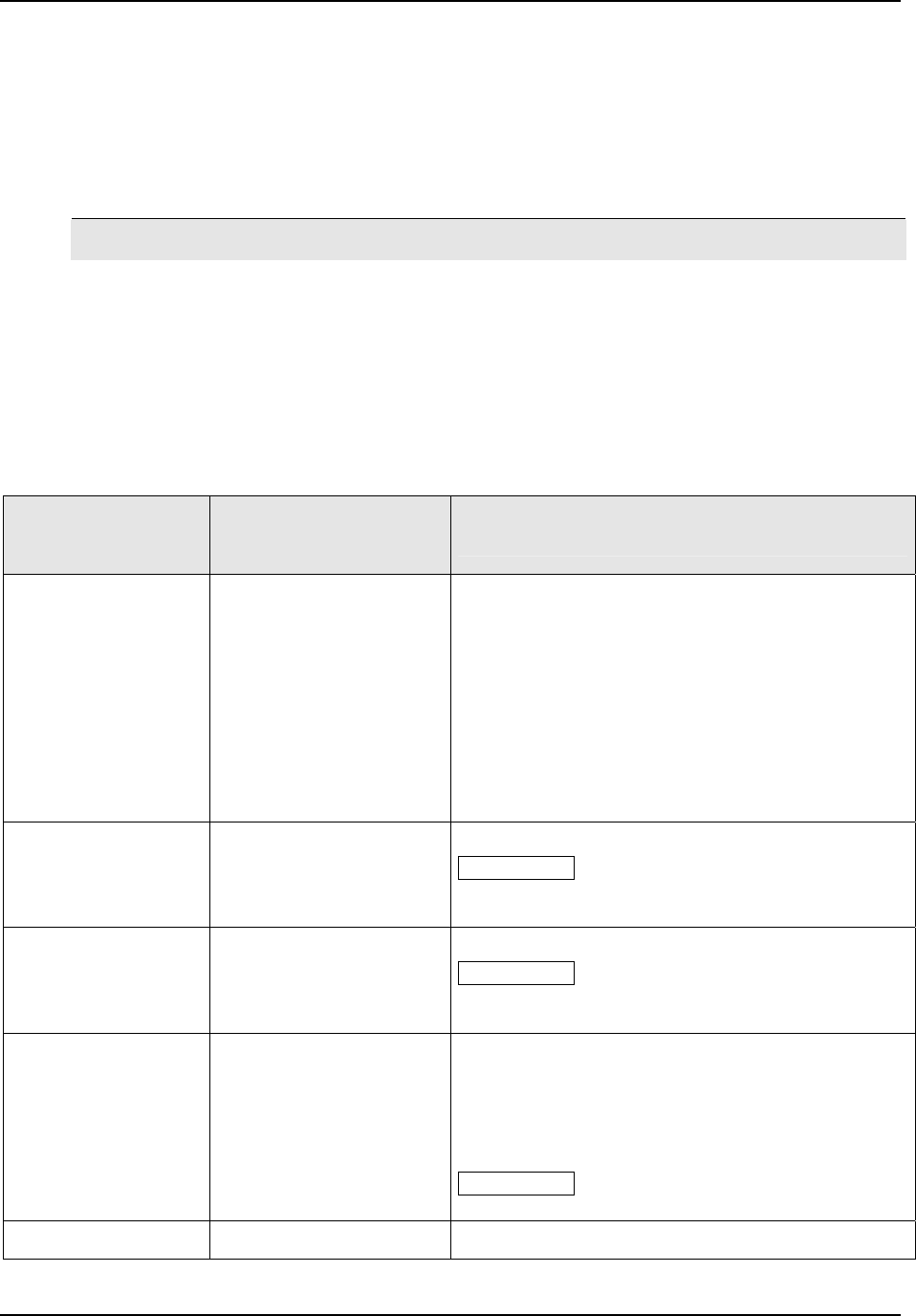
Configuration
3.7 SP Program 2 Set Up Group
Introduction
An optional second SetPoint Program. SP Programs #1 and #2 can be linked together to
form a single, longer SP Program.
ATTENTION
Please note that the configurations used in SP Program #1 for Program End,
Program State, Power Up and Key Reset affect all other SP Programs. For this
reason, Program #1 must always be enabled in order to enable Programs #2, 3
and/or 4.
Function Prompts
Table 3-7 SP PROG2 Group Function Prompts
Function Prompt
Lower Display
Selections or
Range of Setting
Upper Display
Parameter
Definition
SP PROG2
(optional feature)
SP Ramp must be
disabled for SP
Program prompts to
appear. If SP Rate is
enabled, it does not
operate while an SP
Program is running.
DISABLE
ENABLE
ENABLE2
ENABL12
LINK
SETPOINT RAMP/SOAK PROGRAM #2—Available
only with controllers that contain this option.
SP RAMP must be disabled.
DISABLE—Disables setpoint programming.
ENABLE—Enables setpoint programming–Loop 1.
ENABLE2—Enables setpoint programming–Loop 2.
ENABL12—Enables setpoint programming–Both
Loop1 and Loop 2.
LINK—Programs 1 and 2 are linked
STRT SEG
1 to 20
START SEGMENT NUMBER
ATTENTION When SP Programs 1 and 2 are
linked, this prompt does not appear and this value is
automatically set to 1
END SEG
2 to 20 even numbers
Always end in a soak
segment
(2, 4, ... 20)
END SEGMENT NUMBER
ATTENTION When linking Setpoint Programs 1
and 2, this End Segment Number determines the
end of the entire linked program.
RAMPUNIT
TIME
EU/MIN
EU/HR
RAMPUNIT—Engineering Units for Ramp Segments
TIME in hours: minutes
RATE in Engineering units per minute
RATE in Engineering units per hour
ATTENTION Normally the same as Program #1
when linking programs.
RECYCLES
0 to 100 recycles
Number of Program Recycles
March 2012 UDC3500 Universal Digital Controller Product Manual 65
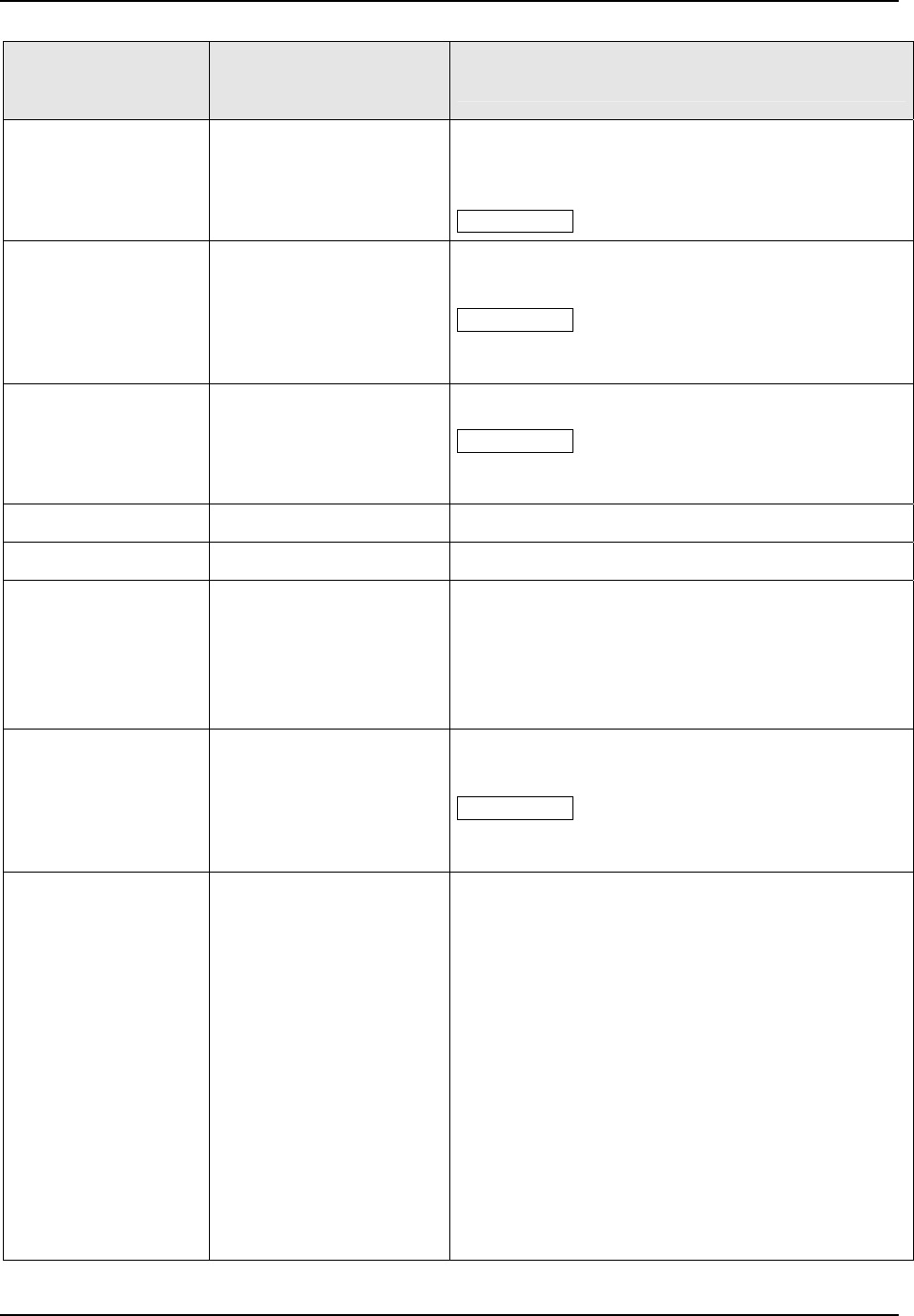
Configuration
66 UDC3500 Universal Digital Controller Product Manual March 2012
Function Prompt
Lower Display
Selections or
Range of Setting
Upper Display
Parameter
Definition
HOTSTART
DISABLE
ENABLE
HOT START—This feature allows the SP Program
to start at the current PV value rather than the
current Setpoint value.
ATTENTION Not used when linking programs
SEG1RAMP or
SEG1RATE
0-99 hours.0-59 minutes
Engineering units/minute
or
Engineering units/hour
Segment #1 Ramp Time or
Segment #1 Ramp Rate
ATTENTION This parameter is affected by the
RAMPUNIT configuration (see above). All ramps will
use the same selection.
SEG1PID
1-4
PID Set Selection
ATTENTION The PID Set Selection prompts will
only show up when PID SETS in the Control 1 or
Control 2 Setup Group is set to 4 KEYBD.
SEG2 SP
Within the Setpoint limits
Segment #2 Soak Setpoint Value
SEG2TIME
0-99 hours.0-59 minutes
Segment #2 Soak Duration
SOAK2DEV
0.000 to 99.99
Guaranteed Soak Deviation Value For Soak
Segment #2—The number selected will be the PV
value (in engineering units) above and below the
setpoint outside of which the Soak Segment timer
halts. A value of 0.000 is equivalent to no
Guaranteed Soak.
SEG2 PID
1-4
PID Set Selection—This selection is Loop
dependent.
ATTENTION The PID Set Selection prompts will
only show up when PID SETS in the Control 1 or
Control 2 Setup Group is set to 4 KEYBD.
SEG3RAMP or
SEG3RATE
SEG3 PID
SEG4 SP
SEG4TIME
SOAK4DEV
SEG4 PID
SEG5RAMP or
SEG5RATE
SEG5 PID
SEG6 SP
SEG6TIME
SOAK6DEV
SEG6 PID
SEG7RAMP or
SEG7RATE
Selections are same as
above.
Same as above
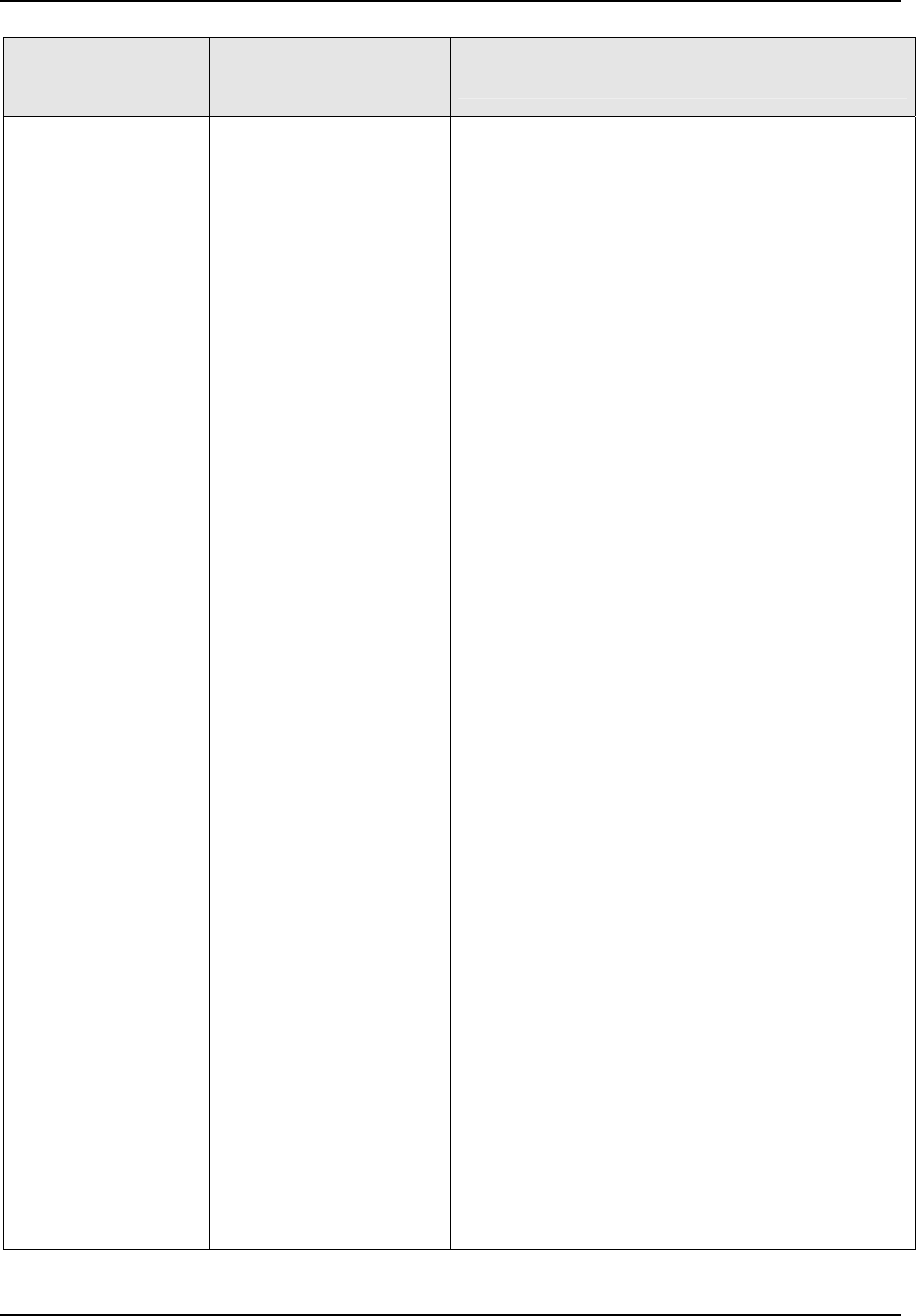
Configuration
March 2012 UDC3500 Universal Digital Controller Product Manual 67
Function Prompt
Lower Display
Selections or
Range of Setting
Upper Display
Parameter
Definition
SEG7 PID
SEG8 SP
SEG8TIME
SOAK8DEV
SEG8 PID
SEG9RAMP or
SEG9RATE
SEG9 PID
SG10 SP
SG10TIME
SOAK10DEV
SG10 PID
SG11RAMP or
SG11RATE
SG11 PID
SG12 SP
SG12TIME
SOAK12DEV
SG12 PID
SG13RAMP or
SG13RATE
SG13 PID
SG14 SP
SG14TIME
SOAK14DEV
SG14 PID
SG15RAMP or
SG15RATE
SG15 PID
SG16 SP
SG16TIME
SOAK16DEV
SG16 PID
SG17RAMP or
SG17RATE
SG17 PID
SG18 SP
SG18TIME
SOAK18DEV
SG18 PID
SG19RAMP or
SG19RATE
SG19 PID
SG20 SP
SG20TIME
SOAK20DEV
SG20 PID
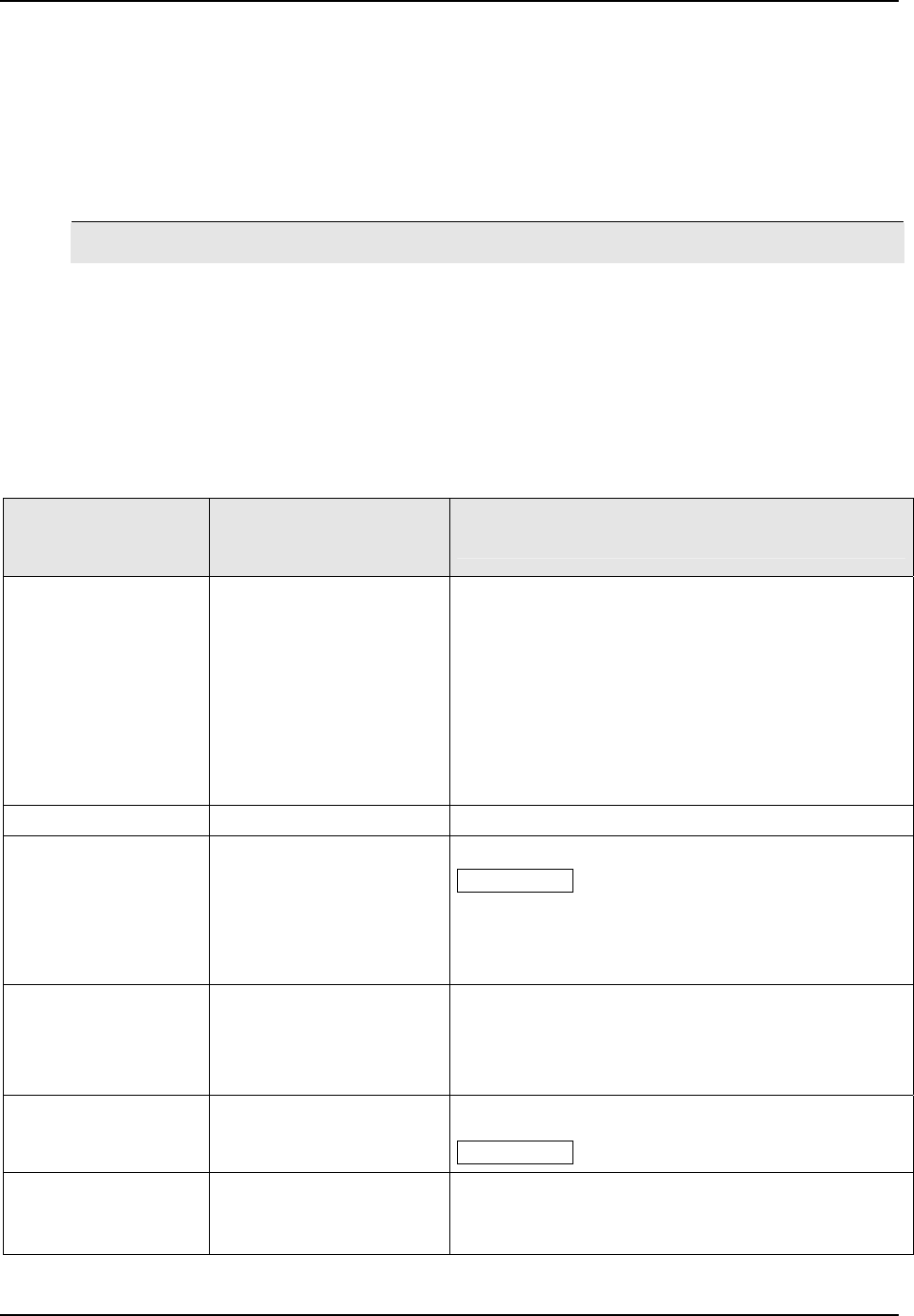
Configuration
3.8 SP Program 3 Set Up Group
Introduction
An optional third SetPoint Program. SP Programs #3 and #4 can be linked together to
form a single, longer SP Program.
ATTENTION
Please note that the configurations used in SP Program #1 for Program End,
Program State, Power Up and Key Reset affect all other SP Programs. For this
reason, Program #1 must always be enabled in order to enable Programs #2, 3
and/or 4.
Function Prompts
Table 3-8 SP PROG3 Group Function Prompts
Function Prompt
Lower Display
Selections or
Range of Setting
Upper Display
Parameter
Definition
SP PROG3
(optional feature)
SP Ramp must be
disabled for SP
Program prompts to
appear. If SP Rate is
enabled, it does not
operate while an SP
Program is running.
DISABLE
ENABLE
ENABLE2
ENABL12
SETPOINT RAMP/SOAK PROGRAM #3—Available
only with controllers that contain this option.
SP RAMP must be disabled.
DISABLE—Disables setpoint programming.
ENABLE—Enables setpoint programming–Loop 1.
ENABLE2—Enables setpoint programming–Loop 2.
ENABL12—Enables setpoint programming–Both
Loop1 and Loop 2.
STRT SEG
1 to 20
START SEGMENT NUMBER
END SEG
2 to 20 even numbers
Always end in a soak
segment
(2, 4, ... 20)
END SEGMENT NUMBER
ATTENTION When SP Programs 3 and 4 are
linked, this parameter does not appear. The value is
automatically set to 20 and the End Segment
Number is controlled by the selection for End
Segment in SP Program #4.
RAMPUNIT
TIME
EU/MIN
EU/HR
RAMPUNIT—Engineering Units for Ramp Segments
TIME in hours: minutes
RATE in Engineering units per minute
RATE in Engineering units per hour
RECYCLES
0 to 100 recycles
Number of Program Recycles
ATTENTION Not used when linking programs
HOTSTART
DISABLE
ENABLE
HOT START—This feature allows the SP Program
to start at the current PV value rather than the
current Setpoint value.
68 UDC3500 Universal Digital Controller Product Manual March 2012
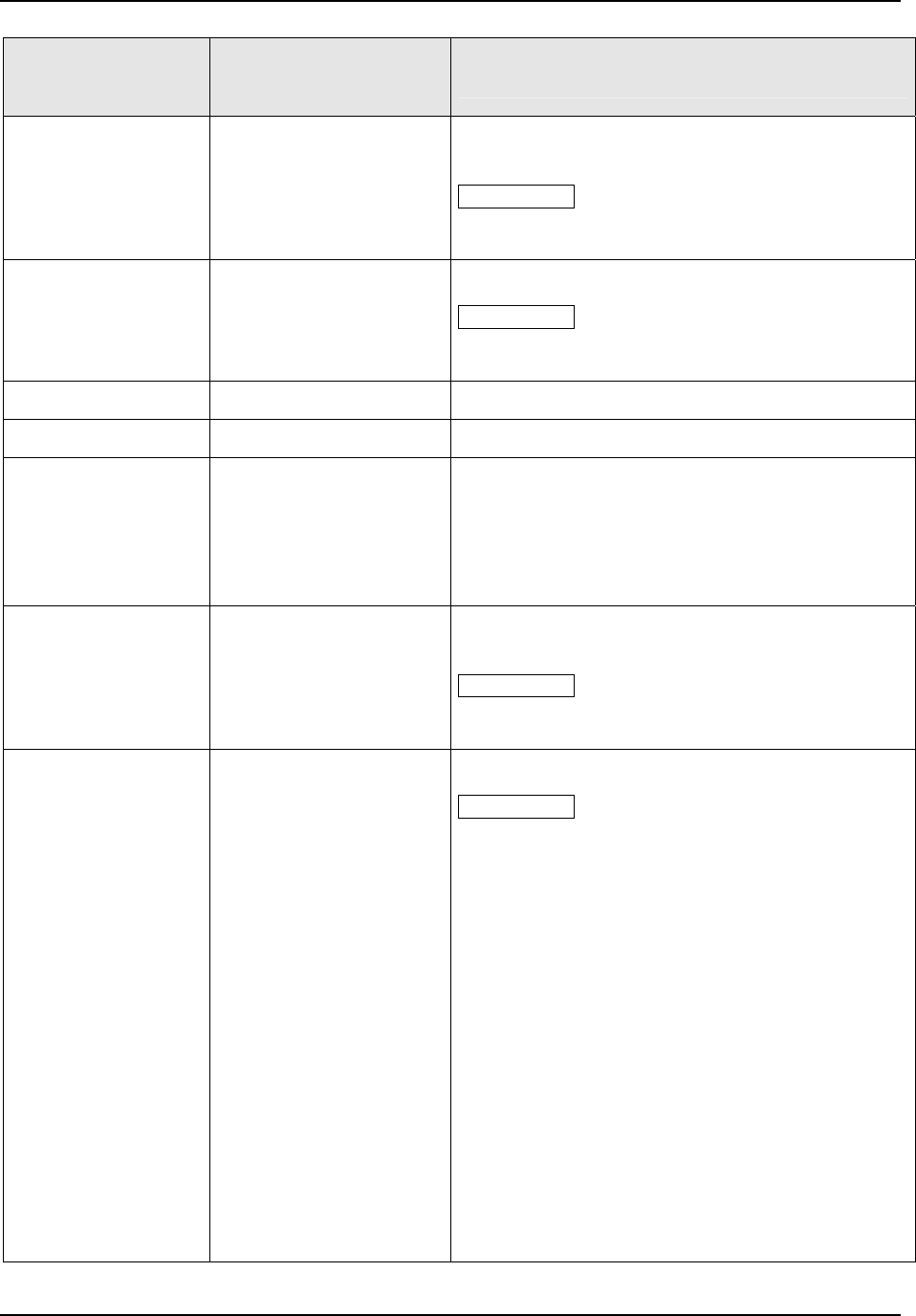
Configuration
March 2012 UDC3500 Universal Digital Controller Product Manual 69
Function Prompt
Lower Display
Selections or
Range of Setting
Upper Display
Parameter
Definition
SEG1RAMP or
SEG1RATE
0-99 hours.0-59 minutes
Engineering units/minute
or
Engineering units/hour
Segment #1 Ramp Time or
Segment #1 Ramp Rate
ATTENTION This parameter is affected by the
RAMPUNIT configuration (see above). All ramps will
use the same selection.
SEG1PID
1-4
PID Set Selection
ATTENTION The PID Set Selection prompts will
only show up when PID SETS in the Control 1 or
Control 2 Setup Group is set to 4 KEYBD.
SEG2 SP
Within the Setpoint limits
Segment #2 Soak Setpoint Value
SEG2TIME
0-99 hours.0-59 minutes
Segment #2 Soak Duration
SOAK2DEV
0.000 to 99.99
Guaranteed Soak Deviation Value For Soak
Segment #2—The number selected will be the PV
value (in engineering units) above and below the
setpoint outside of which the Soak Segment timer
halts. A value of 0.000 is equivalent to no
Guaranteed Soak.
SEG2 PID
1-4
PID Set Selection—This selection is Loop
dependent.
ATTENTION The PID Set Selection prompts will
only show up when PID SETS in the Control 1 or
Control 2 Setup Group is set to 4 KEYBD.
SEG3RAMP or
SEG3RATE
SEG3 PID
SEG4 SP
SEG4TIME
SOAK4DEV
SEG4 PID
SEG5RAMP or
SEG5RATE
SEG5 PID
SEG6 SP
SEG6TIME
SOAK6DEV
SEG6 PID
SEG7RAMP or
SEG7RATE
SEG7 PID
SEG8 SP
SEG8TIME
SOAK8DEV
SEG8 PID
Selections are same as
above.
Same as above
ATTENTION When linking programs, all 20
segments in Program 3 MUST be used.
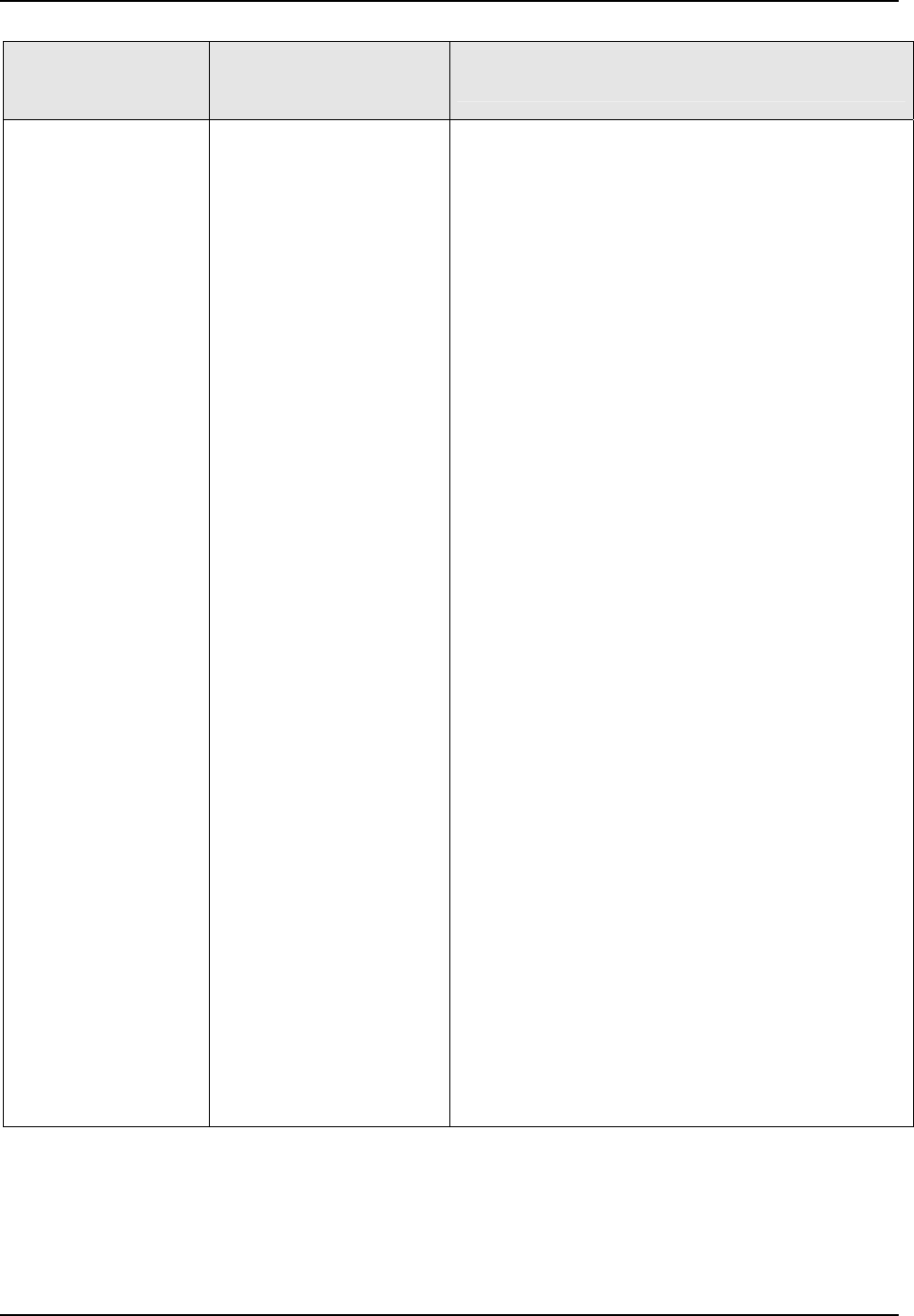
Configuration
70 UDC3500 Universal Digital Controller Product Manual March 2012
Function Prompt
Lower Display
Selections or
Range of Setting
Upper Display
Parameter
Definition
SEG9RAMP or
SEG9RATE
SEG9 PID
SG10 SP
SG10TIME
SOAK10DEV
SG10 PID
SG11RAMP or
SG11RATE
SG11 PID
SG12 SP
SG12TIME
SOAK12DEV
SG12 PID
SG13RAMP or
SG13RATE
SG13 PID
SG14 SP
SG14TIME
SOAK14DEV
SG14 PID
SG15RAMP or
SG15RATE
SG15 PID
SG16 SP
SG16TIME
SOAK16DEV
SG16 PID
SG17RAMP or
SG17RATE
SG17 PID
SG18 SP
SG18TIME
SOAK18DEV
SG18 PID
SG19RAMP or
SG19RATE
SG19 PID
SG20 SP
SG20TIME
SOAK20DEV
SG20 PID
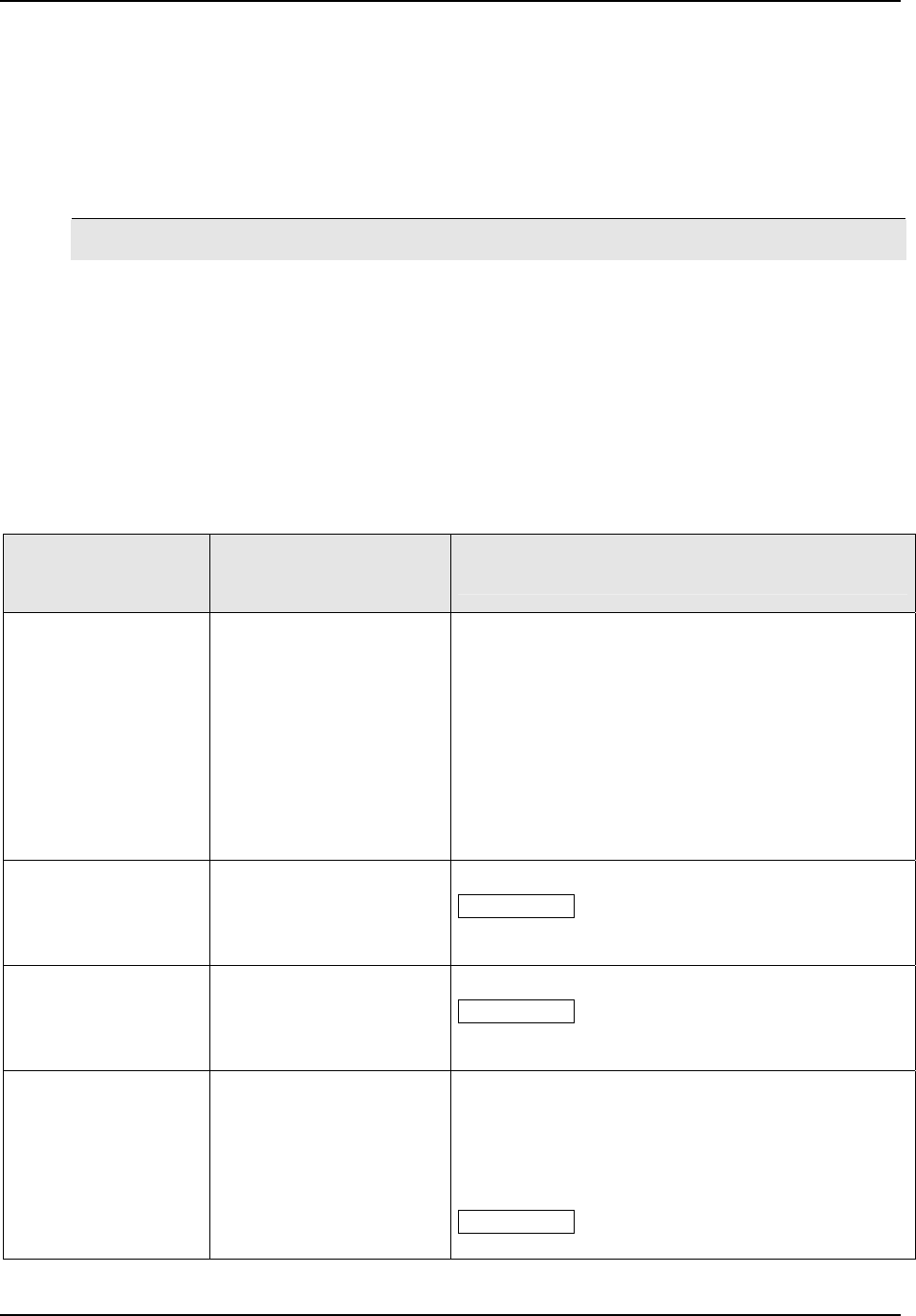
Configuration
3.9 SP Program 4 Set Up Group
Introduction
An optional fourth SetPoint Program. SP Programs #3 and #4 can be linked together to
form a single, longer SP Program.
ATTENTION
Please note that the configurations used in SP Program #1 for Program End, Program
State, Power Up and Key Reset affect all other SP Programs. For this reason, Program
#1 must always be enabled in order to enable Programs #2, 3 and/or 4.
Enabling SP Program 4 automatically disables the characterizers in the Math Setup
Group.
Function Prompts
Table 3-9 SP PROG4 Group Function Prompts
Function Prompt
Lower Display
Selections or
Range of Setting
Upper Display
Parameter
Definition
SP PROG4
(optional feature)
SP Ramp must be
disabled for SP
Program prompts to
appear. If SP Rate is
enabled, it does not
operate while an SP
Program is running.
DISABLE
ENABLE
ENABLE2
ENABL12
LINK
SETPOINT RAMP/SOAK PROGRAM #2—Available
only with controllers that contain this option.
SP RAMP must be disabled.
DISABLE—Disables setpoint programming.
ENABLE—Enables setpoint programming–Loop 1.
ENABLE2—Enables setpoint programming–Loop 2.
ENABL12—Enables setpoint programming–Both
Loop1 and Loop 2.
LINK—Programs 3 and 4 are linked
STRT SEG
1 to 20
START SEGMENT NUMBER
ATTENTION When SP Programs 3 and 4 are
linked, this prompt does not appear and this value is
automatically set to 1.
END SEG
2 to 20 even numbers
Always end in a soak
segment
(2, 4, ... 20)
END SEGMENT NUMBER
ATTENTION When linking Setpoint Programs 3
and 4, this End Segment Number determines the
end of the entire linked program.
RAMPUNIT
TIME
EU/MIN
EU/HR
RAMPUNIT—Engineering Units for Ramp Segments
TIME in hours: minutes
RATE in Engineering units per minute
RATE in Engineering units per hour
ATTENTION Normally the same as Program #3
when linking programs.
March 2012 UDC3500 Universal Digital Controller Product Manual 71
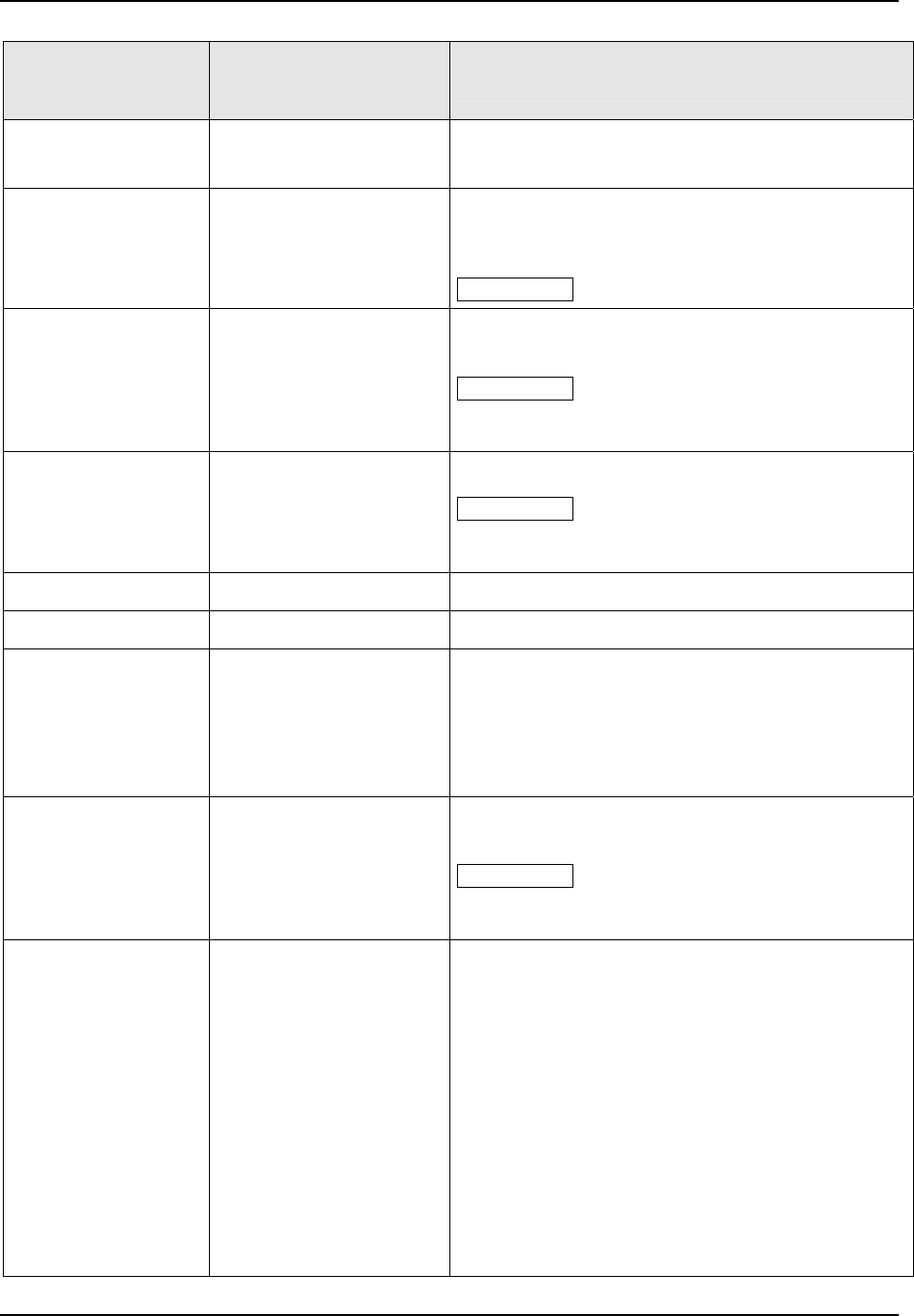
Configuration
72 UDC3500 Universal Digital Controller Product Manual March 2012
Function Prompt
Lower Display
Selections or
Range of Setting
Upper Display
Parameter
Definition
RECYCLES
0 to 100 recycles
Number of Program Recycles
HOTSTART
DISABLE
ENABLE
HOT START—This feature allows the SP Program
to start at the current PV value rather than the
current Setpoint value.
ATTENTION Not used when linking programs.
SEG1RAMP or
SEG1RATE
0-99 hours.0-59 minutes
Engineering units/minute
or
Engineering units/hour
Segment #1 Ramp Time or
Segment #1 Ramp Rate
ATTENTION This parameter is affected by the
RAMPUNIT configuration (see above). All ramps will
use the same selection.
SEG1PID
1-4
PID Set Selection
ATTENTION The PID Set Selection prompts will
only show up when PID SETS in the Control 1 or
Control 2 Setup Group is set to 4 KEYBD.
SEG2 SP
Within the Setpoint limits
Segment #2 Soak Setpoint Value
SEG2TIME
0-99 hours.0-59 minutes
Segment #2 Soak Duration
SOAK2DEV
0.000 to 99.99
Guaranteed Soak Deviation Value For Soak
Segment #2—The number selected will be the PV
value (in engineering units) above and below the
setpoint outside of which the Soak Segment timer
halts. A value of 0.000 is equivalent to no
Guaranteed Soak.
SEG2 PID
1-4
PID Set Selection—This selection is Loop
dependent.
ATTENTION The PID Set Selection prompts will
only show up when PID SETS in the Control 1 or
Control 2 Setup Group is set to 4 KEYBD.
SEG3RAMP or
SEG3RATE
SEG3 PID
SEG4 SP
SEG4TIME
SOAK4DEV
SEG4 PID
SEG5RAMP or
SEG5RATE
SEG5 PID
SEG6 SP
SEG6TIME
SOAK6DEV
SEG6 PID
SEG7RAMP or
Selections are same as
above.
Same as above
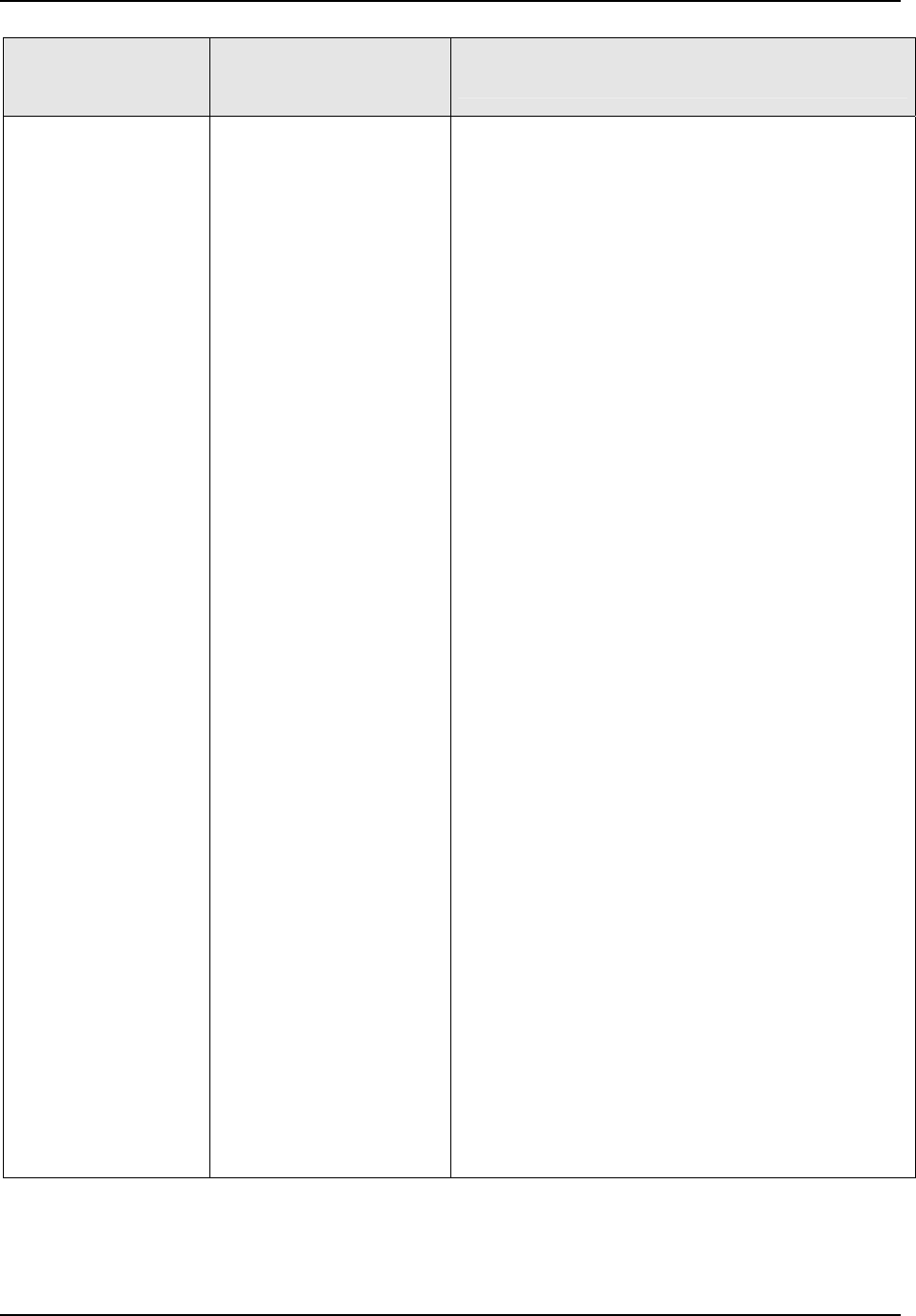
Configuration
March 2012 UDC3500 Universal Digital Controller Product Manual 73
Function Prompt
Lower Display
Selections or
Range of Setting
Upper Display
Parameter
Definition
SEG7RATE
SEG7 PID
SEG8 SP
SEG8TIME
SOAK8DEV
SEG8 PID
SEG9RAMP or
SEG9RATE
SEG9 PID
SG10 SP
SG10TIME
SOAK10DEV
SG10 PID
SG11RAMP or
SG11RATE
SG11 PID
SG12 SP
SG12TIME
SOAK12DEV
SG12 PID
SG13RAMP or
SG13RATE
SG13 PID
SG14 SP
SG14TIME
SOAK14DEV
SG14 PID
SG15RAMP or
SG15RATE
SG15 PID
SG16 SP
SG16TIME
SOAK16DEV
SG16 PID
SG17RAMP or
SG17RATE
SG17 PID
SG18 SP
SG18TIME
SOAK18DEV
SG18 PID
SG19RAMP or
SG19RATE
SG19 PID
SG20 SP
SG20TIME
SOAK20DEV
SG20 PID
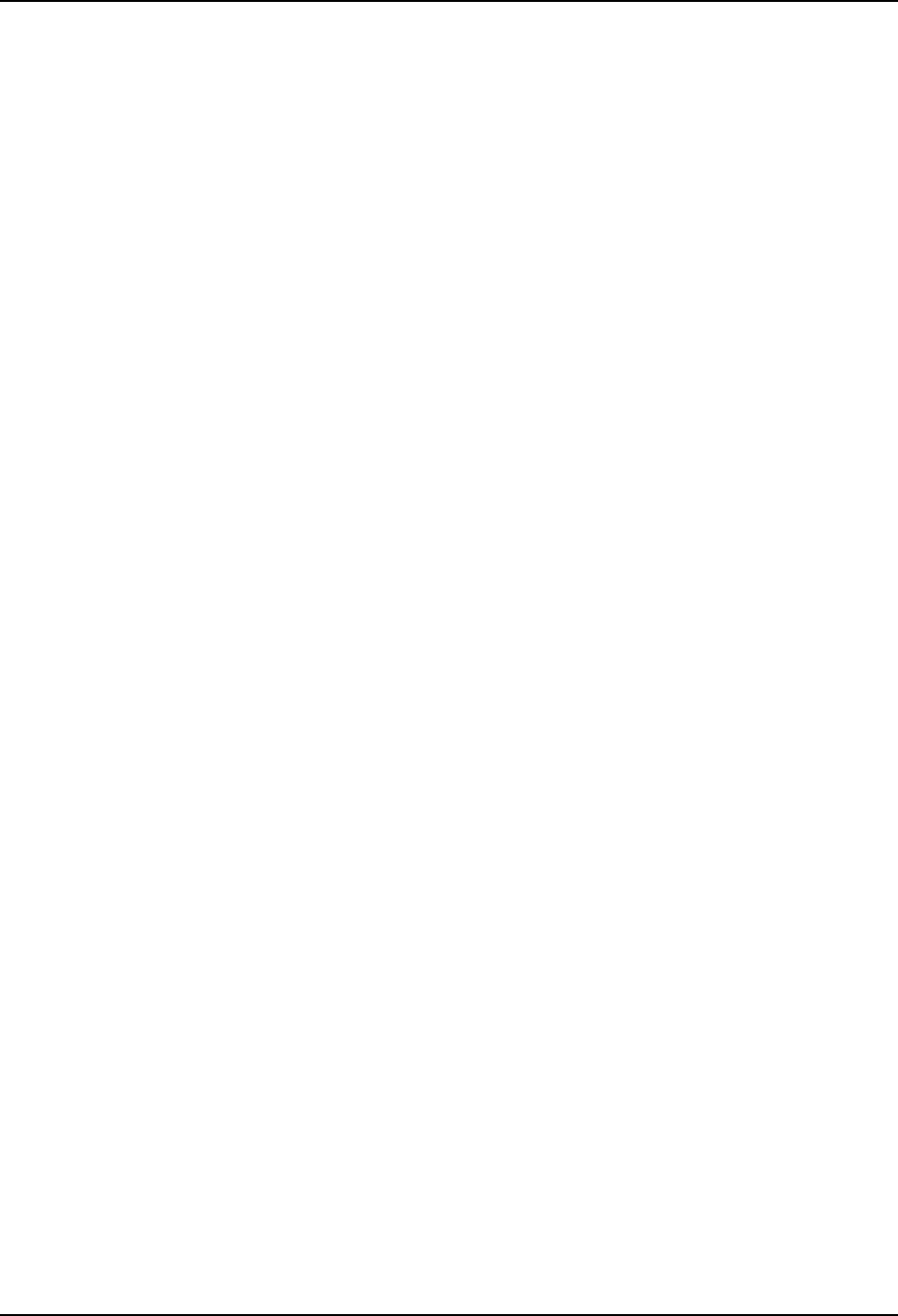
Configuration
3.10 Accutune Set Up Group
Introduction
Accutune III automatically calculates GAIN, RATE, and RESET TIME (PID) tuning
constants for your control loop. When initiated on demand, the Accutune algorithm
measures a process step response and automatically generates the PID tuning constants
needed for no overshoot on your process.
The Accutune III set up group offers these selections:
Fuzzy, Fuzzy Overshoot Suppression: When enabled, this configuration will suppress
or eliminate any overshoot that may occur as a result of the existing tuning
parameters, as the PV approaches the setpoint.
Tune, Demand Tuning: This tuning cycles the output to the output limits causing the
PV to oscillate around the SP value. This tuning does not require the process to be at
lineout (stabilized) and may be moving. The tuning process is initiated through the
operator interface keys or via a digital input (if configured). The algorithm then
calculates new tuning parameters and enters them in the tuning group. Tune will
operate with PIDA, PIDB, PD+MR and Three Position Step Control algorithms.
SP, SP Tuning: When activated in automatic control, the output makes an output step
in the direction of the SP and starts measurement activities to calculate the tuning
parameters based on the PV response. In order to work properly, this tuning requires
that the process be at lineout (stabilized) for a period before SP Tune is initiated.
SP tuning continuously adjusts the PID parameters in response to setpoint changes.
You can select tuning on minimum setpoint changes of 5 % up to 15 % span.
Perform SP tuning after you have configured the controller. SP Tuning does not
operate with the Three Position Step Control algorithm.
Tune + PV or SP + PV, PV Tuning: The (TUNE) Demand Tuning or the (SP) Setpoint
Tuning portions of these selections work as stated above. PV Adapt will occur during
Process Variable (PV) disturbances (0.3% span or larger) which result from non-
linearities, process dynamics, load changes, or other operating conditions. When this
condition exists, the controller monitors the process response for 1 and 1/2 process
cycles around the setpoint to determine whether there has been a true process change
or a momentary upset.
Process retuning occurs as the process dynamics are learned. When the process is
being learned with possible retune, a “t” is shown in the upper left display digit.
Simplex Tuning is used when a Simplex Control Algorithm is configured and uses the
current SP value and alters the output over the Output Limit Range.
Duplex Tuning is used when a Duplex Control Algorithm is configured. To perform a
Duplex Tune, Two Local Setpoints must be configured per the Control Group in
Section 3.20.
See Section 4.10 for additional information.
74 UDC3500 Universal Digital Controller Product Manual March 2012
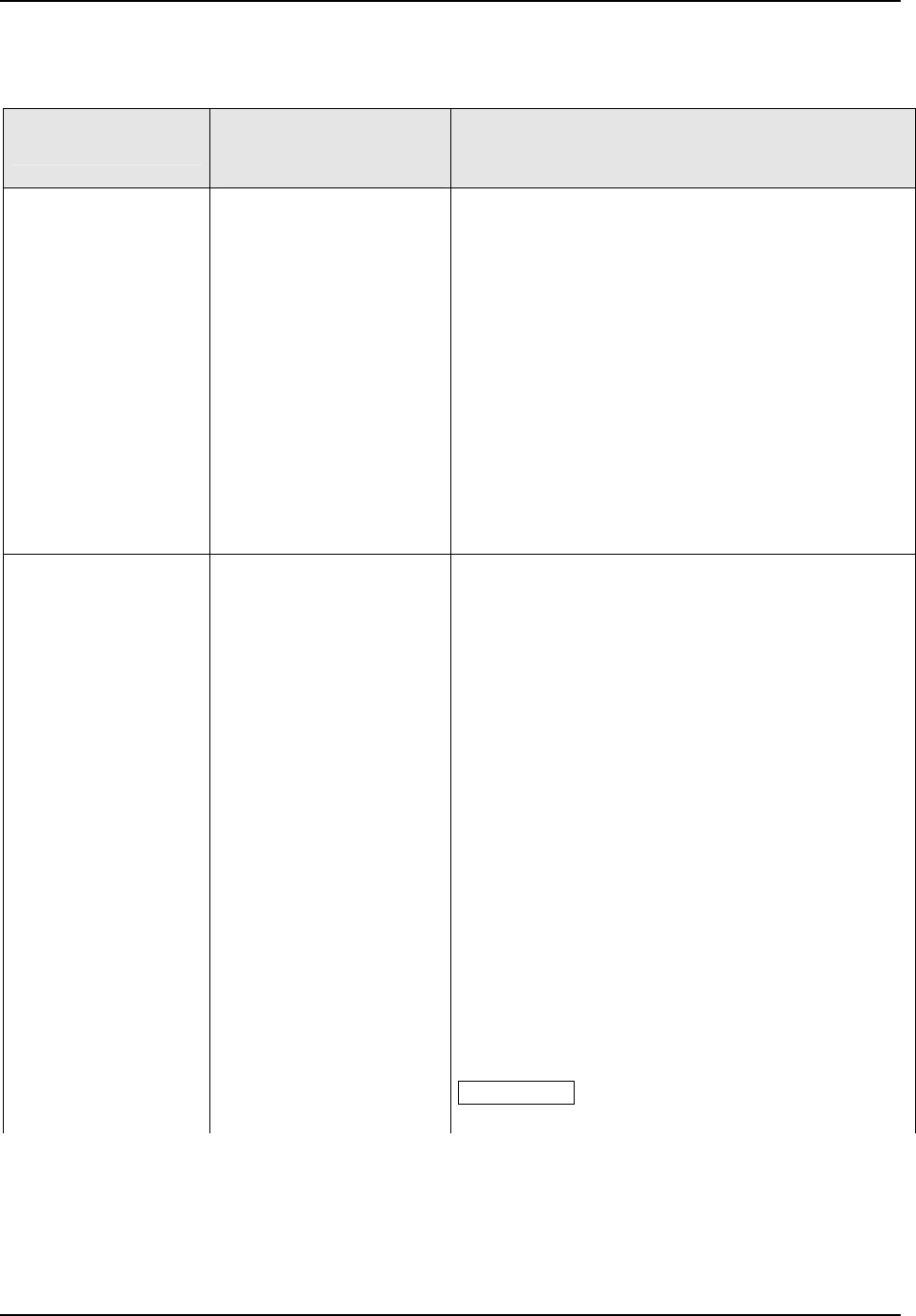
Configuration
Function Prompts
Table 3-10 ACCUTUNE Group Function Prompts
Function Prompt
Lower Display
Selections or
Range of Setting
Upper Display
Parameter
Definition
FUZZY
FUZZY OVERSHOOT SUPPRESSION—Can be
enabled or disabled independently of whether
Demand Tuning or SP Tuning is enabled or
disabled.
DISABLE
DISABLE—Disables Fuzzy Overshoot Suppression.
ENABLE
ENABLE—The instrument uses Fuzzy Logic to
suppress or minimize any overshoot that may occur
when PV approaches SP. It will not recalculate any
new tuning parameters.
ENABLE2
ENABLE ON LOOP2 ONLY—Fuzzy Tune used only
on Loop 2.
ENABL12
ENABLE ON BOTH LOOPS—Fuzzy Tune used on
both loops.
ACCUTUNE
ACCUTUNE III
DISABLE
DISABLE—Disables the Accutune function.
TUNE
DEMAND TUNING—If TUNE is selected, and tuning
is initiated through the operator interface or digital
input (if configured), the algorithm calculates new
tuning parameters and enters them into the tuning
group. This tuning requires no process knowledge
and does not require line out for initialization.
TUNE is the recommended start-up mode—to be
used when no knowledge of the process tuning
values is available. In the Start-up mode, after
enabling ACCUTUNE, the operator simply
configures the desired SP value and enables the
ACCUTUNE process via the keyboard.
SP
SETPOINT TUNING—This selection tunes on
setpoint changes only. It employs time domain
analysis to accelerate line out at any desired setpoint
without prior initialization or process knowledge. This
method should only be used after the process has
lined out (stabilized).
ATTENTION When SP Tune is active (T displayed)
the Tuning Group parameters cannot be changed.
March 2012 UDC3500 Universal Digital Controller Product Manual 75
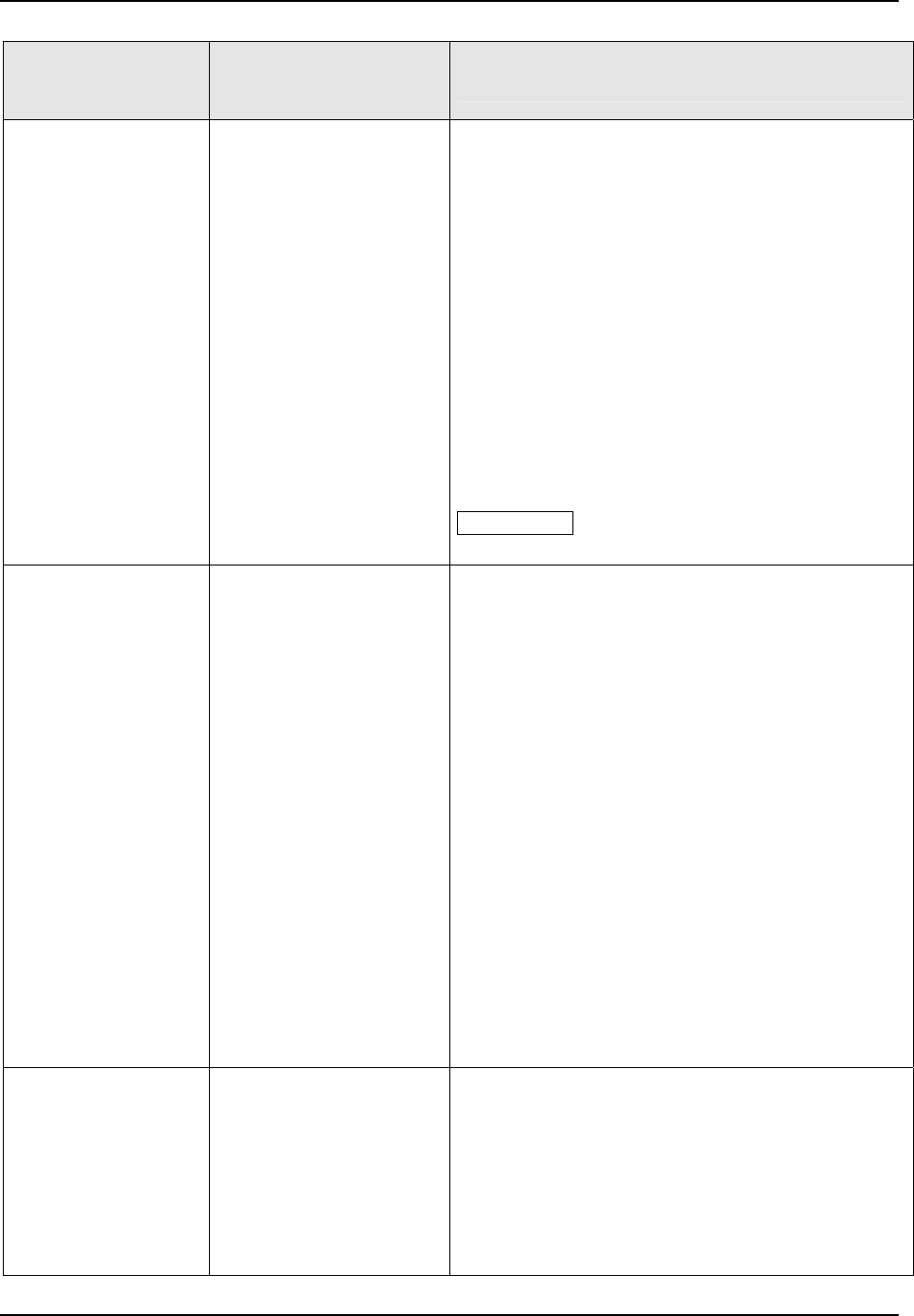
Configuration
76 UDC3500 Universal Digital Controller Product Manual March 2012
Function Prompt
Lower Display
Selections or
Range of Setting
Upper Display
Parameter
Definition
TUNE+PV
DEMAND TUNING PLUS PV ADAPTIVE
TUNING—This selection provides “TUNE” on
demand tuning plus PV Adaptive tuning whenever a
PV process disturbance equal to or greater than
0.3% of span occurs. After a disturbance of 1.5
process cycles around the Setpoint occurs, this
selection will initiate a recalculation of the Tuning
parameters.
SP+PV
SETPOINT TUNING PLUS PV ADAPTIVE
TUNING—This selection tunes whenever the SP is
changed plus performs a PV Adaptive Tune
whenever a PV process disturbance equal to or
greater than 0.3% of span occurs. After a
disturbance of 1.5 process cycles around the
Setpoint occurs, this selection will initiate a
recalculation of the Tuning parameters.
ATTENTION When SP Tune is active (T displayed)
the Tuning Group parameters cannot be changed.
DUPLEX
DUPLEX ACCUTUNING III—These prompts only
appear when a duplex output type has been
configured and TUNE or TUNE+PV has been
selected.
MANUAL
MANUAL—Tune manually using LSP 1 and LSP 2
values. LSP 1 is used to derive tuning parameters
associated with HEAT (output > 50 %). LSP 2 is
used to derive tuning parameters associated with
COOL (output < 50 %).
AUTO
AUTOMATIC—Tuning is performed automatically on
both HEAT and COOL sequentially. LSP 1 is used
for HEAT tuning and LSP 2 is used for COOL tuning.
To initiate tuning, either LSP 1 or LSP 2 must be in
use.
DISABLE
DISABLE—The current Setpoint is used to derive a
single set of blended tuning parameters. This tuning
is performed over the range of the output limits
similar to Simplex Tuning. The Tuning Parameters
derived are placed into both the HEAT and COOL
tune sets (PID 1 and PID 2).
SP CHANG
5 to 15%
SETPOINT CHANGE—This prompt appears only
when SP or SP+PV has been selected. This is the
minimum Setpoint change on Loop 1 that will result
in a re-tuning process.
For example, if the SP range is 0 to 2400 and
Setpoint change is set to 5%, then a re-tuning
process will take place whenever the SP is changed
by 120 or more.
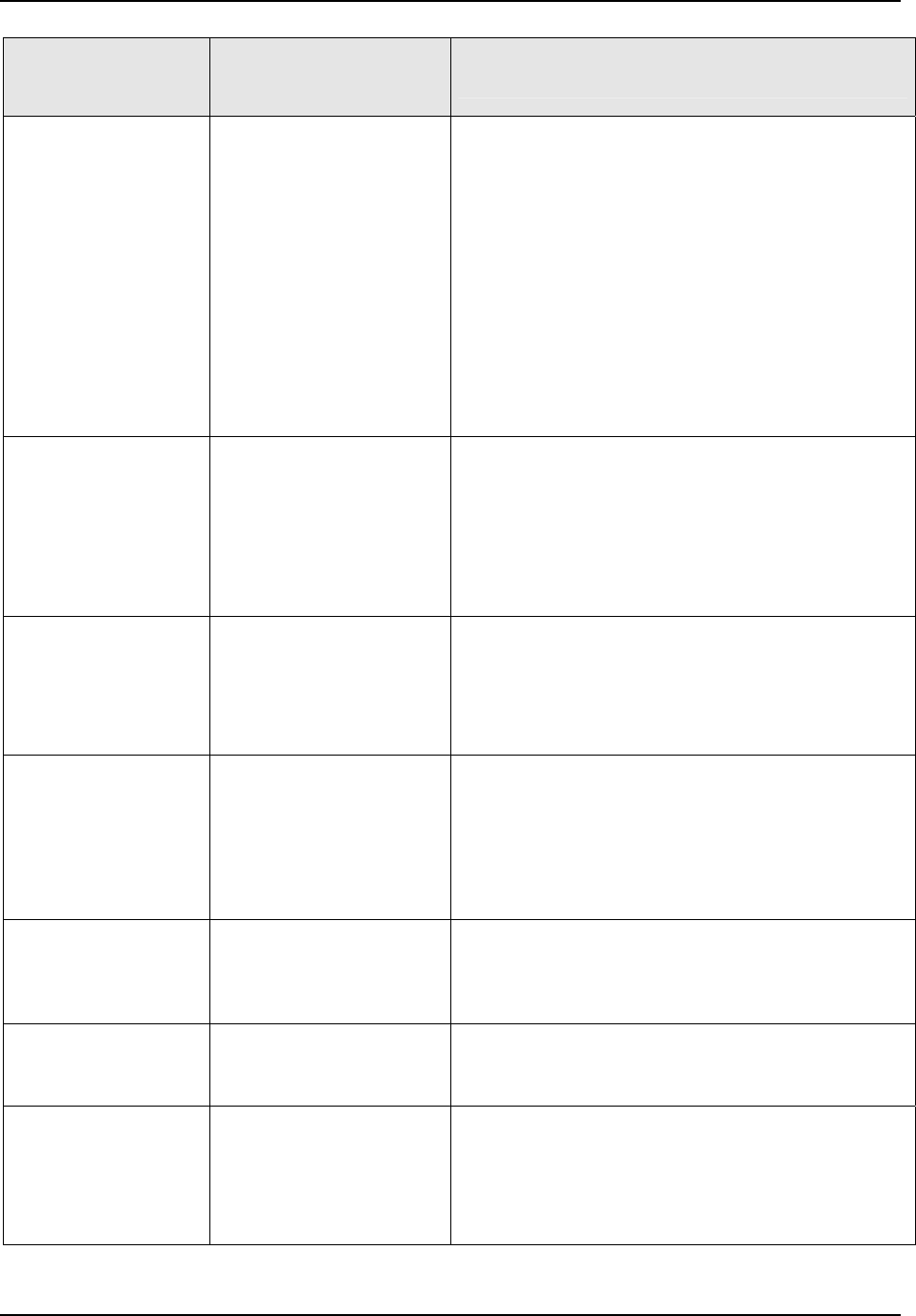
Configuration
March 2012 UDC3500 Universal Digital Controller Product Manual 77
Function Prompt
Lower Display
Selections or
Range of Setting
Upper Display
Parameter
Definition
KPG
0.10 to 10.00
PROCESS GAIN—This prompt appears only when
SP or SP+PV has been selected. This is the Gain of
the Loop 1 process being tuned. It is automatically
recalculated during the tuning process. This is
normally a READ ONLY value, but can be changed
manually if the controller fails to identify the process.
In that case, set the KPG value to the algebraic
value of PV in percent divided by the output in
percent while in manual mode.
For example, if the PV range is 0 to 2400, the PV is
currently at 1200 and the output is currently at
50.0%, then KPG should be set to
1200/2400100/50 or 1.0.
CRITERIA
TUNING CRITERIA (SETPOINT ADAPTIVE)—This
prompt appears only when SP or SP+PV has been
selected. Select criteria best suited for your process.
NORMAL
NORMAL—Original critical damping (no overshoot).
FAST
FAST—A more aggressive tuning with overshoot
equal to or less than 0.5%.
ACCUTUNE2
Same selections as for
Loop 1.
ACCUTUNE III FOR LOOP 2—Available only when
the instrument is configured for Cascade or Two
Loop operation.
Same selections as for Loop 1.
DUPLEX 2
Same selections as for
Loop 1.
DUPLEX ACCUTUNING III FOR LOOP 2—These
prompts only appear when a duplex output type has
been configured for Loop 2 and TUNE or TUNE+PV
has been selected.
Same selections as for Loop 1.
SP CHAN2
5 to 15%
SETPOINT CHANGE—This prompt appears only
when SP or SP+PV has been selected for Loop 2.
This is the minimum Setpoint change on Loop 2 that
will result in a re-tuning process.
KPG 2
0.10 to 10.00
PROCESS GAIN FOR LOOP 2—This prompt
appears only when SP or SP+PV has been selected.
This is the Gain of the Loop 2 process being tuned.
CRITERA2
Same selections as for
Loop 1.
TUNING CRITERIA (SETPOINT ADAPTIVE) FOR
LOOP 2—This prompt appears only when SP or
SP+PV has been selected for Loop 2.
Same selections as for Loop 1.
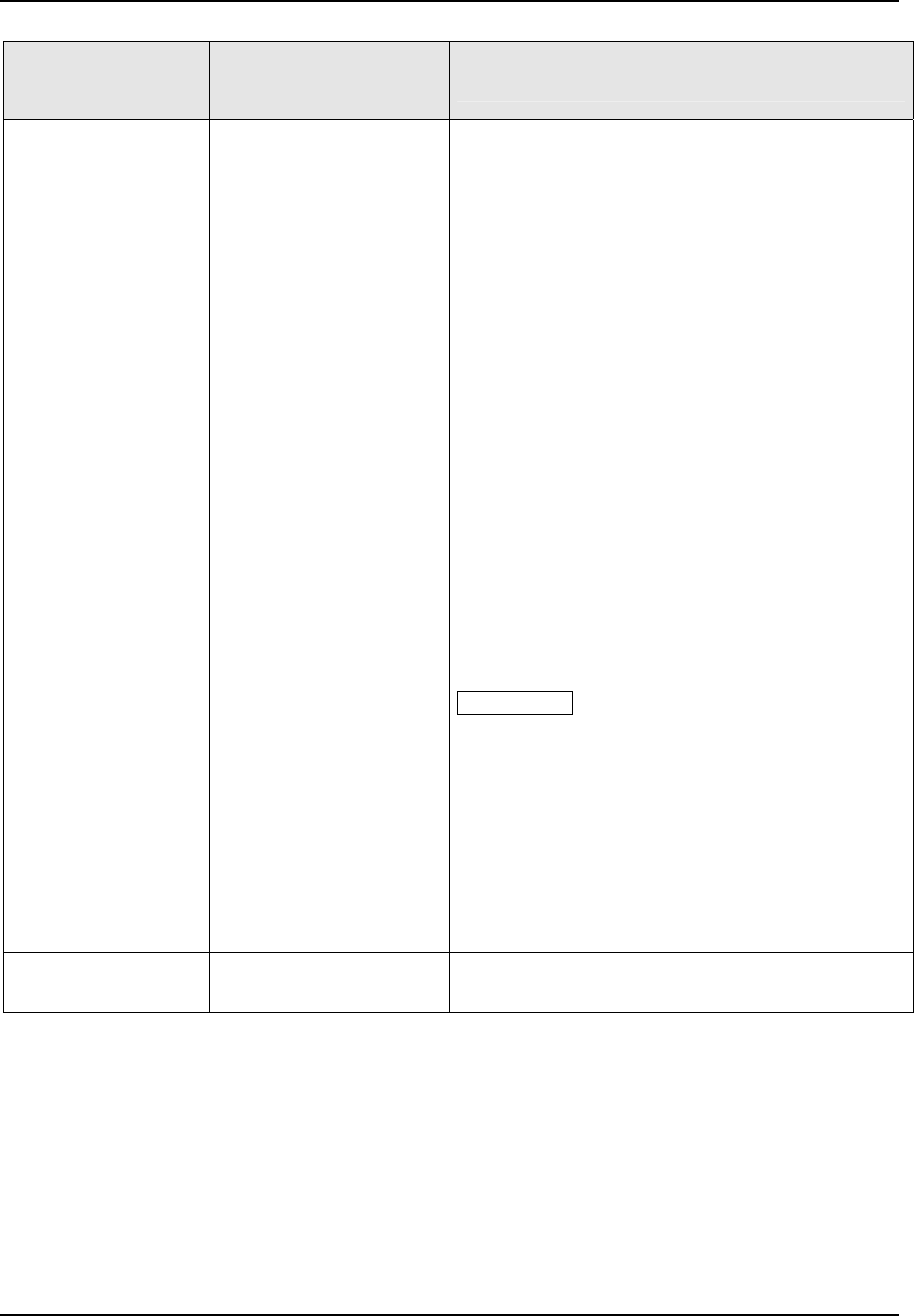
Configuration
78 UDC3500 Universal Digital Controller Product Manual March 2012
Function Prompt
Lower Display
Selections or
Range of Setting
Upper Display
Parameter
Definition
AT ERROR
(Read Only)
ACCUTUNE ERROR STATUS—When an error is
detected in the Accutune process, an error prompt
will appear.
NONE
NONE—No errors occurred during last Accutune
procedure.
RUNNING
RUNNING—An Accutune process is still active
checking process gain, even though “T” is not lit. It
does not affect keyboard operation.
ABORT
CURRENT ACCUTUNE PROCESS ABORTED—
Caused by one of the following conditions:
changing to manual mode
input detected
heat region of output but a cool output was
calculated, or vice versa
SP was changed while PV (error) tune was in
process
SP2
SP2—LSP2 not configured or a Setpoint other than
LSP1 or LSP2 is in use.
OUTLIM
OUTPUT LIMIT REACHED (HIGH OR LOW)—
Applies only to SP or SP+PV tuning. Output
insufficient to get to SP value.
ATTENTION This error will cause the controller to
switch from Automatic to Manual Mode. The output
is then set to the value present at the beginning of
the ACCUTUNE process.
IDFAIL
PROCESS IDENTIFICATION PROCESS FAILED—
Applies only to SP or SP+PV tuning. An illegal value
for Gain, Rate or Reset was calculated.
LOW PV
LOW PV—Applies only to SP or SP+PV tuning. PV
did not change sufficiently or the PV has increased
by more than 4% but Deadtime was not determined.
AT ERR 2
(Read Only)
Same as Loop 1.
ACCUTUNE ERROR STATUS FOR LOOP 2
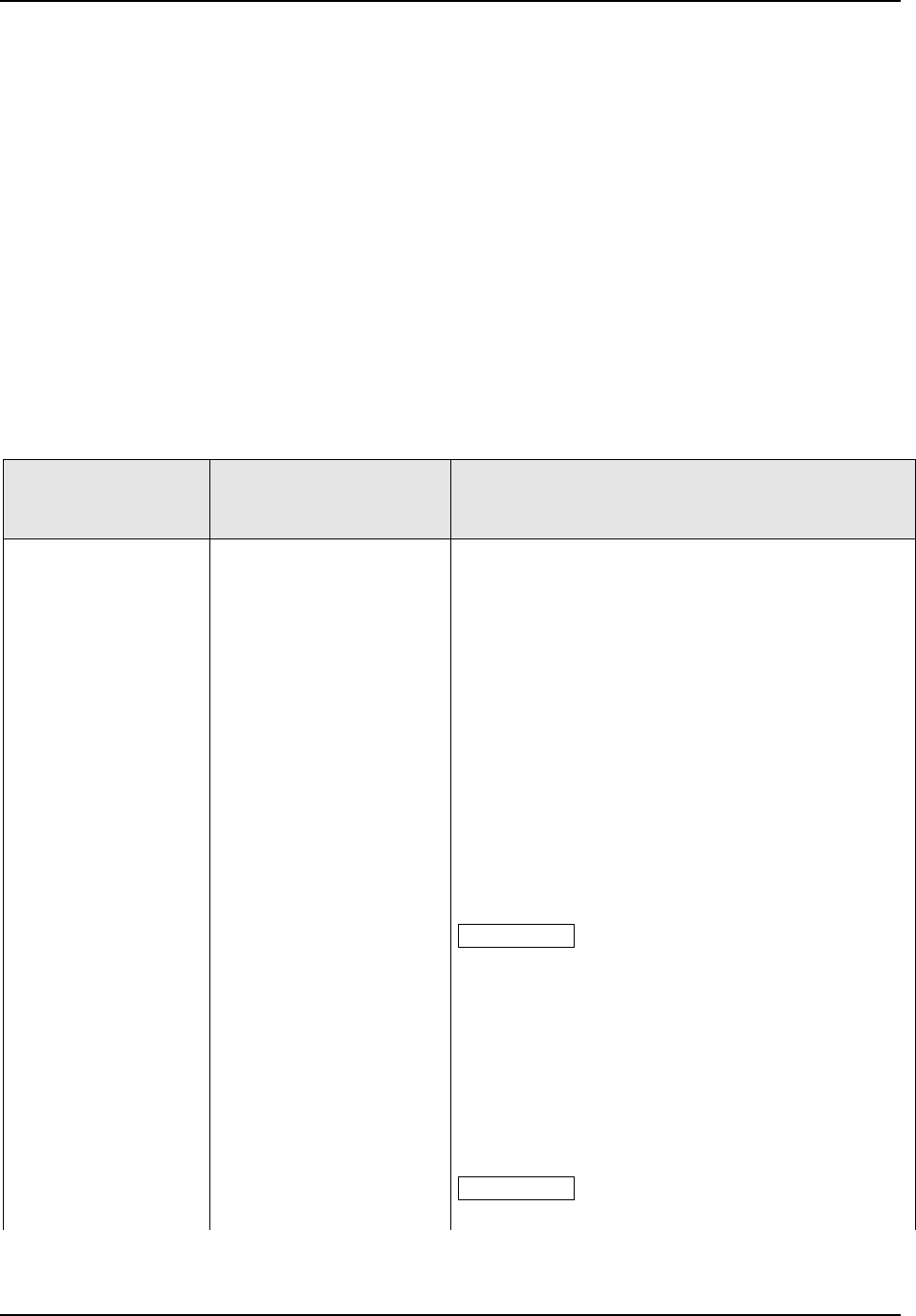
Configuration
3.11 Algorithm Set Up Group
Introduction
This data deals with various control algorithms and Timer functions.
The Timer section allows you to configure a time-out period and to select the timer start
by either the keyboard (RUN/HOLD key) or Alarm 2. An optional digital input can also be
configured to the start the timer. The timer display is selectable as either “time
remaining” (see TI REM) or “elapsed time” (see E TIME).
Alarm 1 is activated at the end of the time-out period. When the timer is enabled, it has
exclusive control of the alarm 1 relay—any previous alarm 1 configuration is ignored. At
time-out, the timer is ready to be activated again by whatever action has been configured.
Function Prompts
Table 3-11 ALGORTHM Group Function Prompts
Function Prompt
Lower Display
Selections or
Range of Setting
Upper Display
Parameter
Definition
CONT ALG
CONTROL ALGORITHM FOR LOOP 1—The
Control Algorithm lets you select the type of control
that is best for your process.
ON-OFF
ON/OFF—The simplest control type. The output can
be either ON (100 %) or OFF (0 %). The Process
Variable (PV) is compared with the setpoint (SP) to
determine the sign of the error (ERROR = PV–SP).
The ON/OFF algorithm operates on the sign of the
error signal.
In Direct Acting Control, when the error signal is
positive, the output is 100 %; and when the error
signal is negative, the output is 0 %. If the control
action is reverse, the opposite is true. An adjustable
overlap (Hysteresis Band) is provided between the
on and off states.
ATTENTION Other prompts affected: OUT HYST
DUPLEX ON/OFF—This is an extension of the ON-
OFF algorithm when the output is configured for a
Duplex control algorithm. It allows the operation of a
second ON/OFF output. There is a deadband
between the operating ranges of the two inputs and
an adjustable overlap (hysteresis) of the on and off
states of each output. Both Deadband and
Hysteresis are separately adjustable. With no relay
action the controller will read 50 %.
ATTENTION Other prompts affected: OUT HYST
and DEADBAND
March 2012 UDC3500 Universal Digital Controller Product Manual 79
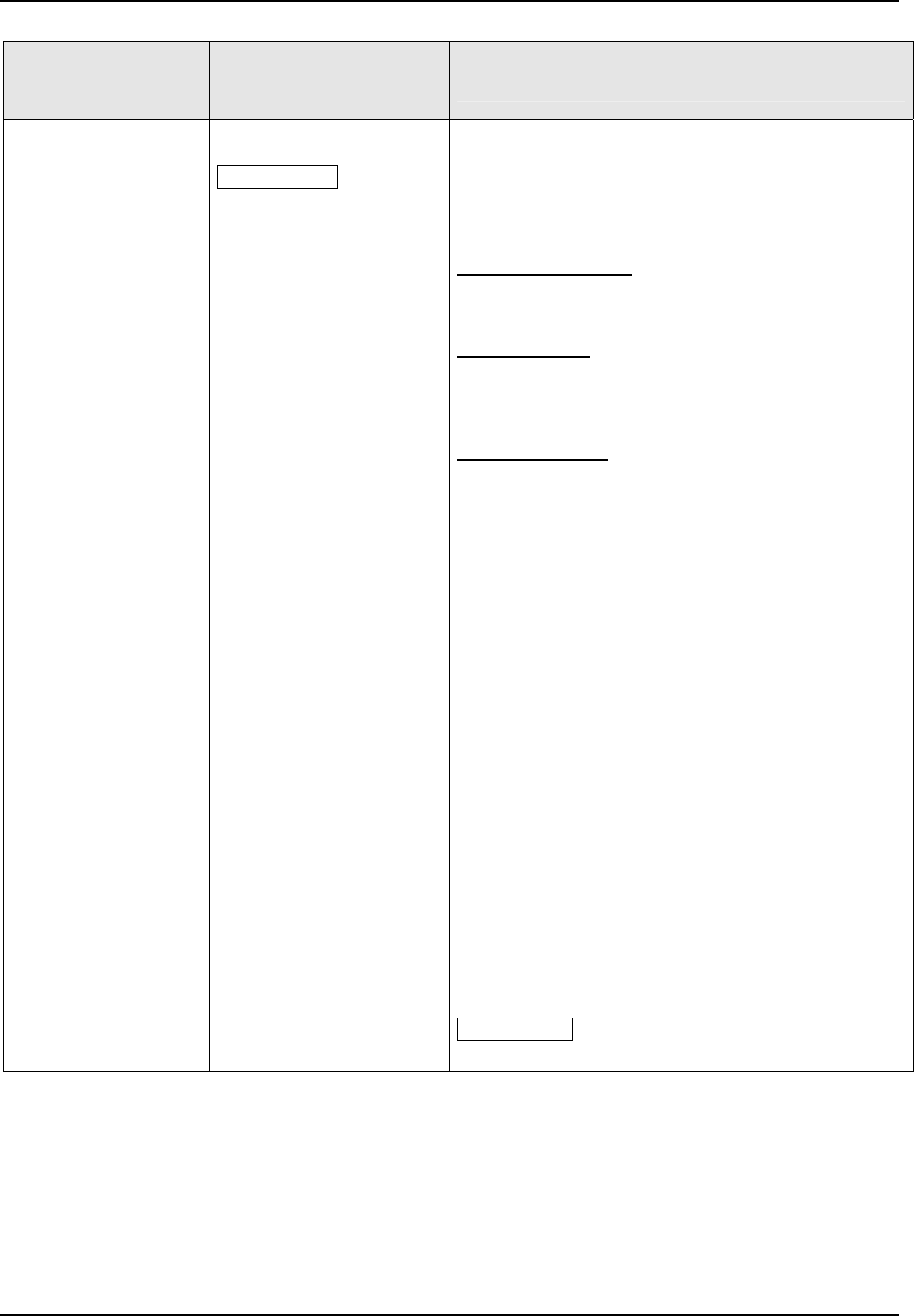
Configuration
80 UDC3500 Universal Digital Controller Product Manual March 2012
Function Prompt
Lower Display
Selections or
Range of Setting
Upper Display
Parameter
Definition
PID A
ATTENTION PID A
should not be used for
Proportional only action;
i.e., no integral (reset)
action. Instead, use
PD+MR with rate set to 0.
PID A—This normally used for three-mode control.
Three mode control means that the output can be
adjusted to be at any point between 0 % and 100 %.
It applies all three control actions—Proportional (P),
Integral (I), and Derivative (D)—to the error signal.
Proportional (Gain)
—Regulates the controller’s
output in proportion to the error signal (the difference
between Process Variable and Setpoint).
Integral (Reset
)—Regulates the controller’s output
to the size of the error and the time the error has
existed. (The amount of corrective action depends
on the value of proportional Gain.)
Derivative (Rate)
—Regulates the controller’s output
in proportion to the rate of change of the error. (The
amount of corrective action depends on the value of
proportional Gain.)
PID B
PID B—Unlike the PID A equation, the controller
gives only an integral response to a setpoint change,
with no effect on the output due to the gain or rate
action, and it gives full response to PV changes.
Otherwise controller action is as described for the
PID A equation. See note on PID A.
PD+MR
PD WITH MANUAL RESET—This is used whenever
integral action is not wanted for automatic control
action. The equation is computed with no integral
contribution. The MANUAL RESET value, which is
operator adjustable, is then added to the present
output to form the controller output.
Switching between manual and automatic mode is
bumpless (output does not change value).
If you select PD with Manual Reset you can also
configure the following variations:
• PD (Two Mode) control,
• P (Single Mode) control.
Set Rate (D) to 0.
ATTENTION Other prompts affected: MAN RSET
in the Tuning Set Up group
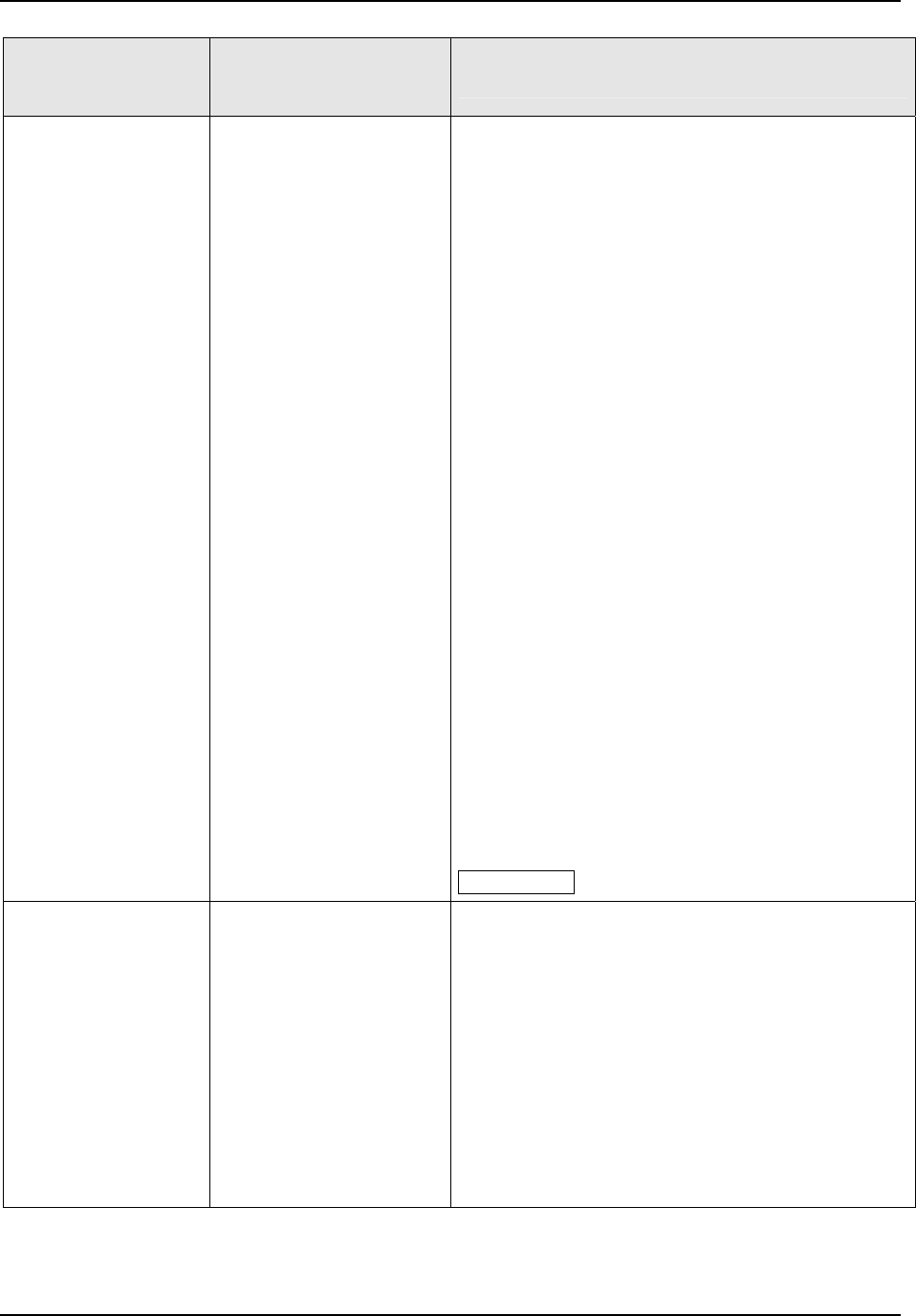
Configuration
March 2012 UDC3500 Universal Digital Controller Product Manual 81
Function Prompt
Lower Display
Selections or
Range of Setting
Upper Display
Parameter
Definition
3PSTEP
THREE POSITION STEP—The Three Position Step
Control algorithm allows the control of a valve (or
other actuator) with an electric motor driven by two
controller relay outputs; one to move the motor
upscale, the other downscale without a feedback
slidewire linked to the motor shaft. The deadband is
adjustable in the same manner as the duplex output
algorithm.
The Three Position Step Control algorithm provides
an output display (OUT), which is an estimated
motor position, since the motor is not using any
slidewire feedback. Although this output indication is
only an approximation, it is “corrected” each time the
controller drives the motor to one of its stops (0 % or
100 %). It avoids all the control problems associated
with the feedback slidewire (wear, dirt, noise). When
operating in this algorithm, the estimated OUT
display is shown to the nearest percent (i.e., no
decimal). This selection forces the Output Algorithm
selection to “POSPROP”. See Subsection 3.14.
Refer to the Operation section for motor position
displays.
As a customer configurable option, when a third
input board is installed, the motor slidewire can be
connected to the controller. The actual slidewire
position is then shown on the lower display as POS.
This v
a
lue is used for display only. It is NOT
used in the Three Position Step algorithm. To
configure this option, set Input 3 actuation to
SLIDEW and then calibrate Input 3 per Subsection
6.5.
ATTENTION Other prom
pts affected: DEADBAND
PID LOOPS
PID LOOPS—Number of PID Loops to be used.
1 LOOP
1 LOOP—Select one loop of control.
2 LOOPS
2 LOOPS—Select two independent loops of control,
each with its own PID tuning sets and control
parameters.
CASCADE
CASCADE—Select Cascade Control. In a Cascade
control system, the output of the primary loop (loop
2) is used to adjust the remote setpoint of the
secondary loop (loop 1). The output of the
secondary loop is used to control the final control
element.
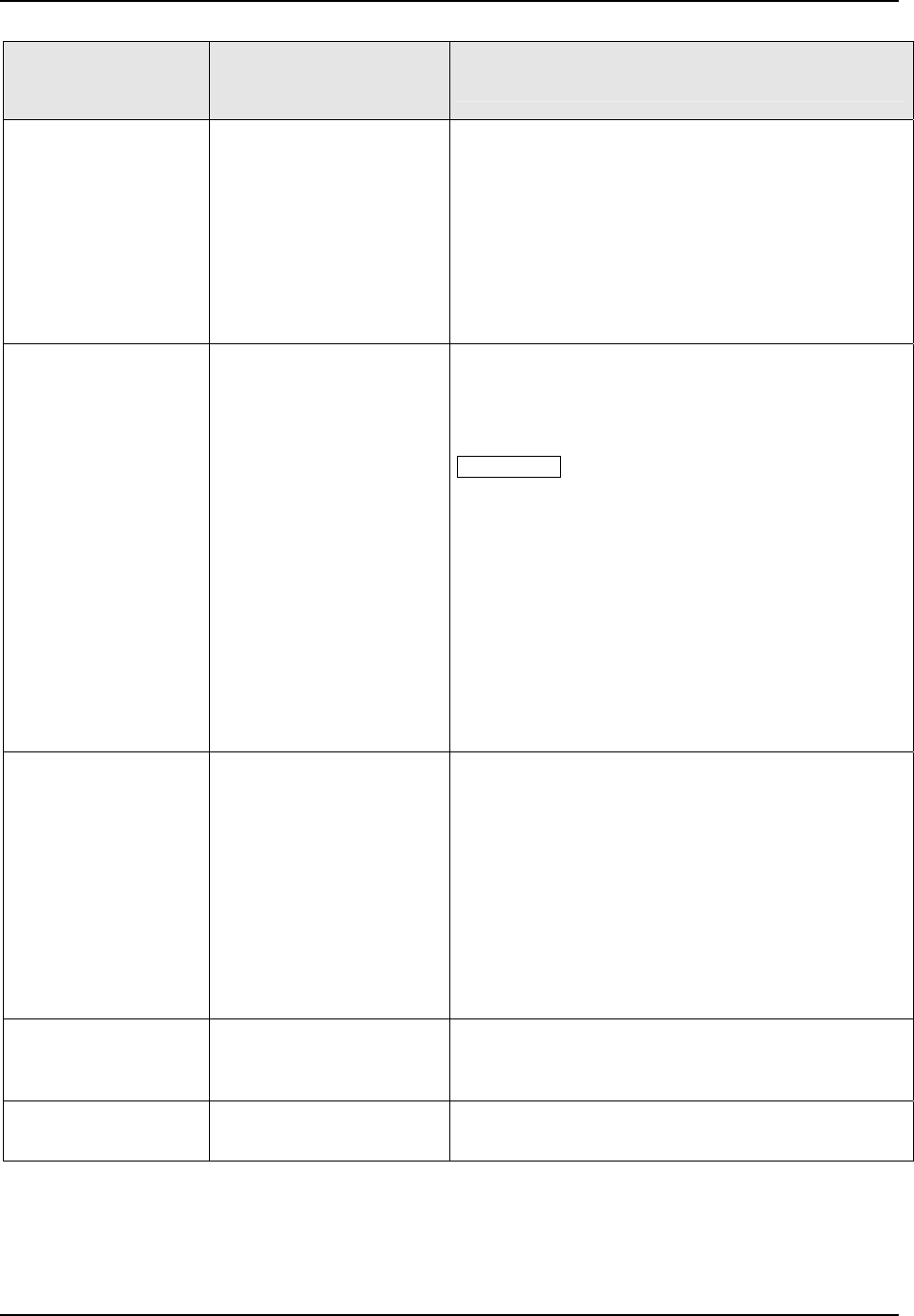
Configuration
82 UDC3500 Universal Digital Controller Product Manual March 2012
Function Prompt
Lower Display
Selections or
Range of Setting
Upper Display
Parameter
Definition
CONT2ALG
CONTROL ALGORITHM FOR LOOP 2—This
prompt only appears if Two Loop or Cascade control
has been selected.
3PSTEP and ON-OFF control are not available on
the Second Control Loop.
PID A
PID B
PD+MR
PID A—Same as Loop 1.
PID B—Same as Loop 1.
PD WITH MANUAL RESET—Same as Loop 1.
OUT OVRD
OUTPUT OVERRIDE SELECT—This selection lets
you select high or low output override. Only available
if the controller is configured for Two Loop operation.
Not applicable for Three Position Step applications.
ATTENTION Loop 1 must be in Automatic for this
selection to work. While the output is being
overridden, a blinking “O” appears on the left of the
upper display.
DISABLE
DISABLE—Disables the override function.
HI SEL
HIGH SELECT—The controller will select the higher
of output 1 or output 2 and direct it to the rear
terminals for output 1.
LO SEL
LOW SELECT—The controller will select the lower
of output 1 or output 2 and direct it to the rear
terminals for output 1.
TIMER
DISABLE
ENABLE
TIMER—Enable or disable the timer option.
The timer option allows you to configure a timeout
period and to select timer start by either the
keyboard (via the
Run/Hold key) or Alarm 2. A digital
input can also be configured to start the timer.
When the timer is enabled, it has exclusive control of
the alarm 1 relay; any previous alarm configuration is
ignored. At timeout, the timer is ready to be re-
activated by whatever action has been configured.
Alarm 1 is activated at the end of the timeout period.
PERIOD
0:00 to 99:59
PERIOD—The length of timeout period (either from
0 to 99 hours: 59 minutes or from 59 minutes: 59
seconds depending upon Period configuration).
START
KEY
ALARM 2
START—Select whether the timer starts with the
keyboard (via the
Run/Hold key) or via Alarm 2.
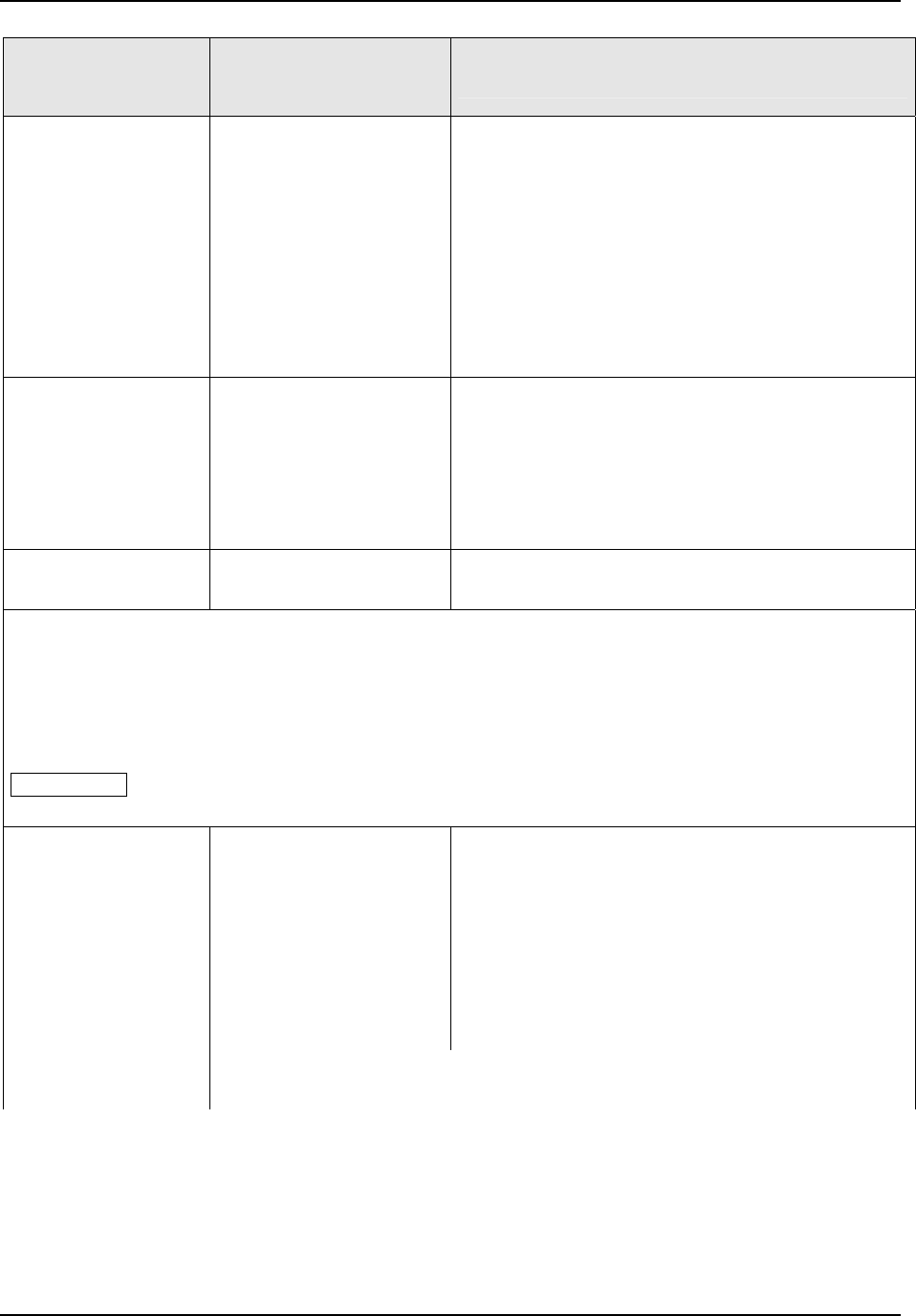
Configuration
March 2012 UDC3500 Universal Digital Controller Product Manual 83
Function Prompt
Lower Display
Selections or
Range of Setting
Upper Display
Parameter
Definition
LWR DISP
TI REM
EL TIME
LOWER DISPLAY—Select whether time remaining
(TI REM) or elapsed time (EL TIME) is displayed for
the timer option.
The time is shown on the lower display in HH:MM
format along with a rotating “clock” character.
• If the “clock” rotation is clockwise, elapsed time is
indicated.
• If the “clock” rotation is counterclockwise, time
remaining is indicated.
RESET
KEY
ALARM 1
TIMER RESET CONTROL—Select how the timer is
reset.
KEY - Timer reset with the
Run/Hold key.
ALARM 1 - Timer reset with either Alarm 1 or by the
Run/Hold key
INCRMENT
MINUTE
SECOND
INCREMENT—Select the increments of the Period
configuration.
INPUT MATH ALGORITHMS—Controllers with at least two analog inputs are provided with two input
algorithms. Each algorithm can be configured to provide a derived (calculated) PV or a derived Remote
Setpoint. Up to three inputs may be used in each algorithm. In addition, the two algorithms may be
“linked” so as to combine the calculations by configuring one algorithm to be an input to the other
algorithm.
All algorithms operate in Engineering Units except Feedforward, which operates in percent of range units.
ATTENTION When the Input C configuration is set to NONE, the value of Input C used in the functions is
automatically set to 1.0, except for the Summer algorithm, where it is set to 0.0.
INP ALG1
INPUT ALGORITHM 1—Represents one of the
following selections:
NONE
NONE—No algorithm configured
W AVG
(See Note 2)
(Standard feature on
controllers with two or
more analog inputs)
WEIGHTED AVERAGE—When you configure for
Weighted Average, the controller will compute a PV
or SP for the control algorithm from the following
equation:
Alg1 = [(Input A x Ratio A + Bias A) + (K x Input B x Ratio B + Bias B)] / (1 + K)] +
Alg1Bias
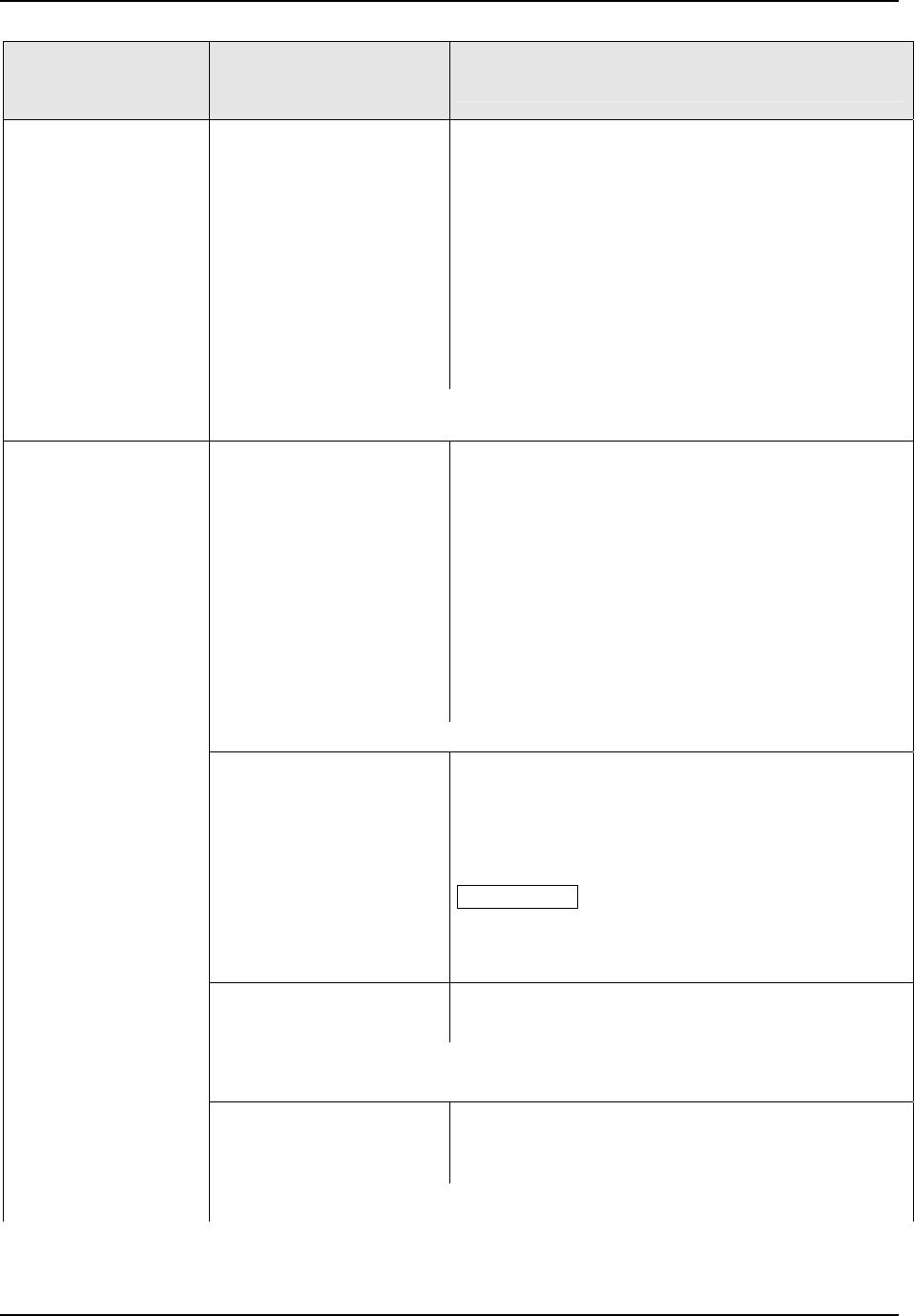
Configuration
84 UDC3500 Universal Digital Controller Product Manual March 2012
Function Prompt
Lower Display
Selections or
Range of Setting
Upper Display
Parameter
Definition
F FWRD
(Standard feature on
controllers with two or
more analog inputs)
FEEDFORWARD SUMMER—Feedforward uses
Input A, following a Ratio and Bias calculation, as a
value summed directly with the PID computed output
value and sent, as an output value, to the final
control element.
This algorithm will only function in automatic mode
and is not used for Three Position Step Control
applications. Algorithm 1 Feedforward works only on
Loop 1 while Algorithm 2 Feedforward works only on
Loop 2.
The following formula applies:
Controller Output = PID Output + (Input A x Ratio A + Bias A) x (100 / Input A
Range)
FFWDMu
(Standard feature on
controllers with two or
more analog inputs)
FEEDFORWARD MULTIPLIER—Feedforward uses
Input A, following a Ratio and Bias calculation, as a
value multiplied directly with the PID computed
output value and sent, as an output value, to the final
control element.
This algorithm will only function in automatic mode
and cannot be used for Three Position Step Control
applications. Algorithm 1 Feedforward works only on
Loop 1 while Algorithm 2 Feedforward works only on
Loop 2.
The following formula applies:
Controller Output = PID Output x (Input A x Ratio A + Bias A) / Input A Range
RELHUM
(Standard feature on
controllers with two or
more analog inputs)
RELATIVE HUMIDITY—Input 1 reads the wet bulb
temperature. Input 2 reads the dry bulb temperature.
The controller will indicate measured Relative
Humidity as a Process Variable (PV) with a Setpoint
range of 0 % to 100 % RH.
ATTENTION The Relative Humidity selection will
automatically force both Input 1 and Input 2
actuations to the RTD 100 ohm low setting.
See Note 6.
SUMMER
(See Note 2)
SUMMER WITH RATIO AND BIAS—The following
formula applies:
Alg1 = (Input A x Ratio A + Bias A) + (Input B x Ratio B + Bias B) + (Input C x
Ratio C + Bias C) + Alg1Bias
HI SEL
(See Note 2)
INPUT HIGH SELECT WITH RATIO AND BIAS—
This selection specifies the PV or SP as the higher
of Input A or Input B. The following formula applies:
Alg1 = higher of (Input A x Ratio A + Bias A) or (Input B x Ratio B + Bias B)
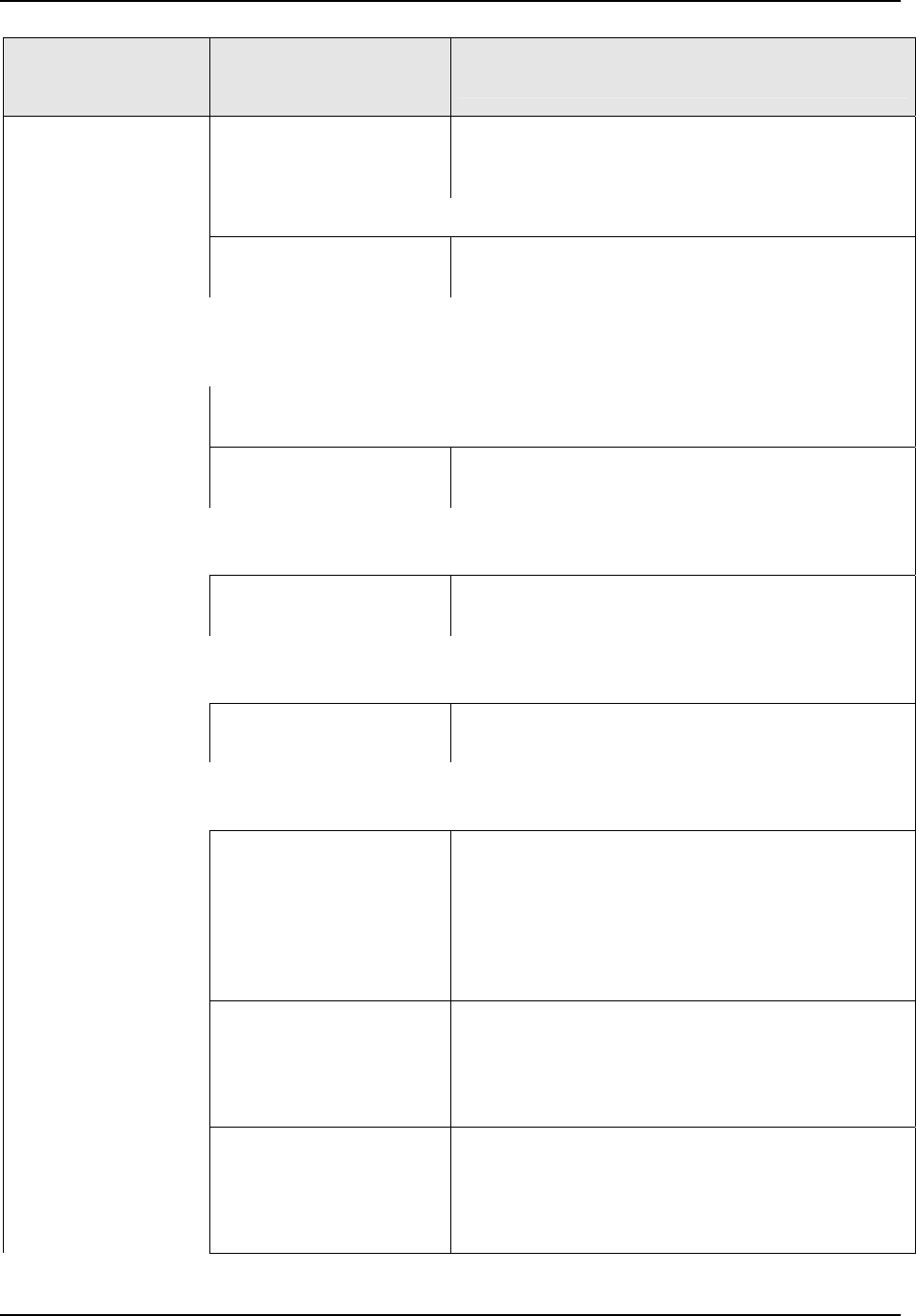
Configuration
March 2012 UDC3500 Universal Digital Controller Product Manual 85
Function Prompt
Lower Display
Selections or
Range of Setting
Upper Display
Parameter
Definition
LO SEL
(See Note 2)
INPUT LOW SELECT WITH RATIO AND BIAS—
This selection specifies the PV or SP as the lower of
Input A or Input B. The following formula applies:
Alg1 = lower of (Input A x Ratio A + Bias A) or (Input B x Ratio B + Bias B)
MuDIV
(See Note 1)
MULTIPLIER DIVIDER WITH SQUARE ROOT—
The following formula applies:
Alg1 = K * Sq.Rt. {(Input A x Ratio A + Bias A) x (Input C x Ratio C + Bias C) / (Input B * Ratio B + Bias
B)}
x (Calc Hi – Calc Lo) + Alg1Bias
See Figure 3-1 at the end of this section for an example of Mass Flow
Compensation using the Multiplier/Divider Algorithm.
MULT
(See Note 1)
MULTIPLIER WITH SQUARE ROOT—The following
formula applies:
Alg1 = K x Sq.Rt. {(Input A x Ratio A + Bias A) x (Input B x Ratio B + Bias B) x
(Input C x Ratio C + Bias C)} x (Calc Hi – Calc Lo) + Alg1Bias
MuDIV
(See Note 1)
MULTIPLIER DIVIDER—The following formula
applies:
Alg1 = K x [{(Input A x Ratio A + Bias A) x (Input C x Ratio C + Bias C)} / (Input B x Ratio B + Bias B)]
x (Calc Hi – Calc Lo) + Alg1Bias
MULT
(See Note 1)
MULTIPLIER—The following formula applies:
Alg1 = K x [(Input A x Ratio A + Bias A) x (Input C x Ratio C + Bias C) x (Input B x Ratio B + Bias B)]
x (Calc Hi – Calc Lo) + Alg1Bias
CARB A
CARBON POTENTIAL A—Make this selection if
you have a Cambridge or Marathon monitor type
Zirconium Oxide sensor. It should also be used if
using an Automotive probe (no thermocouple). This
algorithm requires a temperature range within the
region of 1500 to 2000°F. See
Carbon/Oxygen/Dewpoint Notes.
CARB B
CARBON POTENTIAL B—Make this selection if
you have a Corning type Zirconium Oxide sensor.
This algorithm requires a temperature range within
the region of 1500 to 1800°F. See
Carbon/Oxygen/Dewpoint Notes.
CARB C
CARBON POTENTIAL C—Make this selection if
you have an A.A.C.C. type Zirconium Oxide sensor.
This algorithm requires a temperature range within
the region of 1500 to 1900°F. See
Carbon/Oxygen/Dewpoint Notes.
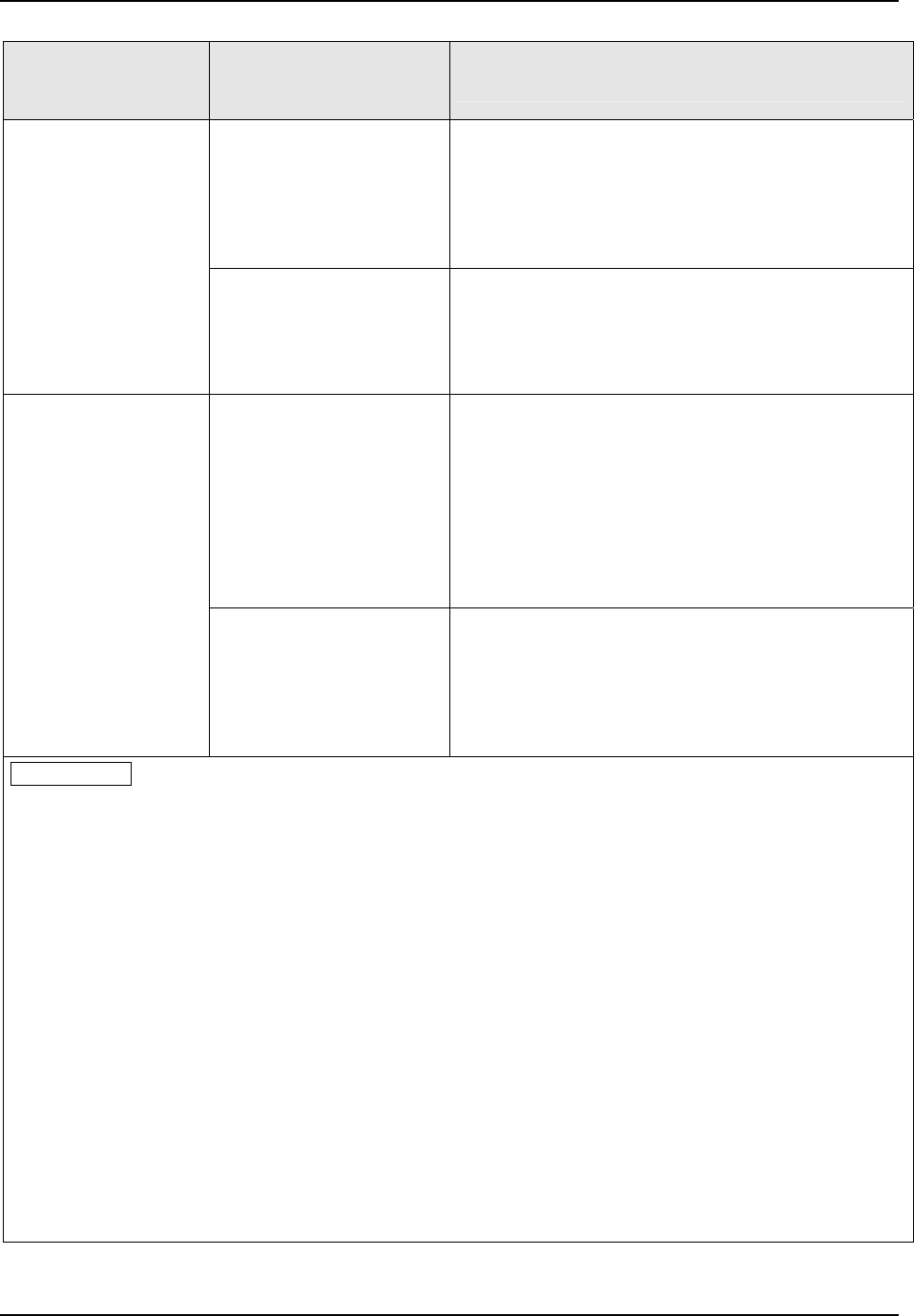
Configuration
86 UDC3500 Universal Digital Controller Product Manual March 2012
Function Prompt
Lower Display
Selections or
Range of Setting
Upper Display
Parameter
Definition
CARB D
CARBON POTENTIAL D—Make this selection if
you have a Barber Coleman, MacDhui, or Bricesco
type Zirconium Oxide sensor. This algorithm
requires a temperature range within the region of
800 to 1100°C. See Carbon/Oxygen/Dewpoint
Notes.
FCC
CARBON POTENTIAL FCC—Make this selection if
you have a Furnace Controls Corp Accucarb type
Zirconium Oxide sensor. This algorithm requires a
temperature range within the region of 1500 °F to
1900°F. See Carbon/Oxygen/Dewpoint Notes.
DEW PT
DEWPOINT OF CARBONIZING ATMOSPHERE—
Use this selection if you are using any Zirconium
Oxide Carbon Probe and you want to measure the
atmosphere in terms of Dewpoint. The range is –50
°F to 100 °F or –48 °C to 38 °C. This algorithm
requires a temperature range within the region of
1000 °F to 2200 °F and a minimum carbon probe
value of 800 millivolts. See
Carbon/Oxygen/Dewpoint Notes.
OXYGEN
PERCENT OXYGEN RANGE—Make this selection
if you are using a Zirconium Oxide Oxygen Probe to
measure Percent of Oxygen in a range of 0 to 40 %
O
2
. This algorithm requires a temperature range
within the region of 800 °F to 3000 °F. See
Carbon/Oxygen/Dewpoint Notes.
ATTENTION Carbon/Oxygen/Dewpoint Notes
The Carbon and Dewpoint selections will automatically set Input 1 actuation to CARBON.
The Oxygen selection will automatically set Input 1 actuation to OXYGEN.
Input 2 can be any input actuation, but it is normally a type K, R or S thermocouple input,
depending upon the probe type selected.
All calculations are performed by the Controller, with Percent Carbon, Percent Oxygen or
Dewpoint shown as the PV display. The actual value of each analog input may be viewed via the
lower display.
For all Carbon Types, if the value of Percent Carbon falls below 0.1% - such as can happen when
the Carbon Probe voltage output falls below 900 mVdc – then the Controller will continue to
update the PV display, but the accuracy is unspecified. Likewise, if the measured temperature falls
outside of the specified ranges as noted above for the Carbon, Oxygen and Dewpoint input types,
then the Controller will continue to update the PV display, but the accuracy is unspecified.
For the Dewpoint algorithm, if the Carbon Sensor voltage falls below 800 mVdc, then the Dewpoint
is calculated as if the sensor voltage was at 800 mVdc.
If the Ratio for Input 2 is set to 0.0, then a constant value may be used for the Input 2 value via the
Input 2 Bias setting. When Input 2 Ratio is set to 0.0, the Input 2 low range and Sooting diagnostic
messages are disabled.
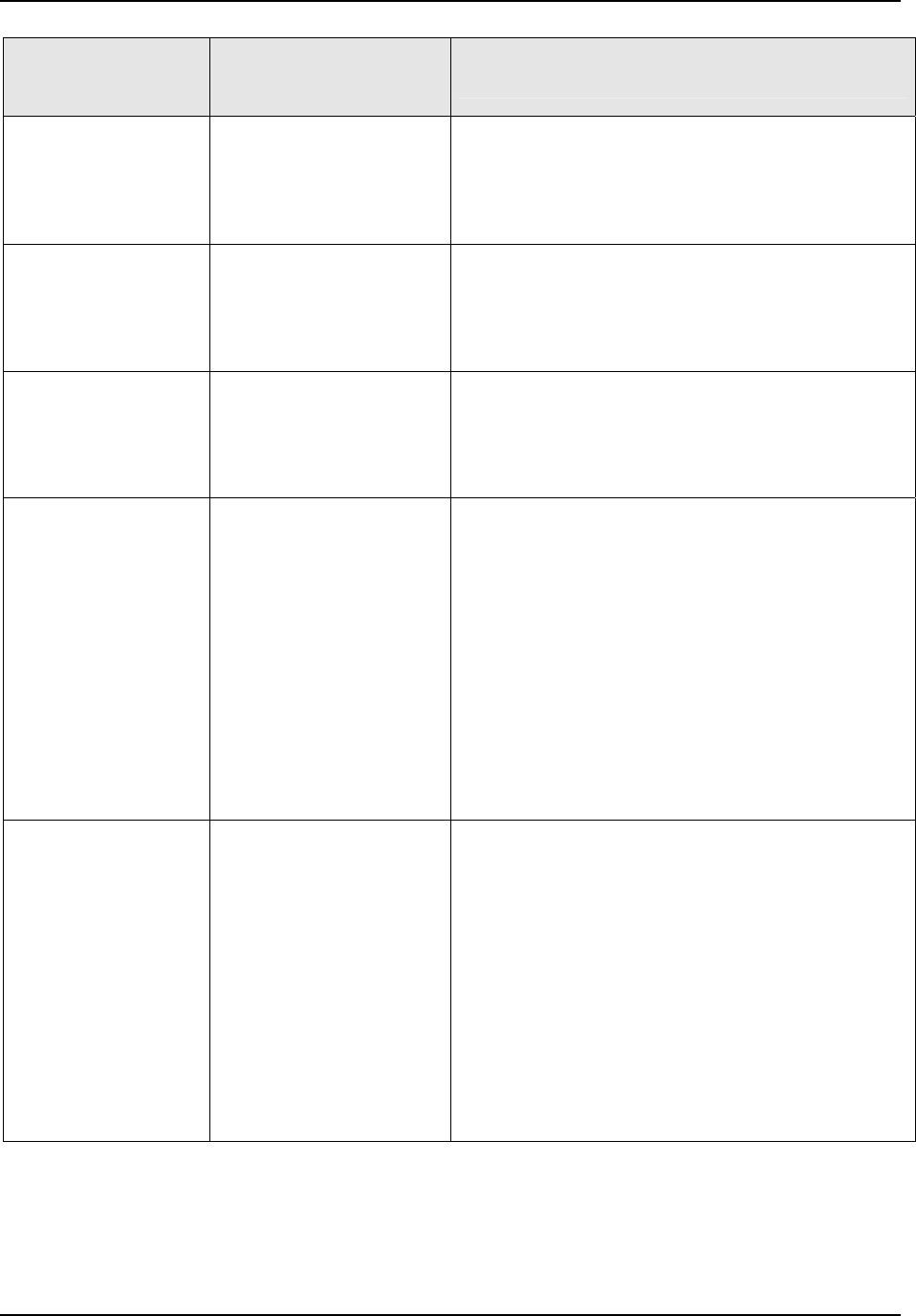
Configuration
March 2012 UDC3500 Universal Digital Controller Product Manual 87
Function Prompt
Lower Display
Selections or
Range of Setting
Upper Display
Parameter
Definition
MATH K
0.001 to 1000 floating
WEIGHTED AVERAGE RATIO OR MASS FLOW
ORIFICE CONSTANT (K) FOR MATH
SELECTIONS—Only applicable for algorithms
W AVG or General Math selections √MuDIV,
√MULT, MuDIV, or MULT.
CALC HI
–999. To 9999. Floating
(in engineering units)
CALCULATED VARIABLE HIGH SCALING
FACTOR FOR INPUT ALGORITHM 1—Used only
when Summer, Input Hi/Lo, or one of the General
Math functions was selected as the Input Algorithm.
See Note 2.
CALC LO
–999. To 9999. Floating
(in engineering units)
CALCULATED VARIABLE LOW SCALING
FACTOR FOR INPUT ALGORITHM 1—Used only
when Summer, Input Hi/Lo, or one of the General
Math functions was selected as the Input Algorithm.
See Note 2.
ALG1 INA
INPUT 1
INPUT 2
INPUT 3
INPUT 4
INPUT 5
LP1OUT
LP2OUT
IN AL1
IN AL2
ALGORITHM 1, INPUT A SELECTION—
Represents one of the following selections:
INPUT 1
INPUT 2
INPUT 3
INPUT 4
INPUT 5
LOOP 1 OUTPUT—Should not be used for Three
Position Step Control applications
LOOP 2 OUTPUT—Should not be used for Three
Position Step Control applications
INPUT ALGORITHM 1
INPUT ALGORITHM 2
ALG1 INB
INPUT 1
INPUT 2
INPUT 3
INPUT 4
INPUT 5
LP1OUT
LP2OUT
IN AL1
IN AL2
ALGORITHM 1, INPUT B SELECTION—
Represents one of the following selections:
INPUT 1
INPUT 2
INPUT 3
INPUT 4
INPUT 5
LOOP 1 OUTPUT—Should not be used for Three
Position Step Control applications
LOOP 2 OUTPUT—Should not be used for Three
Position Step Control applications
INPUT ALGORITHM 1
INPUT ALGORITHM 2
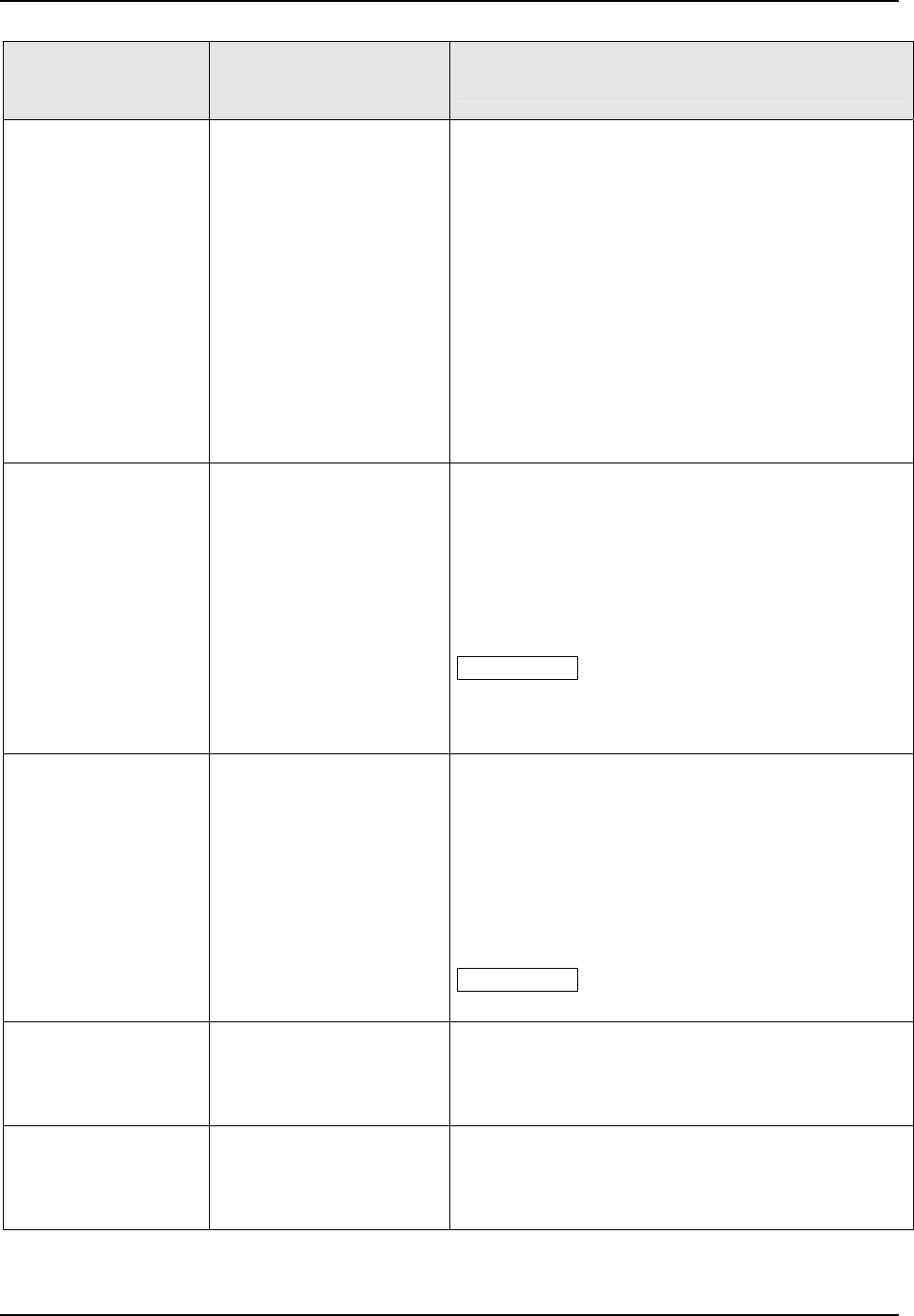
Configuration
88 UDC3500 Universal Digital Controller Product Manual March 2012
Function Prompt
Lower Display
Selections or
Range of Setting
Upper Display
Parameter
Definition
ALG1 INC
NONE
INPUT 1
INPUT 2
INPUT 3
INPUT 4
INPUT 5
LP1OUT
LP2OUT
IN AL1
IN AL2
ALGORITHM 1, INPUT C SELECTION—
Represents one of the following selections:
NONE
INPUT 1
INPUT 2
INPUT 3
INPUT 4
INPUT 5
LOOP 1 OUTPUT—Should not be used for Three
Position Step Control applications
LOOP 2 OUTPUT—Should not be used for Three
Position Step Control applications
INPUT ALGORITHM 1
INPUT ALGORITHM 2
PCO SEL
SOURCE OF PERCENT CARBON MONOXIDE—
Select either a fixed value for %CO value (PCT CO)
or use a live value from Analog Input 3.
MANUAL
INPUT 3
MANUAL—Operator enters %CO as a Fixed Value
per the PCT CO configuration.
INPUT 3—Input 3 is used to provide the %CO value
to the Carbon Potential algorithm.
ATTENTION This prompt only appears when one
of the Carbon Potential algorithms is selected and
Input 3 is one of the following types: 0-20 mA, 4-20
mA, 0-5 V or 1-5 V.
PCT CO
0.020 to 0.350 (fractional
percent of CO)
PERCENT CARBON MONOXIDE—Used only when
a Carbon Potential algorithm is selected and PCO
SEL is set to MANUAL. Enter a value in percent of
carbon monoxide that is applicable for the enriching
gas used in fractional form.
FOR EXAMPLE:
Natural Gas = 20.0 % CO, then setting is 0.200
Propane Gas = 23.0 % CO, setting is 0.230
ATTENTION This prompt appears only when one
of the Carbon Potential algorithms is selected.
PCT H2
1.0 to 99.0 (% H
2
)
HYDROGEN CONTENT FOR DEWPOINT—Used
only when Dewpoint is selected. Enter a value for
the percentage of Hydrogen content that is
applicable.
ATM PRES
590.0 to 760.0 (mm Hg)
ATMOSPHERIC PRESSURE COMPENSATION—
Used only when Relative Humidity is selected. Enter
the value of the atmospheric pressure of the
process.
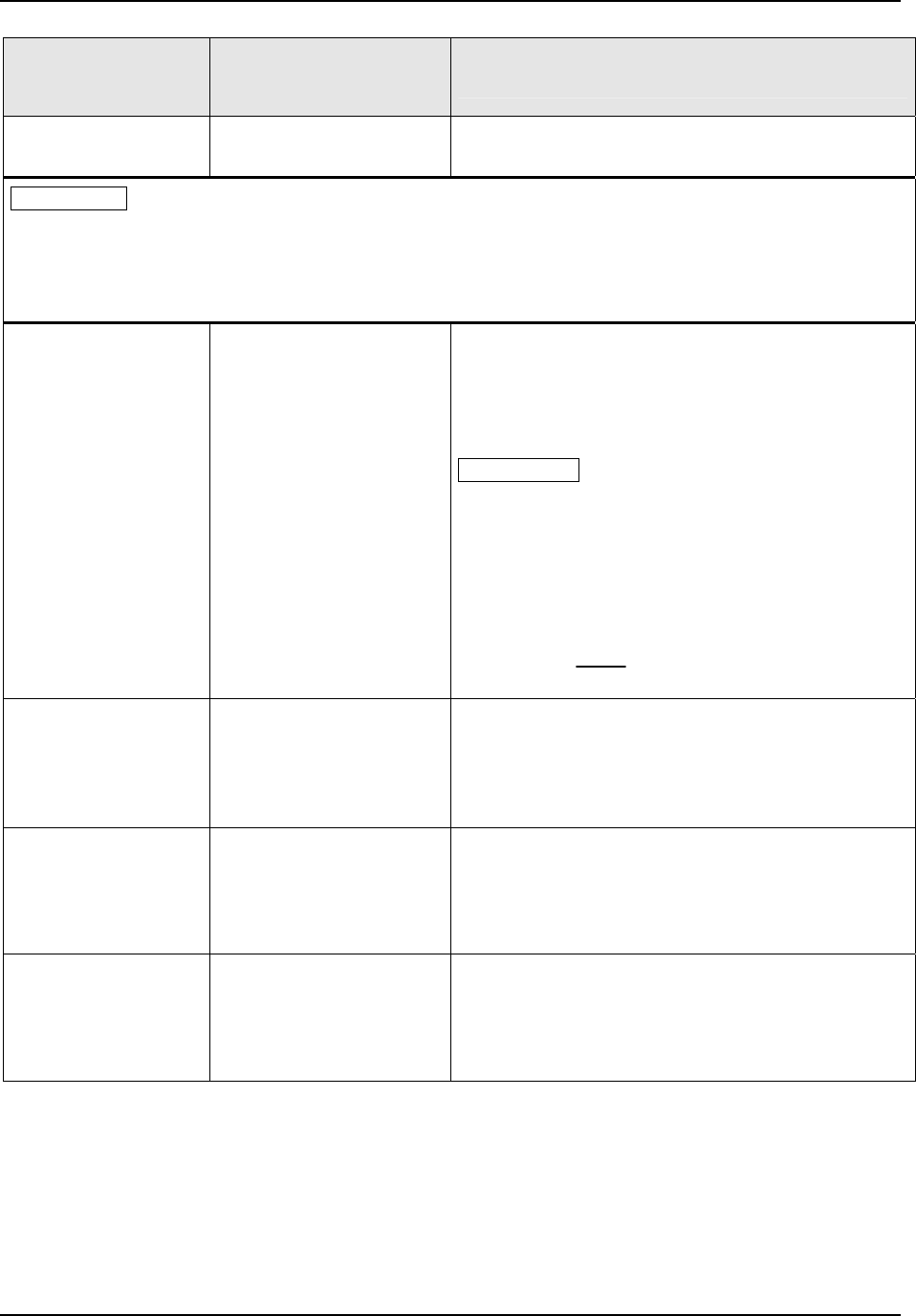
Configuration
March 2012 UDC3500 Universal Digital Controller Product Manual 89
Function Prompt
Lower Display
Selections or
Range of Setting
Upper Display
Parameter
Definition
ALG1BIAS
-999 to 9999 floating (in
engineering units)
INPUT ALGORITHM 1 BIAS—Does not apply to
selections: FFWRD, FFWDMU, HISEL or LOSEL.
ATTENTION
• All Input Algorithms operate in engineering units except Feed-forward which operates in percent of
range units.
• For General Math functions, when Input C is disabled, the value of Input C used in the functions is
automatically set to 1.0.
INP ALG2
NONE
W AVG
F FWR2
FFWDM2
A-B/C
HI SEL
LO SEL
MuDIV
MULT
MuDIV
MULT
DEW PT
INPUT ALGORITHM 2—The formulas for these
selections are the same as those for IN ALG 1 with
the following exceptions: Relative Humidity, all
Carbon Potential and Oxygen algorithms are not
available. Feedforward works only on Loop 2.
ATTENTION Selection A–B/C algorithm is used in
place of IN ALG1 A+B+C algorithm. The A-B/C
algorithm subtracts Input B with Ratio/Bias from
Input A with Ratio/Bias and divides the result by
Input C with Ratio/Bias using engineering units. This
selection is only available on Input Algorithm 2.
EXAMPLE:
PV or SP = K
(A–B)
C
(Calc Hi – Calc Lo)
MATH K2
0.001 to 1000 floating
WEIGHTED AVERAGE RATIO OR MASS FLOW
ORIFICE CONSTANT (K) FOR MATH
SELECTIONS—Only applicable for algorithm
W AVG or General Math selections MuDIV, MULT,
MuDIV, or MULT.
CALC HI
–999. To 9999. Floating
(in engineering units)
CALCULATED VARIABLE HIGH SCALING
FACTOR FOR INPUT ALGORITHM 2—Does not
apply to Feedforward algorithms. Range is used for
either PV or RSP, depending upon Algorithm
application.
CALC LO
–999. To 9999. Floating
(in engineering units)
CALCULATED VARIABLE LOW SCALING
FACTOR FOR INPUT ALGORITHM 2—Does not
apply to Feedforward algorithms. Range is used for
either PV or RSP, depending upon Algorithm
application.
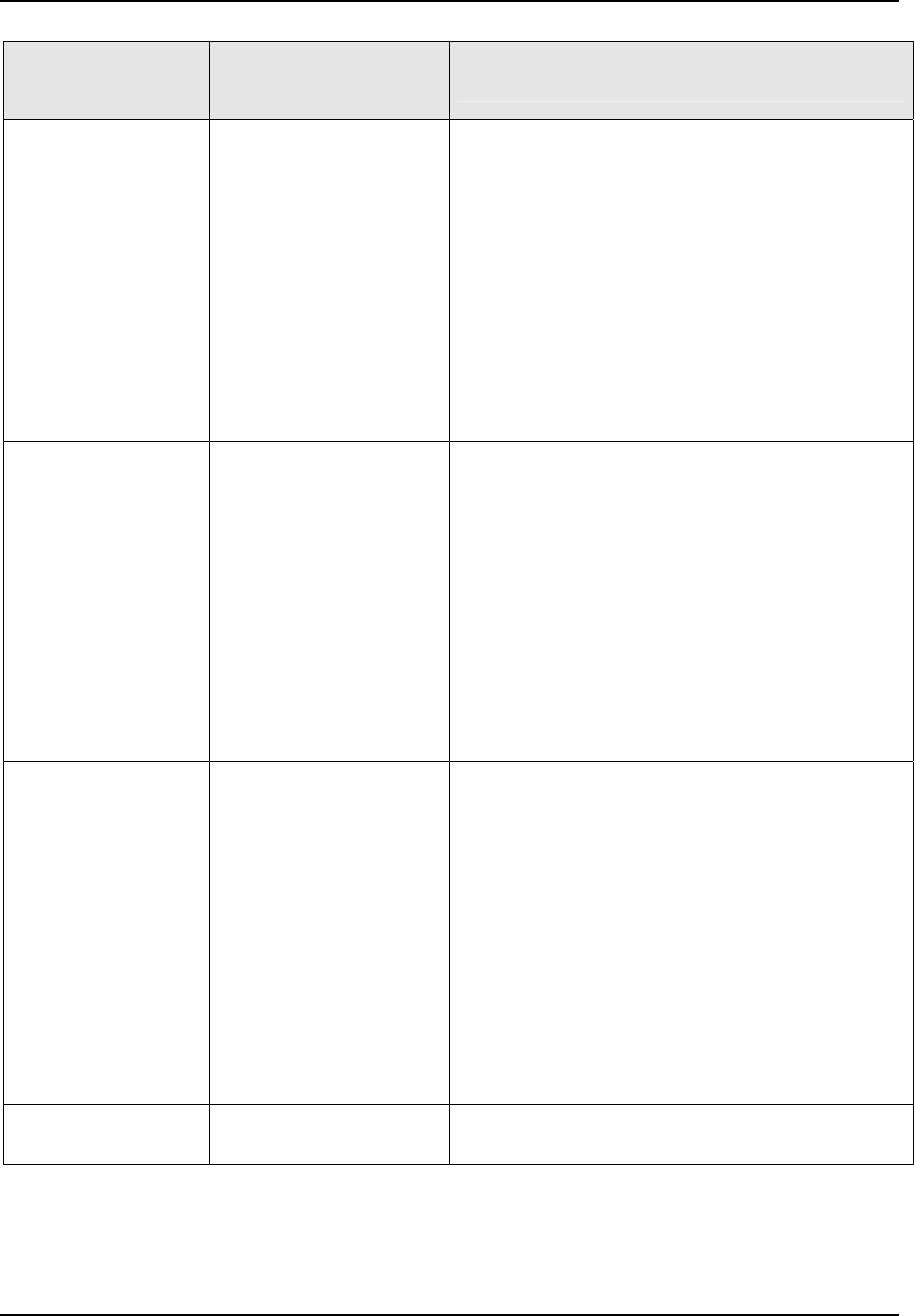
Configuration
90 UDC3500 Universal Digital Controller Product Manual March 2012
Function Prompt
Lower Display
Selections or
Range of Setting
Upper Display
Parameter
Definition
ALG2 INA
INPUT 1
INPUT 2
INPUT 3
INPUT 4
INPUT 5
LP1OUT
LP2OUT
IN AL1
IN AL2
ALGORITHM 2, INPUT A SELECTION—
Represents one of the following selections:
INPUT 1
INPUT 2
INPUT 3
INPUT 4
INPUT 5
LOOP 1 OUTPUT—Should not be used for Three
Position Step Control applications
LOOP 2 OUTPUT—Should not be used for Three
Position Step Control applications
INPUT ALGORITHM 1
INPUT ALGORITHM 2
ALG2 INB
INPUT 1
INPUT 2
INPUT 3
INPUT 4
INPUT 5
LP1OUT
LP2OUT
IN AL1
IN AL2
ALGORITHM 2, INPUT B SELECTION—
Represents one of the following selections:
INPUT 1
INPUT 2
INPUT 3
INPUT 4
INPUT 5
LOOP 1 OUTPUT—Should not be used for Three
Position Step Control applications
LOOP 2 OUTPUT—Should not be used for Three
Position Step Control applications
INPUT ALGORITHM 1
INPUT ALGORITHM 2
ALG2 INC
NONE
INPUT 1
INPUT 2
INPUT 3
INPUT 4
INPUT 5
LP1OUT
LP2OUT
IN AL1
IN AL2
ALGORITHM 2, INPUT C SELECTION—
Represents one of the following selections:
NONE
INPUT 1
INPUT 2
INPUT 3
INPUT 4
INPUT 5
LOOP 1 OUTPUT—Should not be used for Three
Position Step Control applications
LOOP 2 OUTPUT—Should not be used for Three
Position Step Control applications
INPUT ALGORITHM 1
INPUT ALGORITHM 2
ALG2BIAS
-999 to 9999 floating (in
engineering units)
INPUT ALGORITHM 2 BIAS—Does not apply to
selections: FFWR2, FFWM2, HI SEL or LO SEL.
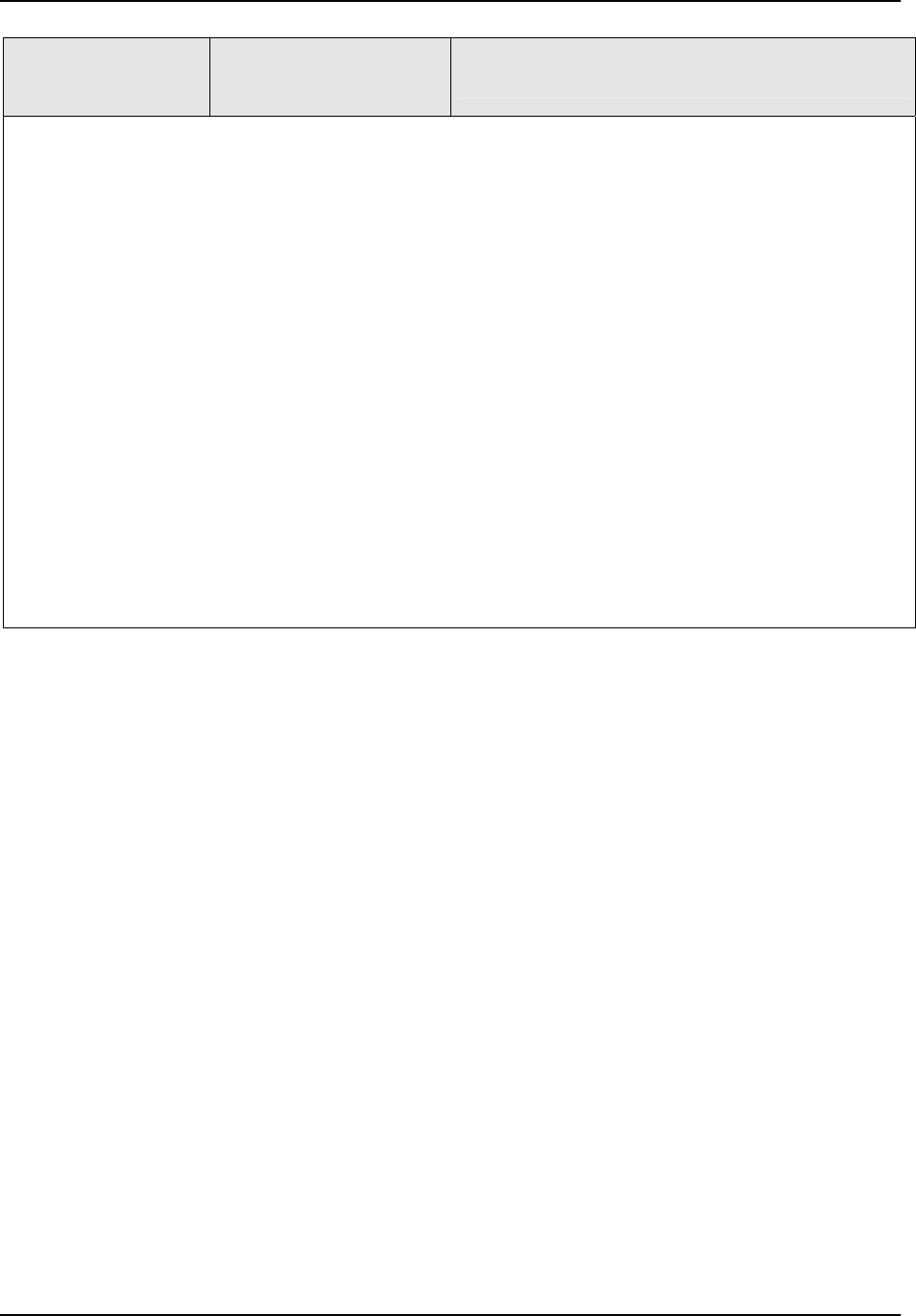
Configuration
March 2012 UDC3500 Universal Digital Controller Product Manual 91
Function Prompt
Lower Display
Selections or
Range of Setting
Upper Display
Parameter
Definition
Math Algorithm Notes:
1. Calculation ranges for the Math Algorithms are set via CALC HI and CALC LO parameters and
are between –999. and 9999. The SP High and Low values (SP Range) are independent of
these settings and can be any value between –999. and 9999.
2. The CALC HI and CALC LO values determine the range limits for the SP High and Low values
for the Weighted Average, Summer, Hi Select and Low Select algorithms.
3. Does not apply to Three Position Step Control.
4. If the calculated value of the quantity under the square root sign decreases to a value less than
0.010, then the calculation will become linear as the calculated value decreases below 0.010.
5. Input 2 is always used in all of the Feedforward algorithms.
6. When Relative Humidity is selected as the Input Algorithm, both Input 1 (Wet Bulb) and Input 2
(Dry Bulb) are forced to the RTD 100 Ohm Low activation. This activation normally has a range
of a -300 to 300ºF (-184 to 149ºC). However, for Relative Humidity, the range of both inputs is
restricted such that the Input measurements below 21ºF or above 212ºF (-6 ºC or 100ºC) for
either input will result in an Input Range diagnostic message being shown on the lower display.
This is because input values outside of this range will not calculate valid %RH values. If the
calculated %RH value falls below zero, the “RH LOW” diagnostic message will appear on the
lower display.
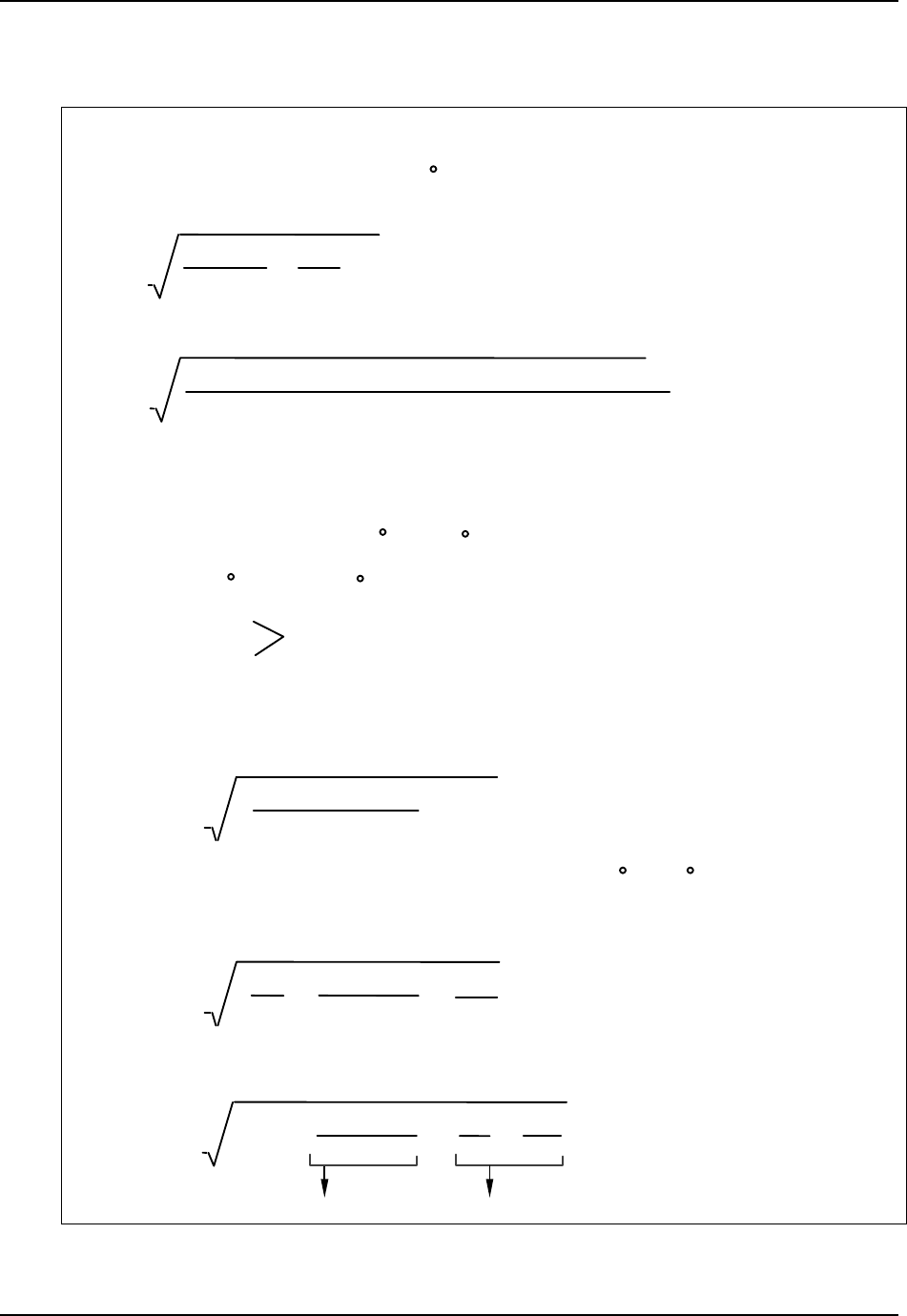
Configuration
Figure 3-1 Mass Flow Example
Example - Mass Flow Compensation
A
gas flow rate of 650 SCFM develops a differential pressure of 90" H O across an orifice plate
at reference conditions of 30 psig and 140 F. Compensate this gas flow for temperature and
pressure variations.
A
pply Multiplier/Divider Algorithm:
Flow = K
DP
f
x P
f
T
f
T
ref
x
P
ref
PV = K
(Input B x Ratio B + Bias B)
(Input A x Ratio A + Bias A) x (Input C x Ratio C + Bias C)
X (Calc – Calc )
HI
LO
Where:
f = flowing conditions
ref = reference conditions (in absolute units)
Note: If temperature and pressure signals are already ranged in absolute units,
no Bias is required for inputs B and C.
A
ssign inputs using Engineering units:
Let:
Input A = DP = IN1 (in H O)
Input B = T = IN2 + Bias2 = IN2 F + 460 ( R)
Input C = P = IN3 + Bias3 = IN3psig + 14.7(psia)
T = 140 F + 460 = 600 R
P = 30 psig + 14.7 = 44.7 psia
Calc = 650.0
Calc = 0.0
2
f
f
ref
ref
Hi
Lo
Flow in SFCM at Reference Conditions
K = to be determined next
f
2
22049
Example continued
on next page
PV = Q =
DP
f
(IN3 + 14.7)
x
SCFM
(IN2 + 460)
K
2
x
(650.0 - 0.0)
x
DP
f
90
(IN3 + 14.7)
x
(IN2 + 460)
T
ref
x
P
ref
SCFM
Q =
x
650
Note: When IN2 and IN3 are at the reference conditions of 600 R (140 F) and 44.7psia (30
psig) respectively and DP = 90" H O, the equation must calculate 650 SCFM. To accomplish
this, divide the DP value by "90" to normalize the equation.
2
f
Rearranging terms:
Variable
Constant = K
2
DP
f
(IN3 + 14.7)
x
(IN2 + 460)
x
1
90
T
ref
P
ref
x x
650
SCFM
Q =
92 UDC3500 Universal Digital Controller Product Manual March 2012
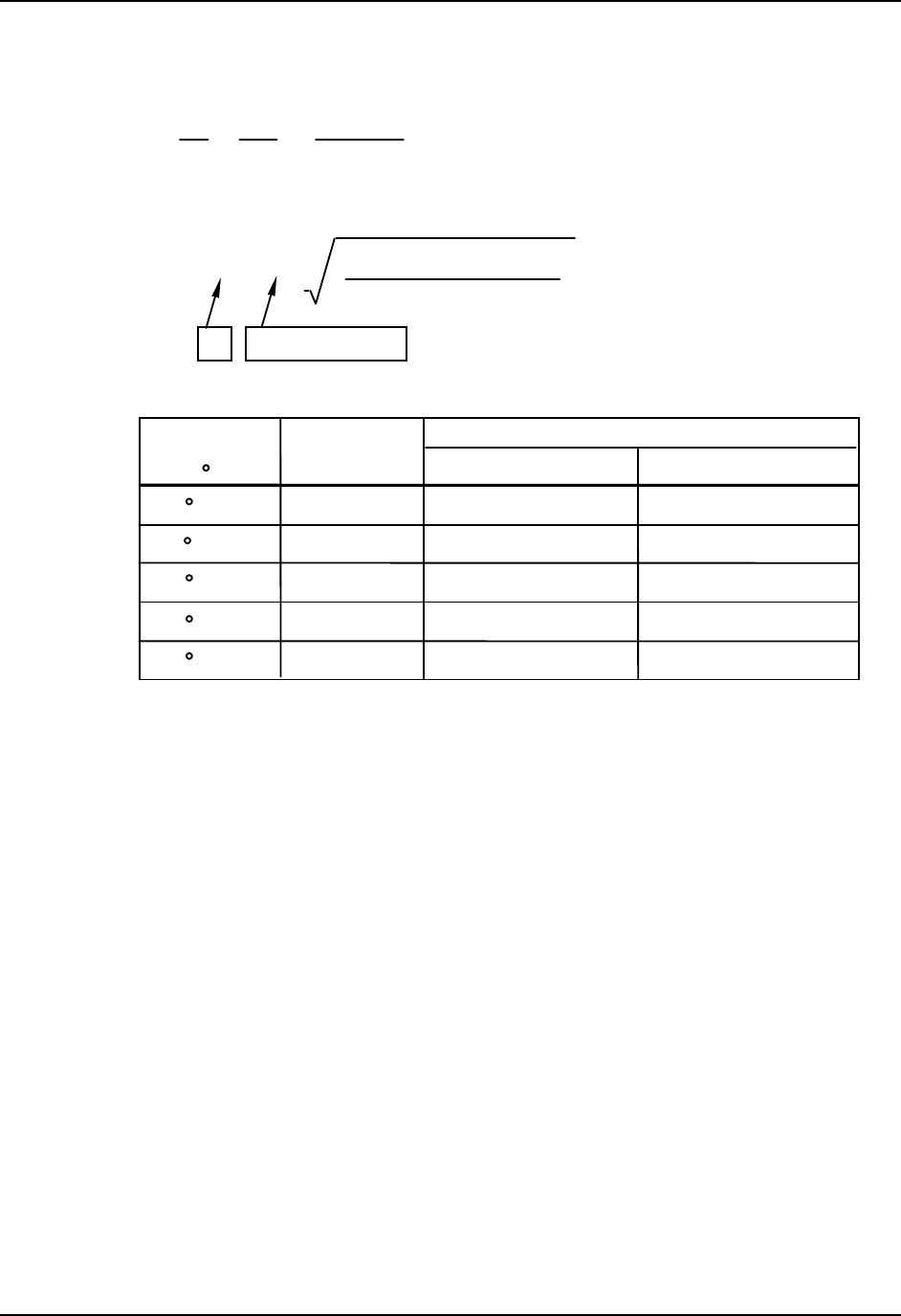
Configuration
Example - Mass Flow Compensation - continued
Determined value of K:
K
2
= x
1
90
T
ref
P
ref
= =
0.14914
600
(90) (44.7)
Therefore K = 0.386
SCFM
Q =
(0.386) (650)
(Calc - Calc )
HI
LO
K
DP
f
(in H O) (IN3 + 14.7)
(IN2 + 460)
2
140 F + 460
170 F + 460
170 F + 460
110 F + 460
110 F + 460
30 psi + 14.7
50 psi + 14.7
20 psi + 14.7
50 psi + 14.7
20 psi + 14.7
459
539
395
567
415
Flow (SFCM)
DP = 45" H O (50%)
f 2
650
763
559
802
587
DP = 90" H O (100%)
f 2
Temp (T )
( R)
f
Summary of Flow Values At Values Conditions
Pressure (T )
(psia)
f
Reference
Conditions
22050
March 2012 UDC3500 Universal Digital Controller Product Manual 93
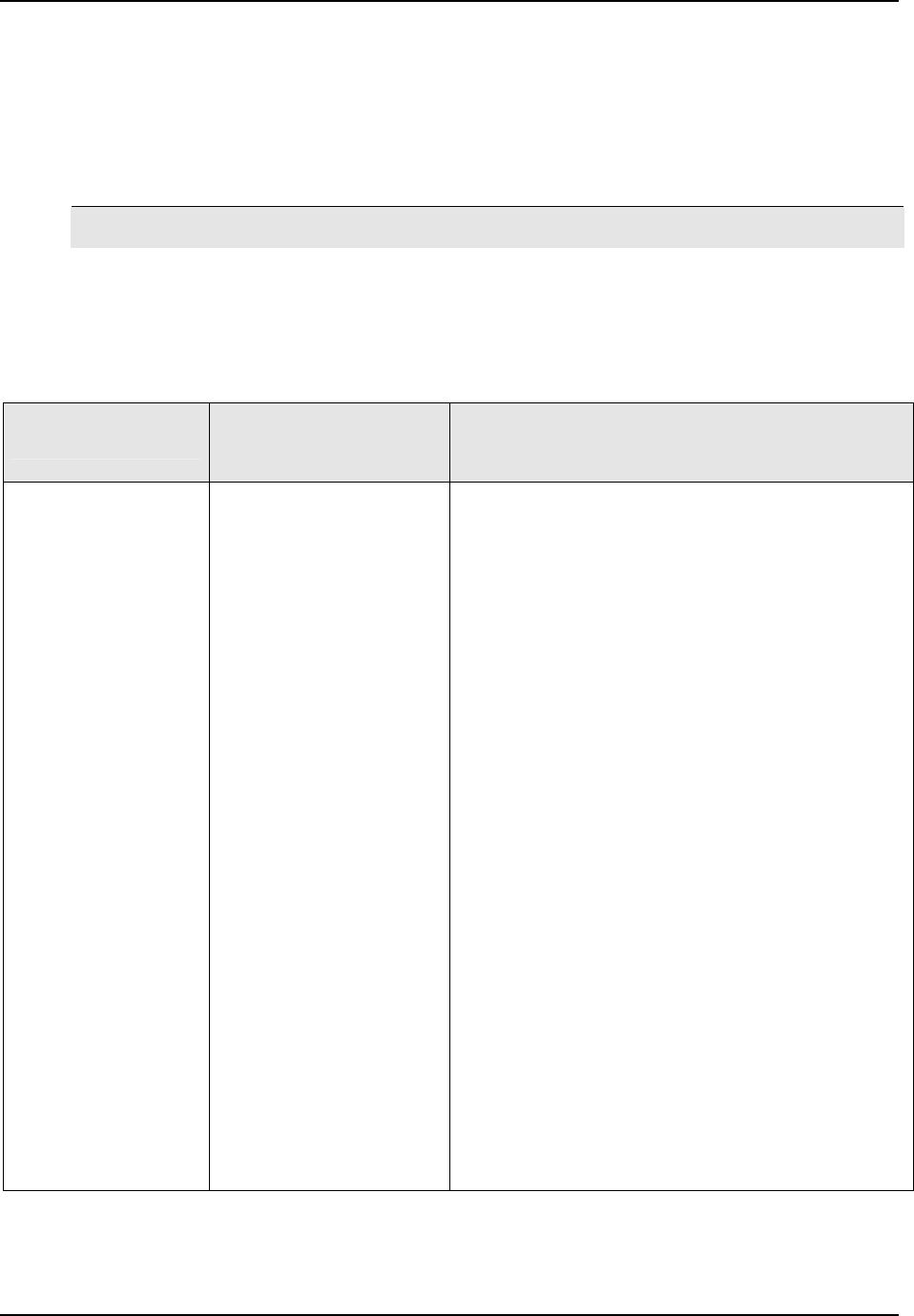
Configuration
3.12 Math Set Up Group
Introduction
These selections are provided only as part of the Math Options package.
ATTENTION
Enabling SP Program 4 automatically disables the characterizers in the Math
Setup Group.
Function Prompts
Table 3-12 MATH Group Function Prompts
Function Prompt
Lower Display
Selections or
Range of Setting
Upper Display
Parameter
Definition
8SEG CH1
DISABLE
INPUT1
INPUT2
INPUT3
INPUT4
INPUT5
L1 OUT
L2 OUT
8 SEGMENT CHARACTERIZER #1—An eight-
segment characterizer can be applied to any analog
input, Output 1 or Output 2.
DISABLE—Disables characterizer.
INPUT 1—Characterizer is applied to Input 1.
INPUT 2—Characterizer is applied to Input 2.
INPUT 3—Characterizer is applied to Input 3.
INPUT 4—Characterizer is applied to Input 4.
INPUT 5—Characterizer is applied to Input 5.
LOOP 1 OUTPUT—Characterizer is applied to Loop
1 Output. – Should not be used for Three Position
Step Control or Position Proportional Control
applications
LOOP 2 OUTPUT—Characterizer is applied to Loop
2 Output.
There are eight (Xn) Input values and eight (Yn)
Output values to be selected. The following rules
apply:
• When any analog input is used, the Input Ratio
and Bias for that input are applied to the Xn
Values.
• When one of the Loop outputs are selected, the
Xn Input values are the Output from the control
algorithm, and the Yn Output is the final control
element action. This application is useful for non-
linear control elements or Process Variable.
A simple example is shown in Figure 3-2.
94 UDC3500 Universal Digital Controller Product Manual March 2012
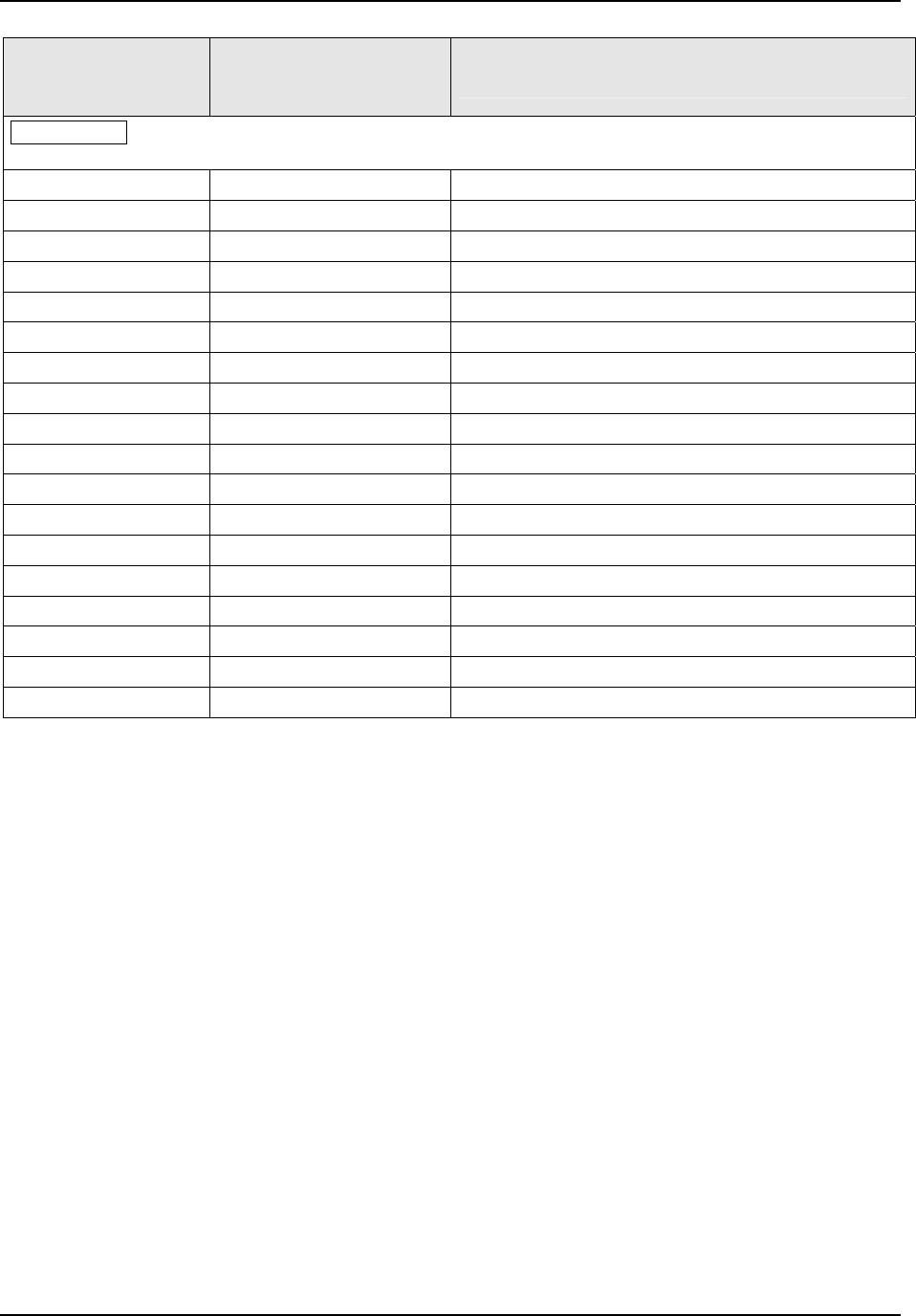
Configuration
March 2012 UDC3500 Universal Digital Controller Product Manual 95
Function Prompt
Lower Display
Selections or
Range of Setting
Upper Display
Parameter
Definition
ATTENTION The X values below should be entered as increasing values (from 0% to 99.99%)
from N = 0 to 8.
X0 VALUE
0.00 to 99.99 %
X0 INPUT VALUE (X AXIS)
X1 VALUE
0.00 to 99.99 %
X1 INPUT VALUE (X AXIS)
X2 VALUE
0.00 to 99.99 %
X2 INPUT VALUE (X AXIS)
X3 VALUE
0.00 to 99.99 %
X3 INPUT VALUE (X AXIS)
X4 VALUE
0.00 to 99.99 %
X4 INPUT VALUE (X AXIS)
X5 VALUE
0.00 to 99.99 %
X5 INPUT VALUE (X AXIS)
X6 VALUE
0.00 to 99.99 %
X6 INPUT VALUE (X AXIS)
X7 VALUE
0.00 to 99.99 %
X7 INPUT VALUE (X AXIS)
X8 VALUE
0.00 to 99.99 %
X8 INPUT VALUE (X AXIS)
Y0 VALUE
0.00 to 99.99 %
Y0 INPUT VALUE (Y AXIS)
Y1 VALUE
0.00 to 99.99 %
Y1 INPUT VALUE (Y AXIS)
Y2 VALUE
0.00 to 99.99 %
Y2 INPUT VALUE (Y AXIS)
Y3 VALUE
0.00 to 99.99 %
Y3 INPUT VALUE (Y AXIS)
Y4 VALUE
0.00 to 99.99 %
Y4 INPUT VALUE (Y AXIS)
Y5 VALUE
0.00 to 99.99 %
Y5 INPUT VALUE (Y AXIS)
Y6 VALUE
0.00 to 99.99 %
Y6 INPUT VALUE (Y AXIS)
Y7 VALUE
0.00 to 99.99 %
Y7 INPUT VALUE (Y AXIS)
Y8 VALUE
0.00 to 99.99 %
Y8 INPUT VALUE (Y AXIS)
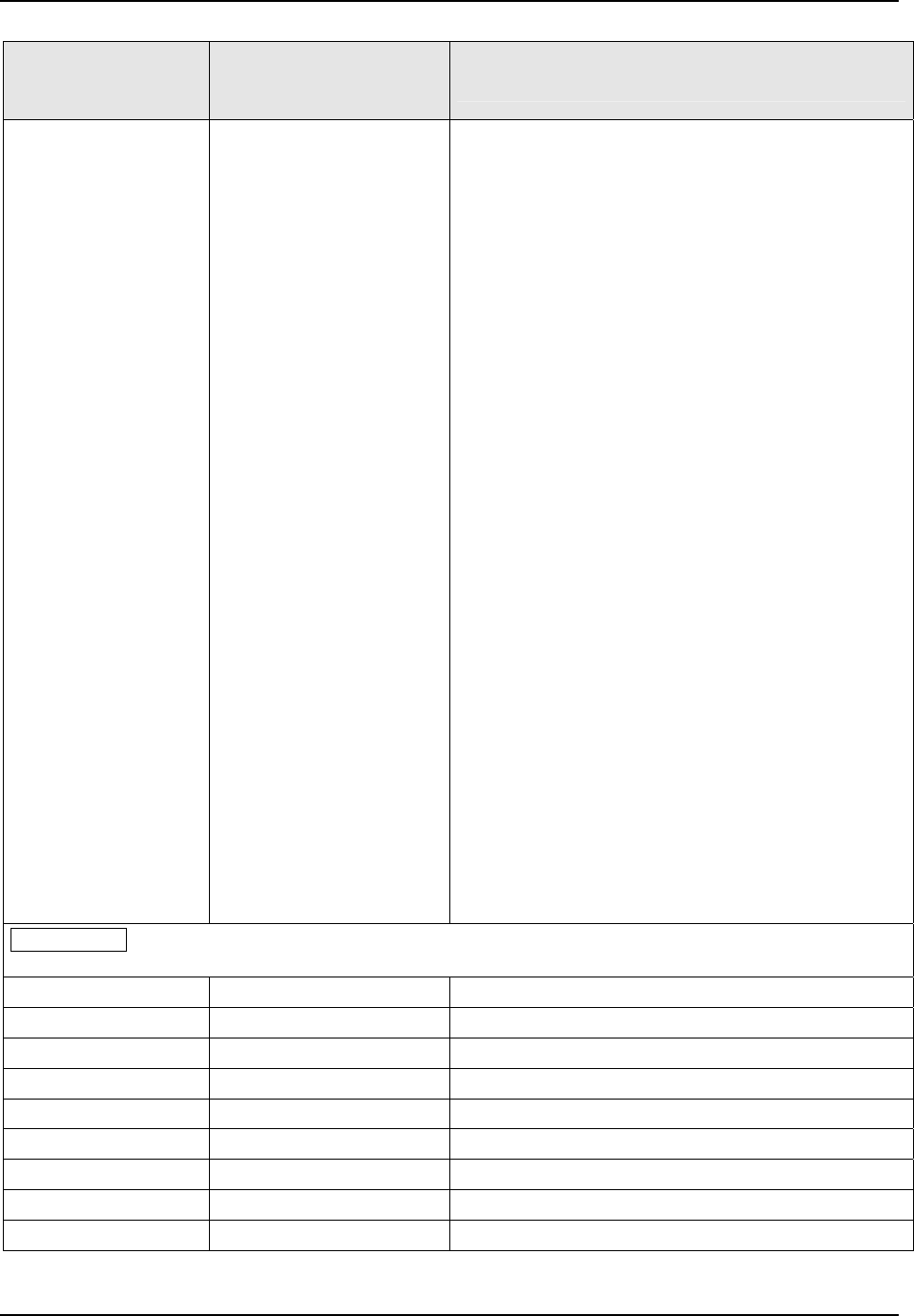
Configuration
96 UDC3500 Universal Digital Controller Product Manual March 2012
Function Prompt
Lower Display
Selections or
Range of Setting
Upper Display
Parameter
Definition
8SEG CH2
DISABLE
INPUT1
INPUT2
INPUT3
INPUT4
INPUT5
L1 OUT
L2 OUT
LINK
8 SEGMENT CHARACTERIZER #2—An eight-
segment characterizer can be applied to any analog
input, Output 1 or Output 2. When Characterizer # 2
is set to LINK, then a single sixteen-segment
characterizer is formed.
DISABLE—Disables characterizer.
INPUT 1—Characterizer is applied to Input 1.
INPUT 2—Characterizer is applied to Input 2.
INPUT 3—Characterizer is applied to Input 3.
INPUT 4—Characterizer is applied to Input 4.
INPUT 5—Characterizer is applied to Input 5.
LOOP 1 OUTPUT—Characterizer is applied to Loop
1 Output. – Should not be used for Three Position
Step Control or Positional Proportional Control
applications.
LOOP 2 OUTPUT—Characterizer is applied to Loop
2 Output.
There are eight (Xn) Input values and eight (Yn)
Output values to be selected. The following rules
apply:
• When any analog input is used, the Input Ratio
and Bias for that input are applied to the Xn
Values.
• When one of the Loop outputs are selected, the
Xn Input values are the Output from the control
algorithm, and the Yn Output is the final control
element action. This application is useful for non-
linear control elements or Process Variable.
LINK—Concatenate the two 8 segment
characterizers into a single 16-segment
characterizer. Application of the characterizer is then
selected by the Characterizer #1 configuration.
ATTENTION The X values below should be entered as increasing values (from 0% to 99.99%) from
N=9 to 17.
X9 VALUE
0.00 to 99.99 %
X9 INPUT VALUE (X AXIS)
X10VALUE
0.00 to 99.99 %
X10 INPUT VALUE (X AXIS)
X11VALUE
0.00 to 99.99 %
X11 INPUT VALUE (X AXIS)
X12VALUE
0.00 to 99.99 %
X12 INPUT VALUE (X AXIS)
X13VALUE
0.00 to 99.99 %
X13 INPUT VALUE (X AXIS)
X14VALUE
0.00 to 99.99 %
X14 INPUT VALUE (X AXIS)
X15VALUE
0.00 to 99.99 %
X15 INPUT VALUE (X AXIS)
X16VALUE
0.00 to 99.99 %
X16 INPUT VALUE (X AXIS)
X17VALUE
0.00 to 99.99 %
X17 INPUT VALUE (X AXIS)
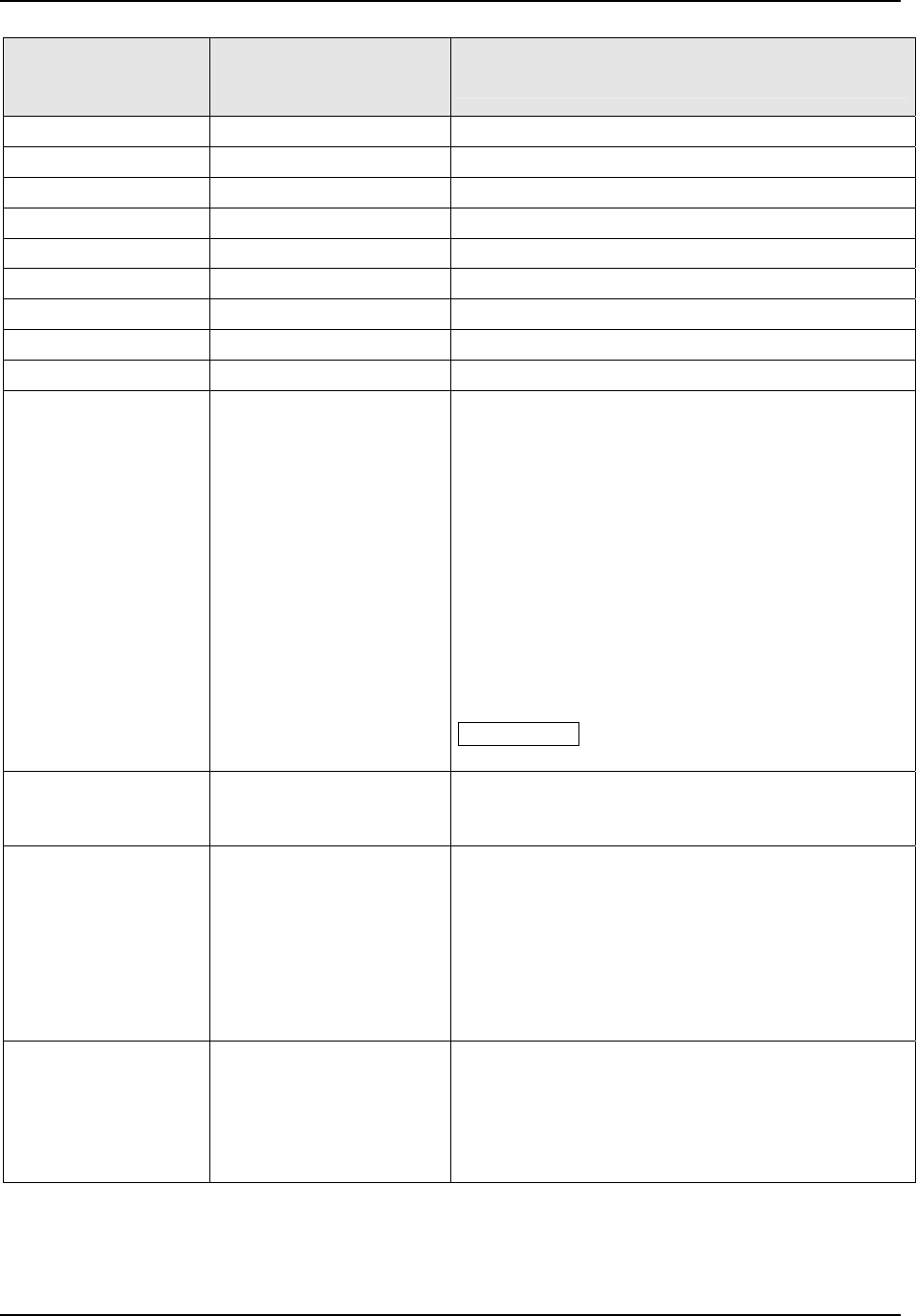
Configuration
March 2012 UDC3500 Universal Digital Controller Product Manual 97
Function Prompt
Lower Display
Selections or
Range of Setting
Upper Display
Parameter
Definition
Y9 VALUE
0.00 to 99.99 %
Y9 INPUT VALUE (Y AXIS)
Y10VALUE
0.00 to 99.99 %
Y10 INPUT VALUE (Y AXIS)
Y11VALUE
0.00 to 99.99 %
Y11 INPUT VALUE (Y AXIS)
Y12VALUE
0.00 to 99.99 %
Y12 INPUT VALUE (Y AXIS)
Y13VALUE
0.00 to 99.99 %
Y13 INPUT VALUE (Y AXIS)
Y14VALUE
0.00 to 99.99 %
Y14 INPUT VALUE (Y AXIS)
Y15VALUE
0.00 to 99.99 %
Y15 INPUT VALUE (Y AXIS)
Y16VALUE
0.00 to 99.99 %
Y16 INPUT VALUE (Y AXIS)
Y17VALUE
0.00 to 99.99 %
Y17 INPUT VALUE (Y AXIS)
TOTALIZE
DISABLE
INPUT 1
INPUT 2
INPUT 3
INPUT 4
INPUT 5
IN AL1
IN AL2
TOTALIZER FUNCTION calculates and displays the
total flow volume as measured by any analog input
or applied to either Input Algorithm 1 or Input
Algorithm 2 to totalize the compensated flow rate
being calculated by the algorithm. Displayed value is
eight digits with a configurable scale factor.
DISABLE—Disables the totalizer function.
INPUT 1—Input 1 is Totalized.
INPUT 2—Input 2 is Totalized.
INPUT 3—Input 3 is Totalized.
INPUT 3—Input 4 is Totalized.
INPUT 5—Input 5 is Totalized.
IN ALG1—Input Algorithm 1 is Totalized.
IN ALG2—Input Algorithm 2 is Totalized.
ATTENTION The totalizer should always be reset
to initialize the counters whenever it is enabled.
XXXXXXX *En
TOTALIZER VALUE—READ ONLY
Current Scale Factor (Upper Display)
Actual Current Totalized Value (Lower Display)
TOT SCAL
E0 = 1 x 10
0
= 1
E1 = 1 x 10
1
= 10
E2 = 1 x 10
2
= 100
E3 = 1 x 10
3
= 1,000
E4 = 1 x 10
4
= 10,000
E5 = 1 x 10
5
= 100,000
E6 = 1 x 10
6
= 1,000,000
TOTALIZER SCALE FACTOR—Selects the desired
Scale Factor (i.e., Multiplier).
The desired factor is applied to the calculated value
to extend the maximum flow range that can be
displayed.
TOT SCR
UNLOCK
LOCK
TOTALIZER RESET SECURITY LOCK—Allows the
totalizer to be reset.
UNLOCK—Allows the totalizer value to be reset.
LOCK—Prevents the totalizer value from being
reset.
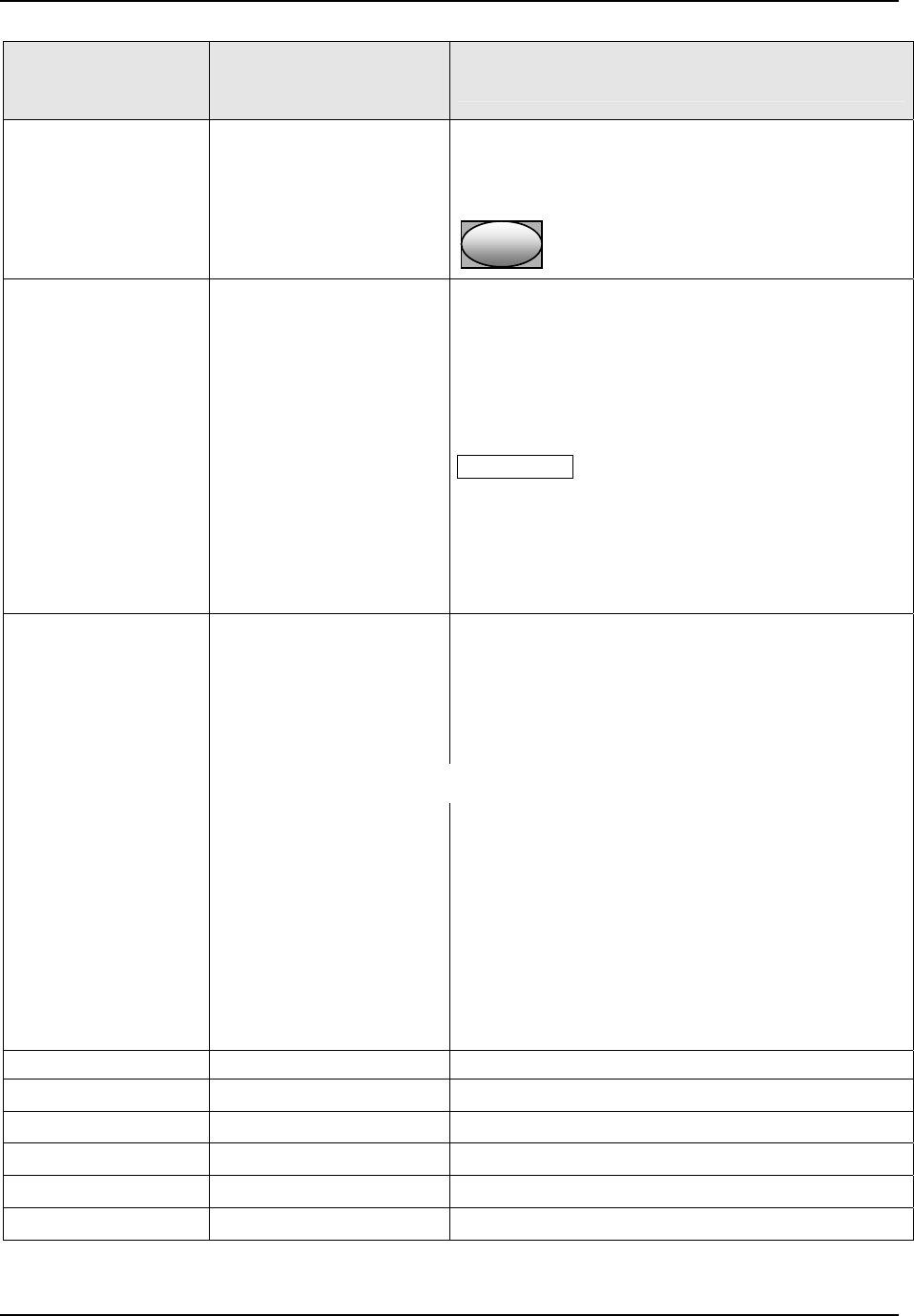
Configuration
98 UDC3500 Universal Digital Controller Product Manual March 2012
Function Prompt
Lower Display
Selections or
Range of Setting
Upper Display
Parameter
Definition
RESET?
NO
YES
TOTALIZER RESET—This prompt appears only if
the totalizer is unlocked.
NO—No Reset
YES—Resets the Totalizer value on next
FunctionFunctionFunction
key press.
TOT RATE
SECOND
MINUTE
HOUR
DAY
ML/DAY
TOTALIZER INTEGRATION RATE—Determines
the rate at which the Totalizer is updated.
SECOND—Engineering units per second
MINUTE—Engineering units per minute
HOUR—Engineering units per hour
DAY—Engineering units per day
MIL/DAY—Millions of units per day
ATTENTION The source of the Totalizer is
averaged over the sample and update rates. For
example, as the loop cycle speed is six per second,
then with the Totalizer Rate set at once per minute,
the source is averaged six times per second and the
Totalizer value is updated with this average value ÷
60 once per second.
POLYNOM
DISABLE
INPUT 1
INPUT 2
INPUT 3
INPUT 4
INPUT 5
POLYNOMIAL EQUATION—A fifth order Polynomial
Equation can be used on any one of the five Analog
Inputs.
The equation is in the form:
Y = C
0
+ C
1
X + C
2
* 10
-1
X
2
+ C
3
* 10
-3
X
3
+ C
4
* 10
-5
X
4
+ C
5
* 10
-7
X
5
Where:
X is the value of the input in % of span
C
0
is a value between –99.99 to +99.99
C
1
– C
5
are values between –9.999 to +9.999
Ratio and Bias can be applied on the “Y” output term as
follows:
Calculated “Y” Value = Y * Input X Ratio + Input X Bias
After the Polynomial is enabled, refer to the prompts listed
below and enter the coefficients.
C0 VALUE
–99.99 to 99.99
POLYNOMIAL COEFFICIENT C0
C1 VALUE
–9.999 to 9.999
POLYNOMIAL COEFFICIENT C1
C2 X 10
–1
–9.999 to 9.999
POLYNOMIAL COEFFICIENT C2
C3 X 10
–3
–9.999 to 9.999
POLYNOMIAL COEFFICIENT C3
C4 X 10
–5
–9.999 to 9.999
POLYNOMIAL COEFFICIENT C4
C5 X 10
–7
–9.999 to 9.999
POLYNOMIAL COEFFICIENT C5

Configuration
N
Xn
Yn
0
1
2
3
4
5
6
7
8
0.00
5.00
10.00
20.00
31.00
45.00
60.00
80.00
99.99
0.00
25.00
37.00
55.00
70.00
81.00
87.00
94.50
99.99
100%
Y AXIS
Y4
Output
from
Characterizer
0%
0%
X4
Input to Characterizer
100%
X AXIS
Characterizer
Disabled
Figure 3-2 Example of Eight Segment Characterizer
March 2012 UDC3500 Universal Digital Controller Product Manual 99
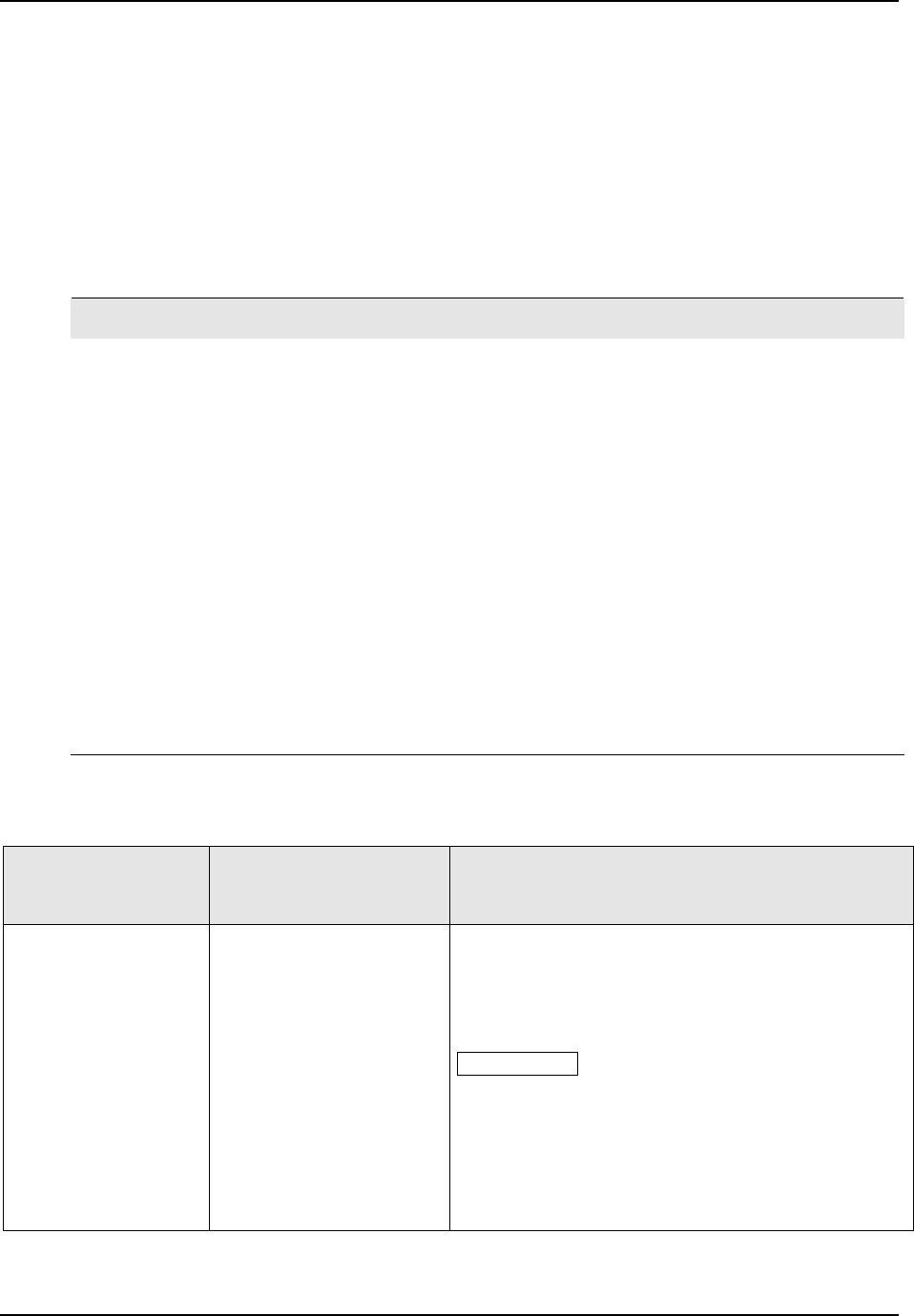
Configuration
3.13 Logic Gates Set Up Group
Introduction
This Set Up Group is provided only as part of the Math Options package.
This group deals with various Logic Gates that are available for use in the controller. Up
to five different gates can be configured.
ATTENTION
If the controller is configured to use the same relay for more than one function, then the
following priority is used to determine how the relay functions: Control Outputs take
precedence over Alarms, which in turn take precedence over Time/Events, which in turn
take precedence over Logic Gate Outputs. For example, if you select the Loop 2 Output
Algorithm as Time Simplex (which uses Relay 3), enable Alarm 3 (which also uses
Relay 3) and configure a Logic Gate to use Relay 3, then the instrument will use Relay
#3 to perform the Time Simplex output and ignore the Alarm and Logic Gate functions.
Logic Gates are processed in numerical order. For example, if Logic Gate 2 and Logic
Gate 4 are configured in a contradictory manner, then Logic Gate 2 will take precedence
and Logic Gate 4 will be ignored.
Logic Gate Outputs configured for Relays will light an annunciator when active.
Outputs for Relay 1 through Relay 4 will light annunciators OUT 1 through 4. Logic
Gate Outputs for Relay 5 will light annunciator ALM 1.
Function Prompts
Table 3-13 LOGIC Group Function Prompts
Function Prompt
Lower Display
Selections or
Range of Setting
Upper Display
Parameter
Definition
LOG GATE
DISABLE
ENABLE
LOGIC GATES—This feature is available only with
controllers that have the math option.
DISABLE—Disables Logic Gates Functions.
ENABLE—Enables Logic Gates Function.
ATTENTION For each Logic Gate, make a
selection for:
Gate Type GATEnTYP
Input A Source GATEnINA
Input B Source GATEnINB
Output Use GATEnOUT
where n = 1, 2, 3, 4 or 5
100 UDC3500 Universal Digital Controller Product Manual March 2012
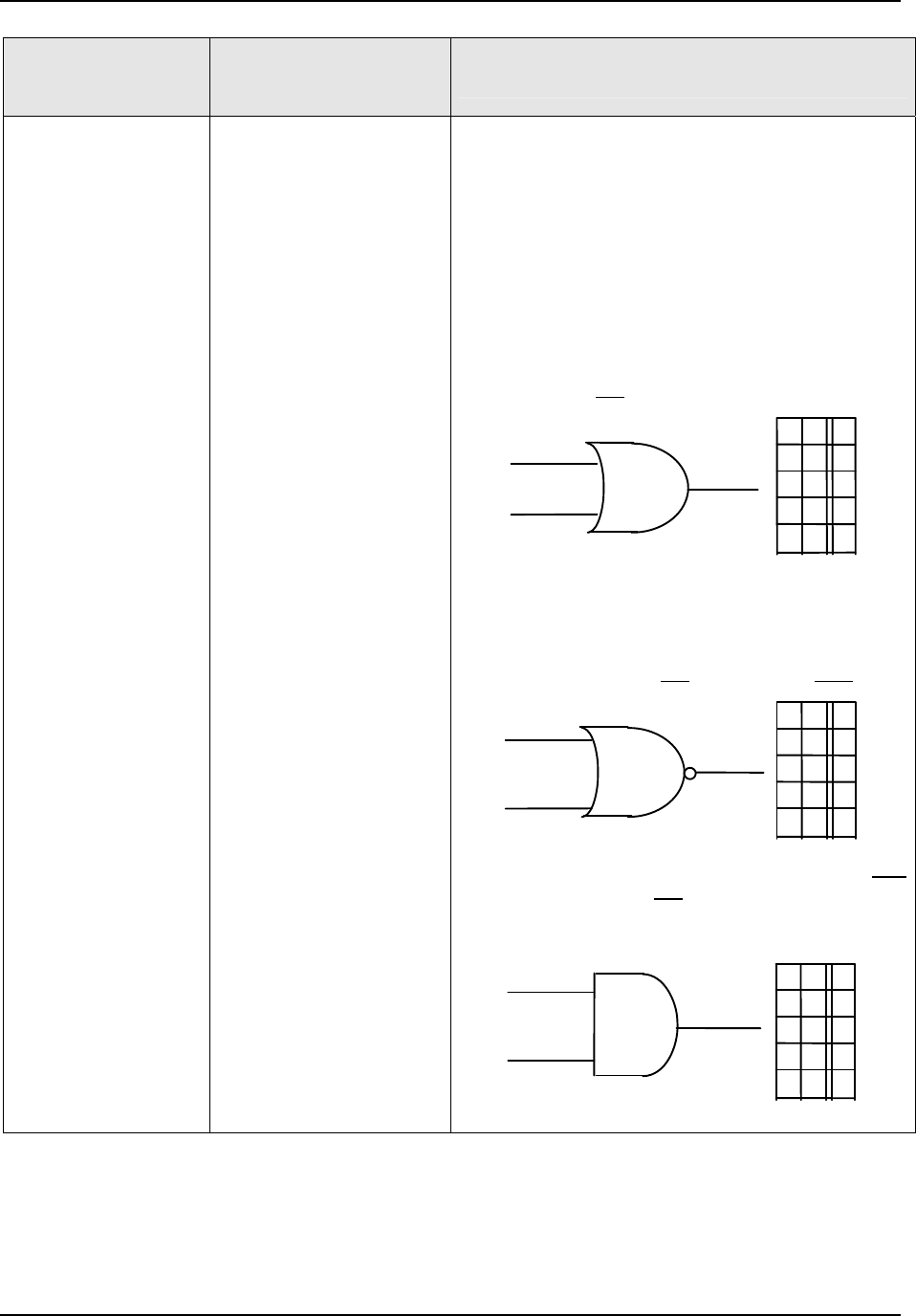
Configuration
March 2012 UDC3500 Universal Digital Controller Product Manual 101
Function Prompt
Lower Display
Selections or
Range of Setting
Upper Display
Parameter
Definition
GATE(n)TYP
(n = 1, 2, 3, 4, or 5)
GATE TYPE—In digital logic, there are only two
states that can be present:
“0” – OFF or “1” – ON
Listed are definitions of the gates available and their
truth table which indicate what happens to the
Output with regard to the state of the Inputs.
NOT USED
NOT USED—No Selection
OR
OR—With this gate, if Input A OR Input B is ON,
then the Output will be ON. Also, if both Inputs are
ON, the Output will also be ON because it takes any
one Input being ON
to make the Output
INPUT A
INPUT B
OR
A
B
Y
0
1
OUTPUT (Y)
0
0
0
0
1
1
1
1
1
1
NOR
NOR—The NOR gate is similar to the OR gate,
except that the Output is inverted. It is exactly
opposite of the OR gate and is referred to as NOT
OR or NOR.
If Input A or Input B are ON
, the Output is OFF.
INPUT A
INPUT B
NOR
A
B
Y
0
1
OUTPUT (Y)
0
0
0
0
1
1
1
0
0
1
AND
AND—With this gate, if Input A AND Input B are ON,
then the Output will be ON
; so that any single Input
change will not cause the Output to change unless
the other Input is already ON.
AND
INPUT A
INPUT B
OUTPUT (Y)
A
B
Y
0
1
0
0
0
0
1
1
1
0
0
1
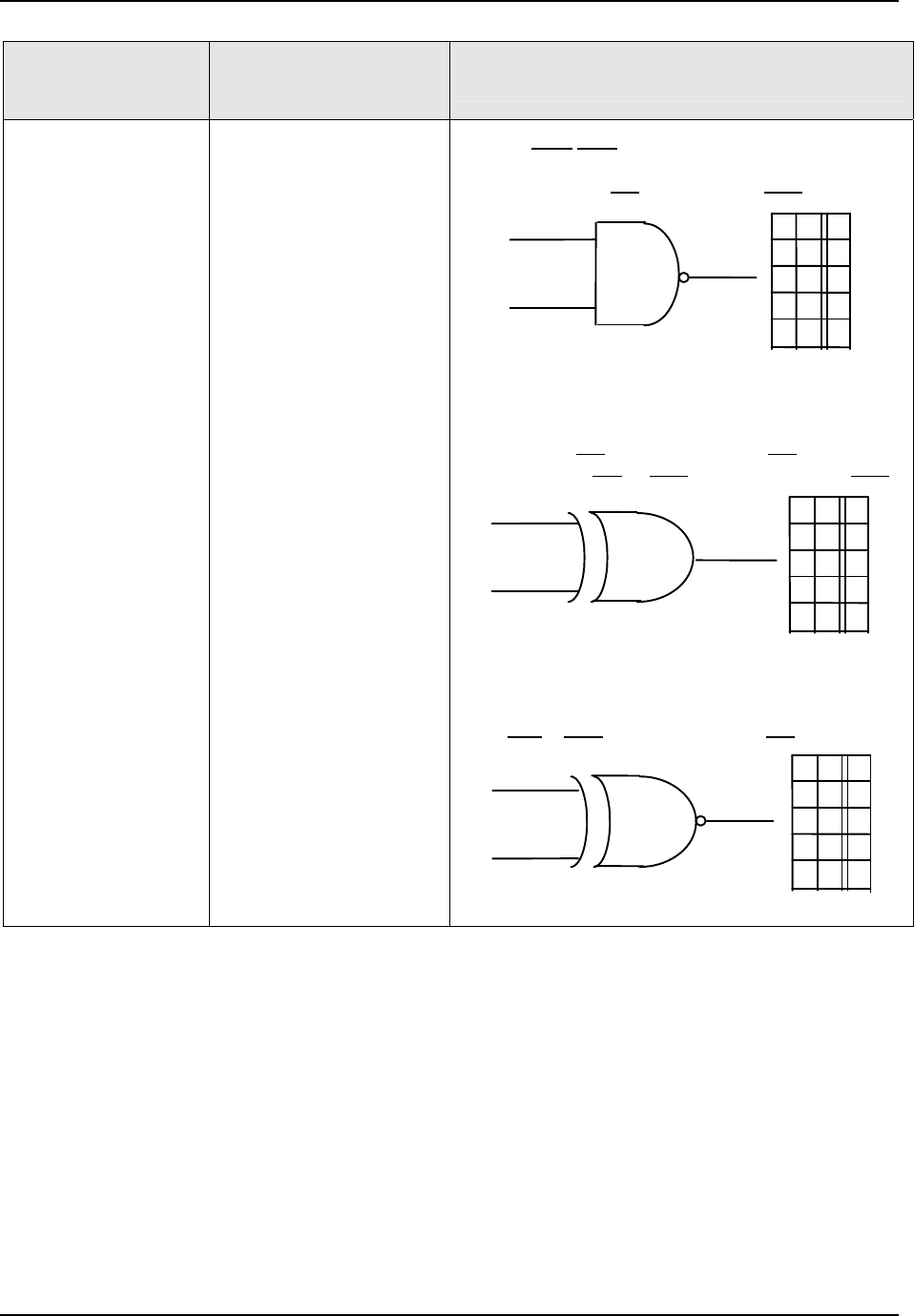
Configuration
102 UDC3500 Universal Digital Controller Product Manual March 2012
Function Prompt
Lower Display
Selections or
Range of Setting
Upper Display
Parameter
Definition
NAND
NAND—NOT AND is the best way to describe the
NAND gate. It is an inverted AND gate. When Input
A and Input B are ON
, the Output is OFF.
NAND
INPUT A
INPUT B
OUTPUT (Y)
A
B
Y
0
1
0
0
0
1
1
1
01
1
1
X OR
X OR (EXCLUSIVE OR)—The operation of this gate
is, as its name implies, Exclusively “OR”. If Input A
OR Input B is ON
, the Output will be ON. If Input A
and Input B are ON
or OFF, the Output will be OFF.
X OR
INPUT A
INPUT B
OUTPUT (Y)
A B
Y
0
1
0
0
0
1
1
0
01
1
1
XNOR
X NOR EXCLUSIVE NOR)—The EXCLUSIVE NOR
is an inverted EXCLUSIVE OR. If Input A and Input
B are ON
or OFF, the Output will be ON.
XNOR
INPUT A
INPUT B
OUTPUT (Y)
A B
Y
0
1
0
0
0
1
1
0
0
1
1
1
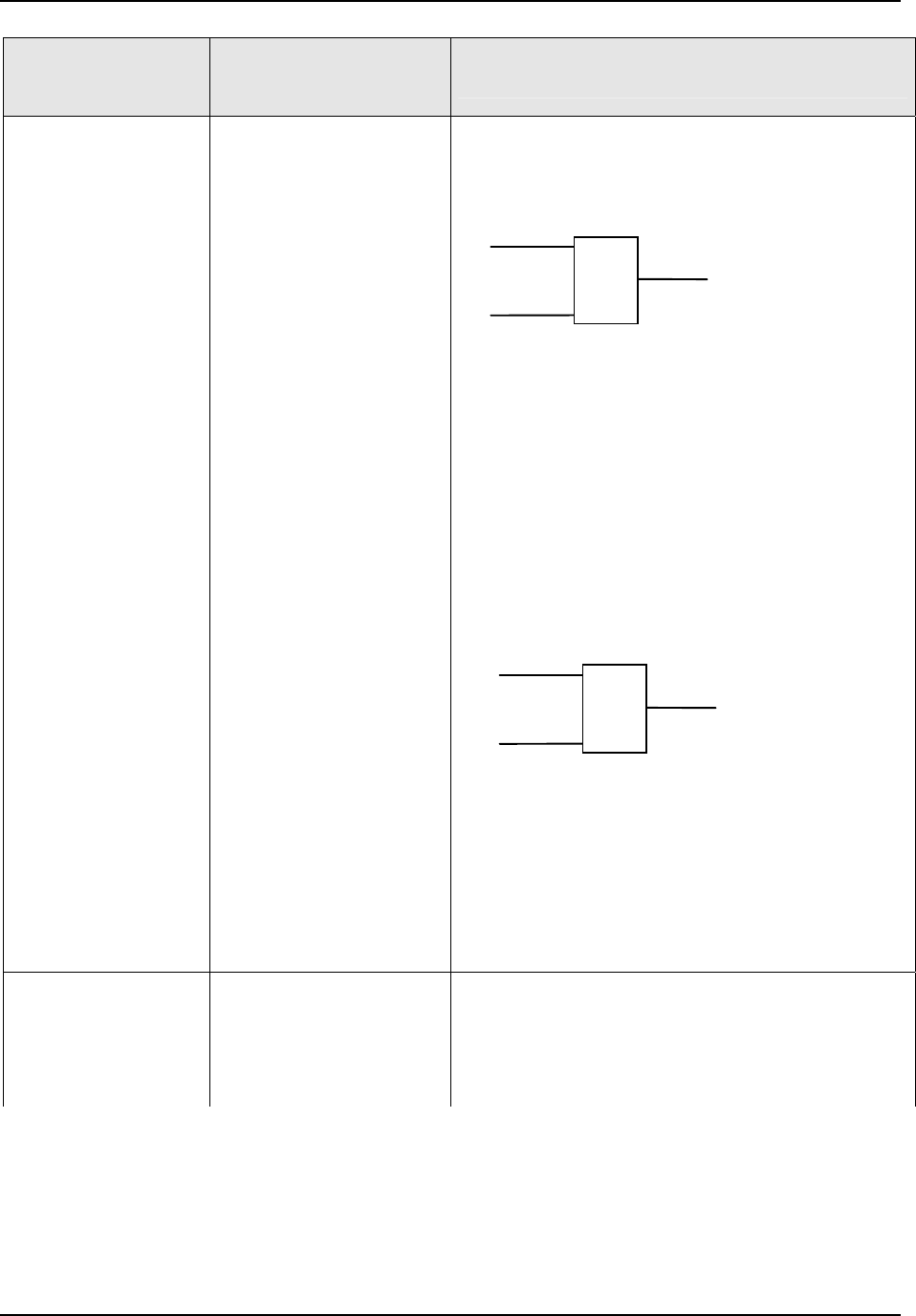
Configuration
March 2012 UDC3500 Universal Digital Controller Product Manual 103
Function Prompt
Lower Display
Selections or
Range of Setting
Upper Display
Parameter
Definition
B LT A (B<A)
B LT A (B<A)—B less than A is an Analog
Comparator with two Analog Inputs and one Digital
(On/Off) Output. A fixed Hysteresis Band of 0.1% of
Input B span is applied to these comparators.
INPUT A
INPUT B
OUTPUT (Y)
B<A
Y
= 1 if B<
A
Y
= 0 if (B + .001 * Span of B) >A
Example: (B<A)
B = 900 (Range 0 – 1000)
900 – (1000 * .001) = 899
If A >900, then Output is ON(1)
If A <899, then Output is OFF (0)
B GT A (B>A)
B GT A (B>A)—B greater than A is an Analog
Comparator with two Analog Inputs and one Digital
(On/Off) Output. A fixed Hysteresis Band of 0.1% of
Input B span is applied to these comparators.
INPUT A
INPUT B
OUTPUT (Y)
B>A
Y
= 1 if B>
A
Y
= 0 if (B + .001 * Span of B) <
A
Example: (B>A)
B = 900 (Range 0 – 1000)
900 +(1000 * .001) = 901
If A <900, then Output is ON(1)
If A >901, then Output is OFF (0)
GATE(n)INA
(n = 1, 2, 3, 4, or 5)
GATE (n) INPUT A—The selection here will indicate
what Input A will be for any of the 5 Gates you want
to configure.
The following selections apply if the Gate Type is
OR, NOR, AND, NAND, X OR, or X NOR.
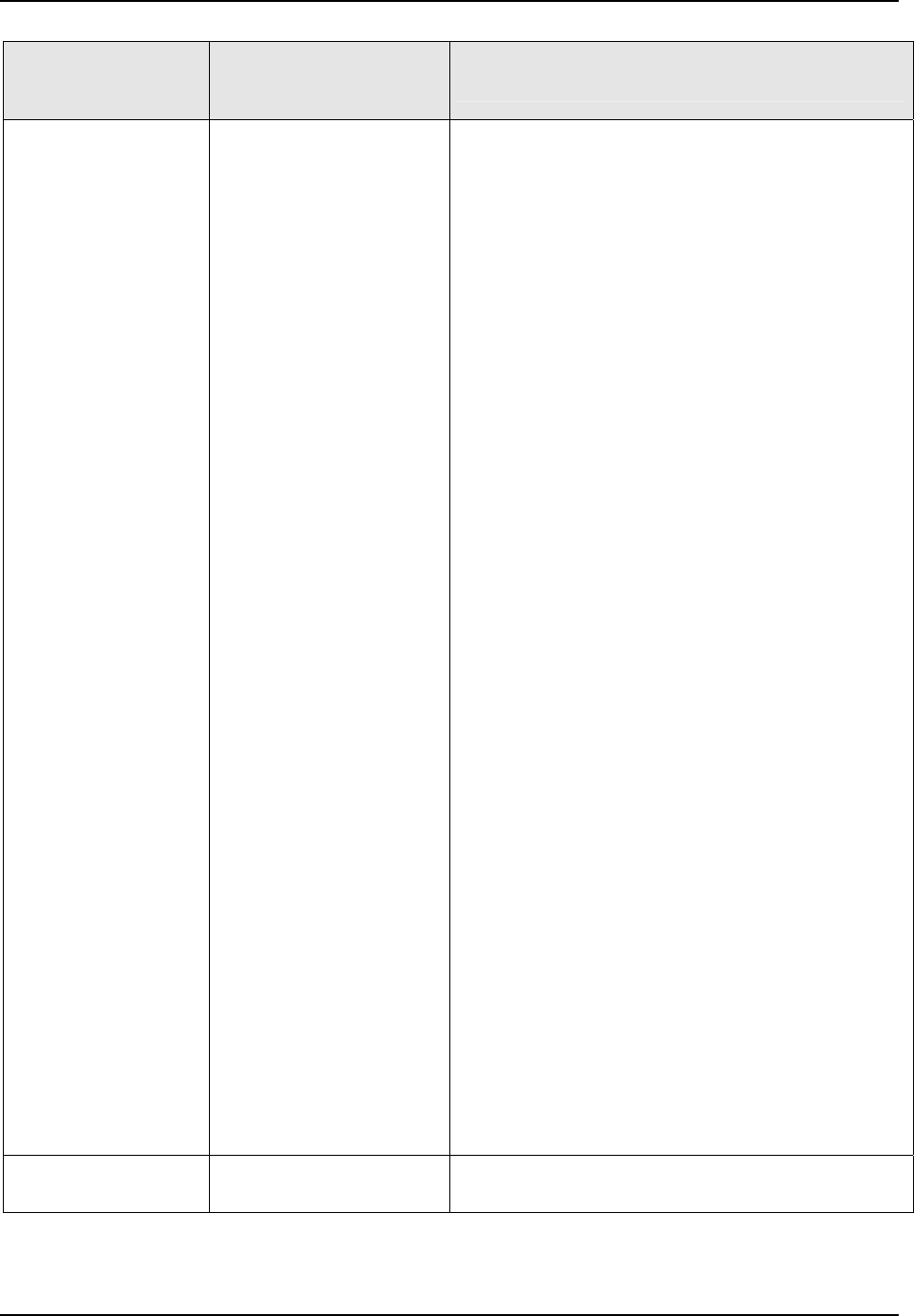
Configuration
104 UDC3500 Universal Digital Controller Product Manual March 2012
Function Prompt
Lower Display
Selections or
Range of Setting
Upper Display
Parameter
Definition
DIG IN1
DIG IN2
DIG IN3
DIG IN4
RELAY 1
RELAY 2
RELAY 3
RELAY 4
RELAY 5
GATE1OT
GATE2OT
GATE3OT
GATE4OT
GATE5OT
FIX ON
FIX OFF
DIGITAL INPUT 1
DIGITAL INPUT 2
DIGITAL INPUT 3
DIGITAL INPUT 4
RELAY 1
RELAY 2
RELAY 3
RELAY 4
RELAY 5
OUTPUT FROM GATE 1
OUTPUT FROM GATE 2
OUTPUT FROM GATE 3
OUTPUT FROM GATE 4
OUTPUT FROM GATE 5
ALWAYS A “1”
ALWAYS A “0”
MA MODE
LR SPL1
ADAPT 1
MA MOD2 *
LR SPL2 *
ADAPT 2 *
Manual or Auto mode – Loop 1
0 = Manual 1 = Automatic
Local or Remote Setpoint – Loop 1
0 = Local 1 = Remote
Disable or Enable Adaptive Tune – Loop 1
0 = Disable 1 = Enable
Manual or Auto Mode – Loop 2
0 = Manual 1 = Automatic
Local or Remote Setpoint – Loop 2
0 = Local 1 = Remote
Disable or Enable Adaptive Tune – Loop 2
0 = Disable 1 = Enable
INPUT 1
INPUT 2
INPUT 3
INPUT 4
INPUT 5
L1 PV
L1 SP
CONST K
L2 PV *
L2 SP *
* These prompts appear
only when 2 Loops are
configured.
The following selections apply if the Gate Type is
B LT A (B less than A) or B GT A (B greater than A).
ANALOG INPUT 1
ANALOG INPUT 2
ANALOG INPUT 3
ANALOG INPUT 4
ANALOG INPUT 5
LOOP 1 PROCESS VARIABLE
LOOP 1 SETPOINT
K CONSTANT
LOOP 2 PROCESS VARIABLE
LOOP 2 SETPOINT
GATE(n) K
(n) = 1, 2, 3, 4, or 5
–999.0 to +9999
GATE (n) K CONSTANT—This selection only
appears if CONST K is configured for GATE(n)INA.
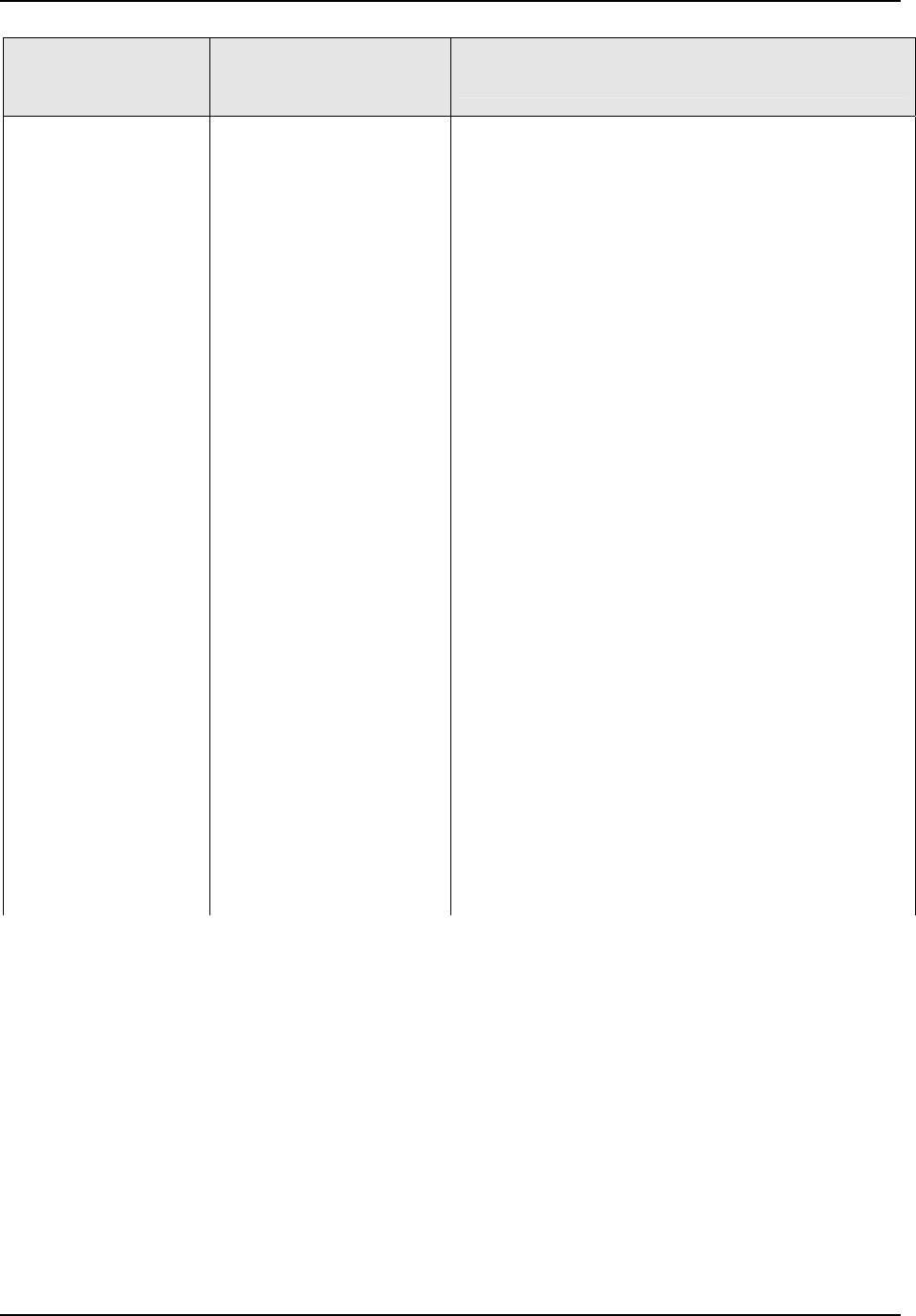
Configuration
March 2012 UDC3500 Universal Digital Controller Product Manual 105
Function Prompt
Lower Display
Selections or
Range of Setting
Upper Display
Parameter
Definition
GATE(n)INB
(n = 1, 2, 3, 4, or 5)
GATE (n) INPUT B—The selection here will indicate
what Input B will be for any of the 5 Gates you want
to configure.
The following selections apply if the Gate Type is
OR, NOR, AND, NAND, X OR, or X NOR.
DIG IN1
DIG IN2
DIG IN3
DIG IN4
RELAY 1
RELAY 2
RELAY 3
RELAY 4
RELAY 5
GATE1OT
GATE2OT
GATE3OT
GATE4OT
GATE5OT
FIX ON
FIX OFF
DIGITAL INPUT 1
DIGITAL INPUT 2
DIGITAL INPUT 3
DIGITAL INPUT 4
RELAY 1
RELAY 2
RELAY 3
RELAY 4
RELAY 5
OUTPUT FROM GATE 1
OUTPUT FROM GATE 2
OUTPUT FROM GATE 3
OUTPUT FROM GATE 4
OUTPUT FROM GATE 5
ALWAYS A “1”
ALWAYS A “0”
MA MODE
LR SPL1
ADAPT1
MA MOD2 *
LR SPL2 *
ADAPT 2 *
Manual or Auto mode – Loop 1
0 = Manual 1 = Automatic
Local or Remote Setpoint – Loop 1
0 = Local 1 = Remote
Disable or Enable Adaptive Tune – Loop 1
0 = Disable 1 = Enable
Manual or Auto Mode – Loop 2
0 = Manual 1 = Automatic
Local or Remote Setpoint – Loop 2
0 = Local 1 = Remote
Disable or Enable Adaptive Tune – Loop 2
0 = Disable 1 = Enable
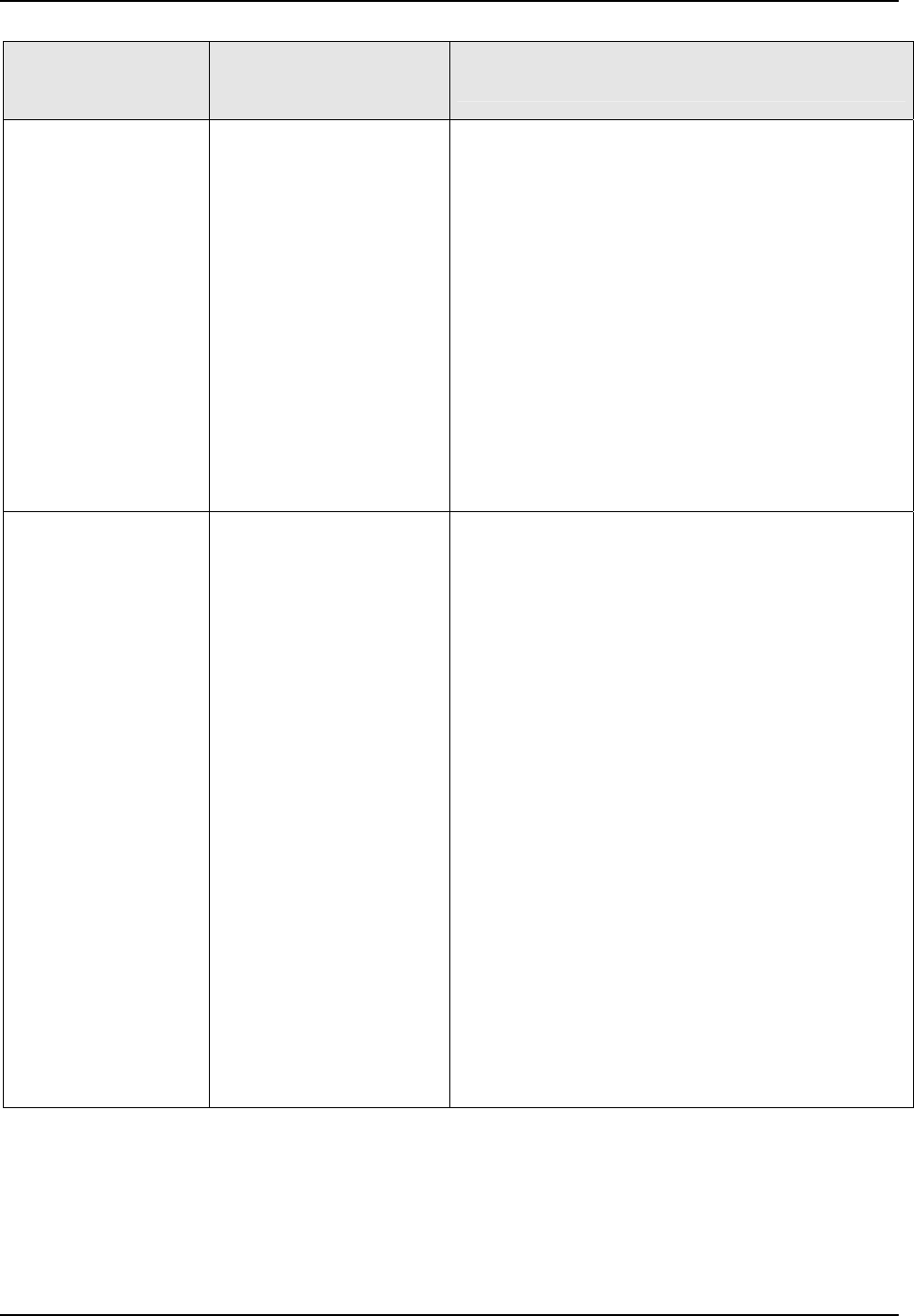
Configuration
106 UDC3500 Universal Digital Controller Product Manual March 2012
Function Prompt
Lower Display
Selections or
Range of Setting
Upper Display
Parameter
Definition
INPUT 1
INPUT 2
INPUT 3
INPUT 4
INPUT 5
L1 PV
L1 SP
TOTALZE
L2 PV *
L2 SP *
* These prompts appear
only when 2 Loops are
configured.
The following selections apply if the Gate Type is
B LT A (B less than A) or B GT A (B greater than A).
ANALOG INPUT 1
ANALOG INPUT 2
ANALOG INPUT 3
ANALOG INPUT 4
ANALOG INPUT 5
LOOP 1 PROCESS VARIABLE
LOOP 1 SETPOINT
TOTALIZER (see Note 1)
LOOP 2 PROCESS VARIABLE
LOOP 2 SETPOINT
Note 1: The Input B Totalizer Value will be the
displayed value, not the actual Totalizer value.
GATE(n)OUT
(n = 1, 2, 3, 4, or 5)
RELAY 1
RELAY 2
RELAY 3
RELAY 4
RELAY 5
ANY GATE
MA MODE
LR SPL1
ADAPT 1
RESET T
MA MOD2 *
LR SPL2 *
ADAPT 2 *
* These prompts appear
only when 2 Loops are
configured.
GATE (n) OUTPUT—The selection here indicates
what the output will be for any of the 5 gates that you
configure.
RELAY 1
RELAY 2
RELAY 3
RELAY 4
RELAY 5
Output to any Gate
Manual or Auto mode – Loop 1
0 = Manual 1 = Automatic
Local or Remote Setpoint – Loop 1
0 = Local 1 = Remote
Disable or Enable Adaptive Tune – Loop 1
0 = Disable 1 = Enable
Disable or Enable Totalizer Reset
0 = Disable 1 = Enable
Manual or Auto Mode – Loop 2
0 = Manual 1 = Automatic
Local or Remote Setpoint – Loop 2
0 = Local 1 = Remote
Disable or Enable Adaptive Tune – Loop 2
0 = Disable 1 = Enable
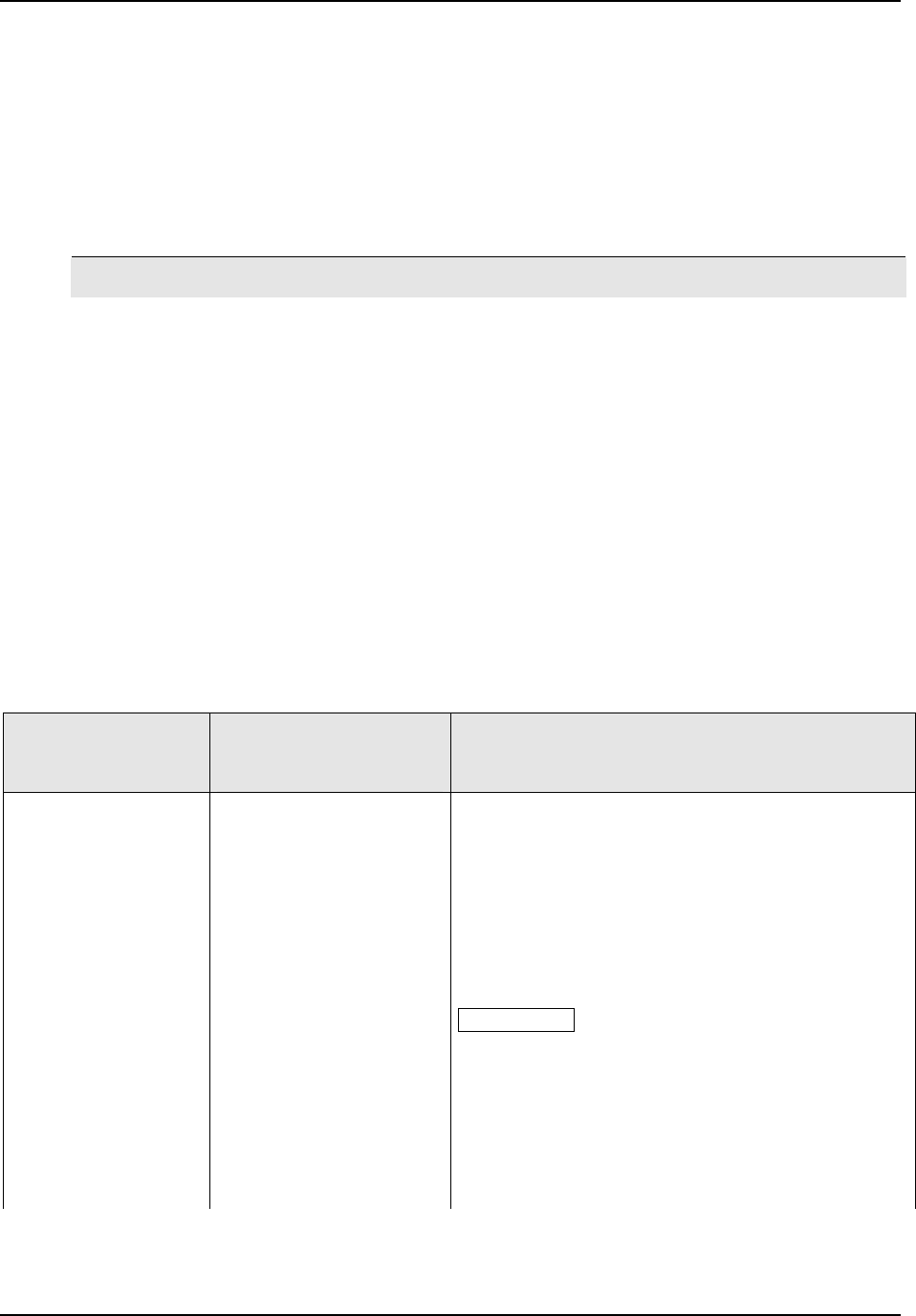
Configuration
3.14 Output Set Up Group
Introduction
This group deals with various output types in the controller, the Digital Output Status and
the Current Output operation.
ATTENTION
If the controller is configured to use the same relay for more than one function, then the
following priority is used to determine how the relay functions: Control Outputs take
precedence over Alarms, which in turn take precedence over Time/Events, which in turn
take precedence over Logic Gate Outputs. For example, if you select the Loop 2 Output
Algorithm as Time Simplex (which uses Relay 3), enable Alarm 3 (which also uses
Relay 3) and configure a Logic Gate to use Relay 3, then the instrument will use Relay
#3 to perform the Time Simplex output and ignore the Alarm and Logic Gate functions.
The Tuning Group is automatically configured to have two PID sets when a Duplex
Control Algorithm is selected.
Function Prompts
Table 3-14 OUTPUT Group Function Prompts
Function Prompt
Lower Display
Selections or
Range of Setting
Upper Display
Parameter
Definition
OUT ALG
OUTPUT ALGORITHM—Lets you select the type of
output you want. Not applicable with Control
algorithm prompt 3PSTEP.
Selections are hardware dependent. For example, if
the controller does not have a relay output, then
none of the prompts that need a relay output will
appear. See Table 2-6 and Table 2-7 for other
information about output types.
ATTENTION For all Duplex Output forms, PID heat
parameters (PID Set 1) apply for controller output
greater than 50 %; PID cool parameters (PID Set 2)
apply for controller output less than 50 %.
TIME
TIME SIMPLEX—This output algorithm uses Relay1
for Time Proportional Control. Time Proportional
Output has a resolution of 3.33 milliseconds with an
adjustable Cycle Time (see Section 3.4).
March 2012 UDC3500 Universal Digital Controller Product Manual 107
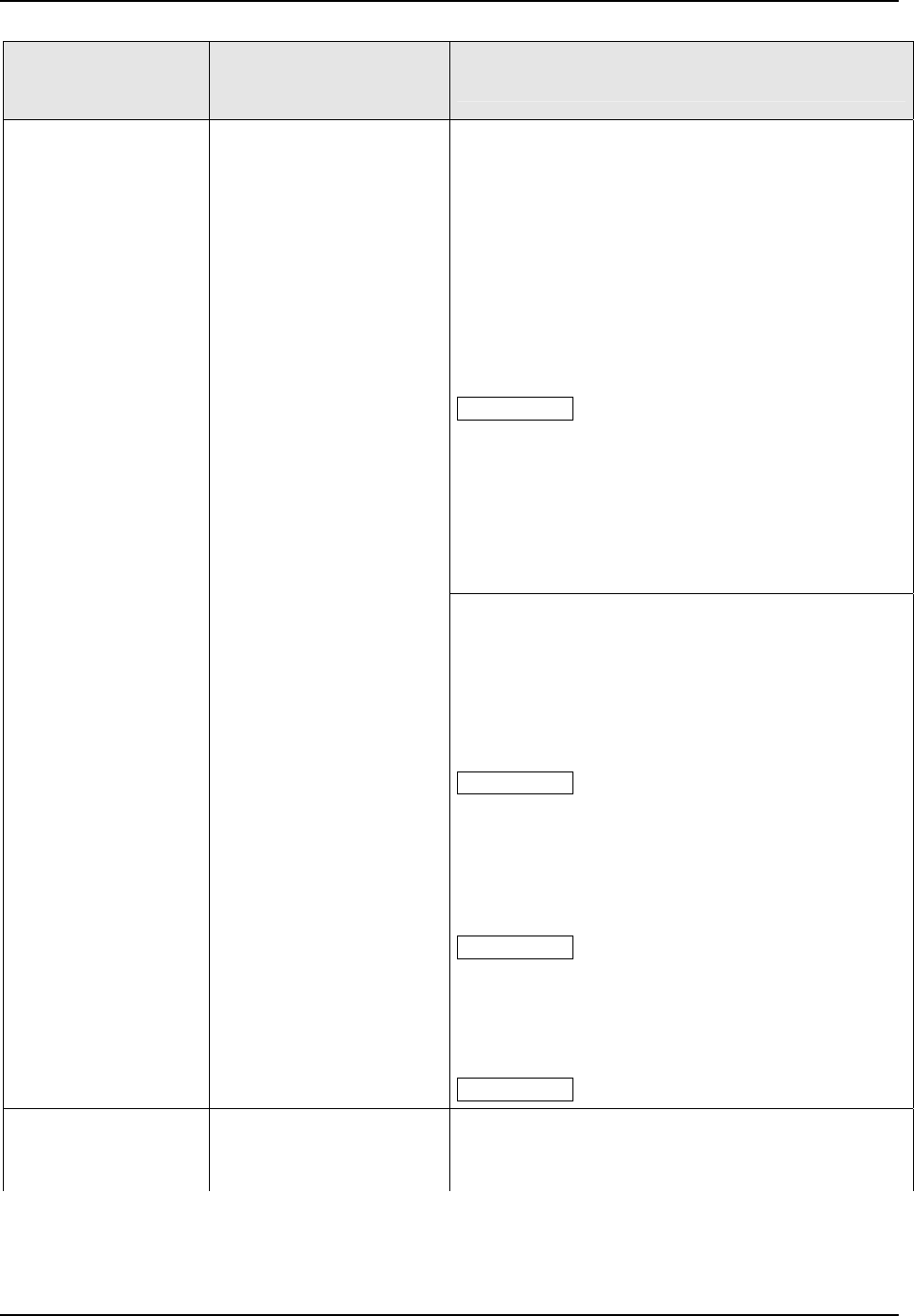
Configuration
108 UDC3500 Universal Digital Controller Product Manual March 2012
Function Prompt
Lower Display
Selections or
Range of Setting
Upper Display
Parameter
Definition
CURRENT
CURRENT SIMPLEX—Type of output using a
milliamp signal that can be fed into a positive or
negative grounded load. This signal can easily be
configured for 4-20 mA or 0-20 mA operation via the
C1 RANGE configuration, below.
POSPROP
POSITION PROPORTIONAL—Type of output using
two relays to control a motor with a feedback
slidewire.
This output algorithm selection forces Input 3 to the
SLIDEW selection when the Control Algorithm is any
selection other than 3PSTEP.
ATTENTION Other prompts affected: DEADBAND.
TIME D
TIME DUPLEX—This output algorithm uses Relay 1
and Relay 2 for Duplex Time Proportional Control.
Relay 1 is the HEAT output and Relay 2 is the COOL
output. Time Proportional Output has a resolution of
3.33 milliseconds. Time Proportional Output has a
resolution of 3.33 milliseconds with an adjustable
Cycle Time (see Section 3.4).
CUR D
CURRENT DUPLEX—Similar to current simplex but
uses a second current output. The second output is
usually scaled so that zero and span correspond
with 0 % and 50 % output (cool zone). When the
output is 0 % to 50 %, the controller uses tuning
parameter set #2. When the output is 50 % to 100 %
it uses set #1.
ATTENTION Other prompts affected: OUT RNG
CUR TI
CURRENT/TIME DUPLEX—A variation of duplex
with current active for 0 % to 50 % output (tuning set
2) and time is active 50 % to 100 % output (tuning
set 1).
Relay controls heat, current controls cool.
ATTENTION Other prompts affected: OUT RNG
TI CUR
TIME/CURRENT DUPLEX—Similar to
CURRENT/TIME except that current is active for 50
% to 100 % and time is active for 0 % to 50 %.
Relay controls COOL, current controls HEAT.
ATTENTION Other prompts affected: OUT RNG
OUT RNG
CURRENT DUPLEX RANGE ALGORITHM—Used
with Output Algorithm selections CUR D, CUR TI, or
TI CUR.
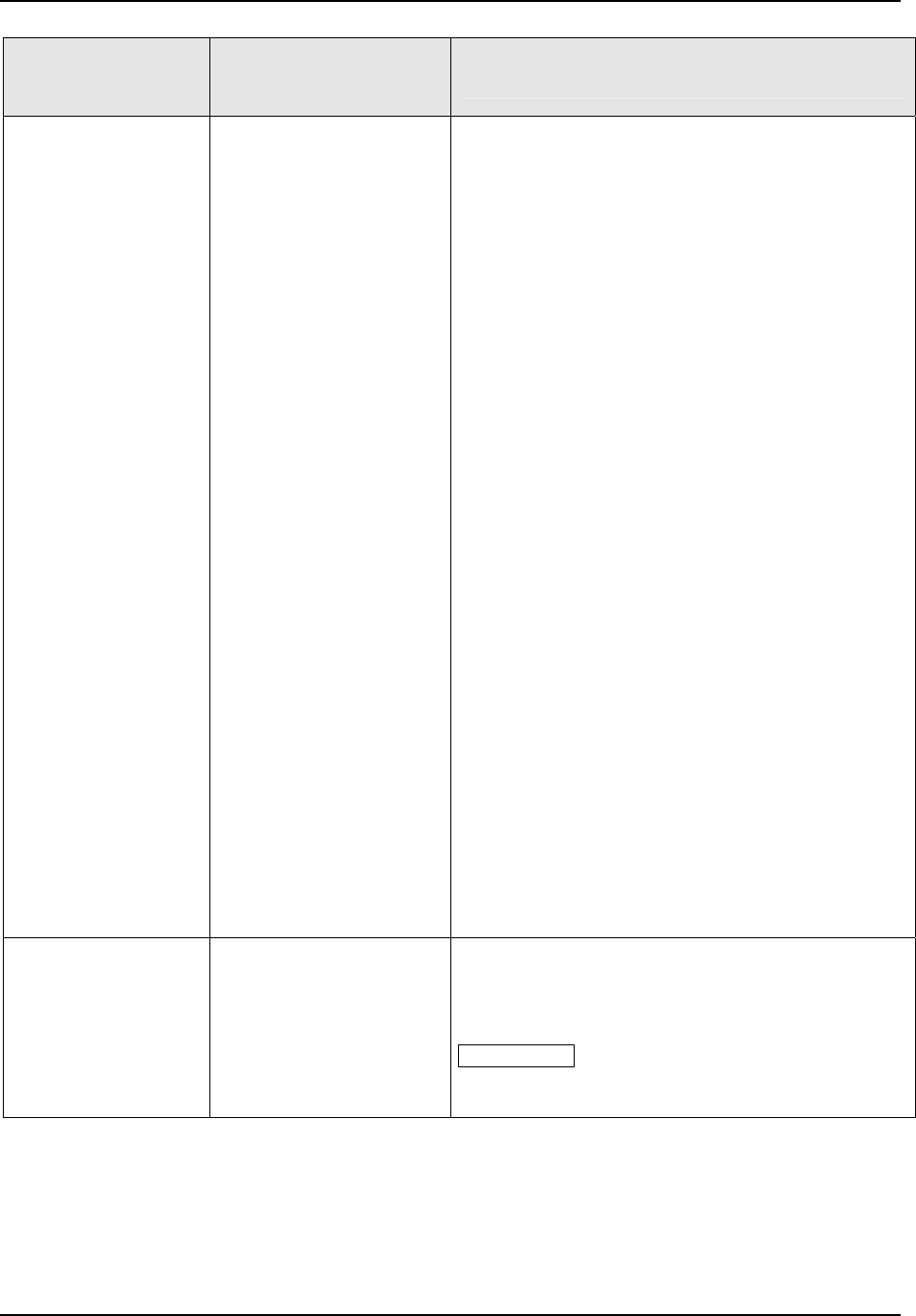
Configuration
March 2012 UDC3500 Universal Digital Controller Product Manual 109
Function Prompt
Lower Display
Selections or
Range of Setting
Upper Display
Parameter
Definition
50 PCT
CURRENT DUPLEX RANGE (SPLIT)—Split the
Control Output across two physical outputs. This
setting should be used for Relay/Current and
Current/Relay Duplex Outputs.
This setting should also be used when
Current/Current Duplex operation is desired. This
enables one current output to provide heat control
and another current output to provide cool control.
To enable Current/Current Duplex (split) operation:
• The Second Current Output or the Third Current in
the Options Set Up group must be selected for
Output.
• The Current Output selected (Second or Third) is
scaled as desired for 0-50 % controller output.
• Deadband for this configuration only applies to the
First Current Output. The other Current Output
must have the Deadband scaled in.
FOR EXAMPLE:
Current Duplex (split) using the First and Second
Current Outputs. If a 2 % Deadband is desired, then
enter 2.0 for the Deadband selection in the Control
Algorithm group. This will apply Deadband to the
First Current Output. In the Options group, set
Second Current Output actuation to OUTPUT, the
Second Current Output LOW VAL to 49.0 and the
HIGH VAL to 0.0.
100PCT
CURRENT DUPLEX RANGE (FULL) —Enables the
First Current Output to provide both heat and cool
functions for control over 0-100 % of the controller
output. The PID heat parameters apply when the
output is greater than 50 % and the PID cool
parameters apply when the output is less than 50 %.
A second current output is not required for this type
of duplex operation.
C1 RANGE
4-20mA
0-20mA
CURRENT OUTPUT RANGE 1 —Allows the user to
easily select 4-20 mA output or 0-20 mA output
operation without the need for recalibration of the
controller.
ATTENTION Changing the Current Output Range
will result in the loss of Field Calibration values and
will restore Factory Calibration values.
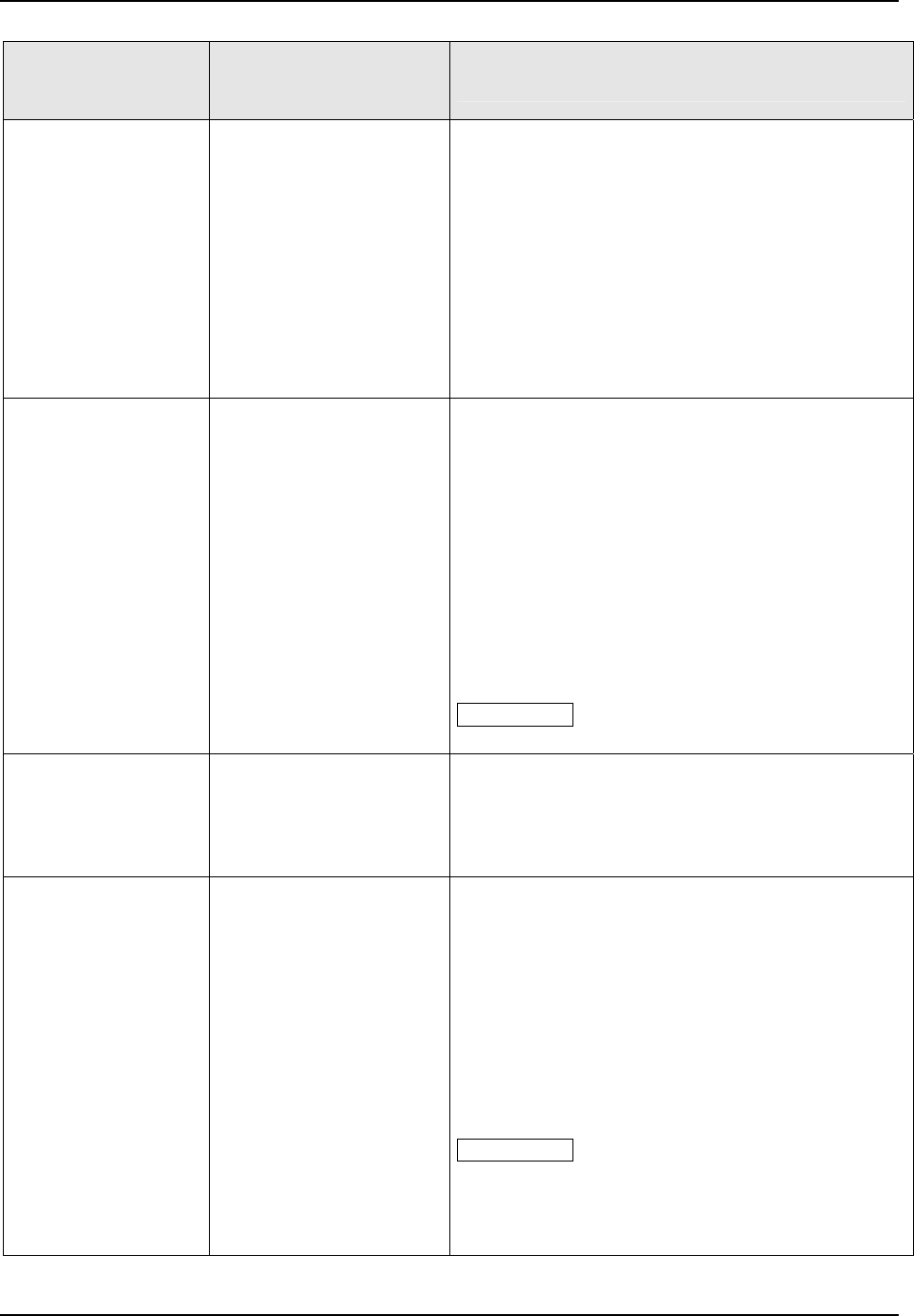
Configuration
110 UDC3500 Universal Digital Controller Product Manual March 2012
Function Prompt
Lower Display
Selections or
Range of Setting
Upper Display
Parameter
Definition
RLYSTATE
1OF 2OF
1ON 2OF
1OF 2ON
1ON 2ON
DIGITAL OUTPUT STATUS AT 0 % OUTPUT—
Allows the following selections:
1OF 2OF Output 1 de-energized
Output 2 de-energized
1ON 2OF Output 1 energized
Output 2 de-energized
1OF 2ON Output 1 de-energized
Output 2 energized
1ON 2ON Output 1 energized
Output 2 energized
RLY TYPE
RELAY CYCLE TIME INCREMENT—Used only for
Time Simplex and Duplex output configurations. This
configuration sets the increment size of the relay
cycle times in the Tuning and Tuning 2 Set Up
groups.
MECHAN
ELECTROMECHANICAL RELAY—Cycle time in
one-second increments.
SOL ST
SOLID STATE RELAY—Cycle time in 1/3-second
increments. This is useful for solid-state relay
applications that require shorter cycle times. DO
NOT use this setting unless cycle times of less than
1 second are required.
ATTENTION The Lockout selection must be set to
NONE in order to view this selection.
MOTOR TI
5 to 1800 seconds
MOTOR TIME—Appears only when “POSPROP” is
selected as the Output algorithm. This is the time it
takes the motor to travel from 0 to 100% (fully closed
to fully open). This time can usually be found on the
nameplate of the motor.
OUT2 ALG
NONE
TIME
CURRENT
TIME D
CUR D
CUR TI
TI CUR
OUTPUT ALGORITHM—Selects the type of output
desired for the second control loop.
See OUT ALG for definitions.
NONE
TIME SIMPLEX
CURRENT SIMPLEX
TIME DUPLEX
CURRENT DUPLEX
CURRENT/TIME DUPLEX
TIME/CURRENT DUPLEX
ATTENTION Some of these configurations may not
be available on Loop 2 if Loop 1 uses the available
outputs. See Table 2-6 and Table 2-7 for information
about output types and how they are used for each
Loop.
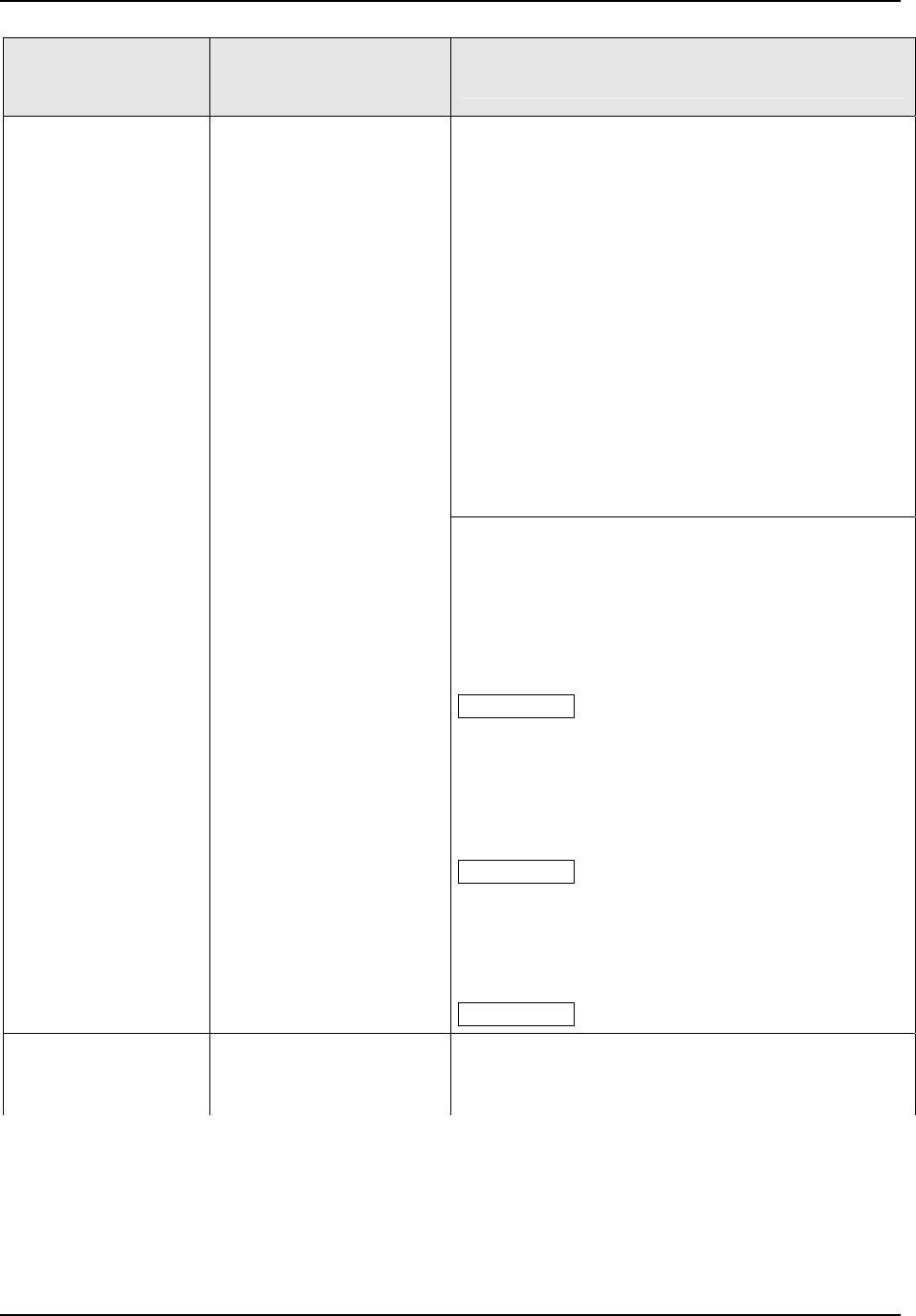
Configuration
March 2012 UDC3500 Universal Digital Controller Product Manual 111
Function Prompt
Lower Display
Selections or
Range of Setting
Upper Display
Parameter
Definition
TIME
TIME SIMPLEX—This output algorithm uses Relay 3
for Time Proportional Control. Time Proportional
Output has a resolution of 3.33 milliseconds with an
adjustable Cycle Time (see Section 3.5).
CURRENT
CURRENT SIMPLEX—Type of output using a
milliamp signal that can be fed into a positive or
negative grounded load. This signal can easily be
configured for 4-20 mA or 0-20 mA operation via the
C3 RANGE configuration, below.
TIME D
TIME DUPLEX—This output algorithm uses Relay 1
and Relay 2 for Duplex Time Proportional Control.
Relay 1 is the HEAT output and Relay 2 is the COOL
output. Time Proportional Output has a resolution of
3.33 milliseconds. Time Proportional Output has a
resolution of 3.33 milliseconds with an adjustable
Cycle Time (see Section 3.5).
CUR D
CURRENT DUPLEX—Similar to current simplex but
uses a second current output. The second output is
usually scaled so that zero and span correspond
with 0 % and 50 % output (cool zone). When the
output is 0 % to 50 %, the controller uses tuning
parameter set #2. When the output is 50 % to 100 %
it uses set #1.
ATTENTION Other prompts affected: OUT RNG
CUR TI
CURRENT/TIME DUPLEX—A variation of duplex
with current active for 0 % to 50 % output (tuning set
2) and time is active 50 % to 100 % output (tuning
set 1).
Relay controls heat, current controls cool.
ATTENTION Other prompts affected: OUT2 RNG
TI CUR
TIME/CURRENT DUPLEX—Similar to
CURRENT/TIME except that current is active for 50
% to 100 % and time is active for 0 % to 50 %.
Relay controls COOL, current controls HEAT.
ATTENTION Other prompts affected: OUT2 RNG
OUT2 RNG
CURRENT DUPLEX RANGE ALGORITHM—Used
with Output Algorithm selections CUR D, CUR TI, or
TI CUR.
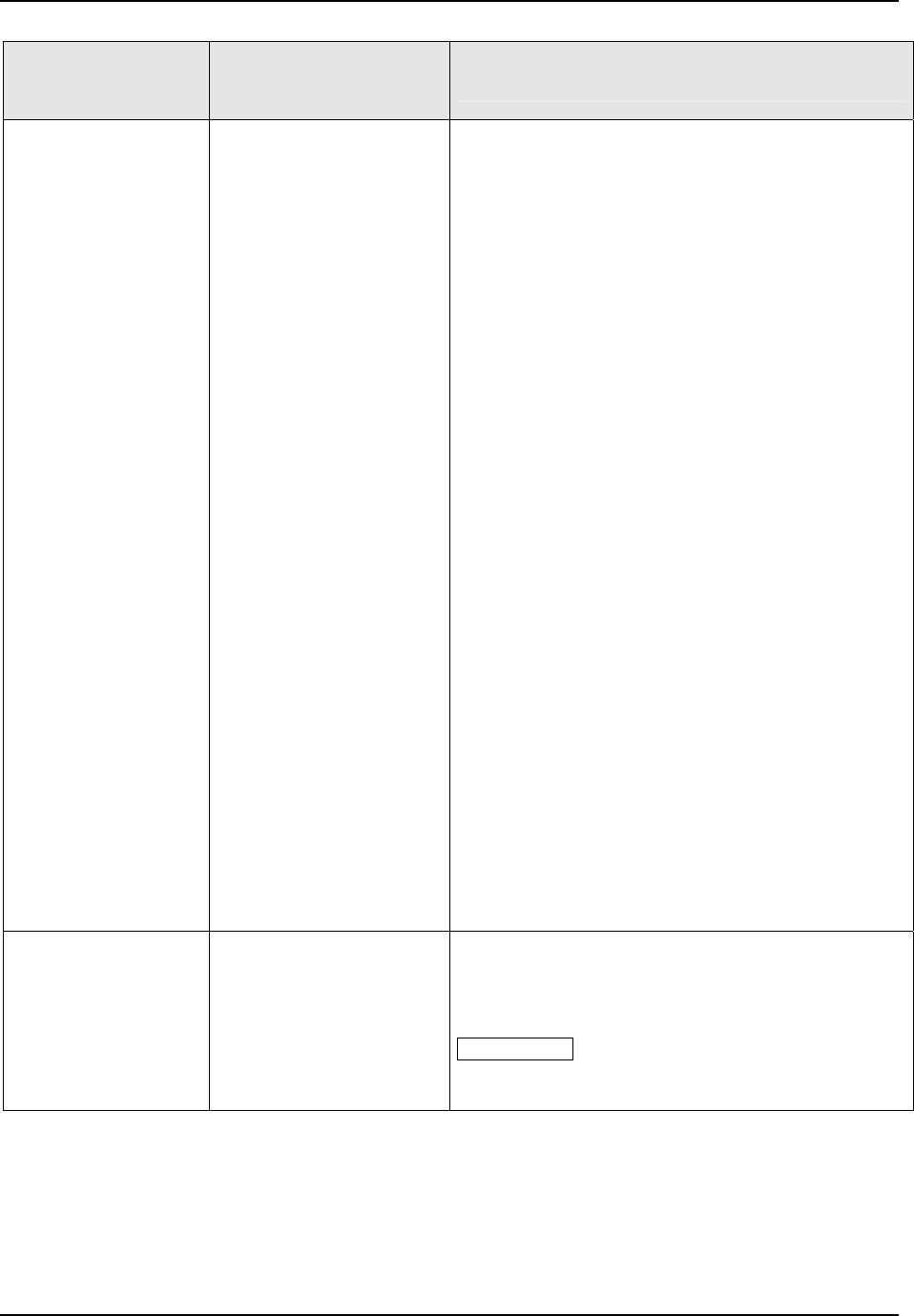
Configuration
112 UDC3500 Universal Digital Controller Product Manual March 2012
Function Prompt
Lower Display
Selections or
Range of Setting
Upper Display
Parameter
Definition
50 PCT
CURRENT DUPLEX RANGE (SPLIT) FOR LOOP 2
—Splits the Control Output across two physical
outputs. This setting should be used for
Relay/Current and Current/Relay Duplex Outputs.
This setting should also be used when
Current/Current Duplex operation is desired. This
enables one current output to provide heat control
and another current output to provide cool control.
To enable Current/Current Duplex (split) for Loop 2:
• Second Current Output and Third Current Output
in the Options Set Up group must both be
configured for Output 2 (See Section 3.22).
•
Scale Second Current Output for 50-100 %
controller output (HEAT).
•
Scale Third Current Output for 0-50 % controller
output (COOL).
• Deadband for both outputs for this configuration
must be scaled in.
FOR EXAMPLE:
If a 2 % Deadband is desired, then:
In the Options group, set the Current #2 LOW VAL
selection to 51.0 and the HIGH VAL selection to
100.0.
In the Options group, set the Current #3 LOW VAL
selection to 49.0 and the HIGH VAL selection to 0.0.
100PCT
CURRENT DUPLEX RANGE (FULL)—Enables one
of the Current Outputs to provide both heat and cool
functions for control over 0-100 % of the controller
output. The PID heat parameters apply when the
output is greater than 50 % and the PID cool
parameters apply when the output is less than 50 %.
A second current output is not required for this type
of duplex operation.
C3 RANGE
This prompt will appear
only when the
OUT2 ALG Parameter
is configured for
CURRENT, CUR D,
CUR TI, or TI CUR.
4-20mA
0-20mA
THIRD CURRENT OUTPUT RANGE—Allows the
user to easily select 4-20 mA output or 0-20 mA
output operation without the need for recalibration of
the controller.
ATTENTION Changing the Current Output Range
will result in the loss of Field Calibration values and
will restore Factory Calibration values.
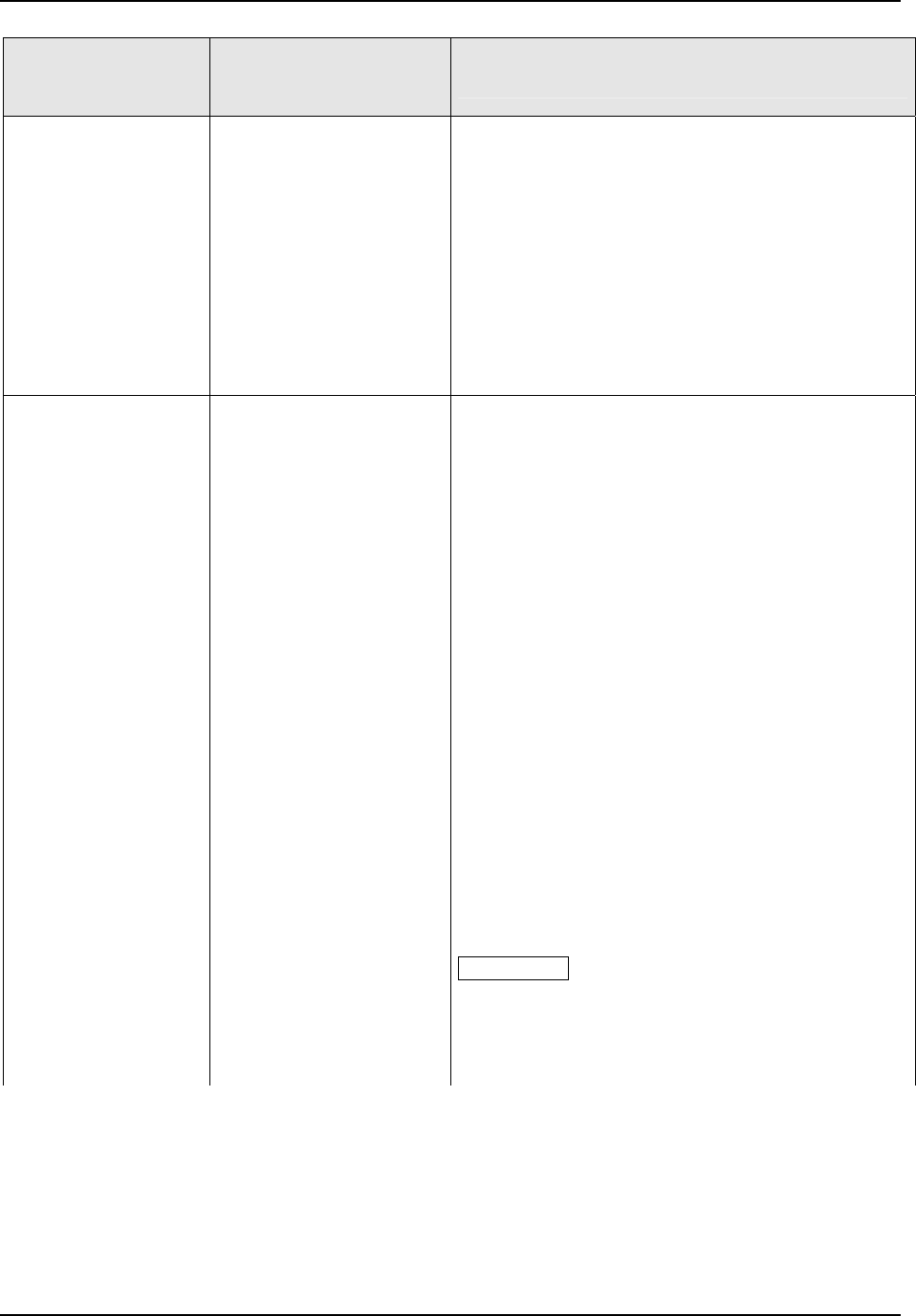
Configuration
March 2012 UDC3500 Universal Digital Controller Product Manual 113
Function Prompt
Lower Display
Selections or
Range of Setting
Upper Display
Parameter
Definition
RLYSTAT2
1OF2OF
1ON2OF
1OF2ON
1ON2ON
DIGITAL OUTPUT STATUS AT 0 % OUTPUT FOR
LOOP 2—Allows the following selections:
1OF2OF Output 1 de-energized
Output 2 de-energized
1ON2OF Output 1 energized
Output 2 de-energized
1OF2ON Output 1 de-energized
Output 2 energized
1ON2ON Output 1 energized
Output 2 energized
CUR OUT1
FIRST CURRENT OUTPUT—If the First Current
Output is not used to perform one of the above
output algorithms, it may be used to perform an
Auxiliary Output function. This prompt will not show
up when the First Current Output is used in one of
the above output algorithms.
DISABLE
NO FIRST CURRENT OUTPUT—Current Output
disabled and output set to 0 mA.
INPUT 1
INPUT 1—This represents the configured range of
Input 1.
FOR EXAMPLE:
Input 1 Type = J Thermocouple (0 °F to 1600 °F)
First Current Output Low Scale Value = 0.0
First Current Output High Scale Value = 1600
C1 Range = 4-20 mA
Then:
0 °F display = 0 % output (4 mA)
800 °F display = 50 % output (12 mA)
1600 °F display = 100 % output (20 mA)
INPUT 2
INPUT 2—Same as Input 1.
INPUT 3
INPUT 3—Same as Input 1.
ATTENTION Do not configure Input 3 when input 3
is used for slidewire or slidewire emulation.
INPUT 4
INPUT 4—Same as Input 1.
INPUT 5
INPUT 5—Same as Input 1.
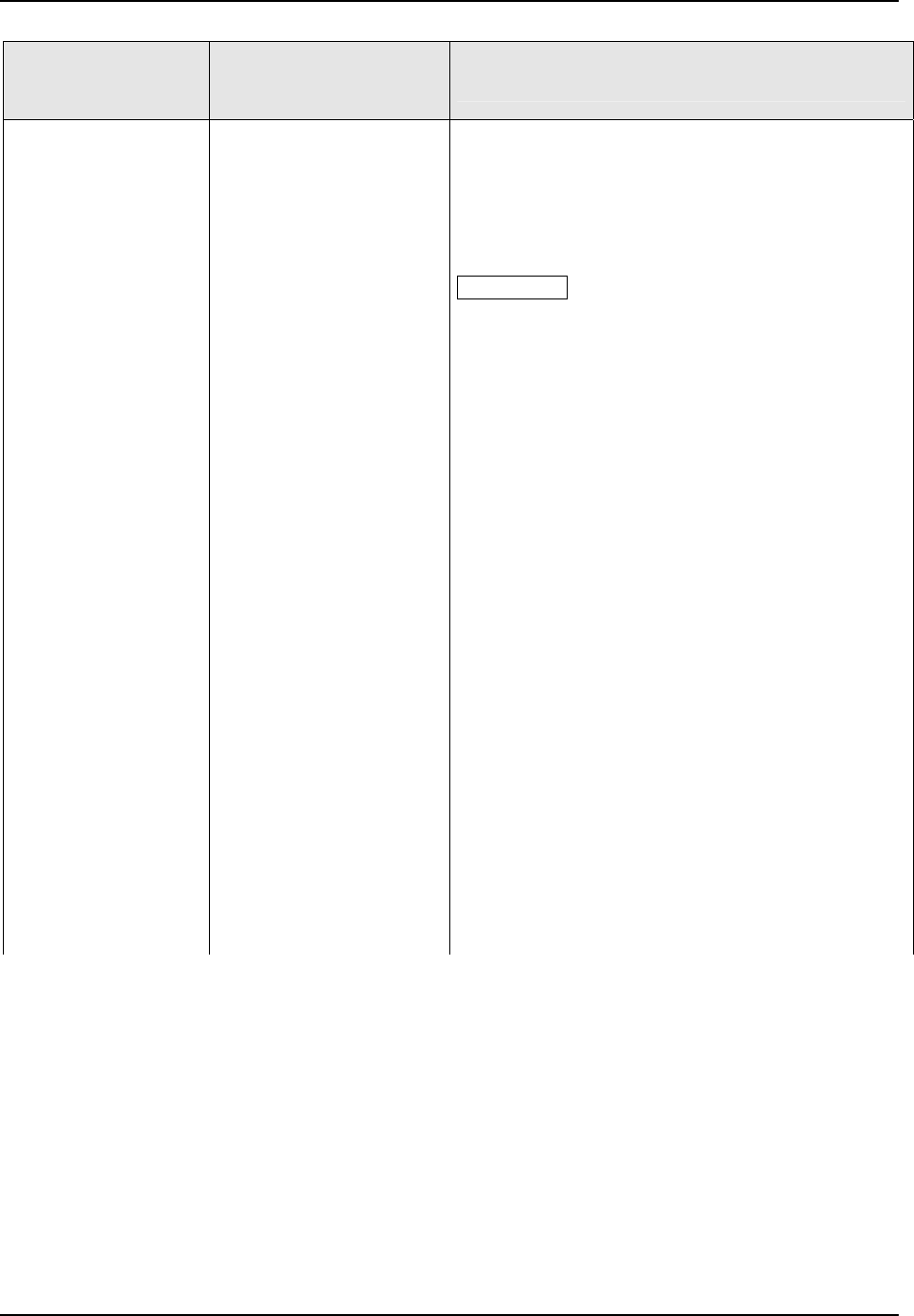
Configuration
114 UDC3500 Universal Digital Controller Product Manual March 2012
Function Prompt
Lower Display
Selections or
Range of Setting
Upper Display
Parameter
Definition
CB OUT
CONTROL BLOCK OUTPUT—Output as calculated
by the control block (such as PID A). When using
one of the characterizers, OUTPUT is the output
value after it passes through the characterizer. CB
OUT is the control block output before it passes
through the characterizer.
ATTENTION CB OUT cannot be configured when
Three Position Step Control is used.
PV
PROCESS VARIABLE—Represents the value of
the Process Variable.
DEV
DEVIATION (PROCESS VARIABLE MINUS
SETPOINT)—Represents –100 % to +100 % of the
selected PV span in engineering units.
Zero deviation will produce a center scale (12 mA or
50 %) output. A negative deviation equal in
magnitude to the Output High Scaling Factor will
produce a low-end output (4 mA or 0 %) output. A
positive deviation equal in magnitude to the Output
High Scaling Factor will produce a high-end output
(20 mA or 100 %).
FOR EXAMPLE: Configuration is as follows:
Input 1 = Type T High Thermocouple
PV range = –300 °F to +700 °F
PV span = 1000 °F
Deviation Range = –1000 to +1000 °F = 2000 °F
Second Current Output Low Scale Value = 0.0
Second Current Output High Scale Value = 1000
C2 Range = 4-20 mA
If PV = 500 °F and SP = 650 °F
then Deviation Display = –150 °F, which is
–150 / 2000 = –7.5% of the Deviation Range, so
Second Current Output = 50% – 7.5% = 42.5%
which is 0.425 X 16 mA + 4 mA = 10.8 mA
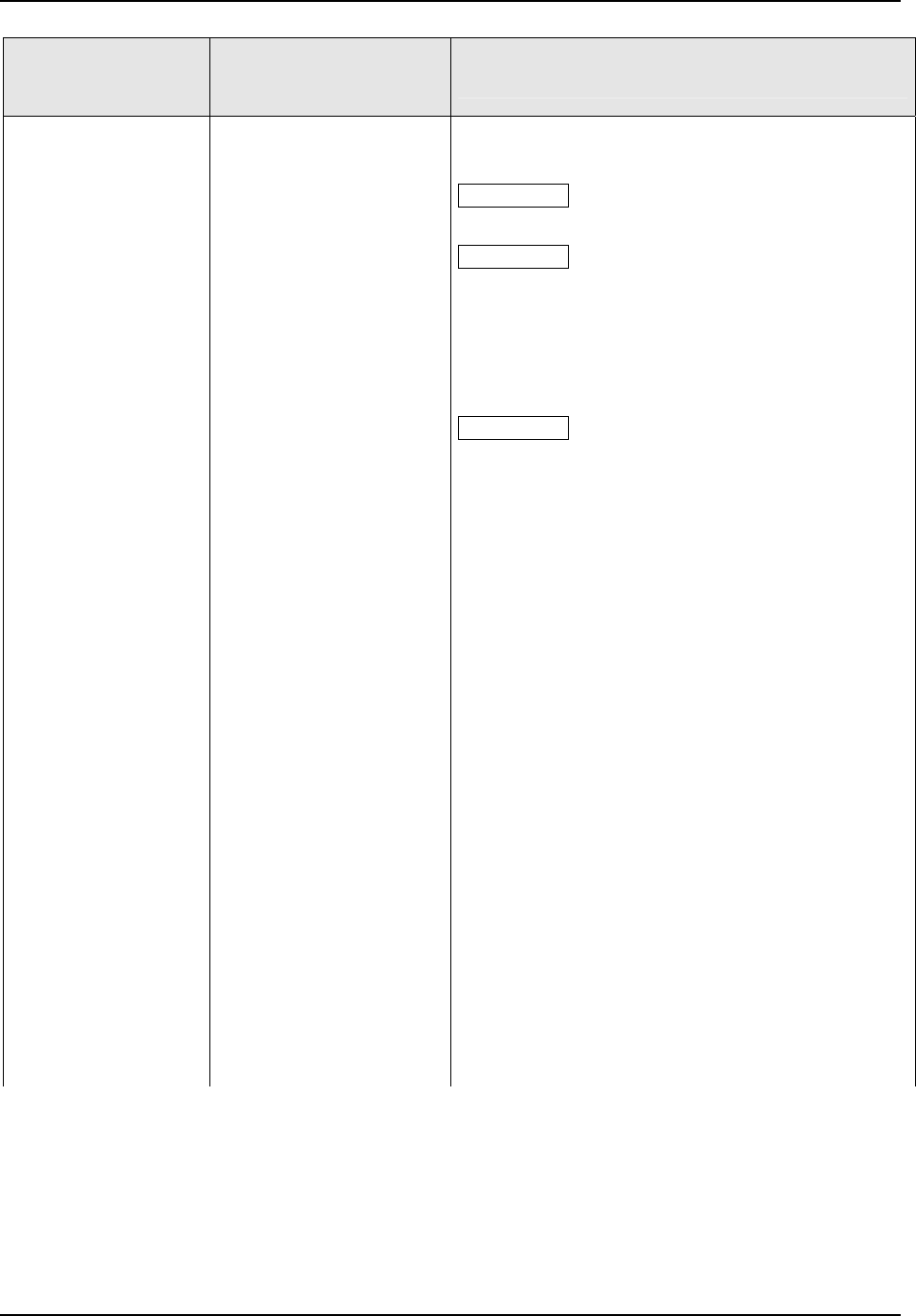
Configuration
March 2012 UDC3500 Universal Digital Controller Product Manual 115
Function Prompt
Lower Display
Selections or
Range of Setting
Upper Display
Parameter
Definition
OUTPUT
OUTPUT—Represents the displayed controller
output in percent (%).
ATTENTION Also see CB OUT when using a
characterizer on the output value.
ATTENTION When Position Proportional Control is
configured as the Output Algorithm; OUTPUT
represents the actual Slidewire Position whether in
Automatic or Manual Mode. Should the Slidewire
input fail for any reason, the Auxiliary Output will go
to the value configured for FAILSAFE OUTPUT
VALUE in the Control Setup Group.
ATTENTION When Three Position Step Control
(TPSC) is configured as the Control Algorithm;
OUTPUT represents only the estimated motor
position, not the actual motor position.
SP
SETPOINT—Represents the value of the setpoint
currently in use (LSP1, LSP2, LSP3, RSP or CSP)
and is shown in the same units as those used by the
PV.
LSP 1
LOCAL SETPOINT ONE—Output represents Local
Setpoint 1 regardless of active setpoint.
RSP
REMOTE SETPOINT—Represents the configured
RSP regardless of the active SetPoint.
IN ALG1
INPUT ALGORITHM 1 OUTPUT—Represents the
output from input algorithm 1.
IN ALG2
INPUT ALGORITHM 2 OUTPUT—Represents the
output from input algorithm 2.
PV 2
PROCESS VARIABLE FOR LOOP 2—Represents
the value of the Process Variable for Loop 2.
CBOUTL2
CONTROL BLOCK OUTPUT FOR LOOP 2—
Output for Loop 2 as calculated by the control block
(such as PID A). When using one of the
characterizers, OUTPUT 2 is the output value for
Loop 2 after it passes through the characterizer. CB
OUTL2 is the control block output before it passes
through the characterizer.
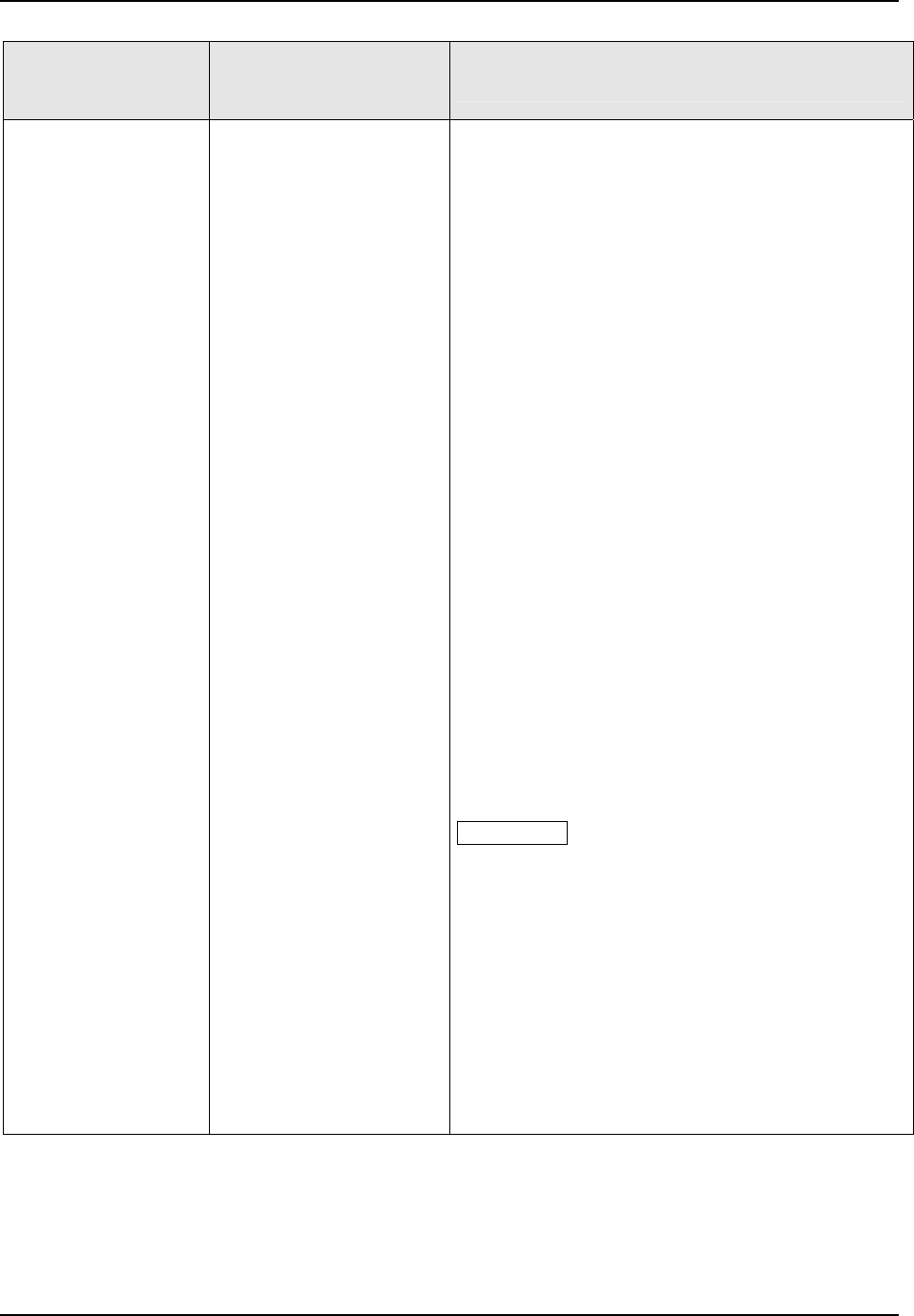
Configuration
116 UDC3500 Universal Digital Controller Product Manual March 2012
Function Prompt
Lower Display
Selections or
Range of Setting
Upper Display
Parameter
Definition
DEV 2
DEVIATION (PROCESS VARIABLE MINUS
SETPOINT FOR LOOP 2)—Represents –100 % to
+100 % of the selected PV span in engineering
units.
Zero deviation will produce a center scale (12 mA or
50 %) output. A negative deviation equal in
magnitude to the Output High Scaling Factor will
produce a low-end output (4mA or 0 %) output. A
positive deviation equal in magnitude to the Output
High Scaling Factor will produce a high-end output
(20 mA or 100 %).
FOR EXAMPLE: Configuration is as follows:
Input 1 = Type T High Thermocouple
PV range = –300 °F to +700 °F
PV span = 1000 °F
Deviation Range = –1000 to +1000 °F = 2000 °F
Second Current Output Low Scale Value = 0.0
Second Current Output High Scale Value = 1000
C2 Range = 4-20 mA
If PV = 500 °F and SP = 650 °F
then Deviation Display = –150 °F, which is
–150 / 2000 = –7.5% of the Deviation Range, so
Second Current Output = 50% – 7.5% = 42.5%
which is 0.425 X 16 mA + 4 mA = 10.8 Ma
OUTPUT 2
OUTPUT FOR LOOP 2—Represents the displayed
controller Loop 2 output in percent (%).
ATTENTION Also see CBOUTL2 when using a
characterizer on the Loop 2 output value.
SP LP2
SETPOINT FOR LOOP 2—Represents the value of
the setpoint currently in use by Loop 2 (LSP1, LSP2,
LSP3, RSP or CSP) and is shown in the same units
as those used by the PV for Loop 2.
LSP1LP2
LOCAL SETPOINT ONE FOR LOOP 2—Output
represents Loop 2 Local Setpoint 1 regardless of
active setpoint.
RSP LP2
REMOTE SETPOINT FOR LOOP 2—Represents
the configured Loop 2 RSP regardless of the active
SetPoint for Loop 2.
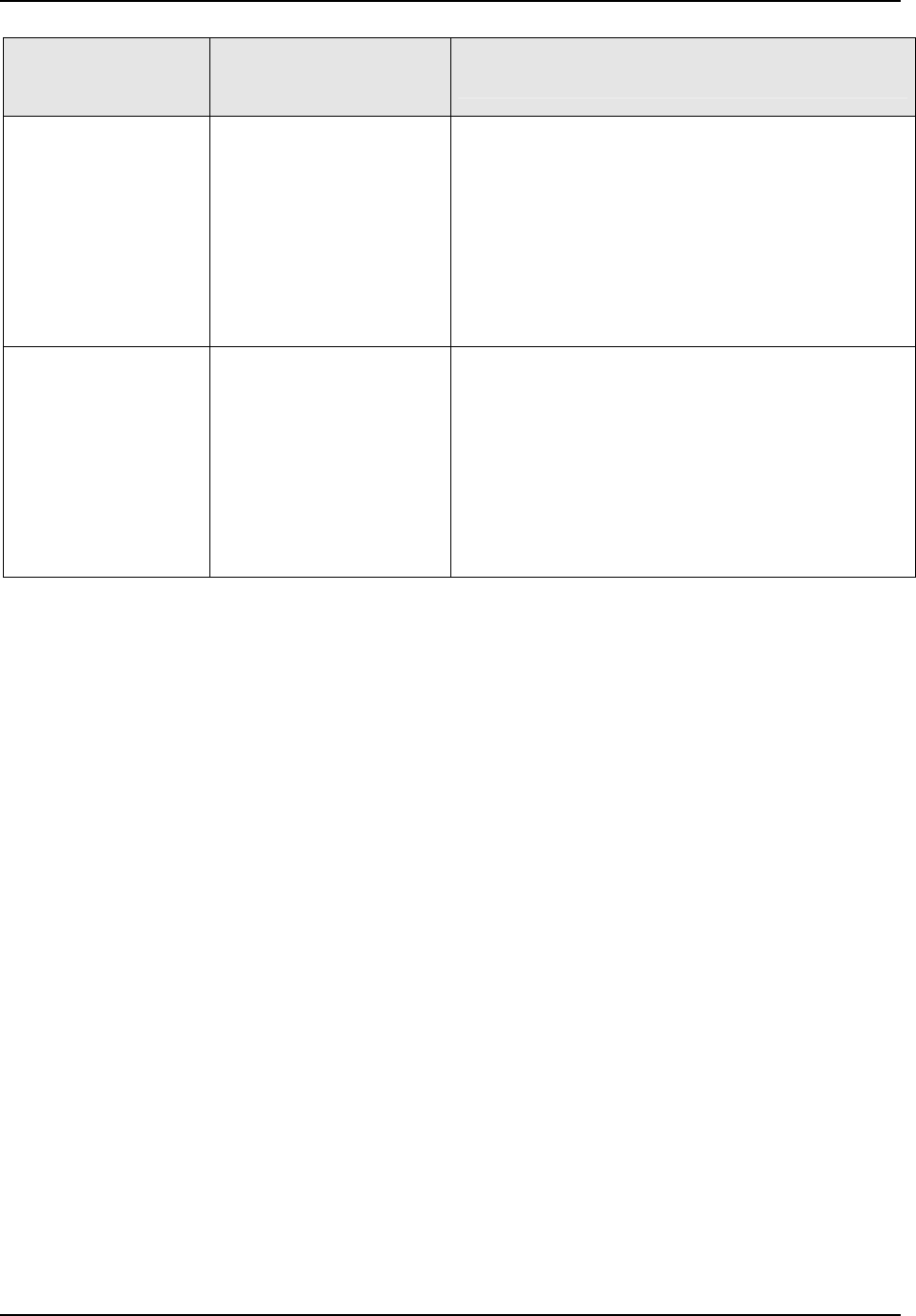
Configuration
March 2012 UDC3500 Universal Digital Controller Product Manual 117
Function Prompt
Lower Display
Selections or
Range of Setting
Upper Display
Parameter
Definition
LOW VAL
Low Scale Value within
the range of the selected
variable to represent the
minimum output (0 or 4
mA)
CURRENT OUTPUT LOW SCALING FACTOR—
Used only when CUR OUT is any selection other
than DISABLE. This is a value in engineering units
used to represent all CUR OUT parameters except
Output.
For Output, this is a value in percent and can be any
value between –5 % and +105 %. However, keep in
mind that relay output types can only be scaled 0 %
to 100 %.
HIGH VAL
High Scale Value within
the range of the selected
variable to represent the
maximum output (20 mA)
CURRENT OUTPUT HIGH SCALING FACTOR—
Used only when CUR OUT is any selection other
than DISABLE. This is a value in engineering units
used to represent all CUR OUT parameters except
Output.
For Output, this is a value in percent and can be any
value between –5 % and +105 %. However, keep in
mind that relay output types can only be scaled 0 %
to 100 %.
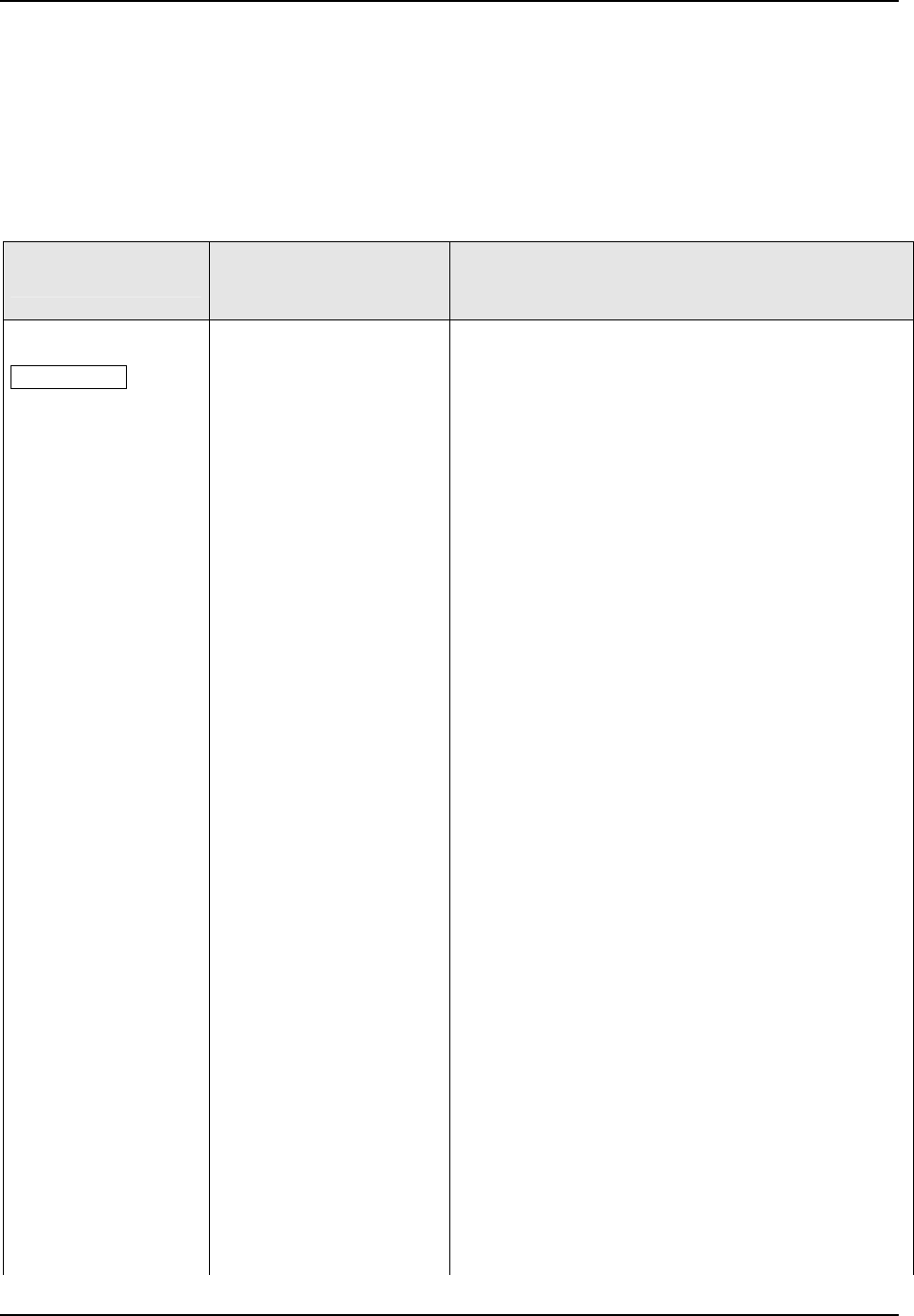
Configuration
3.15 Input 1 Set Up Group
Introduction
This data deals with various parameters required to configure Input 1.
Function Prompts
Table 3-15 INPUT 1 Group Function Prompts
Function Prompt
Lower Display
Selections or
Range of Setting
Upper Display
Parameter
Definition
IN1 TYPE
ATTENTION
Changing the input
type will result in the
loss of Field
Calibration values and
will restore Factory
Calibration values.
DISABLE
B TC
E TC H
E TC L
J TC H
J TC M
J TC L
K TC H
K TC M
K TC L
NNM H
NNM L
NIC H
NIC L
PLAT H
PLAT L
R TC
S TC
T TC H
T TC L
W TC H
W TC L
100 PT
100 LO
200 PT
500 PT
1000 PT
RAD RH
RAD RI
0-20mA
4-20mA
0-10mV
0-50mV
0-100mV
0-500mV
-10-10m
0-1 V
0-5 V
1-5 V
0-10 V
-1-1 V
INPUT 1 ACTUATION TYPE—This selection
determines what actuation you are going to use for
Input 1.
DISABLE—Disables Input.
B TC—B Thermocouple
E TC H—E Thermocouple High
E TC L—E Thermocouple Low
J TC H—J Thermocouple High
J TC M—J Thermocouple Med
J TC L—J Thermocouple Low
K TC H—K Thermocouple High
K TC M—K Thermocouple Med
K TC L—K Thermocouple Low
NNM H—Ni-Ni-Moly Thermocouple High
NNM L—Ni-Ni-Moly Thermocouple Low
NIC H—Nicrosil-Nisil Thermocouple High
NIC L—Nicrosil-Nisil Thermocouple Low
PLATINEL H—Platinel II Thermocouple High
PLATINEL L—Platinel II Thermocouple Low
R TC—R Thermocouple
S TC—S Thermocouple
T TC H—T Thermocouple High
T TC L—T Thermocouple Low
W TC H—W5W26 Thermocouple High
W TC L—W5W26 Thermocouple Low
100 PT—100 Ohm RTD High
100 LO—100 Ohm RTD Low
200 PT—200 Ohm RTD
500 PT—500 Ohm RTD
1000 PT—1000 Ohm RTD
RAD RH—Radiamatic RH
RAD RI—Radiamatic RI
0-20mA—0 to 20 Milliamperes
4-20mA—4 to 20 Milliamperes
0-10mV—0 to 10 Millivolts
0-50mV—0 to 50 Millivolts
0-100mV—0 to 100 Millivolts
0-500mV—0 to 500 Millivolts
-10-10mV— -10 to +10 Millivolts
0-1 V—0 to 1 Volts
0-5 V—0 to 5 Volts
1-5 V—1 to 5 Volts
0-10 V—0 to 10 Volts
-1-1 V— -1 to +1 Volts
118 UDC3500 Universal Digital Controller Product Manual March 2012
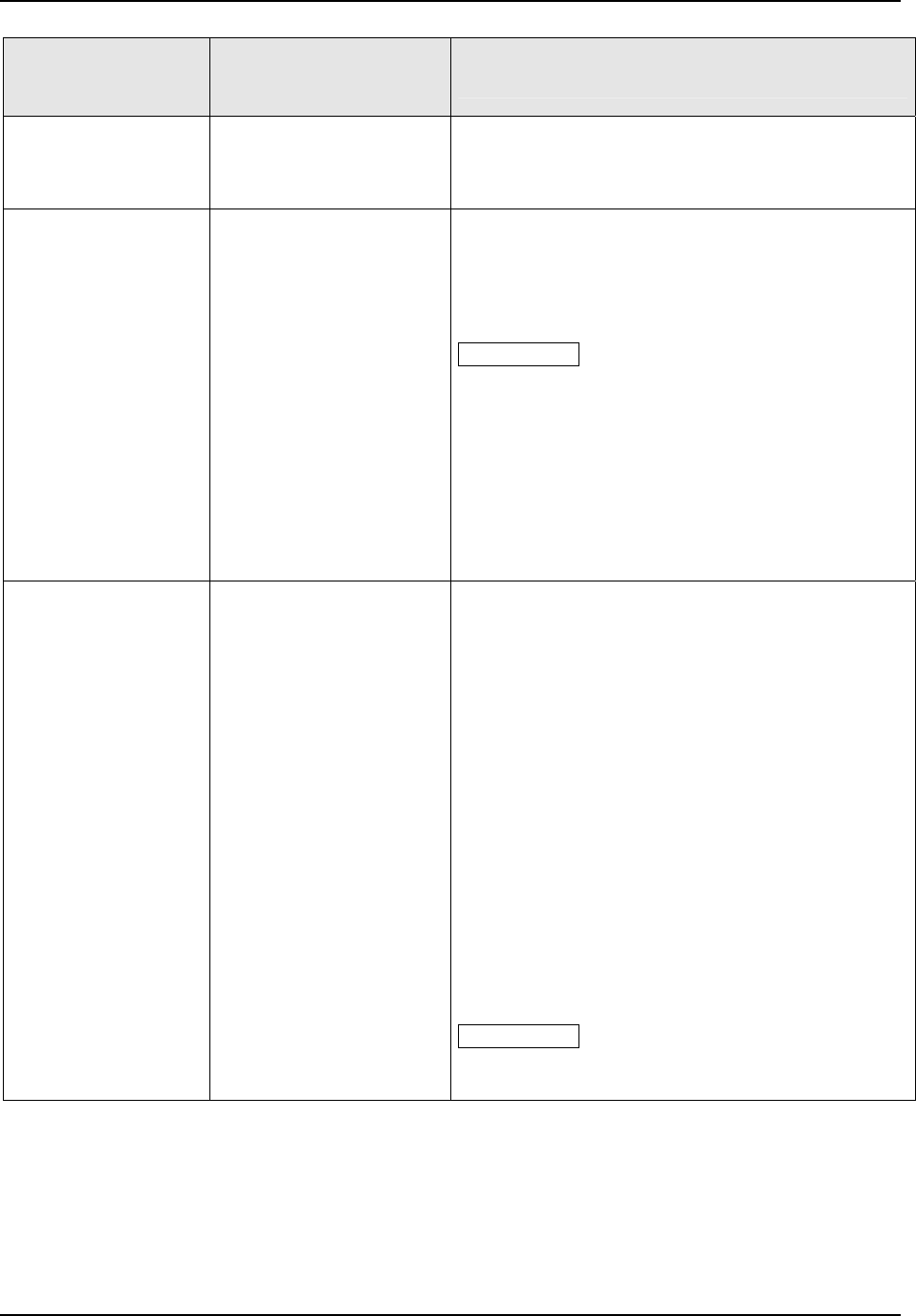
Configuration
March 2012 UDC3500 Universal Digital Controller Product Manual 119
Function Prompt
Lower Display
Selections or
Range of Setting
Upper Display
Parameter
Definition
TC DIFF
CARBON
OXYGEN
PR
TC DIFF—Thermocouple Differential
Carbon—Carbon Probe Input
Oxygen—Oxygen Probe Input
PR—PR40-PR20 Thermocouple
XMITTER1
B TC
E TC H
E TC L
J TC H
J TC M
J TC L
K TC H
K TC M
K TC L
NNM H
NNM L
NIC H
NIC L
PLAT H
PLAT L
R TC
S TC
T TC H
T TC L
W TC H
W TC L
100 PT
100 LO
200 PT
500 PT
RAD RH
RAD RI
LINEAR
SQROOT
TRANSMITTER CHARACTERIZATION—This
selection lets you instruct the controller to
characterize a linear input to represent a non-linear
one. If characterization is performed by the
transmitter itself, then select LINEAR.
ATTENTION Prompt only appears when a linear
actuation is selected at prompt IN1 TYPE.
FOR EXAMPLE:
If Input 1 is a 4 to 20 mA signal, but the signal
represents a type K H thermocouple, then configure
K TC H and the controller will characterize the 4 to
20 mA signal so that it is treated as a type K
thermocouple input (high range).
Parameter definitions are the same as in IN1 TYPE.
IN1 HIGH
–999. To 9999. Floating
(in engineering units)
INPUT 1 HIGH RANGE VALUE—This value in
engineering units is displayed for all inputs but can
only be changed for inputs configured for linear or
square root transmitter characterization.
For Inputs with Linear or Square Root transmitter
characterization, you can scale the Input signal to
display the values you want for 0 % and 100 %.
EXAMPLE:
Process Variable = Flow
Range of Flow = 0 to 250 Liters/Minute
Actuation (Input 1) = 4 to 20 mA
Characterization (XMITTER 1) = LINEAR
Set IN1 HIGH value to 250
Set IN1 LOW value to 0
Then:
4 mA = 0 Liters/Minute
12 mA = 125 Liters/Minute
20 mA = 250 Liters/Minute
ATTENTION If Input 1 is selected as the PV
Source, then the range of the control Setpoint will be
limited by the range of units selected here.
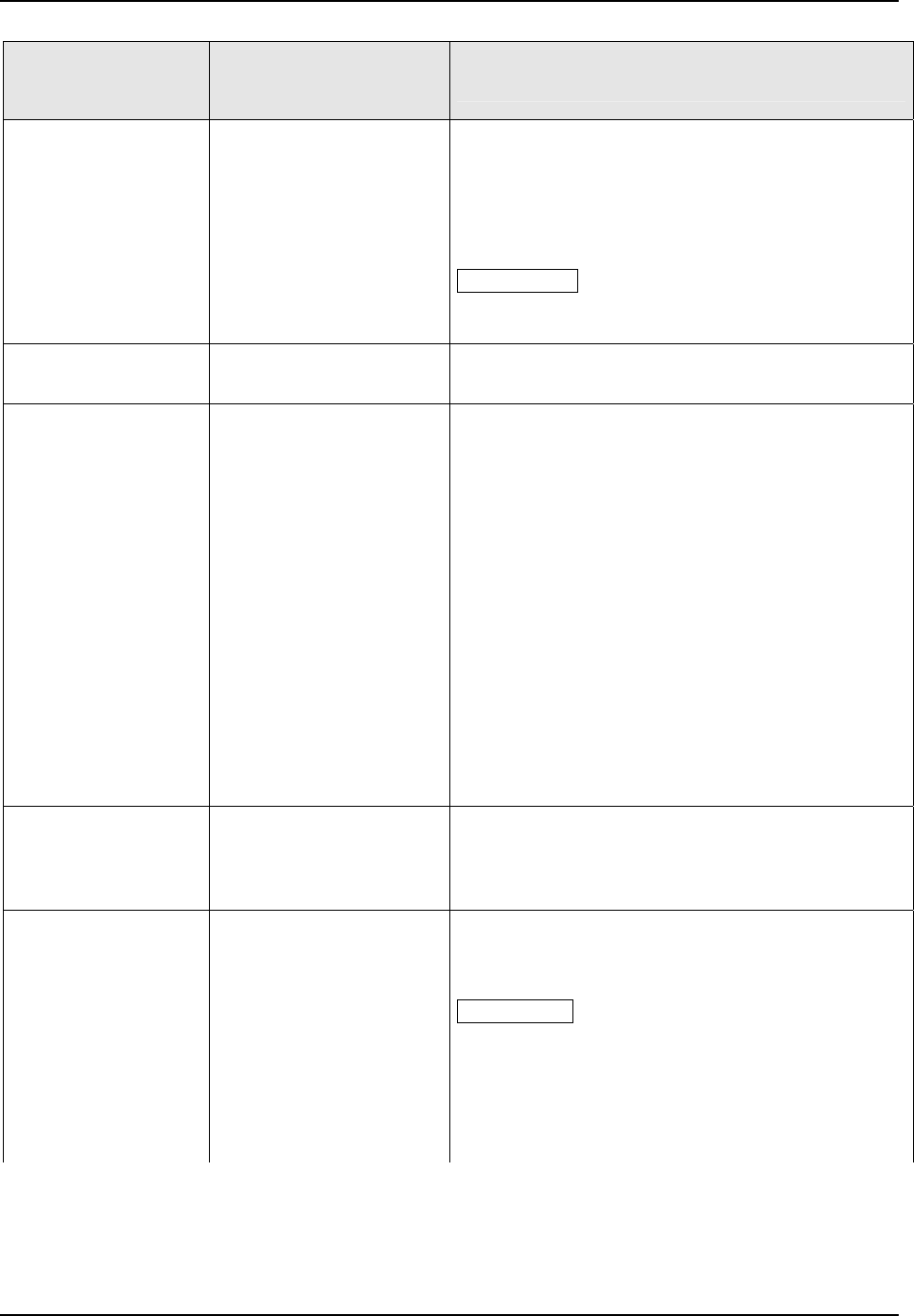
Configuration
120 UDC3500 Universal Digital Controller Product Manual March 2012
Function Prompt
Lower Display
Selections or
Range of Setting
Upper Display
Parameter
Definition
IN1 LOW
–999. To 9999. Floating
(in engineering units)
INPUT 1 LOW RANGE VALUE—This value in
engineering units is displayed for all inputs but can
only be changed for inputs configured for linear or
square root transmitter characterization.
See the example in IN1 HI.
ATTENTION If Input 1 is selected as the PV
Source, then the range of the control Setpoint will be
limited by the range of units selected here.
RATIO 1
–20.00 to 20.00
Floats to 3 decimal places
RATIO ON INPUT 1—Select the Ratio value you
want on Input 1.
BIAS IN1
–999. to 9999.
(in engineering units)
BIAS ON INPUT 1—Bias is used to compensate the
input for drift of an input value due to deterioration of
a sensor, or some other cause. Select the bias value
you want on Input 1.
Final Input 1 Value = Input 1 * Ratio 1 + Bias 1
FOR EXAMPLE:
Input 1 Type = 100 ohm RTD (-300 °F to 1200 °F)
Input 1 Ratio = 0.5
Input 1 Bias = 15.7
If Input 1 = -200 °F
Then Final Input 1 = -200 * 0.5 + 15.7 = -84.3
If Input 1 = 0 °F
Then Final Input 1 = 0 * 0.5 + 15.7 = 15.7
If Input 1 = 500 °F
Then Final Input 1 = 500 * 0.5 + 15.7 = 265.7
FILTER 1
0 to 120 seconds
No filter = 0
FILTER FOR INPUT 1—A software digital filter is
provided for Input 1 to smooth the input signal. You
can configure the first order lag time constant from 1
to 120 seconds. If you do not want filtering, enter 0.
BURNOUT1
BURNOUT PROTECTION (SENSOR BREAK)—
Provides most input types with upscale or downscale
protection if the input fails.
ATTENTION For Burnout to function properly on 0-
20 mA, 0-10 Volt or –1 to +1 Volt input types (or a 0-
5V type that uses a dropping resistor), the dropping
resistor must be remotely located (across the
transmitter terminals). Otherwise, the input at the
instrument terminals will always be 0 (i.e., within the
normal operating range) when the sensor opens.
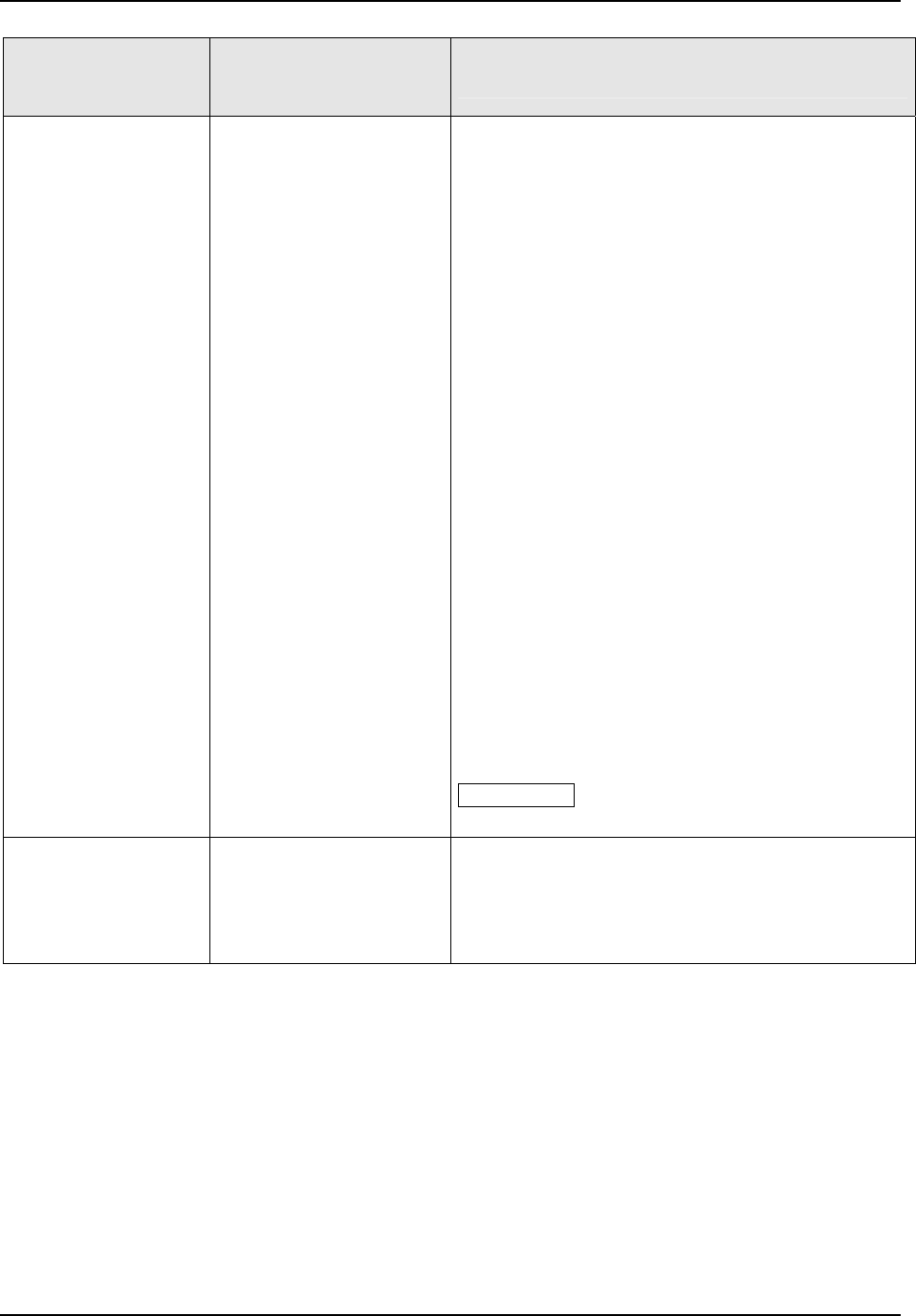
Configuration
March 2012 UDC3500 Universal Digital Controller Product Manual 121
Function Prompt
Lower Display
Selections or
Range of Setting
Upper Display
Parameter
Definition
NONE
NO BURNOUT—Input 1 display freezes at the last
valid value. If Input 1 is used for PV, then the
instrument assumes its pre-configured Failsafe
Output (selected in the CONTROL Set up Group)
when a failed input condition is detected (does not
apply for an input out of range). Diagnostic message
IN1 FAIL is intermittently flashed on the lower
display.
UP
UPSCALE BURNOUT—Forces the Input 1 signal to
the full-scale value when the sensor fails. Diagnostic
message IN1 FAIL intermittently flashed on the lower
display.
The controller remains in Automatic control mode
and adjusts the controller output signal accordingly.
DOWN
DOWNSCALE BURNOUT—Forces the Input 1
signal to the lower range value when the sensor
fails. Diagnostic message IN1 FAIL intermittently
flashed on the lower display.
The controller remains in Automatic control mode
and adjusts the controller output signal accordingly.
NO FS
NO FAILSAFE—This selection does not provide
input failure detection and should only be used when
a thermocouple input is connected to another
instrument, which supplies the Burnout current. (For
this selection, no burnout signal is sent to the
sensor.)
ATTENTION The Thermocouple Health feature is
disabled when NO FS is configured.
EMISSIV1
0.01 to 1.00
EMISSIVITY—A correction factor applied to the
Radiamatic input signal that is the ratio of the actual
energy emitted from the target to the energy that
would be emitted if the target were a perfect radiator.
Available only for Radiamatic inputs.
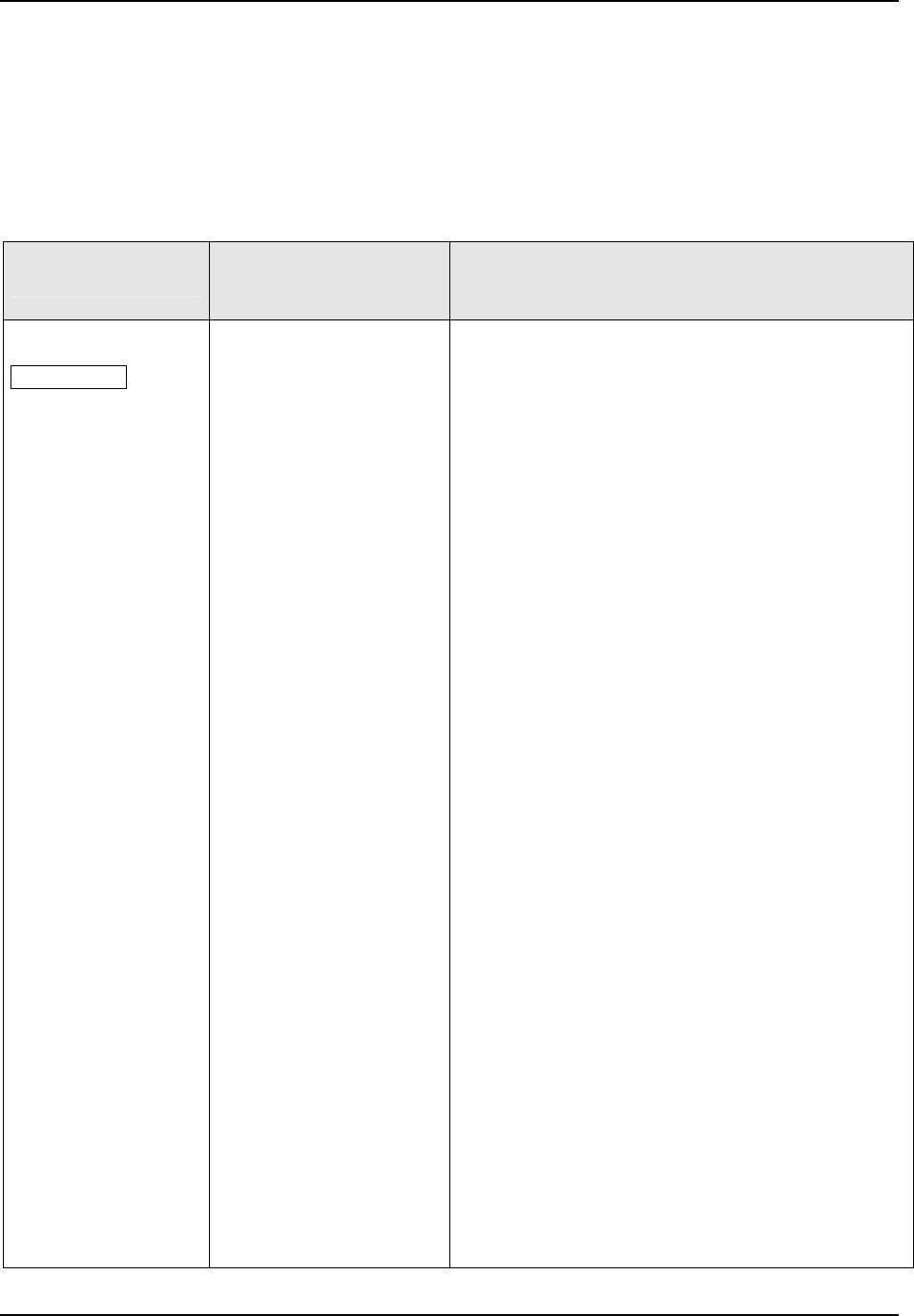
Configuration
3.16 Input 2 Set Up Group
Introduction
This data deals with various parameters required to configure Input 2.
Function Prompts
Table 3-16 INPUT 2 Group Function Prompts
Function Prompt
Lower Display
Selections or
Range of Setting
Upper Display
Parameter
Definition
IN2 TYPE
ATTENTION
Changing the input
type will result in the
loss of Field
Calibration values and
will restore Factory
Calibration values.
DISABLE
B TC
E TC H
E TC L
J TC H
J TC M
J TC L
K TC H
K TC M
K TC L
NNM H
NNM L
NIC H
NIC L
PLAT H
PLAT L
R TC
S TC
T TC H
T TC L
W TC H
W TC L
100 PT
100 LO
200 PT
500 PT
1000 PT
RAD RH
RAD RI
0-20mA
4-20mA
0-10mV
0-50mV
0-100mV
0-500mV
-10-10m
0-1 V
0-5 V
1-5 V
0-10 V
-1-1 V
INPUT 2 ACTUATION TYPE— This selection
determines what actuation you are going to use for
Input 2.
DISABLE—Disables Input.
B TC—B Thermocouple
E TC H—E Thermocouple High
E TC L—E Thermocouple Low
J TC H—J Thermocouple High
J TC M—J Thermocouple Med
J TC L—J Thermocouple Low
K TC H—K Thermocouple High
K TC M—K Thermocouple Med
K TC L—K Thermocouple Low
NNM H—Ni-Ni-Moly Thermocouple High
NNM L—Ni-Ni-Moly Thermocouple Low
NIC H—Nicrosil-Nisil Thermocouple High
NIC L—Nicrosil-Nisil Thermocouple Low
PLATINEL H—Platinel II Thermocouple High
PLATINEL L—Platinel II Thermocouple Low
R TC—R Thermocouple
S TC—S Thermocouple
T TC H—T Thermocouple High
T TC L—T Thermocouple Low
W TC H—W5W26 Thermocouple High
W TC L—W5W26 Thermocouple Low
100 PT—100 Ohm RTD High
100 LO—100 Ohm RTD Low
200 PT—200 Ohm RTD
500 PT—500 Ohm RTD
1000 PT—1000 Ohm RTD
RAD RH—Radiamatic RH
RAD RI—Radiamatic RI
0-20mA—0 to 20 Milliamperes
4-20mA—4 to 20 Milliamperes
0-10mV—0 to 10 Millivolts
0-50mV—0 to 50 Millivolts
0-100mV—0 to 100 Millivolts
0-500mV—0 to 500 Millivolts
-10-10mV— -10 to +10 Millivolts
0-1 V—0 to 1 Volts
0-5 V—0 to 5 Volts
1-5 V—1 to 5 Volts
0-10 V—0 to 10 Volts
-1-1 V— -1 to +1 Volts
122 UDC3500 Universal Digital Controller Product Manual March 2012
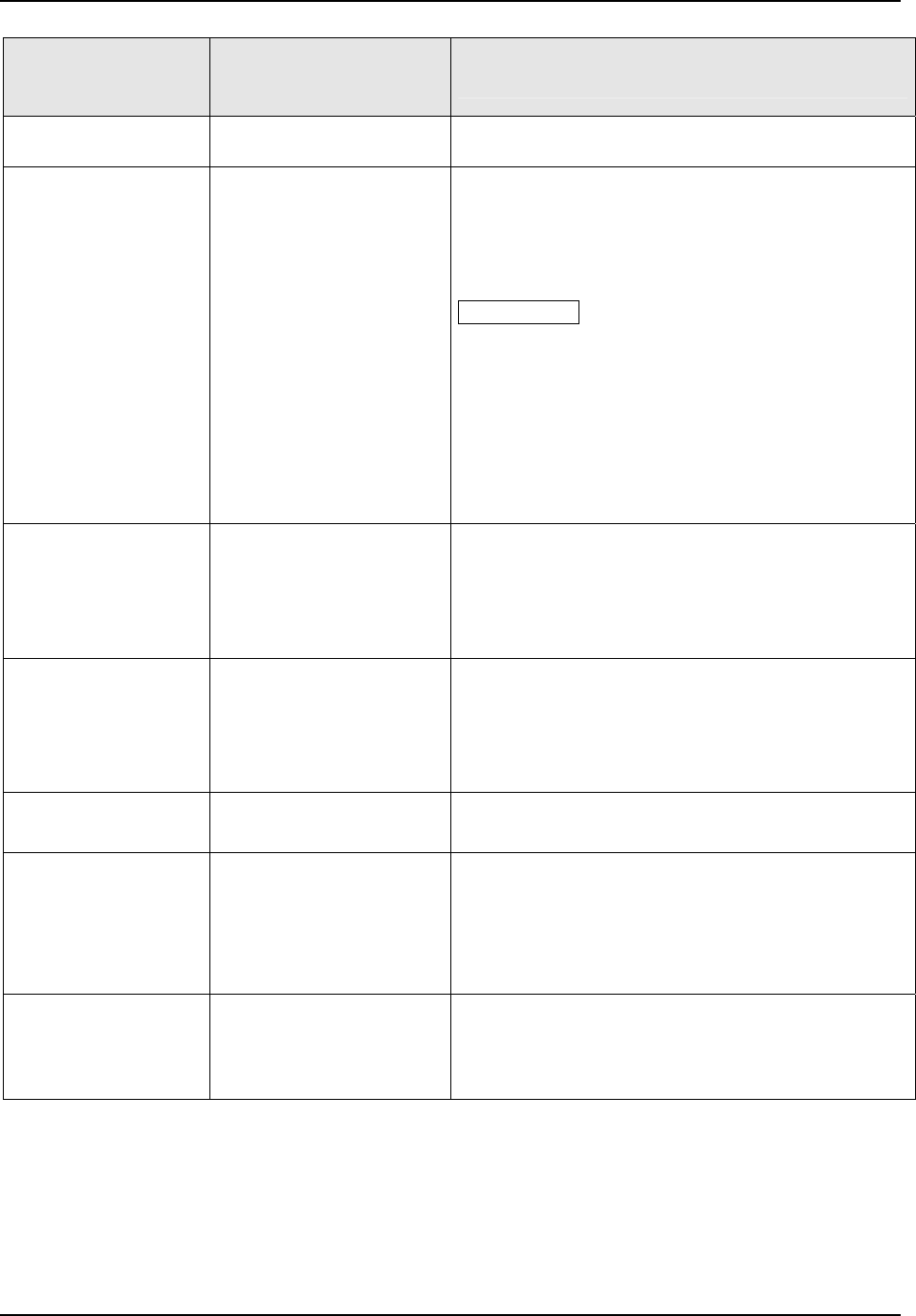
Configuration
March 2012 UDC3500 Universal Digital Controller Product Manual 123
Function Prompt
Lower Display
Selections or
Range of Setting
Upper Display
Parameter
Definition
TC DIFF
PR
TC DIFF—Thermocouple Differential
PR—PR40-PR20 Thermocouple
XMITTER2
B TC
E TC H
E TC L
J TC H
J TC M
J TC L
K TC H
K TC M
K TC L
NNM H
NNM L
NIC H
NIC L
PLAT H
PLAT L
R TC
S TC
T TC H
T TC L
W TC H
W TC L
100 PT
100 LO
200 PT
500 PT
RAD RH
RAD RI
LINEAR
SQROOT
TRANSMITTER CHARACTERIZATION—This
selection lets you instruct the controller to
characterize a linear input to represent a non-linear
one. If characterization is performed by the
transmitter itself, then select LINEAR.
ATTENTION Prompt only appears when a linear
actuation is selected at prompt IN1 TYPE.
FOR EXAMPLE:
If Input 2 is a 4 to 20 mA signal, but the signal
represents a type K H thermocouple, then configure
K TC H and the controller will characterize the 4 to
20 mA signal so that it is treated as a type K
thermocouple input (high range).
Parameter definitions are the same as in IN2 TYPE.
IN2 HIGH
–999. To 9999. Floating
(in engineering units)
INPUT 2 HIGH RANGE VALUE—This value in
engineering units is displayed for all inputs but can
only be changed for inputs configured for linear or
square root transmitter characterization.
See the example in IN1 HI.
IN2 LOW
–999. To 9999. Floating
(in engineering units)
INPUT 2 LOW RANGE VALUE—This value in
engineering units is displayed for all inputs but can
only be changed for inputs configured for linear or
square root transmitter characterization.
See the example in IN1 HI.
RATIO 2
–20.00 to 20.00
Floats to 3 decimal places
RATIO ON INPUT 2—Select the Ratio value you
want on Input 2.
BIAS IN2
–999. to 9999.
(in engineering units)
BIAS ON INPUT 2—Bias is used to compensate the
input for drift of an input value due to deterioration of
a sensor, or some other cause. Select the bias value
you want on Input 2.
Final Input 2 Value = Input 2 * Ratio 2 + Bias 2
FILTER 2
0 to 120 seconds
No filter = 0
FILTER FOR INPUT 2—A software digital filter is
provided for Input 2 to smooth the input signal. You
can configure the first order lag time constant from 1
to 120 seconds. If you do not want filtering, enter 0.
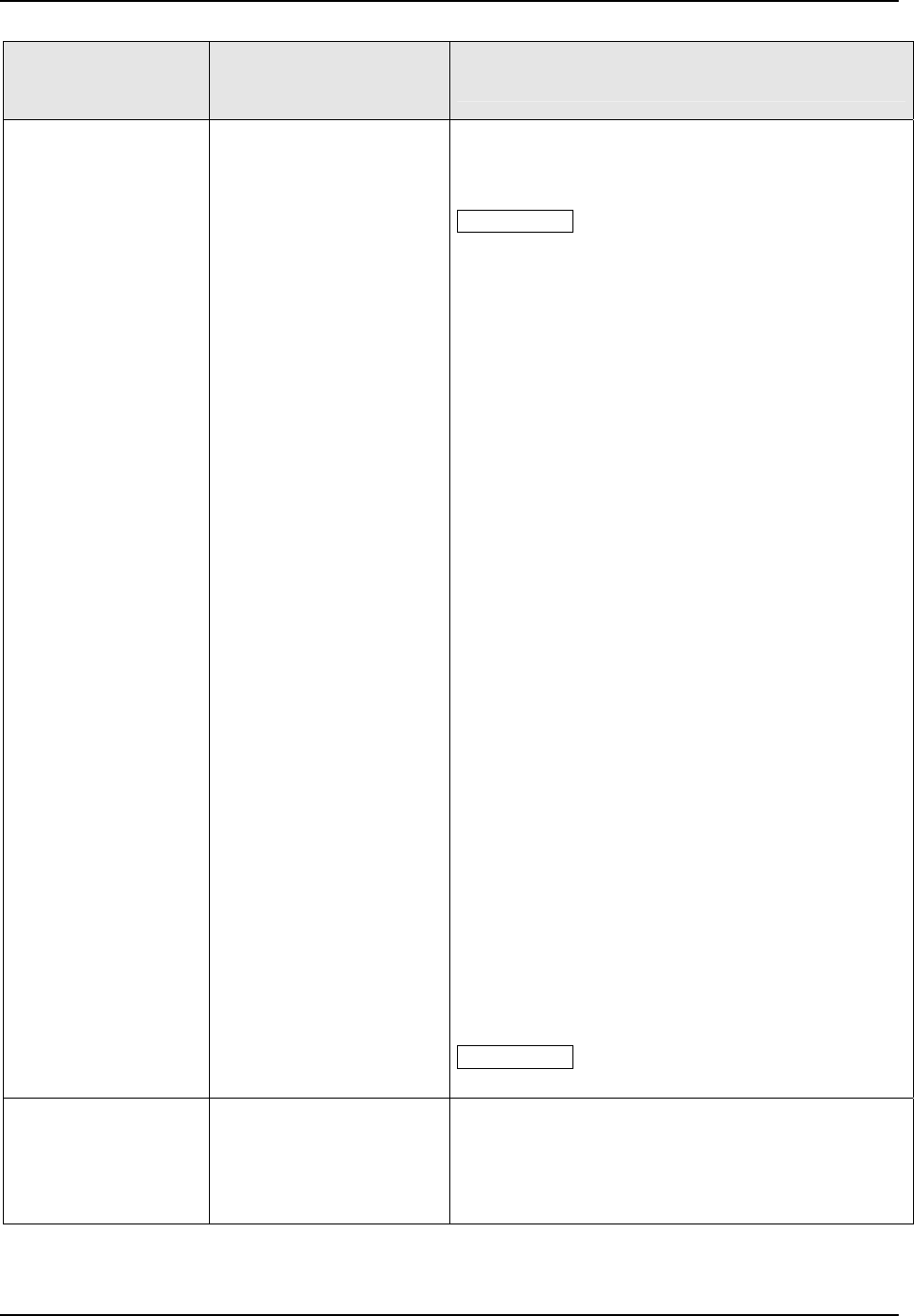
Configuration
124 UDC3500 Universal Digital Controller Product Manual March 2012
Function Prompt
Lower Display
Selections or
Range of Setting
Upper Display
Parameter
Definition
BURNOUT2
BURNOUT PROTECTION (SENSOR BREAK)—
Provides most input types with upscale or downscale
protection if the input fails.
ATTENTION For Burnout to function properly on 0-
20 mA, 0-10 Volt or –1 to +1 Volt input types (or a 0-
5V type that uses a dropping resistor), the dropping
resistor must be remotely located (across the
transmitter terminals). Otherwise, the input at the
instrument terminals will always be 0 (i.e., within the
normal operating range) when the sensor opens.
NONE
NO BURNOUT—Input 2 display freezes at the last
valid value. If Input 2 is used for PV, then the
instrument assumes its pre-configured Failsafe
Output (selected in the CONTROL Set up Group)
when a failed input condition is detected (does not
apply for an input out of range). Diagnostic message
IN2 FAIL is intermittently flashed on the lower
display.
UP
UPSCALE BURNOUT—Forces the Input 2 signal to
the full-scale value when the sensor fails. Diagnostic
message IN2 FAIL intermittently flashed on the lower
display.
The controller remains in Automatic control mode
and adjusts the controller output signal accordingly.
DOWN
DOWNSCALE BURNOUT—Forces the Input 2
signal to the lower range value when the sensor
fails. Diagnostic message IN2 FAIL intermittently
flashed on the lower display.
The controller remains in Automatic control mode
and adjusts the controller output signal accordingly.
NO FS
NO FAILSAFE—This selection does not provide
input failure detection and should only be used when
a thermocouple input is connected to another
instrument that supplies the Burnout current. (For
this selection, no burnout signal is sent to the
sensor.)
ATTENTION The Thermocouple Health feature is
disabled when NO FS is configured.
EMISSIV2
0.01 to 1.00
EMISSIVITY—A correction factor applied to the
Radiamatic input signal that is the ratio of the actual
energy emitted from the target to the energy that
would be emitted if the target were a perfect radiator.
Available only for Radiamatic inputs.
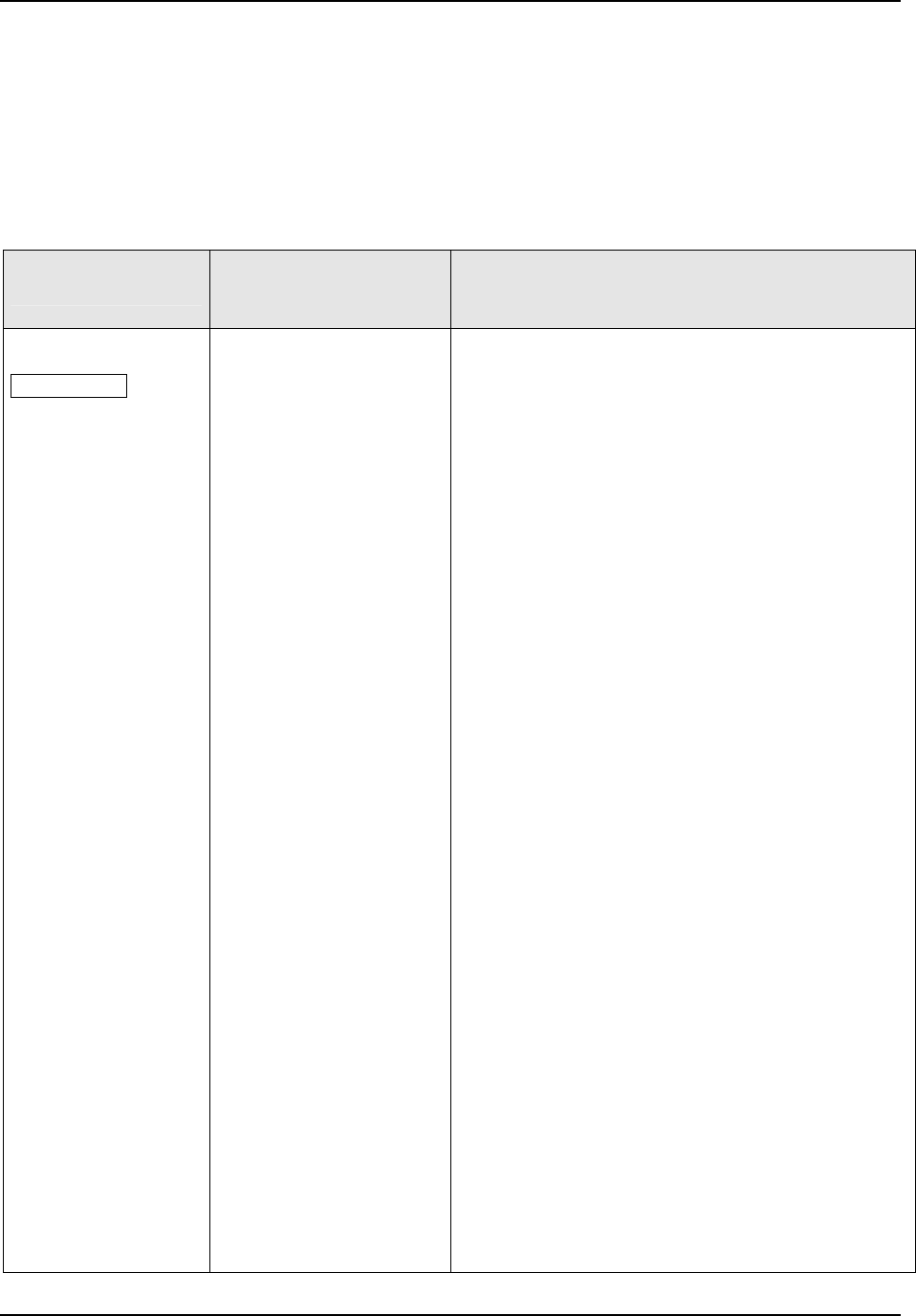
Configuration
March 2012 UDC3500 Universal Digital Controller Product Manual 125
3.17 Input 3 Set Up Group
Introduction
This data deals with various parameters required to configure Input 3.
Function Prompts
Table 3-17 INPUT 3 Group Function Prompts
Function Prompt
Lower Display
Selections or
Range of Setting
Upper Display
Parameter
Definition
IN3 TYPE
ATTENTION
Changing the input
type will result in the
loss of Field
Calibration values and
will restore Factory
Calibration values.
Selecting Position
Proportional Control in
the Output Setup
Group forces Input 3
to the Slidewire
Selection.
DISABLE
B TC
E TC H
E TC L
J TC H
J TC M
J TC L
K TC H
K TC M
K TC L
NNM H
NNM L
NIC H
NIC L
PLAT H
PLAT L
R TC
S TC
T TC H
T TC L
W TC H
W TC L
100 PT
100 LO
200 PT
500 PT
1000 PT
RAD RH
RAD RI
0-20mA
4-20mA
0-10mV
0-50mV
0-100mV
0-500mV
-10-10m
0-1 V
0-5 V
1-5 V
0-10 V
-1-1 V
INPUT 3 ACTUATION TYPE—This selection
determines what actuation you are going to use for
Input 3.
DISABLE—Disables Input.
B TC—B Thermocouple
E TC H—E Thermocouple High
E TC L—E Thermocouple Low
J TC H—J Thermocouple High
J TC M—J Thermocouple Med
J TC L—J Thermocouple Low
K TC H—K Thermocouple High
K TC M—K Thermocouple Med
K TC L—K Thermocouple Low
NNM H—Ni-Ni-Moly Thermocouple High
NNM L—Ni-Ni-Moly Thermocouple Low
NIC H—Nicrosil-Nisil Thermocouple High
NIC L—Nicrosil-Nisil Thermocouple Low
PLATINEL H—Platinel II Thermocouple High
PLATINEL L—Platinel II Thermocouple Low
R TC—R Thermocouple
S TC—S Thermocouple
T TC H—T Thermocouple High
T TC L—T Thermocouple Low
W TC H—W5W26 Thermocouple High
W TC L—W5W26 Thermocouple Low
100 PT—100 Ohm RTD High
100 LO—100 Ohm RTD Low
200 PT—200 Ohm RTD
500 PT—500 Ohm RTD
1000 PT—1000 Ohm RTD
RAD RH—Radiamatic RH
RAD RI—Radiamatic RI
0-20mA—0 to 20 Milliamperes
4-20mA—4 to 20 Milliamperes
0-10mV—0 to 10 Millivolts
0-50mV—0 to 50 Millivolts
0-100mV—0 to 100 Millivolts
0-500mV—0 to 500 Millivolts
-10-10mV— -10 to +10 Millivolts
0-1 V—0 to 1 Volts
0-5 V—0 to 5 Volts
1-5 V—1 to 5 Volts
0-10 V—0 to 10 Volts
-1-1 V— -1 to +1 Volts
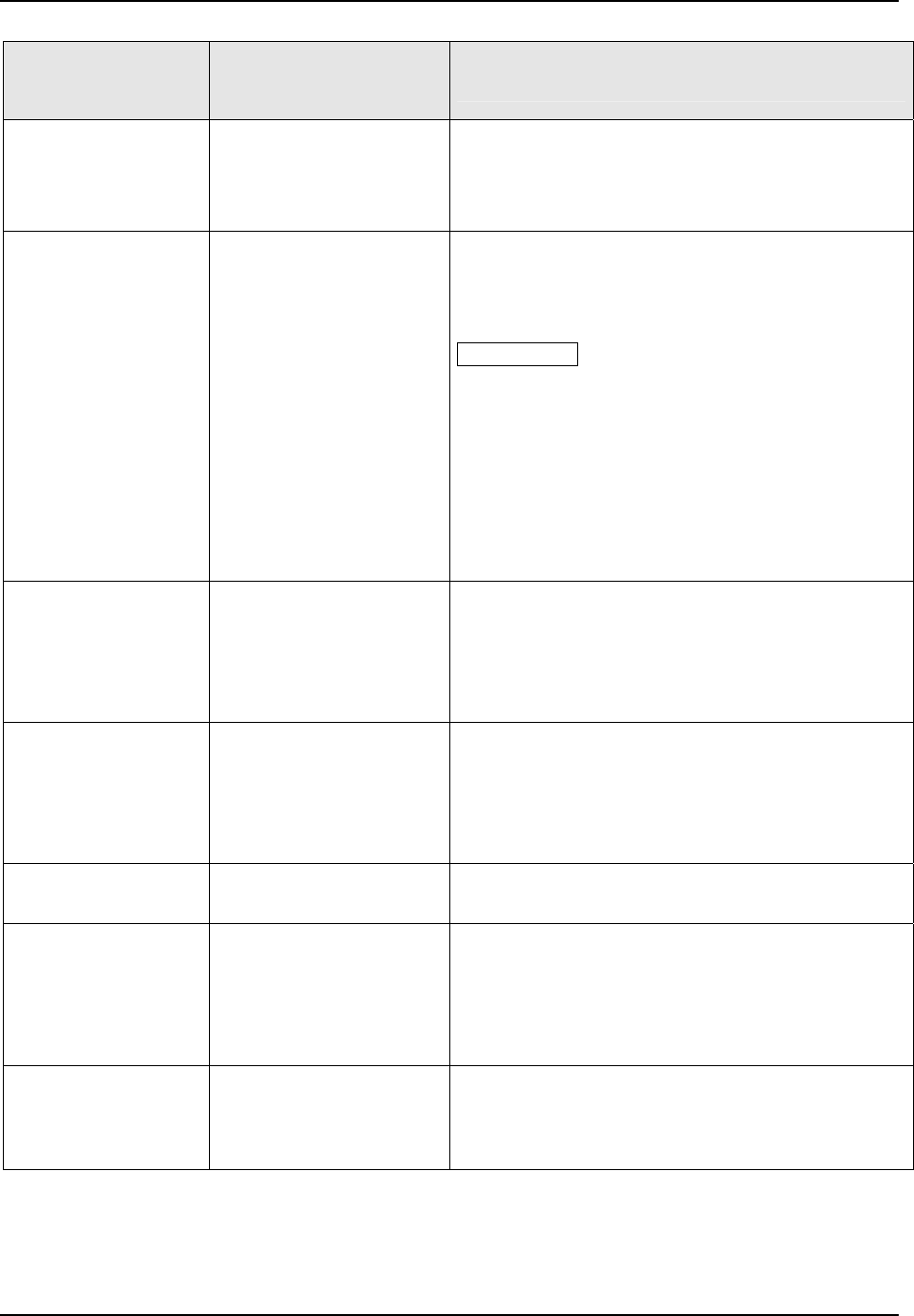
Configuration
126 UDC3500 Universal Digital Controller Product Manual March 2012
Function Prompt
Lower Display
Selections or
Range of Setting
Upper Display
Parameter
Definition
SLIDEW
TC DIFF
SW EMUL
PR
SLIDEWIRE—Slidewire for Position Proportional
TC DIFF—Thermocouple Differential
SLIDEWIRE EMULATION—Herculine Slidewire
Emulation
PR—PR40-PR20 Thermocouple
XMITTER3
B TC
E TC H
E TC L
J TC H
J TC M
J TC L
K TC H
K TC M
K TC L
NNM H
NNM L
NIC H
NIC L
PLAT H
PLAT L
R TC
S TC
T TC H
T TC L
W TC H
W TC L
100 PT
100 LO
200 PT
500 PT
RAD RH
RAD RI
LINEAR
SQROOT
TRANSMITTER 3 CHARACTERIZATION—This
selection lets you instruct the controller to
characterize a linear input to represent a non-linear
one.
ATTENTION Prompt only appears when a linear
actuation is selected at prompt IN3 TYPE.
FOR EXAMPLE:
If Input 3 is a 4 to 20 mA signal, but the signal
represents a type K thermocouple, then select K TC
H and the controller will characterize the 4 to 20 mA
signal so that it is treated as a type K thermocouple
input (high range).
Parameter definitions are the same as in IN3 TYPE.
IN3 HIGH
–999. To 9999. Floating
(in engineering units)
INPUT 3 HIGH RANGE VALUE—This value in
engineering units is displayed for all inputs but can
only be changed for inputs configured for linear or
square root transmitter characterization.
See the example in IN1 HI.
IN3 LOW
–999. To 9999. Floating
(in engineering units)
INPUT 3 LOW RANGE VALUE—This value in
engineering units is displayed for all inputs but can
only be changed for inputs configured for linear or
square root transmitter characterization.
See the example in IN1 HI
RATIO 3
–20.00 to 20.00
Floats to 3 decimal places
RATIO ON INPUT 3—Select the Ratio value you
want on Input 3.
BIAS IN3
–999. to 9999.
(in engineering units)
BIAS ON INPUT 3—Bias is used to compensate the
input for drift of an input value due to deterioration of
a sensor, or some other cause. Select the bias value
you want on Input 3.
Final Input 3 Value = Input 3 * Ratio 3 + Bias 3
FILTER 3
0 to 120 seconds
No filter = 0
FILTER FOR INPUT 3—A software digital filter is
provided for Input 3 to smooth the input signal. You
can configure the first order lag time constant from 1
to 120 seconds. If you do not want filtering, enter 0.
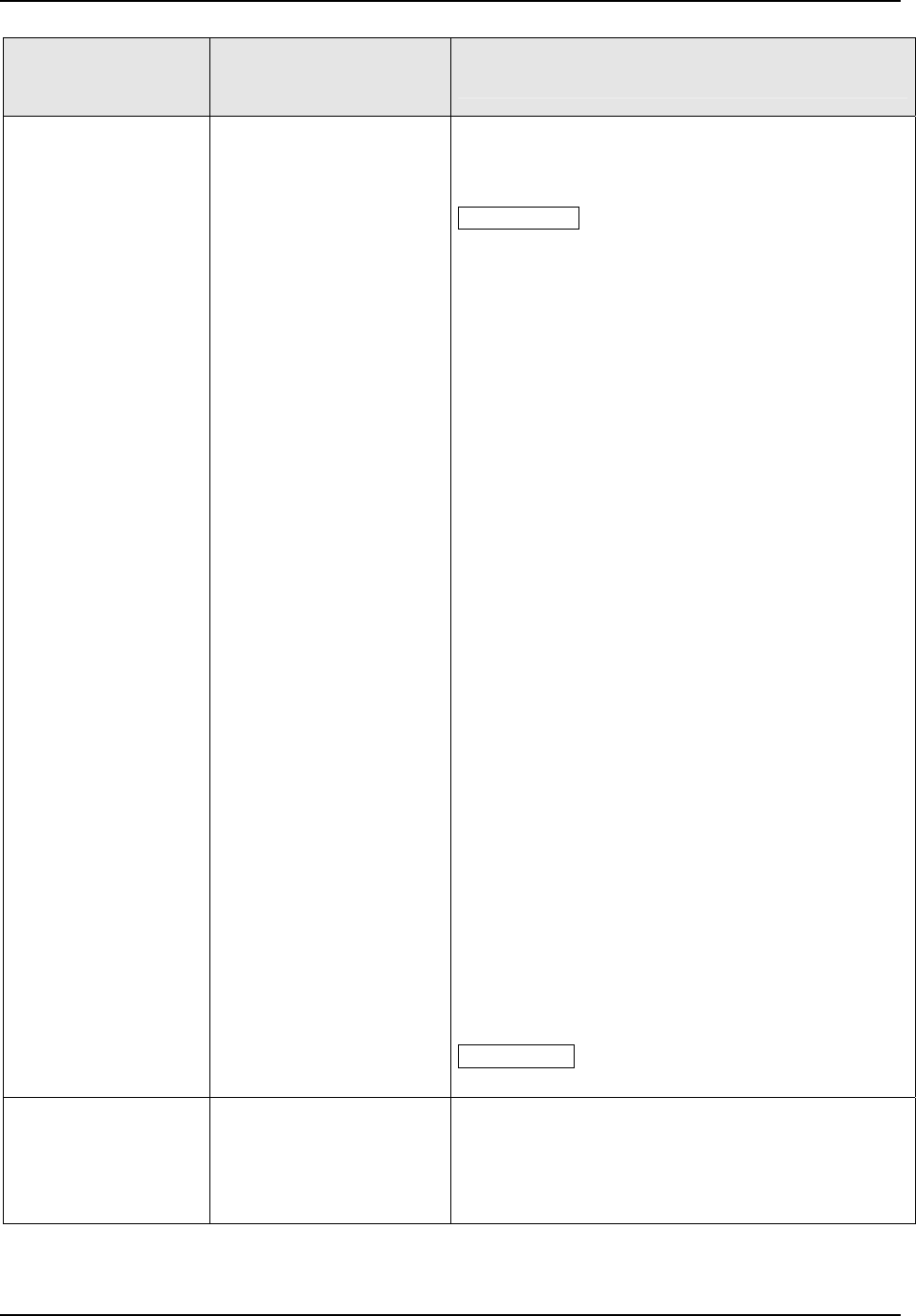
Configuration
March 2012 UDC3500 Universal Digital Controller Product Manual 127
Function Prompt
Lower Display
Selections or
Range of Setting
Upper Display
Parameter
Definition
BURNOUT3
BURNOUT PROTECTION (SENSOR BREAK)—
Provides most input types with upscale or downscale
protection if the input fails.
ATTENTION For Burnout to function properly on
0-20 mA, 0-10 Volt or –1 to +1 Volt input types (or a
0-5V type that uses a dropping resistor), the
dropping resistor must be remotely located (across
the transmitter terminals). Otherwise, the input at the
instrument terminals will always be 0 (i.e., within the
normal operating range) when the sensor opens.
NONE
NO BURNOUT—Input 3 display freezes at the last
valid value. If Input 3 is used for PV, then the
instrument assumes its pre-configured Failsafe
Output (selected in the CONTROL Set up Group)
when a failed input condition is detected (does not
apply for an input out of range). Diagnostic message
IN3 FAIL is intermittently flashed on the lower
display.
UP
UPSCALE BURNOUT—Forces the Input 3 signal to
the full-scale value when the sensor fails. Diagnostic
message IN3 FAIL intermittently flashed on the lower
display.
The controller remains in Automatic control mode
and adjusts the controller output signal accordingly.
DOWN
DOWNSCALE BURNOUT—Forces the Input 3
signal to the lower range value when the sensor
fails. Diagnostic message IN3 FAIL intermittently
flashed on the lower display.
The controller remains in Automatic control mode
and adjusts the controller output signal accordingly.
NO FS
NO FAILSAFE—This selection does not provide
input failure detection and should only be used when
a thermocouple input is connected to another
instrument that supplies the Burnout current. (For
this selection, no burnout signal is sent to the
sensor.)
ATTENTION The Thermocouple Health feature is
disabled when NO FS is configured.
EMISSIV3
0.01 to 1.00
EMISSIVITY—A correction factor applied to the
Radiamatic input signal that is the ratio of the actual
energy emitted from the target to the energy that
would be emitted if the target were a perfect radiator.
Available only for Radiamatic inputs.
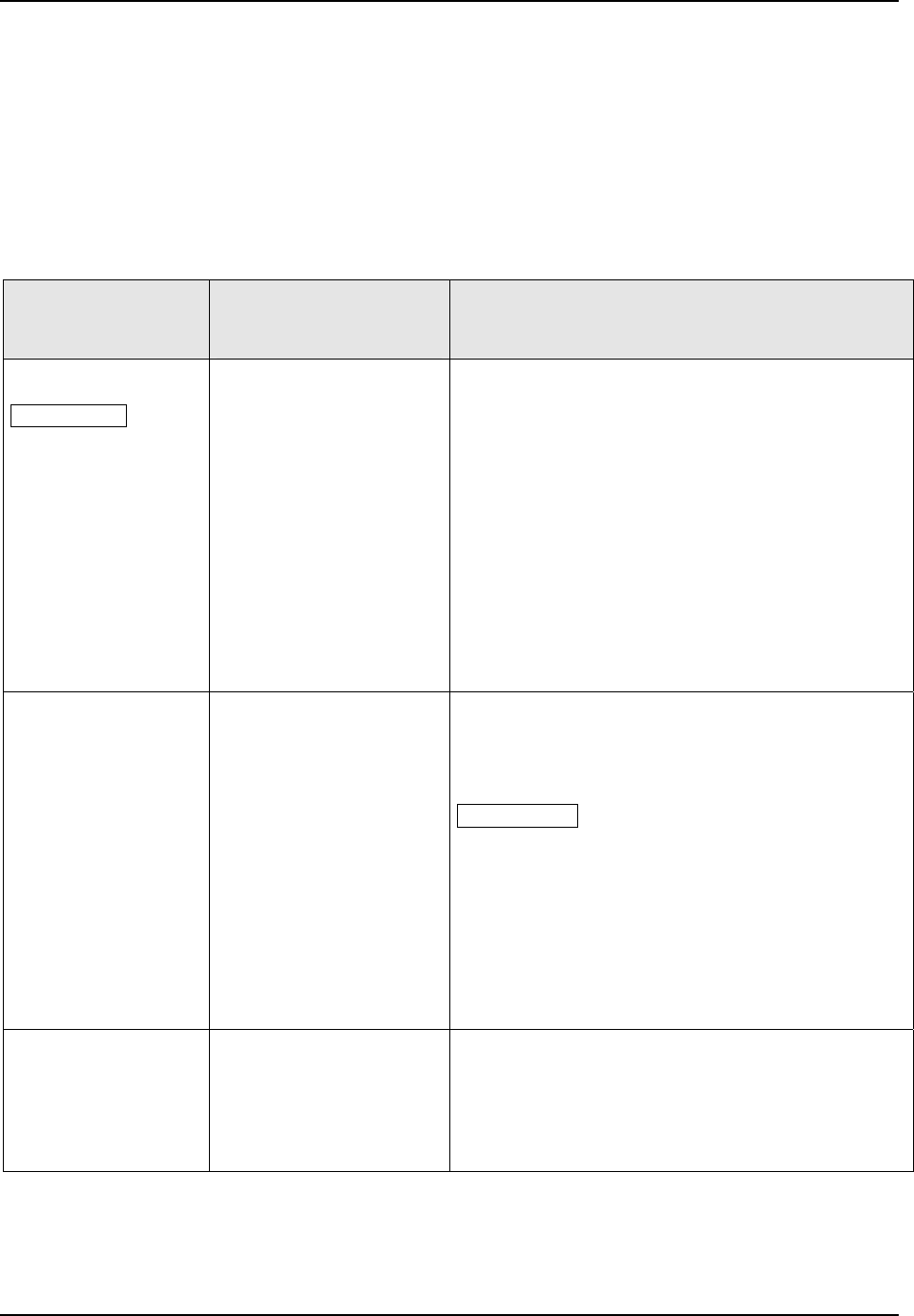
Configuration
128 UDC3500 Universal Digital Controller Product Manual March 2012
3.18 Input 4 Set Up Group
Introduction
This data deals with various parameters required to configure Input 4. Input 4 prompts
are not available unless Input 2 Type is set to 0-5V, 1-5V, 0-20mA or 4-20mA.
Function Prompts
Table 3-18 INPUT 4 Group Function Prompts
Function Prompt
Lower Display
Selections or
Range of Setting
Upper Display
Parameter
Definition
IN4 TYPE
ATTENTION
Changing the input
type will result in the
loss of Field
Calibration values and
will restore Factory
Calibration values.
Input 4 prompts will
not be available
unless Input 2 Type is
set to 0-5V, 1-5V, 0-
20mA or 4-20mA.
DISABLE
0-20mA
4-20mA
0-5 V
1-5 V
INPUT 4 ACTUATION TYPE—This selection
determines what actuation you are going to use for
Input 4.
DISABLE—Disables Input
0-20mA—0 to 20 Milliamperes
4-20mA—4 to 20 Milliamperes
0-5 V—0 to 5 Volts
1-5 V—1 to 5 Volts
XMITTER4
B TC
E TC H
E TC L
J TC H
J TC M
J TC L
K TC H
K TC M
K TC L
NNM H
NNM L
NIC H
NIC L
PLAT H
PLAT L
R TC
S TC
T TC H
T TC L
W TC H
W TC L
100 PT
100 LO
200 PT
500 PT
RAD RH
RAD RI
LINEAR
SQROOT
TRANSMITTER 4 CHARACTERIZATION—This
selection lets you instruct the controller to
characterize a linear input to represent a non-linear
one.
ATTENTION Parameter definitions are the same
as in IN1 TYPE.
IN4 HIGH
–999. To 9999. Floating
(in engineering units)
INPUT 4 HIGH RANGE VALUE—This value in
engineering units is displayed for all inputs but can
only be changed for inputs configured for linear or
square root transmitter characterization.
See the example in IN1 HI.
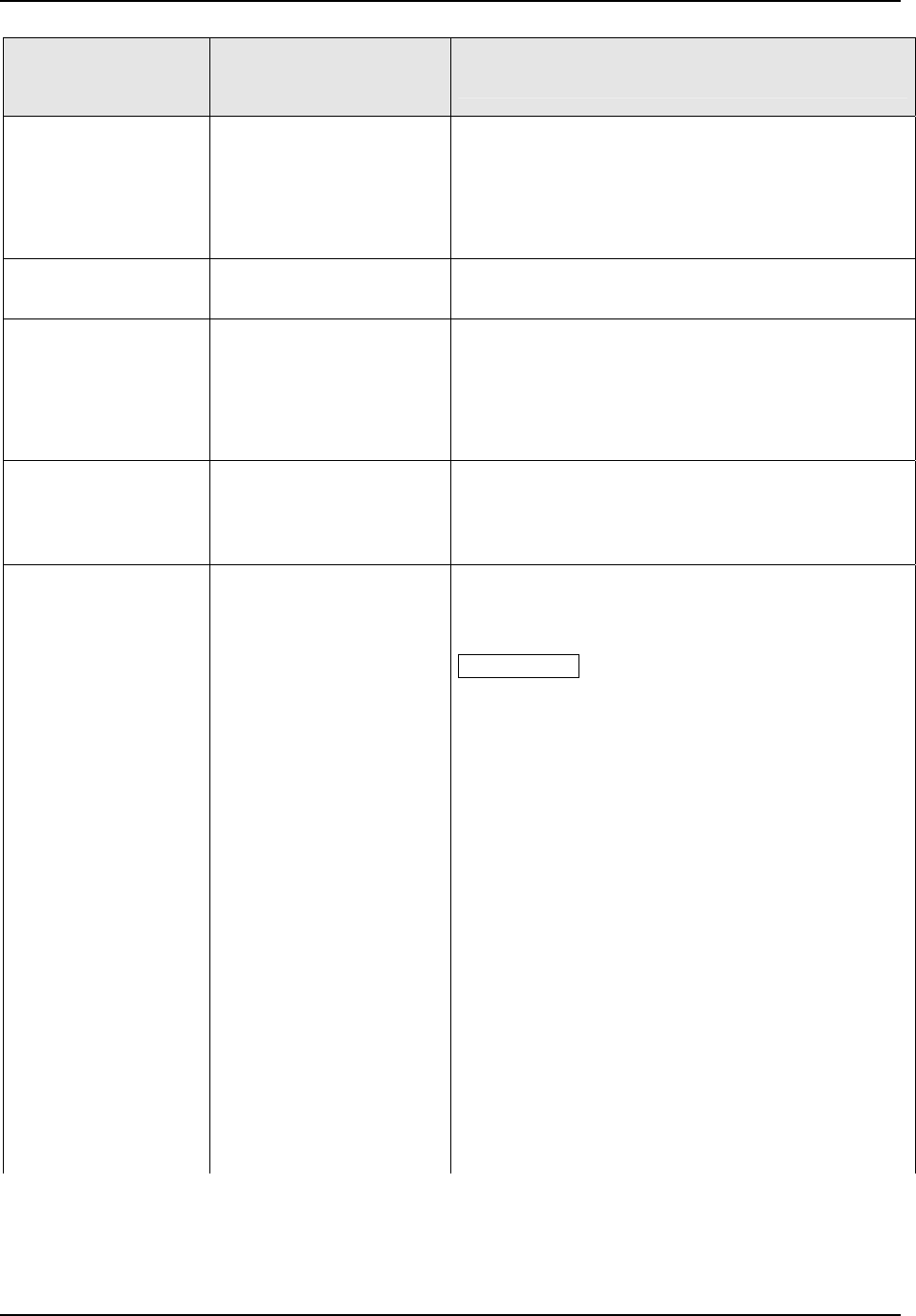
Configuration
Function Prompt
Lower Display
Selections or
Range of Setting
Upper Display
Parameter
Definition
–999. To 9999. Floating
(in engineering units)
INPUT 4 LOW RANGE VALUE—This value in
engineering units is displayed for all inputs but can
only be changed for inputs configured for linear or
square root transmitter characterization.
See the example in IN1 HI
IN4 LOW
–20.00 to 20.00
Floats to 3 decimal places
RATIO ON INPUT 4—Select the Ratio value you
want on Input 4.
RATIO 4
–999. to 9999.
(in engineering units)
BIAS IN4 BIAS ON INPUT 4—Bias is used to compensate the
input for drift of an input value due to deterioration of
a sensor, or some other cause. Select the bias value
you want on Input 4.
Final Input 4 Value = Input 4 * Ratio 4 + Bias 4
0 to 120 seconds
No filter = 0
FILTER 4 FILTER FOR INPUT 4—A software digital filter is
provided for Input 4 to smooth the input signal. You
can configure the first order lag time constant from 1
to 120 seconds. If you do not want filtering, enter 0.
BURNOUT4
BURNOUT PROTECTION (SENSOR BREAK)—
Provides most input types with upscale or downscale
protection if the input fails.
ATTENTION For Burnout to function properly on
0-20 mA, 0-10 Volt or –1 to +1 Volt input types (or a
0-5V type that uses a dropping resistor), the
dropping resistor must be remotely located (across
the transmitter terminals). Otherwise, the input at the
instrument terminals will always be 0 (i.e., within the
normal operating range) when the sensor opens.
NONE
NO BURNOUT—Input 4 display freezes at the last
valid value. If Input 4 is used for PV, then the
instrument assumes its pre-configured Failsafe
Output (selected in the CONTROL Set up Group)
when a failed input condition is detected (does not
apply for an input out of range). Diagnostic message
IN4 FAIL is intermittently flashed on the lower
display.
UP
UPSCALE BURNOUT—Forces the Input 4 signal to
the full-scale value when the sensor fails. Diagnostic
message IN4 FAIL intermittently flashed on the lower
display.
The controller remains in Automatic control mode
and adjusts the controller output signal accordingly.
March 2012 UDC3500 Universal Digital Controller Product Manual 129
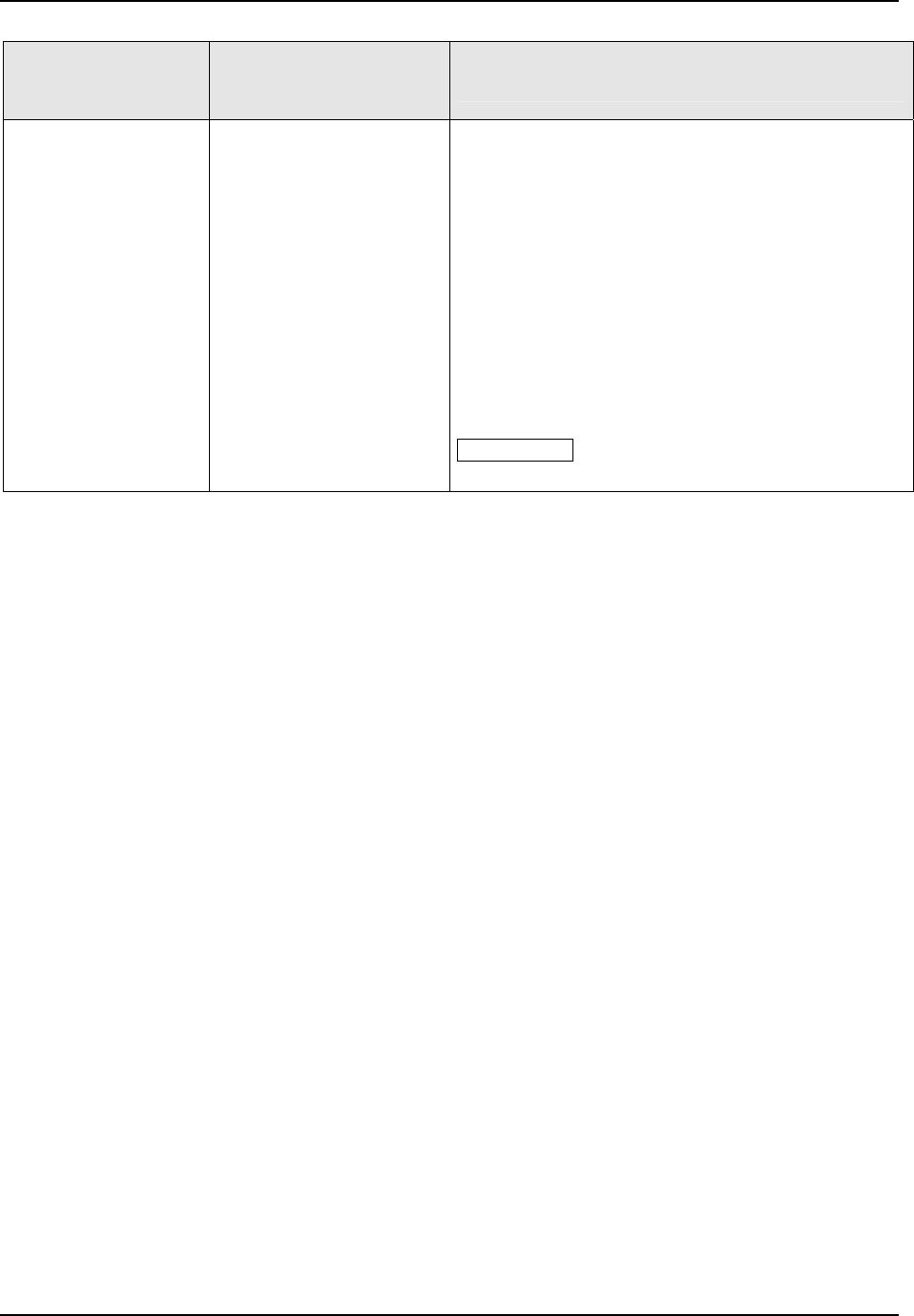
Configuration
Function Prompt
Lower Display
Selections or
Range of Setting
Upper Display
Parameter
Definition
DOWN
DOWNSCALE BURNOUT—Forces the Input 4
signal to the lower range value when the sensor
fails. Diagnostic message IN4 FAIL intermittently
flashed on the lower display.
The controller remains in Automatic control mode
and adjusts the controller output signal accordingly.
NO FS
NO FAILSAFE—This selection does not provide
input failure detection and should only be used when
a thermocouple input is connected to another
instrument that supplies the Burnout current. (For
this selection, no burnout signal is sent to the
sensor.)
ATTENTION The Thermocouple Health feature is
disabled when NO FS is configured.
130 UDC3500 Universal Digital Controller Product Manual March 2012
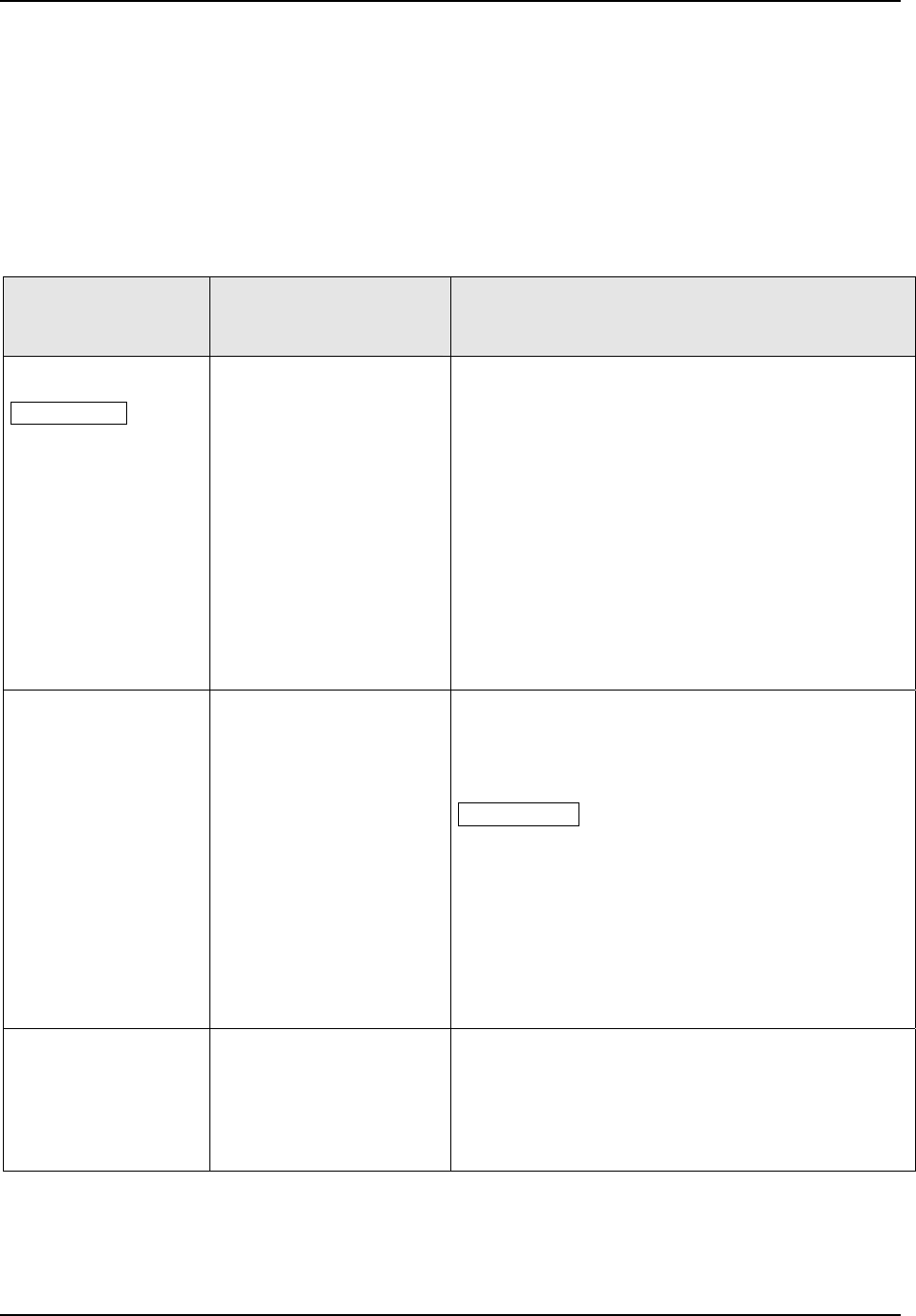
Configuration
3.19 Input 5 Set Up Group
Introduction
This data deals with various parameters required to configure Input 5. Input 5 prompts
are not available unless Input 3 Type is set to 0-5V, 1-5V, 0-20mA or 4-20mA.
Function Prompts
Table 3-19 INPUT 5 Group Function Prompts
Function Prompt
Lower Display
Selections or
Range of Setting
Upper Display
Parameter
Definition
IN5 TYPE
ATTENTION
Changing the input
type will result in the
loss of Field
Calibration values and
will restore Factory
Calibration values.
Input 5 prompts will
not be available
unless Input 3 Type is
set to 0-5V, 1-5V, 0-
20mA or 4-20mA.
DISABLE
0-20mA
4-20mA
0-5 V
1-5 V
INPUT 5 ACTUATION TYPE—This selection
determines what actuation you are going to use for
Input 5.
DISABLE—Disables Input
0-20mA—0 to 20 Milliamperes
4-20mA—4 to 20 Milliamperes
0-5 V—0 to 5 Volts
1-5 V—1 to 5 Volts
XMITTER5
B TC
E TC H
E TC L
J TC H
J TC M
J TC L
K TC H
K TC M
K TC L
NNM H
NNM L
NIC H
NIC L
PLAT H
PLAT L
R TC
S TC
T TC H
T TC L
W TC H
W TC L
100 PT
100 LO
200 PT
500 PT
RAD RH
RAD RI
LINEAR
SQROOT
TRANSMITTER 5 CHARACTERIZATION—This
selection lets you instruct the controller to
characterize a linear input to represent a non-linear
one.
ATTENTION Parameter definitions are the same
as in IN1 TYPE.
IN5 HIGH
–999. To 9999. Floating
(in engineering units)
INPUT 5 HIGH RANGE VALUE—This value in
engineering units is displayed for all inputs but can
only be changed for inputs configured for linear or
square root transmitter characterization.
See the example in IN1 HI.
March 2012 UDC3500 Universal Digital Controller Product Manual 131
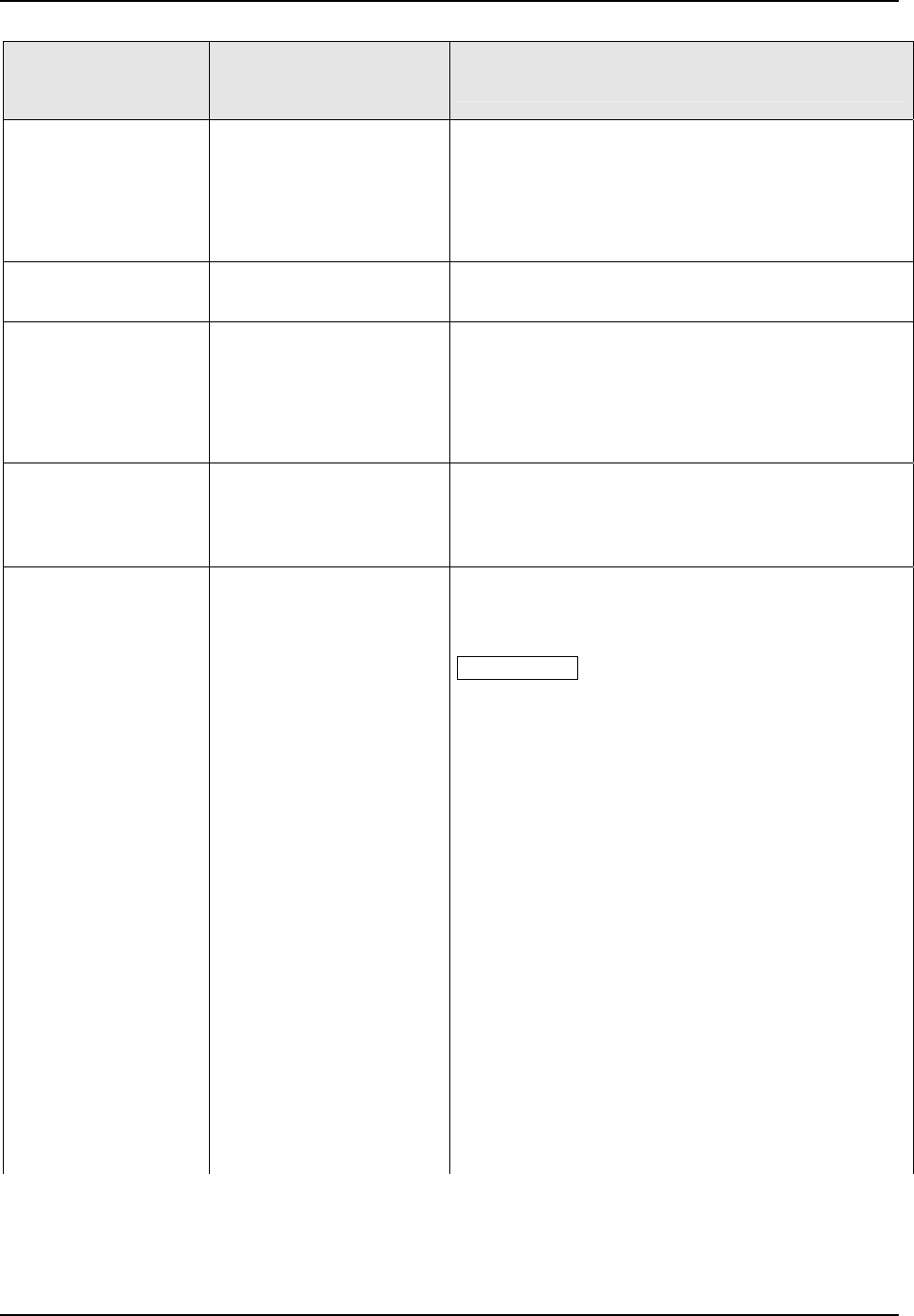
Configuration
132 UDC3500 Universal Digital Controller Product Manual March 2012
Function Prompt
Lower Display
Selections or
Range of Setting
Upper Display
Parameter
Definition
IN5 LOW
–999. To 9999. Floating
(in engineering units)
INPUT 5 LOW RANGE VALUE—This in engineering
units is displayed for all inputs but can only be
changed for inputs configured for linear or square
root transmitter characterization.
See the example in IN1 HI
RATIO 5
–20.00 to 20.00
Floats to 3 decimal places
RATIO ON INPUT 5—Select the Ratio value you
want on Input 5.
BIAS IN5
–999. to 9999.
(in engineering units)
BIAS ON INPUT 5—Bias is used to compensate the
input for drift of an input value due to deterioration of
a sensor, or some other cause. Select the bias value
you want on Input 5.
Final Input 5 Value = Input 5 * Ratio 5 + Bias 5
FILTER 5
0 to 120 seconds
No filter = 0
FILTER FOR INPUT 5—A software digital filter is
provided for Input 5 to smooth the input signal. You
can configure the first order lag time constant from 1
to 120 seconds. If you do not want filtering, enter 0.
BURNOUT5
BURNOUT PROTECTION (SENSOR BREAK)—
Provides most input types with upscale or downscale
protection if the input fails.
ATTENTION For Burnout to function properly on
0-20 mA, 0-10 Volt or –1 to +1 Volt input types (or a
0-5V type that uses a dropping resistor), the
dropping resistor must be remotely located (across
the transmitter terminals). Otherwise, the input at the
instrument terminals will always be 0 (i.e., within the
normal operating range) when the sensor opens.
NONE
NO BURNOUT—Input 5 display freezes at the last
valid value. If Input 5 is used for PV, then the
instrument assumes its pre-configured Failsafe
Output (selected in the CONTROL Set up Group)
when a failed input condition is detected (does not
apply for an input out of range). Diagnostic message
IN5 FAIL is intermittently flashed on the lower
display.
UP
UPSCALE BURNOUT—Forces the Input 5 signal to
the full-scale value when the sensor fails. Diagnostic
message IN5 FAIL intermittently flashed on the lower
display.
The controller remains in Automatic control mode
and adjusts the controller output signal accordingly.
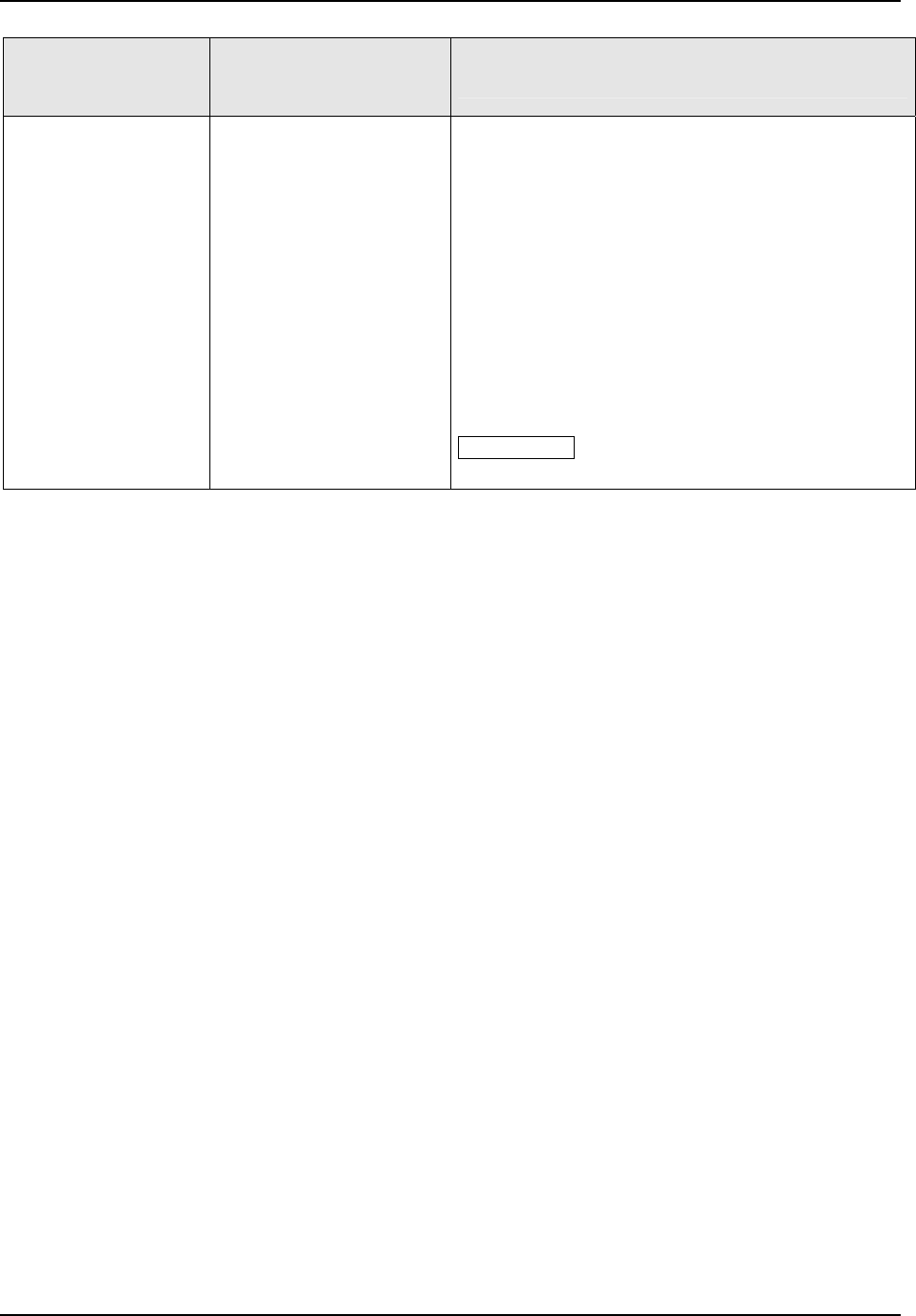
Configuration
March 2012 UDC3500 Universal Digital Controller Product Manual 133
Function Prompt
Lower Display
Selections or
Range of Setting
Upper Display
Parameter
Definition
DOWN
DOWNSCALE BURNOUT—Forces the Input 5
signal to the lower range value when the sensor
fails. Diagnostic message IN5 FAIL intermittently
flashed on the lower display.
The controller remains in Automatic control mode
and adjusts the controller output signal accordingly.
NO FS
NO FAILSAFE—This selection does not provide
input failure detection and should only be used when
a thermocouple input is connected to another
instrument that supplies the Burnout current. (For
this selection, no burnout signal is sent to the
sensor.)
ATTENTION The Thermocouple Health feature is
disabled when NO FS is configured.
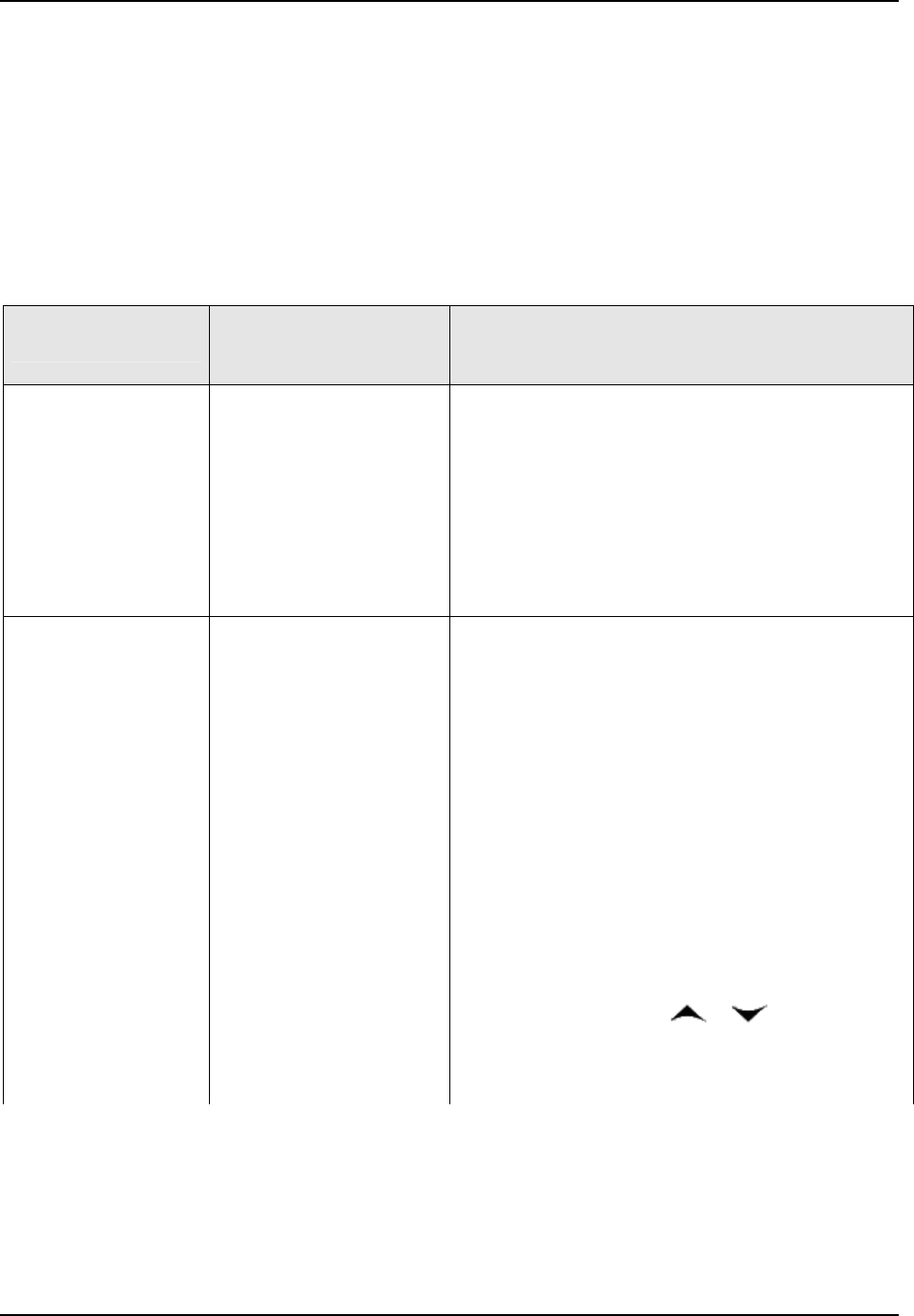
Configuration
3.20 Control Set Up Group
Introduction
The functions listed in this group deal with how the controller will control the Loop 1
process including: Number of Tuning Parameter Sets, Setpoint Source, Tracking, Power-
up Recall, Setpoint Limits, Output Direction and Limits, Deadband, and Hysteresis.
Function Prompts
Table 3-20 CONTROL Group Function Prompts
Function Prompt
Lower Display
Selections or
Range of Setting
Upper Display
Parameter
Definition
PV SOURCE
INPUT 1
INPUT 2
INPUT 3
INPUT 4
INPUT 5
IN ALG1
IN ALG2
PROCESS VARIABLE SOURCE —Selects the
source of the Process Variable for Loop 1.
INPUT 1
INPUT 2
INPUT 3
INPUT 4
INPUT 5
INPUT ALGORITHM 1
INPUT ALGORITHM 2
PID SETS
NUMBER OF TUNING PARAMETER SETS—This
selection lets you choose multiple sets of tuning
constants (gain, rate, and reset). NOTE: The Tuning
Group is automatically configured to have two PID
sets when a Duplex Control Algorithm is configured.
1 ONLY
ONE SET ONLY—Only one set of tuning
parameters is available. Configure the values for:
Gain or Proportional Band,
Rate,
Reset Time
2KEYBD
TWO SETS KEYBOARD SELECTABLE—Two sets
of tuning parameters can be configured and can be
selected at the operator interface or by using the
Digital Inputs.
Press the
Lower/Display key until you see PID SET1
or PID SET2 then press
or to switch
between sets. Configure the values for:
Gain, Rate, Reset
Gain #2, Rate #2, Reset #2
134 UDC3500 Universal Digital Controller Product Manual March 2012
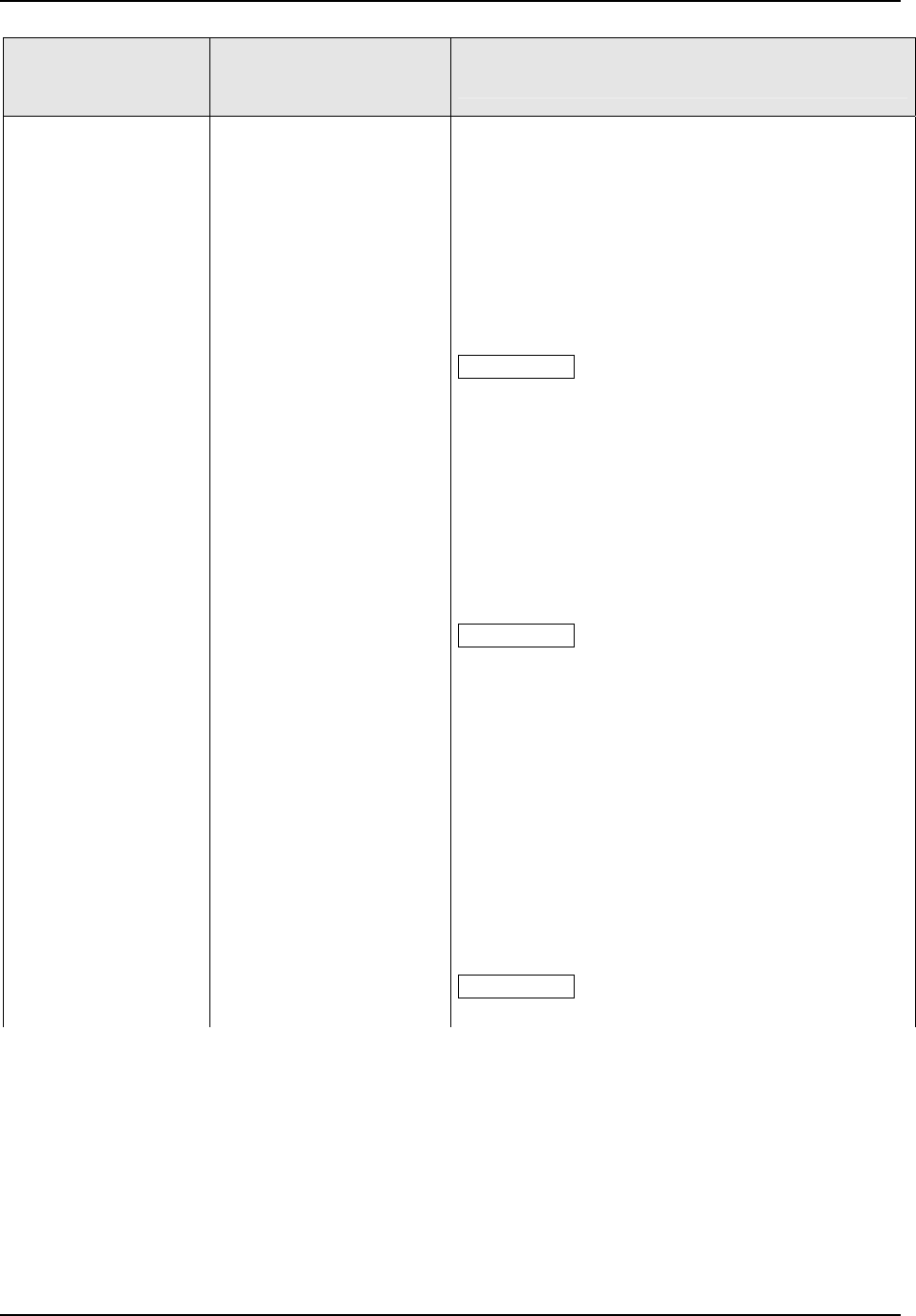
Configuration
March 2012 UDC3500 Universal Digital Controller Product Manual 135
Function Prompt
Lower Display
Selections or
Range of Setting
Upper Display
Parameter
Definition
PID SETS
(continued)
2PV SW
TWO SETS PV AUTOMATIC SWITCHOVER—
When the process variable is LESS than the value
set at prompt SW VALUE (Switchover Value), the
controller will use Gain, Rate, and Reset. The active
PID SET can be read in the lower display.
When the process variable is GREATER than the
value set at prompt SW VALUE, the controller will
use Gain #2, Rate #2, and Reset #2. The active PID
SET can be read in the lower display.
ATTENTION Other prompts affected: SW VALUE
Note: This operation is different from other UDC
Controllers.
2SP SW
TWO SETS SP AUTOMATIC SWITCHOVER—
When the setpoint is LESS than the value set at
prompt SW VALUE (Switchover Value), the
controller will use Gain, Rate, and Reset.
When the setpoint is GREATER than the value set
at prompt SW VALUE, the controller will use Gain
#2, Rate #2, and Reset #2.
ATTENTION Other prompts affected: SW VALUE.
Note: This operation is different from other UDC
Controllers.
4SP SW
FOUR SETS SP AUTOMATIC SWITCHOVER—
When the setpoint is LESS than the value set at
prompt SW VALUE (Switchover Value), the
controller will use Gain, Rate, and Reset.
When the setpoint is GREATER than the value set
at prompt SW VALUE, the controller will use Gain
#2, Rate #2, and Reset #2.
Similarly, the controller switches between the other
PID sets based upon the values configured for SW
VAL 2 and SW VAL 3.
ATTENTION Other prompts affected: SW VALUE,
SW VAL 2 and SW VAL 3.
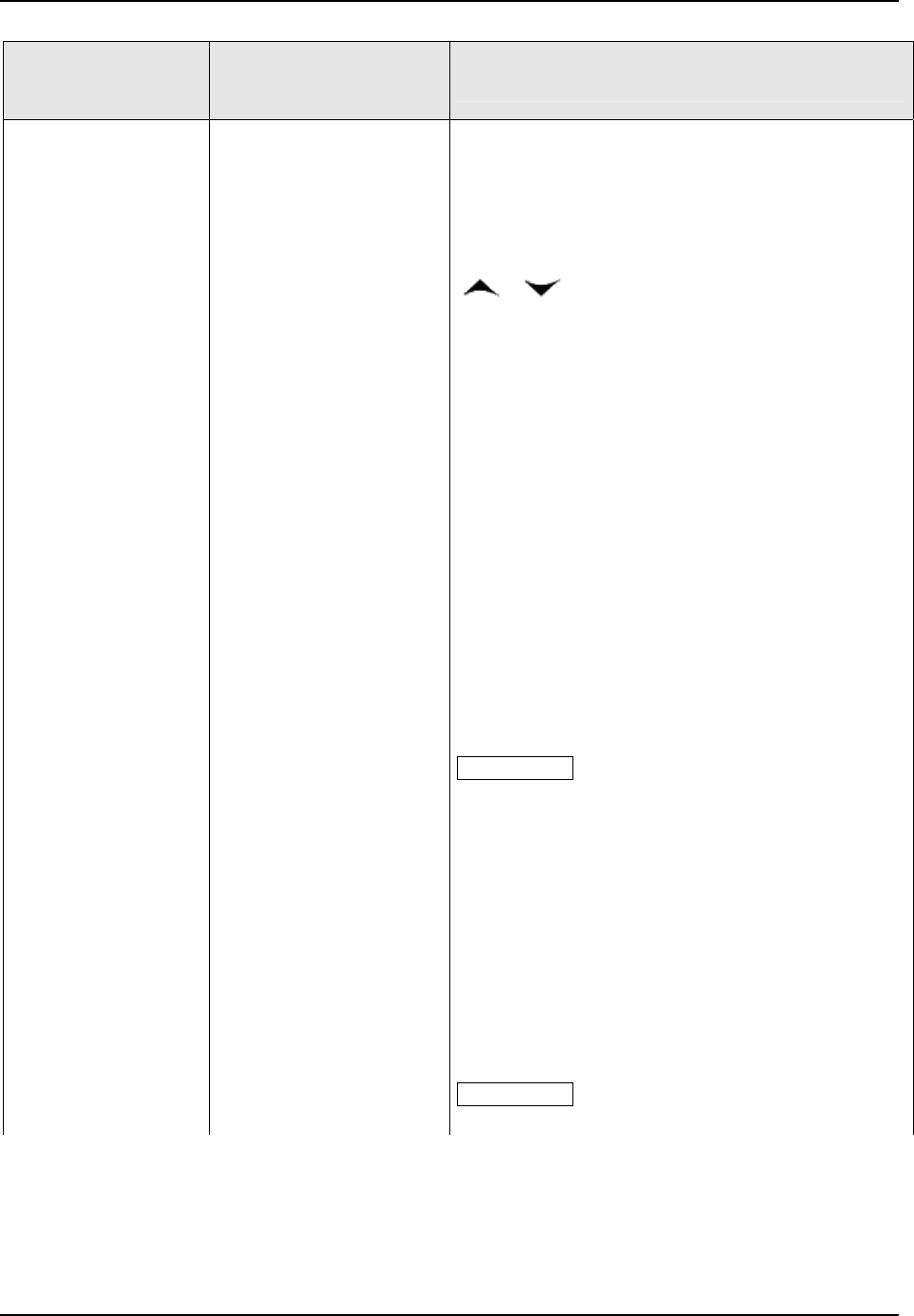
Configuration
136 UDC3500 Universal Digital Controller Product Manual March 2012
Function Prompt
Lower Display
Selections or
Range of Setting
Upper Display
Parameter
Definition
4KEYBD
FOUR SETS KEYBOARD SELECTABLE—Two
sets of tuning parameters can be configured and can
be selected at the operator interface or by using the
Digital Inputs.
Press the
Lower/Display key until you see PID SET1
or PID SET2 or PID SET3 or PID SET4 then press
or to switch between the sets.
Configure the values for:
Gain, Rate, Reset, Cycle Time
Gain #2, Rate #2, Reset #2
Gain #3, Rate #3, Reset #3
Gain #4, Rate #4, Reset #4
4PV SW
FOUR SETS PV AUTOMATIC SWITCHOVER—
When the process variable is LESS than the value
set at prompt SW VALUE (Switchover Value), the
controller will use Gain, Rate, and Reset. The active
PID SET can be read in the lower display.
When the process variable is GREATER than the
value set at prompt SW VALUE, the controller will
use Gain #2, Rate #2, and Reset #2. The active PID
SET can be read in the lower display.
Similarly, the controller switches between the other
PID sets based upon the values configured for SW
VAL 2 and SW VAL 3.
ATTENTION Other prompts affected: SW VALUE,
SW VAL 2 and SW VAL 3.
4SP SW
FOUR SETS SP AUTOMATIC SWITCHOVER—
When the setpoint is LESS than the value set at
prompt SW VALUE (Switchover Value), the
controller will use Gain, Rate, and Reset.
When the setpoint is GREATER than the value set at
prompt SW VALUE, the controller will use Gain #2,
Rate #2, and Reset #2.
Similarly, the controller switches between the other
PID sets based upon the values configured for SW
VAL 2 and SW VAL 3.
ATTENTION Other prompts affected: SW VALUE,
SW VAL 2 and SW VAL 3.
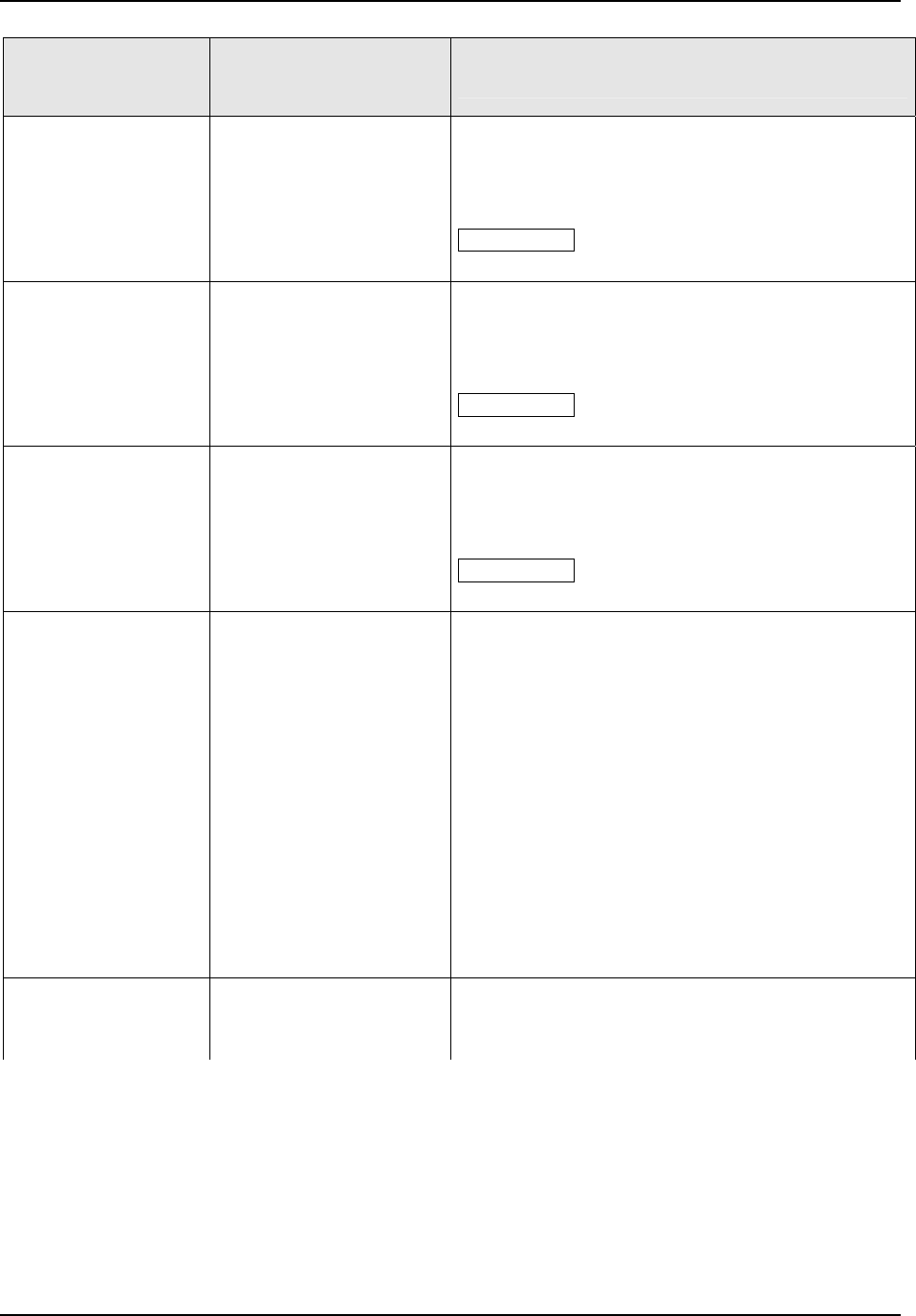
Configuration
March 2012 UDC3500 Universal Digital Controller Product Manual 137
Function Prompt
Lower Display
Selections or
Range of Setting
Upper Display
Parameter
Definition
SW VAL12
Value in engineering units
within PV or SP range
limits
AUTOMATIC SWITCHOVER VALUE—This is the
value of Process Variable or Setpoint at which the
controller will switch from Tuning Constant Set #1 to
Set #2.
ATTENTION Only appears when PID SETS
selection is configured for 2 or 4 PID Sets.
SW VAL23
Value in engineering units
within PV or SP range
limits
AUTOMATIC SWITCHOVER VALUE—This is the
value of Process Variable or Setpoint at which the
controller will switch from Tuning Constant Set #2 to
Set #3.
ATTENTION Only appears when PID SETS
selection is configured for 4 PID Sets.
SW VAL34
Value in engineering units
within PV or SP range
limits
AUTOMATIC SWITCHOVER VALUE—This is the
value of Process Variable or Setpoint at which the
controller will switch from Tuning Constant Set #3 to
Set #4.
ATTENTION Only appears when PID SETS
selection is configured for 4 PID Sets.
LSP’S
LOCAL SETPOINT SOURCE—This selection
determines what your local setpoint source will be.
1 ONLY
LOCAL SETPOINT—The setpoint entered from the
keyboard.
TWO
TWO LOCAL SETPOINTS—This selection lets you
switch between two local setpoints using the
SP/Select key.
THREE
THREE LOCAL SETPOINTS—This selection lets
you switch between three local setpoints using the
SP/Select key
FOUR
FOUR LOCAL SETPOINTS—This selection lets you
switch between four local setpoints using the
SP/Select key
RSP SRC
REMOTE SETPOINT SOURCE—This selection
determines what your remote setpoint source will be
when toggled by the
SP/Select key or Digital Input.
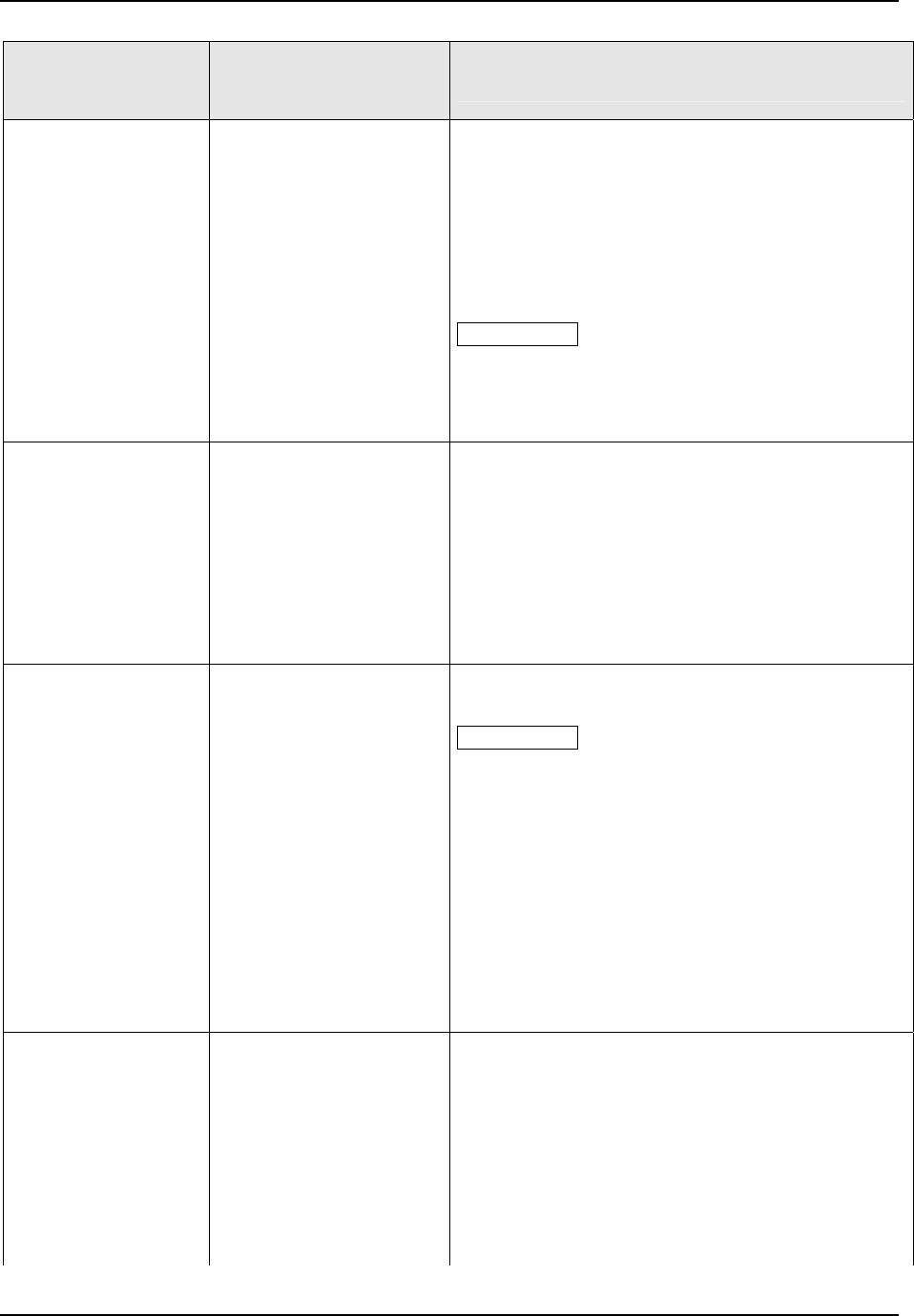
Configuration
138 UDC3500 Universal Digital Controller Product Manual March 2012
Function Prompt
Lower Display
Selections or
Range of Setting
Upper Display
Parameter
Definition
NONE
INPUT 1
INPUT 2
INPUT 3
INPUT 4
INPUT 5
IN ALG1
IN ALG2
NONE—No remote setpoint.
INPUT 1—Remote Setpoint using Input 1.
INPUT 2—Remote Setpoint using Input 2.
INPUT 3—Remote Setpoint using Input 3.
INPUT 4—Remote Setpoint using Input 4.
INPUT 5—Remote Setpoint using Input 5.
IN AL1—Remote Setpoint using Input Algorithm 1.
IN AL2—Remote Setpoint using Input Algorithm 2.
ATTENTION To cycle through the available local
setpoints and remote setpoint, press and hold in the
SP/Select key. When the key is released, the
setpoint selection currently displayed will be the new
setpoint selection.
AUTOBIAS
AUTOBIAS—Used for bumpless transfer when
transferring from any local setpoint to remote
setpoint. This makes the RSP equal to the CSP by
adding, to the input used as the RSP source, a Bias
value. It is changed each time a transfer is made.
Available for any analog input used as the RSP
source.
DISABLE
ENABLE
DISABLE—Disables auto bias.
ENABLE—Enables auto bias.
SP TRACK
SETPOINT TRACKING—The local setpoint can be
configured to track either PV or RSP as listed below.
ATTENTION For selections other than NONE,
LSP is stored in nonvolatile memory only when there
is a mode change; i.e., when switching from RSP to
LSP or from Manual to Automatic. If power is lost,
then the current LSP value is also lost.
NONE
NO TRACKING—If local setpoint tracking is not
configured, the LSP will not be altered when transfer
from RSP to LSP is made.
PV
PV—Local setpoint tracks the PV when in manual.
RSP
RSP—Local setpoint is set equal to the remote
setpoint when a change is made from using remote
setpoint to any local setpoint.
PWR MODE
POWER UP CONTROLLER MODE RECALL—This
selection determines which mode and setpoint the
controller will use when the controller restarts after a
power loss.
MANUAL
MANUAL, LSP—At power-up, the controller will use
manual mode with the local setpoint displayed.
A LSP
AUTOMATIC MODE, LAST LSP—At power-up, the
controller will use automatic mode with the last local
setpoint used before power down displayed.

Configuration
March 2012 UDC3500 Universal Digital Controller Product Manual 139
Function Prompt
Lower Display
Selections or
Range of Setting
Upper Display
Parameter
Definition
A RSP
AUTOMATIC MODE, LAST RSP—At power-up, the
controller will use automatic mode with the last
remote setpoint used before power down displayed.
AM SP
LAST MODE/LAST SETPOINT—At power-up, the
controller will use the last mode and last Setpoint
used before power down.
AM LSP
LAST MODE/LAST LOCAL SETPOINT—At power-
up, the controller will use the last mode and last
Local Setpoint used before power down.
PWR OUT
For Three Position
Step Control Only
THREE POSITION CONTROL STEP OUTPUT
START-UP MODE—This selection determines what
position the motor will be in when powered up or in
the failsafe position.
(Note 3)
LAST
LAST OUTPUT—At power-up in automatic mode,
the motor position will be the last one prior to power
down. When the unit goes into FAILSAFE, it will stay
in automatic mode. The motor will not be driven to
the configured failsafe position.
F’SAFE
FAILSAFE OUTPUT—At power-up in manual mode,
the motor will be driven to either the 0 % or 100 %
output position, whichever is selected at prompt
FAILSAFE. For Burnout/None, when the unit goes
into FAILSAFE, it will go to manual mode. The motor
will be driven to the configured failsafe position.
SP HiLIM
NOTE 5
SETPOINT HIGH LIMIT *—This selection prevents
the local and remote setpoints from going above the
value selected here. The setting must be equal or
less than the upper range of the inputs.
SP LoLIM
NOTE 5
SETPOINT LOW LIMIT *—This selection prevents
the local and remote setpoints from going below the
value selected here. The setting must be equal or
greater than the lower range of the inputs.
* The local setpoint will automatically adjust itself to be within the setpoint limit range. For example, if SP
= 1500 and SP HiLIM is changed to 1200, then the SP will be changed to 1200.
ACTION
CONTROL OUTPUT DIRECTION—Select direct or
reverse output action.
DIRECT
DIRECT ACTING CONTROL—The controller’s
output increases as the process variable increases.
REVERSE
REVERSE ACTING CONTROL—The controller’s
output decreases as the process variable increases.
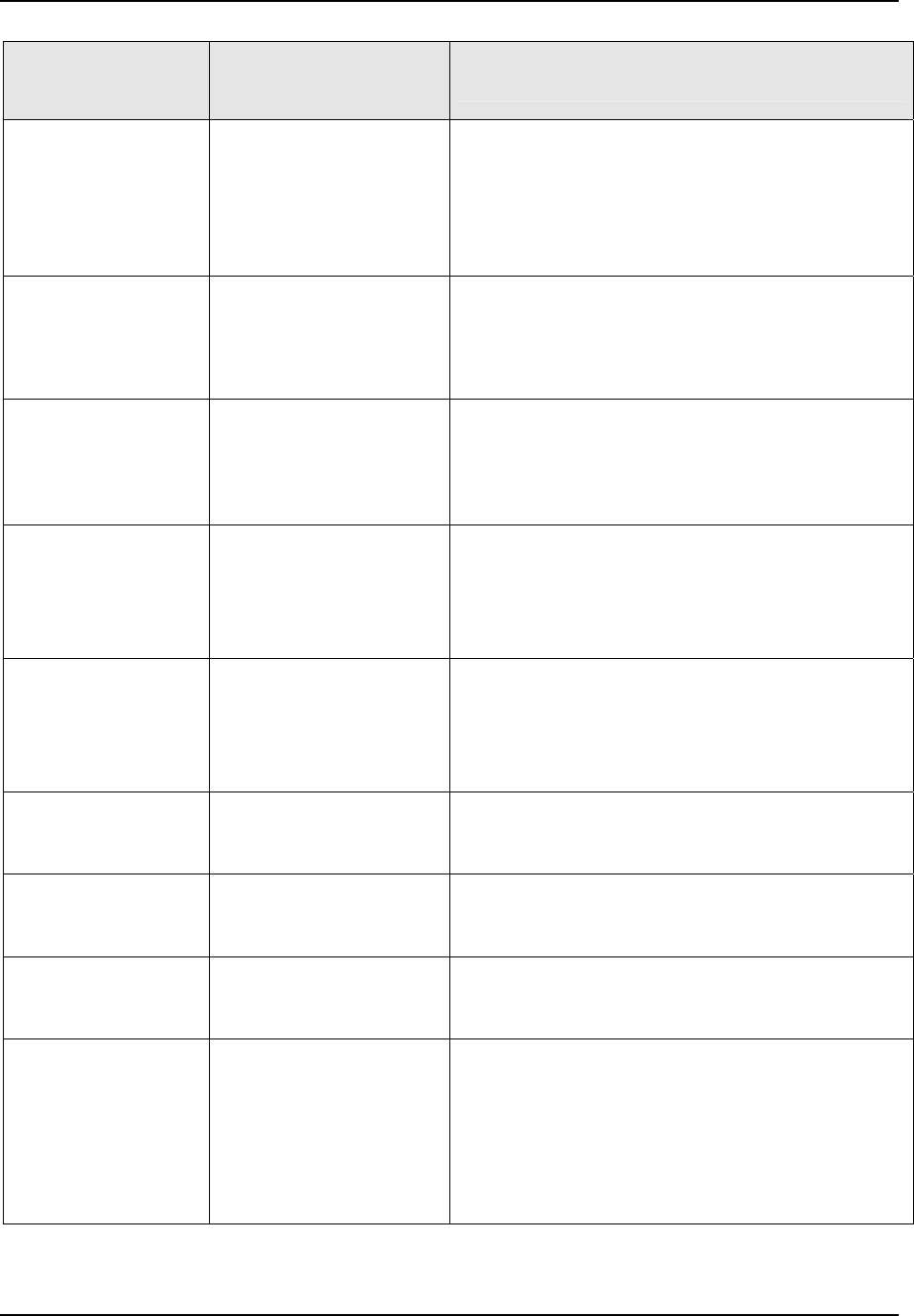
Configuration
140 UDC3500 Universal Digital Controller Product Manual March 2012
Function Prompt
Lower Display
Selections or
Range of Setting
Upper Display
Parameter
Definition
OUT RATE
ENABLE
DISABLE
OUTPUT CHANGE RATE—Enables or disables the
Output Change Rate. The maximum rate is set at
prompt PCT/M UP or PCT/M DN. Only available for
PID-A, PID-B, PD+MR control algorithms.
ENABLE—Allows output rate.
DISABLE—Disables output rate.
PCT/M UP
0 to 9999 % per minute
OUTPUT RATE UP VALUE—This selection limits
the rate at which the output can change upward.
Enter a value in percent per minute. Appears only if
OUT RATE is enabled. “0” means no output rate
applied.
PCT/M DN
0 to 9999 % per minute
OUTPUT RATE DOWN VALUE—This selection
limits the rate at which the output can change
downward. Enter a value in percent per minute.
Appears only if OUT RATE is enabled. “0” means no
output rate.
OUTHiLIM
HIGH OUTPUT LIMIT—This is the highest value of
output beyond which you do not want the controller
automatic output to exceed.
0 % to 100 %
–5 % to 105 %
For relay output types.
For current output types
OUTLoLIM
LOW OUTPUT LIMIT—This is the lowest value of
output below which you do not want the controller
automatic output to exceed.
0 % to 100 %
–5 % to 105 %
For relay output types.
For current output types
I Hi LIM
(Note 4)
Within the range of the
output limits
HIGH RESET LIMIT—This is the highest value of
output beyond which you do not want reset action to
occur
I Lo LIM
(Note 4)
Within the range of the
output limits
LOW RESET LIMIT—This is the lowest value of
output beyond which you do not want reset action to
occur.
DROPOFF
(Note 4)
–5 to 105 % of output
CONTROLLER DROPOFF VALUE—Output value
below which the controller output will drop off to the
low output limit value set in prompt OUTLoLIM.
DEADBAND
DEADBAND—An adjustable gap between the
operating ranges of output 1 and output 2 in which
neither output operates (positive value) or both
outputs operate (negative value).
–5.0 to 25.0 %
0.0 to 25.0 %
0.5 to 5.0 %
Time Duplex
On-Off Duplex
Position Proportional and Three Position Step
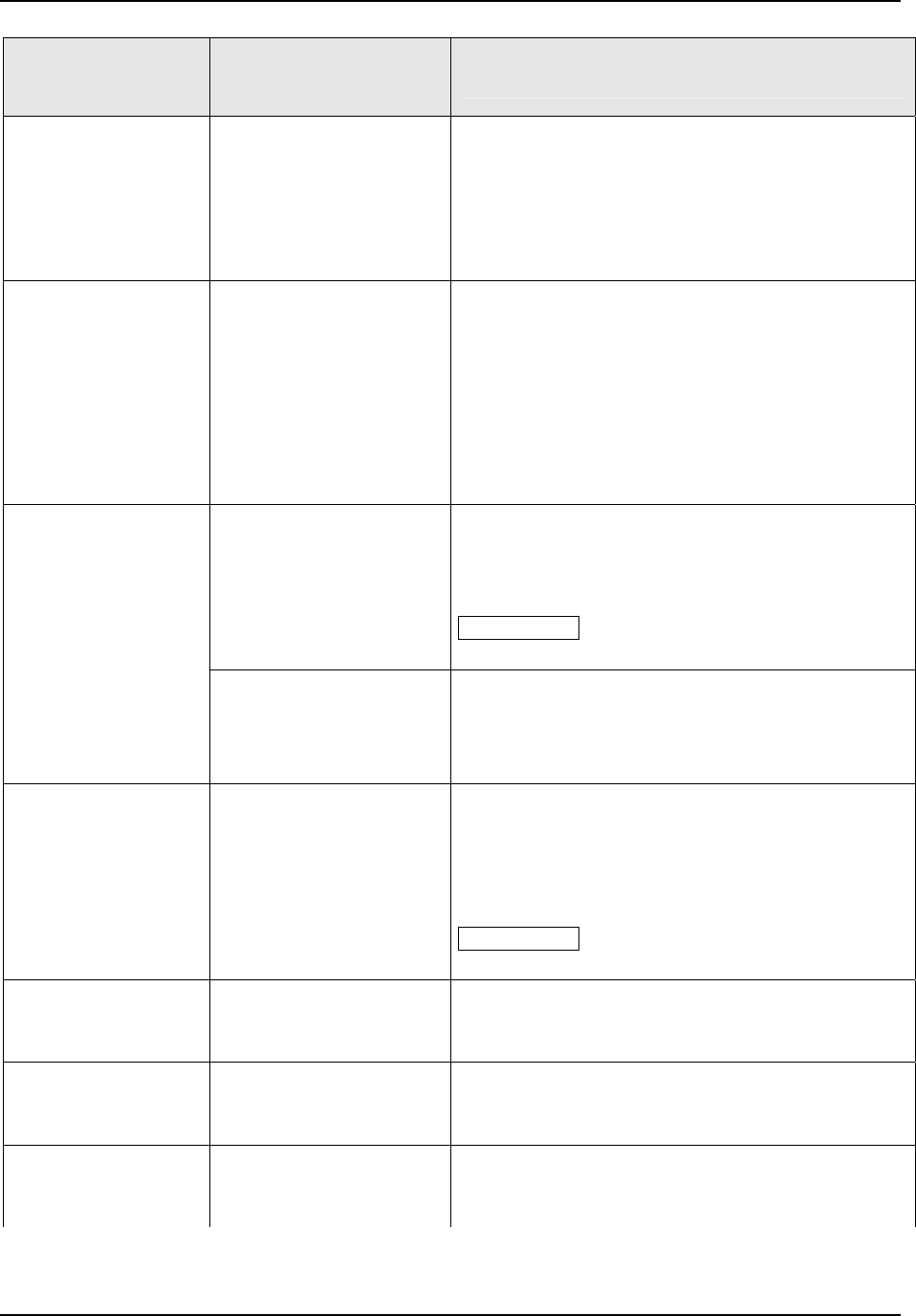
Configuration
March 2012 UDC3500 Universal Digital Controller Product Manual 141
Function Prompt
Lower Display
Selections or
Range of Setting
Upper Display
Parameter
Definition
OUT HYST
0.0 to 100.0 % of PV span
HYSTERESIS (OUTPUT RELAY) is an adjustable
overlap of the ON/OFF states of each control output.
This is the difference between the value of the
process variable at which the control outputs
energize and the value at which they de-energize.
Only applicable for ON/OFF control.
FAILMODE
NoLATCH
FAILSAFE MODE
NON-LATCHING—Controller stays in last mode that
was being used (automatic or manual); If unit was in
Automatic mode, then the output goes to the failsafe
value. (NOTE 1, NOTE 2)
LATCH
LATCHING—Controller goes to manual mode; If unit
was in Automatic mode, then the output goes to the
failsafe value. (NOTE 2)
FAILSAFE
0 to 100 %
FAILSAFE OUTPUT VALUE—The value used here
will also be the output level when you have
Communications SHED set to failsafe or when NO
BURNOUT is configured and the PV Source fails.
ATTENTION Applies for all output types except
Three Position Step Control.
0 PCT
100 PCT
THREE POSITION STEP FAILSAFE OUTPUT
0 PCT—Motor goes to closed position.
100 PCT—Motor goes to open position.
SW FAIL
0 PCT
100 PCT
Position Proportional motor position when slidewire
fails.
0 PCT—Motor goes to closed position.
100 PCT—Motor goes to open position.
ATTENTION PWR OUT must be configured for
FSAFE.
MAN OUT
0 to 100 %
POWER-UP PRESET MANUAL OUTPUT—At
power-up, the controller will go to manual and the
output to the value set here. (NOTE 1)
AUTO OUT
0 to 100 %
POWER-UP PRESET AUTOMATIC OUTPUT—At
power-up, the controller will begin its automatic
control at the output value set here. (NOTE 1)
PBorGAIN
(selection is used for
both loops)
PROPORTIONAL BAND UNITS—Select one of the
following for the Proportional (P) term of the PID
algorithm:
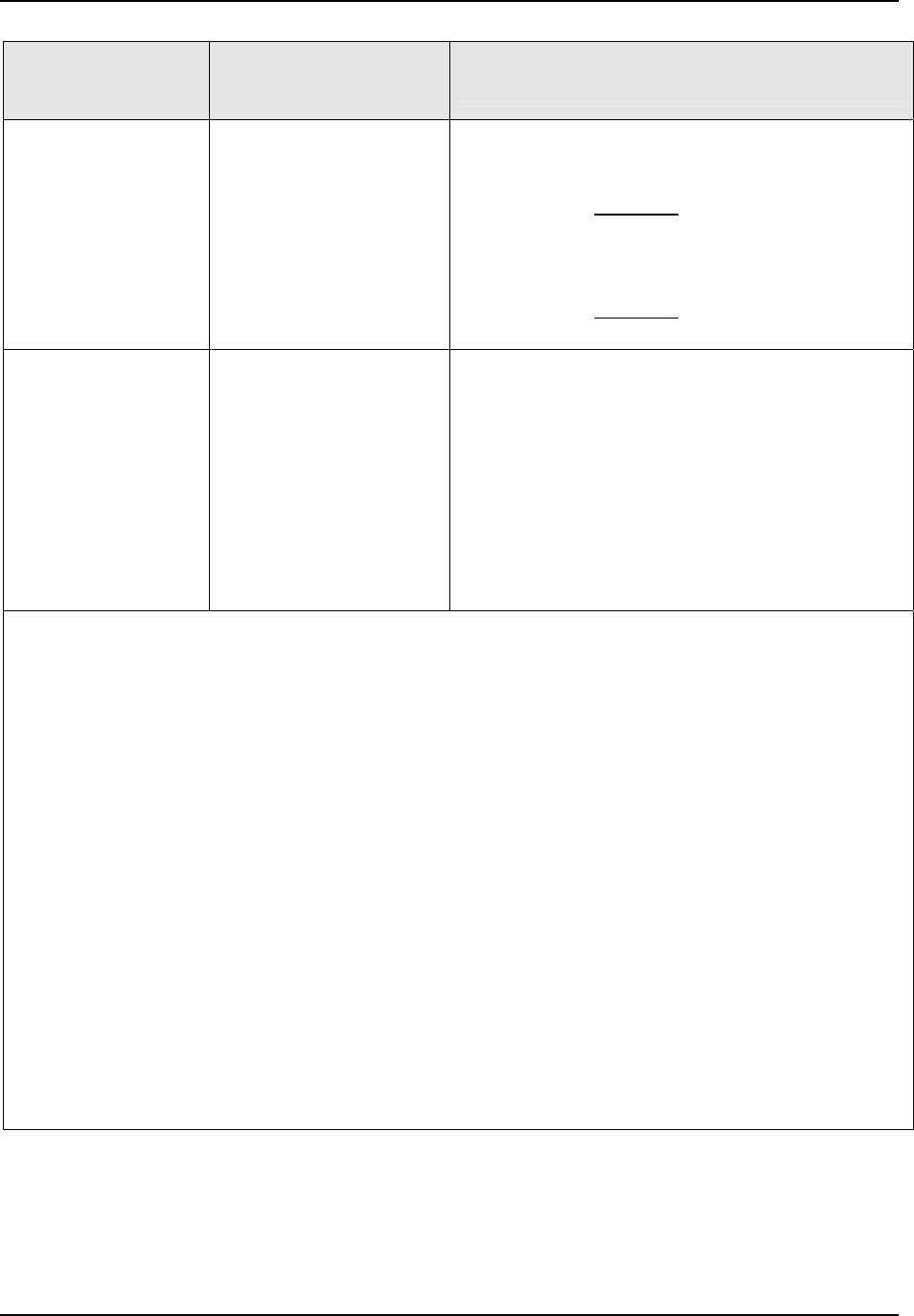
Configuration
142 UDC3500 Universal Digital Controller Product Manual March 2012
Function Prompt
Lower Display
Selections or
Range of Setting
Upper Display
Parameter
Definition
PB PCT
PROPORTIONAL BAND selects units of percent
proportional band for the P term of the PID
algorithm.
Where: PB % = 100 % FS
GAIN
GAIN
GAIN selects the unitless term of gain for the P term
of the PID algorithm.
Where: GAIN = 100 % FS
PB%
MINUTESorRPM
(selection is used for
both loops)
RESET UNITS—Selects units of minutes per repeat
or repeats per minute for the “I” term of the PID
algorithm.
20 Repeats per Minute = 0.05 Minutes per Repeat.
RPM
REPEATS PER MINUTE—The number of times per
minute that the proportional action is repeated by
reset.
MINUTES
MINUTES PER REPEAT—The time between each
repeat of the proportional action by reset.
NOTE 1: Does not apply to Three Position Step Control.
NOTE 2: If controller is in Manual mode when a failure occurs, then the output will maintain its value.
NOTE 3:These selections appear when:
A) Control Algorithm is selected for 3PSTEP.
B) Control Algorithm is selected for PD+MR and Output Algorithm is selected for Position
Proportional.
NOTE 4: Reset limits and Dropoff are not displayed when Three Position Step Control is configured.
NOTE 5: If PV source is one of the Analog Inputs, then the SP HiLIM and SP LoLIM values must be
between the Input High and Input Low values for the input type configured. If the PV source is an Input
Algorithm configured for:
Carbon Potential; then the SP HiLIM and SP LoLIM values must be between 0.000 and 2.000
Dewpoint; then the SP HiLIM and SP LoLIM values must be between –50 and +100
Oxygen; then the SP HiLIM and SP LoLIM values must be between 0 to 40.00
Weighted Average, Summer, Subtractor, High or Low; then the SP HiLIM and SP LoLIM values
must be between the configured CALC HI and CALC LOW values. CALC HI and CALC LOW can
be set anywhere between –999 and 9999.
Math A, Math B, Math C or Math D; then the SP HiLIM and SP LoLIM values can be set
anywhere between –999 and 9999 and are not limited to the CALC HI and CALC LOW values
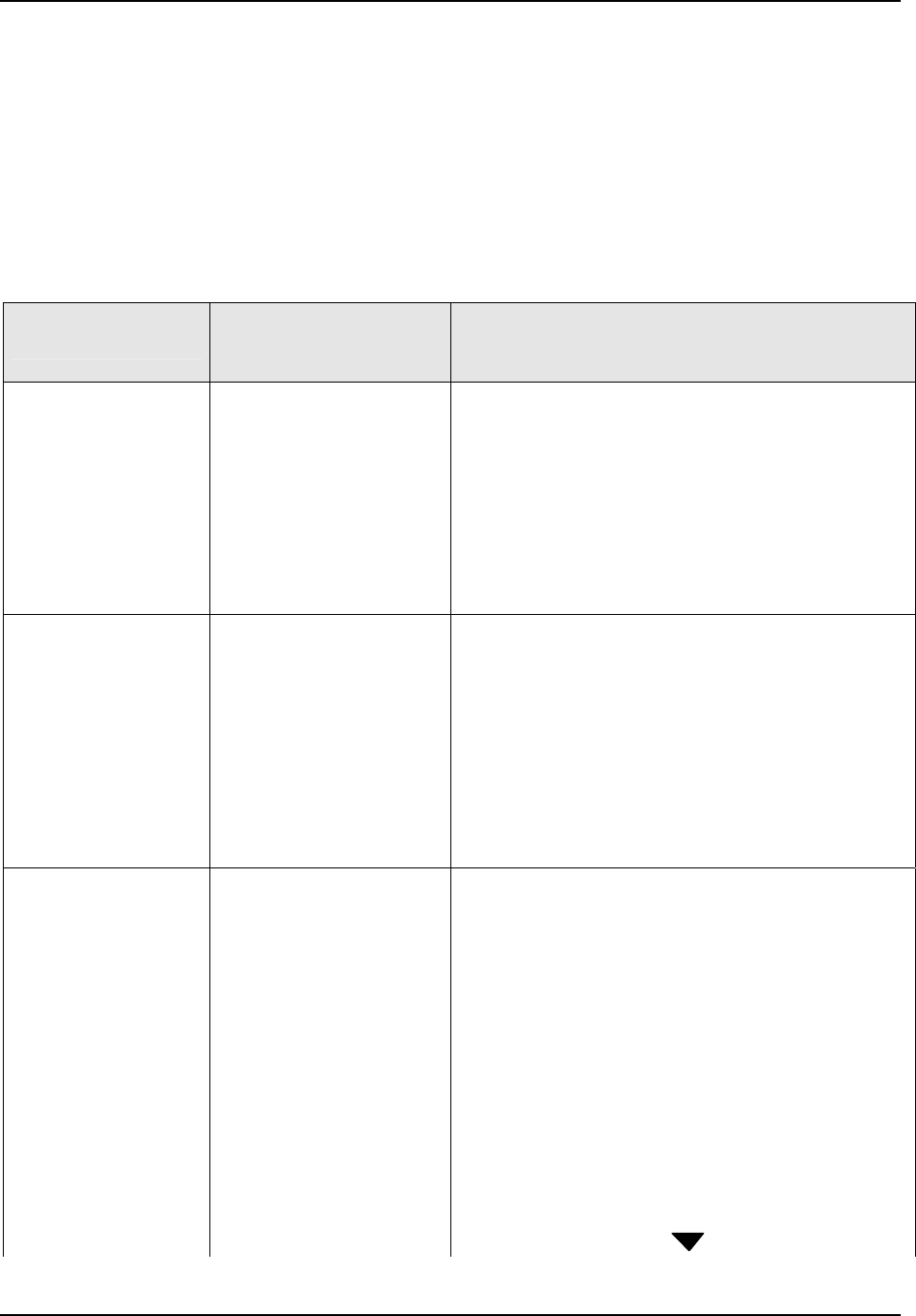
Configuration
3.21 Control 2 Set Up Group
Introduction
The functions listed in this group deal with how the controller will control the Loop 2
process including: Number of Tuning Parameter Sets, Setpoint Source, Tracking, Power-
up Recall, Setpoint Limits, Output Direction and Limits, Deadband, and Hysteresis.
Function Prompts
Table 3-21 CONTROL2 Group Function Prompts
Function Prompt
Lower Display
Selections or
Range of Setting
Upper Display
Parameter
Definition
PV 2 SRC
INPUT 1
INPUT 2
INPUT 3
INPUT 4
INPUT 5
IN ALG1
IN ALG2
PROCESS VARIABLE SOURCE—Selects the
source of the Process Variable for Loop 2.
INPUT 1
INPUT 2
INPUT 3
INPUT 4
INPUT 5
INPUT ALGORITHM 1
INPUT ALGORITHM 2
LINK LOOPS MODE AND SETPOINT—Link
together the operation of the two loops. If either loop
changes mode due to a front panel change, digital
input action, or failsafe action, then the other loop
will track that mode and/or local setpoint.
LINK LPS
DISABLE
AUTOMAN
SP1
AM+
SP1
DISABLE—Disable. Loops operate independently.
LINK MODES—Links A/M modes on both loops.
LINK LSP1—Links Local Setpoint 1 for both loops.
LINK MODES AND SETPOINTS—Links both
modes and Local Setpoint 1 for both loops.
NUMBER OF TUNING PARAMETER SETS—This
selection lets you choose one or two sets of tuning
constants (gain, rate, and reset).
PID SETS
1 ONLY
ONE SET ONLY—Only one set of tuning
parameters is available. Configure the values for:
Gain (proportional band)
Rate
Reset
Time
Cycle Time (if time proportional is used)
2KEYBD
TWO SETS KEYBOARD SELECTABLE—Two sets
of tuning parameters can be configured and can be
selected at the operator interface or by using the
Digital Inputs.
Press
Lower/Display key until you see PID SET3 or
PID SET4 then press or
to switch between
March 2012 UDC3500 Universal Digital Controller Product Manual 143
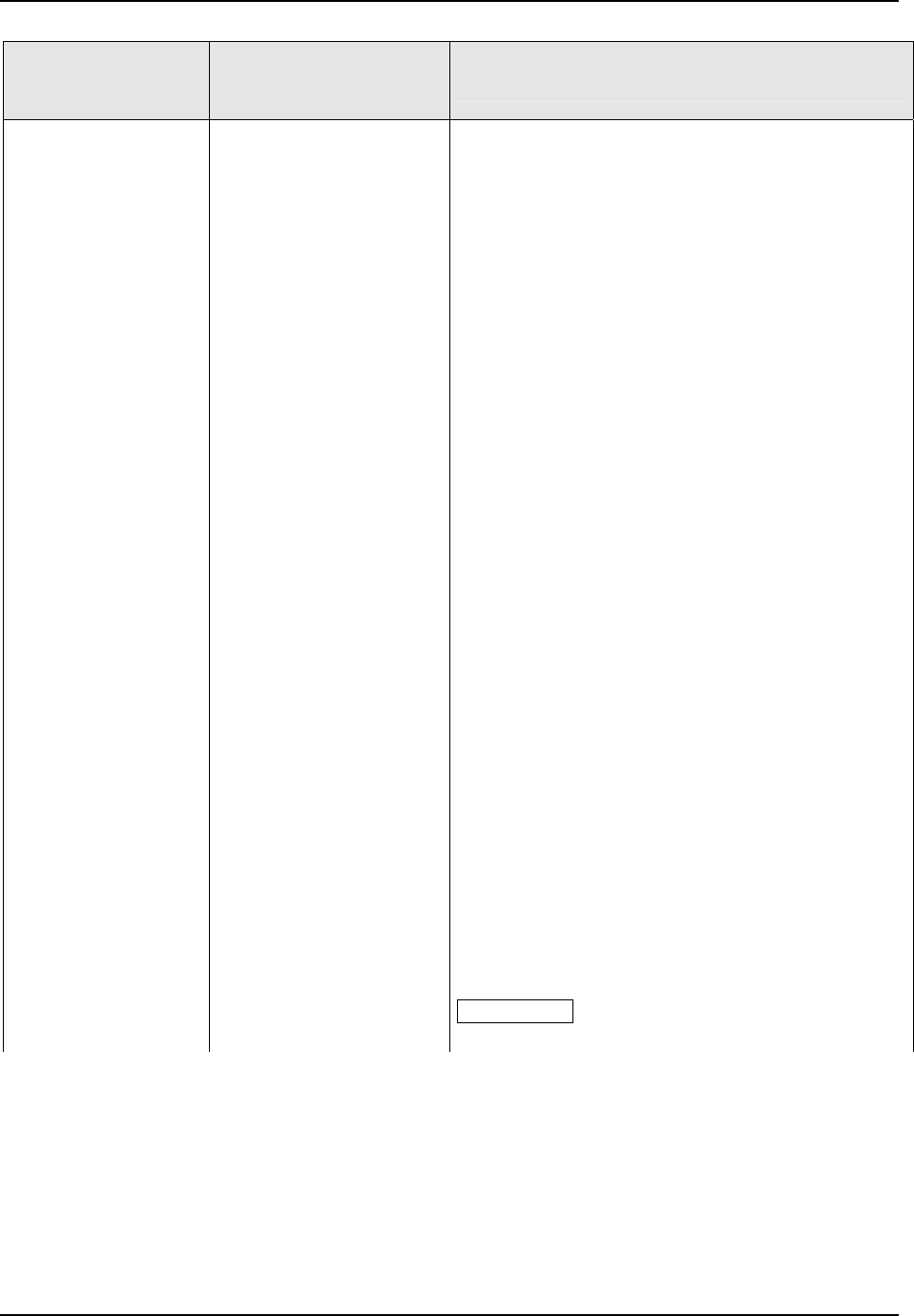
Configuration
144 UDC3500 Universal Digital Controller Product Manual March 2012
Function Prompt
Lower Display
Selections or
Range of Setting
Upper Display
Parameter
Definition
sets. Configure the values for:
Gain #3, Rate #3 , Reset #3, Cycle #3 Time
Gain #4, Rate #4, Reset #4, Cycle #4 Time
2PV SW
TWO SETS PV AUTOMATIC SWITCHOVER—
When the process variable is GREATER than the
value set at prompt SW VALUE (Switchover Value),
the controller will use Gain #3, Rate #3, Reset #3,
and Cycle #3 Time. The active PID SET can be read
in the lower display.
When the process variable is LESS than the value
set at prompt SW VALUE, the controller will use
Gain #4, Rate #4, Reset #4, and Cycle #4 Time. The
active PID SET can be read in the lower display.
Other prompts affected: SW VALUE
2SP SW
TWO SETS SP AUTOMATIC SWITCHOVER—
When the setpoint is GREATER than the value set at
prompt SW VALUE (Switchover Value), the
controller will use Gain #3, Rate #3, Reset #3, and
Cycle #3.
When the setpoint is LESS than the value set at
prompt SW VALUE, the controller will use Gain #4,
Rate #4, Reset #4, and Cycle #4.
Other prompts affected: SW VALUE
4SP SW
FOUR SETS SP AUTOMATIC SWITCHOVER—
When the setpoint is GREATER than the value set at
prompt SW VALUE (Switchover Value), the
controller will use Gain, Rate, Reset, and Cycle.
When the setpoint is LESS than the value set at
prompt SW VALUE, the controller will use Gain #2,
Rate #2, Reset #2, and Cycle #2.
Similarly, the controller switches between the other
PID sets based upon the values configured for SW
VAL 2 and SW VAL 3.
ATTENTION Other prompts affected: SW VALUE,
SW VAL 2 and SW VAL 3.
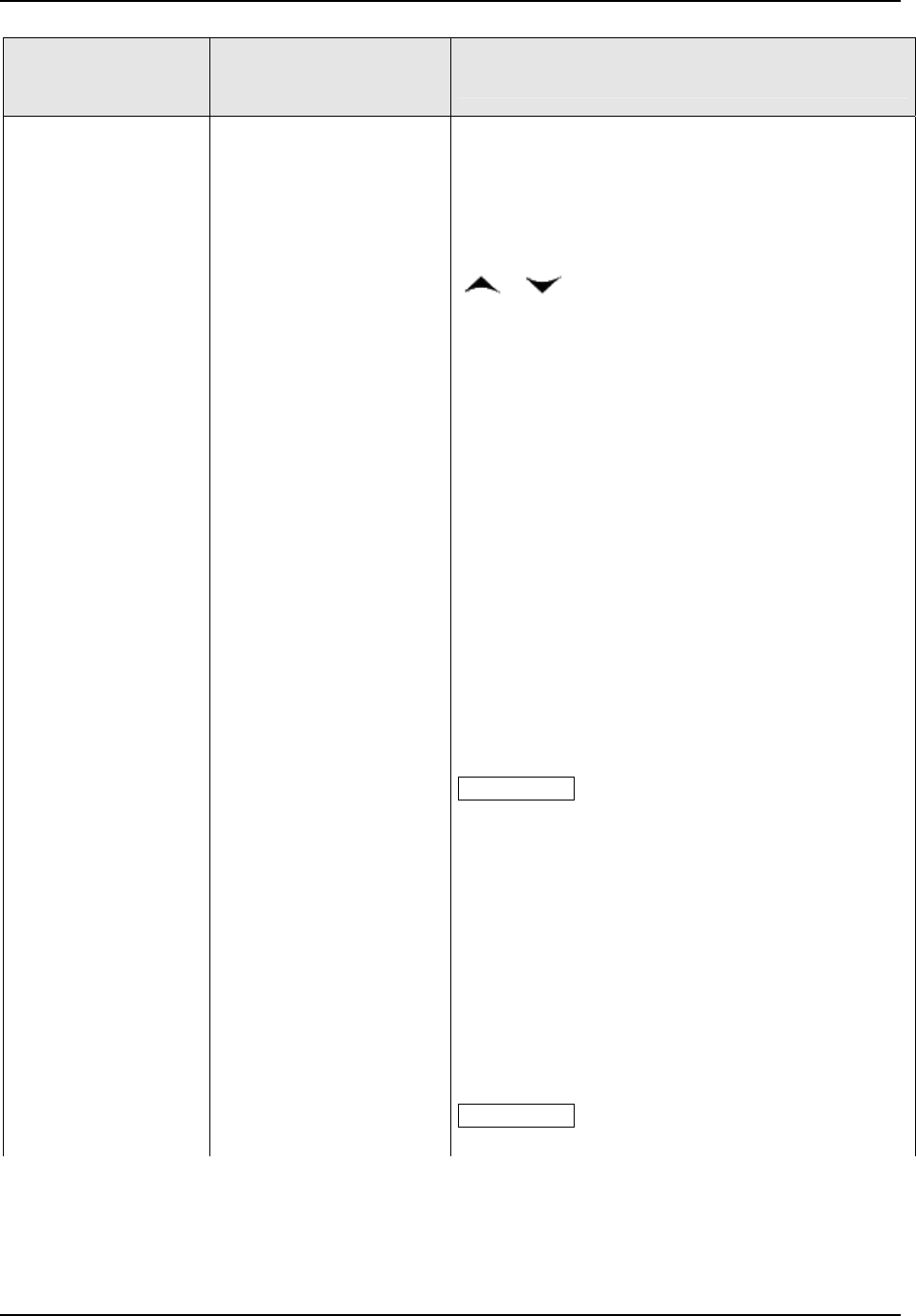
Configuration
March 2012 UDC3500 Universal Digital Controller Product Manual 145
Function Prompt
Lower Display
Selections or
Range of Setting
Upper Display
Parameter
Definition
4KEYBD
FOUR SETS KEYBOARD SELECTABLE—Two
sets of tuning parameters can be configured and can
be selected at the operator interface or by using the
Digital Inputs.
Press the
Lower/Display key until you see PID SET1
or PID SET2 or PID SET3 or PID SET4 then press
or to switch between the sets.
Configure the values for:
Gain, Rate, Reset, Cycle Time
Gain #2, Rate #2, Reset #2, Cycle #2 Time
Gain #3, Rate #3, Reset #3, Cycle #3 Time
Gain #4, Rate #4, Reset #4, Cycle #4 Time
4PV SW
FOUR SETS PV AUTOMATIC SWITCHOVER—
When the process variable is GREATER than the
value set at prompt SW VALUE (Switchover Value),
the controller will use Gain, Rate, Reset, and Cycle
Time. The active PID SET can be read in the lower
display.
When the process variable is LESS than the value
set at prompt SW VALUE, the controller will use
Gain #2, Rate #2, Reset #2, and Cycle #2 Time. The
active PID SET can be read in the lower display.
Similarly, the controller switches between the other
PID sets based upon the values configured for SW
VAL 2 and SW VAL 3.
ATTENTION Other prompts affected: SW VALUE,
SW VAL 2 and SW VAL 3.
4SP SW
FOUR SETS SP AUTOMATIC SWITCHOVER—
When the setpoint is GREATER than the value set at
prompt SW VALUE (Switchover Value), the
controller will use Gain, Rate, Reset, and Cycle.
When the setpoint is LESS than the value set at
prompt SW VALUE, the controller will use Gain #2,
Rate #2, Reset #2, and Cycle #2.
Similarly, the controller switches between the other
PID sets based upon the values configured for SW
VAL 2 and SW VAL 3.
ATTENTION Other prompts affected: SW VALUE,
SW VAL 2 and SW VAL 3.
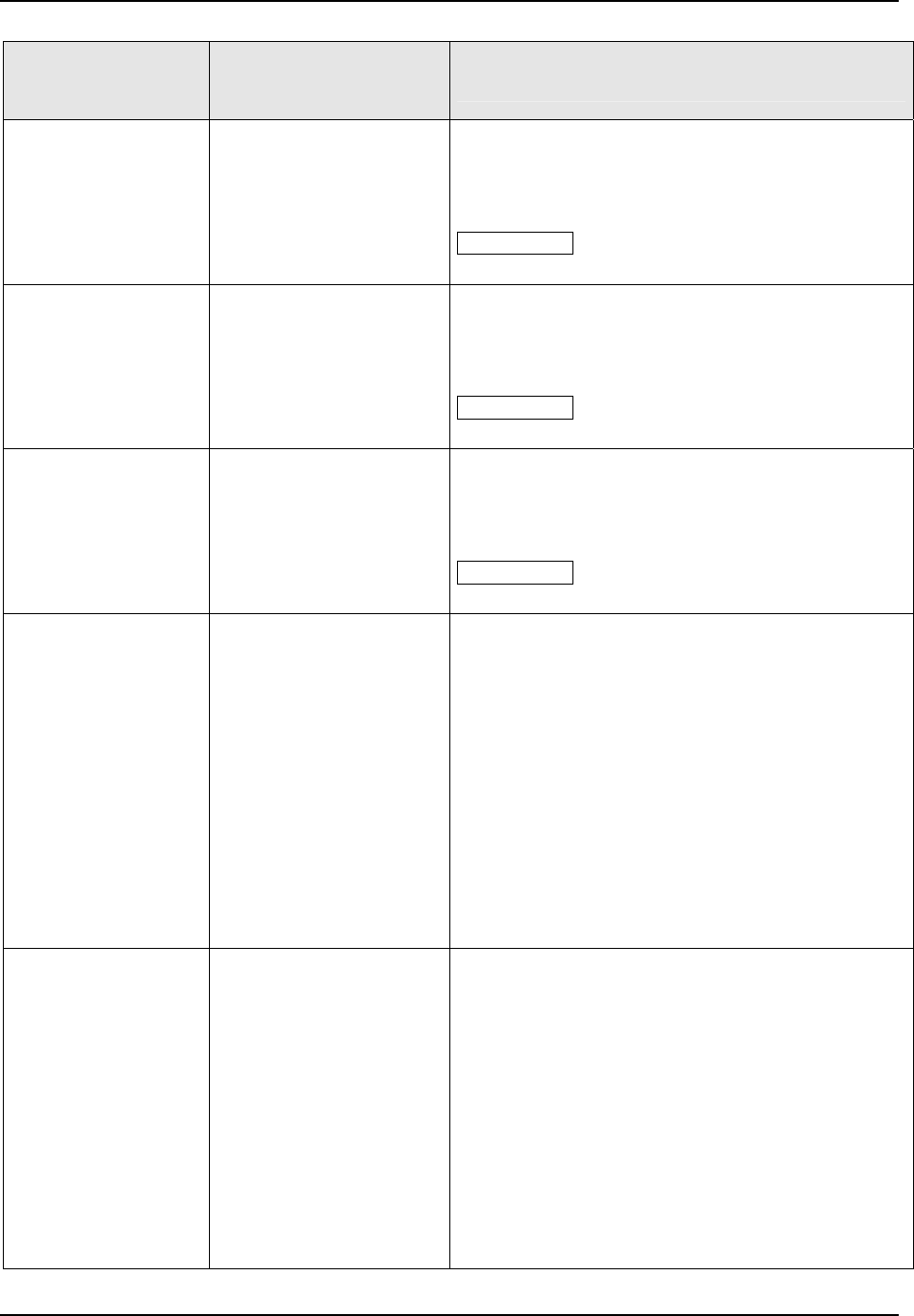
Configuration
146 UDC3500 Universal Digital Controller Product Manual March 2012
Function Prompt
Lower Display
Selections or
Range of Setting
Upper Display
Parameter
Definition
SW VAL12
Value in engineering units
within PV or SP range
limits
AUTOMATIC SWITCHOVER VALUE—This is the
value of Process Variable or Setpoint at which the
controller will switch from Tuning Constant Set #1 to
Set #2.
ATTENTION Only appears when PID SETS
selection is configured for 2 or 4 PID Sets.
SW VAL23
Value in engineering units
within PV or SP range
limits
AUTOMATIC SWITCHOVER VALUE—This is the
value of Process Variable or Setpoint at which the
controller will switch from Tuning Constant Set #2 to
Set #3.
ATTENTION Only appears when PID SETS
selection is configured for 4 PID Sets.
SW VAL34
Value in engineering units
within PV or SP range
limits
AUTOMATIC SWITCHOVER VALUE—This is the
value of Process Variable or Setpoint at which the
controller will switch from Tuning Constant Set #3 to
Set #4.
ATTENTION Only appears when PID SETS
selection is configured for 4 PID Sets.
LSP’S
LOCAL SETPOINT SOURCE—This selection
determines what your local setpoint source will be.
1 ONLY
LOCAL SETPOINT—The setpoint entered from the
keyboard.
TWO
TWO LOCAL SETPOINTS—This selection lets you
switch between two local setpoints using the
SP/Select key.
THREE
THREE LOCAL SETPOINTS—This selection lets
you switch between three local setpoints using the
SP/Select key.
FOUR
FOUR LOCAL SETPOINTS—This selection lets you
switch between three local setpoints using the
SP/Select key.
RSP SRC
NONE
INPUT 1
INPUT 2
INPUT 3
INPUT 4
INPUT 5
IN AL1
REMOTE SETPOINT SOURCE—This selection
determines what your remote setpoint source will be
when toggled by the
SP/Select key or Digital Input.
NONE—No remote setpoint.
INPUT 1—Remote Setpoint using Input 1.
INPUT 2—Remote Setpoint using Input 2.
INPUT 3—Remote Setpoint using Input 3.
INPUT 4—Remote Setpoint using Input 4.
INPUT 5—Remote Setpoint using Input 5.
INPUT ALGORITHM 1—Remote Setpoint using
Input Algorithm 1.
INPUT ALGORITHM 2—Remote Setpoint using
Input Algorithm 2.
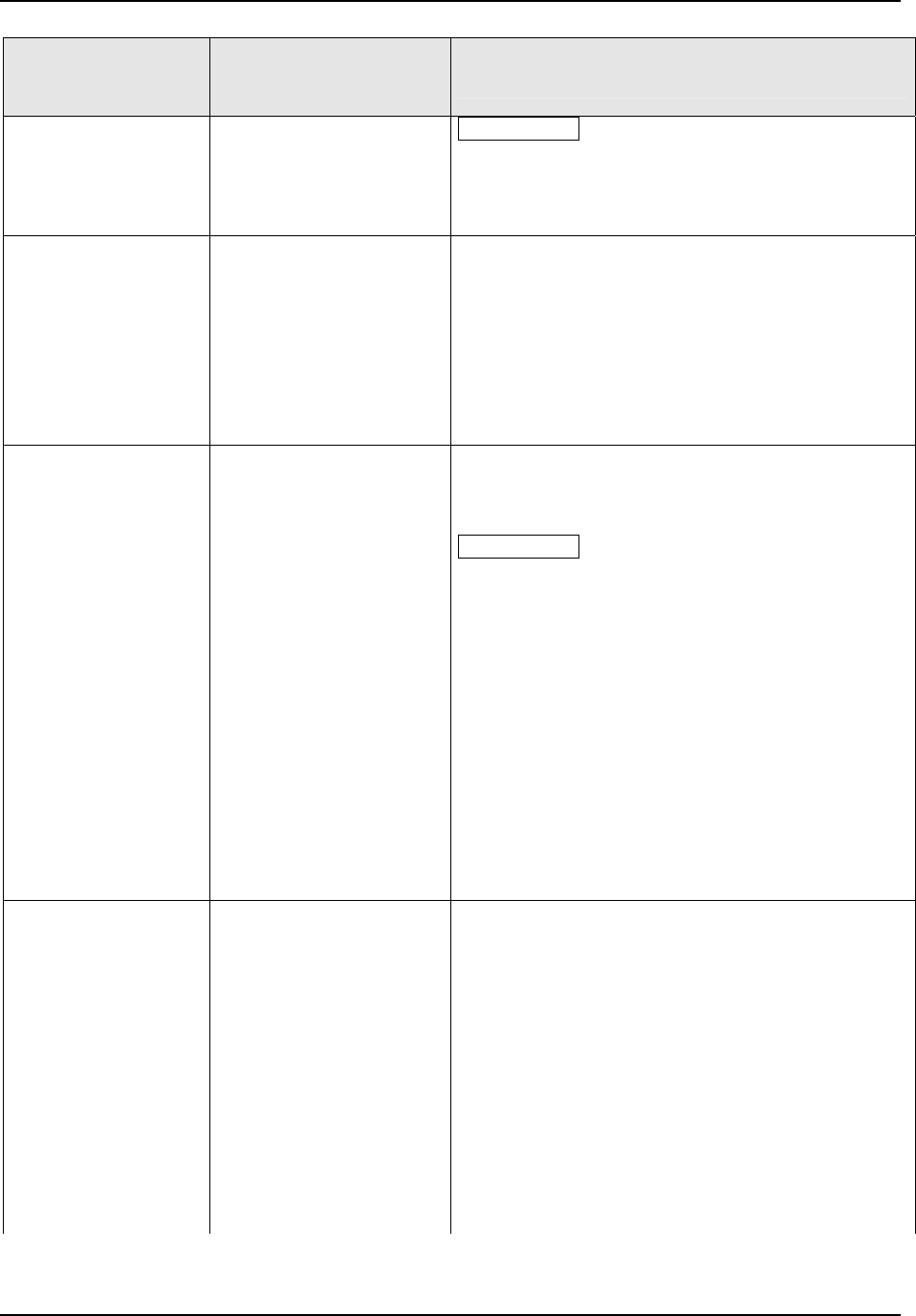
Configuration
March 2012 UDC3500 Universal Digital Controller Product Manual 147
Function Prompt
Lower Display
Selections or
Range of Setting
Upper Display
Parameter
Definition
IN AL2
ATTENTION To cycle through the available local
setpoints and remote setpoint, press and hold in the
SP/Select key. When the key is released, the
setpoint selection currently displayed will be the new
setpoint selection.
AUTOBIAS
ENABLE
DISABLE
AUTO BIAS—Used for bumpless transfer when
transferring from local setpoint to remote setpoint.
Auto Bias calculates and adds a bias to remote
setpoint input each time a transfer is made. Available
for any analog input used as the RSP source and if
no tracking is selected.
ENABLE—Enables auto bias.
DISABLE—Disables auto bias.
SPTRACK
SETPOINT TRACKING—The local setpoint can be
configured to track either PV or RSP as listed below.
Not configurable when Auto Bias is set.
ATTENTION For selections other than NONE,
LSP is stored in nonvolatile memory only when there
is a mode change; i.e., when switching from RSP to
LSP or from Manual to Automatic. If power is lost,
then the current LSP value is also lost.
NONE
NO TRACKING—If local setpoint tracking is not
configured, the LSP will not be altered when transfer
from RSP to LSP is made.
PV
PV—Local setpoint tracks the PV when in manual
mode.
RSP
RSP—Local setpoint tracks remote setpoint. When
the controller transfers out of remote setpoint, the
last value of the remote setpoint (RSP) is inserted
into the local setpoint.
PWR MODE
POWER UP CONTROLLER MODE RECALL—This
selection determines which mode and setpoint the
controller will use for Loop 2 when the controller
restarts after a power loss.
MANUAL
MANUAL, LSP—At power-up, the controller will use
manual mode with the local setpoint displayed.
A LSP
AUTOMATIC MODE, LAST LSP—At power-up, the
controller will use automatic mode with the last Local
Setpoint used before power down displayed.
A RSP
AUTOMATIC MODE, LAST RSP—At power-up, the
controller will use automatic mode with the last
Remote Setpoint used before power down
displayed.
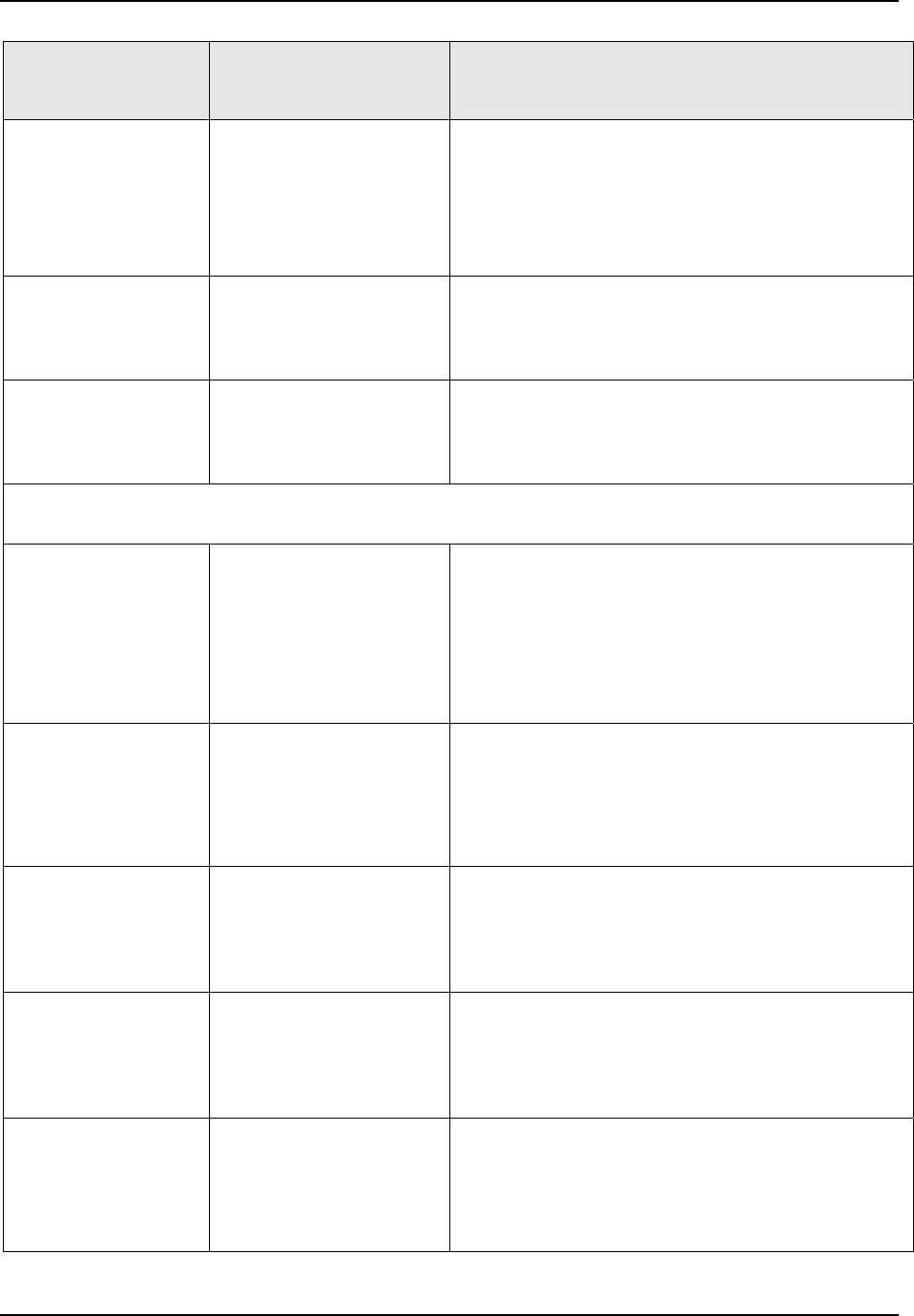
Configuration
148 UDC3500 Universal Digital Controller Product Manual March 2012
Function Prompt
Lower Display
Selections or
Range of Setting
Upper Display
Parameter
Definition
AM SP
LAST MODE/LAST SETPOINT—At power-up, the
controller will use the last mode and last Setpoint
used before power down.
AM LSP
LAST MODE/LAST LOCAL SETPOINT—At power-
up, the controller will use the last mode and last
Local Setpoint used before power down.
SP HiLIM
NOTE 1
SETPOINT HIGH LIMIT *—This selection prevents
the local and remote setpoints from going above the
value selected here. The setting must be equal or
less than the upper range of the inputs.
SP LoLIM
NOTE 1
SETPOINT LOW LIMIT *—This selection prevents
the local and remote setpoints from going below the
value selected here. The setting must be equal or
greater than the lower range of the inputs.
* The local setpoint will automatically adjust itself to be within the setpoint limit range. For example, if SP
= 1500 and SP HiLIM is changed to 1200, then the SP will be changed to 1200.
ACTION
CONTROL OUTPUT DIRECTION—Select direct or
reverse acting control.
DIRECT
DIRECT ACTING CONTROL—The controller’s
output increases as the process variable increases.
REVRSE
REVERSE ACTING CONTROL—The controller’s
output decreases as the process variable increases.
OUT RATE
DISABLE
ENABLE
OUTPUT CHANGE RATE—Enables or disables the
Output Change Rate. The maximum rate is set at
prompt PCT/M UP or PCT/M DN.
DISABLE—Disables output rate.
ENABLE—Allows output rate.
PCT/M UP
0 to 9999 % per minute
OUTPUT RATE UP VALUE—This selection limits
the rate at which the output can change upward.
Enter a value in percent per minute. Appears only if
OUT RATE is enabled. “0” means no output rate
applied.
PCT/M DN
0 to 9999 % per minute
OUTPUT RATE DOWN VALUE—This selection
limits the rate at which the output can change
downward. Enter a value in percent per minute.
Appears only if OUT RATE is enabled. “0” means no
output rate.
OUTHiLIM
HIGH OUTPUT LIMIT—This is the highest value of
output beyond which you do not want the controller
automatic output to exceed.
0 % to 100 %
–5 % to 105 %
For relay output types.
For current output types
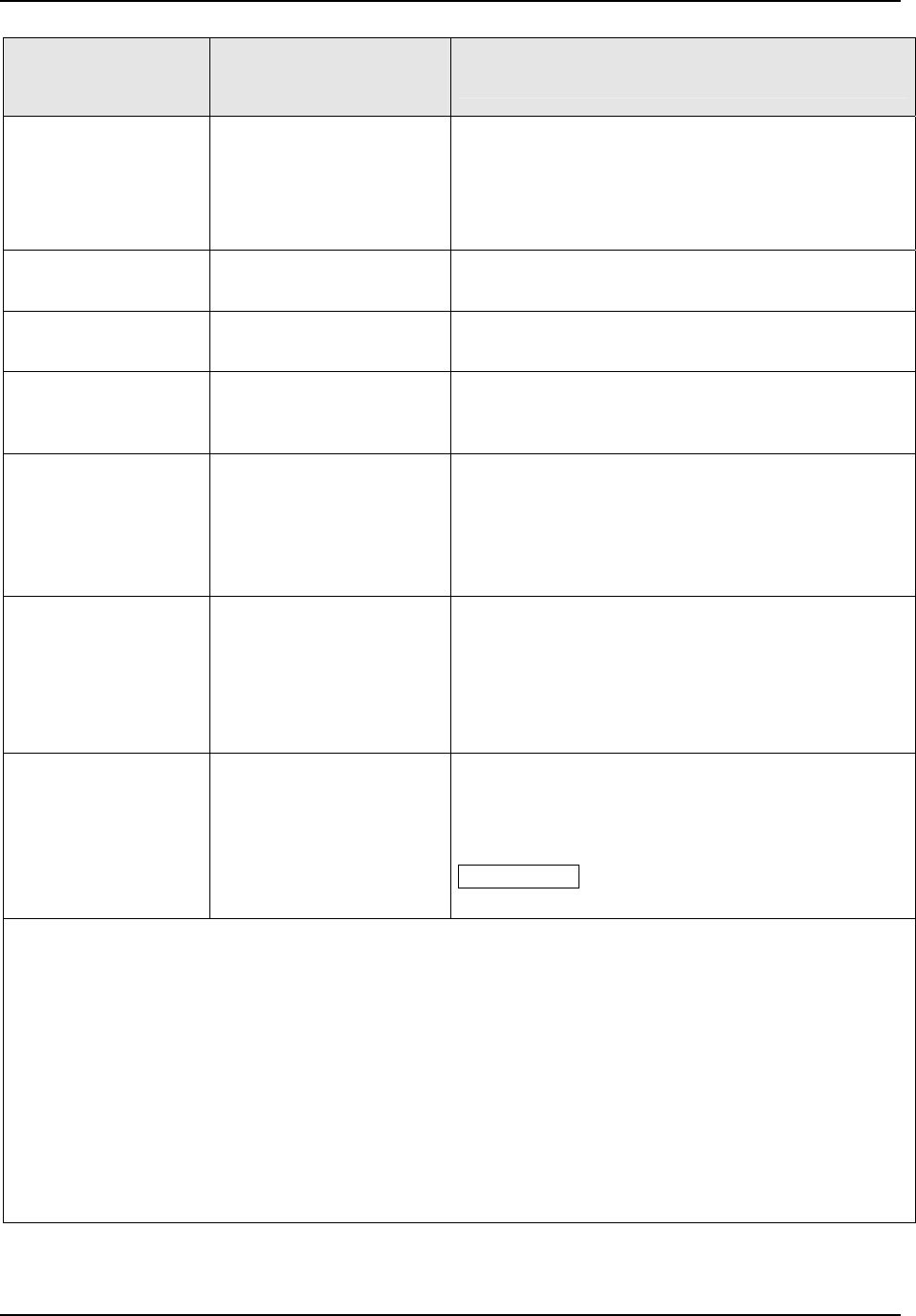
Configuration
March 2012 UDC3500 Universal Digital Controller Product Manual 149
Function Prompt
Lower Display
Selections or
Range of Setting
Upper Display
Parameter
Definition
OUTLoLIM
LOW OUTPUT LIMIT—This is the lowest value of
output below which you do not want the controller
automatic output to exceed.
0 % to 100 %
–5 % to 105 %
For relay output types.
For current output types
I Hi LIM
Within the range of the
output limits
HIGH RESET LIMIT—This is the highest value of
output beyond which you want no reset to occur.
I Lo LIM
Within the range of the
output limits
LOW RESET LIMIT—This is the lowest value of
output beyond which you want no reset to occur.
DROPOFF
–5 to 105 % of output
CONTROLLER DROPOFF VALUE—Output value
below which the controller output will drop off to the
low output limit value set in prompt OUTLoLIM.
DEADBAND
DEADBAND—An adjustable gap between the
operating ranges of output 1 and output 2 in which
neither output operates (positive value) or both
outputs operate (negative value).
–5.0 to 25.0 % Time Duplex
FAILMODE
NoLATCH
LATCH
FAILSAFE MODE—How the controller operates
during a Failsafe condition.
NON-LATCHING—Controller stays in last mode
(automatic or manual); output goes to failsafe value.
LATCHING—Controller goes to manual mode;
output goes to failsafe value.
FAILSAFE
0 to 100 %
FAILSAFE OUTPUT 2 VALUE—The value used
here will also be the output level when you have
Communications SHED set to failsafe or when NO
BURNOUT is configured and the PV Source fails.
ATTENTION At power-up, the Loop 2 Output is set
to the Failsafe Output 2 value.
NOTE 1: If PV source is one of the Analog Inputs, then the SP HiLIM and SP LoLIM values must be
between the Input High and Input Low values for the input type configured. If the PV source is an Input
Algorithm configured for:
Carbon Potential, then the SP HiLIM and SP LoLIM values must be between 0.000 and 2.000
Dewpoint, then the SP HiLIM and SP LoLIM values must be between –50 and +100
Oxygen, then the SP HiLIM and SP LoLIM values must be between 0 to 40.00
Weighted Average, Summer, Subtractor, High or Low, then the SP HiLIM and SP LoLIM values
must be between the configured CALC HI and CALC LOW values. CALC HI and CALC LOW can
be set anywhere between –999 and 9999.
Math A, Math B, Math C or Math D, then the SP HiLIM and SP LoLIM values can be set
anywhere between –999 and 9999 and are not limited to the CALC HI and CALC LOW values.
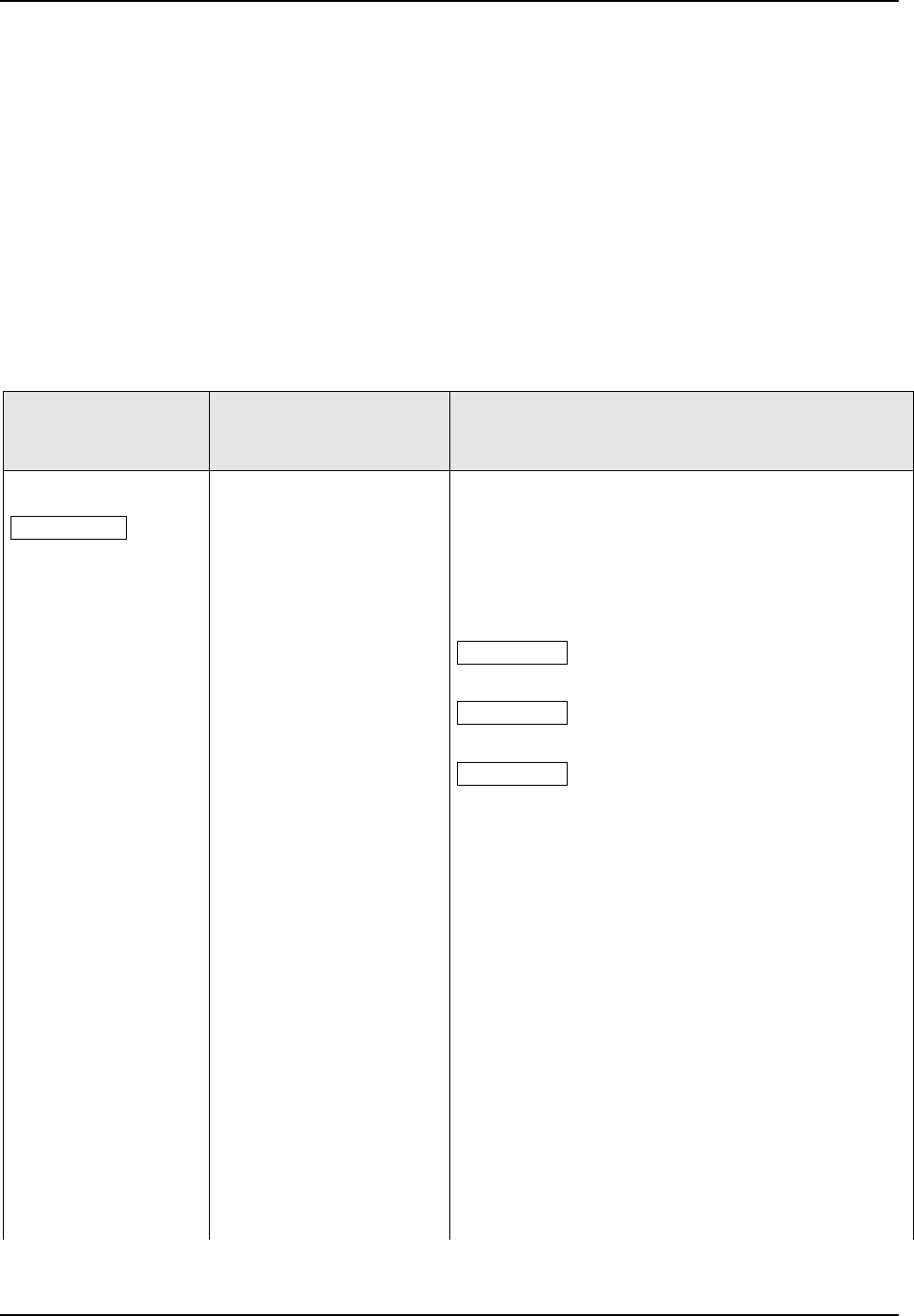
Configuration
3.22 Options Set Up Group
Introduction
The Options group lets you configure the remote mode switch (Digital Inputs) to a
specific contact closure response, or configure Second Current Output or Third Current
Output to be a specific selection with desired scaling.
The UDC3500 has three current outputs, two of which are configured in this Set Up
Group.
The UDC3500 has four digital inputs. Loop assignments are made in this Set Up Group.
Function Prompts
Table 3-22 OPTION Group Function Prompts
Selections or
Range of Setting
Upper Display
Parameter
Definition
Function Prompt
Lower Display
CUR OUT2
ATTENTION
Prompts for the
Second Current
Output Selection
appear only if the
Second Current
Output option is
installed.
SECOND CURRENT OUTPUT SELECTION
This selection provides a milliamp output
representing one of several control parameters. The
display for the Second Current Output viewing will be
in engineering units for all but output. Output will be
displayed in percent.
ATTENTION Other prompts affected by these
selections: 4mA VAL and 20mA VAL.
ATTENTION OUTPUT cannot be configured when
Three Position Step Control is used.
ATTENTION When Loop 2 Output is configured for
CURRENT and there is no Third Current Output
option installed, the Second Current Output is forced
to “OUTPUT 2”.
DISABLE
NO SECOND CURRENT OUTPUT—Current Output
disabled and output set to 0 mA.
INPUT 1
INPUT 1—This represents the configured range of
Input 1.
FOR EXAMPLE:
Input 1 Type = J Thermocouple (0 °F to 1600 °F)
Second Current Output Low Scale Value = 0.0
Second Current Output High Scale Value = 1600
CO Range = 4-20 mA
Then:
0 °F display = 0 % output (4 mA)
800 °F display = 50 % output (12 mA)
1600 °F display = 100 % output (20 mA)
INPUT 2
INPUT 2—Same as Input 1
150 UDC3500 Universal Digital Controller Product Manual March 2012
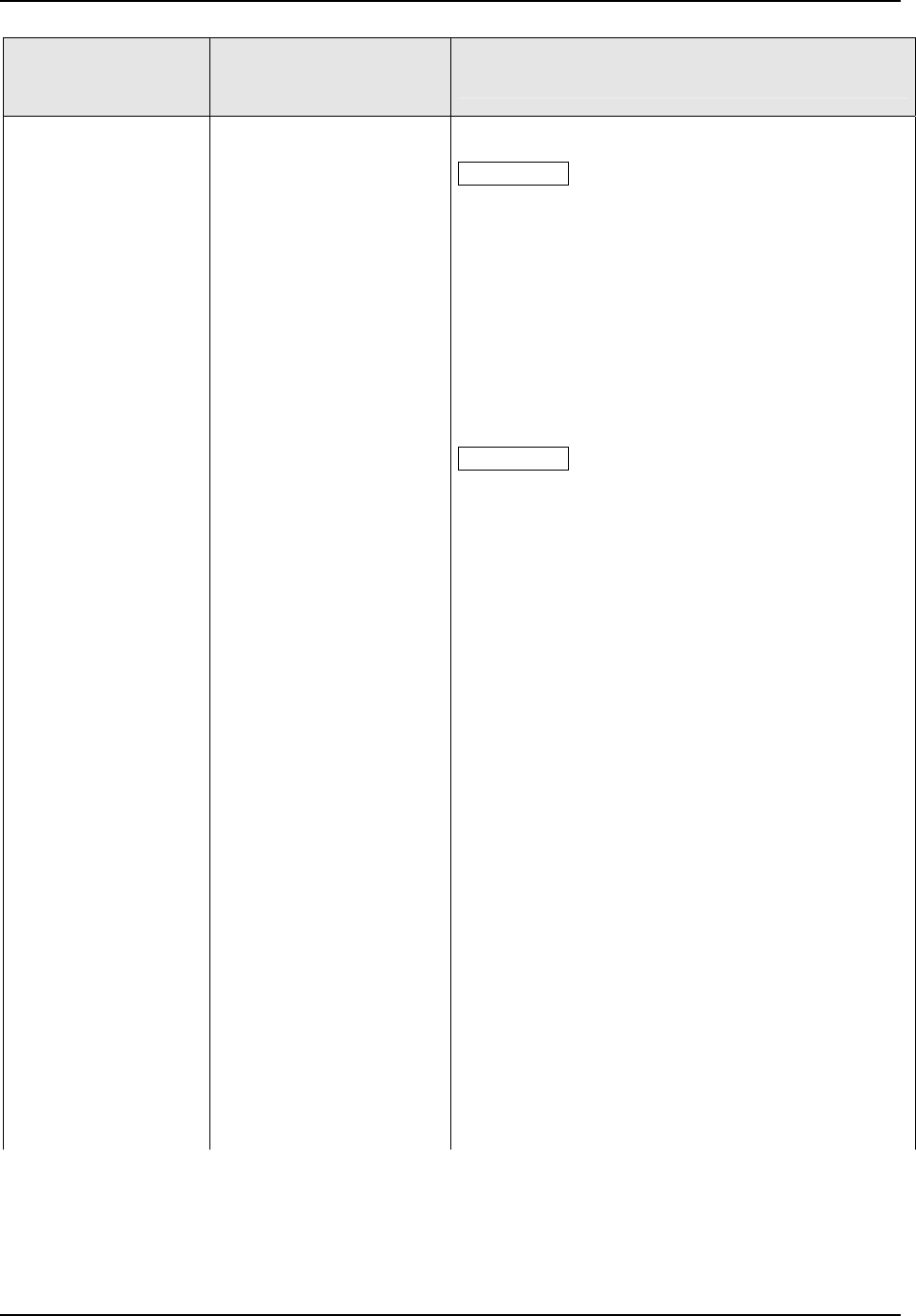
Configuration
March 2012 UDC3500 Universal Digital Controller Product Manual 151
Function Prompt
Lower Display
Selections or
Range of Setting
Upper Display
Parameter
Definition
INPUT 3
INPUT 3—Same as Input 1
ATTENTION Do not configure Input 3 when Input 3
is used for Slidewire or Slidewire emulation.
INPUT 4
INPUT 4—Same as Input 1
INPUT 5
INPUT 5—Same as Input 1
CB OUT
CONTROL BLOCK OUTPUT—Output as calculated
by the control block (such as PID A). When using
one of the characterizers, OUTPUT is the output
value after it passes through the characterizer. CB
OUT is the control block output before it passes
through the characterizer.
ATTENTION CB OUT should not be used for Three
Position Step Control or Position Proportional
Control applications.
PV
PROCESS VARIABLE—Represents the value of
the Process Variable.
DEV
DEVIATION (PROCESS VARIABLE MINUS
SETPOINT)—Represents –100 % to +100 % of the
selected PV span in engineering units.
Zero deviation will produce a center scale (12 mA or
50 %) output. A negative deviation equal in
magnitude to the Output High Scaling Factor will
produce a low end output (4 mA or 0 %) output. A
positive deviation equal in magnitude to the Output
High Scaling Factor will produce a high end output
(20 mA or 100 %).
FOR EXAMPLE: Configuration is as follows:
Input 1 = Type T High Thermocouple
PV range = –300 °F to +700 °F
PV span = 1000 °F
Deviation Range = –1000 to +1000 °F = 2000 °F
Second Current Output Low Scale Value = 0.0
Second Current Output High Scale Value = 1000
CO Range = 4-20 mA
If PV = 500 °F and SP = 650 °F
then Deviation Display = –150 °F, which is
–150 / 2000 = –7.5% of the Deviation Range, so
Second Current Output = 50% – 7.5% = 42.5%
which is 0.425 X 16 mA + 4 mA = 10.8 mA

Configuration
152 UDC3500 Universal Digital Controller Product Manual March 2012
Function Prompt
Lower Display
Selections or
Range of Setting
Upper Display
Parameter
Definition
OUTPUT
OUTPUT—Represents the displayed controller
output in percent (%).
ATTENTION Also see CB OUT when using a
characterizer on the output value.
ATTENTION When Position Proportional Control is
configured as the Output Algorithm, OUTPUT
represents the actual Slidewire Position whether in
Automatic or Manual Mode. Should the Slidewire
input fail for any reason, the Auxiliary Output will go
to the value configured for FAILSAFE OUTPUT
VALUE in the Control Setup Group.
ATTENTION When Three Position Step Control
(TPSC) is configured as the Control Algorithm,
OUTPUT represents only the estimated motor
position, not the actual motor position.
SP
SETPOINT—Represents the value of the setpoint
currently in use (LSP1, LSP2, LSP3, RSP or CSP)
and is shown in the same units as those used by the
PV.
LSP 1
LOCAL SETPOINT ONE—Output represents Local
Setpoint 1 regardless of active setpoint.
RSP
REMOTE SETPOINT—Represents the configured
RSP regardless of the active SetPoint.
IN ALG1
INPUT ALGORITHM 1 OUTPUT—Represents the
output from input algorithm 1.
IN ALG2
INPUT ALGORITHM 2 OUTPUT—Represents the
output from input algorithm 2.
PV 2
PROCESS VARIABLE FOR LOOP 2—Represents
the value of the Process Variable for Loop 2.
CBOUTL2
CONTROL BLOCK OUTPUT FOR LOOP 2—
Output for Loop 2 as calculated by the control block
(such as PID A). When using one of the
characterizers, OUTPUT 2 is the output value for
Loop 2 after it passes through the characterizer. CB
OUTL2 is the control block output before it passes
through the characterizer.
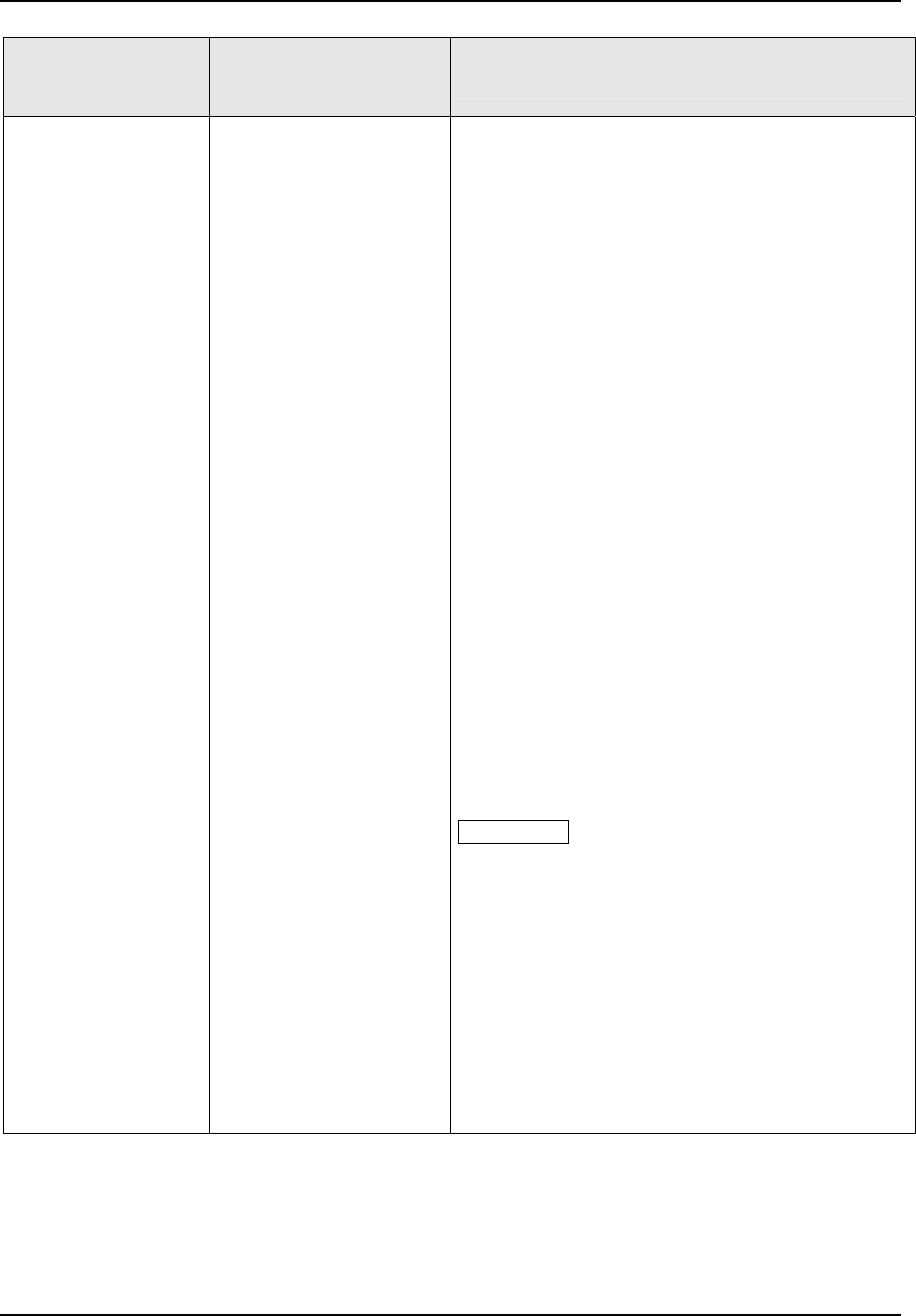
Configuration
March 2012 UDC3500 Universal Digital Controller Product Manual 153
Function Prompt
Lower Display
Selections or
Range of Setting
Upper Display
Parameter
Definition
DEV 2
DEVIATION (PROCESS VARIABLE MINUS
SETPOINT FOR LOOP 2)—Represents –100 % to
+100 % of the selected PV span in engineering
units.
Zero deviation will produce a center scale (12 mA or
50 %) output. A negative deviation equal in
magnitude to the Output High Scaling Factor will
produce a low-end output (4mA or 0 %) output. A
positive deviation equal in magnitude to the Output
High Scaling Factor will produce a high-end output
(20 mA or 100 %).
FOR EXAMPLE: Configuration is as follows:
Input 1 = Type T High Thermocouple
PV range = –300 °F to +700 °F
PV span = 1000 °F
Deviation Range = –1000 to +1000 °F = 2000 °F
Second Current Output Low Scale Value = 0.0
Second Current Output High Scale Value = 1000
C2 Range = 4-20 mA
If PV = 500 °F and SP = 650 °F
then Deviation Display = –150 °F, which is
–150 / 2000 = –7.5% of the Deviation Range, so
Second Current Output = 50% – 7.5% = 42.5%
which is 0.425 X 16 mA + 4 mA = 10.8 Ma
OUTPUT 2
OUTPUT FOR LOOP 2—Represents the displayed
controller Loop 2 output in percent (%).
ATTENTION Also see CBOUTL2 when using a
characterizer on the Loop 2 output value.
SP LP2
SETPOINT FOR LOOP 2—Represents the value of
the setpoint currently in use by Loop 2 (LSP1, LSP2,
LSP3, RSP or CSP) and is shown in the same units
as those used by the PV for Loop 2.
LSP1LP2
LOCAL SETPOINT ONE FOR LOOP 2—Output
represents Loop 2 Local Setpoint 1 regardless of
active setpoint.
RSP LP2
REMOTE SETPOINT FOR LOOP 2—Represents
the configured Loop 2 RSP regardless of the active
SetPoint for Loop 2.
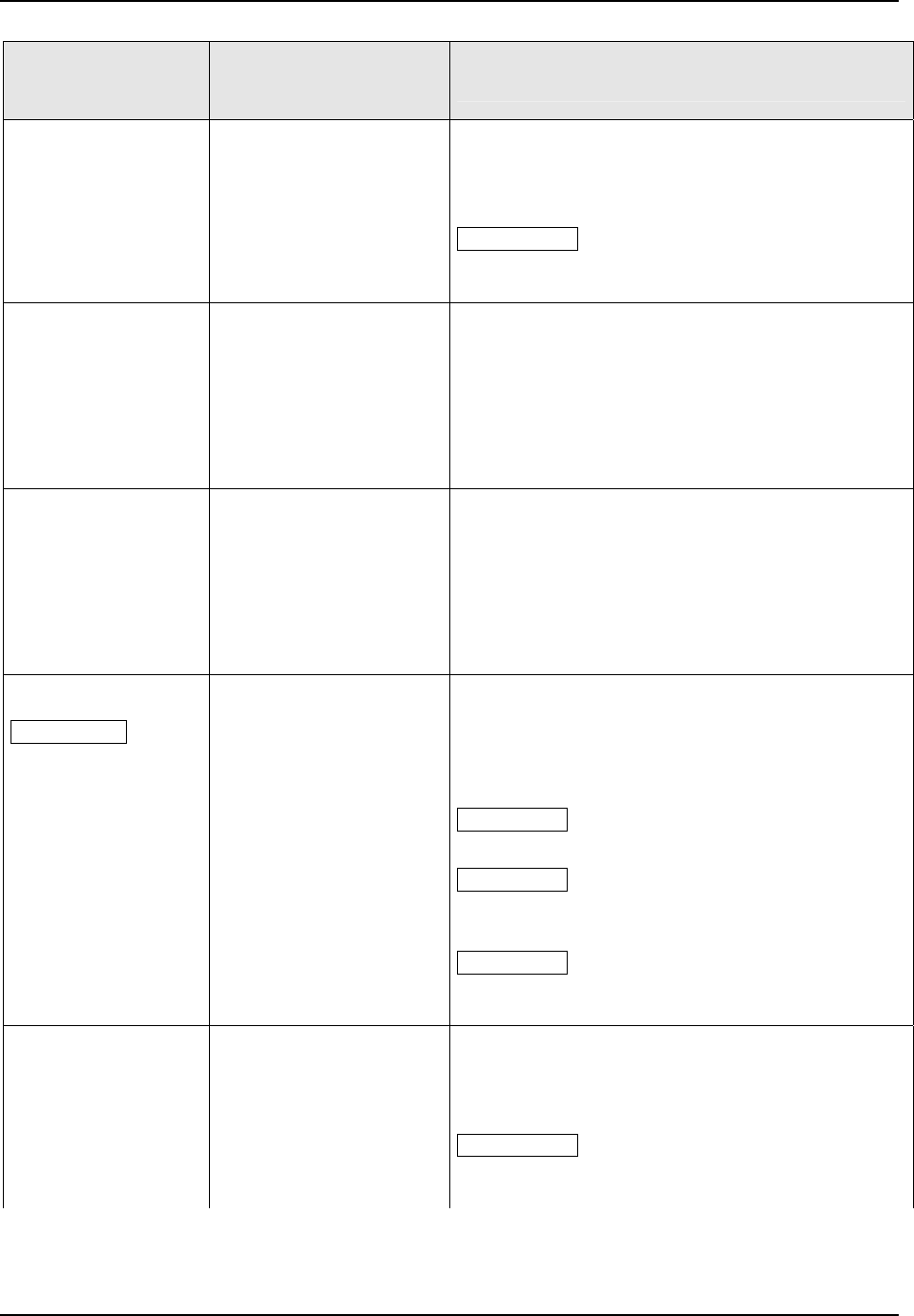
Configuration
154 UDC3500 Universal Digital Controller Product Manual March 2012
Function Prompt
Lower Display
Selections or
Range of Setting
Upper Display
Parameter
Definition
C2 RANGE
4-20mA
0-20mA
SECOND CURRENT OUTPUT RANGE—Allows the
user to easily select 4-20mA output or 0-20mA
output operation without the need for recalibration of
the instrument.
ATTENTION Changing the Current Output Range
will result in the loss of Field Calibration values and
will restore Factory Calibration values.
LOW VAL
Low Scale Value within
the range of the selected
variable to represent the
minimum output (0 or 4
mA)
OUTPUT LOW SCALING FACTOR—This is a value
in engineering units used to represent all configured
parameters except Output.
For Output, this is a value in percent and can be any
value between –5 % and +105 %. However, keep in
mind that relay output types can only be scaled 0 %
to 100 %.
HIGH VAL
High Scale Value within
the range of the selected
variable to represent the
maximum output (20 mA)
OUTPUT HIGH SCALING FACTOR—This is a
value in engineering units used to represent all
configured parameters except Output.
For Output, this is a value in percent and can be any
value between –5 % and +105 %. However, keep in
mind that relay output types can only be scaled 0 %
to 100 %.
CUR OUT3
ATTENTION
Prompts for the Third
Current Output
Selection appear only
when the Third
Current Output option
is installed.
Same selections as for
CUR OUT2
THIRD CURRENT OUTPUT SELECTION—
Provides a milliamp output representing one of
several control parameters. The display for Third
Current Output viewing will be in engineering units
for all but output. Output will be displayed in percent.
ATTENTION Other prompts affected by these
selections: 4mA VAL and 20mA VAL.
ATTENTION When Loop 2 Output is configured for
CURRENT, the Third Current Output is forced to
“OUTPUT 2”.
ATTENTION CB OUT should not be used for Three
Position Step Control or Position Proportional
Control applications.
C3 RANGE
4-20mA
0-20mA
THIRD CURRENT OUTPUT RANGE—Allows the
user to easily select 4-20mA output or 0-20mA
output operation without the need for recalibration of
the instrument.
ATTENTION Changing the Current Output Range
will result in the loss of Field Calibration values and
will restore Factory Calibration values.
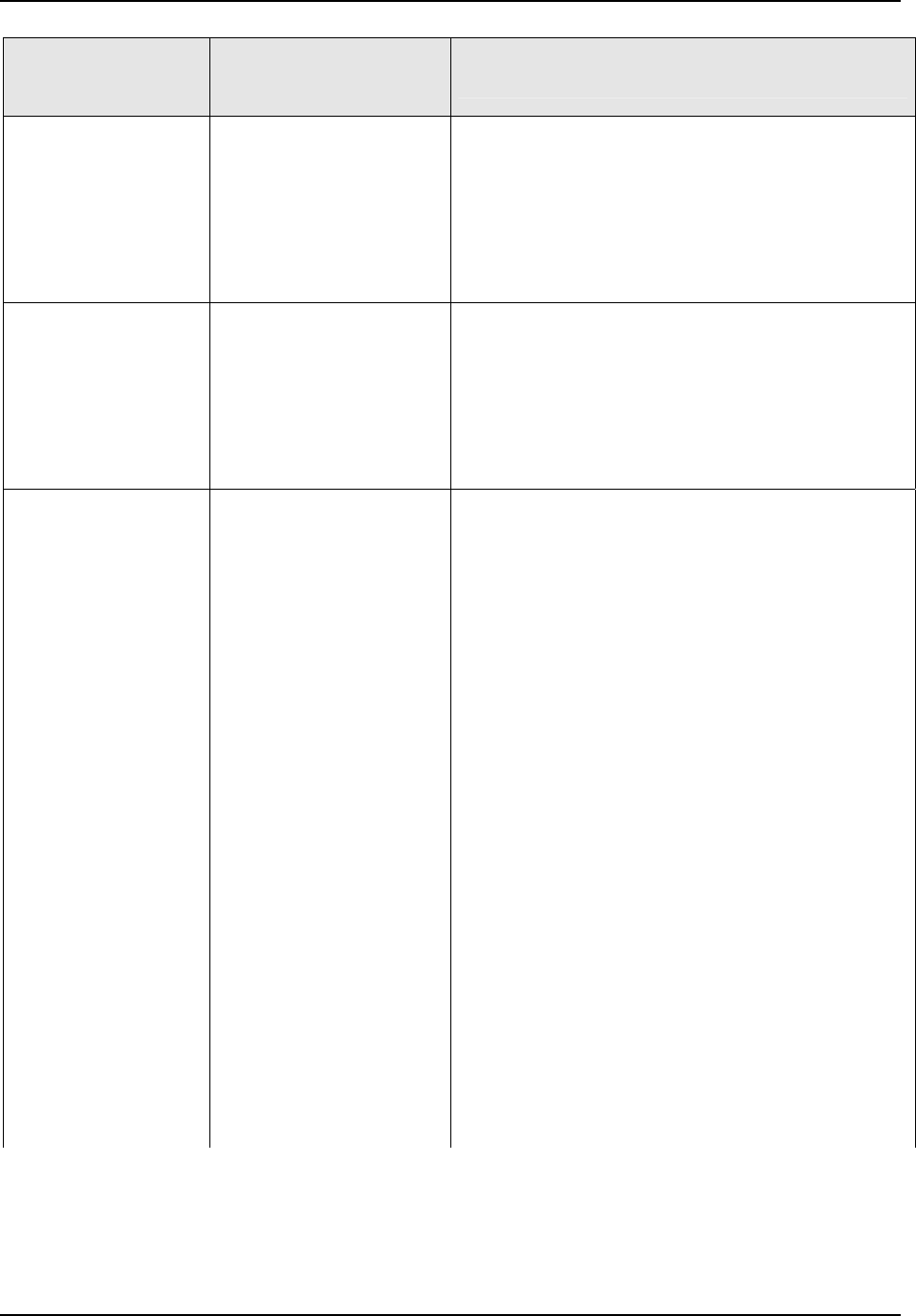
Configuration
March 2012 UDC3500 Universal Digital Controller Product Manual 155
Function Prompt
Lower Display
Selections or
Range of Setting
Upper Display
Parameter
Definition
LOW VAL
Low Scale Value within
the range of the selected
variable to represent the
minimum output (0 or 4
mA)
OUTPUT LOW SCALING FACTOR—This is a value
in engineering units used to represent all configured
parameters except Output.
For Output, this is a value in percent and can be any
value between –5 % and +105 %. However, keep in
mind that relay output types can only be scaled 0 %
to 100 %.
HIGH VAL
High Scale Value within
the range of the selected
variable to represent the
maximum output (20 mA)
OUTPUT HIGH SCALING FACTOR—This is a
value in engineering units used to represent all
configured parameters except Output.
For Output, this is a value in percent and can be any
value between –5 % and +105 %. However, keep in
mind that relay output types can only be scaled 0 %
to 100 %.
DIG INP1
DIGITAL INPUT 1 SELECTIONS—All selections are
available for Input 1. The controller returns to its
original state when contact opens, except where
noted or when overruled by the keyboard.
NONE
NO DIGITAL INPUT SELECTION
TO MAN
TO MANUAL—Contact closure puts the affected
loop into manual mode. Contact open returns
controller to former mode.
TO LSP
TO LOCAL SETPOINT—When a remote setpoint is
configured, contact closure puts the controller into
local setpoint 1. When contact opens, the controller
returns to former operation—local or remote
setpoint—unless the
SP/Select key is pressed while
digital input is active. If this happens, the controller
will stay in the local setpoint mode when contact
opens.
TO 2SP
TO LOCAL SETPOINT TWO—Contact closure puts
the controller into local setpoint 2.
TO 3SP
TO LOCAL SETPOINT THREE—Contact closure
puts the controller into local setpoint 3.
TO 4SP
TO LOCAL SETPOINT FOUR—Contact closure
puts the controller into local setpoint 4.
TO DIR
TO DIRECT ACTION—Contact closure selects
direct controller action.
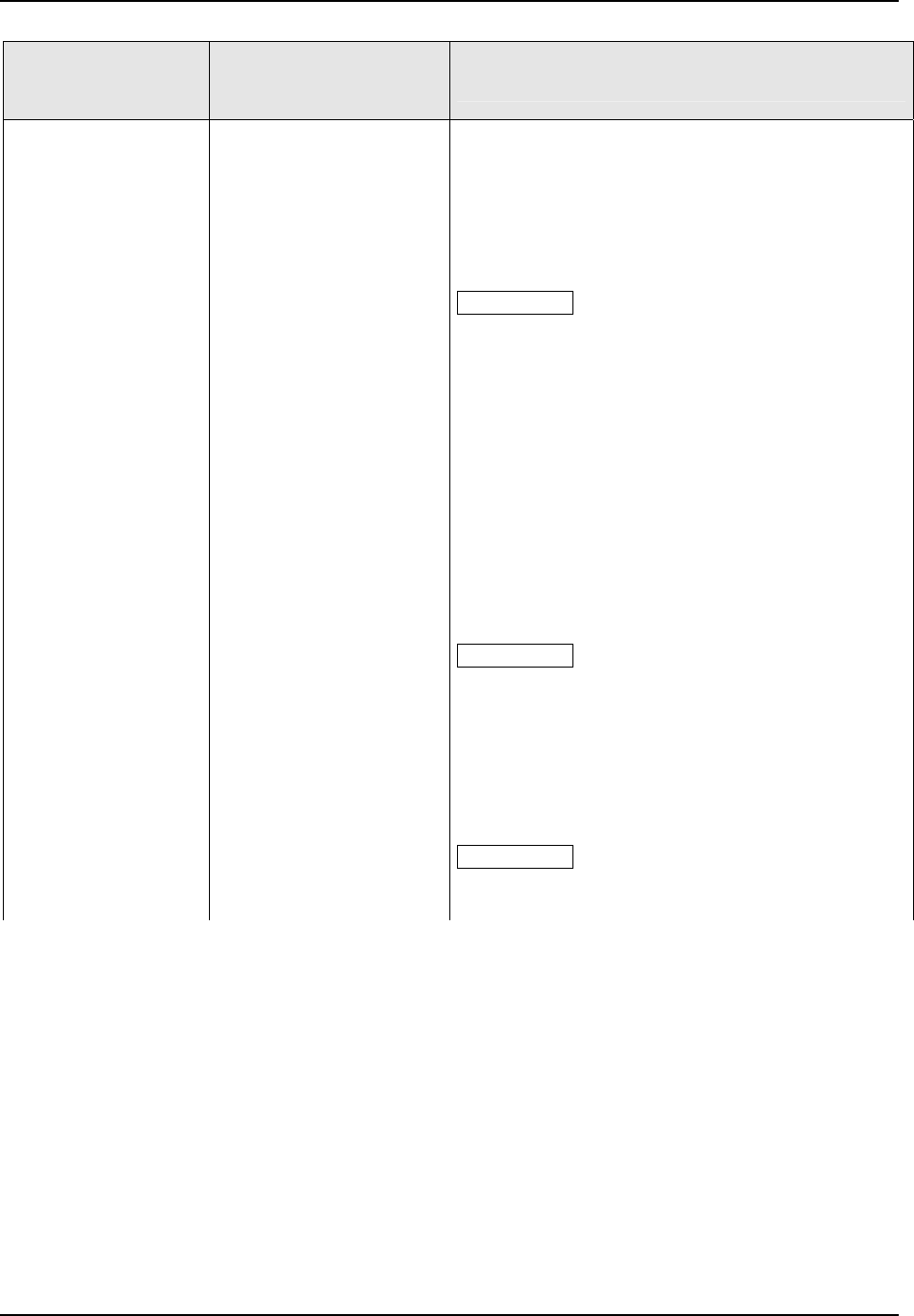
Configuration
156 UDC3500 Universal Digital Controller Product Manual March 2012
Function Prompt
Lower Display
Selections or
Range of Setting
Upper Display
Parameter
Definition
TO HOLD
TO HOLD—Contact closure suspends Setpoint
Program or Setpoint Ramp. When contact reopens,
the controller starts from the Hold point of the
Ramp/Program unless the Ramp/Program was not
previously started via the
Run/Hold key.
This selection applies to either loop.
ATTENTION When multiple SP Programs are
enabled, this configuration is affected by the “SPP
A” and “SPP B” configurations below.
TO PID2
TO PID2—Contact closure selects PID Set 2.
TO PID3
TO PID3—Contact closure selects PID Set 3.
TO PID4
TO PID4—Contact closure selects PID Set 4.
PV 2IN
PV=INPUT 2—Contact closure selects PV = Input 2.
PV 3IN
PV=INPUT 3—Contact closure selects PV = Input 3.
RERUN
RERUN—Allows the Setpoint Programmer to be
reset to the initial segment of its current cycle, unit
stays in previous mode.
ATTENTION When multiple SP Programs are
enabled, this configuration is affected by the “SPP
A” and “SPP B” configurations below.
TO RUN
RUN—Contact closure starts a stopped SP Ramp or
Program. Upper left character blinks “R”. Reopening
the contact has no effect.
This selection applies to either loop.
ATTENTION When multiple SP Programs are
enabled, this configuration is affected by the “SPP
A” and “SPP B” configurations below.
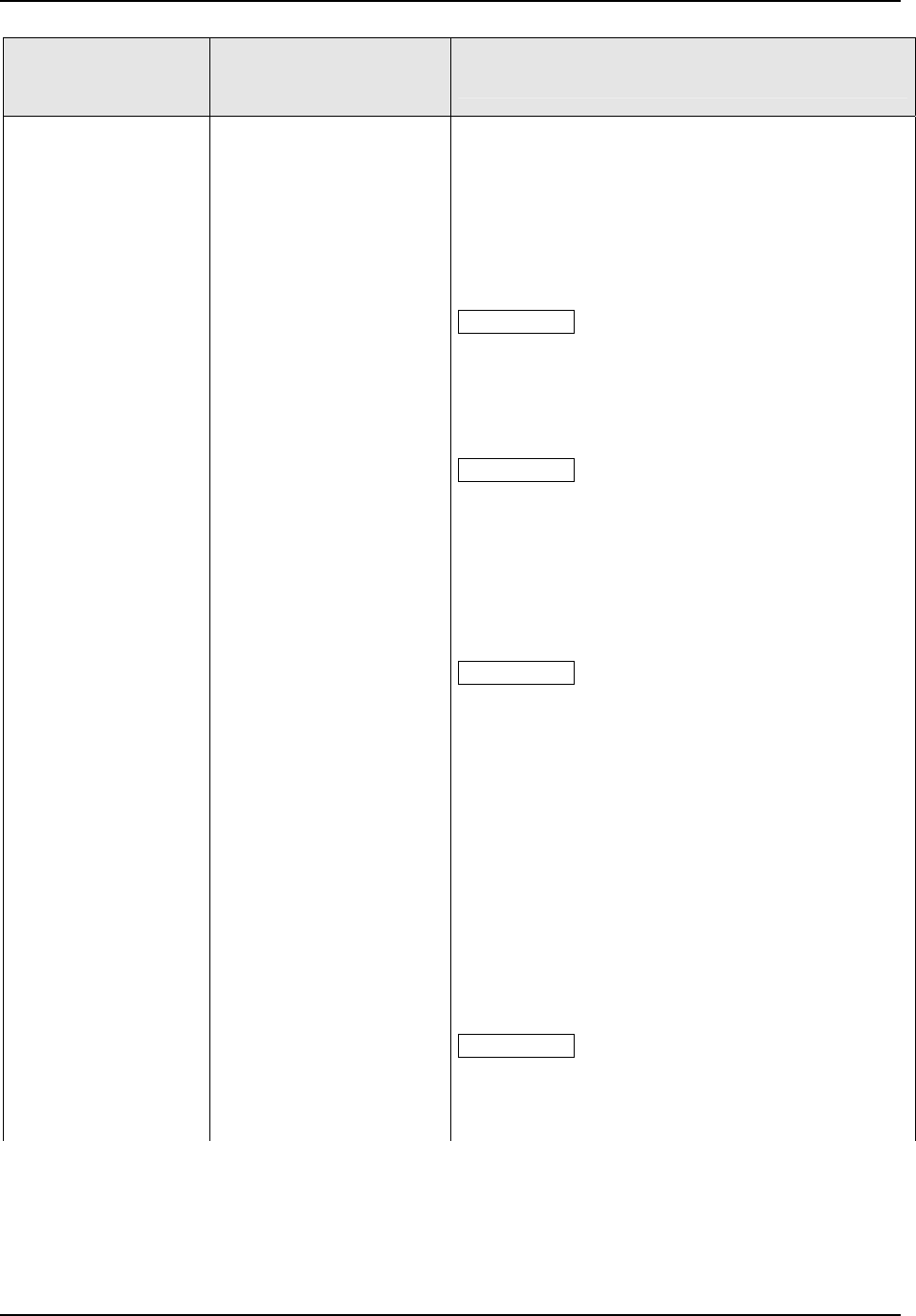
Configuration
March 2012 UDC3500 Universal Digital Controller Product Manual 157
Function Prompt
Lower Display
Selections or
Range of Setting
Upper Display
Parameter
Definition
ToBEGIN
EXTERNAL SP PROGRAM RESET—Contact
closure resets SP Program back to the beginning of
the first segment in the program and places the
program in the HOLD mode. Program cycle number
is reset to the configured value. Reopening switch
has no effect.
This selection applies to either loop.
ATTENTION Once the last segment of the setpoint
program has timed out, the controller enters the
mode of action specified in the configuration data
and the program cannot be reset to the beginning of
the first segment by digital input closure if the
program is disabled.
ATTENTION When multiple SP Programs are
enabled, this configuration is affected by the “PROG
LO” and “PROG HI” configurations below.
STOP I
INHIBIT INTEGRAL (RESET)—Contact closure
disables PID Integral (Reset) action.
MAN FS
MANUAL FAILSAFE OUTPUT—Controller goes to
Manual mode, output goes to the Failsafe value.
ATTENTION This will cause a bump in the output
when switching from Automatic to Manual. The
switch back from Manual to Automatic is bumpless.
When the switch is closed, the output can be
adjusted from the keyboard.
TO LOCK
KEYBOARD LOCKOUT—Contact closure disables
all keys. Lower display shows LOCKED if a key is
pressed.
TO Aout
AUTOMATIC OUTPUT—Contact closure sends
output to the value set at the prompt AUTO OUT in
the Control (Loop 1) Set Up Group when the
controller is in the Automatic mode. Reopening the
contact returns the controller to its normal output.
Digital Inputs assigned to Loop 2 will also use the
AUTO OUT value in the Control Setup Group.
ATTENTION Does not apply to Three Position
Step Control.
TIMER
TIMER—Contact closure starts timer, if enabled.
Reopening the switch has no effect.
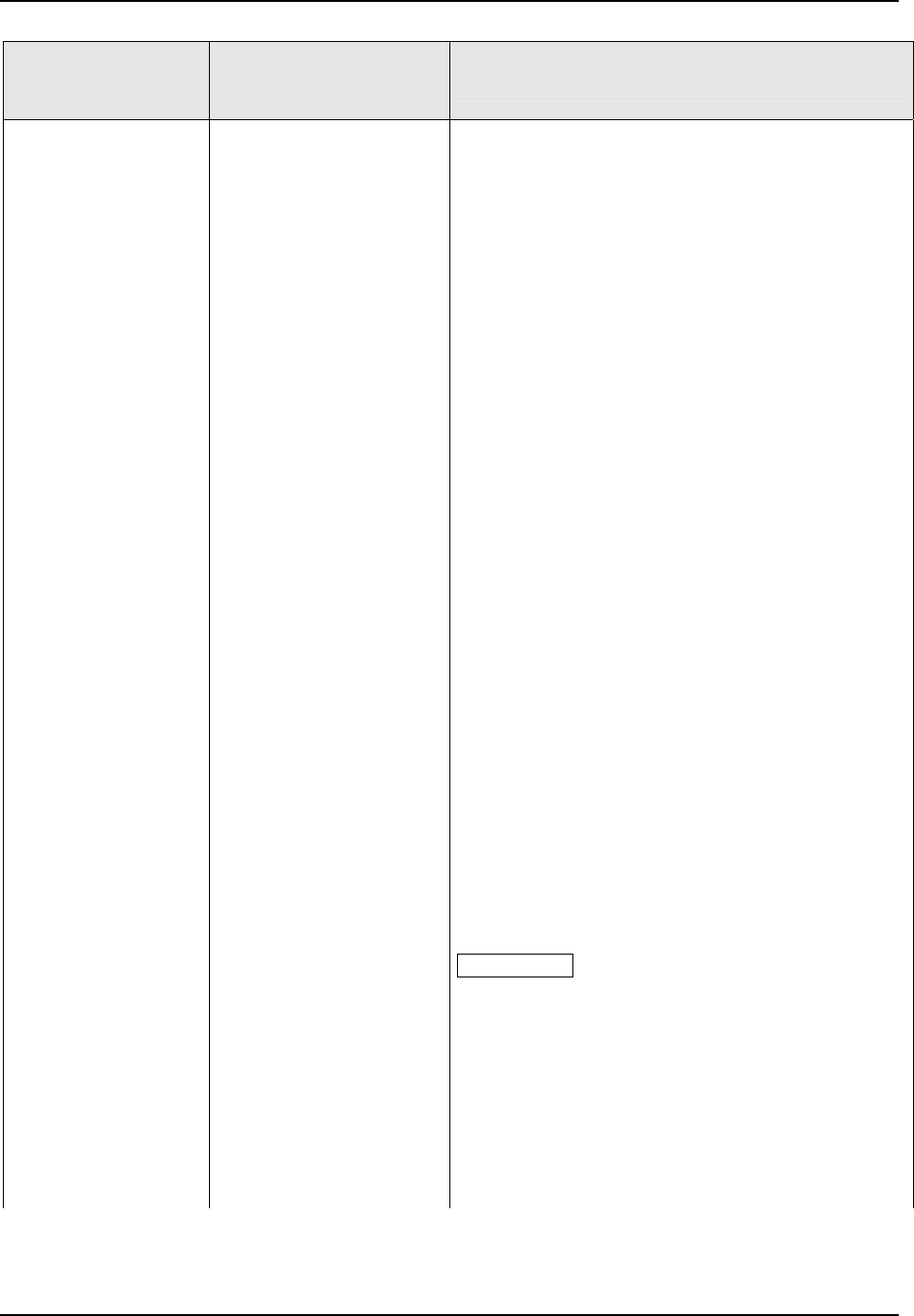
Configuration
158 UDC3500 Universal Digital Controller Product Manual March 2012
Function Prompt
Lower Display
Selections or
Range of Setting
Upper Display
Parameter
Definition
AM STA
TO AUTO/MANUAL STATION—Contact closure
causes the control loop to perform as follows:
PV = Input 2
Action = Direct
Control algorithm = PD+MR
PID SET = 2
SP = LSP 2
TO TUNE
INITIATE LIMIT CYCLE TUNING—Contact closure
starts the tuning process. The lower display shows
TUNE ON. Opening the contact has no effect.
SP Init
SETPOINT INITIALIZATION—Contact closure
forces the setpoint to the current PV value. Opening
the contact has no effect.
TRACK 1
OUTPUT 1 TRACKS INPUT 2—Contact closure
allows Output to track Input 2. While the switch is
open, the output is in accordance with its pre-
defined functionality. When the switch is closed, the
output value (in percent) will track the Input 2
percent of range value. When the switch is
reopened, the output will start at this last output
value and normal PID action will then take over
control. The transfer is bumpless.
TRACK 2
OUTPUT 2 TRACKS INPUT 2—Contact closure
allows Output 2 to track Input 2. While the switch is
open, the output is in accordance with its pre-
defined functionality. When the switch is closed, the
output value (in percent) will track the Input 2
percent of range value. When the switch is
reopened, the output will start at this last output
value and normal PID action will then take over
control. The transfer is bumpless.
To OUT2
OUTPUT 2 OVERRIDES OUTPUT 1—Contact
closure forces Output 1 to track Output 2. Opening
the contact restores normal operation.
ATTENTION Does not apply to Three Position
Step Control.
TO RSP
TO REMOTE SETPOINT—Contact closure selects
the Remote setpoint.
D L1/2
LOOP DISPLAY—Contact closure displays the loop
not currently being displayed. Opening contact
returns to the original loop display.
RST FB
EXTERNAL RESET FEEDBACK—Contact closure
allows Input 2 to override the internal reset value.
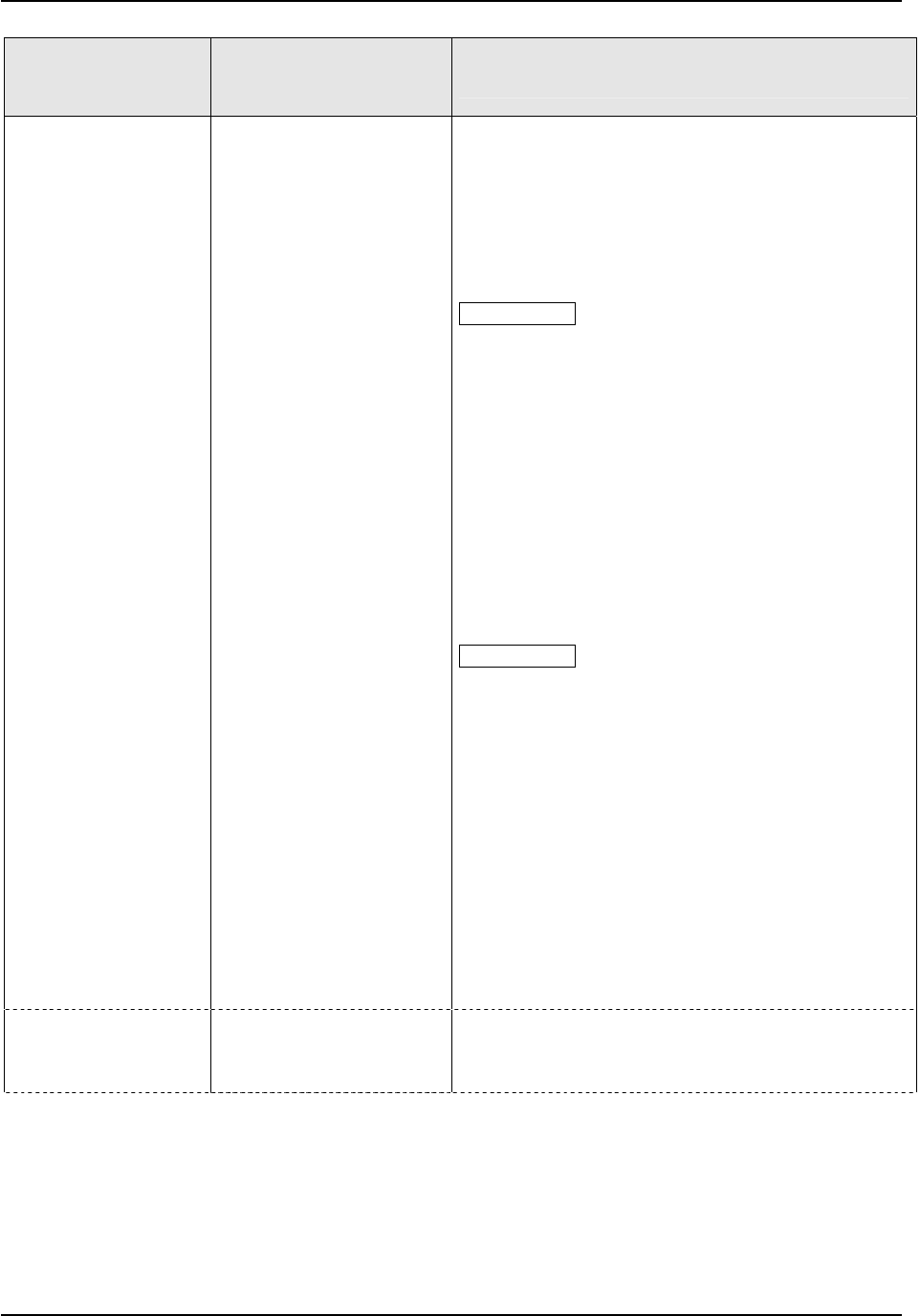
Configuration
March 2012 UDC3500 Universal Digital Controller Product Manual 159
Function Prompt
Lower Display
Selections or
Range of Setting
Upper Display
Parameter
Definition
To PURGE
TO PURGE—Contact closure forces the loop to
Manual mode with the output set to the Output High
Limit configuration. MAN lights and then the Output
value is shown on the lower display. Opening the
switch has no effect.
Pressing the
Man/Auto key returns the instrument to
Automatic Mode.
ATTENTION Does not apply to Three Position
Step Control.
PURG AX
PURGE AUXILIARY OUTPUT—When the switch is
closed, any Auxiliary Output configured for OUTPUT
will go to 100% (20 mA). When switch reopens, the
Auxiliary Output resumes normal operation.
Lo FIRE
LOW FIRE—Contact closure forces the loop to
Manual mode with the output set to the Output Low
Limit configuration. MAN lights and the Output value
is shown on the lower display. Opening the switch
has no effect.
Pressing the
Man/Auto key returns the instrument to
Automatic Mode.
ATTENTION Does not apply to Three Position
Step Control.
MAN LAT
MANUAL LATCHING—Contact closure transition
forces the loop to Manual mode. Opening the switch
has no effect. If the
Man/Auto key is pressed while
the switch is closed, the loop will return to Automatic
mode.
RES TOT
RESET TOTALIZER—Contact closure transition
resets the accumulated Totalizer value to zero.
Opening the switch has no effect.
PV HOLD
PROCESS VARIABLE HOLD—When the switch is
closed, PV is frozen at last value. When switch
opens, PV resumes normal operation after 2
seconds.
Digital Input
prompts for
Software Options
SOFTWARE OPTIONS DIGITAL INPUTS—The
following Digital Input selections appear only when
the Healthwatch Software Option is installed.
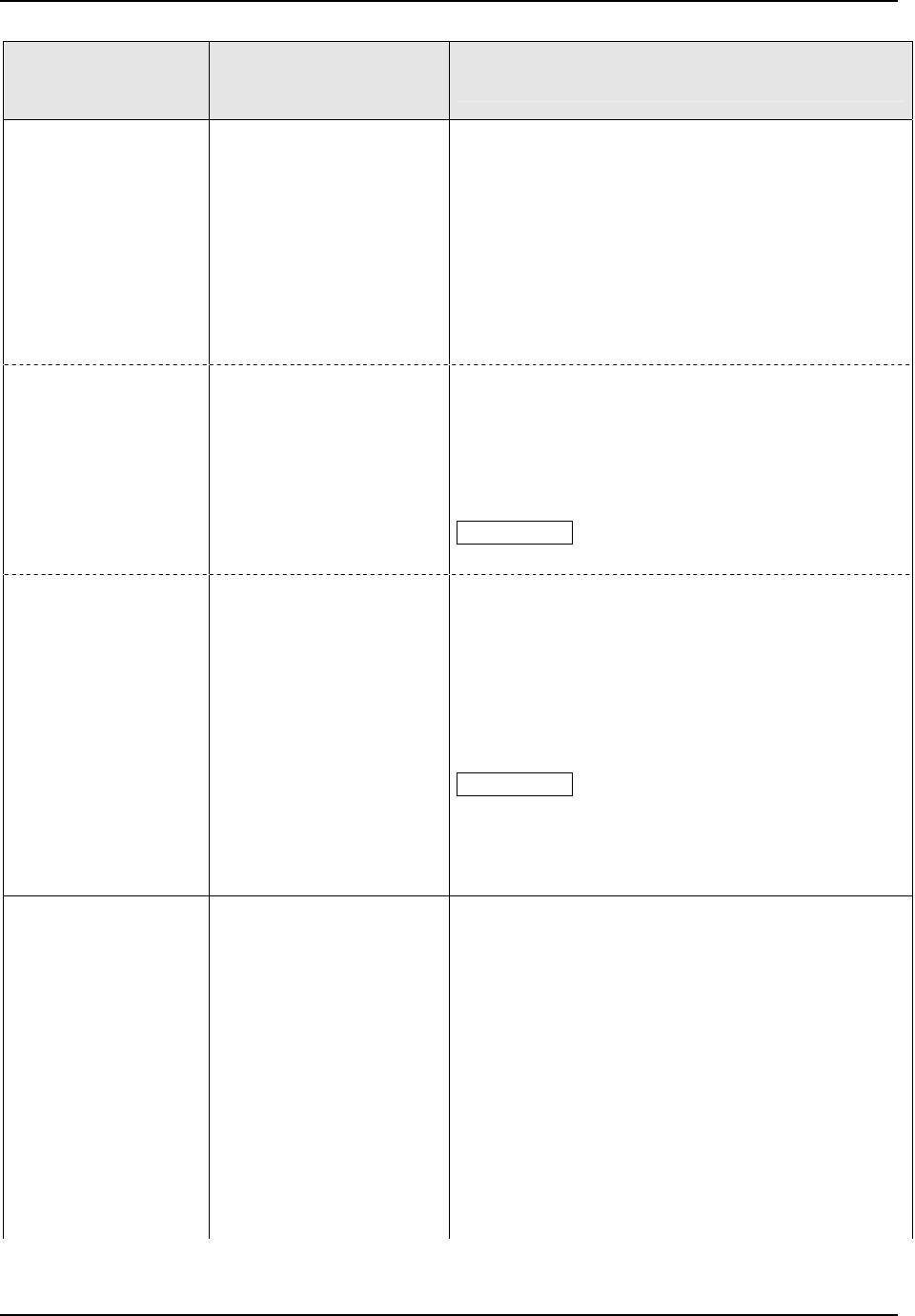
Configuration
160 UDC3500 Universal Digital Controller Product Manual March 2012
Function Prompt
Lower Display
Selections or
Range of Setting
Upper Display
Parameter
Definition
Digital Input
Prompts for
Healthwatch
RESETT1
RESETT2
RESETT3
R ALL T
RESETC1
RESETC2
RESETC3
R ALL C
RALLTC
TIMER 1 will be reset when contact closes.
TIMER 2 will be reset when contact closes.
TIMER 3 will be reset when contact closes.
ALL TIMERS will be reset when contact closes.
COUNTER 1 will be reset when contact closes.
COUNTER 2 will be reset when contact closes.
COUNTER 3 will be reset when contact closes.
ALL COUNTERS will be reset when contact closes.
ALL TIMERS AND COUNTERS will be reset when
contact closes.
Digital Input
Prompts for multiple
Set Point Programs
SETPOINT PROGRAM SELECTION—This feature
can be used to remotely select which Setpoint
Program is active when multiple Setpoint Programs
are enabled. Requires two Digital Inputs – one
configured as PROG HI and one configured as
PROG LO – in order to select all four programs.
ATTENTION These Digital Inputs force the SP
Program selection and override the keyboard.
PROG LO
PROG HI
PROG HI PROG LO Selected SP Program
OFF OFF SP Program #1
OFF ON SP Program #2
ON OFF SP Program #3
ON ON SP Program #4
ATTENTION If only PROG LO is enabled, then
PROG HI is assumed to be “OFF”. This is useful
when only SP Programs 1 and 2 are used as it
allows the user to select between these two SP
Programs with a single Digital Input.
DIG1COMB
DIGITAL INPUT 1 COMBINATION SELECTIONS—
This selection allows the specified function to occur
in addition to the one chosen for DIG IN 1.
DISABLE
DISABLE—Disables combination function.
+PID2
PLUS PID2—Contact closure selects PID Set 2.
+TO DIR
PLUS DIRECT ACTION—Contact closure selects
direct controller action.
+TO SP2
PLUS SETPOINT 2—Contact closure puts the
controller to Local Setpoint 2.
+DIS AT
PLUS DISABLE ADAPTIVE TUNE—Contact
closure disables Accutune process.
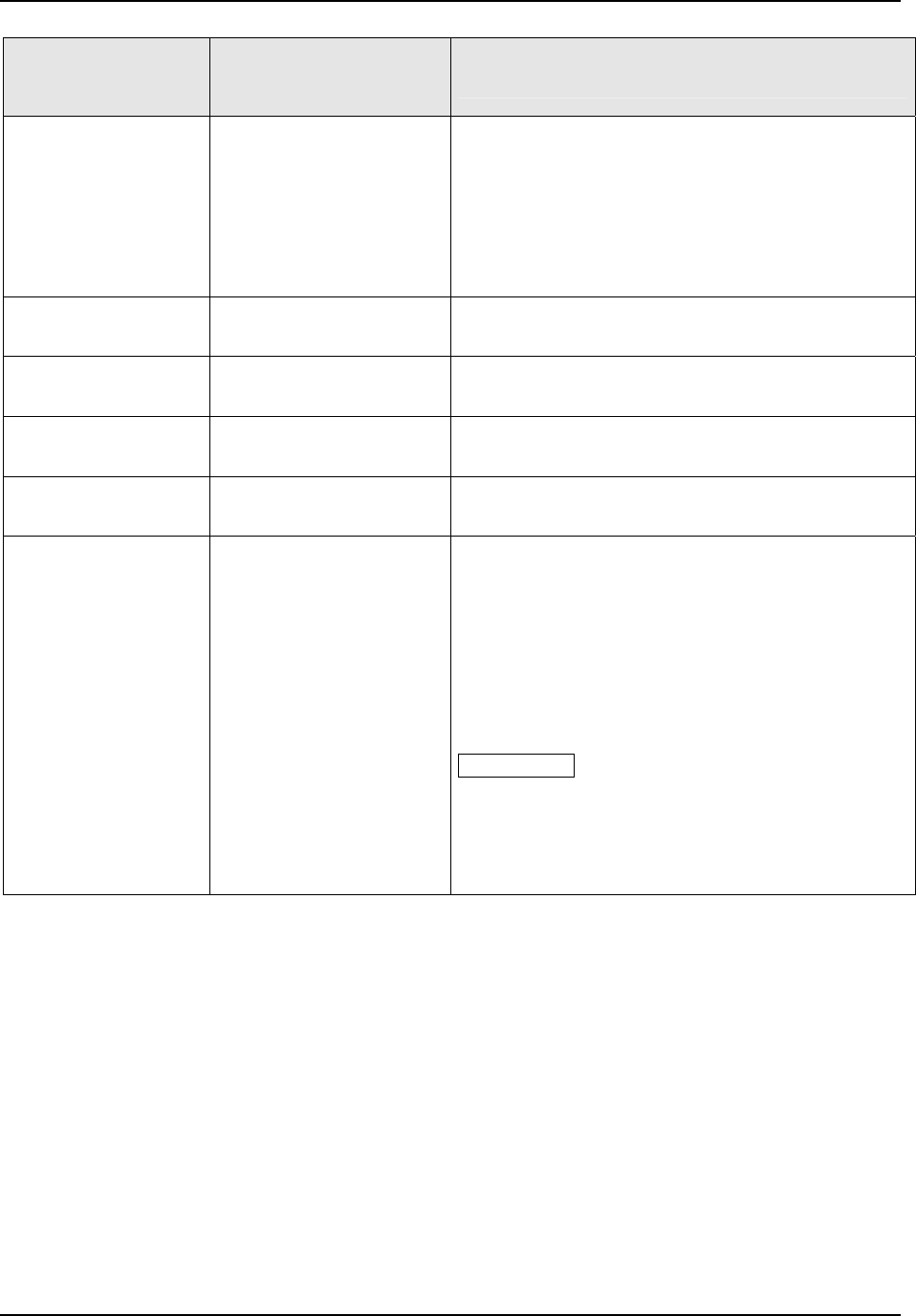
Configuration
March 2012 UDC3500 Universal Digital Controller Product Manual 161
Function Prompt
Lower Display
Selections or
Range of Setting
Upper Display
Parameter
Definition
+TO SP1
PLUS SETPOINT 1—Contact closure puts the
controller to Local Setpoint 1.
+RUN
PLUS RUN SETPOINT PROGRAM/RAMP—
Contact closure starts SP Program/Ramp if enabled.
+To SP3
PLUS SETPOINT 3 —Contact closure puts the
controller to local setpoint 3.
DIG INP2
Same selections as for
Digital Input 1
DIGITAL INPUT 2 SELECTIONS
DIG2COMB
Same selections as Digital
Input 1 Combinations
DIGITAL INPUT 2 COMBINATIONS
DIG INP3
Same selections as for
Digital Input 1
DIGITAL INPUT 3 SELECTIONS
DIG INP4
Same selections as for
Digital Input 1
DIGITAL INPUT 4 SELECTIONS
Dion LP2
DIGITAL INPUTS ON LOOP 2—Used when Two
Loops or Internal Cascade are configured. Digital
Inputs are assigned to Loop 2 per this configuration.
All other Digital Inputs are assigned to Loop 1
NONE
DI 2
DI 2, 3
DI2, 3, 4
NONE—No Digital Inputs on Loop 2, all on Loop 1
DI 2—Assign Digital Input 2 to Loop 2
DI 2,3—Assign Digital Inputs 2 and 3 to Loop 2
DI 2,3,4—Assign Digital Inputs 2, 3 and 4 to Loop 2
ATTENTION When Setpoint Program is configured
to operate on both control loops, then any digital
input configured for TO RUN, TO HOLD, RERUN, or
To BEGIN will control the setpoint program
regardless of the loop to which the Digital Input is
assigned.
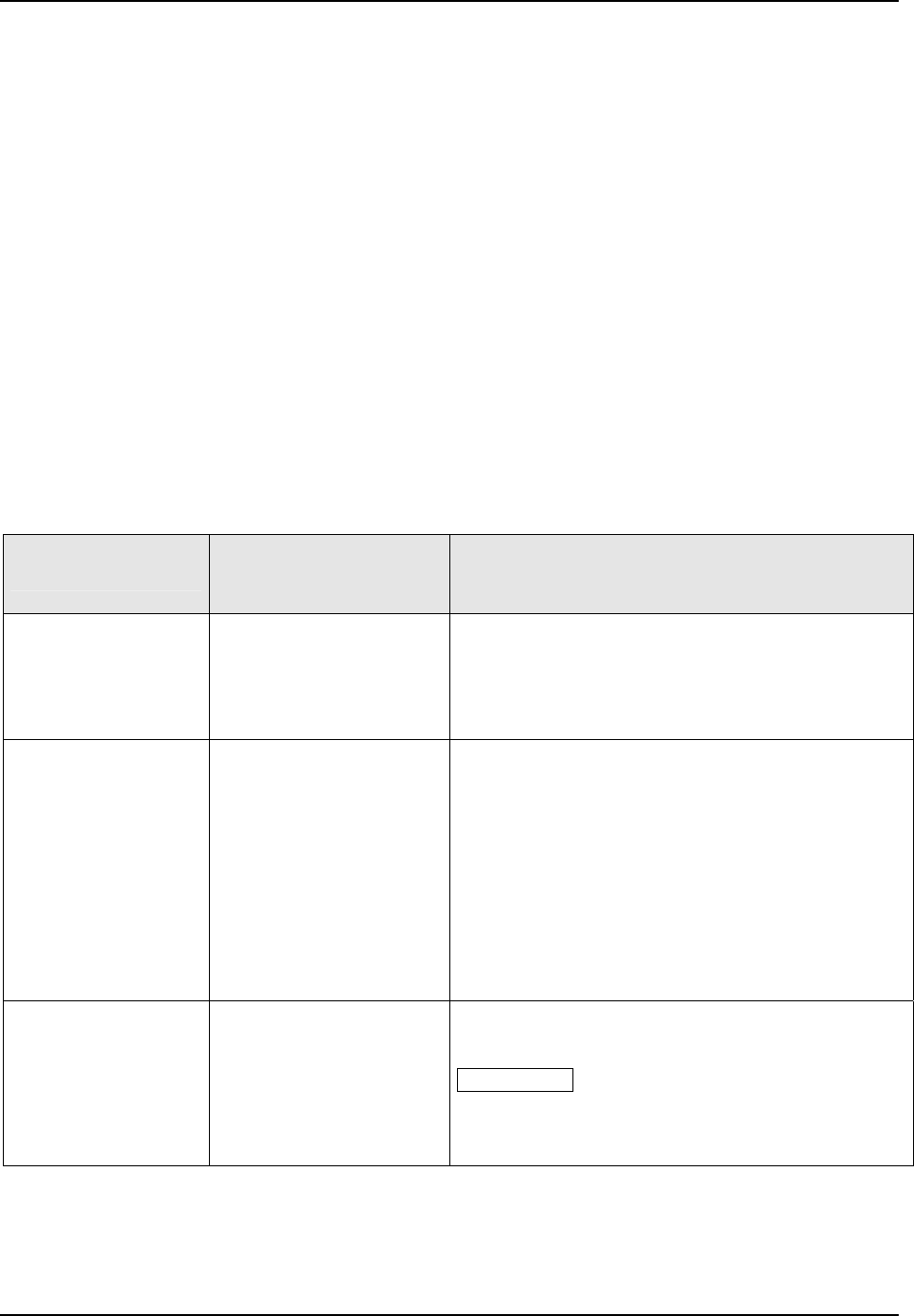
Configuration
3.23 Communications Set Up Group
Introduction
The Communications group lets you configure the controller to be connected to a host
computer via Modbus
®
or Ethernet TCP/IP protocol.
Introduction
A controller with a communications option looks for messages from the host computer. If
these messages are not received within the configured shed time, the controller will
SHED from the communications link and return to stand-alone operation. You can also
set the SHED output mode and setpoint recall, and communication units.
Up to 99 addresses can be configured over this link. The number of units that can be
configured depends on the link length, with 31 being the maximum for short link lengths
and 15 drops being the maximum at the maximum link length.
Function Prompts
Table 3-23 Communications Group Function Prompts
Selections or
Range of Setting
Upper Display
Parameter
Definition
Function Prompt
Lower Display
1 to 99
COMMUNICATIONS STATION ADDRESS—This is
a number that is assigned to a controller that is to be
used with the communications option. This number
will be its address. This value is also used for IR
transactions.
Com ADDR
COMMUNICATIONS SELECTION—enables the
RS-485 or Ethernet communications port.
ComSTATE
DISABLE
DISABLE—Disables communications option.
MODBUS
ETHERNE
MODBUS—Enables RS-485 Modbus RTU
communication port. Appears only when a
communications board is installed.
ETHERNET—Enables Ethernet communications
port. Appears only when a communication board is
installed.
IR ENABLE
DISABLE
ENABLE
IR ENABLE—Disable/Enables IR communications
port.
ATTENTION If there are no IR communications
transactions for four minutes, then the IR port
automatically shuts down. It can be re-enabled at
any time by pressing any key on the front panel.
162 UDC3500 Universal Digital Controller Product Manual March 2012
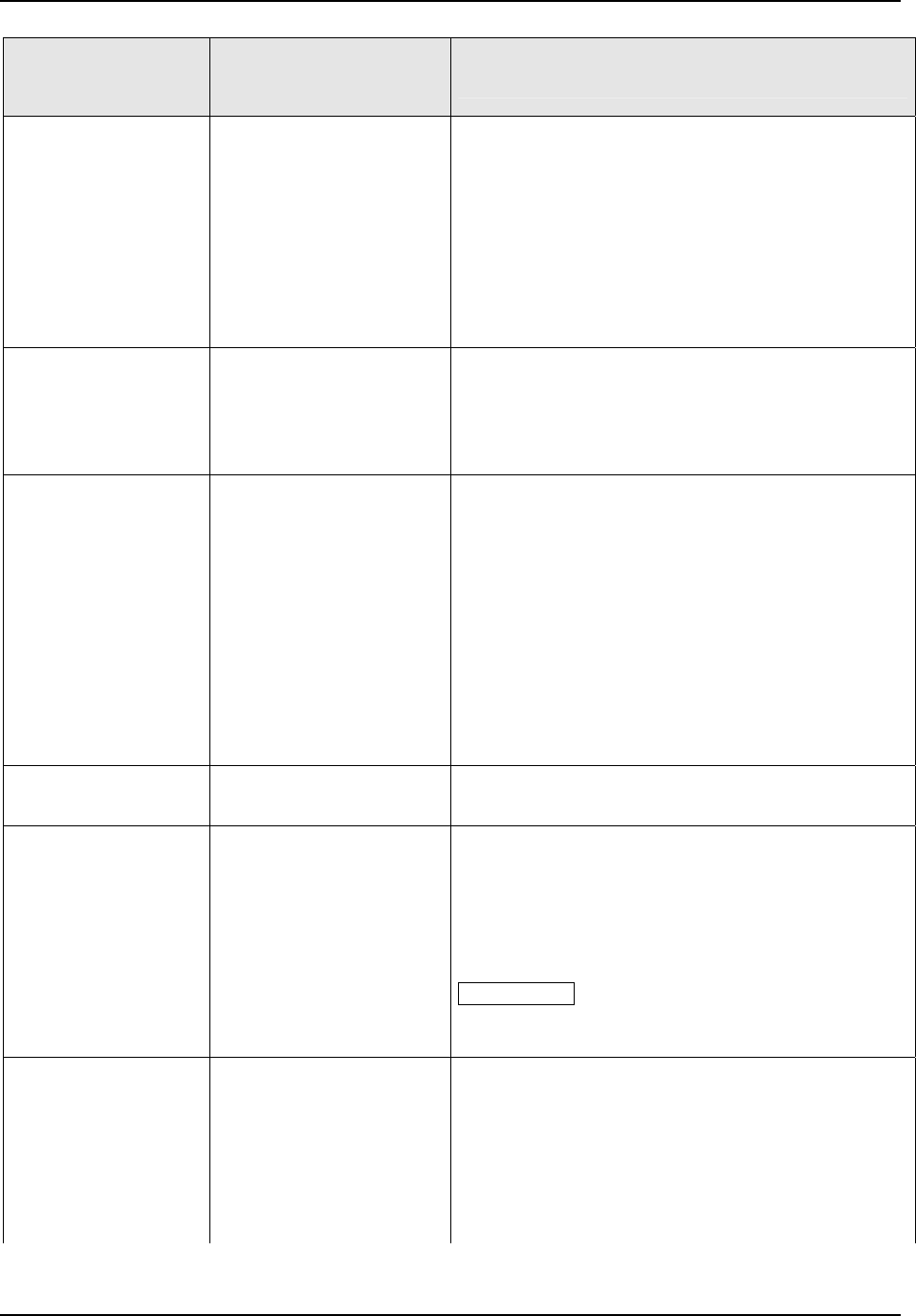
Configuration
March 2012 UDC3500 Universal Digital Controller Product Manual 163
Function Prompt
Lower Display
Selections or
Range of Setting
Upper Display
Parameter
Definition
BAUD
4800
9600
19200
38400
BAUD RATE—Communications transmission speed
in bits per second. This value is used for both RS-
485 and IR Communications, but for IR
Communications, values below 19200 baud are
interpreted as being 19200 baud.
4800 BAUD
9600 BAUD
19200 BAUD
38400 BAUD
TX DELAY
1 to 500 milliseconds
TX DELAY—Configurable response-delay timer
allows you to force the instrument to delay its
response for a time period of from 1 to 500
milliseconds compatible with the host system
hardware/software.
WS FLOAT
FP_B
FP_BB
FP_L
FP_LB
Defines word/byte order of floating point data for
communications. Byte values:
0 1 2 3
seeeeeee emmmmmmm mmmmmmmm mmmmmmmm
Where:
s = sign, e = exponent, m = mantissa bit
0 1 2 3
1 0 3 2
3 2 1 0
2 3 0 1
SHED ENAB
DISABLE
ENABLE
SHED ENABLE—Disables/enables shed
functionality.
SHEDTIME
0 to 255
SHED TIME—The number that represents how
many sample periods there will be before the
controller sheds from communications. A setting of 0
means No Shed (Unit remains in Slave Mode),
1 means 1/3 seconds delay before shed and each
increment adds an additional 1/3 seconds.
ATTENTION If ComSTATE is set to MODBUS and
if SHEDENAB is set to DISABLE, then Shed Time
will not be configurable.
SHEDMODE
SHED CONTROLLER MODE AND OUTPUT
LEVEL—Determines the mode of local control you
want when the controller is shed from the
communications link.
LAST
LAST—SAME MODE
The controller will return to the same mode (manual
or automatic) that it had before shed.
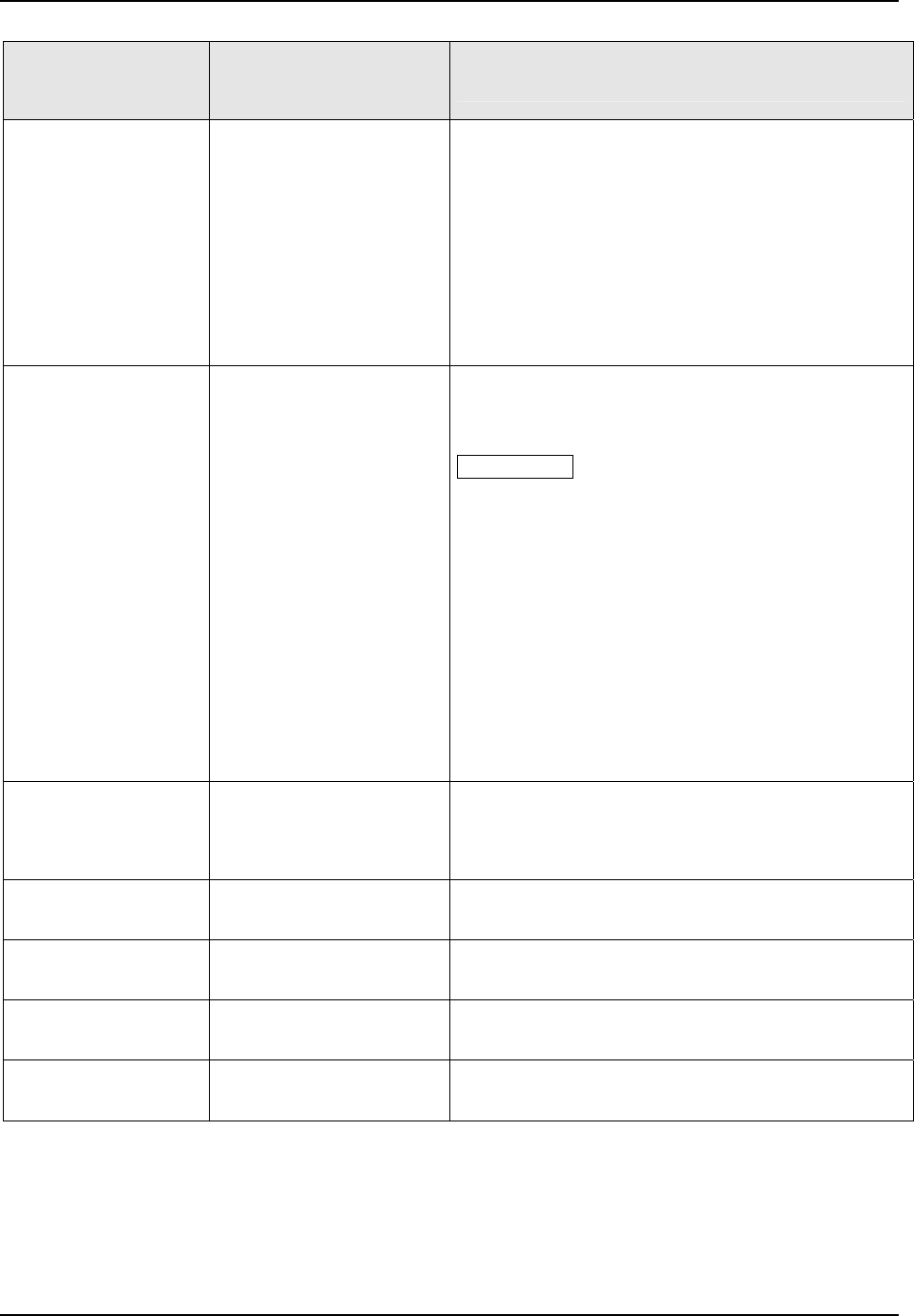
Configuration
164 UDC3500 Universal Digital Controller Product Manual March 2012
Function Prompt
Lower Display
Selections or
Range of Setting
Upper Display
Parameter
Definition
TO MAN
TO MAN—MANUAL MODE, SAME OUTPUT
The controller will return to manual mode at the
same output level that it had before shed.
FSAFE
FSAFE—MANUAL MODE, FAILSAFE OUTPUT
The controller will return to manual mode at the
output value selected at Control prompt FAILSAFE.
TO AUTO
TO AUTO—AUTOMATIC MODE, LAST SP
The controller will return to the automatic mode and
the last setpoint used before shed.
SHED SP
SHED SETPOINT RECALL—The instrument will
control to the selected Setpoint following a Shed.
(controller switches from using CSP to LSP)
ATTENTION If SHEDENAB is configured for
DISABLE, then this prompt will not be configurable.
NOTE: if a RSP is the current setpoint, a CSP
override will not be used. CSP overrides local
setpoint only.
TO LSP
TO LSP—When a Shed occurs, the controller
switches from slave to monitor mode and uses the
last local setpoint prior to the slave mode. The CSP
value is disregarded on Shed.
TO CSP
TO CSP—When a SHED timeout occurs, the
controller switches from slave to monitor mode and
uses the local setpoint that is set equal to the CSP
value.
UNITS
ENG
PERCENT
COMPUTER SETPOINT UNITS
ENG—Engineering units
PERCENT—Percent of PV range
CSP RATO
–20.0 to 20.0
COMPUTER SETPOINT RATIO—Computer
setpoint ratio for Loop 1.
CSP BIAS
–999. to 9999.
(engineering units)
COMPUTER SETPOINT BIAS—Computer setpoint
bias in Engineering Units for Loop 1.
CSP2RATO
–20.0 to 20.0
LOOP 2 COMPUTER SETPOINT RATIO—
Computer setpoint ratio for Loop 2.
CSP2BIAS
–999. to 9999.
(engineering units)
LOOP 2 COMPUTER SETPOINT BIAS—Computer
setpoint bias in Engineering Units for Loop 2.
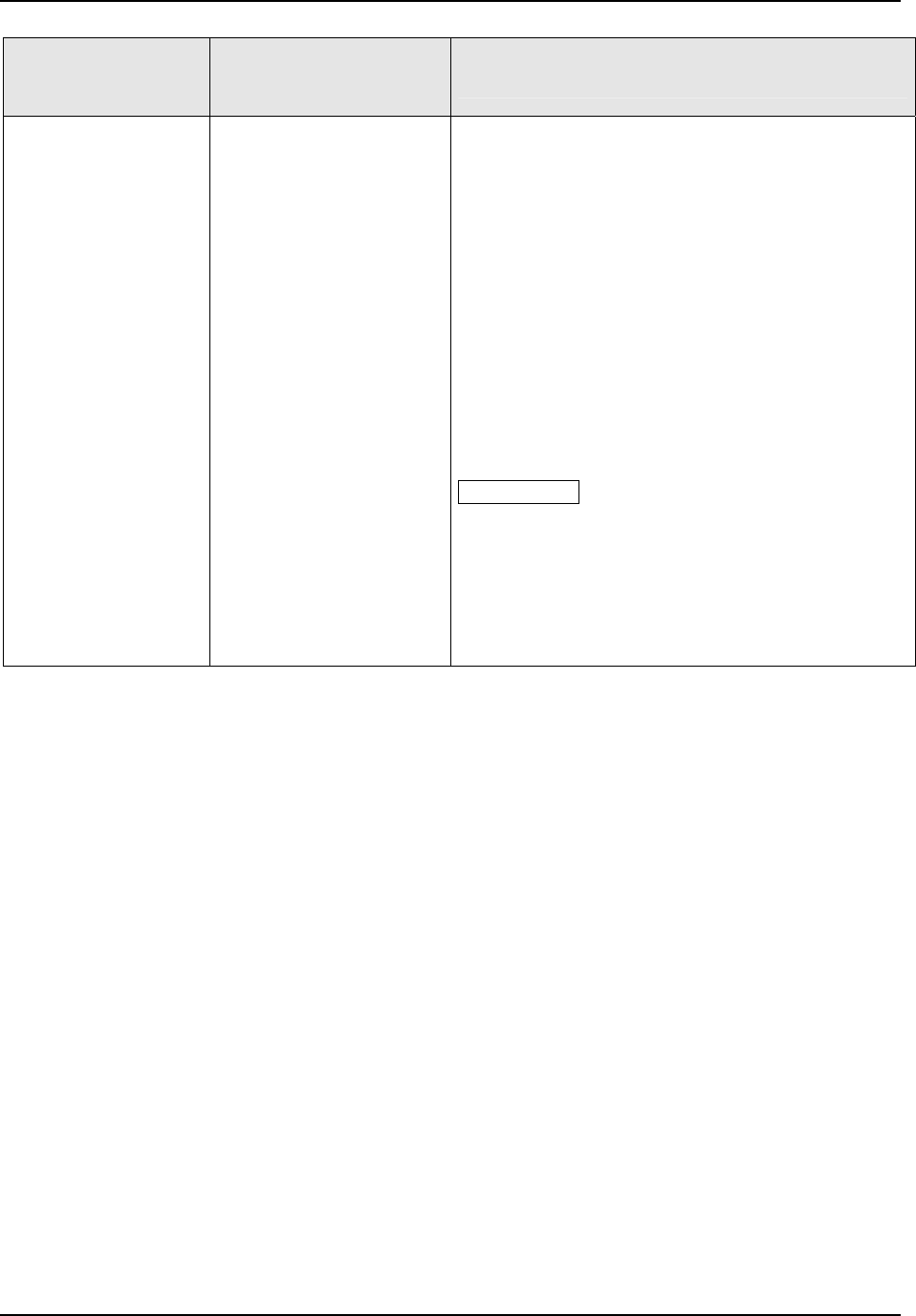
Configuration
March 2012 UDC3500 Universal Digital Controller Product Manual 165
Function Prompt
Lower Display
Selections or
Range of Setting
Upper Display
Parameter
Definition
LOOPBACK
LOCAL LOOPBACK—Tests the RS-485
communications port. This feature is not used for
any other communications port.
DISABLE
DISABLE—Disables the Loopback test.
ENABLE
ENABLE—Allows RS-485 Loopback test. The
instrument goes into Loopback mode in which it
sends and receives its own message. The
instrument displays PASS or FAIL status in the
upper display and LOOPBACK in the lower display
while the test is running. The instrument will go into
manual mode when LOOPBACK is enabled with the
output at the Failsafe value. The test will run until the
operator disables it here or until power to the
instrument is turned off and on.
ATTENTION The instrument does not have to be
connected to the external RS-485 communications
link in order to perform this test. If it is connected,
then only one instrument should run the Loopback
test at a time, as the instrument running the
Loopback test transmits on the RS-485 bus. The
host computer should not be transmitting on the link
while the Loopback test is active.
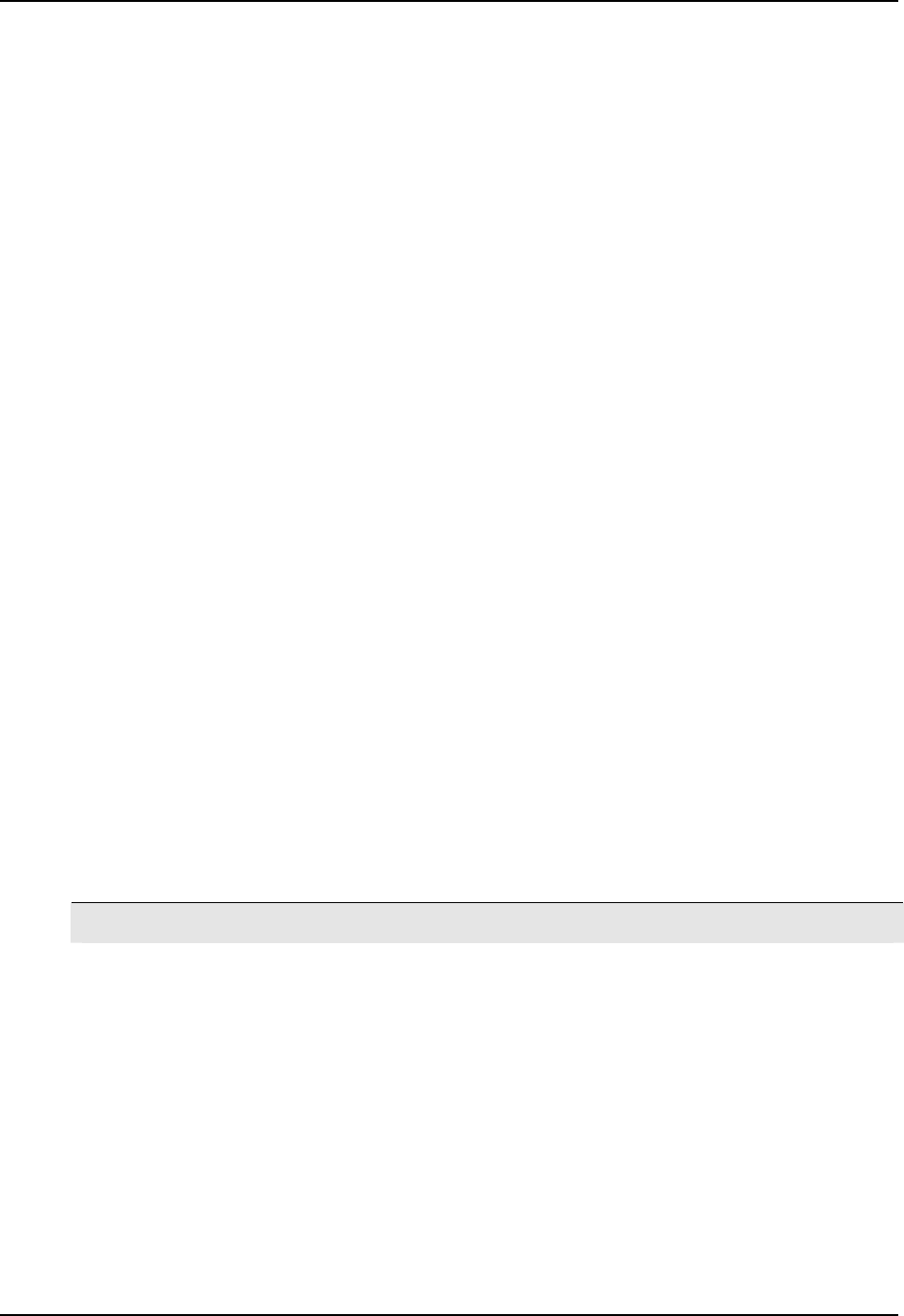
Configuration
3.24 Alarms Set Up Group
Introduction
The UDC3500 has four alarms and eight alarm setpoints. Each alarm has its own
hysteresis configuration.
An alarm is an indication that an event that you have configured (for example—Process
Variable) has exceeded one or more alarm limits. There are up to four alarms available.
Each alarm has two setpoints. You can configure each of these two setpoints to alarm on
various controller parameters.
There are two alarm output selections for each alarm setpoint, High and Low. These
allow you to choose whether the alarm activates when the measured value is above
(High) or below (Low) the alarm setpoint. You can also configure the two setpoints to
alarm on the same event and to alarm for both high and low conditions.
An adjustable Hysteresis of 0 % to 100 % is provided for each alarm.
Alarms may be conveniently broken up into four types:
1. Analog – These are alarms, which monitor selections that use analog values,
such as Process Variable, Set Points or analog inputs. These alarms require a
hysteresis value.
2. Digital – These are alarms which monitor status that are either ON or OFF,
such as Mode (e.g., Manual), Digital Input status. These alarms do not use a
hysteresis value.
3. Events – The alarms are only used with Set Point Programming and may be
configured to operate at the beginning or end of a particular segment.
4. Loop Break – Loop Break is a special kind of alarm, which monitors the
control loop. Although this is a digital alarm (i.e., the alarm is either broken or
it is not), it requires that an analog value to be configured in order to operate
properly.
See Table 2-3 in the Installation section for Alarm relay contact inform
ation.
ATTENTION
If the controller is configured to use the same relay for more than one function, then the
following priority is used to determine how the relay functions: Control Outputs take
precedence over Alarms, which in turn take precedence over Time/Events, which in turn
take precedence over Logic Gate Outputs. For example, if you select the Loop 2 Output
Algorithm as Time Simplex (which uses Relay 3), enable Alarm 3 (which also uses
Relay 3) and configure a Logic Gate to use Relay 3, then the instrument will use Relay
#3 to perform the Time Simplex output and ignore the Alarm and Logic Gate functions.
The prompts for the Alarm Outputs appear whether or not the alarm relays are
physically present or used for some other function. This allows the Alarm status to be
shown on the display and/or sent via communications to a host computer.
166 UDC3500 Universal Digital Controller Product Manual March 2012
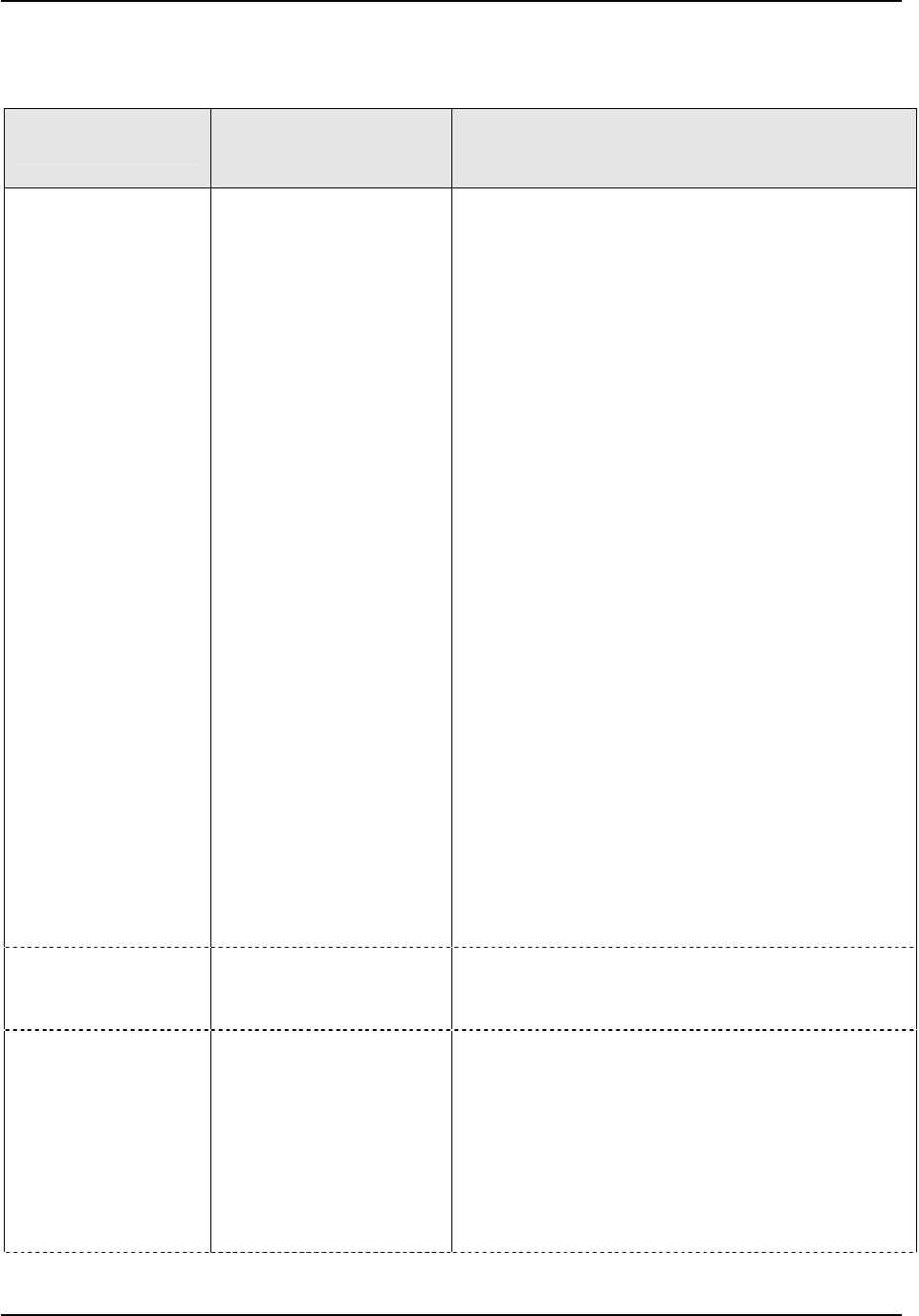
Configuration
Function Prompts
Table 3-24 ALARMS Group Function Prompts
Selections or
Range of Setting
Upper Display
Parameter
Definition
Function Prompt
Lower Display
A1S1TYPE
ALARM 1 SETPOINT 1 TYPE—Select what you
want Setpoint 1 of Alarm 1 to represent. It can
represent the Process Variable, Deviation, Input 1,
Input 2, Output, and if you have a model with
communications, you can configure the controller to
alarm on SHED. If you have setpoint programming,
you can alarm when a segment goes ON or OFF.
NONE
INPUT 1
INPUT 2
INPUT 3
INPUT 4
INPUT 5
PV
DEV
OUTPUT
SHED
EV ON
EV OFF
MANUAL
REM SP
F SAFE
PV RATE
DIG INP 1
DIG INP 2
DIG INP 3
DIG INP 4
TCWARN
TCFAIL
PVHOLD
BREAK
TOTAL
NO ALARM
INPUT 1
INPUT 2
INPUT 3
INPUT 4
INPUT 5
PROCESS VARIABLE
DEVIATION (NOTE 3)
OUTPUT (NOTE 1)
SHED FROM COMMUNICATIONS
EVENT ON (SP PROGRAMMING)
EVENT OFF (SP PROGRAMMING)
ALARM ON MANUAL MODE (NOTE 2)
REMOTE SETPOINT
ALARM ON FAILSAFE
PV RATE OF CHANGE (NOTE 11)
DIGITAL INPUT 1 ACTUATED
DIGITAL INPUT 2 ACTUATED
DIGITAL INPUT 3 ACTUATED
DIGITAL INPUT 4 ACTUATED
THERMOCOUPLE WARNING (NOTE 5)
THERMOCOUPLE FAIL (NOTE 6)
PV HOLD (NOTE 8)
LOOP BREAK (NOTE 4)
TOTALIZER (NOTE 7)
Alarms for Software
Options
ALARMS FOR SOFTWARE OPTIONS—The
following Alarm Type selections appear only when
one of the Software Options is installed.
Alarm prompts for
Two Loops/Cascade
Option
PV 2
DEV 2
OUT 2
MAN 2
RSP 2
FSAFE 2
PVRATE2
BREAK 2
PV2HOLD
PROCESS VARIABLE—LOOP 2
DEVIATION – LOOP 2
OUTPUT – LOOP 2
ALARM ON MANUAL MODE – LOOP 2
REMOTE SETPOINT – LOOP 2
ALARM ON FAILSAFE – LOOP 2
PV RATE OF CHANGE – LOOP 2
LOOP BREAK – LOOP 2 (NOTE 4)
PV HOLD – LOOP 2
March 2012 UDC3500 Universal Digital Controller Product Manual 167
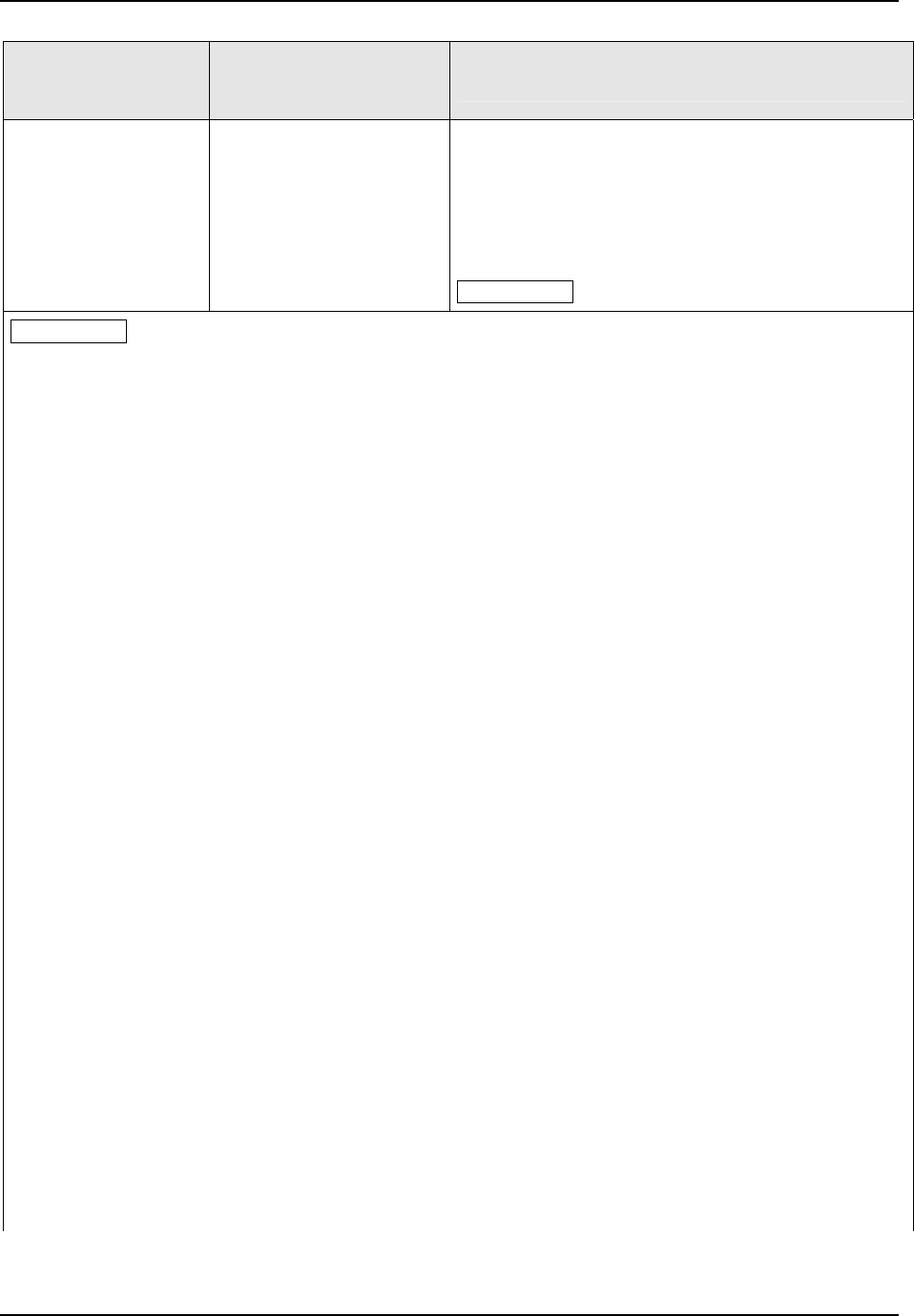
Configuration
168 UDC3500 Universal Digital Controller Product Manual March 2012
Function Prompt
Lower Display
Selections or
Range of Setting
Upper Display
Parameter
Definition
Alarm prompts for
Healthwatch Option
TIMER1
TIMER2
TIMER3
COUNT1
COUNT2
COUNT3
TIMER 1—Healthwatch Maintenance Timer 1
TIMER 2—Healthwatch Maintenance Timer 2
TIMER 3—Healthwatch Maintenance Timer 3
COUNT 1—Healthwatch Maintenance Counter 1
COUNT 2—Healthwatch Maintenance Counter 2
COUNT 3—Healthwatch Maintenance Counter 3
ATTENTION See NOTE 9 and NOTE 10.
ATTENTION
NOTE 1: When the controller is configured for Three Position Step Control, alarms set for Output will not
function.
NOTE 2: Alarm 1 is not available if the Timer is enabled because Alarm 1 is dedicated to Timer output.
NOTE 3: This Deviation Alarm is based upon deviation from whichever Local or Remote SP is active.
NOTE 4: Loop Break alarms monitor the selected control loop to determine if it is working. When enabled,
the control output is checked against the minimum and maximum output limit settings. When the output
reaches one of these limits, a timer begins. If the timer expires and the output has not caused the PV to
move by a pre-determined amount, then the alarm activates, thus signaling that the loop is broken. The
loop break timer value must be configured by the operator as the AxSx VAL entry. This value is in
seconds with a range of 0 to 3600 seconds. A setting of 0 is equivalent to an instantaneous loop break
when the output reaches one of its limit values.
The amount of PV Movement required is determined by the “UNIT” setting in the Display Setup Group.
For the Degrees F configuration, the PV must move by 3 in the time allowed. For the Degrees C
configuration, the PV must move by 2in the time allowed. For the “NONE” selection, the PV must move
1% of the PV range in the time allowed.
Loop Break alarms do not have a HIGH/LOW State configuration, they are always assumed to be a HIGH
state alarm.
Only one alarm setpoint should be configured for Loop Break. If more than one is assigned, only one will
function as intended and the others will not operate.
NOTE 5: Thermocouple Warning means that the instrument has detected that a Thermocouple input is
starting to fail. This alarm also triggers if the Thermocouple further degrades to the Thermocouple Fail
stage or if the input fails. Not valid for input types other than Thermocouple types.
NOTE 6: Thermocouple Failing means that the instrument has detected that a Thermocouple input is in
imminent danger of failing. This alarm also triggers if the input fails. Not valid for input types other than
Thermocouple types.
NOTE 7: For Totalizer Alarms, the Alarm Setpoint value is based upon the configured Totalizer Scale
Factor (See Section 3.12).
For example:
Totalizer Scale Factor: *E4 = 1 x 10
4
= 10,000
Alarm Type: Totalizer
Alarm SP: 400
Alarm High / Low: HIGH
Alarm will activate when the Totalizer Value exceeds 400 x 10
4
= 4,000,000.

Configuration
March 2012 UDC3500 Universal Digital Controller Product Manual 169
Function Prompt
Lower Display
Selections or
Range of Setting
Upper Display
Parameter
Definition
NOTE 8: The PV HOLD alarm will turn on whenever the instrument is put into the PV HOLD mode. The
Alarm Setpoint Value for this alarm is the number of seconds before the alarm turns on after the PV
HOLD mode starts.
NOTE 9: The setpoint values for Healthwatch Timer Alarms are in Hours and fractions of an hour. For
example, a setpoint value of 20.10 would be for twenty hours and six minutes.
NOTE 10: When both alarm setpoints for a particular alarm are configured for the same Healthwatch
timer or counter, then the Setpoint 1 value turns on the alarm while the Setpoint 2 value turns off the
alarm and resets the timer or counter. For example:
If:
Alarm 1 Setpoint 1 (AL1 SP1) is configured for TIMER 2
Alarm 1 Setpoint 2 (AL1 SP2) is configured for TIMER 2
Alarm 1 Setpoint 1 Value (A1S1 VAL) is configured for 10.00 (ten hours)
Alarm 1 Setpoint 2 Value (A1S2 VAL) is configured for 11.00 (eleven hours)
Then:
When Timer 2 reaches 10.00 hours, Alarm 1 will turn on
When Timer 2 reaches 11.00 hours, Alarm 1 will turn off and Timer 2 will be reset to 0.00
NOTE 11: The setpoint value for PV Rate alarms is in Engineering Units (EU) per minute.
A1S1 VAL
Value in Engineering
Units
ALARM 1 SETPOINT 1 VALUE—This is the value
at which you want the alarm type chosen in prompt
A1S1TYPE to actuate. The value depends upon
what the setpoint has been configured to represent.
No value is required for alarms configured for
Controller Mode, Communications Shed, Failsafe,
Thermocouple Warning, Thermocouple Fail or
Digital Inputs. For SP Programming events, the
value is the segment number for which the event
applies.
A1S1 H L
If Setpoint Programming is disabled or if the
Alarm Type is not configured for Event On/Off:
ALARM 1 SETPOINT 1 STATE—Select whether
you want the alarm type chosen in prompt
A1S1TYPE to alarm High or Low. No value is
required for alarms configured for Healthwatch
items.
HIGH
LOW
HIGH ALARM
LOW ALARM
A1S1 EV
If Setpoint Programming is enabled and if the
Alarm Type is configured for Event On/Off:
ALARM 1 SEGMENT EVENT 1—Select whether
you want the alarm type chosen in prompt
A1S1TYPE to alarm the beginning or end of a
segment in setpoint Ramp/Soak programming.
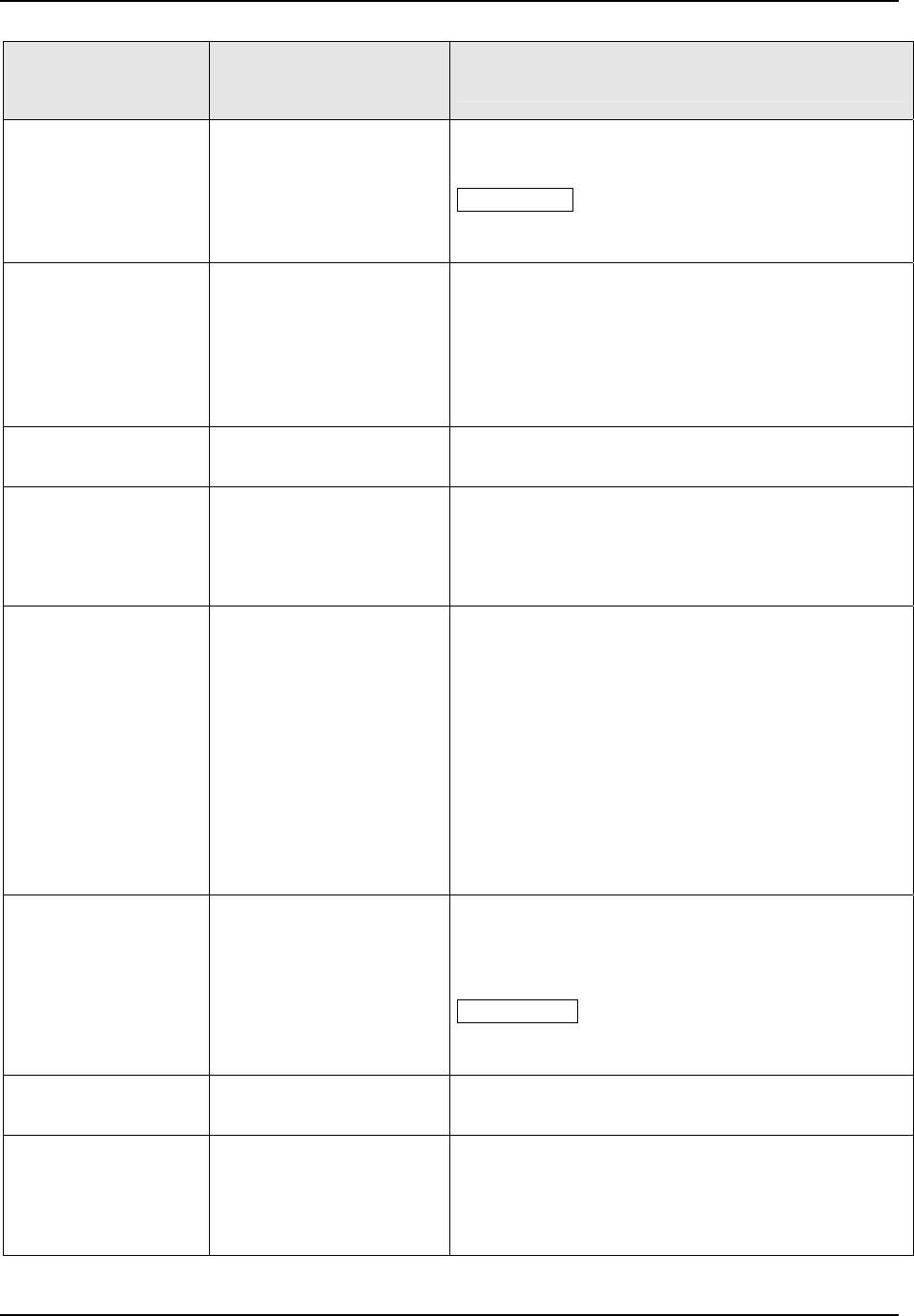
Configuration
170 UDC3500 Universal Digital Controller Product Manual March 2012
Function Prompt
Lower Display
Selections or
Range of Setting
Upper Display
Parameter
Definition
BEGIN
END
BEGINNING OF SEGMENT
END OF SEGMENT
ATTENTION Alarms configured for events will not
operate on Setpoint Program segments of zero
length.
A1S2TYPE
Same as A1S1 TYPE
ALARM 1 SETPOINT 2 TYPE—Select what you
want Setpoint 2 of Alarm 1 to represent.
The selections are the same as A1S1TYPE. In
addition, Alarms configured in the Time Event Group
may also use this setpoint (OR condition). See
Section 3.29.
A1S2 VAL
Same as A1S1 VAL
ALARM 1 SETPOINT 2 VALUE—Same as
A1S1 VAL.
A1S2 H L
HIGH
LOW
ALARM 1 SETPOINT 2 STATE—Same as
A1S1 H L.
A1S2 EV
BEGIN
END
ALARM 1 SEGMENT EVENT 2—Same as A1S1
EV.
ALHYST1
0.0 to 100.0 % of span or
full output as appropriate
ALARM HYSTERESIS FOR ALARM 1—An
adjustable hysteresis is provided such that when
Alarm 1 is OFF it activates at exactly the alarm
setpoint; when Alarm 1 is ON, it will not deactivate
until the variable is 0.0 % to 100 % away from the
alarm setpoint.
Configure the hysteresis of the alarms based on
INPUT signals as a % of input range span.
Configure the hysteresis of the alarm based on
OUTPUT signals as a % of the full scale output
range.
A2S1TYPE
Same as A1S1 TYPE
ALARM 2 SETPOINT 1 TYPE—Select what you
want Setpoint 1 of Alarm 2 to represent.
The selections are the same as A1S1TYPE.
ATTENTION Not available with Relay Duplex or
Position Proportional output types unless using Dual
Relay PWA.
A2S1 VAL
Same as A1S1 VAL
ALARM 2 SETPOINT 1 VALUE—Same as
A1S1 VAL.
A2S1 H L
HIGH
LOW
ALARM 2 SETPOINT 1 STATE—Same as
A1S1 H L.
A2S1 EV
BEGIN
END
ALARM 2 SEGMENT EVENT 1—Same as A1S1
EV.
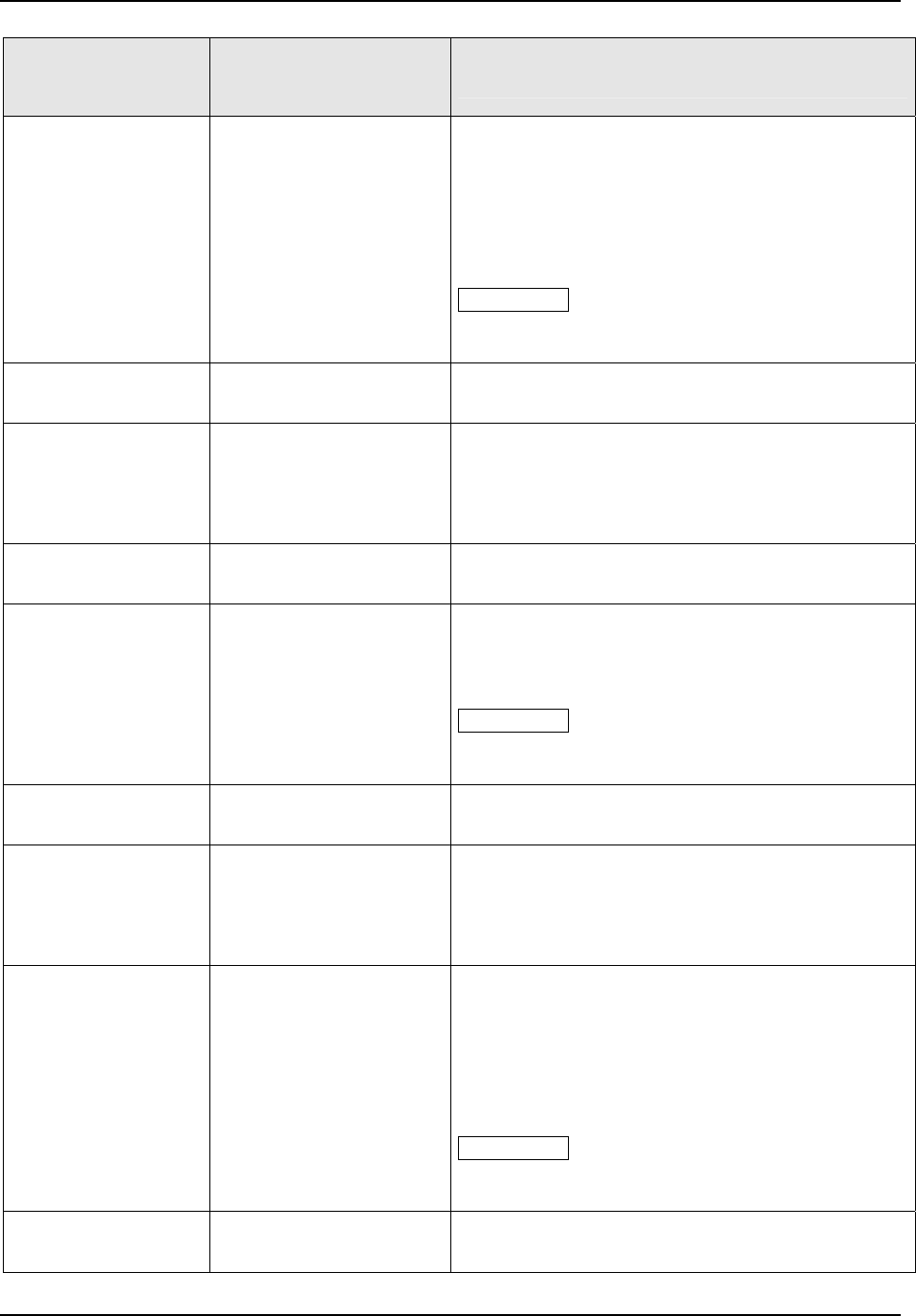
Configuration
March 2012 UDC3500 Universal Digital Controller Product Manual 171
Function Prompt
Lower Display
Selections or
Range of Setting
Upper Display
Parameter
Definition
A2S2TYPE
Same as A1S1 TYPE
ALARM 2 SETPOINT 2 TYPE—Select what you
want Setpoint 2 of Alarm 2 to represent.
The selections are the same as A1S1TYPE. In
addition, Alarms configured in the Time Event Group
may also use this setpoint (OR condition). See
Section 3.29.
ATTENTION Not applicable with Relay Duplex or
Position Proportional output types unless using Dual
Relay PWA.
A2S2 VAL
Same as A1S1 VAL
ALARM 2 SETPOINT 2 VALUE—Same as
A1S1 VAL.
A2S2 H L
HIGH
LOW
ALARM 2 SETPOINT 2 STATE—Same as
A1S1 H L.
A2S2 EV
BEGIN
END
ALARM 2 SEGMENT EVENT 2—Same as
A1S1 EV.
ALHYST2
0.0 to 100.0 % of span or
full output as appropriate
ALARM HYSTERESIS FOR ALARM 2—Same as
ALHYST1.
A3S1TYPE
Same as A1S1 TYPE
ALARM 3 SETPOINT 1 TYPE—Select what you
want Setpoint 1 of Alarm 3 to represent.
The selections are the same as A1S1TYPE.
ATTENTION Not applicable with Relay Duplex or
Position Proportional output types unless using Dual
Relay PWA.
A3S1 VAL
Same as A1S1 VAL
ALARM 3 SETPOINT 1 VALUE—Same as
A1S1 VAL.
A3S1 H L
HIGH
LOW
ALARM 3 SETPOINT 1 STATE—Same as
A1S1 H L.
A3S1 EV
BEGIN
END
ALARM 3 SEGMENT EVENT 1—Same as
A1S1 EV.
A3S2TYPE
Same as A1S1 TYPE
ALARM 3 SETPOINT 2 TYPE—Select what you
want Setpoint 2 of Alarm 3 to represent.
The selections are the same as A1S1TYPE. In
addition, Alarms configured in the Time Event Group
may also use this setpoint (OR condition). See
Section 3.29.
ATTENTION Not applicable with Relay Duplex or
Position Proportional output types unless using Dual
Relay PWA.
A3S2 VAL
Same as A1S1 VAL
ALARM 3 SETPOINT 2 VALUE—Same as
A1S1 VAL.
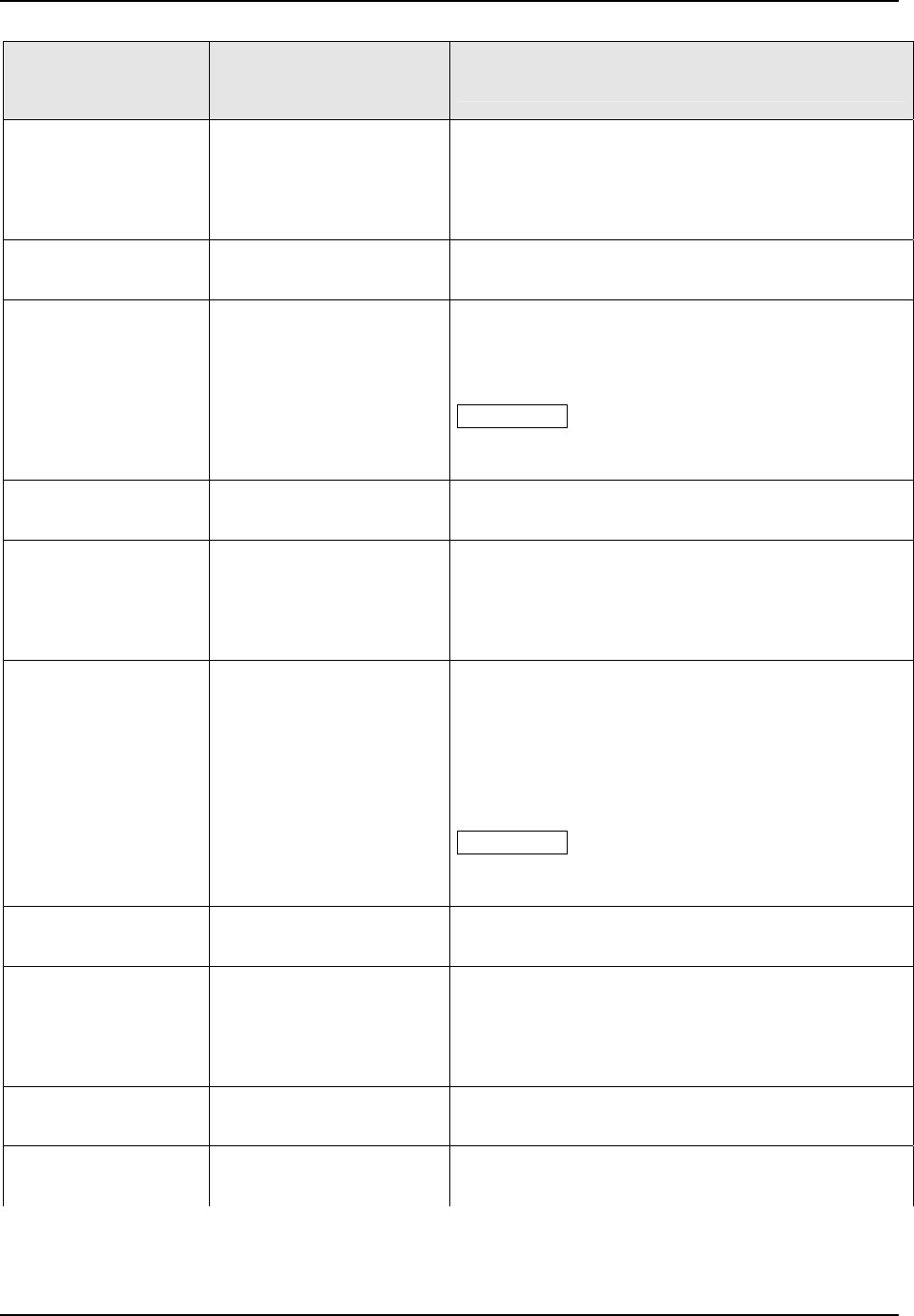
Configuration
172 UDC3500 Universal Digital Controller Product Manual March 2012
Function Prompt
Lower Display
Selections or
Range of Setting
Upper Display
Parameter
Definition
A3S2 H L
HIGH
LOW
ALARM 3 SETPOINT 2 STATE—Same as
A1S1 H L.
A3S2 EV
BEGIN
END
ALARM 3 SEGMENT EVENT 2—Same as
A1S1 EV.
ALHYST3
0.0 to 100.0 % of span or
full output as appropriate
ALARM HYSTERESIS FOR ALARM 3—Same as
ALHYST1.
A4S1TYPE
Same as A1S1 TYPE
ALARM 4 SETPOINT 1 TYPE—Select what you
want Setpoint 1 of Alarm 4 to represent.
The selections are the same as A1S1TYPE.
ATTENTION Not applicable with Relay Duplex or
Position Proportional output types unless using Dual
Relay PWA.
A4S1 VAL
Same as A1S1 VAL
ALARM 4 SETPOINT 1 VALUE—Same as
A1S1 VAL.
A4S1 H L
HIGH
LOW
ALARM 4 SETPOINT 1 STATE—Same as
A1S1 H L.
A4S1 EV
BEGIN
END
ALARM 4 SEGMENT EVENT 1—Same as
A1S1 EV.
A4S2TYPE
Same as A1S1 TYPE
ALARM 4 SETPOINT 2 TYPE—Select what you
want Setpoint 2 of Alarm 4 to represent.
The selections are the same as A1S1TYPE. In
addition, Alarms configured in the Time Event Group
may also use this setpoint (OR condition). See
Section 3.29.
ATTENTION Not applicable with Relay Duplex or
Position Proportional output types unless using Dual
Relay PWA.
A4S2 VAL
Same as A1S1 VAL
ALARM 4 SETPOINT 2 VALUE—Same as
A1S1 VAL.
A4S2 H L
HIGH
LOW
ALARM 4 SETPOINT 2 STATE—Same as
A1S1 H L.
A4S2 EV
BEGIN
END
ALARM 4 SEGMENT EVENT 2—Same as
A1S1 EV.
ALHYST4
0.0 to 100.0 % of span or
full output as appropriate
ALARM HYSTERESIS FOR ALARM 4—Same as
ALHYST1.
ALM OUT1
LATCHING ALARM OUTPUT 1—Alarm output 1
can be configured to be Latching or Non-latching.
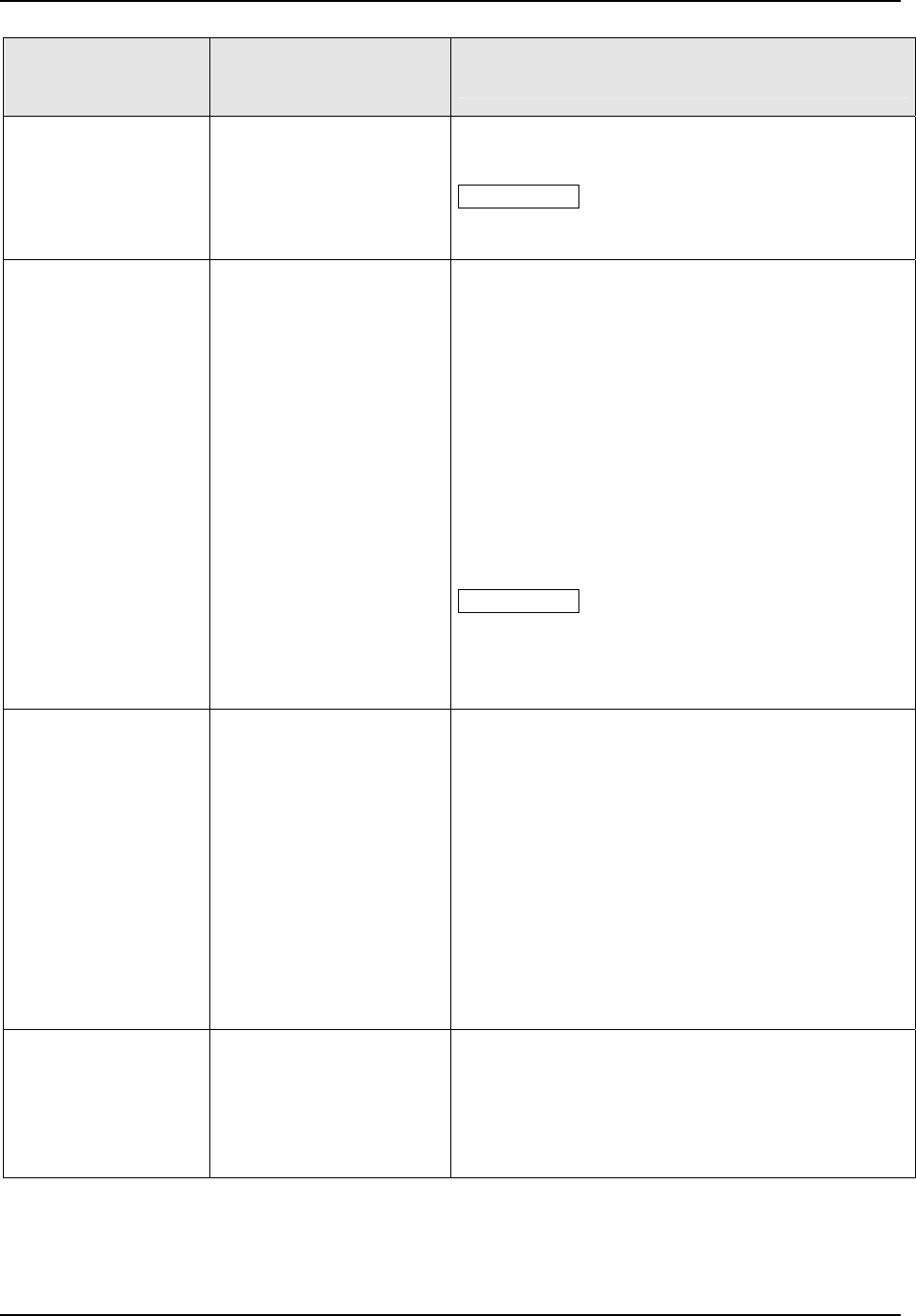
Configuration
March 2012 UDC3500 Universal Digital Controller Product Manual 173
Function Prompt
Lower Display
Selections or
Range of Setting
Upper Display
Parameter
Definition
NoLATCH
LATCH
NoLATCH —Non-latching
LATCH—Latching
ATTENTION When configured for latching, the
alarm will stay active after the alarm condition ends
until the
Run/Hold key is pressed.
BLOCK
ALARM BLOCKING—Prevents nuisance alarms
when the controller is first powered up. The alarm is
suppressed until the parameter gets to the non-
alarm limit or band. Alarm blocking affects both
alarm setpoints.
DISABLE
ALARM 1
ALARM 2
ALARM 3
ALARM 4
ALARM12
ALARM123
ALRM1234
DISABLE—Disables blocking
ALARM 1—Blocks alarm 1 only
ALARM 2—Blocks alarm 2 only
ALARM 3—Blocks alarm 3 only
ALARM 4—Blocks alarm 4 only
ALARM 1 & 2—Blocks alarm 1 and 2 only
ALARM 1, 2 & 3—Blocks alarm 1, 2 and 3 only
ALARM 1, 2, 3 & 4—Blocks all alarms
ATTENTION When enabled on power up or initial
enabling via configuration, the alarm will not activate
unless the parameter being monitored has not been
in an alarm condition for a minimum of one control
cycle (167 ms).
DIAGNOST
DIAGNOSTIC ALARM—Monitors all Current
Outputs configured for 4-20mA operation for an
open circuit condition. If any of these outputs falls
below about 3.5 mA, then an Alarm is activated. This
configuration is in addition to whatever was selected
for AxSxTYPE.
DISABLE
ALARM 1
ALARM 2
ALARM 3
ALARM 4
DISWARN
DISABLE—Disables Diagnostic Alarm
ALARM 1—Alarm 1 is diagnostic alarm
ALARM 2—Alarm 2 is diagnostic alarm
ALARM 3—Alarm 3 is diagnostic alarm
ALARM 4—Alarm 4 is diagnostic alarm
DISABLE WARNING—Disables Output Fail
messages on lower display
ALRM MSG
DISABLE
ENABLE
ALARM MESSAGE—When enabled, a diagnostic
message will appear on the lower display whenever
an alarm is active. This message can be disabled by
pressing the RUN/HOLD
key, similar to other
diagnostic messages. See Section 7.5 for
messages.
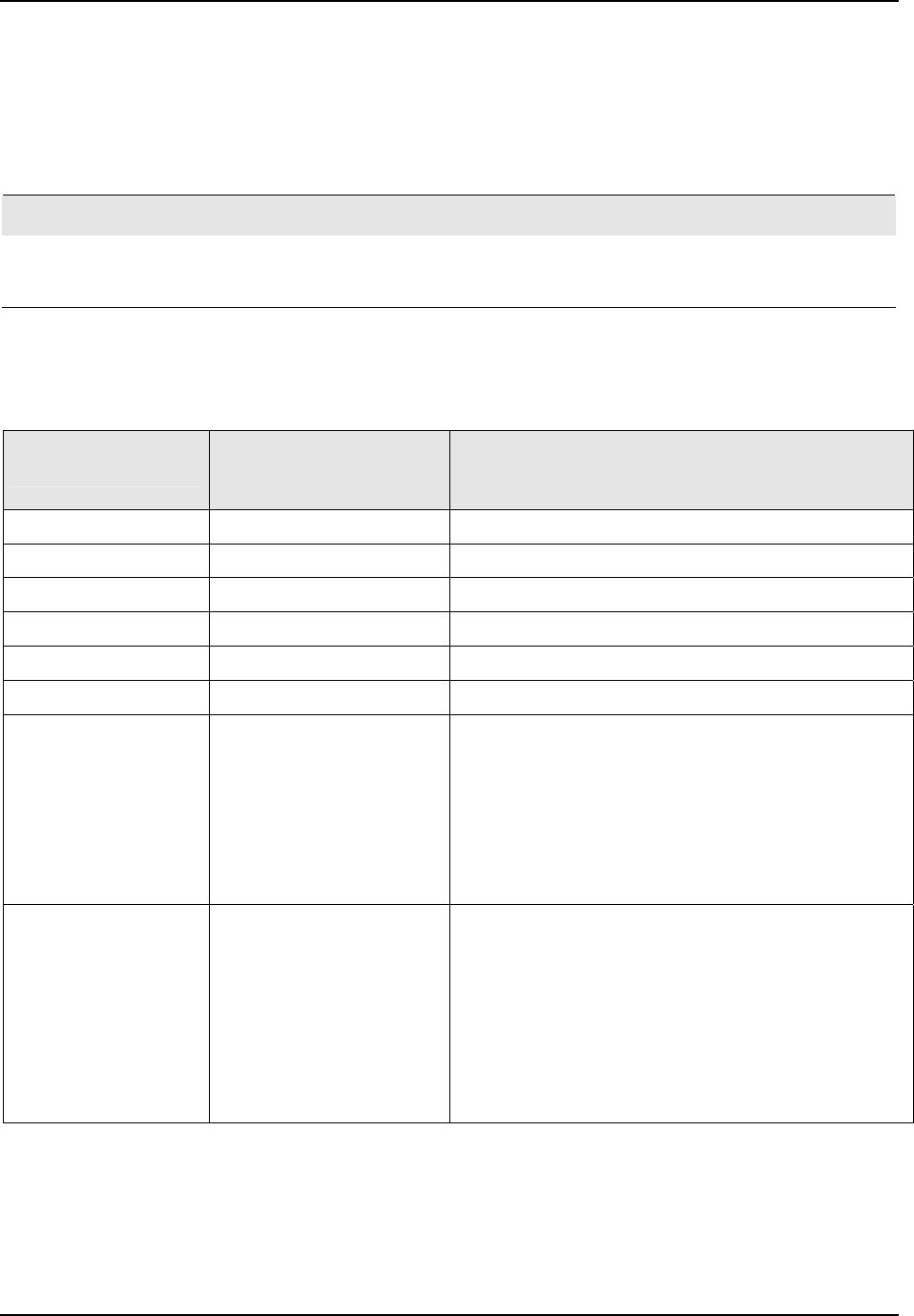
Configuration
3.25 Real Time Clock Set Up Group
Introduction
This group configures the Real Time Clock option.
ATTENTION
The Real Time Clock will not automatically adjust for Daylight Savings Time; it must be done manually.
The Real Time Clock will automatically adjust for Leap Years to make February 29 days long.
Function Prompts
Table 3-25 CLOCK Group Function Prompts
Selections or
Range of Setting
Upper Display
Parameter
Definition
Function Prompt
Lower Display
0 to 23
HOURS HOURS
0 to 59
MINUTES MINUTES
0 to 59
SECONDS SECONDS
2005 to 2099
YEAR YEAR
JANUARY to DECEMBR
MONTH MONTH
1 to 31
DAY DAY
NO
YES
CHANGE CLOCK SETTING?—Change the clock
setting?
NO—Leave the clock values as they are.
YES—Change the values. Pressing the
Func key sets the clock. Pressing any other key will
not set the clock. “YES” will also clear a CLOCKERR
diagnostic message.
SET CLK?
-31 to +31
ADJUST—The clock speed can be adjusted via this
parameter. A setting of zero represents no
adjustment.
Each positive increment represents a clock change
of +10.7 seconds per month. Each negative
increment represents a clock change of –5.35
seconds per month. These values correspond to a
total adjustment range of between +5.5 and –2.75
minutes per month.
ADJUST
174 UDC3500 Universal Digital Controller Product Manual March 2012
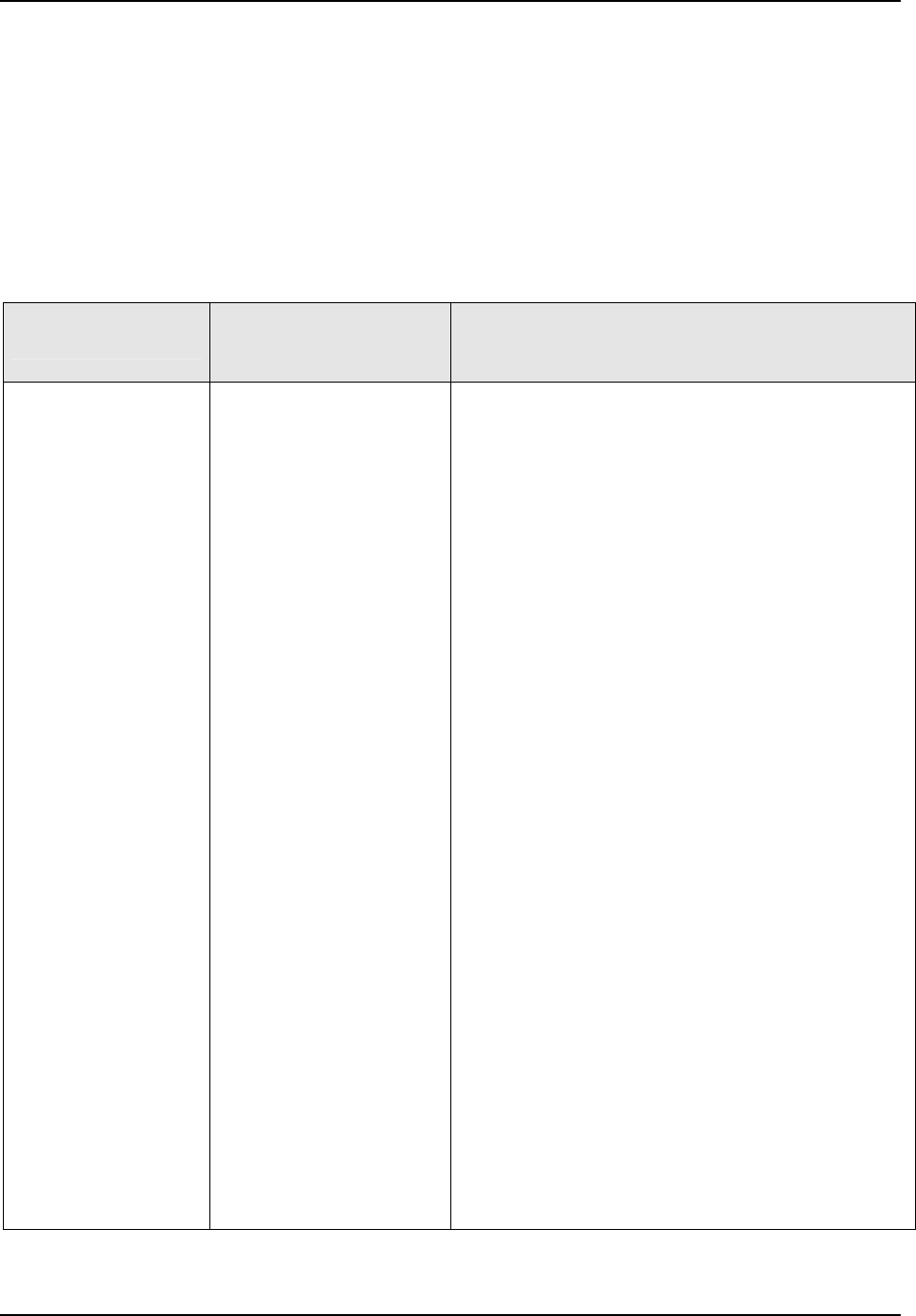
Configuration
3.26 Maintenance Set Up Group
Introduction
The Maintenance group prompts are part of the Healthwatch feature. These prompts let
you count and time the activity of discrete events such as relays, alarms, control modes
and others, to keep track of maintenance needs.
Function Prompts
Table 3-26 MAINTENANCE Group Function Prompts
Selections or
Range of Setting
Upper Display
Parameter
Definition
Function Prompt
Lower Display
TIME1
DISABLE
LASTRES
AL1 SP1
AL1 SP2
AL2 SP1
AL2 SP2
AL3 SP1
AL3 SP2
AL4 SP1
AL4 SP2
TIMER 1—The timer tracks the elapsed time of the
selected event.
DISABLE—Disables the timer.
LAST RESET—Time elapsed since the last reset.
ALARM 1 SETPOINT 1—Cumulative time Alarm 1
Setpoint 1 was activated.
ALARM 1 SETPOINT 2—Cumulative time Alarm 1
Setpoint 2 was activated.
ALARM 2 SETPOINT 1—Cumulative time Alarm 2
Setpoint 1 was activated.
ALARM 2 SETPOINT 2—Cumulative time Alarm 2
Setpoint 2 was activated.
ALARM 3 SETPOINT 1—Cumulative time Alarm 3
Setpoint 1 was activated.
ALARM 3 SETPOINT 2—Cumulative time Alarm 3
Setpoint 2 was activated.
ALARM 4 SETPOINT 1—Cumulative time Alarm 4
Setpoint 1 was activated.
ALARM 4 SETPOINT 2—Cumulative time Alarm 4
Setpoint 2 was activated.
MANUAL
GUAR SK
SOOTNG
DIGIN1
DIGIN2
DIGIN3
DIGIN4
MANUAL2
LOOP 1 MANUAL—Cumulative time Loop 1 was in
Manual.
GUARANTEED SOAK—Cumulative time the
process was outside the guaranteed soak band.
SOOTING—Cumulative time process was in sooting
state
DIGITAL INPUT1—Cumulative time Digital Input 1
was closed
DIGITAL INPUT 2—Cumulative time Digital Input 2
was closed
DIGITAL INPUT3—Cumulative time Digital Input 3
was closed
DIGITAL INPUT 4—Cumulative time Digital Input 4
was closed
LOOP 2 MANUAL—Cumulative time Loop 2 was in
Manual.
March 2012 UDC3500 Universal Digital Controller Product Manual 175
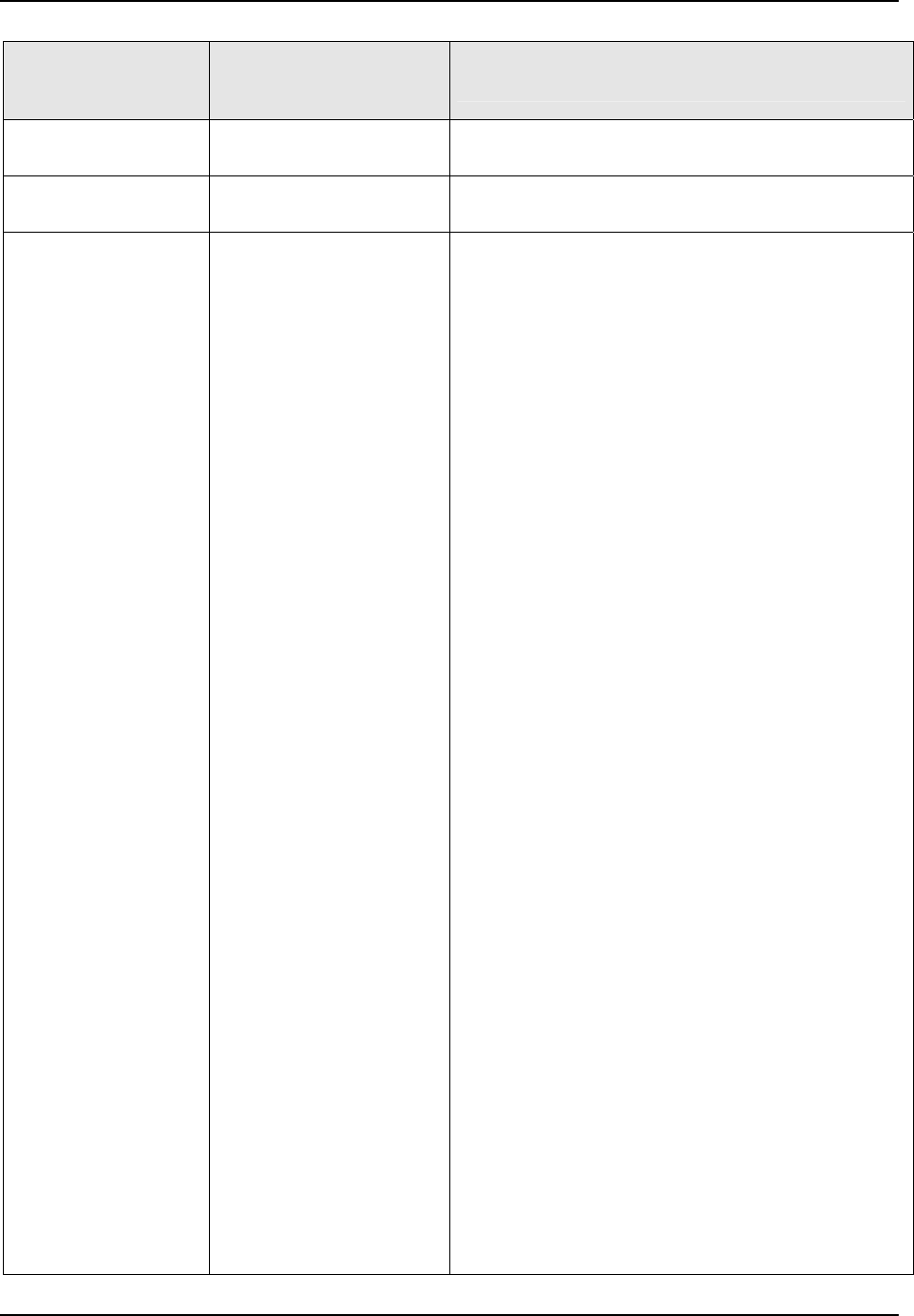
Configuration
176 UDC3500 Universal Digital Controller Product Manual March 2012
Function Prompt
Lower Display
Selections or
Range of Setting
Upper Display
Parameter
Definition
TIME 2
Same as TIME 1
TIMER 2—The timer tracks the elapsed time of the
selected event.
TIME 3
Same as TIME 1
TIMER 3—The timer tracks the elapsed time of the
selected event.
COUNT 1
COUNTER 1—The counter counts the number of
times the selected event has occurred.
DISABLE
MANUAL
DISABLE—Counter is not in use.
LOOP 1 MANUAL—Number of times Loop 1 has
been in Manual mode.
AL1SP1
AL1SP2
AL2SP1
AL2SP2
AL3SP1
AL3SP2
AL4SP1
AL4SP2
ALARM 1 SETPOINT 1—Number of times Alarm 1
Setpoint 1 has been activated.
ALARM 1 SETPOINT 2—Number of times Alarm 1
Setpoint 2 has been activated.
ALARM 2 SETPOINT 1—Number of times Alarm 2
Setpoint 1 has been activated.
ALARM 2 SETPOINT 2—Number of times Alarm 2
Setpoint 2 has been activated.
ALARM 3 SETPOINT 1—Number of times Alarm 3
Setpoint 1 has been activated.
ALARM 3 SETPOINT 2—Number of times Alarm 3
Setpoint 2 has been activated.
ALARM 4 SETPOINT 1—Number of times Alarm 4
Setpoint 1 has been activated.
ALARM 4 SETPOINT 2—Number of times Alarm 4
Setpoint 2 has been activated.
DIGIN1
DIGIN2
DIGIN3
DIGIN4
DIGITAL INPUT 1—Number of times Digital Input 1
has closed.
DIGITAL INPUT 2—Number of times Digital Input 2
has closed.
DIGITAL INPUT 3—Number of times Digital Input 3
has closed.
DIGITAL INPUT 4—Number of times Digital Input 4
has closed.
OUT1*1K
OUT2*1K
OUT3*1K
OUT4*1K
OUT5*1K
GUAR SK
PWRCYC
PVRANGE
OUTPUT 1 RELAY x 1000—Thousands of times
Output 1 relay has been activated.
OUTPUT 2 RELAY x 1000—Thousands of times
Output 2 relay has been activated.
OUTPUT 3 RELAY x 1000—Thousands of times
Output 3 relay has been activated.
OUTPUT 4 RELAY x 1000—Thousands of times
Output 4 relay has been activated.
OUTPUT 5 RELAY x 1000—Thousands of times
Output 5 relay has been activated.
GUARANTEED SOAK—Number of times unit has
been in guaranteed soak.
POWER CYCLE—Number of times unit’s power has
cycled off and on.
LOOP 1 PV RANGE—Number of times Loop 1’s PV
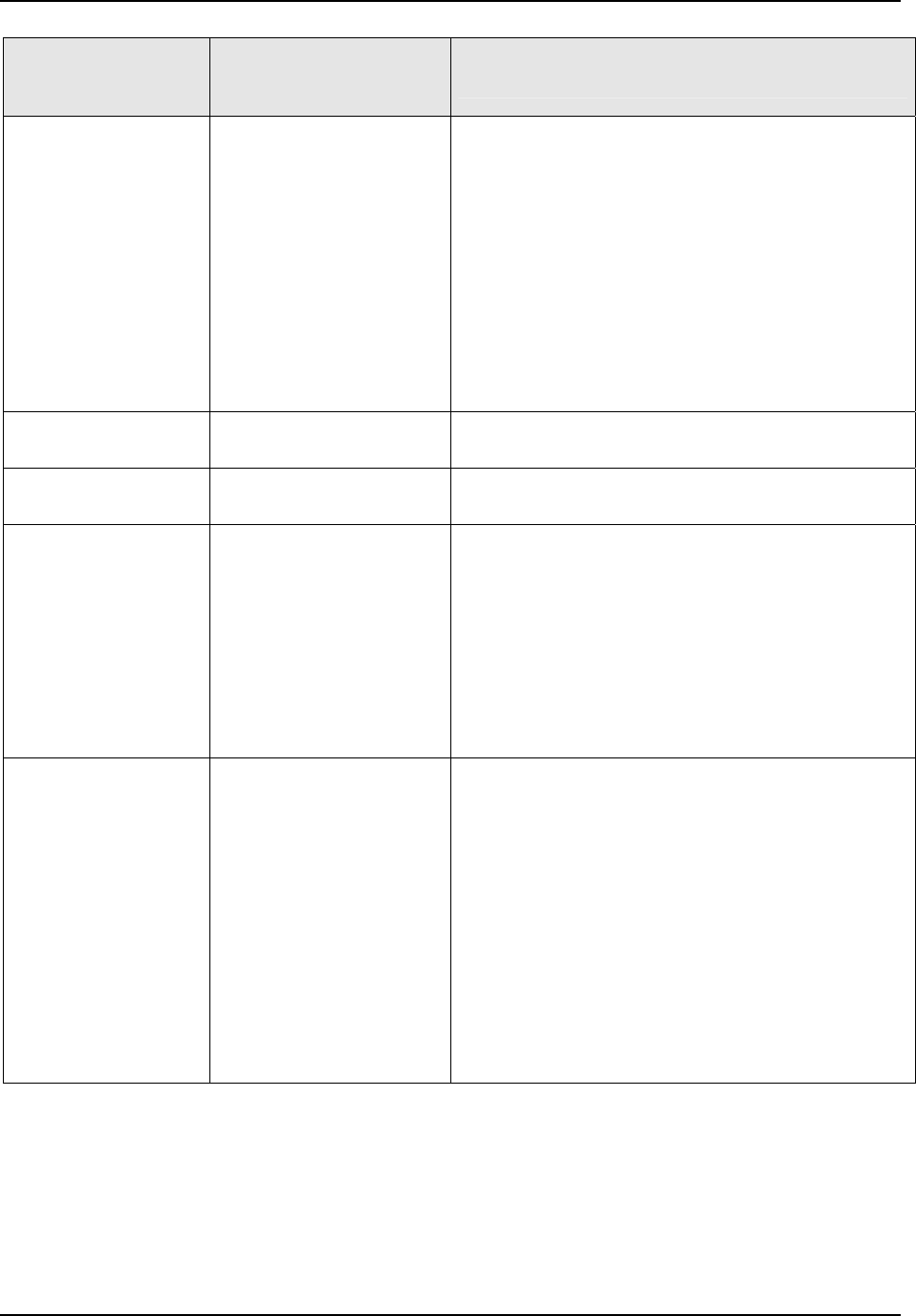
Configuration
March 2012 UDC3500 Universal Digital Controller Product Manual 177
Function Prompt
Lower Display
Selections or
Range of Setting
Upper Display
Parameter
Definition
FAILSAFE
TUNE
MANUAL2
PVRANG2
FAILSF2
TUNE2
has been out of range.
LOOP 1 FAILSAFE—Number of times Loop 1 has
been in Failsafe mode.
LOOP 1 TUNE—Number of times Loop 1 has been
tuned (manually and automatically)
LOOP 2 MANUAL—Number of times Loop 2 has
been in Manual mode.
LOOP 2 PV RANGE—Number of times Loop 2’s PV
has been out of range.
LOOP 2 FAILSAFE—Number of times Loop 2 has
been in Failsafe mode.
LOOP 2 TUNE—Number of times Loop 2 has been
tuned (manually and automatically).
COUNT 2
Same as COUNTER1
COUNTER 2—The counter counts the number of
times the selected event has occurred.
COUNT 3
Same as COUNTER1
COUNTER 3—The counter counts the number of
times the selected event has occurred.
PASSWORD
0-9999
PASSWORD—Entering the designated number
resets to zero the timer or counter specified by
Reset Type.
To designate a number as the password:
1. Set all timers and counters to DISABLE.
2. Enter the desired PASSWORD (0-9999).
3. Select a Reset Type (next prompt). The
PASSWORD goes into effect when you press the
Func key, that is, you can then use it to reset the
counters and timers.
RES TYPE
NONE
TIMER1
TIMER2
TIMER3
ALL TMR
COUNT 1
COUNT 2
COUNT 3
ALL CNT
ALL T+C
RESET TYPE—Select which timers and/or counters
will be reset to zero when the PASSWORD is
entered.
NONE—No values will be reset
TIMER 1 will be reset
TIMER 2 will be reset
TIMER 3 will be reset
ALL TIMERS will be reset
COUNTER 1 will be reset
COUNTER 2 will be reset
COUNTER 3 will be reset
ALL COUNTERS will be reset
ALL TIMERS AND COUNTERS will be reset
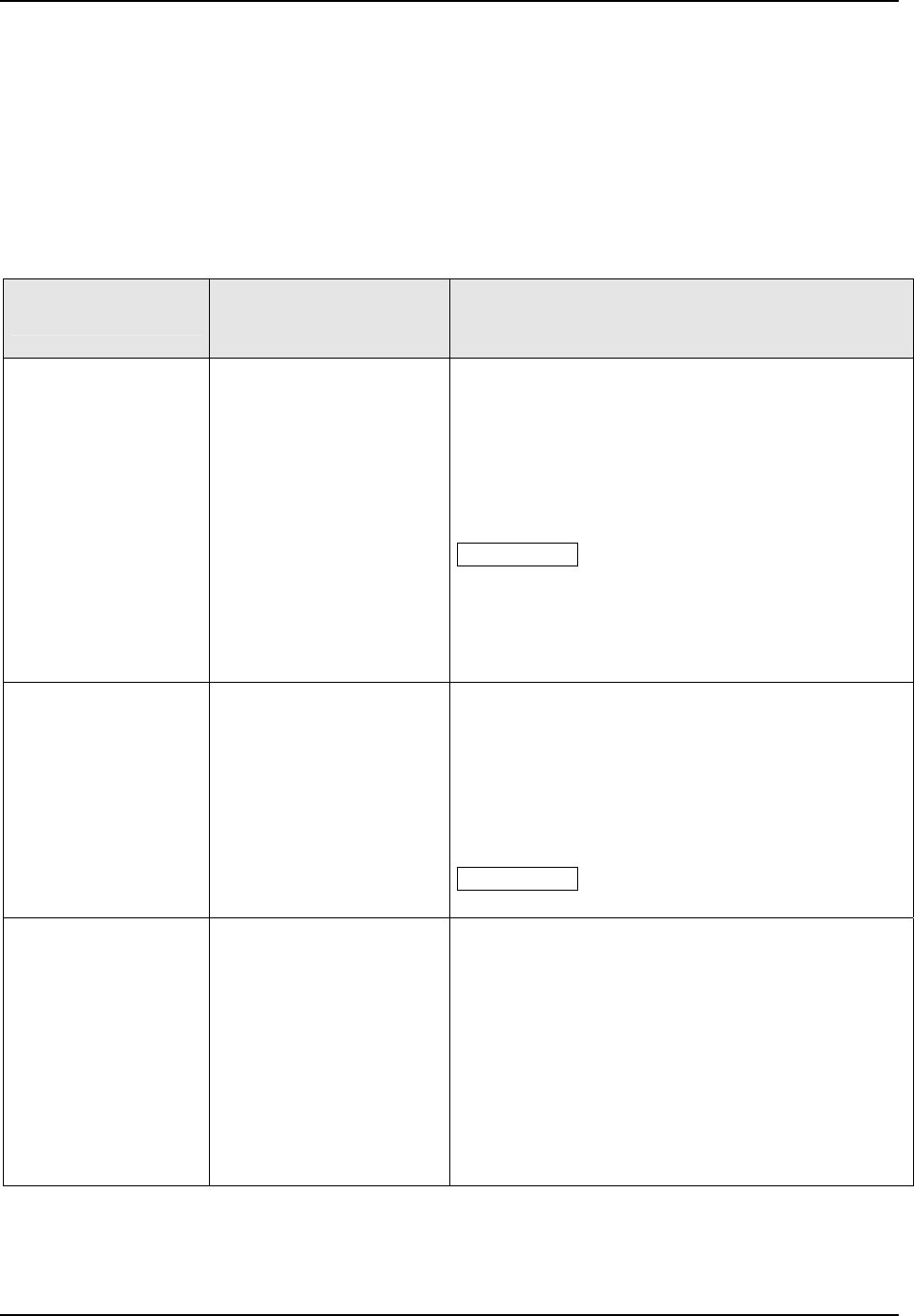
Configuration
3.27 Display Set Up Group
Introduction
This group includes selections for Decimal place, Units of temperature, Language and
Power frequency.
Function Prompts
Table 3-27 DISPLAY Group Function Prompts
Selections or
Range of Setting
Upper Display
Parameter
Definition
Function Prompt
Lower Display
DECIMAL POINT LOCATION—This selection
determines where the decimal point appears in the
display.
DECIMAL
NONE
ONE
TWO
THREE
NONE—No Decimal Place—fixed, no auto-ranging
ONE—One Place
TWO—Two Places
THREE—Three Places
ATTENTION Auto-ranging will occur for selections
of one, two or three decimal places. For example,
should the instrument be configured for two decimal
places and the PV exceeds 99.99, then the display
will change to a single decimal place so that values
of 100.0 and above can be shown.
NONE
ONE
TWO
THREE
DECIMAL POINT LOCATION FOR LOOP 2—This
selection determines where the decimal point
appears in the display for Loop 2.
NONE—No Decimal Place—fixed, no auto-ranging
ONE—One Place
TWO—Two Places
THREE—Three Places
ATTENTION Auto-ranging will occur for selections
of one, two, or three places.
DECIMAL2
TEMPERATURE UNITS FOR BOTH LOOPS—This
selection will affect the indication and operation.
TEMP UNIT
DEG F
DEG F—Degrees Fahrenheit – Degrees F
Annunciator lighted
DEG C
DEG C—Degrees Centigrade – Degrees C
Annunciator lighted
NONE
NONE—No temperature annunciators lighted. Upper
and Lower Displays will show temperature in
Degrees Fahrenheit when inputs are configured for
Thermocouple or RTD types.
178 UDC3500 Universal Digital Controller Product Manual March 2012
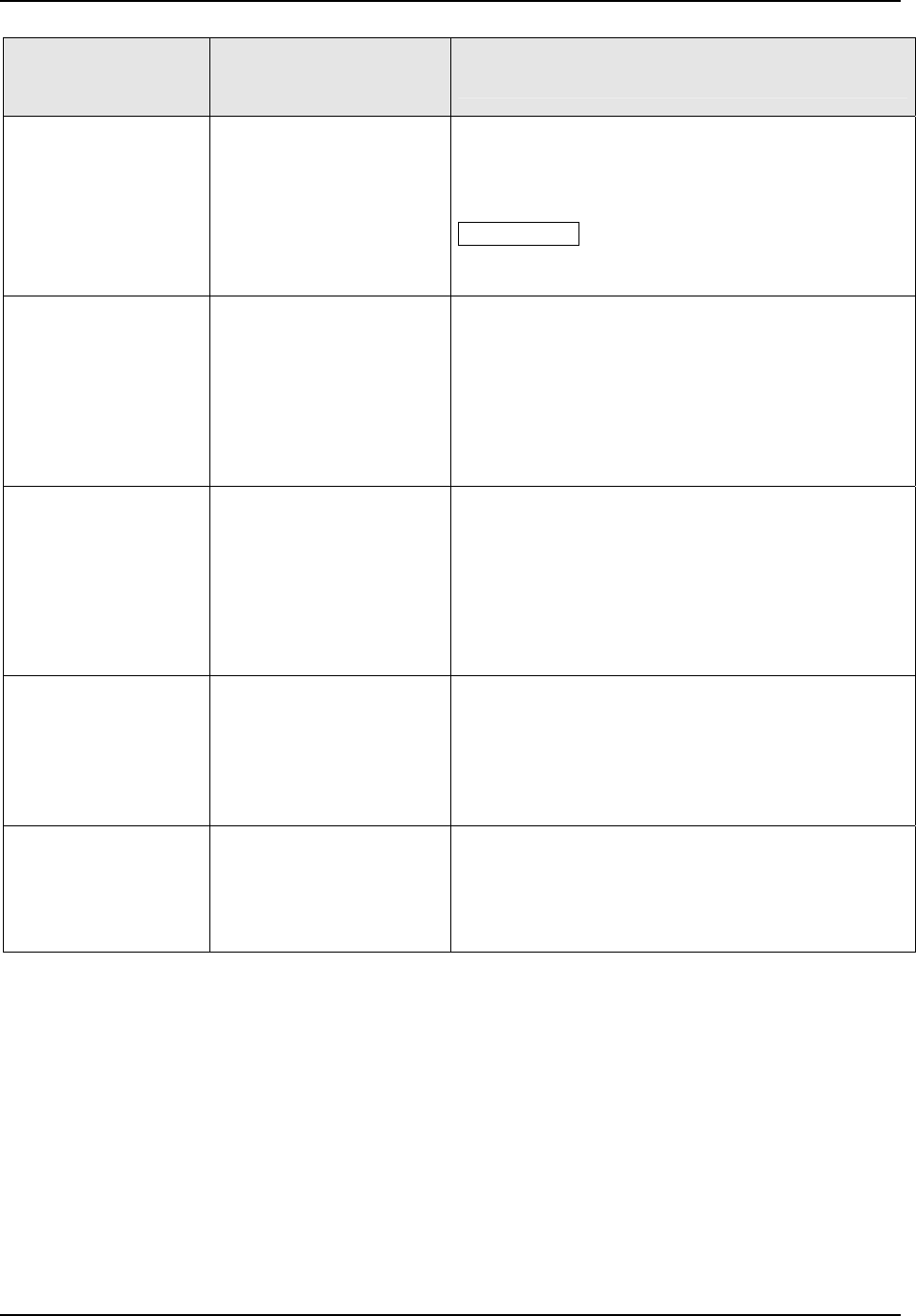
Configuration
March 2012 UDC3500 Universal Digital Controller Product Manual 179
Function Prompt
Lower Display
Selections or
Range of Setting
Upper Display
Parameter
Definition
PWR FREQ
60 HZ
50 HZ
POWER LINE FREQUENCY—Select whether your
controller is operating at 50 or 60 Hertz. Incorrect
setting of this parameter may cause normal mode
noise problems in the input readings.
ATTENTION For controllers powered by +24 Vdc,
this configuration should be set to the AC line
frequency used to produce the +24 Vdc supply.
RATIO 2
INPUT 2 RATIO—This enables the Ratio for Input 2
to be set from the front panel. Input 2 must be
installed and enabled for this configuration to
operate.
DISABLE
DISABLE—Disables setting Ratio 2 from front panel.
ENABLE
ENABLE—Allows the Ratio for Input 2 to be set
through the keyboard.
LANGUAGE
ENGLISH
FRENCH
GERMAN
SPANISH
ITALIAN
LANGUAGE—This selection designates the prompt
language.
ENGLISH
FRENCH
GERMAN
SPANISH
ITALIAN
TC DIAGN
THERMOCOUPLE DIAGNOSTICS—Enable or
disable Thermocouple diagnostic messages on the
Lower Display.
ENABLE
ENABLE—Enable Diagnostic Messages
DISABLE
DISABLE—Disable Diagnostic Messages
IDNUMBER
0 to 255
IDENTIFICATION NUMBER—This configuration is
used only for uniquely identifying a particular
controller over a communications network. The value
selected has no effect on how the controller
operates.
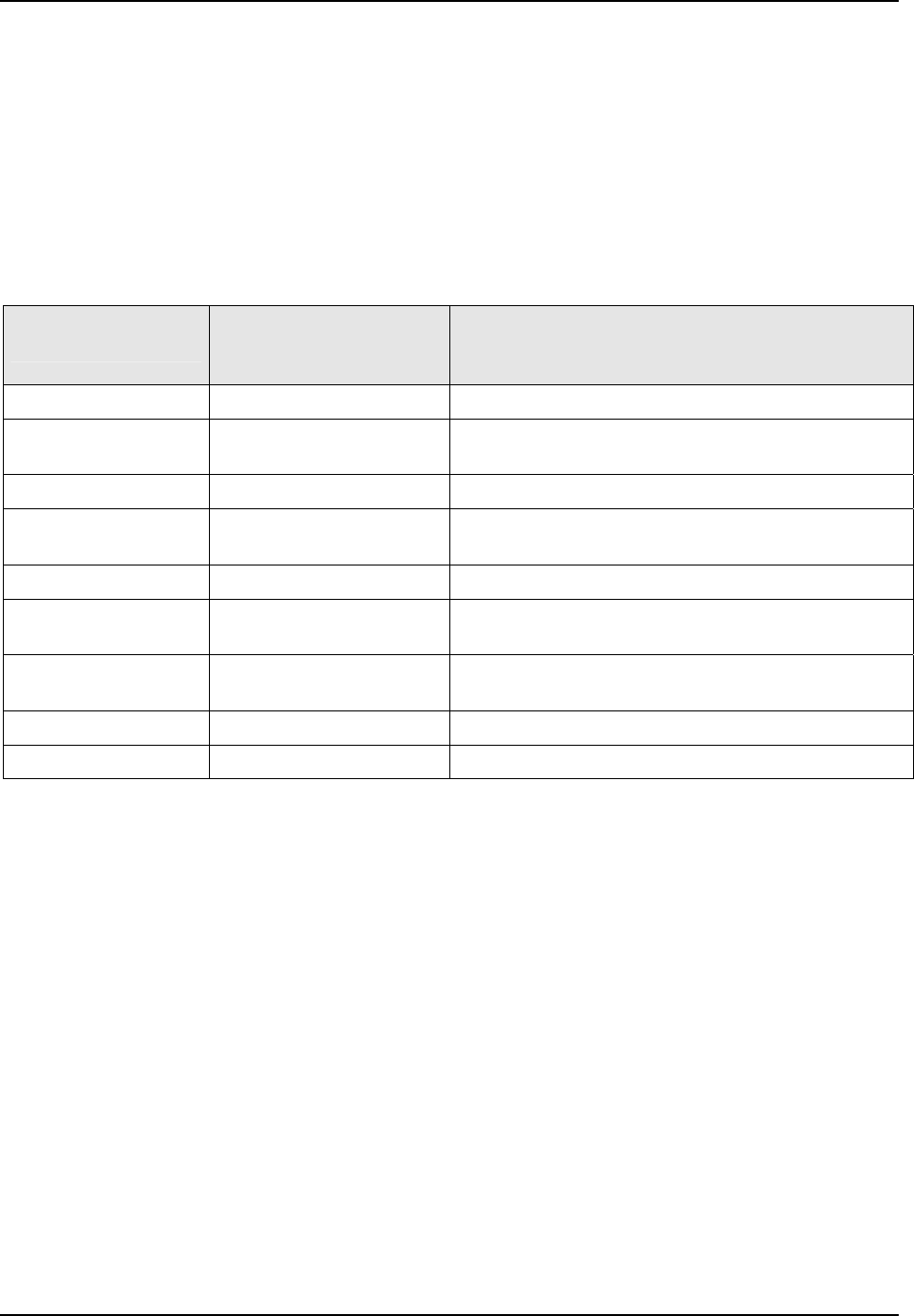
Configuration
3.28 Read Maintenance Set Up Group
Introduction
The Read Maintenance group prompts are part of the Healthwatch feature. These prompts
let you view the values of the Healthwatch Timers and Counters. All of the values in this
Set Up Group are “Read Only” and cannot be changed.
Function Prompts
Table 3-28 READ MAINTENANCE Group Function Prompts
Selections or
Range of Setting
Upper Display
Parameter
Definition
Function Prompt
Lower Display
0 to 9999 Shows elapsed time of Timer 1 in Days.
DAYS 1
00.00 to 23.59 Shows elapsed time of Timer 1 in Hours and
Minutes.
HRS.MIN1
0 to 9999 Shows elapsed time of Timer 2 in Days.
DAYS 2
00.00 to 23.59 Shows elapsed time of Timer 2 in Hours and
Minutes.
HRS.MIN2
0 to 9999 Shows elapsed time of Timer 3 in Days.
DAYS 3
00.00 to 23.59 Shows elapsed time of Timer 3 in Hours and
Minutes.
HRS.MIN3
0-9999 (1 = 1000 counts
for output relays 1 to 5)
Shows the value of Counter 1.
COUNTS 1
Same as COUNTS 1 Shows the value of Counter 2.
COUNTS 2
Same as COUNTS 1 Shows the value of Counter 3.
COUNTS 3
180 UDC3500 Universal Digital Controller Product Manual March 2012
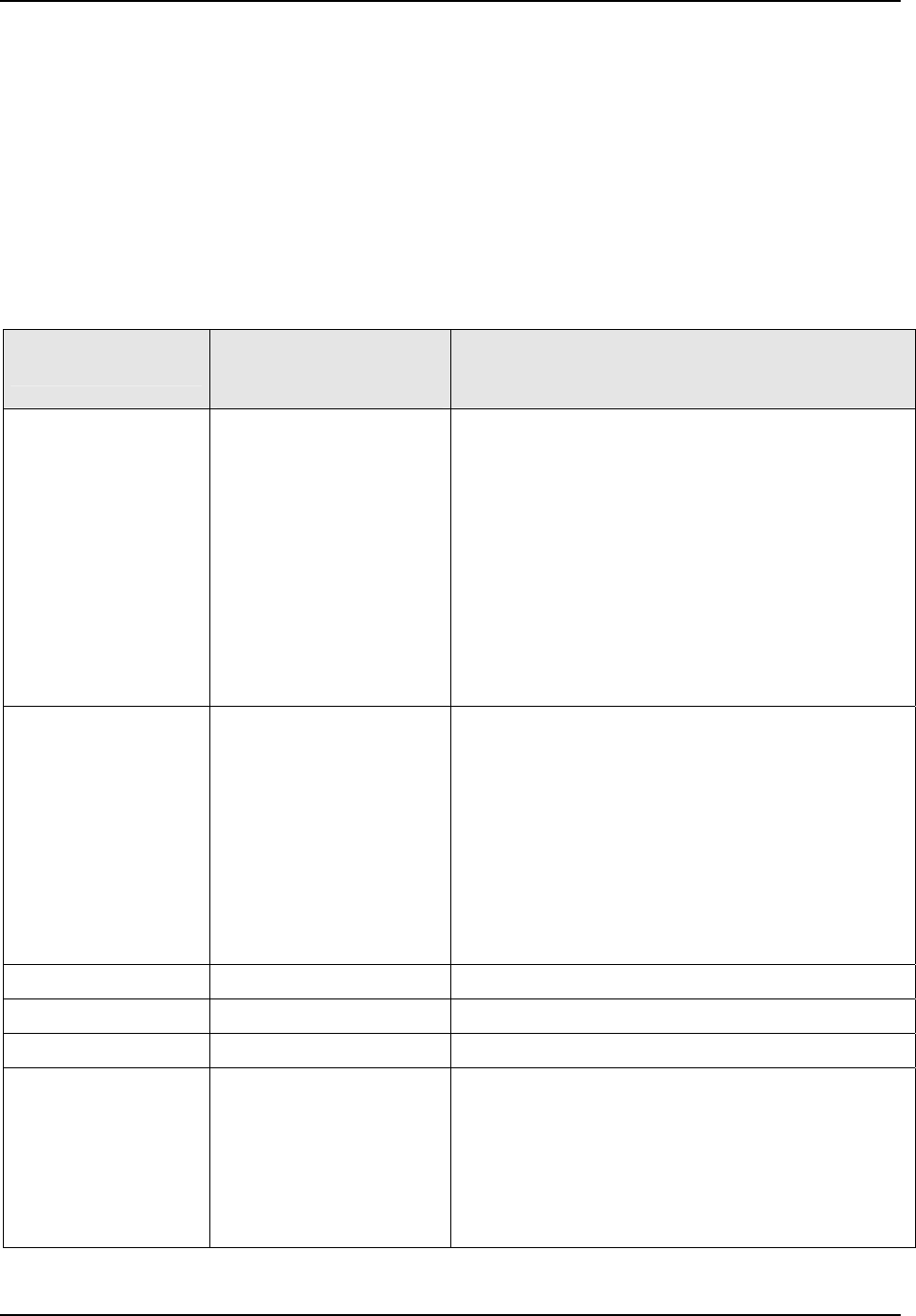
Configuration
3.29 Time Events Set Up Group
Introduction
This group appears only when the Real Time Clock option is installed. These selections
allow the user to program the instrument to perform specific functions at the same time of
day five or seven days a week or on one specific date and time. Up to two independent
functions can be configured.
Function Prompts
Table 3-29 TIME EVT Group Function Prompts
Selections or
Range of Setting
Upper Display
Parameter
Definition
Function Prompt
Lower Display
EVENT 1—The function performed by this event. EVENT 1
NONE
ALM1SP2
ALM2SP2
ALM3SP2
ALM4SP2
STrSP/R
TIMER
AUTO
MAN FS
USE SP1
USE SP2
NONE
ALARM 1 SETPOINT 2 (NOTE 1)
ALARM 2 SETPOINT 2 (NOTE 1)
ALARM 3 SETPOINT 2 (NOTE 1)
ALARM 4 SETPOINT 2 (NOTE 1)
START SETPOINT PROGRAM OR RAMP
TIMER (NOTE 6)
AUTOMATIC MODE (NOTE 2)
MANUAL MODE AT FAILSAFE OUTPUT (NOTE 2)
CONTROL TO LOCAL SETPOINT 1 (NOTE 2)
CONTROL TO LOCAL SETPOINT 2 (NOTE 2)
TIME 1—Time of first event. TIME 1
5DAY WK
FIVE-DAY WEEK—The configured event will occur
at the same time Monday through Friday.
7DAY WK
SEVEN-DAY WEEK—The configured event will
occur at the same time Sunday through Saturday.
DAYofWK
SAME DAY EVERY WEEK—The configured event
will occur once a week at the configured time.
CALENDR
CALENDAR—The configured event will occur once
at a specific date and time.
0 to 23
HOUR—24 Hour setting HOUR 1
0 to 59
MINUTE—60 Minute setting MINUTE1
JANUARY – DECEMBR
MONTH—Month of the Year (NOTE 3) MONTH 1
DAY 1
1 to 31
1 to 7
DAY—Day of Month or Week
When “CALENDR” is configured: Day of the month
(NOTE 5)
When “DAYofWK” is configured: Day of the week
(Sunday = 1, Saturday = 7)
(NOTE 4)
March 2012 UDC3500 Universal Digital Controller Product Manual 181
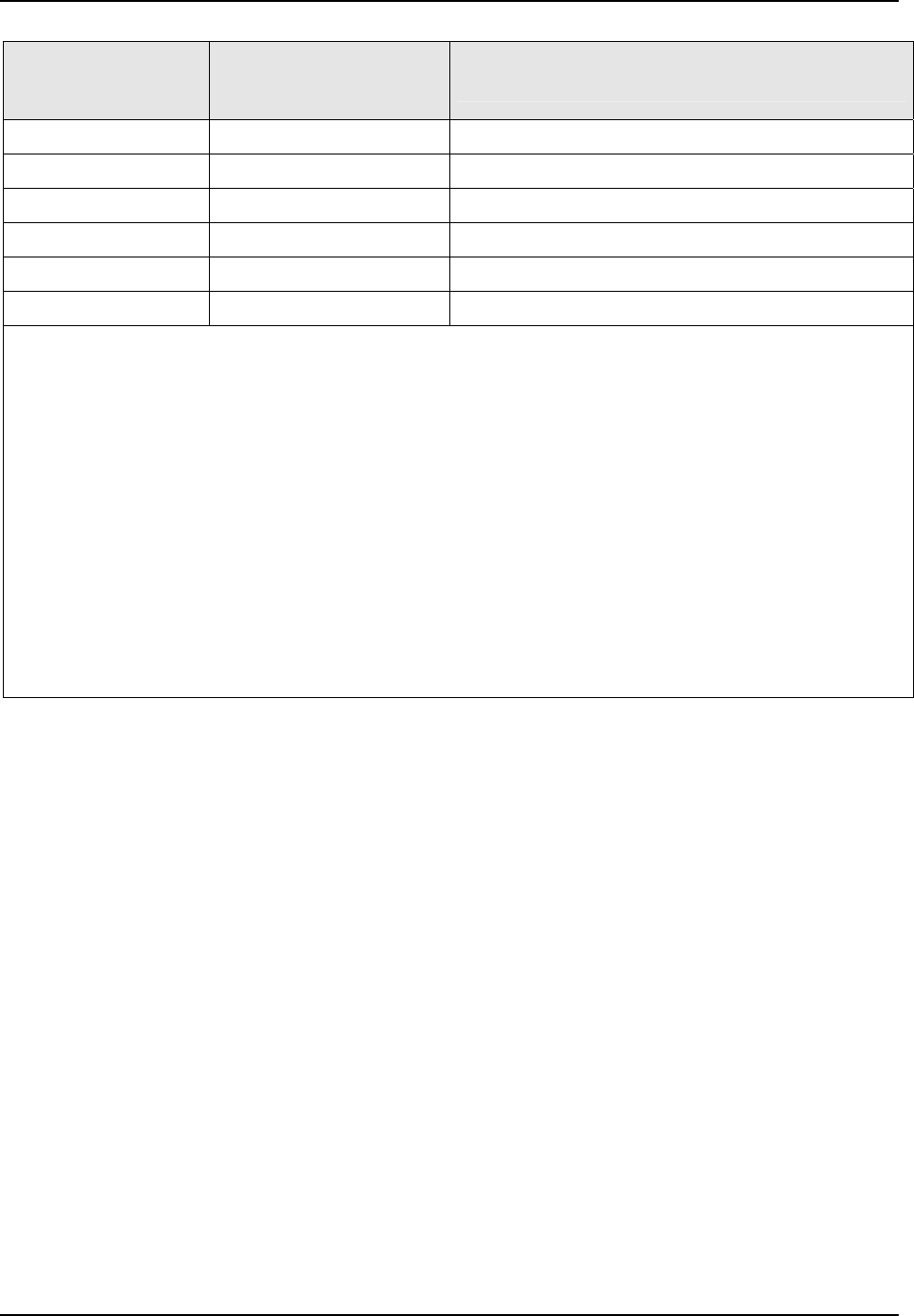
Configuration
182 UDC3500 Universal Digital Controller Product Manual March 2012
Function Prompt
Lower Display
Selections or
Range of Setting
Upper Display
Parameter
Definition
EVENT 2
Same as Event 1
EVENT 2
TIME 2
Same as Time 1
TIME 2
HOUR 2
Same as Hour 1
HOUR 2
MINUTE2
Same as Minute1
MINUTE 2
MONTH 2
Same as Month 1
MONTH 2 (NOTE 3)
DAY 2
Same as Day 1
DAY 2 (NOTE 4)
NOTE 1: When triggered, the configured alarm becomes active for 1 minute and then turns off. The Time
Event setting is in addition to whatever the Alarm X Setpoint 2 Type (where X = 1, 2, 3 or 4) is configured
for and effectively acts as an OR condition. See Section 3.24.
NOTE 2: These prompts are loop dependent. When only one loop is configured, then both EVENT 1 and
EVENT 2 operate on Loop 1. When Two Loops or Cascade are configured, then these prompts for
EVENT 1 operate only on Loop 1, while these prompts for EVENT 2 operate only on Loop 2.
NOTE 3: These prompts appear only when the TIME 1 or TIME 2 configuration is “CALENDR”.
NOTE 4: These prompts appear only when the TIME 1 or TIME 2 configuration is “CALENDR” or
“DAYofWK”.
NOTE 5: The range of DAY 1 or DAY 2 is restricted based upon the MONTH 1 or MONTH 2 selection.
For example, a selection of APRIL for the MONTH 1 configuration will restrict the DAY 1 configuration to a
range of 1 to 30.
NOTE 6: Only operates on SP Program #1.
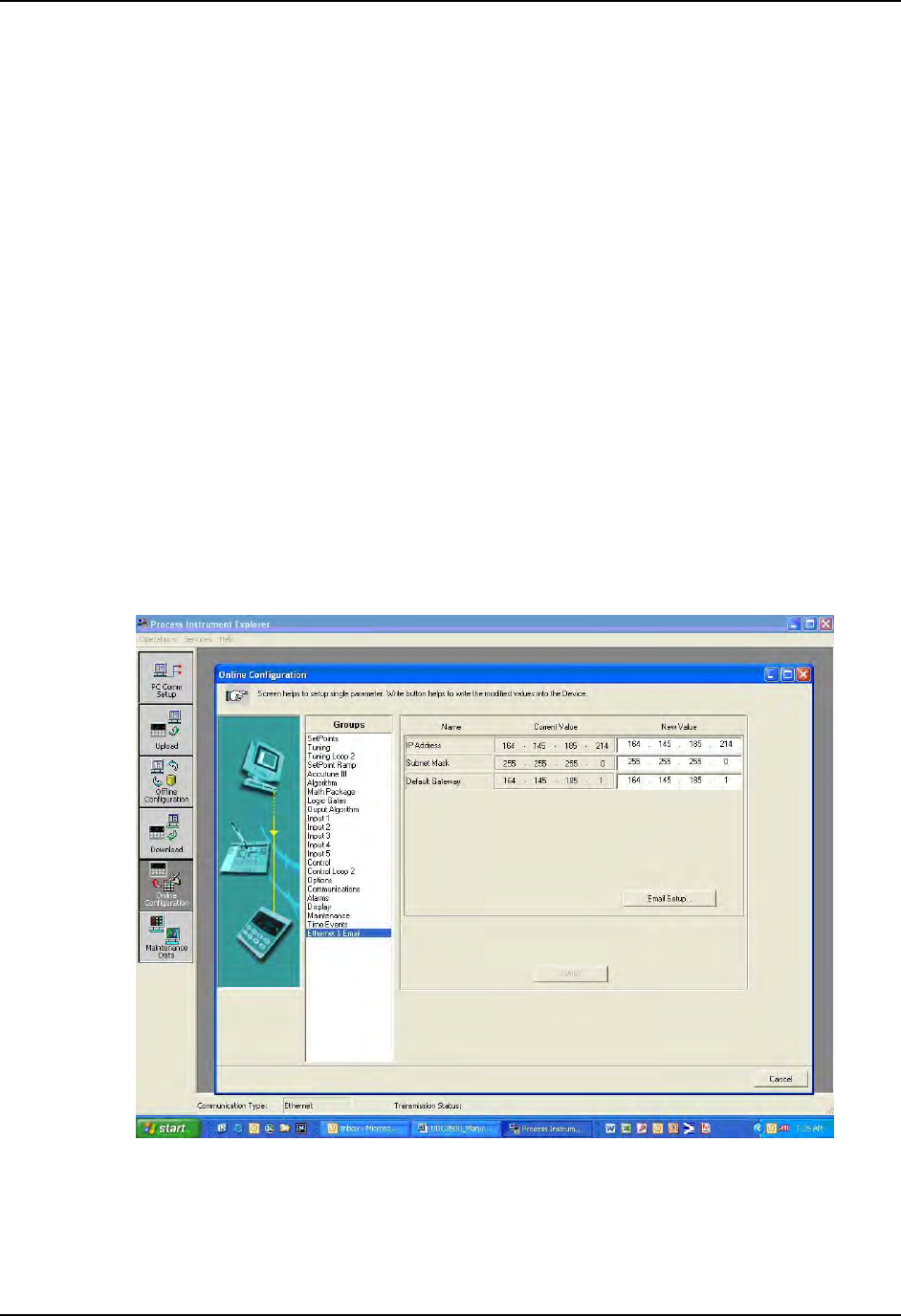
Configuration
3.30 P.I.E. Tool Ethernet and Email Configuration Screens
Introduction
These screens only appear in instruments that have Ethernet Communications. Ethernet
and Email parameters can only be configured via the Process Instrument Explorer (P.I.E.
Tool
®
). The figures in this section show screen-shots of the Configuration Screens from
the PC version of the P.I.E. Tool
®
. Pocket PC Configuration Screens are generally
similar in format but smaller.
Ethernet Configuration Screen
This controller is shipped from the factory with the IP Address set to 10.0.0.2, the Subnet
Mask set to 255.255.255.0 and the Default Gateway set to 0.0.0.0. Consult your
Information Technologies (IT) representative as to how these should be configured for
your installation. The MAC address is printed on the product label located on the
instrument’s case.
These settings can be changed via the Ethernet Configuration Screen as shown in Figure
3-3.
See Section 4.32 – Configuring your Ethernet Connection for more information.
Figure 3-3 Ethernet Configuration Screen
March 2012 UDC3500 Universal Digital Controller Product Manual 183
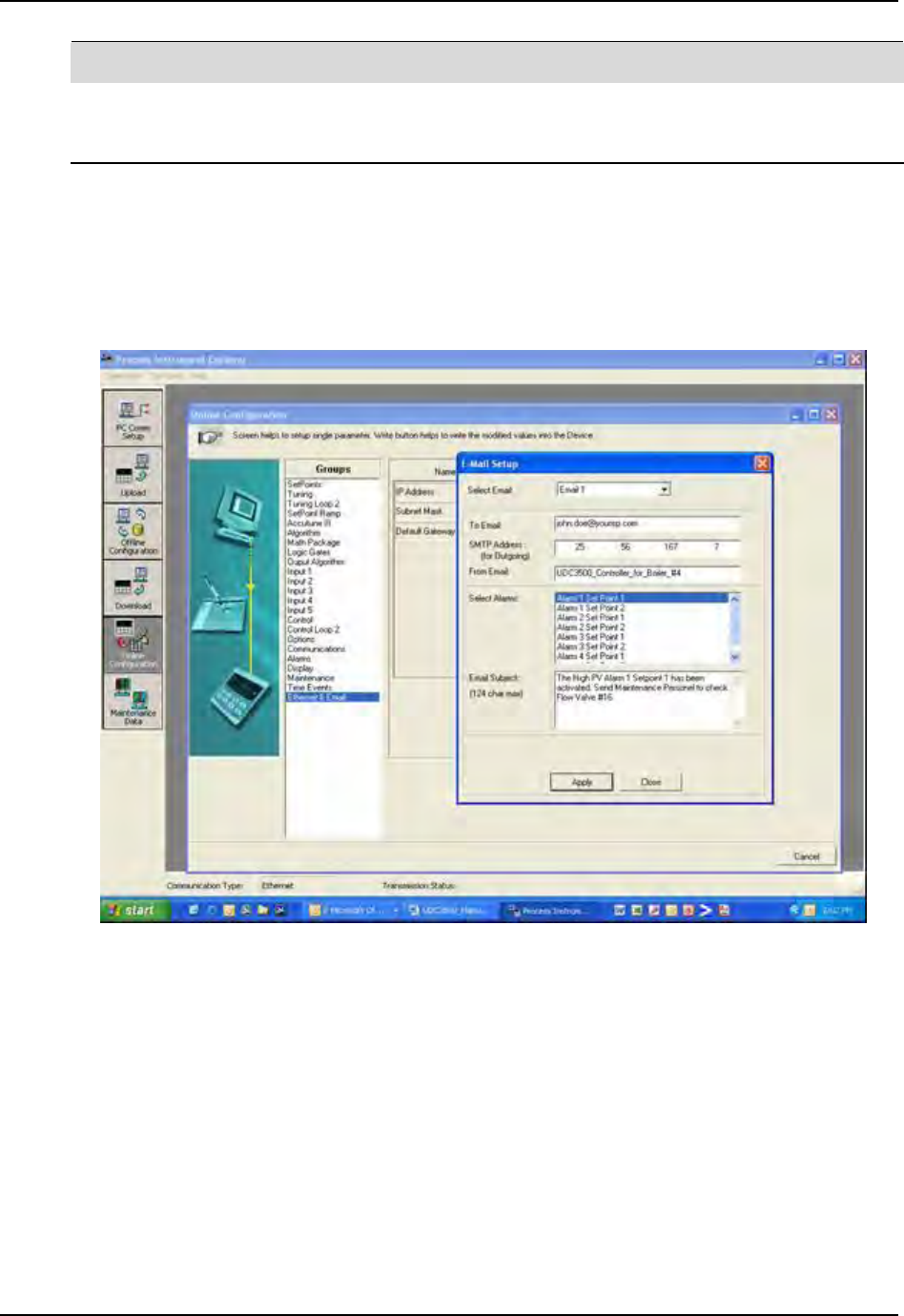
Configuration
WARNING
After you change the IP Address, you will no longer be able to communicate with the instrument
via Ethernet until you change the P.I.E. Tool’s IP Address setting in the “PC COMM SETUP” to
match the setting that is now in your controller.
Email Configuration Screen
This controller may be configured to support up to two Emails. Each Email can be sent to
a different address. Emails are sent only when the selected alarm transitions from the
OFF to the ON state.
Figure 3-4 Email Configuration Screen
This controller cannot receive Emails, so it is suggested that you configure the “From
Email:” window with a non-Email style address that will make it easy for you to
determine which controller sent the Email. For Email technical reasons, the entry in the
“From Email:” window cannot have spaces. See Figure 3-4.
If you do not know your SMTP IP Address for outgoing Email, then contact your
Information Technologies (IT) representative. If your PC is on the same LAN that will be
used by the controller and which also connects to the Email server, then the SMTP IP
Address may generally be found by opening a DOS shell and typing:
ping smtp.[your domain name and extension, i.e., “yourisp.com”]
184 UDC3500 Universal Digital Controller Product Manual March 2012
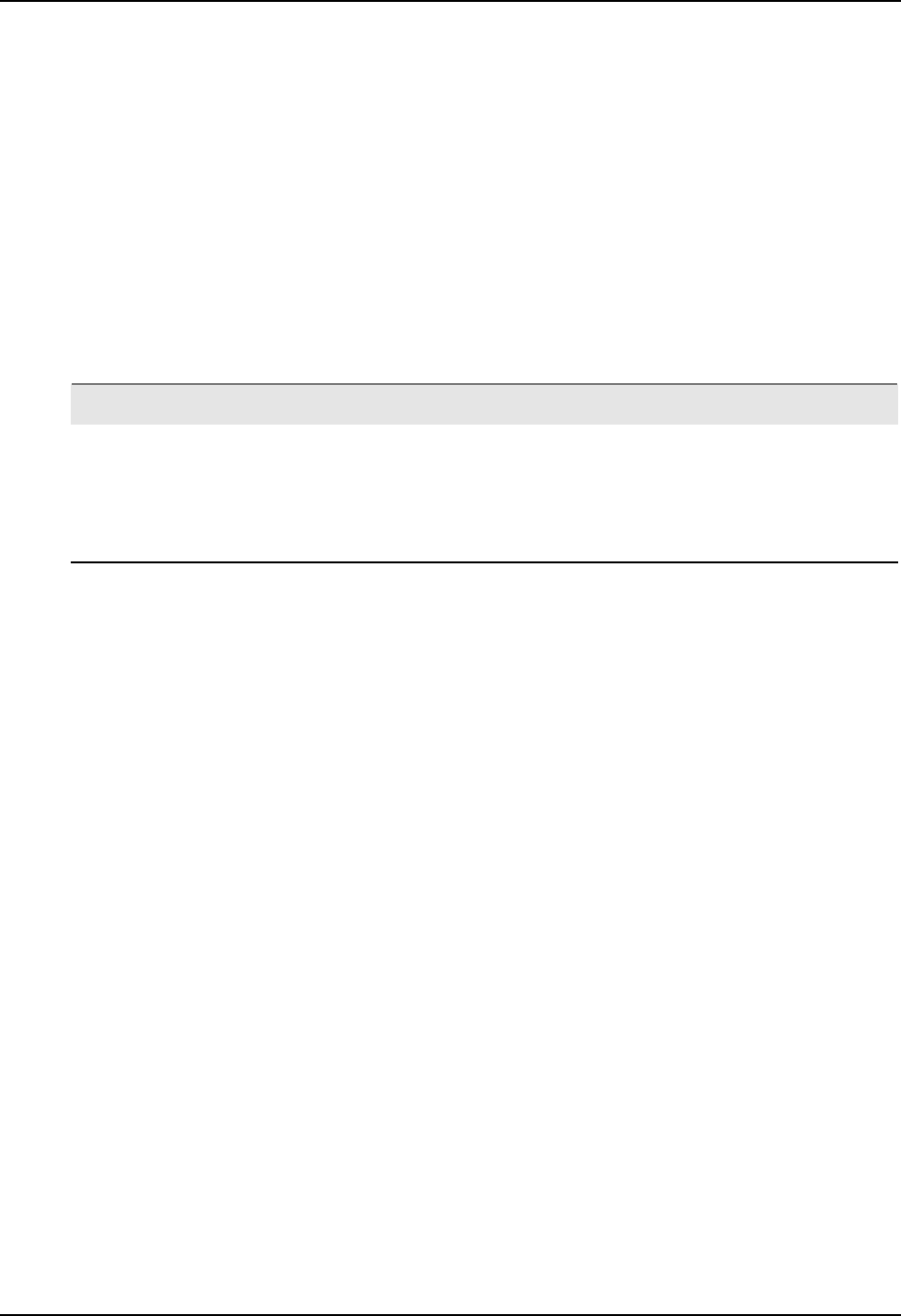
Configuration
The content of the Emails sent by this controller contains the Alarm that triggered the
Email, its settings and the current value (if applicable) of the monitored variable. For
example, the content of an Email triggered by Alarm 1 Setpoint 1 that is configured to
monitor Input 1 would look something like this:
Name: Alarm 1 SP1, Type: INPUT1, Event: HIGH/END, Value = 500.00,
Actual = 712.69
The content of an Email triggered by Alarm 2 Setpoint 1 that is configured to monitor
Digital Input 1 would look something like this:
Name: Alarm 2 SP1, Type: DIG IN1, Event: HIGH/END, Value = 0.00,
Actual = 0.00
ATTENTION
Instruments that do not have the Real Time Clock option will always send Email time-stamped
with the date that the Ethernet Software in the instrument was last modified. Instruments with
the Real Time Clock option will send Email time-stamped with the current time in the controller.
If the SMTP address on your network is changed, such as can happen when a server is
replaced, then you must reconfigure the Email SMTP IP address in this instrument to match.
March 2012 UDC3500 Universal Digital Controller Product Manual 185
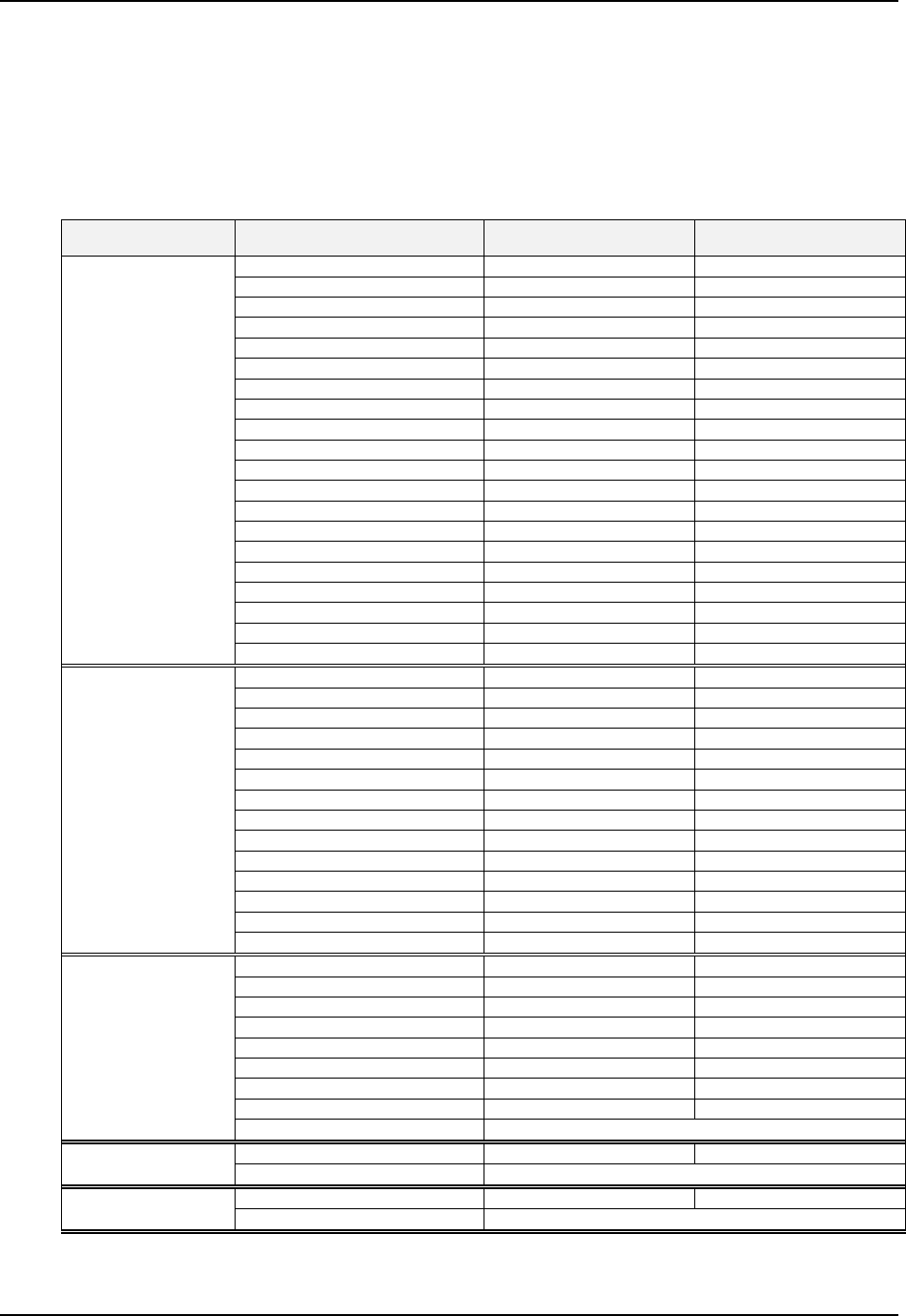
Configuration
3.31 Configuration Record Sheet
Enter the value or selection for each prompt on this sheet so you will have a record of
how your controller was configured. See Section 4.30 for the SetPoint Programming
configuration record sheet.
Table 3-30 Configuration Record Sheet
Group Prompt Function Prompt Value or Selection Factory Setting
PROP BD or GAIN 1.000
RATE MIN 0.00
LOOP 1 TUNING
RSET MIN or RSET RPM 1.00
MAN RSET 0
PROP BD2 or GAIN2 1.00
RATE 2 MIN 0.00
RSET2MIN or RSET2RPM 1.00
PROP BD3or GAIN3 1.00
RATE 3 MIN 0.00
RSET3MIN or RSET3RPM 1.00
PROP BD4or GAIN4 1.00
RATE 4MIN 0.00
RSET4MIN or RSET4RPM 1.00
CYC SEC or CYC SX3 20
CYC2SEC or CYC2SX3 20
SECURITY 0
LOCKOUT CALIB
AUTO MAN ENABLE
RUN HOLD ENABLE
SP SEL ENABLE
PROP BD or GAIN 1.000
RATE MIN 0.00
LOOP 2 TUNING
RSET MIN or RSET RPM 1.00
MAN RSET 0
PROP BD2 or GAIN2 1.00
RATE 2 MIN 0.00
RSET2MIN or RSET2RPM 1.00
PROP BD3or GAIN3 1.00
RATE 3 MIN 0.00
RSET3MIN or RSET3RPM 1.00
PROP BD4or GAIN4 1.00
RATE 4MIN 0.00
RSET4MIN or RSET4RPM 1.00
CYC SEC or CYC SX3 20
SP RAMP DISABLE
TIME MIN 3
SP RAMP
FINAL SP 1000
HOT START DISABLE
SP RATE DISABLE
EU/HR UP 0
EU/HR DN 0
SP PROG DISABLE
For SP Program #1 record sheet – see Figure 4-8
PROGRAM2 DISABLE
PROGRAM2
For SP Program #2 record sheet – see Figure 4-9
PROGRAM3 DISABLE
PROGRAM3
For SP Program #3 record sheet – see Figure 4-10
186 UDC3500 Universal Digital Controller Product Manual March 2012

Configuration
March 2012 UDC3500 Universal Digital Controller Product Manual 187
Group Prompt Function Prompt Value or Selection Factory Setting
PROGRAM4 DISABLE
PROGRAM4
For SP Program #4 record sheet – see Figure 4-11
FUZZY DISABLE
ACCUTUNE DISABLE
DUPLEX MANUAL
SP CHANGE 10
KPG 1.00
CRITERIA FAST
ACCUTUN2 DISABLE
DUPLEX MANUAL
SP CHANG2 10
KPG2 1.00
CRITERIA2 FAST
AT ERROR READ ONLY
ACCUTUNE
AT ERR 2 READ ONLY
CONT ALG PID A
PIDLOOPS 1 or 2
CONT2ALG PID A
OUT OVRD DISABLE
TIMER DISABLE
PERIOD 0.01
START KEY
LWR DISP TI REM
RESET KEY
INCREMENT MINUTE
INALG1 NONE
MATH K - -
CALC HI - -
CALC LO - -
ALG1 INA - -
ALG 1 INB - -
ALG1 INC - -
PCO SEL DISABLE
PCT CO 0.200
PCT H2 - -
ATM PRESS 780.0
ALG1 BIAS - -
INALG2 NONE
MATH K2 - -
CALC HI - -
CALC LOW - -
ALG2 INA - -
ALG2 INB - -
ALG2 INC - -
ALGORITHM
ALG2 BIAS - -
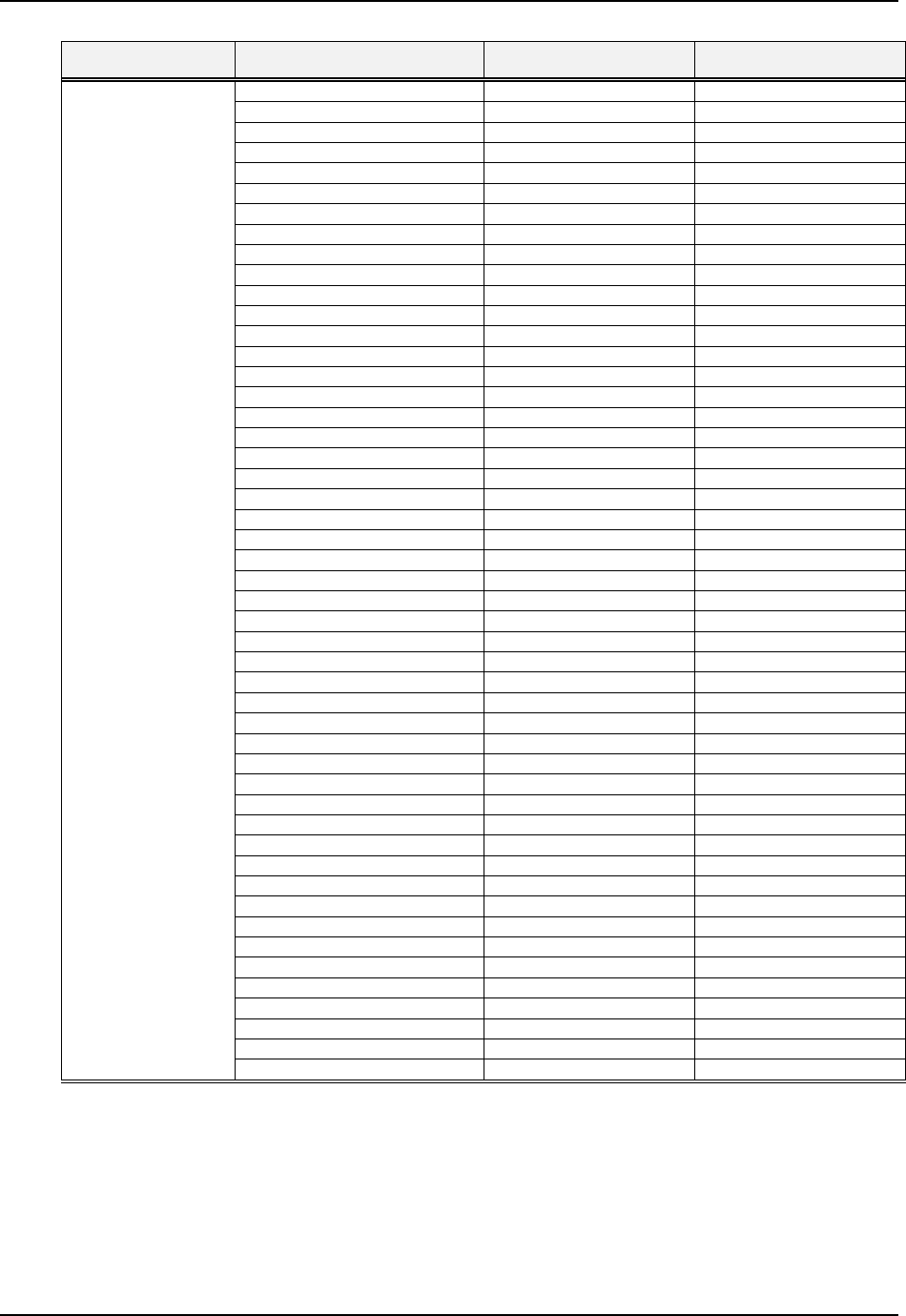
Configuration
Group Prompt Function Prompt Value or Selection Factory Setting
8SEG CH1 DISABLE
X1 VALUE 0
X2 VALUE 0
MATH
X3 VALUE 0
X4 VALUE 0
X5 VALUE 0
X6 VALUE 0
X7 VALUE 0
X8 VALUE 0
Y1 VALUE 0
Y2 VALUE 0
Y3 VALUE 0
Y4 VALUE 0
Y5 VALUE 0
Y6 VALUE 0
Y7 VALUE 0
Y8 VALUE 0
8 SEG CH2 DISABLE
X9 VALUE 0
X10 VALUE 0
X11 VALUE 0
X12 VALUE 0
X13 VALUE 0
X14 VALUE 0
X15 VALUE 0
X16 VALUE 0
X17 VALUE 0
Y9 VALUE 0
Y10 VALUE 0
Y11 VALUE 0
Y12 VALUE 0
Y13 VALUE 0
Y14 VALUE 0
Y15 VALUE 0
Y16 VALUE 0
Y17 VALUE 0
TOTALIZE DISABLE
ΣXXXXXXX - -
TOT SCALE E0
TOT SCR UNLOCK
Σ RESET? NO
TOT RATE SECOND
POLYNOM DISABLE
C0 VALUE 0
C1 VALUE 0
C2 X 10
-1
0
C2 X 10
-3
0
C2 X 10
-5
0
C2 X 10
-7
0
188 UDC3500 Universal Digital Controller Product Manual March 2012
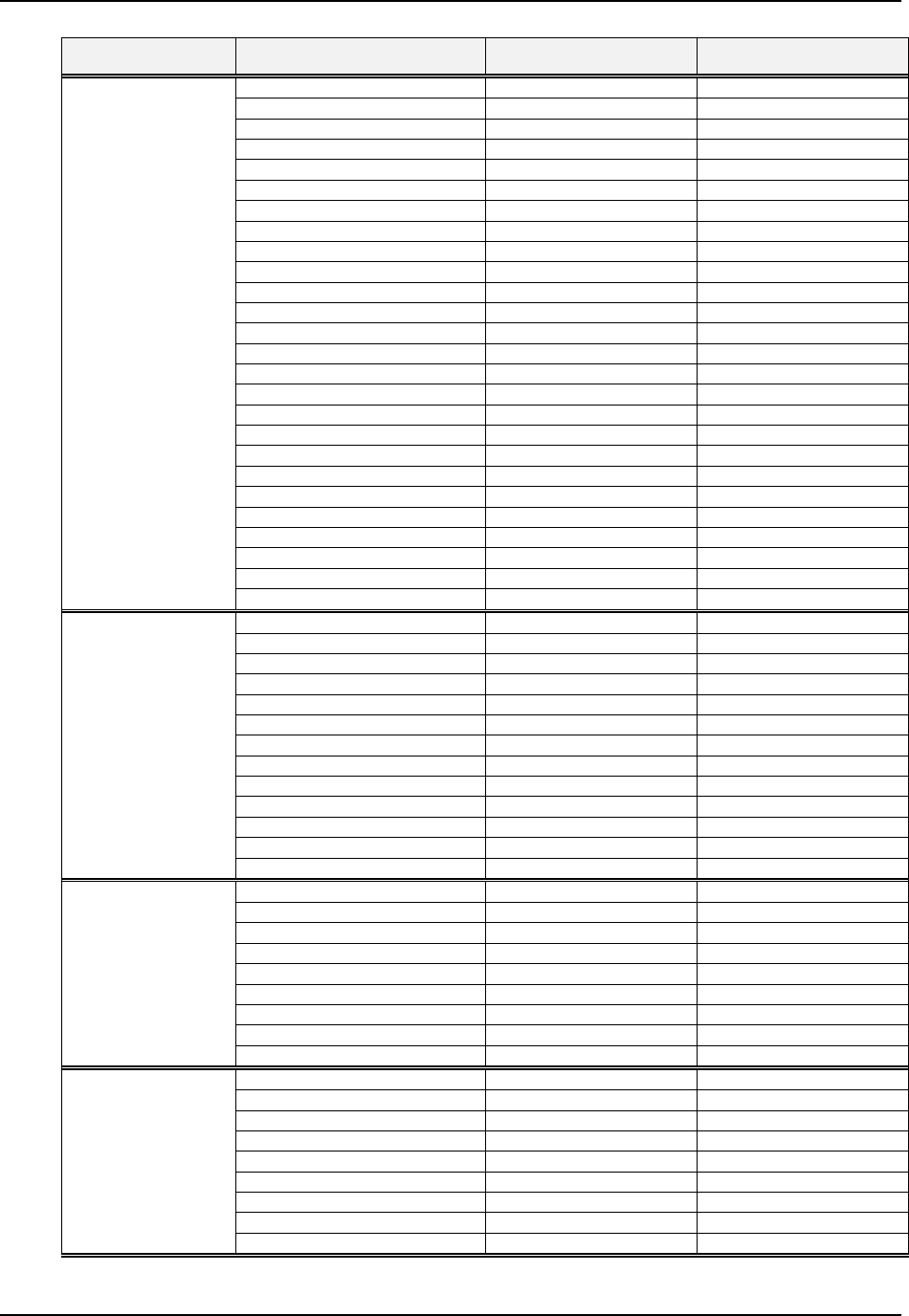
Configuration
Group Prompt Function Prompt Value or Selection Factory Setting
LOG GATE DISABLE
GATE1TYP NOT USED
LOGIC
GATE1INA CONST K
GATE1 K 0
GATE1INB FIXED OFF
GATE1OUT ANY GATE
GATE2TYP NOT USED
GATE2INA CONST K
GATE2 K 0
GATE2INB FIXED OFF
GATE2OUT ANY GATE
GATE3TYP NOT USED
GATE3INA CONST K
GATE3 K 0
GATE3INB FIXED OFF
GATE3OUT ANY GATE
GATE4TYP NOT USED
GATE4INA CONST K
GATE4 K 0
GATE4INB FIXED OFF
GATE4OUT ANY GATE
GATE5TYP NOT USED
GATE5INA CONST K
GATE5 K 0
GATE5INB FIXED OFF
GATE5OUT ANY GATE
OUT ALG CURRENT
OUT RNG 100PCT
OUTPUT
C1 RANGE 4-20mA
RLYSTATE 1OF2ON
RLY TYPE MECHAN
MOTOR TI 5
OUT2 ALG CURRENT
OUT2 RNG 100PCT
C3 RANGE 4-20mA
RLYSTAT2 1OF2ON
CUR OUT1 DISABLE
LOW VAL 0.0
HIGH VAL 100.0
IN1 TYPE 0-10mV
XMITTER1 LINEAR
INPUT 1
IN1 HIGH 1000
IN1 LOW 0
RATIO 1 1.00
BIAS IN1 0
FILTER 1 0
BURNOUT1 NONE
EMISSIV1 0.00
IN2 TYPE 0-10mV
XMITTER2 LINEAR
INPUT 2
IN2 HIGH 1000
IN2 LOW 0
RATIO 2 1.00
BIAS IN2 0
FILTER 2 0
BURNOUT2 NONE
EMISSIV2 0.00
March 2012 UDC3500 Universal Digital Controller Product Manual 189
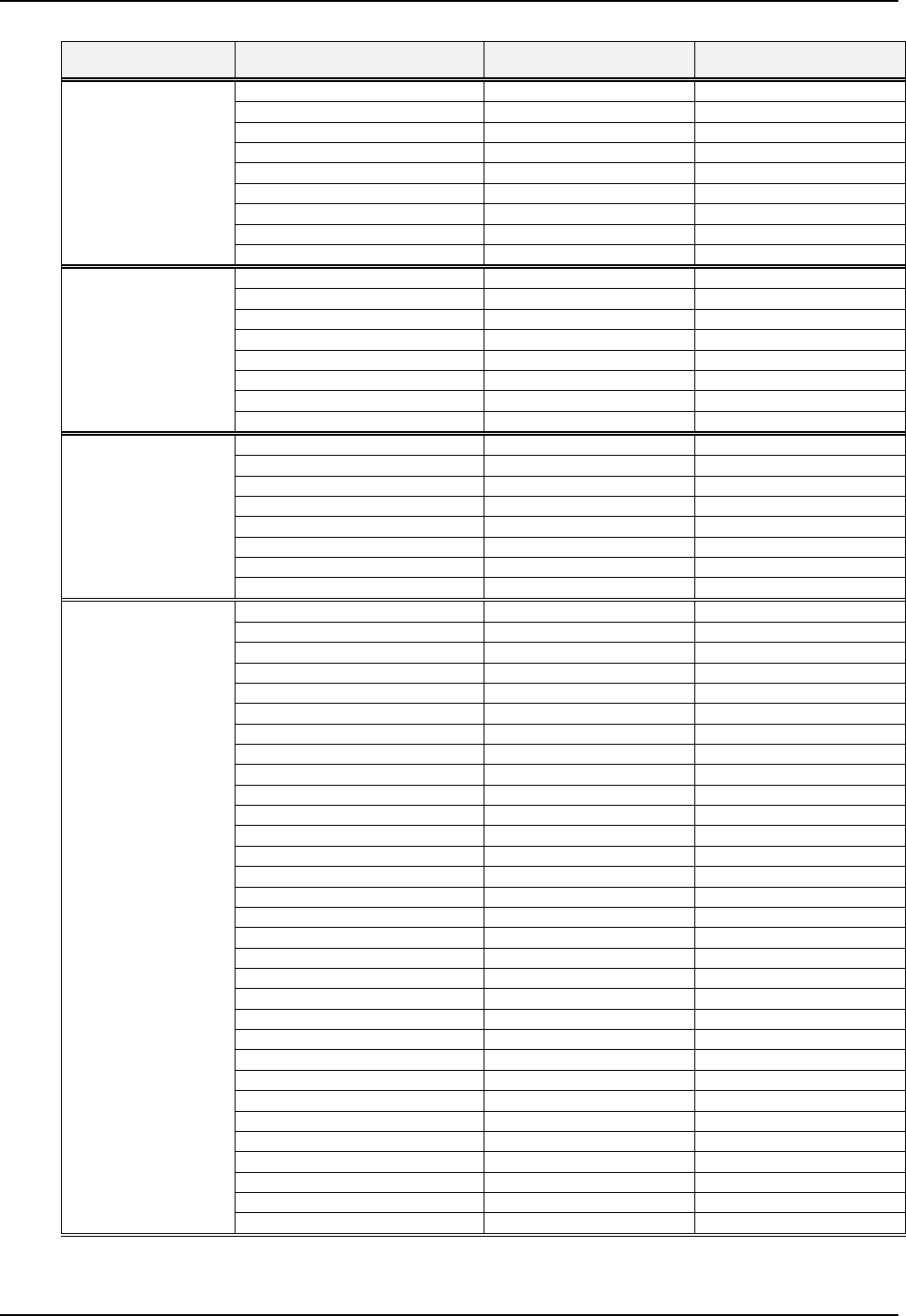
Configuration
Group Prompt Function Prompt Value or Selection Factory Setting
IN3 TYPE 0-10mV
XMITTER3 LINEAR
INPUT 3
IN3 HIGH 1000
IN3 LOW 0
RATIO 3 1.00
BIAS IN3 0
FILTER 3 0
BURNOUT3 NONE
EMISSIV3 0.00
IN4 TYPE 0-10mV
XMITTER4 LINEAR
INPUT 4
IN4 HIGH 1000
IN4 LOW 0
RATIO 4 1.00
BIAS IN4 0
FILTER 4 0
BURNOUT4 NONE
IN5 TYPE 0-10mV
XMITTER5 LINEAR
INPUT 5
IN5 HIGH 1000
IN5 LOW 0
RATIO 5 1.00
BIAS IN5 0
FILTER 5 0
BURNOUT5 NONE
PV SOURC INPUT 1
PID SETS 1 ONLY
CONTROL
SW VAL12 0
SW VAL23 0
SW VAL34 0
LSP’S 1 ONLY
RSP SRC NONE
AUTOBIAS DISABLE
SP TRACK NONE
PWR MODE MANUAL
PWR OUT LAST
SP HiLIM 1000
SP LoLIM 0
ACTION REVERSE
OUT RATE DISABLE
PCT/M UP 0
PCT/M DN 0
OUTHiLIM 100
OUTLoLIM 0.0
I Hi LIM 100
I Lo LIM 0
DROPOFF 0
DEADBAND 1.0
OUT HYST 0.5
FAILMODE NO LATCH
FAILSAFE 0.0
SW FAIL 0
MAN OUT 0
AUTO OUT 0
PBorGAIN GAIN
MINorRPM MIN
190 UDC3500 Universal Digital Controller Product Manual March 2012
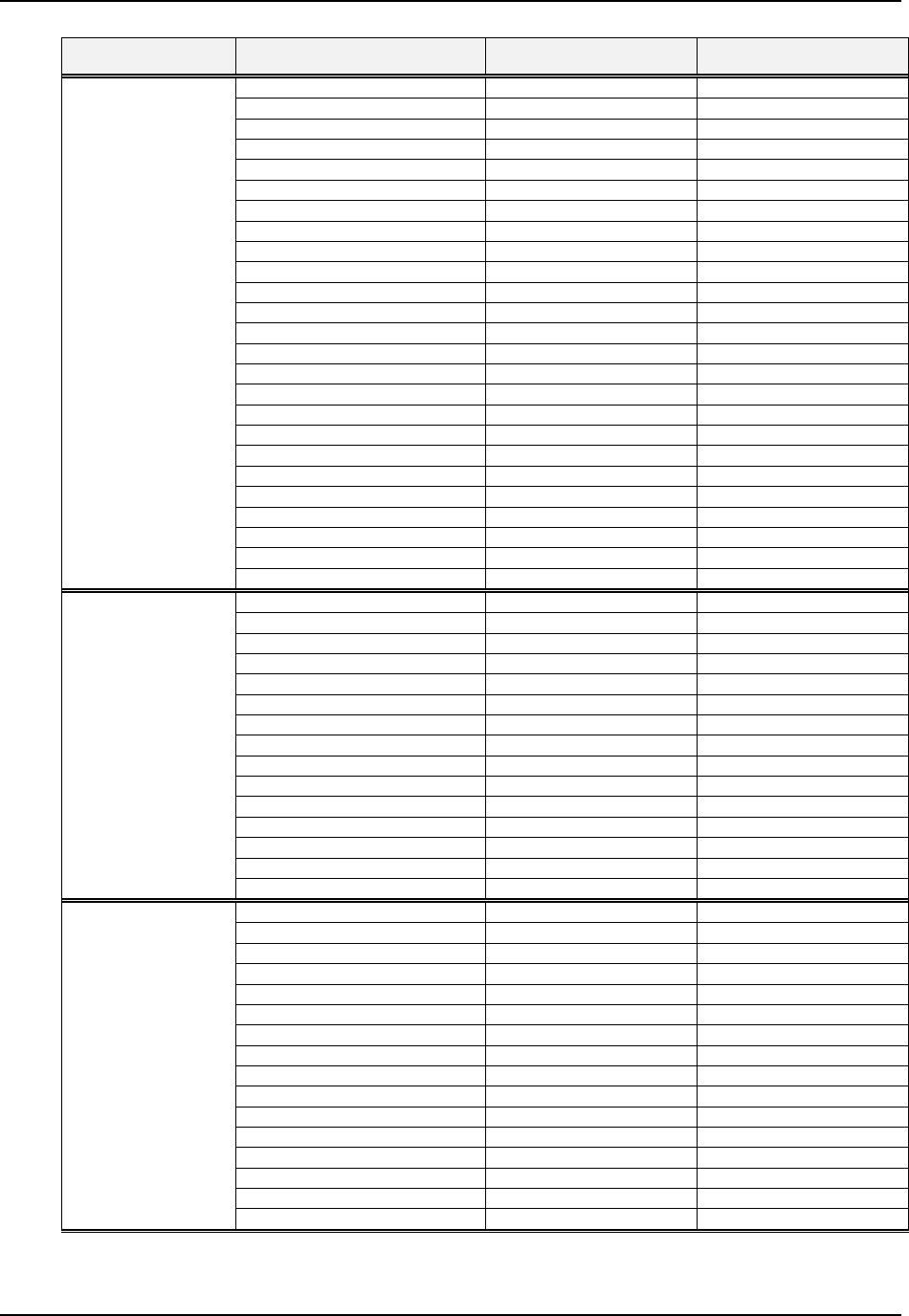
Configuration
Group Prompt Function Prompt Value or Selection Factory Setting
PV 2SRC INPUT 2
LINK LPS DISABLE
CONTROL2
PID SETS 1 ONLY
SW VAL 12 0
SW VAL23 0
SW VAL34 0
LSP’S 1 ONLY
RSP SRC NONE
AUTOBIAS DISABLE
SP TRACK NONE
PWRMODE MANUAL
SP HiLIM 1000
SP LoLIM 0
ACTION REVERSE
OUT RATE DISABLE
PCT/M UP 0
PCT/M DN 0
OUTHiLIM 100
OUTLoLIM 0
I Hi LIM 100.0
I Lo LIM 0.0
DROPOFF 0
DEADBAND 1.0
FAILMODE NO LATCH
FAILSAFE 0
CUR OUT2 DISABLE
C2RANGE 4-20mA
OPTIONS
LOW VAL 0
HIGH VAL 100
CUR OUT3 DISABLE
C3RANGE 4-20Ma
LOW VAL 0
HIGH VAL 100
DIG1 INP NONE
DIG1 COMB DISABLE
DIG INP2 NONE
DIG2 COMB DISABLE
DIG INP3 NONE
DIG INP4 NONE
Dion LP2 NONE
Com ADDR 3
ComSTATE DISABLE
COM
IR ENABLE DISABLE
BAUD 19200
TX DELAY 1
WSFLOAT FP B
SHEDENAB DISABLE
SHEDTIME 0
SHEDMODE LAST
SHEDSP TO LSP
UNITS PERCENT
CSP RATO 1.0
CSP BIAS 0
CSP2RATO 1.0
CSP2BIAS 0
LOOPBACK DISABLE
March 2012 UDC3500 Universal Digital Controller Product Manual 191
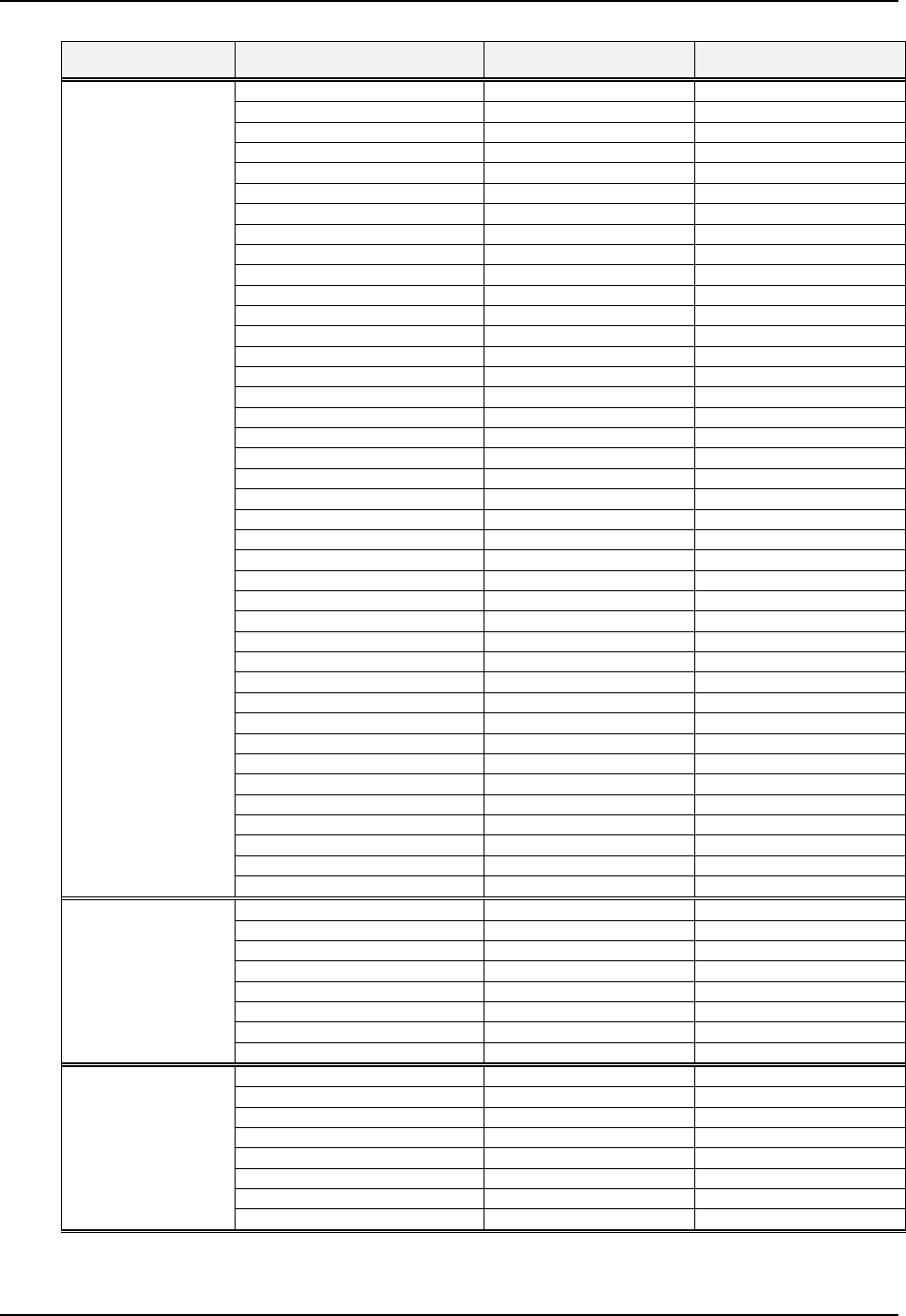
Configuration
Group Prompt Function Prompt Value or Selection Factory Setting
A1S1TYPE NONE
A1S1 VAL 90
ALARMS
A1S1 H L HIGH
A1S1 EV - -
A1S2 TYPE NONE
A1S2 VAL 10
A1S2 H L LOW
A1S2 EV - -
ALHYST1 0.1
A2S1TYPE NONE
A2S1 VAL 95
A2S1 H L HIGH
A2S1 EV - -
A2S2TYPE NONE
A2S2 VAL 5
A2S2 H L LOW
A2S2 EV - -
ALHYST2 0.1
A3S1TYPE NONE
A3S1 VAL 95
A3S1 H L HIGH
A3S1 EV - -
A3S2TYPE NONE
A3S2 VAL 5
A3S2 H L LOW
A3S2 EV - -
ALHYST3 0.1
A4S1TYPE NONE
A4S1 VAL 95
A4S1 H L HIGH
A4S1 EV - -
A4S2TYPE NONE
A4S2 VAL 5
A4S2 H L LOW
A4S2 EV - -
ALHYST4 0.1
ALM OUT1 NO LATCH
BLOCK DISABLE
DIAGNOST DISABLE
ALRM MSG DISABLE
HOURS SET TO FACTORY TIME
MINUTES “ “ “ “
CLOCK
SECONDS “ “ “ “
YEAR “ “ “ “
MONTH “ “ “ “
DAY “ “ “ “
SET CLK? “ “ “ “
ADJUST 0
TIME 1 DISABLE
TIME 2 DISABLE
MAINTNCE
TIME 3 DISABLE
COUNT 1 DISABLE
COUNT 2 DISABLE
COUNT 3 DISABLE
PASSWORD 0
RES TYPE NONE
192 UDC3500 Universal Digital Controller Product Manual March 2012
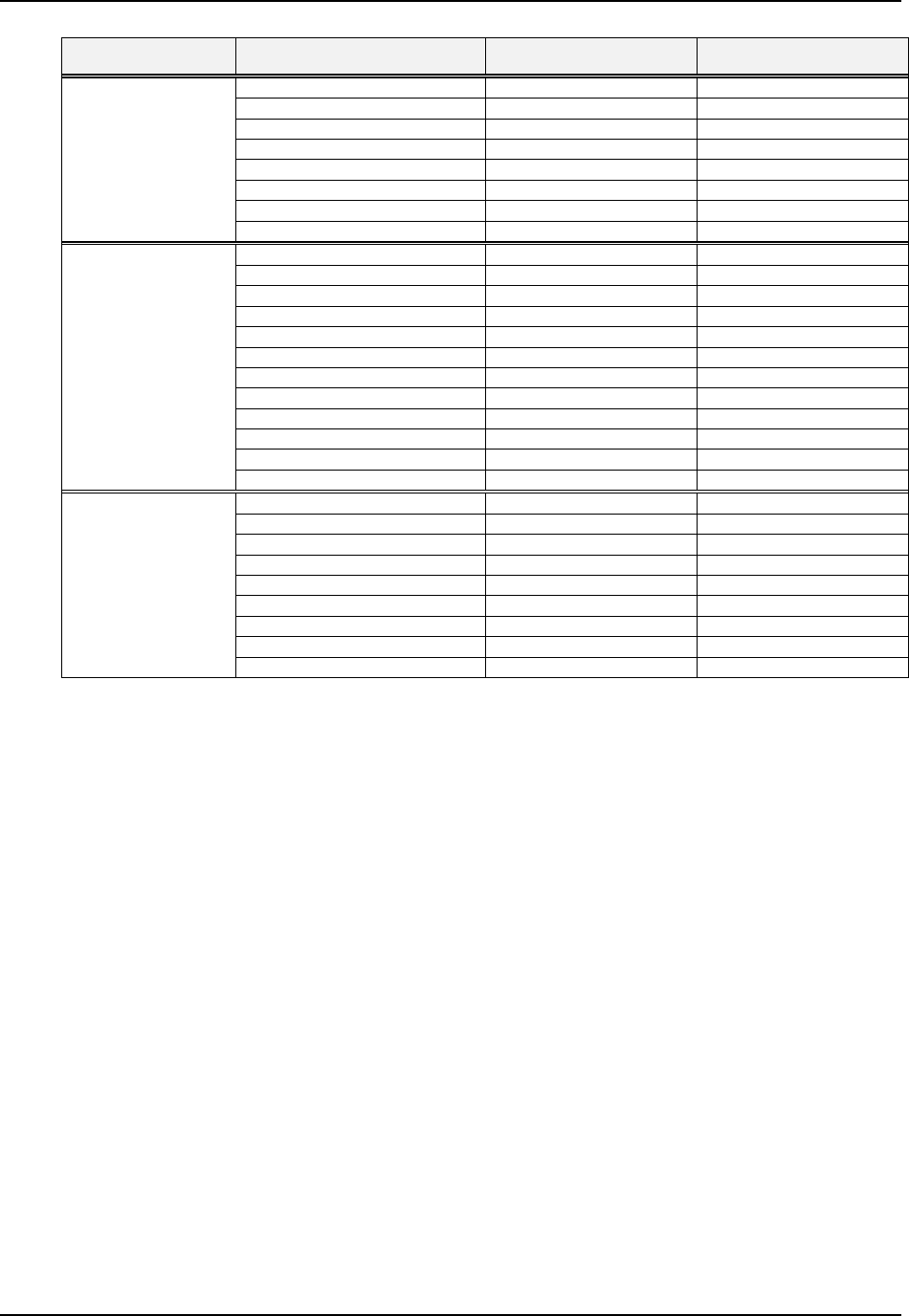
Configuration
March 2012 UDC3500 Universal Digital Controller Product Manual 193
Group Prompt Function Prompt Value or Selection Factory Setting
DECIMAL NONE
DECIMAL2 NONE
TEMPUNIT NONE
PWR FREQ 60 HZ
RATIO 2 DISABLE
LANGUAGE ENGLISH
TC DIAGN ENABLE
DISPLAY
IDNUMBER 0
EVENT 1 NONE
TIME 1 - -
HOUR 1 - -
MINUTE 1 - -
MONTH 1 - -
DAY 1 - -
EVENT 2 NONE
TIME 2 - -
HOUR 2 - -
MINUTE2 - -
MONTH 2 - -
TIME EVENTS
DAY 2 - -
MAC Address (case label on instrument)
IP Address 10.0.0.2
Subnet Mask 255.255.255.0
Default Gateway 0.0.0.0
SMTP Address (for Outgoing) 0.0.0.0
To Email 1 - -
From Email 1 - -
To Email 2 - -
ETHERNET AND
EMAIL
(Accessible via PIE
Tool)
From Email 2 - -
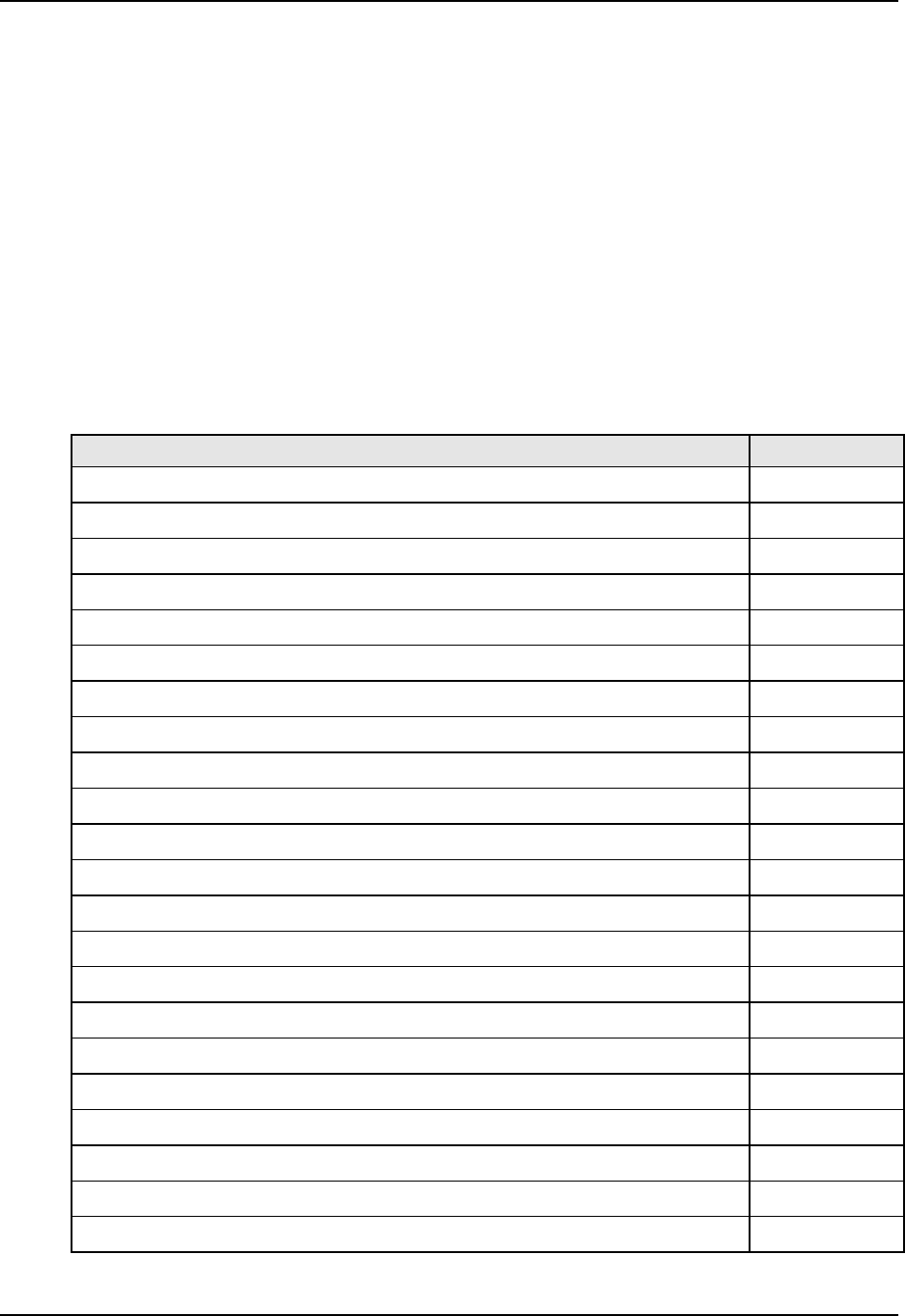
Monitoring and Operating the Controller
4 Monitoring and Operating the Controller
4.1 Overview
Introduction
This section gives you all the information necessary to help you monitor and operate your
controller including an Operator Interface overview, how to lockout changes to the
controller, entering a security code, and monitoring the displays.
What’s in this section?
The following topics are covered in this section.
TOPIC See Page
4.1 Overview 194
4.2 Operator Interface 195
4.3 Entering a Security Code 195
4.4 Lockout Feature 196
4.5 Monitoring Your Controller 198
4.6 Start Up Procedure for Operation 200
4.7 Control Modes 202
4.8 Setpoints 203
4.9 Timer 204
4.10 Accutune III 206
4.11 Fuzzy Overshoot Suppression 214
4.12 Using Two Sets of Tuning Constants 215
4.17 Two Loops of Control 215
4.18 Configuring Two Loops of Control 234
4.19 Monitoring Two Loops of Control 235
4.20 Operating Two Loops of Control 236
4.21 Alarm Setpoints 237
4.22 Three Position Step Control Algorithm 239
4.23 Setting a Failsafe Output Value for Restart after a Power Loss 239
4.24 Setting Failsafe Mode 241
4.25 Carbon Potential, Oxygen and Dewpoint Algorithms 241
4.26 Healthwatch 244
194 UDC3500 Universal Digital Controller Product Manual March 2012
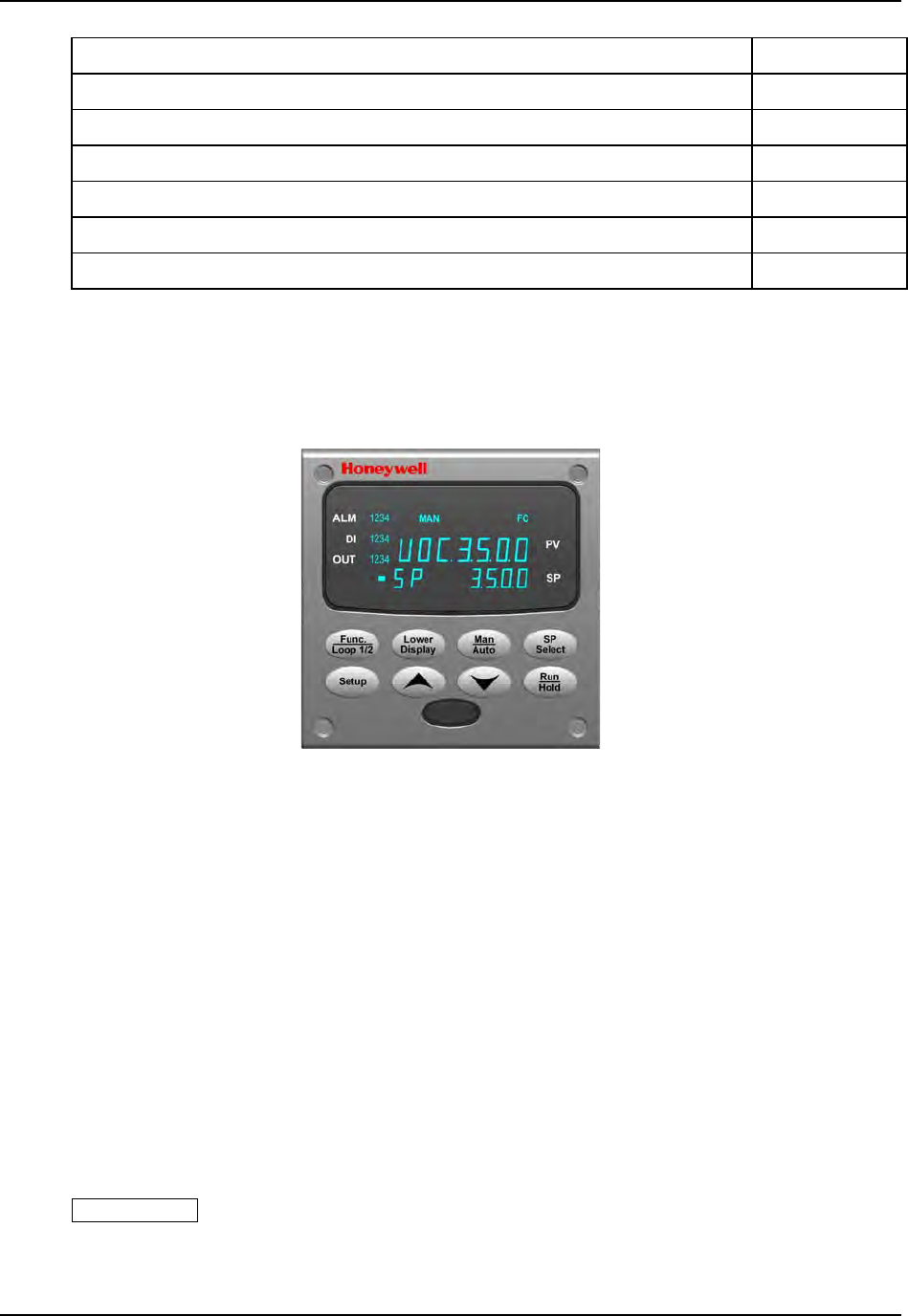
Monitoring and Operating the Controller
4.27 Setpoint Rate/Ramp/Program Overview 244
4.28 Setpoint Rate 245
4.29 Setpoint Ramp 245
4.30 Setpoint Ramp/Soak Programming 247
4.30 Setpoint Ramp/Soak Programming 247
4.31 P.I.E. Tool Maintenance Screens 262
4.32 Configuring your Ethernet Connection 272
4.2 Operator Interface
Introduction
Figure 4-1 is a view of the Operator Interface.
Figure 4-1 Operator Interface
4.3 Entering a Security Code
Introduction
The level of keyboard lockout may be changed in the Set Up mode. However, knowledge
of a security code number (0 to 9999) may be required to change from one level of
lockout to another. When a controller leaves the factory, it has a security code of 0 which
permits changing from one lockout level to another without entering any other code
number.
Procedure
If you require the use of a security code, select a number from 0001 to 9999 and enter it
when the lockout level is configured as NONE. Thereafter, that selected number must be
used to change the lockout level from something other than NONE.
ATTENTION Write the number on the Configuration Record Sheet in the configuration
section so you will have a permanent record.
March 2012 UDC3500 Universal Digital Controller Product Manual 195
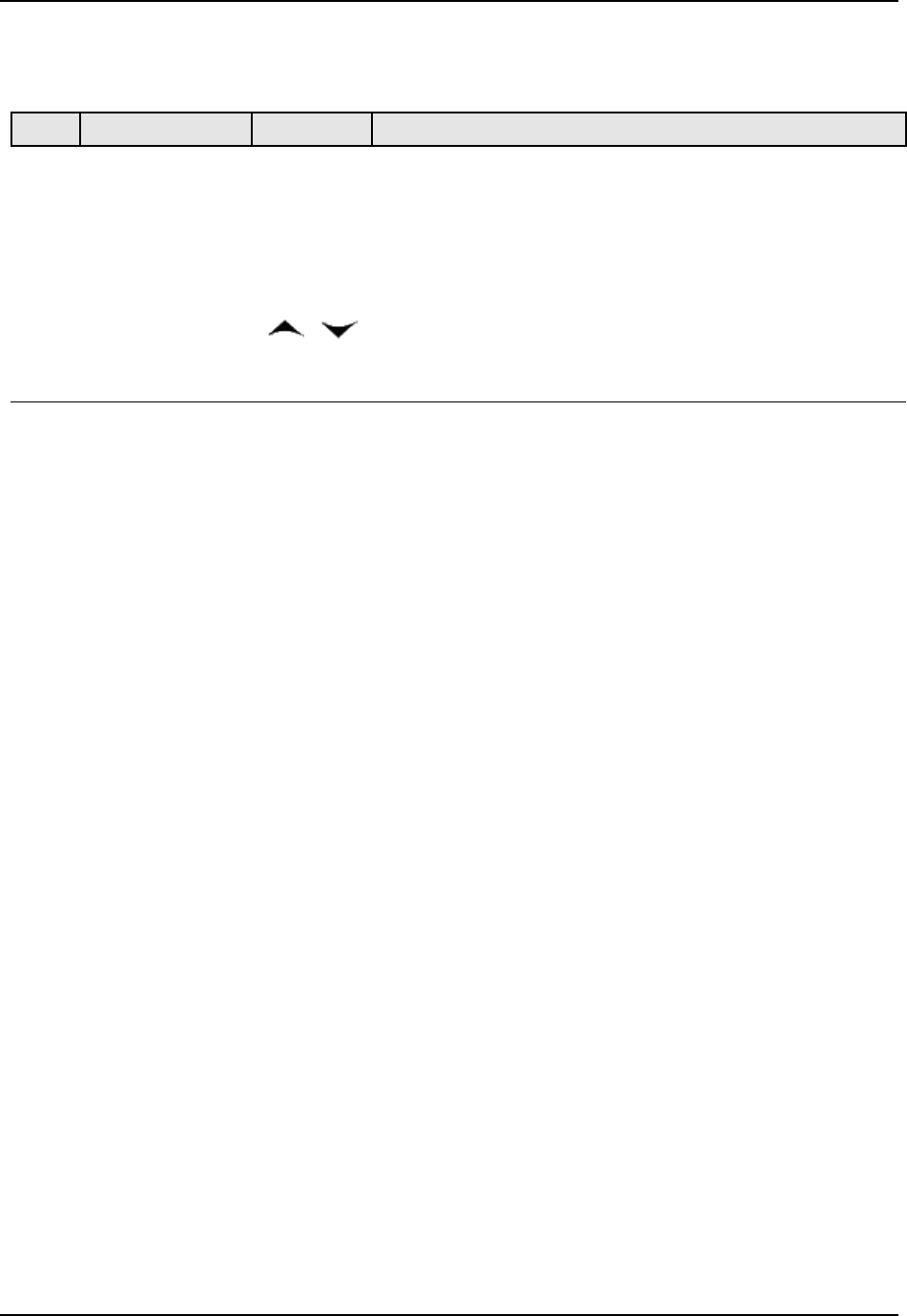
Monitoring and Operating the Controller
Table 4-1 Procedure to Enter a Security Code
Operation Press Result Step
Enter Set Up
Mode
Setup
Upper Display = SET UP
Lower Display = TUNING
1
Select
any Set
Up Group
Func
Upper Display = 0
Lower Display = SECUR
2
Security Code
Entry
or
To enter a four digit number in the upper display
(0001 to 9999)
This will be your security code.
3
4.4 Lockout Feature
Introduction
The lockout feature in this instrument is used to inhibit changes (via keyboard) of certain
functions or parameters by unauthorized personnel.
Lockout levels
There are different levels of Lockout depending on the level of security required. These
levels are:
NONE No Lockout. All groups Read/Write.
CALIB Calibration prompts are deleted from the Setup List.
+CONFIG Timer, Tuning, SP Ramp, and Accutune are Read/Write. All other Setup
are Read only. Calibration Group is not available.
+VIEW Timer, Tuning, and SP Ramp are Read/Write. No other parameters are
available.
ALL Timer, Tuning, and SP Ramp are Read only. No other parameters are
viewable.
See Subsection 3.4 - Tuning Parameters Set Up Group prompts to select one of the
above.
Security Code (see Subsection 4.3)
196 UDC3500 Universal Digital Controller Product Manual March 2012
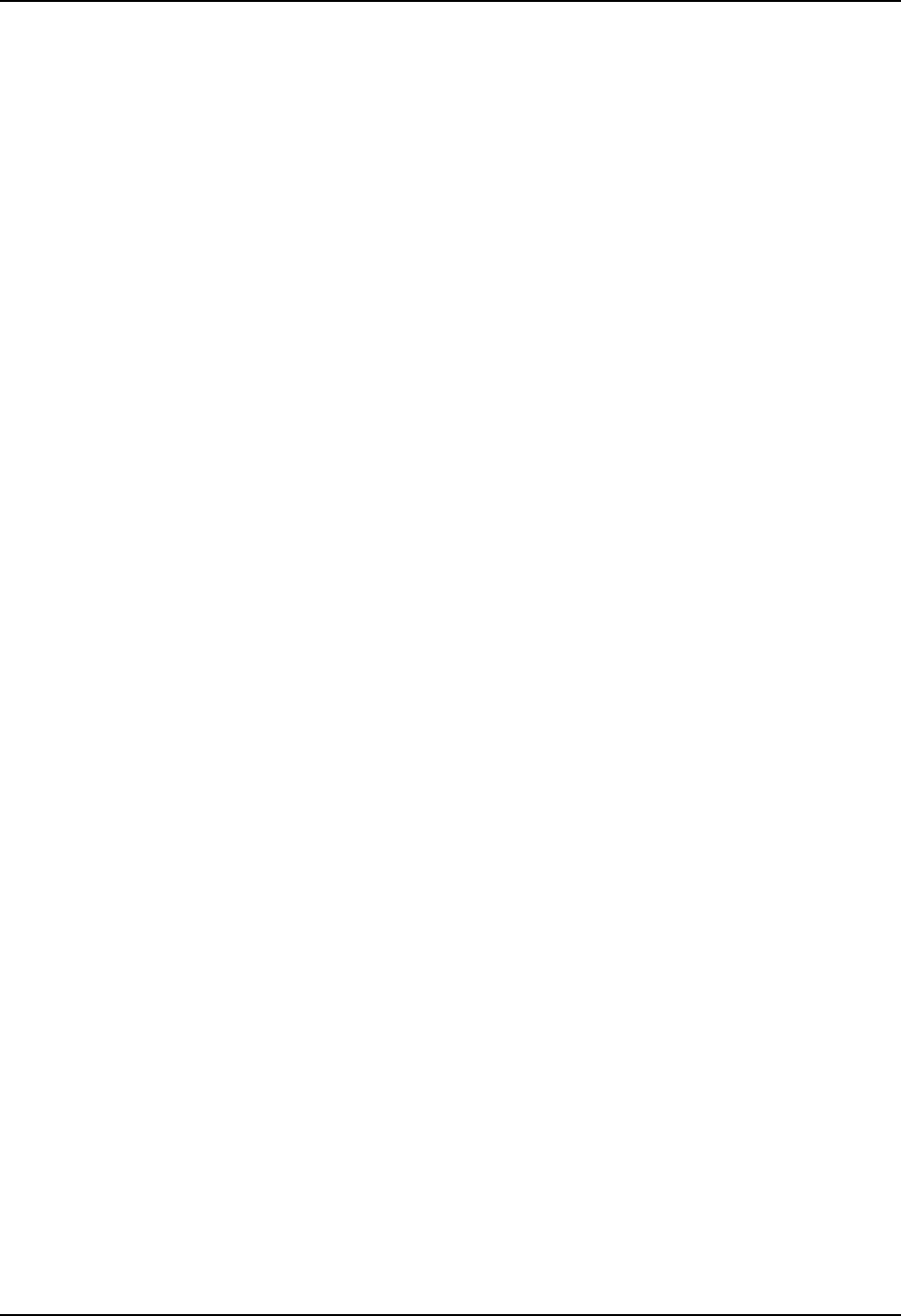
Monitoring and Operating the Controller
Individual key lockout
There are three keys that can be disabled to prevent unauthorized changes to the
parameters associated with these keys. First set the “Lock” prompt to NONE.
These keys are:
Run/Hold Key - you can disable the Run/Hold key for Set Point
Programming at configuration Set Up group prompt
“Tuning,” function prompt “RN HLD.”
Man/Auto Key - you can disable the Auto/Manual key at configuration Set
Up, group prompt “Tuning”, function prompt “AUTOMA”
SP Select Key - you can disable the Set Point Select function key at
configuration Set Up group prompt “Tuning,” function
prompt “SP SEL.”
See Subsection 3.4 - Tuning Parameters Set Up Group prompts to enable or disable
these keys.
Key error
When a key is pressed and the prompt “Key Error” appears in the lower display, it will be
for one of the following reasons:
• Parameter not available or locked out
• Not in setup mode, press SET UP key first
• Individual key locked out.
March 2012 UDC3500 Universal Digital Controller Product Manual 197
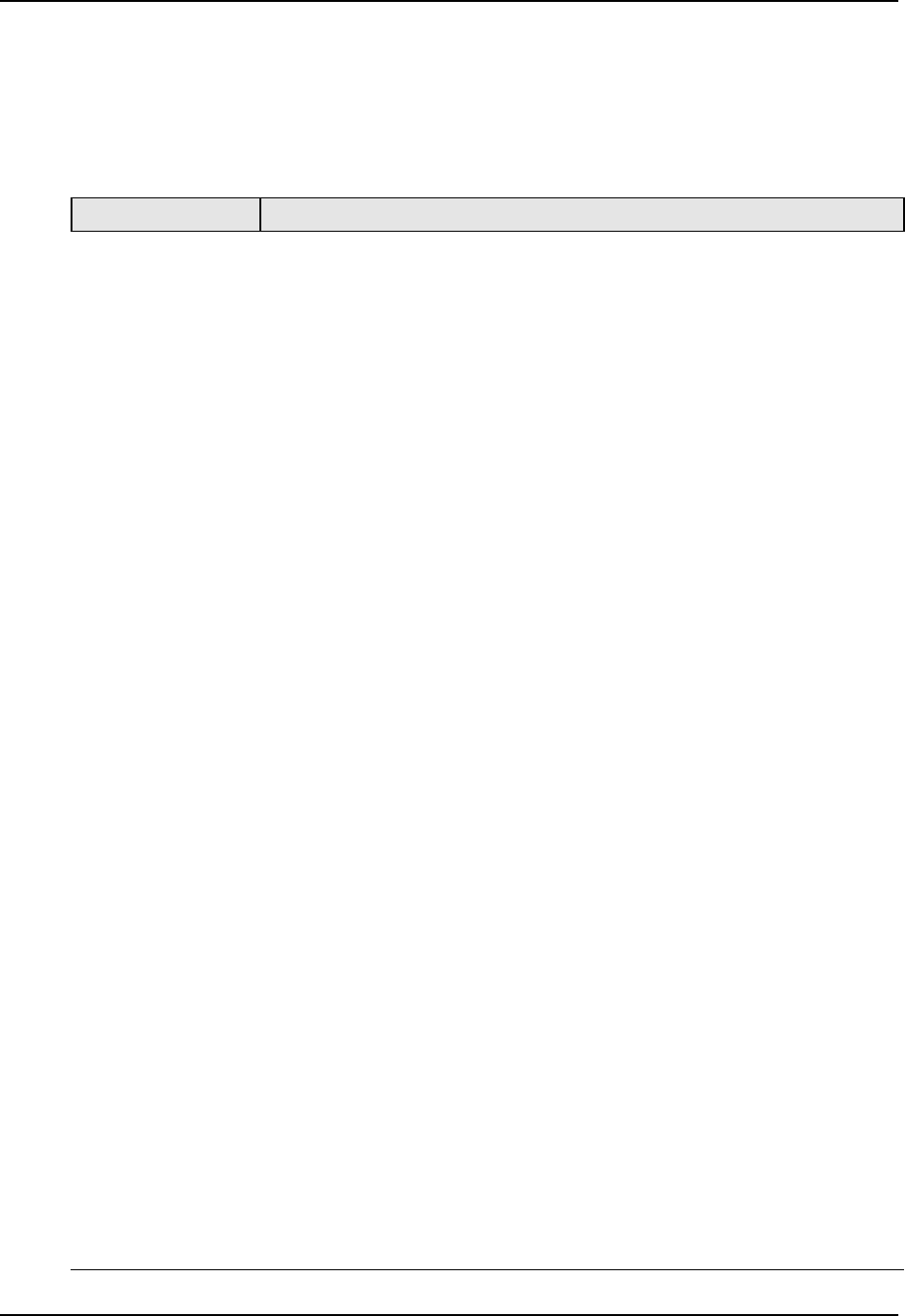
Monitoring and Operating the Controller
4.5 Monitoring Your Controller
4.5.1 Annunciators
The following annunciator functions have been provided to help monitor the controller:
Table 4-2 Annunciators
Annunciator Indication
ALM 1 2 3 4
A visual indication of the alarms
A blinking annunciator indicates an alarm-latched condition. The blinking
will continue and the alarm will stay activated after the alarm condition
ends until it is acknowledged by pressing the
Run/Hold key.
A Logic Gate Output configured for Relay 5 will turn on the ALM 1
indicator when active. Alarms take precedence over Logic Gates.
A visual indication of the control relays
Out 1 and 2 are for Loop 1, Out 3 and 4 are for Loop 2.
Logic Gate Outputs configured for Relays 1 through 4 will turn on the
respective OUT annunciator when active. Control Outputs take
precedence over Logic Gates.
OUT 1 2 3 4
A visual indication of each Digital Input
DI 1 2 3 4
A or MAN A visual indication of the m
ode of the controller
A—Automatic Mode
MAN—Manual Mode
Blinking A or MAN indicates that the mode is being forced by a Digital
Input.
[None], F or C A visual indication of the tem
perature units
[None]—No temperature unit annunciator
F—Degrees Fahrenheit
C—Degrees Celsius
A visual Lamp to indicate when the lower display is showing the Active
Setpoint (Local 1, Local 2, Local 3, Local 4, Remote Setpoint or
Computer Setpoint)
When this lamp is blinking it indicates that the Setpoint is being forced by
a Digital Input.
The upper left digits of the display are used to show other annunciator
functions
T—Accutuning in progress
t—PV tune in progress
L”—Loop 2 display
I—Cascade control (when Loop 1 is displayed)
C—Computer setpoint active
O—Output override active
H—Setpoint Ramp or Setpoint Program in HOLD mode
R—Setpoint Ramp or Setpoint Program in RUN mode
H and R alternating—Guaranteed Soak in operation
198 UDC3500 Universal Digital Controller Product Manual March 2012
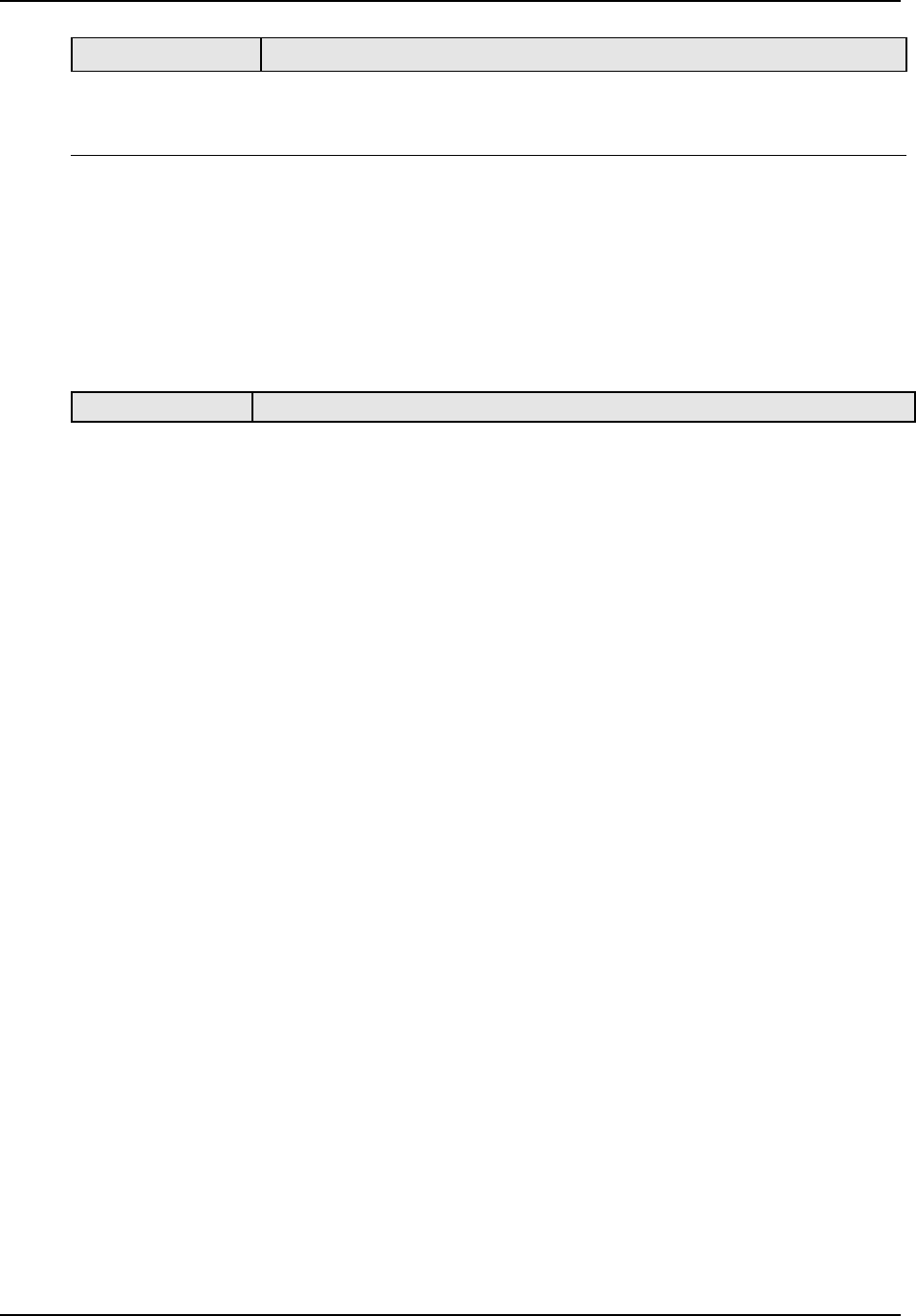
Monitoring and Operating the Controller
March 2012 UDC3500 Universal Digital Controller Product Manual 199
Annunciator Indication
2I—PV = Input 2 via a Digital Input activation
3I—PV = Input 3 via a Digital Input activation
Blinking indicates that the activity is being forced by a Digital Input.
4.5.2 Viewing the operating parameters
Press the LOWER DISPLAY key to scroll through the operating parameters listed in Table
4-3. The lower display will show only those parameters and their values that apply to
your specific model and configuration.
Table 4-3 Lower Display Key Parameter Prompts
Lower Display Description
OUT XX.X
OUTPUT—Output value is shown in percent with one decimal point for all output
types except Three Position Step Control (TPSC). For TPSC, when no slidewire is
connected, this display is an estimated motor position and is shown with no decimal
point. For Position Proportional Control, if the slidewire fails, then the instrument
automatically switches over to TPSC and the OUT display changes with it.
SP XXXX
LOCAL SETPOINT #1—Also the current setpoint when using SP Ramp.
2SP XXXX
LOCAL SETPOINT #2
3SP XXXX
LOCAL SETPOINT #3
4SP XXXX
LOCAL SETPOINT #4
RSP XXXX
REMOTE SETPOINT
1IN XXXX
INPUT 1—Used only with combinational input algorithms.
2IN XXXX
INPUT 2
3IN XXXX
INPUT 3
4IN XXXX
INPUT 4
5IN XXXX
INPUT 5
POS XX
SLIDEWIRE POSITION—Used only with TPSC applications that use a slidewire
input.
CSP XXXX
COMPUTER SETPOINT—When SP is in override.
DEV XXXX
DEVIATION—Maximum negative display is –999.9.
PIDSET X
TUNING PARAMETER —where X is 1 to 4.
ET HR.MN
ELAPSED TIME—Time that has elapsed on the Timer in Hours.Minutes.
ØTR HR.MN
TIME REMAINING—Time remaining on the Timer in Hours.Minutes. The “Ø” is a
rotating clock face.
RAMPXXXM
SETPOINT RAMP TIME—Time remaining in the Setpoint Ramp in minutes.
SPn XXXX SETPOINT NOW—Current Setpoint when SP Rate is enabled. The SP XXXX
display shows the “target” or final setpoint value.
PROGRAMX
SETPOINT PROGRAM NUMBER— Set Point Programming display. X is the current
program number (1 to 4). When a Setpoint Program is initiated va the RUN/HOLD
key, the Setpoint Program Number can be incremented/decremented via the
keyboard. Digital Input Selections “PROG LO” and “PROG HI” override the keyboard
and force the Program selection per their status (open or closed). When running
linked programs, the Setpoint Program Number can be incremented/decremented
when in the “HOLD” mode.
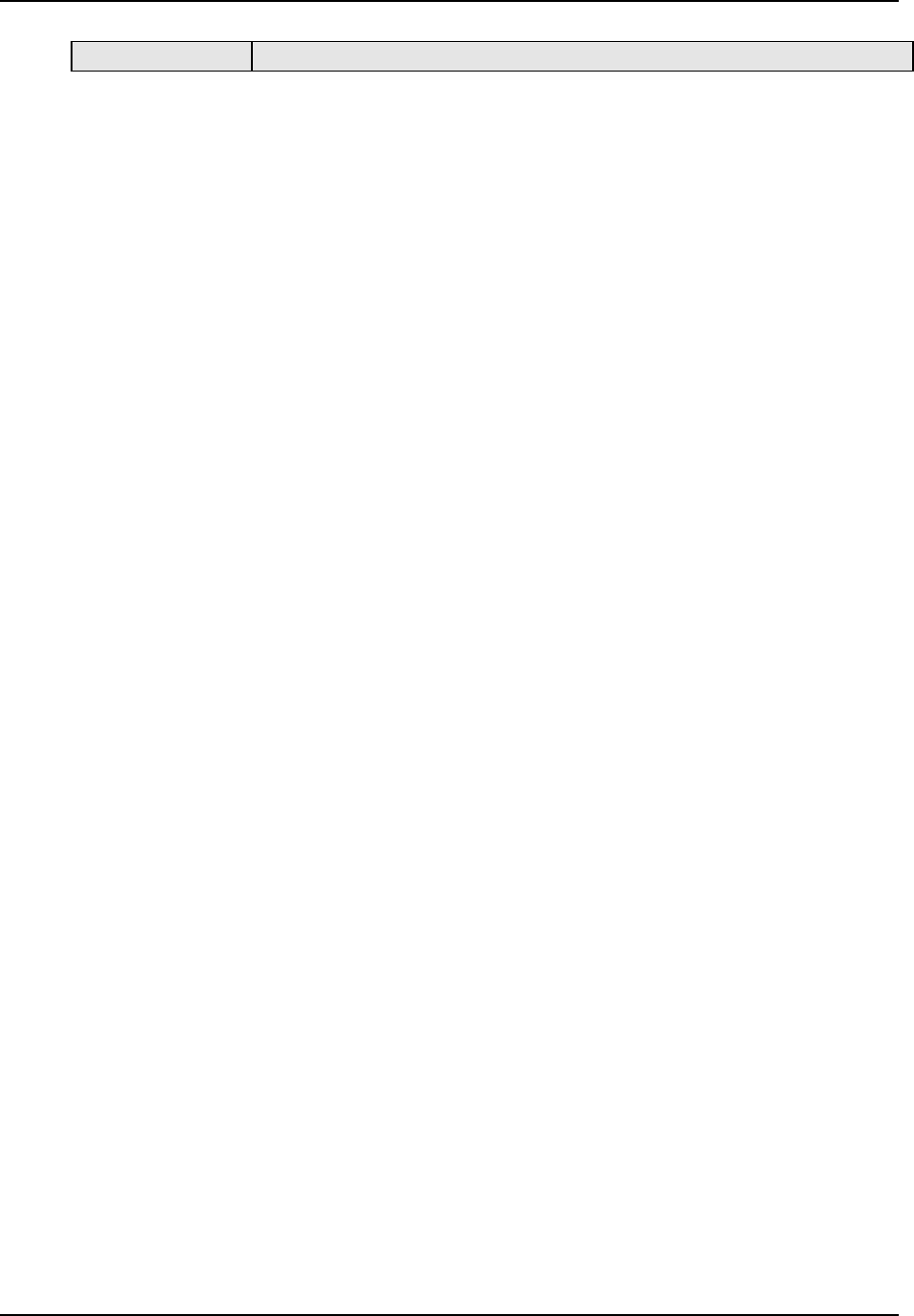
Monitoring and Operating the Controller
200 UDC3500 Universal Digital Controller Product Manual March 2012
Lower Display Description
XXRAHR.MN
RAMP SEGMENT NUMBER AND TIME REMAINING—Set Point Programming
display. XX is the current segment number and HR.MN is the time remaining for this
segment in Hours.Minutes. When the program is in the “HOLD” mode, the Segment
Number can be incremented/decremented.
XXSKHR.MN
SOAK SEGMENT NUMBER AND TIME REMAINING— Set Point Programming
display. XX is the current segment number and HR.MN is the time remaining for this
segment in Hours.Minutes. When the program is in the “HOLD” mode, the Segment
Number can be incremented/decremented.
RECYC XX
NUMBER OF SP PROGRAM RECYCLES REMAINING
To BEGIN
RESET SP PROGRAM TO START OF FIRST SEGMENT
RERUN
RESET SP PROGRAM TO START OF CURRENT SEGMENT
1PV XXXX
PROCESS VARIABLE 1—For Cascade or 2-loop applications.
2PV XXXX
PROCESS VARIABLE 2—For cascade or 2-loop applications.
OC1 XX.X
CHARACTERIZED OUTPUT 1—Displayed if Loop 1 output is characterized.
OC2 XX.X
CHARACTERIZED OUTPUT 2—Displayed if Loop 2 output is characterized.
[Sigma]XXXXXXX
CURRENT TOTALIZER VALUE—Displays the total flow volume being measured.
1CO XXXX
FIRST CURRENT OUTPUT—Displayed only when the First Current Output is
enabled in an Auxiliary Output mode.
2CO XXXX
SECOND CURRENT OUTPUT—Displayed only when the Second Current Output is
enabled in an Auxiliary Output mode.
3CO XXXX
THIRD CURRENT OUTPUT—Displayed only when the Third Current Output is
enabled in an Auxiliary Output mode.
BIA XXXX
BIAS—Displays the manual reset value for algorithm PD+MR.
OTI XX.X
OUTPUT OVERRIDE (2 PID LOOPS ONLY)—Appears when Internal Loop 1 Output
value is displayed. This represents the internal output 1 value before override.
DEW XX.X
DEWPOINT TEMPERATURE—Shown only when Dewpoint Algorithm is selected as
Input Algorithm 2.
TUNE OFF
LIMIT CYCLE TUNING NOT RUNNING—Appears when Accutune is enabled but not
currently operating.
TUNE RUN
LIMIT CYCLE TUNING RUNNING—Appears when Accutune operation is in
progress.
DO FAST
Limit Cycle Tuning with the objective of producing quarter-damped tuning
parameters. This tuning may result in PV overshoot of the SP setting.
DO SLOW
Limit Cycle Tuning with the objective of producing damped or Dahlin tuning
parameters, depending upon the detected process deadtime. The tuning parameters
calculated by this selection are aimed at reducing PV overshoot of the SP setting.
4.5.3 Diagnostic Messages
This instrument performs background tests to verify data and memory integrity. If there is a malfunction, a
diagnostic message will be shown on the lower display alternating (blinking) with the normal display. In
the case of more than one simultaneous malfunction, the diagnostic messages will be shown in sequence,
with the highest priority message being shown first. See Section 7.5 - Background Tests and Diagnostic
Messages for a list of the Diagnostic Messages and how to correct the problems that they indicate.
Di
agnost
ic messages may be suppressed (stop the blinking) by pressing the RUN/HOLD key. The
messages will still be available for viewing by pressing the LOWER DISPLAY key. If the underlying
condition has not been corrected, then the next time the instrument is powered-down/powered-up, the
diagnostic message will return.
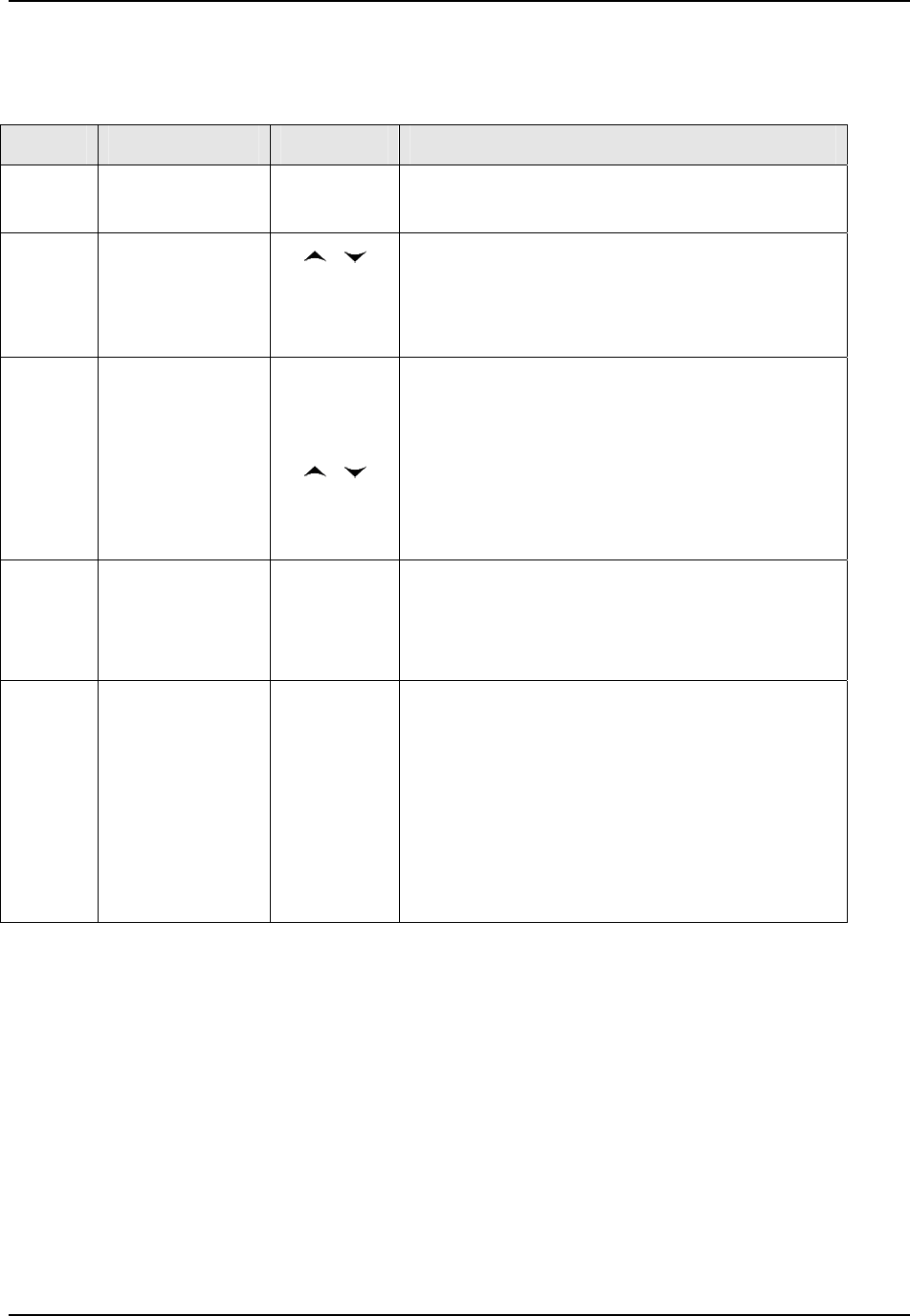
Monitoring and Operating the Controller
4.6 Start Up Procedure for Operation
Table 4-4 Procedure for Starting Up the Controller
Operation Press Result Step
Select Manual
Mode
Man/Auto
Until “M” indicator is ON.
The controller is in manual mode.
1
Adjust the Output
or To adjust the output value and ensure that the
final control element is functioning correctly.
Upper Display = PV Value
Lower Display = OUT and the output value in %
2
Enter the Local
Setpoint
Lower
Display
Upper Display = PV Value
Lower Display = SP and the Local Setpoint
Value
3
or
To adjust the local setpoint to the value at which
you want the process variable maintained.
The local setpoint cannot be changed if the
Setpoint Ramp function is running.
Select
Automatic
Mode
Man/Auto
Until “A” indicator is ON.
The controller is in Automatic mode.
The controller will automatically adjust the output
to maintain the process variable at setpoint.
4
Tune the
Controller
Setup
Make sure the controller has been configured
properly and all the values and selections have
been recorded on the Configuration Record
Sheet.
Refer to Tuning Set Up group to ensure that the
selections for Pb or GAIN, RATE T, and I MIN, or
I RPM have been entered.
Use Accutune to tune the controller; see the
procedure in this section.
5
March 2012 UDC3500 Universal Digital Controller Product Manual 201
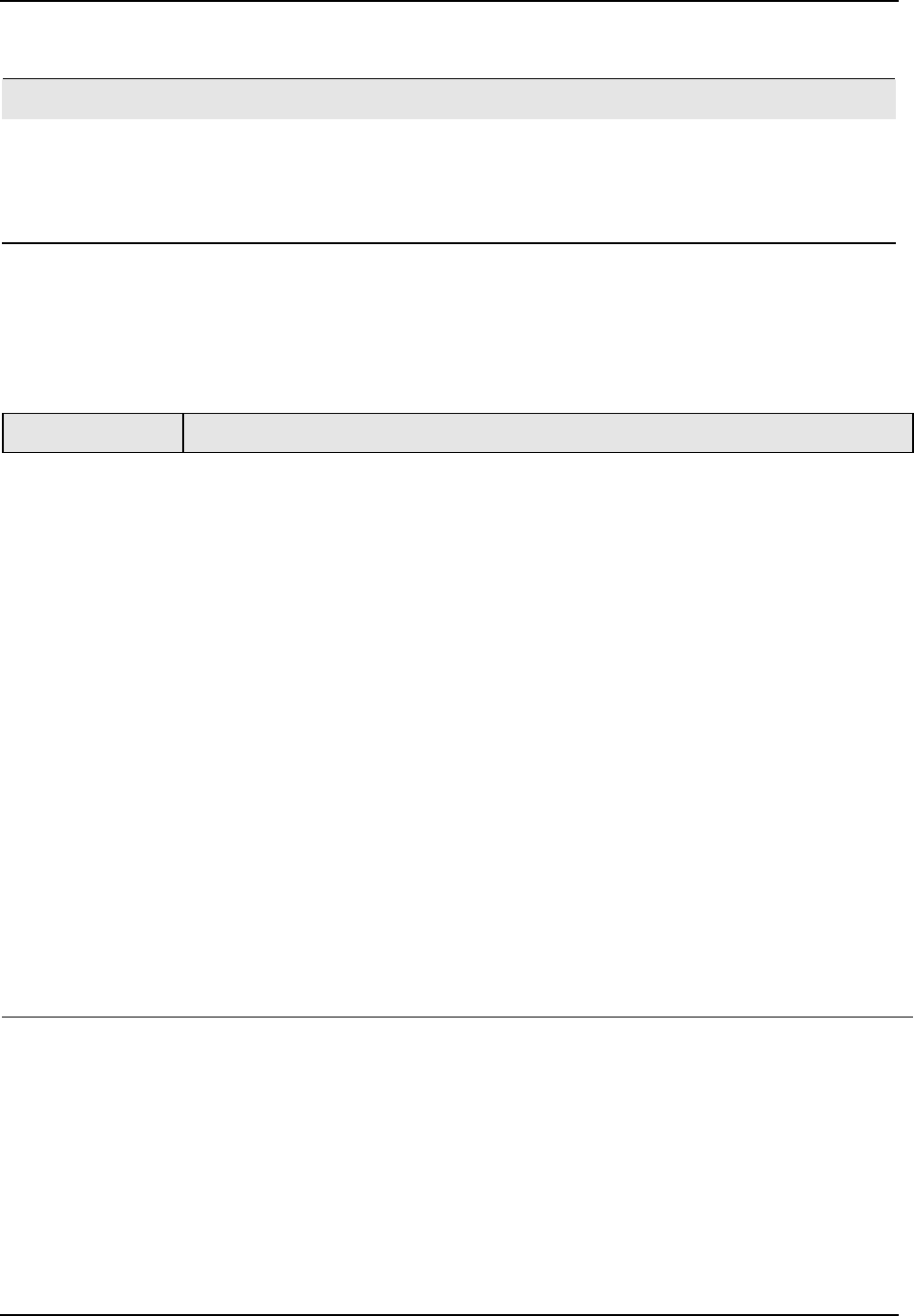
Monitoring and Operating the Controller
4.7 Control Modes
ATTENTION
After changing a Local Setpoint value, if no other key is pressed then takes a minimum of fifteen (15)
seconds elapsed time before the new value is stored in non-volatile memory. If controller power is
removed before this time, then the new setpoint value is lost and the previous setpoint value is used at
power-up. If, after changing the LSP value, another key is pressed, then the value is stored
immediately.
4.7.1 Mode Definitions
Table 4-5 Control Mode Definitions
Control Mode Definition
In automatic local mode, the controller operates from the local setpoints and
automatically adjusts the output to maintain the PV at the desired value.
In this mode you can adjust the setpoint.
See Subsection 4.8 – Setpoints.
AUTOMATIC with
LOCAL
SETPOINT
In automatic remote mode, the controller operates from the setpoint measured at the
remote setpoint input. Adjustments are available to ratio this input and add a
constant bias before it is applied to the control equation.
See Subsection 3.15 Input 1 or 3.17 Input 2.
AUTOMATIC with
REMOTE
SETPOINT
In the manual mode, the operator directly controls the controller output level. The
process variable and the percent output are displayed. The configured High and
Low Output Limits are disregarded and the operator can change the output value,
using the increment and decrement keys, to the limits allowed by the output type
(0 % to 100 % for a time proportioning output or –5 % to 105 % for a current output).
MANUAL
In the manual cascade mode, both control loops are in manual although there is still only one
output active. This mode is used to bring both loops into a reasonable operation area, at
which point the unit is placed into the automatic cascade mode.
If Loop 1 is placed in Manual control mode, then Loop 2, if in auto, is then placed in a pseudo-
manual mode thereby eliminating output bumps when Loop 1 is returned to Automatic control
mode.
MANUAL
CASCADE
In Automatic cascade mode, there are two control loops, with one loop’s output acting as the
setpoint for the second control loop. There is only one physical output in this mode.
AUTOMATIC
CASCADE
202 UDC3500 Universal Digital Controller Product Manual March 2012
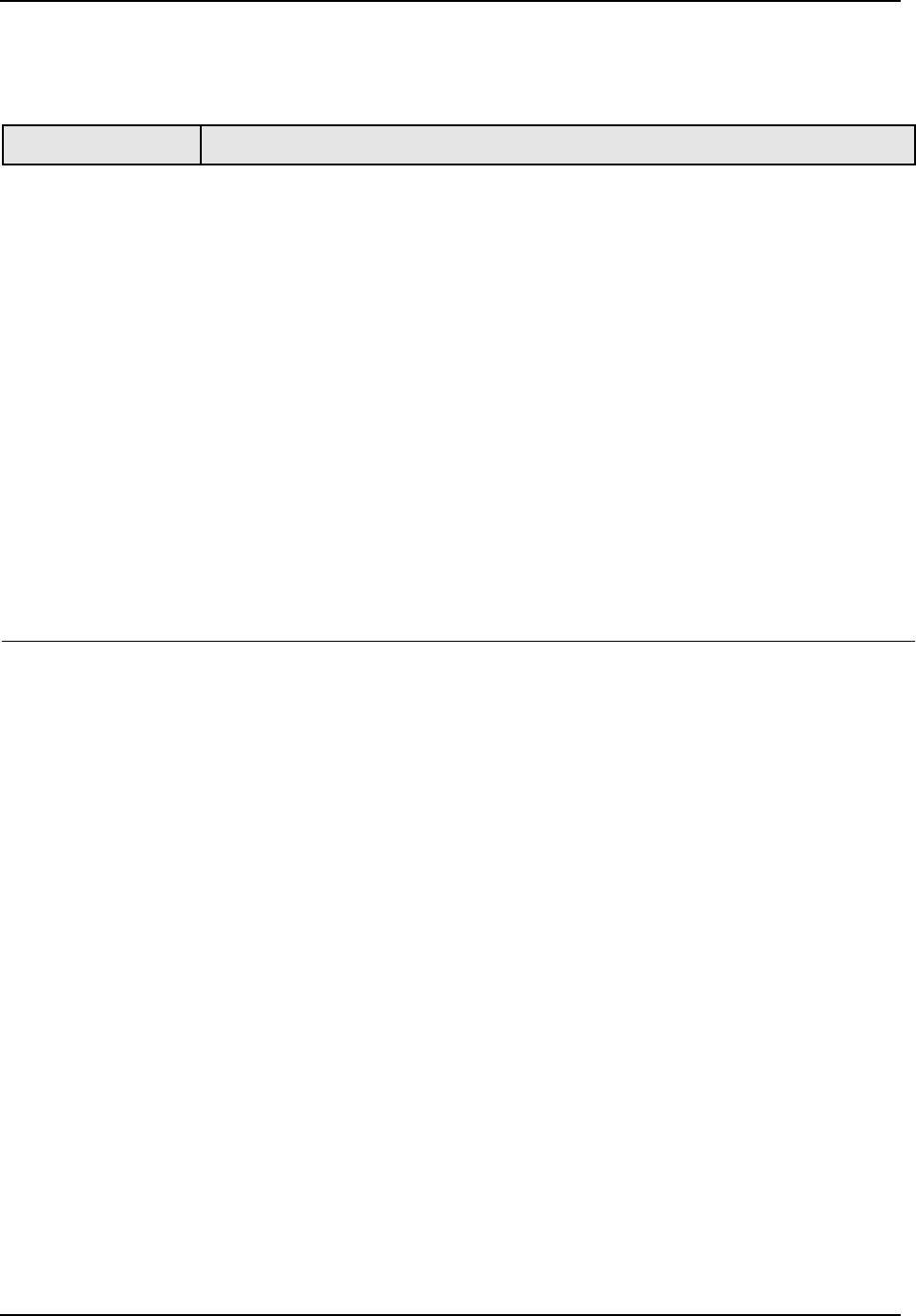
Monitoring and Operating the Controller
4.7.2 What happens when you change modes
Table 4-6 Changing Control Modes
Control Mode Definition
The Local Setpoint is usually the value previously stored as the Local Setpoint.
PV tracking is a configurable feature that modifies this. For this configuration,
when the controller is in manual mode, the local setpoint value tracks the process
variable value continuously. Thus, when the instrument is switched into Automatic
Mode, the local setpoint is set at the current PV value.
Manual to
Automatic Local
Setpoint
The Remote Setpoint uses the stored ratio and bias to calculate the control
setpoint.
Auto bias is a configurable feature, which modifies this. When it is selected the
transfer from automatic local to automatic remote or from manual remote to
automatic remote adjusts the bias based on the local setpoint such that
Bias = LSP – (RSP Input x R).
Manual or Auto
Local to Autom
a
tic
Remote SP
If configured for local setpoint tracking, RSP, when the controller transfers out of
remote setpoint the last value of the remote setpoint is inserted into the local
setpoint.
If LSP tracking is not configured, the local setpoint will not be altered when the
transfer is made.
Automatic Remote
Setpoint to Manual
or Auto Local
Setpoint
4.8 Setpoints
Introduction
You can configure the following setpoints for the UDC3500 controller.
One to four Local Setpoints
One to four Local Setpoints plus one Remote Setpoint
Refer to Subsection 3.20 – Control Set Up Group for configuration details.
Wh
enever the active Setpoint is shown in the Lower Display, an n appears to the left of
the Setpoint display.
March 2012 UDC3500 Universal Digital Controller Product Manual 203
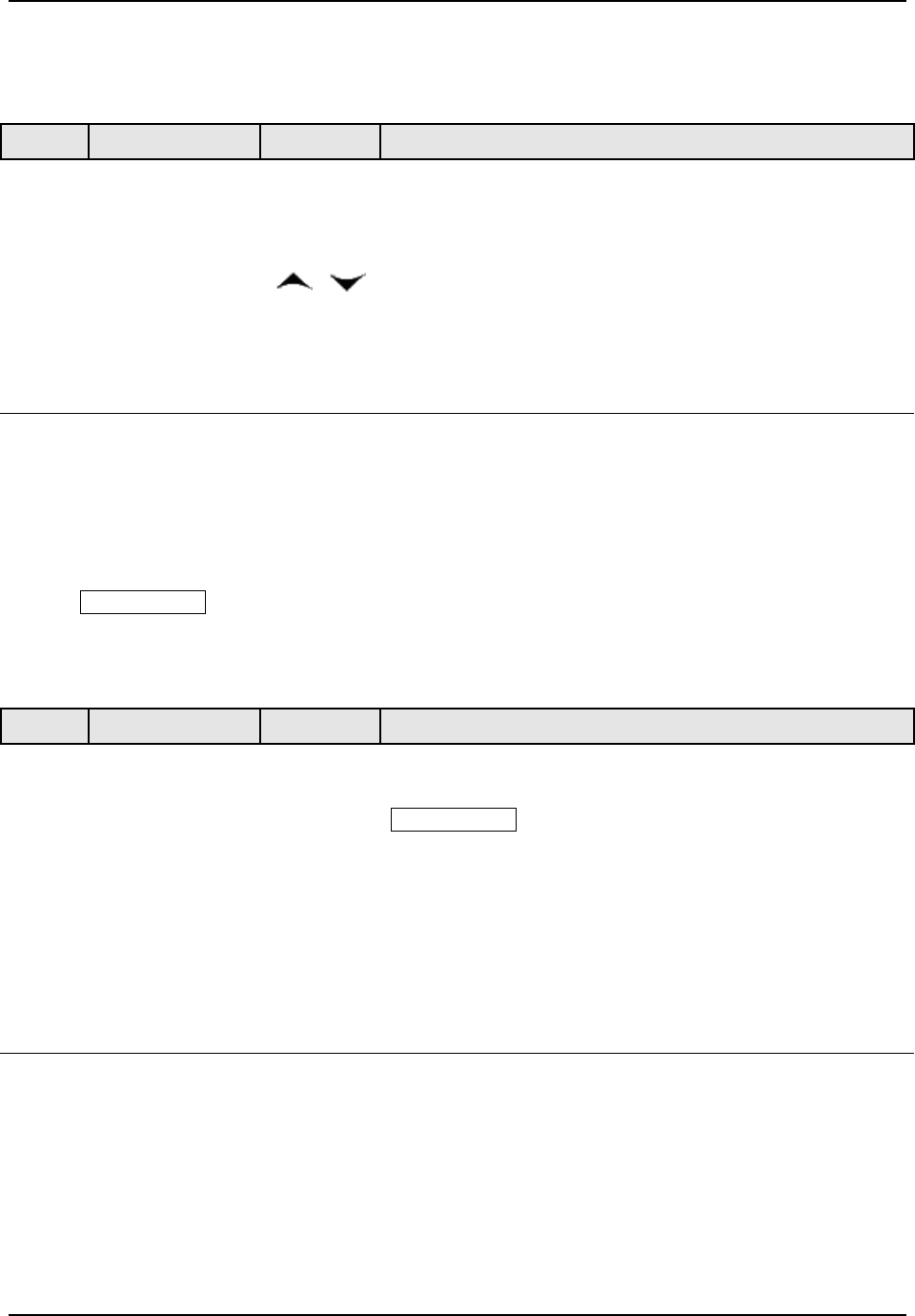
Monitoring and Operating the Controller
Changing the Setpoints
Table 4-7 Procedure for Changing the Local Setpoints
Operation Press Result Step
Select the
Setpoint
Lower
Display
Until you see:
Upper Display = PV
Lower Display = SP or 2SP or 3SP or 4SP (Value)
1
Change the
Value
or
To change the Local Setpoint to the value at which you want
the process maintained. The display “blinks” if you attempt
to enter setpoint values beyond the high and low limits..
2
Return to PV
Display
Lower
Display
To store immediately or will store after 30 seconds.
3
Switching between setpoints
You can switch between Local Setpoints or between Local and Remote Setpoints via the
SP SELECT key.
ATTENTION The REMOTE SETPOINT value cannot be changed at the keyboard.
Table 4-8 Procedure for Switching Between Setpoints
Operation Press Result Step
Select the
Setpoint
SP Select
To switch between the four Local Setpoints and/or the
Remote Setpoint. Whenever the active lo
ATTENTION “KEY ERROR” will appear in the
lower display, if:
the remote setpoint or additional local setpoints are not
configured as a setpoint source
you attempt to change the setpoint while a setpoint ramp
is enabled, or
if you attempt to change the setpoint with the setpoint
select function key disabled.
Appears to the left of the active setpoint
1
204 UDC3500 Universal Digital Controller Product Manual March 2012
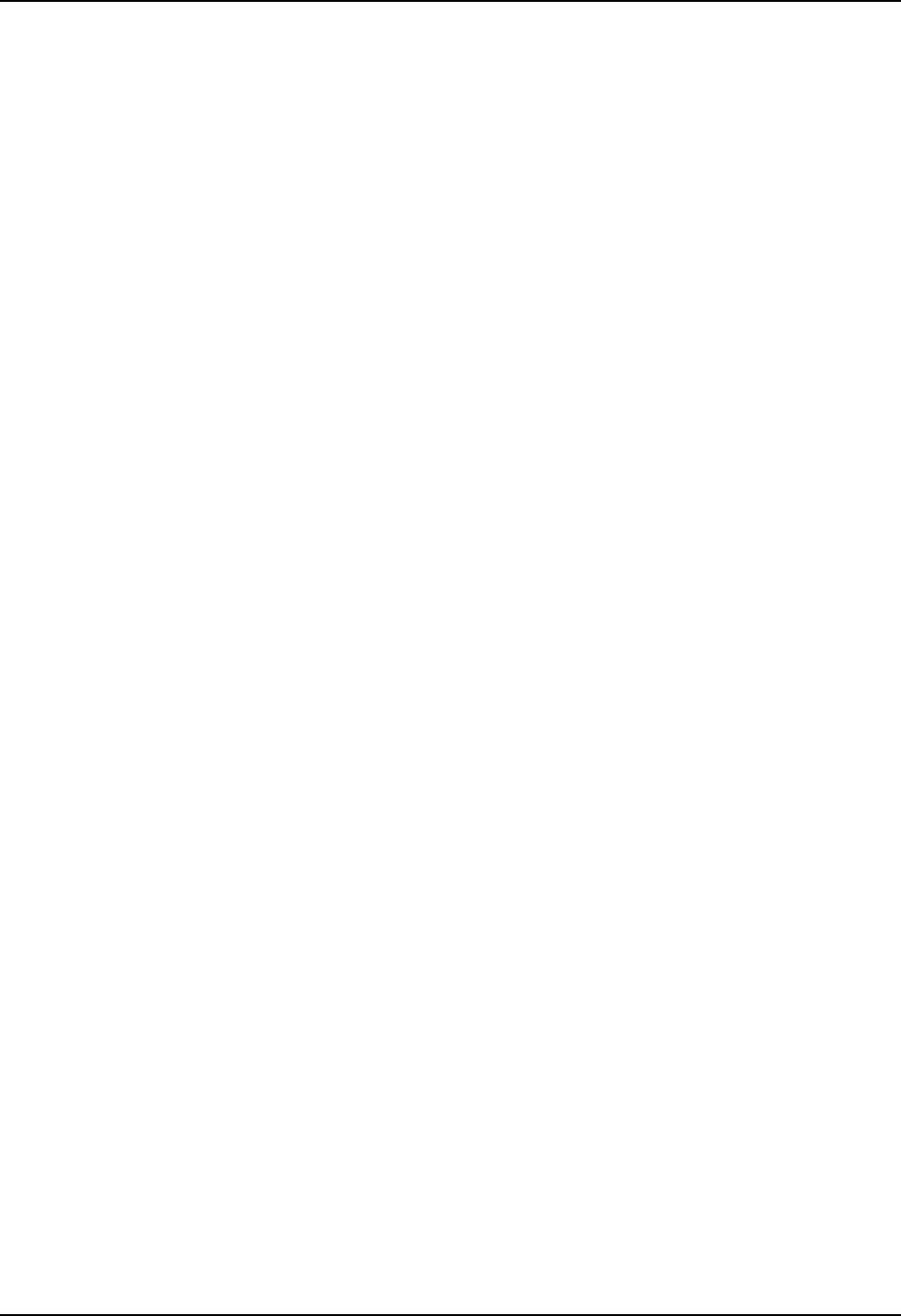
Monitoring and Operating the Controller
4.9 Timer
Introduction
The Timer provides a configurable Time-out period of from 0 to 99 hours:59 minutes or
0 to 99 minutes:99 seconds.
Timer “Start” is selectable as either the RUN/HOLD key or Alarm 2.
The Timer display can be either “Time Remaining” or “Elapsed Time”.
Configuration check
Make sure:
TIMER is enabled
A TIMEOUT period has been selected (in hours and minutes or minutes and
seconds)
A TIMER FUNCTION START has been selected (KEY or AL2)
A TIMER display has been selected (Time remaining or Elapsed time)
A timer increment selected
Timer reset selected (KEY or AL1)
KEY means that the RUN/HOLD key is used to start and/or reset the timer.
AL1 means that either Alarm 1 or the RUN/HOLD key is used to start and/or reset
the timer.
Refer to Subsection 3.11 Algorithm Set Up Group for details.
Viewing Times
The times are viewed on the lower display as follows:
TIME REMAINING will show as a decreasing Hrs:Min value (HH:MM) or Min:Sec
value (MM:SS) plus a counterclockwise rotating clock face.
ELAPSED TIME will show as an increasing Hrs:Min value(HH:MM) or Min:Sec
value (MM:SS) plus a clockwise rotating clock face.
Operation
When the Timer is enabled (RUN/HOLD key or ALARM 2), it has exclusive control of
Alarm 1 relay.
At “TIME-OUT:
Alarm 1 is active
The clock character has stopped moving
The Time display shows either 00:00 or the time-out period depending on the
configuration selection
March 2012 UDC3500 Universal Digital Controller Product Manual 205
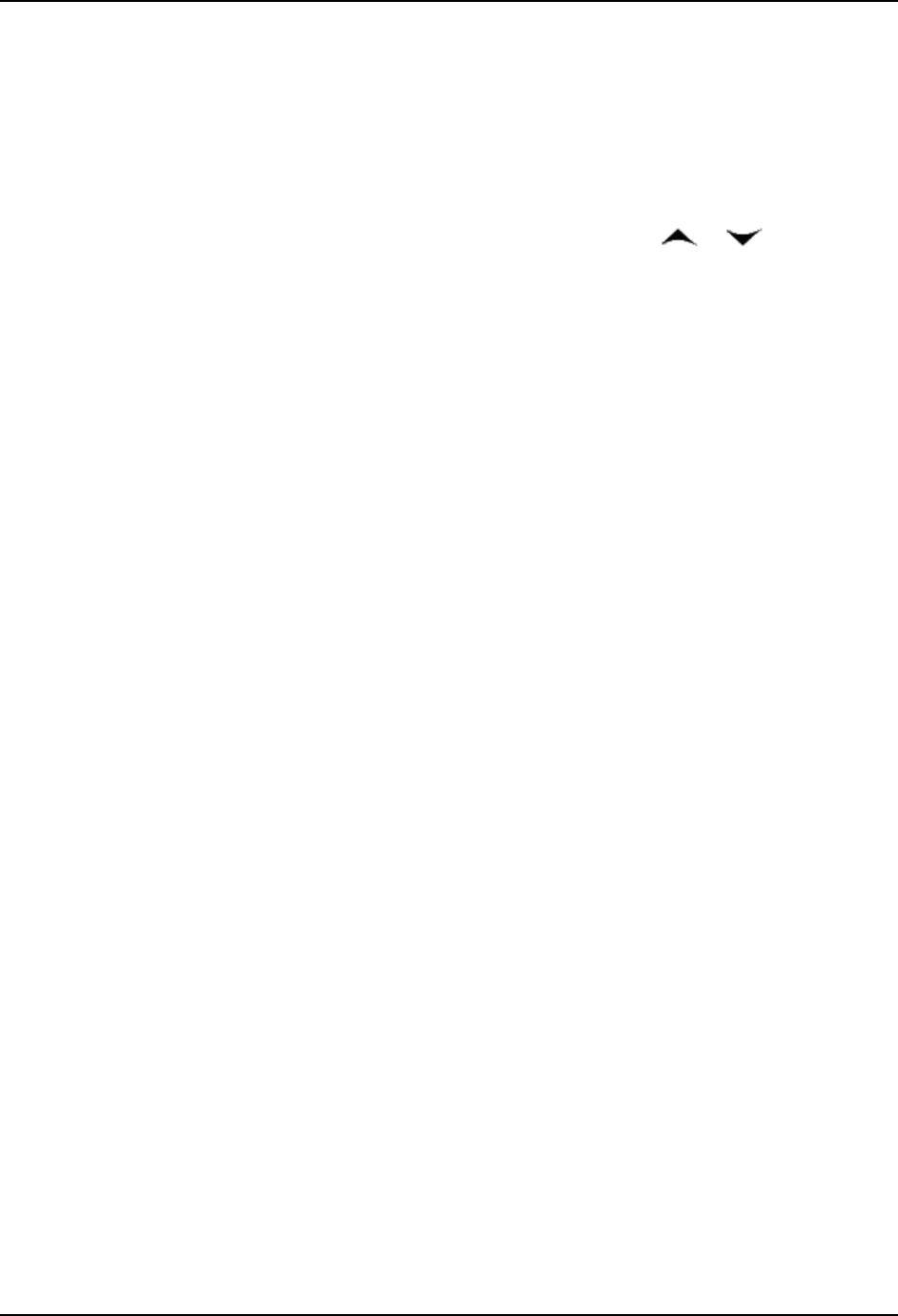
Monitoring and Operating the Controller
The Timer is ready to be reset either via the RUN/HOLD key or by activating
Alarm 1.
When the Timer is “RESET”:
Alarm 1 relay is inactive
The timer display shows the configured timer period
The time-out period can be changed at this time using the or keys.
The Timer is ready for the next activation.
4.10 Accutune III
Introduction
Accutune III (TUNE) may be used for self-regulating and single integrating processes.
This autotuning method is initiated on-demand, typically at initial start-up.
There are no other requirements necessary, such as prior knowledge to the process
dynamics or initial or post tune process line-out to setpoint or manual output.
Also, the setpoint value is not required to change in order to initiate the tuning process,
but the controller must be in the Automatic mode to start tuning. The process need not be
in a static (lined out) state and may be dynamic (changing with a steady output).
Configuration check
Make sure:
TUNE has been enabled see to Subsection 3.10 – Accutune Set Up Group for details.
Tuning indicators
A “T” will show in the leftmost alphanumeric of the upper display until tuning is
completed.
Operation
The Accutune III algorithm provides user-friendly, on-demand tuning in this controller.
No knowledge of the process is required at start-up. The operator simply initiates the
tuning while in the automatic mode.
Once Accutune III has been enabled in the TUNE setup group, either “SLOW” or
“FAST” tuning may be used. Which one is used is selected via the lower display during
normal operation.
For the SLOW selection, the controller calculates conservative tuning constants with the
objective of minimizing overshoot. If the controller determines that the process has
appreciable dead time, it will automatically default to use Dahlin Tuning, which produces
very conservative tuning constants. The SLOW selection may be useful for TPSC and
206 UDC3500 Universal Digital Controller Product Manual March 2012
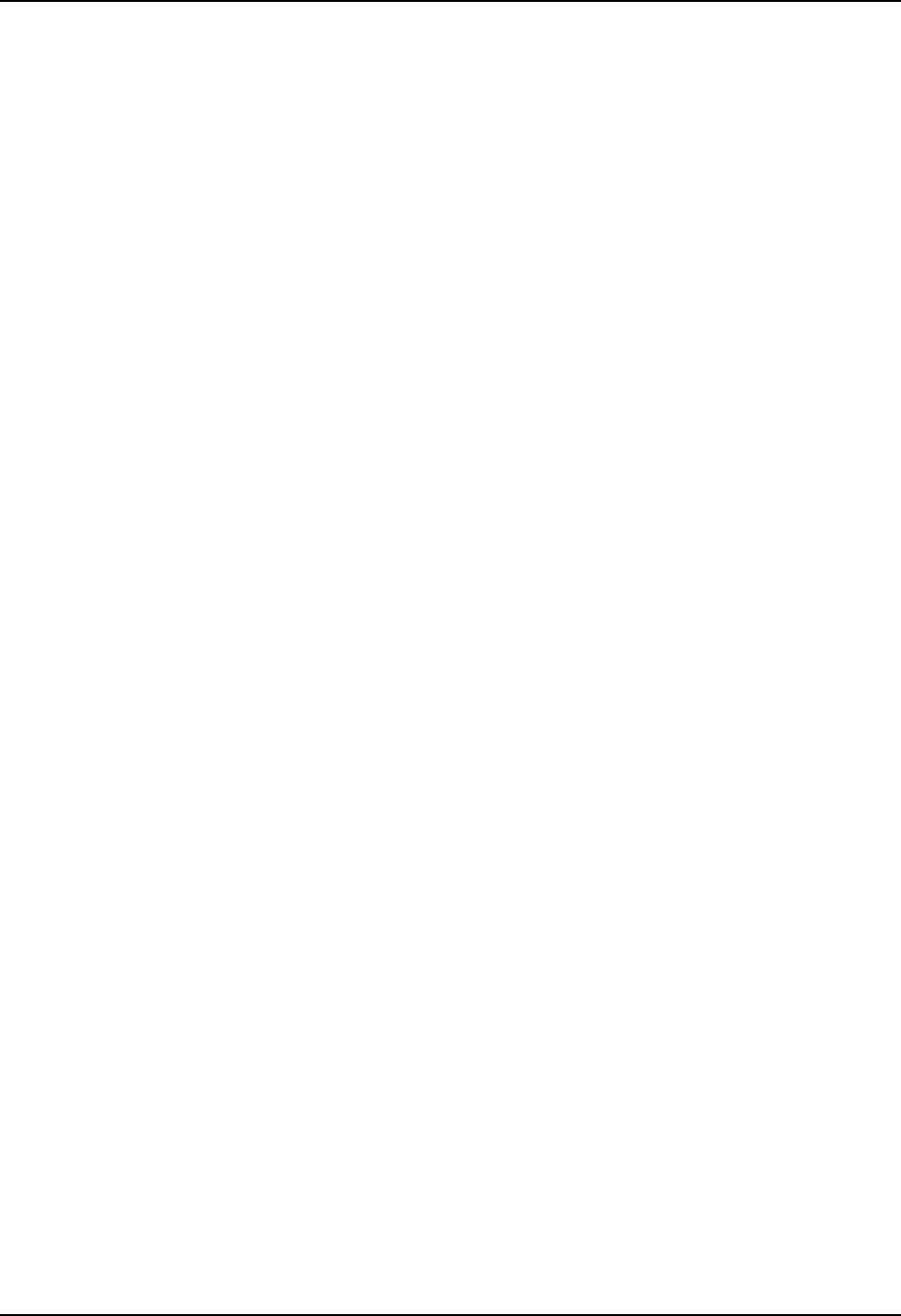
Monitoring and Operating the Controller
Position Proportional applications, as it reduces “hunt” problems for the motor. This
selection is also recommended for applications that have significant deadtimes.
For the FAST selection, the controller calculates aggressive tuning constants with the
objective of producing quarter-damped response. Depending upon the process, this
selection will usually result in some overshoot. For this reason, it may be desirable to
enable the FUZZY tune selection. See Section 4.11. When Fuzzy tune is enabled, it will
work to suppress or eliminate any overshoot that may occur as a result of the calculated
tuning parameters as the PV approaches the setpoint. This selection is best suited for
processes with a single lag or for those that do not have any appreciable deadtime.
FUZZY tuning does not work well for processes that have appreciable deadtime.
The Accutune III tuning process will cycle the controller’s output two full cycles
between the low and high output limits while allowing only a very small Process
Variable change above and below the SP during each cycle. A “T” shows in the upper
display until tuning is completed.
At the end of the tuning process, the controller immediately calculates the tuning
constants and enters them into the Tuning group, and begins PID control with the correct
tuning parameters. This works with any process, including integrating type processes,
and allows retuning at a fixed setpoint.
March 2012 UDC3500 Universal Digital Controller Product Manual 207
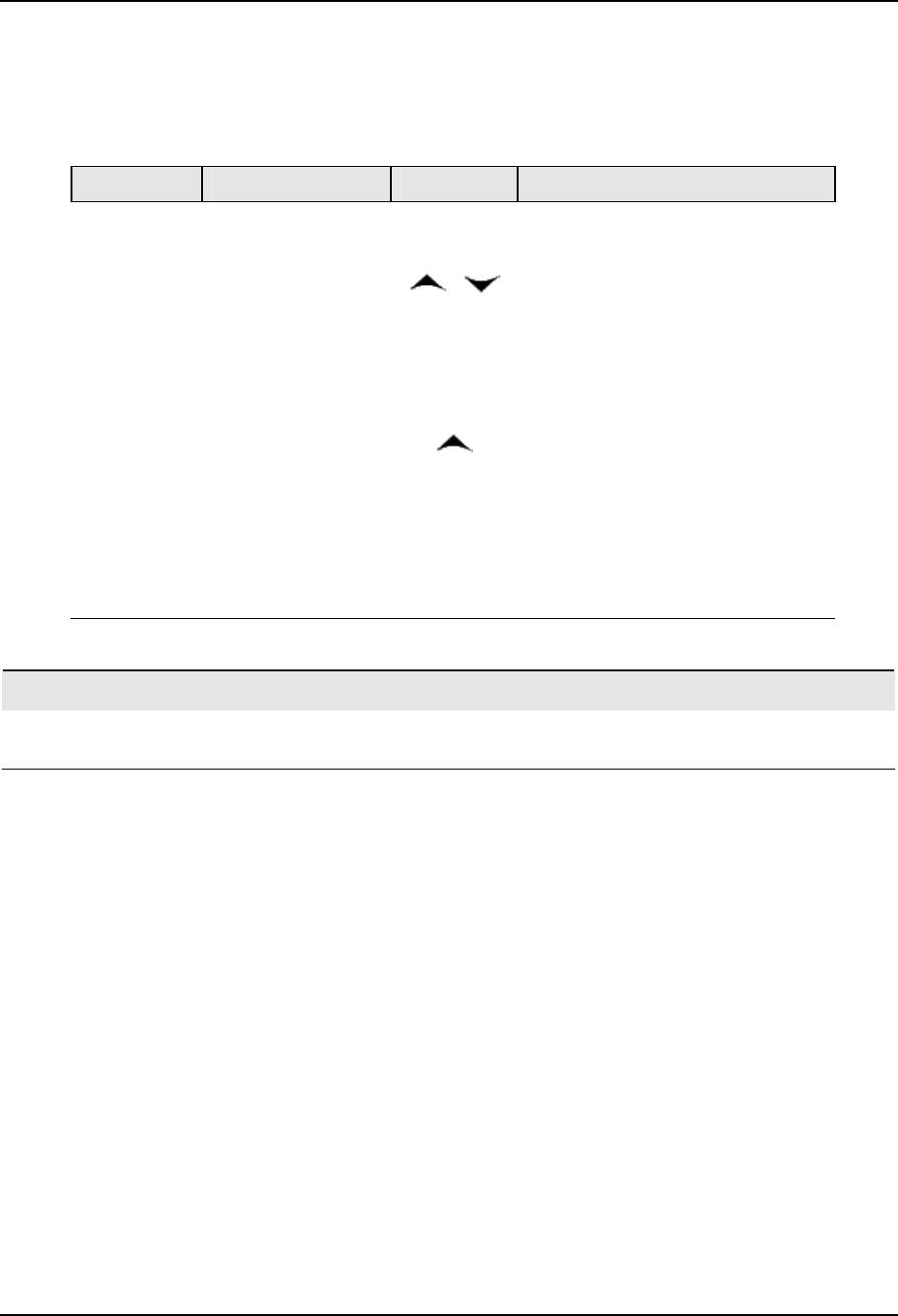
Monitoring and Operating the Controller
4.10.1 Tune for Simplex Outputs
After “TUNE” has been enabled, you can start Accutune as shown in Table 4-9.
Table 4-9 Procedure for Starting “TUNE”
Operation Press Result Step
Configure LSP1
Lower
Display
Until SP (Local Setpoint 1) shows
in the lower display.
1
or
Until LSP1 is to the desired value.
2
Switch to
“Automatic” Mode
Man/Auto
Until the “A” indicator is lighted (on
controllers with Manual option).
3
Show Tuning
Prompt
Lower
Display
Until “TUNE OFF” is shown on
lower display.
4
Initiate Tuning
Select “DO SLOW” or “DO FAST”
in lower display.
5
Tuning in operation
Lower
Display
Upper display will show a “T” as
long as ACCUTUNE process is
operating. When process
completes, tuning parameters are
calculated and lower display will
show “NO TUNE” prompt.
6
ATTENTION
The Accutune process may be aborted at any time by changing the lower display back to “NoTUNE” or
by switching the controller into Manual Mode.
208 UDC3500 Universal Digital Controller Product Manual March 2012
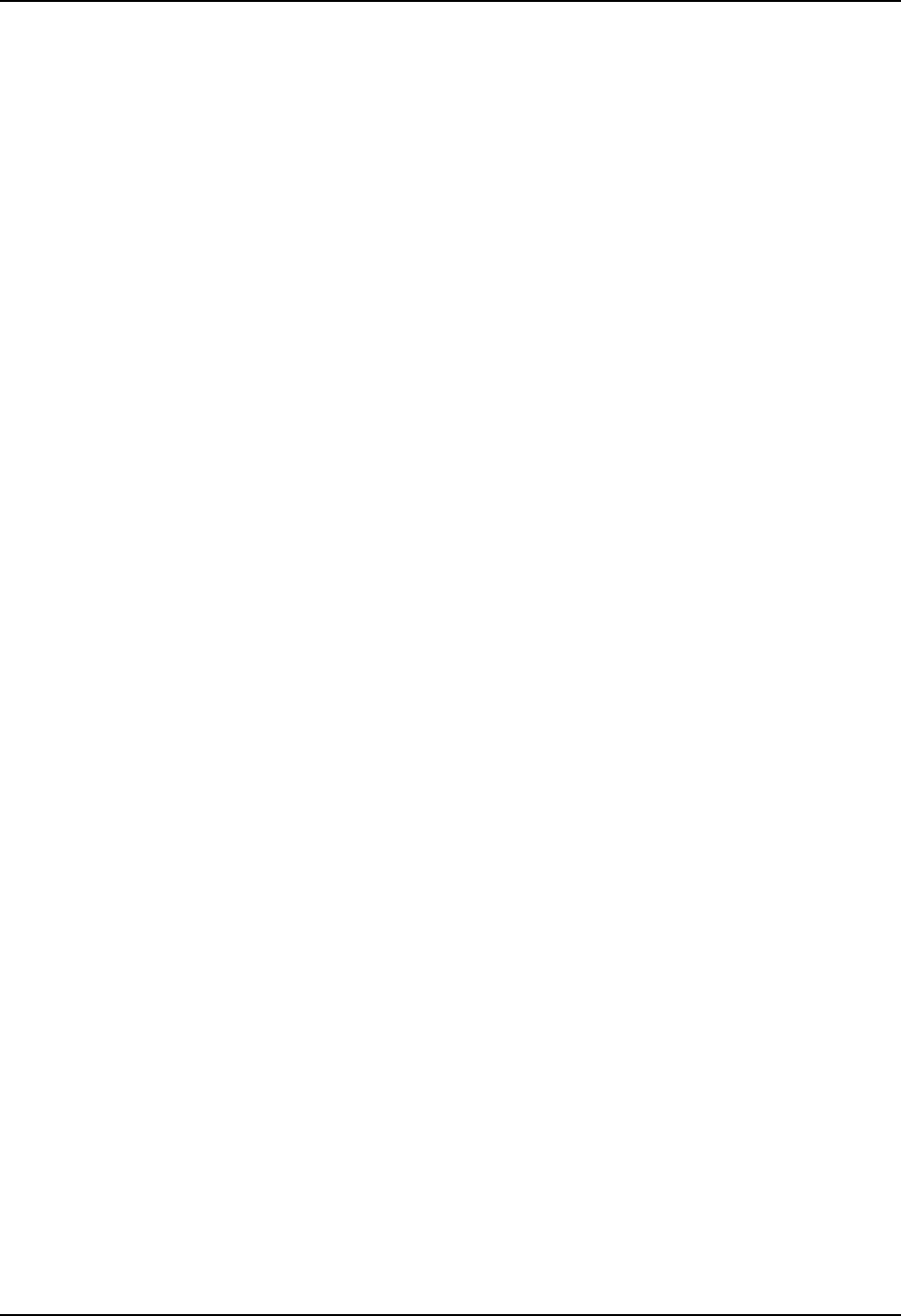
Monitoring and Operating the Controller
4.10.2 Tune for Duplex (Heat/Cool)
Accutune for applications using Duplex (Heat/Cool) control.
The controller must be configured to have two local setpoints unless Blended Tuning is
desired (see below). See Subsection 3.20- Control Set Up Group for details on
configuring two local setpoints. During tuning, the Accutune III process assumes that
Local Setpoint 1 will cause a Heating dem
and (output above 50%), and the tuning
parameters calculated for that setpoint are automatically entered as PID SET 1. Likewise,
Accutune III assumes that Local Setpoint 2 will cause a Cooling demand (output less
than 50%), and the tuning parameters calculated for that setpoint are automatically
entered as PID SET 2.
Configuration Check for Duplex
See Subsection 3.10 – Accutune Set Up Group for details.
Make sure:
TUNE has been enabled
DUPLEX has been configured to Manual, Automa
tic or Disabled
March 2012 UDC3500 Universal Digital Controller Product Manual 209
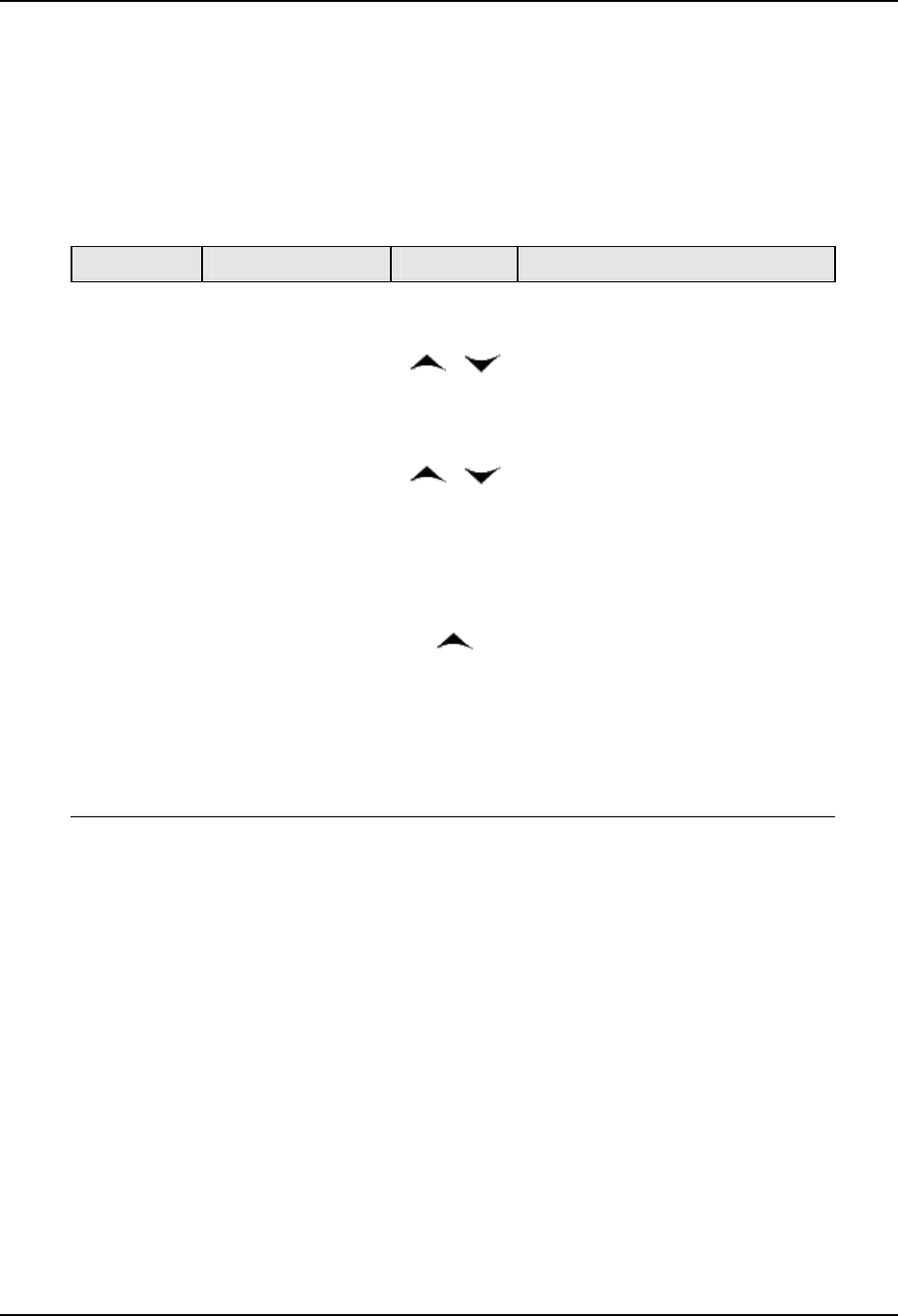
Monitoring and Operating the Controller
4.10.3 Using AUTOMATIC TUNE at start-up for Duplex (Heat/Cool)
Used when DUPLEX has been configured for AUTOMATIC. This is the preferred
selection for most Heat/Cool applications when tuning a new chamber. This selection
will sequentially perform both Heat and Cool tuning without further operator
intervention.
Table 4-10 Procedure for Using AUTOMATIC TUNE at Start-up for Duplex Control
Operation Press Result Step
Configure LSP1
Lower
Display
Until SP (Local Setpoint 1) shows
in the lower display.
1
or
Until LSP1 is a value within the
Heat Zone (output above 50%).
2
Configure LSP2
Lower
Display
Until 2SP (Local Setpoint 2) shows
in the lower display.
3
or
Until LSP2 is a value within the
Cool Zone (output below 50%).
4
Switch to
“Automatic” Mode
Man/Auto
Until the “A” indicator is lighted (on
controllers with Manual option).
5
Show Tuning
Prompt
Lower
Display
Until “TUNE OFF” is shown on
lower display.
6
Initiate Tuning
Select “DO SLOW” or “DO FAST”
in lower display.
7
Tuning in operation
Lower
Display
Upper display will show a “T” as
long as ACCUTUNE process is
operating. When process
completes, tuning parameters are
calculated and lower display will
show “NO TUNE” prompt.
210 UDC3500 Universal Digital Controller Product Manual March 2012

Monitoring and Operating the Controller
4.10.4 Using BLENDED TUNE at start-up for Duplex (Heat/Cool)
When DUPLEX has been configured for DISABLE. This is the preferred selection for
Heat/Cool applications, which use a highly insulated chamber (a chamber which will lose
heat very slowly unless a cooling device is applied). Only one local setpoint (LSP 1) is
needed for this selection.
This selection results in performance tuning over the full range utilizing both Heat and
Cool outputs to acquire blended tune values that are then applied to both Heat and Cool
tuning parameters. Both PID sets are set to the same values.
Table 4-11 Procedure for Using BLENDED TUNE at Start-up for Duplex Control
Operation Press Result Step
Configure LSP1
Lower
Display
Until SP (Local Setpoint 1) shows
in the lower display.
1
or
Until the Setpoint is to the desired
value.
2
Switch to
“Automatic” Mode
Man/Auto
Until the “A” indicator is lighted (on
controllers with Manual option).
3
Show Tuning
Prompt
Lower
Display
Until “TUNE OFF” is shown on
lower display.
4
Initiate Tuning
Select “DO SLOW” or “DO FAST”
in lower display.
5
6
Tuning in operation
Lower
Display
Upper display will show a “T” as
long as ACCUTUNE process is
operating. When process
completes, tuning parameters are
calculated and lower display will
show “NO TUNE” prompt.
March 2012 UDC3500 Universal Digital Controller Product Manual 211
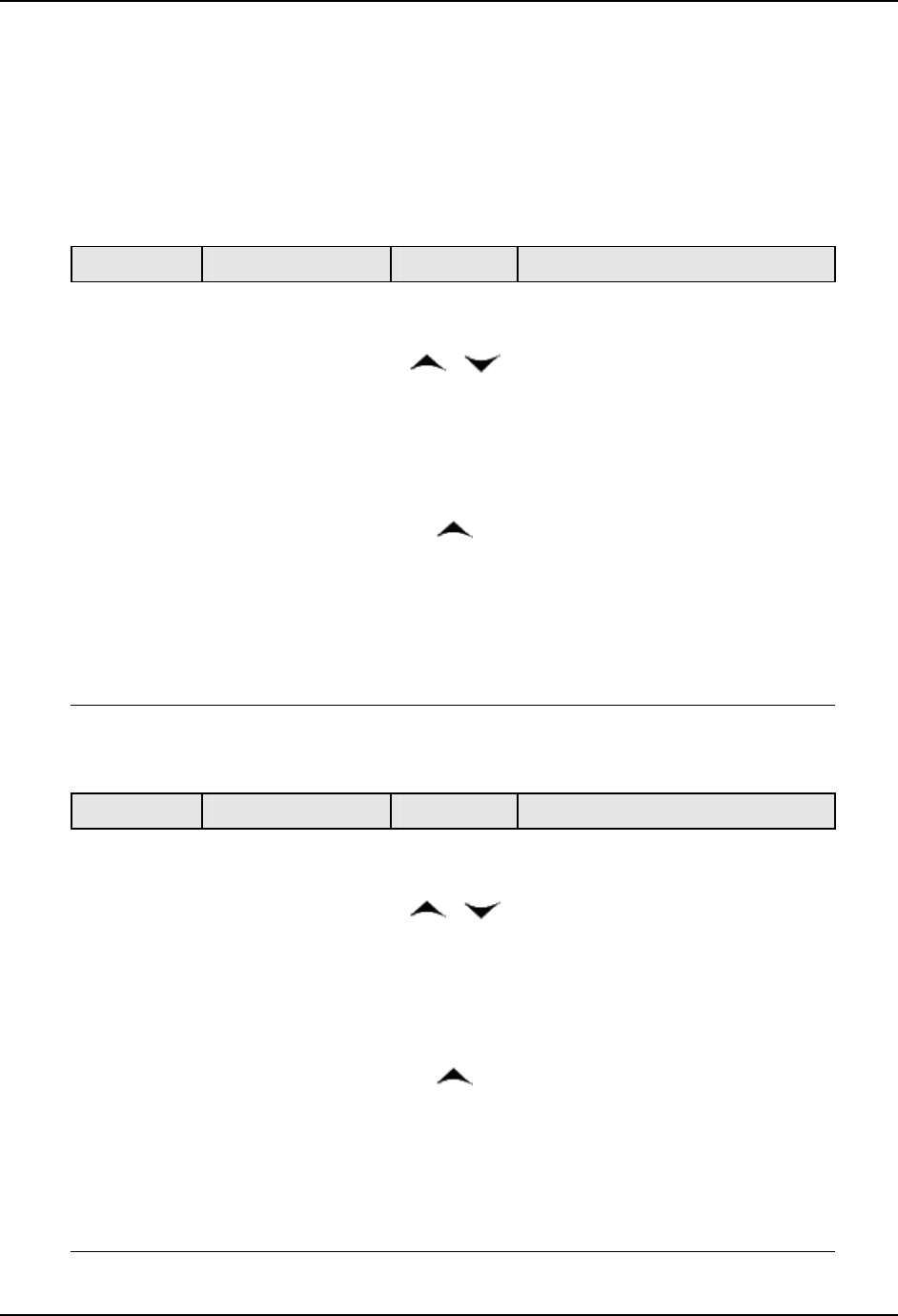
Monitoring and Operating the Controller
4.10.5 Using MANUAL TUNE at start-up for Duplex (Heat/Cool)
When DUPLEX has been configured for MANUAL. This selection should be used when
tuning is needed only for the HEAT zone or only for the COOL zone but not both. If
Local Setpoint 1 is used, then the controller will perform a HEAT zone tune. If Local
Setpoint 2 is used, then the controller will perform a COOL zone tune.
Table 4-12 Procedure for Using MANUAL TUNE for Heat side of Duplex Control
Operation Press Result Step
Configure LSP1
Lower
Display
Until SP (Local Setpoint 1) shows
in the lower display.
1
or
Until LSP1 is a value within the
Heat Zone (output above 50%).
2
Switch to
“Automatic” Mode
Man Auto
Until the “A” indicator is lighted (on
controllers with Manual option).
3
Show Tuning
Prompt
Lower
Display
Until “TUNE OFF” is shown on
lower display.
4
Initiate Tuning
Select “DO SLOW” or “DO FAST”
in lower display.
5
Tuning in operation
Lower
Display
Upper display will show a “T” as
long as ACCUTUNE process is
operating. When process
completes, tuning parameters are
calculated and lower display will
show “NO TUNE” prompt.
6
Table 4-13 Procedure for Using MANUAL TUNE for Cool side of Duplex Control
Operation Press Result Step
Configure LSP2
Lower
Display
Until 2SP (Local Setpoint 2) shows
in the lower display.
1
or
Until LSP2 is a value within the
Cool Zone (output below 50%).
2
Switch to
“Automatic” Mode
Man/Auto
Until the “A” indicator is lighted (on
controllers with Manual option).
3
Show Tuning
Prompt
Lower
Display
Until “TUNE OFF” is shown on
lower display.
4
Initiate Tuning
Select “DO SLOW” or “DO FAST”
in lower display.
5
6
Tuning in operation
Lower
Display
Upper display will show a “T” as
long as ACCUTUNE process is
operating. When process
completes, tuning parameters are
calculated and lower display will
show “NO TUNE” prompt.
212 UDC3500 Universal Digital Controller Product Manual March 2012
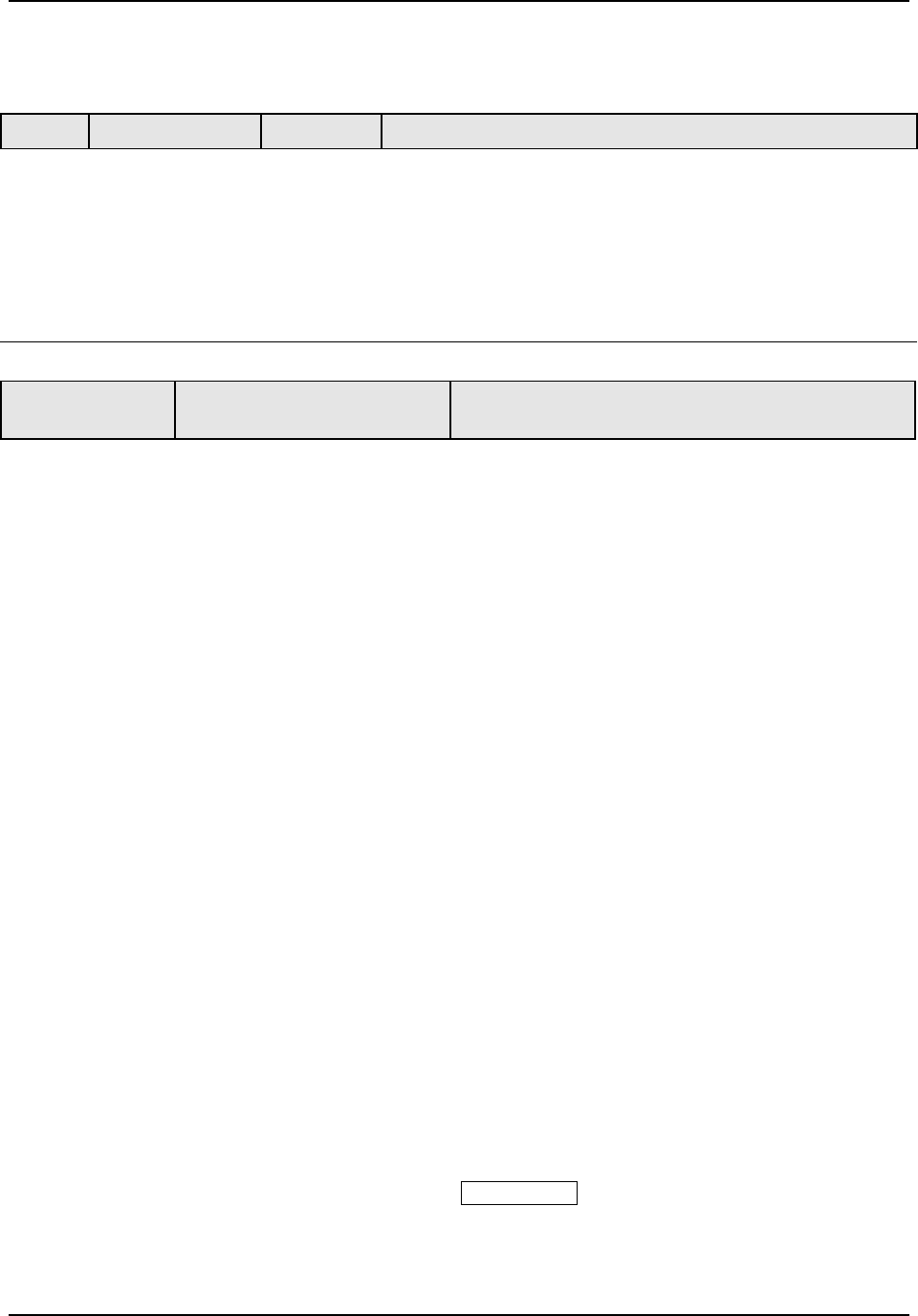
Monitoring and Operating the Controller
4.10.6 ACCUTUNE Error Codes
Table 4-14 Procedure for Accessing Accutune Error Codes
Operation Press Result Step
Select Accutune
Set-up Group
Setup
Upper Display = SETUP
Lower Display = ACCUTUNE
1
Go to Error Code
Prompt
Func
Upper Display = (an error code)
Lower Display = AT ERROR
Table 4-15 lists all the error codes, definitions, and
fixes.
2
Table 4-15 Accutune Error Codes
Definition
Fix
Error Code
(Upper Display)
ACCUTUNE RUNNING
The Accutune process is still active (Read Only)
RUNNING
NO ERRORS OCCURRED
DURING LAST ACCUTUNE
PROCEDURE
None
NONE
PROCESS IDENTIFICATION
FAILURE
Applies
only to SP or SP+
PV
tuning. An illegal value for
Gain, Rate or Reset was
calculated.
Illegal Values
– try Accutune again.
Untunable process – contact local application
engineer.
ID FAIL
CURRENT ACCUTUNE
PROCESS ABORTED
caused by the following
conditions:
a. Operator changed to
Manual mode
b. Digital Input detected
c. In Heat region of output
and a Cool output calculated
or vice versa.
Try Accutune again
ABORT
LSP2 not enabled or LSP1 or
LSP2 not in use (only applies
to Duplex Tuning)
Enable LSP2 and configure the desired LSP1 and
LSP2 setpoints. See Section 4.10.
SP2
OUTPUT LIMIT REACHED
(HIGH OR LOW)
Applies
only to SP or SP+
PV
tuning. Output insufficient to
get to SP value.
Check the Output Limits in the Control or Control 2
Set Up groups. See Section 3.20 or Section 3.21.
Verify that the correct Process Gain Value, KPG or
KPG2, is entered. See Section 3.10.
ATTENTION This error will cause the controller to
switch from Automatic to Manual Mode. The output
is then set to the value present at the beginning of
OUTLIM
March 2012 UDC3500 Universal Digital Controller Product Manual 213
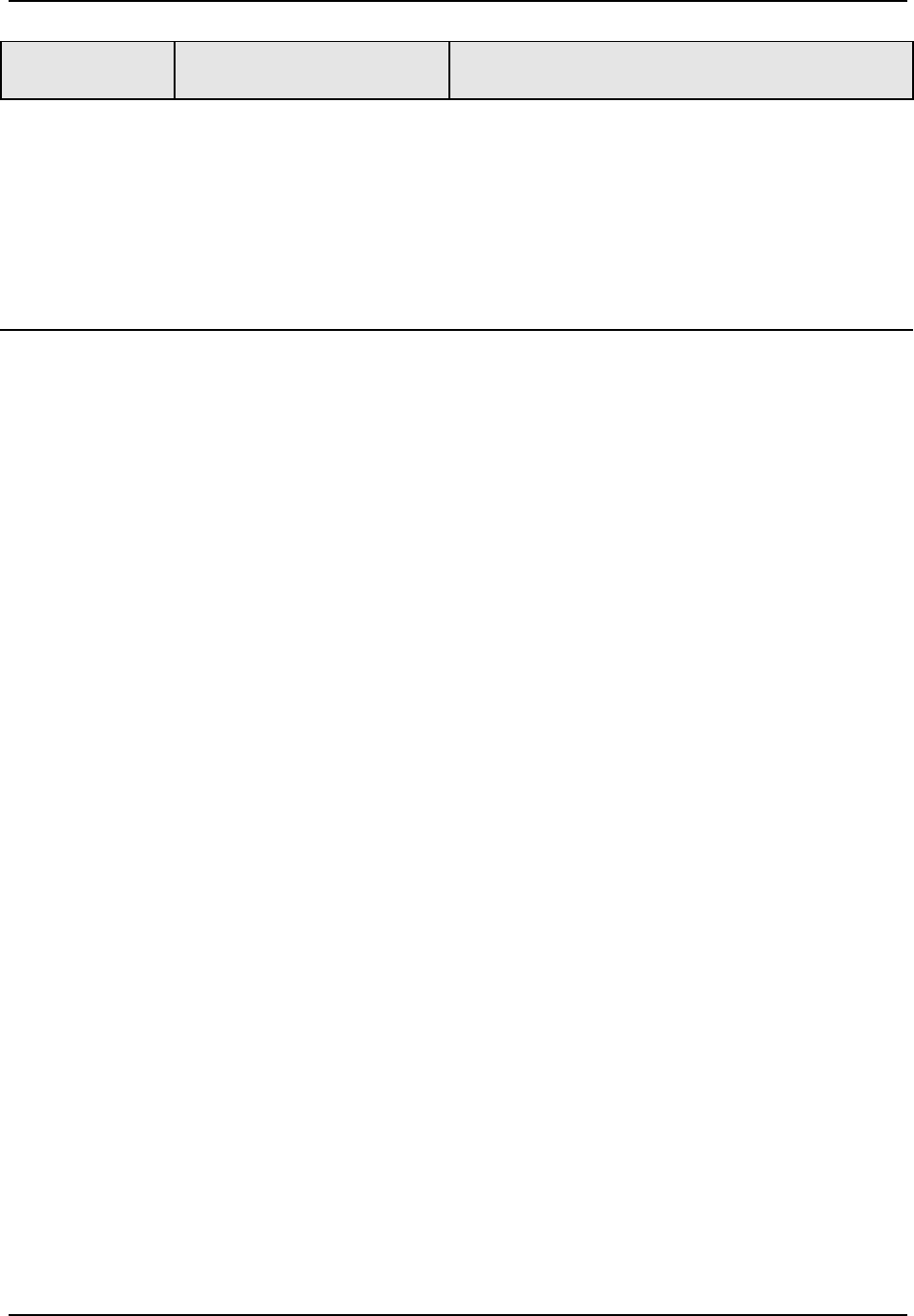
Monitoring and Operating the Controller
214 UDC3500 Universal Digital Controller Product Manual March 2012
Error Code
(Upper Display)
Definition
Fix
the ACCUTUNE process.
LOW PV
LOW PV
Applies only to SP or SP+PV
tuning. PV did not change
sufficiently or the PV has
increased by more than 4%
but Deadtime was not
determined.
No action necessary. After approximately five
minutes, the instrument will automatically attempt
another SP adaptive tuning process using a larger
output step.
Aborting Accutune
To abort Accutune and return to the last previous operation (SP or output level), press
MAN-AUTO key to abort the Accutune process or increment from the “DO SLOW” or
“DO FAST” prompt to the “TUNE OFF” prompt.
Completing Accutune
When Accutune is complete, the calculated tuning parameters are stored in their proper
memory location and can be viewed in the TUNING Set up Group, and the controller
will control at the local setpoint using these newly calculated tuning constants.
4.11 Fuzzy Overshoot Suppression
Introduction
Fuzzy Overshoot Suppression minimizes Process Variable overshoot following a setpoint
change or a process disturbance. This is especially useful in processes that experience
load changes or where even a small overshoot beyond the setpoint may result in damage
or lost product.
How it works
The Fuzzy Logic in the controller observes the speed and direction of the PV signal as it
approaches the setpoint and temporarily modifies the internal controller response action
as necessary to avoid an overshoot. There is no change to the PID algorithm, and the
fuzzy logic does not alter the PID tuning parameters. This feature can be independently
Enabled or Disabled as required by the application to work with the Accutune algorithm.
Fuzzy Tune should not be enabled for processes that have an appreciable amount of
deadtime.
Configuration
To configure this item, refer to Section 3 – Configuration:
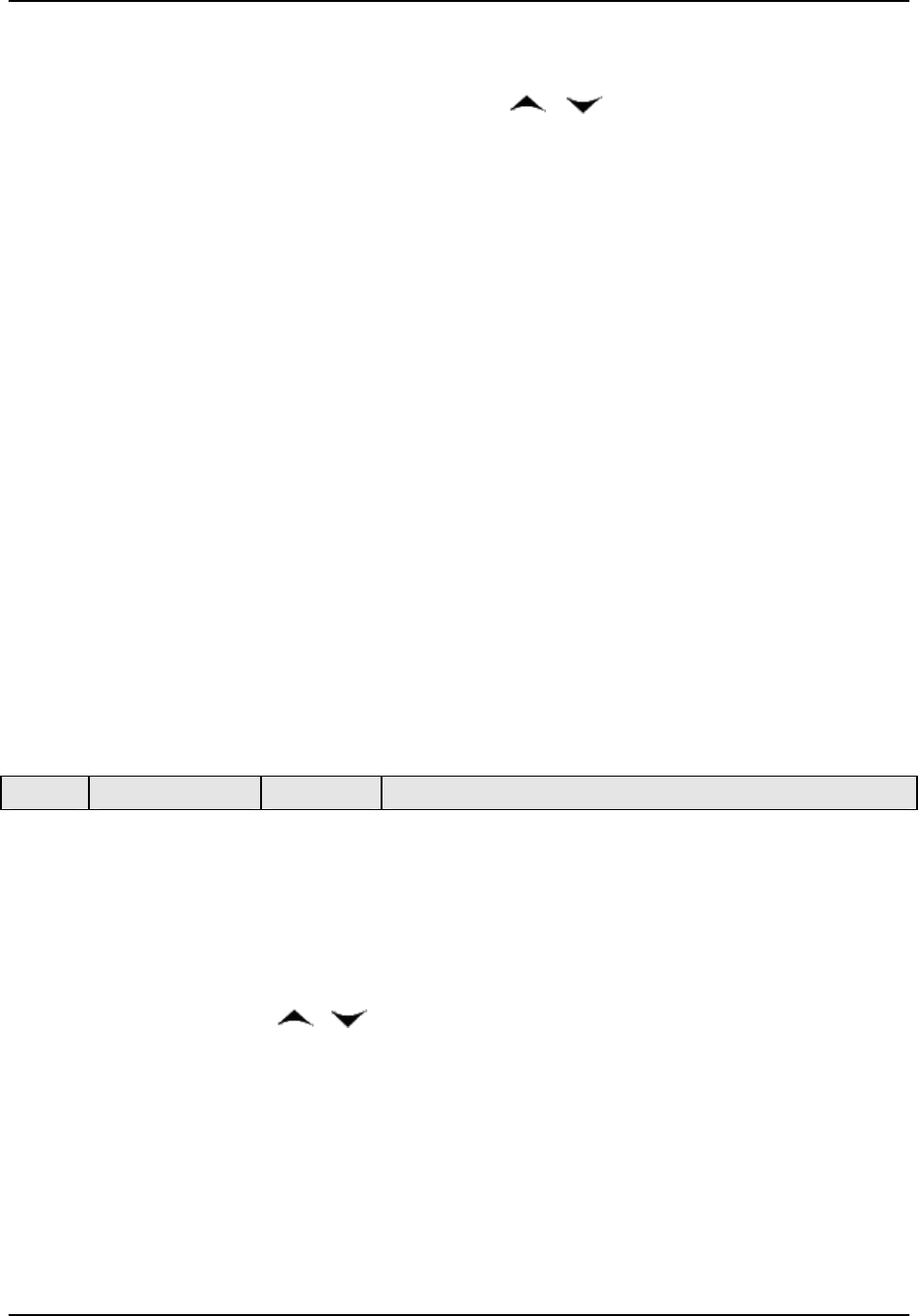
Monitoring and Operating the Controller
Set Up Group “ACCUTUNE”
Function Prompt “FUZZY”
Select “ENABLE” or “DISABLE” – Use or .
4.12 Using Two Sets of Tuning Constants
Introduction
You can use two sets of tuning constants for single output types and choose the way they
are to be switched. (this does not apply for Duplex control, which always uses two PID
sets).
The sets can be:
keyboard selected,
automatically switched when a predetermined process variable value is reached,
automatically switched when a predetermined setpoint value is reached.
Set up Procedure
The following procedure (Table 4-16) to:
select two sets,
set the switch-over value,
set tuning constant value for each set.
Table 4-16 Set Up Procedure
Operation Press Result Step
Select Control
Set-up Group
Setup
Until you see:
Upper Display = SET
Lower Display = CONTROL
1
Select
PID SETS
Func
Until you see:
Upper Display = (available selections)
Lower Display = PID SETS
2
Select PID SETS
Function
or
To select the type of function. Available selections are:
1 ONLY—1 set of constants
2KEYBD—2 sets, keyboard selectable
2PV SW—2 sets, auto switch at PV value
2SP SW—2 sets, auto switch at SP value
3
March 2012 UDC3500 Universal Digital Controller Product Manual 215
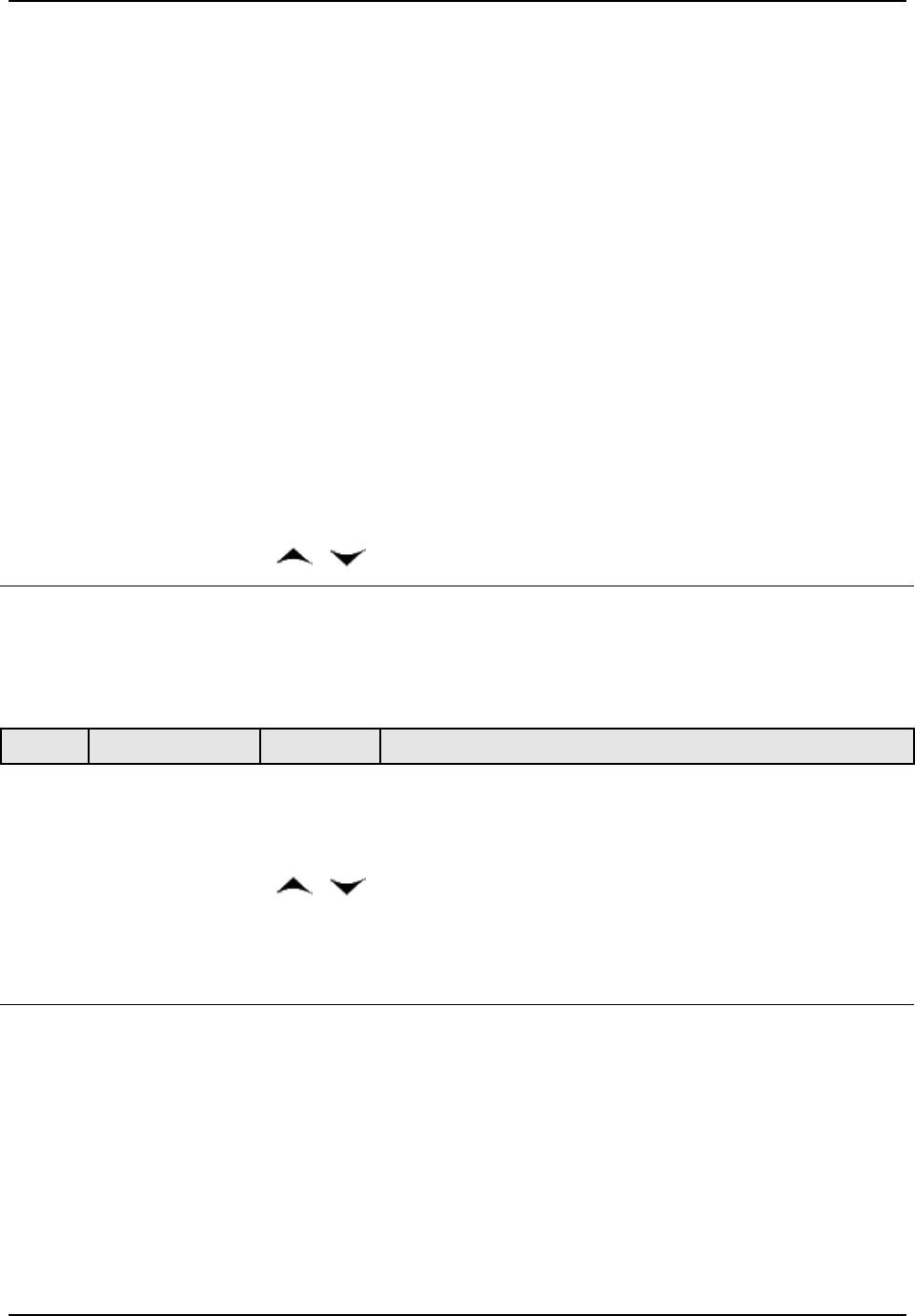
Monitoring and Operating the Controller
Set Tuning
Values for Eac
h
Set
Refer to “TUNING” Set up group, subsection 3.4 and set the
following tuning parameters:
PB or GAIN *
RATE MIN *
RSET MIN or RSET RPM *
CYC SEC or CYC SX3 *
PB2 or GAIN2 **
RATE2MIN **
RSET2MIN or RSET2RPM **
CYC2SEC or CYC2SX3 **
*PIDSET1 will be used when PV or SP, whichever is
select
ed,
is greater than the switchover value.
**PIDSET2 will be used when PV or SP, whichever is
selected, is less than the switchover value.
4
Set Switchover
Value for
2 PVSW or
2 SPSW
Selection
Func
Until you see:
Upper Display = (the switchover value)
Lower Display = SW VAL
5
or
To select the switchover value in the upper display.
Switch between two sets via keyboard (without automatic switch-over)
Table 4-17 Procedure for Switching PID SETS from the Keyboard
Operation Press Result Step
Select Control
Set-up Group
Lower
Display
Until you see:
Upper Display = (the PV value)
Lower Display = PIDS X (X= 1 or 2)
1
or
To change PID SET 1 to PID SET2 or Vice Versa.
You can use Accutune on each set.
2
3
Lower
Display
To accept changes.
216 UDC3500 Universal Digital Controller Product Manual March 2012
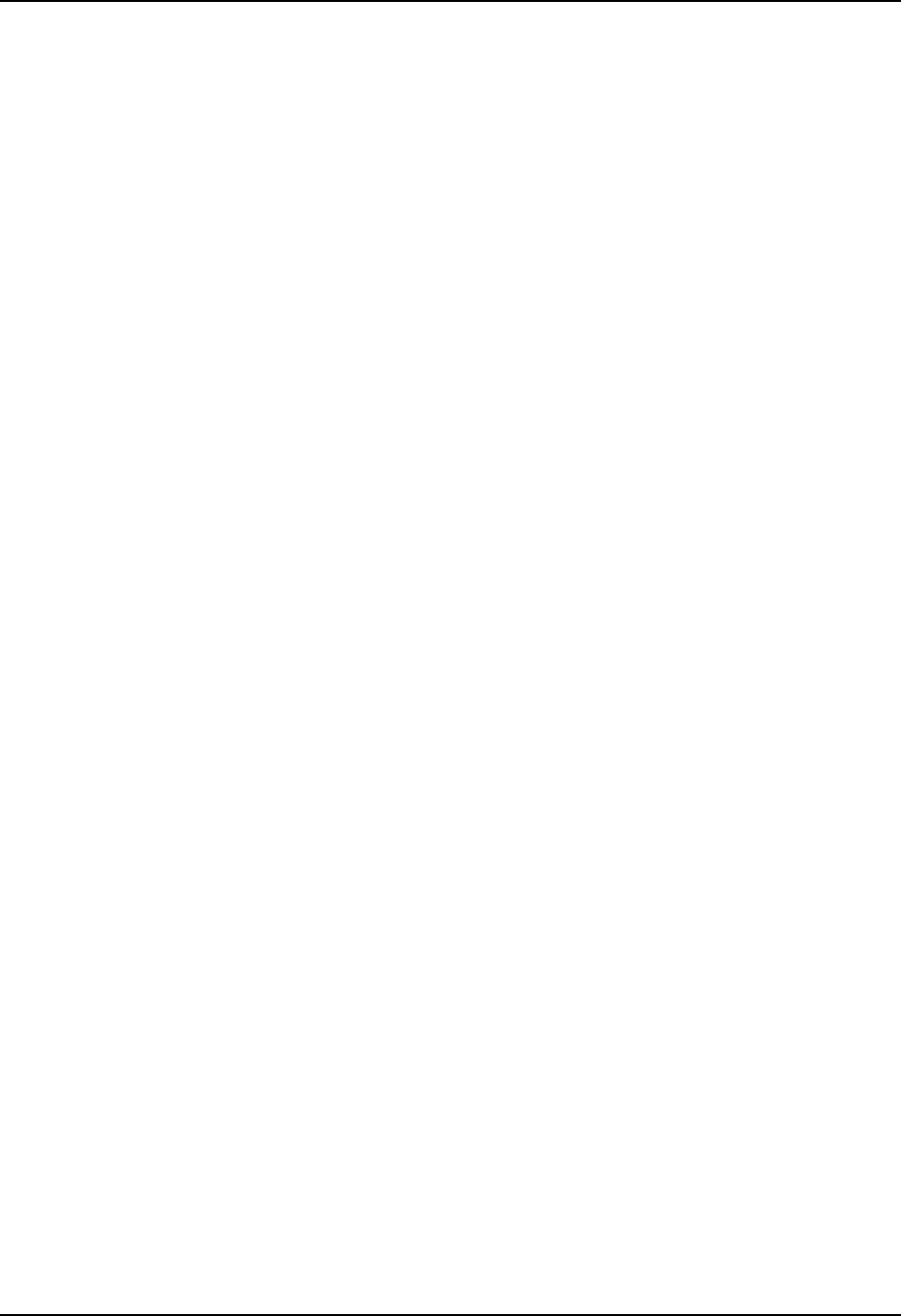
Monitoring and Operating the Controller
4.13 Input Math Algorithms
Introduction
This controller has two input algorithms available, some that are standard on any
instrument with two or more analog inputs and some that are available as part of the
Math option. Each algorithm can be configured to provide a derived (calculated) PV or a
derived Remote Setpoint. Up to three inputs may be applied to the calculation. In
addition, the two algorithms may be “linked” to combine two calculations by configuring
one algorithm to be an input to the other algorithm.
Standard functionality
The following algorithms are provided as standard on all instruments with two or more
analog inputs: Weighted Average, Feedforward Summer, Feedforward Multiplier, or
Relative Humidity.
Math Options
The Math option provides additional algorithms plus two Characterizers, Totalizer, and
Polynomial functions.
Input algorithm selections
Algorithm selections are made in Section 3 – Configuration. The following function
prompts can be found in the Algorithm Set Up group:
IN ALG1
IN ALG2
These selections include the following algorithms:
Weighted Average
Feedforward Summer
Relative Humidity
Summer
Hi Select
Lo Select
Multiply Divide
Multiply
Multiply Divide
Multiply
Feedforward Multiplier
Carbon Potential (several types)
Oxygen
Dewpoint
The formulas for these selections are given in Section 3.11.
March 2012 UDC3500 Universal Digital Controller Product Manual 217
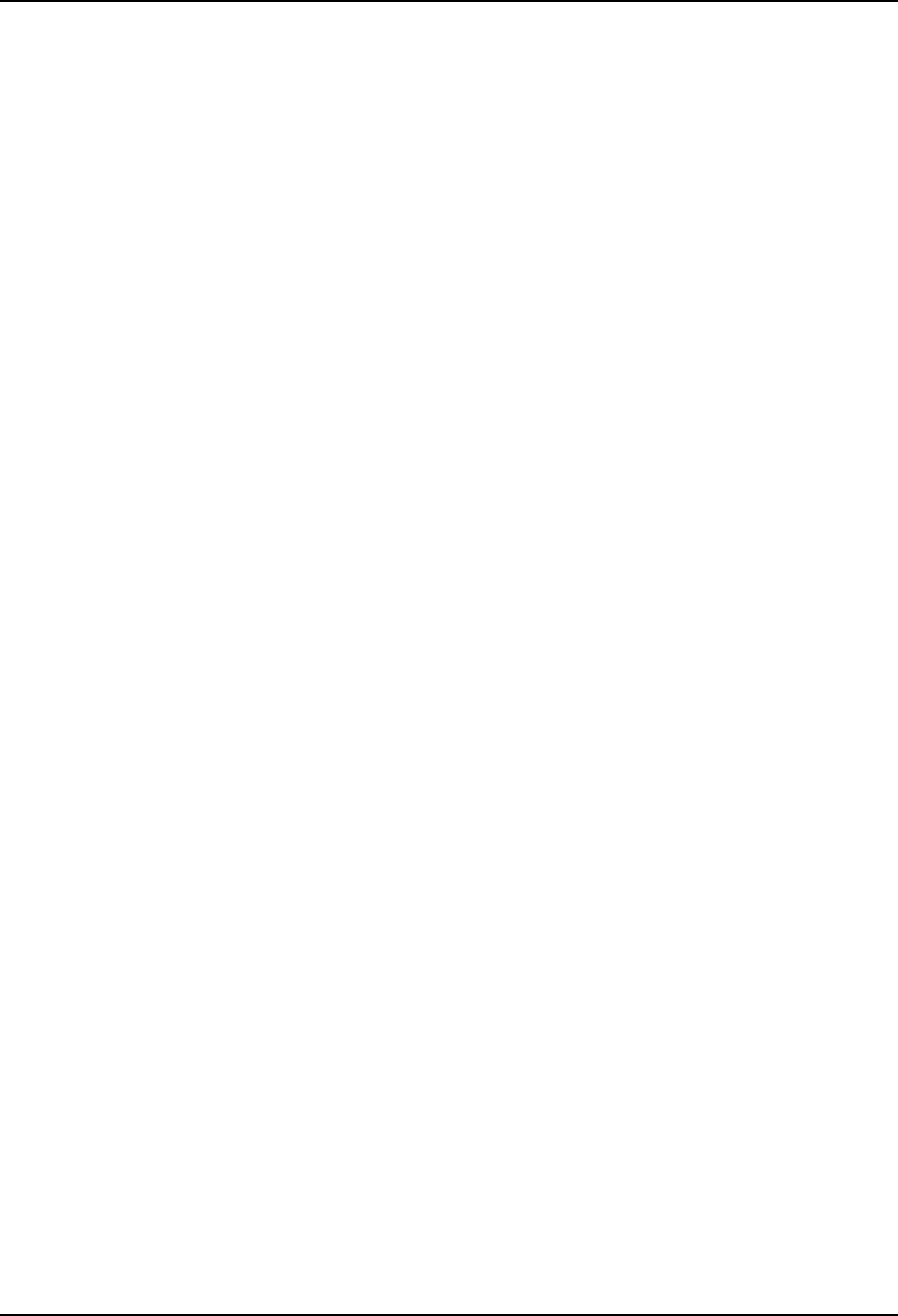
Monitoring and Operating the Controller
8 Segment Characterizers
Characterizers are available as part of the Math Algorithm option. See Section 3.12.
8SEG CH1
Xn VALUE
Yn VALUE
8SEG CH2
Xn VALU2
Yn VALU2
An 8-segment characterizer can be applied to any Analog Input, Output 1, or Output 2.
When an Analog Input is used, the selected input’s Ratio and Bias are applied to the Xn
values. The characterizers can be linked in order to provide a single 16-segment
characterizer.
When one of the loop outputs is selected, the Xn Values are the output from the control
algorithm, and the Yn Output is the final control element action.
An example of an 8-segment characterizer can be found in Figure 3-2.
Totalizer
A Flow Totalizer is available as part of the Math Algorithm option. See Section 3.12..
This calculates and displays the total flow volume being measured by one of the analog
inputs. Alternatively, it can be applied to either Input Algorithm 1 or Input Algorithm 2
to totalize the compensated flow rate as being calculated by the selected algorithm.
The totalizer displays the current totalized flow value (up to seven digits maximum).
Seven scaling factors are available (from one to one million). The desired scaling factor
is applied to the calculated value to extend the maximum total flow range that can be
displayed.
Five integration rates are available to match the totalizer rate to the rate of flow being
measured. The rates are:
Engineering units (EU) per second
EU per minute
EU per hour
EU per day
Millions of units per day
The totalizer value is stored in nonvolatile memory once every eight hours. If power is
lost while the totalizer is in operation, the current value of the totalizer will be lost. When
power is restored, the totalizer will start operation for the last value stored in nonvolatile
memory. The (Sigma) display will blink to indicate this condition. Reset the totalizer.
The totalizer can be reset from the keyboard whenever desired. The totalizer should
always be reset to initialize the counters whenever it is enabled.
Alarm on totalizer value
The alarm type configuration includes an Alarm on Totalizer value. This allows an alarm
setpoint value to be used to cause an alarm when exceeded. The alarm setpoint represents
218 UDC3500 Universal Digital Controller Product Manual March 2012
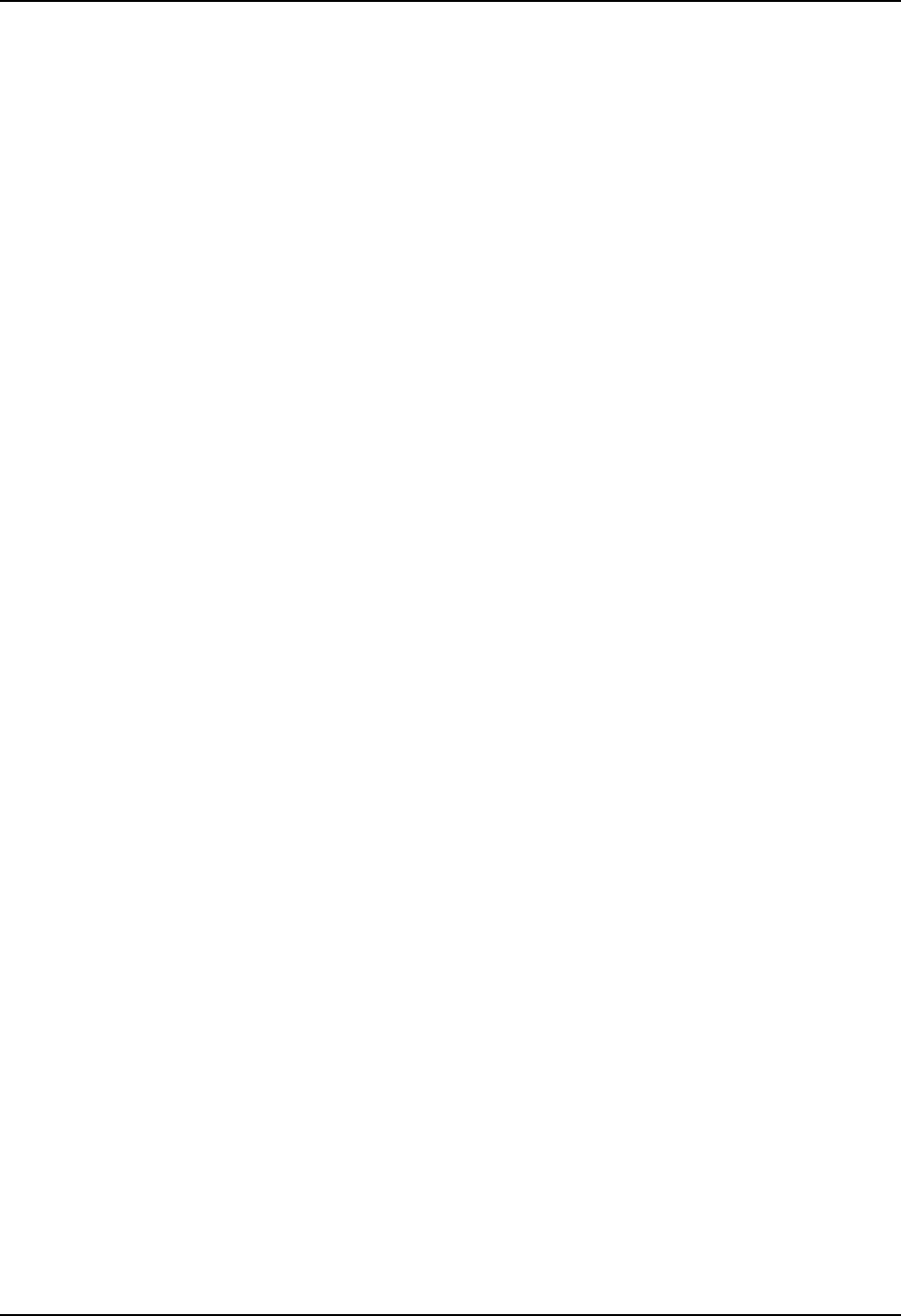
Monitoring and Operating the Controller
the lowest four digits of the selected Totalizer Scale Factor and has a range from 0 to
9999 x Totalizer Scale Factor.
Totalizer reset via Digital Input
Any of the Digital Inputs may be configured to reset the totalizer value.
4.14 Logic Gate Operation
Introduction
The Logic Gate function lets you configure up to five Dual-Input Logic Gates.
The following gates have two Digital input sources and one Digital output.
OR
NOR
AND
NAND
XOR
XNOR
The following comparator gates have two Analog input sources and one Digital output.
These comparator gates are used with Input B having a fixed hysteresis band of 0.1% of
the Input B span.
B<A
B>A
Gate configuration
Refer to Section 3.13 to make your configuration choices for the following function
prompts for each gate you want to configure:
GATE TYPE
INPUT A SOURCE
INPUT B SOURCE
OUTPUT USE
Gate Operation
Section 3.13 contains information defining how the different gates operate. In Digital
(Binary) Logic, there are only two states that can be present; “0” meaning OFF and “1” –
m
eaning ON.
Section 3.13 also lists the types of gates available along with their truth tables. These
tables indicate what happens to the output of each gate with regard to the state of the
inputs.
The rules and regulations regarding the use of the logic gates are listed in .
March 2012 UDC3500 Universal Digital Controller Product Manual 219
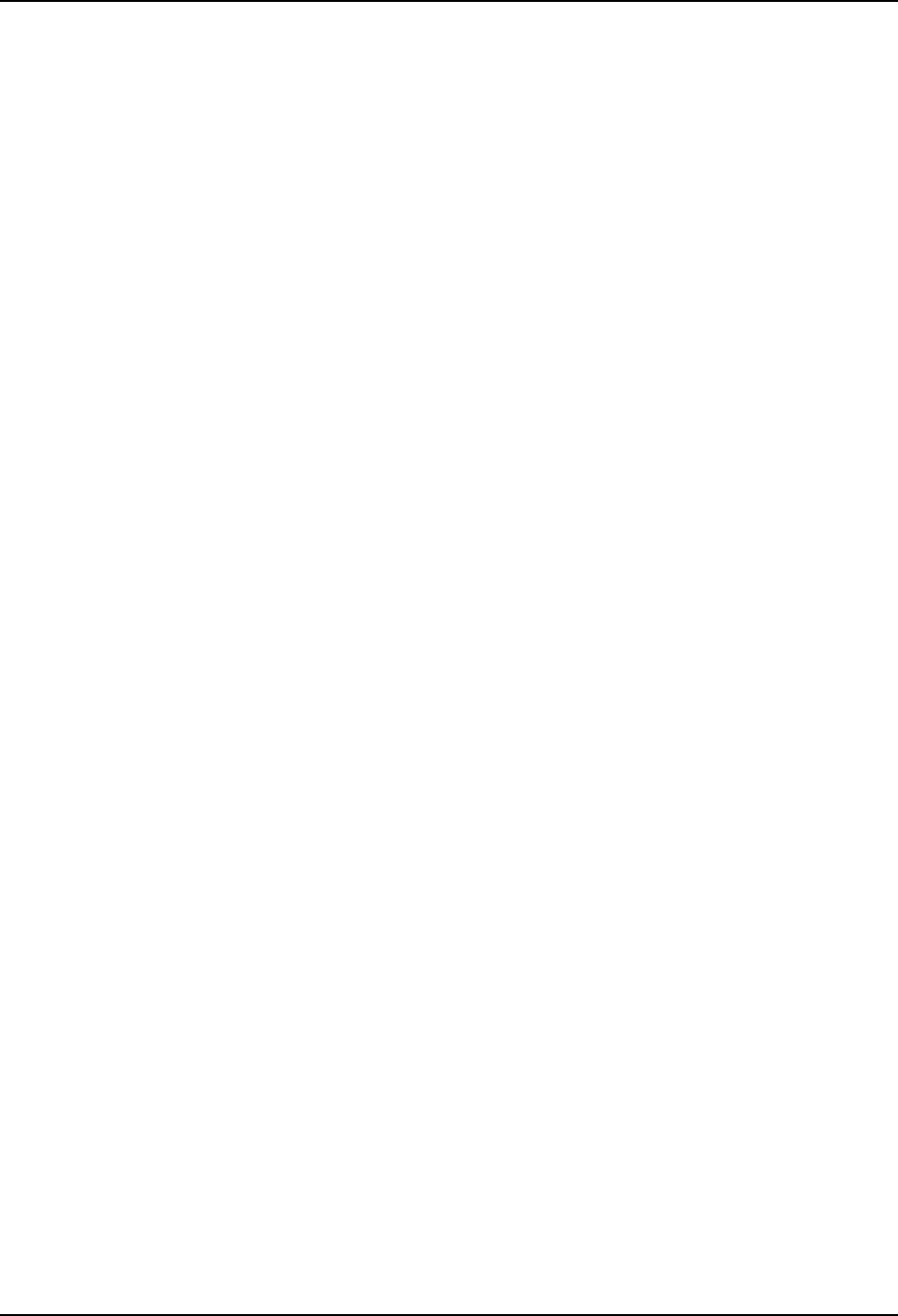
Monitoring and Operating the Controller
Table 4-18.
220 UDC3500 Universal Digital Controller Product Manual March 2012
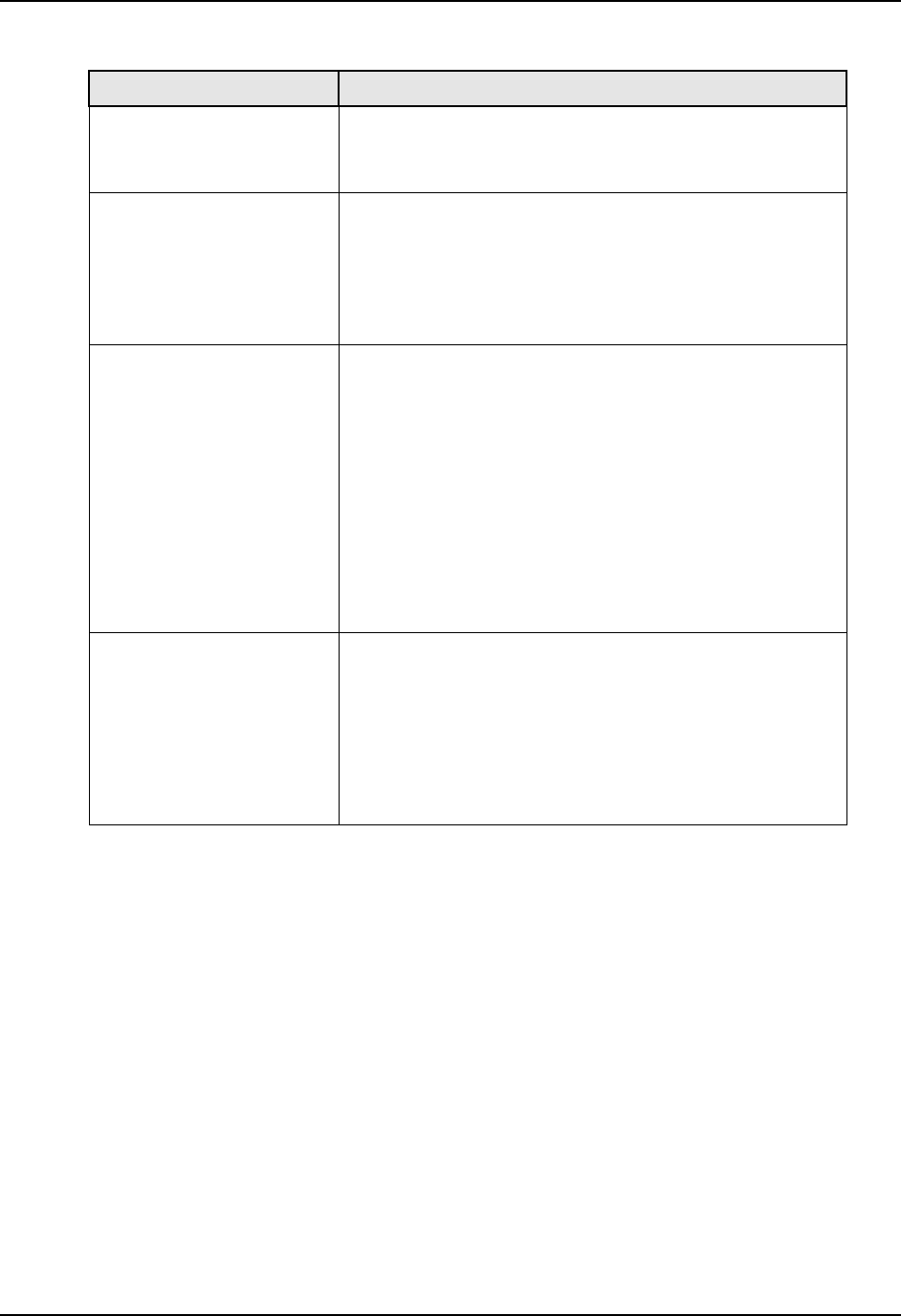
Monitoring and Operating the Controller
Table 4-18 Logic Gates Constraints and Dynamic Operation Status
Function Rules and Regulations
Alarms
Alarms take precedent over gate outputs. For example,
no gate output will occur if the Logic Gate Output is
directed to Relay 5 if the Alarm 1 is also configured.
Output Algorithms
Output algorithms that use Relay outputs take
precedence over gate outputs. For example, no gate
output will occur if the Logic Gate Output is directed to
Relay 1 when a conflicting Loop 1 output algorithm is also
configured (for example: Time Simplex, Time Duplex,
etc.).
Communications
Communications takes priority over gate output as
follows:
No Gate Output will occur if directed to Manual/Auto
and the Host computer places the unit (loop) into
Manual or Automatic mode.
No Gate Output will occur if directed to
Local/Remote and the Host computer selects either
Local or Remote setpoint.
Gate output will resume when the Host computer puts the
unit (loop) into the monitor state or the unit sheds from the
Host.
Mode or Setpoint
If a Logic Gate output is configured for Manual/Auto or
Local/Remote Setpoint, then pushing the
Man/Auto key or
the
SP Select key, respectively, will result in a key error
diagnostic display.
However, the
Man/Auto key is permitted during
communications when the Host computer has mode
control.
March 2012 UDC3500 Universal Digital Controller Product Manual 221
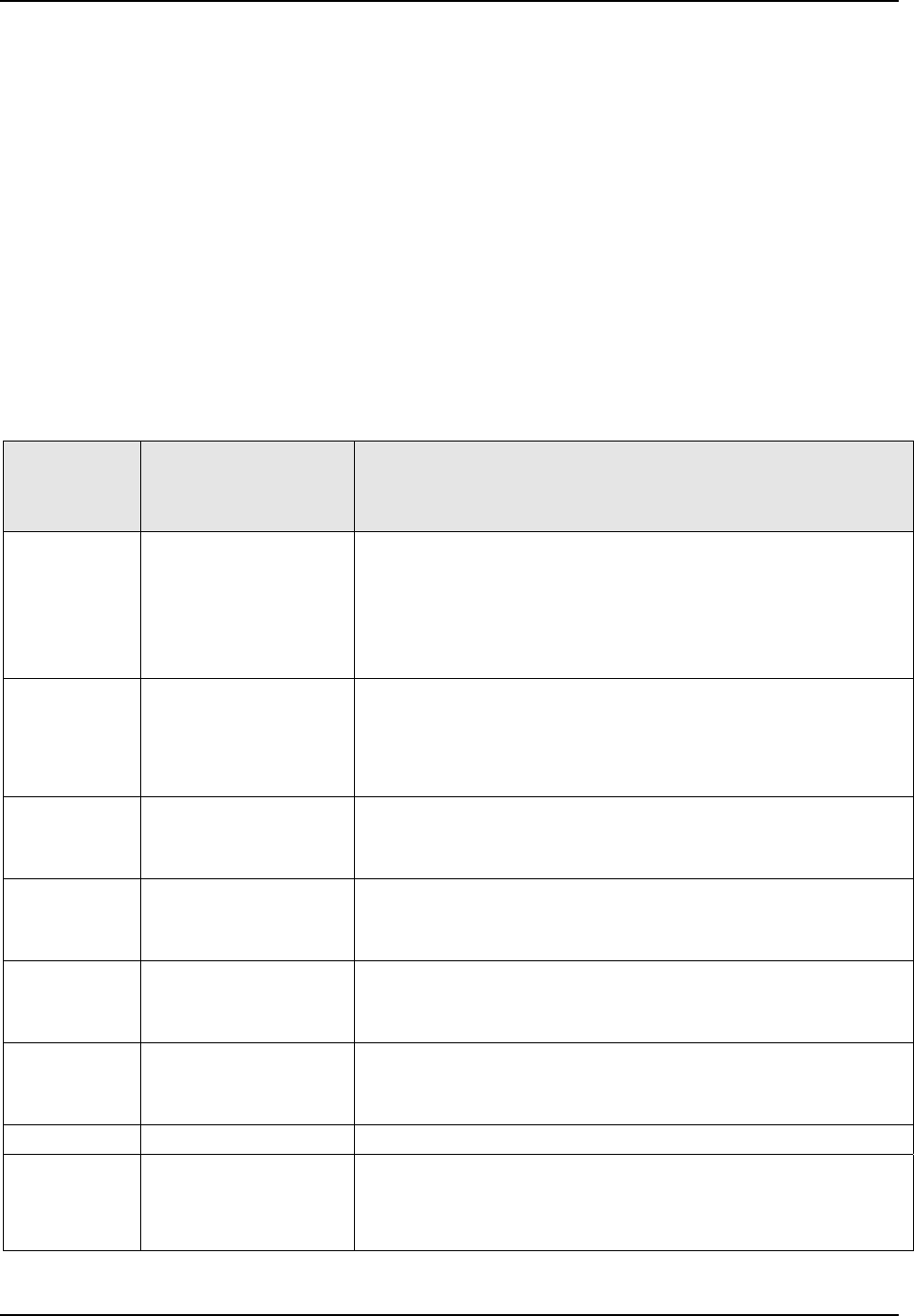
Monitoring and Operating the Controller
222 UDC3500 Universal Digital Controller Product Manual March 2012
4.15 Digital Input Option (Remote Switching)
Introduction
The Digital Input option detects the state of external contacts. On contact closure, the
controller will respond according to how each digital input is configured. If the controller
is configured for either Two Loop or Cascade control, then how the switches are
allocated between the two loops must be defined. See Section 3.22.
Action on closure
Table 4-19 lists the configuration prompt selections, the “Action on Closure,” and the
display indication for each selection available.
Table 4-19 Digital Input Option Action on Contact Closure
Digital Input
Selections
Display Indication Action on Contact Closure
Controller returns (toggles) to original state when contact
reopens unless otherwise noted
None DI 1 2 3 4 always off*
No Digital Input selection
* If a Digital Input is configured for some action, then its
associated Annunciator will always show its status; ON for
Active (switch closed) and OFF for inactive (switch open).
Annunciators for Digital Inputs configured as NONE will always
stay off whether the switch is closed or open.
TO MAN MAN blinks
Puts the controller into manual mode. When the contact opens,
the controller returns to its former mode unless the
Man/Auto
key was pressed while the digital input was active, in that case
the controller will stay in the manual mode when the contact
opens.
TO LSP SP annunciator blinks
Lower display shows
LSP 1
Puts the controller into Local Setpoint 1. When contact opens,
the controller returns to former operation, local or remote
setpoint.
TO 2SP SP annunciator blinks
Lower display shows
LSP 2
Puts the controller into Local Setpoint 2. When contact opens,
the controller returns to former operation, local or remote
setpoint.
TO 3SP SP annunciator blinks
Lower display shows
LSP 3
Puts the controller into Local Setpoint 3. When contact opens,
the controller returns to former operation, local or remote
setpoint.
TO 4SP SP annunciator blinks
Lower display shows
LSP 4
Puts the controller into Local Setpoint 4. When contact opens,
the controller returns to former operation, local or remote
setpoint.
TO DIR
Selects direct control action.
ToHOLD H blinks
Suspends setpoint program or setpoint ramp operation. Contact
open runs the ramp/program from the Hold point unless the
Ramp/Program was not previously started via the
Run/Hold key.
This selection applies to either loop.
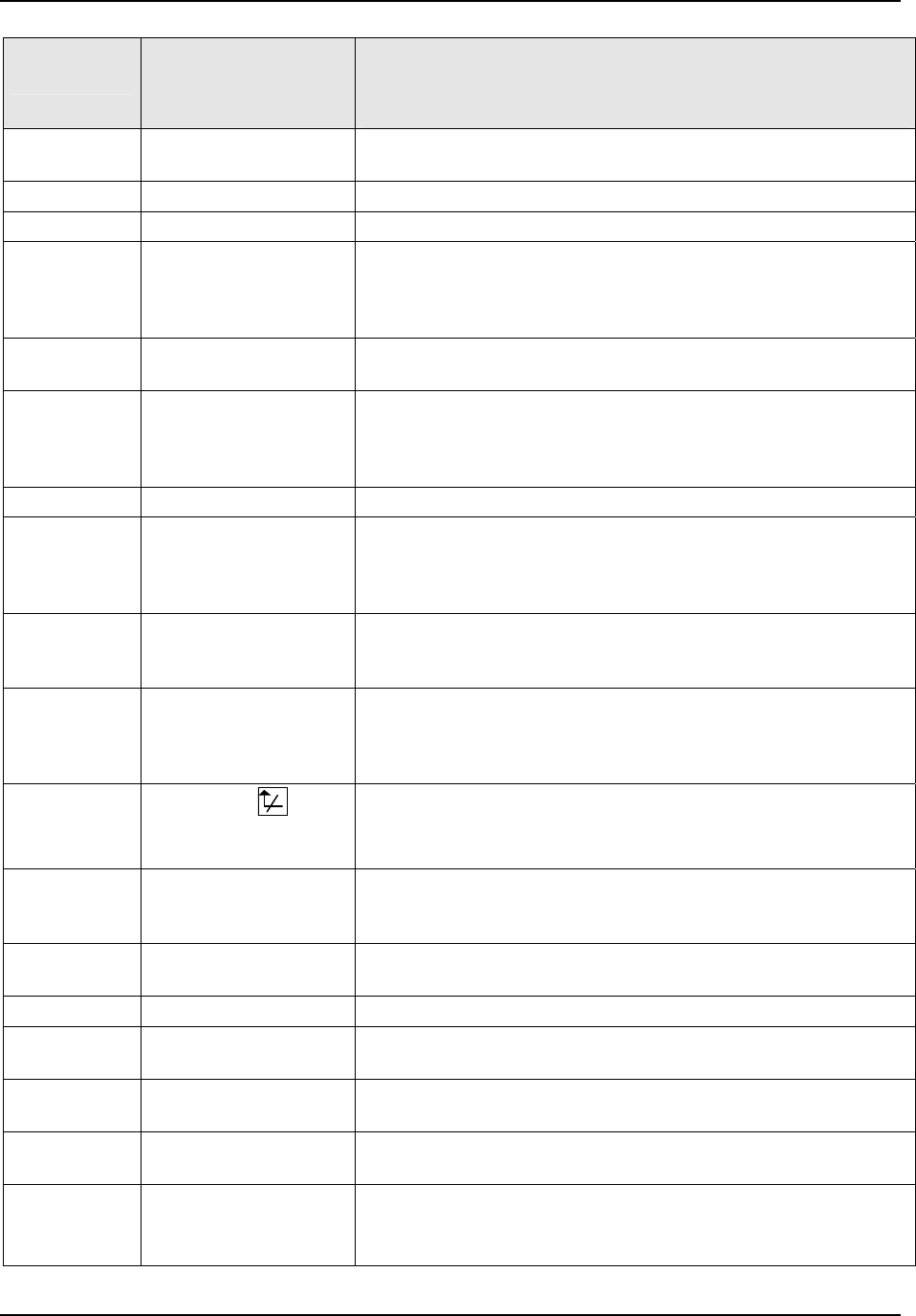
Monitoring and Operating the Controller
Digital Input
Selections
Display Indication Action on Contact Closure
Controller returns (toggles) to original state when contact
reopens unless otherwise noted
ToPID2 PIDSET 2 in lower
display
Selects PID set 2.
PV 2IN 2I (blinking)
Selects the PV to equal Input 2.
PV 3IN 3I (blinking)
Selects the PV to equal Input 3.
RERUN
Resets the Setpoint program back to the beginning of the first
segment in the program and leaves the program in the same
Run or Hold mode that it was in when the DI closed. Reopening
the contact has no effect.
TO RUN R in upper display
blinks
Starts a stopped SP Program. Reopening contact puts the
controller in Hold mode. This selection applies to either loop.
ToBEGIN
Resets the Setpoint Program back to the beginning of the first
segment in the program and places the program into the Hold
mode. Reopening the contact has no effect. This selection
applies to either loop.
STOP I
Disables PID Integral (I) action.
MAN FS MAN blinks
Unit goes to manual mode, output goes to the failsafe value.
This will cause a bump in the output when switching from
automatic to manual mode. The switch back from manual to
automatic mode is bumpless.
ToLOCK LOCKED on lower
display when a key is
pressed
Disables all keys.
ToAout
Output is forced to value set at control prompt “AUTO OUT”
when controller is in automatic mode. Reopening contact
returns the controller to the normal output. This selection is only
available on Loop 1.
TIMER
Timer clock (
) and
time appear in lower
display.
Starts timer (momentary operation). Reopening switch has no
effect.
AM STA
Causes switch to Auto Manual Station mode. Refer to Figure
4-2 in Section 4.16 for auto manual station information. This
selection is only available on Loop 1.
ToTUNE TUNE ON in lower
display
Starts the Accutune process. Opening the switch has no effect.
SPinit
Forces the SP to initialize at the current PV value.
TRACK1 O in upper display
blinks
Allows Output 1 to track Input 2.
TRACK2 O in upper display
blinks
Allows Output 2 to track Input 2.
ToOUT2 O in upper display
blinks
Allows Output 2 to override Output 1.
TO RSP SP annunciator blinks
Lower display shows
RSP
Puts the controller into Remote Setpoint. When contact opens,
the controller returns to former operation, local or remote
setpoint.
March 2012 UDC3500 Universal Digital Controller Product Manual 223
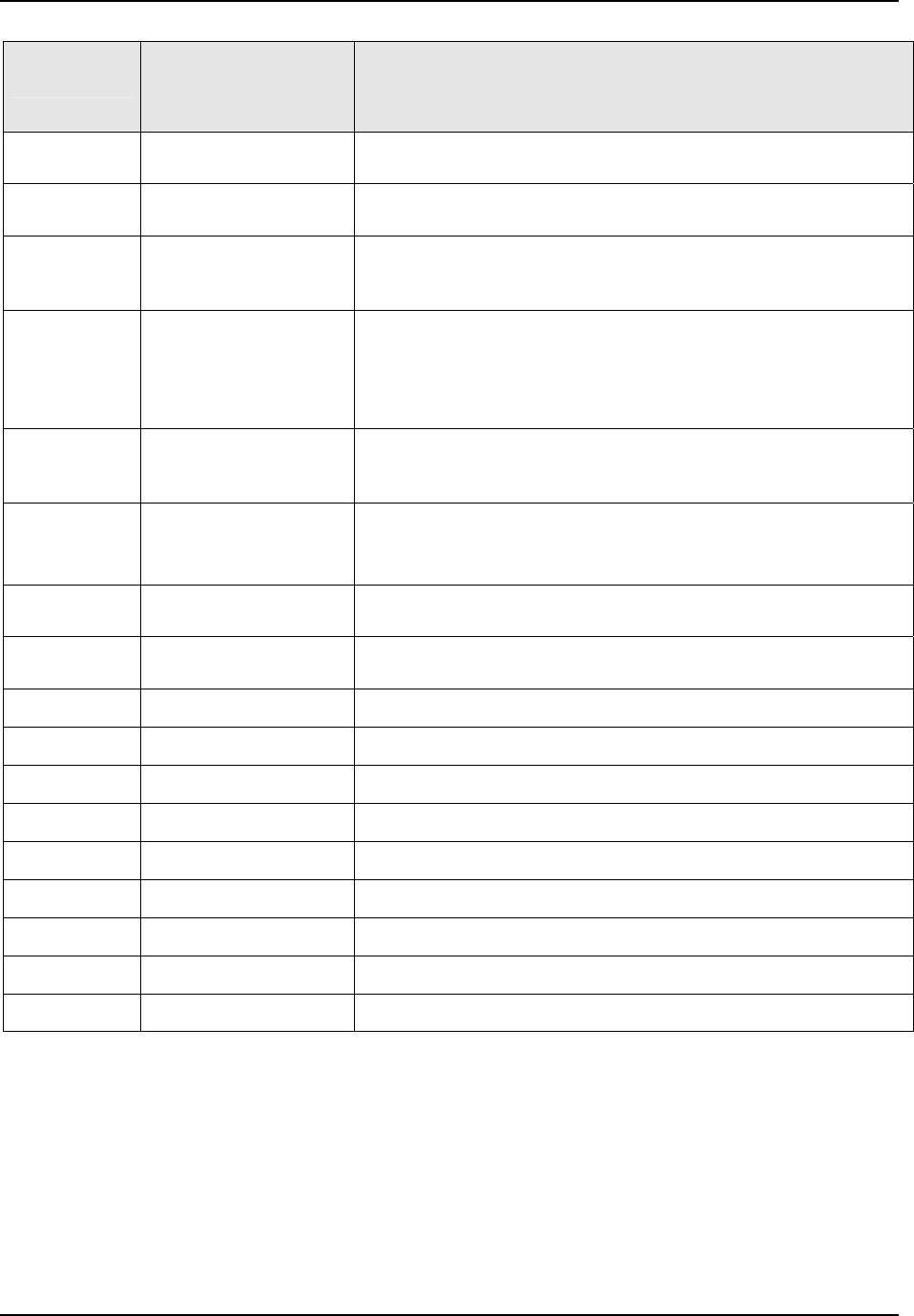
Monitoring and Operating the Controller
Digital Input
Selections
Display Indication Action on Contact Closure
Controller returns (toggles) to original state when contact
reopens unless otherwise noted
Changes the display to the loop not being displayed at time of
closure.
D L1/2
Allows Input 2 to override the internal reset value, providing
external reset feedback.
RST FB
ToPURGE MAN blinks and output
value shows in lower
display
Forces loop to manual mode with the output values set to the
Output High Limit configuration.
PURG AX
A Digital Input assigned to Loop 1 forces any Auxiliary Output
configured for OUTPUT to go to 100% (20 mA).
A Digital Input assigned to Loop 2 forces any Auxiliary Output
configured for OUT 2 to go to 100% (20 mA).
LoFIRE MAN blinks and output
value shows in lower
display
Forces loop to manual mode with the output set to the Output
Low Limit configuration.
Forces loop to manual mode. Reopening the contact has no
effect.
To return to automatic mode, press the
Man/Auto key.
MAN LAT
Resets the accumulated totalizer value to zero. Reopening the
contact has no effect.
RES TOT
Closing the switch freezes the PV at its current value. When
switch opens, the PV resumes normal operation.
PV HOLD
Rese
t Healthwatch Timer 1 to zero.
REST T1
Rese
t Healthwatch Timer 2 to zero.
REST T2
Rese
t Healthwatch Timer 3 to zero.
REST T3
Rese
t all Healthwatch Timers to zero.
R ALL T
Reset Healthwatch Counter 1 to zero.
REST C1
Reset Healthwatch Counter 2 to zero.
REST C2
Reset Healthwatch Counter 3 to zero.
REST C3
Reset all Healthwatch Counters to zero.
R ALL C
Reset all Healthwatch Timers and Counters to zero.
R ALLTC
224 UDC3500 Universal Digital Controller Product Manual March 2012
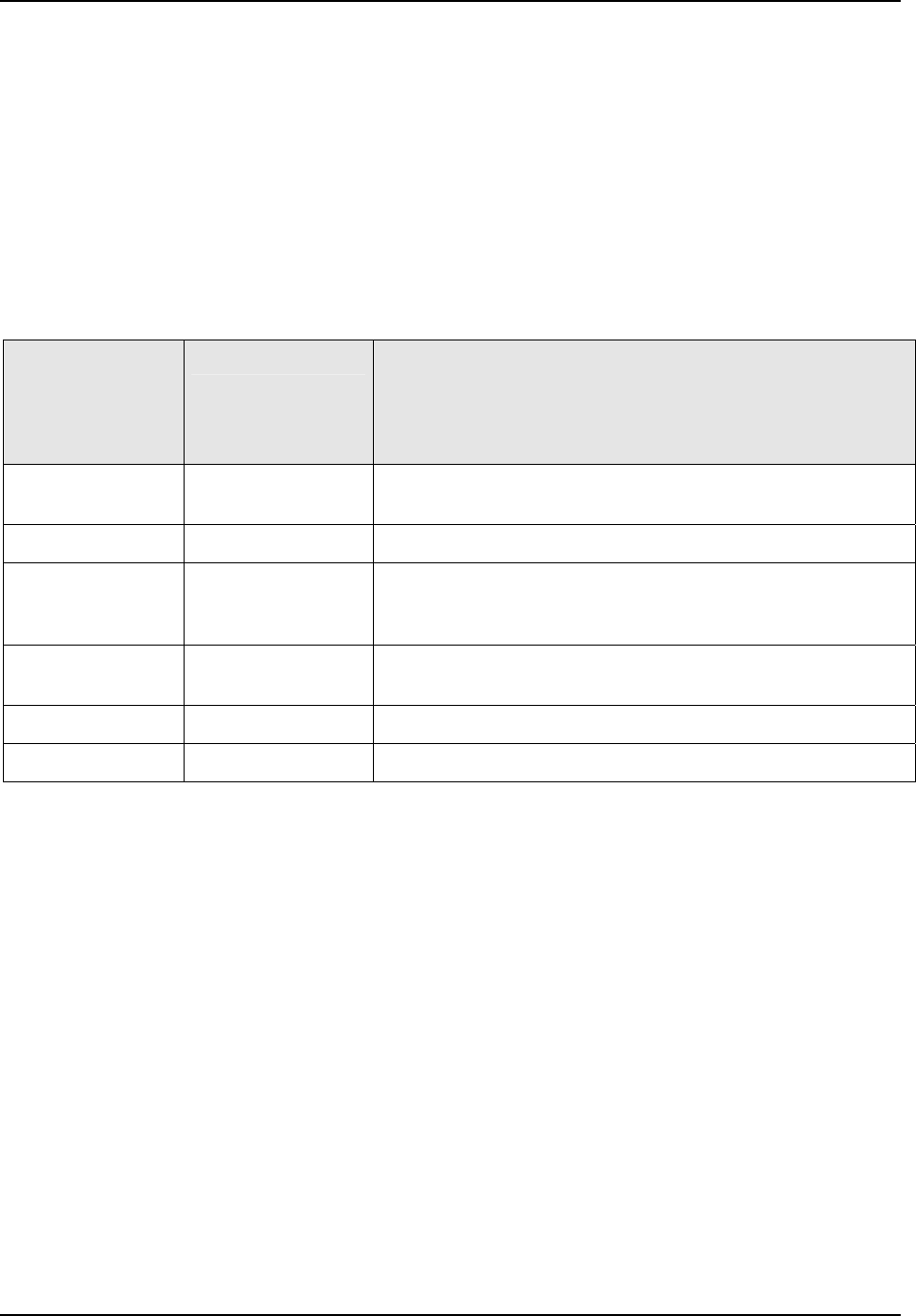
Monitoring and Operating the Controller
Keyboard Operation
Front panel keys have no effect on the digital input action in the closed state.
Digital Inputs 1 and 2 combination selections
The Digital Input combination selections listed in Table 4-19 can be used in combination
with the Digital Inputs 1 and 2 listed in Table 4-20.
If the controller is configured for either Two Loop or Cascade control, then how the
switches are allocated between the two loops must be defined. See Section 3.22.
Table 4-20 Digital Input Combinations “DIG IN1” or “DIG IN2”
Display Indication Action on Contact Closure
Controller returns (toggles) to original state when contact
reopens unless otherwise noted
Selections used
in Combination
with
“DIG IN1” or
“DIG IN2”
+PID2 PIDSET 2 in lower
display
Selects PID set 2.
Puts the controller into direct controller action.
+ToDIR
+ToSP2 2SP in lower display
with the active SP
indicator blinking
Selects the second local setpoint.
+DISAT T indicator is no
longer lit
Disables Adaptive tune.
S
elects the local setpoint.
+ToSP1
+RUN R indicator blinks
Starts or restarts RUN of SP Ramp/Program.
Digital Inputs 1 and 2 combination operation
There are five possible situations that can occur when working with digital input
combinations. Table 4-21 lists these situations and the resulting action when the switch is
active. In the table:
Enabled means that the param
eter is configured and the action will occur when
the digital input is active.
Action Disabled means that the digital input or digital combination parameter is
configured but the action cannot occur when the digital input is active because the
selected parameter is disabled.
March 2012 UDC3500 Universal Digital Controller Product Manual 225
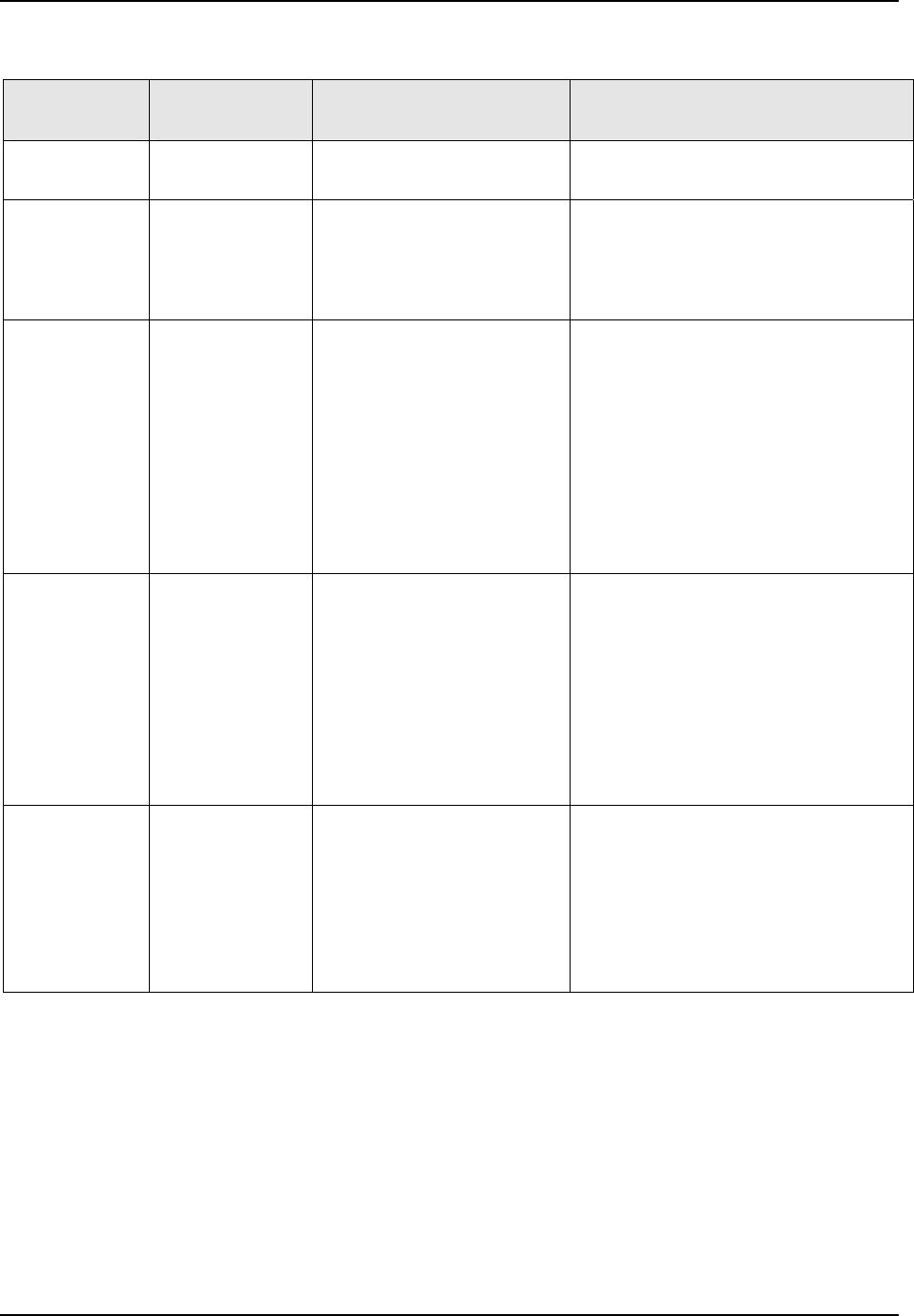
Monitoring and Operating the Controller
Table 4-21 Digital Inputs 1 and 2 Combination
DIG 1 COMB or
DIG 2 COMB
Action Example DIG IN1 or
DIG IN2
NONE Any Selection
No action will occur when
the digital input is active.
ENABLED DISABLED
The DIG IN condition will
occur when the Digital Input
is active.
DIG IN1 = TO MAN
DIG1 COM = DISABLE
Loop 1 will switch to MANUAL when
digital input 1 is active.
ENABLED
No action will occur when
the digital input is active.
DIG IN1 = ToPID2
DIG1 COM = +ToSP2
PID SETS = 1 ONLY
LSP’S = TWO
As PID SETS is set to 1 ONLY, the
DIG IN1 configuration cannot be
accomplished and is thus Action
Disabled. Therefore, when digital
input 1 is active, no action will occur
even though DIG1 COM is enabled.
ACTION
DISABLED
ENABLED ACTION
DISABLED
Action is indeterminate
when the digital input is
active because of
configuration errors.
DIG IN1 = ToPID2
DIG1 COM = +ToSP2
PID SETS = 2KEYBD
LSP’S =1 ONLY
As there is only one LSP configured,
the DIG1 COM configuration cannot
be accomplished and is thus Action
Disabled. Therefore, the action will be
indeterminate when DIG IN1 is active.
ENABLED ENABLED
Both DIG IN and DIG COM
action will occur.
DIG IN1 = ToPID2
DIG1 COM = +ToSP2
PID SETS = 2KEYBD
LSP’S =TWO
Instrument is correctly configured for
both actions and thus will perform as
desired when DIG IN1 is active.
226 UDC3500 Universal Digital Controller Product Manual March 2012
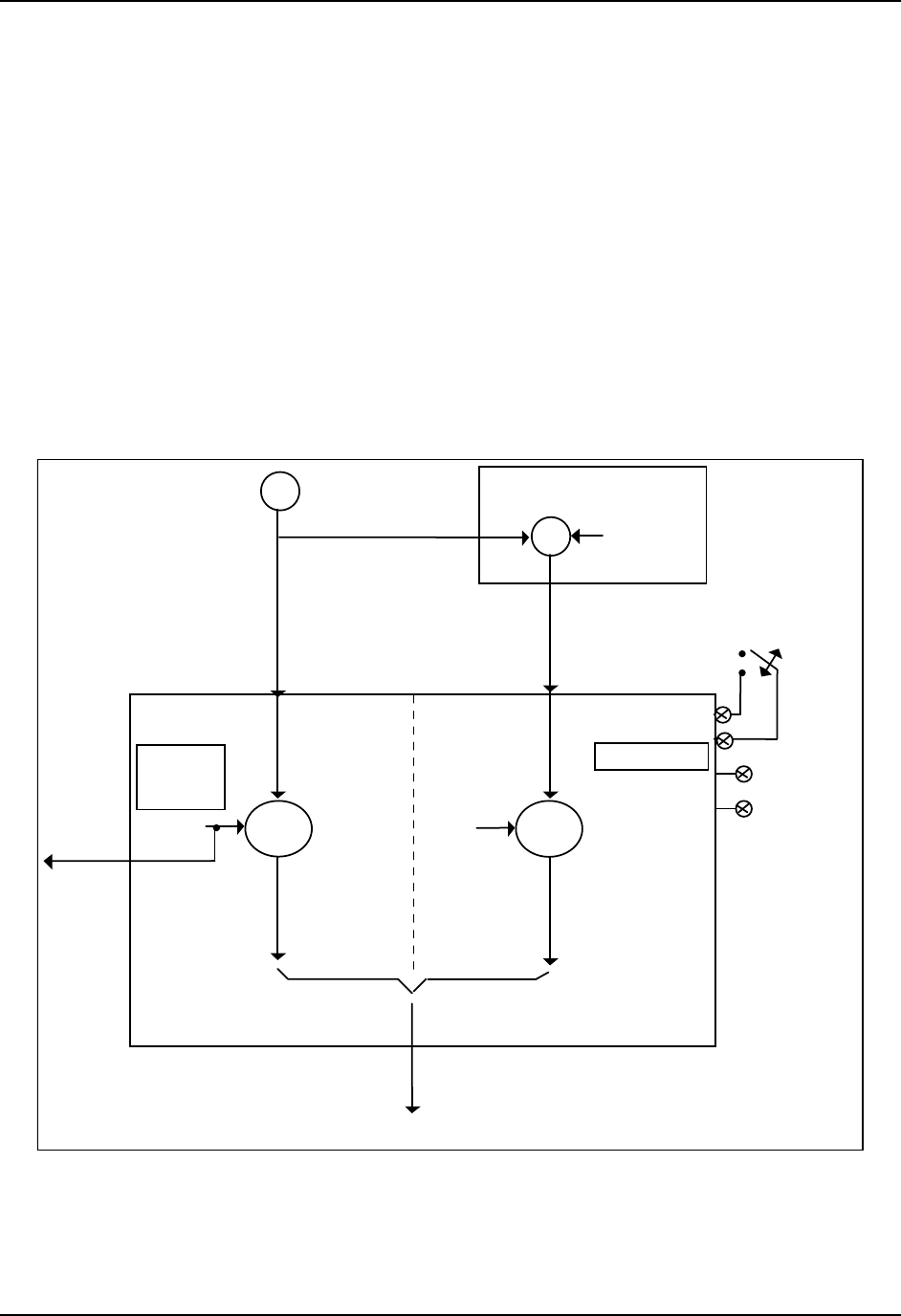
Monitoring and Operating the Controller
4.16 Auto/Manual Station
Introduction
When you select “AM STA” (auto manual station) for one of the Digital Inputs, contact
closure on the selected Digital Input causes the controller to switch to Auto/Manual
Station mode. See Section 3.22. You may have an Auto/Manual station on either loop or
on both loops.
Function
As shown in Figure 4-2, State 2 is the “A/M Station mode” where the programmable
logic controller (PLC) output is sent through the Auto/Manual Station. You can switch to
manual and change the output at the controller. (It uses PID set 2.)
State 1 is the “Backup PID mode” which is triggered by opening the digital input. (It uses
PID set 1.)
T/C
T/C
PLC
PV
SP
IN1
IN2
PID A
OUT1 OUT1
Output 1
4-20 mA
To valve
A
ux
Output
SP1 =
new
selection
DI #1 = "AM STA"
(new
selection)
State 1:
DI #1: Open
BACKUP
PID
CONTROL
State 2:
DI #1: Closed
A
/M STATION
LSP = SP1
LSP = 2SP
– Direct action
– PD + MR
– SP = 2SP
– PV = IN2
– PIDSET2
PIDSET1
P =
I =
D =
same
as
PLC
Control output
4-20 mA
PVPV
A
larm
Output on
Manual
Mode
PD+MR
}
OPEN
CLOSED
Figure 4-2 Auto/Manual Station for Loop 1 (Loop 2 similar)
March 2012 UDC3500 Universal Digital Controller Product Manual 227
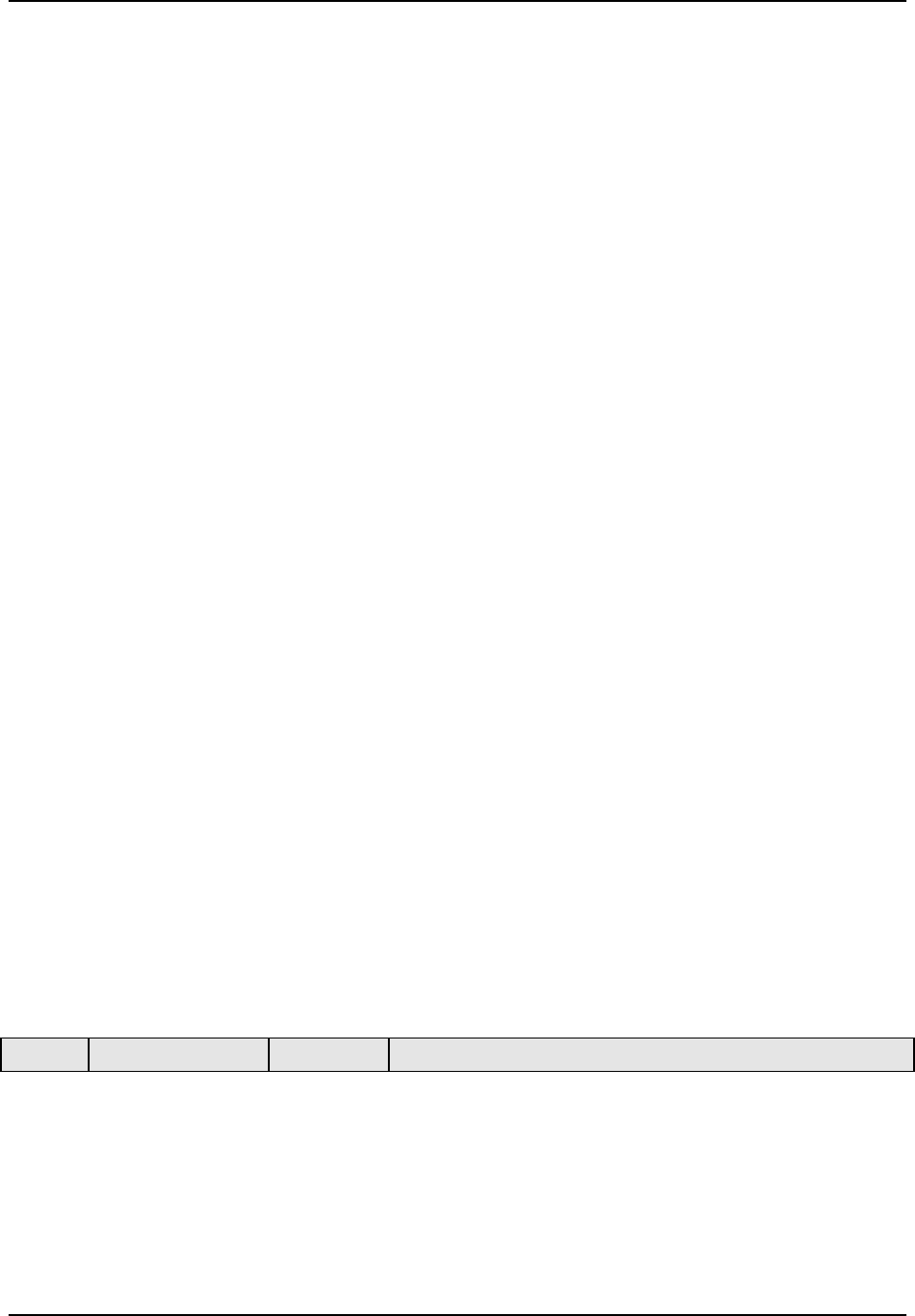
Monitoring and Operating the Controller
Description
The “AM STA” selection of digital input creates a repeater station when the digital input
is closed. This is accomplished by a multi-selection from the digital input menu.
“ACTION” is forced as “DIRECT”.
“CONT ALG” is forced as “PD+MR”.
Active setpoint is forced to 2SP.
The Loop 1 PV is switched to “PV 2IN” for Loop 1.
The Loop 2 PV is switched to “PV 3IN” for Loop 2.
The tuning parameters used are the second set of parameters.
When the switch is open the unit becomes a normal controller with “CONT ALG” of
“PID A”, using tuning parameters set 1, SP, PV as IN1 and “DIRECT” or “REVERSE”
as selected by customer configuration.
Input 1 is typically the PV of some upper controller and Input 2 is typically that
controller’s output. If the upper control fails, the upper device or some watchdog opens
the digital input switch and UDC3500 back-up PID A control is active.
When the upper control reactivates, the digital input switch is closed and the
Auto/Manual Station becomes a repeater station and allows the upper control output
signal to pass through.
Configuration
There are some things to consider when configuring the controller.
The PV range stays as the IN1 range, even while IN2 is the PV when the switch is
closed; therefore:
The IN2 HI must be less than or equal to the IN1 HI.
(Suggest: IN2 HI = 100.0)
The IN2 LO must be greater than or equal to the IN1 LO.
(Suggest: IN2 LO = 0.0)
The TUNING GAIN2 must be equal to (IN1 HI – IN1 LO) / (IN2 HI – IN2 LO).
See Table 4-22 for Configuration Procedure.
Table 4-22 Auto/Manual Station Mode Configuration Procedure
Operation Press Result Step
Select Algorithm
Set-up Group
Setup
Until you see:
Upper Display = SET
Lower Display = ALGORTHM
1
Select Control
Algorithm
Func
Loop 1/2
Until you see:
Upper Display = (available selections)
Lower Display = CONT ALG
2
228 UDC3500 Universal Digital Controller Product Manual March 2012
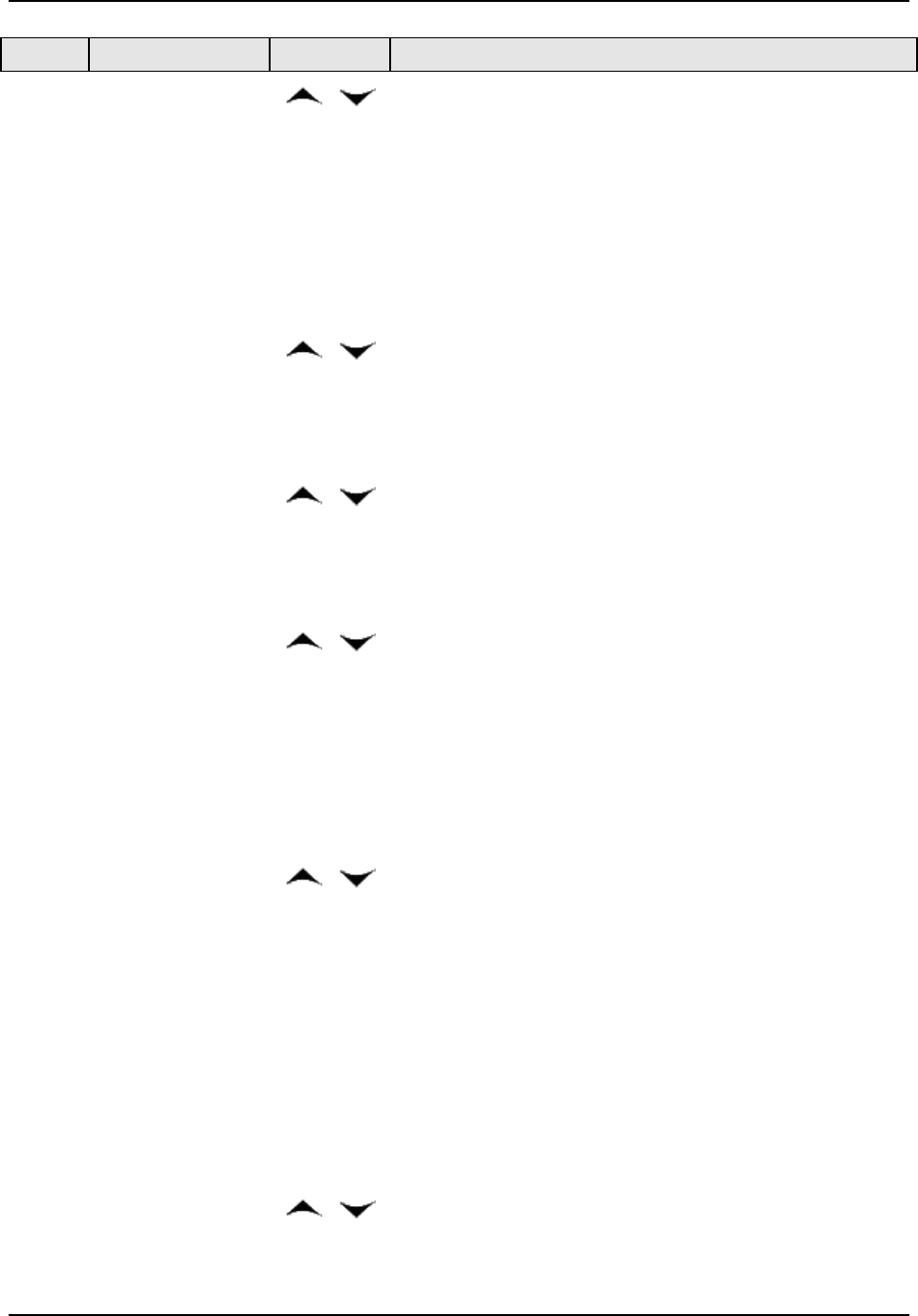
Monitoring and Operating the Controller
March 2012 UDC3500 Universal Digital Controller Product Manual 229
Step Operation Press Result
3
Select PD +
Manual Reset
Function
or
To select
PD+MR— PD + Manual Reset
4
Select Control
Set-up Group
Setup
Until you see:
Upper Display = SET
Lower Display = CONTROL
5
Select PID SETS
Func
Loop 1/2
Until you see:
Upper Display = (available selections)
Lower Display = PID SETS
6
Select PID SETS
Function
or
To select
2KEYBD—2 sets, keyboard selectable
7
Select LSP’S
Func
Loop 1/2
Until you see:
Upper Display = (available selections)
Lower Display = LSP’S
8
Select LSP’S
Function
or
To select
TWO—Two LSP’s
9
Select SP TRACK
Func
Loop 1/2
Until you see:
Upper Display = (available selections)
Lower Display = SP TRACK
10
Select SP TRACK
Function
or
To select
NONE—No SP Tracking
11
Select Tuning
Set-up Group
Setup
Until you see:
Upper Display = SET
Lower Display = TUNING
12
Select Manual
Reset Value
Func
Loop 1/2
Until you see:
Upper Display = (available selections)
Lower Display = MAN RSET
13
Configure Manual
Reset Value
or
To configure:
0— Manual Reset Value
A Manual Reset of 0 is for no output bias and requires that
LSP2 = 0 % of the Setpoint Range. If bias is required, set
the Manual Reset value to equal the desired output bias
value.
14
Select Algorithm
Set-up Group
Setup
Until you see:
Upper Display = SET
Lower Display = ALGORTHM
15
Select Control
Algorithm
Func
Loop 1/2
Until you see:
Upper Display = (available selections)
Lower Display = CONT ALG
16
Select PID A
or
To select:
PID A— PID A
This is defining the back-up control algorithm.
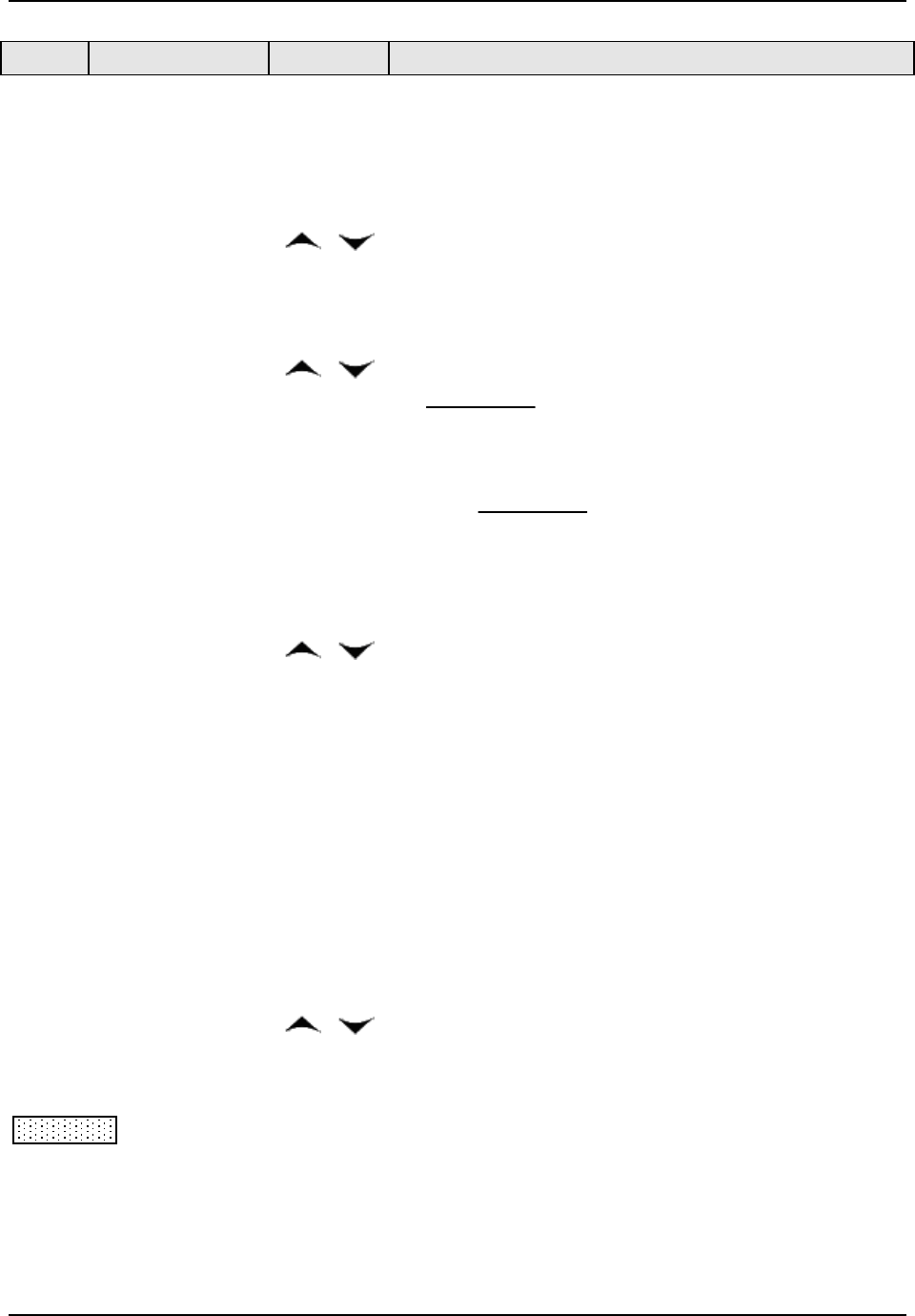
Monitoring and Operating the Controller
230 UDC3500 Universal Digital Controller Product Manual March 2012
Step Operation Press Result
17
Select Tuning
Set-up Group
Setup
Until you see:
Upper Display = SET
Lower Display = TUNING
18
Configure PIDSET
1 Values
Func
Loop 1/2
and
or
Configure the PIDSET 1 tuning parameters as needed by
the application.
19
Select Gain 2
Value
Func
Loop 1/2
Until you see:
Upper Display = (available selections)
Lower Display = GAIN2
20
Configure Gain 2
Value
or
Set the Gain 2 equal to:
Input 1 Span
Input 2 Span
If “PB” is selected under the Control Set Up group function
prompt “PBorGAIN”, then set the PROP BD2 to
100 x
Input 2 Span
Input 1 Span
21
Select Rate 2 Min
Value
Func
Loop 1/2
Until you see:
Upper Display = (available selections)
Lower Display = RATE2MIN
22
Configure Rate 2
Min Value
or
To configure:
0.00
23
Select Options
Set-up Group
Setup
Until you see:
Upper Display = SET
Lower Display = OPTIONS
24
Select a Digital
Input
Func
Loop 1/2
Until you see:
Upper Display = (available selections)
Lower Display = DIG IN1 or DIG IN2 or DIG IN3 or DIG IN4
This selection determines which Digital Input will be used
for Auto-Manual Station operation.
25
Select which loop
the Digital Input
acts on
Dion LP2
When using A/M on Loop 1, this selection is not necessary.
When using A/M on Loop 2, configure this selection for
whichever Digital Input you selected in the previous step.
26
Select Auto-
Manual Station
Function
or
To select:
AM STA— Auto-Manual Station
CAUTION
DO NOT SELECT
In the CONTROL set up list, do not select SP TRACK as PV or RSP.
In the SP RAMP set up list, do not select SP RATE as ENABLE.
In the ALGORTHM set up list, do not select CONT ALG as PID B, ON-OFF, or 3PSTEP.
In the Display menu when PIDSET # is displayed, DO NOT change the selection.
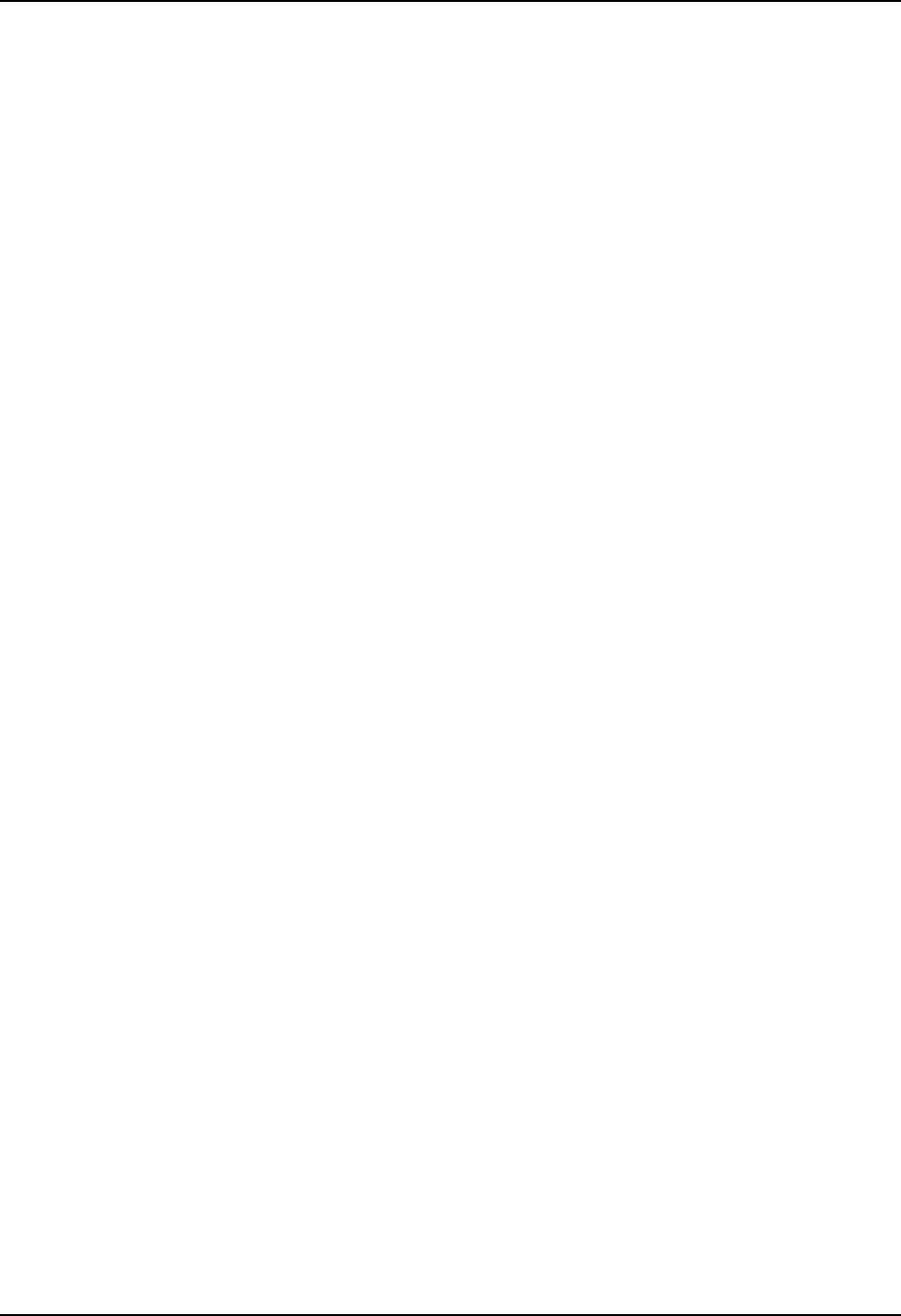
Monitoring and Operating the Controller
Operation
Operate the Auto/Manual Station as follows:
Set the Local Setpoint 2 to 0 % of the Input 2 range.
These features work with the Auto/Manual Station.
In the SP RAMP set up list, SP PROG (acts on SP1 for backup operation).
In the SP RAMP set up list, SP RAMP (acts on SP1 for backup operation).
In the CONTROL set up list, ACTION as DIRECT or REVERSE for the backup
PID A operation.
The PD+MR action is forced to be DIRECT as required for the pass through of
the output signal.
4.17 Two Loops of Control
Introduction
As an option, this instrument can operate using two independent loops of control or
internal Cascade Control.
Two Independent Loops
See Functional Overview Block Diagrams for Loop 1 and Loop 2 (Figure 4-3) for
selections based on these diagrams.
The following rules apply for two independent loops:
Control and Alarm Outputs are allocated per Table 2-6 and Table 2-7.
Current output on Loop 2 requires that either Second Current Output or Third
Current Output be installed.
Loop 2 relay output is always dedicated to relay outputs 3 and 4.
No Three Position Step output on Loop 2.
March 2012 UDC3500 Universal Digital Controller Product Manual 231
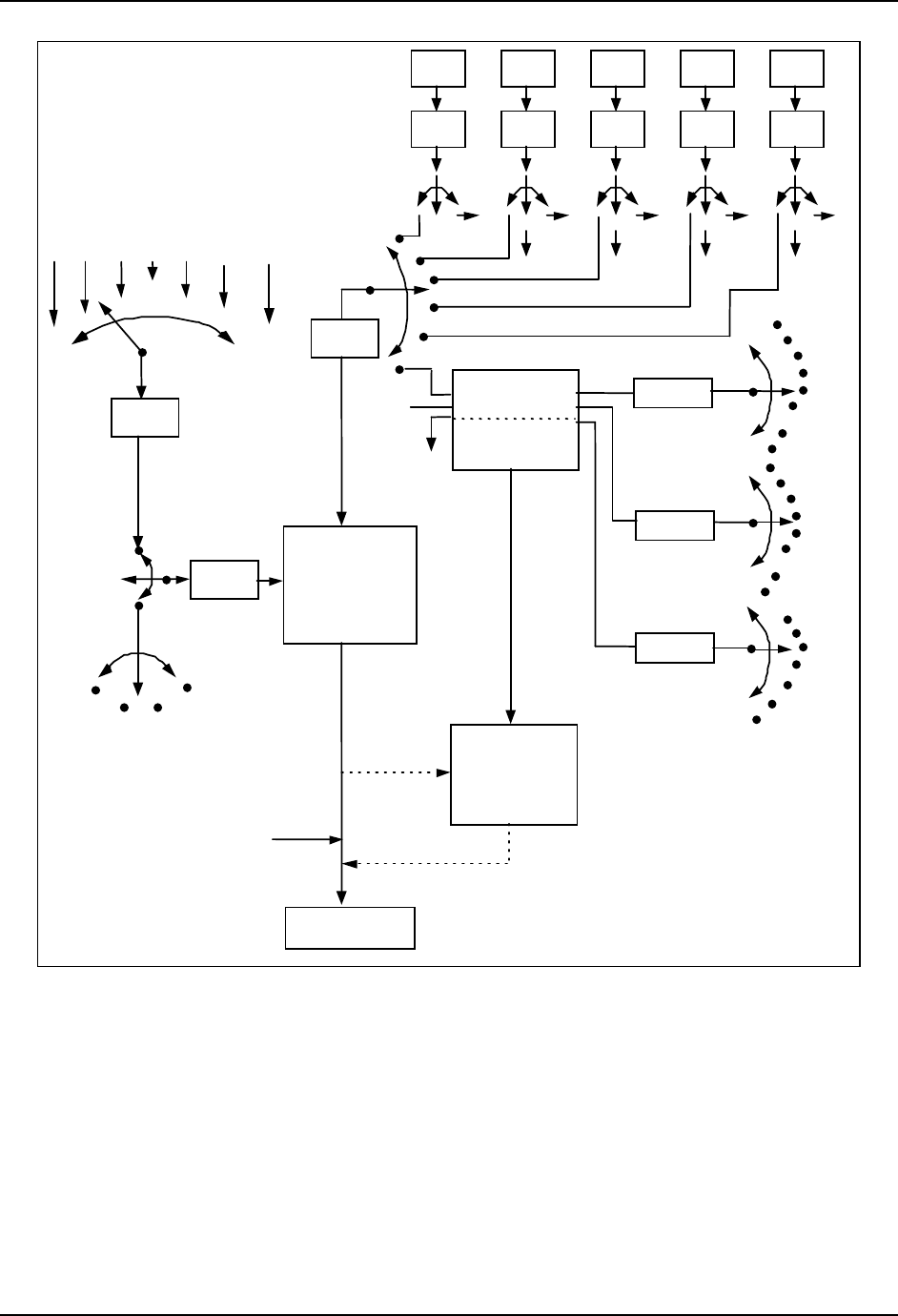
Monitoring and Operating the Controller
IN 1
Ratio
Bias
•
•
•
IN 2
Ratio
Bias
•
•
•
IN 3
Ratio
Bias
•
•
•
IN 4
Ratio
Bias
•
•
•
IN 5
Ratio
Bias
•
•
•
1 2 3 4
5
PV
Source
IN 2
In Alg 2
IN 3
In Alg 1
IN 4
RSP
Source
1
2
3
4
5
INPUT A
INPUT B
INPUT C
INP UT
ALGORITHM 1/2
FEEDFORWARD
INP UT A ONLY
To RS P
SP
Source
SP
PV
Remote SP
Lo cal SP
SP 1
SP 2
SP 3
To RS P
•
•
•
•
To RS P To RS P To RS P
To RS P
PID
CONTROL
ALGORITHM
Loop 2
FEEDFORWARD
SUMMER OR
MULTIPLIER
OUTPUT
Output
without
Feedforward or
Manual Mode
To Final
Control
Element
Other
Alg
None
1
2
3
4
5
Other
Alg
Output 1
Output 2
1
2
3
4
5
Other
Alg
Output 1
Output 2
OUT 2
SP 4
IN 1
IN 5
Figure 4-3 Functional Overview Block Diagram of a Single Loop (Loop #1) or Dual
Loop Controller (Loop #1 and Loop #2)
Internal Cascade Control
See Functional Overview Block Diagram Figure 4-3 for selections based on these
diagrams.
The following rules apply for internal Cascade control:
Loop 2 is the primary (external) loop.
Loop 1 is the secondary (internal or slave) loop.
Loop 1 Remote Setpoint is fixed as the Loop 2 output.
232 UDC3500 Universal Digital Controller Product Manual March 2012
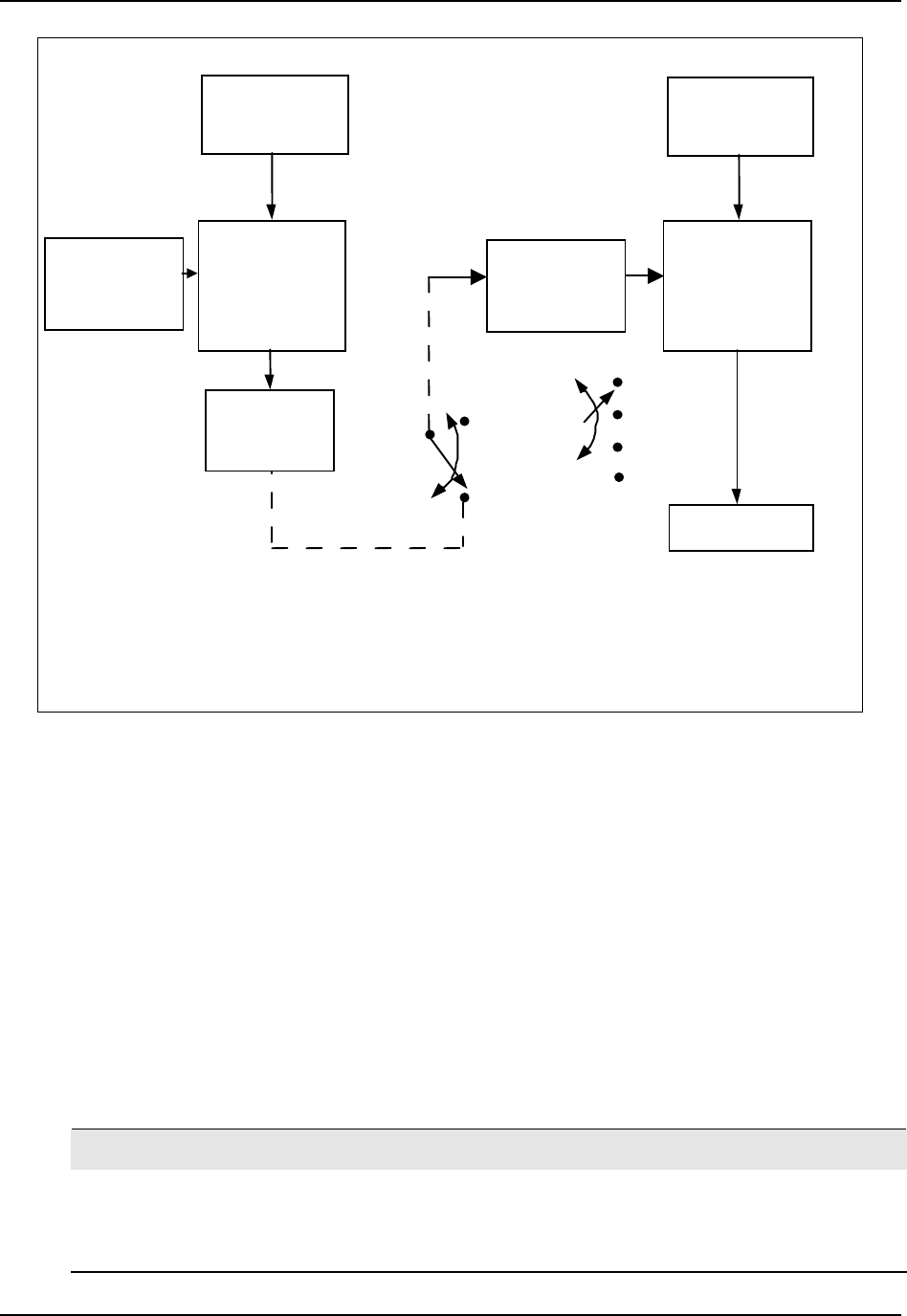
Monitoring and Operating the Controller
PID
CONTROL
ALGORITHM
OUTPUT
To Final
Control
Element
PV SOURCE
See Block
Diagram
LOOP 2 – PRIMARY LOOP
LOOP 1 – SECONDARY LOOP
PID
CONTROL
ALGORITHM
SETPOINT
SOURCE
INTE RN AL
OUTPUT
SIGNAL
SETPOINT
SOURCE
Block Diagram
INTERNAL CASCADE RULES
• Loop #2 is the primary (external) loop.
• Loop #1 is the secondary (internal or slave) loop.
• Loop #1 Remote Setpoint is fixed as loop #2 output.
Remote Setpoint
Loc al Setpoint
SP
2SP
3SP
4SP
See Loop
PV SOURCE
See Block
Diagram
Figure 4-4 Functional Overview Block Diagram of Internal Cascade Controller
Output Override
This instrument allows override of the Loop 1 output with the Loop 2 output based upon
which is larger or smaller. This can be accomplished by configuration (See Section 3.11)
or by Digital Input actuation (see Section 3.22).
The following rules apply for high/low override:
Only one physical output is required when override is enabled. It is the output
from Loop 1 because Loop 2’s internal output is routed through the selector.
Loop 2 output can also be available at all times if desired.
In Manual mode, the Output may be overridden.
Does not apply for Three Position Step Control.
OTI on bottom display shows value of the internal Loop 1 output before any
override.
ATTENTION
The output of the unselected loop tracks the selected loop to within 5 % when in Auto mode to
eliminate windup. This tracking is done in the direction opposite to the Override Select
configuration; i.e., for High Select, the unselected output tracks within 5 % of the lower output,
and vice versa for Low Select.
March 2012 UDC3500 Universal Digital Controller Product Manual 233
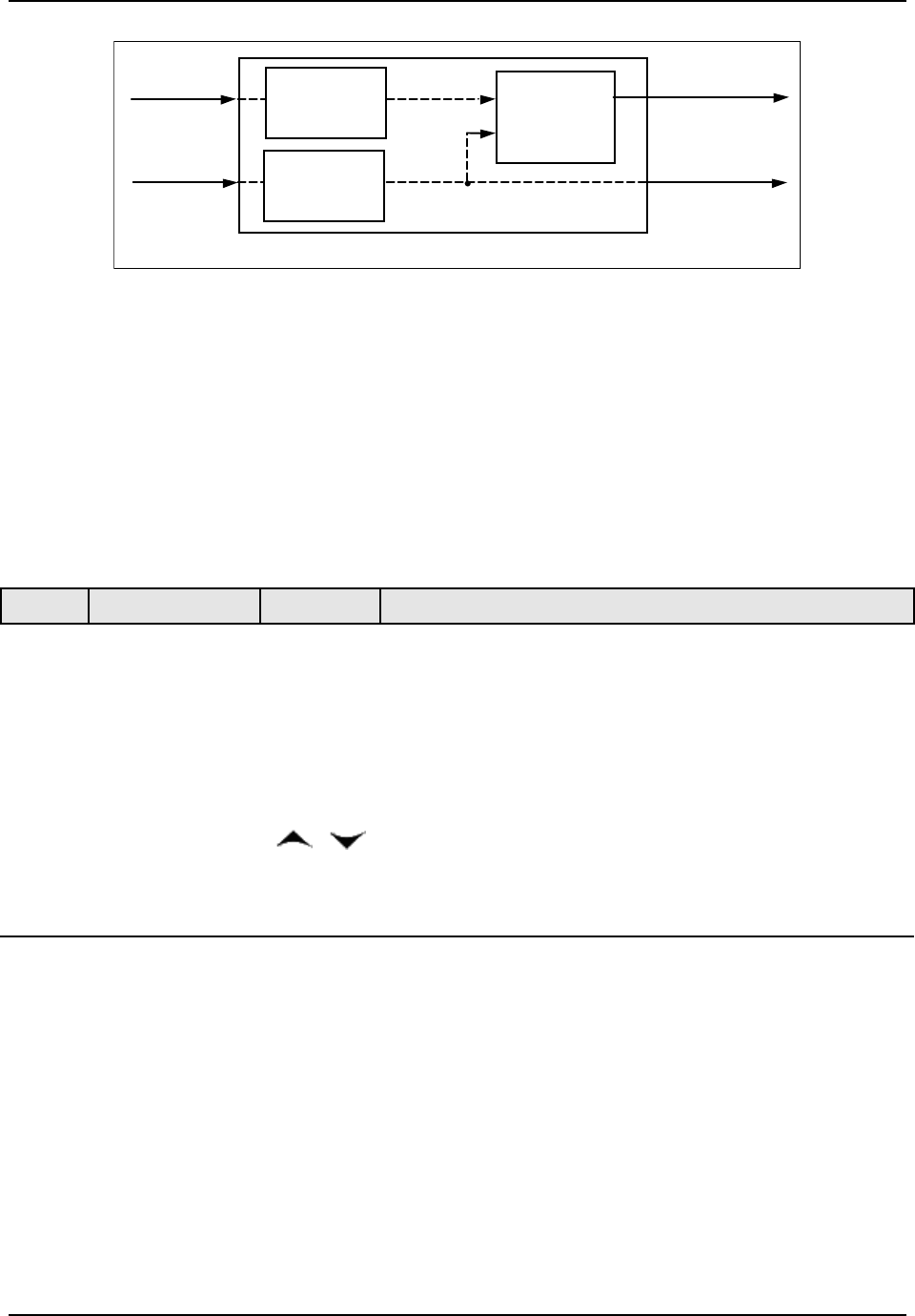
Monitoring and Operating the Controller
HI/LO
OVERRIDE
SELECTOR
PID
LOOP 1
PID
LOOP 2
PV 1
PV 2
OUTPUT 1
OUTPUT 2
OUTPUT 1 TERMINALS
OUTPUT 2 TERMINALS
IF DESIRED
Figure 4-5 Hi/Lo Override Selector
4.18 Configuring Two Loops of Control
Introduction
This instrument can operate using two independent loops of control or internal Cascade
control.
Table 4-23 Procedure for selecting Two Loop Algorithm
Operation Press Result Step
Select Algorithm
Set-up Group
Lower
Display
Until you see:
Upper Display =SET
Lower Display = ALGORTHM
1
Select
the PID
Loops
Func
Loop 1/2
Until you see:
Upper Display = (available selections)
Lower Display = PIDLOOPS
2
or
To change selection
2
Lower
Display
To accept changes.
3
234 UDC3500 Universal Digital Controller Product Manual March 2012
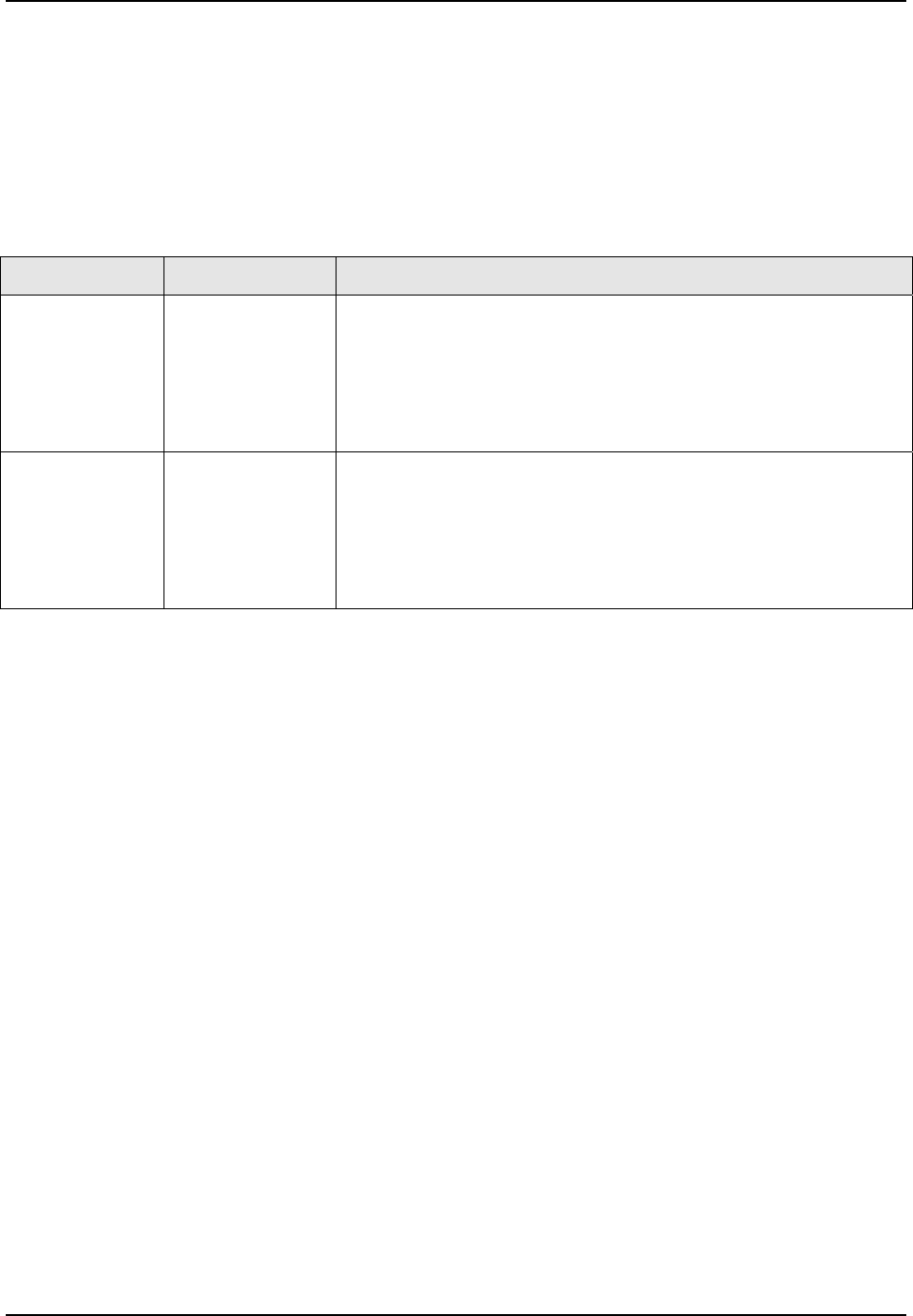
Monitoring and Operating the Controller
4.19 Monitoring Two Loops of Control
Introduction
Monitoring two individual loops of control or internal Cascade is similar as for a single
loop with the following additions.
Table 4-24 Digital Display Indication—Two Loops
Loop Indication Definition Indicator
none
(two-loop)
I
(cascade)
Loop 1 • Upper display shows the Process Variable (PV) for Loop 1
• Lower display shows the Loop 1 parameters and the PV and
Output for Loop 2
• Controller setpoint annunciators show the setpoint currently
being used for Loop 1
Loop 2 •
Upper display shows the Process Variable (PV) for Loop 2
• Lower display shows the Loop 2 parameters and the PV and
Output for Loop 1
• Controller setpoint annunciators show the setpoint currently
being used for Loop 2
L”
Loop Display
Display of Loop 1 or Loop 2 (if configured) is selected by toggling the Func-Loop1/2 key.
Viewing each Loop’s Process Variable
Regardless of which loop is being displayed, 1 or 2, the process variable of the non-
displayed loop can be shown in the lower display by repeated presses of the Lower
Display
key until 1PVXXXX or 2PVXXXX is displayed.
Internal Cascade Indication
When internal Cascade has been configured, an “I” will appear on the left side of the
upper display as long as Loop 1 is operating in the remote setpoint mode. Hold in the
SP Select key until RSP appears in the lower display then release the key to select remote
setpoint.
Switching between automatic and manual mode on either loop will not affect the internal
Cascade indication.
March 2012 UDC3500 Universal Digital Controller Product Manual 235
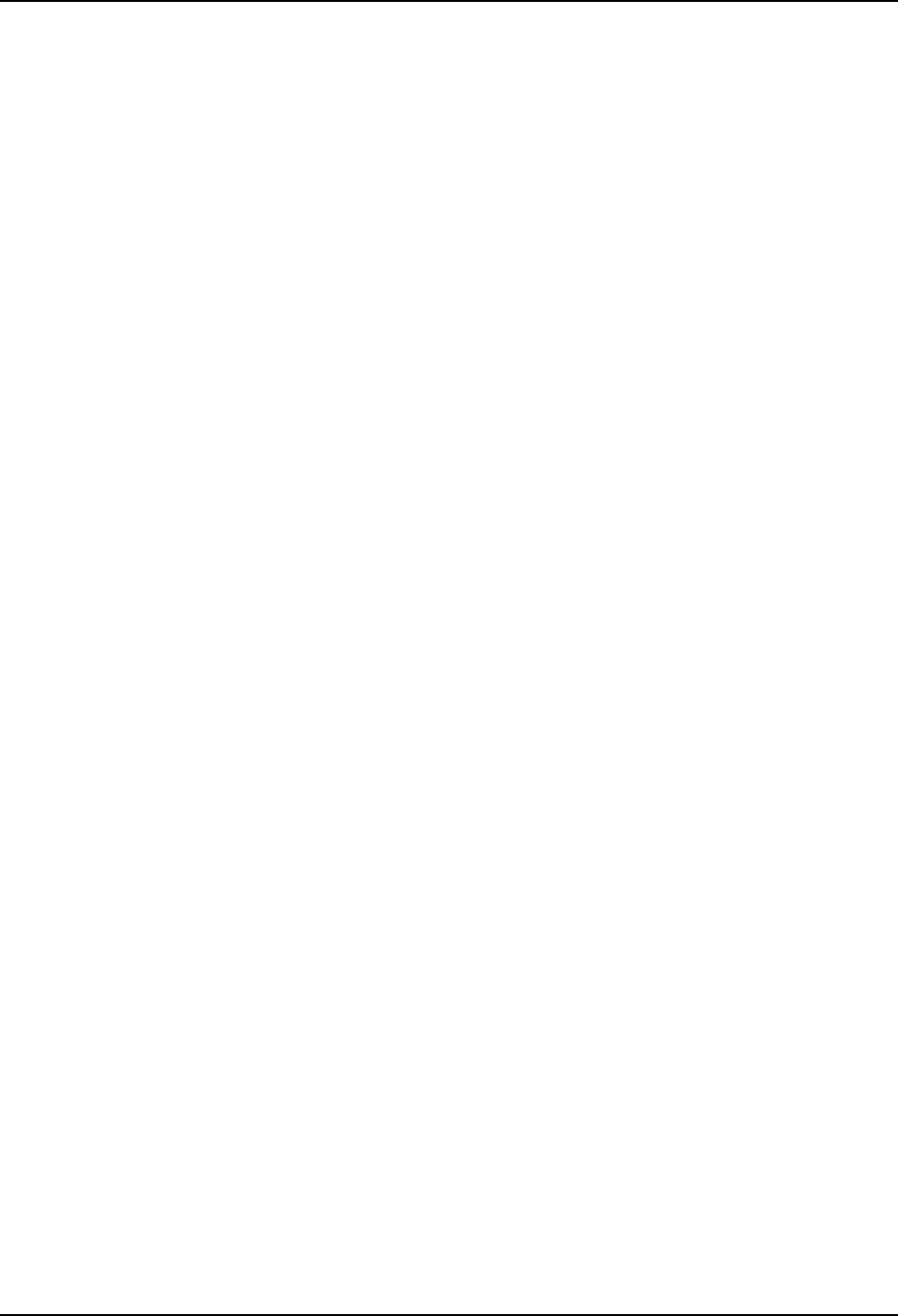
Monitoring and Operating the Controller
4.20 Operating Two Loops of Control
Introduction
Operation of two individual loops of control is identical to operating a single loop of
control except that TUNING 2 group applies to Loop 2 only and four PID sets, 5 through
8, are available. TUNING group applies to Loop 1 with PID sets 1 through 4 applicable.
Operating modes and setpoint source
The rules for Auto/Manual modes and changing setpoint sources are the same as single
loop operation.
Keyboard operation
Note that the loop being displayed is the only loop affected by normal keyboard
operation. However, either loop can be reconfigured when in the Set Up mode regardless
of which is being displayed during normal operation.
Accutune III
Two independent loops or cascaded loops can be tuned at the same time, if so configured.
Setpoint Ramp or SP Programming
Either loop or both loops can be configured for a single setpoint ramp operation by
enabling the desired loop or loops (see Section 3 – Configuration)
An “H” or “R” will appear in the upper display when applicable, depending upon which
loop is being displayed.
Digital Inputs (remote mode switching)
Digital Input 1 is dedicated to Loop 1 when two loops or Cascade control is configured.
The other digital inputs may be configured to work on either loop.
Output Override Hi/Lo select
Output Override allows you to select the higher of Output 1 and Output 2 (Hi Select) or
the lower of Output 1 and Output 2 (Lo Select) to appear at Output 1 terminals to drive
the final control element. Refer to Section 5.12 for Override rules and block diagram.
Override prompts appear under the Algorithm Set Up group, function prompt OUT
OVRD.
236 UDC3500 Universal Digital Controller Product Manual March 2012
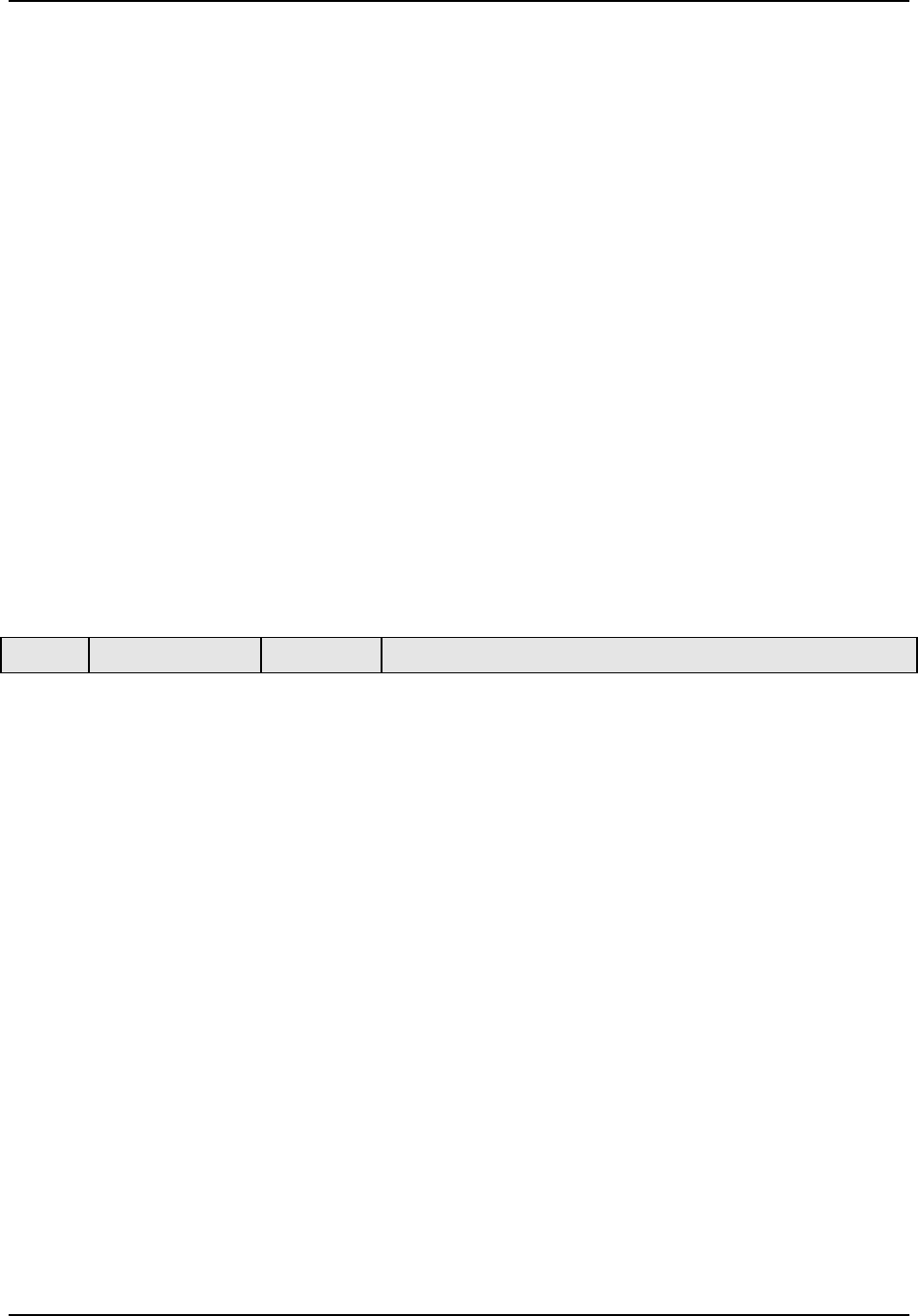
Monitoring and Operating the Controller
4.21 Alarm Setpoints
Introduction
An alarm consists of a relay contact and an operator interface indication.
During normal operation, alarm relays in the inactive state (no alarm condition exists)
will have their Normally Open (NO) contacts closed. Alarm relays in the active state
(alarm condition exists) will have their Normally Closed (NC) contacts closed. See Table
2-3 in the Section 2 – Installation for alarm relay contact information. This means that
the alarm relays are designed to operate in a failsafe mode (that is, the relay coil is de-
energized – NC contacts are closed – when an alarm is active). If power is lost to the unit,
the alarms will de-energize and thus the alarm contacts will close.
When power is first applied to the instrument, all alarm relays will remain in the de-
energized state until the instrument completes its self-diagnostic routine. The alarms
relays will then energize or remain de-energized, depending upon their configuration and
their monitored parameter.
There are eight alarm setpoints, two for each alarm. The type and state (High or Low) is
selected during configuration. See Subsection 3.24 – Configuration for details.
Alarm Setpoints Display
Table 4-25 Procedure for Displaying Alarm Setpoints
Operation Press Result Step
Select
Alarm
Set-up Group
Setup
Until you see:
Upper Display = SET
Lower Display = ALARMS
1
A
ccess t
he Alarm
Setpoint Values
Func
Loop 1/2
To successively display the alarm setpoints and their values.
Their order of appearance is shown below.
Upper Display = (the alarm setpoint value)
Range values are within the range of the selected
parameters except:
DEVIATION (DEV) value = PV Span
EVENTS (EV-ON/EV-OFF) value = Event Segment Number
PV RATE OF CHANGE (PVRATE) = The amount of PV
change in one minute in engineering units.
LOOP BREAK ALARMS (BREAK) = The timer value may
be changed only for controllers configured for ON/OFF
control.
Lower Display = A1S1 VAL = Alarm 1, Setpoint 1 Value
A1S2 VAL = Alarm 1, Setpoint 2 Value
- - - - - - - - - - - - - - - - - - - - - - - - - - - - -
A4S2 VAL = Alarm 4, Setpoint 2 Value
NOTES:
With Three position step control, alarms set for “output” will
not function.
MANUAL, RSP, and F’SAFE selections do not have setpoint
values.
2
March 2012 UDC3500 Universal Digital Controller Product Manual 237
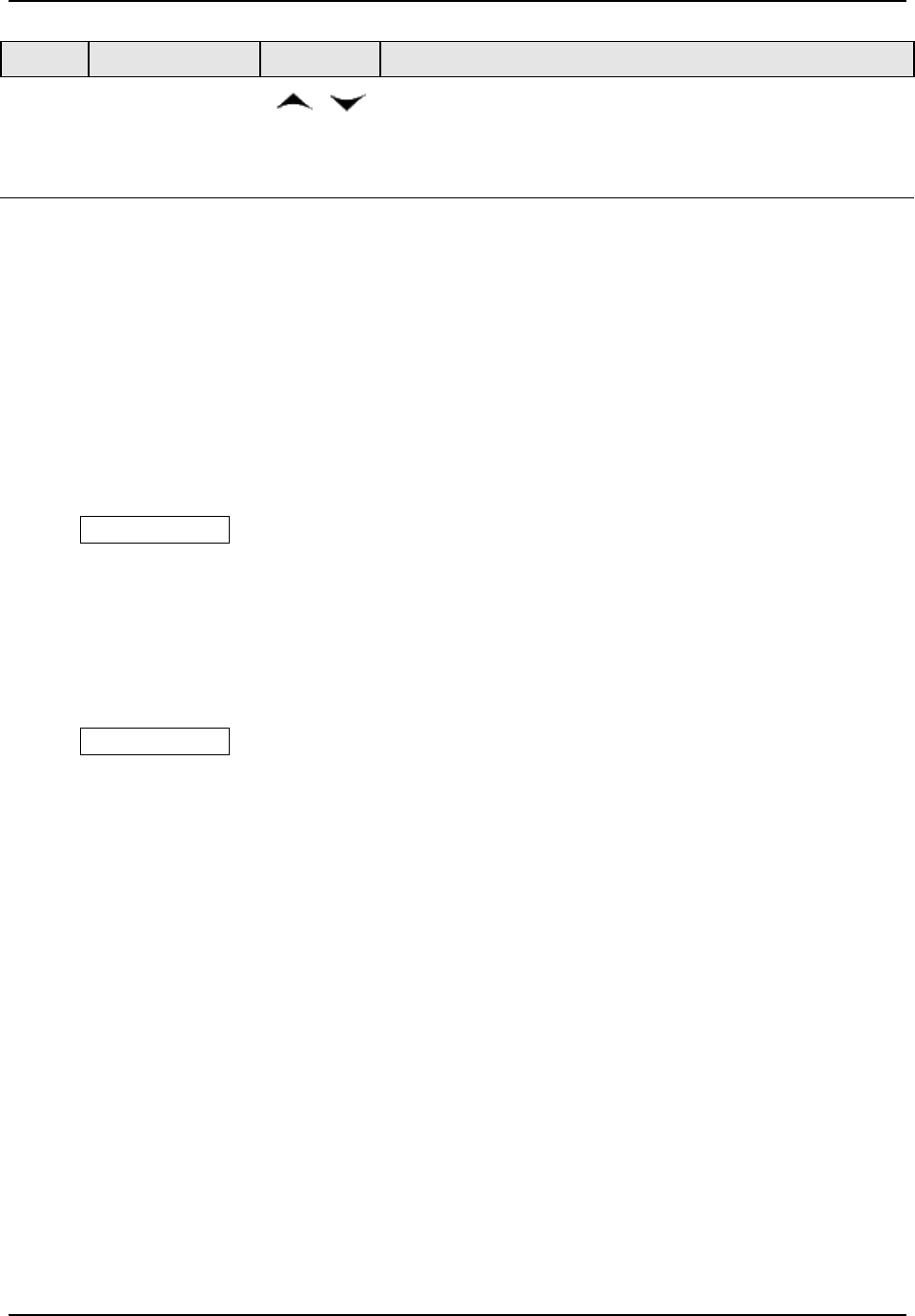
Monitoring and Operating the Controller
238 UDC3500 Universal Digital Controller Product Manual March 2012
Step Operation Press Result
3
Change a value
or
To change any alarm setpoint value in the upper display.
4
Return to Normal
Display
Lower
Display
Setpoint Programming Event Alarms
An alarm setpoint can be configured to turn on or turn off an alarm based upon a
particular segment in a Setpoint Program.
Using Alarm 1 Setpoint 1 as an example:
If Alarm 1 Setpoint1 Value (A1S1 VAL) is configured for Segment 5, Alarm 1 Setpoint
1 Type (A1S1TYPE) is configured for Event On (EV ON) and Alarm 1 Segment 1
Event (A1S1 EV) is configured for BEGIN, then this alarm will activate when the
Setpoint Program reaches the beginning of Segment 5.
ATTENTION If no other alarm configuration turns this alarm off after the above
configuration has turned it on, then when the Setpoint Program is configured to be
disabled when the Setpoint Program ends, this alarm will stay on.
If Alarm 1 Setpoint1 Value (A1S1 VAL) is configured for Segment 5, Alarm 1 Setpoint
1 Type (A1S1TYPE) is configured for Event Off (EV OFF) and Alarm 1 Segment 1
Event (A1S1 EV) is configured for END, then this alarm will deactivate when the
Setpoint Program reaches the end of Segment 5.
ATTENTION Some other alarm configuration must first turn the alarm on before this
configuration can turn it off.
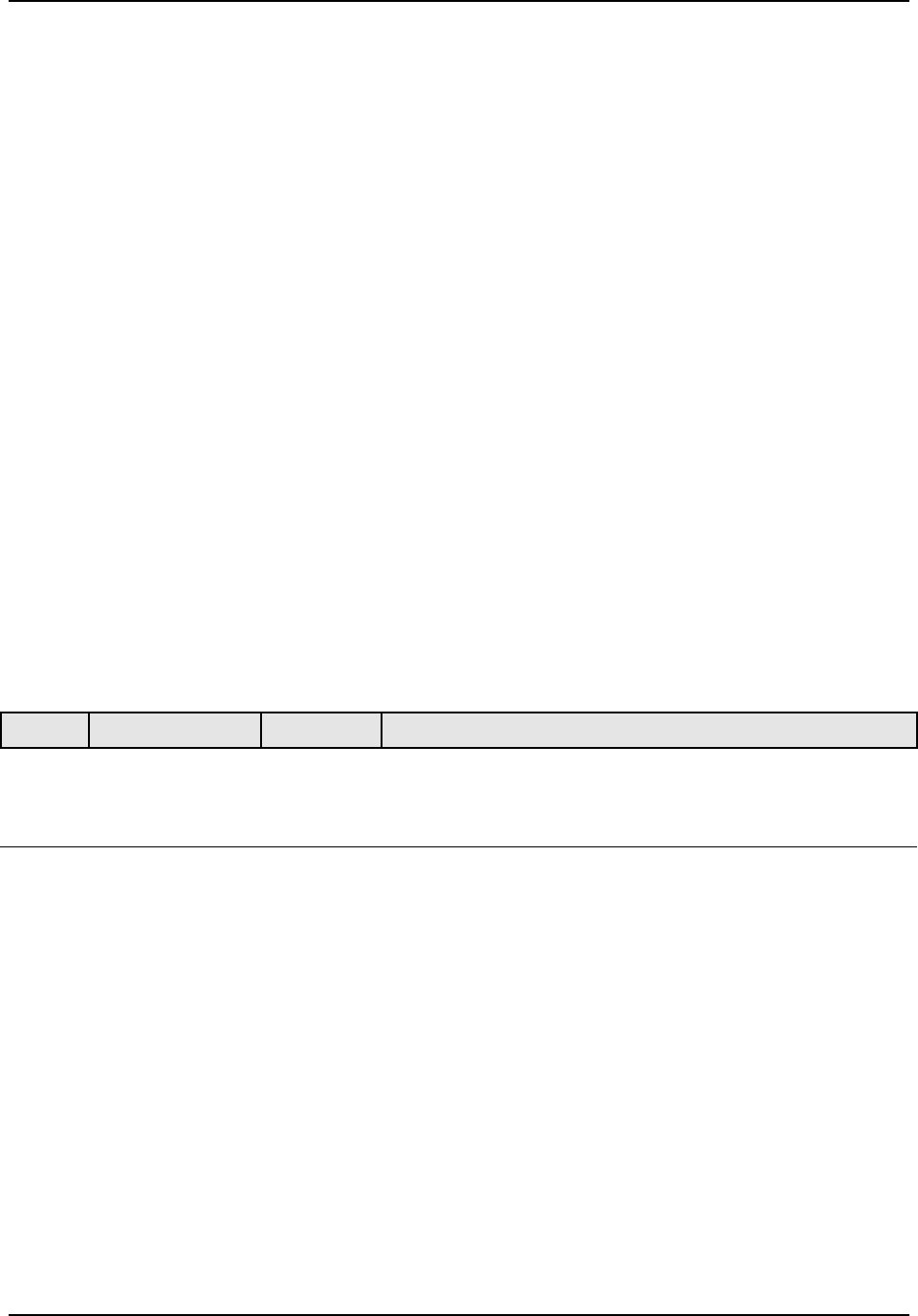
Monitoring and Operating the Controller
4.22 Three Position Step Control Algorithm
Introduction
The Three Position Step Control (TPSC) algorithm allows the control of a valve (or other
actuator) with an electric motor driven by two controller output relays; one to move the
motor upscale, the other to move it downscale, without a feedback slidewire linked to the
motor shaft.
Estimated Motor Position
The Three Position Step control algorithm provides an output display, which is an
estimated motor position since there is no slidewire feedback.
• Although this output indication is only accurate to a few percent, it is corrected each
time the controller drives the motor to one of its stops (0 % or 100 %).
• It avoids all the control problems associated with the feedback slidewire (wear, dirt,
and noise).
• When operating in this algorithm, the output display is shown to the nearest percent
(that is, no decimal).
The Motor Travel Time (the time it takes the motor to travel from 0 % to 100 %) must be
configured in order for TPSC to operate correctly. See Section 3.14.
Motor Position Display
Table 4-26 Procedure for Displaying TPSC Motor Position
Operation Press Result Step
Access t
he
Displays
Lower
Display
Until you see:
Upper Display = PV
Lower Display = OT (The estimated motor position in %)
1
Accurate Motor Position
In the event that an accurate and repeatable indication of motor position is required, the
instrument’s Third Analog Input may be used to read the motor’s slidewire. The Third
Analog Input must be configured for slidewire operation. Motor position is then shown
on the lower display as POS XX.X. The TPSC algorithm does not use this value; it is
only used for display purposes.
The slidewire must be calibrated for this display to operate correctly. See Section 6.5.
March 2012 UDC3500 Universal Digital Controller Product Manual 239
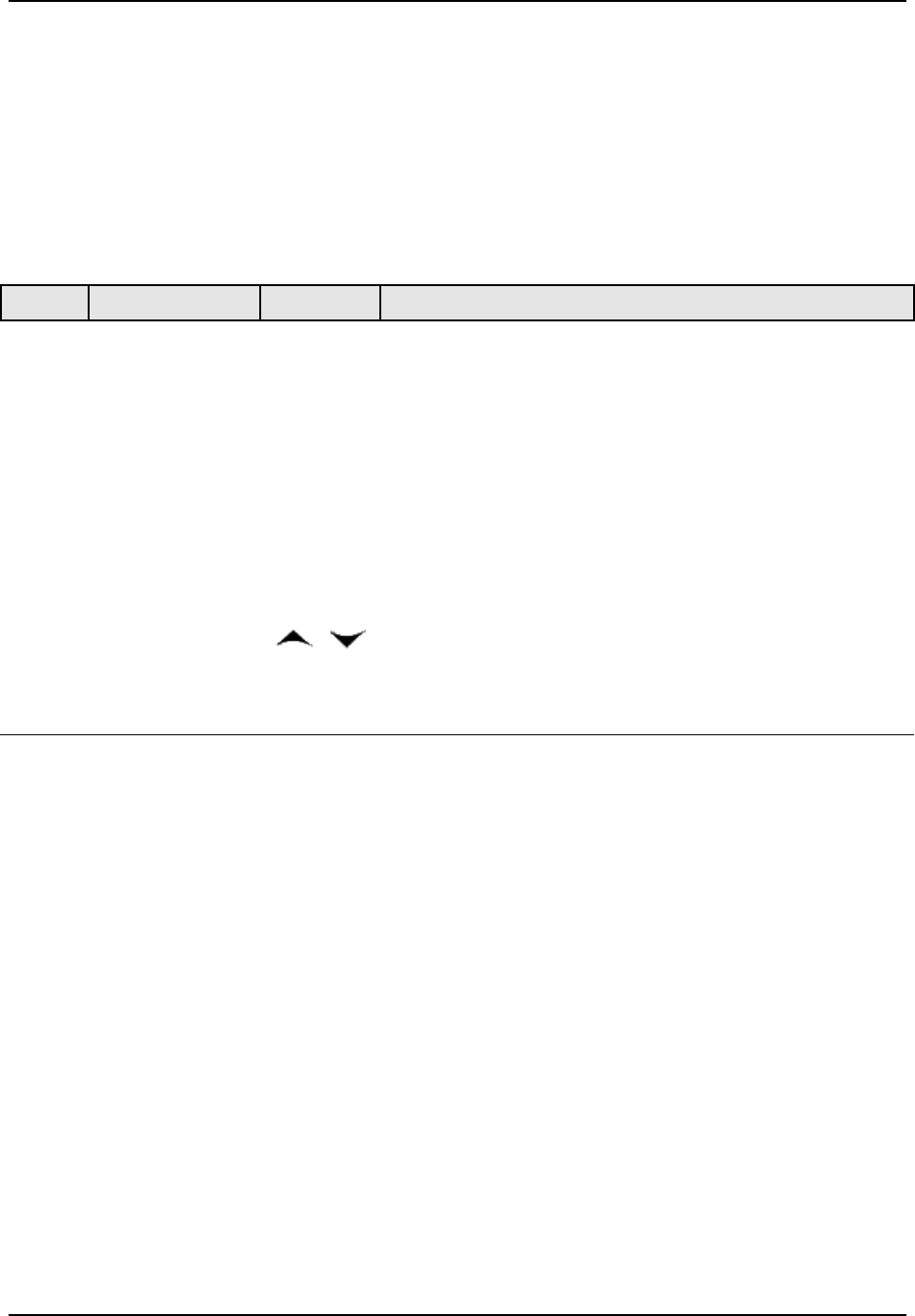
Monitoring and Operating the Controller
4.23 Setting a Failsafe Output Value for Restart after a Power Loss
Introduction
If the power to the controller fails and power is reapplied, the controller goes through the
power up tests, then goes to a user configured FAILSAFE OUTPUT VALUE.
Set a Failsafe Value
Table 4-27 Procedure for Setting a Failsafe Value
Operation Press Result Step
Select Control
Set-up Group
Setup
Until you see:
Upper Display = SET
Lower Display = CONTROL
1
Select Failsafe
Function Prompt
Func
Loop 1/2
You will see:
Upper Display = (range)
within the range of the Output 0 to 100 for all output types
except Three Position Step
Three Position Step
0 = motor goes to closed position
100 = motor goes to open position
Lower Display = F’SAFE
2
Select a value
or
To select a failsafe output value in the upper display
3
Return to Normal
Display
Lower
Display
At power up, the output will go to the value set.
4
240 UDC3500 Universal Digital Controller Product Manual March 2012
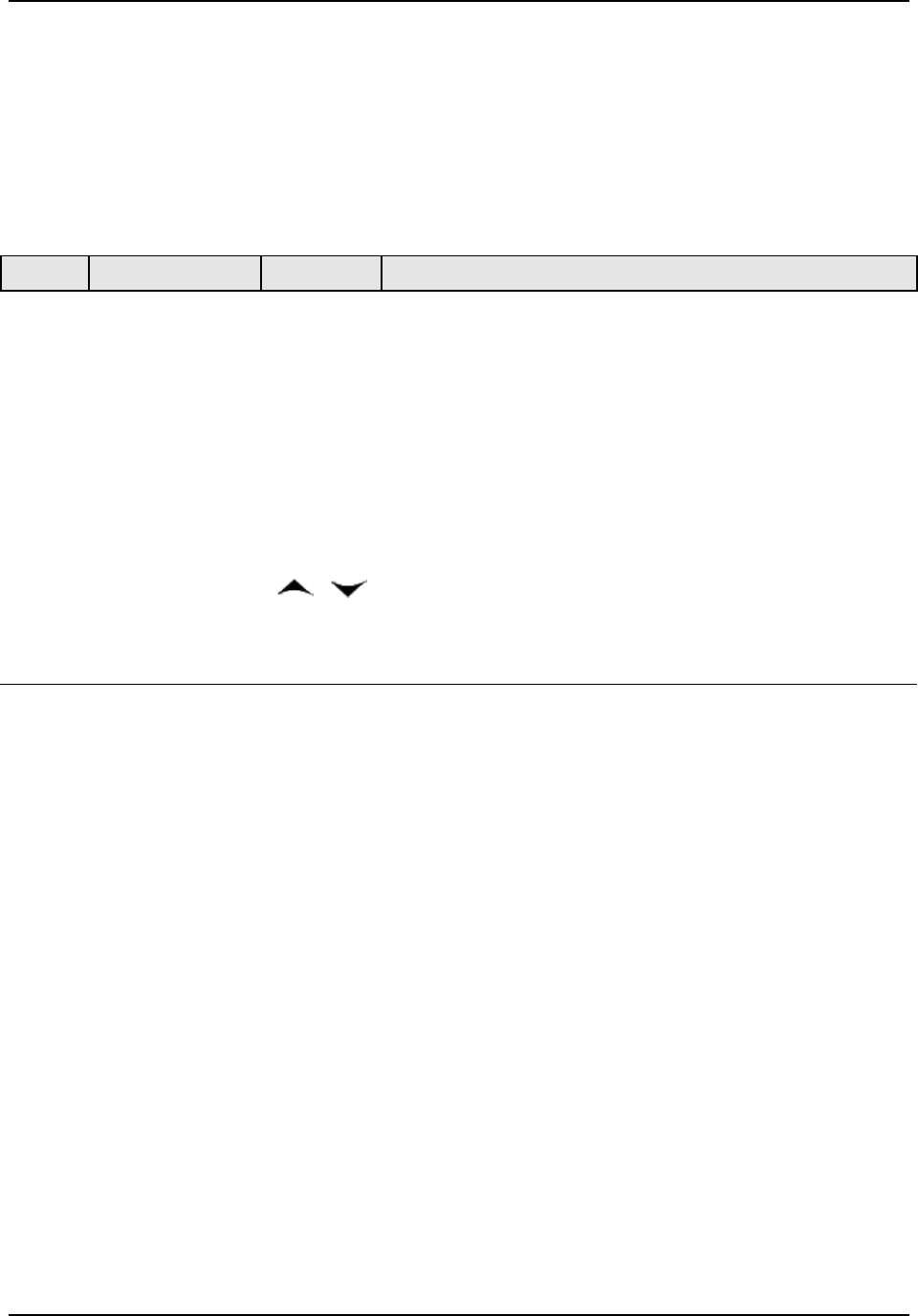
Monitoring and Operating the Controller
4.24 Setting Failsafe Mode
Introduction
You can set the Failsafe Mode to be Latching or Non-Latching.
Set Failsafe Mode
Table 4-28 Procedure for Setting a Failsafe Mode
Operation Press Result Step
Select Control
Set-up Group
Setup
Until you see:
Upper Display = SET
Lower Display = CONTROL
1
Select Failsafe
Function Prompt
Func
Loop 1/2
You will see:
Upper Display =
LATCH (Controller goes to manual and output goes to
failsafe value)
NoLATCH (Controller mode does not change and output
goes to failsafe value)
Lower Display = FSMODE
2
Select a value
or
To select a failsafe mode in the upper display.
3
Return to Normal
Display
Lower
Display
At power up, the output will go to the value set.
4
4.25 Carbon Potential, Oxygen and Dewpoint Algorithms
Introduction
Carbon probes can be used to control Carbon Potential, Percent Oxygen or Dewpoint
applications by configuring the Input Algorithm 1 for the desired type.
Most carbon probes consist of a zirconium oxide (ZrO
2
) sensor and a thermocouple (to
measure the temperature at the ZrO
2
sensor). These probes generally have four wires, two
for the ZrO
2
sensor and two for the thermocouple. The ZrO
2
sensor is connected to Input
1 on this controller while the thermocouple is connected to Input 2. Input 1 actuation is
automatically set to Carbon when any Carbon Potential Algorithm is configured, to
Oxygen when the Oxygen Algorithm is configured, and to Carbon when the Dewpoint
Algorithm is configured. The thermocouple in these probes is normally a K, R or S
thermocouple type. However, Input 2 can be configured for any input actuation for
applications where some other temperature sensor is used. PV Source in the Control Set
Up Group should be configured to IN ALG 1.
Instruments with Two Loops may use Loop 1 to control the Carbon/Oxygen/Dewpoint of
the oven while Loop 2 may use the temperature measured by Input 2 to control the
temperature of the oven. For this application, PV Source in the Control Set Up Group
March 2012 UDC3500 Universal Digital Controller Product Manual 241
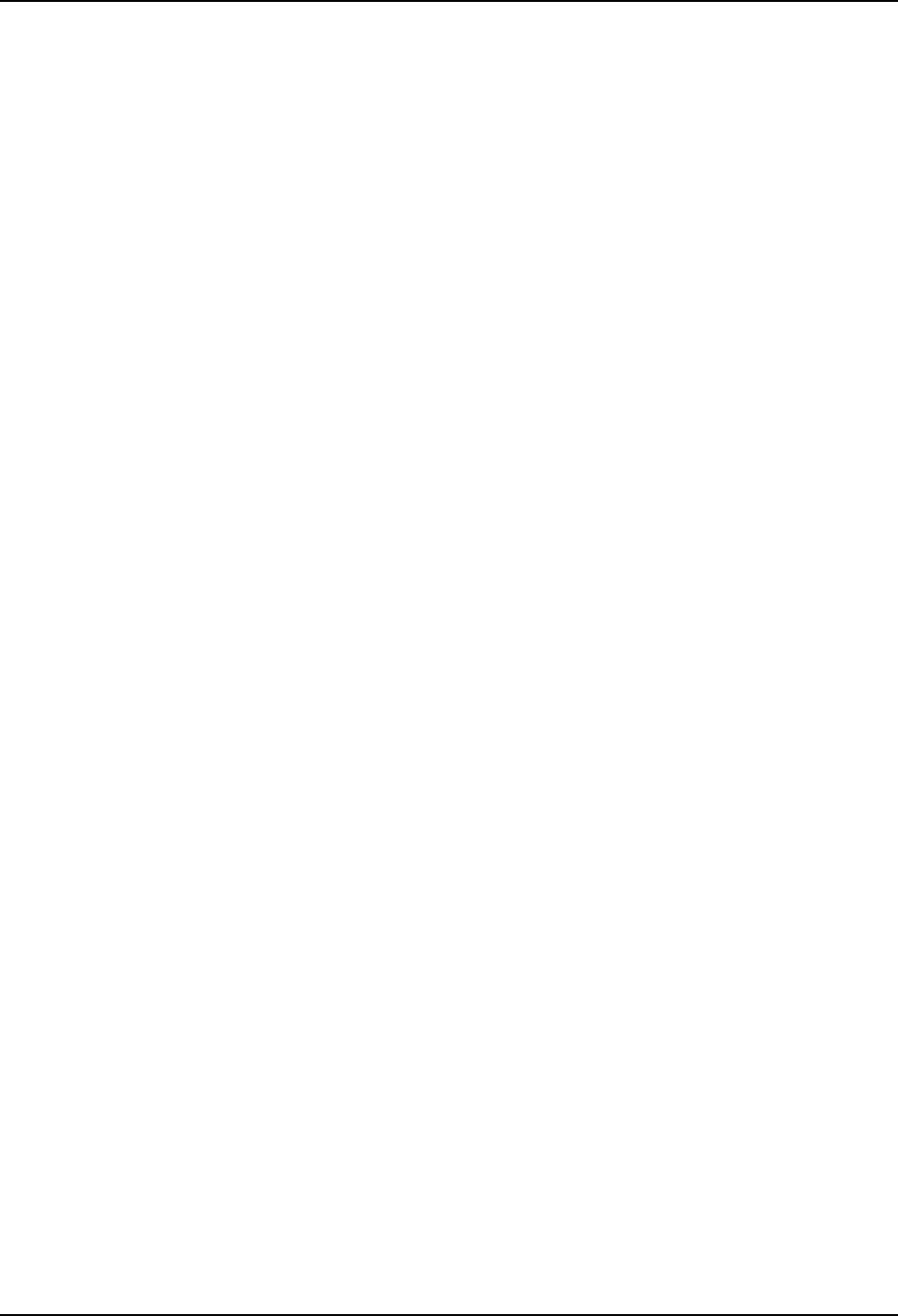
Monitoring and Operating the Controller
should be configured to IN ALG 1 while PV Source in the Control 2 Set Up Group
should be configured to INPUT 2.
See Section 3.11 for configuration and other information.
Features
Direct calculation of carbon percentage with seven different manufacturers’ probes:
Advanced Atmosphere Control Corporation (AACC)
Corning
Cambridge Instruments
Marathon Monitors
Furnace Control Corporation
MacDhui (Barber Colman)
Bricesco
± 0.02 % accuracy
No nomographs—no mistakes
Probe temperature input type is selectable from complete input menu.
Four different local setpoints—standard feature
Duplex control with second set of PID constants for dilution air control
Process factor adjustment capability
Automatic sooting warning via flashing display and configurable alarm
Carbon Potential Algorithms, PV Range: 0.0 to 2.0 % (0.1 to 1.4 % for specified
accuracy)
Dewpoint Algorithm, PV Range: –50 °F to +100 °F (–45 °C to 38 °C)
% Oxygen Algorithm, PV Range: 0 % to 40 %
Second Control Loop can use the temperature input to control furnace temperature
Carbon Potential
The percent Carbon Monoxide (CO) content of the enriching gas may be entered as a
fixed value or Input 3 on the controller may be used to measure CO content as a live
value provided by a separate sensor.
All calculations are performed by the Controller with Percent Carbon shown as the PV
display. The actual reading of each analog input is available for viewing on the lower
display.
The controller computes the atmosphere’s actual carbon potential from these inputs and
compares the computed value with the desired setpoint. An on-off or PID control
algorithm determines the controller output necessary to keep the actual carbon potential
at the setpoint.
242 UDC3500 Universal Digital Controller Product Manual March 2012
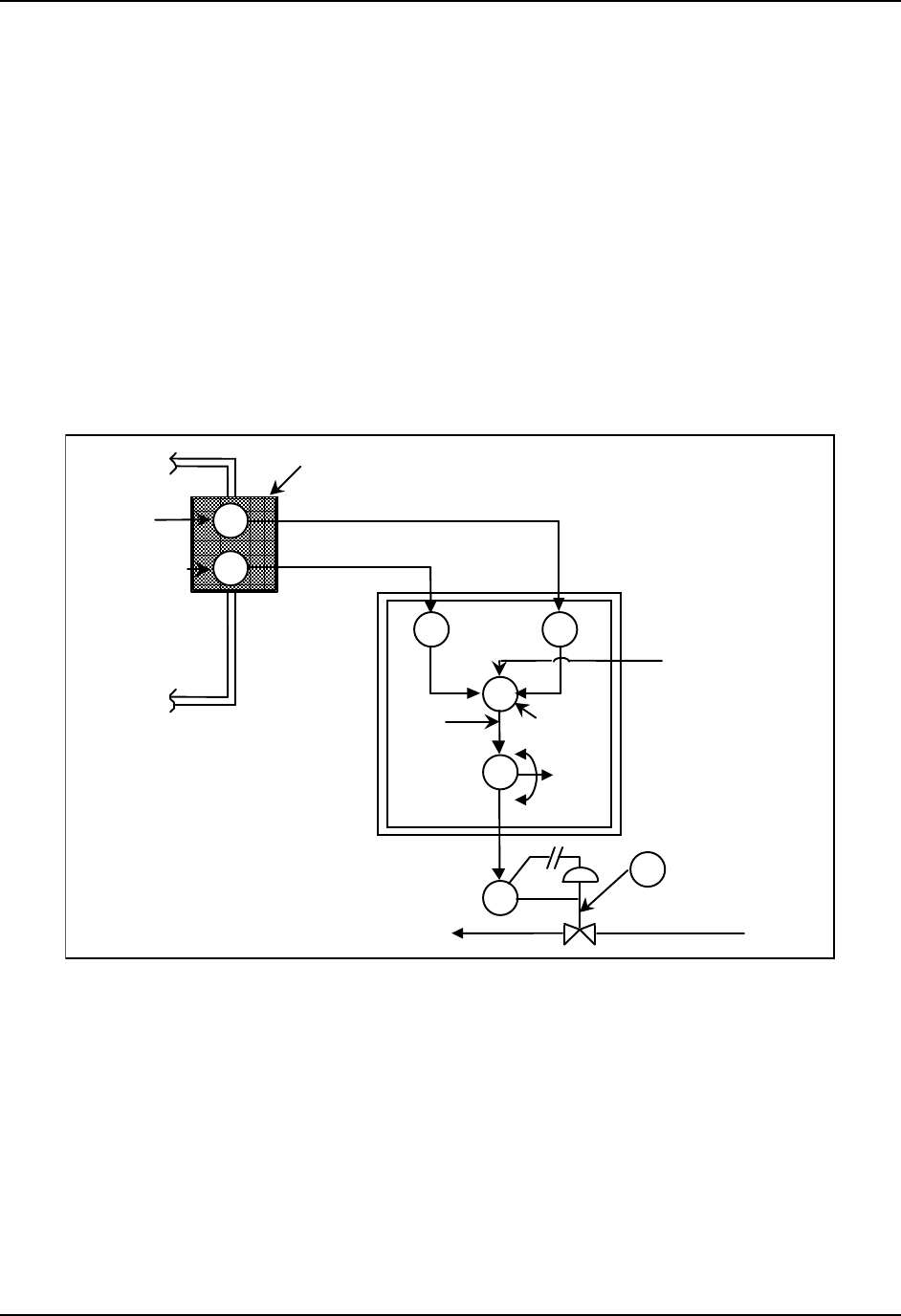
Monitoring and Operating the Controller
Usually only one output is used to add more or less enriching gas (typically natural gas)
to the furnace’s base atmosphere, which has a relatively low carbon potential. The
enriching gas then raises the carbon potential to the desired level. There are occasions
when it is desirable to use dilution air in order to lower the carbon potential instead of
enriching gas to raise it. In those instances, a second output from the controller can
provide this function by configuring duplex control. When duplex proportional control is
used, a different set of PID tuning constants is used for the dilution air than those used for
the enriching gas.
Although the temperature used for these Carbon algorithms is normally a live value read
by Input 2, it may also be configured as a fixed value. The fixed value selection is useful
for when an Automotive Sensor is used, as these do not contain a thermocouple sensor.
Carbon Potential Diagram
Figure 4-6 illustrates a typical application for carbon potential control.
f(x) f(x)
PID
E/P
CV
Carbon
Probe
O
2
Sensor
Carburizing
Furnace
%
Carbon
P
V
%
Carbon
Calc.
Output
Enrichment Gas
• SP
• 2SP
• 4SP or
• RSP
Input 2 Input 1
UDC 3500
millivolts
CP
Input 3 —
Optional Online
CO Compensation
• 3SP
temperature
Thermocouple
Figure 4-6 Carbon Potential Control
Percent Oxygen
Percent Oxygen control requires two analog inputs. Input 1 actuation is automatically set
to Oxygen when the Percent Oxygen Algorithm is configured. Input 2 may be any input
actuation, but it is normally a type K, R or S thermocouple input.
All calculations are performed by the Controller with Percent Oxygen shown as the PV
display. The actual reading of each analog input is available for viewing on the lower
display.
March 2012 UDC3500 Universal Digital Controller Product Manual 243
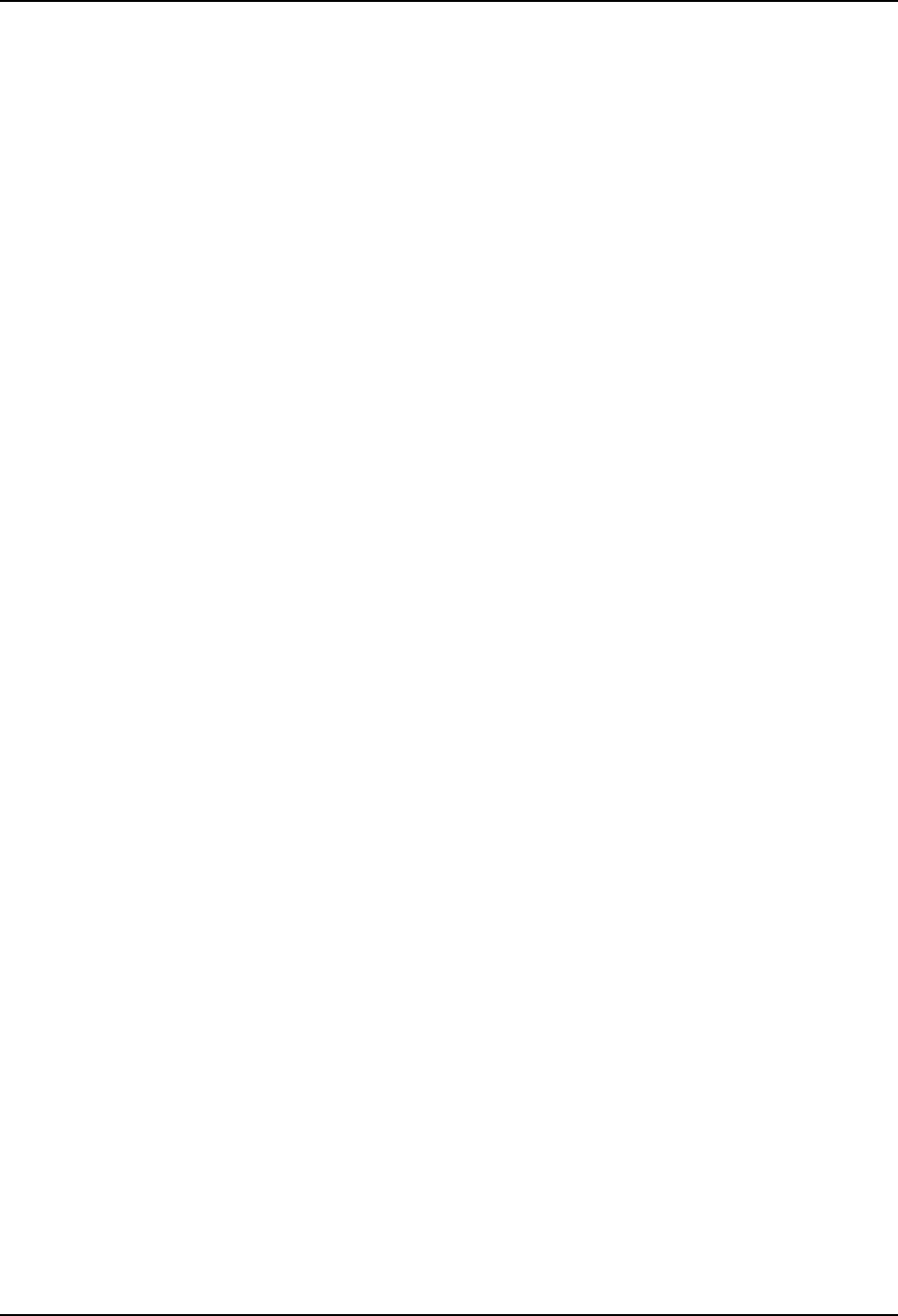
Monitoring and Operating the Controller
Dewpoint
The Dewpoint Algorithm is used for controlling the Dewpoint in endothermic
atmospheres. Furnace Control’s Accucarb ZrO
2
sensor is used on Input 1. Input 1
actuation is automatically set to Carbon when the Dew Point Algorithm is configured.
Input 2 may be any input actuation, but it is normally a type K, R or S thermocouple
input.
The percent Hydrogen (H
2
) atmospheric content is entered as a fixed value.
All calculations are performed by the Controller with the Dewpoint temperature shown as
the PV display. The actual reading of each analog input is available for viewing on the
lower display.
The availability of Dewpoint on Input Algorithm 2 provides the capability of controlling
Carbon Potential on Loop 1 while also being able to calculate the Dewpoint value from
the same probe. For this configuration, “DEW XX.X” may be viewed on the lower
display, where “XX.X” is the Dewpoint temperature.
4.26 Healthwatch
Introduction
The Healthwatch feature puts diagnostic data at your fingertips so you can monitor vital
performance status to improve your process, predict failures, and minimize downtime.
Valuable data regarding maintenance and diagnostic selections can be read by operator-
accessed displays. Alarms can be configured to activate when the desired threshold is
reached.
See Section 4.18 Maintenance for details on using the various Healthwatch timers and
counters. See Section 4.15 Alarms for details on Healthwatch maintenance alarms.
4.27 Setpoint Rate/Ramp/Program Overview
Introduction
The Setpoint Ramp configuration group lets you enable and configure any of the
following:
SP RATE – a specific rate of change for any local setpoint change. (Subsection 4.28)
SP RAMP – a single setpoint ramp
that occurs between the current local setpoint and
a final local setpoint over a time interval of 1 to 255 minutes. (Subsection 4.29)
SP PROG – a ramp/soak profile in a 20-segment program. (Subsection 4.30)
This section explains the operation of each selection and configuration reference where
necessary.
244 UDC3500 Universal Digital Controller Product Manual March 2012
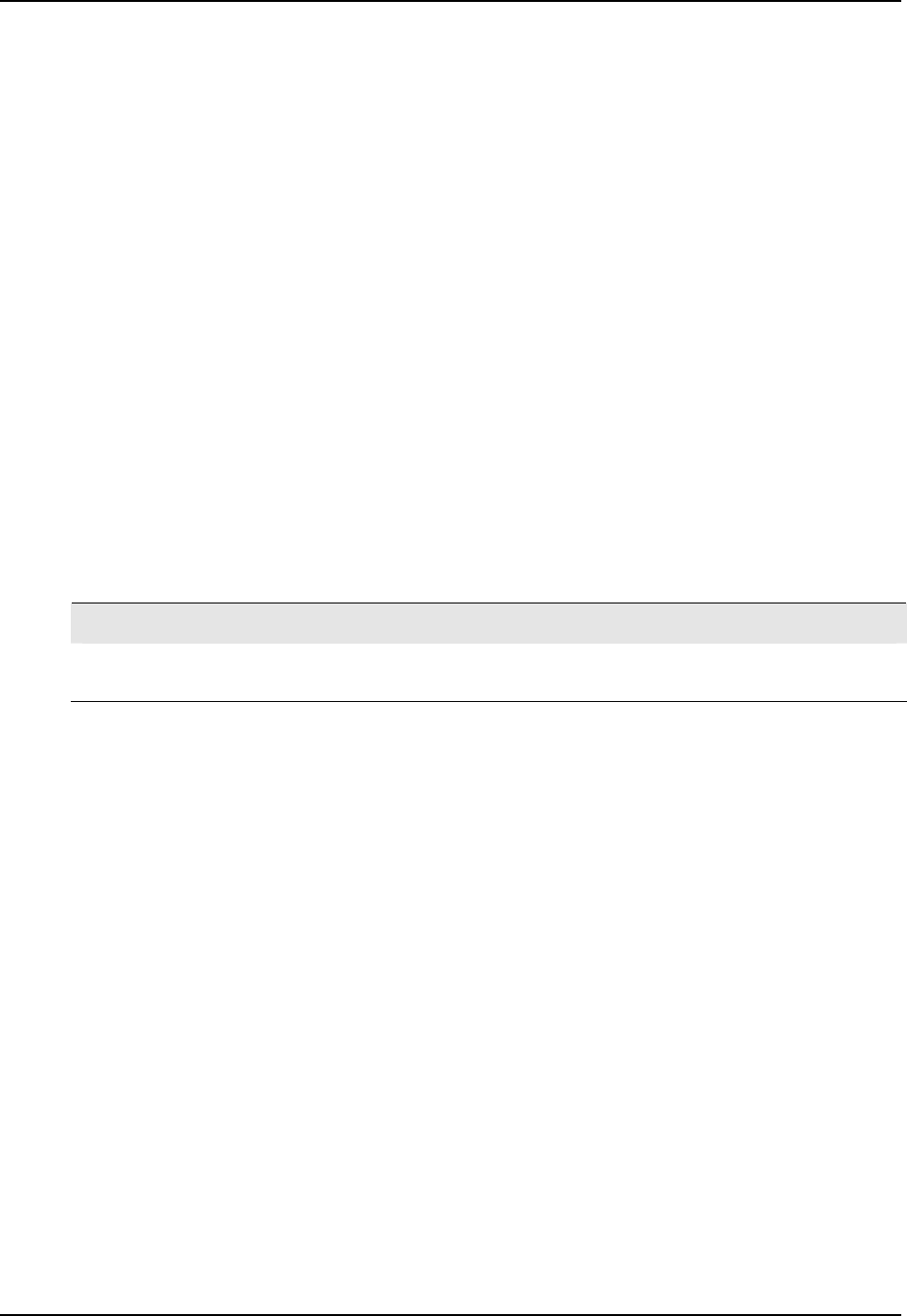
Monitoring and Operating the Controller
PV Hot Start
This is a standard feature. At power-up, the setpoint is set to the current PV value and the
Rate or Ramp or Program then starts from this value.
RUN/HOLD key
You can start or stop the Ramp or Program using the RUN/HOLD key.
4.28 Setpoint Rate
Introduction
When you have configured a SETPOINT RATE, it will apply immediately to local
setpoint change.
Configuration check
Make sure:
SPRATE is enabled
A Rate Up (EUHRUP) or Rate Down (EUHRDN) value has been configured in
Engineering units per hour.
ATTENTION
A value of 0 will imply an immediate change in setpoint, that is, NO RATE applies. See
Subsection 3.6 – Configuration group “SPRAMP” for details.)
Operation
When a change to local setpoint is made, this controller will ramp from the original
setpoint to the “target” setpoint at the rate specified.
The current setpoint value is shown as SPn XXXX on the lower display while the
“target” setpoint is shown as SP XXXX on the lower display.
Power outages
If power is lost before the “target” setpoint is reached, upon power recovery, the
controller powers up with Sn = Current PV value and it automatically “Restarts” from Sn
= current PV value up to the original “target” setpoint.
4.29 Setpoint Ramp
Introduction
When you have configured a SETPOINT RAMP, the ramp will occur between the
current local setpoint and a final local setpoint over a time interval of from 1 to 255
minutes. You can RUN or HOLD the ramp at any time.
March 2012 UDC3500 Universal Digital Controller Product Manual 245
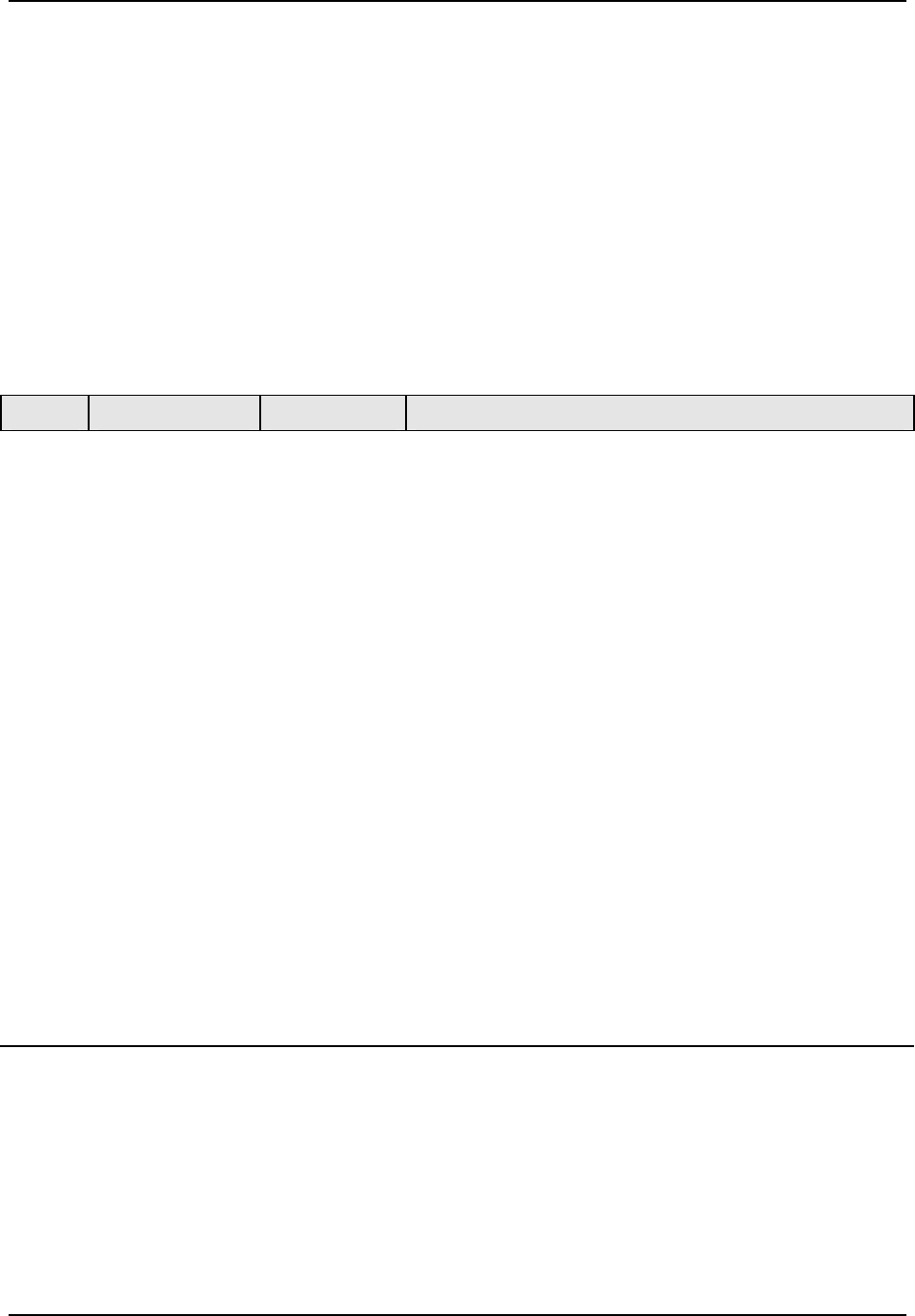
Monitoring and Operating the Controller
Configuration Check
Make sure
SPRAMP is enabled
SP RATE and SPPROG are not running.
A Ramp Time (TIMIN) in minutes has been configured
A final setpoint value (FINLSP) has been configured. See Subsection 3.6 –
Configuration group “SPRAMP” for details.
Operation
Running a Setpoint Ramp includes starting, holding, viewing the ramp, ending the ramp
and disabling it. See Table 4-29.
Table 4-29 Running A Setpoint Ramp
Operation Press Result Step
Select
Automatic
Mode
Man/Auto
“A” indicator is on.
Upper Display = “H” and PV value
Lower Display = SP and Present value
1
Set Start Setpoint
Lower
Display
Until start SP value is in lower display
Upper Display = “H” and PV value
Lower Display = SP and start SP value
2
Start the Ramp
Run/Hold
You will see
Upper Display = “R” and a changing PV value
Lower Display = SP and a changing SP value increasing
or decreasing toward the final SP value
3
Hold/Run the
Ramp
Run/Hold
This holds the ramp at the current setpoint value. Press
again to continue.
4
View the
remaining ramp
time
Lower
Display
Until you see
Upper Display = PV value
Lower Display = RAMPXXXM (time remaining in
minutes)
5
End the Ramp
When the final setpoint is reached, “R” changes to “H” in
the upper display and the controller operates at the new
final setpoint.
6
Disable SPRAMP
See Section 3 – Configuration group “SPRAMP” for
details.
7
Power Outage
If power is lost during a ramp, upon power-up the controller will be in HOLD and the
setpoint value will be the setpoint value prior to the beginning of the setpoint ramp.
The ramp is placed in hold at the beginning.
Configure the mode at Set Up Group “CONTROL”, function prompt “PWR MODE”.
See Subsection 3.20 – CONTROL SETUP GROUP Prompts.
246 UDC3500 Universal Digital Controller Product Manual March 2012
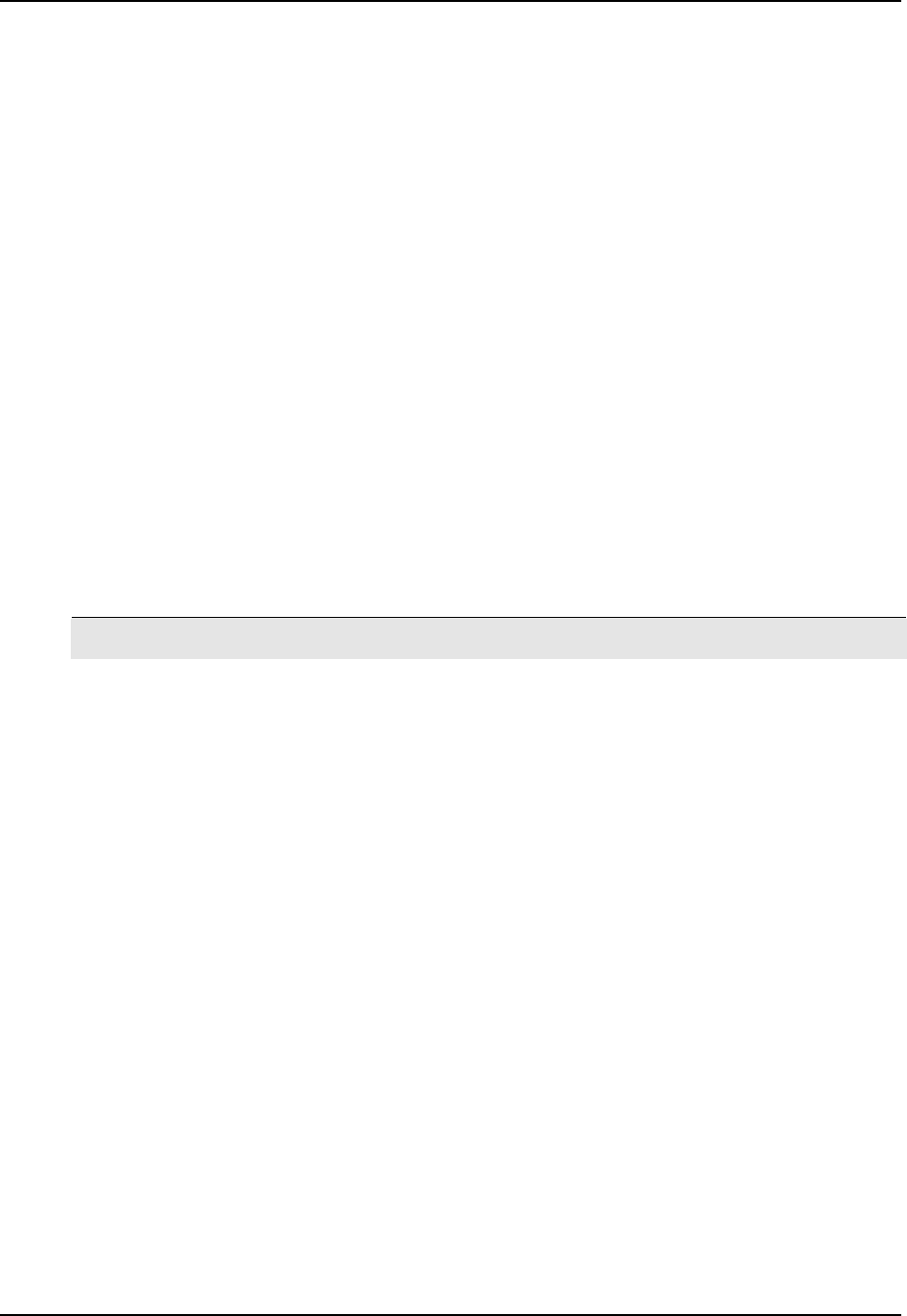
Monitoring and Operating the Controller
4.30 Setpoint Ramp/Soak Programming
Introduction
The term “programming” is used here to identify the process for selecting and entering
the individual ramp and soak segment data needed to generate the required setpoint
versus time profile (also called a program).
There are new features in this group that do not appear in previous NGC products:
Up to Four SP Programs rather than one
20 segments instead of 12 in each program
SP Programs 1 and 2 can be linked to give a SP Program of up to 40 segments
SP Programs 3 and 4 can be linked to give a SP Program of up to 40 segments
Guaranteed Soak Settings for each Soak Segment
PID Set selection for each Segment
A segment is a ramp or soak function which together make up a setpoint program.
Setpoint Ramp/Soak Programming lets you configure 10 ramp and 10 soak segments to
be stored for use as one program or several small programs. You designate the beginning
and end segments to determine where the program is to start and stop.
ATTENTION
Please note that the configurations used in SP Program #1 for Program
End, Program State, Power Up and Key Reset affect all other SP Programs.
For this reason, Program #1 must always be enabled in order to enable
Programs #2, 3 and/or 4.
Review program data and configuration
While the procedure for programming is straightforward, and aided by prompts, we
suggest you read “Program Contents”. Table 4-30 lists the program contents and an
explanation of each to aid you in configuration. Then refer to Subsection 3.6–
Configuration to do the setpoint program.
Make sure SPRAMP is disabled.
Fill out the worksheet
Refer to the example in Figure 4-7. For each SP Program, draw a Ramp/Soak Profile on
the worksheets provided and fill in the information for each segm
ent. This will give you a
record of how the programs were developed.
Operation
Refer to Table 4-36 Run/Monitor the program.
March 2012 UDC3500 Universal Digital Controller Product Manual 247
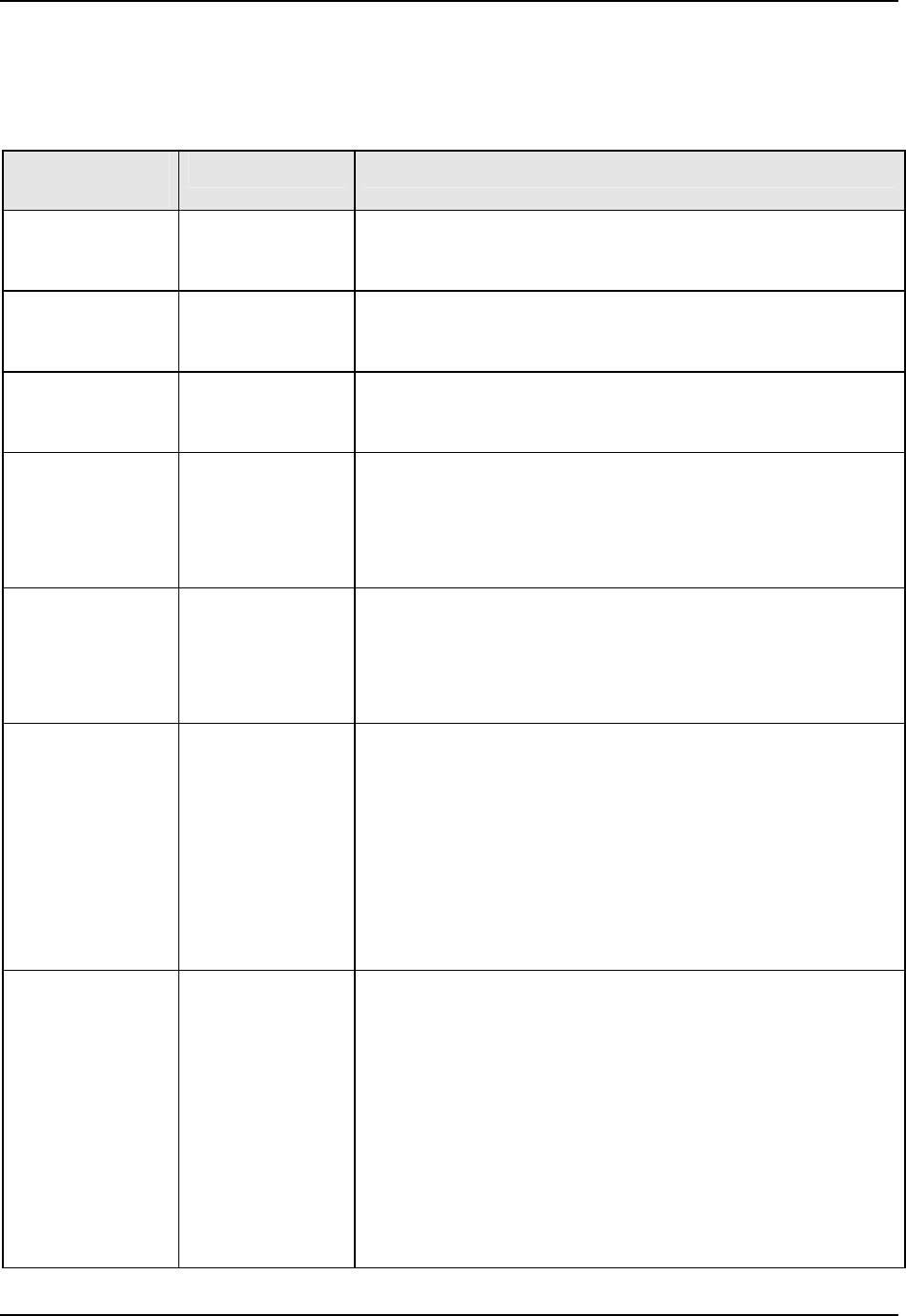
Monitoring and Operating the Controller
Program Contents
Table 4-30 lists all the program contents and a description of each.
Table 4-30 Program Contents
Contents Definition Associated
Prompts
Start segment
number
The start segment number designates the number of the first
segment.
Range = 1 to 19
STRT SEG
End segment
number
The end segment number designates the number of the last
segment; it must be a soak segment (even number).
Range = 2 to 20
END SEG
RECYCLES Recycle number
The recycle number allows the program to recycle a specified
number of times from beginning to end.
Range = 0 to 99
STATE Program state
The program state selection determines the program state
after completion. The selections are:
DISABLE = program is disabled (so program value
changed to DISABLE)
HOLD = program on hold
Program
termination state
The program termination state function determines the status
of the controller upon completion of the program.
The selections are:
LAST = controls to last setpoint
FAILSAFE = manual mode and failsafe output.
PROG END
Program state
after a power
outage
This configuration determines what the Program will do in the
case of a power outage during the Program. This prompt only
appears on those instruments that have the Real Time Clock
option. The selections are:
ABORT = Program terminated on power up. Instrument
controls per the PROG END configuration.
RESUME = Continue at the same point in segment and
cycle where power was lost.
RESTART = Restart program at the beginning of the first
program segment in the same cycle where power was lost.
POWER OUT
KEYRESET
(ToBEGIN)
Reset Program
to Beginning
When enabled, this selection allows you to reset via the
keyboard to the beginning of the program and resets the
Recycle value to 0. The program mode is placed in HOLD.
If the current Local Setpoint 1 value is at any value other than
that Setpoint value used in the first Soak segment in the
program, then the program will restart at the current Local
Setpoint 1 value and at the beginning of the first Ramp
segment in the program.
If the current Local Setpoint 1 value is at the same Setpoint
value as that used for the first Soak segment in the program,
then the first Ramp segment is skipped and the program will
restart at the beginning of the first Soak segment in the
248 UDC3500 Universal Digital Controller Product Manual March 2012
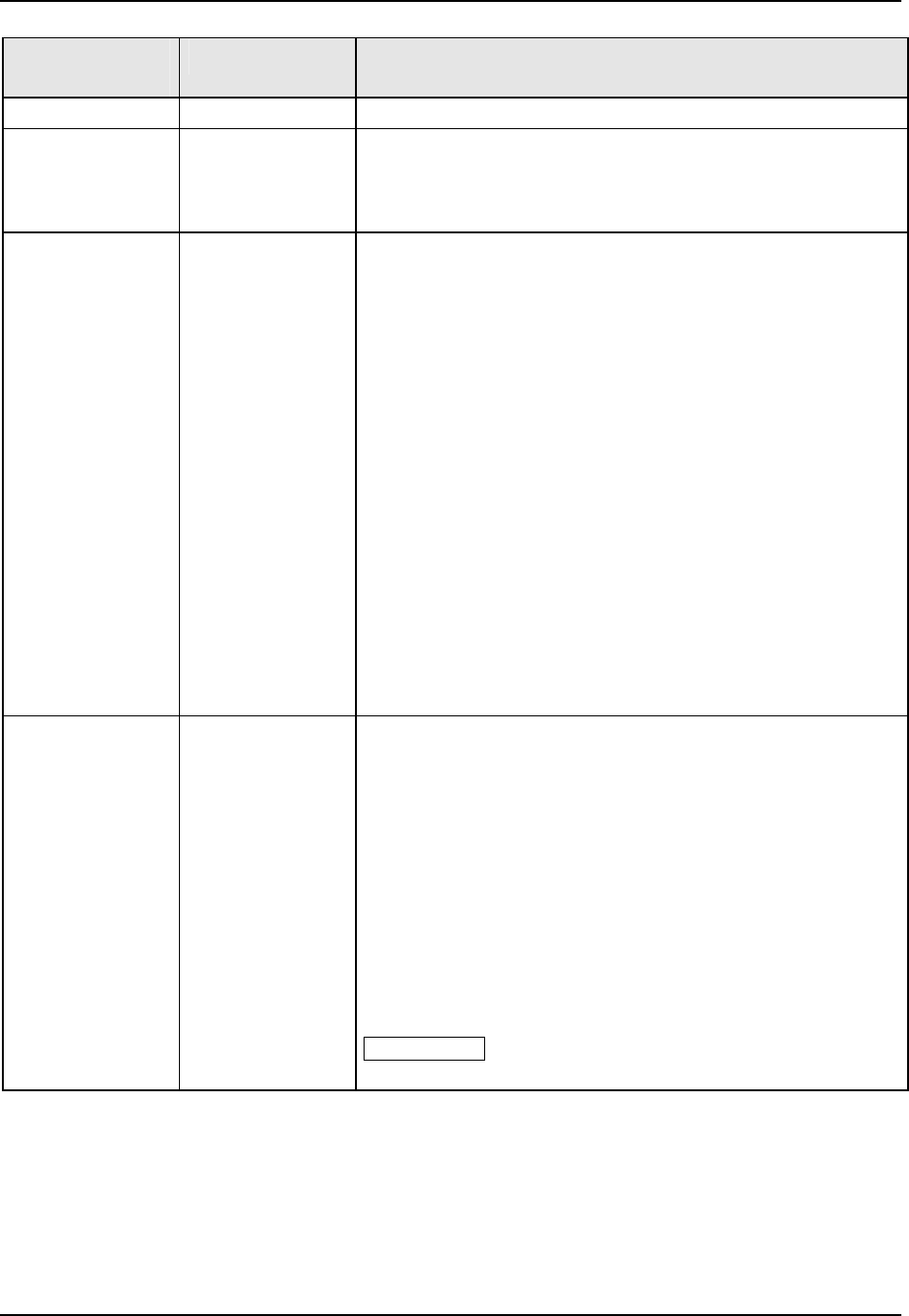
Monitoring and Operating the Controller
March 2012 UDC3500 Universal Digital Controller Product Manual 249
Associated
Prompts
Contents Definition
program.
KEYRESET
(RERUN)
Rerun current
cycle
RERUN CURRENT CYCLE—When enabled, this selection
allows you to reset the program via the keyboard to the
beginning of the current cycle. The Recycle value is not
affected. The program mode (RUN or HOLD) is not affected.
HOTSTART Hot Start
This function determines whether LSP1 or PV is used as the
setpoint when the program is initially changed from HOLD to
RUN. The selections are:
DISABLE = When the program is initially changed from HOLD
to RUN the present LSP1 value is captured as
the default setpoint. If the program is terminated
or the power cycled before the program has
completed, the LSP1 is used as the control
setpoint. The beginning segment uses this value
as the initial ramp setpoint.
ENABLE = When the program is initially changed from HOLD
to RUN the present PV value is captured and
used as the beginning setpoint value for the ramp
segment. If the program is terminated before
completion, the setpoint value will revert back to
the PV value captured at the initial HOLD to RUN
transition. If the power is cycled before program
completion, upon power-up the setpoint is set to
the PV value at power-up and when the program
is restarted that setpoint value is used initially.
RAMPUNIT
SEGxRAMP or
SEGxRATE
Ramp time or
rate segments
A ramp segment is the time it will take to change the setpoint
to the next setpoint value in the program.
Ramps are odd number segments (1, 3, . . . 19). Segment #1
will be the initial ramp time.
Ramp time is determined in either:
TIME - Hours.Minutes Range = 0-99hr.59 min.
or
RATE - EU/MIN or EU/HR Range = 0 to 999
This selection of time or rate is made at prompt “RAMPUNIT”.
Set this prompt before entering any Ramp values.
ATTENTION Entering “0” implies an immediate step change
in setpoint to the next soak.
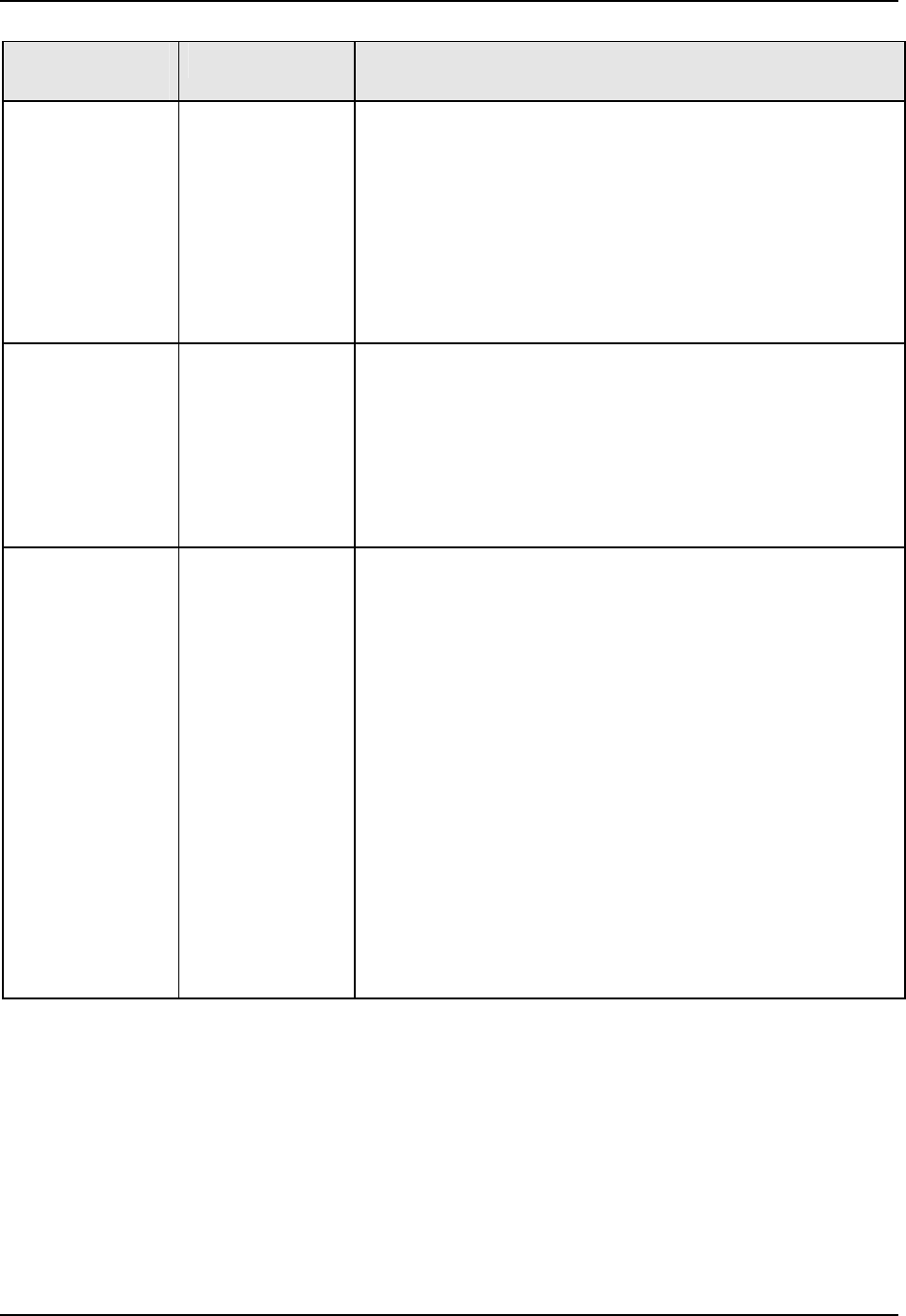
Monitoring and Operating the Controller
250 UDC3500 Universal Digital Controller Product Manual March 2012
Associated
Prompts
Contents Definition
SEGx SP
SEGxTIME
Soak segments
A soak segment is a combination of soak setpoint (value) and
a soak duration (time).
• Soaks are even number segments (2, 4, . . . 20).
• Segment 2 will be the initial soak value and soak time.
• The soak setpoint range value must be within the setpoint
high and low range limits in engineering units.
• Soak time is the duration of the soak and is determined in:
TIME – Hours:Minutes Range = 0-99 hr:59 min.
SEGX PID PID Set
These prompts will appear only when the number of PID sets
selected in the Control or Control 2 Setup Group is set to
4KEYBD. Each Ramp and Soak segment may select a specific
PID set. A Setpoint Program enabled only for Loop 1 will use
Loop 1 PID Sets. A Setpoint Program enabled only for Loop 2
will use Loop 2 PID Sets. A Setpoint Program enabled for both
Loop 1 and Loop 2 will use Loop 1 PID Sets.
Range: PID Set 1 to 4
SOAK2DEV
through
SOAK20DEV
Guaranteed Soak
Deviation Value
Each individual soak segment can have a unique guaranteed
deviation value of from 0.000 to ±99.99 in engineering units.
Guaranteed Soak deviation values greater than zero ensure
that the soak segment’s process variable is within the ±
deviation value for the configured soak time. Whenever the ±
deviation value is exceeded, the soak timer stops until the
process variable gets within the ± deviation value. While the
soak timer is halted, “R” and “H” will alternate in the upper
display. When the PV gets within the ± deviation value, the
timer will resume and a steady “R” will appear in the upper
display.
There are no guaranteed soaks whenever the deviation value
is configured to 0.00 (that is, soak segments start timing soak
duration as soon as the soak setpoint is first reached,
regardless of where the process variable remains relative to
the soak segment).
The decimal location used here corresponds decimal
configuration chosen in the Display Set up group.
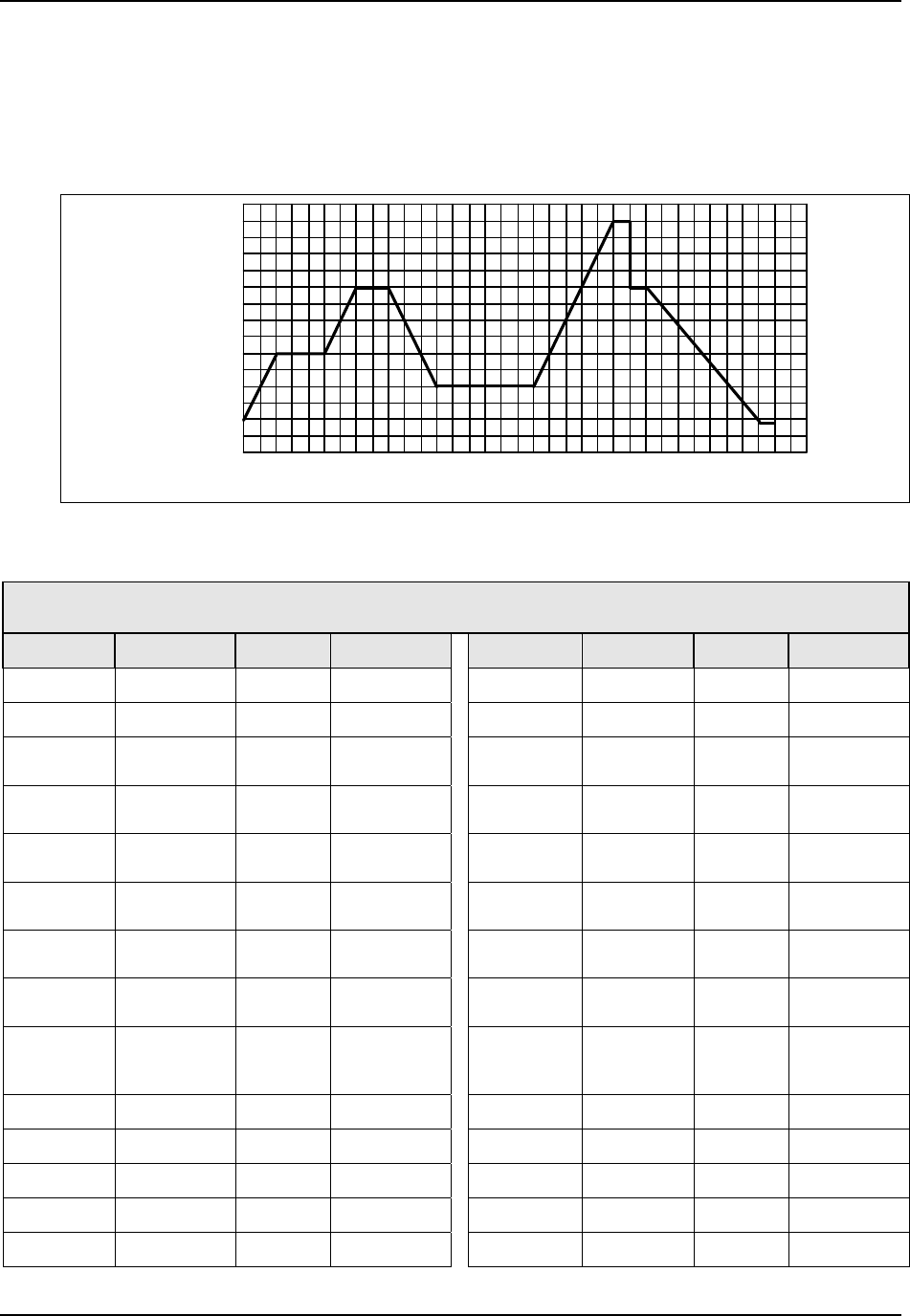
Monitoring and Operating the Controller
Ramp/soak profile example
Before you perform the actual configuration, it is recommended that you draw a
Ramp/Soak profile in the space provided for each of the “Program Record Sheets” and
fill in the associated information in the associated Tables. An example of a Ramp-Soak
Profile is shown in Figure 4-7 and Table 4-31. Start setpoint is at 200 degrees F.
500
400
200
300
°
Time/Hours
0 1 2 3 4 5 6 7 8 9 10 11 12 13 14 15 16 17
SEG 2
SEG 3
SEG 4
SEG 5
SEG 6
SEG 7
SEG 8
SEG 9
SG 10
SG 11
SG 12
SEG 1
F
2076
5
Setpoint
Figure 4-7 Ramp/Soak Profile Example
Table 4-31 Ramp/Soak Profile Example (Using 12 Segments)
Function Segment Value
Prompt Function Segment Value Prompt
Start Seg. 1
SEG4 SP
Soak SP 4 400
STRT SEG
End Seg. 12
SEG4TIME
Soak Time 4 1 hr.
END SEG
Engr. Unit for
Ramp
TIM
E
SEG5RAMP
Ramp Time 5 1 hr:30 min.
RAMP UNIT
Number of
Recy
cles
2
SEG6 SP
Soak SP 6 250
RECYCLES
Deviation
Value
0
SEG6TIME
Soak Time 6 3 hr:0 min.
SOAK DEV
Controller
Status
LAST
SP
SEG7RAMP
Ramp Time 7 2 hr:30 min.
PROG END
Controller
State at end
HOLD
SEG8 SP
Soak SP 8 500
STATE
Reset SP
Program
DISABLE
SEG8TIME
Soak Time 8 0 hr:30 min.
KEYRESET
Program
Status at
Pow
e
r up
ABORT
SEG9RAMP
Ramp Time 9 0
POWER UP
PV Hot Start DISABLE
SG10 SP
Soak SP 10 400
HOTSTART
Ramp Ti
me 1 1 hr.
SG10 TIME
Soak Time 10 0 hr:30 min.
SEG1RAMP
Soak SP 2 300
SG11RAMP
Ramp Time 11 3 hr:30 min.
SEG2 SP
Soak Ti
me 2 1 hr:30 min.
SG12 SP
Soak SP 12 200
SEG2TIME
SEG3RAMP
Ramp Time 3 1 hr.
SG12TIME
Soak Time 12 0 hr:30 min.
March 2012 UDC3500 Universal Digital Controller Product Manual 251
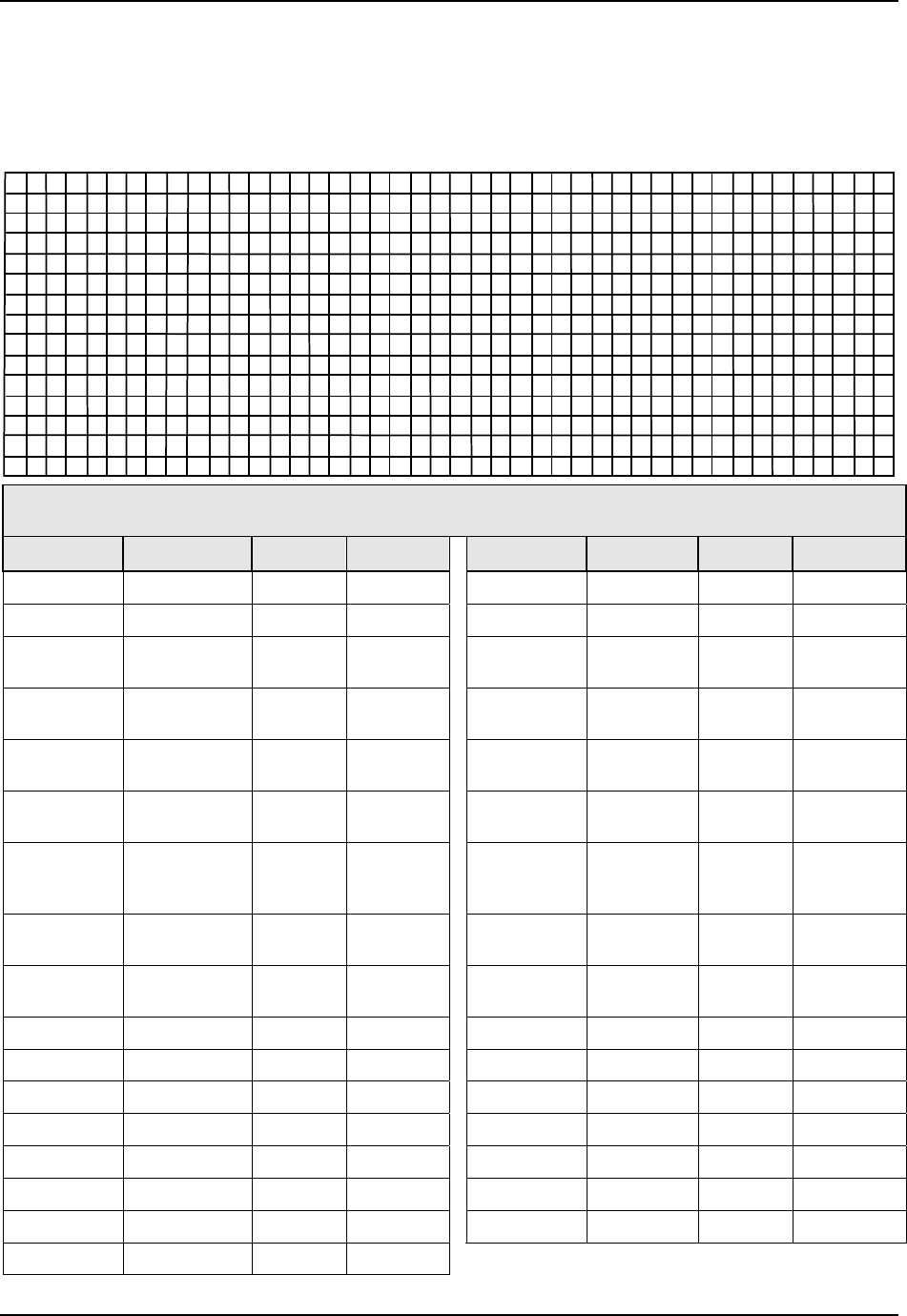
Monitoring and Operating the Controller
Figure 4-8 SP Program #1 Record Sheets
Draw your ramp/soak profile for SP Program 1 on the record sheet shown below and fill
in the associated information in the Table provided. This will give you a permanent
record of your program and will assist you when entering the Setpoint data.
Table 4-32 Program #1 Record Sheets
Function Segment Value
Prompt Function Segment Value Prompt
Start Seg.
SEG3RA
MP
Ramp Time 3
STRT SEG
End Seg.
SEG3 PID
PID Set 3
END SEG
Engr. Unit for
Ramp
SEG4 SP
Soak SP 4
RAMPUNIT
Number of
Recy
cles
SEG4TIME
Soak Time 4
RECYCLES
Controller
Status
SOAK
4DEV
Guar. Soak 4
PROG END
Controller
State at end
SEG4 PID
PID Set 4
STA
TE
Program
Status at
Pow
e
r up
SEG5RAMP
Ramp Time 5
POWER UP
Reset SP
Program
SEG5 PID
PID Set 5
KEYRESET
PV Hot Start
Program
SEG6 SP
Soak SP 6
HOT START
Ramp Ti
me 1
SEG6TIME
Soak Time 6
SEG1RAMP
PID Set 1
SOA
K6DEV
Guar. Soak 6
SEG1 PID
Soak SP 2
SEG6 PID
PID Set 6
SEG2 SP
Soak Ti
me 2
SEG7RAMP
Ramp Time 7
SEG2TIME
Guar. Soak 2
SEG7 PID
PID Set 7
SOAK2DEV
PID Set 2
SEG2 PID
252 UDC3500 Universal Digital Controller Product Manual March 2012
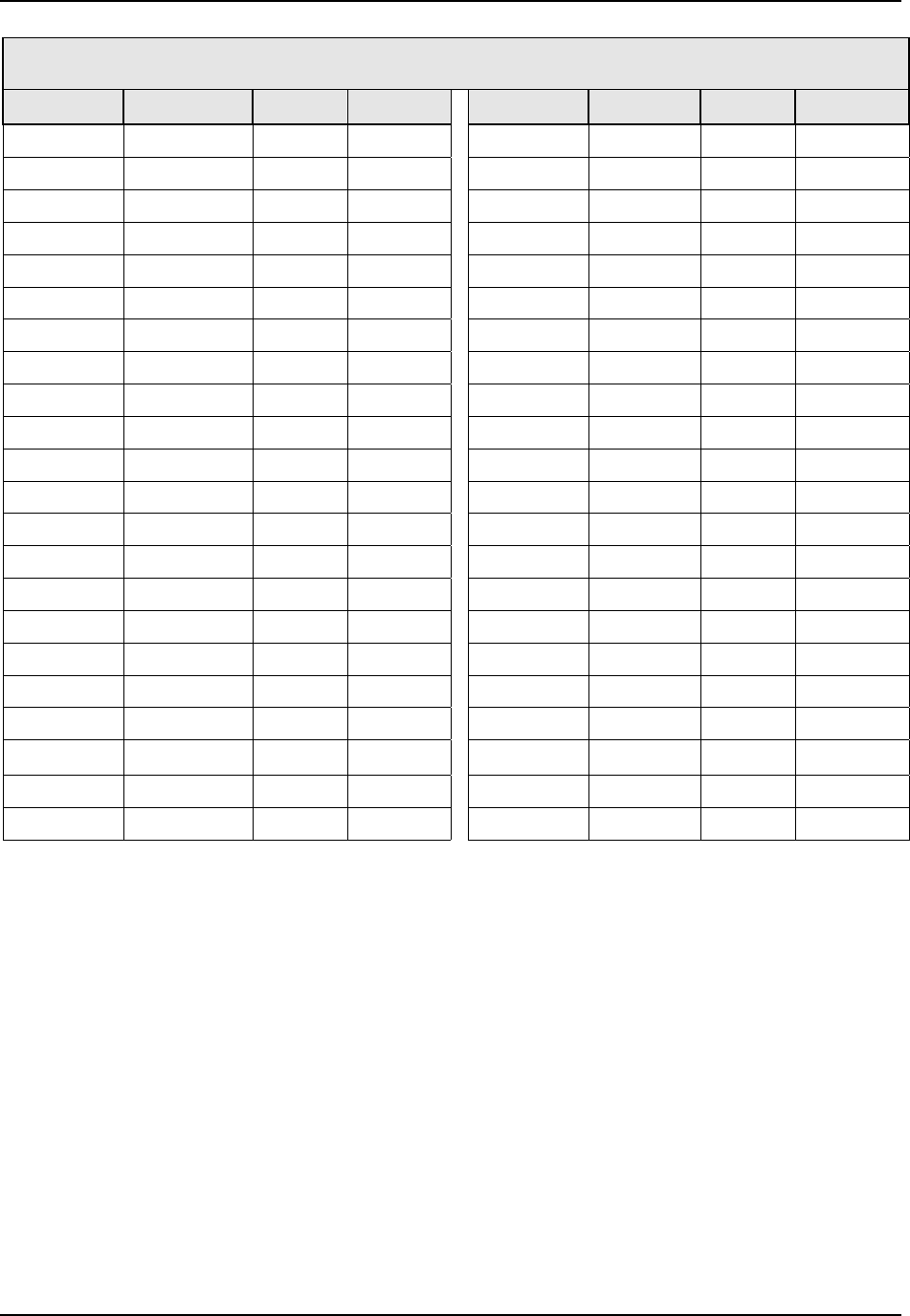
Monitoring and Operating the Controller
March 2012 UDC3500 Universal Digital Controller Product Manual 253
Table 4-32 Program #1 Record Sheets
Prompt Function Segment Value
Prompt Function Segment Value
SEG8 SP
Soak SP 8
SG15RAMP
Ramp Time 15
SEG8TIME
Soak Time 8
SG15 PID
PID Set 15
SOAK8DEV
Guar. Soak 8
SEG16 SP
Soak SP 16
SEG8 PID
PID Set 8
SG16TIME
Soak Time 16
SEG9RAMP
Ramp Time 9
SOAK16DV
Guar. Soak 16
SEG9 PID
PID Set 9
SG16 PID
PID Set 16
SG10 SP
Soak SP 10
SG17RAMP
Ramp Time 17
SG10 TIME
Soak Time 10
SG17 PID
PID Set 17
SOAK10DV
Guar. Soak 10
SEG18 SP
Soak SP 18
SG10 PID
PID Set 10
SG18TIME
Soak Time 18
SG11RAMP
Ramp Time 11
SOAK18DV
Guar. Soak 18
SG11 PID
PID Set 11
SG18 PID
PID Set 18
SG12 SP
Soak SP 12
SG19RAMP
Ramp Time 19
SG12TIME
Soak Time 12
SG19 PID
PID Set 19
SOAK12DV
Guar. Soak 12
SEG20 SP
Soak SP 20
SG12 PID
PID Set 12
SG20TIME
Soak Time 20
SG13RAMP
Ramp Time 13
SOAK20DV
Guar. Soak 20
SG13 PID
PID Set 13
SG20 PID
PID Set 20
SEG14 SP
Soak SP 14
SG14TIME
Soak Time 14
SOAK14DV
Guar. Soak 14
SG14 PID
PID Set 14
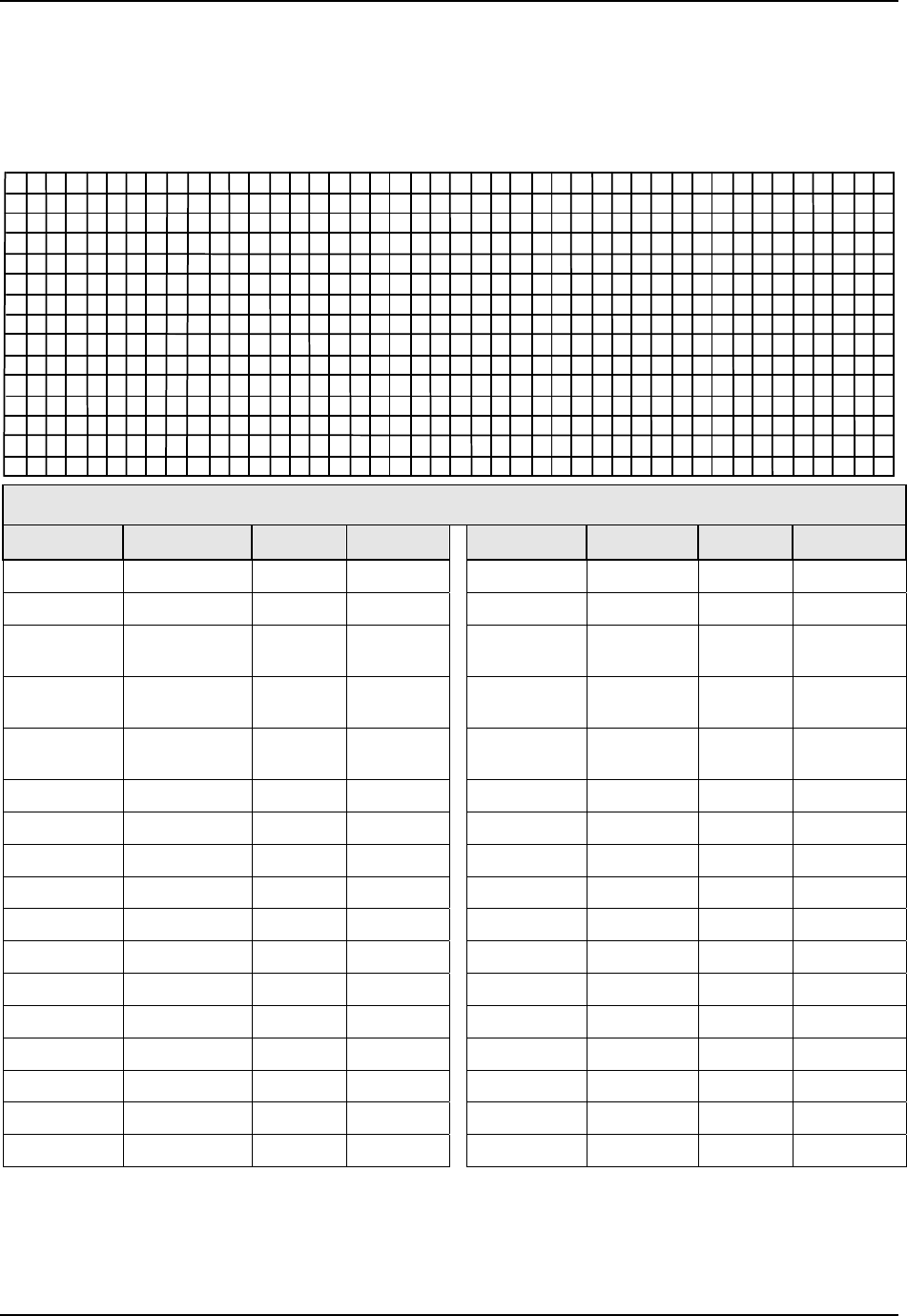
Monitoring and Operating the Controller
Figure 4-9 SP Program #2 Record Sheets
Draw your ramp/soak profile for SP Program 2 on the record sheet shown below and fill
in the associated information in the Table provided. This will give you a permanent
record of your program and will assist you when entering the Setpoint data.
Table 4-33 Program #2 Record Sheets
Function Segment Value
Prompt Function Segment Value Prompt
Start Seg.
SEG5RA
MP
Ramp Time 5
STRT SEG
End Seg.
SEG5 PID
PID Set 5
END SEG
Engr. Unit for
Ramp
SEG6 SP
Soak SP 6
RAMPUNIT
Number of
Recy
cles
SEG6TIME
Soak Time 6
RECYCLES
PV Hot Start
Program
SOAK
6DEV
Guar. Soak 6
HOT START
Ramp Ti
me 1
SEG6 PID
PID Set 6
SEG1RAMP
PID Set 1
SEG7RA
MP
Ramp Time 7
SEG1 PID
Soak SP 2
SEG7 PID
PID Set 7
SEG2 SP
Soak Ti
me 2
SEG8 SP
Soak SP 8
SEG2TIME
Guar. Soak 2
SEG8TIME
Soak T
ime 8
SOAK2DEV
PID Set 2
SOA
K8DEV
Guar. Soak 8
SEG2 PID
Ramp Ti
me 3
SEG8 PID
PID Set 8
SEG3RAMP
PID Set 3
SEG9RA
MP
Ramp Time 9
SEG3 PID
Soak SP 4
SEG9 PID
PID Set 9
SEG4 SP
Soak Ti
me 4
SG10 SP
Soak SP 10
SEG4TIME
Guar. Soak 4
SG10 T
IME
Soak Time 10
SOAK4DEV
SEG4 PID
PID Set 4
SOAK10DV
Guar. Soak 10
254 UDC3500 Universal Digital Controller Product Manual March 2012

Monitoring and Operating the Controller
March 2012 UDC3500 Universal Digital Controller Product Manual 255
Table 4-33 Program #2 Record Sheets
Prompt Function Segment Value
Prompt Function Segment Value
SG11RAMP
Ramp Time 11
SG17RAMP
Ramp Time 17
SG11 PID
PID Set 11
SG17 PID
PID Set 17
SG12 SP
Soak SP 12
SEG18 SP
Soak SP 18
SG12TIME
Soak Time 12
SG18TIME
Soak Time 18
SOAK12DV
Guar. Soak 12
SOAK18DV
Guar. Soak 18
SG12 PID
PID Set 12
SG18 PID
PID Set 18
SG13RAMP
Ramp Time 13
SG19RAMP
Ramp Time 19
SG13 PID
PID Set 13
SG19 PID
PID Set 19
SEG14 SP
Soak SP 14
SEG20 SP
Soak SP 20
SG14TIME
Soak Time 14
SG20TIME
Soak Time 20
SOAK14DV
Guar. Soak 14
SOAK20DV
Guar. Soak 20
SG14 PID
PID Set 14
SG20 PID
PID Set 20
SG15RAMP
Ramp Time 15
SG15 PID
PID Set 15
SEG16 SP
Soak SP 16
SG16TIME
Soak Time 16
SOAK16DV
Guar. Soak 16
SG16 PID
PID Set 16
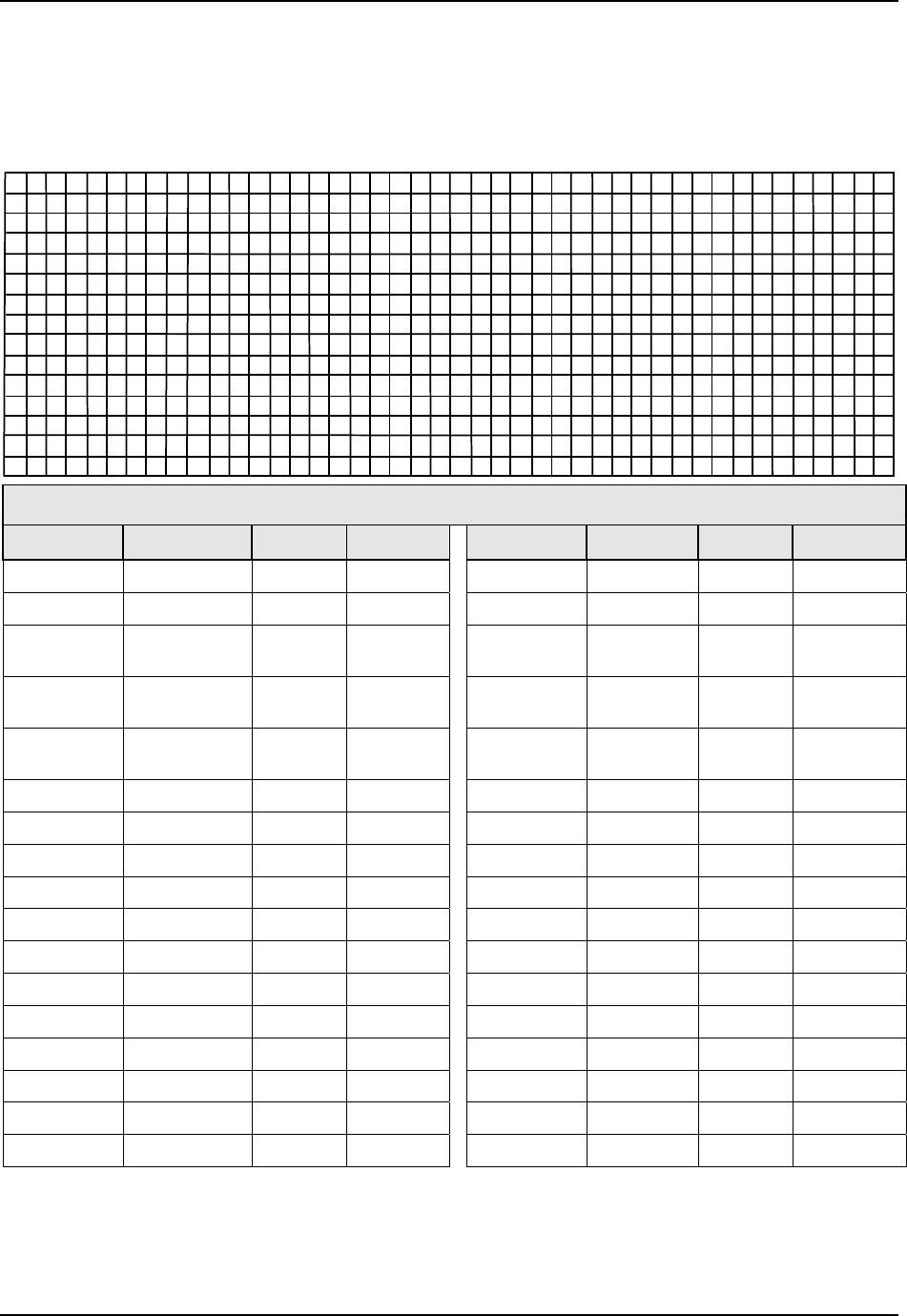
Monitoring and Operating the Controller
Figure 4-10 SP Program #3 Record Sheets
Draw your ramp/soak profile for SP Program 3 on the record sheet shown below and fill
in the associated information in the Table provided. This will give you a permanent
record of your program and will assist you when entering the Setpoint data.
Table 4-34 Program #3 Record Sheets
Function Segment Value
Prompt Function Segment Value Prompt
Start Seg.
SEG5RA
MP
Ramp Time 5
STRT SEG
End Seg.
SEG5 PID
PID Set 5
END SEG
Engr. Unit for
Ramp
SEG6 SP
Soak SP 6
RAMPUNIT
Number of
Recy
cles
SEG6TIME
Soak Time 6
RECYCLES
PV Hot Start
Program
SOAK
6DEV
Guar. Soak 6
HOT START
Ramp Ti
me 1
SEG6 PID
PID Set 6
SEG1RAMP
PID Set 1
SEG7RA
MP
Ramp Time 7
SEG1 PID
Soak SP 2
SEG7 PID
PID Set 7
SEG2 SP
Soak Ti
me 2
SEG8 SP
Soak SP 8
SEG2TIME
Guar. Soak 2
SEG8TIME
Soak T
ime 8
SOAK2DEV
PID Set 2
SOA
K8DEV
Guar. Soak 8
SEG2 PID
Ramp Ti
me 3
SEG8 PID
PID Set 8
SEG3RAMP
PID Set 3
SEG9RA
MP
Ramp Time 9
SEG3 PID
Soak SP 4
SEG9 PID
PID Set 9
SEG4 SP
Soak Ti
me 4
SG10 SP
Soak SP 10
SEG4TIME
Guar. Soak 4
SG10 T
IME
Soak Time 10
SOAK4DEV
SEG4 PID
PID Set 4
SOAK10DV
Guar. Soak 10
256 UDC3500 Universal Digital Controller Product Manual March 2012
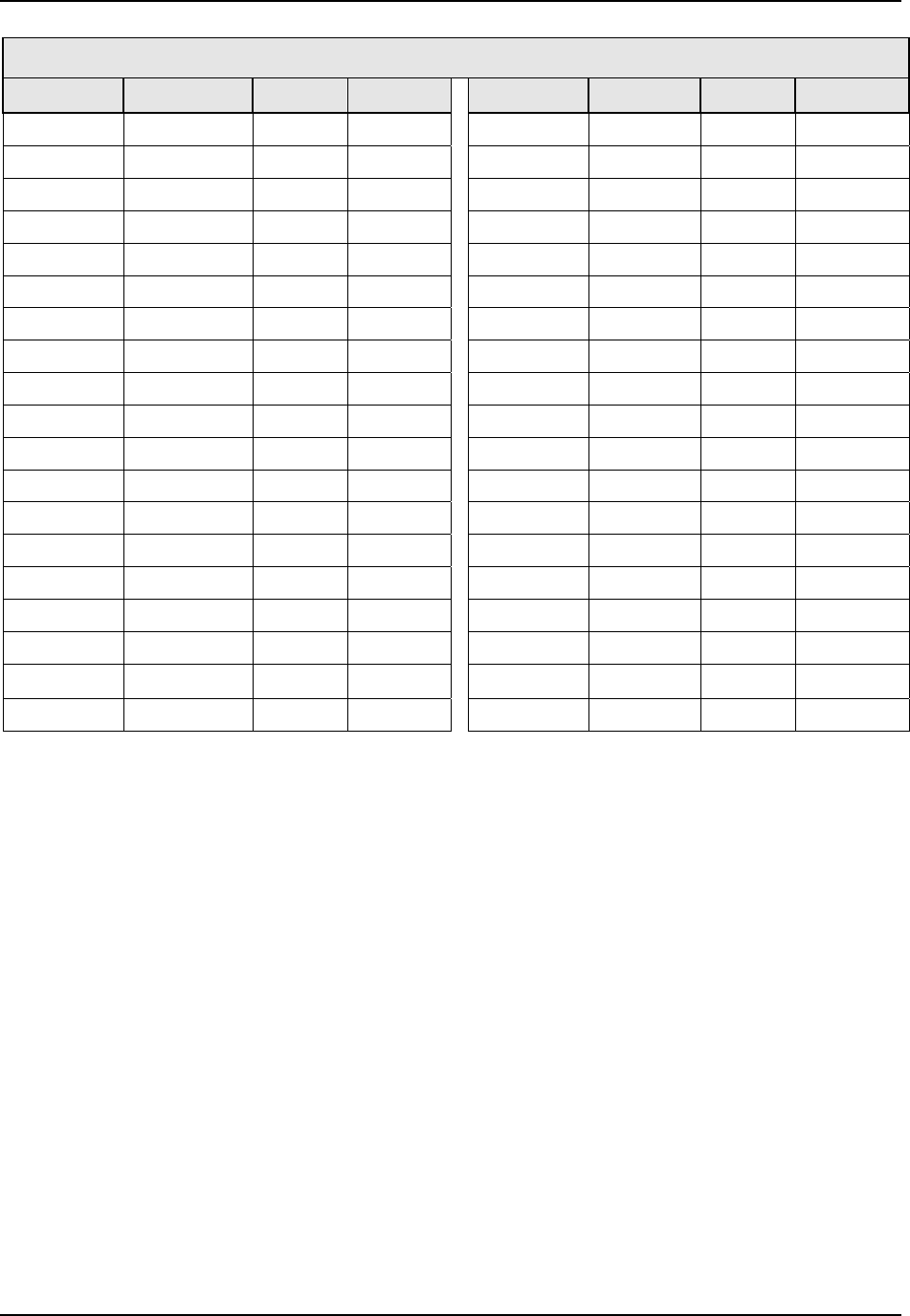
Monitoring and Operating the Controller
March 2012 UDC3500 Universal Digital Controller Product Manual 257
Table 4-34 Program #3 Record Sheets
Prompt Function Segment Value
Prompt Function Segment Value
SG11RAMP
Ramp Time 11
SG17RAMP
Ramp Time 17
SG11 PID
PID Set 11
SG17 PID
PID Set 17
SG12 SP
Soak SP 12
SEG18 SP
Soak SP 18
SG12TIME
Soak Time 12
SG18TIME
Soak Time 18
SOAK12DV
Guar. Soak 12
SOAK18DV
Guar. Soak 18
SG12 PID
PID Set 12
SG18 PID
PID Set 18
SG13RAMP
Ramp Time 13
SG19RAMP
Ramp Time 19
SG13 PID
PID Set 13
SG19 PID
PID Set 19
SEG14 SP
Soak SP 14
SEG20 SP
Soak SP 20
SG14TIME
Soak Time 14
SG20TIME
Soak Time 20
SOAK14DV
Guar. Soak 14
SOAK20DV
Guar. Soak 20
SG14 PID
PID Set 14
SG20 PID
PID Set 20
SG15RAMP
Ramp Time 15
SG15 PID
PID Set 15
SEG16 SP
Soak SP 16
SG16TIME
Soak Time 16
SOAK16DV
Guar. Soak 16
SG16 PID
PID Set 16
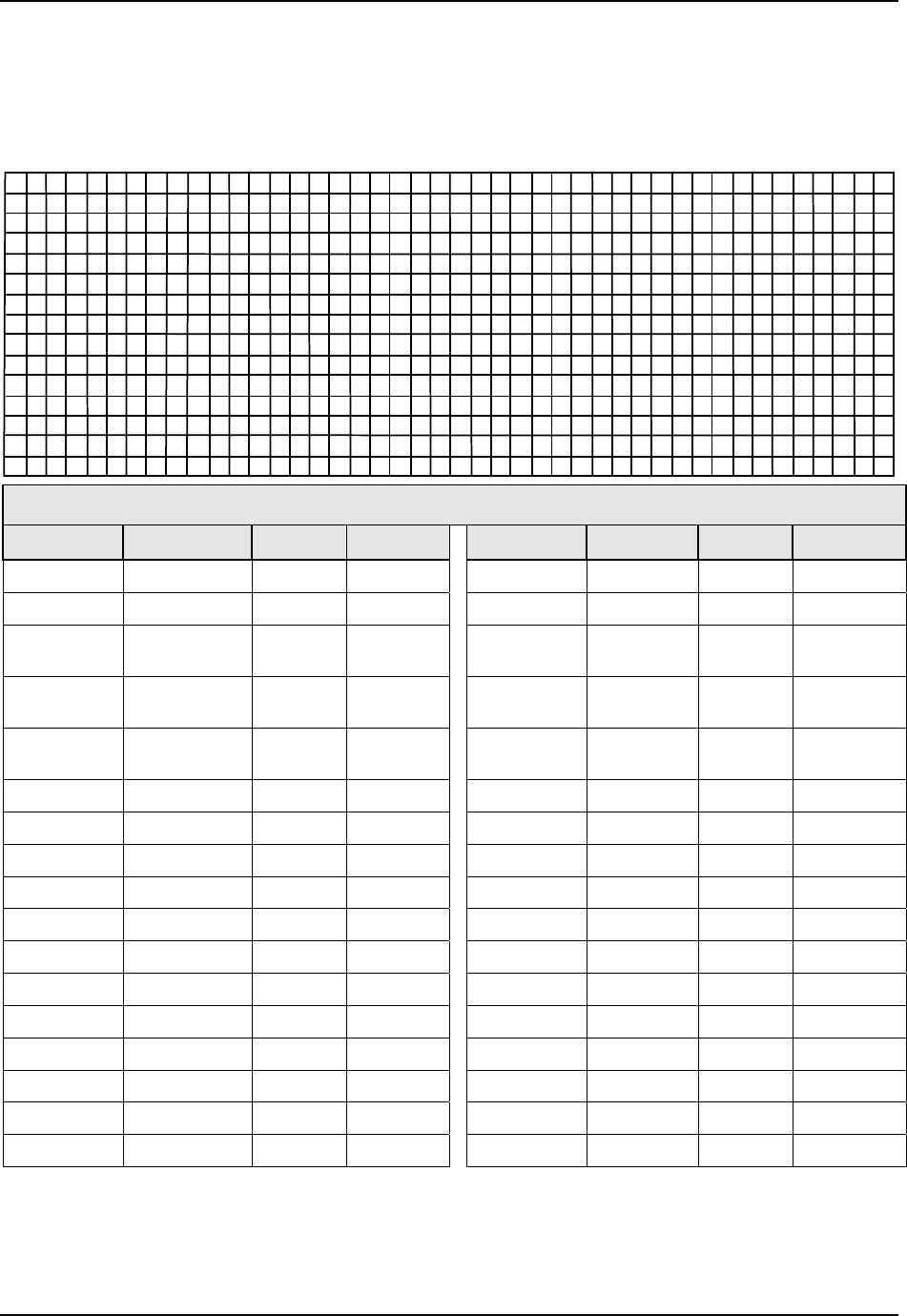
Monitoring and Operating the Controller
Figure 4-11 SP Program #4 Record Sheets
Draw your ramp/soak profile for SP Program 4 on the record sheet shown below and fill
in the associated information in the Table provided. This will give you a permanent
record of your program and will assist you when entering the Setpoint data.
Table 4-35 Program #4 Record Sheets
Function Segment Value
Prompt Function Segment Value Prompt
Start Seg.
SEG5RA
MP
Ramp Time 5
STRT SEG
End Seg.
SEG5 PID
PID Set 5
END SEG
Engr. Unit for
Ramp
SEG6 SP
Soak SP 6
RAMPUNIT
Number of
Recy
cles
SEG6TIME
Soak Time 6
RECYCLES
PV Hot Start
Program
SOAK
6DEV
Guar. Soak 6
HOT START
Ramp Ti
me 1
SEG6 PID
PID Set 6
SEG1RAMP
PID Set 1
SEG7RA
MP
Ramp Time 7
SEG1 PID
Soak SP 2
SEG7 PID
PID Set 7
SEG2 SP
Soak Ti
me 2
SEG8 SP
Soak SP 8
SEG2TIME
Guar. Soak 2
SEG8TIME
Soak T
ime 8
SOAK2DEV
PID Set 2
SOA
K8DEV
Guar. Soak 8
SEG2 PID
Ramp Ti
me 3
SEG8 PID
PID Set 8
SEG3RAMP
PID Set 3
SEG9RA
MP
Ramp Time 9
SEG3 PID
Soak SP 4
SEG9 PID
PID Set 9
SEG4 SP
Soak Ti
me 4
SG10 SP
Soak SP 10
SEG4TIME
Guar. Soak 4
SG10 T
IME
Soak Time 10
SOAK4DEV
SEG4 PID
PID Set 4
SOAK10DV
Guar. Soak 10
258 UDC3500 Universal Digital Controller Product Manual March 2012
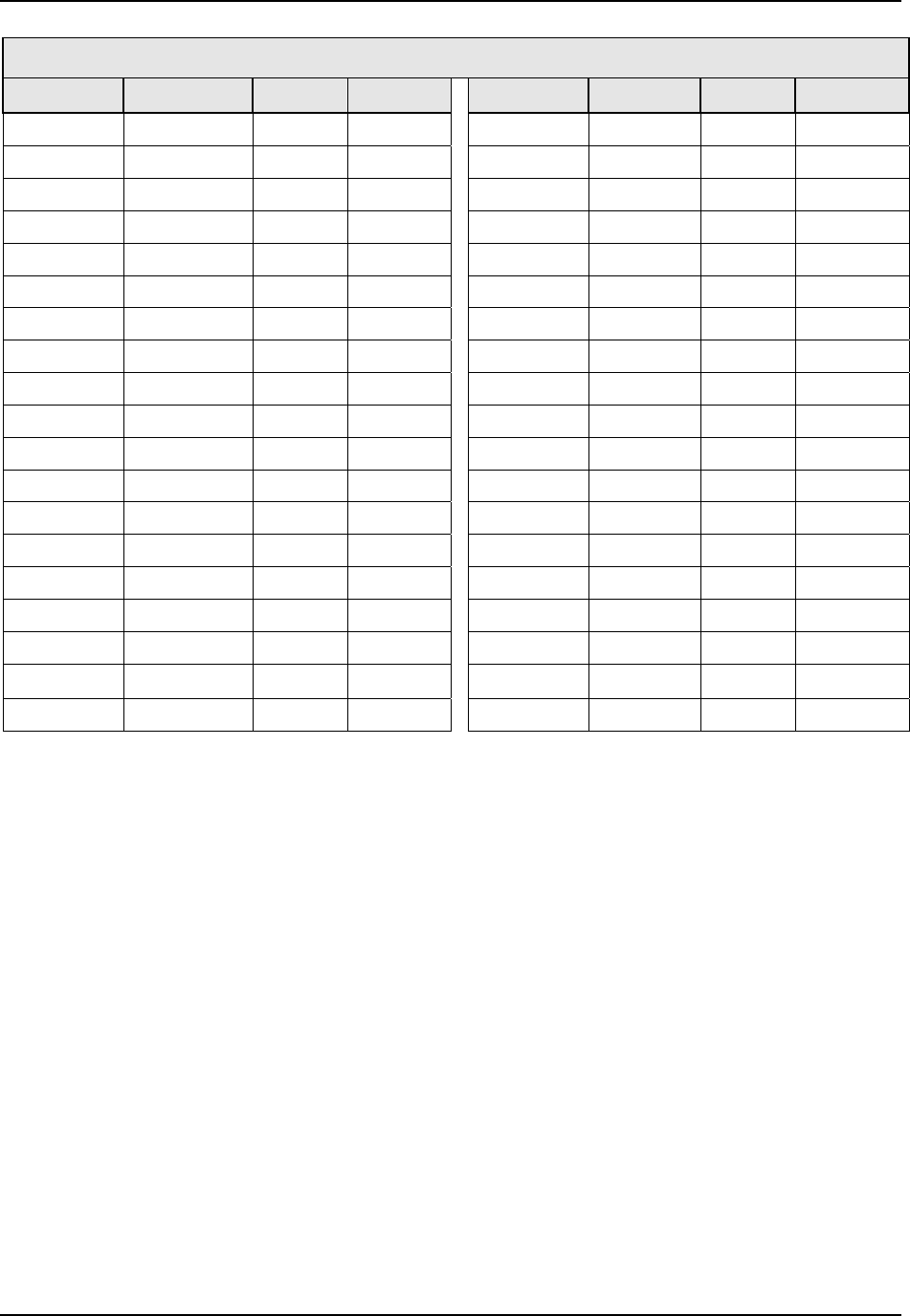
Monitoring and Operating the Controller
Table 4-35 Program #4 Record Sheets
Function Segment Value Prompt
Prompt Function Segment Value
SG10 PID
PID Set 10
Ramp Ti
me 11
SG17RAMP
Ramp Time 17
SG11RAMP
PID Set 11 PID Set
SG11 PID SG17 PID
17
SG12 SP
Soak SP 12
SEG18 SP
Soak SP 18
Soak Ti
me 12 Soak Time
SG12TIME SG18TIME
18
SOAK12DV
Guar. Soak 12 Guar. Soak
SOAK18DV
18
SG12 PID
PID Set 12 PID Set 18
SG18 PID
Ramp Ti
me 13
SG19RAMP
Ramp Time 19
SG13RAMP
PID Set 13 PID Set 19
SG13 PID SG19 PID
SEG14 SP
Soak SP 14
SEG20 SP
Soak SP 20
SG14TIME
Soak Time 14
SG20TIME
Soak Time 20
Guar. Soak 14
SOA
K20DV
Guar. Soak 20
SOAK14DV
PID Set 14
SG20 PID
PID Set 20
SG14 PID
Ramp Ti
me 15
SG15RAMP
PID Set 15
SG15 PID
Soak SP 16
SEG16 SP
Soak Ti
me 16
SG16TIME
Guar. Soak 16
SOAK16DV
PID Set 16
SG16 PID
March 2012 UDC3500 Universal Digital Controller Product Manual 259
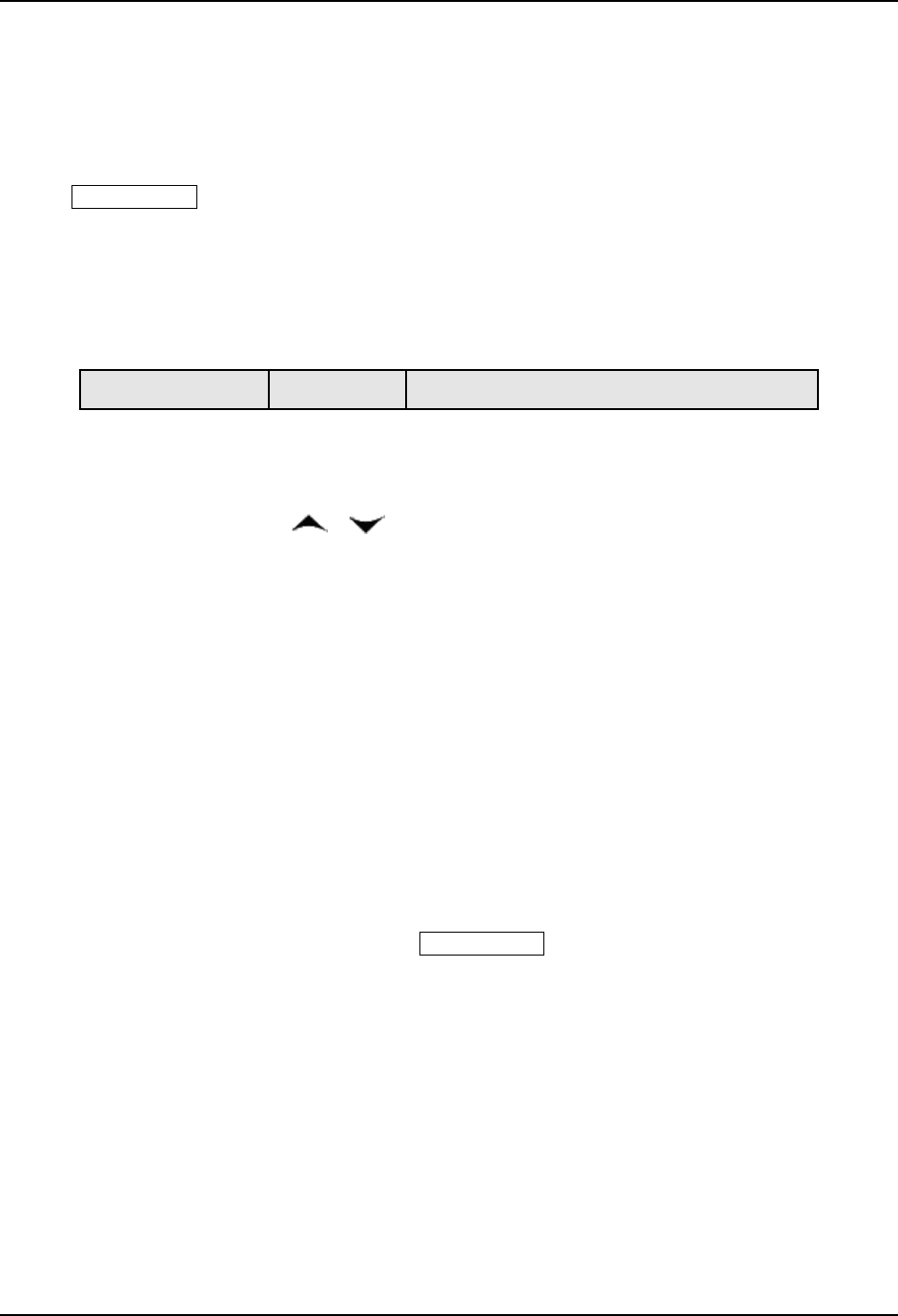
Monitoring and Operating the Controller
Run/Monitor the program
Prior to running the program, make sure all the “SP PROG” function prompts under the
Set Up group “SP RAMP” have been configured with the required data.
“H” appears in the upper display indicating that the program is in the HOLD state.
ATTENTION SP Program parameter cannot be changed during RUN state; the unit must
be in the HOLD state in order to change parameters.
Run/Monitor functions
Table 4-36 lists all the functions required to run and monitor the program.
Table 4-36 Run/Monitor Functions
Press Result Function
Set the Local
Setpoint
Lower
Display
Upper Display = PV value
Lower Display = SP
or
To set the Local Setpoint value to where you
want the program to start out.
Run State
Run/Hold
Initiates the setpoint program.
“R” appears in the upper display indicating that
the program is running.
Run/Hold
Holds the setpoint program.
“H” appears in the upper display indicating that
the program is in the HOLD state.
The setpoint holds at the current setpoint.
Hold State
External Hold
If one of the Digital Inputs is programmed for
the HOLD function, then contact closure
places the controller in the HOLD state, if the
setpoint program is running.
The upper display will periodically show “H”
while the switch is closed.
ATTENTION The keyboard takes priority
over the external switch for the RUN/HOLD
function.
Reopening the HOLD switch runs the
program.
Viewing the present
ramp or soak
segment number
and time
Lower
Display
until you see
Upper Display = PV value
Lower Display = XXRAHH.MM for Ramps or =
XXSKHH.MM for Soaks
Time remaining in the SEGMENT in hours and
minutes. XX = The segment number, 1 to 12.
Continued
260 UDC3500 Universal Digital Controller Product Manual March 2012
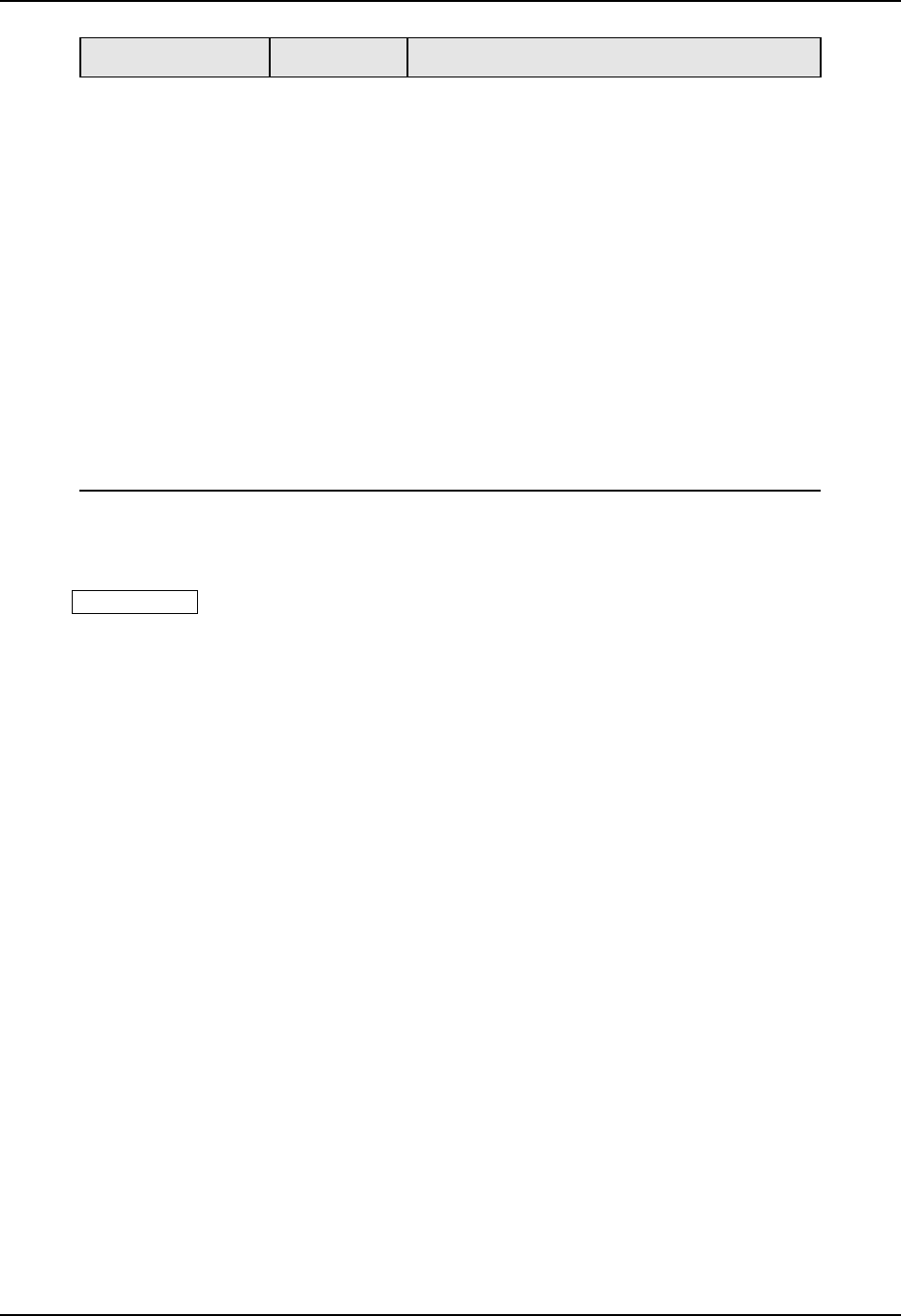
Monitoring and Operating the Controller
March 2012 UDC3500 Universal Digital Controller Product Manual 261
Function Press Result
Viewing the number
of cycles left in the
program
Lower
Display
until you see
Upper Display = PV value
Lower Display = RECYC XX
Number of cycles remaining in the setpoint
program. X = 0 to 99
End Program
When the final segment is completed, the “R”
in the upper display either changes to “H” (if
configured for HOLD state), or disappears (if
configured for disable of setpoint
programming).
The controller then either operates at the
last setpoint in the program or goes into
manual mode/failsafe output, depending
upon the “LAST” configuration.
Disable Program See Section 3 – Configuration Group “SP
PROG” for details
.
Power outage
ATTENTION If power is lost during a program, upon power-up the controller will be in
hold and the setpoint value will be the setpoint value prior to the beginning of the
setpoint program. The program is placed in hold at the beginning. The mode will be as
configured under “PWR UP” in the “CONTROL” group.
Digital Input (remote switch) operation
Program can be placed in RUN, HOLD, RERUN, or BEGIN state through a remote dry
contact connected to optional digital input terminals, as follows:
RUN—contact closure places Program in RUN state, OR
HOLD—contact closure places Program in HOLD state
RERUN—contact closure allows the Setpoint Programmer to be reset to the initial
segment of its current cycle, unit stays in previous mode.
Opening the contact will cause the Controller to revert to its original state.
BEGIN— Contact closure resets the SP Program back to the beginning of the first
segment in the program and puts the program in the HOLD mode. Program cycle number
is not affected. Reopening the switch has no effect.
Opening the contact will cause the Controller to revert to its original state.
Setpoint Program Event Alarms
See the example in Section 0 for help in configuring Alarm Events based upon segments
in the Setpoint Program.
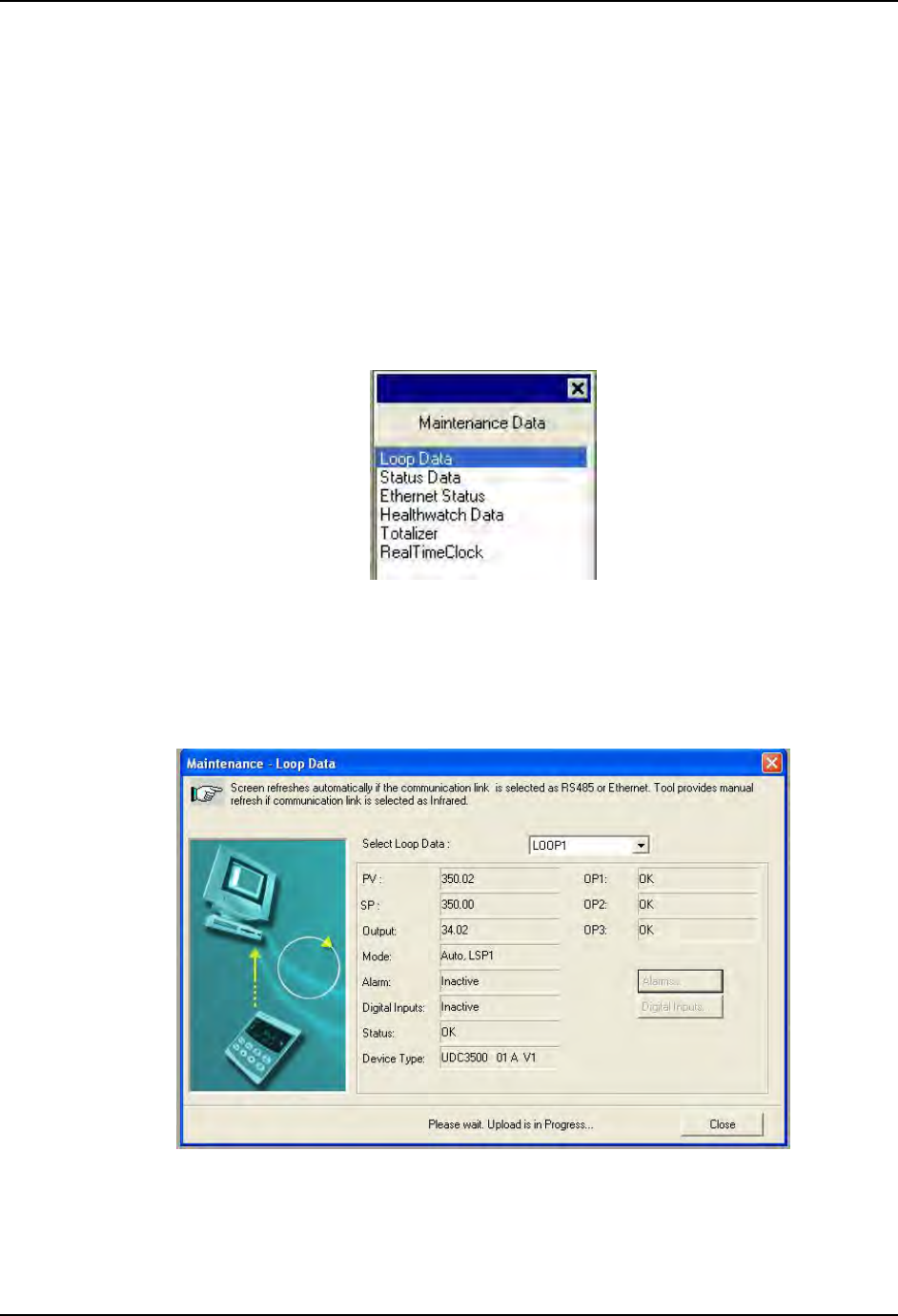
Monitoring and Operating the Controller
4.31 P.I.E. Tool Maintenance Screens
Introduction
This controller uses special P.I.E. Tool
®
Maintenance Screens which allow remote access
and access to functions not accessible via the controller’s display and keyboard. The
figures in this section show screen-shots of the Maintenance Screens from the PC version
of the P.I.E. Tool
®
. Pocket PC Maintenance Screens are generally similar in format but
smaller.
Loop Data
Select “Loop Data” from the “Maintenance Data” menu.
The Loop Data screen allows you to see the current status of each process loop. “OP1, 2
and 3” windows indicate the status of the current outputs. If a current output is not
installed, the OP status for that output is always “OK.”
The “Alarms” and “Digital Inputs” buttons allow you to see the current status of each
alarm setpoint and digital input.
Figure 4-12 Loop Data Maintenance Screen
262 UDC3500 Universal Digital Controller Product Manual March 2012
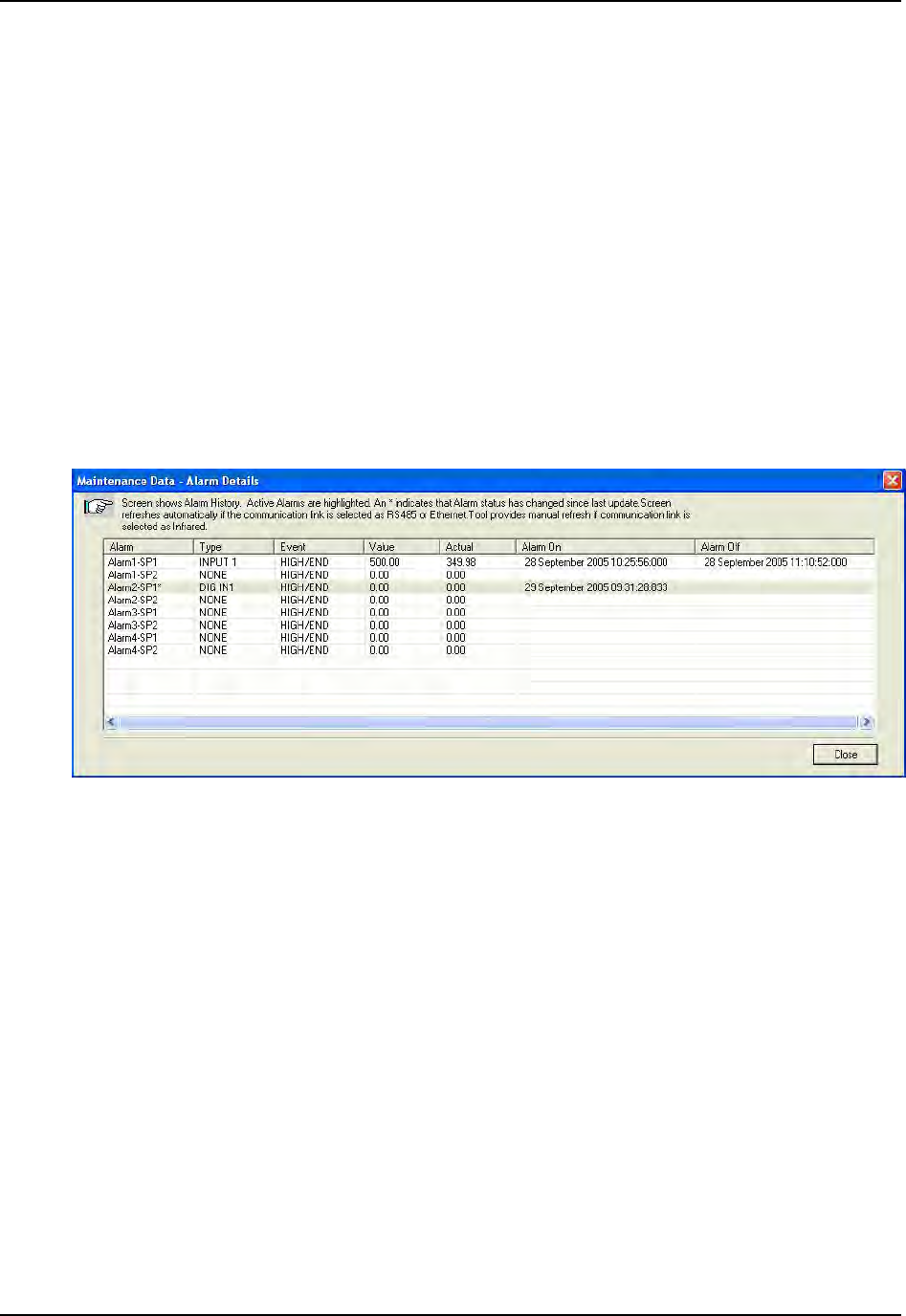
Monitoring and Operating the Controller
Loop Data – Alarm Details
This screen appears when you click on the “Alarm” button on the Loop Data
Maintenance Screen and shows the status of each alarm setpoint. “NONE” in the Type
column indicates that the alarm is disabled. Highlighted alarms are currently active. An
asterisk (*) indicates that the alarm has changed state since the last communications
transaction.
If the controller does not have the Real Time Clock option, then the “Alarm On” and
“Alarm Off” columns are always blank. If the controller does have the Real Time Clock
option, then these columns will show the date and time that each alarm setpoint turned on
and turned off. A blank in the “Alarm On” column indicates that the alarm has never
been activated and a blank in the “Alarm Off” column indicates that the alarm has never
been inactive.
See Section 3.24 for other information about configuring Alarms.
Figure 4-13 Alarm Details Maintenance Screen
March 2012 UDC3500 Universal Digital Controller Product Manual 263
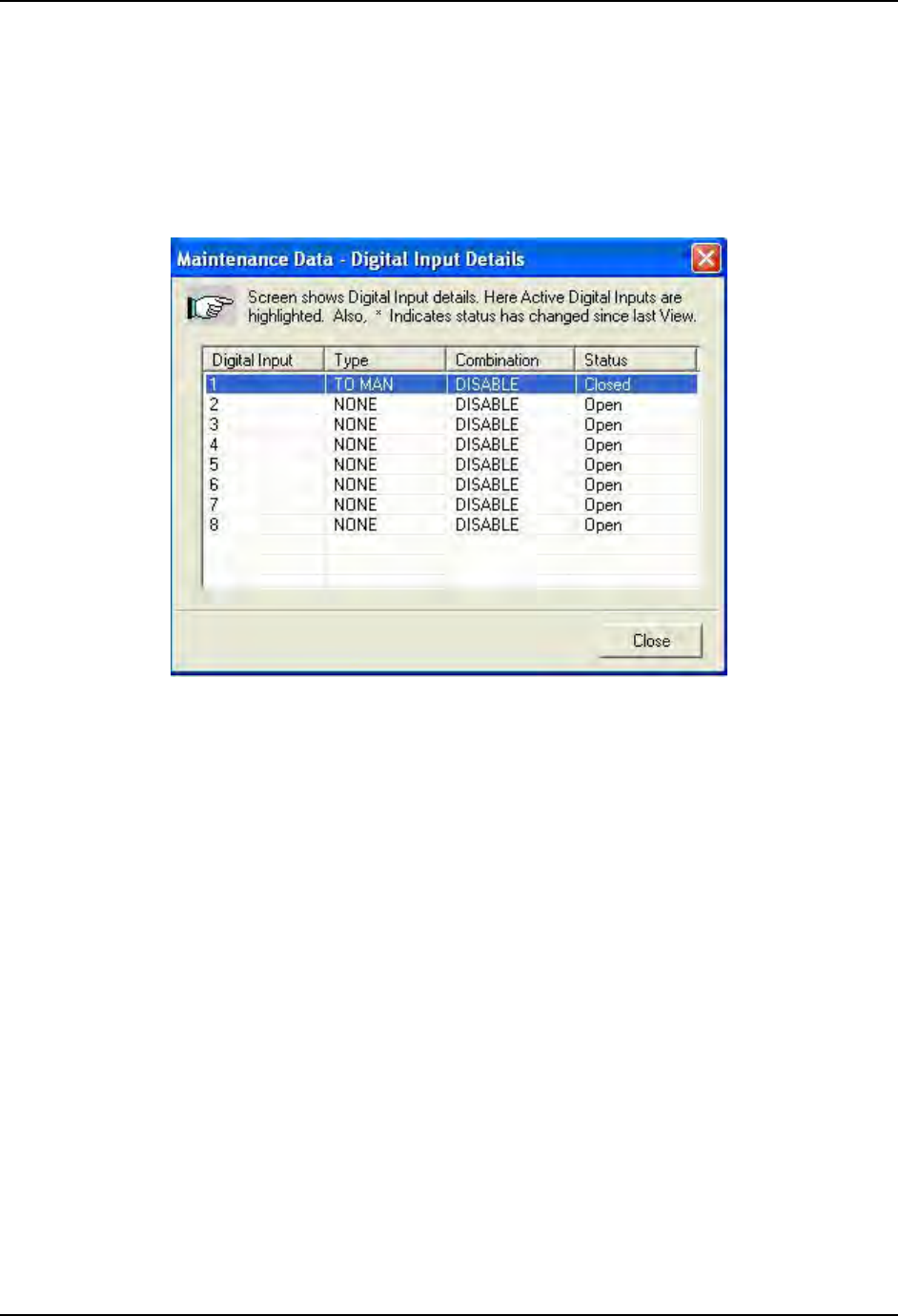
Monitoring and Operating the Controller
Loop Data – Digital Input Details
This screen appears when you click on the “Digital Inputs” button on the Loop Data
Maintenance Screen and shows the status of each Digital Input. “NONE” in the Type
column indicates that the Digital Input is disabled. Highlighted Digital Inputs are
currently active. An asterisk (*) indicates that the alarm has changed state since the last
communications transaction.
Figure 4-14 Digital Inputs Details Maintenance Screen
264 UDC3500 Universal Digital Controller Product Manual March 2012
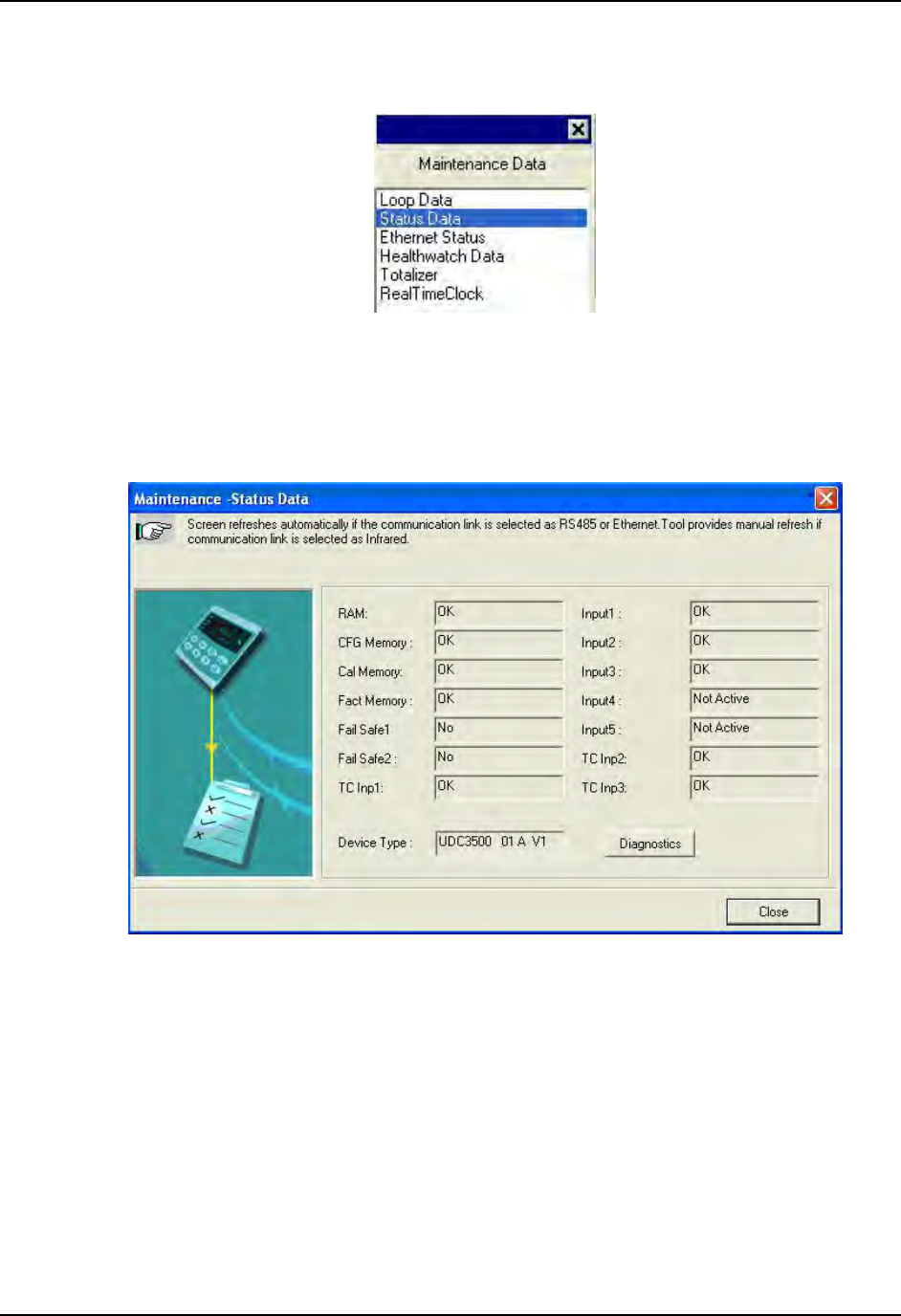
Monitoring and Operating the Controller
Status Data
Select “Status Data” from the “Maintenance Data” menu.
The Status Data screen lets you see the current status of the controller’s diagnostics. If
the controller has detected a problem, this screen will show the detected problem. If the
controller is equipped with the Real Time Clock Option, then pressing the “Diagnostics”
button will show the time and dates that the problem occurred and when it was cleared.
Figure 4-15 Status Data Maintenance Screen
March 2012 UDC3500 Universal Digital Controller Product Manual 265
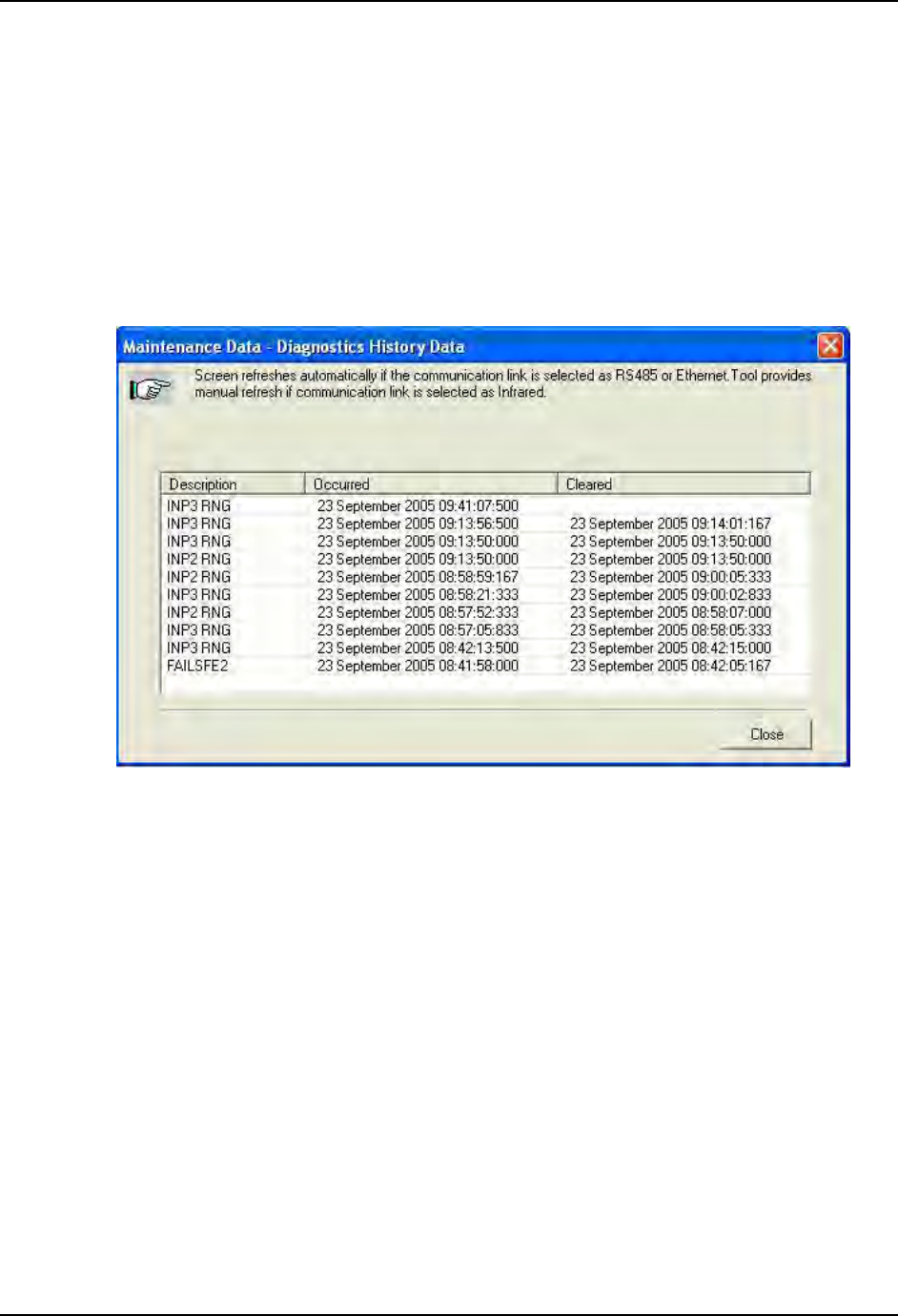
Monitoring and Operating the Controller
Status Data – Diagnostics History
This screen is only in instruments that have the Real Time Clock option and appears
when you click on the “Diagnostics” button on the Status Data Maintenance Screen. The
Diagnostic screen shows the last ten diagnostic conditions that have occurred. A blank in
the “Cleared” column indicates that the problem still exists. Essentially, this screen
shows the same diagnostic messages as available on the controller via the lower display
window.
See Section 7 for other information about Troubleshooting and Diagnostics.
Figure 4-16 Diagnostic History Maintenance Screen
266 UDC3500 Universal Digital Controller Product Manual March 2012
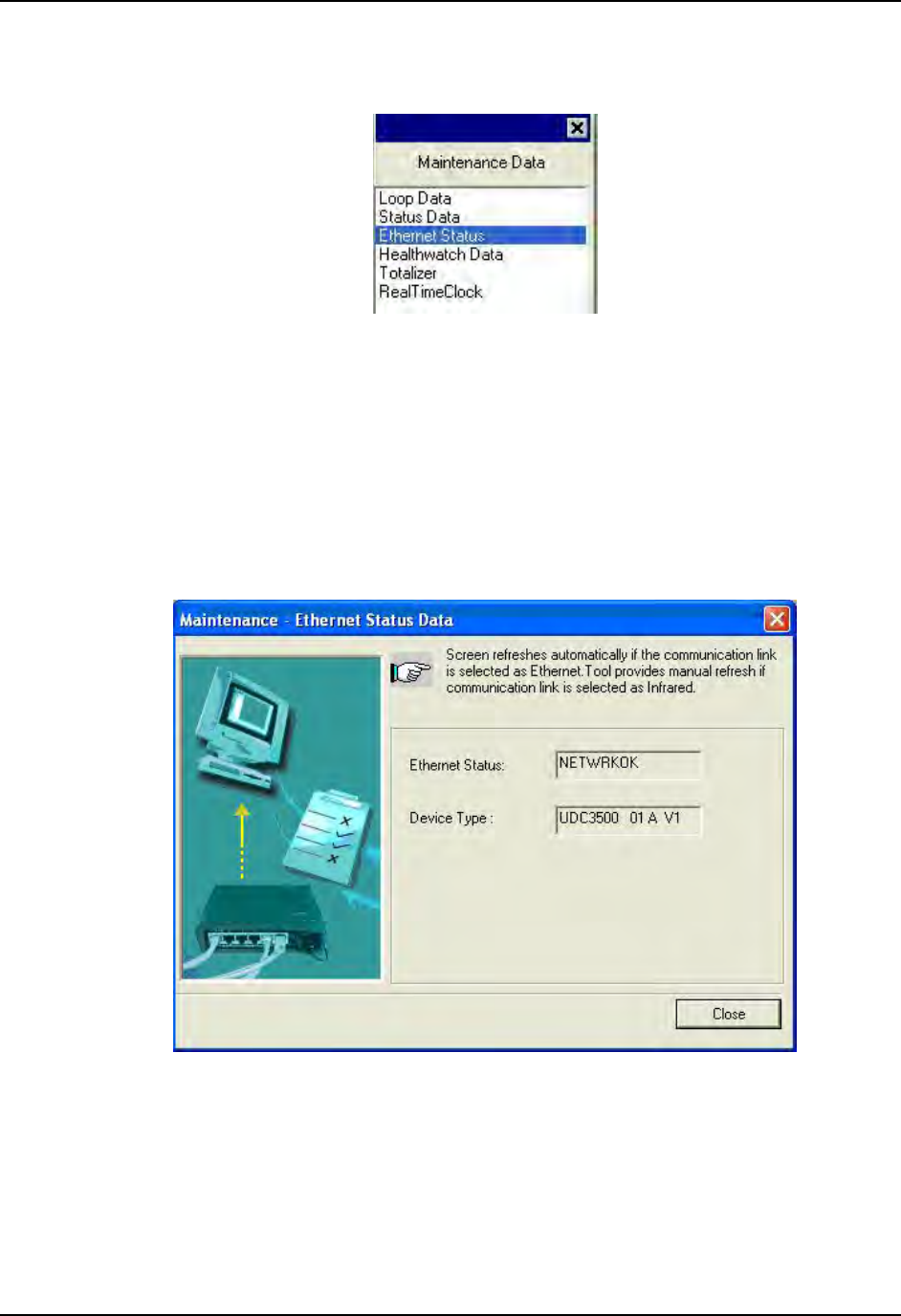
Monitoring and Operating the Controller
Ethernet Status
Select “Ethernet Status” from the “Maintenance Data” menu.
This screen only appears in instruments that have the Ethernet Communications option.
Essentially, this screen shows the same Ethernet diagnostic messages as available on the
controller via the lower display window. See Section 7.5 for details.
The Ethernet Status screen shows the network status of the Ethernet Link. This m
a
y be
accessed either via Ethernet or via Infrared communications. Not all diagnostic messages
are available via Ethernet Communications. For example, if the Ethernet cable is
unplugged, then the instrument cannot send up the “EUNPLGED” diagnostic message
via Ethernet.
Figure 4-17 Ethernet Status Maintenance Screen
March 2012 UDC3500 Universal Digital Controller Product Manual 267
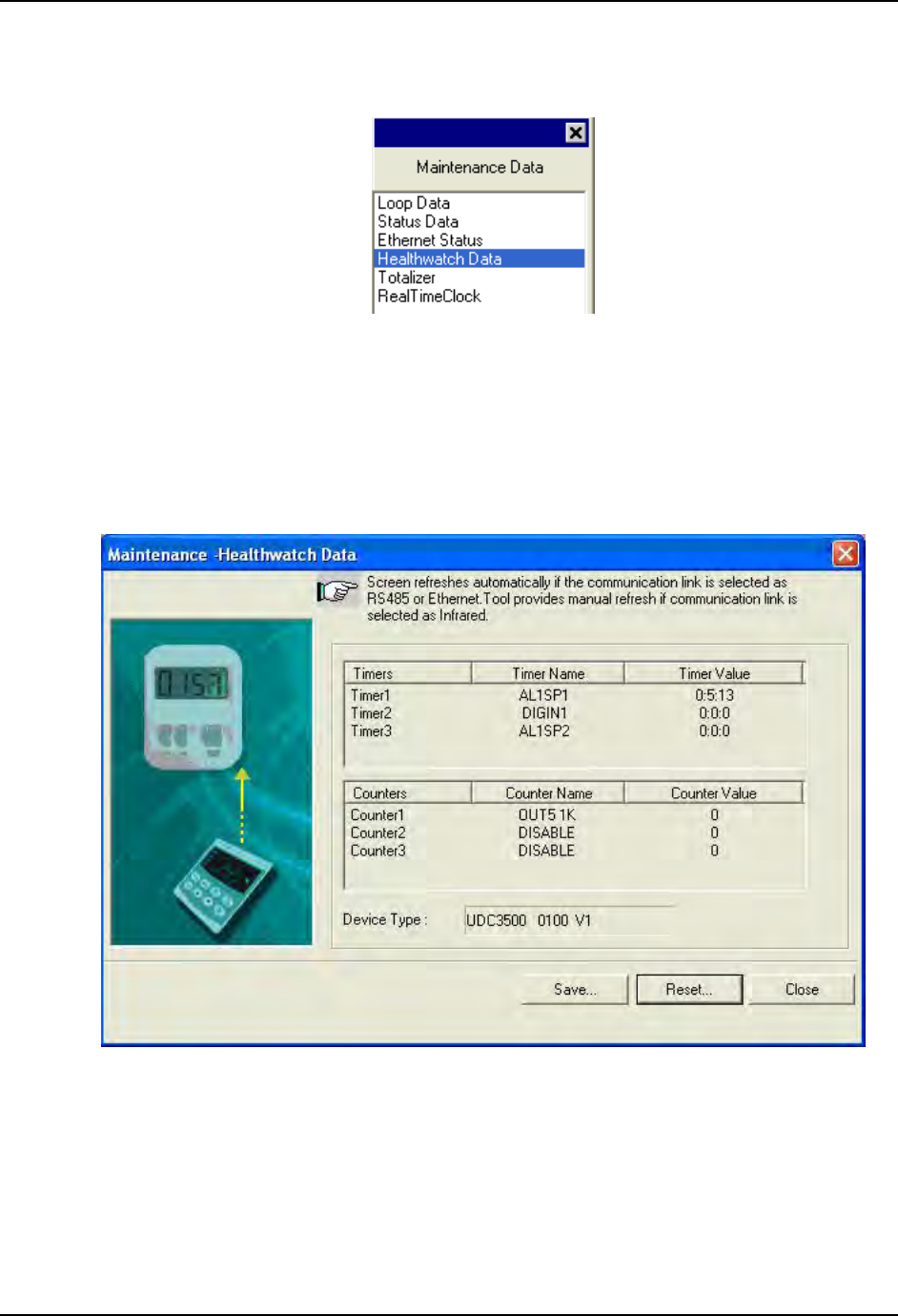
Monitoring and Operating the Controller
Healthwatch Data
Select “Heathwatch Data” from the “Maintenance Data” menu.
This screen only appears in instruments that have the Healthwatch option. The
Healthwatch screen shows the current values of the various counters and timers used by
Healthwatch. This data may be saved to your PC as a Comma Separated Variable (CSV)
file by pressing the “Save” button. See Section 3.26 for other information about
Healthwatch. The Reset button calls up a m
enu allowing individual tim
ers and counters
to be reset back to zero. See next page.
Figure 4-18 Healthwatch Data Maintenance Screen
268 UDC3500 Universal Digital Controller Product Manual March 2012
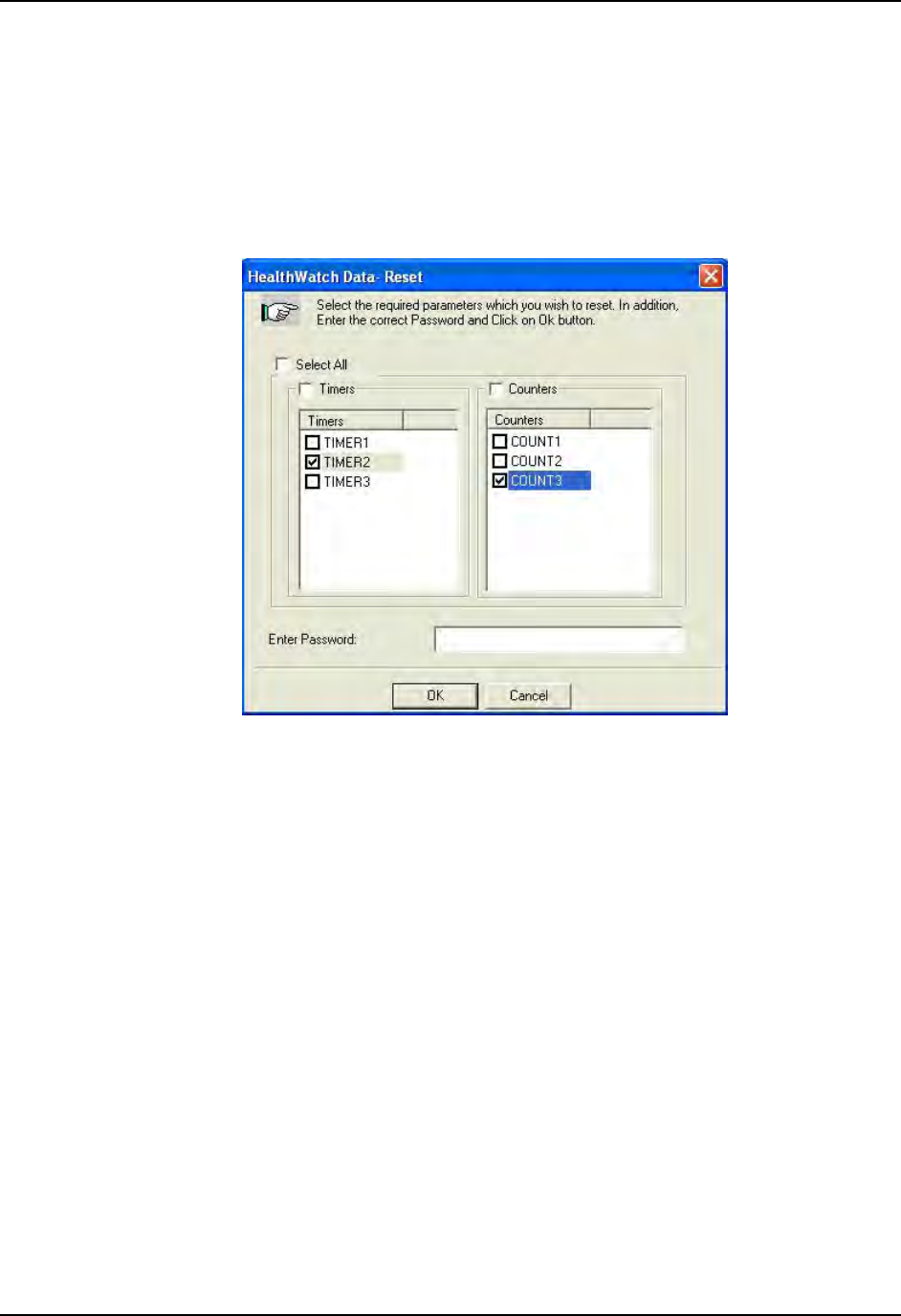
Monitoring and Operating the Controller
Healthwatch Data - Reset
This screen only appears in instruments that have the Healthwatch option and appears
when you click on the “Reset” button on the Healthwatch Data Maintenance Screen. The
Healthwatch Reset screen allows you to reset the various Timers and Counters back to
zero. The Password is configured as part of the Maintenance Set Up Group.
See Section 3.26.
Figure 4-19 Healthwatch Data Reset Screen
March 2012 UDC3500 Universal Digital Controller Product Manual 269

Monitoring and Operating the Controller
Totalizer Data
Select “Totalizer” from the “Maintenance Data” menu.
This screen only appears in instruments that have the Totalizer option. The Totalizer
screen shows the current values of the Totalizer. The
Reset button sets the Totalizer
Value back to zero.
See Section 3.12 for other information about the Totalizer option.
Figure 4-20 Totalizer Maintenance Screen
270 UDC3500 Universal Digital Controller Product Manual March 2012
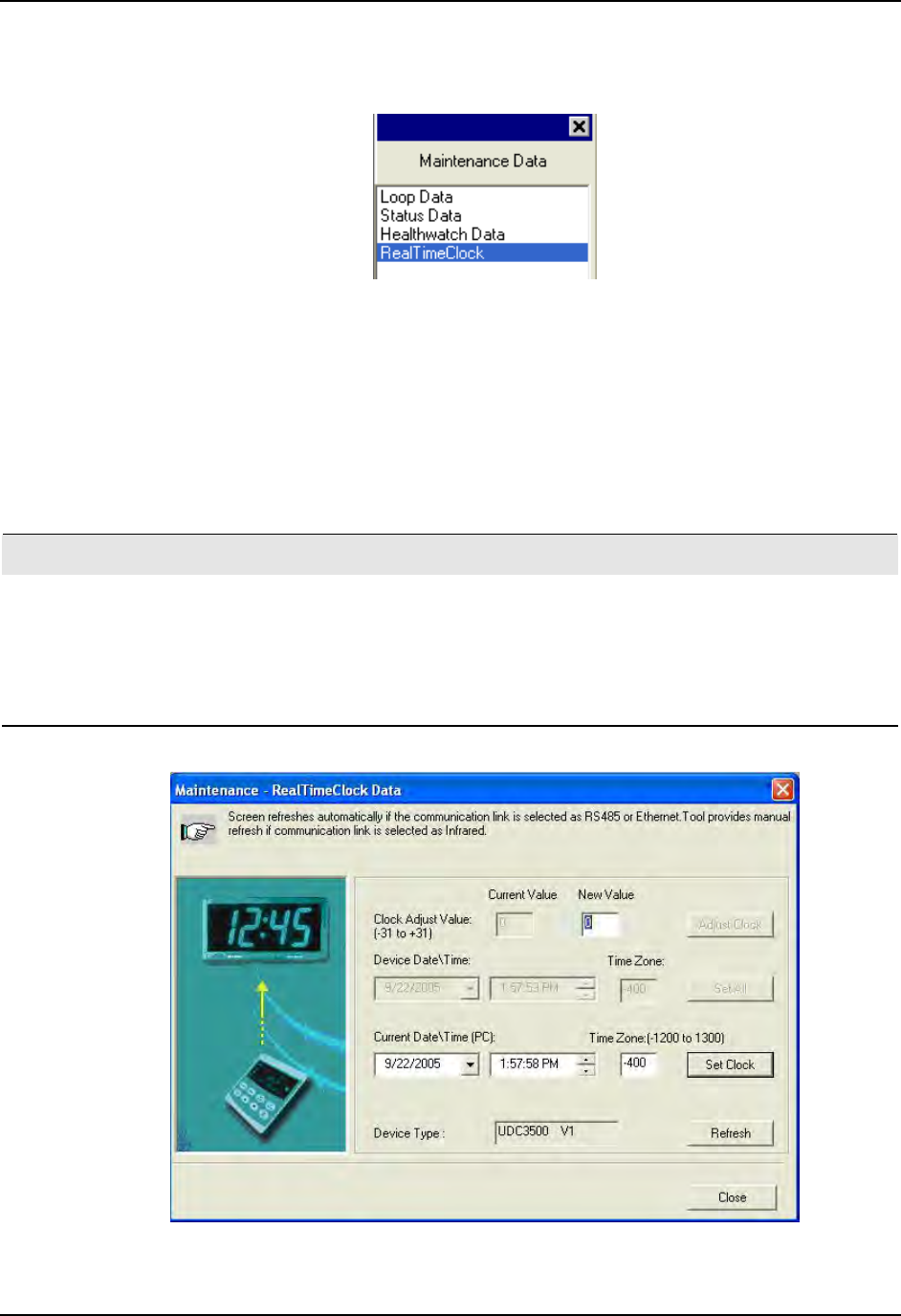
Monitoring and Operating the Controller
Real Time Clock
Select “Real Time Clock” from the “Maintenance Data” menu.
This screen only appears in instruments that have the Real Time Clock option. The Real
Time Clock Screen shows both the clock time in the controller and the clock time in your
PC. Pressing the
“Set Clock” button will set the controller to the same settings as in
your PC. It is recommended that units using Email use only this screen to set the Real
Time Clock, as that will ensure that the clock and time zone settings used to time-stamp
Emails are correct.
See Section 3.25 for other information about the Real Time Clock option.
ATTENTION
The Real Time Clock will not automatically adjust for Daylight Savings Time; it must be done manually.
The Real Time Clock will automatically adjust for Leap Years to make February 29 days long.
Instruments that do not have the Real Time Clock option will always send Email time-stamped with the
date that the Ethernet Software in the instrument was last modified. Instruments with the Real Time
Clock option will send Email time-stamped with the current time in the controller.
Figure 4-21 Real Time Clock Maintenance Screen
March 2012 UDC3500 Universal Digital Controller Product Manual 271
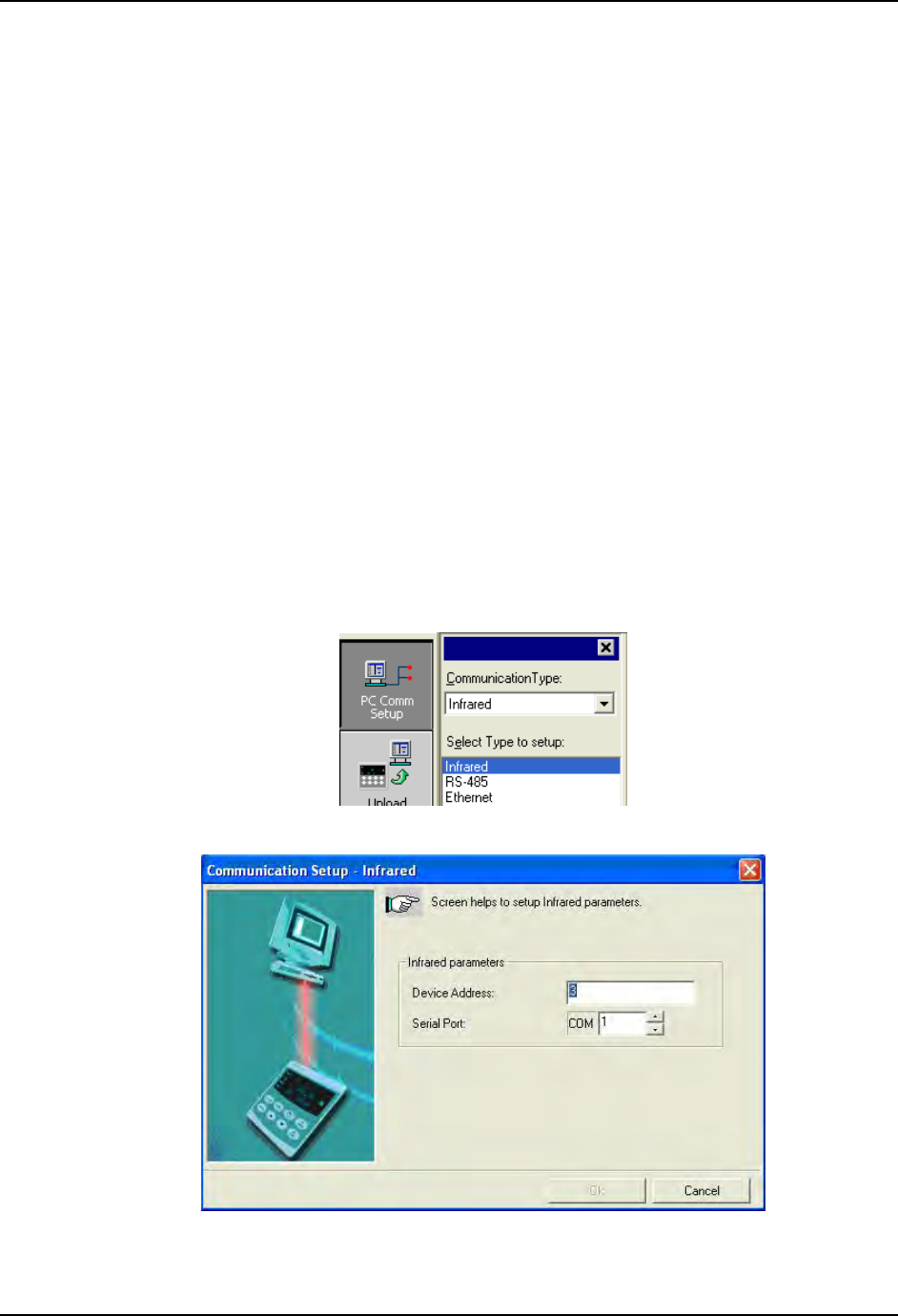
Monitoring and Operating the Controller
4.32 Configuring your Ethernet Connection
Introduction
This controller is shipped from the factory with the address for Infrared (IR)
communications set to 3, the Ethernet IP Address set to 10.0.0.2, the Ethernet Subnet
Mask set to 255.255.255.0 and the Ethernet Default Gateway set to 0.0.0.0. Consult your
Information Technologies (IT) representative as to how these should be configured for
your installation. The MAC address is printed on the product label located on the
instrument’s case.
Only the P.I.E. Tool can be used to configure Ethernet parameters. The figures in this
section show screen-shots from the PC version of the P.I.E. Tool
®
Screens. Pocket PC
Screens are generally similar in format but smaller. The P.I.E. Tool can connect to your
controller via either Ethernet communications port or the Infrared (IR) communications
port.
Connecting to the Controller via Infrared Communications
If connecting via IR and assuming that the instrument’s IR address has not been changed
from its factory setting of 3, then configure your Communications Type as “Infrared” and
your IR address to 3 as shown below.
Select “PC COMM Setup”, then select “Infrared”.
Figure 4-22 IR Communications Address
272 UDC3500 Universal Digital Controller Product Manual March 2012
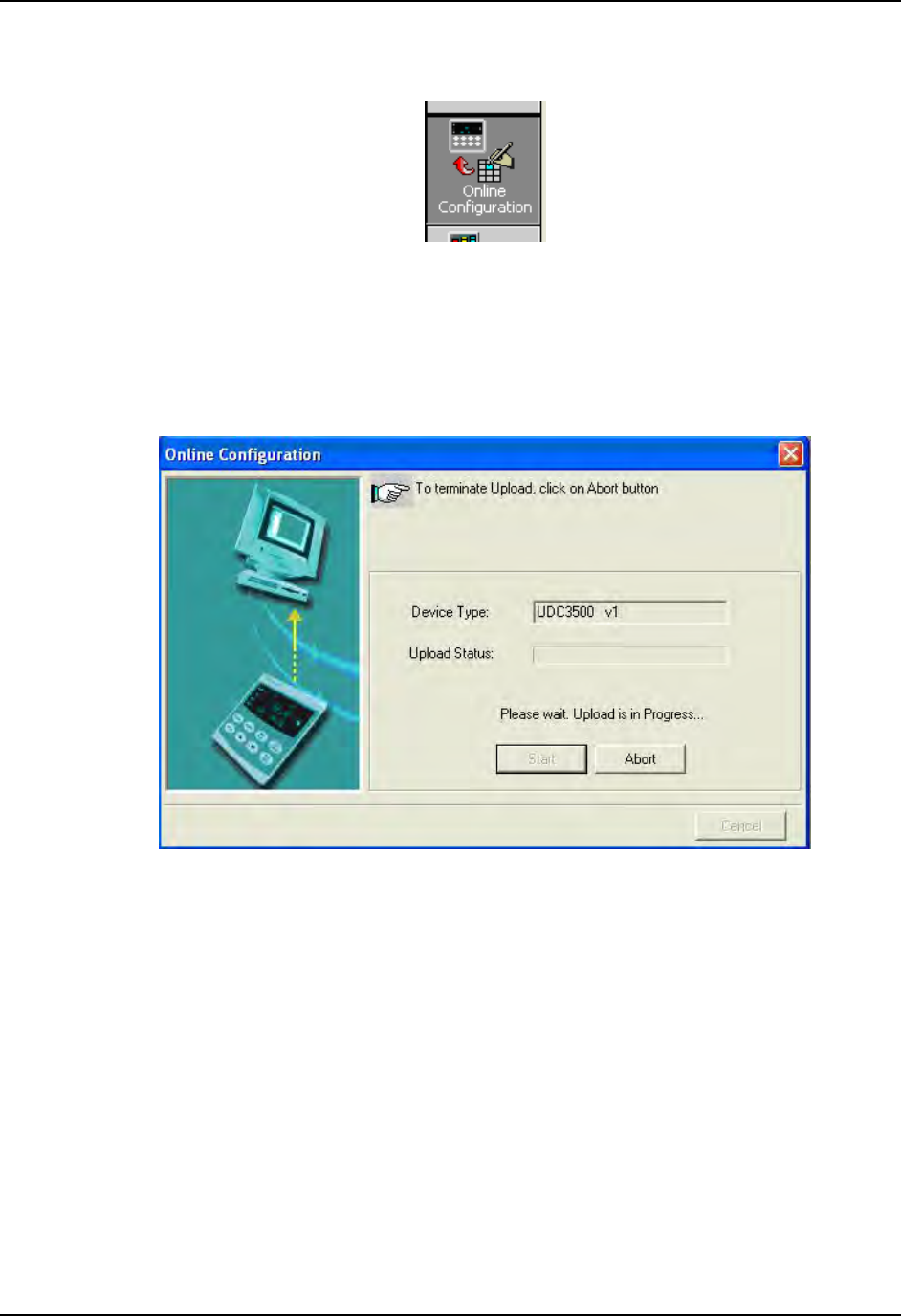
Monitoring and Operating the Controller
Close the IR configuration window and then single click on the “Online Configuration”
button.
Press any button on the controller’s keyboard to activate the controller’s IR port. Point
your IR dongle (if using PC) or your Pocket PC’s IR port (if using Pocket PC) at the IR
window on the front of the controller and then click on the “Start” button. The P.I.E.
Tool
®
should start uploading the configuration information from the controller as shown
below:
Figure 4-23 Configuration Upload in Progress
Once the upload is complete, click on the “Ethernet & Email” Group. Configure your
Ethernet and Email parameters per Section 3.30.
Once you have changed the Ethernet settings and downloaded them to your controller,
you will now be able to com
municate with it via Ethernet.
March 2012 UDC3500 Universal Digital Controller Product Manual 273
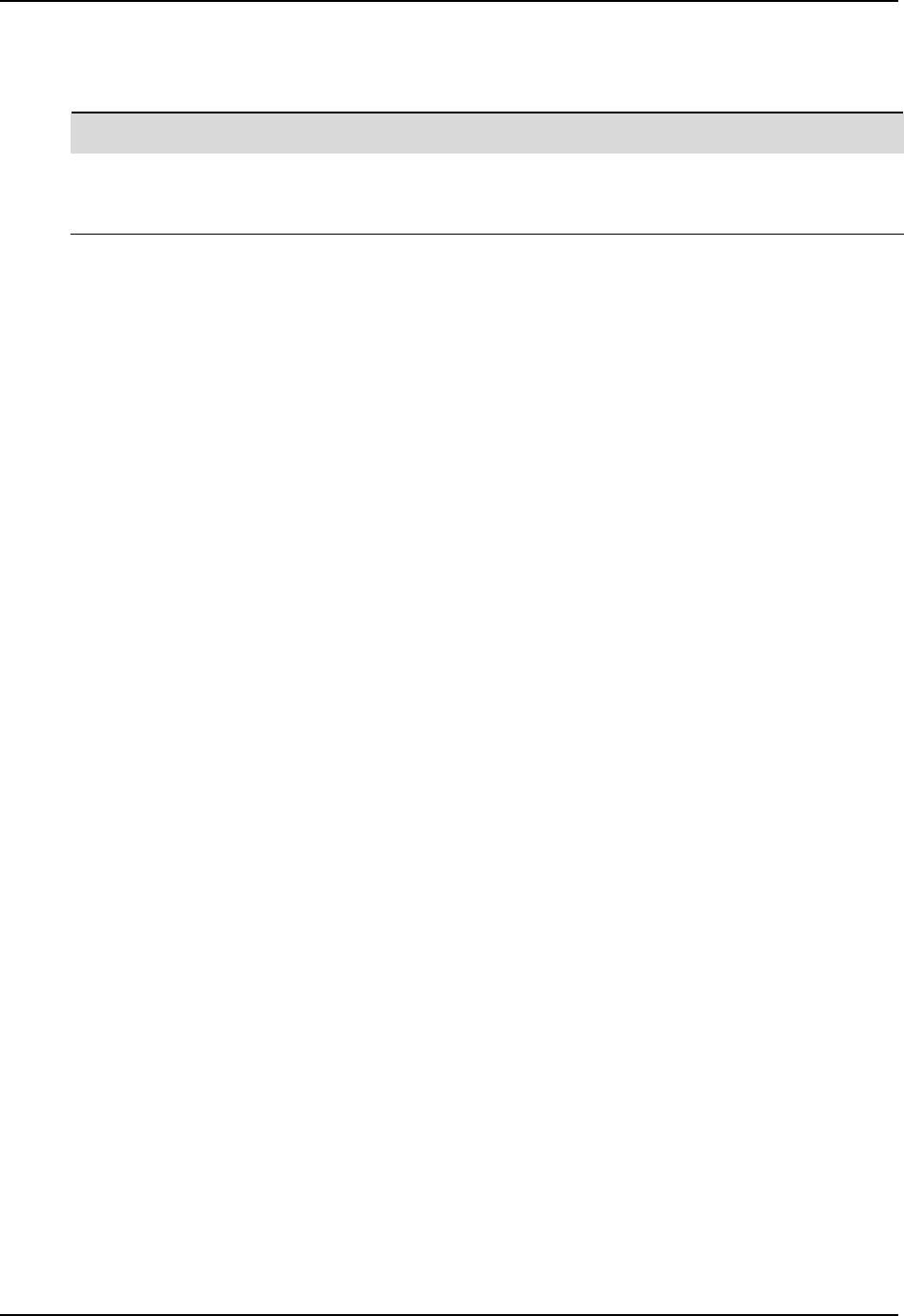
Monitoring and Operating the Controller
Connecting to the Controller via Ethernet Communications
WARNING
Connecting to the Controller via Ethernet Communications requires that you change your PC’s
IP settings. If you have never done this before, then it is strongly recommended that you
consult with your Information Technologies (IT) representative before proceeding.
First, write down the current IP Address, Subnet Mask and Default Gateway settings for
your PC. Put these someplace that you can find them later.
Connecting to the Ethernet Port in the Controller requires that you have either an
Ethernet crossover cable or a MDI-compliant Switch or Hub available with a straight-
through cable. The crossover cable can be used to directly connect your PC to the
Controller while the Switch or Hub can be used to connect your PC and Controller to the
Hub or Switch via straight-through cables.
Once you have made an Ethernet connection between your PC and the controller, then
change the Local Area Network (LAN) settings on your PC to be as follows:
IP Address: 10.0.0.3
Subnet Mask: 255.255.255.0
Default Gateway: 10.0.0.1
274 UDC3500 Universal Digital Controller Product Manual March 2012
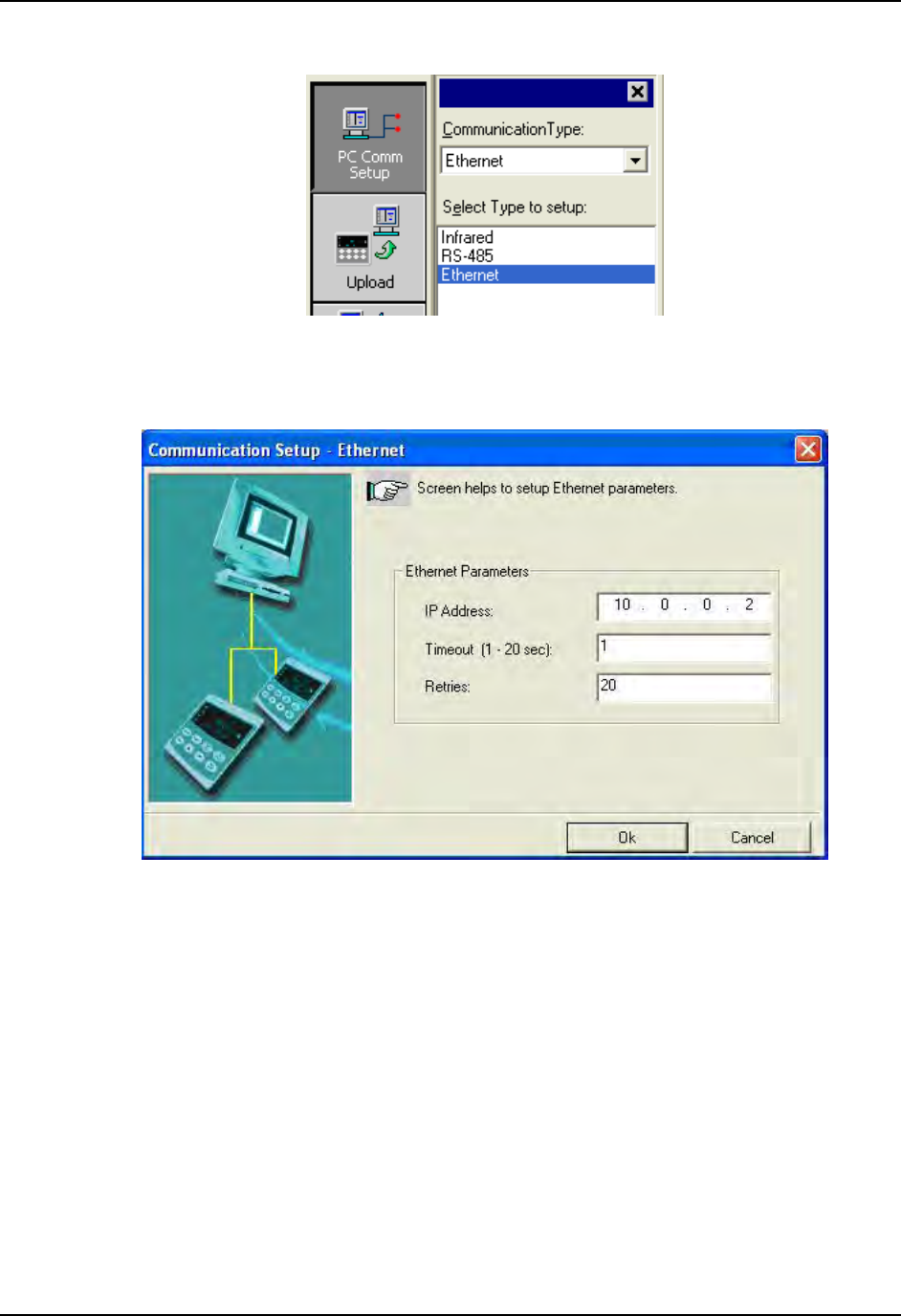
Monitoring and Operating the Controller
Open your P.I.E. Tool
®
program and select “PC Comm Setup”.
. Now configure your “Communication Type” to Ethernet and your Ethernet address to
10.0.0.2 as shown in Figure 4-24.
Figure 4-24 Ethernet Communications Address
March 2012 UDC3500 Universal Digital Controller Product Manual 275

Monitoring and Operating the Controller
Close the Ethernet configuration window and then single click on the “Online
Configuration” button.
Then, click on the “Start” button. The P.I.E. Tool
®
should start uploading the
configuration information from the controller as shown below:
Figure 4-25 Configuration Upload in Progress
Once the upload is complete, click on the “Ethernet & Email” Group. Configure your
Ethernet and Email parameters per Section 3.30.
Once you have changed the Ethernet settings and downloaded them to your controller,
you will no longer be able to com
municate with it until you change the IP address in the
P.I.E. Tool
®
to the controller’s new IP Address.
You will also need to re-configure the Local Area Network (LAN) settings on your PC
back to their original settings. On some PCs and LANs, it is possible to simply allow the
PC to get these settings automatically via the DHCP server. Contact your Information
Technologies (IT) representative to see if this is available on your PC.
276 UDC3500 Universal Digital Controller Product Manual March 2012
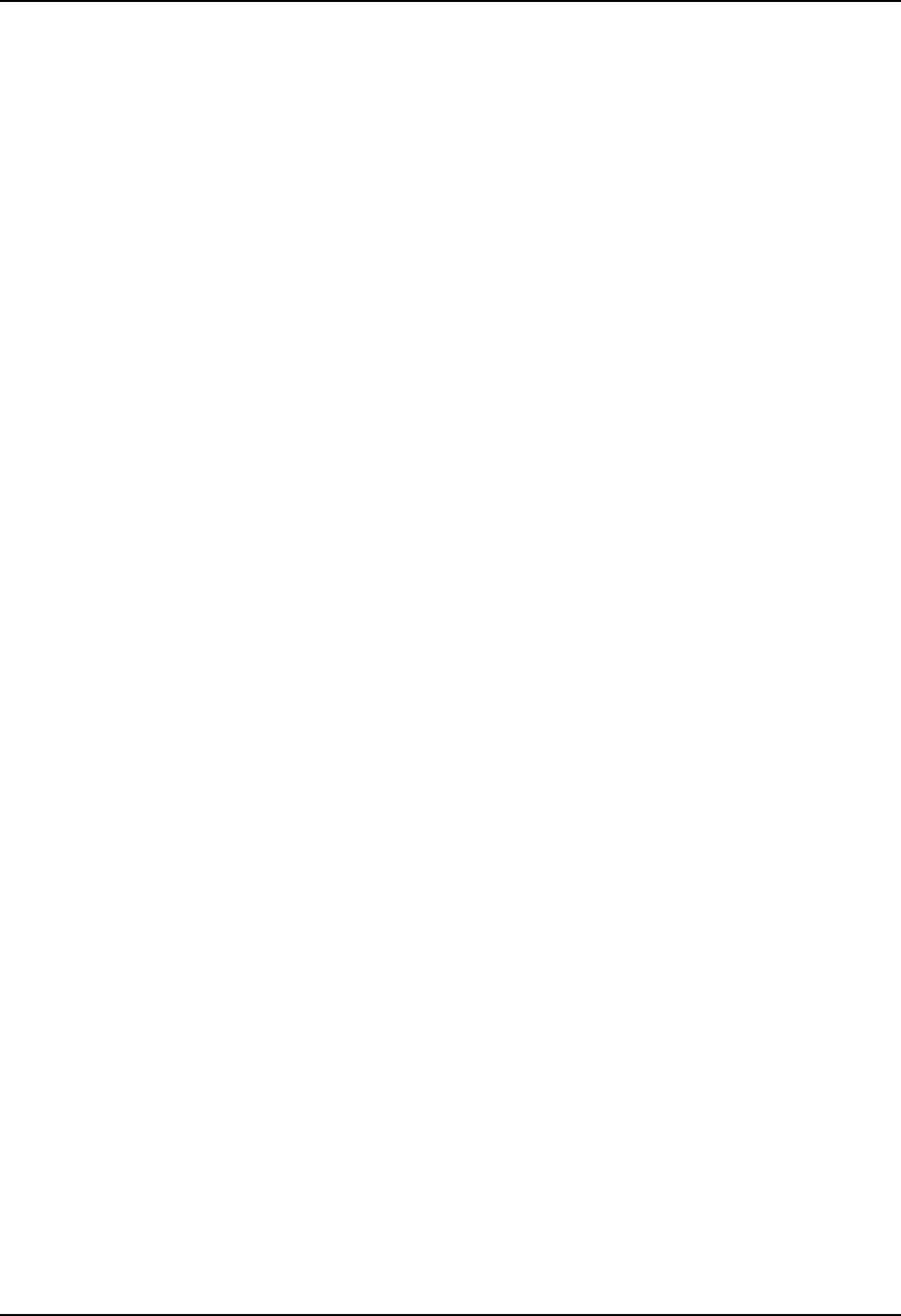
Monitoring and Operating the Controller
March 2012 UDC3500 Universal Digital Controller Product Manual 277
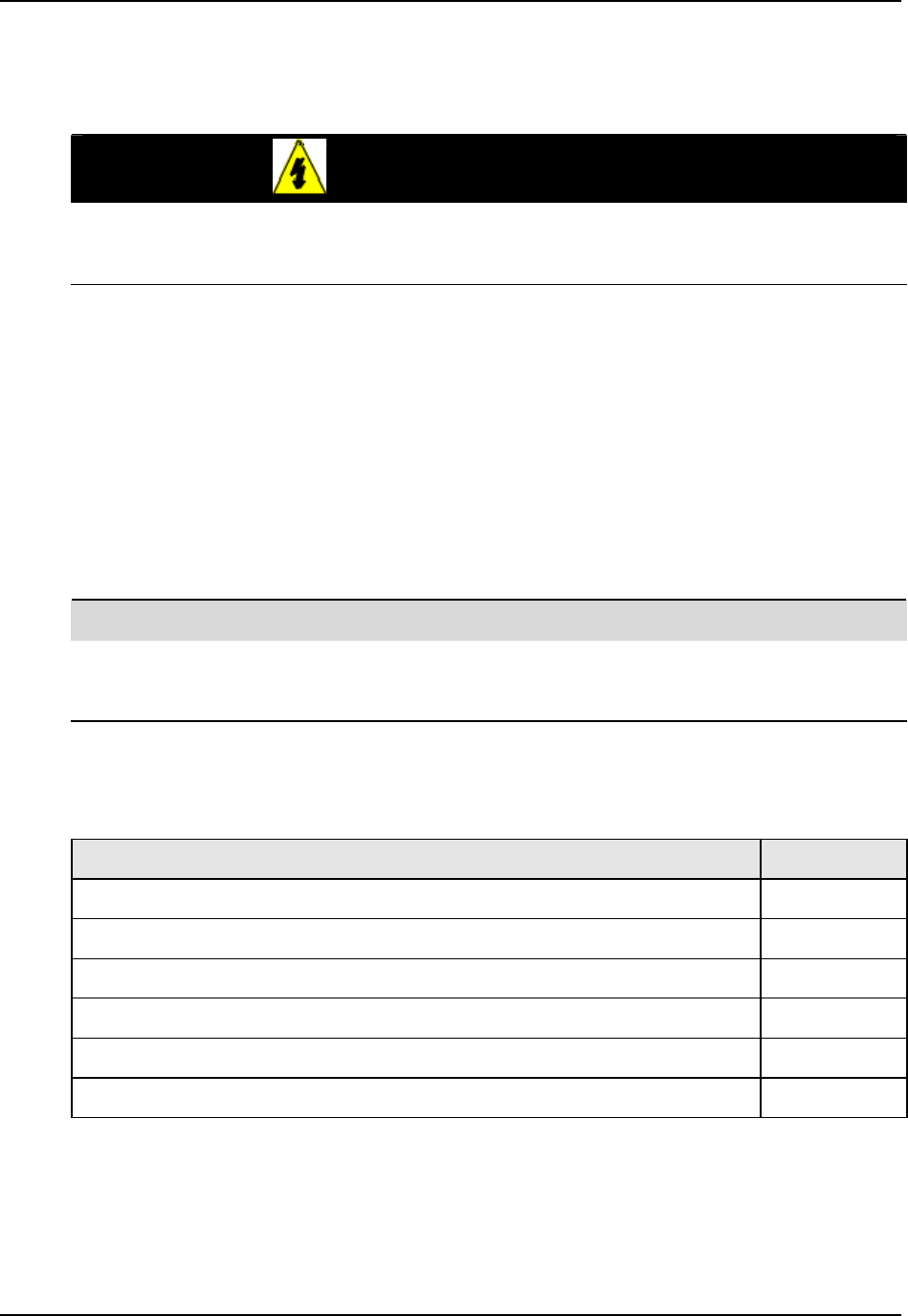
Input Calibration
March 2012 UDC3500 Universal Digital Controller Product Manual 279
5 Input Calibration
WARNING—SHOCK HAZARD
INPUT CALIBRATION MAY REQUIRE ACCESS TO HAZARDOUS LIVE CIRCUITS, AND
SHOULD ONLY BE PERFORMED BY QUALIFIED SERVICE PERSONNEL. MORE THAN
ONE SWITCH MAY BE REQUIRED TO DE-ENERGIZE UNIT BEFORE CALIBRATION.
5.1 Overview
Introduction
This section describes the field calibration procedures for Analog Inputs 1 through 5.
All input actuations in every controller are fully factory-calibrated and are ready for
configuration by the user.
Field Calibration can improve the accuracy of the Controller if necessary for a
particular application.
CAUTION
The field calibration will be lost if a change in input type configuration is implemented at a later
time. The original factory calibration data remains available for later use after a field calibration
is done. See Section 5.6 if you want to restore factory calibration values.
What’s in this section?
The following topics are covered in this section.
TOPIC See Page
5.1 Overview 279
5.2 Minimum and Maximum Range Values 280
5.3 Preliminary Information 282
5.4 Input Set Up Wiring 284
5.5 Input Calibration Procedure 293
5.6 Restore Input Factory Calibration 295
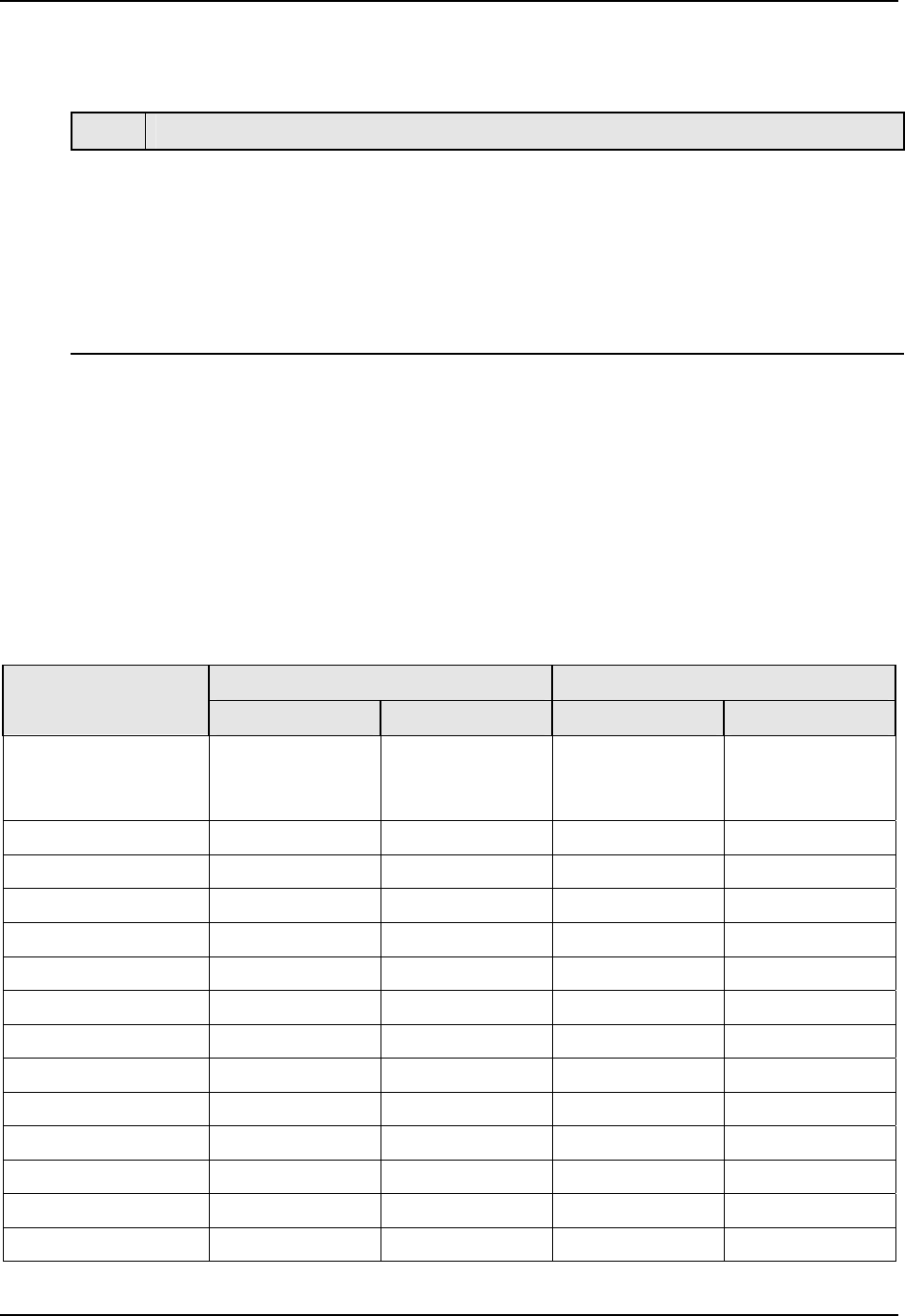
Input Calibration
Calibration Steps
Use the following steps when calibrating an input.
Step Action
Find the minimum and maximum range values for your PV input range from Table 5-1.
1
Disconnect the field wiring and find out what equipment you will need to calibrate.
2
Wire the calibrating device to your controller according to the set up wiring instructions
for your particular input (Subsection 5.4)
3
Follow the calibration procedure given for Input #1 or Input #2 (Subsection 5.5).
4
5.2 Minimum and Maximum Range Values
Select the Range Values
Calibrate the controller for the minimum (0 %) and maximum (100 %) range values of
your particular input type. Instruments with two or more analog inputs will need to have
each input calibrated separately.
Select the Voltage, Current or Resistance equivalents for 0 % and 100 % range values
from Table 5-1. Use these values when calibrating your controller.
Table 5-1 Voltage, Milliamp and Resistance Equivalents for Input Range Values
PV Input Range Range Values Sensor Type
°F °C 0 % 100 %
Thermocouples
(per ITS-90)
0
to 3300 –18 to 1816 –0.100 mV 13.769 mV
B TC
–454
to 1832 –270 to 1000 –9.835 mV 76.373 mV
E TC H
–200
to 1100 –129 to 593 –6.472 mV 44.455 mV
E TC L
0
to 1600 –18 to 871 –0.886 mV 50.060 mV
J TC H
20 to 900 –7 to 482
–0.334 mV
26.400 mV
J TC M
20 to 550 –7 to 288 –0.334 mV 15.650 mV
J TC L
0 to 2400 –18 to 1316 –0.692 mV 52.952 mV
K TC H
–20 to 1200 –29 to 649 –1.114 mV 26.978 mV
K TC M
–20 to 750 –29 to 399 –1.114 mV 16.350 mV
K TC L
32 to 2500
0 to 1371 0.000 mV 71.773 mV
NNM H
32 to 1260
0 to 682 0.000 mV 31.825 mV
NNM L
0
to 2372 –18 to 1300 –0.461 mV 47.513 mV
NIC H
0
to 1472 –18 to 800 -0.461 mV 28.455 mV
NIC L
PLAT H
32 to 2516 0 to 1380 0.000 mV 54.798 mV
280 UDC3500 Universal Digital Controller Product Manual March 2012
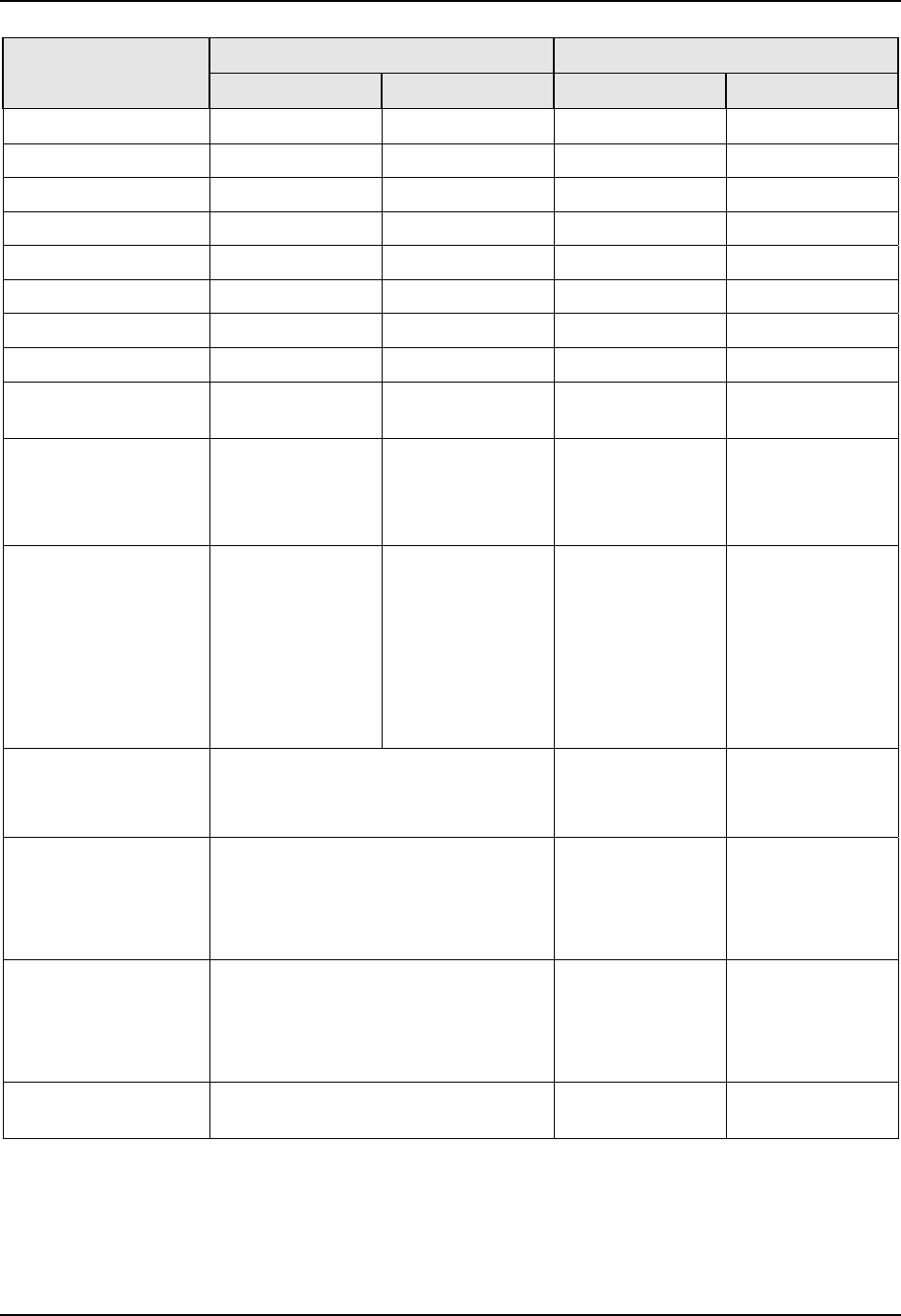
Input Calibration
March 2012 UDC3500 Universal Digital Controller Product Manual 281
PV Input Range Range Values Sensor Type
°F °C 0 % 100 %
PLAT L
32 to 1382 0 to 750 0.000 mV 31.272 mV
R TC
0 to 3100 –18 to 1704 –0.090 mV 20.281 mV
S TC
0 to 3100 –18 to 1704 –0.092 mV 17.998 mV
T TC H
-300 to 700 –184 to 371 –5.341 mV 19.097 mV
T TC L
-200 to 500 –129 to 260 –4.149 mV 12.574 mV
W TC H
0 to 4200 –18 to 2315 –0.234 mV 37.075 mV
W TC L
0 to 2240 –18 to 1227 –0.234 mV 22.283 mV
RP20-RP40
32 to 3216 0 to 1880 0.000 mV 4.933 mV
Thermocouple
Differential *
–50 to 150 –46 to 66 –1.54 mV 4.62 mV
Honeywell
Radiamatic
Type RH
Type RI **
0 to 3400
0 to 3400
–18 to 1871
–18 to 1871
0.00 mV
0.00 mV
57.12 mV
60.08 mV
RTD
Alpha = 0.00385 per
IEC-60751 (1995)
100 ohms
100 ohms (low)
200 ohms
500 ohms
1000 ohms
–300 to 1200
–300 to 300
–300 to 1200
–300 to 1200
–300 to 1200
–184 to 649
–184 to 149
–184 to 649
–184 to 649
–184 to 649
25.202 ohms
25.202 ohms
50.404 ohms
126.012 ohms
252.020 ohms
329.289 ohms
156.910 ohms
658.578 ohms
1646.445 ohms
3292.890 ohms
Linear
Milliamps
4 to 20 mA
0 to 20 mA
4.00 mA
0.00 mA
20.00 mA
20.00 mA
Millivolts
0 to 10 mV
0 to 50 mV
0 to 100 mV
0 to 500 mV
–10 to 10 mV
0.00 mV
0.00 mV
0.00 mV
0.00 mV
–10.0 mV
10.00 mV
50.00 mV
100.00 mV
500.00 mV
10.00 mV
Volts
0 to 1 Volts
1 to 5 Volts
0 to 5 Volts
0 to 10 Volts
–1 to 1 Volts
0.00 Volts
1.00 Volts
0.00 Volts
0.00 Volts
–1.00 Volts
1.00 Volts
5.00 Volts
5.00 Volts
10.00 Volts
1.00 Volts
Carbon
Oxygen
0 to 1250 mV
–30 to 510 mV
0.00 mV
–30.00 mV
1250.00 mV
510.00 mV
* The Thermocouple Differential Input calibration voltages are for a pair of J thermocouples at an ambient
temperature mean of 450F / 232C. Other thermocouple types and ambient temperature means may be
accomplished via Field Calibration of the input, with the range value limits being –4 mV to +16 mV for the zero
and span values. See Table 5-7.
**
The range val
ues for Radiamatic Type RI are customer configurable within the limits shown.
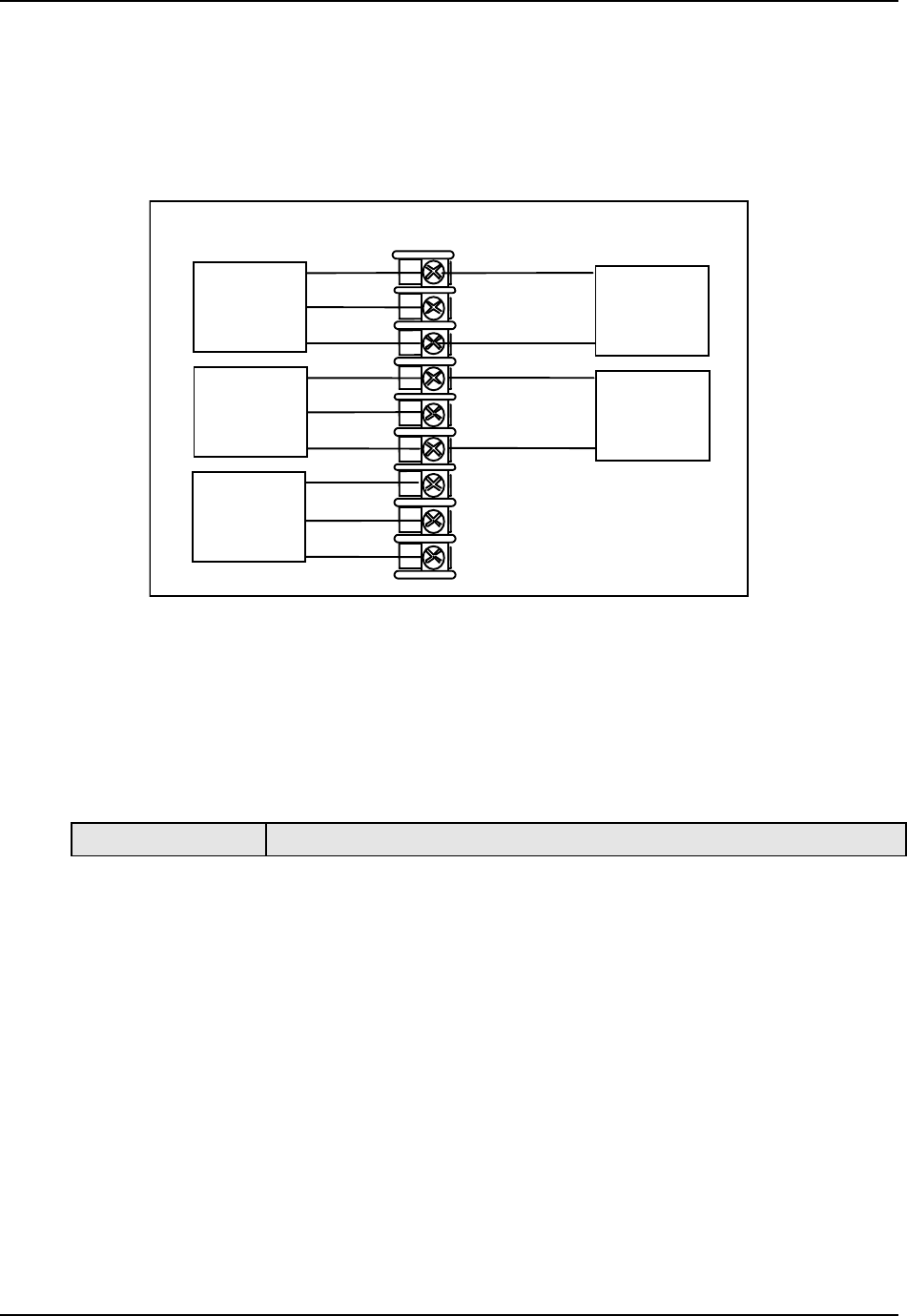
Input Calibration
282 UDC3500 Universal Digital Controller Product Manual March 2012
5.3 Preliminary Information
Disconnect the Field Wiring
Tag and disconnect any field wiring connected to the input terminals on the rear of the
controller.
R
+
–
+
–
Input 1
connections
R
Input 2
connections
Input 4
connections
+
–
30
29
31
32
33
34
35
36
28
Input 5
connections
+
+
–
R
Input 3
connections
–
Figure 5-1 Input Wiring Terminals
Equipment Needed
Table 5-2 lists the equipment you will need to calibrate the specific types of inputs that
are listed in the table. You will need a screwdriver to connect these devices to your
controller.
Table 5-2 Equipment Needed
Type of Input Equipment Needed
Thermocouple
Inputs (Ice Bath)
A calibrating device with at least ± 0.02 % accuracy for use as a
signal source such as a millivolt source.
Thermocouple extension wire that corresponds with the type of
thermocouple that will be used with the controller input.
Two insulated copper leads for connecting the thermocouple
extension wire from the ice baths to the mV source.
Two containers of crushed ice or a commercially available ice bath.
Thermocouple
Inputs (T/C Source)
A calibrating device with at least ± 0.02 % accuracy for use as a
signal source such as a millivolt source.
Thermocouple extension wire that corresponds with the type of
thermocouple that will be used with controller input.
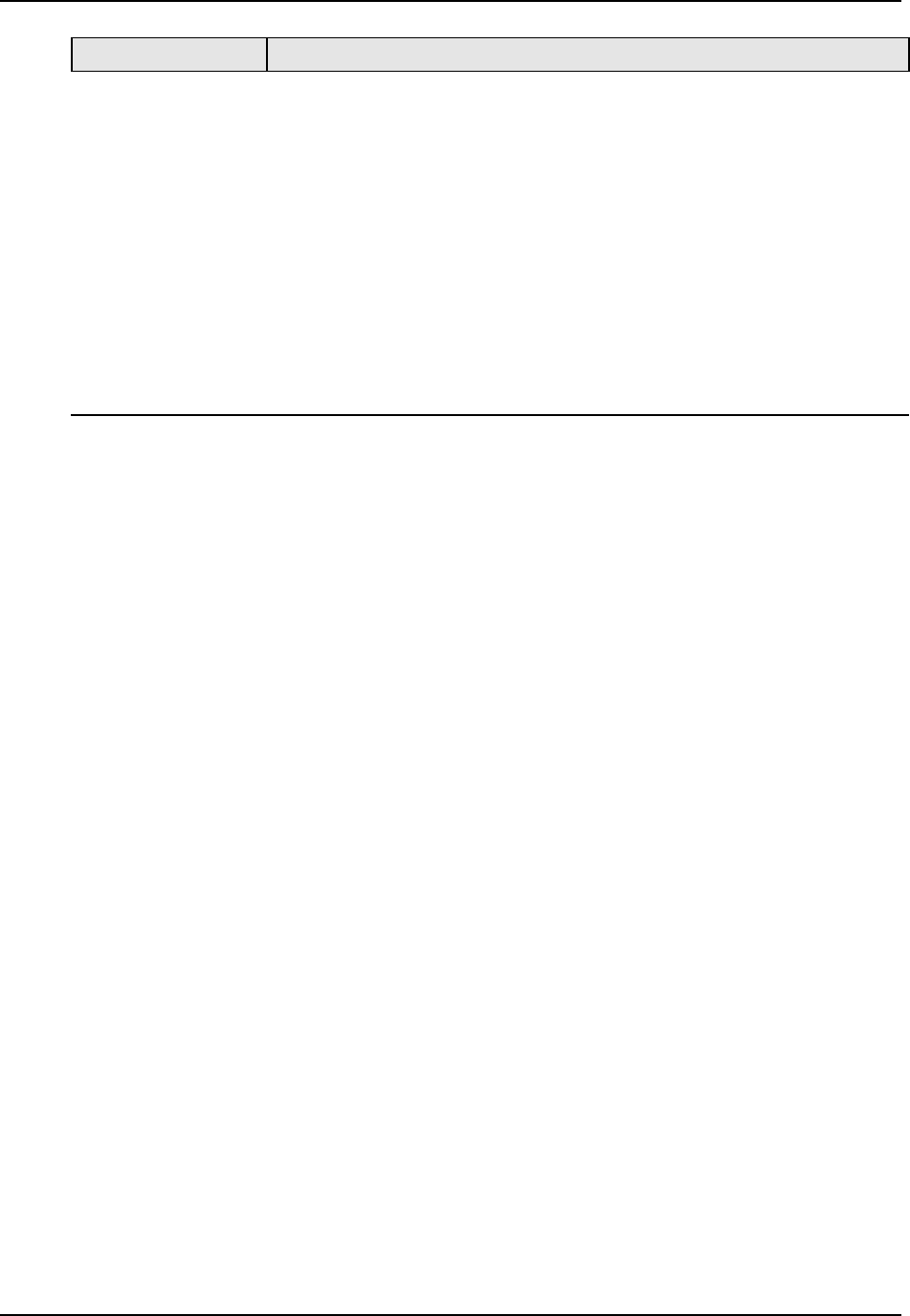
Input Calibration
March 2012 UDC3500 Universal Digital Controller Product Manual 283
Type of Input Equipment Needed
RTD (Resistance
Thermometer
Device)
A decade box, with at least ± 0.02 % accuracy, capable of providing
stepped resistance values with a resolution of 0.001 ohm over the
range of resistance needed.
Three insulated copper leads of equal length for connecting the
decade box to the controller.
Milliampere,
Millivolt, Volts, and
Radiamatic
A calibrating device with at least ± 0.02 % accuracy for use as a
signal source.
Two insulated copper leads for connecting the calibrator to the
controller.
Place current source at zero before switching ON.
Do not switch current sources OFF/ON while connected to the
instrument.
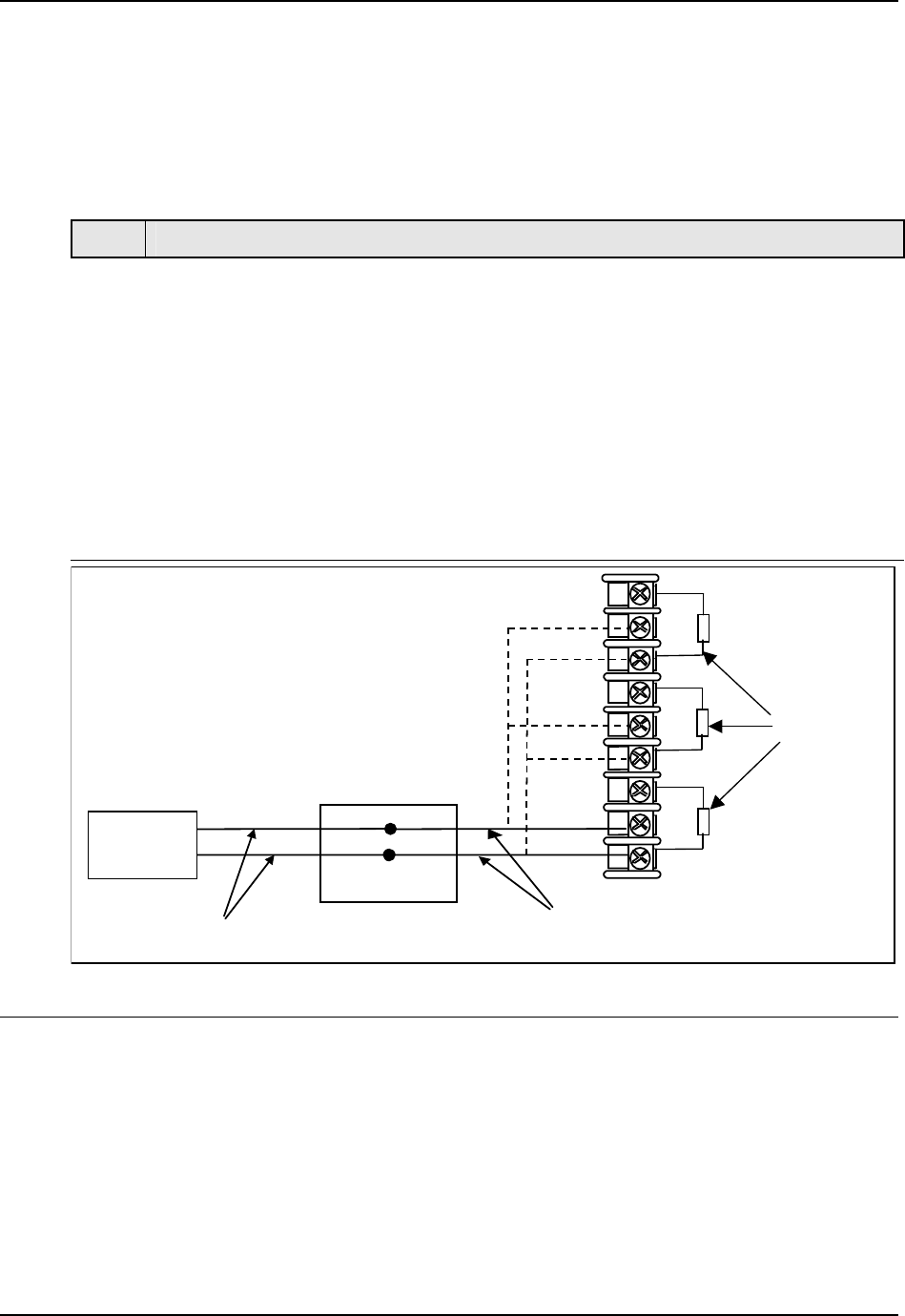
Input Calibration
5.4 Input Set Up Wiring
5.4.1 Thermocouple Inputs Using an Ice Bath
Refer to Figure 5-2 and wire the controller according to the procedure given in Table 5-3.
Table 5-3 Set Up Wiring Procedure for Thermocouple Inputs
Using an Ice Bath
Step Action
Connect the copper leads to the calibrator.
1
If using a physical Ice Bath:
Connect a length of thermocouple extension wire to the end of each copper lead
and insert the junction points into the ice bath.
If using a commercial Ice Bath:
Connect a length of thermocouple extension wire to the output side of the Ice
Bath. Connect the calibrator with copper wires to the input side of the Ice Bath.
2
Connect the thermocouple extension wires to the terminals for the input to be
calibrated. See Figure 5-2.
3
_
Millivolt
Source
Ice Bath
Copper Leads
Thermocouple
Extension Wire
+
30-
29+
31R
32+
33-
34R
35+
36-
28R
Input 1
Input 2
Input 3
C/J Sensors
_
+
Figure 5-2 Wiring Connections for Thermocouple Inputs Using an Ice Bath
284 UDC3500 Universal Digital Controller Product Manual March 2012
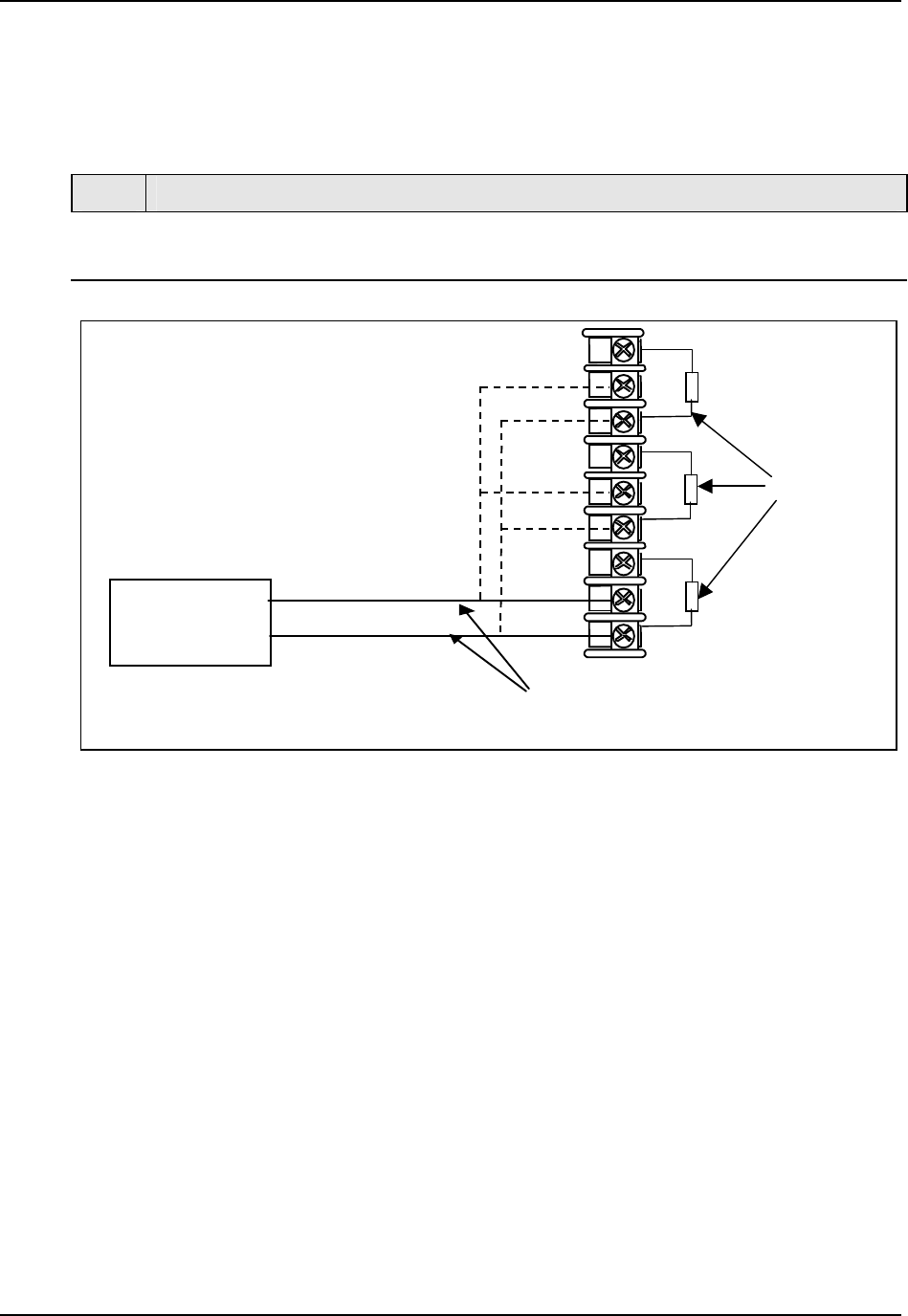
Input Calibration
5.4.2 Thermocouple Inputs Using a Thermocouple Source
Refer to Figure 5-3 and wire the controller according to the procedure given in Table 5-4.
Table 5-4 Set Up Wiring Procedure for Thermocouple Inputs using a
Thermocouple Source
Step Action
Connect the thermocouple extension wires to the terminals for the input to be
calibrated. See Figure 5-3.
1
_
Thermocouple
Source
Thermocouple
Extension Wire
+
-
30-
29+
31R
32+
33-
34R
35+
36-
28R
Input 1
Input 2
Input 3
C/J Sensors
Figure 5-3 Wiring Connections for Thermocouple Inputs Using a
Thermocouple Source
March 2012 UDC3500 Universal Digital Controller Product Manual 285
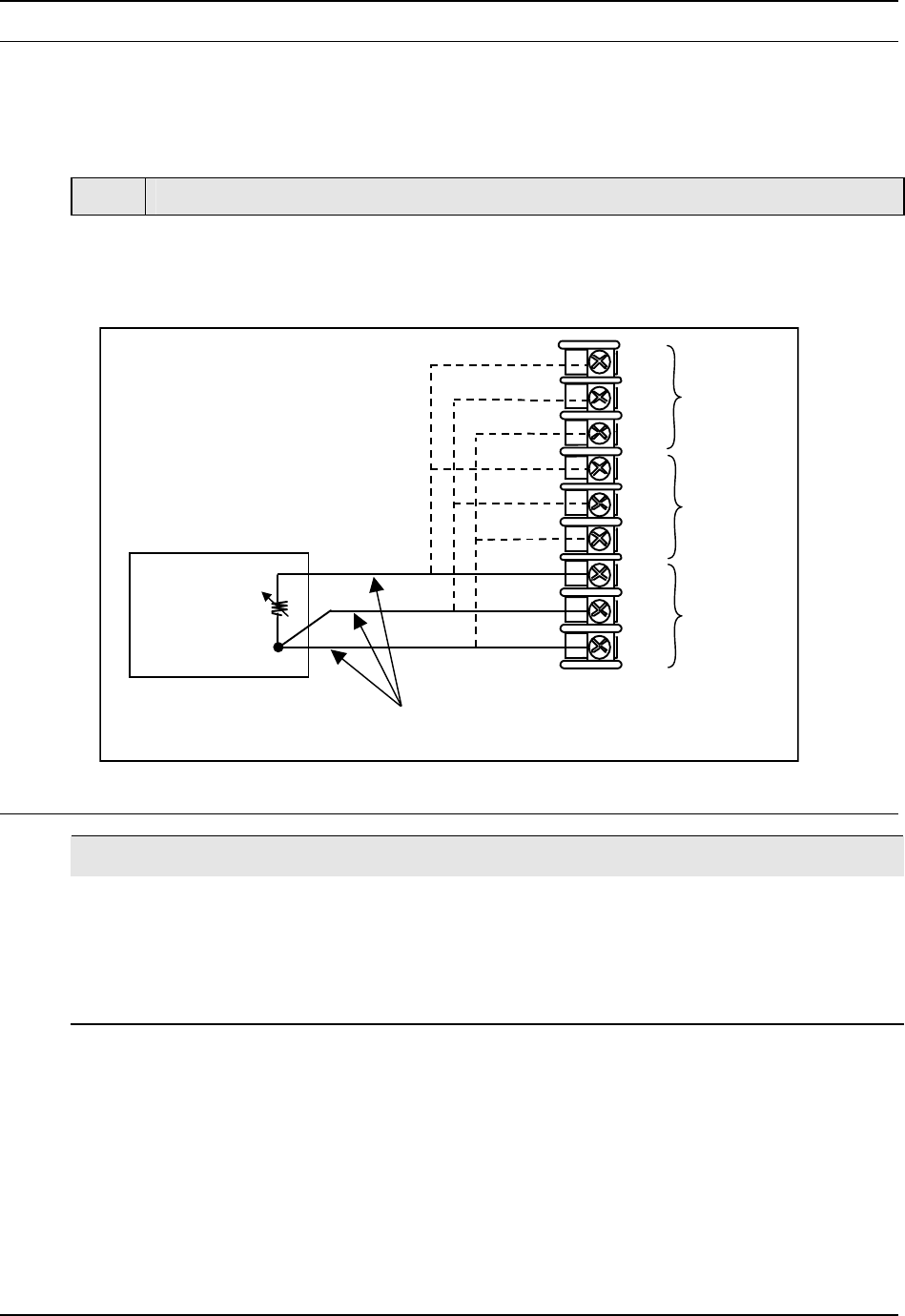
Input Calibration
5.4.3 RTD Inputs
Refer to Figure 5-4 and wire the controller according to the procedure given in Table 5-5.
Table 5-5 Set Up Wiring Procedure for RTD Inputs
Step Action
Connect the copper wires to the terminals for the input to be calibrated. See Figure
5-4.
1
Decade
Resistance
Box
Copper Leads
Equal Length
30-
29+
31R
32+
33-
34R
35+
36-
28R
Input 1
Input 2
Input 3
Figure 5-4 Wiring Connections for RTD (Resistance Thermometer Device)
ATTENTION
Decade Resistance Boxes are usually not accurate enough to meet the 0.02% accuracy
requirement noted in Table 5-2. This can be overcome by performing a four-wire resistance
measurement with a precision DMM and then adjusting the Decade Box to the correct zero and
span resistance values as given in Table 5-1. Determine the proper zero and span resistance
settings prior to attaching the Decade Box to the instrument. For best accuracy, measure with
the DMM connected to the wire ends rather than directly to the Decade Box.
286 UDC3500 Universal Digital Controller Product Manual March 2012
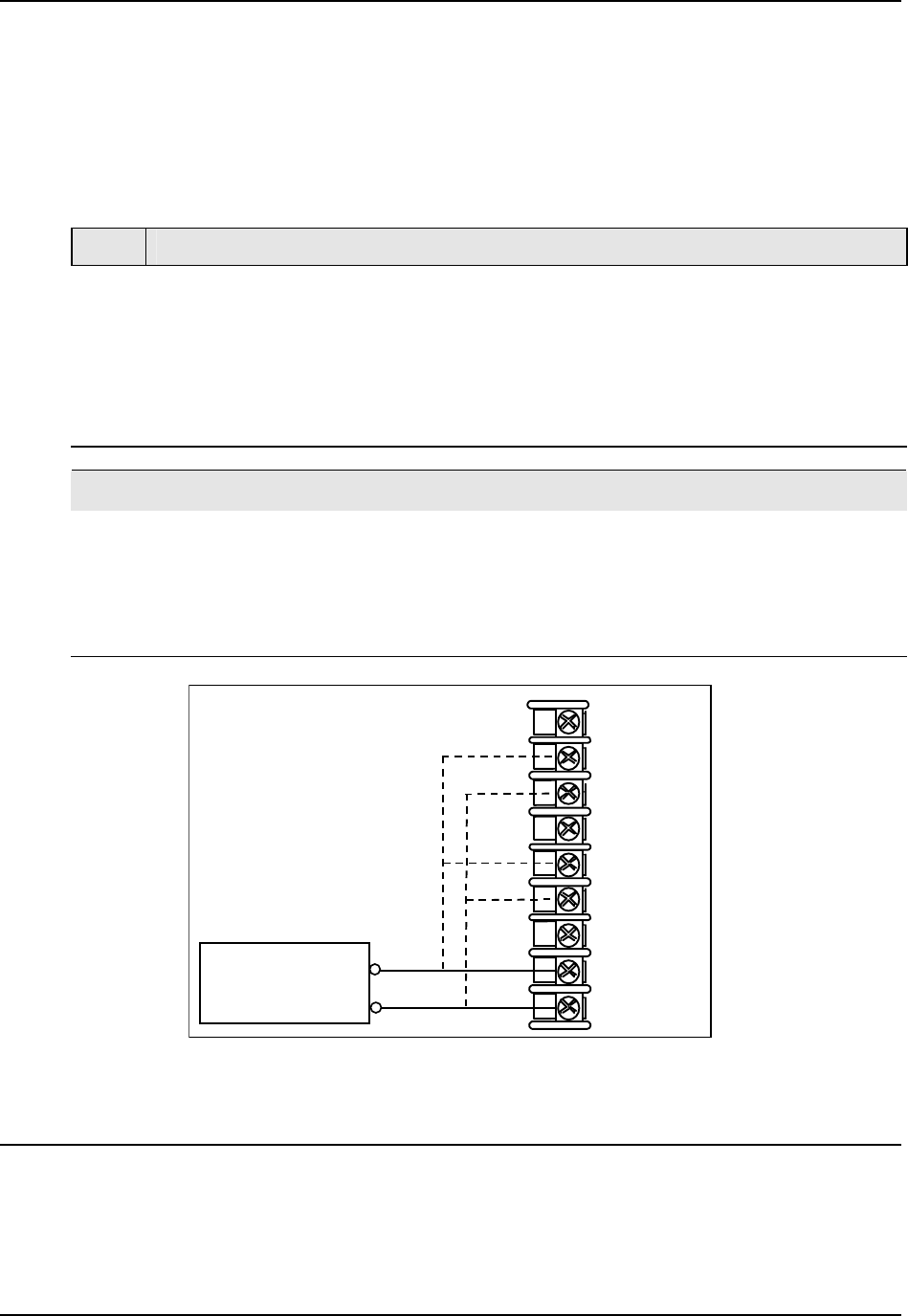
Input Calibration
5.4.4 Radiamatic, Millivolts, Volts, Carbon, Oxygen or Thermocouple Differential
Inputs
Refer to Figure 5-5 and wire the controller according to the procedure given in Table 5-6.
Table 5-6 Set Up Wiring Procedure for Radiamatic, Millivolts, Volts,
Carbon, Oxygen or Thermocouple Differential Inputs (Except 0-10 Volts and
–1 to 1 Volts)
Step Action
Connect the copper leads from the calibrator to the Input #1 terminals as shown in
Figure 5-5.
1
Place voltage source at zero before switching on.
2
Following calibration, turn off the voltage source prior to disconnecting it from the
inst
rument.
3
ATTENTION
For Radiamatic inputs only, set Emissivity value to 1.0.
See:
Subsection 3.15 – Configuration Set Up prompt INPUT 1, function prompt EMISSIV 1
Subsection 3.16 – Configuration Set Up prompt INPUT 2, function prompt EMISSIV 2
Subsection 3.17 – Configuration Set Up prompt INPUT 3, function prompt EMISSIV 3
Millivolt or
Volt Source
+
_
30-
29+
31R
32+
33-
34R
35+
36-
28R
Input 1
Input 2
Input 3
Figure 5-5 Wiring Connections for Radiamatic, Millivolts, Volts, Carbon,
Oxygen or Thermocouple Differential Inputs (Except 0-10 Volts and –1 to 1
Volts)
March 2012 UDC3500 Universal Digital Controller Product Manual 287
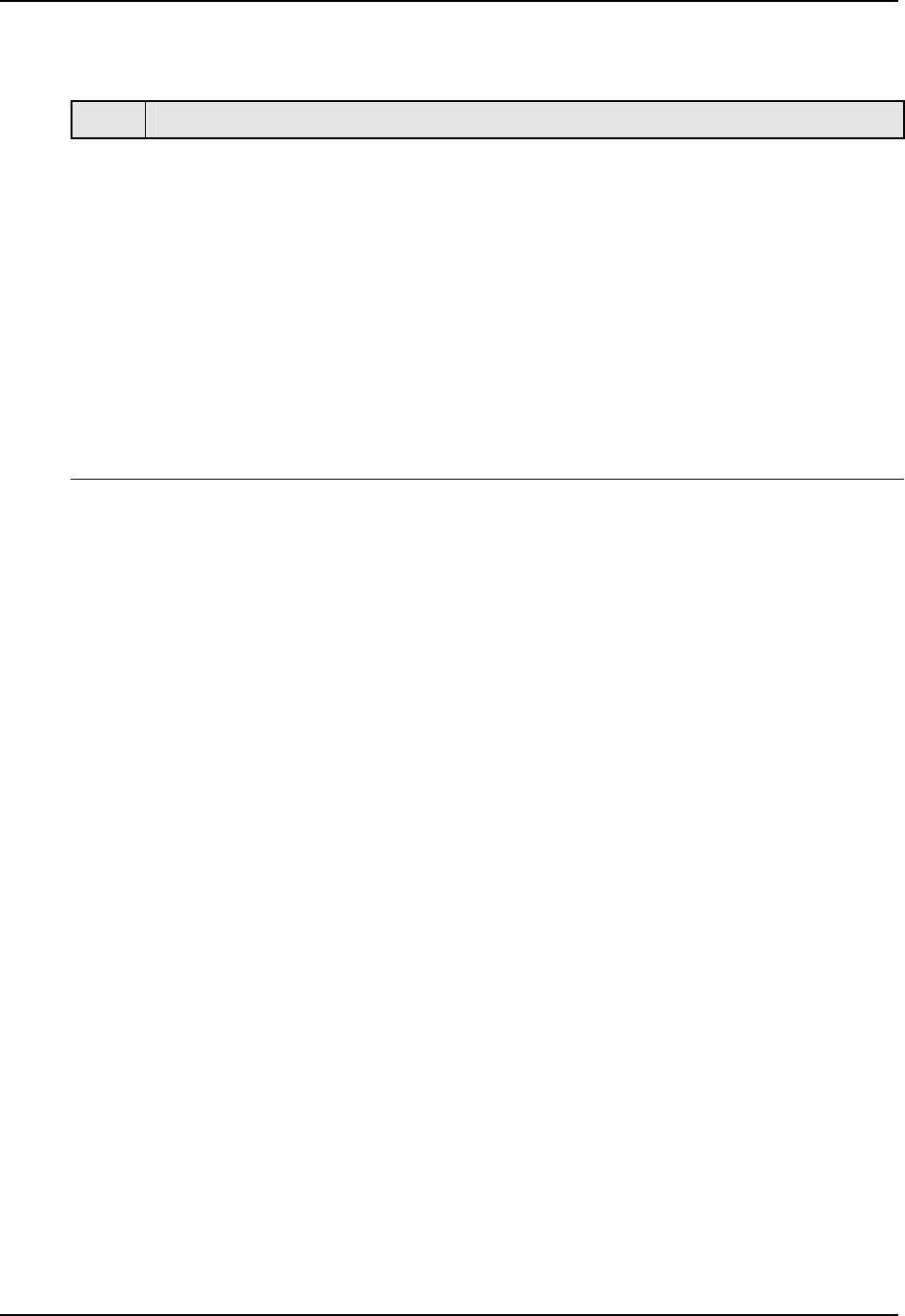
Input Calibration
Table 5-7 Procedure to determine calibration voltages for Thermocouple
Differential input types other than the Factory Setting
Step Action
Obtain a copy of the ITS-90 Standard for the Thermocouple Type you will be using.
1
Find the thermoelectric voltage for the desired operating temperature.
2
3
Find the thermoelectric voltages for the temperatures –50F and +150F away from the
desired operating temperature.
4
The zero calibration voltage will be the thermoelectric voltage for the –50F
temperature minus the thermoelectric voltage for the desired operating temperature.
This will be a negative voltage.
5
The span calibration voltage will be the thermoelectric voltage for the +150F
temperature minus the thermoelectric voltage for the desired operating temperature.
This will be a positive voltage.
For example: Determine the calibration voltage values for a pair of J-type thermocouples
at an operating temperature of 450
F (this is equivalent to the Factory setting).
The ITS-90 standard for the J thermocouple shows that the thermoelectric
voltage for 450
F is 12.568 millivolts.
The –50F point would be 400F. The ITS-90 standard shows that the
thermoelectric voltage for 400
F is 11.025 millivolts.
The +150F point would be 600F. The ITS-90 standard shows that the
thermoelectric voltage for 600
F is 17.188 millivolts.
The zero calibration voltage is thus 11.025 minus 12.568 millivolts or –1.543
millivolts (this can be rounded off to –1.54 millivolts without significant loss of
accuracy).
The span calibration voltage is thus 17.188 minus 12.568 millivolts or +4.62
millivolts.
Use –1.54 millivolts for the Zero calibration value and +4.62 millivolts for the
Span calibration value.
288 UDC3500 Universal Digital Controller Product Manual March 2012
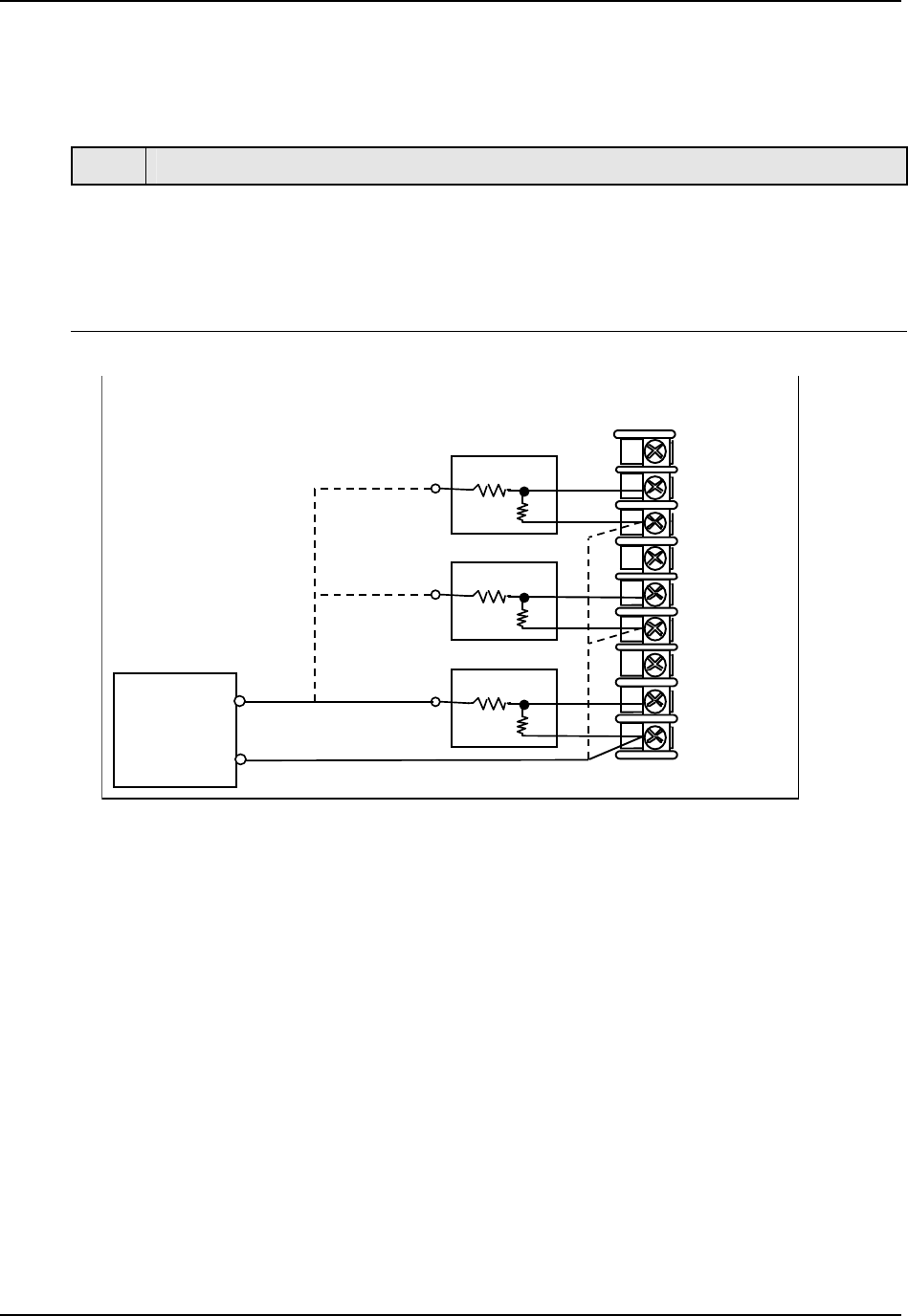
Input Calibration
5.4.5 0 to 10 Volts or –1 to 1 Volts
Refer to Figure 5-6 and wire the controller according to the procedure given in Table 5-8.
Table 5-8 Set Up Wiring Procedure for 0 to 10 Volts or –1 to 1 Volts
Step Action
Connect the copper leads from the calibrator to the input to be calibrated as shown in
Figure 5-6.
1
Place voltage source at zero before switching on.
2
Following calibration, turn off the voltage source prior to disconnecting it from the
inst
rument.
3
Voltage
Source
_
+
30-
29+
31R
32+
33-
34R
35+
36-
28R
Input 1
Input 2
Input 3
100K
Input 1
+
_
100K
100K
Input 2
+
_
100K
100K
Input 3
+
_
100K
Figure 5-6 Wiring Connections for 0 to 10 Volts or –1 to 1 Volts
March 2012 UDC3500 Universal Digital Controller Product Manual 289

Input Calibration
5.4.6 Milliamperes
Refer to Figure 5-7 and wire the controller according to the procedure given in Table 5-9.
Table 5-9 Set Up Wiring Procedure for Milliampere Inputs
Step Action
Connect the copper leads from the calibrator to the input to be calibrated as shown in
Figure 5-7.
1
Place current source at zero before switching on.
2
Following calibration, turn off the current source prior to disconnecting it from the
inst
rument.
3
30-
29+
31R
32+
33-
34R
35+
36-
28R
Input 1
Input 2
Input 3
250 ohms
Milliampere
Source
_
+
250 ohms
250 ohms
Figure 5-7 Wiring Connections for Milliampere Inputs
290 UDC3500 Universal Digital Controller Product Manual March 2012
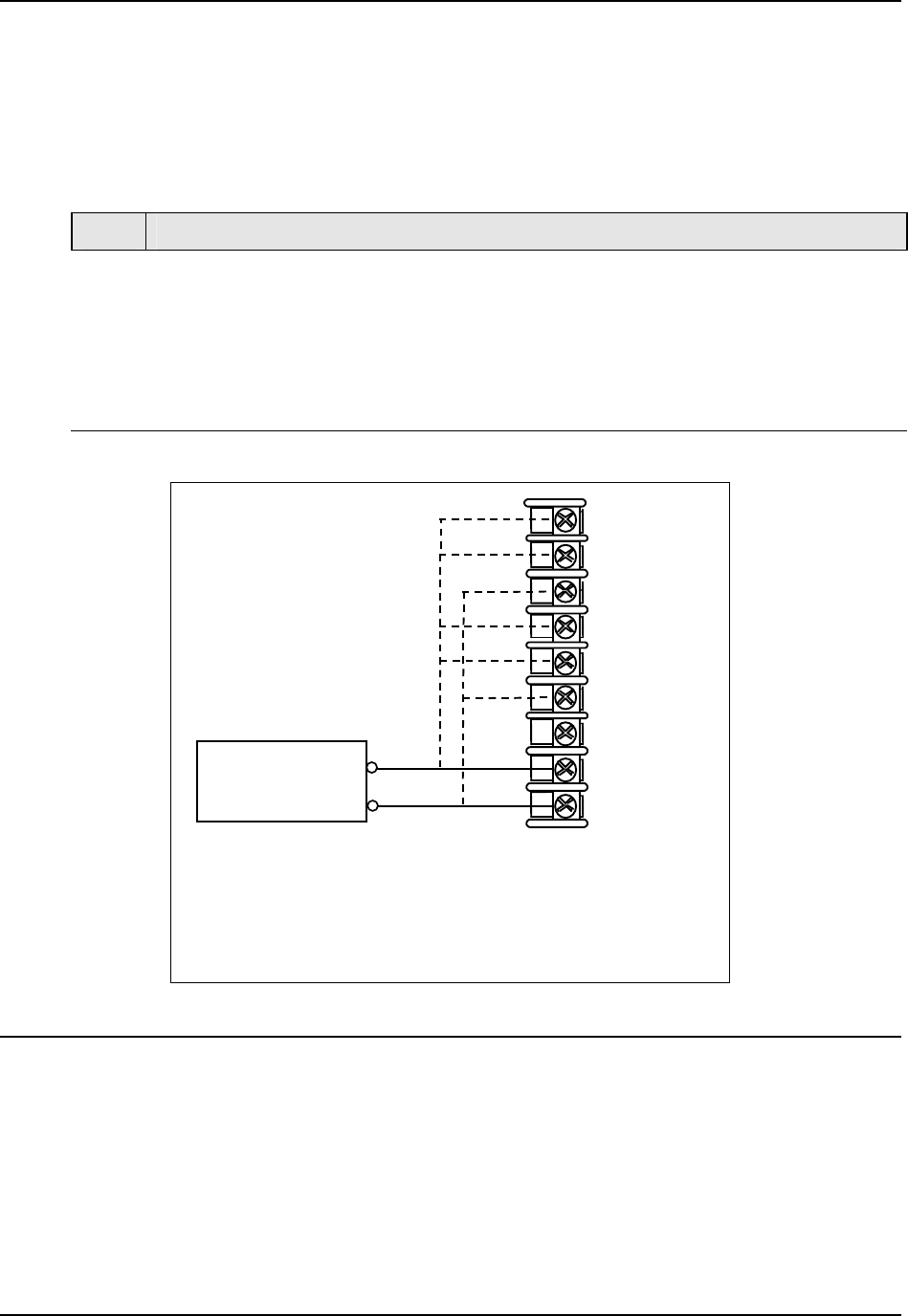
Input Calibration
5.4.7 Dual High Level Voltage Inputs
Refer to Figure 5-8 and wire the controller according to the procedure given in Table
5-10.
Table 5-10 Set Up Wiring Procedure for Dual High Level Voltage Inputs
Step Action
Connect the copper leads from the calibrator to the input to be calibrated as shown in
Figure 5-8.
1
Place voltage source at zero before switching on.
2
Following calibration, turn off the voltage source prior to disconnecting it from the
inst
rument.
3
Input 5
Terminals for Input 1 are 35 (+) and 36 (-)
Terminals for Input 2 are 32 (+) and 33 (-)
Terminals for Input 3 are 29 (+) and 30 (-)
Terminals for Input 4 are 31 (+) and 33 (-)
Terminals for Input 5 are 28 (+) and 30 (-)
Millivolt or
Volt Source
+
_
30-
29+
31+
32+
33-
34R
35+
36-
28+
Input 1
Input 2
Input 3
Input 4
Figure 5-8 Wiring Connections for Dual High Level Voltage Inputs
March 2012 UDC3500 Universal Digital Controller Product Manual 291
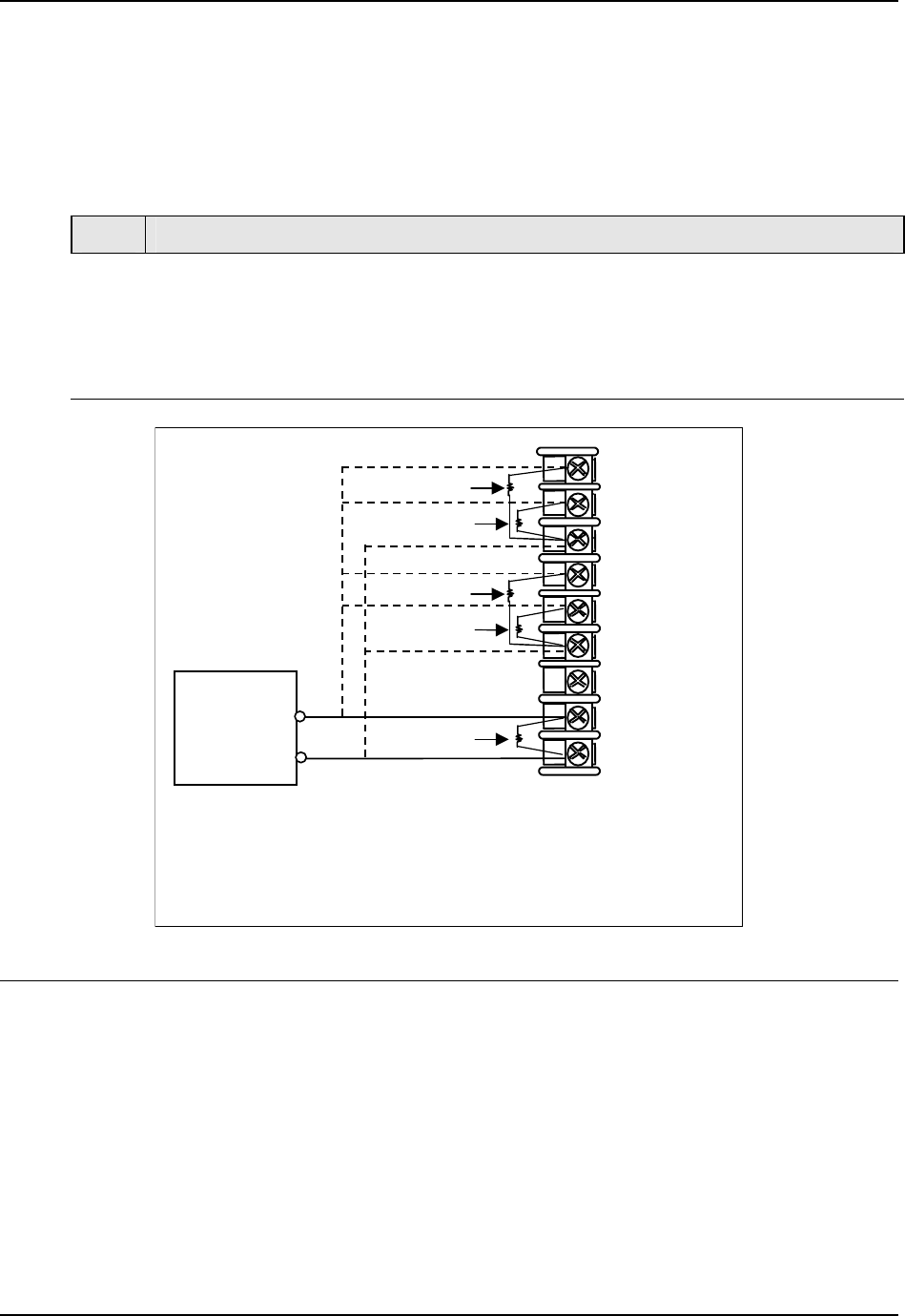
Input Calibration
5.4.8 Dual High Level Milliamperes Inputs
Refer to Figure 5-9 and wire the controller according to the procedure given in Table
5-11.
Table 5-11 Set Up Wiring Procedure for Dual High Level Milliampere Inputs
Step Action
Connect the copper leads from the calibrator to the input to be calibrated as shown in
Figure 5-9.
1
Place current source at zero before switching on.
2
Following calibration, turn off the current source prior to disconnecting it from the
inst
rument.
3
30-
29+
31+
32+
33-
34R
35+
36-
28+
Input 1
Input 2
Input 3
250 ohms
Milliampere
Source
_
+
250 ohms
250 ohms
250 ohms
250 ohms
Input 5
Input 4
Terminals for Input 1 are 35 (+) and 36 (-)
Terminals for Input 2 are 32 (+) and 33 (-)
Terminals for Input 3 are 29 (+) and 30 (-)
Terminals for Input 4 are 31 (+) and 33 (-)
Terminals for Input 5 are 28 (+) and 30 (-)
Figure 5-9 Wiring Connections for Dual High Level Milliampere Inputs
292 UDC3500 Universal Digital Controller Product Manual March 2012
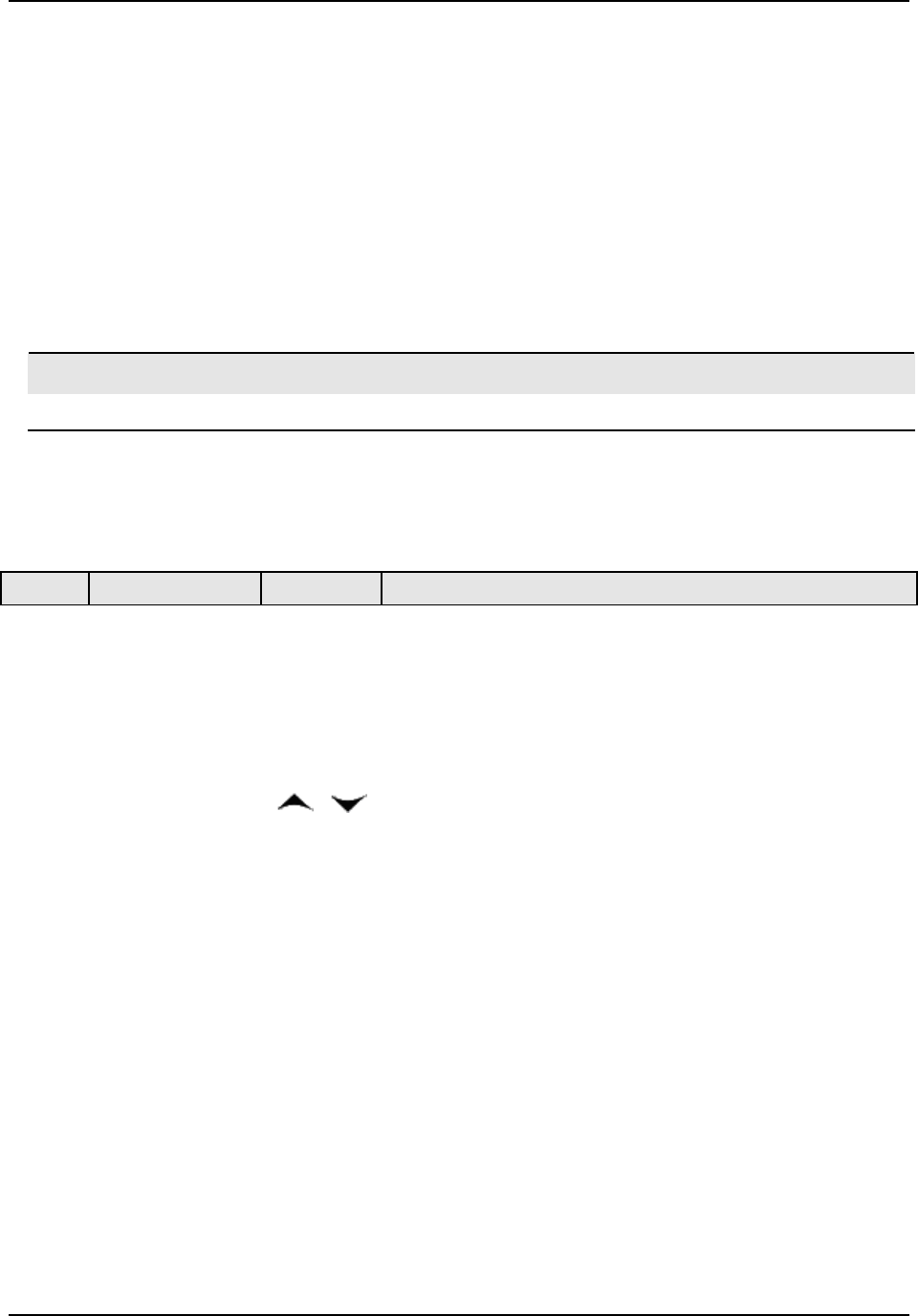
Input Calibration
March 2012 UDC3500 Universal Digital Controller Product Manual 293
5.5 Input Calibration Procedure
Preliminary Steps
Apply power and allow the controller to warm up for 30 minutes before you calibrate.
Please read Subsection 5.3 before beginning the procedure.
Make sure you have LOCK set to NONE. See Subsection 3.4 – Loop 1 Tuning Set
Up Group
.
See Table 5-1 for Voltage vs. Resistance equivalents or 0 % and 100 % range values.
CAUTION
For linear inputs, avoid step changes in inputs. Vary smoothly from initial value to final 100 % value.
Procedure
The calibration procedure for Input #1 or 2 is listed in Table 5-12.
Table 5-12 Input Calibration Procedure
Step Operation Press Result
1
Enter Calibration
Mode
Setup
until you see
Upper Display = CALIB
Lower Display = INPUTn [n=1 to 5]
Func
Loop 1/2
You will see:
Upper Display = DISABLE
Lower Display = CAL INn [n=1 to 5]
or
The calibration sequence is enabled and you will see:
Upper Display = BEGIN
Lower Display = CAL INn [n=1 to 5]
At the completion of the sequence, the selection
automatically reverts to disable.
2
Calibrate 0 %
Func
Loop 1/2
You will see:
Upper Display = APPLY
Lower Display = INn ZERO [n=1 to 5]
Adjust your calibration device to an output signal equal
to the 0 % range value for your particular input sensor.
See Table 5-1 for Voltage, Degrees, or Resistance
equivalents for 0 % range values.
Wait 15 seconds, then go to the next step.
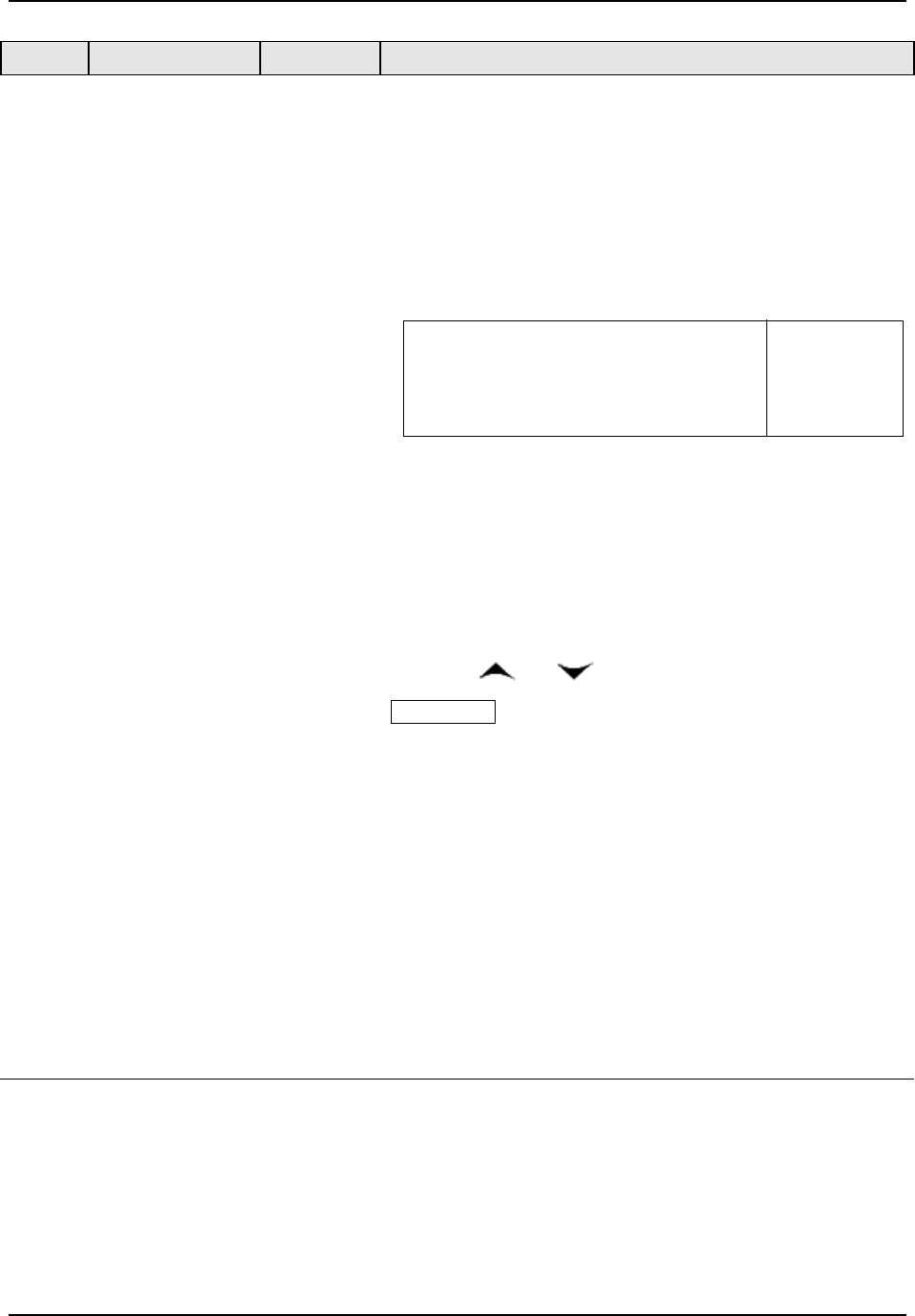
Input Calibration
294 UDC3500 Universal Digital Controller Product Manual March 2012
Step Operation Press Result
3
Calibrate 100 %
Func
Loop 1/2
You will see:
Upper Display = APPLY
Lower Display = INn SPAN [n=1 to 5]
Adjust your calibration device to an output signal equal
to the 100 % range value for your particular input
sensor. See Table 5-1 for Voltage, Degrees, or
Resistance equivalents for 100 % range values.
Wait 15 seconds, and
I
f … Then …
you are calibrating a Thermocouple input go to step 4
you are calibrating other than a go to step 5
Thermocouple input
4
Check the Cold
Junction
Temperature
Func
Loop 1/2
The calculations for zero and span are now stored and you
will see:
Upper Display = The temperature of the Cold Junction
Sensor mounted on the rear terminals
Lower Display = CJTEMP
The value in the upper display is in tenths of a degree. It is
the current reading of the cold junction temperature as
measured by the controller. This value can be changed by
using the
and keys.
WARNING It is recommended that this value not be
changed under normal circumstances. Changing this value
will not change the thermocouple reading on your
instrument. Instead, it changes the effect of cold junction
temperature compensation for future ambient temperature
changes. If you wish to adjust the temperature reading of
your instrument following a Field Calibration, then use the
Input Bias setting. See Section 3.15 (Input 1), Section 3.16
(Input 2) or Section 3.17 (Input 3).
5
Exit the
Calibration Mode
Func
Loop 1/2
then
The controller stores the calibration constants and exits the
calibration mode.
Lower
Display
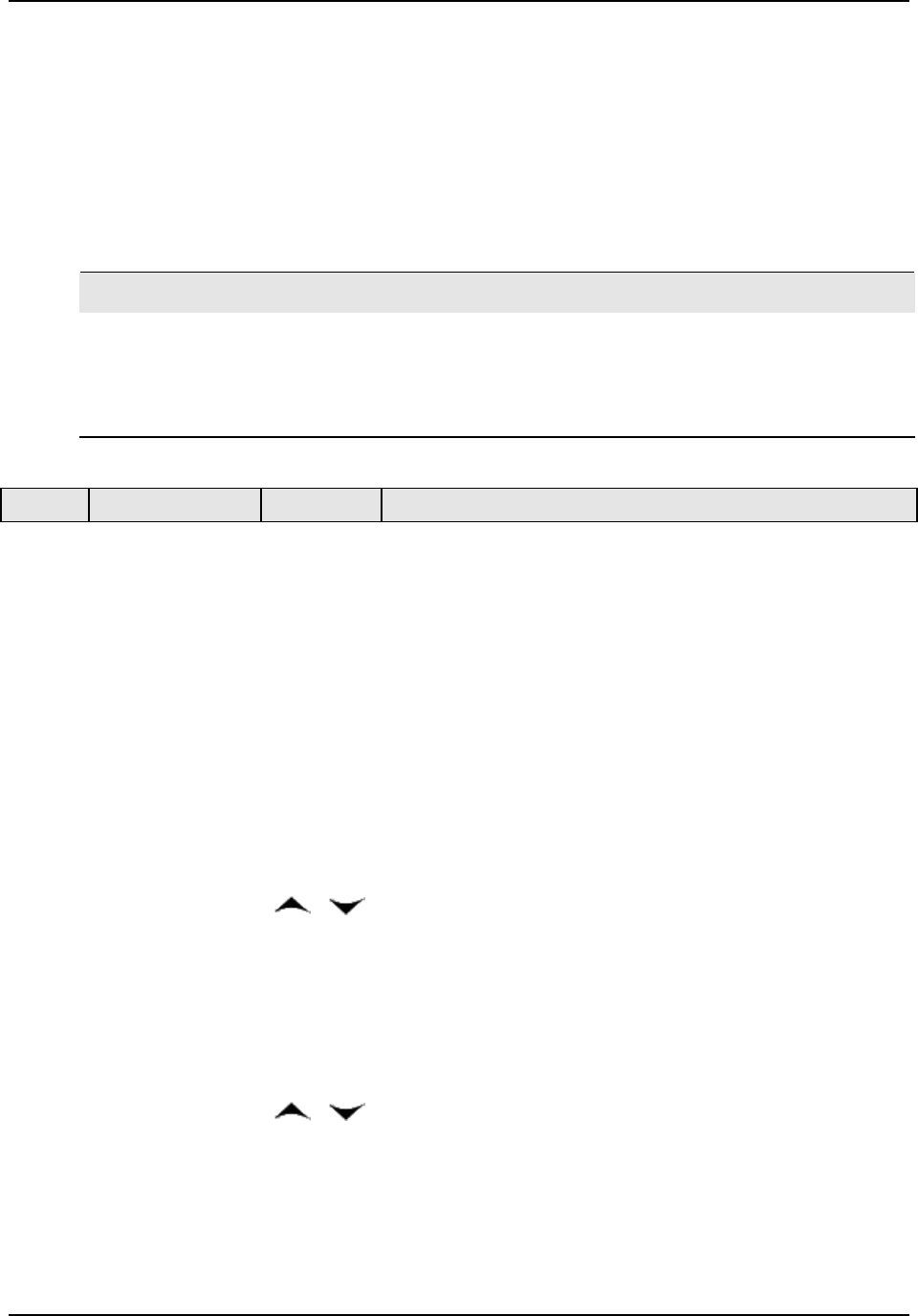
Input Calibration
5.6 Restore Input Factory Calibration
Introduction
The factory calibration constants for all the input actuation types that can be used with
the controller are stored in its non-volatile memory. Thus, you can quickly restore the
“Factory Calibration” for a given input actuation type by simply changing the actuation
type to another type and then changing it back to the original type.
Refer to Table 5-13 Restore Factory Calibration for procedure
ATTENTION
A restored factory calibration overwrites any previous field calibration done for the input and
may change the High and Low Range Limits.
Protect your field calibration from accidental overwrites by configuring the appropriate
LOCKOUT selection after calibration.
See Section 3 – Configuration for s
pec
ific instructions to set the lockout.
Table 5-13 Restore Factory Calibration
Operation Press Result Step
Set LOCKOUT to
NONE
Setup
until you see:
Upper Display = SET UP
Lower Display = TUNING
1
Func
Loop 1/2
Until you see:
Upper Display = one of the following:
NONE – all parameters are read/write
CALIB – all parameters are read/write except Calibration
+CONF – configuration parameters are Read Only; no
writes permitted
+VIEW – Tuning and Setpoint Ramp parameters are
read/write. No other parameters can be viewed.
ALL – Tuning and Setpoint Ramp parameters are available
for read only. No other parameters can be viewed.
Lower Display = LOCKOUT
or
Until NONE is in the upper display
Enter INPUT
Setup Group
Setup
until you see:
Upper Display = SET UP
Lower Display = INPUT n n = 1 to 5
2
Func
Loop 1/2
until you see:
Upper Display = the current selection
Lower Display = INn TYPE
n = 1 to 5
or
to change the current selection to another selection
Scroll through
Functions
Func
Loop 1/2
until the lower display rolls through the rest of the functions and
returns to:
Upper Display = the new selection
Lower Display = INn TYPE
n = 1 to 5
3
March 2012 UDC3500 Universal Digital Controller Product Manual 295
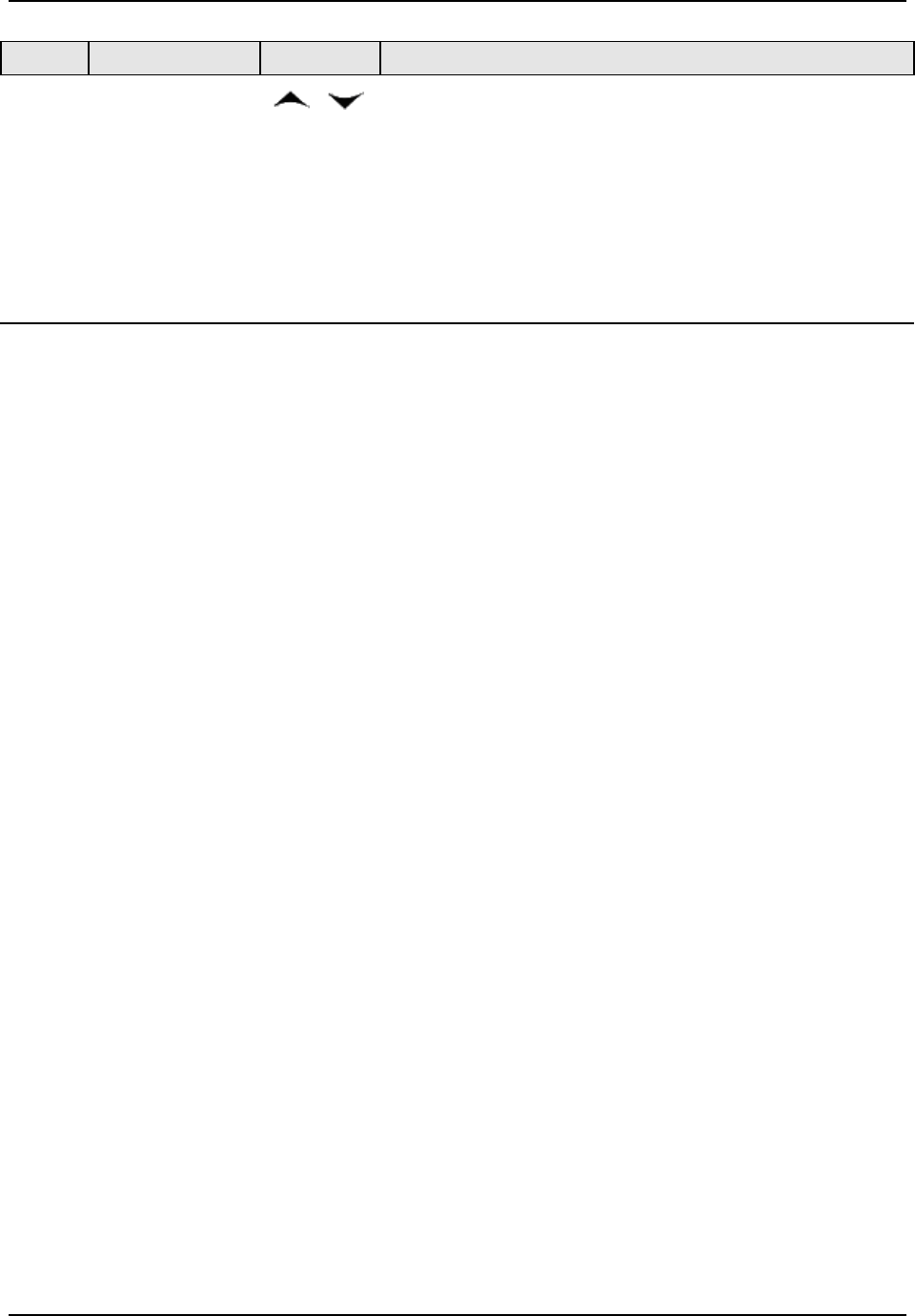
Input Calibration
Step Operation Press Result
or
until you change the input selection in the upper display back to the
proper selection. You will see:
Upper Display = Original Input Selection that matches your
type of sensor.
Lower Display = INn TYPE
n = 1 to 5
4
Return to Normal
Operation
Lower
Display
to return to Normal operating mode.
The factory calibration will be restored. If the problem is not
corrected, contact the Honeywell Technical Assistance Center at 1-
800-423-9883 USA and Canada
296 UDC3500 Universal Digital Controller Product Manual March 2012
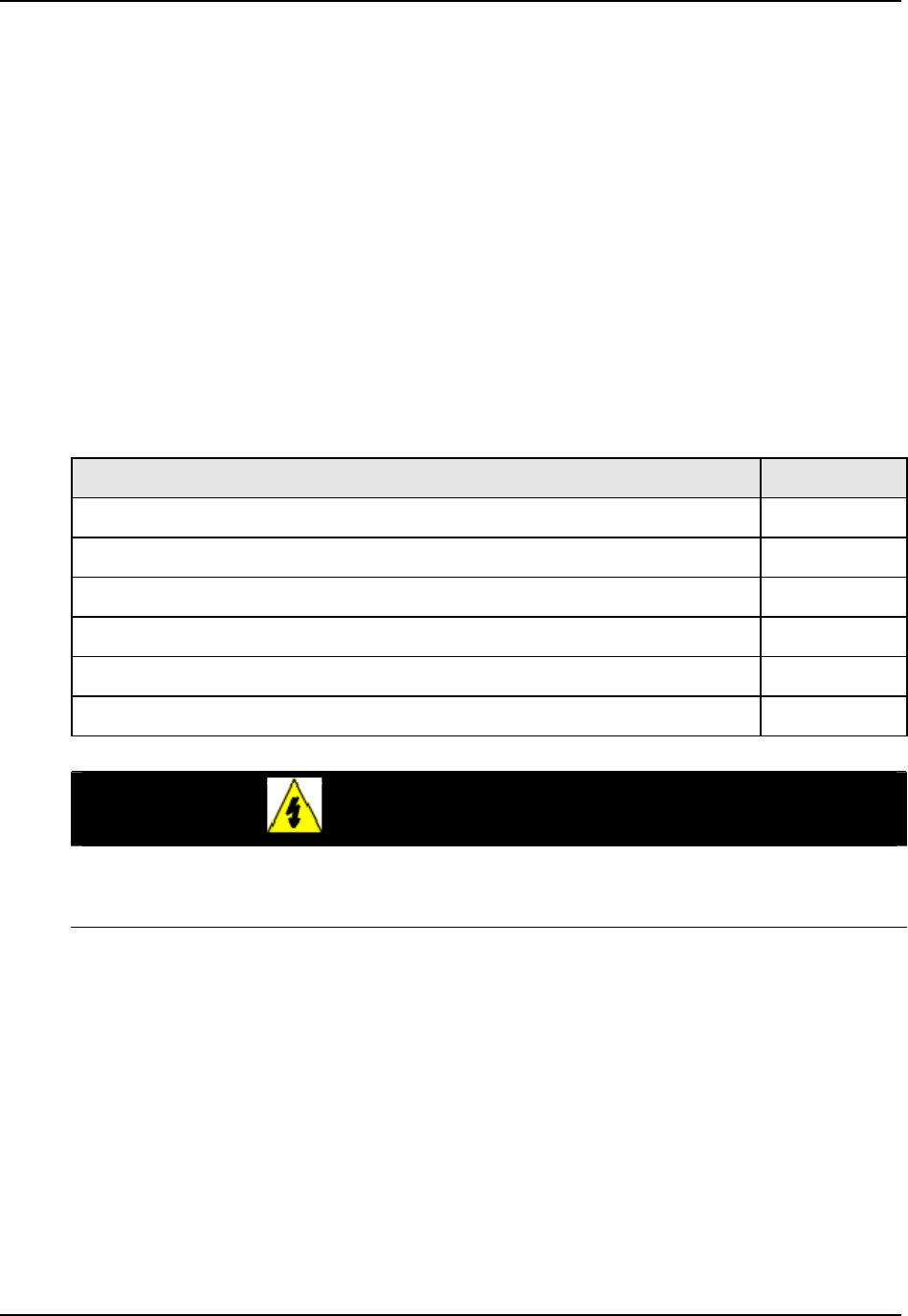
Output Calibration
March 2012 UDC3500 Universal Digital Controller Product Manual 297
6 Output Calibration
6.1 Overview
Introduction
This section describes the field calibration procedures for the following types of outputs:
Current Outputs
Position Proportional Output and Three Position Step Output
What’s in this section?
The following topics are covered in this section.
TOPIC See Page
6.1 Overview 297
6.2 First Current Output Calibration 298
6.3 Second Current Output Calibration 300
6.4 Third Current Output Calibration 302
6.5 Position Proportional and Three Position Step Output Calibration 304
6.6 Restore Factory Output Calibration 307
WARNING—SHOCK HAZARD
OUTPUT CALIBRATION MAY REQUIRE ACCESS TO HAZARDOUS LIVE CIRCUITS, AND
SHOULD ONLY BE PERFORMED BY QUALIFIED SERVICE PERSONNEL. MORE THAN
ONE SWITCH MAY BE REQUIRED TO DE-ENERGIZE UNIT BEFORE CALIBRATION.
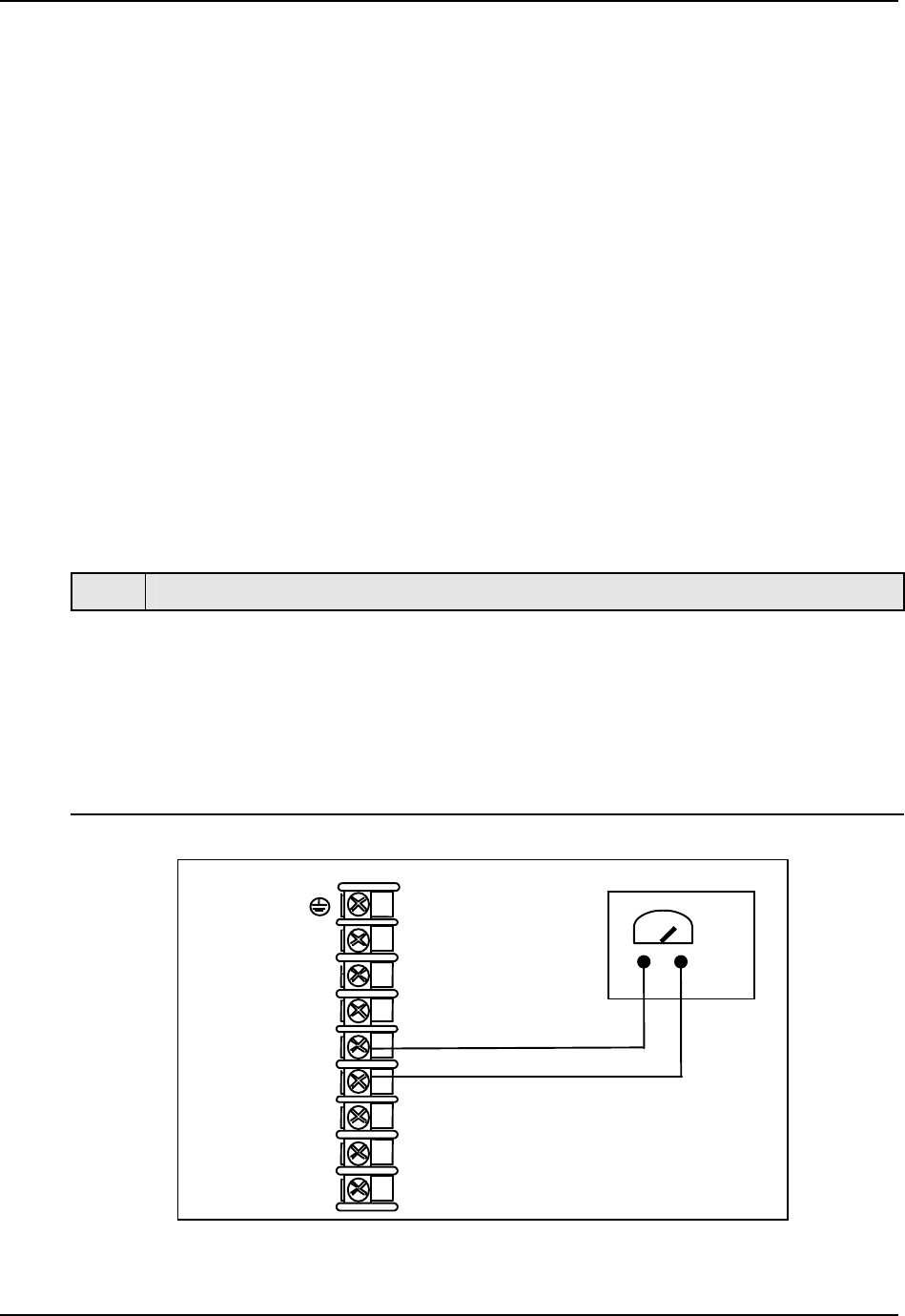
Output Calibration
6.2 First Current Output Calibration
Introduction
Calibrate the controller so that the output provides the proper amount of current over the
desired range. The controller can provide a current output range of from 0 mA to 21 mA.
The controller is usually calibrated at 4 mA for 0 % of output and 20 mA for 100 % of
output, but it may be calibrated for any other values between 0 mA and 21 mA. It is not
necessary to re-calibrate the controller in order to change from 4 to 20 mA operation over
to 0 to 20 mA operation, a simple configuration change is all that is required. See the CO
RANGE configuration for First Current Output in
Sub-section 3.14 for details.
Equipment Needed
You will need a standard shop type milliammeter, with whatever accuracy is required,
capable of measuring 0 to 20 milliamps.
Calibrator Connections
Refer to Figure 6-1 and wire the controller according to the procedure given in Table 6-1.
Table 6-1 Set Up Wiring Procedure for the First Current Output
Step Action
Apply power and allow the controller to warm up 30 minutes before you calibrate.
1
2 Set LOCK in the Tuning Set Up group to NONE.
Tag and disconnect the field wiring, at the rear of the controller, from terminals
5 (+) and 6 (–). See Figure 6-1.
3
Connect a milliammeter across these terminals.
4
Milliammeter
+
_
+
_
L2/N
L1
4
5
6
7
8
9
Curre nt
Out
p
ut 1
Figure 6-1 Wiring Connections for Calibrating the First Current Output
298 UDC3500 Universal Digital Controller Product Manual March 2012
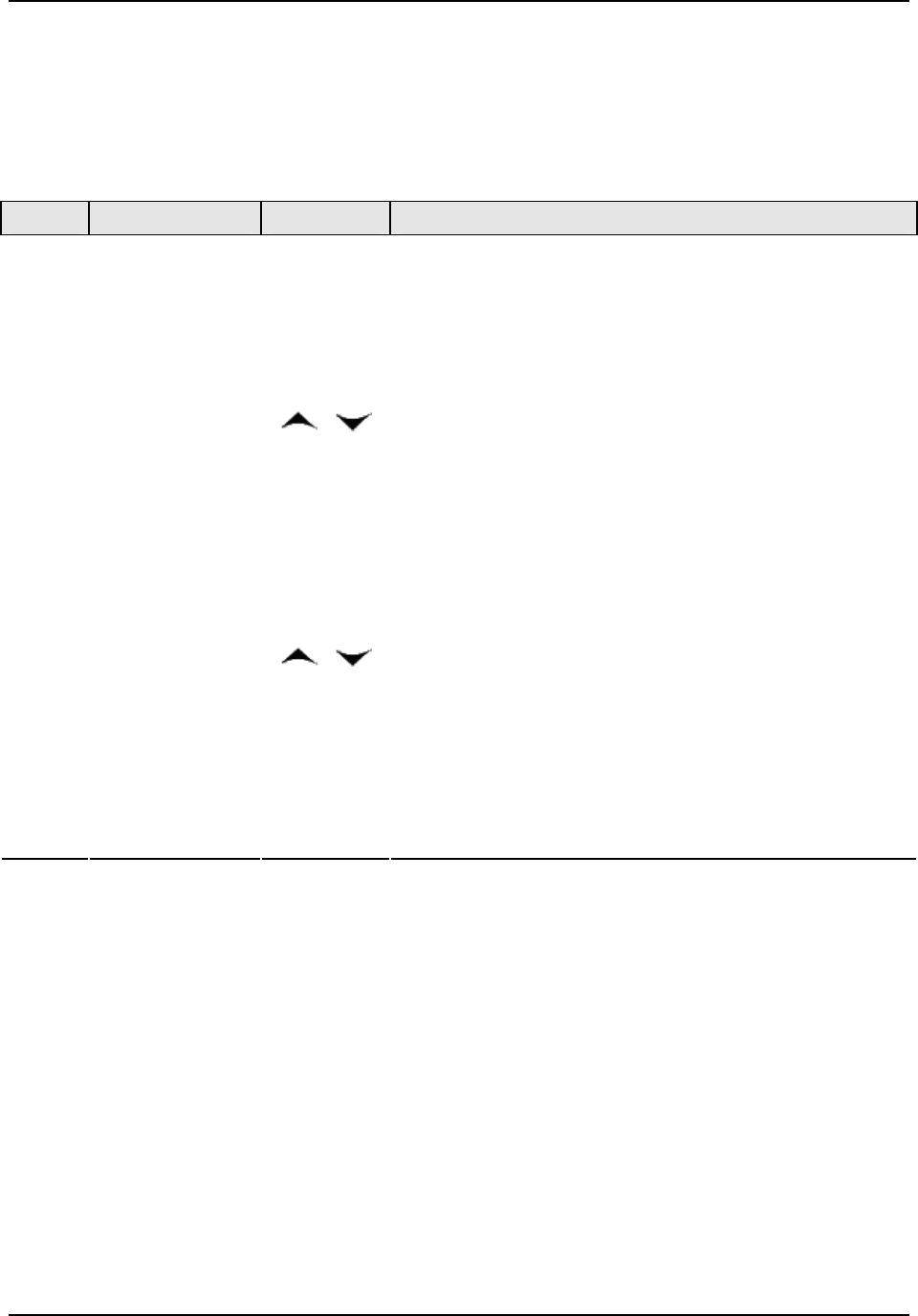
Output Calibration
Procedure
The procedure for calibrating the First Current Output is listed in Table 6-2. Make sure
that LOCK in the Tuning Set Up group is set to
NONE. (See Subsection 3.4 – Loop 1
Tuning Set Up Group.)
Table 6-2 First Current Output Calibration Procedure
Operation Press Result Step
Enter Calibration
Mode
Setup
until you see
Upper Display = CALIB
Lower Display = CURRENT
1
Calibrate 0 %
Func
Loop 1/2
You will see:
Upper Display =
A Value
Lower Display = ZERO VAL
2
or
Until the desired 0 % output is read on the milliammeter,
use the values shown below depending on the action of
your controller. Normally, this will be the setting that
produces 4 mA.
Calibrate 100 %
Func
Loop 1/2
This stores the 0 % value and
you will see:
Upper Display =
A Value
Lower Display = SPAN VAL
3
or
Until the desired 100 % output is read on the milliammeter,
use the values shown below depending on the action of
your controller. Normally, this will be the setting that
produces 20 mA.
Func
Loop 1/2
The controller stores the span value.
Exit the
Calibration Mode
4
To exit the calibration mode.
Lower
Display
March 2012 UDC3500 Universal Digital Controller Product Manual 299
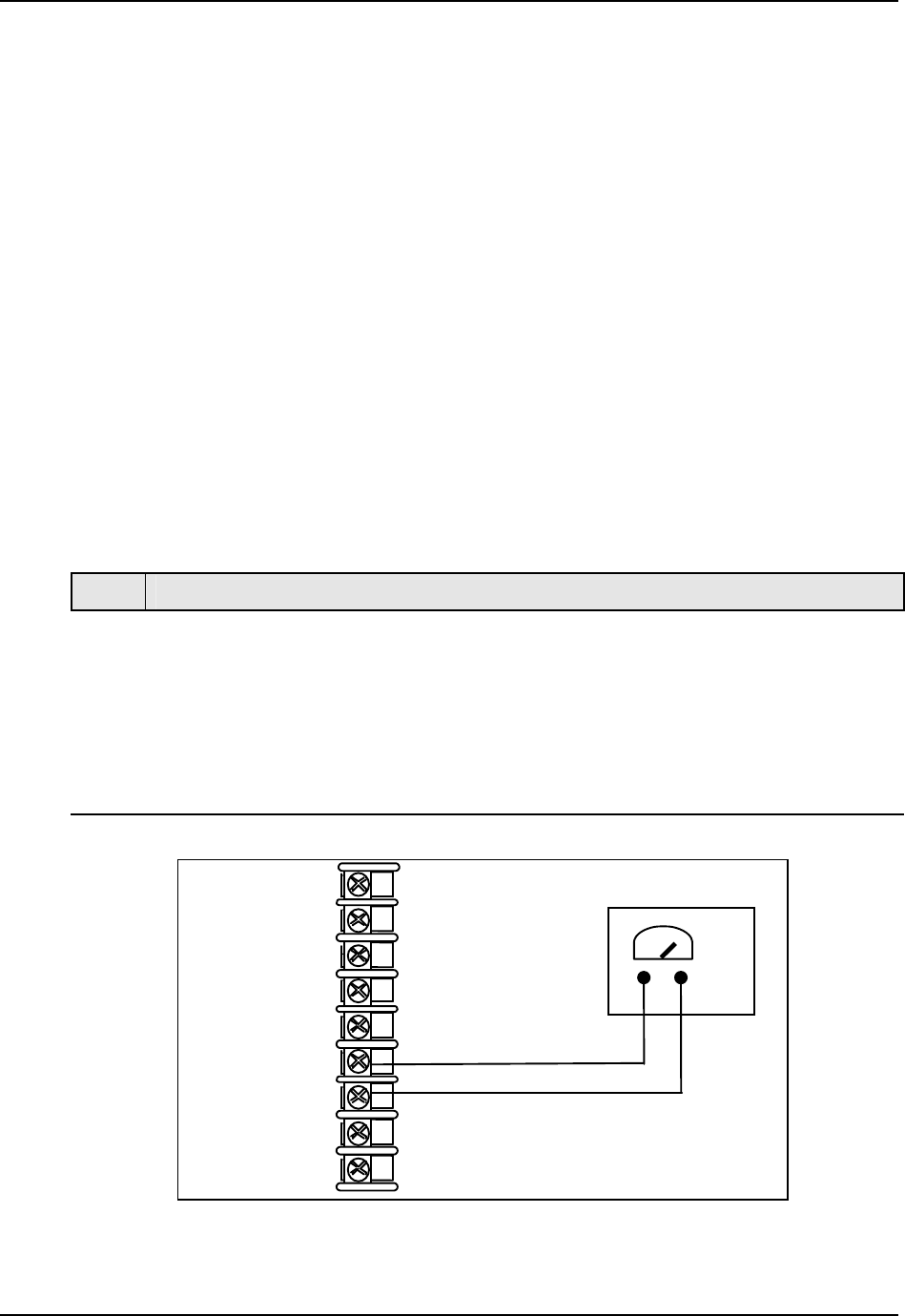
Output Calibration
6.3 Second Current Output Calibration
Introduction
Calibrate the controller so that the output provides the proper amount of current over the
desired range. The controller can provide a current output range of from 0 mA to 21 mA.
The controller is usually calibrated at 4 mA for 0 % of output and 20 mA for 100 % of
output, but it may be calibrated for any other values between 0 mA and 21 mA. It is not
necessary to re-calibrate the controller in order to change from 4 to 20 mA operation over
to 0 to 20 mA operation, a simple configuration change is all that is required. See the CO
RANGE configuration for Second Current Output in
Sub-section 3.22 for details.
Equipment Needed
You will need a calibrating device with whatever accuracy is required, capable of
measuring 0 to 20 mA.
Calibrator Connections
Refer to Figure 6-2 and wire the controller according to the procedure given in Table 6-3.
Table 6-3 Set Up Wiring Procedure for the Second Current Output
Step Action
Apply power and allow the controller to warm up 30 minutes before you calibrate.
1
2 Set LOCK in the Tuning Set Up group to NONE.
Tag and disconnect the field wiring, at the rear of the controller, from terminals 24 (+)
and 25 (–). See Figure 6-2.
3
Connect a milliammeter across these terminals.
4
Milliammeter
+
_
+
_
21
20
22
23
24
25
26
27
19
Curre nt
Out
p
ut 2
Figure 6-2 Wiring Connections for Calibrating the Second Current Output
300 UDC3500 Universal Digital Controller Product Manual March 2012
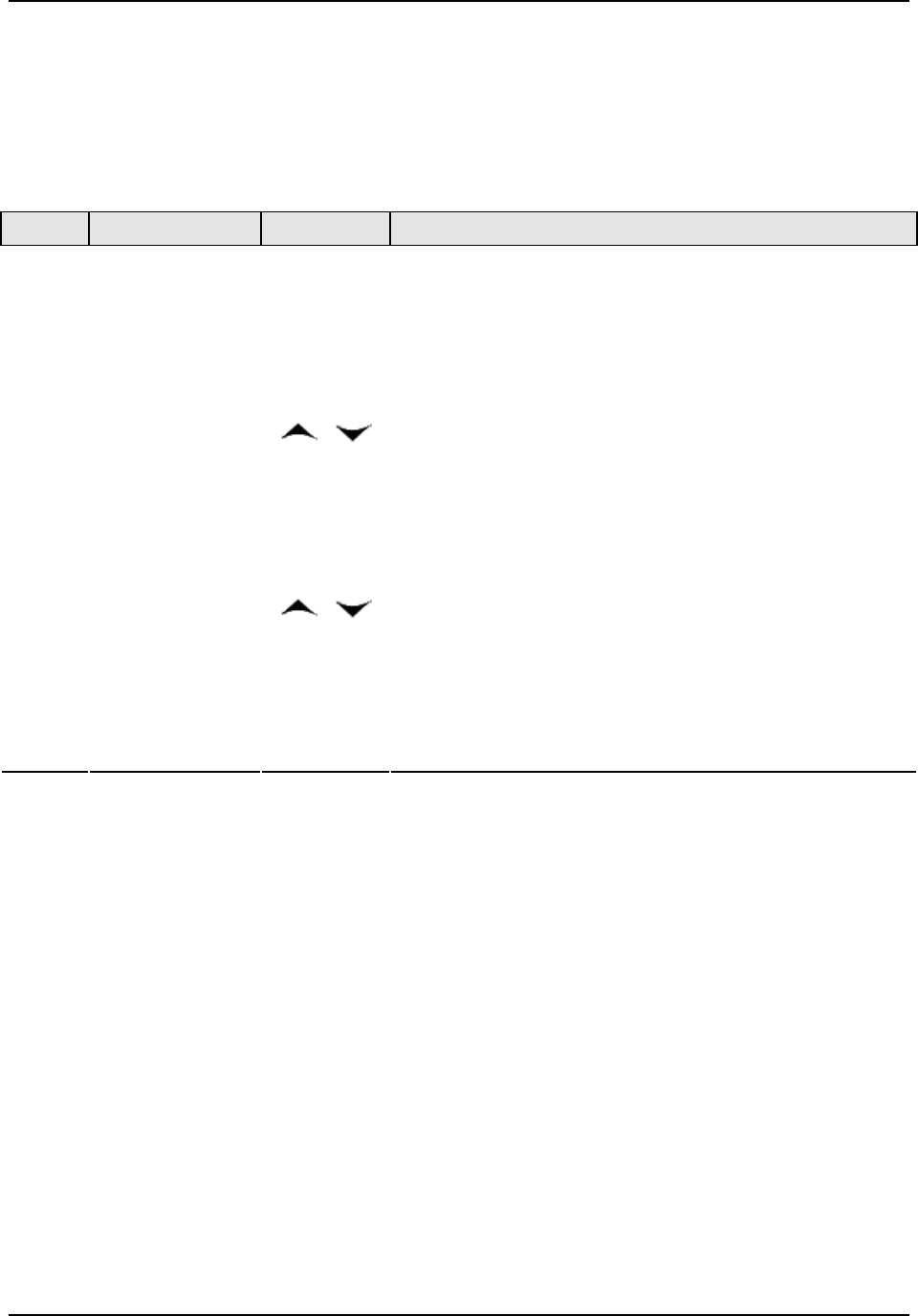
Output Calibration
Procedure
The procedure for calibrating the Second Current Output is listed in Table 6-4.
Make sure that “LOCK” in the Tuning Set Up group is set to “NONE” (see
Subsection
3.4).
Table 6-4 Second Current Output Calibration Procedure
Operation Press Result Step
Enter Calibration
Mode
Setup
until you see
Upper Display = CALIB
Lower Display = CUR OUT2
1
Calibrate 0 %
Func
Loop 1/2
You will see:
Upper Display = A Value
Lower Display = ZERO VAL
2
or
until the desired 0 % output is read on the milliammeter.
Normally, this will be the setting that produces 4 mA.
Calibrate 100 %
Func
Loop 1/2
To store the 0 % value you will see:
Upper Display = A Value
Lower Display = SPAN VAL
3
or
until the desired 100 % output is read on the milliammeter.
Normally, this will be the setting that produces 20 mA.
Func
Loop 1/2
The controller stores the span value.
Exit the
Calibration Mode
4
To exit the calibration mode.
Lower
Display
March 2012 UDC3500 Universal Digital Controller Product Manual 301
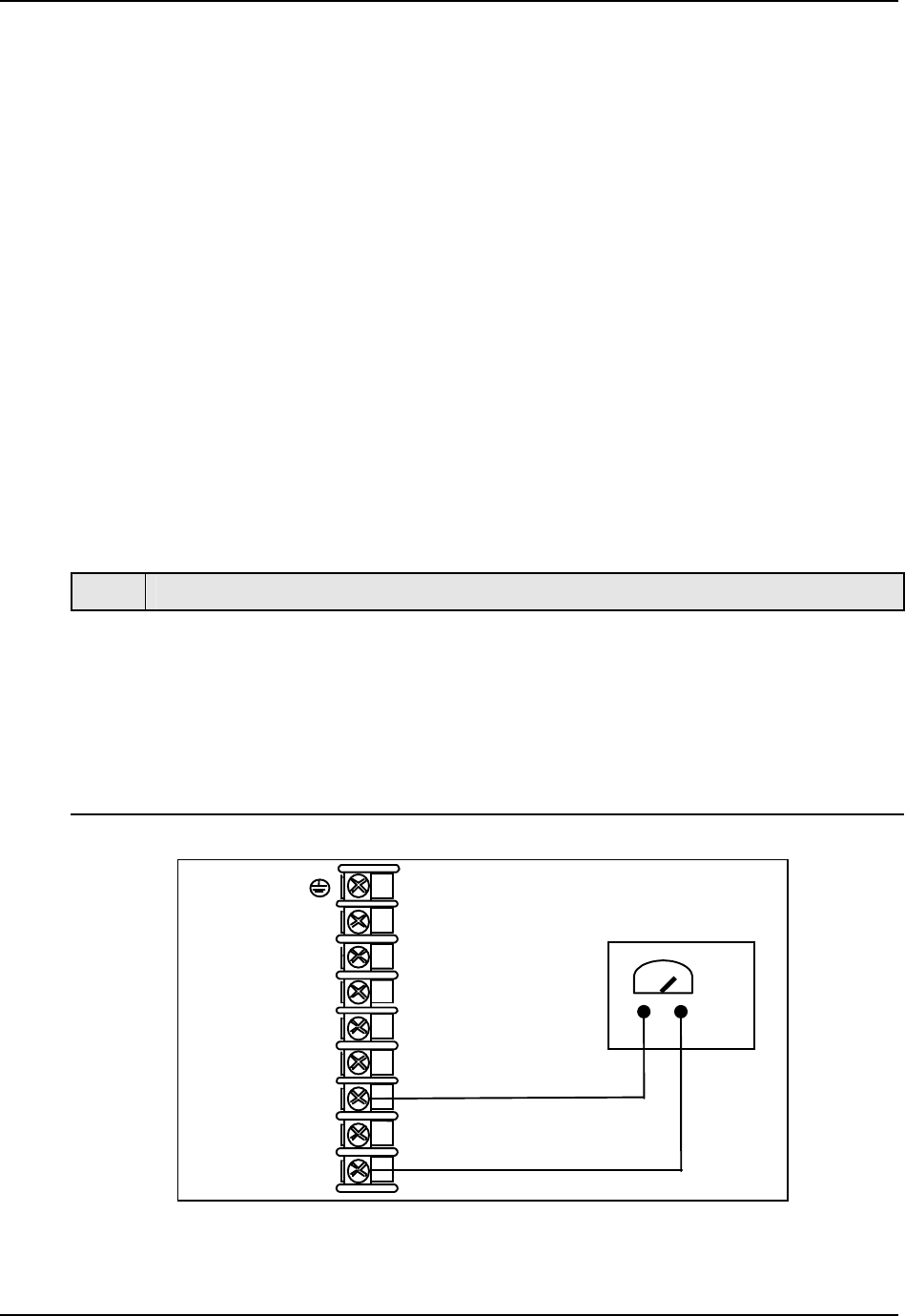
Output Calibration
6.4 Third Current Output Calibration
Introduction
Calibrate the controller so that the output provides the proper amount of current over the
desired range. The controller can provide a current output range of from 0 mA to 21 mA.
The controller is usually calibrated at 4 mA for 0 % of output and 20 mA for 100 % of
output, but it may be calibrated for any other values between 0 mA and 21 mA. It is not
necessary to re-calibrate the controller in order to change from 4 to 20 mA operation over
to 0 to 20 mA operation; a simple configuration change is all that is required. See the CO
RANGE configuration for Third Current Output in
Sub-section 3.22 for details.
Equipment Needed
You will need a calibrating device with whatever accuracy is required, capable of
measuring 0 to 20 mA.
Calibrator Connections
Refer to Figure 6-3 and wire the controller according to the procedure given in Table 6-5.
Table 6-5 Set Up Wiring Procedure for the Third Current Output
Step Action
Apply power and allow the controller to warm up 30 minutes before you calibrate.
1
2 Set LOCK in the Tuning Set Up group to NONE.
Tag and disconnect the field wiring, at the rear of the controller, from terminals 7 (+)
and 9 (–). See Figure 6-3.
3
Connect a milliammeter across these terminals.
4
Milliammeter
+
_
+
_
L2/N
L1
4
5
6
7
8
9
Curre nt
Out
p
ut 3
Figure 6-3 Wiring Connections for Calibrating Third Current Output
302 UDC3500 Universal Digital Controller Product Manual March 2012
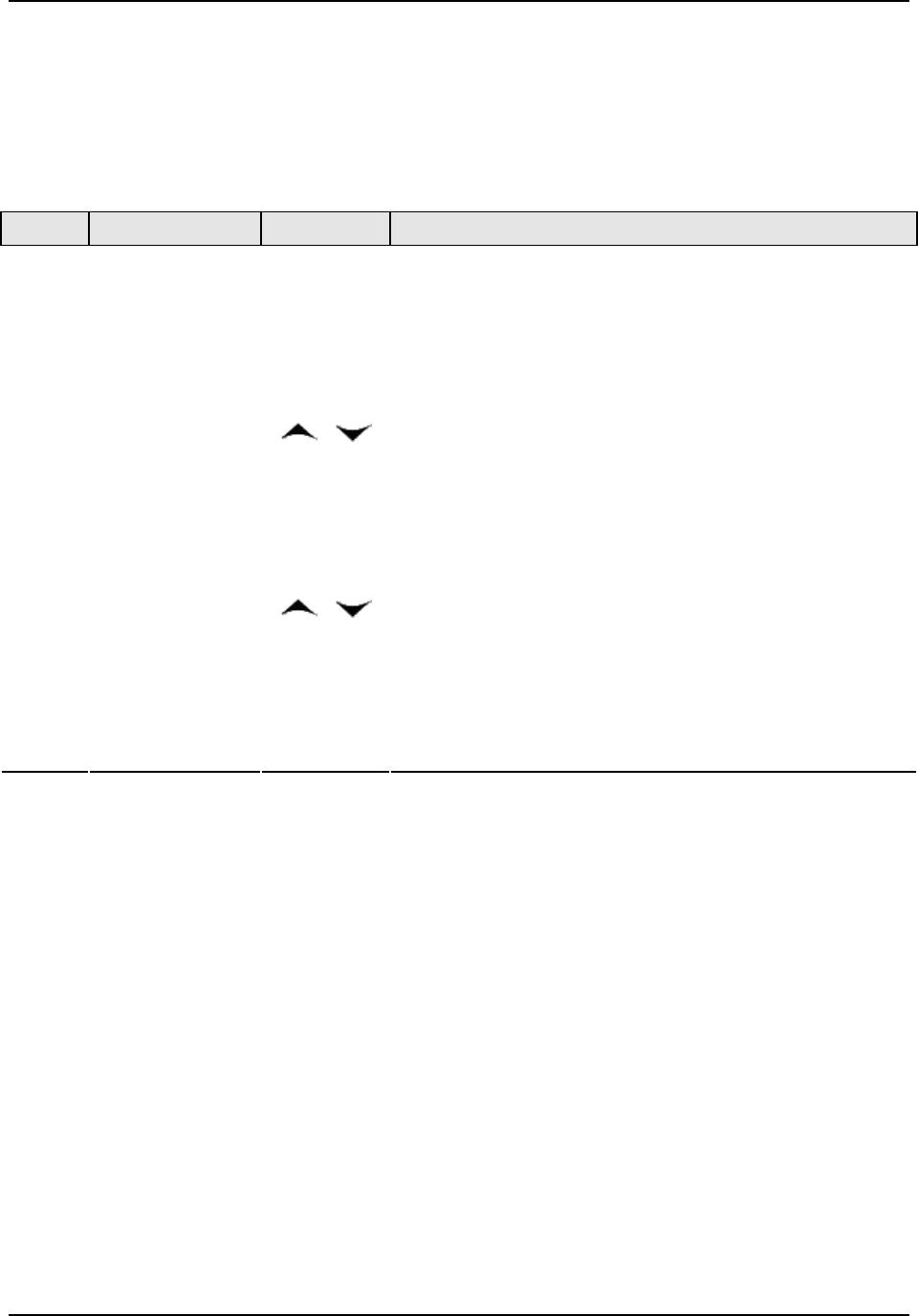
Output Calibration
Procedure
The procedure for calibrating the Third Current Output is listed in Table 6-6.
Make sure that “LOCK” in the Tuning Set Up group is set to “NONE” (see
Subsection
3.4).
Table 6-6 Third Current Output Calibration Procedure
Operation Press Result Step
Enter Calibration
Mode
Setup
until you see
Upper Display = CALIB
Lower Display = CUR OUT3
1
Calibrate 0 %
Func
Loop 1/2
You will see:
Upper Display = A Value
Lower Display = ZERO VAL
2
or
until the desired 0 % output is read on the milliammeter.
Normally, this will be the setting that produces 4 mA.
Calibrate 100 %
Func
Loop 1/2
To store the 0 % value you will see:
Upper Display = A Value
Lower Display = SPAN VAL
3
or
until the desired 100 % output is read on the milliammeter.
Normally, this will be the setting that produces 20 mA.
Func
Loop 1/2
The controller stores the span value.
Exit the
Calibration Mode
4
To exit the calibration mode.
Lower
Display
March 2012 UDC3500 Universal Digital Controller Product Manual 303
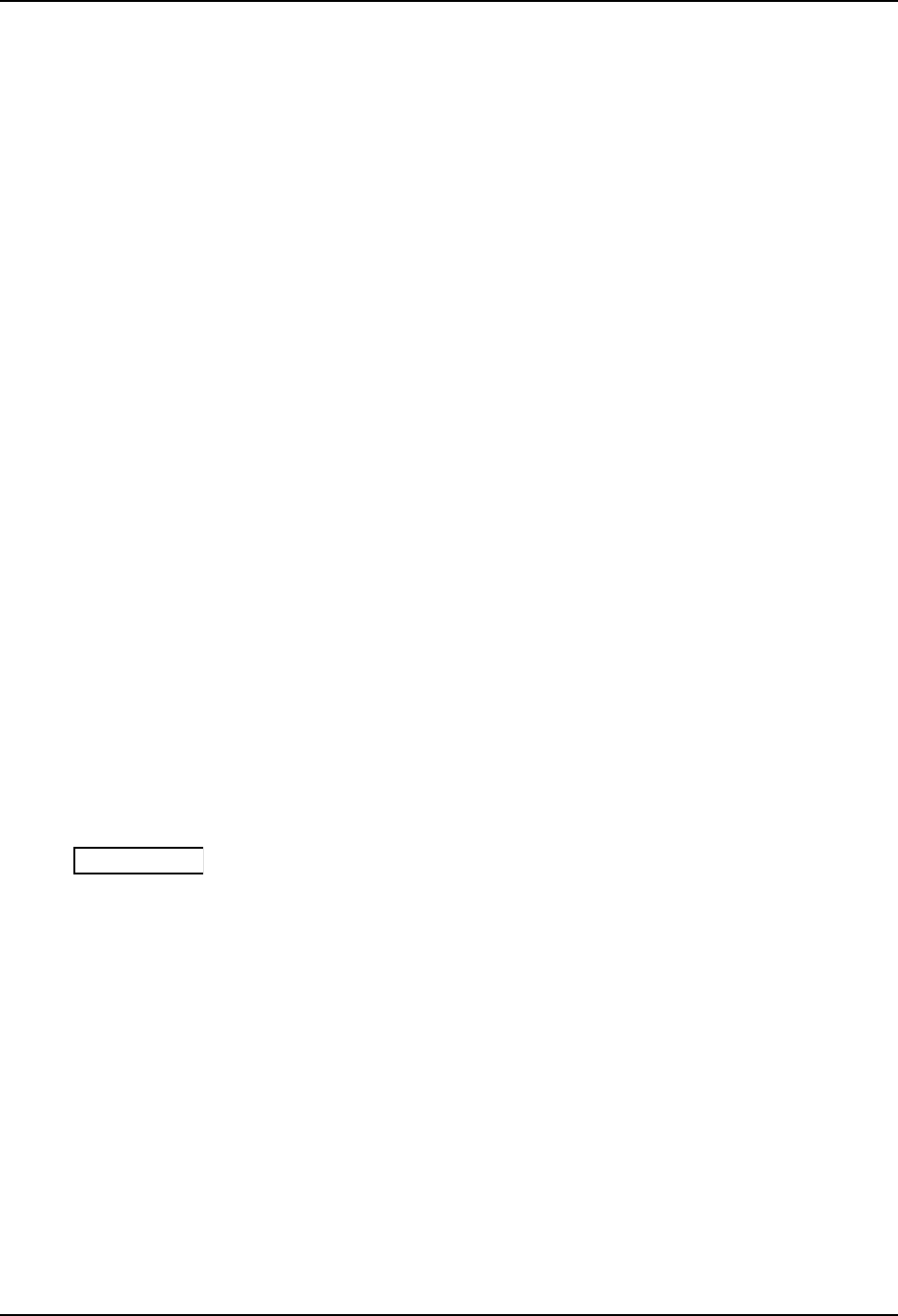
Output Calibration
6.5 Position Proportional and Three Position Step Output Calibration
Position Proportional control
Position Proportional Control Output Models
Enter the “Motor Time” as shown in Section 3.14. This model must have its
output calibrated per the entire procedure to ensure the displayed output
(slidewire position) agrees with the f
inal control element position.
Three position step control
Three Position Step Control Output Models not using slidewire feedback.
This model only requires that the “Motor Time” be entered as shown in Section
3.14.
Three Position Step Control Models using slidewire feedback.
Enter the “Motor Time” as shown in Section 3.14. This model must have its
output calibrated per the entire procedure to ensure the displayed output
(slidewire position) agrees with the f
inal control element position.
Equipment needed
None.
Connections
Apply power and leave all field wiring connected to the rear terminals.
Procedure
The procedure for calibrating the Three Position Step or Position Proportional control is
listed in Table 6-7.
Make sure LOCKOUT in Tuning Set Up group is set to NONE. See Subsection 3.4.
ATTENTION
For Three Position Step Control (TPSC), these prompts only appear when
“SLIDEW” or “SW EMUL” is selected in the INPUT 3 Setup group. For Position
Proportional Control, the Output algorithm must also be configured for “POSPROP”. The
Motor Time must be entered in the Output Algorithm Group for both Position
Proportional or for Three Position Step control. See Section 3.14 for details.
304 UDC3500 Universal Digital Controller Product Manual March 2012
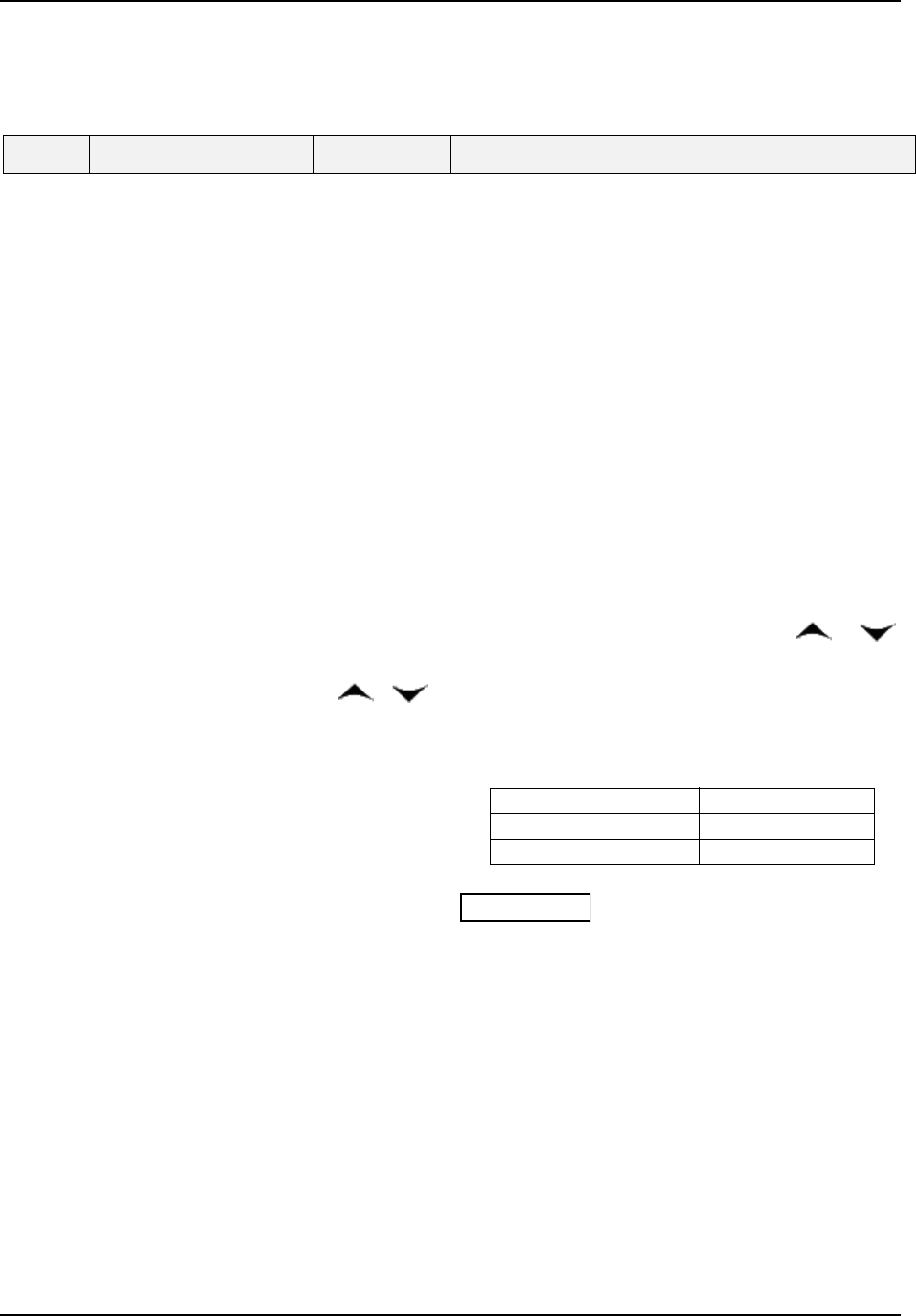
Output Calibration
Table 6-7 Position Proportional and Three Position Step Output Calibration
Procedure
Description Press Action Step
Enter Calibration Mode
Setup
until you see
Upper Display = CALIB
Lower Display = POS PROP
continued
1
Select Automatic or
Manual Calibration
Func
Loop 1
/2
until you see:
Upper Display = DISABLE
Lower Display = POS PROP
You can calibrate the controller output manually or let the
controller calibrate the output automatically.
If the slidewire has never been calibrated, you must use
DO AUTO first. In the “Automatic Calibration Mode” (DO
AUTO), the controller relays automatically move the motor
in the proper direction.
If desired, however, the motor may be manually positioned
to 0 % and 100 % positions. Disconnect the relay wires.
Use DO MAN. In the “Manual Calibration Mode” (DO
MAN), the motor does not move. Instead, the existing 0 %
and 100 % values may be changed with the
or
key.
2
or
to select automatic or manual calibration.
Upper Display = DO AUTO or DO MAN
Lower Display = POS PROP
If you select… Then…
DO AUTO go to Step 3
DO MAN go to Step 5
ATTENTION
When calibration is terminated, this
selection reverts to DISABLE.
3 DO AUTO
Set 0 % value
Func
Loop 1/2
The decrement relay is turned on to move the motor to 0 %
position.
Upper Display =
(counts of slidewire feedback 0-3000)
Lower Display = ZERO VAL
When the motor stops, the display should stop counting.
When that happens, go to Step 7.
March 2012 UDC3500 Universal Digital Controller Product Manual 305
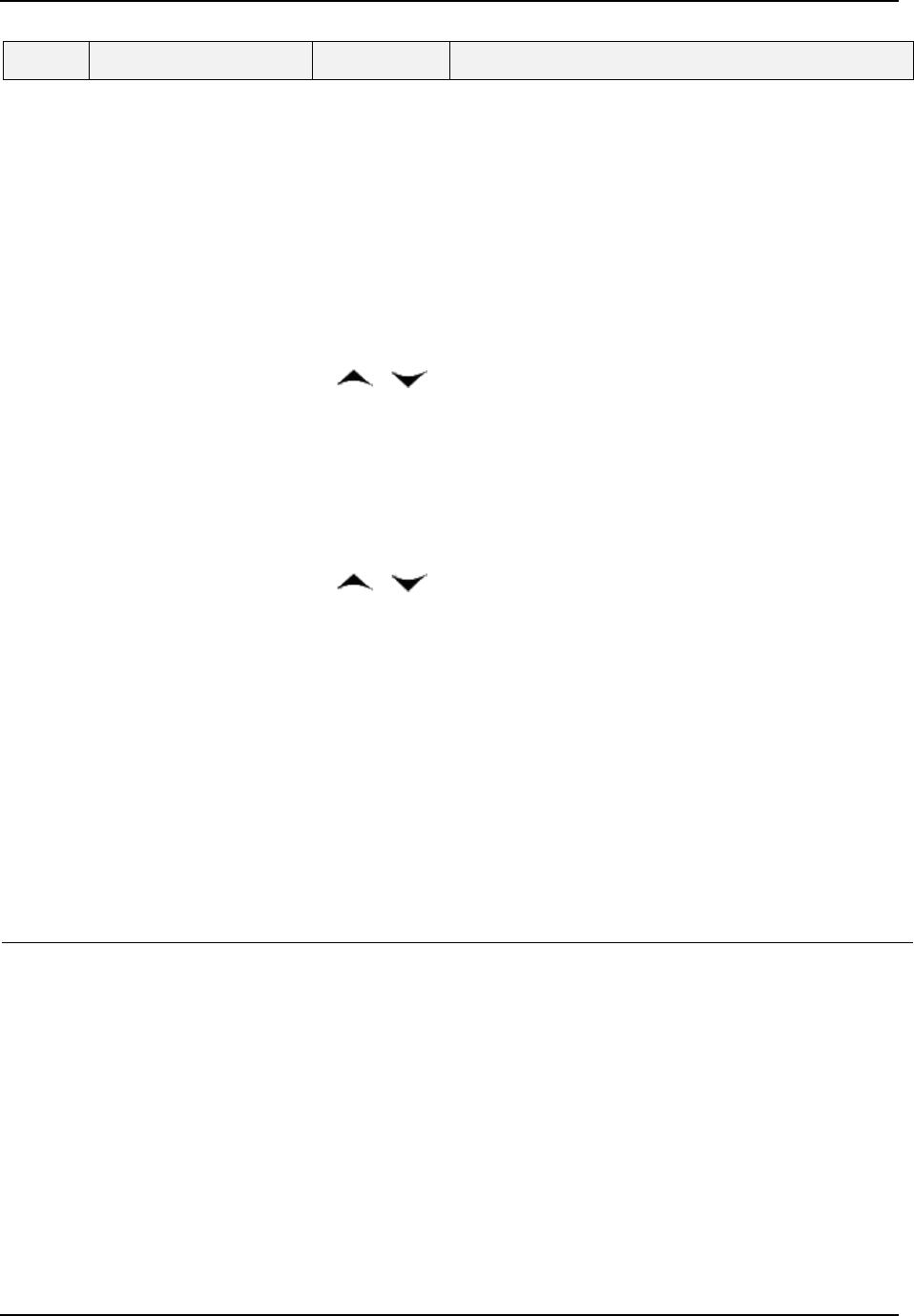
Output Calibration
306 UDC3500 Universal Digital Controller Product Manual March 2012
Step Description Press Action
4 DO AUTO
Set 100 % value
Func
Loop 1/2
The increment relay is turned on to move the motor to
100 % position.
Upper Display =
(counts of slidewire feedback 0-3000)
Lower Display = SPAN VAL
When the motor stops, the display should stop counting.
When that happens, go to Step 7.
5 DO MAN
Set 0 % value
Func
Loop 1/2
You will see:
Upper Display =
(the existing zero calibration value in counts))
Lower Display = ZERO VAL
or
until the desired zero value is reached in the upper display.
Upper Display =
(the desired zero calibration value)
Lower Display = ZERO VAL
6 DO MAN
Set 100 % value
Func
Loop 1/2
The controller will store the 0 % value and you will see:
Upper Display =
(the existing span calibration value in counts))
Lower Display = SPAN VAL
or
until the desired span value is reached in the upper
display.
Upper Display =
(the desired span calibration value)
Lower Display = SPAN VAL
For manual calibration, the motor does not move from its
position prior to the start of Position Proportional
calibration.
7
Exit the Calibration Mode
Func
Loop 1/2
The controller will store the 100 % value.
Lower
Display
or
Setup
To exit the calibration mode
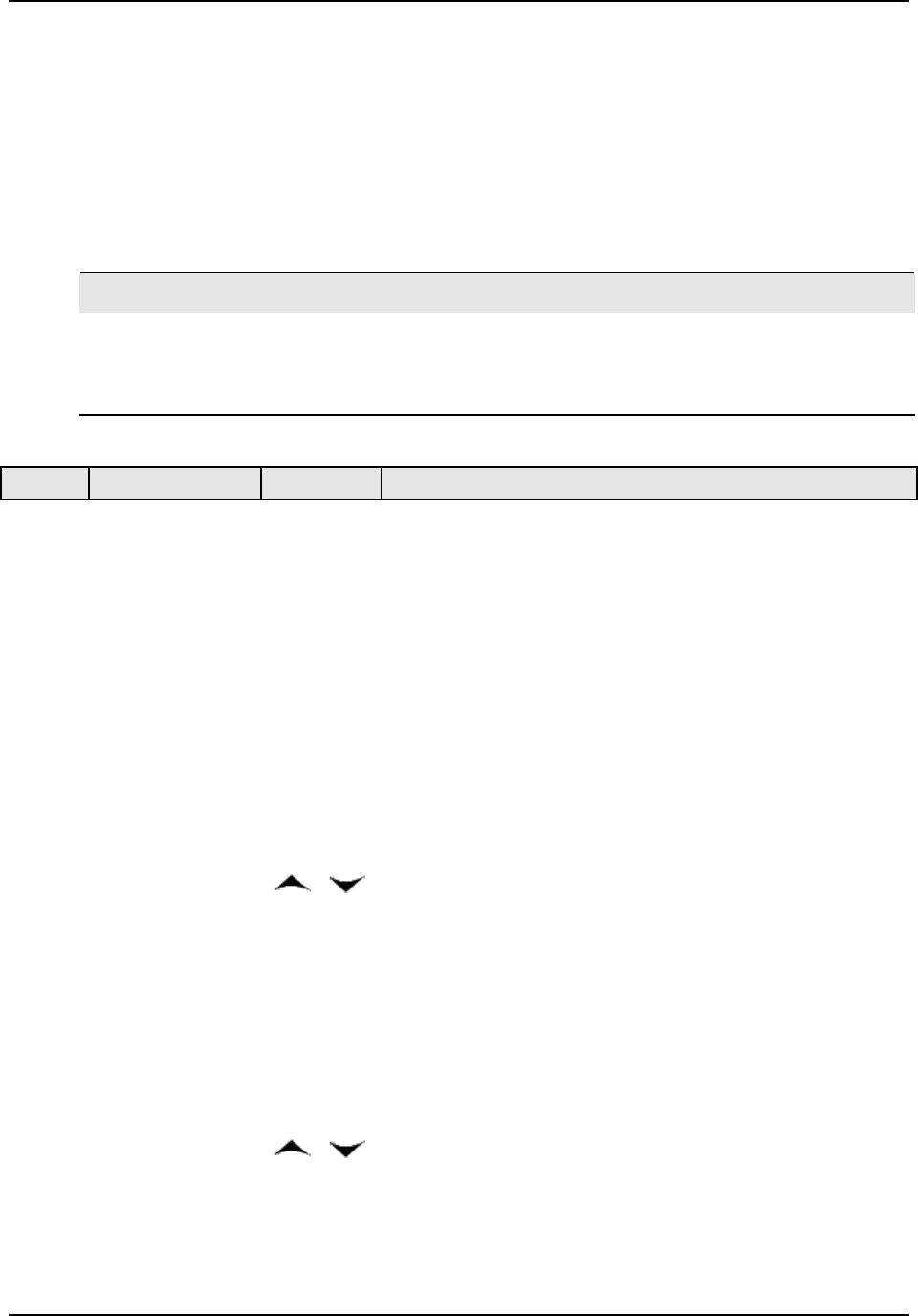
Output Calibration
6.6 Restore Factory Output Calibration
Introduction
The factory calibration constants for the Current Outputs are stored in its non-volatile
memory. Thus, you can quickly restore the “Factory Calibration” for those outputs by
simply changing the CO RANGE setting for that output to the other setting and then
changing it back to the original type.
Refer to Table 6-8 Restore Factory Calibration for procedure
ATTENTION
A restored factory calibration overwrites any previous field calibration done for the output.
Protect your field calibration from accidental overwrites by configuring the appropriate
LOCKOUT selection after calibration.
See Section 3 – Configuration for s
pec
ific instructions to set the lockout.
Table 6-8 Restore Factory Calibration
Operation Press Result Step
Set LOCKOUT to
NONE
Setup
until you see:
Upper Display = SET UP
Lower Display = TUNING
1
Func
Loop 1/2
Until you see:
Upper Display = one of the following:
NONE – all parameters are read/write
CALIB – all parameters are read/write except Calibration
+CONF – configuration parameters are Read Only; no
writes permitted
+VIEW – Tuning and Setpoint Ramp parameters are
read/write. No other parameters can be viewed.
ALL – Tuning and Setpoint Ramp parameters are available
for read only. No other parameters can be viewed.
Lower Display = LOCKOUT
or
Until NONE is in the upper display
Enter OUTPUT
or OPTIONS
Setup Group
Setup
until you see:
Upper Display = SET UP
Lower Display = OUTPUT (for First Current Output)
1. or –
Lower Display = OPTIONS (for Second or Third Current
Outputs)
2
Func
Loop 1/2
until you see:
Upper Display = the current selection
Lower Display = CO RANGE
or
to change the range configuration to the other selection
Scroll through
Functions
Func
Loop 1/2
until the lower display rolls through the rest of the functions and
returns to:
Upper Display = the new selection
Lower Display = CO RANGE
3
March 2012 UDC3500 Universal Digital Controller Product Manual 307
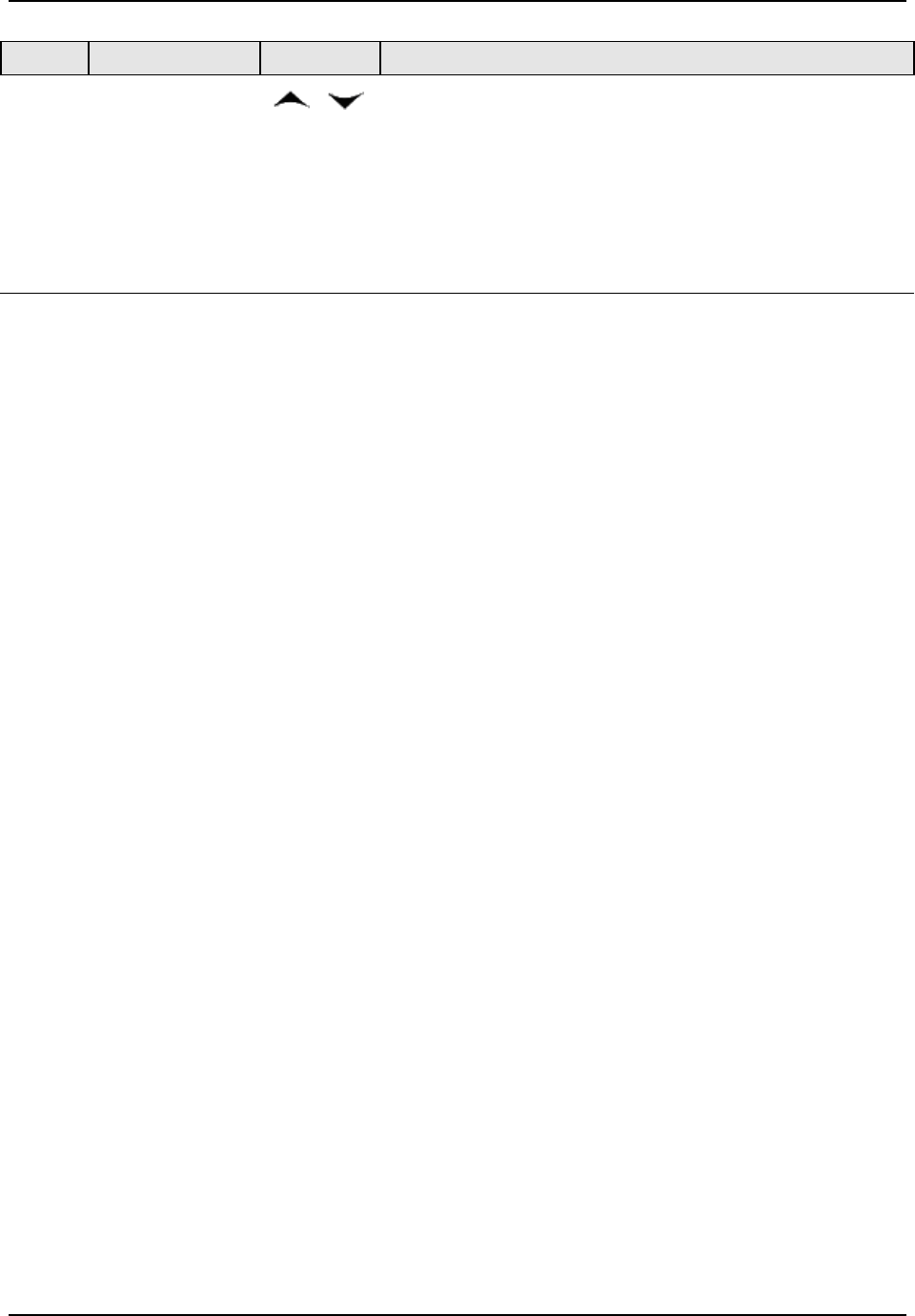
Output Calibration
Step Operation Press Result
or
to change the range selection in the upper display back to the
proper selection. You will see:
Upper Display = Original range selection
Lower Display = CO RANGE
Return to Normal
Operation
Lower
Display
to return to Normal operating mode.
The factory calibration will be restored. If the problem is not
corrected, contact the Honeywell Technical Assistance Center at 1-
800-423-9883 USA and Canada
4
308 UDC3500 Universal Digital Controller Product Manual March 2012
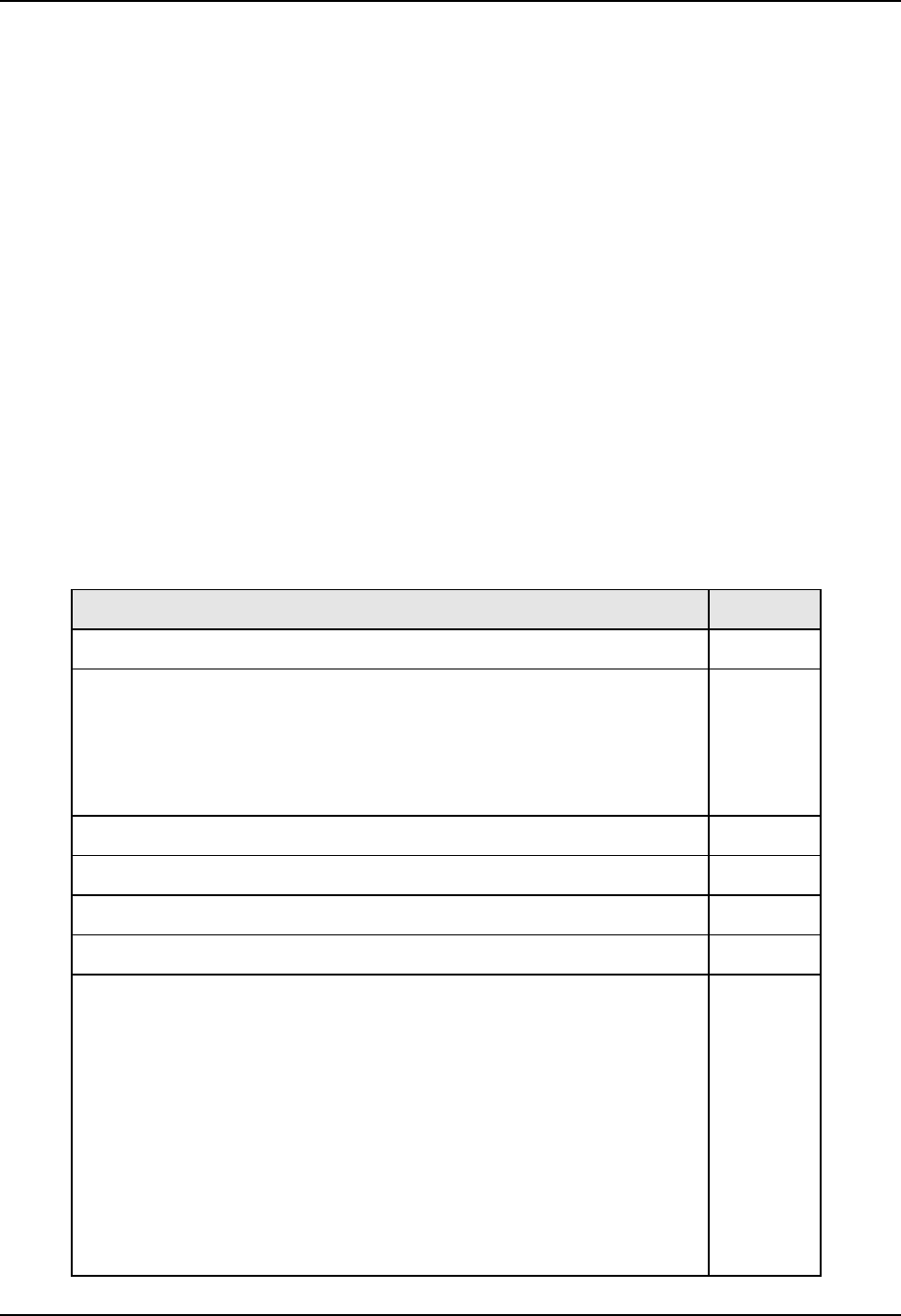
Troubleshooting/Service
7 Troubleshooting/Service
7.1 Overview
Introduction
Instrument performance can be adversely affected by installation and application
problems as well as by hardware problems. We recommend that you investigate the
problems in the following order:
installation related problems
application related problems
hardware and software related problems
and use the information presented in this section to solve them.
What’s in this section?
The following topics are covered in this section.
TOPIC See Page
7.1 Overview 309
7.2 Troubleshooting Aids
• Overall Error Messages
• Controller Failure Symptoms
• Customer Support
• Determining the Software Version Number
310
7.3 Power-up Tests 312
7.4 Status Tests 312
7.5 Background Tests 313
7.6 Controller Failure Symptoms 318
7.7 Troubleshooting Procedures
• Power Failure
• Current Proportional Output Failure
• Position Proportional Output Failure
• Time Proportional Output Failure
• Time/Current – Current/Time Proportional Output
Failure
• Alarm Relay Output Failure
• Keyboard Failure
• Analog Input Failure
• RS-485 Communications Failure
319
320
320
322
325
326
327
328
329
329
332
March 2012 UDC3500 Universal Digital Controller Product Manual 309
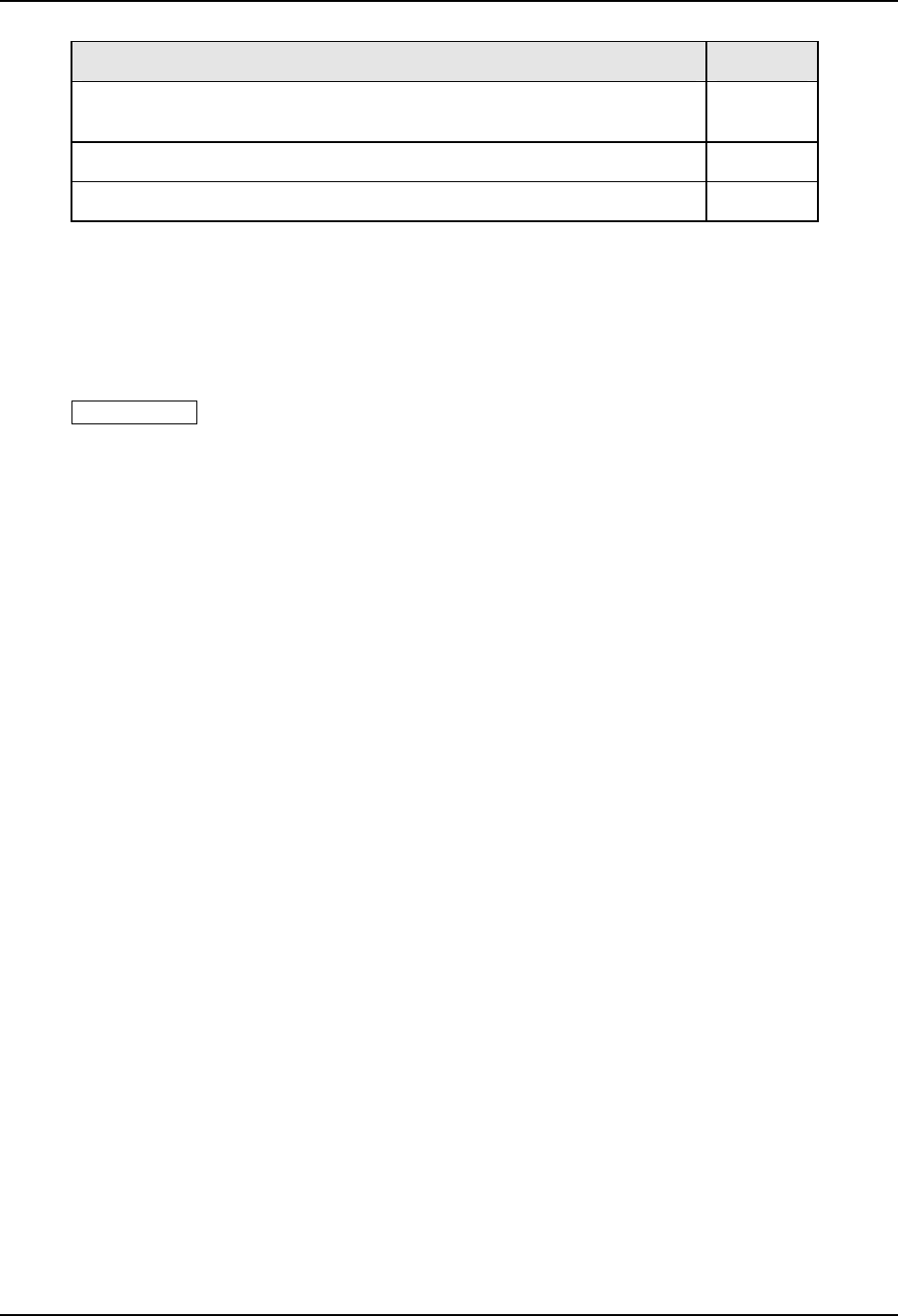
Troubleshooting/Service
310 UDC3500 Universal Digital Controller Product Manual March 2012
TOPIC See Page
• Ethernet Communications Failure
• Email Failure
333
7.8 Restore Factory Configuration 334
7.9 Software Upgrades 335
Installation related problems
Read the Installation section in this manual to make sure the instrument has been
properly installed. The installation section provides information on protection against
electrical noise, connecting external equipment to the controller, and shielding and
routing external wiring.
ATTENTION System noise induced into the controller will result in diagnostic error
messages recurring. If the diagnostic error messages can be cleared, it indicates a “soft”
failure and is probably noise related.
If system noise is suspected, completely isolate the controller from all field wiring.
Use calibration sources to simulate PV and check all controller functions; i.e. Gain, Rate,
Reset, Output, Alarms, etc.
See Section 11.3 for further information.
Application related problems
Review the application of the controller; then, if necessary, direct your questions to the
local sales office.
Hardware and software related problems
Use the troubleshooting error message prompts and controller failure symptoms to
identify typical failures that may occur in the controller. Follow the troubleshooting
procedures to correct them.
7.2 Troubleshooting Aids
Overall error messages
An error message can occur:
At power-up. See Subsection 7.3.
When the Status Tests are requested. See Subsection 7.4.
During continuous background tests while in normal operation. See Subsection 7.5.
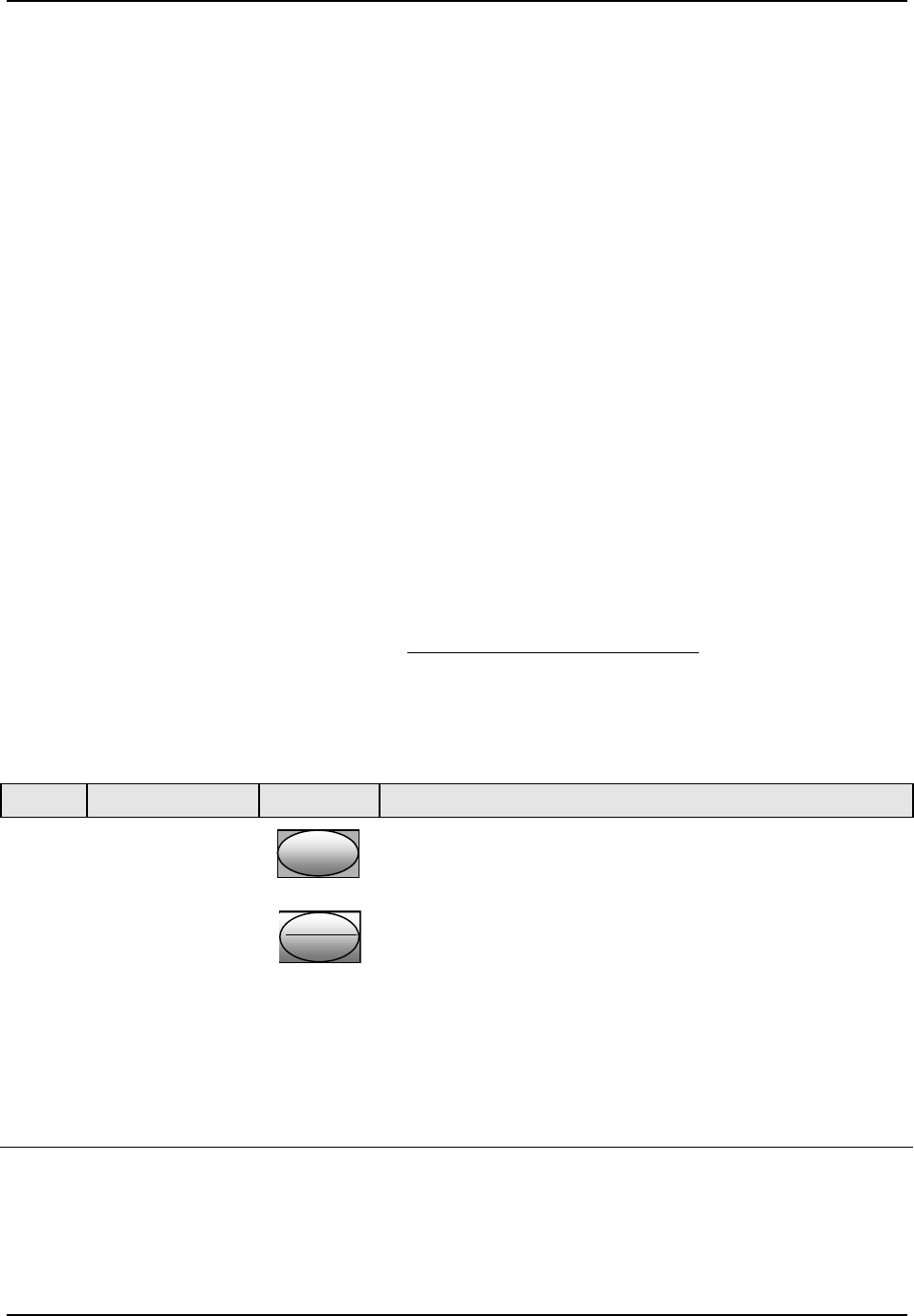
Troubleshooting/Service
Controller failure symptoms
Other failures may occur that deal with the Power, Output, or Alarms. Refer to the
controller failure symptom in Table 7-4 to determine what is wrong and the
troubleshooting procedures to use to correct the problem.
Check installation
If a set of symptoms still persists, refer to Section 2 – Installation and ensure proper
installation and proper use of the controller in the system.
Customer support
If you cannot solve the problem using the troubleshooting procedures listed in this
section, you can get
technical assistance by dialing 1-800-423-9883 USA and Canada.
An engineer will discuss your problem with you.
Please have your complete model
number, serial number and Software version available.
The model and serial numbers
can be found on the chassis nameplate. The software version can be viewed under Setup
Group “Status.” See Table 7-1.
If it is determ
ined that a hardware problem
exists, a replacement controller or part will be
shipped with instructions for returning the defective unit.
Do not return your controller without authorization from Honeywell’s Technical
Assistance Center or until the replacement has been received.
Check out Honeywell’s
web site at http://www.honeywell.com/imc.
Determining the software version
Table 7-1 lists the procedure for identifying the software version number.
Table 7-1 Procedure for Identifying the Software Version
Operation Press Result Step
Select
STATUS
Set Up Group
SetupSetup
Upper Display = READ
Lower Display = STATUS
1
Read the software
version
Func
Loo
p
1/2
You will see:
Upper Display = Software version number
35XXX
Lower Display = VERSION
Where XXX is the software version number. Please give this
number to the Customer Support person. It will indicate
which version of software you have and help them determine
a solution to your problem.
2
March 2012 UDC3500 Universal Digital Controller Product Manual 311
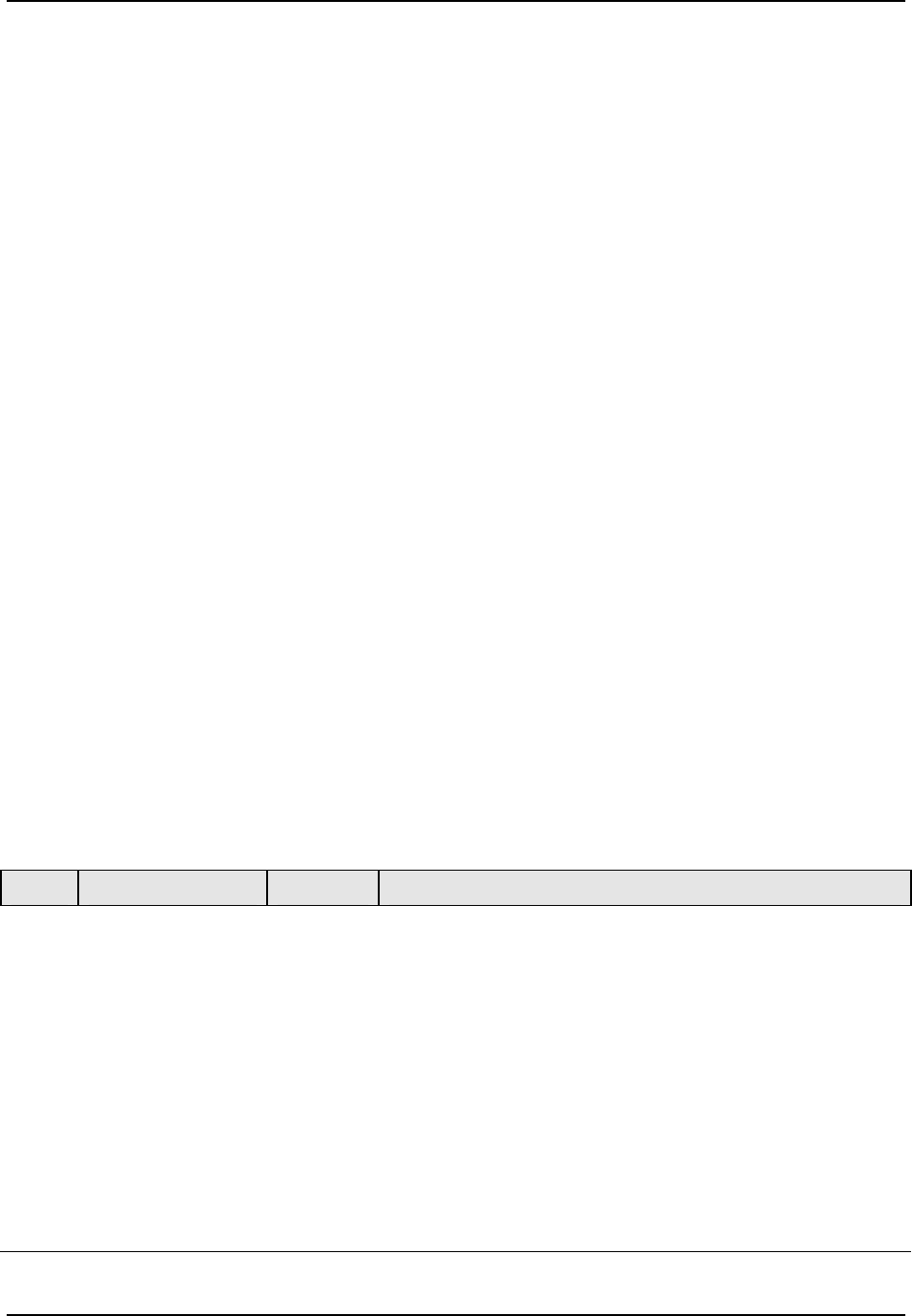
Troubleshooting/Service
7.3 Power-up Tests
What happens at power-up
When power is applied, the controller will run three diagnostic tests – Memory (RAM),
Calibration and Configuration. After these tests are completed, “TEST DONE” is
displayed.
Failsafe Failures
If one or more of these tests fail, the controller will go to the Failsafe Manual Mode, and
“FAILSAFE” and one or more diagnostic messages will appear in the lower display. See
Section 7.5 – Background Tests and Diagnostic Messages for diagnostic procedures.
Position Proportional and Three Position Step test failures
If Auto-calibration has never been performed on a controller configured for Position
Proportional or Three Position Step Control with motor position indication, then the
diagnostic CAL MTR will appear on the lower display. Refer to
Section 6.5 – Position
Proportional and Three Position Step Output Calibration. This error message is cleared
once the slidewire input has been calibrated.
7.4 Status Tests
Introduction
When required, the results of these tests can be checked to determine the reason the
controller has gone to Failsafe.
How to check the status tests
The procedure in Table 7-2 tells you how to display the results of the status tests.
Table 7-2 Procedure for Displaying the Status Test Results
Operation Press Result Step
Select
STATUS
Set Up Group
Setup
Upper Display = READ
Lower Display = STATUS
1
Read the test
result
s
Func
Loop 1/2
You will see:
Upper Display = NO or YES YES indicates a failure
Lower Display = FAILSAFE
2
Func
Loop 1/2
Upper Display = PASS or FAIL
Lower Display = TEST
3
Cycle through all
STATUS Set Up
Group prompts
Func
Loop 1/2
Continue through the rest of the prompts until you see:
Upper Display = READ
Lower Display = STATUS
312 UDC3500 Universal Digital Controller Product Manual March 2012
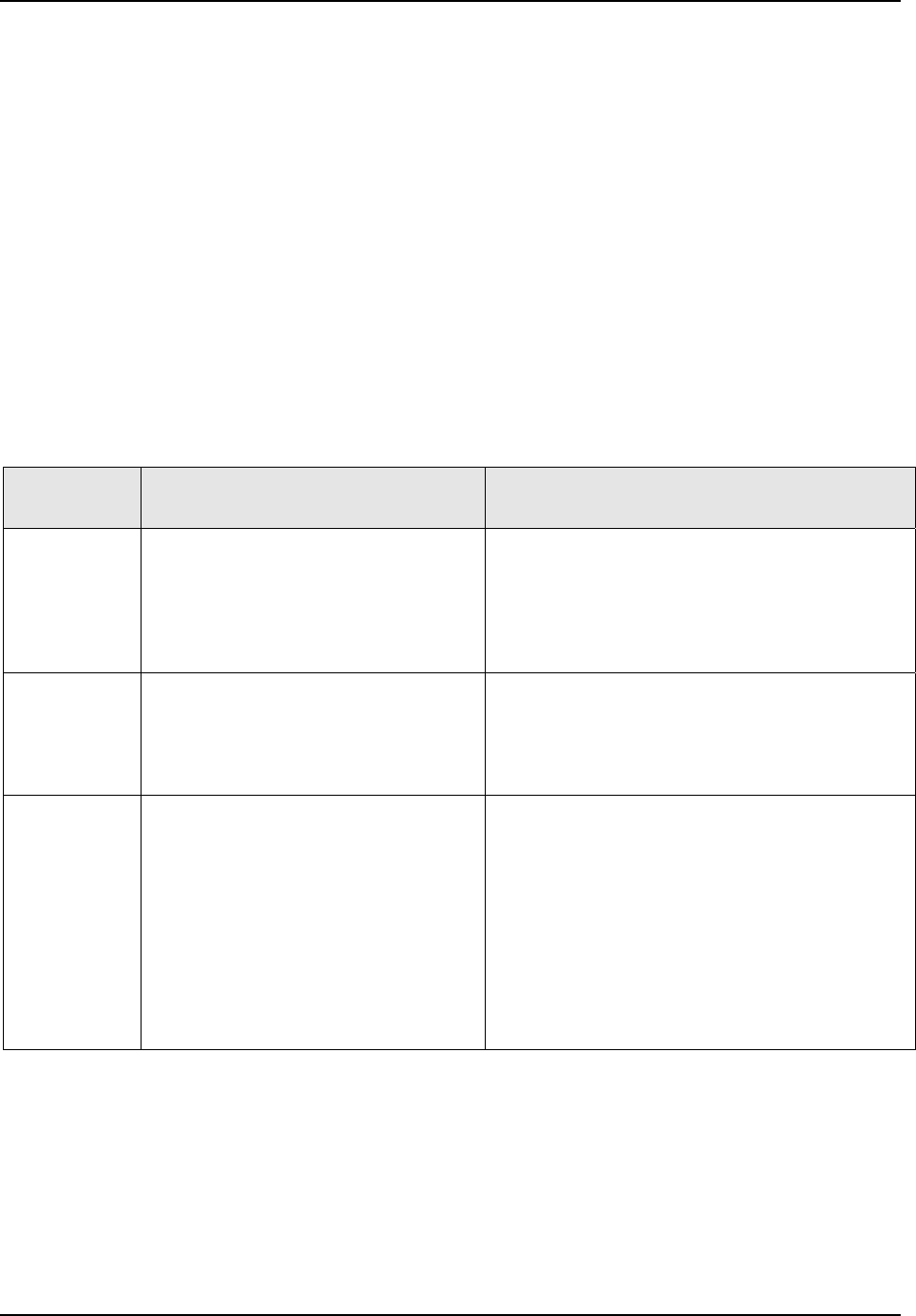
Troubleshooting/Service
7.5 Background Tests and Diagnostic Messages
Introduction
This instrument performs ongoing background tests to verify data and memory integrity.
If there is a malfunction, a diagnostic message will be displayed (blinking) in the lower
display.
In the case of simultaneous malfunctions, the messages will appear in sequence in the
lower display. Table 7-3 lists these background tests in order by their priority, the reason
for their failure, and how to correct the problem
.
Diagnostic m
essages may be suppressed (stop the blinking) by pressing the RUN/HOLD
key. The messages will still be available for viewing by pressing the LOWER DISPLAY
key. If the underlying condition has not been corrected, then the next time the instrument
is powered-down/powered-up, the diagnostic message will return.
Table 7-3 Background Tests
Reason for Failure How to Correct the Problem Lower
Display
RAM test failed at start up. 1)
Run through STATUS check to determine
the reason for the failure.
2) Run through the STATUS check a second
time to see if the error cleared.
3) Power cycle the instrument. If the message
reappears, replace the instrument.
RAM ERR
Calibration test failed at start up. 1)
Run through STATUS check to determine
the reason for the failure.
2) Restore factory settings. (See Section 7.8).
3)
Power cycle the instrument. If the message
reappears, replace the instrument.
CAL ERR
EE FAIL
Unable to write to non-volatile
memory. Anytime you change a
parameter and it is not accepted, you
will see EE FAIL.
1) Check the accuracy of the parameter and re-
enter.
2) Try to change something else in
configuration.
3) Run through Read STATUS tests to re-write
to EEPROM.
4) Run through the STATUS check a second
time to see if the error cleared. If error did
not clear, then power cycle the instrument. If
the message reappears, replace the
instrument.
March 2012 UDC3500 Universal Digital Controller Product Manual 313
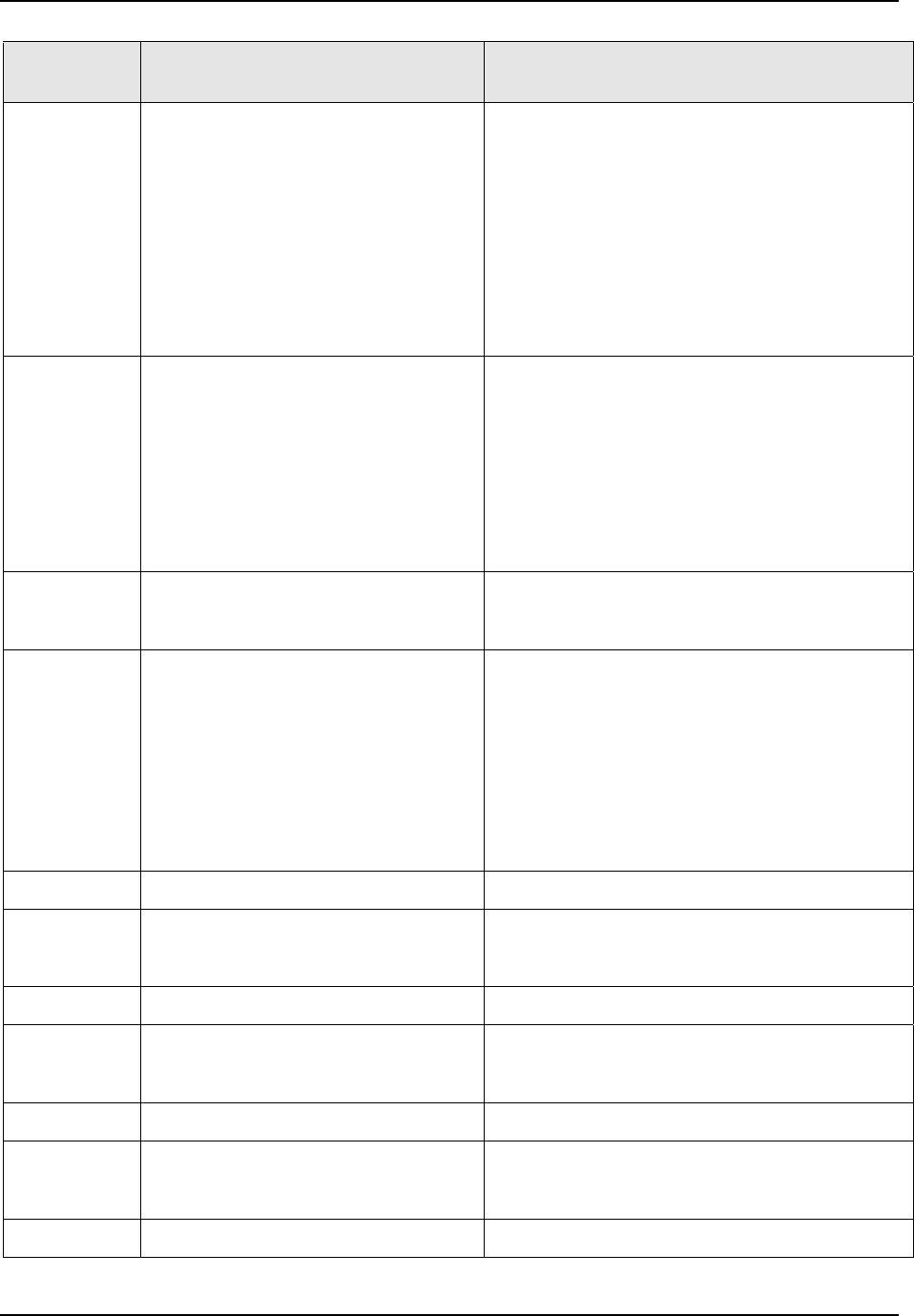
Troubleshooting/Service
314 UDC3500 Universal Digital Controller Product Manual March 2012
Lower
Display
Reason for Failure How to Correct the Problem
CFG ERR
Configuration data is in error. 1) Step through the STATUS group – the
controller will recalculate the checksum.
2) Run through the STATUS check a second
time to see if the error cleared.
3) Power cycle the instrument.
a) If the message reappears, replace the
instrument.
b) If the error does not reappear, check the
configuration of your instrument to
ensure that it is configured properly. See
Section 3.
FAILSAFE
or
FAILSF 2
This error message shows whenever
the controller goes into a failsafe
mode of operation. This will happen if:
• Burnout for input(s) used for
PV configured for “None” and
input(s) failed.
• RAM test failed
• Configuration test failed
• Calibration test failed
1) If an input failure message is also being
displayed, then s
ee the Analog Input Trouble
Shooting Procedure in Section
7.7.8.
2) Run through STATUS check to determine
the reason for the failure.
3) Run through the STATUS check a second
time to see if the error cleared.
INP1 RNG
Input 1 out of range.
Input exceeds the permissible range as defined
in Table 5-1.
See the Trouble Shooting Procedure in
Section 7.7.8.
INP1FAIL
Two consecutive failures of input 1
integration or input value is outside of
Out-of-Range limits; i.e., instrument
cannot perform analog to digital
conversion.
Analog to Digital conversion failures will happen
if:
Input sensor is open (Burnout)
Input not configured correctly for the
sensor being used
Input source is grossly out of range
Input sensor incorrectly connected to input
terminals
See the Trouble Shooting Procedure in Section 7.7.8.
INP2 RNG
Input 2 out of range. Same as INP1RNG above.
INP2FAIL
Two consecutive failures of input 2
integration; i.e., cannot make analog
to digital conversion.
Same as INP1FAIL above.
INP3 RNG
Input 3 out of range. Same as INP1RNG above.
INP3FAIL
Two consecutive failures of input 3
integration; i.e., cannot make analog
to digital conversion.
Same as INP1FAIL above.
INP4 RNG
Input 4 out of range. Same as INP1RNG above.
INP4FAIL
Two consecutive failures of input 4
integration; i.e., cannot make analog
to digital conversion.
Same as INP1FAIL above.
INP5 RNG
Input 5 out of range. Same as INP1RNG above.
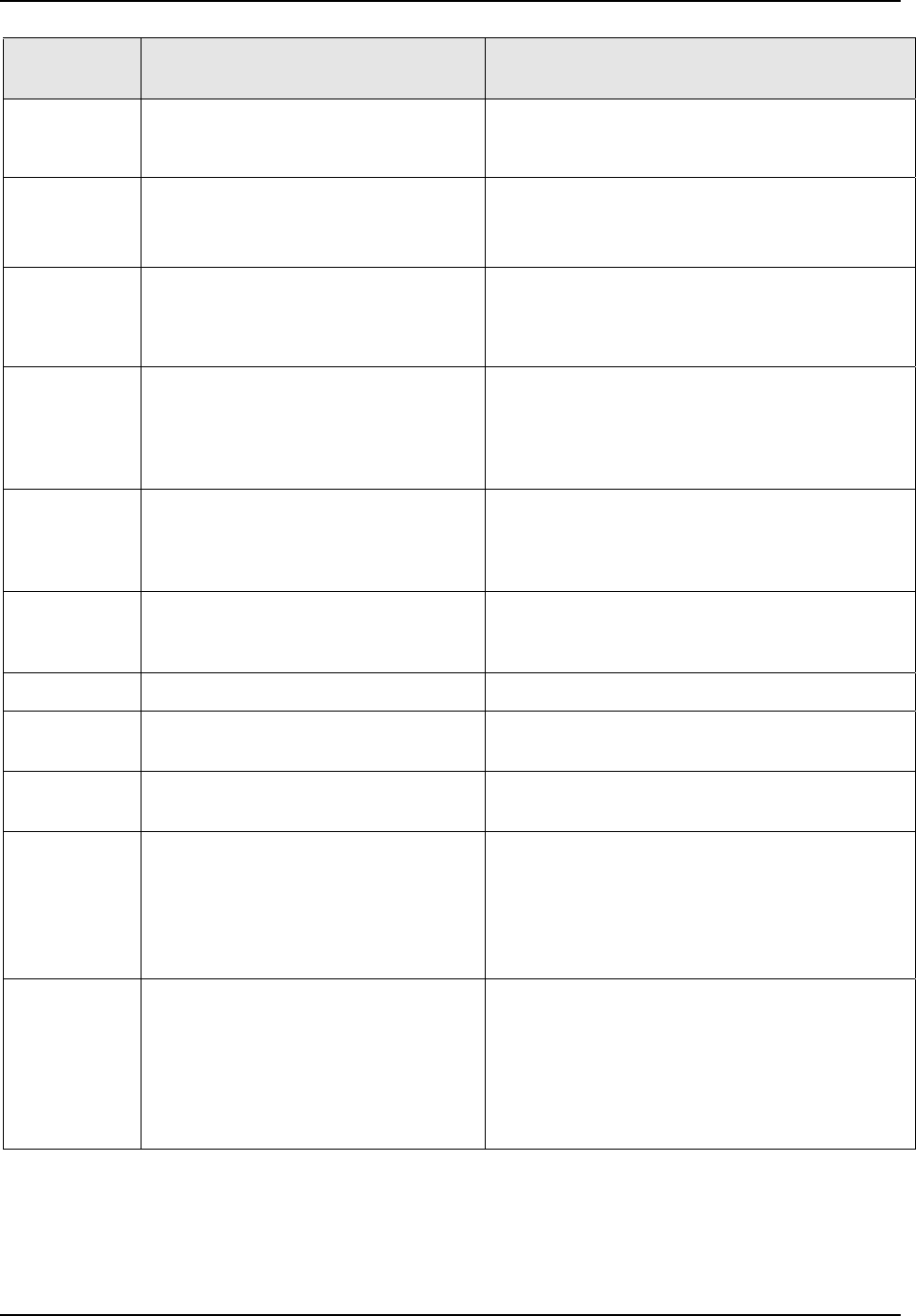
Troubleshooting/Service
March 2012 UDC3500 Universal Digital Controller Product Manual 315
Lower
Display
Reason for Failure How to Correct the Problem
INP5FAIL
Two consecutive failures of input 5
integration; i.e., cannot make analog
to digital conversion.
Same as INP1FAIL above.
CONF ERR
• PV low limit is > PV high limit
• SP low limit is > SP high limit
• Output low limit is > Output high limit
Check the configuration for each item and
reconfigure as necessary.
PV LIMIT
PV out of range.
PV = INP1 x RATIO1+ INP1 BIAS
1) Make sure the input signal is correct.
2) Make sure the Ratio and Bias settings are
correct.
3) Recheck the calibration. Use Bias of 0.0
RV LIMIT
The result of the formula shown below
is beyond the range of the remote
variable.
RV = INP2 X RATIO + BIAS
1) Make sure the input signal is correct.
2) Make sure the Ratio2 and Bias2 settings are
correct.
3) Recheck the calibration. Use a Ratio2 of 1.0
and a Bias2 of 0.0.
RH LOW
RH Excessive Temperature
Depression – Calculated %RH is less
than 0%.
1) Make sure the input signals are correct.
2) Make sure the Ratio and Bias settings are
correct for each input.
3) Recheck the calibration. Use Bias of 0.0
SEGERR
Setpoint Program start segment
number is less than ending segment
number.
Check SP Program configuration, subsection 3.6
Set up Group SPPROG function prompts
“STRSEG” and “ENDSEG”.
CAL MTR
Slidewire calibration never performed. Field Calibrate the slidewire. See Section 6.5.
SW FAIL
Position Proportional slidewire input
failure.
See the Trouble Shooting Procedure in Section
7.7.3.
SOOTING
Percent Carbon falls outside sooting
boundary
Check process for correct operation.
TCx WARN
The Thermocouple on Input x (1 or 2
or 3) is starting to burnout.
The controller has detected that the
thermocouple is starting to burnout. This error
message may also be created if the resistance
of the wires used to connect the thermocouple to
the instrument is above 100 ohms (50 ohms per
leg).
TCxFAIL
The Thermocouple on Input x (1 or 2
or 3) is in imminent danger of burning
out.
The controller has detected that the
thermocouple will soon fail. User should
consider replacing the thermocouple as soon as
possible. This message will also be generated if
the resistance of the wires used to connect the
thermocouple to the instrument is above 180
ohms (90 ohms per leg).
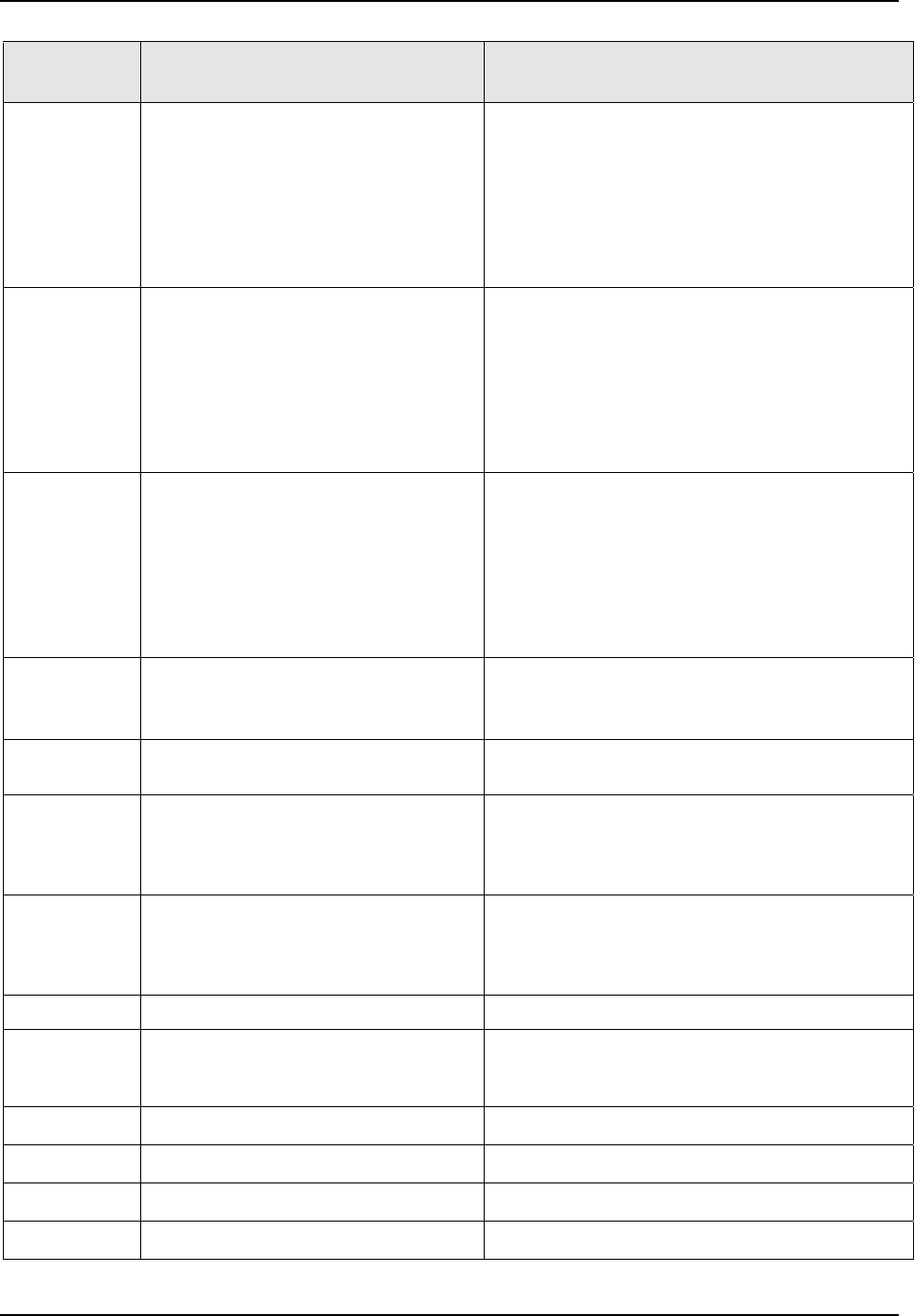
Troubleshooting/Service
316 UDC3500 Universal Digital Controller Product Manual March 2012
Lower
Display
Reason for Failure How to Correct the Problem
OUT1FAIL
First Current Output is less than 3.5
mA.
First Current Output is open circuit. Check the
field wiring. See the Trouble Shooting Procedure
in Section 7.7.2.
All Output Fail diagnostic messages may be
permanently suppressed via the DIAGNOST
configuration in the Alarm Setup Group. See
Section 3.24.
OUT2FAIL
Second Current Output is less
than 3.5 mA.
Second Current Output is open circuit. Check
the field wiring. See the Trouble Shooting
Procedure in Section 7.7.2.
All Output Fail diagnostic messages may be
permanently suppressed via the DIAGNOST
configuration in the Alarm Setup Group.
See Section 3.24.
OUT3FAIL
Third Current Output is less
than 3.5 mA.
Third Current Output is open circuit. Check the
field wiring. See the Trouble Shooting Procedure
in Section 7.7.2.
All Output Fail diagnostic messages may be
permanently suppressed via the DIAGNOST
configuration in the Alarm Setup Group. See
Section 3.24.
CLOCKERR
Real Time Clock values are invalid. Check the Real Time Clock Settings.
See Section 3.25. Entering “YES” to “SET
CLOCK?” will clear the error flag.
BATT LOW
Battery Voltage has fallen to unsafe
levels.
Replace the Battery Module. See Section 8.1.
EUNPLGED
Ethernet Link is unplugged, incorrectly
connected or the Ethernet network is
not working.
Check that the Ethernet cable is correctly
connected to the instrument and to the host.
See Section 2.7 for wiring diagrams. Check
Ethernet network for functionality.
ENET DEF
Ethernet parameters are at their
default settings (both working and
backup copies). IP address is
configured at 10.0.0.2.
Configure the Ethernet parameters to their
desired values using the P.I.E. Tool.
See Section 3.30.
EBRDFAIL
Ethernet Board has failed. Replace Ethernet Board.
ALRM1SP1
Alarm 1 Setpoint 1 is active. As required by the alarm application. Alarm
messages appear only if ALM MSG is enabled in
the Alarm Set Up Group.
ALRM1SP2
Alarm 1 Setpoint 2 is active. Same as ALRM1SP1.
ALRM2SP1
Alarm 2 Setpoint 1 is active. Same as ALRM1SP1.
ALRM2SP2
Alarm 2 Setpoint 2 is active. Same as ALRM1SP1.
ALRM3SP1
Alarm 3 Setpoint 1 is active. Same as ALRM1SP1.
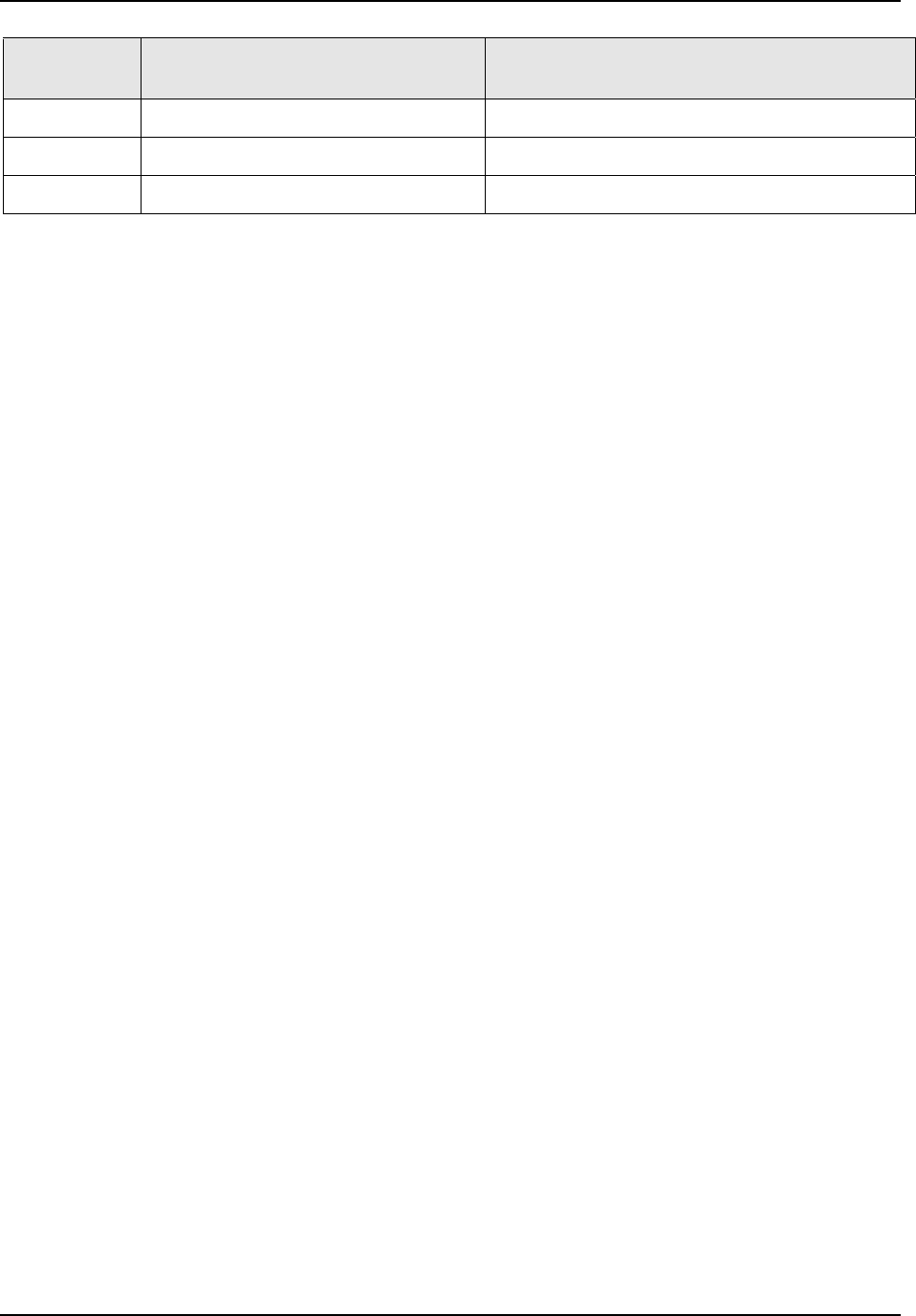
Troubleshooting/Service
March 2012 UDC3500 Universal Digital Controller Product Manual 317
Lower
Display
Reason for Failure How to Correct the Problem
ALRM3SP2
Alarm 3 Setpoint 2 is active. Same as ALRM1SP1.
ALRM4SP1
Alarm 4 Setpoint 1 is active. Same as ALRM1SP1.
ALRM4SP2
Alarm 4 Setpoint 2 is active. Same as ALRM1SP1.
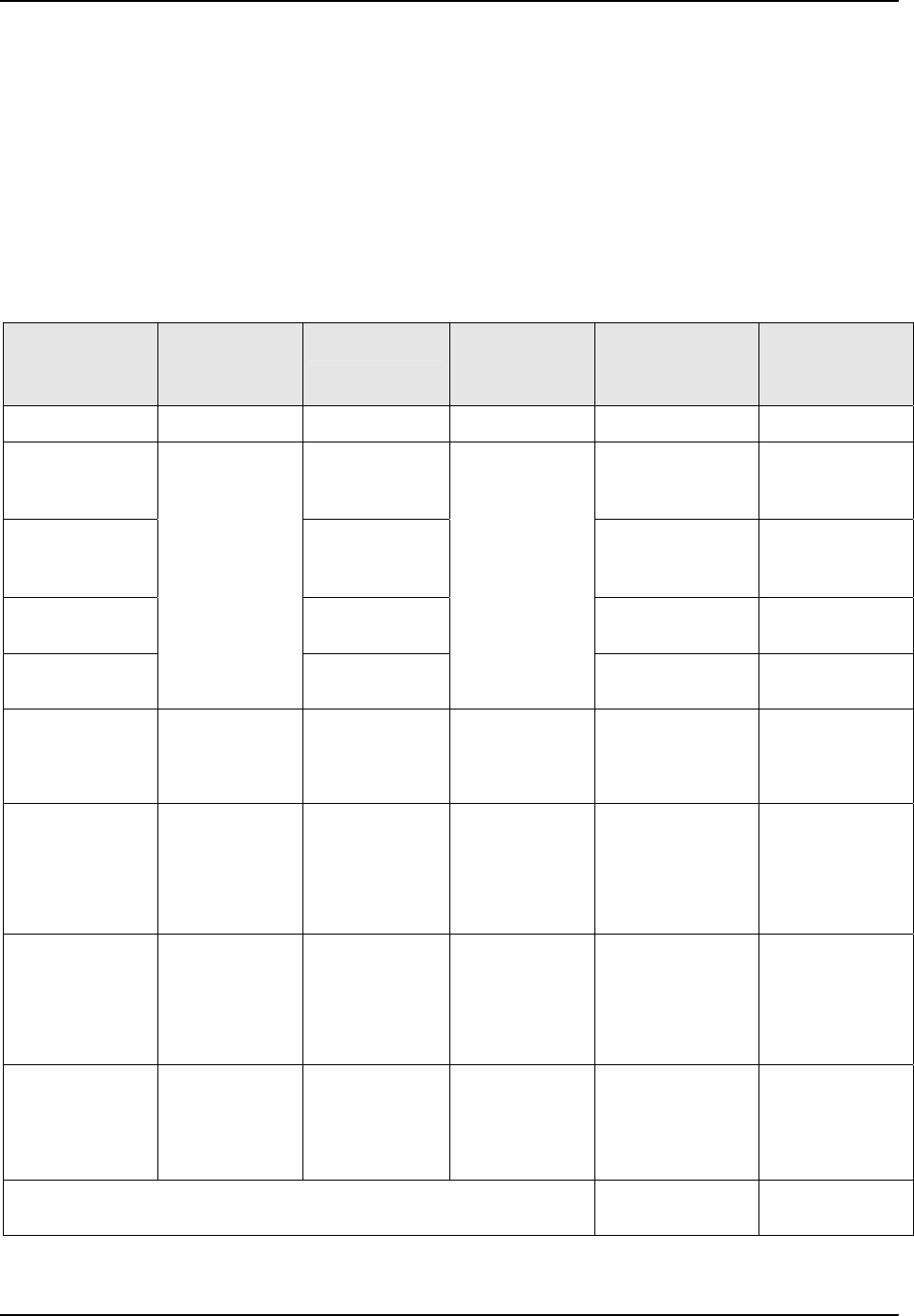
Troubleshooting/Service
7.6 Controller Failure Symptoms
Introduction
In addition to the error message prompts, there are failure symptoms that can be
identified by noting how the controller displays and indicators are reacting.
Symptoms
Compare your symptoms with those shown in Table 7-4.
Table 7-4 Controller Failure Symptoms
Lower
Display
Indicators Controller
Output
Probable
Cause
Trouble-
shooting
Procedure
Upper
Display
Blank Blank Off None Power Failure 7.7.1
OK OK Current
Proportional Output
7.7.2
OK OK Position
Proportional or
TPSC Output
7.7.3
OK OK Time Proportional
Output
7.7.4
Controller
Output
disagrees
wi
th Displayed
Output
Displayed
Output
disagrees
with Controller
Output
Current/Time
Proportional Output
OK OK 7.7.5
OK OK OK External Alarm
function does
not operate
properly
Malfunction in
alarm output
7.7.6
OK Displayed
Output
disagrees with
First Current
Output
OK
Controller
Current Output
#1 disagrees
with Displayed
First Current
Output
First Current
Output
7.7.2
OK Displayed
Output
disagrees with
Second Current
Output
OK
Controller
Current Output
#2 disagrees
with Displayed
Second Current
Output
Second Current
Output
7.7.2
OK Displayed
Output
disagrees with
Third Current
Output
OK Controller
Output
disagrees with
Displayed Third
Current Output
Third Current
Output
7.7.2
Display does not change when a key is pressed Keyboard
Malfunction
7.7.7
318 UDC3500 Universal Digital Controller Product Manual March 2012
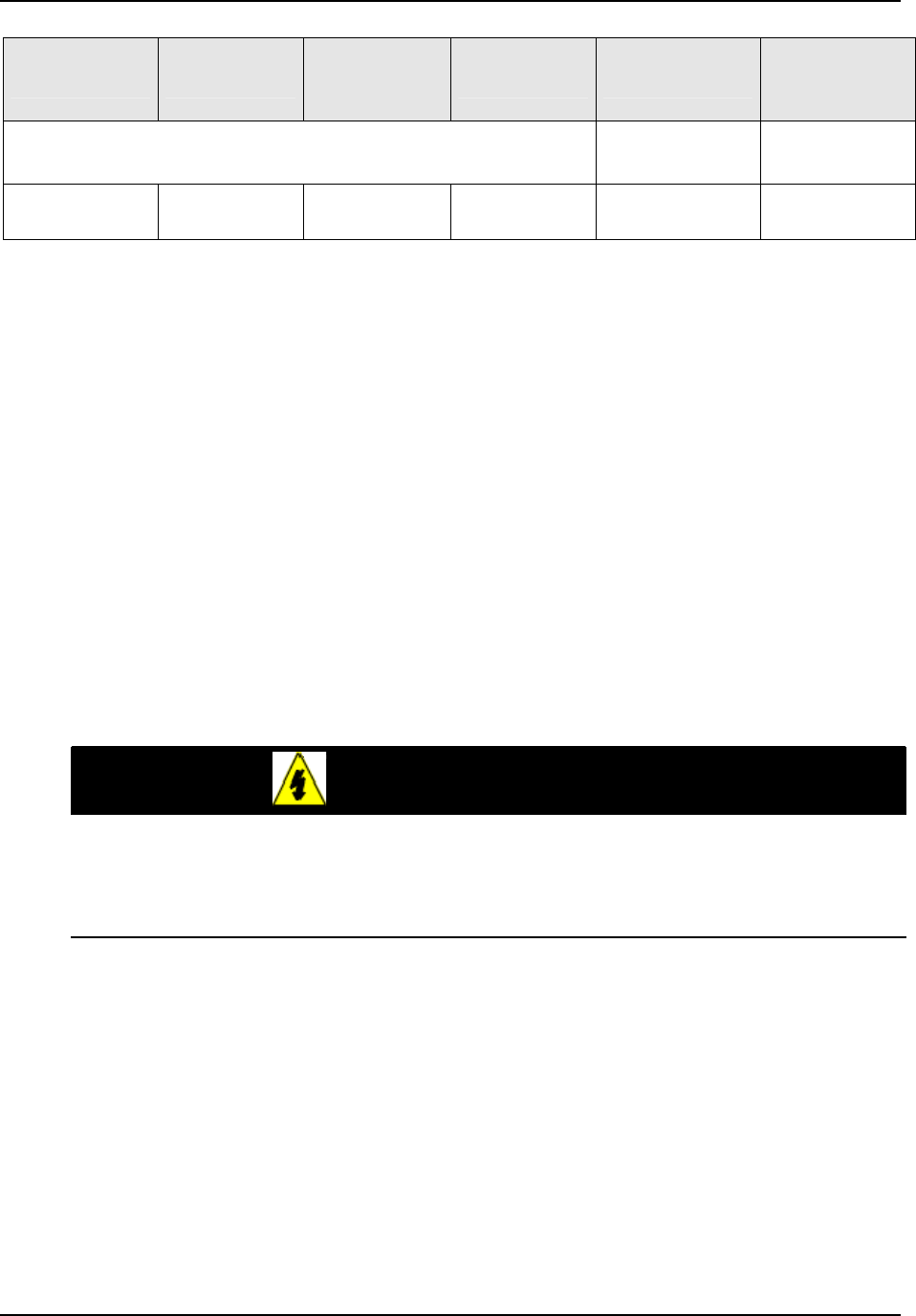
Troubleshooting/Service
March 2012 UDC3500 Universal Digital Controller Product Manual 319
Upper
Display
Lower
Display
Indicators Controller
Output
Probable
Cause
Trouble-
shooting
Procedure
Controller fails to go into “Slave” operation during communications Communications
Failure
RS-485: 7.7.8
Ethernet: 7.7.10
Bad PV Reading Bad In X
Reading
OK OK Analog Input
Failure
7.7.8
Other symptoms
If a set of symptoms or prompts other than the one you started with appears while
troubleshooting, re-evaluate the symptoms. This may lead to a different troubleshooting
procedure.
If the symptom still persists, refer to the installation section in this manual to ensure
proper installation and proper use of the controller in your system.
7.7 Troubleshooting Procedures
Introduction
The troubleshooting procedures are listed as they appear in Table 7-4. Each procedure
describes what to do if you have that particular failure and how to do it or where to find
the data needed to accom
plish the task.
WARNING—SHOCK HAZARD
TROUBLESHOOTING MAY REQUIRE ACCESS TO HAZARDOUS LIVE
CIRCUITS AND SHOULD ONLY BE PERFORMED BY QUALIFIED SERVICE
PERSONNEL. MORE THAN ONE SWITCH MAY BE REQUIRED TO DE-
ENERGIZE UNIT BEFORE SERVICING.
Equipment needed
You will need the following equipment in order to troubleshoot the symptoms listed:
• Multimeter – Capable of measuring millivolts, volts, milliamps and resistance.
• Calibration sources – T/C, mV, Volt, etc.
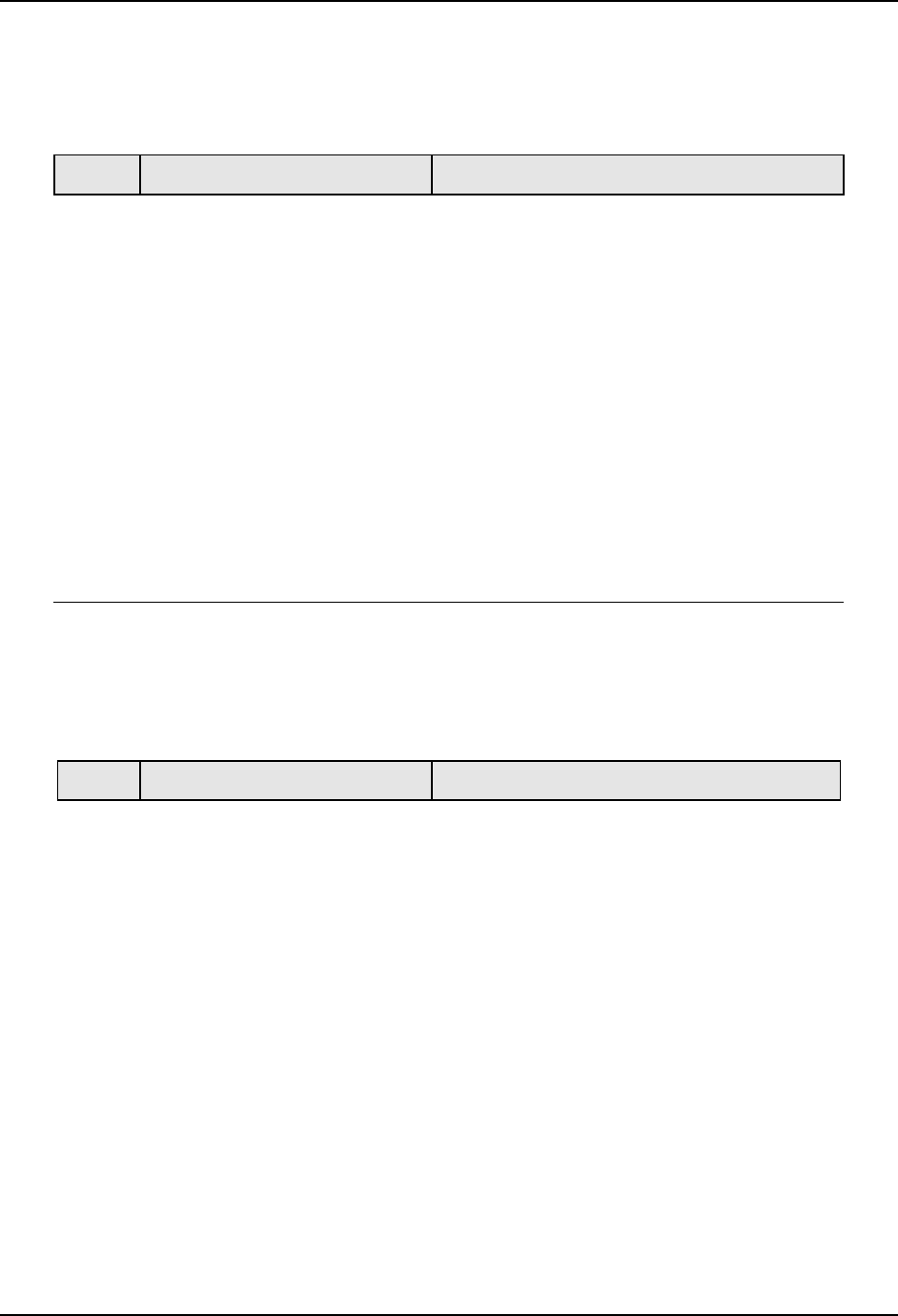
Troubleshooting/Service
7.7.1 Procedure #1 – Power
Table 7-5 explains how to troubleshoot power failure symptoms.
Table 7-5 Troubleshooting Power Failure Symptoms
Step What to do How to do it
Check the AC or DC line
voltage.
Use a voltmeter to measure the AC or DC
voltage across terminals L1 and L2 on the rear
terminal panel of the controller.
Check the earth ground connection.
1
Make sure the chassis plugs
into the rear of the case
properly.
Withdraw the chassis and visually inspect the
controller board and the inside of the case.
Reseat the boards into the Chassis if
necessary.
2
Check t
he system for
Brownouts, heavy load
switching, etc., and
conformance to installation
instructions.
Refer to Section 2 – Installation.
3
Change Power board.
Installation instructions supplied with new
board.
4
7.7.2 Procedure #2 – Current Outputs
Table 7-6 explains how to troubleshoot Current Output failure symptoms.
Table 7-6 Troubleshooting Current Output Failure
Step What to do How to do it
Make sure that the controller is
configured correctly and that the
proper range (4 to 20 or 0 to 20)
is configured.
Refer to Section 3 – Configuration.
Configuration incorrect: Fix configuration
Configuration correct: Go to Step 2.
1
Check the field wiring.
Output
impedance must be less than or equal
to 1000 ohms.
2
First Current Output: Test for
operation.
Change Output Set Up group function prompt
OUT ALG = CUR.
Make the Output Set up group function prompt
CO RANGE = 4–20
Go to Step 4
3a
Second Current Output: Test for
operation.
Change Options Set Up group function prompt
CUR2 OUT = OUTPUT
Make the Current #2 Options Set up group
function prompt CO RANGE = 4–20
Go to Step 4
3b
320 UDC3500 Universal Digital Controller Product Manual March 2012
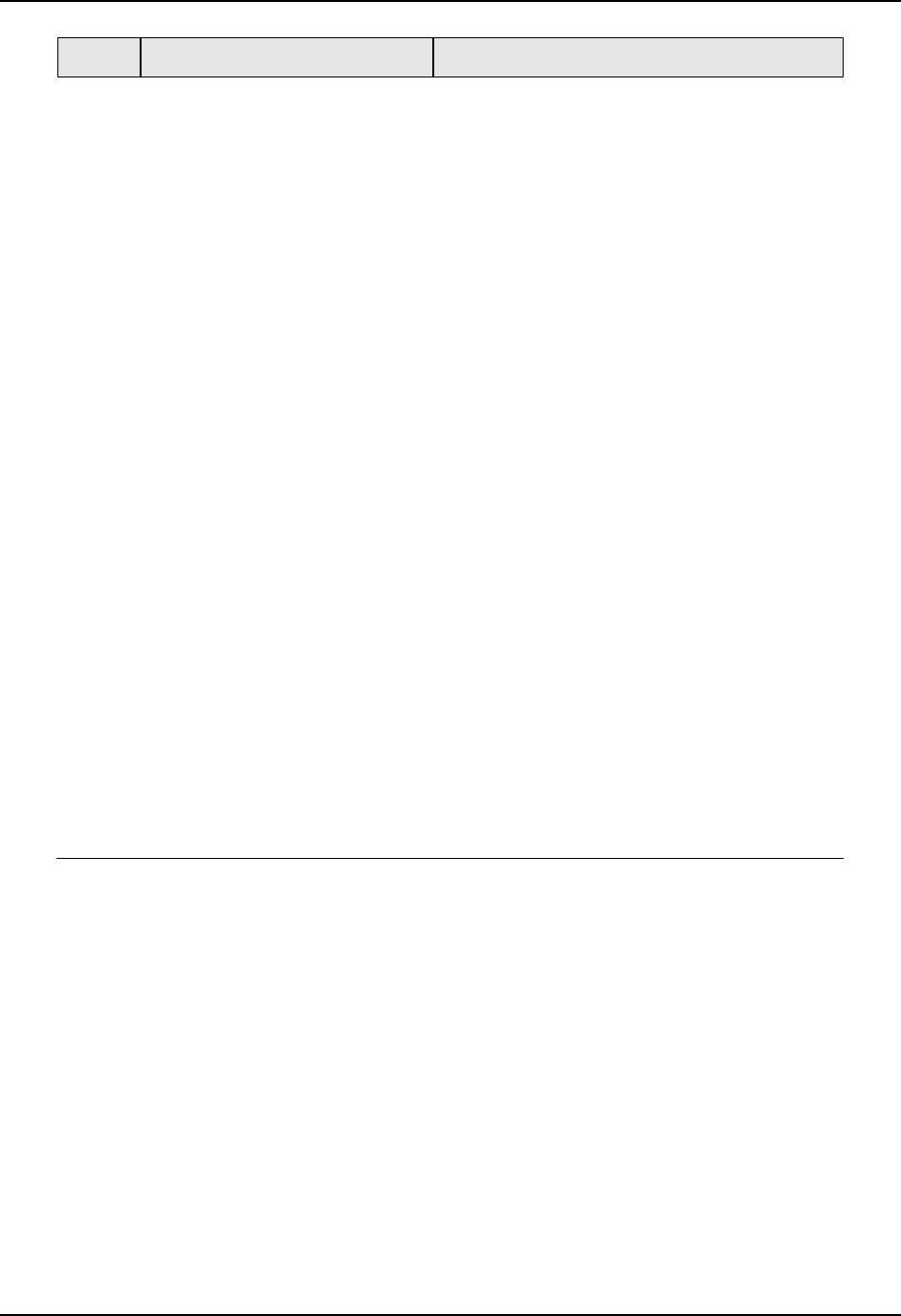
Troubleshooting/Service
March 2012 UDC3500 Universal Digital Controller Product Manual 321
Step What to do How to do it
3c
Third Current Output: Test for
operation.
Change Options Set Up group function prompt
CUR3 OUT = OUTPUT
Make the Current #3 Options Set up group
function prompt CO RANGE = 4–20
Go to Step 4
4
Check the output. Put the controller into Manual mode and
change the output via the front keyboard from
0 % to 100 %. Use a DC milliammeter at the
rear terminals for the output being diagnosed
to verify the output.
Output works correctly: Return the controller
to its original configuration and check output
again.
Output does not work correctly: Go to Step 5.
5
Restore Factory Calibration For the output being diagnosed, change the
CO RANGE prompt from its present setting to
its other setting. Exit the setup group and then
return and change CO RANGE back to its
previous setting.
Output works correctly: Finished
Output does not work correctly: Go to Step 6.
6
Field Calibrate the output. Refer to Section 1 – Output Calibration for
details.
Output works correctly: Finished
Output does not work correctly: Go to Step 7.
7
Change Current Output board.
Installation instructions provided with new
board.
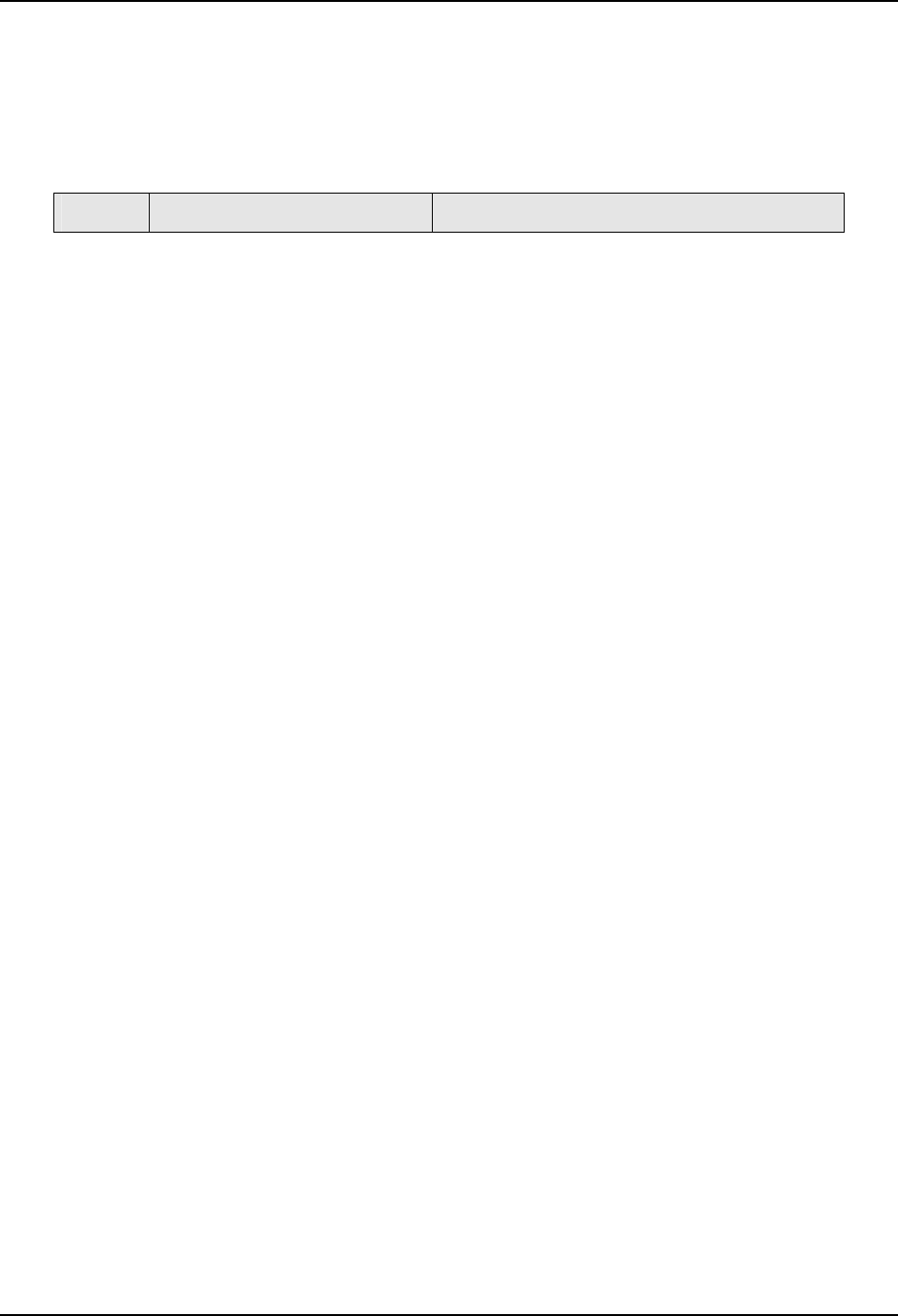
Troubleshooting/Service
7.7.3 Procedure #3 – Position Proportional
Table 7-7 explains how to troubleshoot Position Proportional Output failure symptoms.
Table 7-7 Troubleshooting Position Proportional Output Failure
Step What to do How to do it
Make certain that the controller
is configured properly for
Position Proportional output.
Make Output Algorithm Set Up group function
prompt OUT ALG = POSPROP.
Make Input 3 Set Up group function prompt
IN3 TYPE = SLIDEW or EU SLIDE (depending
upon slidewire type)
Refer to Section 3 – Configuration.
If the “CAL MTR” diagnostic prompt is flashing
on the lower display, then this means that the
instrument was never calibrated for your
application. See the Position Proportional field
calibration procedure in Section 1 – Output
Calibration for motor slidewire calibration
procedure.
1
Check the field wiring. Refer to Section 2 – Installation for details.
2
Check whether the motor
drives in both directions.
Put the controller into Manual mode. Vary the
output above and below the present value.
Observe “OUT” indicators and the output value
(“OUT”) on the lower display. When the “OUT
1” indicator is on and the “OUT 2” indicator is
off, then the motor should be opening and the
output value shown on the lower display
should be increasing. When the “OUT 1”
indicator is off and the “OUT 2” indicator is on,
then the motor should be closing and the
output value on the lower display should be
decreasing. Listen for a click from a relay
when the OUT1 and OUT 2 indicators change
state.
a) Motor moves in both directions but the
displayed Output value does not change or
does not have a decimal point – Go to Step 4
b) Motor does not move in one or both
directions – Go to Step 5
c) Motor moves in both directions but the
displayed Output value moves in the wrong
direction: This means that the motor or the
slidewire or both are incorrectly wired. Check
the motor manufacturer’s wiring diagram and
then refer to Section 2 – Installation to rewire
the controller.
3
322 UDC3500 Universal Digital Controller Product Manual March 2012
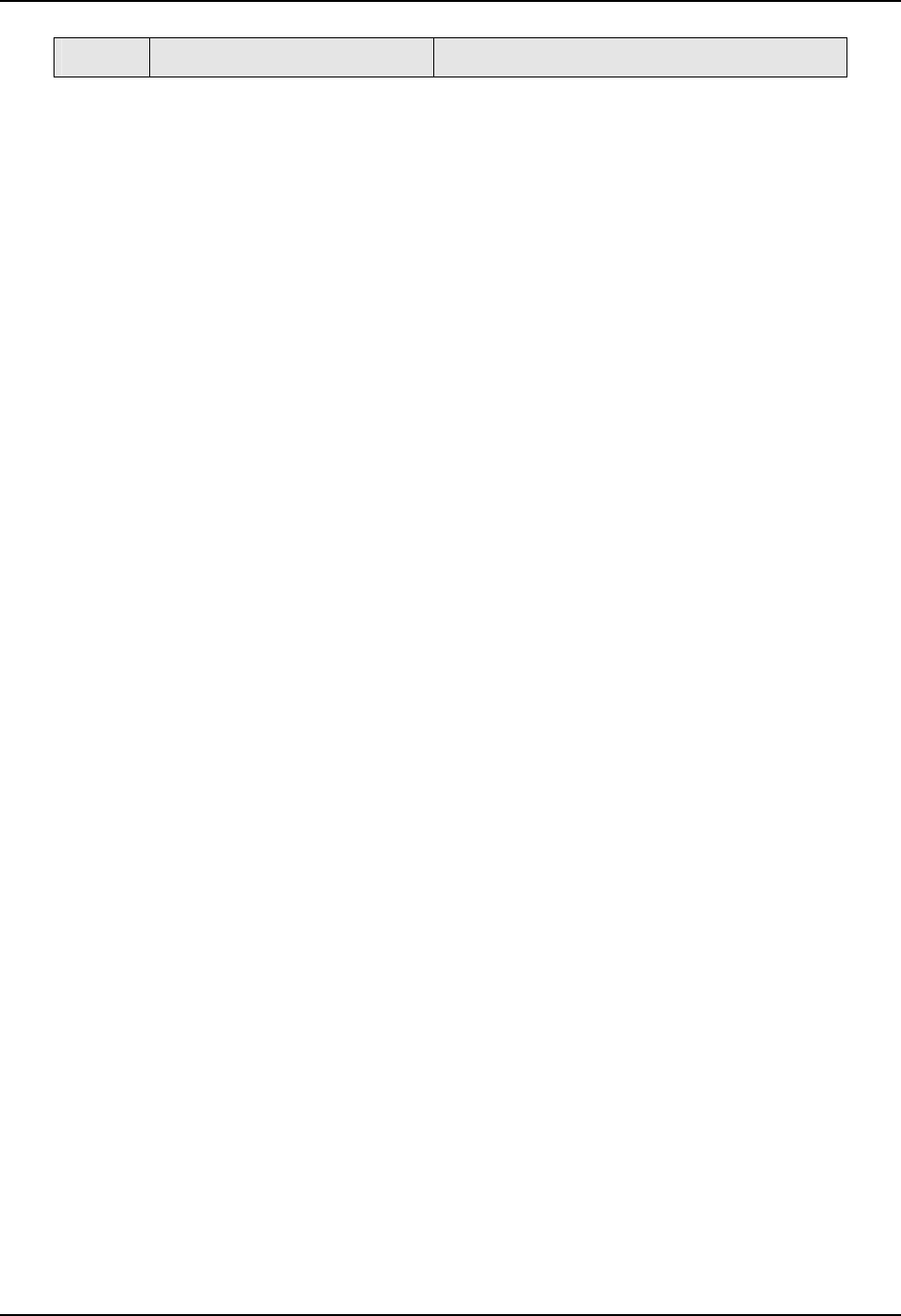
Troubleshooting/Service
March 2012 UDC3500 Universal Digital Controller Product Manual 323
Step What to do How to do it
4
Motor moves in both directions
but the displayed Output value
does not change or does not
have a decimal point
Slidewire input is malfunctioning. See the
Position Proportional field calibration
procedure in Section 6.5 for the motor
slidewire calibration procedure. Follow that
procedure to Field Calibrate the instrument. If
after a Field Calibration the problem is still not
fixed, then go to Step 6.
5
Motor does not move in one or
both directions
Wiring Problem. Check the motor
manufacturer’s wiring diagram and then refer
to Section 2 – Installation to rewire the
controller. If wiring is correct, then go to Step
7.
6
Determine if Motor Slidewire or
Input 3 is at fault.
Disconnect and tag the field wiring for the
slidewire. Refer to Section 2 – Installation.
Measure the voltage between the R (28) and
the – (30) terminals.
Voltage is +1.2Vdc 0.2Vdc: Bad motor
slidewire. Refer to the motor manufacturer’s
inst
ruct
ions.
Voltage not +1.2Vdc 0.2Vdc: Check the
Jumper on the Input 3 Board (see Figure
2-11). Jumper should be in W1 position. If not,
then move it to W1 position and recalibrate the
instrument per Section 1 – Output Calibration.
If the Jumper is in the W1 position, then
replace the Input 3 board. Installation
instructions supplied with the new board.
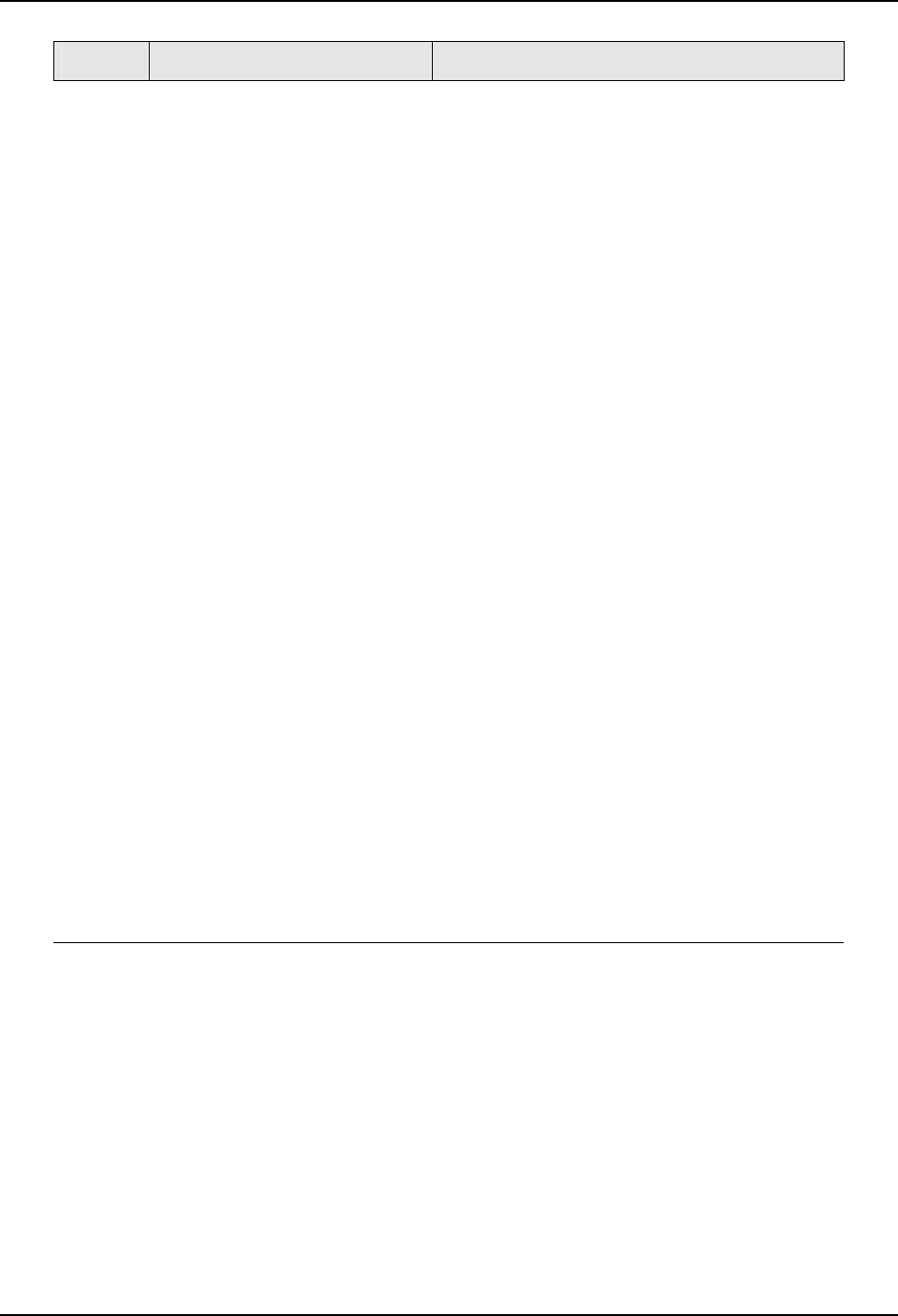
Troubleshooting/Service
324 UDC3500 Universal Digital Controller Product Manual March 2012
Step What to do How to do it
7
Check the Relays. Turn off power to the motor and to the
instrument. Disconnect and tag the field wiring
to the relays. Relay 1 (MOTOR – OPEN) is on
terminals 8 and 9. Relay 2 (MOTOR –
CLOSE) is on terminals 7 and 8.
Turn on power to the instrument. Put the
controller into Manual mode. Connect your
multimeter to terminals 8 and 9 and set the
multimeter to measure resistance. Now, vary
the output above and below the present value
and observe the “OUT” indicators and your
multimeter. When the “OUT 1” indicator is on,
then Relay 1 should be closed and there
should be only a few ohms between terminals
8 and 9. When the “OUT 1” indicator is off,
then Relay 1 should be open and there should
be infinite resistance between terminals
8 and 9. Listen for a click from the relay when
the OUT1 indicator changes state.
Repeat this test for Relay 2 by connecting your
multimeter to terminals 7 and 8. When the
“OUT 2” indicator is on, the relay should be
closed and there should be only a few ohms
between terminals 7 and 8. When the “OUT 2”
indicator is off, the relay should be open and
there should be infinite resistance between
terminals 7 and 8. Listen for a click from the
relay when the “OUT 2” indicator changes
state.
Relays measure correctly: Check motor. Refer
to manufacturer’s instructions.
Relays do not measure correctly: Go to Step
8.
8
Replace the Dual Relay Board. Installation instructions supplied with the new
board.
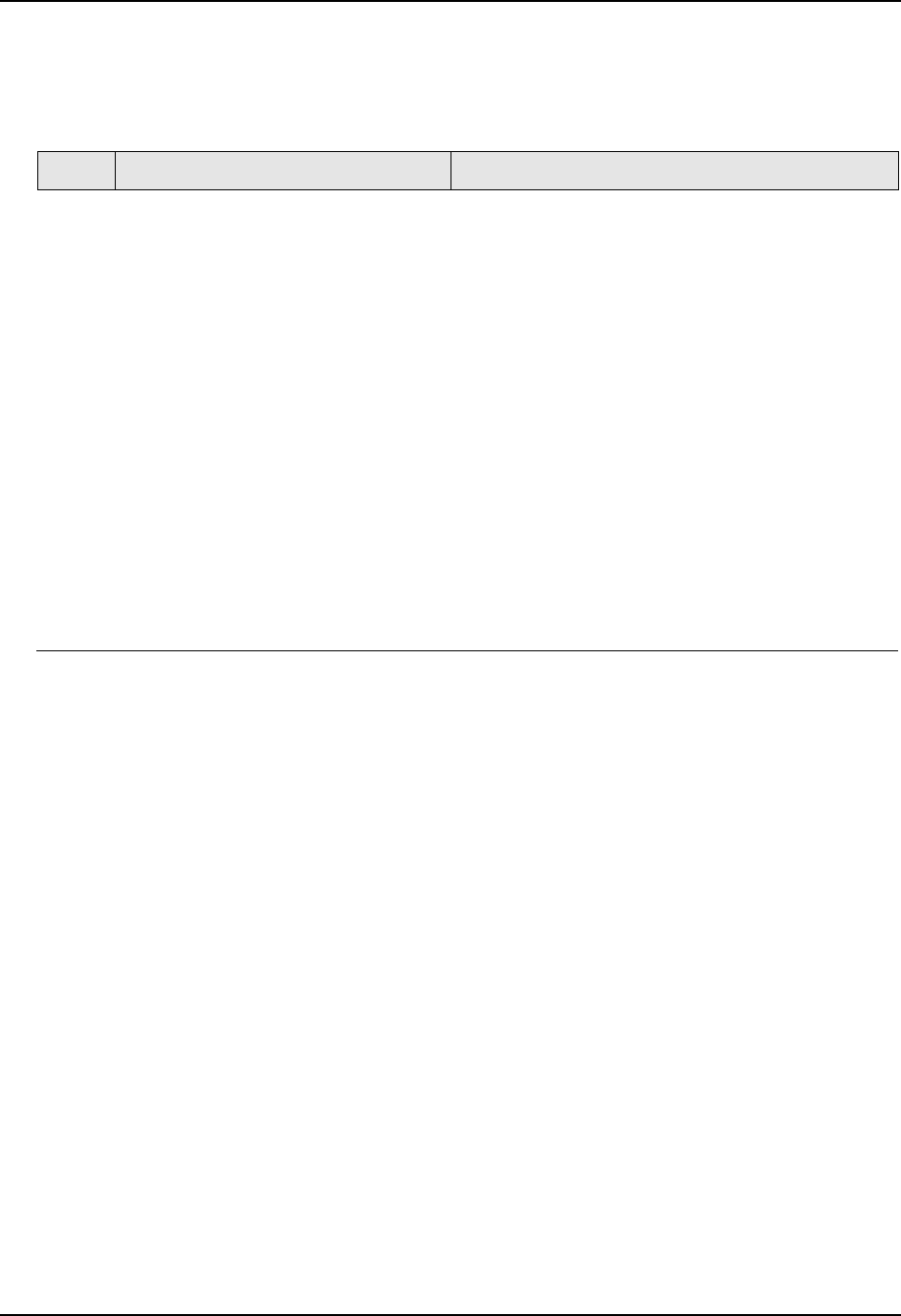
Troubleshooting/Service
7.7.4 Procedure #4 – Time Proportional
Table 7-8 explains how to troubleshoot Time Proportional Output failure.
Table 7-8 Troubleshooting Time Proportional Output Failure
Step What to do How to do it
Make sure the controller is configured
for Time Proportional output.
Make Output Algorithm Set Up group function
prompt OUT ALG (Loop 1) or OUT2 ALG (Loop 2)
= RLY or RLYD.
Refer to Sect
ion 3.14.
1
Check the field wiring. Make sure the NO or NC contact wiring is correct.
Refer to Section 2 – Ins
tallation for details.
2
Check the output. Put the controller into Manual mode. Vary the
output above and below the present value.
Observe OUT1 indicator (Loop 1) or OUT3
indicator (Loop 2) on the operator interface.
Contact should change state. 0 % open, 100 %
closed. Listen for a click from the relay when the
OUT1 or OUT3 indicator changes state.
3
Check relay. Change relay.
4
Change relay board. Installation instructions supplied with the new
board.
5
March 2012 UDC3500 Universal Digital Controller Product Manual 325
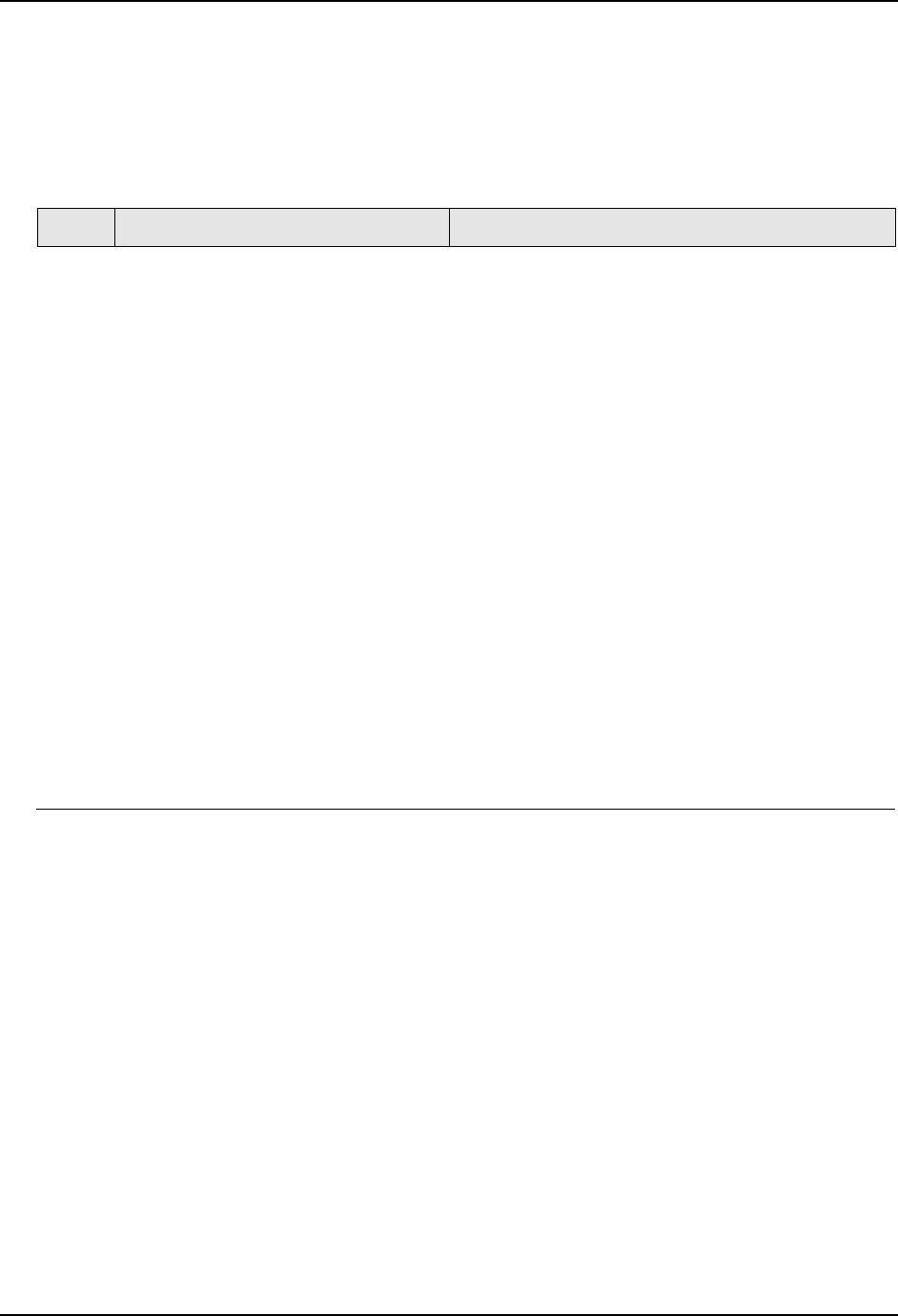
Troubleshooting/Service
7.7.5 Procedure #5 – Current/Time or Time Current/Proportional
Table 7-9 explains how to troubleshoot Current/Time or Time/Current Proportional
Output failure.
Table 7-9 Troubleshooting Current/Time or Time/Current Proportional
Output Failure
Step What to do How to do it
Make sure the controller is configured
for Time/Current or Current/Time
Proportional output.
Make Output Algorithm Set Up group function
prompt OUT ALG = TCUR or CURT.
Refer to Section 3 – Configuration.
1
Check the field wiring.
Make sure the NO or NC contact wiring selection
is
correct.
Refer to Section 2 – Installation for details.
2
Check the relay output. Put the controller into Manual mode. Vary the
output above and below the present value.
Observe OUT1 indicator (Loop 1) or OUT3
indicator (Loop 2) on the operator interface.
Contact should change state. 0 % open, 100 %
closed. Listen for a click from the relay when the
OUT1 or OUT3 indicator changes state.
3
Check the Current Proportional
Output.
Put the controller into Manual mode and change
the output from 0 % to 100 % (4-20 or 0-20 mA).
Use a DC milliammeter at the rear terminals to
verify the output.
4
Recalibrate the controller. Refer to Section 1 – Output Calibration for details
.
5
Change Current Output or Relay
board.
Installation instructions supplied with new board.
6
326 UDC3500 Universal Digital Controller Product Manual March 2012
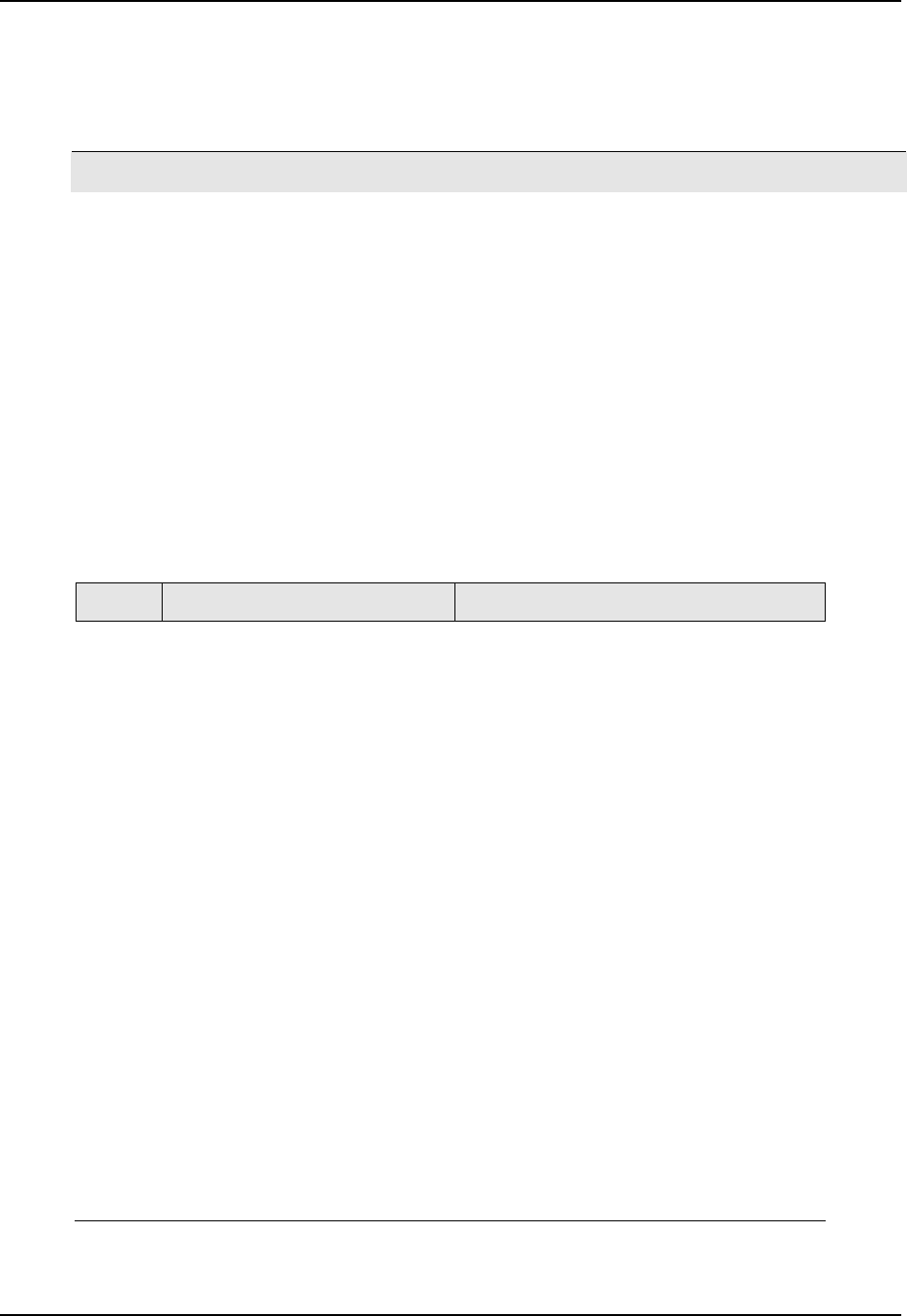
Troubleshooting/Service
7.7.6 Procedure #6 – Alarm Relays
ATTENTION
If the controller is configured to use the same relay for more than one function, then the
following priority is used to determine how the relay functions: Control Outputs take
precedence over Alarms, which in turn take precedence over Time/Events, which in turn
take precedence over Logic Gate Outputs. For example, if you select the Loop 2 Output
Algorithm as Time Simplex (which uses Relay 3), enable Alarm 3 (which also uses
Relay 3) and configure a Logic Gate to use Relay 3, then the instrument will use Relay
#3 to perform the Time Simplex output and ignore the Alarm and Logic Gate functions.
The prompts for the Alarm Outputs appear whether or not the alarm relays are
physically present or used for some other function. This allows the Alarm status to be
shown on the display and/or sent via communications to a host computer.
Table 7-10 explains how to troubleshoot Alarm Relay Output failure.
Table 7-10 Troubleshooting Alarm Relay Output Failure
What to do How to do it Step
Check the alarm configuration
data. If it is c
orrect, check the
field wiring.
Reconfigure if necessary.
Refer to Section 3 – Configuration for
details.
1
Check that the applicable alarm
relay actuates properly
depending on what you have set
at prompt AxSxTYPE.
If it does, check the field wiring.
EXAMPLE: If the alarm type is
s
et for PV,
place the controller in manual mode. Vary
the input to raise and lower the PV
around the alarm setpoint. Listen for a
click from the relay as the PV moves in
either direction and note that the proper
alarm annunciator turns ON and OFF as
the PV moves past the alarm setpoint
value.
EXAMPLE: If the alarm is set for MAN,
put the controller into manual mode. The
alarm annunciator should be ON. Put the
controller into automatic mode and the
alarm annunciator should be OFF.
2
Check the contacts. Make sure the NO or NC contact wiring is
correct.
Refer to Section 2 – Installation for relay
contact information.
3
Change the relay and/or the
relay output board.
Installation instructions supplied with the
new relay or board.
4
March 2012 UDC3500 Universal Digital Controller Product Manual 327
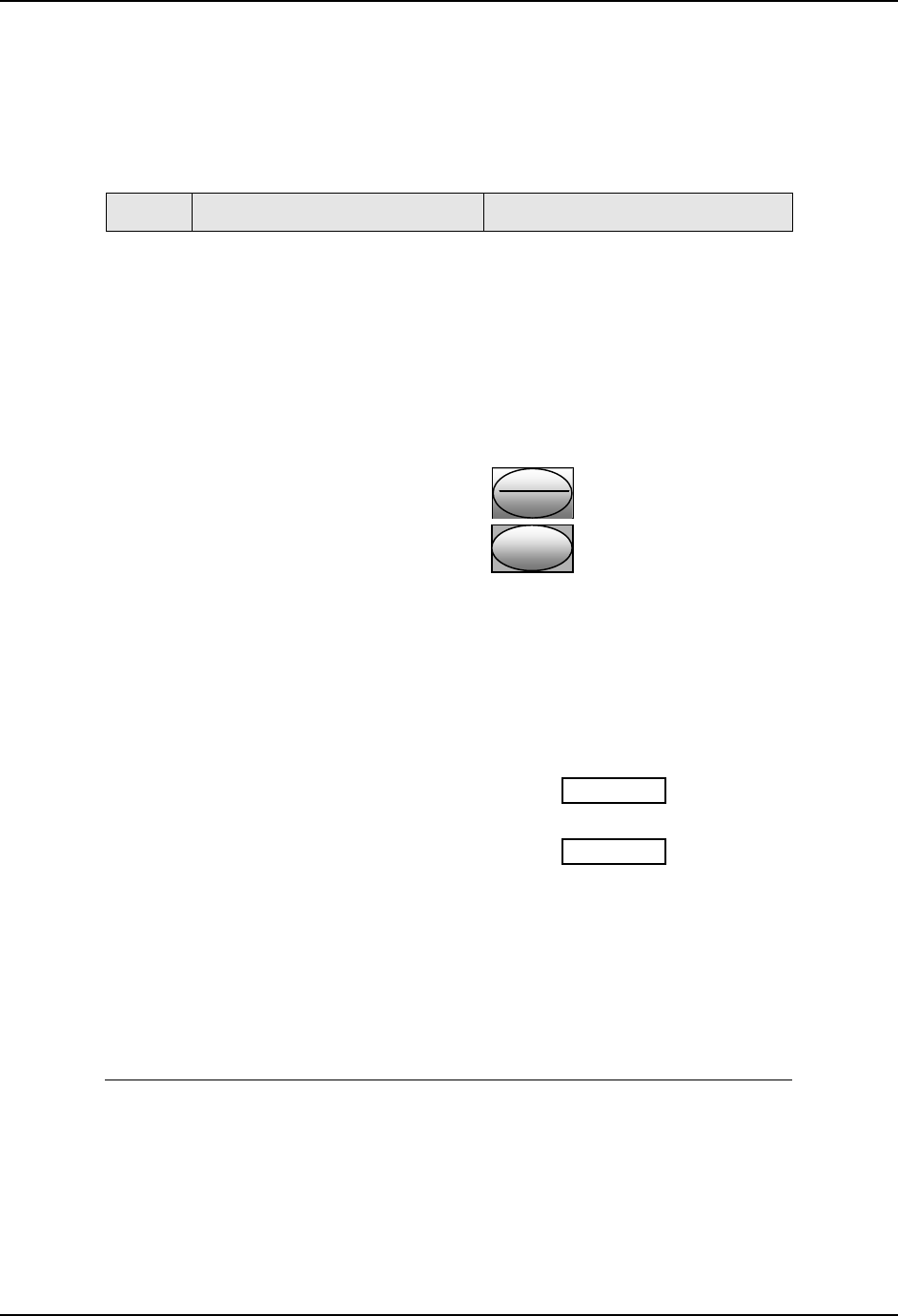
Troubleshooting/Service
7.7.7 Procedure #7 – Keyboard
Table 7-11 explains how to troubleshoot a Keyboard failure.
Table 7-11 Troubleshooting a Keyboard Failure
Step What to do How to do it
Make sure the keyboard is
connected properly to the
MCU/output and power/input
boards.
Withdraw the chassis from the
case and visually inspect the
connection.
1
Controller Keyboard or specific
keys may be LOCKED OUT via
the security code.
Use your four-digit security code
number to change the lockout
level. Refer to Section 3 –
Configuration.
2
Run the keyboard test.
Simultaneously press both the
Func
Loo
p
1/2
key and the
SetupSetup
key.
The controller will now run a
display test that lights every
element in the display. Following
that test, you will then see:
TRY ALL
Lower Display
KEYS
Upper Display
Press each key. If instrument
reads the key, then the key’s
name will appear in the lower
display. After fifteen seconds, the
unit returns to normal operation.
3
Replace the Display/Keyboard
Assembly if any keys do not
function.
Refer to “Parts Replacement
Procedures” in this section.
4
328 UDC3500 Universal Digital Controller Product Manual March 2012
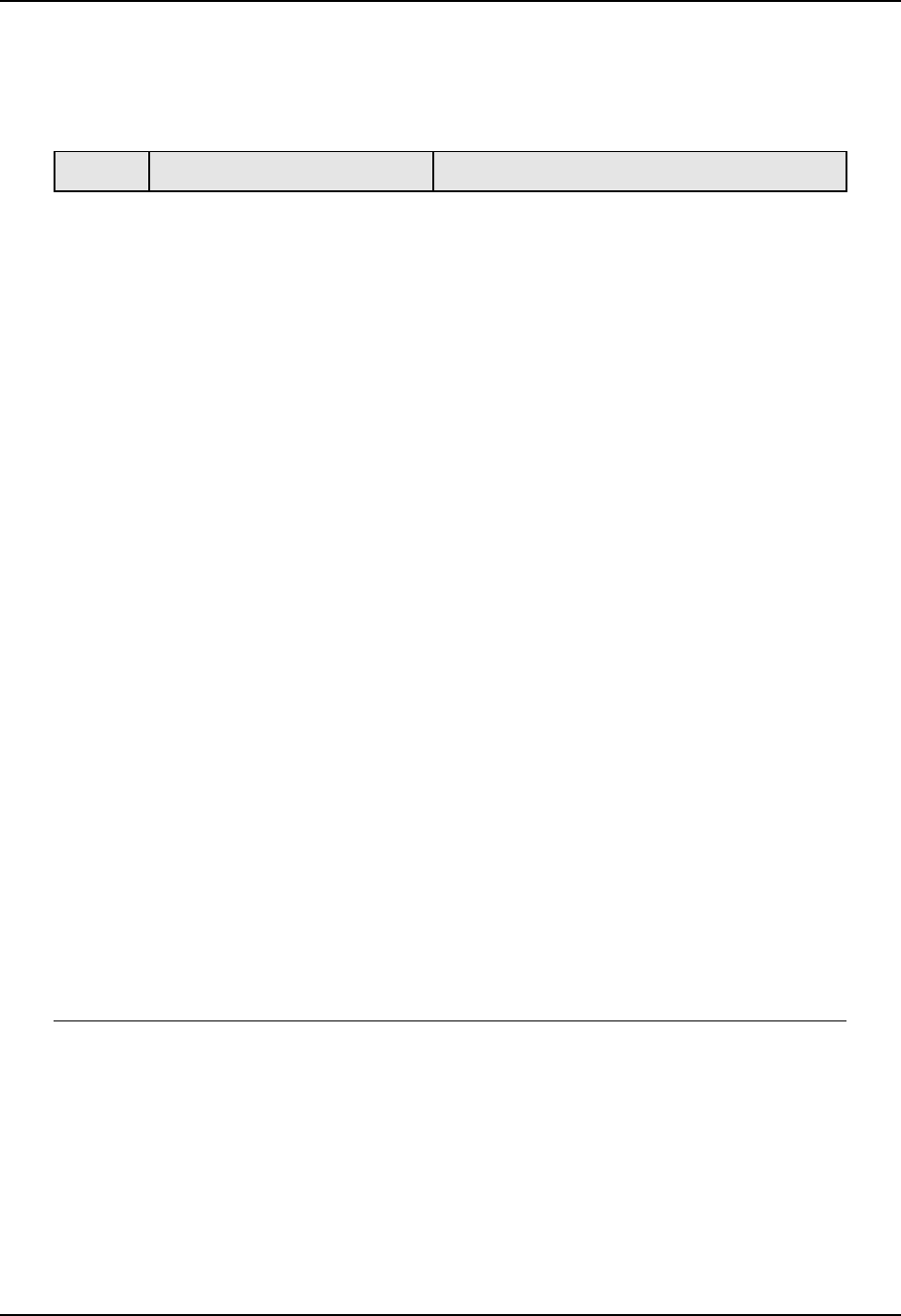
Troubleshooting/Service
7.7.8 Procedure #8 – Analog Input
Table 7-12 explains how to troubleshoot an Analog Input failure
Table 7-12 Troubleshooting an Analog Input Failure
Step What to do How to do it
Check Input Configuration. Check if t
he input configurations are correctly
set for the kind of sensor attached to the input
terminals. See Section 3.15 (Input 1) through
Section 3.19 (Input 5).
1
Check input wiring and external
resist
or assemblies.
See the Input Wiring Diagrams in Section 2.7
and confirm that the instrument is properly
connected to the sensor.
Thermocouple, Milliamp, 0 to 10 Volt and –1 to
1 Volt input types all require that external
resistor assemblies be connected to the input
terminals. These are provided with your
instrument based upon the Model Number
ordered. See the Input Wiring Diagrams in
Section 2.7 for installation information.
2
Check interconnection wiring
If the actual sensor does not come directly to
the controller but is instead connected via one
or more intermediate junction panels, which in
turn are connected to the controller, then
check the continuity of the sensor to the
controller. Check the tightness of the screws
or connectors at the junction panels.
3
Check Input Signals. Turn off power to the instrument (more than
one switch may be necessary). Using a
multimeter, measure the actual signal present
at the rear terminals to ensure that it is within
the allowed input range as shown in Section
5.2.
4
Change the Input Type in order
to restore Factory Calibration.
See Section 5.6.
5
Replace Input Board.
Installation instructions provided with new
board.
6
Replace Controller.
7
March 2012 UDC3500 Universal Digital Controller Product Manual 329
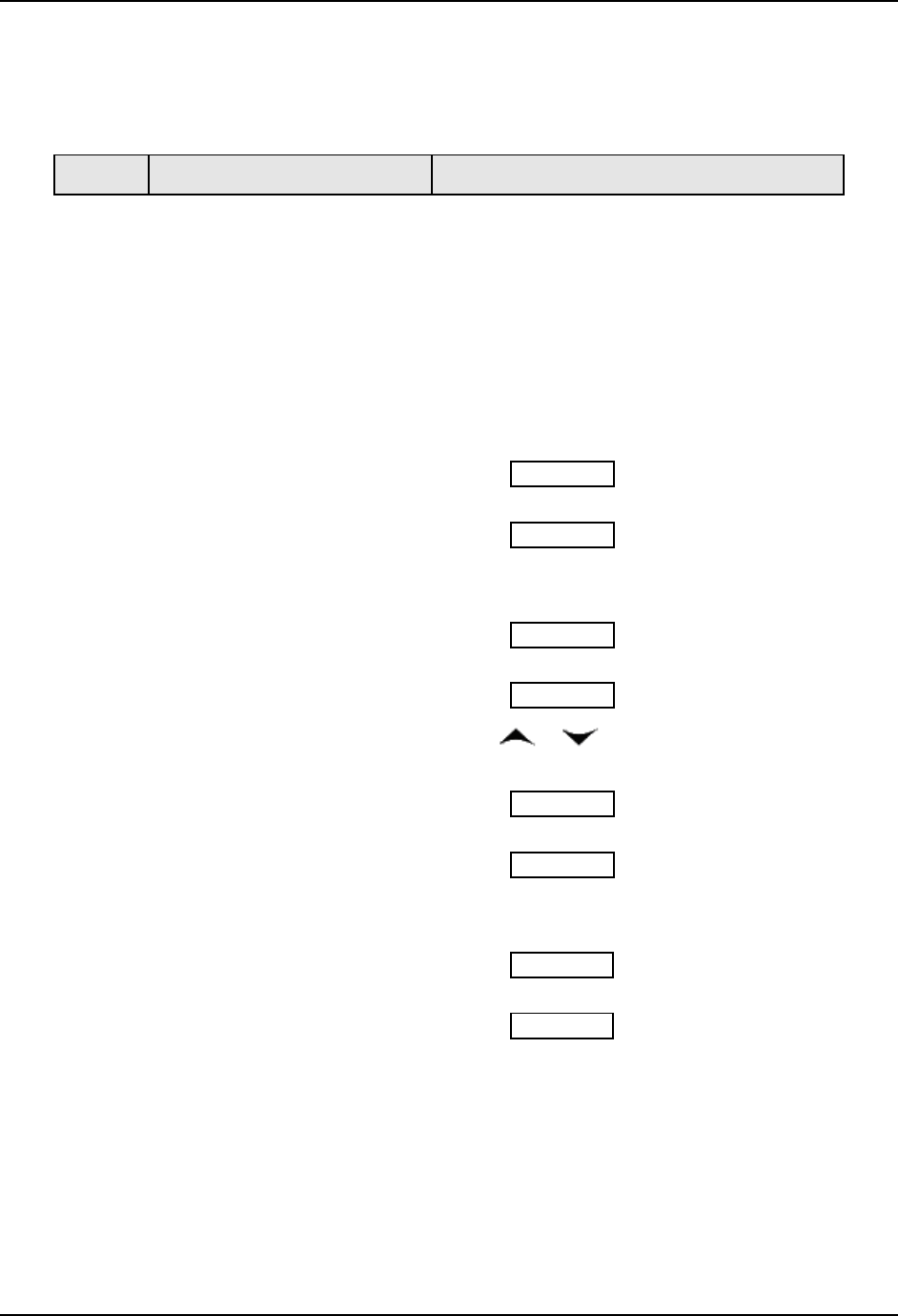
Troubleshooting/Service
7.7.9 Procedure #9 – RS-485
Table 7-13 explains how to troubleshoot a RS 485 Communications failure.
Table 7-13 Troubleshooting a RS-485 Communications Failure
Step What to do How to do it
Check the Address Number,
ComState and Baud Rate
s
e
ttings.
See Section 3.23.
1
Check if the controller is wired
c
o
rrectly to the Network.
See Section 2.7 for wiring diagrams.
2
Determine if the
Communications board is faulty
by running a LOCAL
LOOPBACK TEST.
If the test fails, replace the
board. If the test passes, the
problem is most likely
elsewhere in the
communications network.
Disconnect the communications cable from the
rear terminals. Run the Local Loopback Test.
P
ress
Setup key until you see:
COM
Lower Display
SET UP
Upper Display
Press
Func-Loop 1/2 key until you see:
LOOPBACK
Lower Display
DISABLE
Upper Display
Press
or and you will see:
LOOPBACK
Lower Display
ENABLE
Upper Display
Press
Lower Display key and you will see:
LOOPBACK
Lower Display
START
Upper Display
Then you will see either PASS or FAIL in the
Upper Display. The test will run until the
operator disables it or until the unit is power-
cycled.
If you see FAIL, go to Step 4. If you see PASS,
then the problem is most likely not in the
instrument, but somewhere else in the
network. Reconnect the communications cable
and then go to Step 7.
3
330 UDC3500 Universal Digital Controller Product Manual March 2012
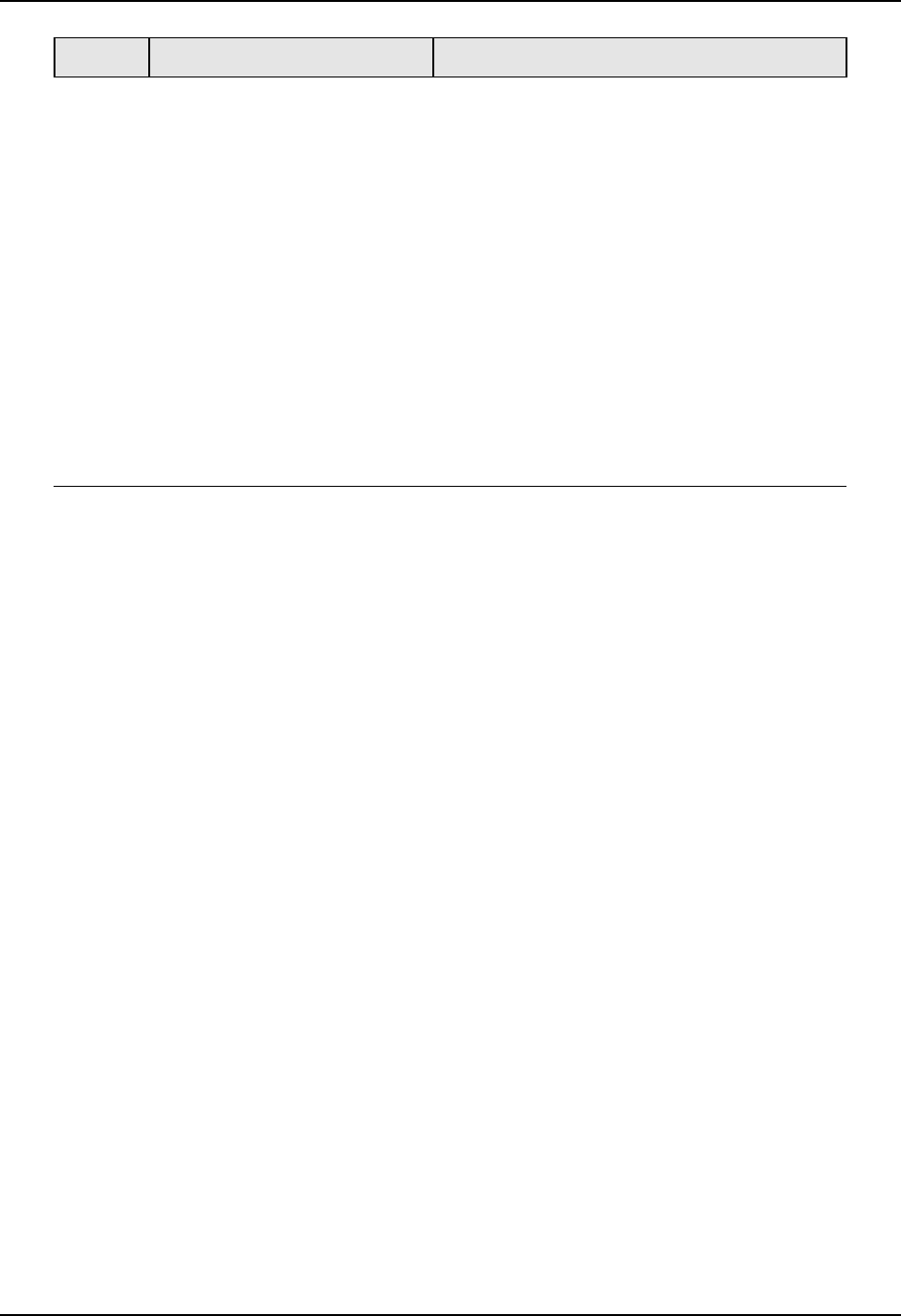
Troubleshooting/Service
March 2012 UDC3500 Universal Digital Controller Product Manual 331
Step What to do How to do it
4
Make sure that the
Communications Printed Wiring
Board is installed properly in
the controller.
Withdraw the chassis from the case and
inspect the board. See the exploded view
(Figure 8-1) for location of the board. Return
the chassis to the case and go back to Step 3.
5
Change RS-485
Communications board.
Installation instructions provided with new
board.
6
Change Controller
7
Follow these next two steps if
you saw PASS in Step 3.
Check the field wiring and
termination resistor.
Turn off the power to all instruments on the
Network. Using an ohmmeter, check the
resistance across the communications rear
terminals. See Section 2.7 for wiring diagrams.
There should be a reading equivalent to the
value of the termination resistors. If not,
replace termination resistors.
8
Check the rest of the Network.
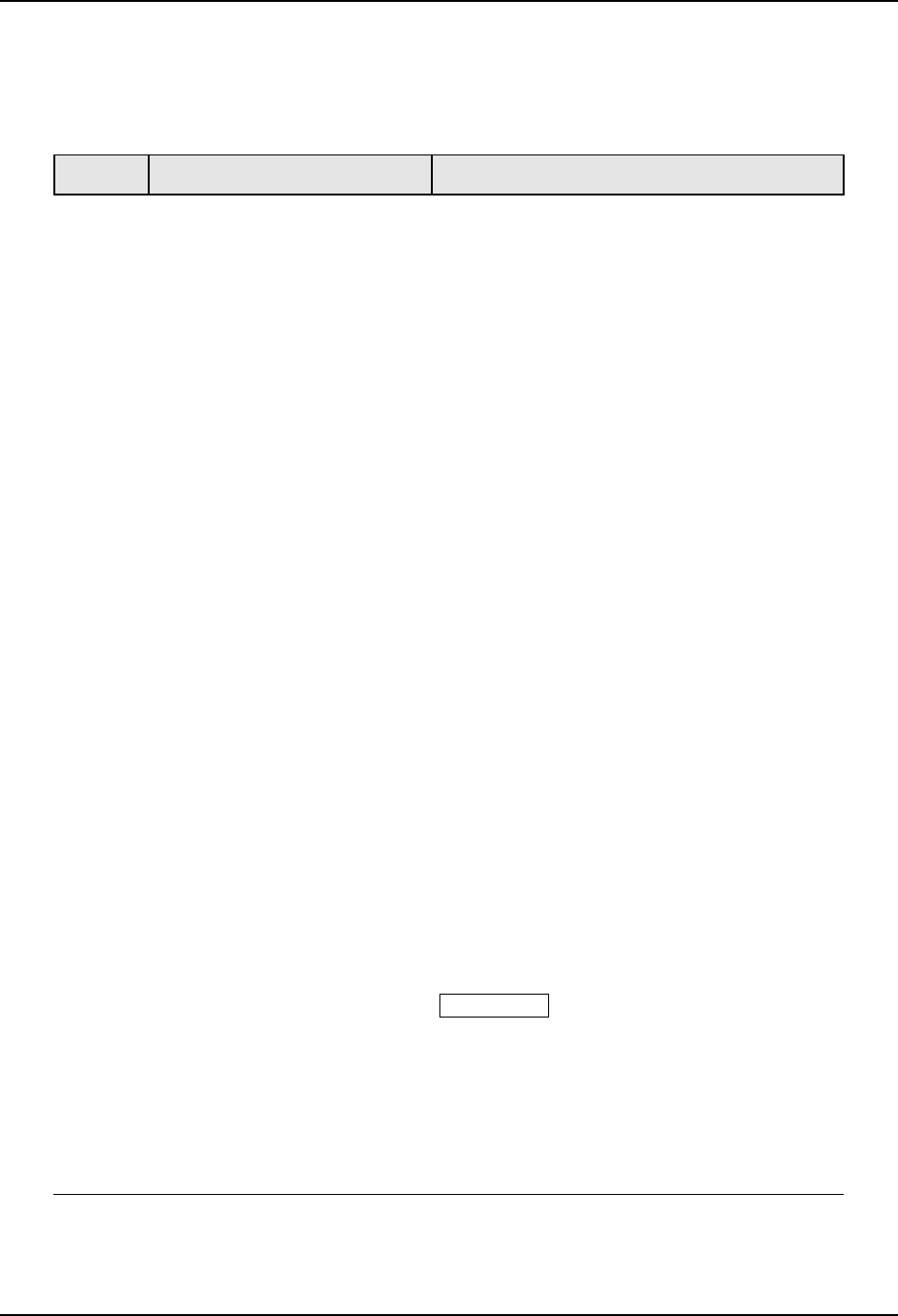
Troubleshooting/Service
7.7.10 Procedure #10 – Ethernet
Table 7-14 explains how to troubleshoot an Ethernet Communications failure.
Table 7-14 Troubleshooting an Ethernet Communications Failure
Step What to do How to do it
Check fo
r lower display
diagnostic messages
If the lower display is showing the
diagnostic message “EUNPLGED”
(Ethernet Unplugged), then this means
that the Ethernet cable is unplugged, the
unit is improperly connected to the
network or that the Ethernet network itself
is bad. See Section 2.7 for wiring
diagrams. If the unit is properly connected,
then check the Ethernet network for
functionality.
If the lower display is showing the
diagnostic message “ENET DEF”
(Ethernet Default) then this means that the
instrument is set for the factory default IP
address of 10.0.0.2. This will appear when
the Ethernet parameters have failed (both
working and backup copies). See Section
3.30
and re-configure the Ethernet settings
with the P.I.E. Tool.
If the lower display is showing the
diagnostic message ”EBRDFAIL”
(Ethernet Board Failure) then this means
that there has been a failure on the
Ethernet Communications Board. Go to
step 3.
1
If none of the above diagnostic
messages are present, then
check the IP address, Subnet
Mask address and Gateway
address settings.
As shipped from the factory, all units are
configured for an IP address of 10.0.0.2. The
MAC address is printed on the product label
located on the instrument’s case. Configure
the Ethernet and Email settings with the P.I.E.
Tool. See Section 3.30
.
2
Change Ethernet
Communications board.
Installation instructions provided with new
board.
ATTENTION
The replacement Ethernet
Communications board will have a label
showing its MAC address. To avoid confusion,
it is strongly recommended that you change
the MAC address shown on the label on your
instrument’s case to be the same as the MAC
address shown on your new board.
3
Change Controller
4
332 UDC3500 Universal Digital Controller Product Manual March 2012
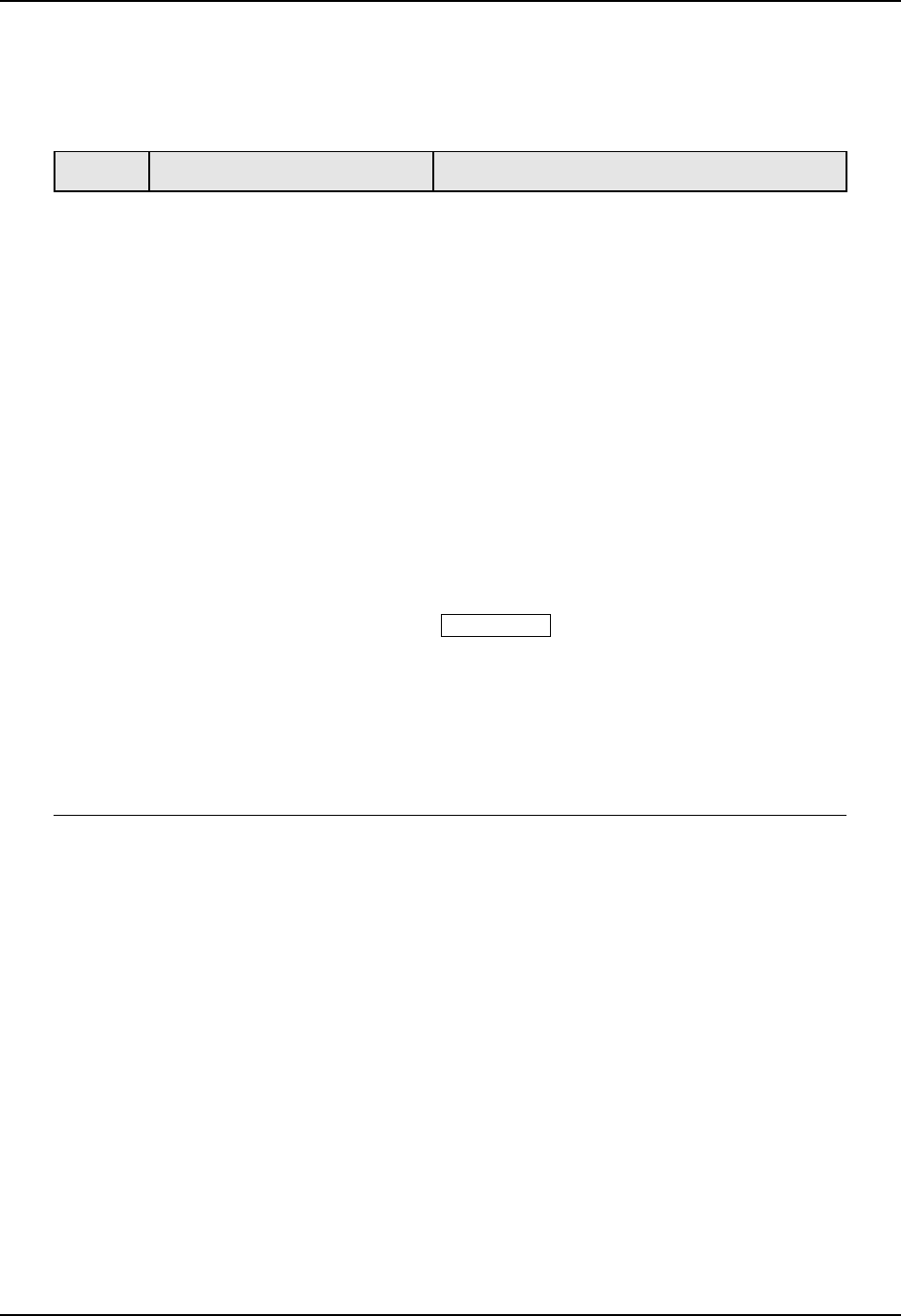
Troubleshooting/Service
7.7.11 Procedure #11 – Email
Table 7-15 explains how to troubleshoot an Ethernet Communications failure.
Table 7-15 Troubleshooting an Email Failure
Step What to do How to do it
Check for Ethernet diagnostic
messages on lower display
See Diagnostic Procedure #10 – Ethernet,
Step #1 in Section 7.7.10.
1
Check the IP address, Subnet
Mask address and Gateway
address settings. Check the
Email “To Email” and “SMTP
Address: (for Outgoing)”
s
e
ttings.
As shipped from the factory, all units are
configured for an IP address of 10.0.0.2 and a
SMTP address of 0.0.0.0. The MAC address is
printed on the product label located on the
instrument’s case. Configure the Ethernet and
Email settings with the P.I.E. Tool. See
Section 3.30.
2
Check if the selected Alarm
has become active.
Emails are sent only when the selected Alarm
transitions from OFF to ON. Depending upon
your network, it may take several minutes for
an Email to make its way from the controller to
its destination.
3
Change Ethernet
Communications board.
Installation instructions provided with new
board.
ATTENTION
The replacement Ethernet
Communications board will have a label
showing its MAC address. To avoid confusion,
it is strongly recommended that you change
the MAC address shown on the label on your
instrument’s case to be the same as the MAC
address shown on your new board.
4
Change Controller
5
March 2012 UDC3500 Universal Digital Controller Product Manual 333
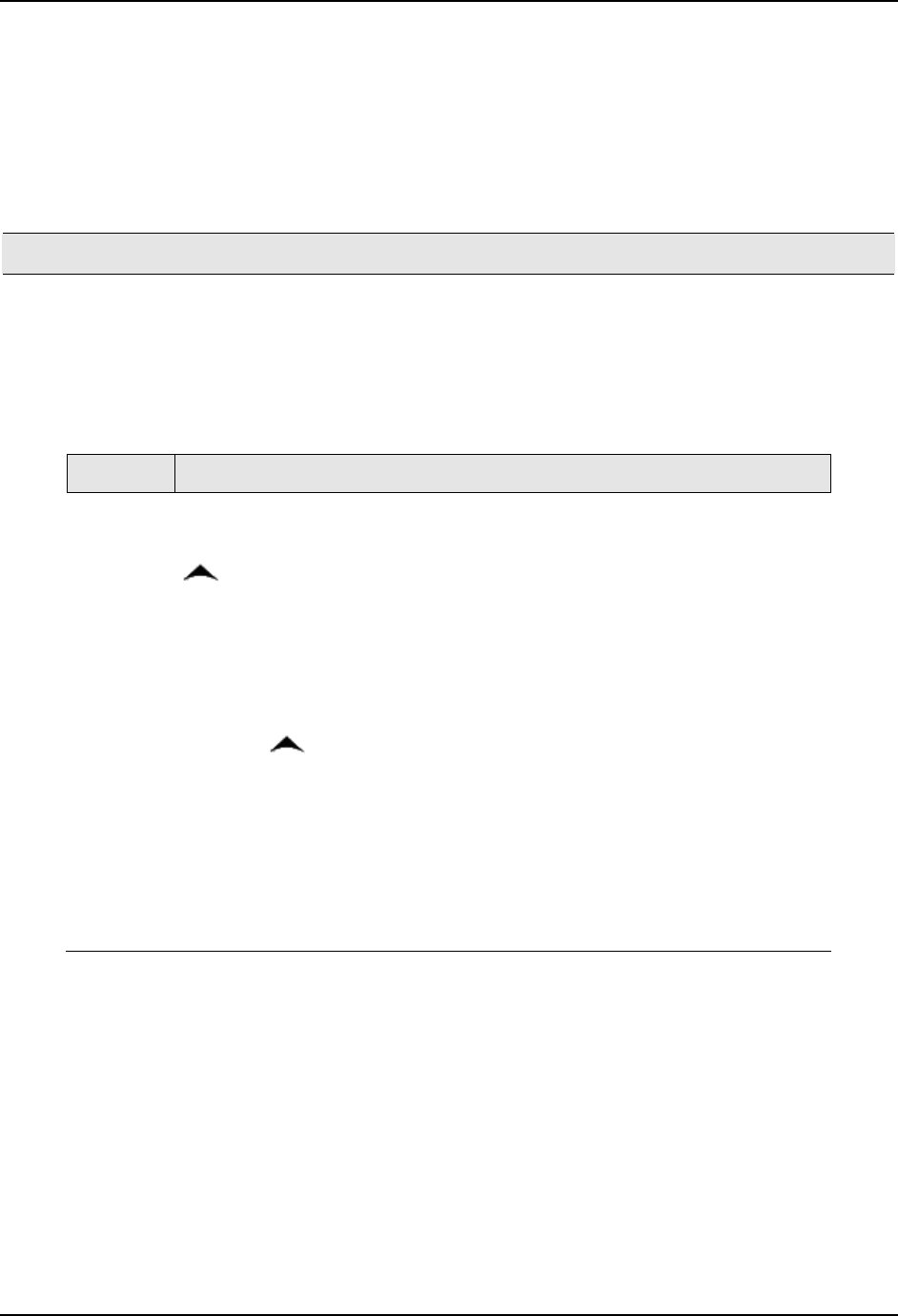
Troubleshooting/Service
7.8 Restoring Factory Configuration
Introduction
This procedure restores the configuration of the instrument back to the Factory Settings
per Section 3.31.
ATTENTION
Restoring the factory configuration overwrites all user-entered configuration changes. This
procedure cannot be undone; it is a one-way process.
Table 7-16 explains how to restore Factory Configuration.
Table 7-16 Restoring Factory Configuration
Step What to do
Turn off the power to the instrument for at least five seconds.
1
2
Turn the power back on and simultaneously press the
Func-Loop 1/2 and
keys. This must be done while “TEST DONE” is being displayed.
If step 2 was performed correctly, the instrument will now display “UDC”
[Upper] “UPDATE” [Lower].
3
Press the
Func-Loop 1/2 Key. The instrument will now display “DIS” [Upper]
“RESTORE” [Lower].
4
5
Press the
key. The instrument will now display “CONFIG” [Upper]
“RESTORE” [Lower].
Press the
Func-Loop 1/2 Key. The instrument will now display “DOING”
[Upper] “RESTORE” [Lower].
6
When the instrument finishes the restore operation, it automatically resets
itself and restarts in the product mode. The instrument configuration will
now be the same as it was when the instrument left the factory and all user-
entered configurations since that time have been overwritten.
7
334 UDC3500 Universal Digital Controller Product Manual March 2012
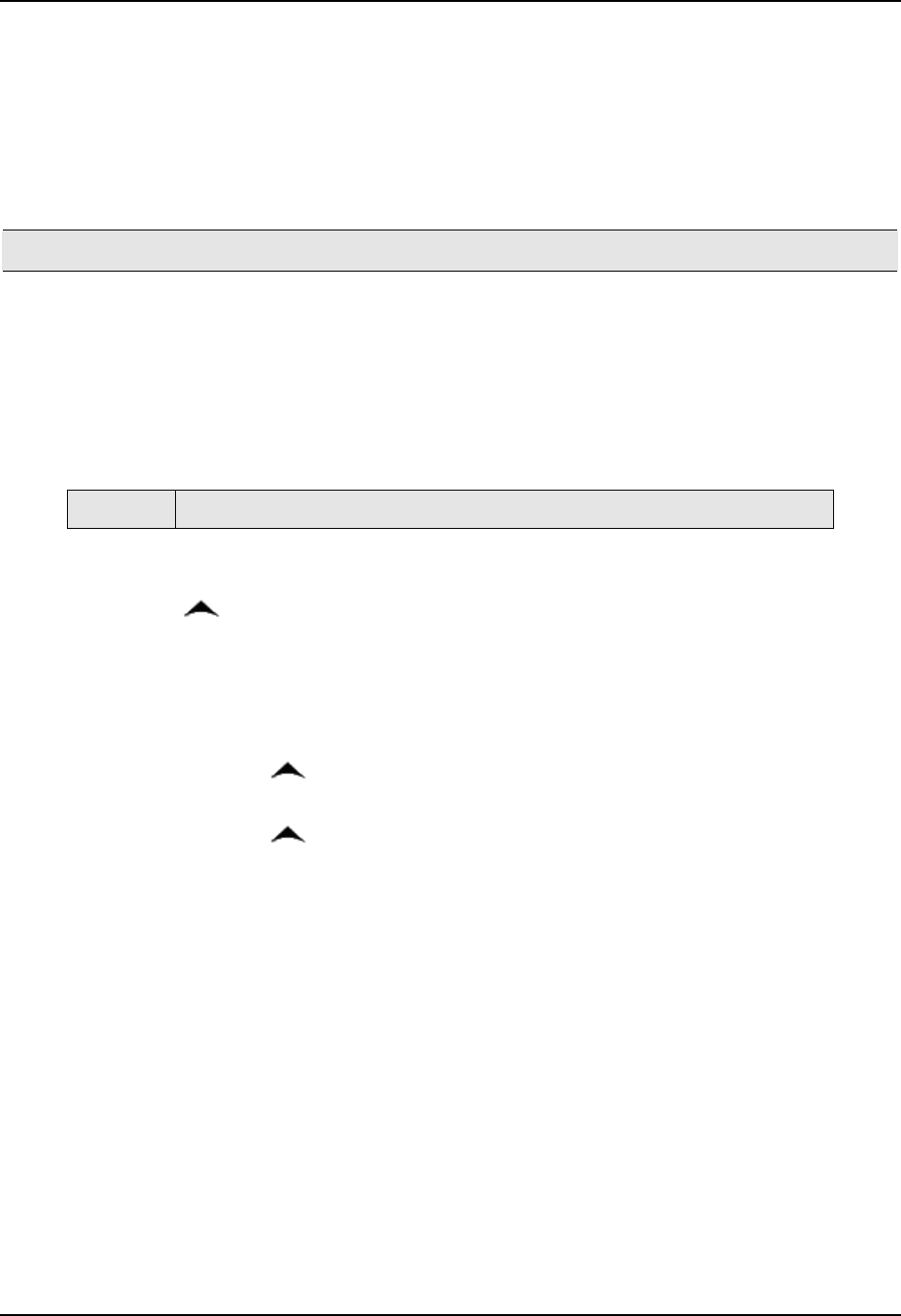
Troubleshooting/Service
7.9 Software Upgrades
Introduction
This procedure enables software features that were not ordered from the factory. See
Table 8-3 for a list of the available Software Upgrades.
ATTENTION
This procedure cannot be undone; it is a one-way process.
Each instrument has a unique code number sequence, so the following procedure must be
performed on each instrument to be upgraded.
Table 7-17 explains how to enable new software features.
Table 7-17 Software Upgrades
Step What to do
Turn off the power to the instrument for at least five seconds.
1
Turn the power back on and simultaneously press the
Func-Loop 1/2 and
keys. This must be done while “TEST DONE” is being displayed.
2
If step 2 was performed correctly, the instrument will now display
“UDC” [Upper] “UPDATE” [Lower].
3
Press the
Func-Loop 1/2 key. The instrument will now display
DISABLE [Upper] “RESTORE” [Lower].
4
5
Press the
key. The instrument will now display
“CONFIG” [Upper] “RESTORE” [Lower].
6
Press the
key. The instrument will now display
OPTIONS [Upper] “RESTORE” [Lower].
Press the
Func-Loop 1/2 key. The instrument will now display
“XXXX” [Upper] “ENTER1” [Lower], where XXXX is a unique code number
for this particular instrument. Write this number down.
7
Press the
Func-Loop 1/2 key. The instrument will now display
“XXXX” “ENTER2”. Write this number down.
8
Press the
Func-Loop 1/2 key. The instrument will now display
“XXXX” “ENTER3”. Write this number down.
9
Write down the Model and Serial Numbers of your instrument.
10
March 2012 UDC3500 Universal Digital Controller Product Manual 335
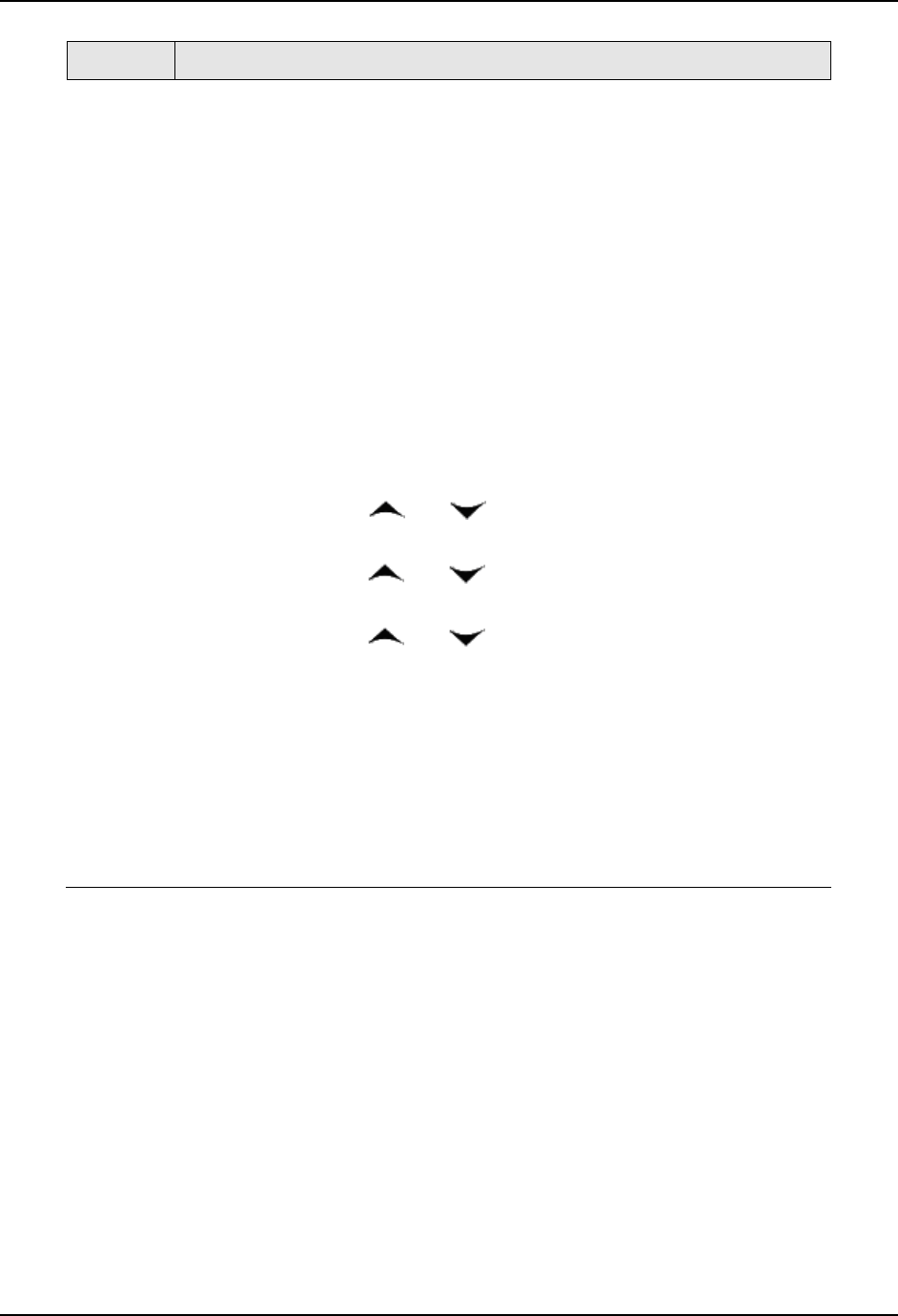
Troubleshooting/Service
336 UDC3500 Universal Digital Controller Product Manual March 2012
Step What to do
11
Contact your Honeywell Representative to place an order. Please have a
company purchase order number available before you call. The order entry
person will ask for the following information:
1. Software Upgrade Part Number(s) you require per Table 8-3
2. Model Number of your instrument(s)
3.
Serial Number of your instrument(s)
4. Code Numbers 1, 2 and 3 from your instrument(s)
5. Purchase order number.
With this information, a new code number set will be generated for your
instrument(s).
12
When you have the new code number set provided by Honeywell, repeat
steps 1 to 6.
13
Press the
Func-Loop 1/2 key. The instrument will now display
“XXXX” “ENTER1”, where XXXX is a unique code number for this particular
instrument. Using the
and keys, enter the new Code 1 number.
14
Press the
Func-Loop 1/2 key. The instrument will now display “XXXX”
“ENTER2”. Using the
and keys, enter the new Code 2 number.
15
Press the
Func-Loop 1/2 key. The instrument will now display “XXXX”
“ENTER3”. Using the
and keys, enter the new Code 3 number.
16
Press the
Func-Loop 1/2 key. The instrument will process the new code
numbers and add the new software feature. If the code numbers were
entered incorrectly or if the wrong code numbers for this particular
instrument were entered, then the controller will go into Manual Mode and
flash the message “FAILSAFE” on the lower display. Check the code
numbers being entered and repeat steps 12 through 16.
17
When the instrument finishes the operation, it automatically resets itself and
restarts in the product mode. The instrument configuration now includes the
added software feature(s).
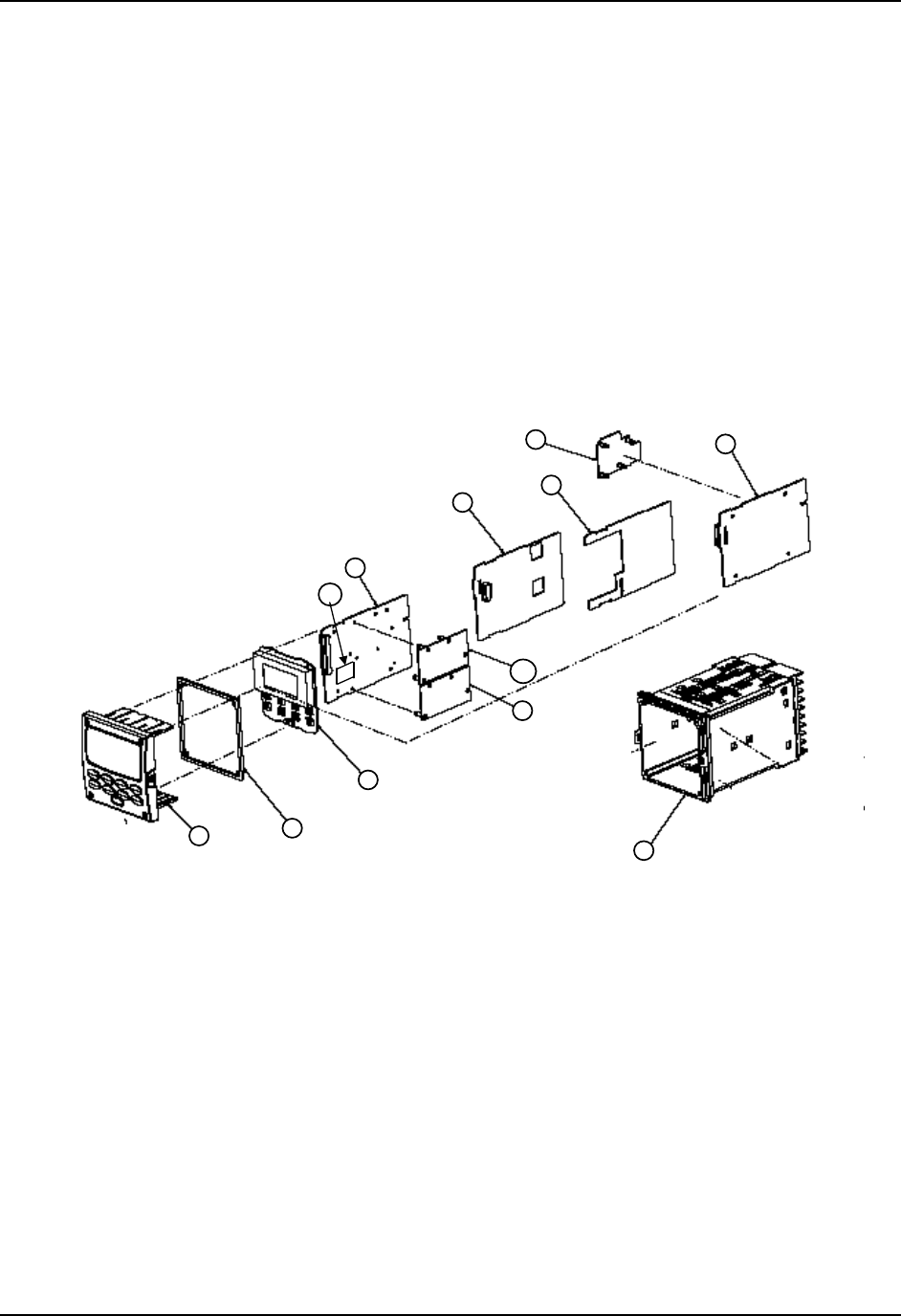
Parts List
8 Parts List
8.1 Exploded View
Introduction
Figure 8-1 is an exploded view of the UDC3500 Controller. Each part is labeled with a
key number. The part numbers are listed by key number in Table 8-1. Parts not shown are
listed in Table 8-2.
1
1
2
3
4
5
6
7
8
10
9
11
Figure 8-1 UDC3500 Exploded View
March 2012 UDC3500 Universal Digital Controller Product Manual 337
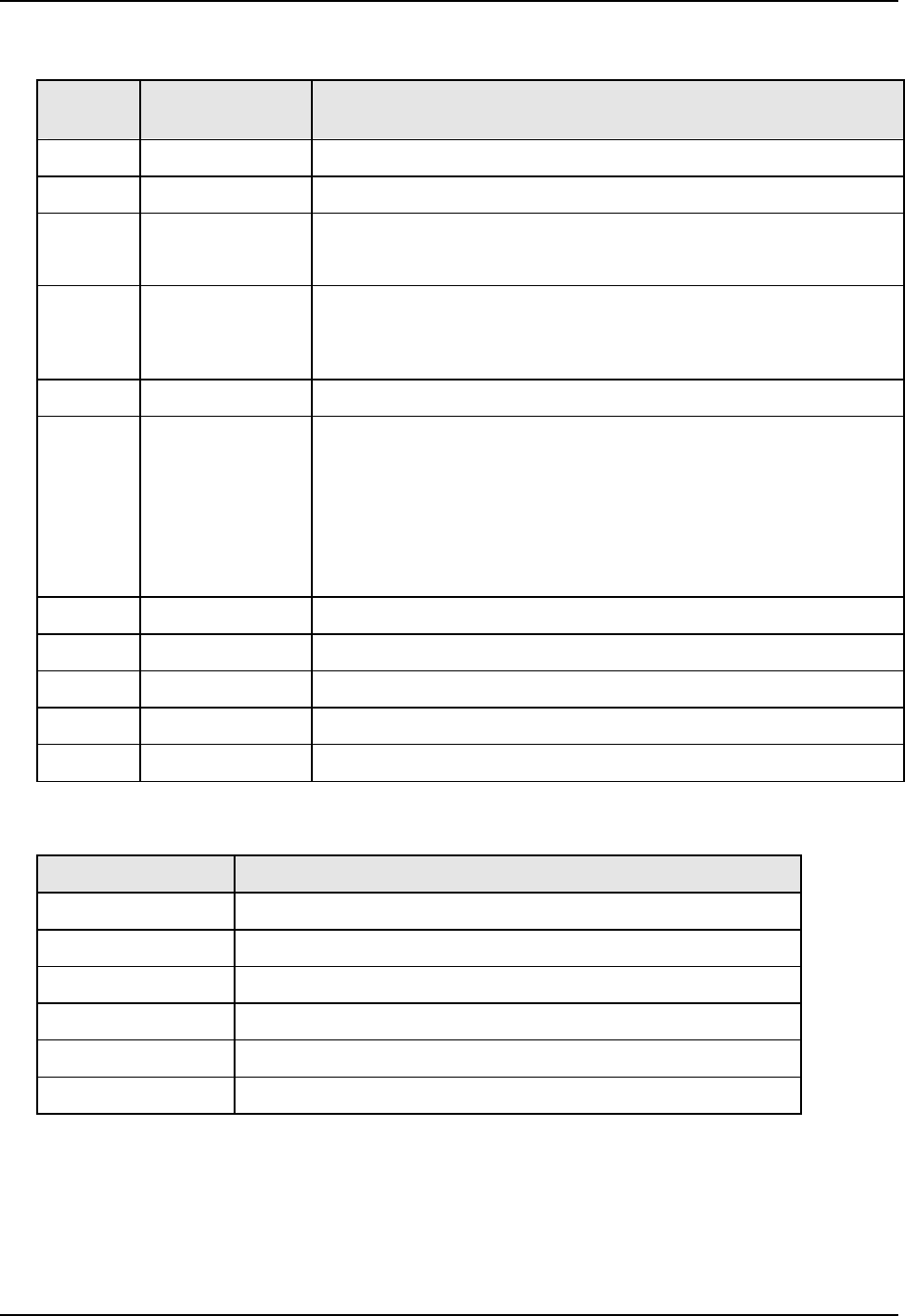
Parts List
338 UDC3500 Universal Digital Controller Product Manual March 2012
Table 8-1 Parts Identification
Key
Number
Part Number Description
1 51453143-503 Bezel Assembly and Bezel Gasket
2 51452845-501 Display/Keyboard PWA
3 51452831-501
50006376-501
Power/Output PWA (90-250Vac Operation)
Power/Output PWA (24 Vac/dc Operation)
4 51452837-502
51452840-501
Second Current Output/Digital Inputs/RS-422/485 Communications
PWA
Digital Inputs/Ethernet Communications PWA
5 51452828-502 MCU/Input PWA
6
30755306-501
30756679-501
30756725-501
51452807-501
51452834-501
Output 2
Electro-Mechanical Relay
Open Collector Output PWA
Solid State Relay
Dual Electromechanical Relay PWA
Third Current Output PWA
7 51452846-501 Case Assembly (including Mounting Kit with 4 brackets & screws)
8 51452843-501 Optional Relays PWA (Relays 3, 4 and 5)
9 51452825-501 Optional Input PWA (used for Inputs 2 and 4)
10 51452825-501 Optional Input PWA (used for Inputs 3 and 5)
11 51453140-501 Battery Module
Table 8-2 Parts Not Shown
Part Number Description
30731996-506 Milliamp Input Resistor Assembly (250 ohm)
30754465-501 0-10 Volt or –1-1 Volt Input Resistor Assembly (100K pair)
51453364-501 Thermocouple Input Cold Junction Sensor Assembly
51452763-501 Mounting Kits (12 brackets & screws)
50010425-501 Ethernet Adapter Kit (RJ-45 Connector)
50004821-501 NEMA Panel Support Kit (for bracing thin mounting panels)
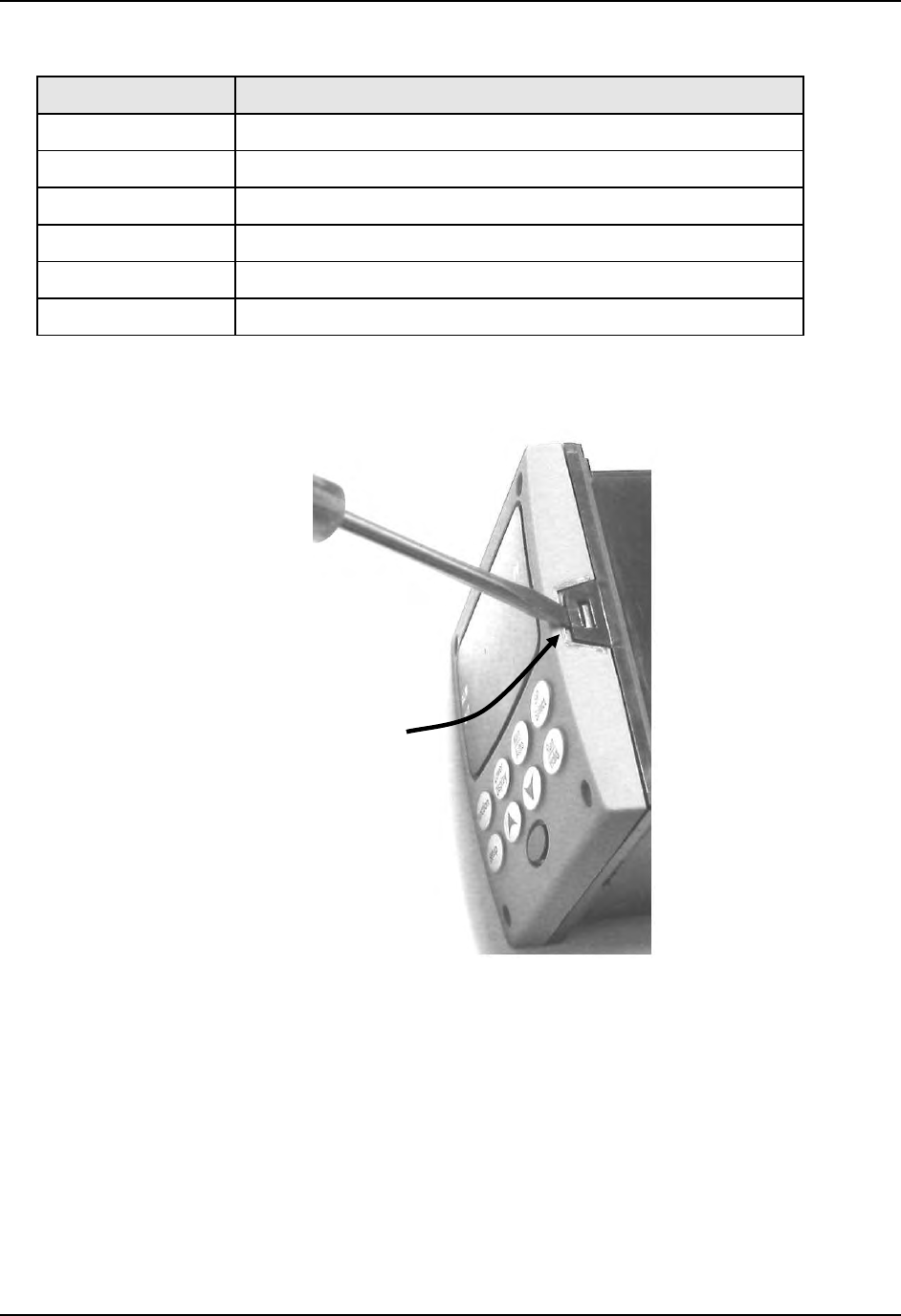
Parts List
Table 8-3 Software Upgrades (see Section 7.9)
Part Number Description
50004636-501 Math Options
50004636-502 Set Point Programming (SPP) – Single Program
50004636-503 Healthwatch
50004636-504 Two Loops / Cascade
50004636-505 Not Available (Future Enhancement)
50004636-506 Set Point Programming (SPP) – Four Programs
8.2 Removing the chassis
Using a thin screwdriver,
gently twist the screwdriver to pry the side tabs from the front
face. Pry just enough to release it,
otherwise you’ll bend or break the tab. If you break or
bend the tab and can’t reattach the front snugly, you’ll need to reattach the front using the
4 NEMA4 screws provided. See Section 2.5 Mounting.
Insert thin screwdriver under
tabs and twist slightly and
gently to disengage front
March 2012 UDC3500 Universal Digital Controller Product Manual 339
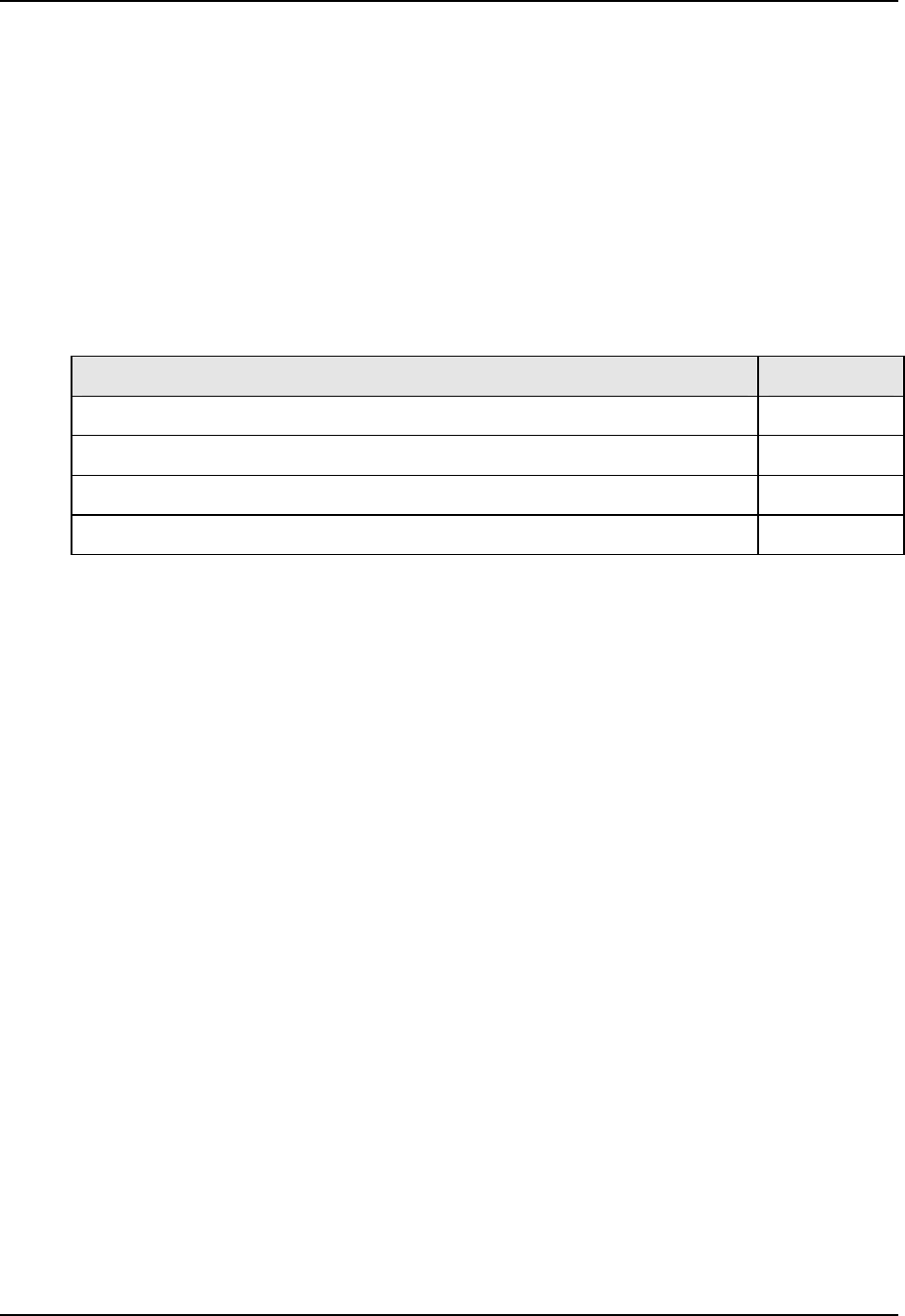
Modbus RTU Function Codes
9 Modbus RTU Function Codes
9.1 Overview
This section describes the function codes needed to upload and download the
configuration from a host computer into the instrument.
What's in this section?
The following topics are covered in this section.
TOPIC See Page
9.1 Overview 340
9.2 General Information 340
9.3 Function Code 20 342
9.4 Function Code 21 346
9.2 General Information
This instrument uses a subset of the standard Modbus RTU function codes to provide
access to process-related information. Several MODICON function codes are
implemented. It is appropriate to define instrument-specific "user-defined" function
codes. Where differences occur between the two protocols it will be noted. Several
standard Modbus RTU function codes are supported.
Configuration ID Tags
Function codes 20 and 21 use the RS422/485 tag IDs for accessing configuration and
process-related data. These tags are fully explained in
Section 10.
The tag IDs represent the
register addresses used in the Request Message.
340 UDC3500 Universal Digital Controller Product Manual March 2012
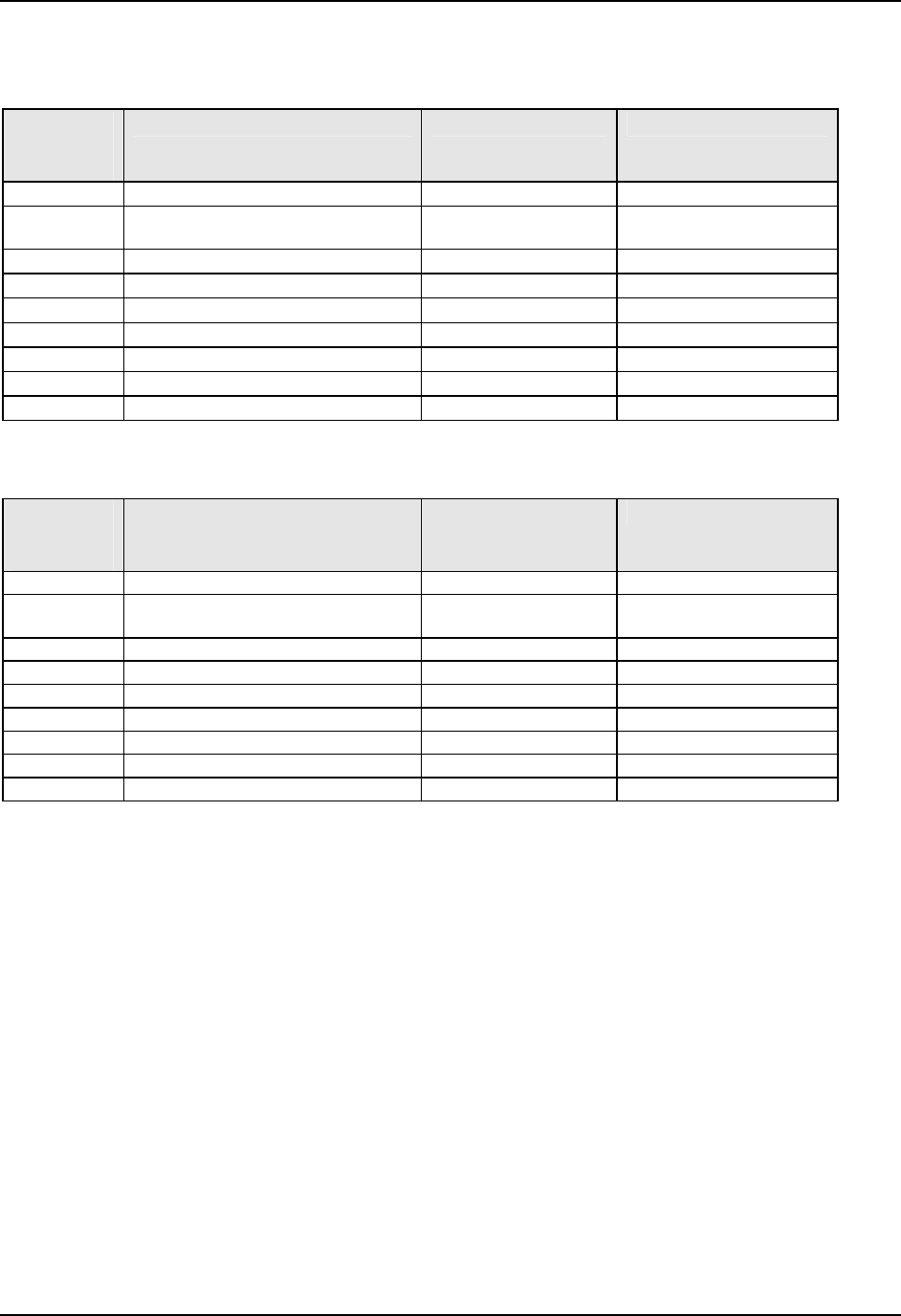
Modbus RTU Function Codes
Register Address Structure
Table 9-1 Integer Parameter Type
Name Access Notes Register
Numbers
(Dec)
1 Type = 1 NOT SUPPORTED 16-bit Unsigned Integer
2 Attribute NOT SUPPORTED 1 = Read Only,
2 = Read/Write
3 Value (16 bit integer) Read / Write
4 Not Used NOT SUPPORTED
5 Low Range (16 bit integer) NOT SUPPORTED
6 Not Used NOT SUPPORTED
7 High Range (16 bit Integer) NOT SUPPORTED
8 Not Used NOT SUPPORTED
9 to 13 Description Text (ASCII string) NOT SUPPORTED
Table 9-2 Floating Point Parameter Type
Name Access Notes Register
Numbers
(Dec)
1 Type = 2 NOT SUPPORTED IEEE Floating Point
2 Attribute NOT SUPPORTED 1 = Read Only,
2 = Read/Write
3 Value (float high word) Read / Write
4 Value (float low word) NOT SUPPORTED
5 Low Range (float high word) NOT SUPPORTED
6 Low Range (float low word) NOT SUPPORTED
7 High Range (float high word) NOT SUPPORTED
8 High Range (float low word) NOT SUPPORTED
9 to 13 Description Text (ASCII string) NOT SUPPORTED
Register Count
The register count depends on the data format of the registers being read or written.
Integer data is represented in sixteen bits and is transferred high byte first.
Floating point data is transferred in IEEE 32-bit format.
The register count definitions are:
0001 = Integer Data
0002 = Floating Point Data
March 2012 UDC3500 Universal Digital Controller Product Manual 341
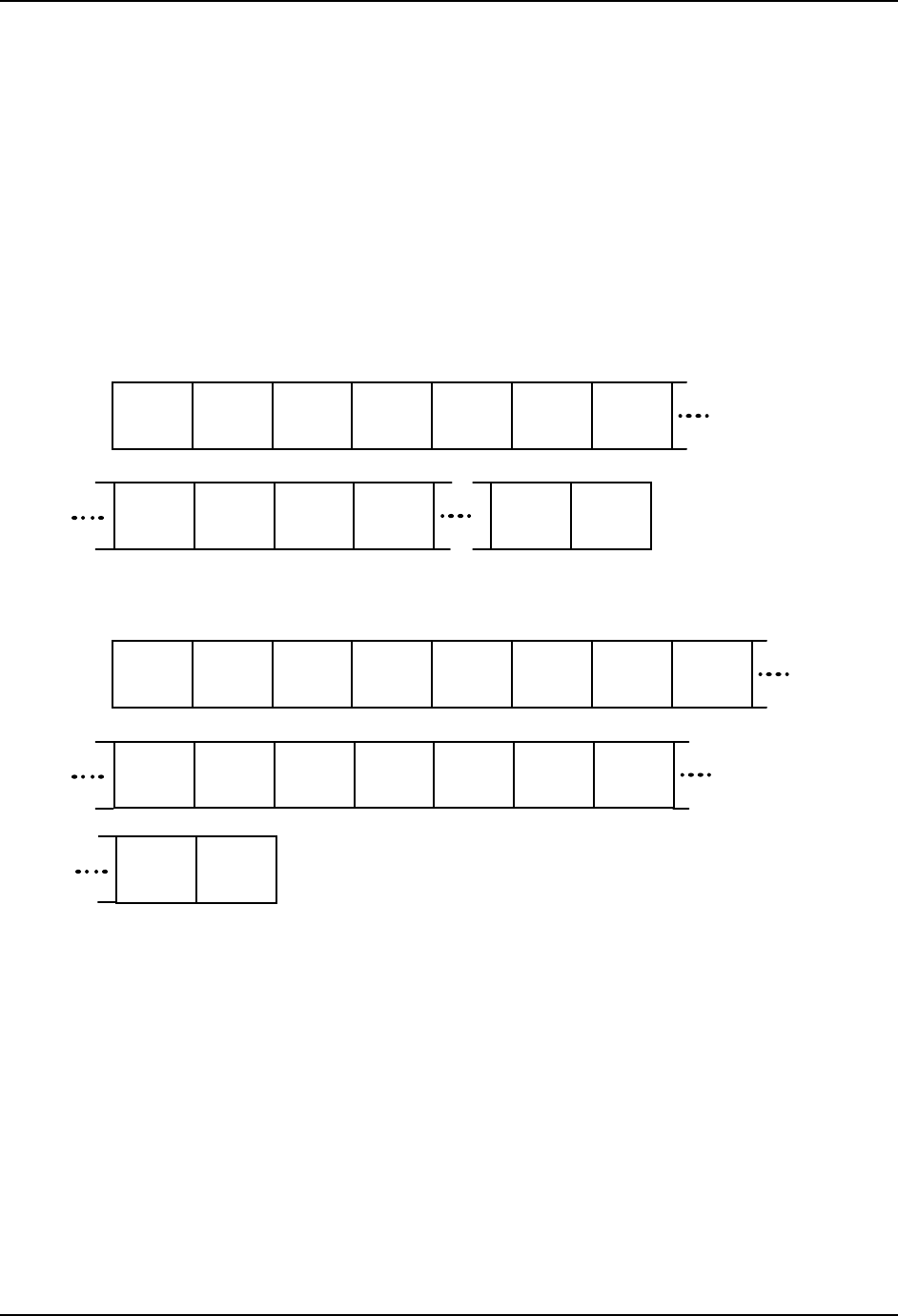
Modbus RTU Function Codes
9.3 Function Code 20 (14h) - Read Configuration Reference Data
Description
Function code 20 (14 Hex) is used in this instrument to read information stored in its
configuration database. Each configuration item is explicitly addressed by a file number
and register address. IEEE 32-bit floating point and 16-bit integer formats are supported.
Request and Response Formats
The Request and Response formats for Function code 20 (14 Hex) are shown below.
Details for each block reference follow.
Request Message Format
Slave
Address
Byte
Count
Reference
Type
Function
Code 14
Reference
Type
File
Number
Register
Count
Register
Address
Reference
Type
File
Number
Register
Count
Register
Address
CRC
Data
CRC
Data
Response Message Format
Slave
Address
Byte
Count
Reference
Type
Function
Code 14
Reference
Type
Data
Reference
Type
Data
Byte
Count
Data Data
Data
Data
Byte
Count
Data Data Data Data
CRC
Data
CRC
Data
Byte Count
The Byte Count equals the number of bytes transmitted in either the request or response
message and will be the minimum number required in order to transmit all requested
data.
Data Byte Count
The Data Byte Count is the number of data bytes of the sub response including the
Reference Type but not including itself. A floating point sub response has four bytes of
data and one byte representing the reference type making the data byte count equal to
five.
342 UDC3500 Universal Digital Controller Product Manual March 2012
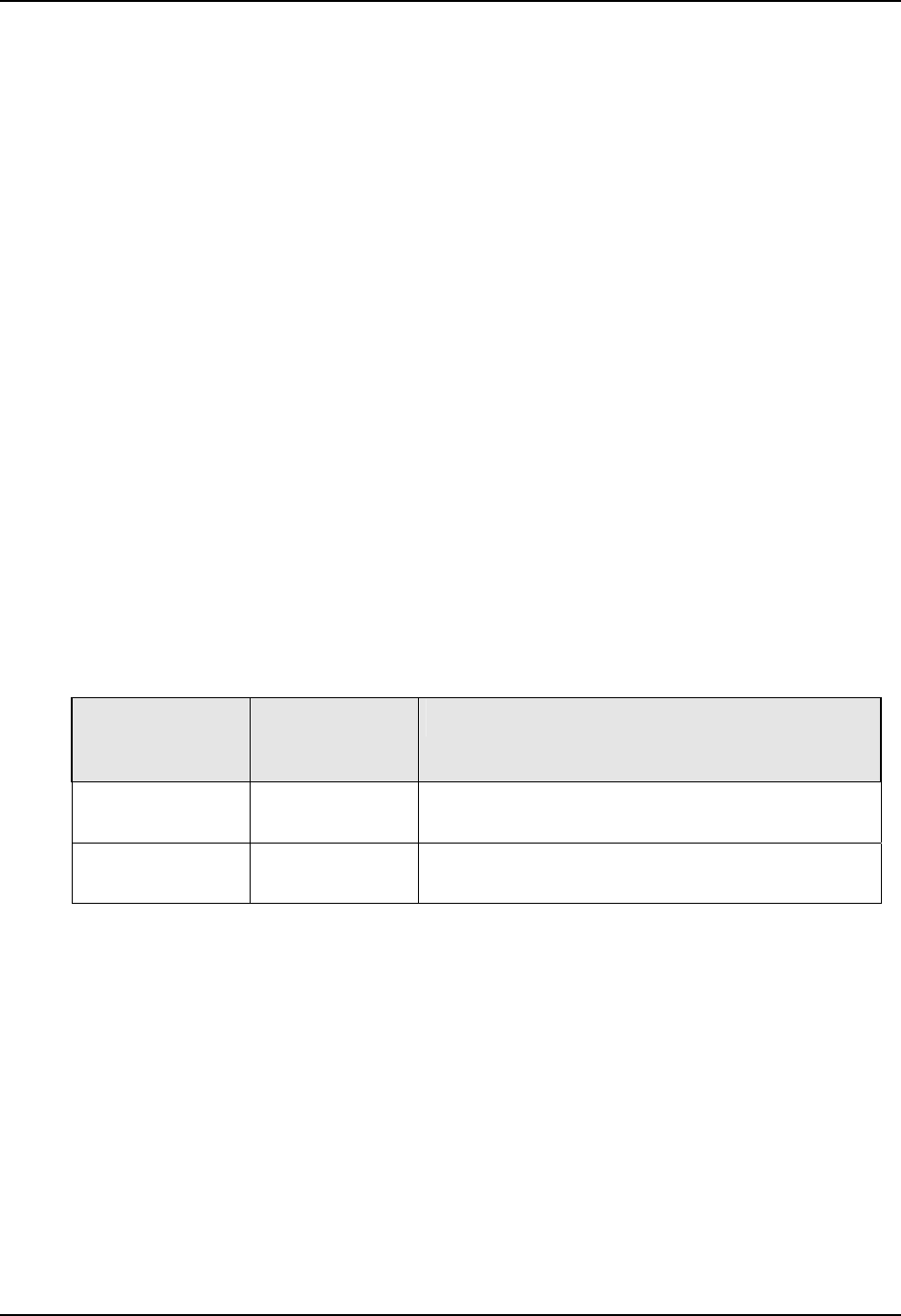
Modbus RTU Function Codes
Reference Type Definitions
The Reference Type definition is always 06.
See examples in Subsection 9.3.1
File Number
The file number word contains the register number from the register address structure
tables on page 341. Although the register address structure tables indicate up to 13 data
registers are available for access, only register address 3 is currently supported.
Register Address
The register address word represents the tag ID number for the parameter(s) being
accessed. The register address word is made up of two bytes. The LSB contains the tag
ID number. The tag ID numbers represent the parameter’s register address(es). See
Section 10 for the tag ID numbers. The MSB contains the control loop and database
extension using codes as shown below:
Modbus register address (High register, Low register)
00 h,xx - loop 1 basic data base registers
01 h,xx - loop 2 basic data base registers
40 h,xx - loop 1 extended data base registers
41 h,xx - loop 2 extended data base registers
xx = Modbus parameter ID register address in hex– Implied Format
Table 9-3 Register Parameter ID Address Format for Function Code 20
Register
Address(es)
(Hex)
Format Register
Address(es)
(Decimal)
001 to 127 0001 to 007F
analog formatted data
(2 registers – IEEE 32-bit floating point)
128 to 255 0080 to 00FF
integer formatted data
(1 register – 16-bit integer)
March 2012 UDC3500 Universal Digital Controller Product Manual 343
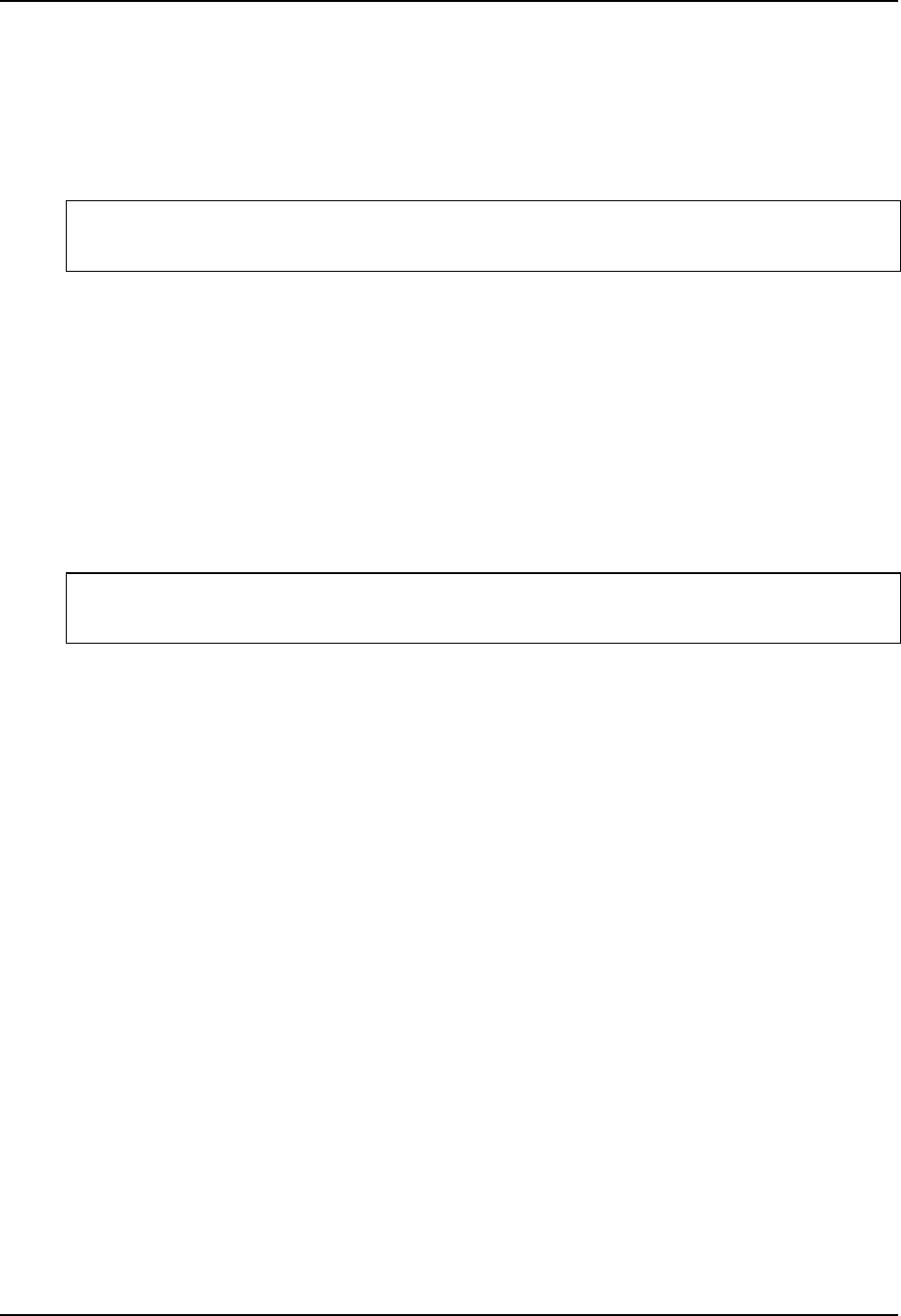
Modbus RTU Function Codes
9.3.1 Read Configuration Examples
Example #1
The following is an example of a request to read the Gain 1 value using Function code
20.
Request Message (Read (Gain 1) = ID Tag 001)
02 14 07 06 00 03 00 01 00 02 (CRC16)
Where:
02 = Address
14 = Function Code 20 (14 hex)
07 = Byte Count
06 = Reference Type
00,03 = File Number (Access Data Value)
00,01 = Register Address (Standard Access Gain 1 - Tag ID #1)
00 02 = Register Count (Floating Point Data)
(CRC16)
This is the response to the above request.
Response Message
02 14 06 05 06 3F C0 00 00 (CRC16)
Where:
02 = Address
14 = Function Code 20 (14 Hex)
06 = Byte Count
05 = Sub Message Length
06 = Reference Type (IEEE Floating Point)
3F C0 00 00 = 1.50 (Value of Proportional Band)
(CRC16)
344 UDC3500 Universal Digital Controller Product Manual March 2012

Modbus RTU Function Codes
Example #2
The following is another example of a request and response message using Function code
20.
Request Message (Read LSP #1 = ID Tag 39 and LSP #2 = ID Tag 53)
02 14 0E 06 00 03 00 27 00 02 06 00 03 00 35 00 02 (CRC16)
Where:
02 = Address
14 = Function Code 20 (14 Hex)
0E = Byte Count
06 = Reference Type (IEEE Floating Point)
00,03 = File Number (Access Data Value)
00,27 = Register Address (Standard Access LSP #1 - ID Tag 39)
00,02 = Register Count to read (Floating Point Data)
06 = Reference Type (IEEE Floating Point)
00,03 = File Number (Access Data Value)
00,35 = Register Address (Standard Access LSP #2 - ID Tag 53)
00,02 = Register Count to read (Floating Point Data)
(CRC16)
This is the response to the above request.
Response Message
02 14 0C 05 06 43 C8 00 00 05 06 44 60 00 00 (CRC16)
Where:
02 = Address
14 = Function Code 20 (14 Hex)
0C = Byte Count
05 = Data Byte Count (Sub Message Length)
06 = Reference Type (IEEE Floating Point)
43 C8 00 00 = 400.0 (Value of Local Setpoint #1)
05 = Data Byte Count (Sub Message Length)
06 = Reference Type (IEEE Floating Point)
44 60 00 00 = 896.0 (Value of Local Setpoint #2)
(CRC16)
March 2012 UDC3500 Universal Digital Controller Product Manual 345
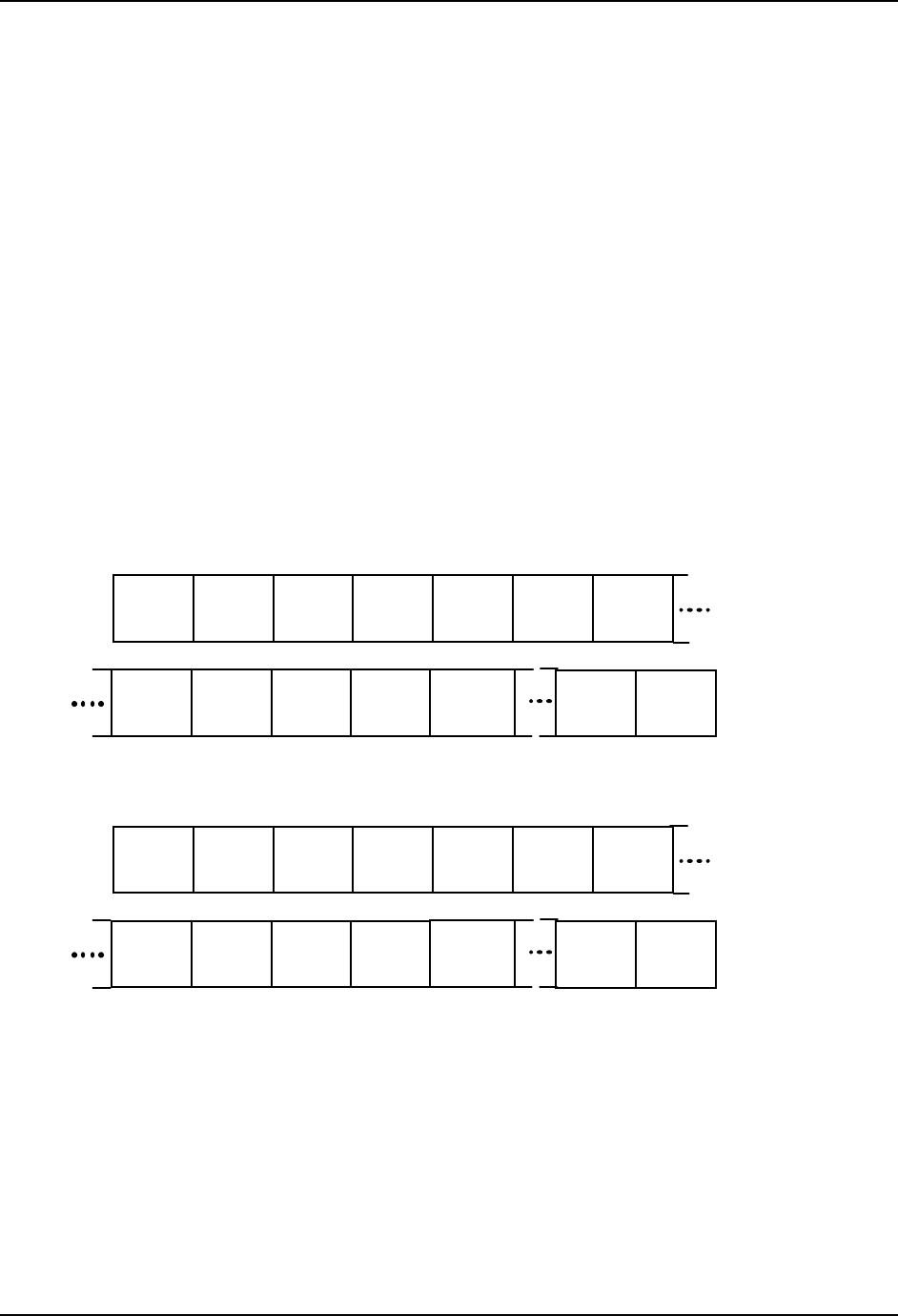
Modbus RTU Function Codes
9.4 Function Code 21 (15h) - Write Configuration Reference Data
Introduction
Function Code 21 (15 Hex) is used in this instrument to allow writes of integer and
floating point values to the configuration database and override values.
The configuration database of this instrument is located in EEROM. The override values
are stored in RAM.
Integer format is used to write to “Digital” configuration items. Floating Point format is
used to write to “Analog” configuration items as defined by the configuration ID tags.
Write Restrictions
Care should be taken not to exceed the 100,000-write limit of the EEROM.
Request and Response Formats
The Request and Response formats for Function code 21 (15 Hex) are shown below.
Details for each block reference follow.
Request Message Format
Slave
Address
Byte
Count
Function
Code 15
Reference
Type
File
Number
Register
Count
Register
Address
CRC
Data
CRC
Data
Data
Data Data Data
File
Number
Response Message Format (echo back of request)
Slave
Address
Byte
Count
Function
Code 15
Reference
Type
File
Number
Register
Count
Register
Address
CRC
Data
CRC
Data
Data
Data Data Data
File
Number
The register address is interpreted by this instrument as the tag ID configuration number.
For Infrared Transactions, add three BOFs (C0hex) at the beginning of each message and
one EOF (Ffhex) at the end of each message.
Reference Type Definitions
The Reference Type definition is always 06.
See examples in Subsection 9.4.1
346 UDC3500 Universal Digital Controller Product Manual March 2012
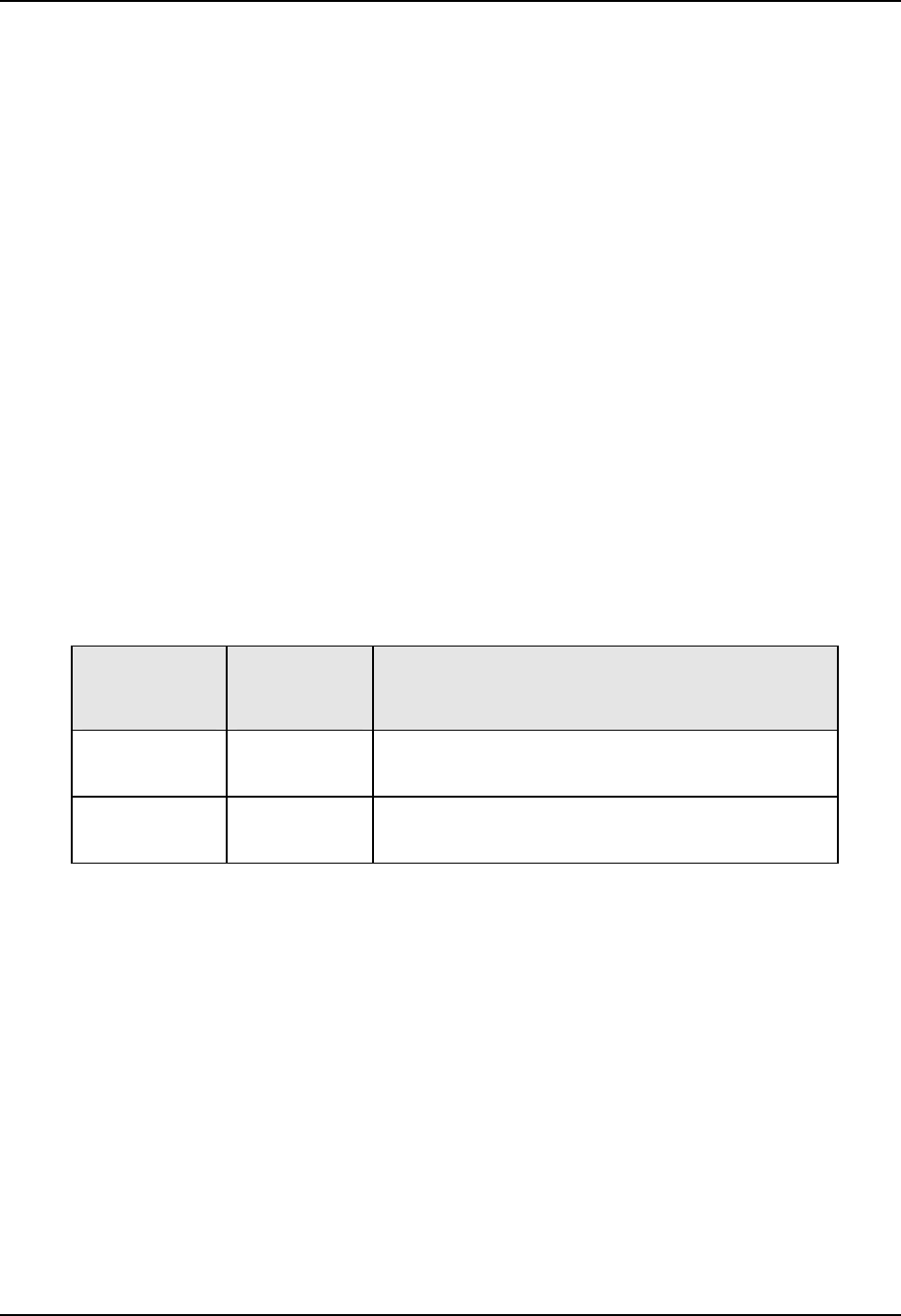
Modbus RTU Function Codes
File Number
The file number word contains the register number from the register address structure
shown in Table 9-1 and Table 9-2. Although the register address structure tables indicate
up to 13 data registers are available for access, only register address 3 is currently
supported.
Register Address
The register address is used to designate the tag ID number for the parameter being
accessed. The register address is made up of two bytes. The LSB contains the RS422 tag
ID number. The tag ID numbers represent the parameter’s register address(es). See
Section 10 for the tag ID numbers. The MSB contains the control loop and database
extension using codes as shown below:
Modbus register address (High register, Low register)
00 h,xx - loop 1 basic data base registers
01 h,xx - loop 2 basic data base registers
40 h,xx - loop 1 extended data base registers
41 h,xx - loop 2 extended data base registers
xx = Modbus Parameter ID register address in hex– Implied Format
Table 9-4 Register Parameter ID Address Format for Function Code 21
Register
Address(es)
(Hex)
Format Register
Address(es)
(Dec)
0001 to 007F analog formatted data
(2 registers – IEEE 32-bit floating point)
001 to 127
128 to 255
0080 to 00FF
integer formatted data
(2 registers – IEEE 32-bit floating point)
Unrestricted Registers
As mentioned previously, all register data is stored in the EEROM of this instrument with
some exceptions. These exceptions were made to allow write access to override
information. The registers, which are designated as Override values, are listed below.
These registers do not have restrictions on the number of writes.
ID Tag Register Number UDC Usage
125 (7Dh) Computer Setpoint
Restrictions on Parameter Numbers in One Message
The maximum number of writeable parameters per write request is 1.
March 2012 UDC3500 Universal Digital Controller Product Manual 347
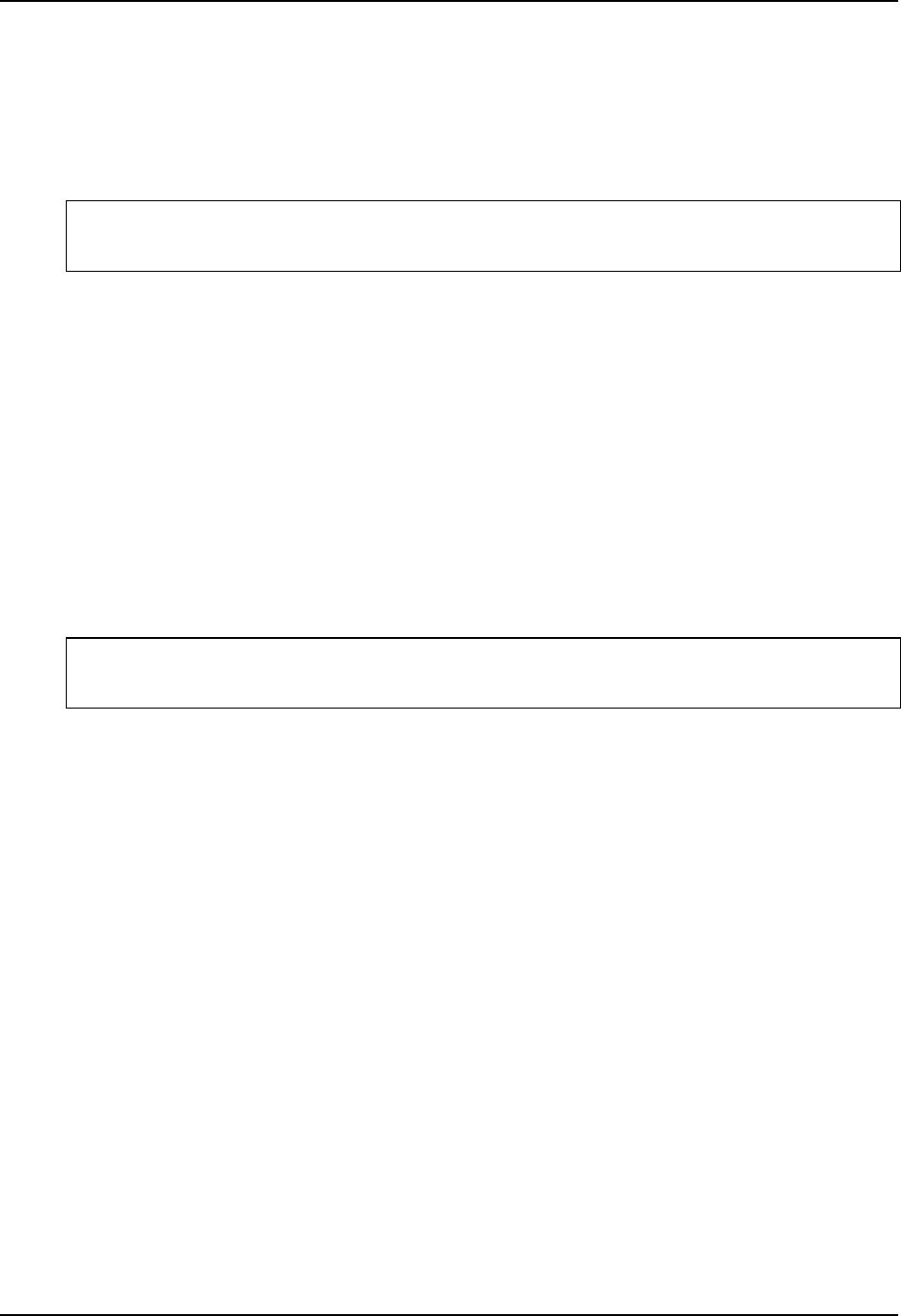
Modbus RTU Function Codes
348 UDC3500 Universal Digital Controller Product Manual March 2012
9.4.1 Write Configuration Examples
Example #1
The following is an example of a request to write the Gain 1 value using Function code
21 (15 Hex).
Request Message (Write Gain 1= 1.5 “ID Tag 1”)
02 15 0B 06 00 03 00 01 00 02 3F C0 00 00 (CRC16)
Where:
02 = Address
15 = Function Code 21 (15 Hex)
0B = Byte Count
06 = Reference Type (IEEE Floating Point)
00 03 = File Number (Access Data Value)
00 01 = Register Address (Standard Access - Gain 1 - ID Tag 1)
00 02 = Register Count (Floating Point Data)
3F C0 00 00 = 1.50
(CRC16)
This is the response to the above request.
Response Message (The response is an echo of the request)
02 15 0B 06 00 01 00 02 00 02 3F C0 00 00 (CRC16)
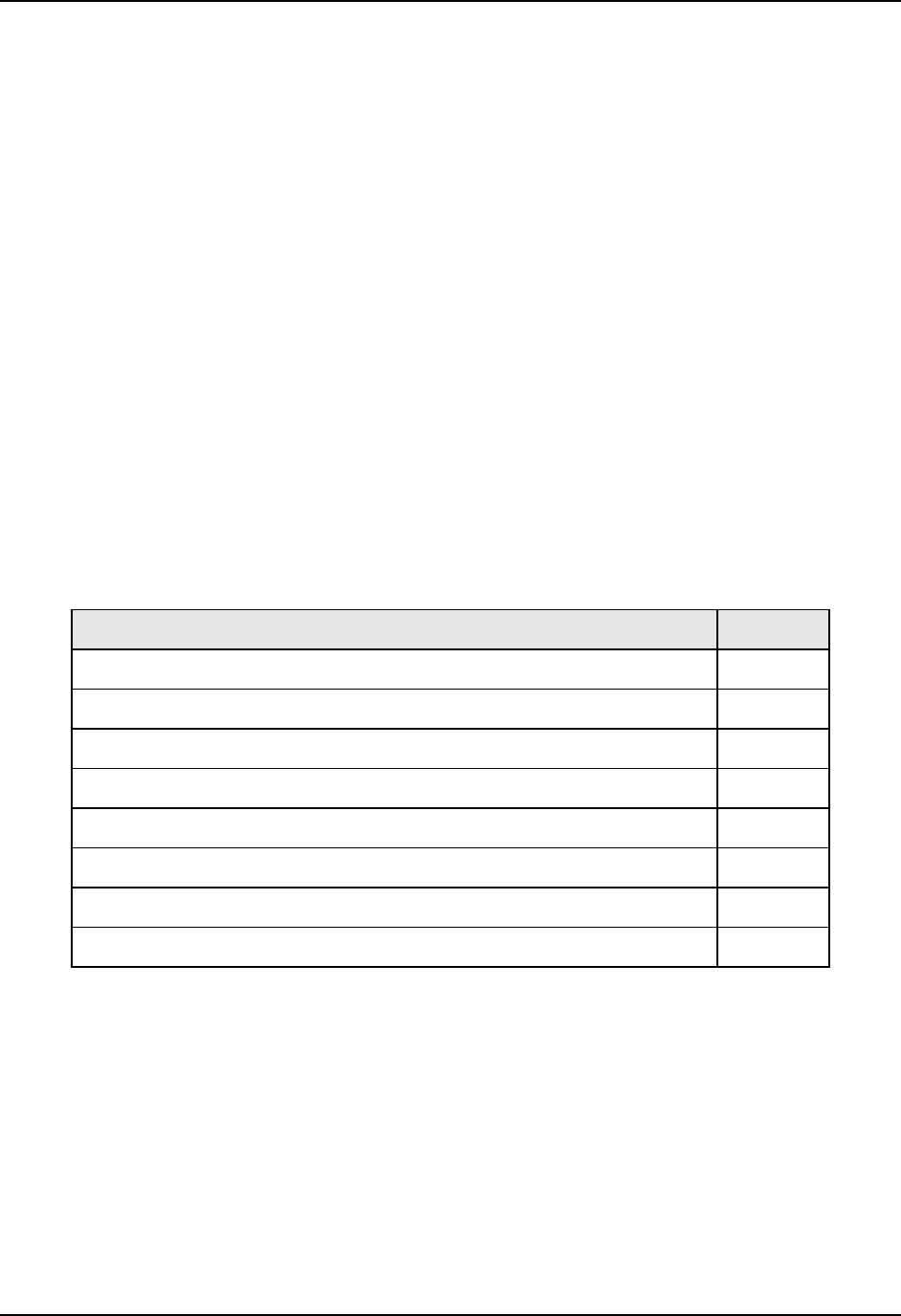
Modbus Read, Write and Override Parameters plus Exception Codes
10 Modbus Read, Write and Override Parameters plus
Exception Codes
10.1 Overview
Introduction
This section contains information concerning Reading, Writing, and Overriding
parameters in this instrument. There are two types of parameters:
•
Data Transfer—These parameters include reading control data, option status, and
reading or changing setpoints.
•
Configuration Data—All the configuration data is listed in the order in which it
appears in the controller.
Each type of parameter has the identifying codes listed with it.
What's in this section?
The following topics are covered in this section.
TOPIC See Page
10.1 Overview 349
10.2 Reading Control Data 352
10.3 Read Options Status 353
10.4 Miscellaneous Read Onlys 354
10.5 Setpoints 355
10.6 Using a Computer Setpoint (Overriding Controller Setpoint) 357
10.7 Configuration Parameters 358
10.8 Modbus RTU Exception Codes 436
General Information
Non-volatile Memory Retention
• This controller uses non-volatile memory to store configuration data. These memories
are guaranteed to retain data for a minimum of ten years as long as the data is not
written and erased more than 10,000 times. In order not to exceed this number, it is
strongly recommended that configurations that change rapidly such as Computer
Setpoint use the Override feature, which does not affect non-volatile memory.
March 2012 UDC3500 Universal Digital Controller Product Manual 349
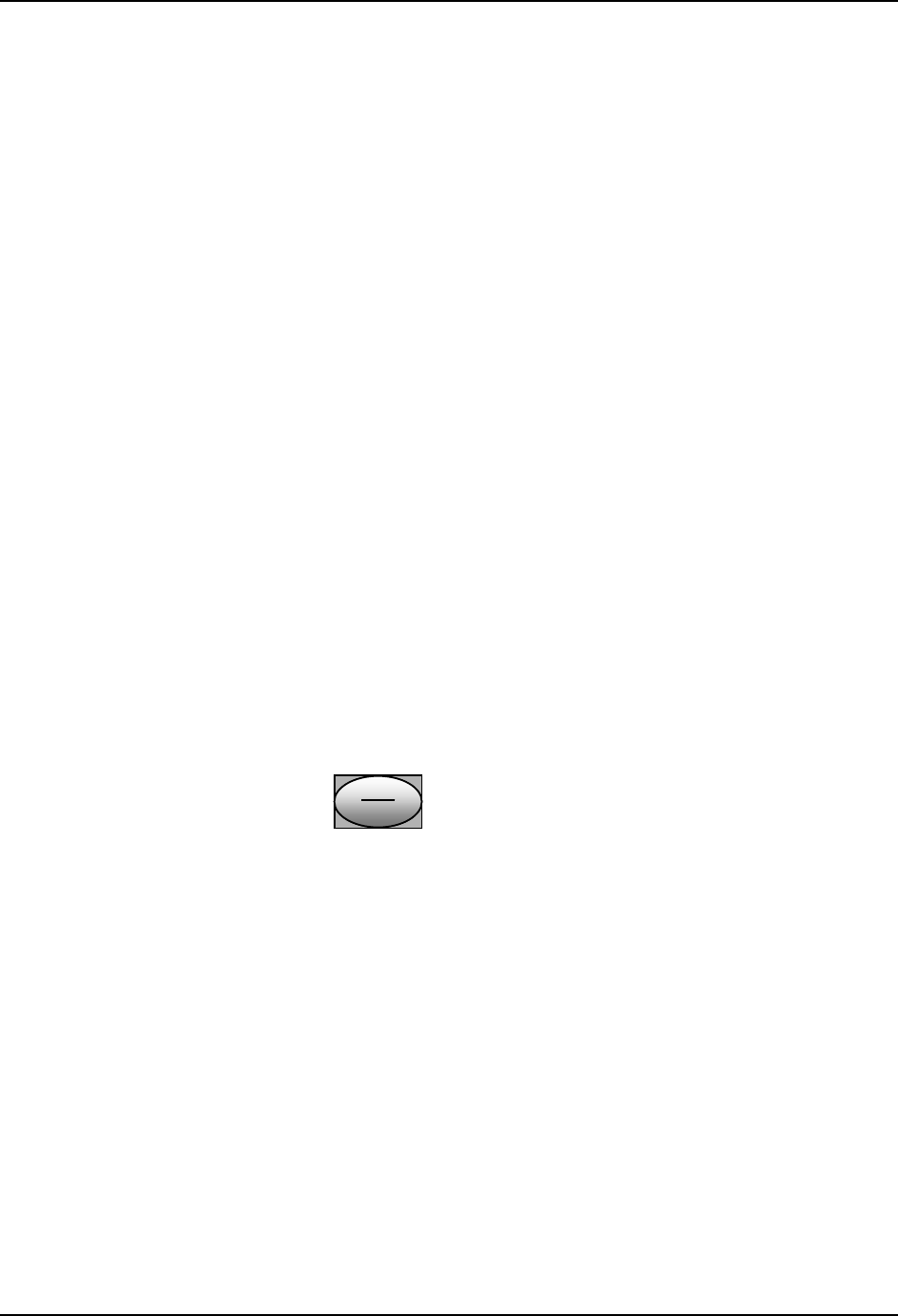
Modbus Read, Write and Override Parameters plus Exception Codes
Analog Parameters
• Whenever analog register addresses xx01 through xx7F (those that can be changed
via communications) are changed, a Write cycle occurs after receipt of the message
and the response is returned.
Override Parameters
• Override analog register address xx7D (computer setpoint) is not stored in non-
volatile memory. It can be changed as frequently as desired with no effect on non-
volatile memory retentivity, but the controller must remain in the slave mode.
Digital Parameters
• Whenever digital configuration register addresses xx80 through xxFF are updated via
communications, the non-volatile memory is updated as soon as the message is
received.
Communications Transfer Rates
• The Host Computer must allow a minimum of 20 milliseconds between Read
transactions and a minimum 200 milliseconds between Write transactions.
Supported Function Codes
• IR port 20 and 21
•
RS485 and Ethernet ports 1,2,3,4,6,8,16,17,20,21
Communications Modes of Operation
• When the Shed Timer is enabled and a write or override occurs the controller will
enter Slave Mode. The keypad is locked from the operator. The purpose of this mode
is that if communications is lost and the shed timer times out then the controller will
enter a known state of operation. The configuration of the “Shed Mode and Output”
and Shed Setpoint Recall are used to configure the controller’s shed state. While in
Slave Mode pushing the
Man
Auto
Man
Auto
Man
Auto
key enters Emergency Manual mode. The local
operator then has control of the output. The controller is in Monitor Mode if the Shed
timer is disabled.
EEROM Access
• All setpoints and configuration values are maintained in EEROM (Electrically
Erasable Read Only Memory). To prevent unintended controller operation, the
setpoint and configuration values stored in EEROM may only be altered by one
source at a time, either via the Keyboard or via one of the Communications Ports (IR,
RS-485 or Ethernet). Keyboard alterations take priority over all other
communications methods. Therefore, whenever an operator initiates any change of
value to a setpoint or to any other analog configuration value via the keyboard, the
controller will then respond with a BUSY exception response to any MODBUS
WRITE communications transaction initiated by the Host Computer until the operator
completes accessing the EEROM. This only affects WRITE commands, READ
commands will still be processed normally.
Also, if the operator changes a setpoint value via the keyboard but does not save this
350 UDC3500 Universal Digital Controller Product Manual March 2012
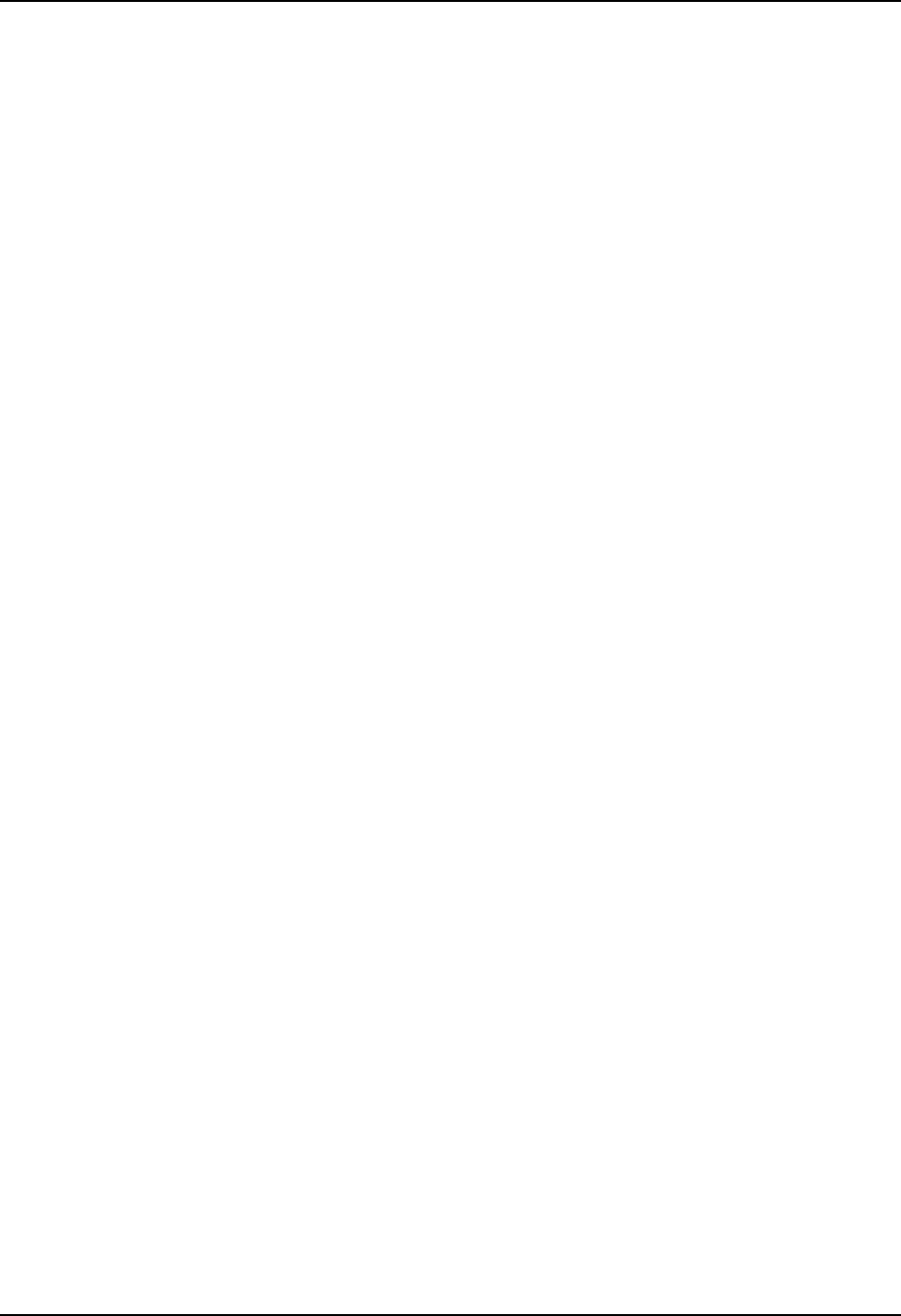
Modbus Read, Write and Override Parameters plus Exception Codes
value into EEROM by pressing some key other than the Increment or Decrement
keys, then there is an additional 15 second timeout delay after which time the
changed value is automatically saved into EEROM. During this 15 second period, the
controller will continue to respond with a BUSY exception message to any
MODBUS WRITE communications transaction, as the controller is waiting for the
operator to finish making changes to the setpoint via the keyboard. To minimize this
busy period, the operator should always end a setpoint change by pressing any key
other than the Increment or Decrement keys. This will reduce the time that the
controller sends back busy exception messages to the host computer. MODBUS
READ communication transactions are not affected, the controller will respond with
a normal message to any READ command during the 15 second period.
March 2012 UDC3500 Universal Digital Controller Product Manual 351
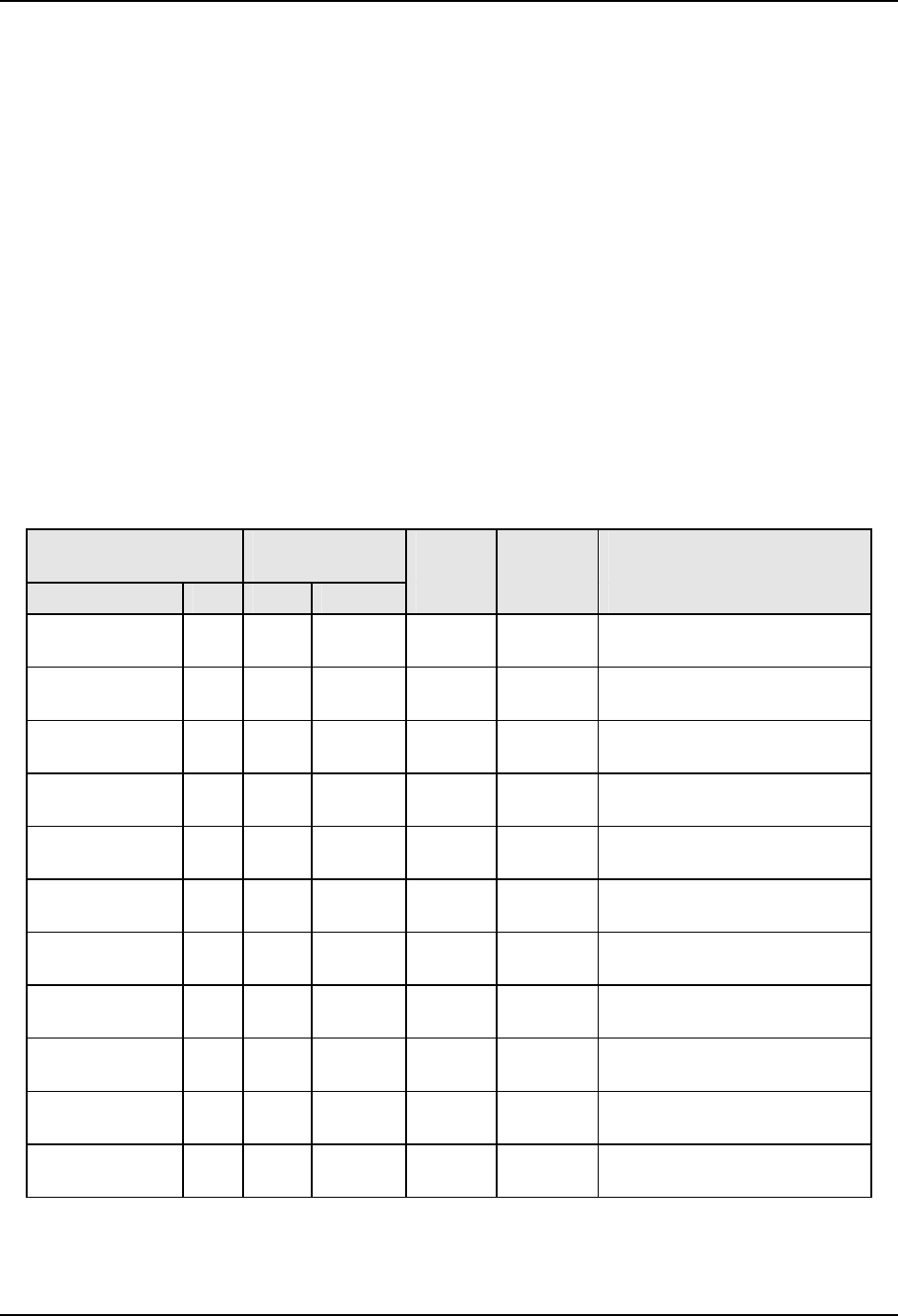
Modbus Read, Write and Override Parameters plus Exception Codes
10.2 Reading Control Data
Overview
The following control data can be read from this instrument:
•
Input 1
•
Input 2
•
Input 3
•
Input 4
•
Input 5
•
PV, SP, Output for each Loop
Register Addresses
Use the identifying codes listed in Table 10-1 to read the specific items.
A Write request for these codes will result in an Error message.
Table 10-1 Control Data Parameters
Register
Address
Data
Type
Access Data Range or
Enumerated Selection
Parameter
ID Hex Decimal Description
Input #1 123 007B 123 FP RD In Engineering Units or
Percentage
Input #2 124 007C 124 FP RD In Engineering Units or
Percentage
Input #3 126 007E 126 FP RD In Engineering Units or
Percentage
Input #4 120 0078 120 FP RD In Engineering Units or
Percentage
Input #5 121 0079 121 FP RD In Engineering Units or
Percentage
PV, SP, Output
Loop 1
122 007A 122 FP RD In Engineering Units
PV, SP, Output
Loop 2
122 017A 378 FP RD In Engineering Units
PV Range Low
Loop1
54 0036 054 FP RD –999.0 to +9999
in Engineering Units
PV Range High
Loop1
55 0037 055 FP RD –999.0 to +9999
in Engineering Units
PV Range Low
Loop2
54 0136 310 FP RD –999.0 to +9999
in Engineering Units
PV Range High
Loop2
55 0137 311 FP RD –999.0 to +9999
in Engineering Units
352 UDC3500 Universal Digital Controller Product Manual March 2012
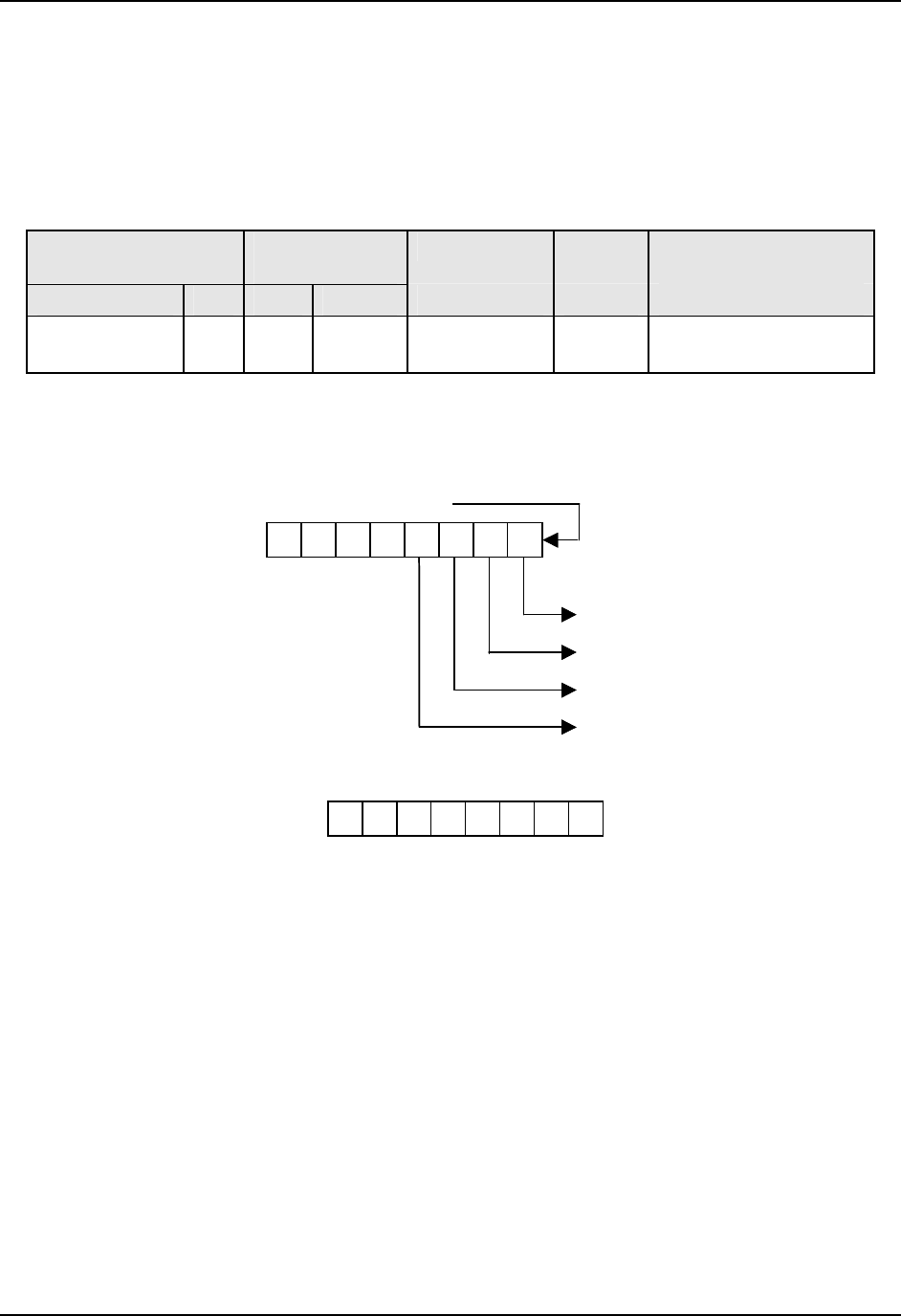
Modbus Read, Write and Override Parameters plus Exception Codes
10.3 Read Software Options Status
Read
Doing a Read of register address 00B9 listed in Table 10-2 will tell you which of the
available options are enabled / installed or disabled / not installed.
Table 10-2 Option Status
Register
Address
Data Type Access Data Range or
Enumerated Selection
Parameter
ID Hex Decimal Description
Option Status
(Read only)
185 00B9 185 INT RD See Figure 10-1.
The data field in the response message will be a decimal number from 0 to 255. Convert
the decimal number to binary as shown in Figure 10-1
.to determine which options are or
are not active.
00001111
0 to 255
Convert decimal to binary
0 = not installed
1 = installed
Loop 2
Setpoint Programming
Math
Health Watch
EXAMPLE: 15
Binary
Loop 2 – installed
SP Programming – installed
Math – installed
Health Watch - Installed
0000111100001111
0 to 255
Convert decimal to binary
0 = not installed
1 = installed
Loop 2
Setpoint Programming
Math
Health Watch
EXAMPLE: 15
Binary
Loop 2 – installed
SP Programming – installed
Math – installed
Health Watch - Installed
Figure 10-1 Software Option Status Information
March 2012 UDC3500 Universal Digital Controller Product Manual 353
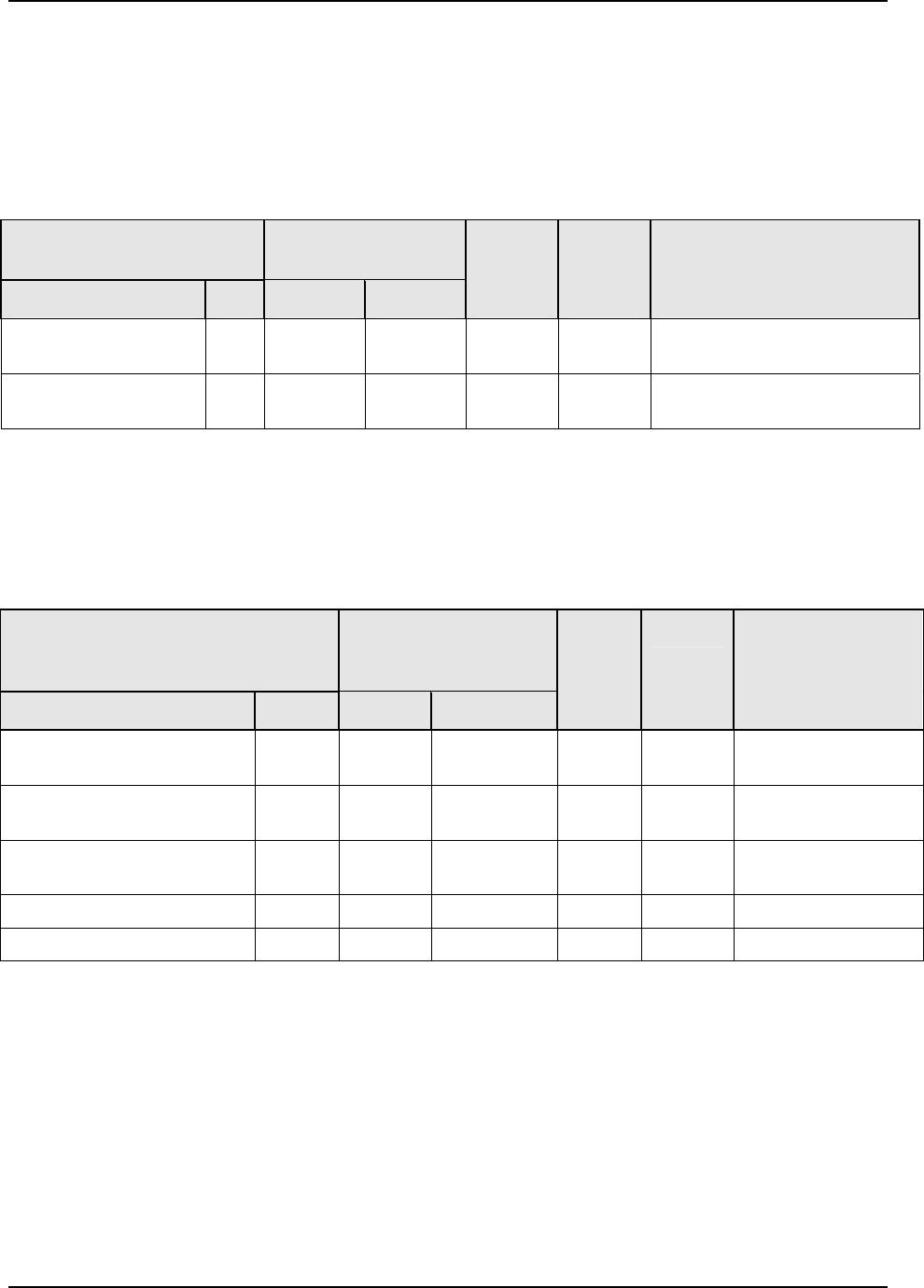
Modbus Read, Write and Override Parameters plus Exception Codes
10.4 Miscellaneous Read Onlys
10.4.1 Register Addresses for Read Onlys
The identifying register addresses listed in Table 10-3 represent some information that is
Read only. No Writes allowed.
Table 10-3 Miscellaneous Read Onlys
Parameter
Register
Address
Data
Type
Access Data Range or
Enumerated Selection
ID Hex Decimal Description
Software Type 157 009D 157 INT RD READ only (UDC3500)
35 = UDC3500
Software Version 167 00A7 167 INT RD READ only
Value less than 255
10.4.2 SetPoint Program Read Only Information
The identifying register addresses listed in Table 10-4 represent some information for
SetPoint Programming that is Read only. No Writes allowed.
Table 10-4 SetPoint Program Read Only Information
Parameter
Register
Address
Data
Type
Access Data Range or
Enumerated
Selection
ID Hex Decimal Description
Present SPP Segment
Number
251 00FB 251 INT RD 1 – 20
Segment Time Remaining
in Minutes
252 00FC 252 INT RD 0 – 59 Minutes
Segment Time Remaining
in Hours
253 00FD 253 INT RD 0 – 99 Hours
Cycles Remaining 254 00FE 254 INT RD 0 – 100
Current Cycle Number 255 00FF 255 INT RD 0 – 100
354 UDC3500 Universal Digital Controller Product Manual March 2012
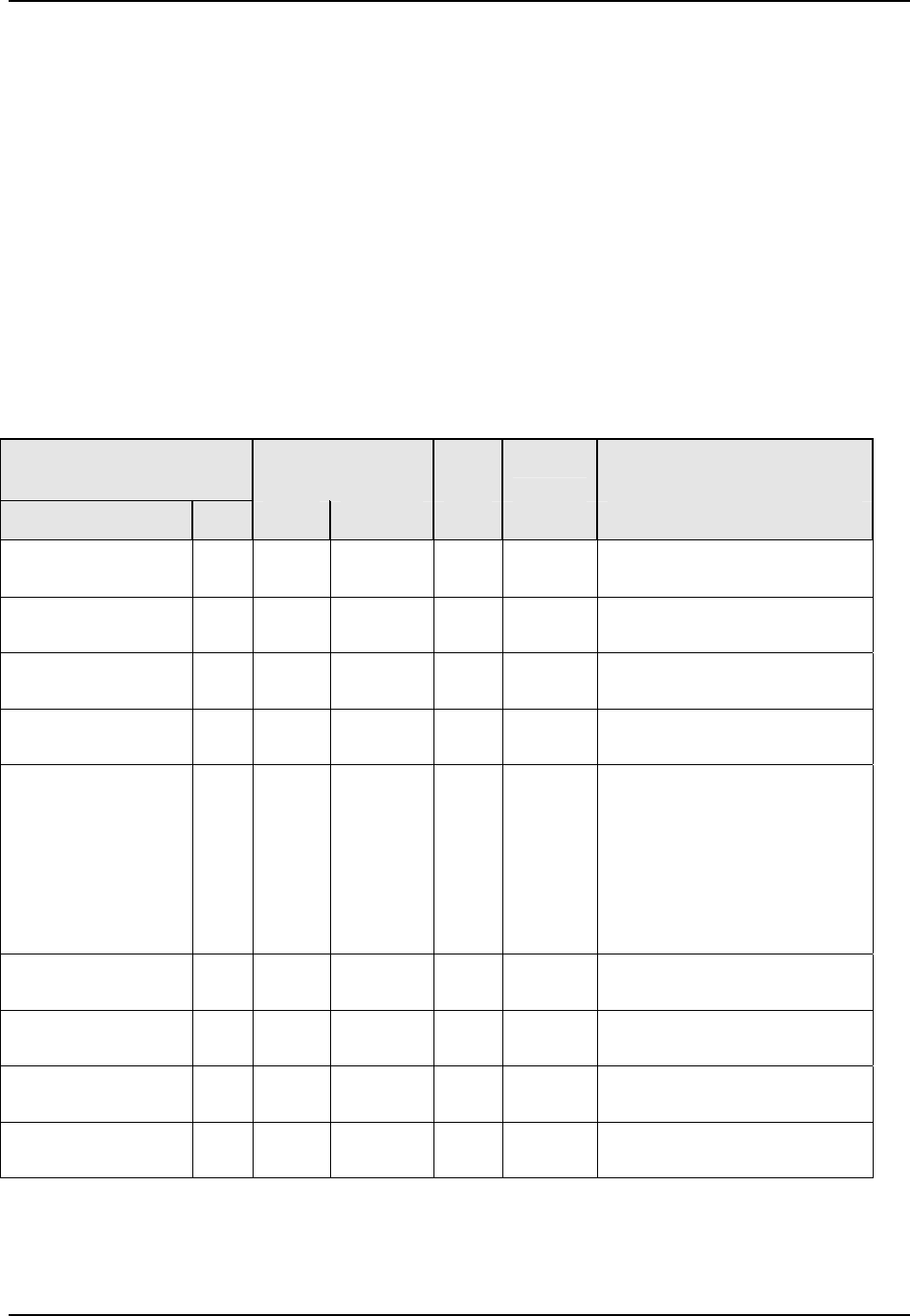
Modbus Read, Write and Override Parameters plus Exception Codes
10.5 Setpoints
Overview
You can use four separate local setpoints in the controller. The identifying register
addresses listed in Table 10-5 allow you to select which setpoint you want to use and to
enter a value in Engineering Units or Percent (whichever is selected at register address
00A1) for that setpoint via com
m
unications.
Register Addresses
Make your selection using register address 00AD and enter the value for the setpoint
chosen using register address in Table 10-5.
Table 10-5 Setpoint Code Selections
Register
Address
Data
Type
Access Data Range or
Enumerated Selection
Parameter
ID Hex Decimal Description
Local Setpoint #1
Loop1
39 0027 039 FP R/W Value within the setpoint
range limits
Local Setpoint #2
Loop1
53 0035 053 FP R/W Value within the setpoint
range limits
Local Setpoint #3
Loop1
116 0074 116 FP R/W Value within the setpoint
range limits
Local Setpoint #4
Loop1
112 0070 112 FP R/W Value within the setpoint
range limits
Number of Local
Setpoints Loop 1
173 00AD 173 INT R/W 00 = Local Setpoint #1 only
01 = 2nd Local Setpoint via
keyboard or communications
03 = 3rd Local Setpoint via
keyboard or communications
04 = four Local Setpoint via
keyboard or communications
Local Setpoint #1
Loop2
39 0127 295 FP R/W Value within the setpoint
range limits
Local Setpoint #2
Loop2
53 0135 309 FP R/W Value within the setpoint
range limits
Local Setpoint #3
Loop2
116 0174 372 FP R/W Value within the setpoint
range limits
Local Setpoint #4
Loop2
112 0170 368 FP R/W Value within the setpoint
range limits
March 2012 UDC3500 Universal Digital Controller Product Manual 355
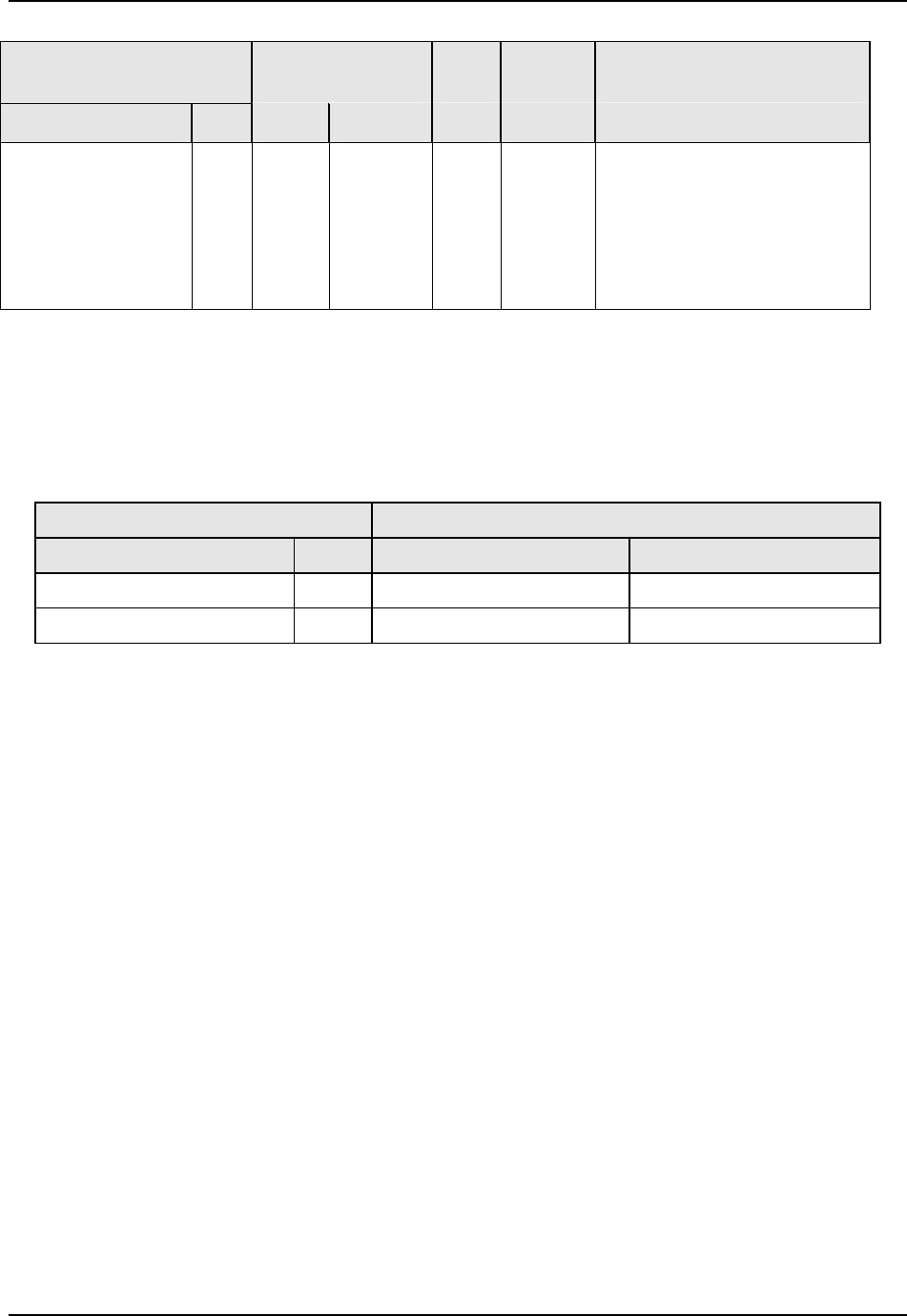
Modbus Read, Write and Override Parameters plus Exception Codes
356 UDC3500 Universal Digital Controller Product Manual March 2012
Parameter
Register
Address
Data
Type
Access Data Range or
Enumerated Selection
Description ID Hex Decimal
Number of Local
Setpoints Loop 2
173 01AD 429 INT R/W 00 = Local Setpoint #1 only
01 = 2nd Local Setpoint via
keyboard or communications
03 = 3rd Local Setpoint via
keyboard or communications
04 = four Local Setpoint via
keyboard or communications
Associated Parameters
Refer to Table 10-6 to display or change any of the parameters associated with the
setpoint.
Table 10-6 Setpoint Associated Parameters
Parameter Register Address
Description ID Hex Decimal
Setpoint Limits Loop1 7,8 0007, 0008 007, 008
Setpoint Limits Loop 2 7,8 0107, 0108 263, 264
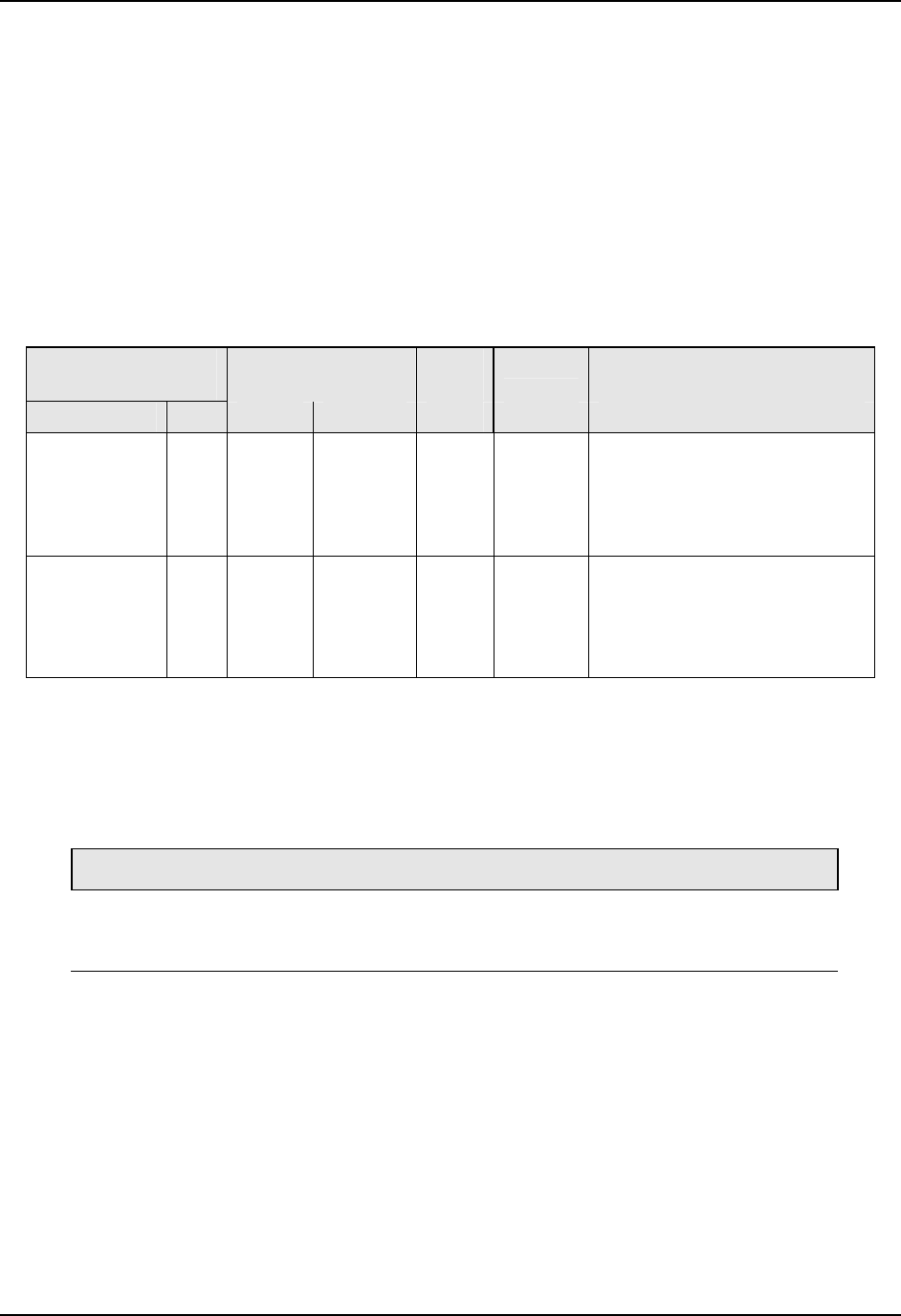
Modbus Read, Write and Override Parameters plus Exception Codes
10.6 Using a Computer Setpoint (Overriding Controller Setpoint)
Overview
You can use a setpoint generated from the computer to override the setpoint being used
by the controller. The value generated by the computer will have ratio and bias applied
by the controller.
Register Addresses
Use the identifying code in Table 10-7 to enter the computer setpoint.
Table 10-7 Computer Setpoint Selection
Register
Address
Data
Type
Access Data Range or
Enumerated Selection
Parameter
ID Hex Decimal Description
Computer
Setpoint
Loop1
125 007D 125 FP R/W Value from computer with
Ratio and Bias applied by the
controller. Within the PV
Range Limits in Engineering
Units or Percent.
Computer
Setpoint
Loop2
125 017D 381 FP R/W Value from computer with
Ratio and Bias applied by the
controller. Within the PV
Range Limits in Engineering
Units or Percent.
Shed
The computer setpoint override will continue until SHED from communications occurs
or the controller is placed into monitor mode through communications. Doing periodic
SLAVE READS within the shed time will allow the override to continue until
communication is stopped and shed time elapses. Does not apply to IR communications.
ATTENTION
0 Shed (code 79) allows the override to continue indefinitely or until the reset shed timer
register address 1B90 and 1B91 is written using function code 6 or parameter ID 127
using function code 21. Any data value can be written because it is ignored.
When SP is overridden, the upper display becomes “C” momentarily, and the lower
display shows the CSP value as CSP XXXX.
March 2012 UDC3500 Universal Digital Controller Product Manual 357
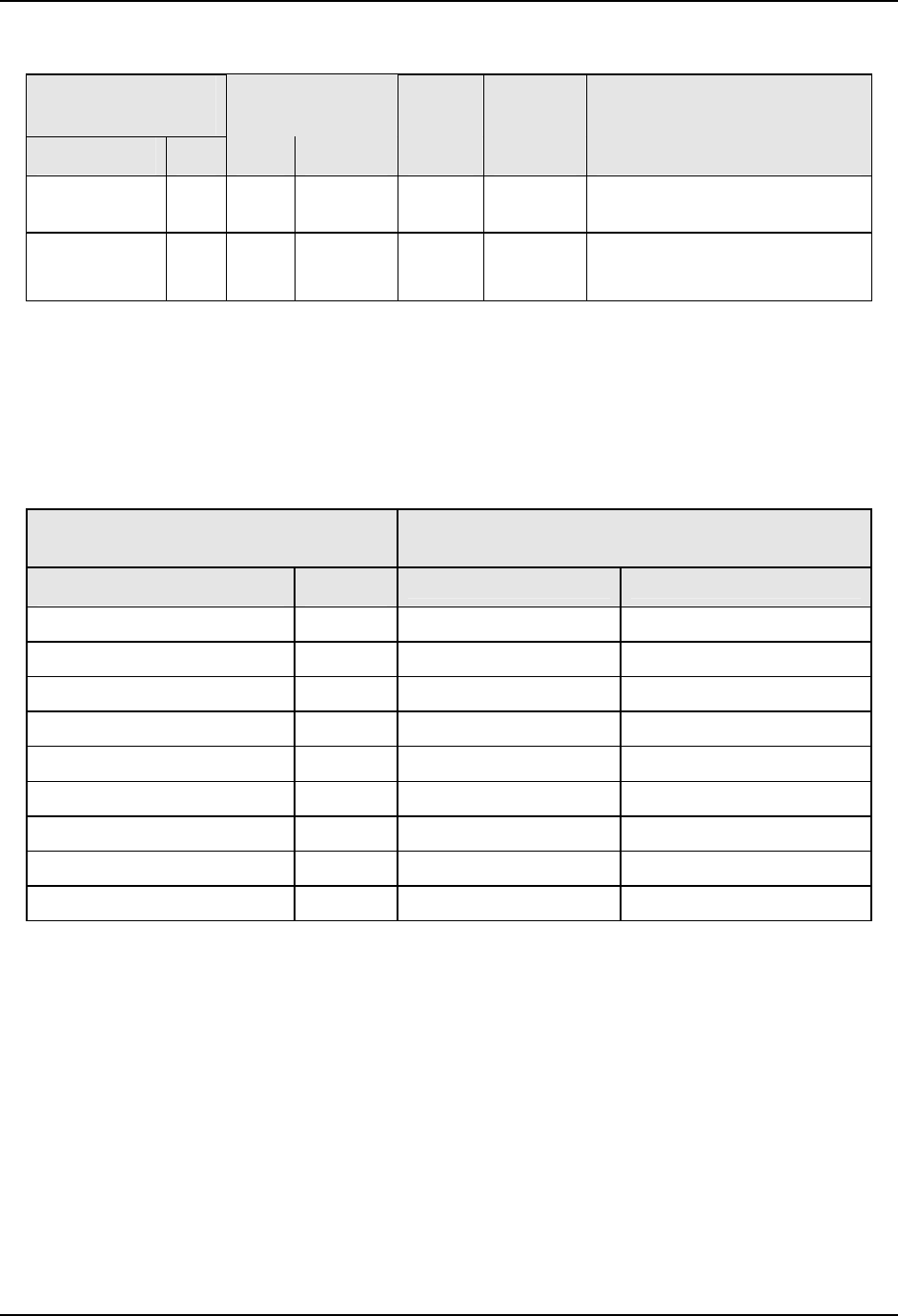
Modbus Read, Write and Override Parameters plus Exception Codes
Table 10-7.1 Shed Timer Reset
Register
Address
Data
Type
Access Data Range or
Enumerated Selection
Parameter
ID Hex Decimal Description
Shed Timer
Reset Loop1
127 007F 127 FP W Exit Slave Mode
Shed Timer
Reset Loop2
127 017F 383 FP W Exit Slave Mode
Associated Parameters
Refer to Table 10-8 for the codes to display or change any of the parameters associated
with the computer setpoint on loop 1.
Table 10-8 Computer Setpoint Associated Parameters for Loop 1
Parameter Register Address
ID
Hex Decimal
Description
Setpoint Limits 7,8 0007, 0008 007, 008
Local Setpoint #1 39 0027 039
Local Setpoint #2 53 0035 053
Local Setpoint #3 116 0074 116
Local Setpoint #4 112 0070 112
Local Setpoint Selection 173 00AD 173
Computer Setpoint Ratio 90 005A 90
Computer Setpoint Bias 91 005B 91
Shed Timer Reset 127 007F 127
358 UDC3500 Universal Digital Controller Product Manual March 2012
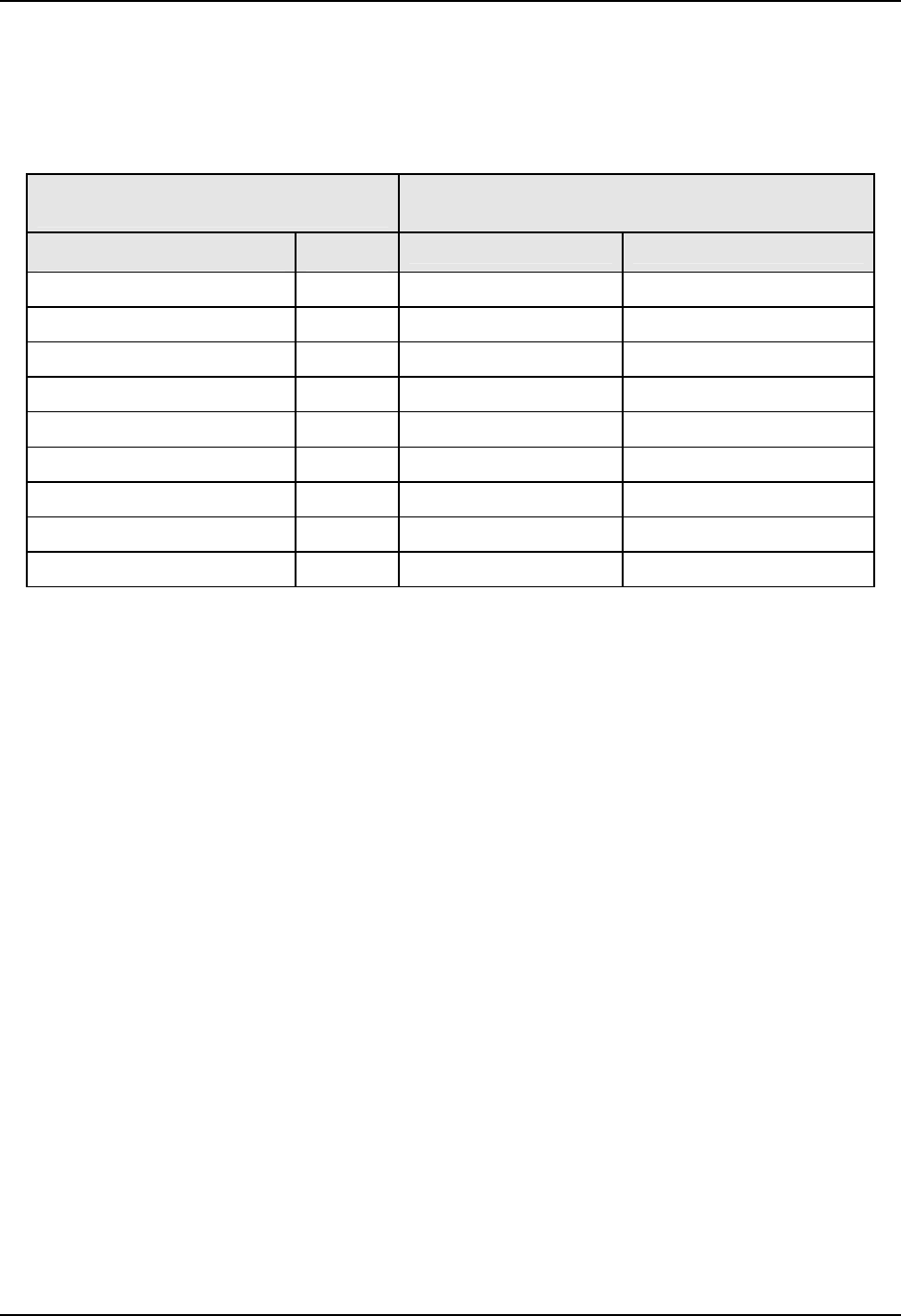
Modbus Read, Write and Override Parameters plus Exception Codes
Refer to Table 10-9 for the codes to display or change any of the parameters associated
with the computer setpoint on Loop 2.
Table 10-9 Computer Setpoint Associated Parameters for Loop2
Parameter
Register Address
ID
Hex Decimal
Description
Setpoint Limits 7,8 0107, 0108 263, 264
Local Setpoint #1 39 0127 295
Local Setpoint #2 53 0135 309
Local Setpoint #3 116 0174 372
Local Setpoint #4 112 0170 368
Local Setpoint Selection 173 01AD 429
Computer Setpoint Ratio 90 015A 346
Computer Setpoint Bias 91 015B 347
Shed Timer Reset 127 017F 383
March 2012 UDC3500 Universal Digital Controller Product Manual 359
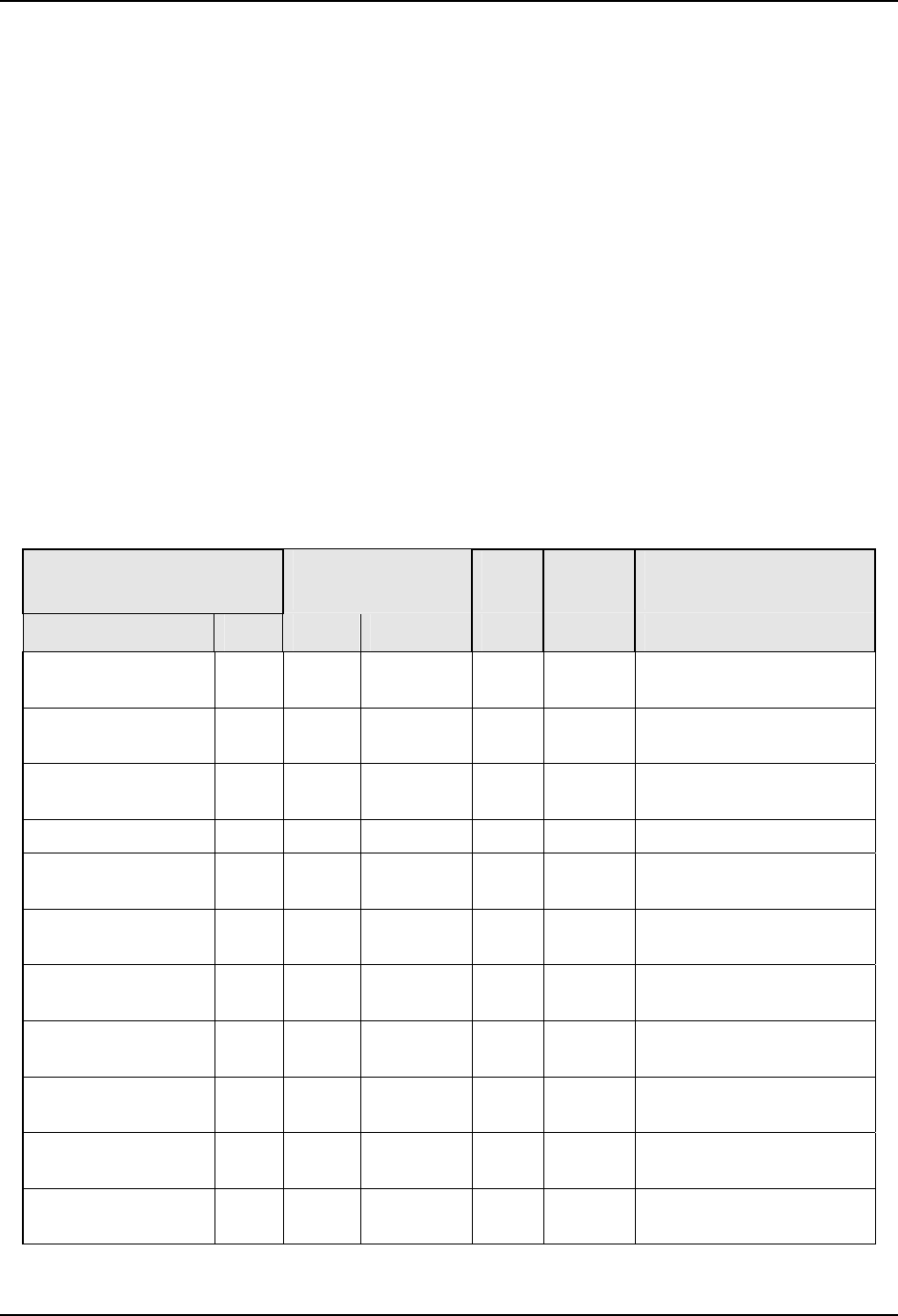
Modbus Read, Write and Override Parameters plus Exception Codes
10.7 Configuration Parameters
Overview
Listed on the next pages are the identifying codes for the parameters in the various Set-up
Groups in this instrument. Most of the parameters are configurable through the hosts.
Some are Read Only and are indicated as such and cannot be changed.
Reading or Writing
Do a Read or Write, depending on your requirements, using the identifying code and
format code listed in the tables. The range or selection available for each range is listed in
the tables.
10.7.1 Tuning Loop 1
Table 10-10 lists all the register addresses and ranges or selections for the function
parameters in the Set-up Group – Tuning Loop 1.
Table 10-10 Set-up Group – Tuning Loop 1
Parameter
Register
Address
Data
Type
Access Data Range or
Enumerated Selection
ID Hex Decimal Description
Gain #1 or PB
Note 1
1 0001 001 FP R/W 0.001 to 1000 Gain
0.1 to 9999 PB
Rate #1
Note 1
2 0002 002 FP R/W 0.00 to 10.00
Reset #1
Note 1
3 0003 003 FP R/W 0.02 to 50.00
Manual Reset 13 000D 013 FP R/W –100 to +100
Gain #2 or PB #2
Note 1
4 0004 004 FP R/W 0.001 to 1000 Gain
0.1 to 9999 PB
Rate #2
Note 1
5 0005 005 FP R/W 0.00 to 10.00
Reset #2
Note 1
6 0006 006 FP R/W 0.02 to 50.00
Gain #3 or PB #3
Note 1
1 4001 16385 FP R/W 0.001 to 1000 Gain
0.1 to 9999 PB
Rate #3
Note 1
2 4002 16386 FP R/W 0.00 to 10.00
Reset #3
Note 1
3 4003 16387 FP R/W 0.02 to 50.00
Gain #4 or PB #4
Note 1
4 4004 16388 FP R/W 0.001 to 1000 Gain
0.1 to 9999 PB
360 UDC3500 Universal Digital Controller Product Manual March 2012
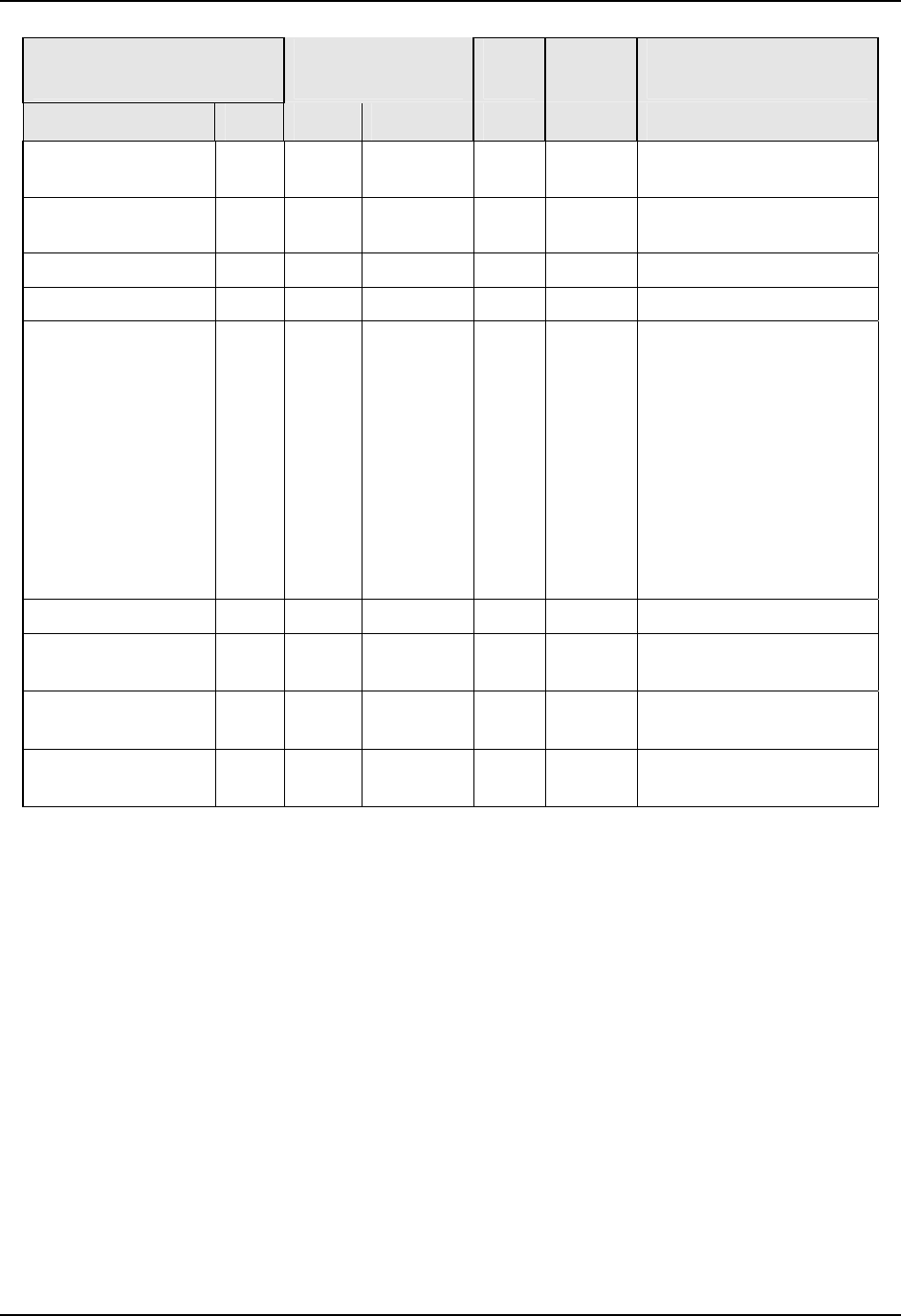
Modbus Read, Write and Override Parameters plus Exception Codes
March 2012 UDC3500 Universal Digital Controller Product Manual 361
Parameter
Register
Address
Data
Type
Access Data Range or
Enumerated Selection
Description ID Hex Decimal
Rate #4
Note 1
5 4005 16389 FP R/W 0.00 to 10.00
Reset #4
Note 1
6 4006 16390 FP R/W 0.02 to 50.00
Cycle Time #1 21 0015 21 INT R/W 1 to 120 seconds
Cycle Time #2 22 0016 22 INT R/W 1 to 120 seconds
Lockout
(keyboard only)
Changes to data
are always possible
via communications
regardless of this
configuration.
132 0084 132 INT R/W 0 = No Lockout
1 = Calibration Locked out
2 = +Configuration –
Timer, Tuning, SP Ramp,
Accutune are read/write
3 = +View – Tuning and
SP Ramp are read/write,
no other parameters are
available
4 = Maximum Lockout
Security Code 80 0050 080 INT R/W 0 to 9999
Man/Auto Key
Lockout
191 00BF 191 INT R/W 0 = Disabled
1 = Enabled
Run/Hold Key
Lockout
238 00EE 238 INT R/W 0 = Disabled
1 = Enabled
Setpoint Key
Lockout
237 00ED 237 INT R/W 0 = Disabled
1 = Enabled
NOTE 1: Writes to these locations are not available when Accutune is enabled.
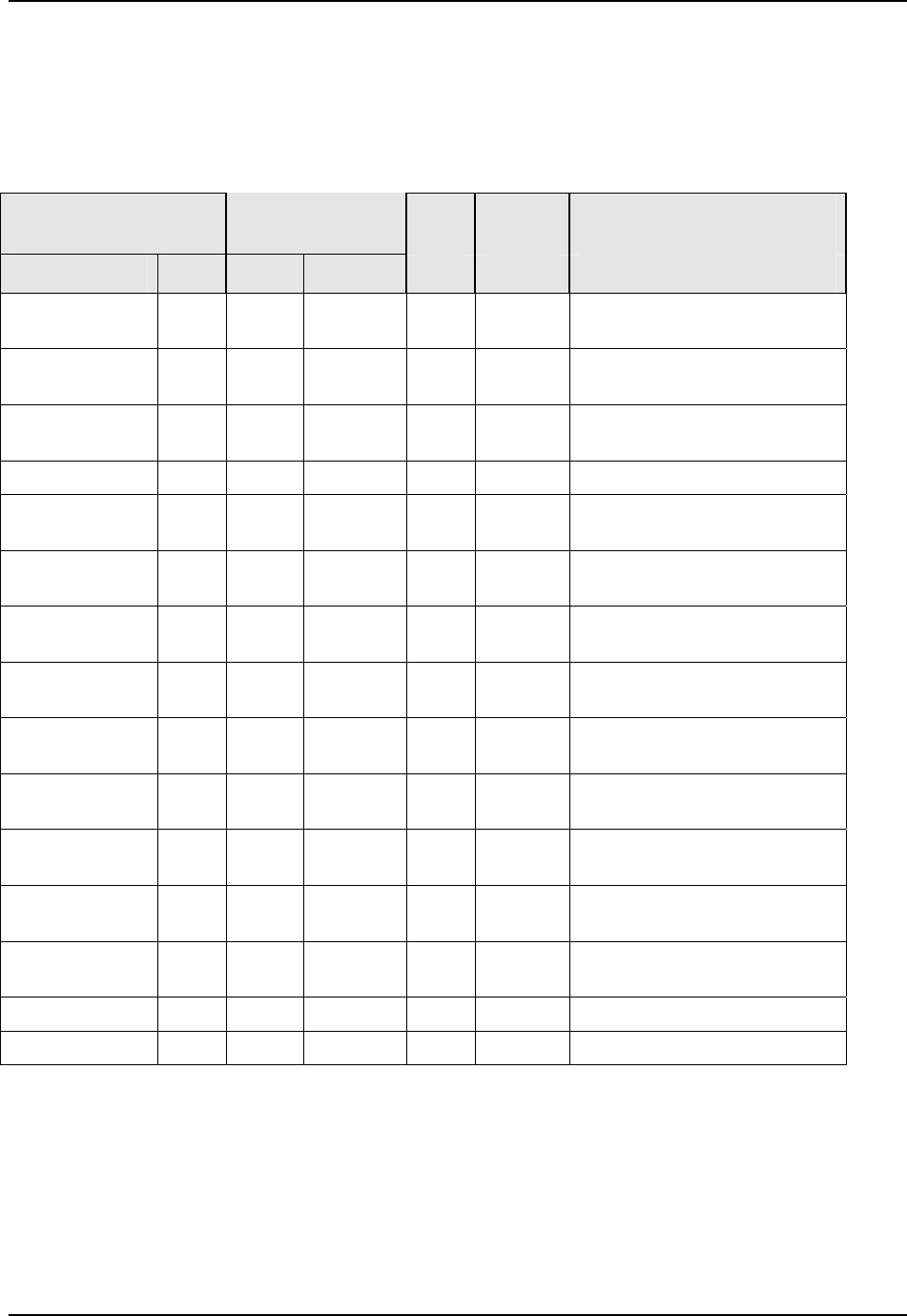
Modbus Read, Write and Override Parameters plus Exception Codes
10.7.2 Tuning Loop2
Table 10-11 lists all the register addresses and ranges or selections for the function
parameters in the Set-up Group – Tuning Loop 2.
Table 10-11 Set-up Group – Tuning Loop 2
Register
Address
Data
Type
Access Data Range or
Enumerated Selection
Parameter
ID Hex Decimal Description
Gain #5 or PB
Note 1
1 0101 257 FP R/W 0.001 to 1000 Gain
0.1 to 9999 PB
Rate #5
Note 1
2 0102 258 FP R/W 0.00 to 10.00
Reset #5
Note 1
3 0103 259 FP R/W 0.02 to 50.00
Manual Reset 13 010D 269 FP R/W -100 to 100
Gain #6 or PB
Note 1
4 0104 260 FP R/W 0.001 to 1000 Gain
0.1 to 9999 PB
Rate #6
Note 1
5 0105 261 FP R/W 0.00 to 10.00
Reset #6
Note 1
6 0106 262 FP R/W 0.02 to 50.00
Gain #7 or PB
Note 1
23 0117 279 FP R/W 0.001 to 1000 Gain
0.1 to 9999 PB
Rate #7
Note 1
24 0118 280 FP R/W 0.00 to 10.00
Reset #7
Note 1
25 0119 281 FP R/W 0.02 to 50.00
Gain #8 or PB
Note 1
26 011A 282 FP R/W 0.001 to 1000 Gain
0.1 to 9999 PB
Rate #8
Note 1
27 011B 283 FP R/W 0.00 to 10.00
Reset #8
Note 1
28 011C 284 FP R/W 0.02 to 50.00
Cycle Time #5 21 0115 277 FP R/W 1 to 120 seconds
Cycle Time #6 22 0116 278 FP R/W 1 to 120 seconds
362 UDC3500 Universal Digital Controller Product Manual March 2012
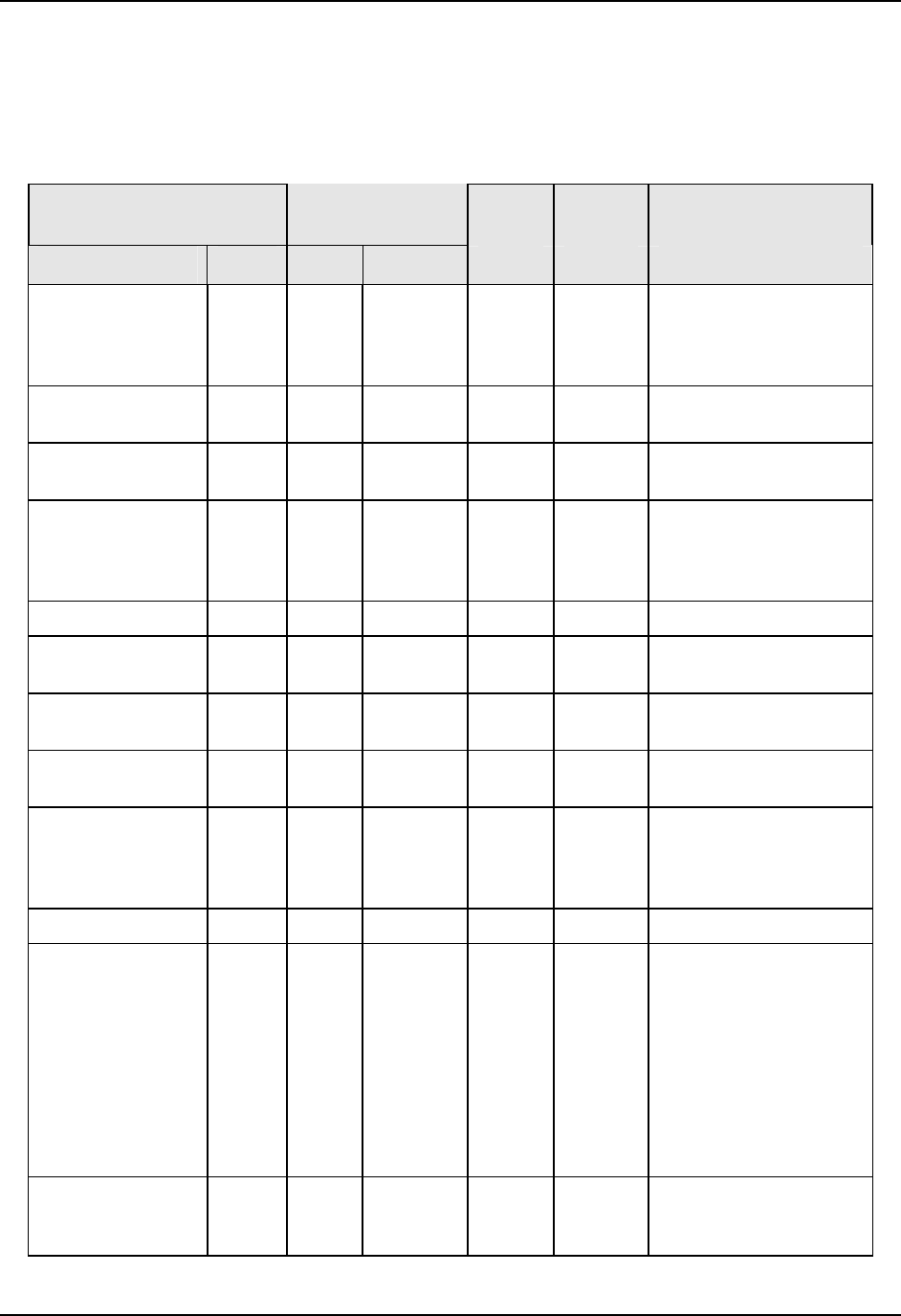
Modbus Read, Write and Override Parameters plus Exception Codes
10.7.3 SP Ramp/Rate/Program #1
Table 10-12 lists all the register addresses and ranges or selections for the function
parameters in Set-up Group Setpoint Ramp/Rate.
Table 10-12 Set-up Group – Setpoint Ramp/Rate/Program #1
Parameter
Register
Address
Data
Type
Access Data Range or
Enumerated Selection
ID Hex Decimal Description
SP Ramp 150 0196 406 INT R/W 0 = Disabled
1 = Enable 1
2 = Enable 2
3 = Enable 12
Single SP Ramp
Time
25 0019 25 FP R/W 0 to 255 (minutes)
Final Ramp SP
Value
26 001A 026 FP R/W PV Range in
Engineering Units
SP Rate 174 01AE 430 INT R/W 0 = Disabled
1 = Enable 1
2 = Enable 2
3 = Enable 12
Rate Up (EU/HR) 108 006C 108 FP R/W 0 to 9999
Rate Down
(EU/HR)
109 006D 109 FP R/W 0 to 9999
Rate Up (EU/HR)
Loop2
108 016C 364 FP R/W 0 to 9999
Rate Down
(EU/HR) Loop2
109 016D 365 FP R/W 0 to 9999
Setpoint Program
#1
178 01B2 434 INT R/W 0 = Disabled
1 = Enable 1
2 = Enable 2
3 = Enable 12
Start Segment # 88 0058 88 FP R/W 1 to 20
End Segment
#(Soak)
176
00B0 176 INT R/W 0 = Soak 2
1 = Soak 4
2 = Soak 6
3 = Soak 8
4 = Soak 10
5 = Soak 12
6 = Soak 14
7 = Soak 16
8 = Soak 18
9 = Soak 20
Engineering Units
or Ramp
Segments
182 00B6 182 INT R/W 0 = HRS:MIN
1 = EU/Minute
2 = EU/Hour
March 2012 UDC3500 Universal Digital Controller Product Manual 363
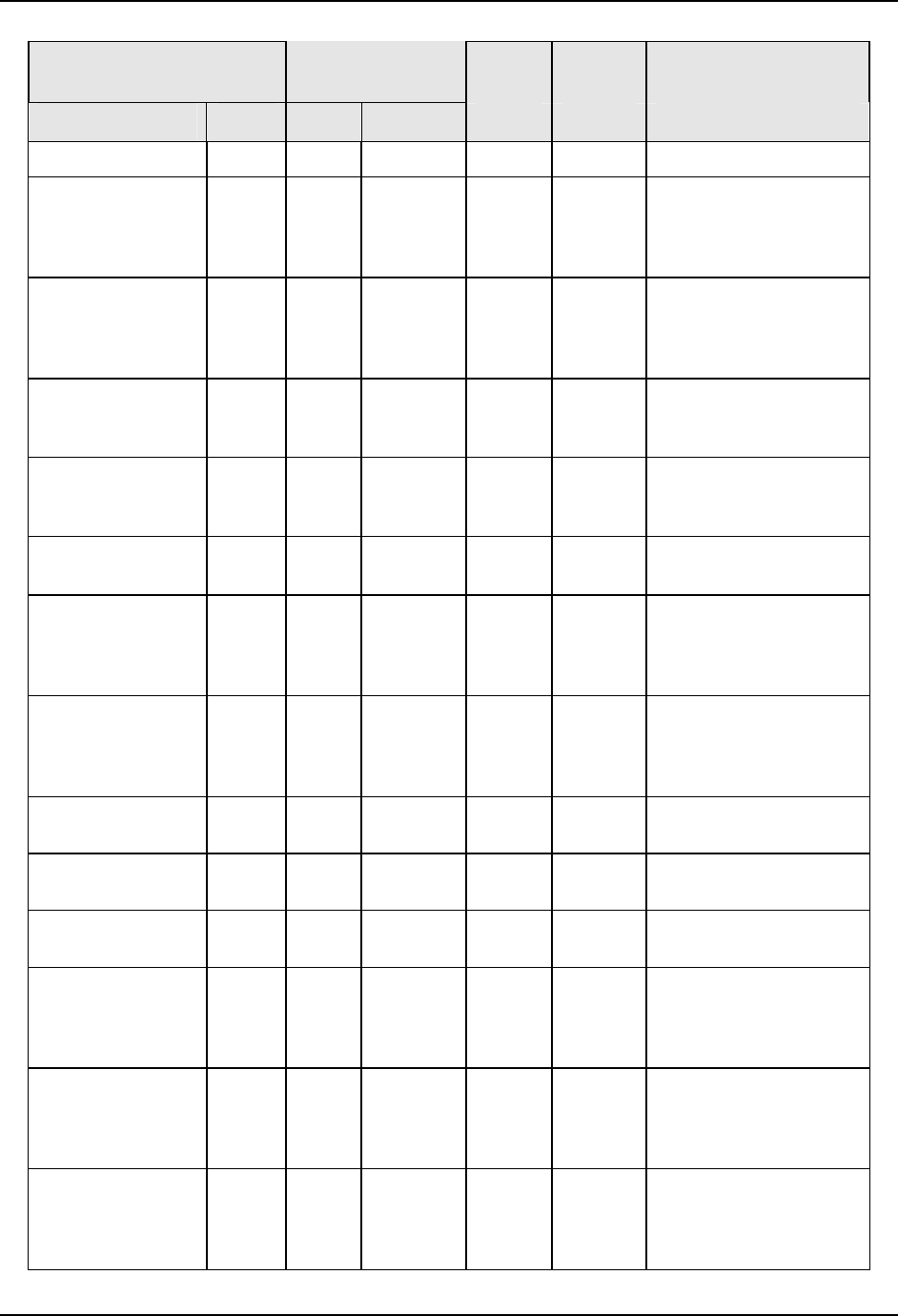
Modbus Read, Write and Override Parameters plus Exception Codes
364 UDC3500 Universal Digital Controller Product Manual March 2012
Parameter
Register
Address
Data
Type
Access Data Range or
Enumerated Selection
Description ID Hex Decimal
Program Recycles 89 0059 89 FP R/W 0 to 100
Controller Status
at Program End
180 00B4 180 INT R/W 0 = Last Setpoint and
Mode
1 = Manual, Failsafe
Output
Program End
State
181 00B5 181 INT R/W 0 = Disable SP
Program
1 = Hold at Program
End
Power UP 211 40D3 16595 INT R/W 0 = Abort
1 = Resume
2 = Restart
Reset SP
Program
(ToBEGIN)
179 00B3 179 INT R/W 0 = Disable
1 = Via Keypad
2 = Rerun
PV Hotstart 226 00E2 226 INT R/W 0 = Disabled
1 = Enabled
Segment #1
Ramp Time
57 0039 057 FP R/W 99.59 (0-99
Hrs:0-59 Min) or
0 to 999
(Degrees/Minute)
Segment #1
PID SET
191 40BF 16575 INT R/W 0 = SET1
1 = SET2
2 = SET3
3 = SET4
Segment #2 Soak
Setpoint Value
58 003A 058 FP R/W Within Setpoint Limits
Segment #2 Soak
Time
59 003B 059 FP R/W 99.59 (0-99
Hrs:0-59 Min)
Guaranteed
Soak ##2
87 4057 16471 FP R/W 0 to 99.9 (0 = no soak)
Segment #2
PID SET
192 40C0 16576 INT R/W 0 = SET1
1 = SET2
2 = SET3
3 = SET4
Segment #3
Ramp Time
60 003C 060 FP R/W 99.59 (0-99
Hrs:0-59 Min) or
0 to 999
(Degrees/Minute)
Segment #3
PID SET
193 40C1 16577 INT R/W 0 = SET1
1 = SET2
2 = SET3
3 = SET4
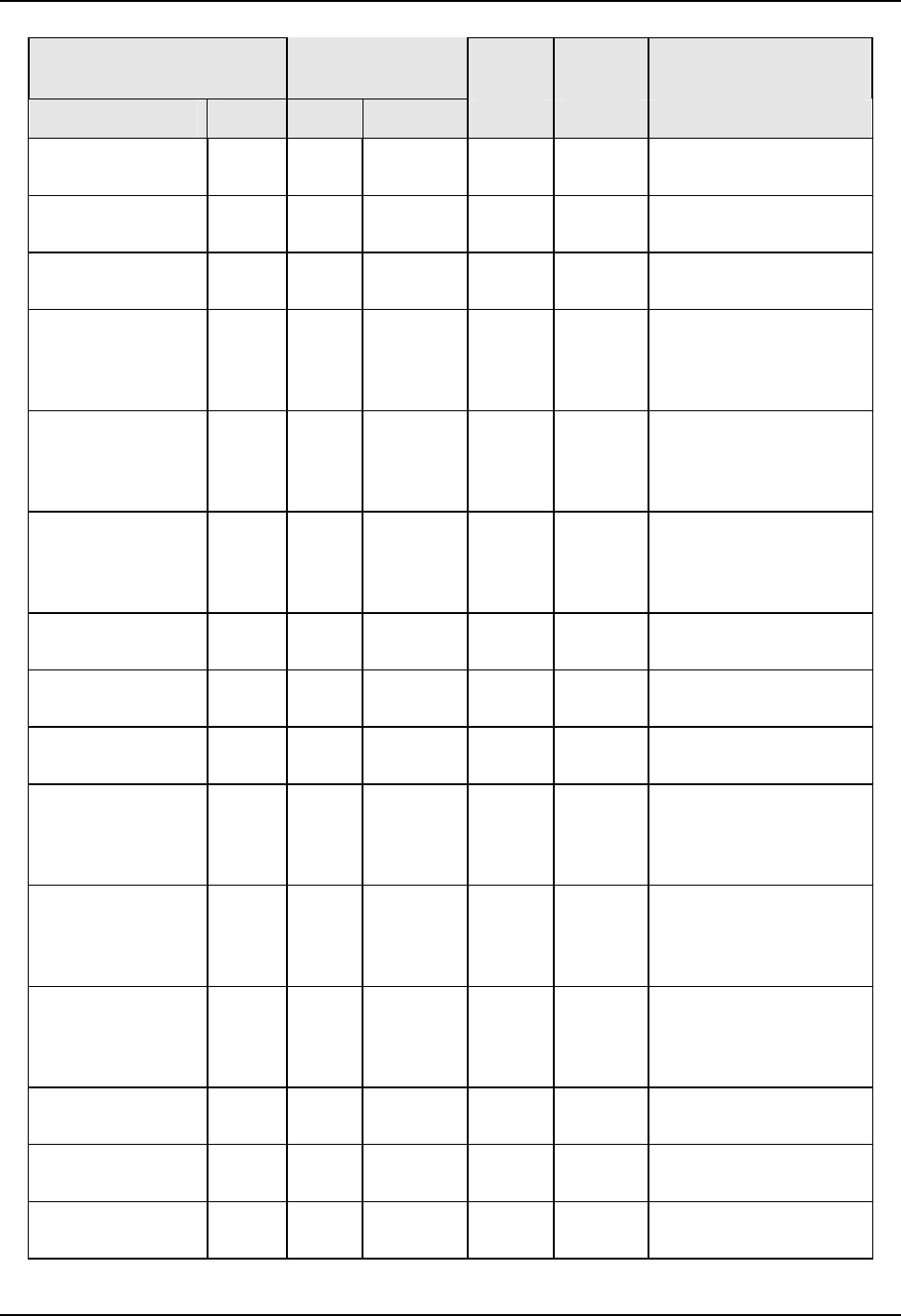
Modbus Read, Write and Override Parameters plus Exception Codes
March 2012 UDC3500 Universal Digital Controller Product Manual 365
Parameter
Register
Address
Data
Type
Access Data Range or
Enumerated Selection
Description ID Hex Decimal
Segment #4 Soak
Setpoint Value
61 003D 061 FP R/W Within Setpoint Limits
Segment #4 Soak
Time
62 003E 062 FP R/W 99.59 (0-99
Hrs:0-59 Min)
Guaranteed
Soak ##4
89 4058 16472 FP R/W 0 to 99.9 (0 = no soak)
Segment #4
PID SET
194 40C2 16578 INT R/W 0 = SET1
1 = SET2
2 = SET3
3 = SET4
Segment #5
Ramp Time
63 003F 063 FP R/W 99.59 (0-99
Hrs:0-59 Min) or
0 to 999
(Degrees/Minute)
Segment #5
PID SET
195 40C3 16579 INT R/W 0 = SET1
1 = SET2
2 = SET3
3 = SET4
Segment #6 Soak
Setpoint Value
64 0040 064 FP R/W Within Setpoint Limits
Segment #6 Soak
Time
65 0041 065 FP R/W 99.59 (0-99
Hrs:0-59 Min)
Guaranteed
Soak ##6
89 4059 16473 FP R/W 0 to 99.9 (0 = no soak)
Segment #6
PID SET
196 40C4 16580 INT R/W 0 = SET1
1 = SET2
2 = SET3
3 = SET4
Segment #7
Ramp Time
66 0042 066 FP R/W 99.59 (0-99
Hrs:0-59 Min) or
0 to 999
(Degrees/Minute)
Segment #7
PID SET
197 40C5 16581 INT R/W 0 = SET1
1 = SET2
2 = SET3
3 = SET4
Segment #8 Soak
Setpoint Value
67 0043 067 FP R/W Within Setpoint Limits
Segment #8 Soak
Time
68 0044 068 FP R/W 99.59 (0-99
Hrs:0-59 Min)
Guaranteed
Soak ##8
90 405A 16474 FP R/W 0 to 99.9 (0 = no soak)
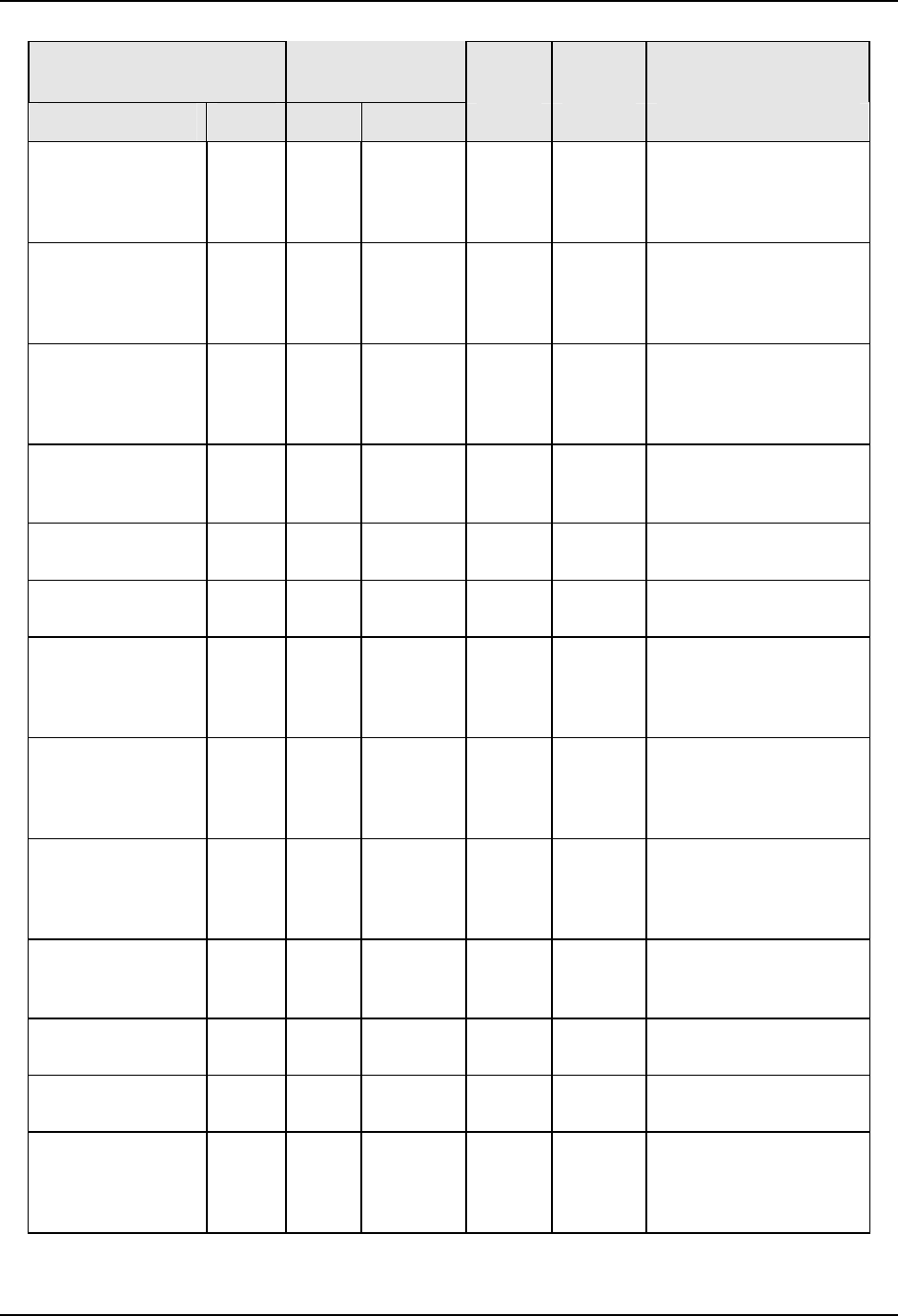
Modbus Read, Write and Override Parameters plus Exception Codes
366 UDC3500 Universal Digital Controller Product Manual March 2012
Parameter
Register
Address
Data
Type
Access Data Range or
Enumerated Selection
Description ID Hex Decimal
Segment #8
PID SET
198 40C6 16582 INT R/W 0 = SET1
1 = SET2
2 = SET3
3 = SET4
Segment #9
Ramp Time
0045 069 FP R/W 99.59 (0-99
Hrs:0-59 Min) or
0 to 999
(Degrees/Minute)
Segment #9
PID SET
199 40C7 16583 INT R/W 0 = SET1
1 = SET2
2 = SET3
3 = SET4
Segment #10
Soak Setpoint
Value
70 0046 070 FP R/W Within Setpoint Limits
Segment #10
Soak Time
71 0047 071 FP R/W 99.59 (0-99
Hrs:0-59 Min)
Guaranteed
Soak ##10
91 405B 16475 FP R/W 0 to 99.9 (0 = no soak)
Segment #10
PID SET
200 40C8 16584 INT R/W 0 = SET1
1 = SET2
2 = SET3
3 = SET4
Segment #11
Ramp Time
72 0048 072 FP R/W 99.59 (0-99
Hrs:0-59 Min) or
0 to 999
(Degrees/Minute)
Segment #11
PID SET
201 40C9 16585 INT R/W 0 = SET1
1 = SET2
2 = SET3
3 = SET4
Segment #12
Soak Setpoint
Value
73 0049 073 FP R/W Within Setpoint Limits
Segment #12
Soak Time
74 004A 074 FP R/W 99.59 (0-99
Hrs:0-59 Min)
Guaranteed
Soak ##12
92 405C 16476 FP R/W 0 to 99.9 (0 = no soak)
Segment #12
PID SET
202 40CA 16586 FP R/W 0 = SET1
1 = SET2
2 = SET3
3 = SET4
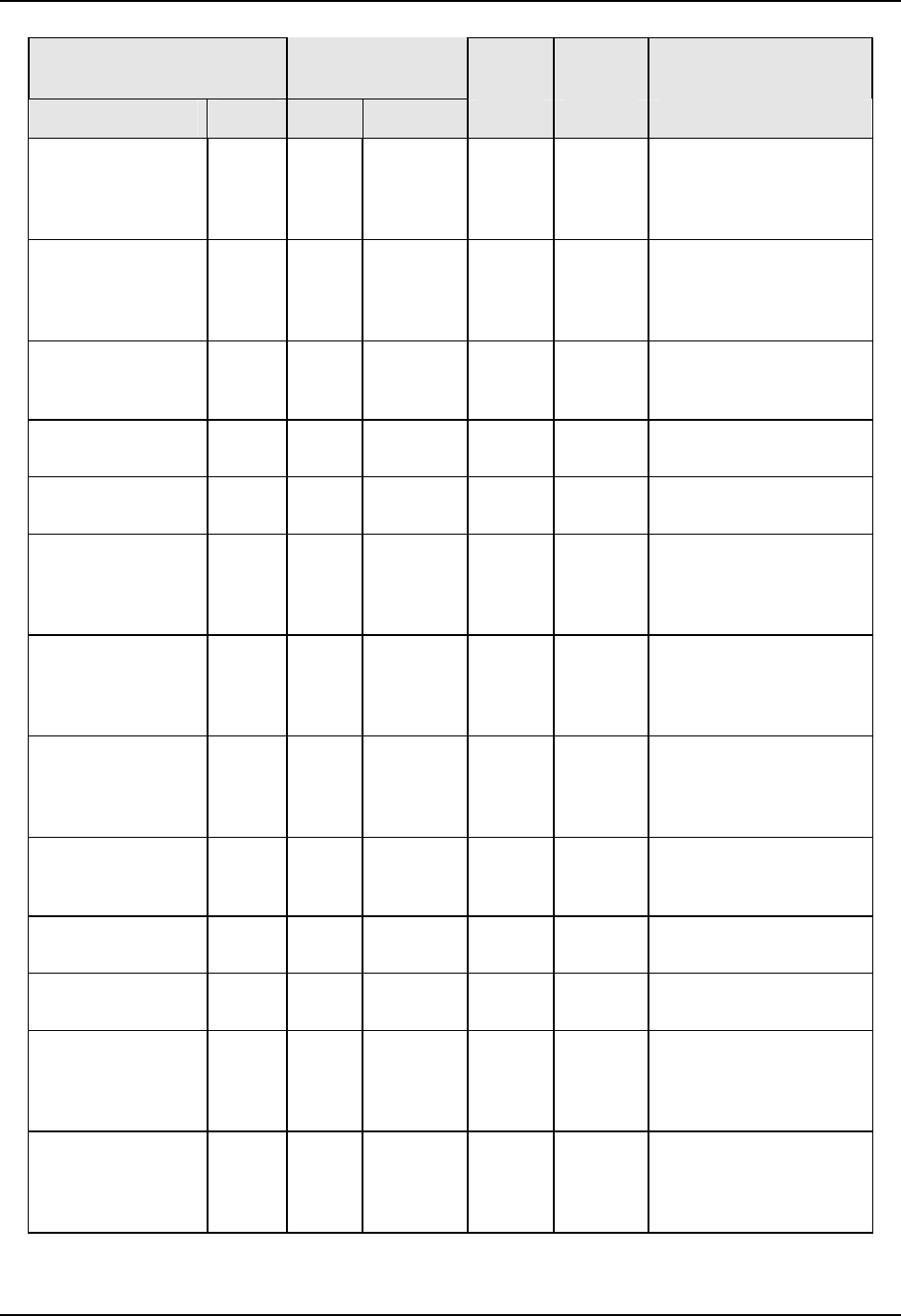
Modbus Read, Write and Override Parameters plus Exception Codes
March 2012 UDC3500 Universal Digital Controller Product Manual 367
Parameter
Register
Address
Data
Type
Access Data Range or
Enumerated Selection
Description ID Hex Decimal
Segment #13
Ramp Time
72 4048 16456 FP R/W 99.59 (0-99
Hrs:0-59 Min) or
0 to 999
(Degrees/Minute)
Segment #13
PID SET
203 40CB 16587 INT R/W 0 = SET1
1 = SET2
2 = SET3
3 = SET4
Segment #14
Soak Setpoint
Value
73 4049 16457 FP R/W Within Setpoint Limits
Segment #14
Soak Time
74 404A 16458 FP R/W 99.59 (0-99
Hrs:0-59 Min)
Guaranteed
Soak ##14
93 405D 16477 FP R/W 0 to 99.9 (0 = no soak)
Segment #14
PID SET
204 40CC 16588 INT R/W 0 = SET1
1 = SET2
2 = SET3
3 = SET4
Segment #15
Ramp Time
75 404B 16459 FP R/W 99.59 (0-99
Hrs:0-59 Min) or
0 to 999
(Degrees/Minute)
Segment #15
PID SET
205 40CD 16589 INT R/W 0 = SET1
1 = SET2
2 = SET3
3 = SET4
Segment #16
Soak Setpoint
Value
76 404C 16460 FP R/W Within Setpoint Limits
Segment #16
Soak Time
77 404D 16461 FP R/W 99.59 (0-99
Hrs:0-59 Min)
Guaranteed
Soak ##16
94 405E 16478 FP R/W 0 to 99.9 (0 = no soak)
Segment #16
PID SET
206 40CE 16590 INT R/W 0 = SET1
1 = SET2
2 = SET3
3 = SET4
Segment #17
Ramp Time
78 404E 16462 FP R/W 99.59 (0-99
Hrs:0-59 Min) or
0 to 999
(Degrees/Minute)
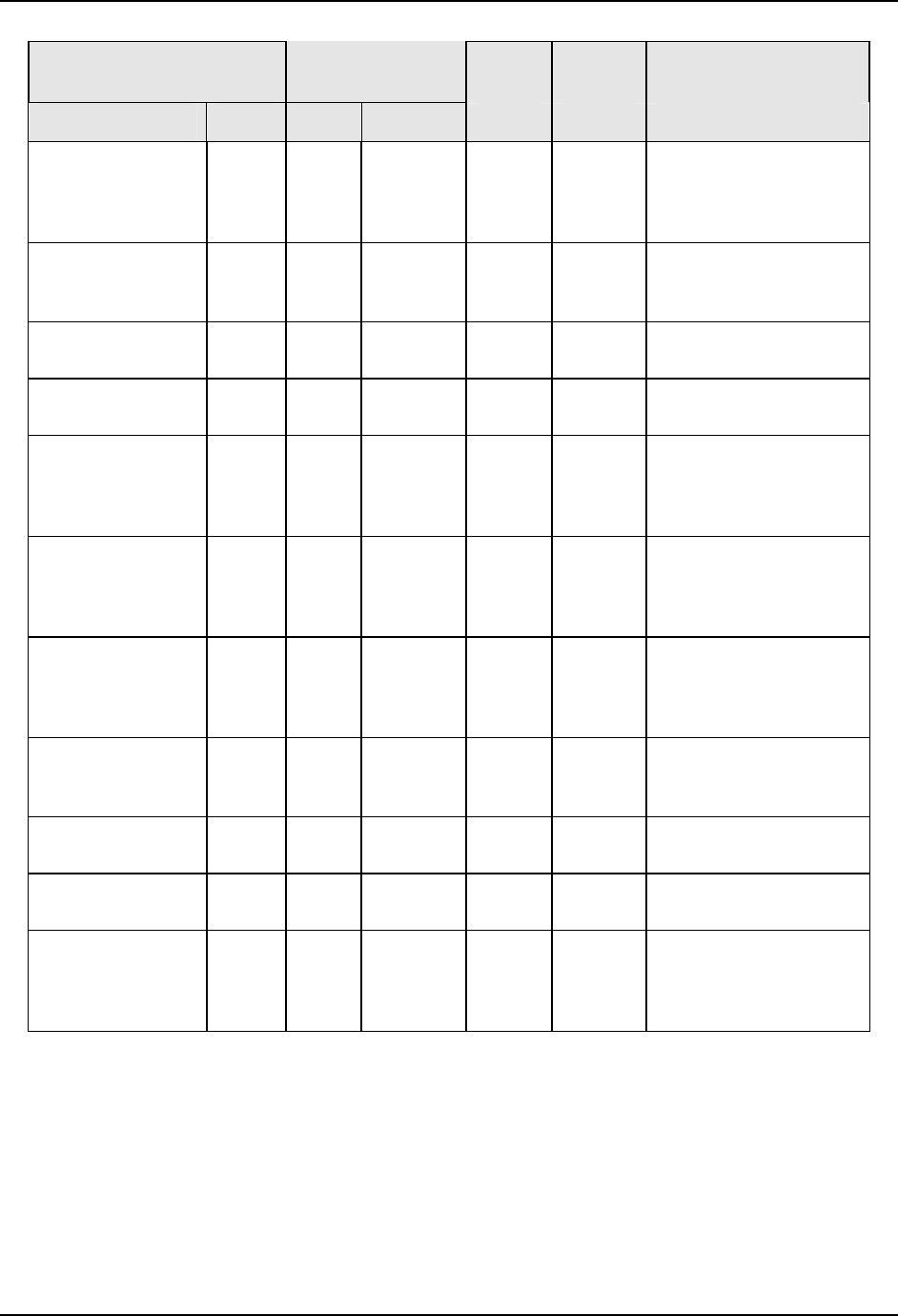
Modbus Read, Write and Override Parameters plus Exception Codes
368 UDC3500 Universal Digital Controller Product Manual March 2012
Parameter
Register
Address
Data
Type
Access Data Range or
Enumerated Selection
Description ID Hex Decimal
Segment #17
PID SET
207 40CF 16591 INT R/W 0 = SET1
1 = SET2
2 = SET3
3 = SET4
Segment #18
Soak Setpoint
Value
79 404F 16463 FP R/W Within Setpoint Limits
Segment #18
Soak Time
80 4050 16464 FP R/W 99.59 (0-99
Hrs:0-59 Min)
Guaranteed
Soak ##18
95 505F 16479 FP R/W 0 to 99.9 (0 = no soak)
Segment #18
PID SET
208 40D0 16592 INT R/W 0 = SET1
1 = SET2
2 = SET3
3 = SET4
Segment #19
Ramp Time
81 4051 16465 FP R/W 99.59 (0-99
Hrs:0-59 Min) or
0 to 999
(Degrees/Minute)
Segment #19
PID SET
209 40D1 16593 INT R/W 0 = SET1
1 = SET2
2 = SET3
3 = SET4
Segment #20
Soak Setpoint
Value
82 4052 16466 FP R/W Within Setpoint Limits
Segment #20
Soak Time
83 4053 16467 FP R/W 99.59 (0-99
Hrs:0-59 Min)
Guaranteed
Soak ##20
96 4060 16480 FP R/W 0 to 99.9 (0 = no soak)
Segment #20
PID SET
210 40D2 16594 INT R/W 0 = SET1
1 = SET2
2 = SET3
3 = SET4
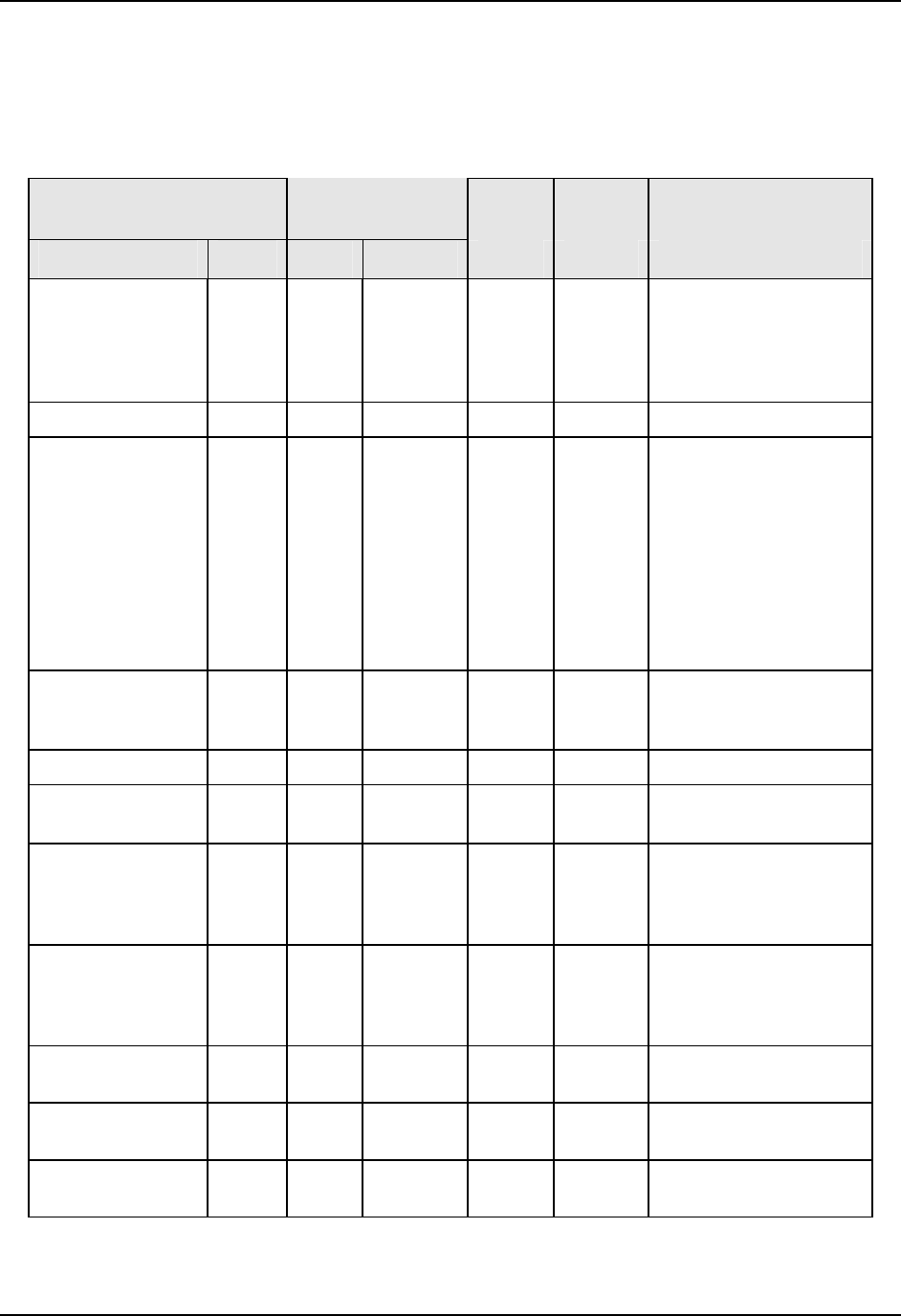
Modbus Read, Write and Override Parameters plus Exception Codes
10.7.4 Setpoint Program #2
Table 10-13 lists all the register addresses and ranges or selections for the function
parameters in Set-up Group Setpoint Program #2.
Table 10-13 Set-up Group – Setpoint Program #2
Parameter
Register
Address
Data
Type
Access Data Range or
Enumerated Selection
ID Hex Decimal Description
Setpoint Program
#2
128 6080 24704 INT R/W 0 = Disabled
1 = Enable 1
2 = Enable 2
3 = Enable 12
4 = Link 1 and 2
Start Segment # 41 6029 24617 FP R/W 1 to 20
End Segment
#(Soak)
129
6081 24705 INT R/W 0 = Soak 2
1 = Soak 4
2 = Soak 6
3 = Soak 8
4 = Soak 10
5 = Soak 12
6 = Soak 14
7 = Soak 16
8 = Soak 18
9 = Soak 20
Engineering Units
or Ramp
Segments
130 6082 24706 INT R/W 0 = HRS:MIN
1 = EU/Minute
2 = EU/Hour
Program Recycles 42 602a 24618 FP R/W 0 to 100
PV Hotstart 131 6083 24707 INT R/W 0 = Disabled
1 = Enabled
Segment #1
Ramp Time
1 6001 24577 FP R/W 99.59 (0-99
Hrs:0-59 Min) or
0 to 999
(Degrees/Minute)
Segment #1
PID SET
141 608D 24717 INT R/W 0 = SET1
1 = SET2
2 = SET3
3 = SET4
Segment #2 Soak
Setpoint Value
2 6002 24578 FP R/W Within Setpoint Limits
Segment #2 Soak
Time
3 6003 24579 FP R/W 99.59 (0-99
Hrs:0-59 Min)
Guaranteed
Soak ##2
31 601F 24607 FP R/W 0 to 99.9 (0 = no soak)
March 2012 UDC3500 Universal Digital Controller Product Manual 369
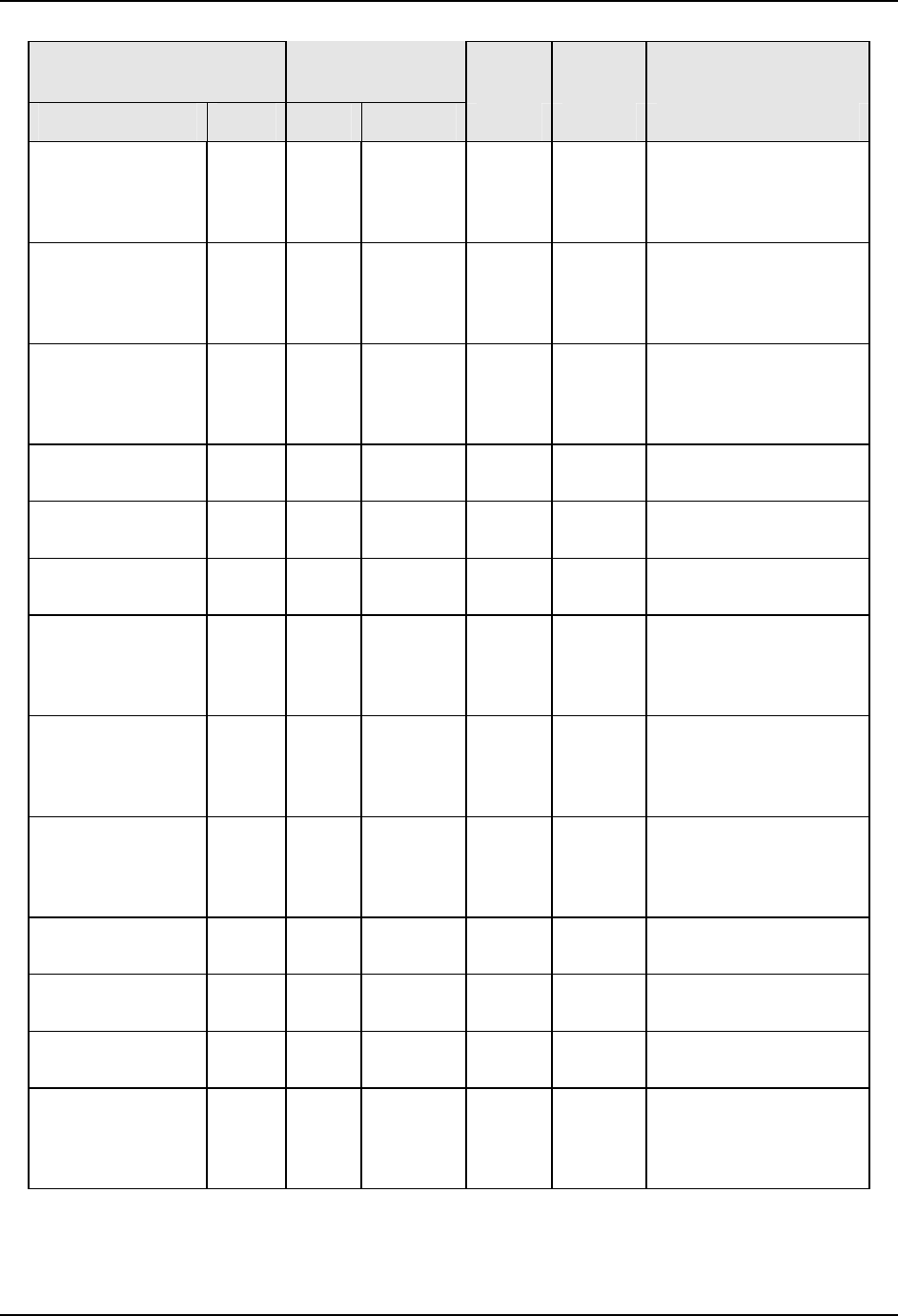
Modbus Read, Write and Override Parameters plus Exception Codes
370 UDC3500 Universal Digital Controller Product Manual March 2012
Parameter
Register
Address
Data
Type
Access Data Range or
Enumerated Selection
Description ID Hex Decimal
Segment #2
PID SET
142 608E 24718 INT R/W 0 = SET1
1 = SET2
2 = SET3
3 = SET4
Segment #3
Ramp Time
4 6004 24580 FP R/W 99.59 (0-99
Hrs:0-59 Min) or
0 to 999
(Degrees/Minute)
Segment #3
PID SET
143 608F 24719 INT R/W 0 = SET1
1 = SET2
2 = SET3
3 = SET4
Segment #4 Soak
Setpoint Value
5 6005 24581 FP R/W Within Setpoint Limits
Segment #4 Soak
Time
6 6006 24582 FP R/W 99.59 (0-99
Hrs:0-59 Min)
Guaranteed
Soak ##4
32 6020 24608 FP R/W 0 to 99.9 (0 = no soak)
Segment #4
PID SET
144 6090 24720 INT R/W 0 = SET1
1 = SET2
2 = SET3
3 = SET4
Segment #5
Ramp Time
7 6007 24583 FP R/W 99.59 (0-99
Hrs:0-59 Min) or
0 to 999
(Degrees/Minute)
Segment #5
PID SET
145 6091 24721 INT R/W 0 = SET1
1 = SET2
2 = SET3
3 = SET4
Segment #6 Soak
Setpoint Value
8 6008 24584 FP R/W Within Setpoint Limits
Segment #6 Soak
Time
9 6009 24585 FP R/W 99.59 (0-99
Hrs:0-59 Min)
Guaranteed
Soak ##6
33 6021 24609 FP R/W 0 to 99.9 (0 = no soak)
Segment #6
PID SET
146 6092 24722 INT R/W 0 = SET1
1 = SET2
2 = SET3
3 = SET4
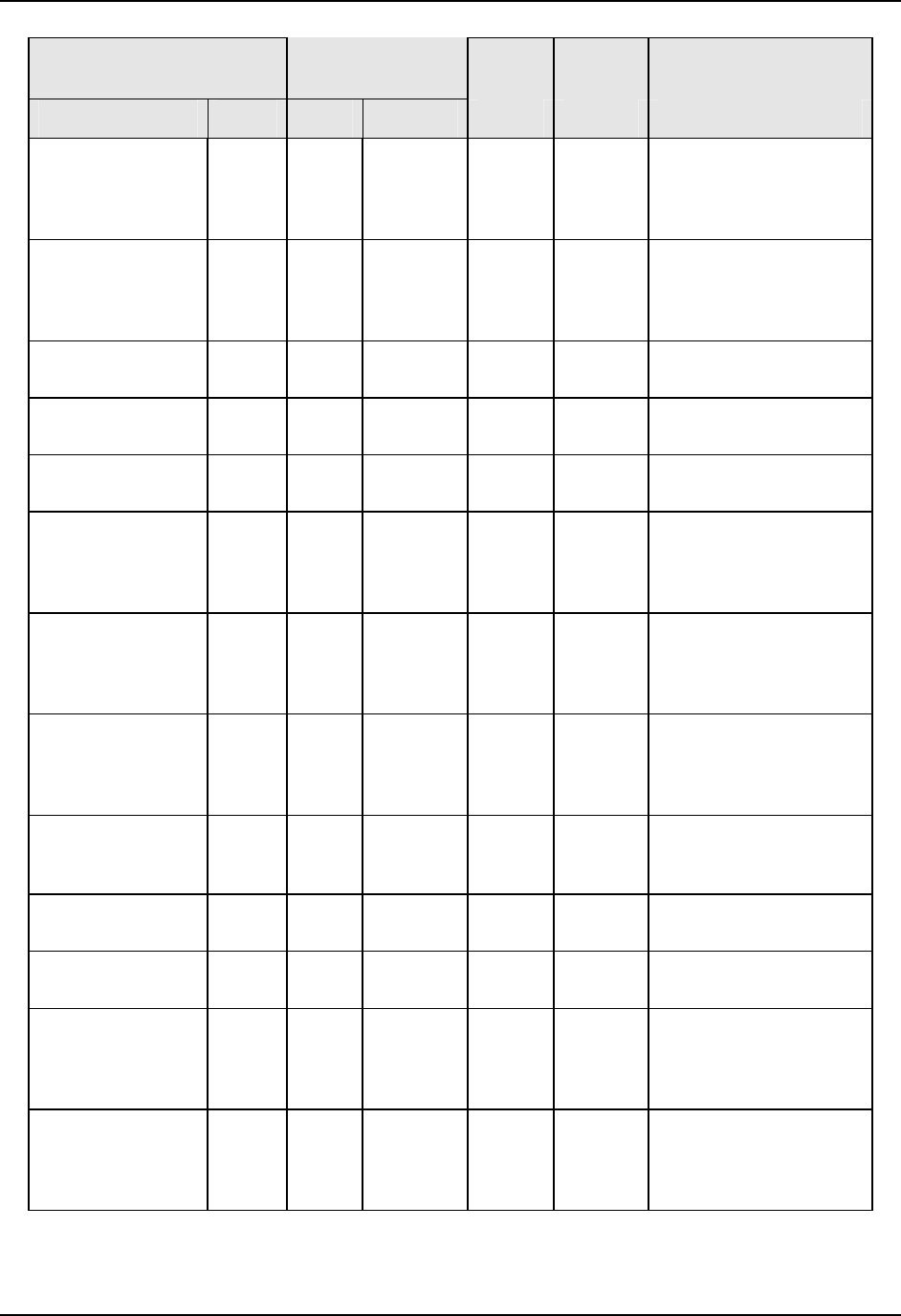
Modbus Read, Write and Override Parameters plus Exception Codes
March 2012 UDC3500 Universal Digital Controller Product Manual 371
Parameter
Register
Address
Data
Type
Access Data Range or
Enumerated Selection
Description ID Hex Decimal
Segment #7
Ramp Time
10 600A 24586 FP R/W 99.59 (0-99
Hrs:0-59 Min) or
0 to 999
(Degrees/Minute)
Segment #7
PID SET
147 6093 24723 INT R/W 0 = SET1
1 = SET2
2 = SET3
3 = SET4
Segment #8 Soak
Setpoint Value
11 600B 24587 FP R/W Within Setpoint Limits
Segment #8 Soak
Time
12 600C 24588 FP R/W 99.59 (0-99
Hrs:0-59 Min)
Guaranteed
Soak ##8
34 6022 24610 FP R/W 0 to 99.9 (0 = no soak)
Segment #8
PID SET
148 6094 24724 INT R/W 0 = SET1
1 = SET2
2 = SET3
3 = SET4
Segment #9
Ramp Time
13 600D 24589 FP R/W 99.59 (0-99
Hrs:0-59 Min) or
0 to 999
(Degrees/Minute)
Segment #9
PID SET
149 6095 24725 INT R/W 0 = SET1
1 = SET2
2 = SET3
3 = SET4
Segment #10
Soak Setpoint
Value
14 600E 24590 FP R/W Within Setpoint Limits
Segment #10
Soak Time
15 600F 24591 FP R/W 99.59 (0-99
Hrs:0-59 Min)
Guaranteed
Soak ##10
35 6023 24611 FP R/W 0 to 99.9 (0 = no soak)
Segment #10
PID SET
150 6096 24726 INT R/W 0 = SET1
1 = SET2
2 = SET3
3 = SET4
Segment #11
Ramp Time
16 6010 24592 FP R/W 99.59 (0-99
Hrs:0-59 Min) or
0 to 999
(Degrees/Minute)
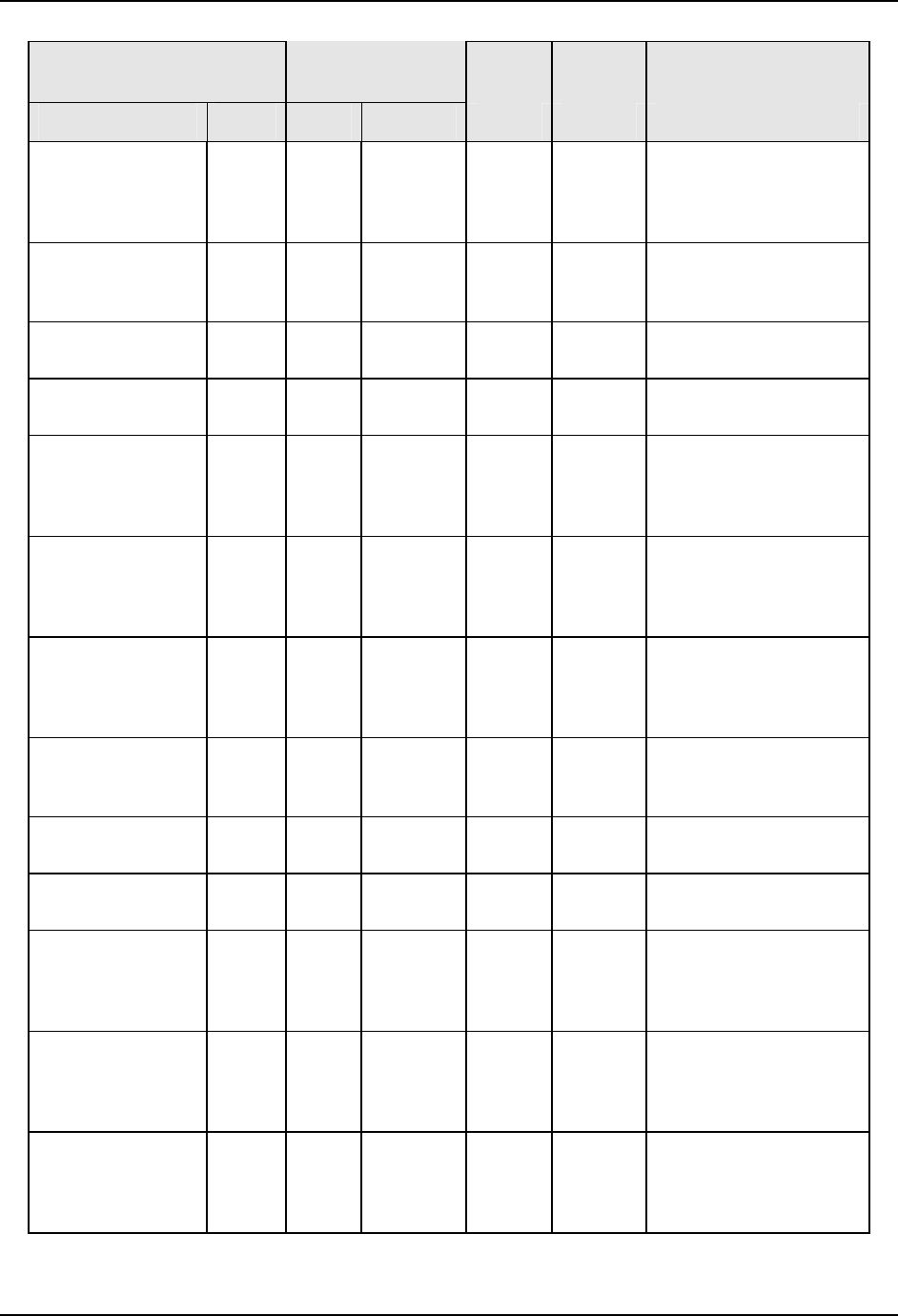
Modbus Read, Write and Override Parameters plus Exception Codes
372 UDC3500 Universal Digital Controller Product Manual March 2012
Parameter
Register
Address
Data
Type
Access Data Range or
Enumerated Selection
Description ID Hex Decimal
Segment #11
PID SET
151 6097 24727 INT R/W 0 = SET1
1 = SET2
2 = SET3
3 = SET4
Segment #12
Soak Setpoint
Value
17 6011 24593 FP R/W Within Setpoint Limits
Segment #12
Soak Time
18 6012 24594 FP R/W 99.59 (0-99
Hrs:0-59 Min)
Guaranteed
Soak ##12
36 6024 24612 FP R/W 0 to 99.9 (0 = no soak)
Segment #12
PID SET
152 6098 24728 FP R/W 0 = SET1
1 = SET2
2 = SET3
3 = SET4
Segment #13
Ramp Time
19 6013 24595 FP R/W 99.59 (0-99
Hrs:0-59 Min) or
0 to 999
(Degrees/Minute)
Segment #13
PID SET
153 6099 24729 INT R/W 0 = SET1
1 = SET2
2 = SET3
3 = SET4
Segment #14
Soak Setpoint
Value
20 6014 24596 FP R/W Within Setpoint Limits
Segment #14
Soak Time
21 6015 24597 FP R/W 99.59 (0-99
Hrs:0-59 Min)
Guaranteed
Soak ##14
37 6025 24613 FP R/W 0 to 99.9 (0 = no soak)
Segment #14
PID SET
154 609A 24730 INT R/W 0 = SET1
1 = SET2
2 = SET3
3 = SET4
Segment #15
Ramp Time
22 6016 24598 FP R/W 99.59 (0-99
Hrs:0-59 Min) or
0 to 999
(Degrees/Minute)
Segment #15
PID SET
155 609B 24731 INT R/W 0 = SET1
1 = SET2
2 = SET3
3 = SET4
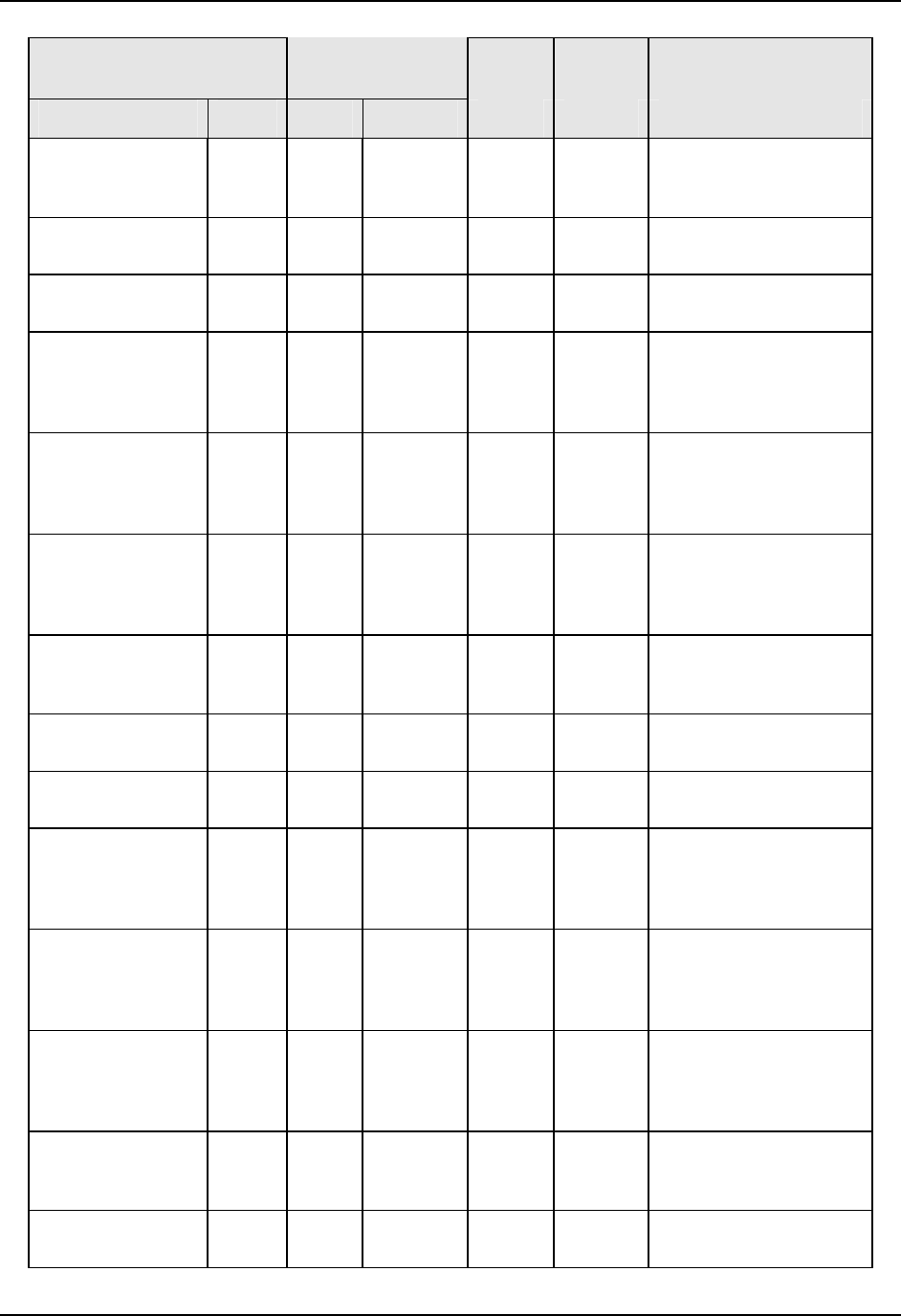
Modbus Read, Write and Override Parameters plus Exception Codes
March 2012 UDC3500 Universal Digital Controller Product Manual 373
Parameter
Register
Address
Data
Type
Access Data Range or
Enumerated Selection
Description ID Hex Decimal
Segment #16
Soak Setpoint
Value
23 6017 24599 FP R/W Within Setpoint Limits
Segment #16
Soak Time
24 6018 24600 FP R/W 99.59 (0-99
Hrs:0-59 Min)
Guaranteed
Soak ##16
38 6026 24614 FP R/W 0 to 99.9 (0 = no soak)
Segment #16
PID SET
156 609C 24732 INT R/W 0 = SET1
1 = SET2
2 = SET3
3 = SET4
Segment #17
Ramp Time
25 6019 24601 FP R/W 99.59 (0-99
Hrs:0-59 Min) or
0 to 999
(Degrees/Minute)
Segment #17
PID SET
157 609D 24733 INT R/W 0 = SET1
1 = SET2
2 = SET3
3 = SET4
Segment #18
Soak Setpoint
Value
26 601A 24602 FP R/W Within Setpoint Limits
Segment #18
Soak Time
27 601B 24603 FP R/W 99.59 (0-99
Hrs:0-59 Min)
Guaranteed
Soak ##18
39 6027 24615 FP R/W 0 to 99.9 (0 = no soak)
Segment #18
PID SET
158 609E 24734 INT R/W 0 = SET1
1 = SET2
2 = SET3
3 = SET4
Segment #19
Ramp Time
28 601C 24604 FP R/W 99.59 (0-99
Hrs:0-59 Min) or
0 to 999
(Degrees/Minute)
Segment #19
PID SET
159 609F 24735 INT R/W 0 = SET1
1 = SET2
2 = SET3
3 = SET4
Segment #20
Soak Setpoint
Value
29 601D 24605 FP R/W Within Setpoint Limits
Segment #20
Soak Time
30 601E 24606 FP R/W 99.59 (0-99
Hrs:0-59 Min)
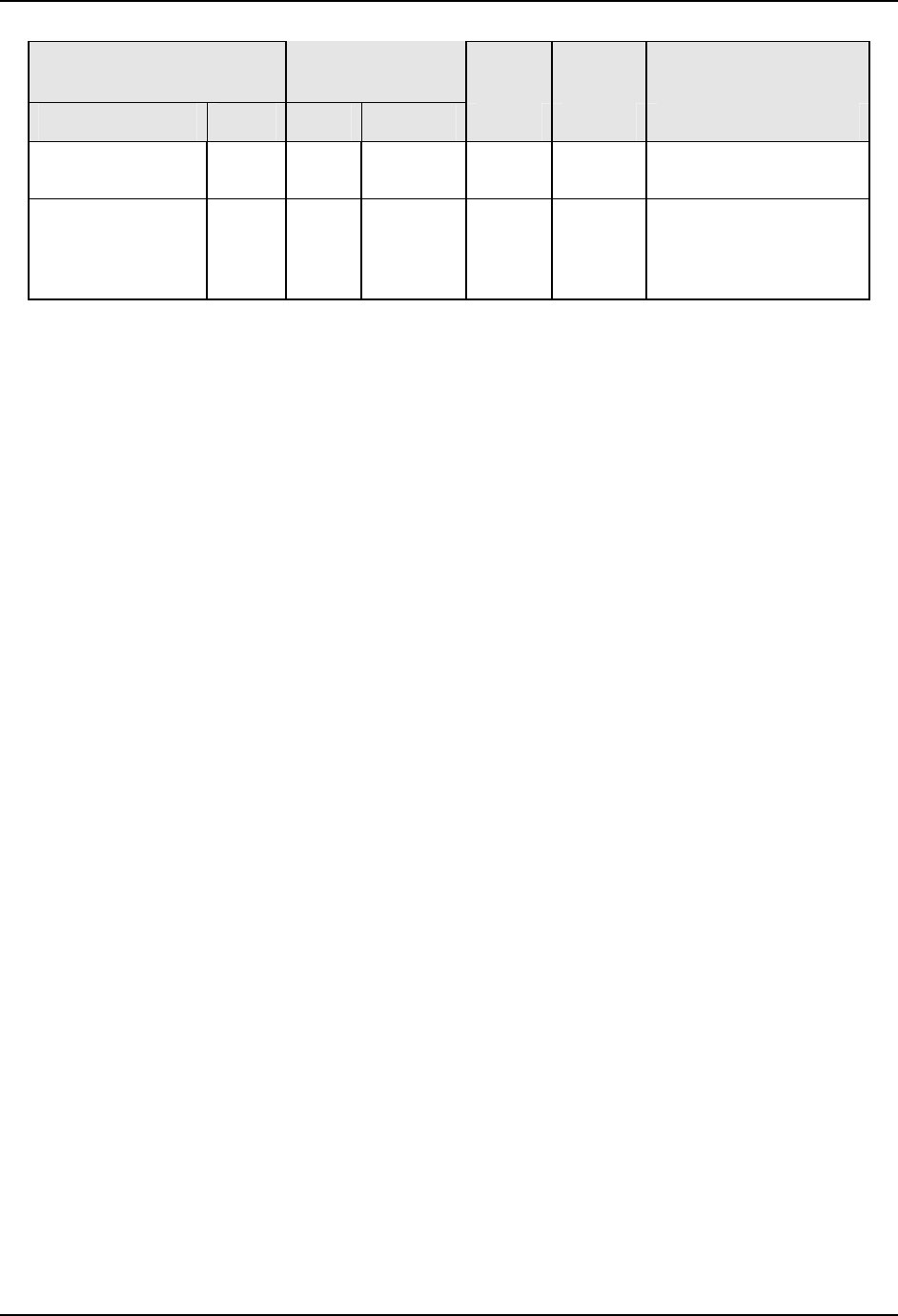
Modbus Read, Write and Override Parameters plus Exception Codes
374 UDC3500 Universal Digital Controller Product Manual March 2012
Parameter
Register
Address
Data
Type
Access Data Range or
Enumerated Selection
Description ID Hex Decimal
Guaranteed
Soak ##20
40 6028 24616 FP R/W 0 to 99.9 (0 = no soak)
Segment #20
PID SET
160 60A0 24736 INT R/W 0 = SET1
1 = SET2
2 = SET3
3 = SET4
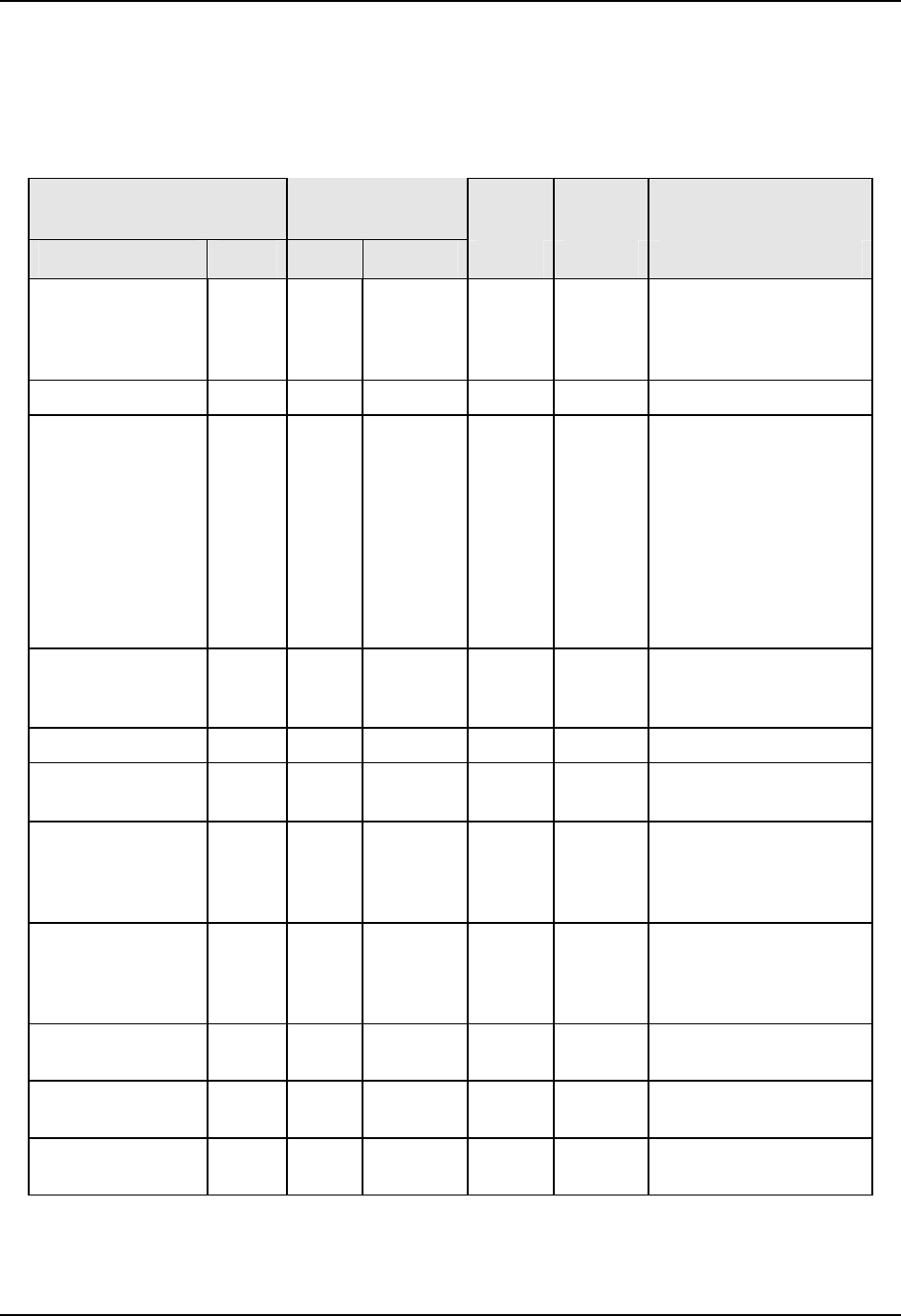
Modbus Read, Write and Override Parameters plus Exception Codes
10.7.5 Setpoint Program #3
Table 10-14 lists all the register addresses and ranges or selections for the function
parameters in Set-up Group Setpoint Program #3.
Table 10-14 Set-up Group – Setpoint Program #3
Parameter
Register
Address
Data
Type
Access Data Range or
Enumerated Selection
ID Hex Decimal Description
Setpoint Program
#3
132 6084 24708 INT R/W 0 = Disabled
1 = Enable 1
2 = Enable 2
3 = Enable 12
Start Segment # 83 6053 24659 FP R/W 1 to 20
End Segment
#(Soak)
133 6085 24709 INT R/W 0 = Soak 2
1 = Soak 4
2 = Soak 6
3 = Soak 8
4 = Soak 10
5 = Soak 12
6 = Soak 14
7 = Soak 16
8 = Soak 18
9 = Soak 20
Engineering Units
or Ramp
Segments
134 6086 24710 INT R/W 0 = HRS:MIN
1 = EU/Minute
2 = EU/Hour
Program Recycles 84 6054 24660 FP R/W 0 to 100
PV Hotstart 135 6087 24711 INT R/W 0 = Disabled
1 = Enabled
Segment #1
Ramp Time
43 602B 24619 FP R/W 99.59 (0-99
Hrs:0-59 Min) or
0 to 999
(Degrees/Minute)
Segment #1
PID SET
161 60A1 24737 INT R/W 0 = SET1
1 = SET2
2 = SET3
3 = SET4
Segment #2 Soak
Setpoint Value
44 602C 24620 FP R/W Within Setpoint Limits
Segment #2 Soak
Time
45 602D 24621 FP R/W 99.59 (0-99
Hrs:0-59 Min)
Guaranteed
Soak ##2
73 6049 24649 FP R/W 0 to 99.9 (0 = no soak)
March 2012 UDC3500 Universal Digital Controller Product Manual 375
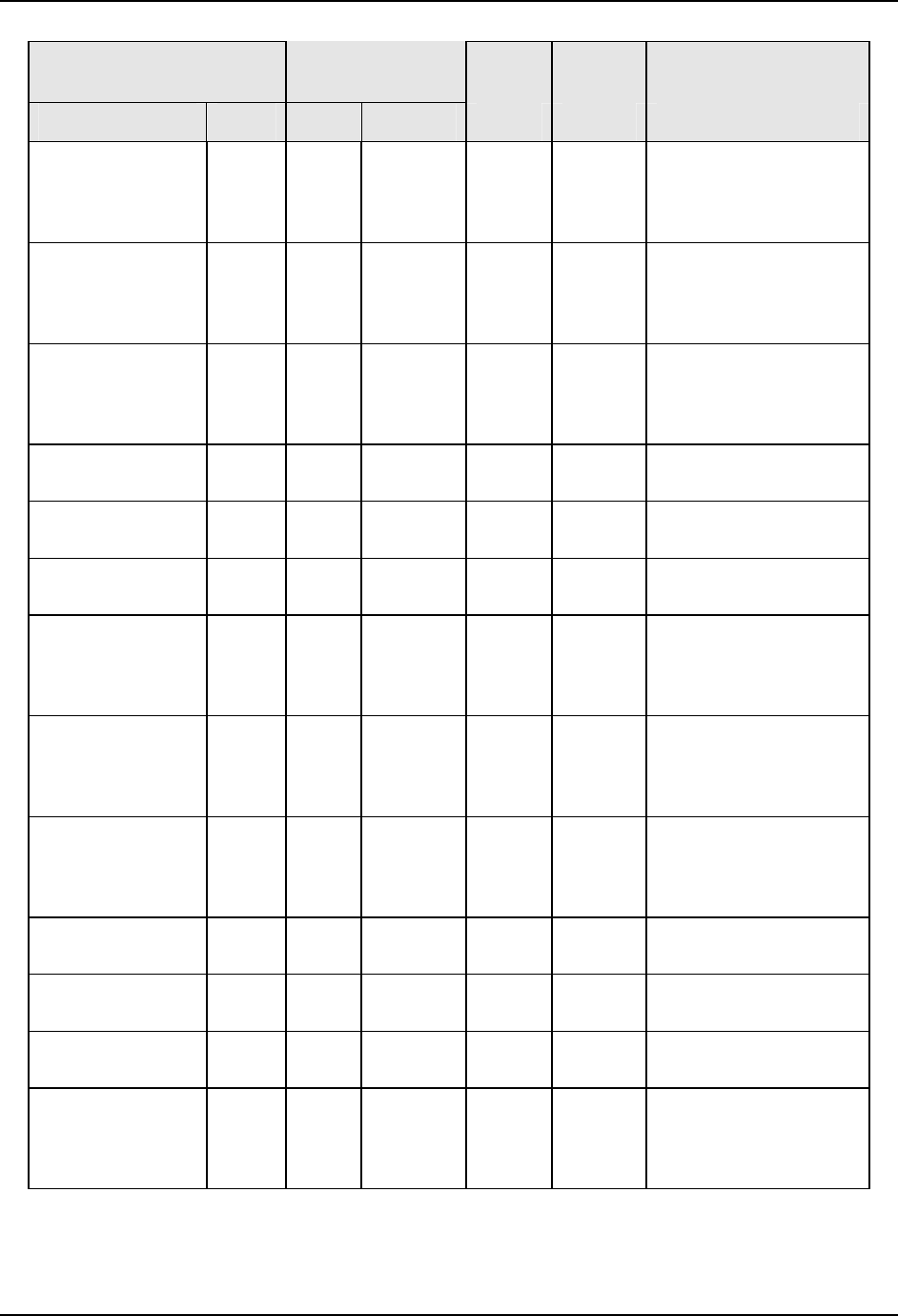
Modbus Read, Write and Override Parameters plus Exception Codes
Parameter
Register
Address
Data
Type
Access Data Range or
Enumerated Selection
Description ID Hex Decimal
Segment #2
PID SET
162 60A2 24738 INT R/W 0 = SET1
1 = SET2
2 = SET3
3 = SET4
Segment #3
Ramp Time
46 602E 24622 FP R/W 99.59 (0-99
Hrs:0-59 Min) or
0 to 999
(Degrees/Minute)
Segment #3
PID SET
163 60A3 24739 INT R/W 0 = SET1
1 = SET2
2 = SET3
3 = SET4
Segment #4 Soak
Setpoint Value
47 602F 24623 FP R/W Within Setpoint Limits
Segment #4 Soak
Time
48 6030 24624 FP R/W 99.59 (0-99
Hrs:0-59 Min)
Guaranteed
Soak ##4
74 604A 24650 FP R/W 0 to 99.9 (0 = no soak)
Segment #4
PID SET
164 60A4 24740 INT R/W 0 = SET1
1 = SET2
2 = SET3
3 = SET4
Segment #5
Ramp Time
49 6031 24625 FP R/W 99.59 (0-99
Hrs:0-59 Min) or
0 to 999
(Degrees/Minute)
Segment #5
PID SET
165 60A5 24741 INT R/W 0 = SET1
1 = SET2
2 = SET3
3 = SET4
Segment #6 Soak
Setpoint Value
50 6032 24626 FP R/W Within Setpoint Limits
Segment #6 Soak
Time
51 6033 24627 FP R/W 99.59 (0-99
Hrs:0-59 Min)
Guaranteed
Soak ##6
67 6043 24643 FP R/W 0 to 99.9 (0 = no soak)
Segment #6
PID SET
166 60A6 24742 INT R/W 0 = SET1
1 = SET2
2 = SET3
3 = SET4
376 UDC3500 Universal Digital Controller Product Manual March 2012
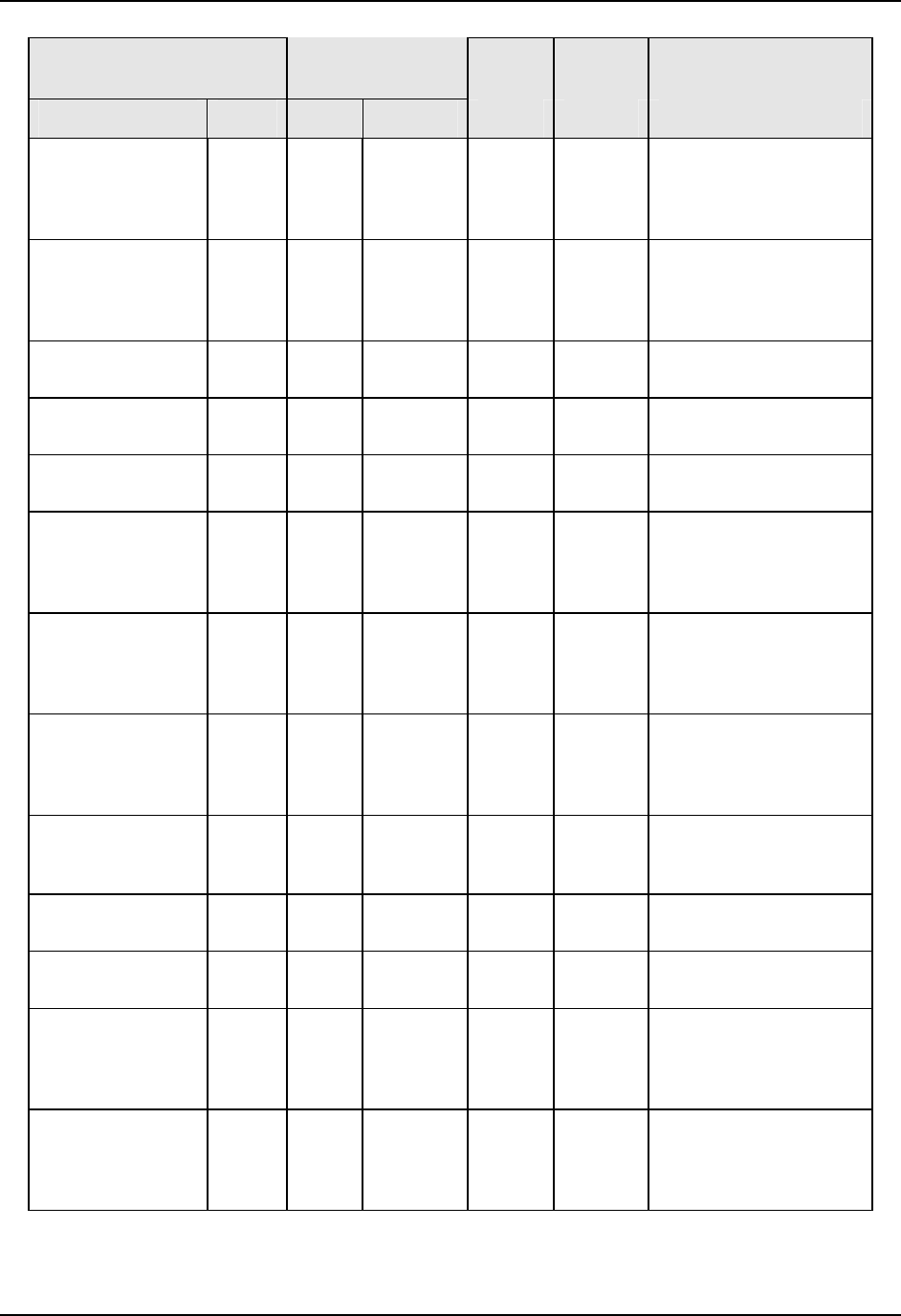
Modbus Read, Write and Override Parameters plus Exception Codes
Parameter
Register
Address
Data
Type
Access Data Range or
Enumerated Selection
Description ID Hex Decimal
Segment #7
Ramp Time
52 6034 24628 FP R/W 99.59 (0-99
Hrs:0-59 Min) or
0 to 999
(Degrees/Minute)
Segment #7
PID SET
167 60A7 24743 INT R/W 0 = SET1
1 = SET2
2 = SET3
3 = SET4
Segment #8 Soak
Setpoint Value
53 6035 24629 FP R/W Within Setpoint Limits
Segment #8 Soak
Time
54 6036 24630 FP R/W 99.59 (0-99
Hrs:0-59 Min)
Guaranteed
Soak ##8
76 604C 24652 FP R/W 0 to 99.9 (0 = no soak)
Segment #8
PID SET
168 60A8 24744 INT R/W 0 = SET1
1 = SET2
2 = SET3
3 = SET4
Segment #9
Ramp Time
55 6037 24631 FP R/W 99.59 (0-99
Hrs:0-59 Min) or
0 to 999
(Degrees/Minute)
Segment #9
PID SET
169 60A9 24745 INT R/W 0 = SET1
1 = SET2
2 = SET3
3 = SET4
Segment #10
Soak Setpoint
Value
56 6038 24632 FP R/W Within Setpoint Limits
Segment #10
Soak Time
57 6039 24633 FP R/W 99.59 (0-99
Hrs:0-59 Min)
Guaranteed
Soak #10
64 6040 24640 FP R/W 0 to 99.9 (0 = no soak)
Segment #10
PID SET
170 60AA 24746 INT R/W 0 = SET1
1 = SET2
2 = SET3
3 = SET4
Segment #11
Ramp Time
58 603A 24634 FP R/W 99.59 (0-99
Hrs:0-59 Min) or
0 to 999
(Degrees/Minute)
March 2012 UDC3500 Universal Digital Controller Product Manual 377
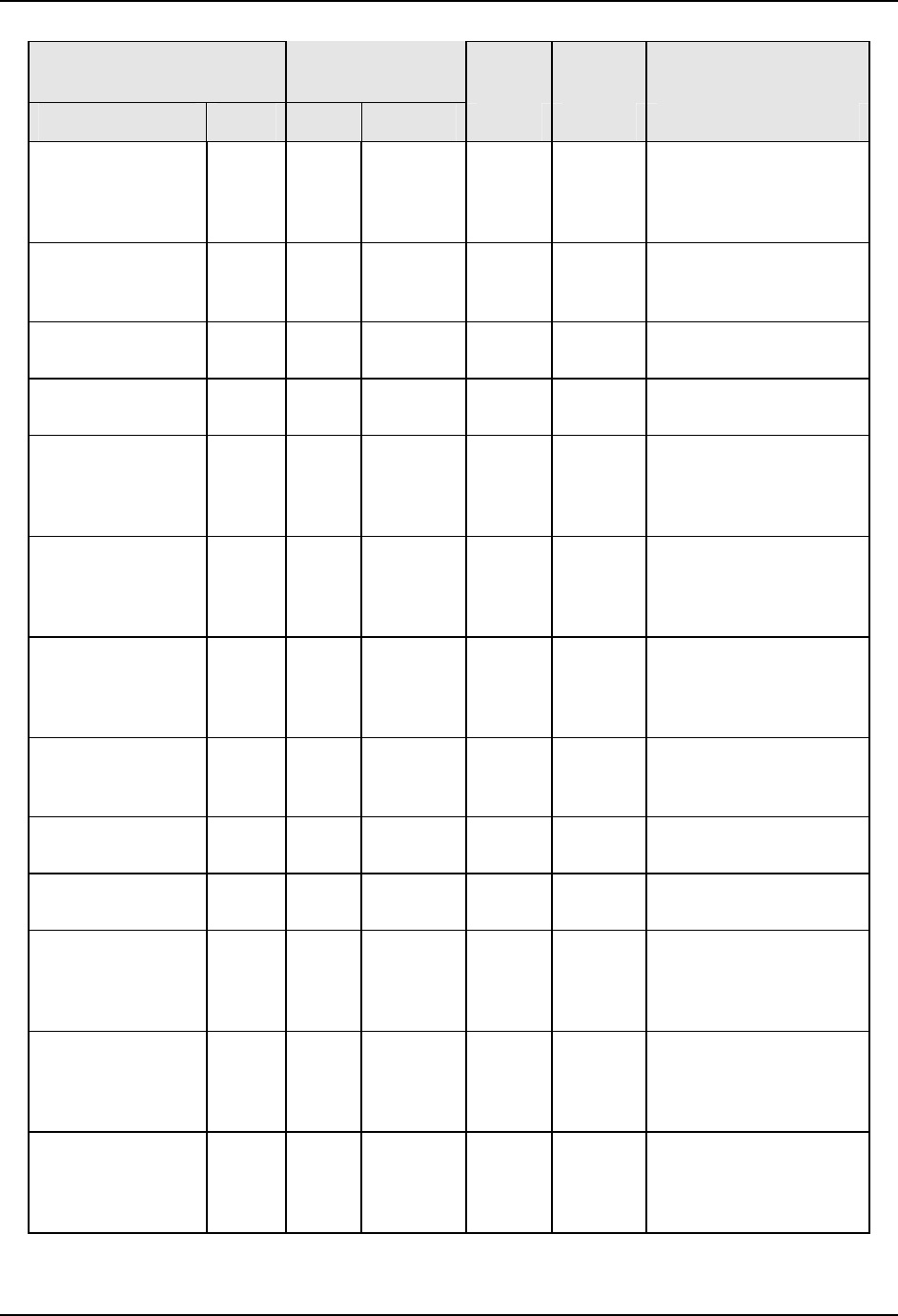
Modbus Read, Write and Override Parameters plus Exception Codes
Parameter
Register
Address
Data
Type
Access Data Range or
Enumerated Selection
Description ID Hex Decimal
Segment #11
PID SET
171 60AB 24747 INT R/W 0 = SET1
1 = SET2
2 = SET3
3 = SET4
Segment #12
Soak Setpoint
Value
59 603B 24635 FP R/W Within Setpoint Limits
Segment #12
Soak Time
60 603C 24636 FP R/W 99.59 (0-99
Hrs:0-59 Min)
Guaranteed
Soak #12
78 604E 24654 FP R/W 0 to 99.9 (0 = no soak)
Segment #12
PID SET
172 60AC 24748 FP R/W 0 = SET1
1 = SET2
2 = SET3
3 = SET4
Segment #13
Ramp Time
61 603D 24637 FP R/W 99.59 (0-99
Hrs:0-59 Min) or
0 to 999
(Degrees/Minute)
Segment #13
PID SET
173 60AD 24749 INT R/W 0 = SET1
1 = SET2
2 = SET3
3 = SET4
Segment #14
Soak Setpoint
Value
62 603E 24638 FP R/W Within Setpoint Limits
Segment #14
Soak Time
63 603F 24639 FP R/W 99.59 (0-99
Hrs:0-59 Min)
Guaranteed
Soak #14
79 604F 24655 FP R/W 0 to 99.9 (0 = no soak)
Segment #14
PID SET
174 60AE 24750 INT R/W 0 = SET1
1 = SET2
2 = SET3
3 = SET4
Segment #15
Ramp Time
64 6040 24640 FP R/W 99.59 (0-99
Hrs:0-59 Min) or
0 to 999
(Degrees/Minute)
Segment #15
PID SET
175 60AF 24751 INT R/W 0 = SET1
1 = SET2
2 = SET3
3 = SET4
378 UDC3500 Universal Digital Controller Product Manual March 2012
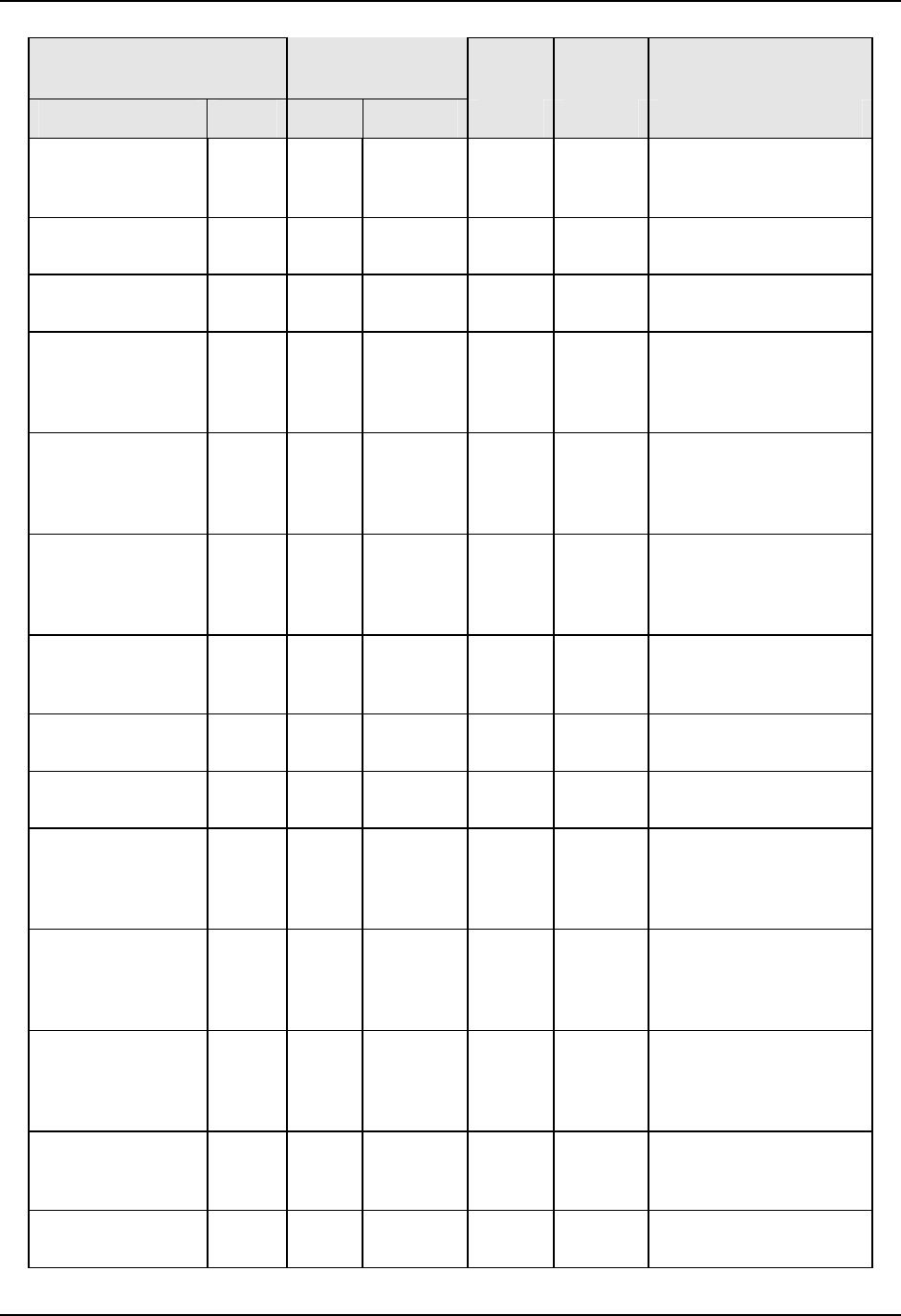
Modbus Read, Write and Override Parameters plus Exception Codes
Parameter
Register
Address
Data
Type
Access Data Range or
Enumerated Selection
Description ID Hex Decimal
Segment #16
Soak Setpoint
Value
65 6041 24641 FP R/W Within Setpoint Limits
Segment #16
Soak Time
66 6042 24642 FP R/W 99.59 (0-99
Hrs:0-59 Min)
Guaranteed
Soak #16
80 6050 24656 FP R/W 0 to 99.9 (0 = no soak)
Segment #16
PID SET
176 60B0 24752 INT R/W 0 = SET1
1 = SET2
2 = SET3
3 = SET4
Segment #17
Ramp Time
67 6043 24643 FP R/W 99.59 (0-99
Hrs:0-59 Min) or
0 to 999
(Degrees/Minute)
Segment #17
PID SET
177 60B1 24753 INT R/W 0 = SET1
1 = SET2
2 = SET3
3 = SET4
Segment #18
Soak Setpoint
Value
68 6044 24644 FP R/W Within Setpoint Limits
Segment #18
Soak Time
69 6045 24645 FP R/W 99.59 (0-99
Hrs:0-59 Min)
Guaranteed
Soak #18
81 6051 24657 FP R/W 0 to 99.9 (0 = no soak)
Segment #18
PID SET
178 60B2 24754 INT R/W 0 = SET1
1 = SET2
2 = SET3
3 = SET4
Segment #19
Ramp Time
70 6046 24646 FP R/W 99.59 (0-99
Hrs:0-59 Min) or
0 to 999
(Degrees/Minute)
Segment #19
PID SET
179 60B3 24755 INT R/W 0 = SET1
1 = SET2
2 = SET3
3 = SET4
Segment #20
Soak Setpoint
Value
71 6047 24647 FP R/W Within Setpoint Limits
Segment #20
Soak Time
72 6048 24648 FP R/W 99.59 (0-99
Hrs:0-59 Min)
March 2012 UDC3500 Universal Digital Controller Product Manual 379
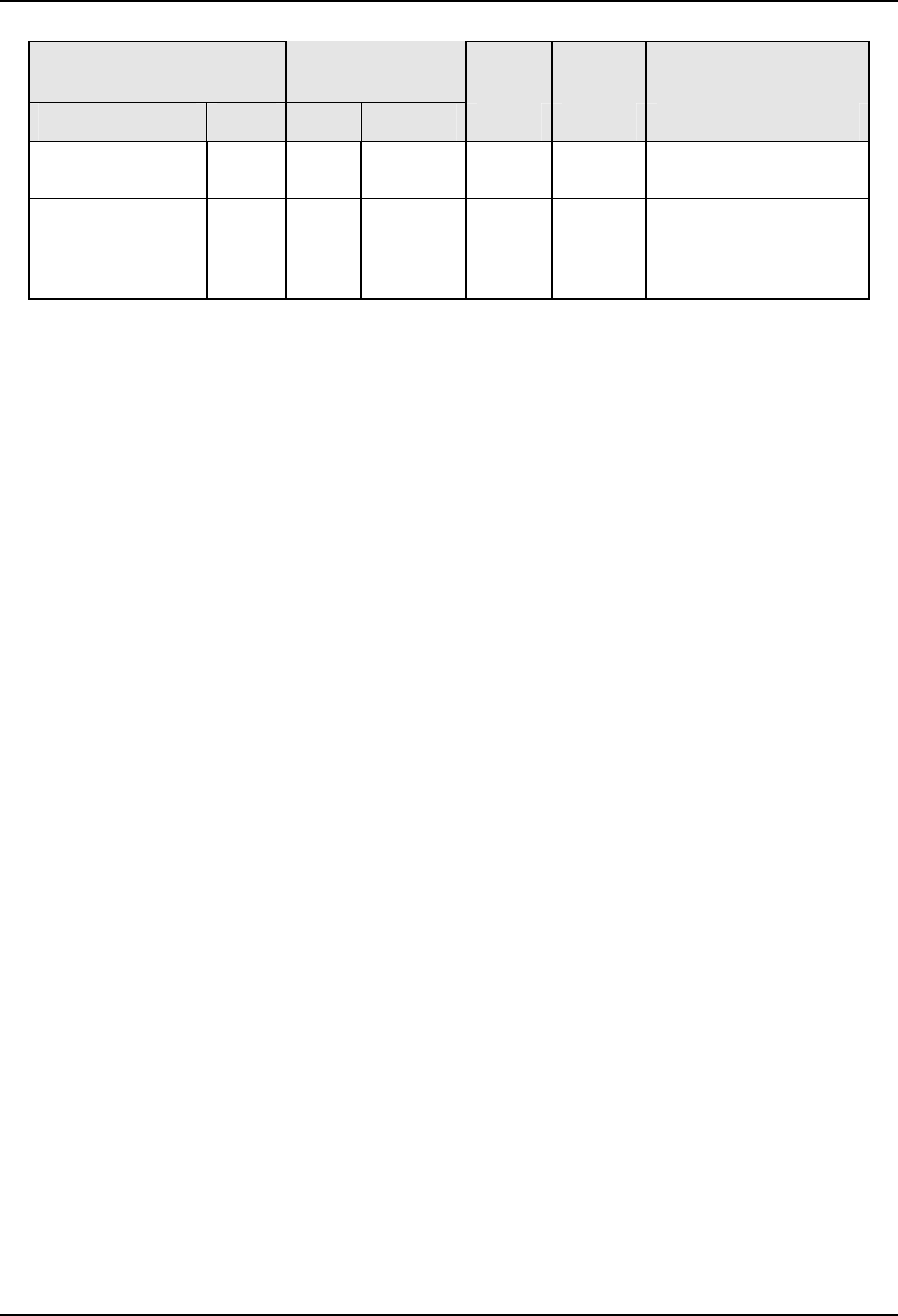
Modbus Read, Write and Override Parameters plus Exception Codes
Parameter
Register
Address
Data
Type
Access Data Range or
Enumerated Selection
Description ID Hex Decimal
Guaranteed
Soak #20
82 6052 24658 FP R/W 0 to 99.9 (0 = no soak)
Segment #20
PID SET
180 60B4 24756 INT R/W 0 = SET1
1 = SET2
2 = SET3
3 = SET4
380 UDC3500 Universal Digital Controller Product Manual March 2012
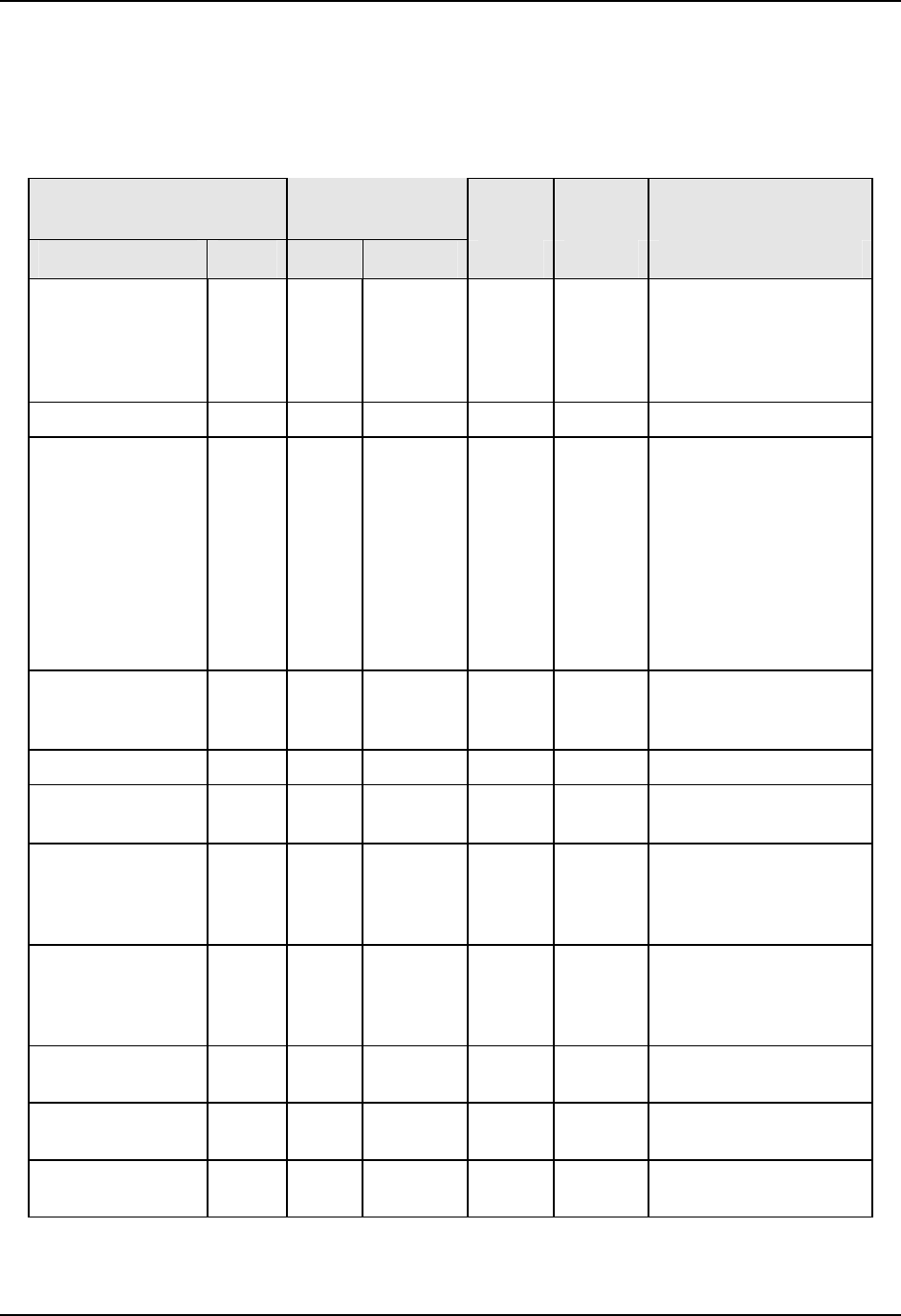
Modbus Read, Write and Override Parameters plus Exception Codes
10.7.6 Setpoint Program #4
Table 10-15 lists all the register addresses and ranges or selections for the function
parameters in Set-up Group Setpoint Program #4.
Table 10-15 Set-up Group – Setpoint Program #4
Parameter
Register
Address
Data
Type
Access Data Range or
Enumerated Selection
ID Hex Decimal Description
Setpoint Program
#4
136 6088 24712 INT R/W 0 = Disabled
1 = Enable 1
2 = Enable 2
3 = Enable 12
4 = Link 3 and 4
Start Segment # 125 607D 24701 FP R/W 1 to 20
End Segment
#(Soak)
137 6089 24713 INT R/W 0 = Soak 2
1 = Soak 4
2 = Soak 6
3 = Soak 8
4 = Soak 10
5 = Soak 12
6 = Soak 14
7 = Soak 16
8 = Soak 18
9 = Soak 20
Engineering Units
or Ramp
Segments
138 608A 24714 INT R/W 0 = HRS:MIN
1 = EU/Minute
2 = EU/Hour
Program Recycles 126 607E 24702 FP R/W 0 to 100
PV Hotstart 139 608B 24715 INT R/W 0 = Disabled
1 = Enabled
Segment #1
Ramp Time
85 6055 24661 FP R/W 99.59 (0-99
Hrs:0-59 Min) or
0 to 999
(Degrees/Minute)
Segment #1
PID SET
181 60B5 24757 INT R/W 0 = SET1
1 = SET2
2 = SET3
3 = SET4
Segment #2 Soak
Setpoint Value
86 6056 24662 FP R/W Within Setpoint Limits
Segment #2 Soak
Time
87 6057 24663 FP R/W 99.59 (0-99
Hrs:0-59 Min)
Guaranteed
Soak #2
115 6073 24691 FP R/W 0 to 99.9 (0 = no soak)
March 2012 UDC3500 Universal Digital Controller Product Manual 381
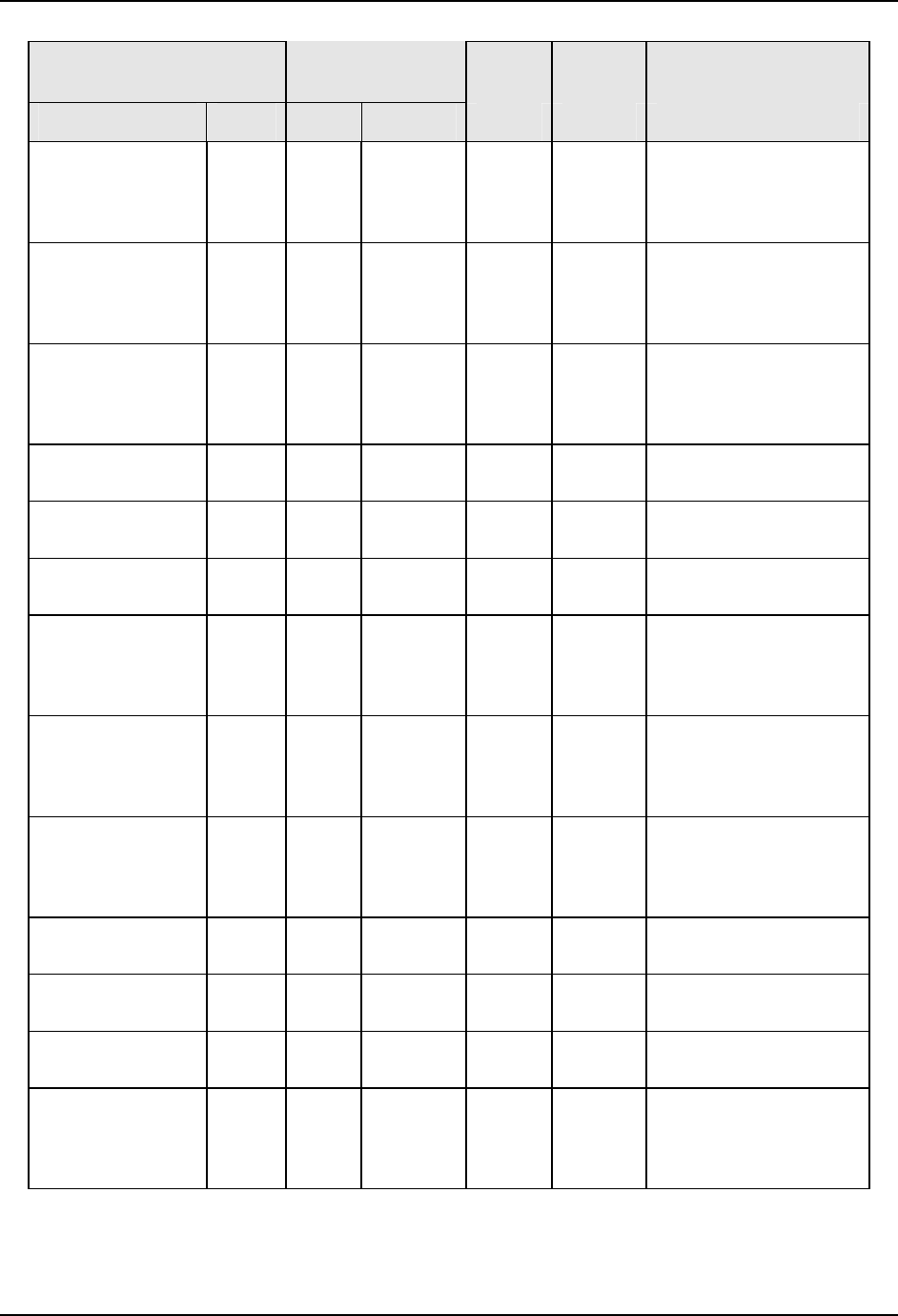
Modbus Read, Write and Override Parameters plus Exception Codes
382 UDC3500 Universal Digital Controller Product Manual March 2012
Parameter
Register
Address
Data
Type
Access Data Range or
Enumerated Selection
Description ID Hex Decimal
Segment #2
PID SET
182 60B6 24758 INT R/W 0 = SET1
1 = SET2
2 = SET3
3 = SET4
Segment #3
Ramp Time
88 6058 24664 FP R/W 99.59 (0-99
Hrs:0-59 Min) or
0 to 999
(Degrees/Minute)
Segment #3
PID SET
183 60B7 24759 INT R/W 0 = SET1
1 = SET2
2 = SET3
3 = SET4
Segment #4 Soak
Setpoint Value
89 6059 24665 FP R/W Within Setpoint Limits
Segment #4 Soak
Time
90 605A 24666 FP R/W 99.59 (0-99
Hrs:0-59 Min)
Guaranteed
Soak #4
116 6074 24692 FP R/W 0 to 99.9 (0 = no soak)
Segment #4
PID SET
184 60B8 24760 INT R/W 0 = SET1
1 = SET2
2 = SET3
3 = SET4
Segment #5
Ramp Time
91 605B 24667 FP R/W 99.59 (0-99
Hrs:0-59 Min) or
0 to 999
(Degrees/Minute)
Segment #5
PID SET
185 60B9 24761 INT R/W 0 = SET1
1 = SET2
2 = SET3
3 = SET4
Segment #6 Soak
Setpoint Value
92 605C 24668 FP R/W Within Setpoint Limits
Segment #6 Soak
Time
93 605D 24669 FP R/W 99.59 (0-99
Hrs:0-59 Min)
Guaranteed
Soak #6
117 6075 24693 FP R/W 0 to 99.9 (0 = no soak)
Segment #6
PID SET
186 60BA 24762 INT R/W 0 = SET1
1 = SET2
2 = SET3
3 = SET4
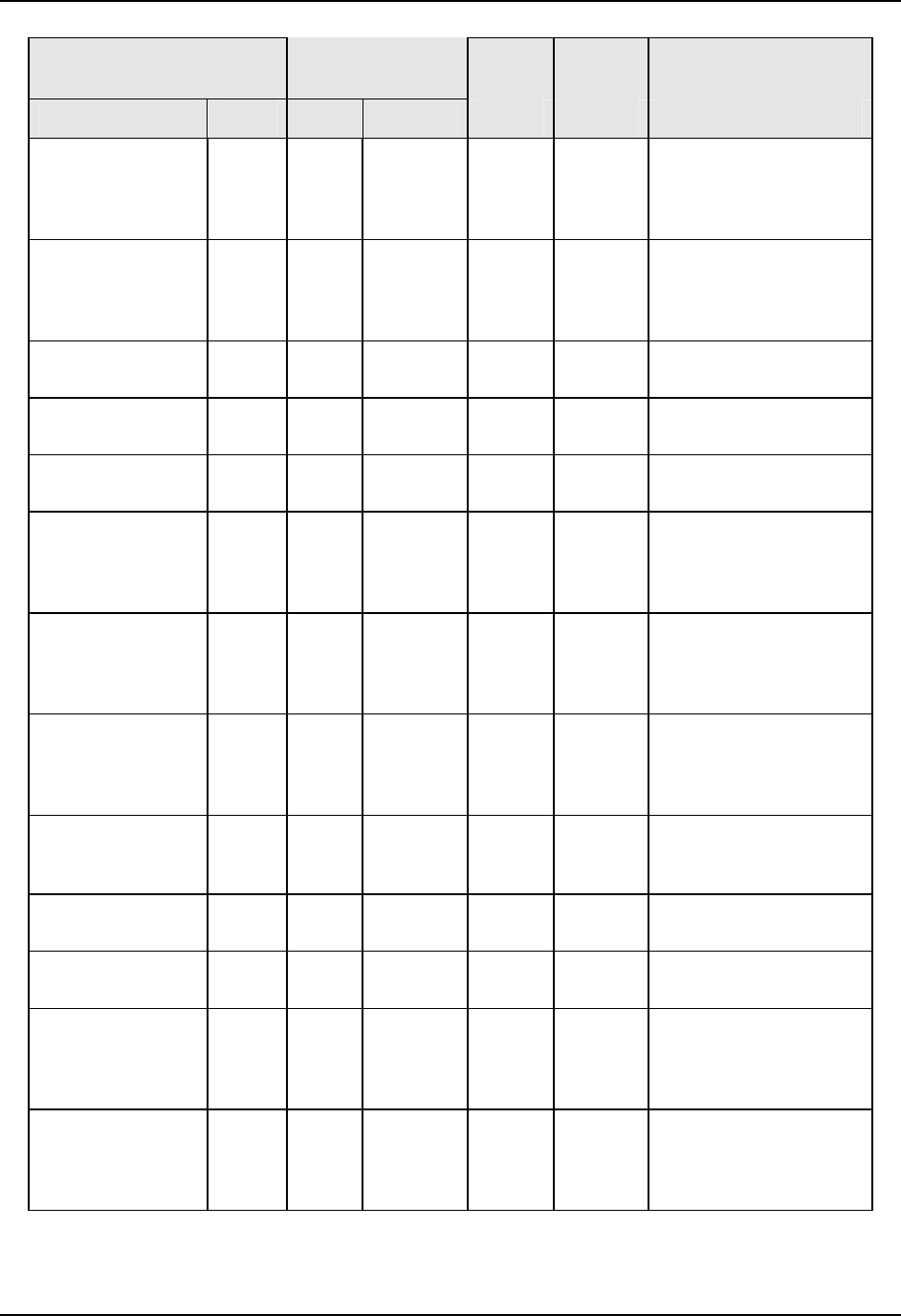
Modbus Read, Write and Override Parameters plus Exception Codes
March 2012 UDC3500 Universal Digital Controller Product Manual 383
Parameter
Register
Address
Data
Type
Access Data Range or
Enumerated Selection
Description ID Hex Decimal
Segment #7
Ramp Time
94 605E 24670 FP R/W 99.59 (0-99
Hrs:0-59 Min) or
0 to 999
(Degrees/Minute)
Segment #7
PID SET
187 60BB 24763 INT R/W 0 = SET1
1 = SET2
2 = SET3
3 = SET4
Segment #8 Soak
Setpoint Value
95 605F 24671 FP R/W Within Setpoint Limits
Segment #8 Soak
Time
96 6060 24672 FP R/W 99.59 (0-99
Hrs:0-59 Min)
Guaranteed
Soak #8
118 6076 24694 FP R/W 0 to 99.9 (0 = no soak)
Segment #8
PID SET
188 60BC 24764 INT R/W 0 = SET1
1 = SET2
2 = SET3
3 = SET4
Segment #9
Ramp Time
97 6061 24673 FP R/W 99.59 (0-99
Hrs:0-59 Min) or
0 to 999
(Degrees/Minute)
Segment #9
PID SET
189 60BD 24765 INT R/W 0 = SET1
1 = SET2
2 = SET3
3 = SET4
Segment #10
Soak Setpoint
Value
98 6062 24674 FP R/W Within Setpoint Limits
Segment #10
Soak Time
99 6063 24675 FP R/W 99.59 (0-99
Hrs:0-59 Min)
Guaranteed
Soak #10
119 6077 24695 FP R/W 0 to 99.9 (0 = no soak)
Segment #10
PID SET
190 60BE 24766 INT R/W 0 = SET1
1 = SET2
2 = SET3
3 = SET4
Segment #11
Ramp Time
100 6064 24676 FP R/W 99.59 (0-99
Hrs:0-59 Min) or
0 to 999
(Degrees/Minute)
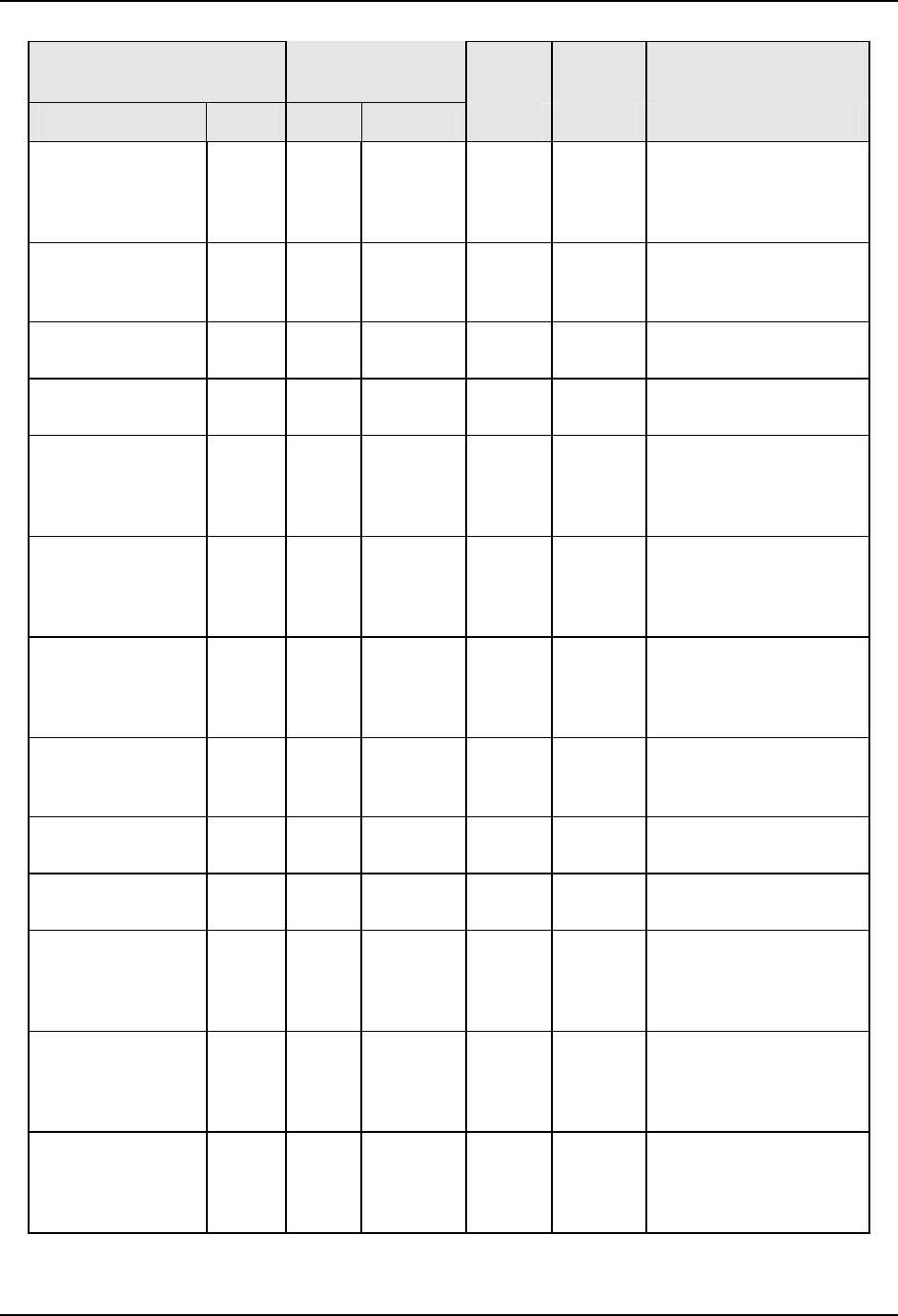
Modbus Read, Write and Override Parameters plus Exception Codes
384 UDC3500 Universal Digital Controller Product Manual March 2012
Parameter
Register
Address
Data
Type
Access Data Range or
Enumerated Selection
Description ID Hex Decimal
Segment #11
PID SET
191 60BF 24767 INT R/W 0 = SET1
1 = SET2
2 = SET3
3 = SET4
Segment #12
Soak Setpoint
Value
101 6065 24677 FP R/W Within Setpoint Limits
Segment #12
Soak Time
102 6066 24678 FP R/W 99.59 (0-99
Hrs:0-59 Min)
Guaranteed
Soak #12
120 6078 24696 FP R/W 0 to 99.9 (0 = no soak)
Segment #12
PID SET
192 60C0 24768 FP R/W 0 = SET1
1 = SET2
2 = SET3
3 = SET4
Segment #13
Ramp Time
103 6067 24679 FP R/W 99.59 (0-99
Hrs:0-59 Min) or
0 to 999
(Degrees/Minute)
Segment #13
PID SET
193 60C1 24769 INT R/W 0 = SET1
1 = SET2
2 = SET3
3 = SET4
Segment #14
Soak Setpoint
Value
104 6068 24680 FP R/W Within Setpoint Limits
Segment #14
Soak Time
105 6069 24681 FP R/W 99.59 (0-99
Hrs:0-59 Min)
Guaranteed
Soak #14
121 6079 24697 FP R/W 0 to 99.9 (0 = no soak)
Segment #14
PID SET
194 60C2 24770 INT R/W 0 = SET1
1 = SET2
2 = SET3
3 = SET4
Segment #15
Ramp Time
106 606A 24682 FP R/W 99.59 (0-99
Hrs:0-59 Min) or
0 to 999
(Degrees/Minute)
Segment #15
PID SET
195 60C3 24771 INT R/W 0 = SET1
1 = SET2
2 = SET3
3 = SET4
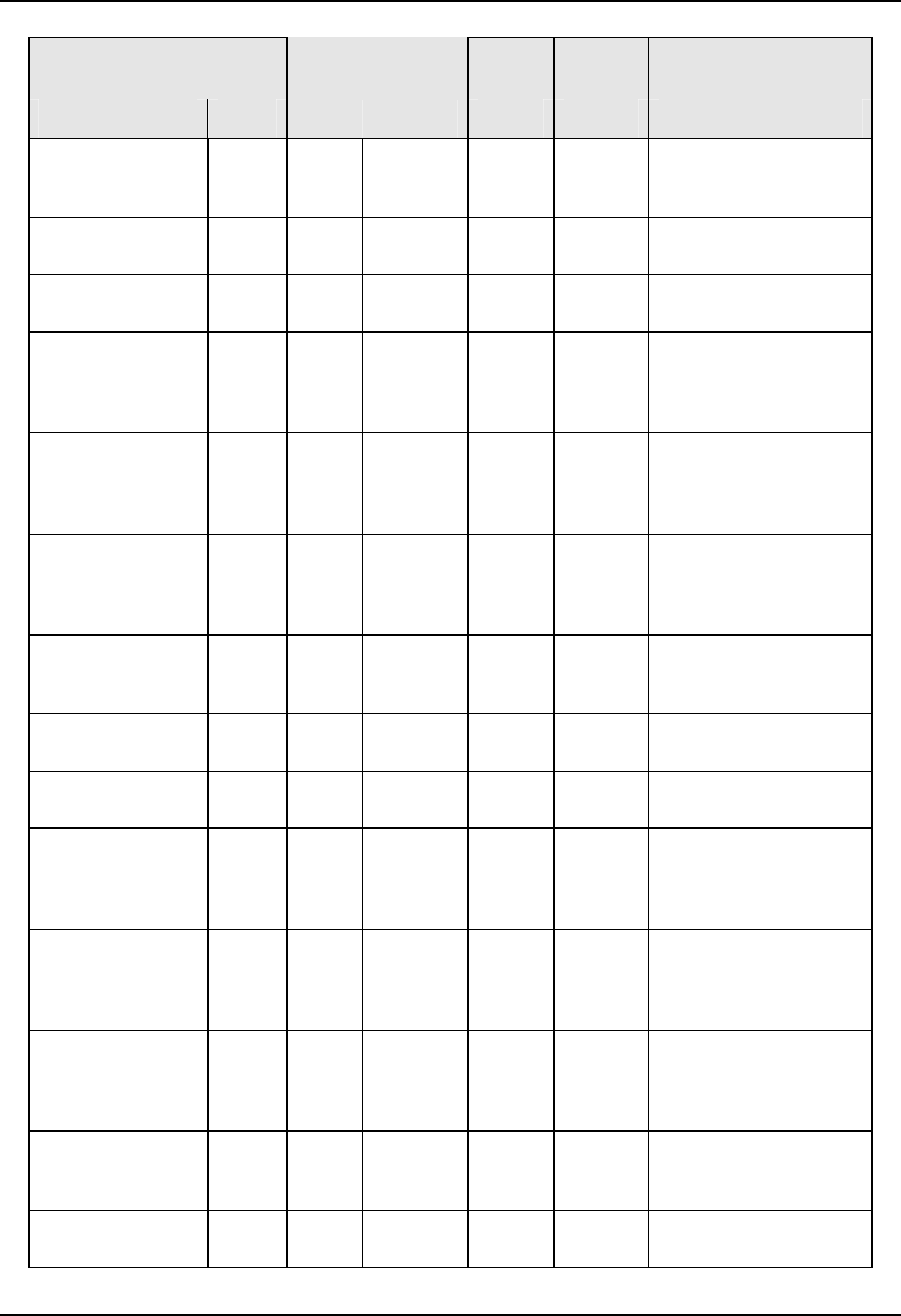
Modbus Read, Write and Override Parameters plus Exception Codes
March 2012 UDC3500 Universal Digital Controller Product Manual 385
Parameter
Register
Address
Data
Type
Access Data Range or
Enumerated Selection
Description ID Hex Decimal
Segment #16
Soak Setpoint
Value
107 606B 24683 FP R/W Within Setpoint Limits
Segment #16
Soak Time
108 606C 24684 FP R/W 99.59 (0-99
Hrs:0-59 Min)
Guaranteed
Soak #16
122 607A 24698 FP R/W 0 to 99.9 (0 = no soak)
Segment #16
PID SET
196 60C4 24772 INT R/W 0 = SET1
1 = SET2
2 = SET3
3 = SET4
Segment #17
Ramp Time
109 606D 24685 FP R/W 99.59 (0-99
Hrs:0-59 Min) or
0 to 999
(Degrees/Minute)
Segment #17
PID SET
197 60C5 24773 INT R/W 0 = SET1
1 = SET2
2 = SET3
3 = SET4
Segment #18
Soak Setpoint
Value
110 606E 24686 FP R/W Within Setpoint Limits
Segment #18
Soak Time
111 606F 24687 FP R/W 99.59 (0-99
Hrs:0-59 Min)
Guaranteed
Soak #18
123 607B 24699 FP R/W 0 to 99.9 (0 = no soak)
Segment #18
PID SET
198 60C6 24774 INT R/W 0 = SET1
1 = SET2
2 = SET3
3 = SET4
Segment #19
Ramp Time
112 6070 24688 FP R/W 99.59 (0-99
Hrs:0-59 Min) or
0 to 999
(Degrees/Minute)
Segment #19
PID SET
199 60C7 24775 INT R/W 0 = SET1
1 = SET2
2 = SET3
3 = SET4
Segment #20
Soak Setpoint
Value
113 6071 24689 FP R/W Within Setpoint Limits
Segment #20
Soak Time
114 6072 24690 FP R/W 99.59 (0-99
Hrs:0-59 Min)
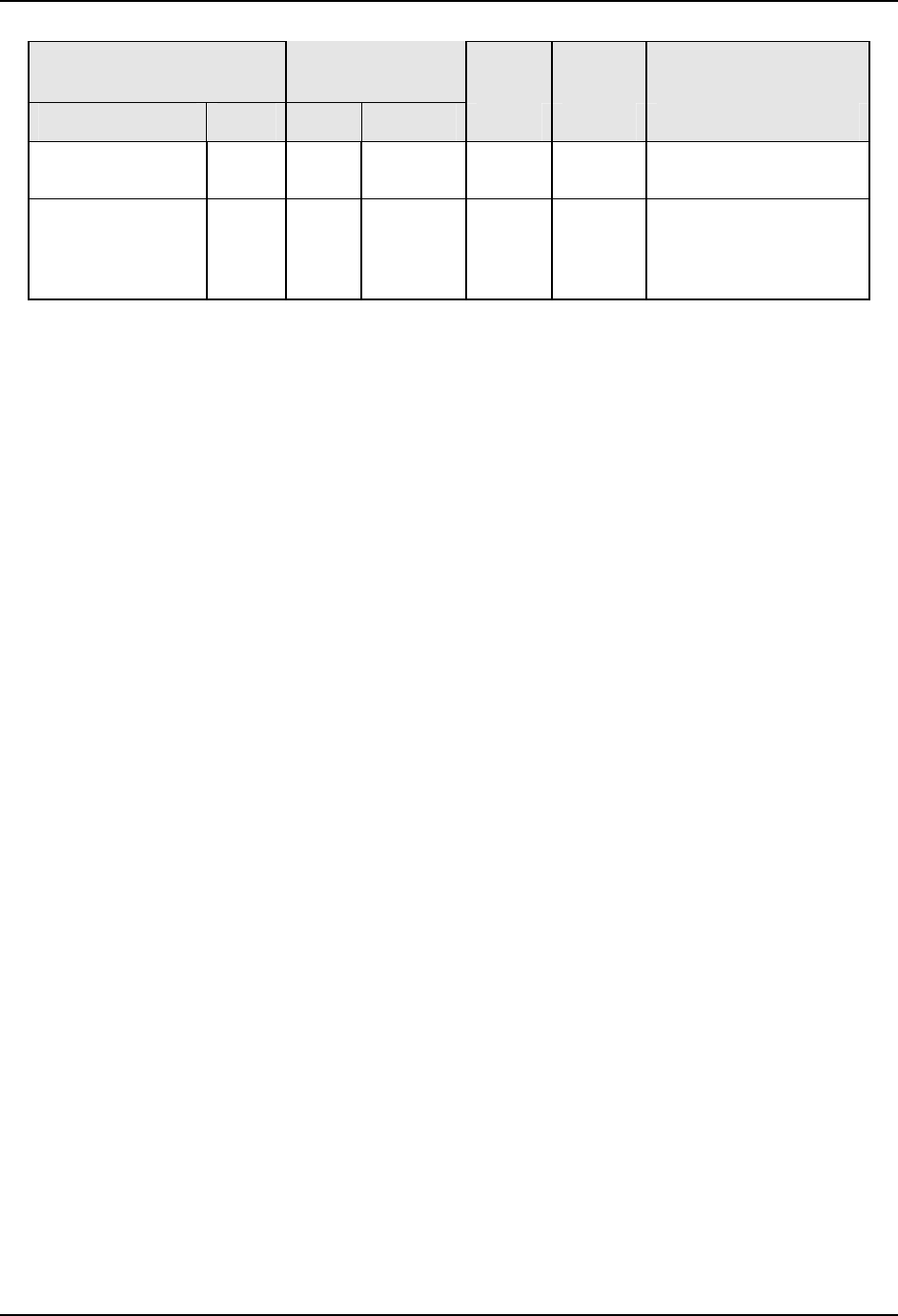
Modbus Read, Write and Override Parameters plus Exception Codes
386 UDC3500 Universal Digital Controller Product Manual March 2012
Parameter
Register
Address
Data
Type
Access Data Range or
Enumerated Selection
Description ID Hex Decimal
Guaranteed
Soak #20
124 607C 24700 FP R/W 0 to 99.9 (0 = no soak)
Segment #20
PID SET
200 60C8 24776 INT R/W 0 = SET1
1 = SET2
2 = SET3
3 = SET4
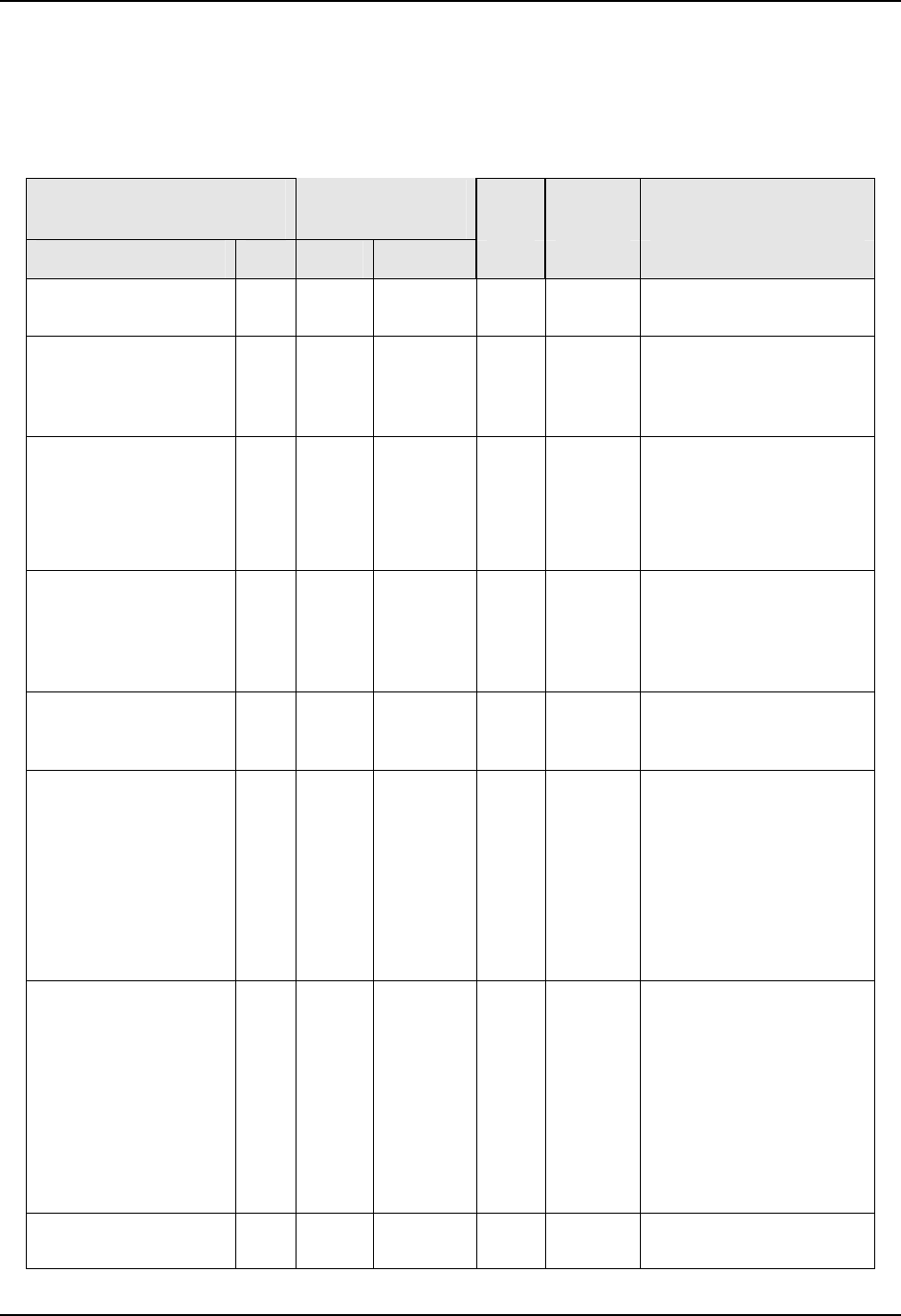
Modbus Read, Write and Override Parameters plus Exception Codes
10.7.7 Accutune
Table 10-16 lists all the register addresses and ranges or selections for the function
parameters in Set-up Group Adaptive Tune.
Table 10-16 Set-up Group – Adaptive Tune
Parameter
Register
Address
Data
Type
Access Data Range or
Enumerated Selection
ID Hex Decimal Description
Fuzzy Overshoot
Suppression
193 00C1 193 INT R/W 0 = Disabled
1 = Enabled
Fuzzy Overshoot
Suppression Loop2
193 01C1 449 INT R/W 0 = Disabled
1 = Enable 1
2 = Enable 2
3 = Enable 12
Accutune Enable
Loop 1
152 0098 152 INT R/W 0 = Accutune Disabled
1 = Limit Tune
2 = SP Tune
3 = Tune + SP
4 = SP Tune + PV
Accutune Enable
Loop2
152 0198 408 Int R/W 0 = Accutune Disabled
1 = Limit Tune
2 = SP Tune
3 = Tune + SP
4 = SP Tune + PV
Accutune Duplex
selection
225 00E1 225 INT R/W 0 = Manual
1 = Auto
2 = Disable (blend)
Accutune Error (Read
only) Loop1
151 0097 151 INT R/W 0 = None
1 = Output Limits
2 = PV Change
Insufficient
3 = Process
Identification Failed
4 = Accutune Aborted
5 = Running
6 = Setpoint Error
Accutune Error (Read
only) Loop2
151 0197 407 INT R/W 0 = None
1 = Output > or < Output
Limits or Man Step=0
2 = PV Change
Insufficient
3 = Process
Identification Failed
4 = Accutune Aborted
5 = Running
6 = Setpoint Error
Tune Criteria 139 008B 139 INT R/W 0 = Normal
1 = Fast
March 2012 UDC3500 Universal Digital Controller Product Manual 387
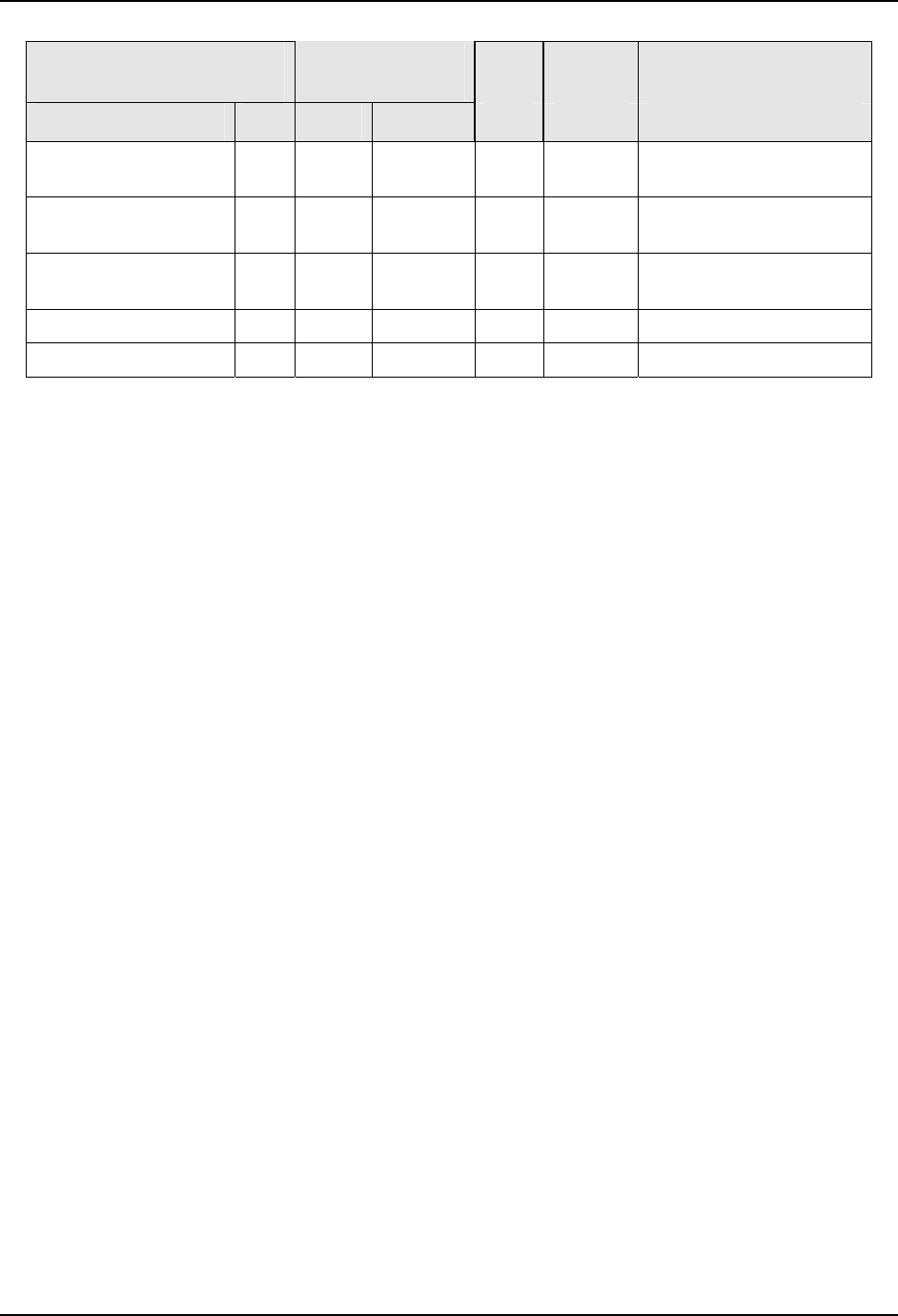
Modbus Read, Write and Override Parameters plus Exception Codes
388 UDC3500 Universal Digital Controller Product Manual March 2012
Parameter
Register
Address
Data
Type
Access Data Range or
Enumerated Selection
Description ID Hex Decimal
Tune Criteria Loop2 139 018B 395 INT R/W 0 = Normal
1 = Fast
ADT 1 Range
Setpoint Change
102 0066 102 FP R/W 5 – 15%
ADT 2 Range
Setpoint Change
102 0166 358 FP R/W 5 – 15%
KPG1 (Process Gain) 103 0067 103 FP R/W 0.10 to10.00
KPG2(Process Gain) 103 0167 359 FP R/W 0.10 to10.00
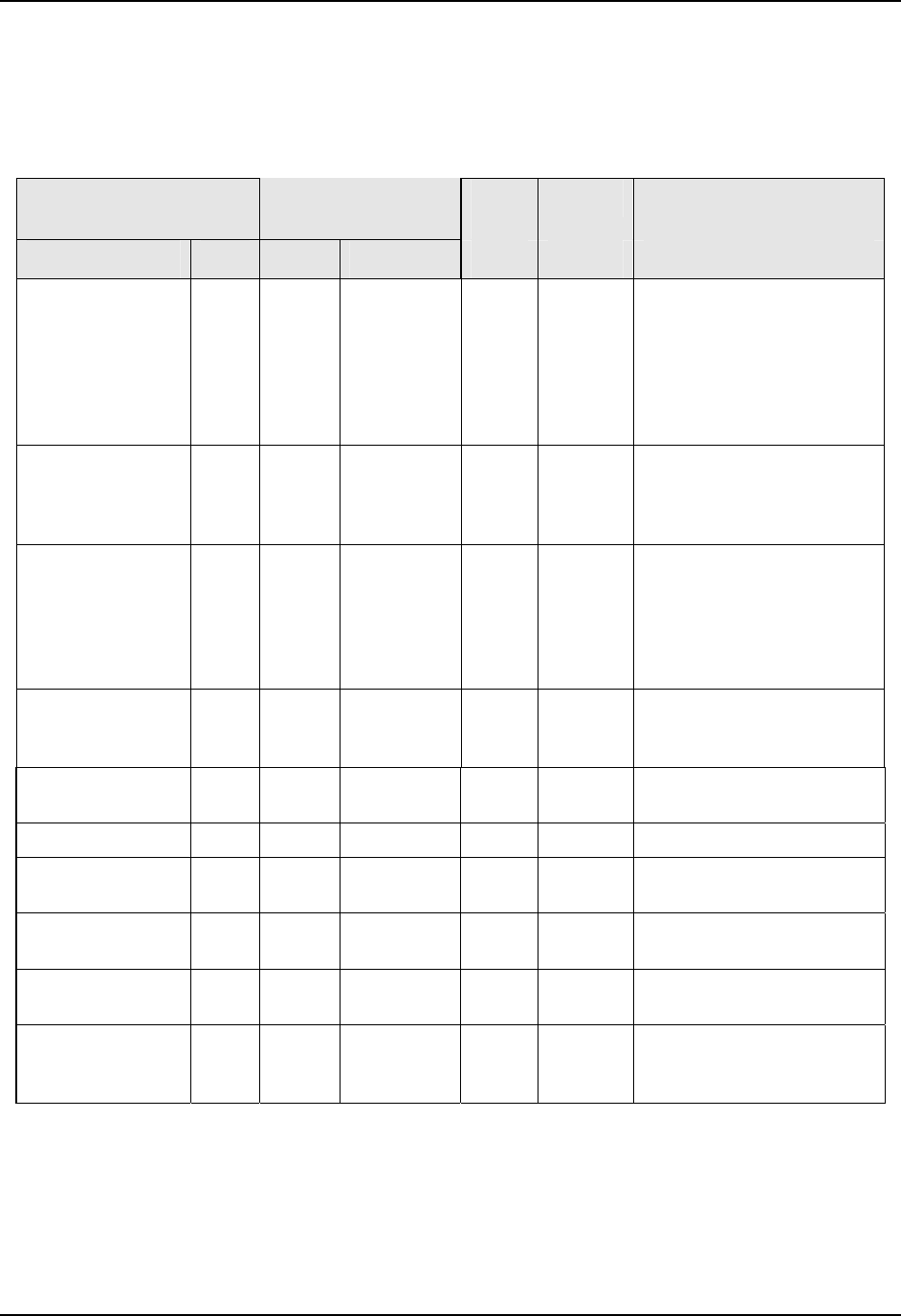
Modbus Read, Write and Override Parameters plus Exception Codes
10.7.8 Algorithm
Table 10-17 lists all the register addresses and ranges or selections for the function
parameters in Set-up Group Algorithm.
Table 10-17 Set-up Group – Algorithm
Parameter
Register
Address
Data
Type
Access Data Range or
Enumerated Selection
ID Hex Decimal Description
Control Algorithm
Selection
(Selection here
will affect ID code
160 in Output
Algorithms.)
128 0080 128 INT R/W 0 = ON/OFF
1 = PID-A
2 = PID-B
3 = PD-A with Manual
Reset
4 = Three Position Step
5 = Disable
Control Algorithm
Selection Loop2
128 0180 384 INT R/W 0 = unused
1 = PID-A
2 = PID-B
3 = PD with Manual Reset
PID Loops 168 01A8 424 INT R/W 0 = Loop 1 Only
1 = Loop 2 Enabled
2 = Loop 1 & 2 are
cascaded with Loop 2 as
primary (No Output) Loop
1 is secondary
Output Override 136 0188 392 INT R/W 0 = Disabled
1 = Hi Select
2 = Lo Select
Timer 216 00D8 216 INT R/W 0 = Disable
1 = Enable
Period 99 0063 099 FP R/W 00.00 TO 99.59
Start (Initiation) 217 00D9 217 INT R/W 0 = Key (Run/Hold Key)
1 = Alarm 2
Time Display
(Selection)
218 00DA 218 INT R/W 0 = Time Remaining
1 = Elapsed Time
Timer Reset 214 00D6 214 INT R/W 0 = Key (Run/Hold Key)
1 = AL1 (Alarm 1 or Key)
Timer Increment 215 00D7 215 INT R/W 0 = Minutes (Counts
hr/minute)
1 = Sec (Counts min/sec)
March 2012 UDC3500 Universal Digital Controller Product Manual 389
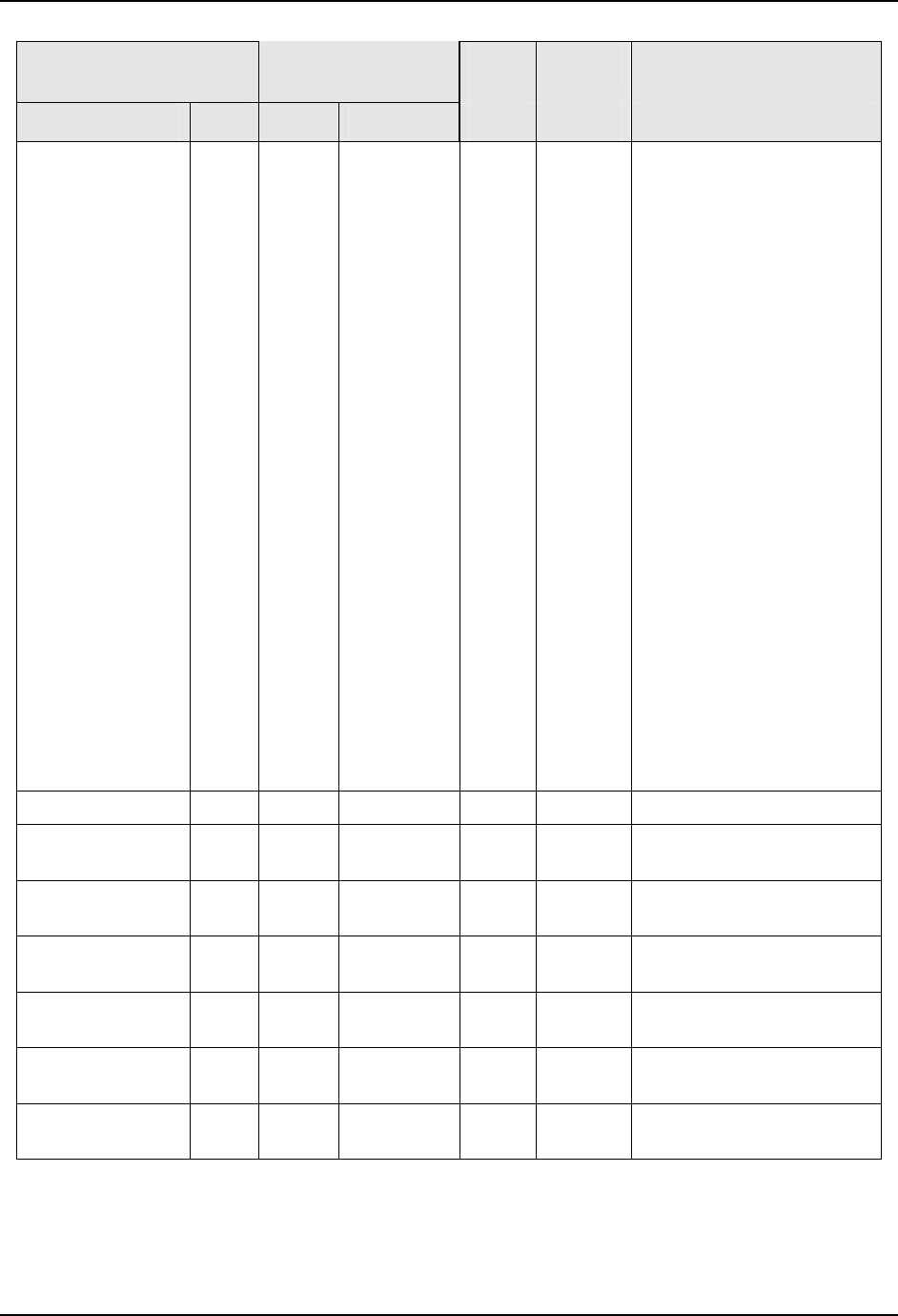
Modbus Read, Write and Override Parameters plus Exception Codes
390 UDC3500 Universal Digital Controller Product Manual March 2012
Parameter
Register
Address
Data
Type
Access Data Range or
Enumerated Selection
Description ID Hex Decimal
Input
Algorithm 1
† Input source
selected via ID
205, 206, 207.
204 00CC 204 INT R/W 0 = None
1 = Weighted Average
(LSP) †
2 = Feedforward –
Summer †
3 = Feedforward –
Multiplier †
4 = Relative Humidity
5 = Summer (with ratio
and bias) †
6 = Input High Select (with
ratio and bias) †
7 = Input low Select (with
ratio and bias) †
8 = General Math A
(sq. rt., mult., div.) †
9 = General Math B
(sq. rt., mult.) †
10 = General Math C
(mult., div.) †
11 = General Math D
(mult.) †
12 = Carbon A
13 = Carbon B
14 = Carbon C
15 = Carbon D
16 = Carbon FCC
17 = Dewpoint
18 = Oxygen
Constant K 45 002D 045 FP R/W 0.001 to 1000
Calc High 31 001F 031 FP R/W –999.0 to +9999
in Engineering Units
Calc Low 32 0020 032 FP R/W –999.0 to +9999
in Engineering Units
PV Range Low 54 0036 054 FP RD –999.0 to +9999
in Engineering Units
PV Range High 55 0037 055 FP RD –999.0 to +9999
in Engineering Units
PV Range Low
Loop2
54 0136 310 FP RD –999.0 to +9999
in Engineering Units
PV Range High
Loop2
55 0137 311 FP RD –999.0 to +9999
in Engineering Units
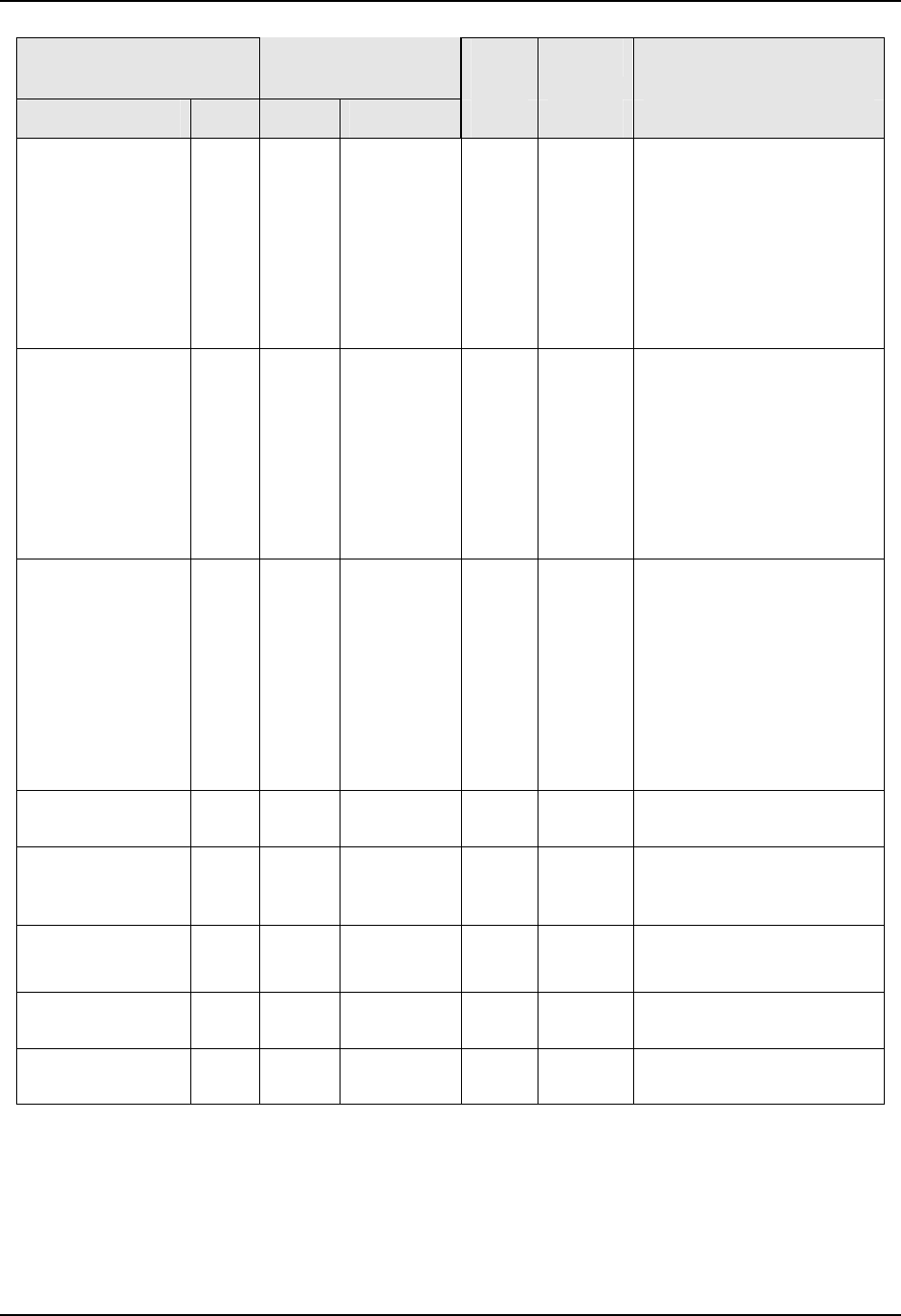
Modbus Read, Write and Override Parameters plus Exception Codes
March 2012 UDC3500 Universal Digital Controller Product Manual 391
Parameter
Register
Address
Data
Type
Access Data Range or
Enumerated Selection
Description ID Hex Decimal
Input Algorithm 1
Input A Selection
(used with ID 204
math
calculations)
205 00CD 205 INT R/W 0 = Input 1
1 = Input 2
2 = Input 3
3 = Input 4
4 = Input 5
5 = Loop 1 Output
6 = Loop 2 Output
7 = Input Algorithm 1
8 = Input Algorithm 2
Input Algorithm 1
Input B Selection
(used with ID 204
math
calculations)
206 00CE 206 INT R/W 0 = Input 1
1 = Input 2
2 = Input 3
3 = Input 4
4 = Input 5
5 = Loop 1 Output
6 = Loop 2 Output
7 = Input Algorithm 1
8 = Input Algorithm 2
Input Algorithm 1
Input C Selection
(used with ID 204
math
calculations)
207 00CF 207 INT R/W 0 = None
1 = Input 1
2 = Input 2
3 = Input 3
4 = Input 4
5 = Input 5
6 = Loop 1 Output
7 = Loop 2 Output
8 = Input 1 Algorithm
9 = Input 2 Algorithm
Algorithm1 bias 92 005C 092 FP R/W -999.0 to 9999 in
Engineering Units
Percent Carbon
Monoxide
203 00CB 203 INT R/W 0 = Manual
1 = On Line (via Input 3
only)
Percent Carbon
Monoxide Value
46
002E 046 FP R/W 0.02 to 0.350
Atmospheric
Pressure
24 0018 024 FP R/W 590 to 760
Percent
Hydrogen
34 0022 034 FP R/W 1 to 99 (% H2)
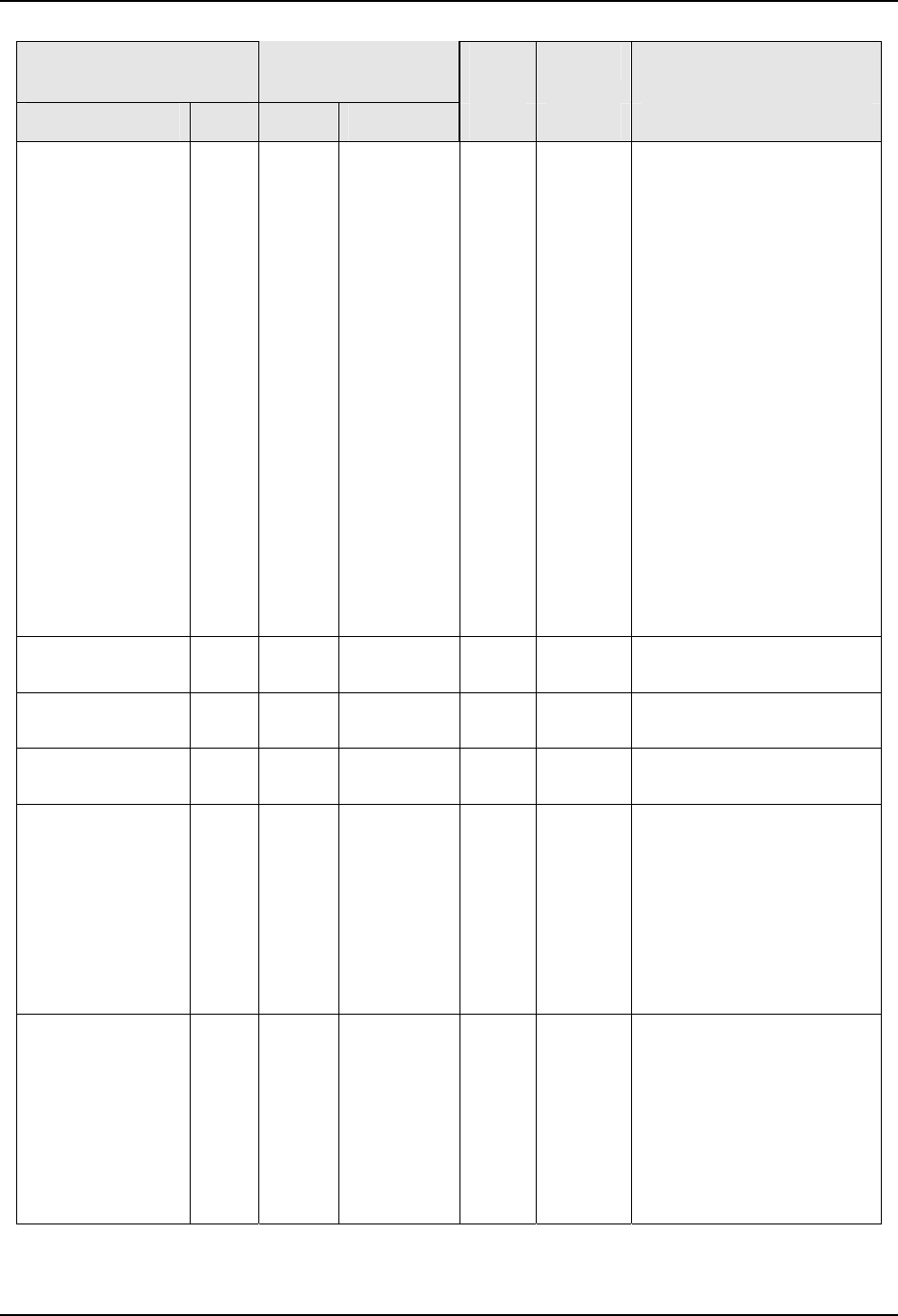
Modbus Read, Write and Override Parameters plus Exception Codes
392 UDC3500 Universal Digital Controller Product Manual March 2012
Parameter
Register
Address
Data
Type
Access Data Range or
Enumerated Selection
Description ID Hex Decimal
Input
Algorithm 2
† Input source
selected via ID
210, 211, 212.
209 00D1 209 INT R/W 0 = None
1 = Weighted Average
(LSP) †
2 = Feedforward –
Summer †
3 = Feedforward –
Multiplier †
4 = unused
5 = A-B/C
6 = Input High Select (with
ratio and bias) †
7 = Input low Select (with
ratio and bias) †
8 = General Math A
(sq. rt., mult., div.) †
9 = General Math B
(sq. rt., mult.) †
10 = General Math C
(mult., div.) †
11 = General Math D
(mult.) †
12 = Dewpoint
Constant K
Algorithm 2
47 002F 047 FP R/W 0.001 to 1000
Calc High
Algorithm 2
51 0033 051 FP R/W –999.0 to +9999
in Engineering Units
Calc Low
Algorithm 2
52 0034 052 FP R/W –999.0 to +9999
in Engineering Units
Input Algorithm 2
Input A Selection
(used with ID 209
math
calculations)
210 00D2 210 INT R/W 0 = Input 1
1 = Input 2
2 = Input 3
3 = Input 4
4 = Input 5
5 = Loop 1 Output
6 = Loop 2 Output
7 = Input Algorithm 1
8 = Input Algorithm 2
Input Algorithm 2
Input B Selection
(used with ID 209
math
calculations)
211 00D3 211 INT R/W 0 = Input 1
1 = Input 2
2 = Input 3
3 = Input 4
4 = Input 5
5 = Loop 1 Output
6 = Loop 2 Output
7 = Input Algorithm 1
8 = Input Algorithm 2
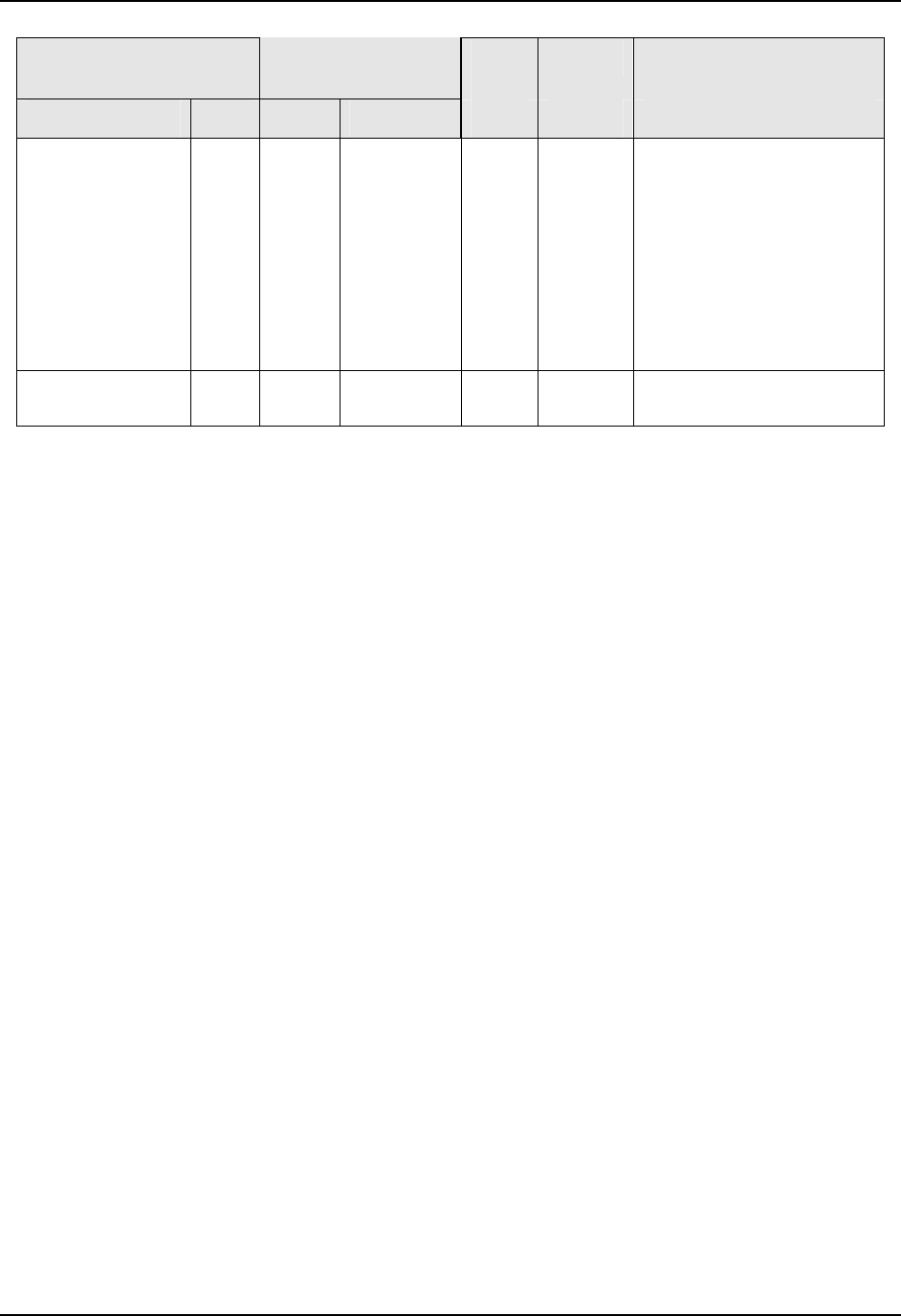
Modbus Read, Write and Override Parameters plus Exception Codes
March 2012 UDC3500 Universal Digital Controller Product Manual 393
Parameter
Register
Address
Data
Type
Access Data Range or
Enumerated Selection
Description ID Hex Decimal
Input Algorithm 2
Input C Selection
(used with ID 209
math
calculations)
212 00D4 212 INT R/W 0 = None
1 = Input 1
2 = Input 2
3 = Input 3
4 = Input 4
5 = Input 5
6 = Loop 1 Output
7 = Loop 2 Output
8 = Input 1 Algorithm
9 = Input 2 Algorithm
Algorithm2Bias 93 005D 93 FP R/W -999.0 to 9999 in
Engineering Units
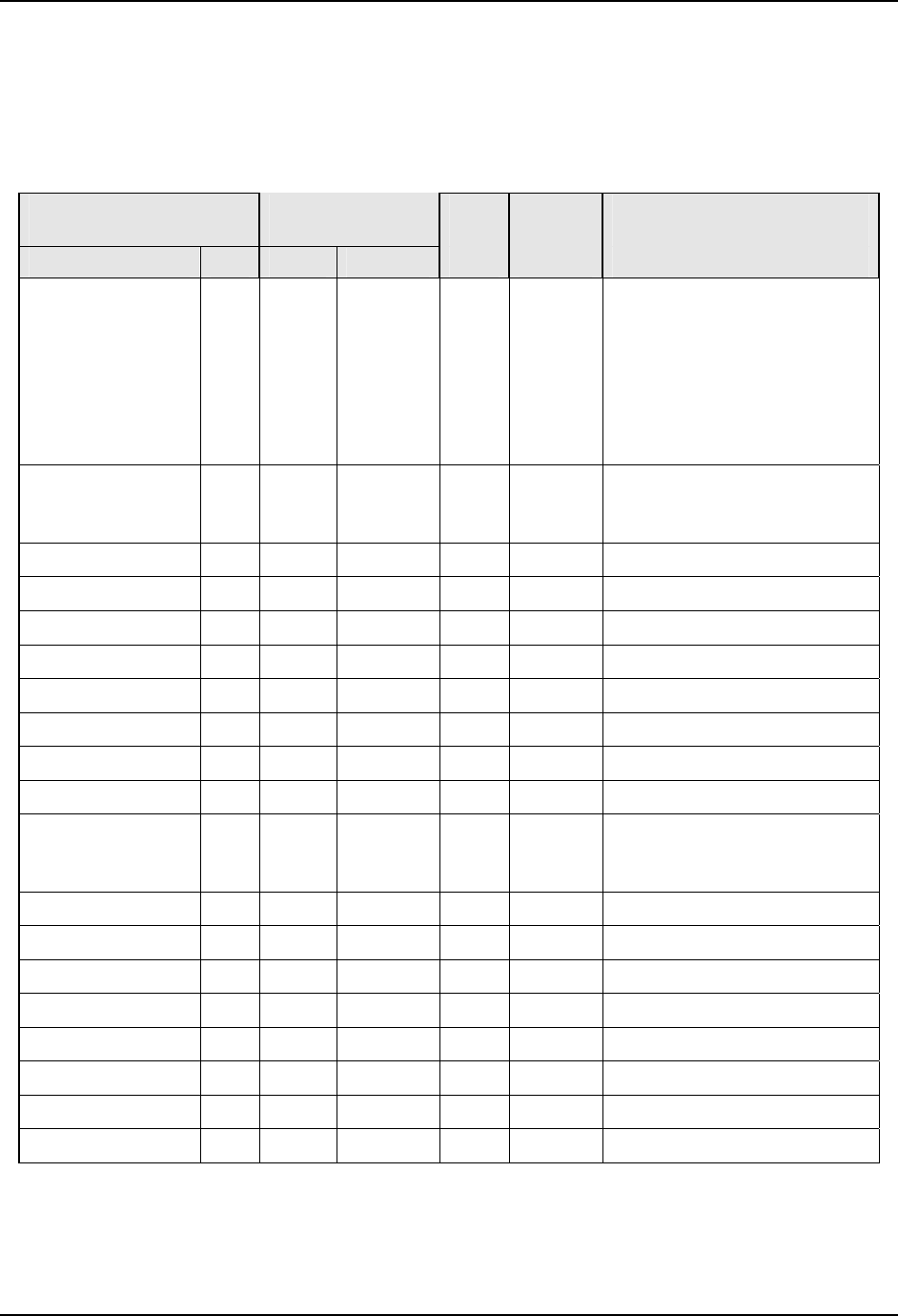
Modbus Read, Write and Override Parameters plus Exception Codes
10.7.9 Math
Table 10-18 lists all the register addresses and ranges or selections for the function
parameters in Set-up Group Math.
Table 10-18 Set-up Group – Math
Register
Address
Data
Type
Access Data Range or
Enumerated Selection
Parameter
ID Hex Decimal Description
8-Segment
Characterizer 1
198 00C6 198 INT R/W 0 = Disable
1 = Input 1
2 = Input 2
3 = Input 3
4 = Input 4
5 = Input 5
6 = Loop 1 – Output
7 = Loop 2 – Output
X0 Input to 8-
Segment
Characterizer 1
26 401A 16410 FP R/W 0.00 to 99.99 %
X1 Input-Char1 27 401B 16411 FP R/W 0.00 to 99.99 %
X2 Input-Char1 28 401C 16412 FP R/W 0.00 to 99.99 %
X3 Input-Char1 29 401D 16413 FP R/W 0.00 to 99.99 %
X4 Input-Char1 30 401E 16414 FP R/W 0.00 to 99.99 %
X5 Input-Char1 31 401F 16415 FP R/W 0.00 to 99.99 %
X6 Input-Char1 32 4020 16416 FP R/W 0.00 to 99.99 %
X7 Input-Char1 33 4021 16417 FP R/W 0.00 to 99.99 %
X8 Input-Char1 34 4022 16418 FP R/W 0.00 to 99.99 %
Y0 Output from 8-
Segment
Characterizer 1
35 4023 16419 FP R/W 0.00 to 99.99 %
Y1 Input-Char1 36 4024 16420 FP R/W 0.00 to 99.99 %
Y2 Input-Char1 37 4025 16421 FP R/W 0.00 to 99.99 %
Y3 Input-Char1 38 4026 16422 FP R/W 0.00 to 99.99 %
Y4 Input-Char1 39 4027 16423 FP R/W 0.00 to 99.99 %
Y5 Input-Char1 40 4028 16424 FP R/W 0.00 to 99.99 %
Y6 Input-Char1 41 4029 16425 FP R/W 0.00 to 99.99 %
Y7 Input-Char1 42 402A 16426 FP R/W 0.00 to 99.99 %
Y8 Input-Char1 43 402B 16427 FP R/W 0.00 to 99.99 %
394 UDC3500 Universal Digital Controller Product Manual March 2012
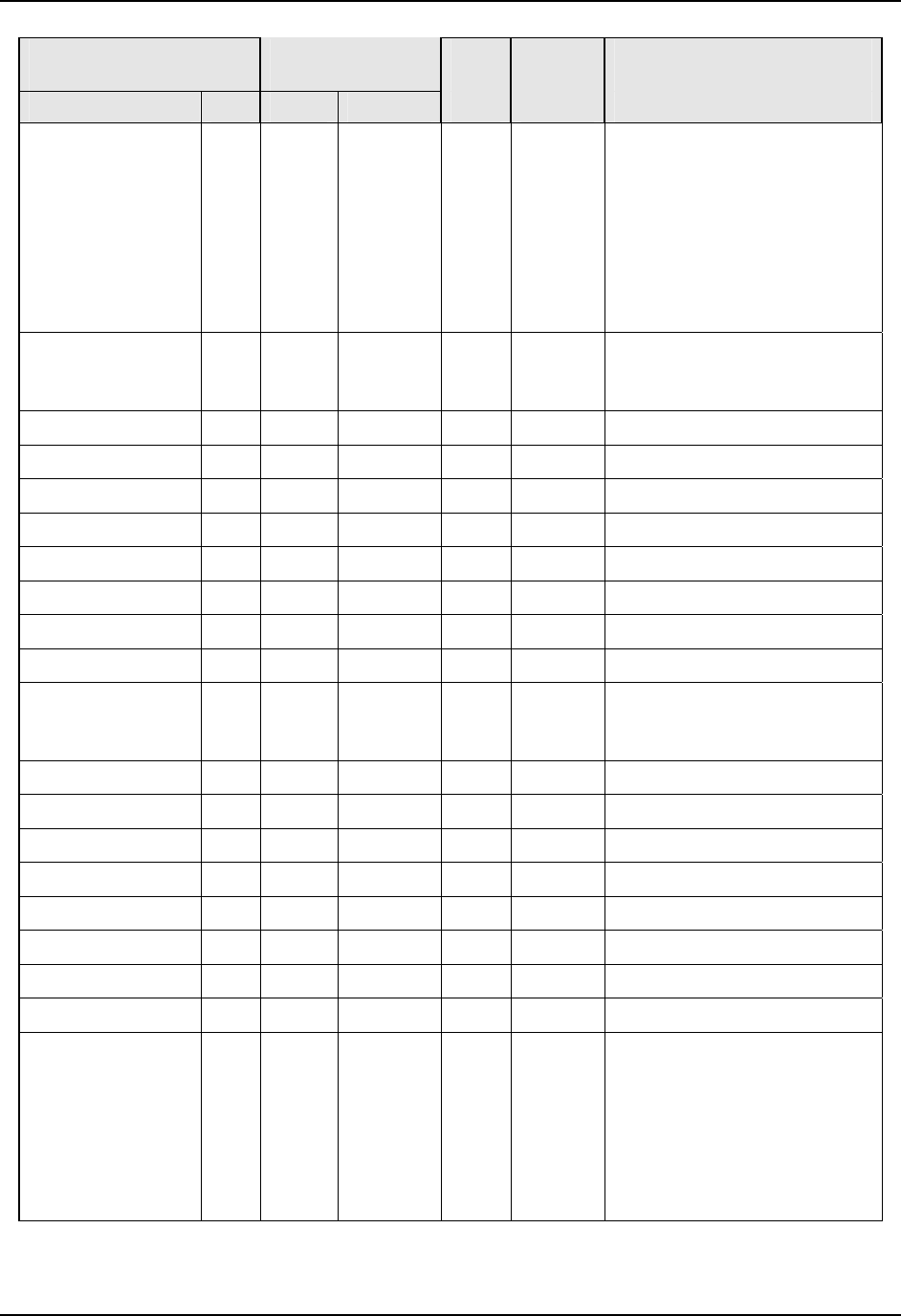
Modbus Read, Write and Override Parameters plus Exception Codes
March 2012 UDC3500 Universal Digital Controller Product Manual 395
Parameter
Register
Address
Data
Type
Access Data Range or
Enumerated Selection
Description ID Hex Decimal
8-Segment
Characterizer 2
199 00C7 199 FP R/W 0 = Disable
1 = Input 1
2 = Input 2
3 = Input 3
4 = Input 4
5 = Input 5
6 = Loop 1 – Output
7 = Loop 2 – Output
8 = LINK
X0 Input to 8-
Segment
Characterizer 2
45 402D 16429 FP R/W 0.00 to 99.99 %
X1 Input-Char2 46 402E 16430 FP R/W 0.00 to 99.99 %
X2 Input-Char2 47 402F 16431 FP R/W 0.00 to 99.99 %
X3 Input-Char2 48 4030 16432 FP R/W 0.00 to 99.99 %
X4 Input-Char2 49 4031 16433 FP R/W 0.00 to 99.99 %
X5 Input-Char2 50 4032 16434 FP R/W 0.00 to 99.99 %
X6 Input-Char2 51 4033 16435 FP R/W 0.00 to 99.99 %
X7 Input-Char2 52 4034 16436 FP R/W 0.00 to 99.99 %
X8 Input-Char2 53 4035 16437 FP R/W 0.00 to 99.99 %
Y0 Output from 8-
Segment
Characterizer 2
54 4036 16438 FP R/W 0.00 to 99.99 %
Y1 Output-Char2 55 4037 16439 FP R/W 0.00 to 99.99 %
Y2 Output-Char2 56 4038 16440 FP R/W 0.00 to 99.99 %
Y3 Output-Char2 57 4039 16441 FP R/W 0.00 to 99.99 %
Y4 Output-Char2 58 403A 16442 FP R/W 0.00 to 99.99 %
Y5 Output-Char2 59 403B 16443 FP R/W 0.00 to 99.99 %
Y6 Output-Char2 60 403C 16444 FP R/W 0.00 to 99.99 %
Y7 Output-Char2 61 403D 16445 FP R/W 0.00 to 99.99 %
Y8 Output-Char2 62 403E 16446 FP R/W 0.00 to 99.99 %
Totalizer 194 00C2 194 INT R/W 0 = Disabled
1 = Input 1
2 = Input 2
3 = Input 3
4 = Input 4
5 = Input 5
6 = Input Algorithm 1
7 = Input Algorithm 2
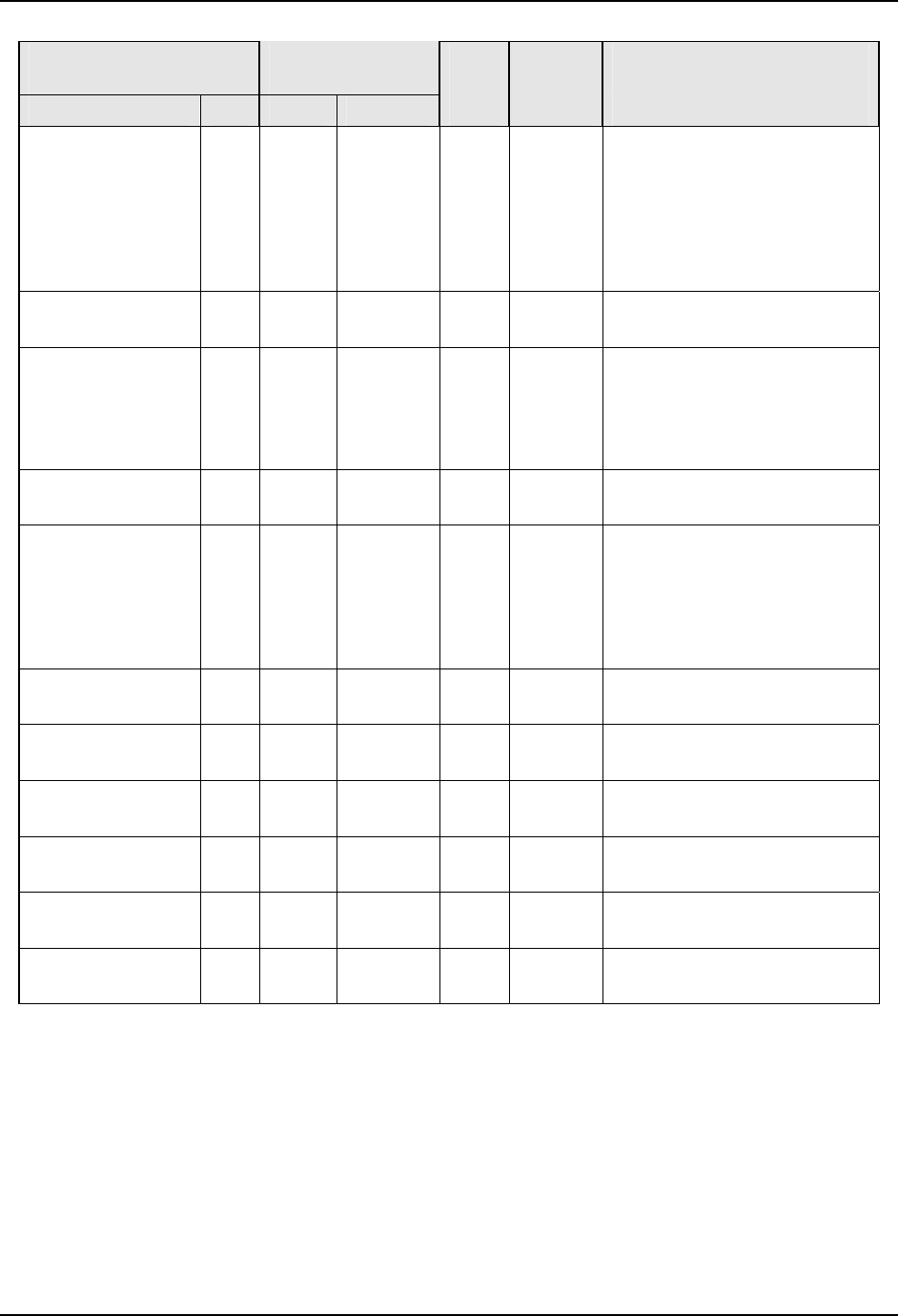
Modbus Read, Write and Override Parameters plus Exception Codes
396 UDC3500 Universal Digital Controller Product Manual March 2012
Parameter
Register
Address
Data
Type
Access Data Range or
Enumerated Selection
Description ID Hex Decimal
Totalizer Scale
Factor
195 00C3 195 INT R/W 0 = 10^0
1 = 10^1
2 = 10^2
3 = 10^3
4 = 10^4
5 = 10^5
6 = 10^6
Totalizer Reset
Lock
196 00C4 196 INT R/W 0 = Unlocked
1 = Locked
Totalizer
Integration Rate
197 00C5 197 INT R/W 0 = Second
1 = Minute
2 = Hour
3 = Day
4 = Million/Day
Totalizer Reset 177 00B1 177 INT R/W 0 = No
1 = Yes
Polynomial 190 40BE 16574 INT R/W 0 = Disable
1 = Input 1
2 = Input 2
3 = Input 3
4 = Input 4
5 = Input 5
Polynomial
Coefficient C0
65 4041 16449 FP R/W –99.99 to 99.99
Polynomial
Coefficient C1
66 4042 16450 FP R/W –9.999 to 9.999
Polynomial
Coefficient C2
67 4043 16451 FP R/W –9.999 to 9.999
Polynomial
Coefficient C3
68 4044 16452 FP R/W –9.999 to 9.999
Polynomial
Coefficient C4
69 4045 16453 FP R/W –9.999 to 9.999
Polynomial
Coefficient C5
70 4046 16453 FP R/W –9.999 to 9.999
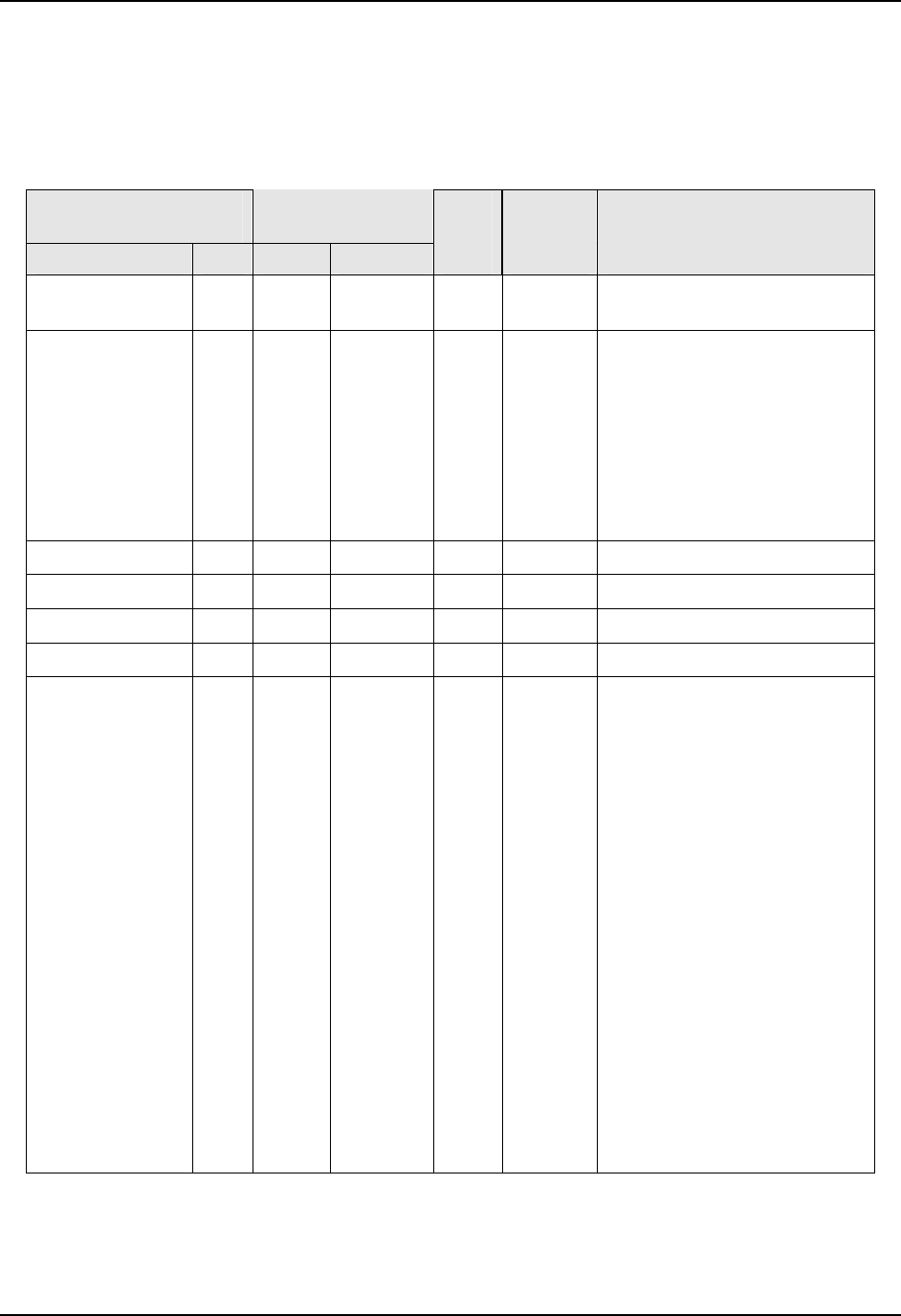
Modbus Read, Write and Override Parameters plus Exception Codes
10.7.10 Logic
Table 10-19 lists all the register addresses and ranges or selections for the function
parameters in Set-up Group Logic
Table 10-19 Set-up Group – Logic
Register
Address
Data
Type
Access Data Range or
Enumerated Selection
Parameter
ID Hex Decimal Description
Logic Gates 150 4096 16534 INT R/W 0 = Disable
1 = Enable
Gate 1 Type 151 4097 16535 INT R/W 0 = Not Used
1 = OR
2 = NOR
3 = AND
4 = NAND
5 = XOR
6 = XNOR
7 = B LT A
8 = B GT A
Gate 2 Type 155 409B 16539 INT R/W Same as ID 151
Gate 3 Type 159 409F 16543 INT R/W Same as ID 151
Gate 4 Type 163 40A3 16547 INT R/W Same as ID 151
Gate 5 Type 167 40A7 16551 INT R/W Same as ID 151
Gate 1 InputA
(OR, NOR,
AND, NAND, X
OR, X NOR)
152 4098 16536 INT R/W 0 = Digital Input 1
1 = Digital Input 2
2 = Digital Input 3
3 = Digital Input 4
4 = Relay 1
5 = Relay 2
6 = Relay 3
7 = Relay 4
8 = Relay 5
9 = Gate Out 1
10 = Gate Out 2
11 = Gate Out 3
12 = Gate Out 4
13 = Gate Out 5
14 = FIX ON
15 = FIX OFF
16 = MA MODE
17 = LR SPL1
18 = ADAPT1
19 = MA MODE2
20 = LR SPL2
21 = ADAPT2
March 2012 UDC3500 Universal Digital Controller Product Manual 397
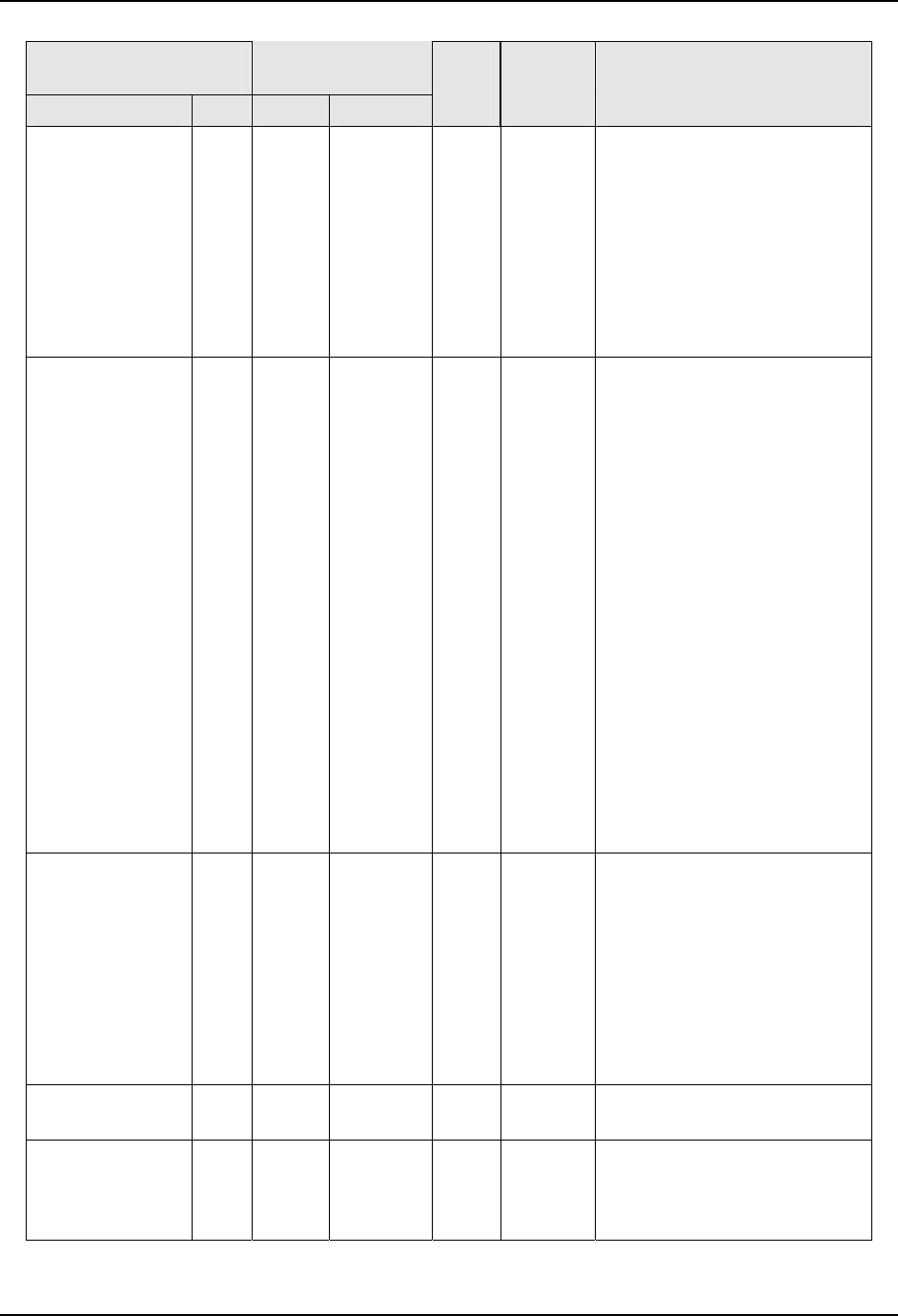
Modbus Read, Write and Override Parameters plus Exception Codes
398 UDC3500 Universal Digital Controller Product Manual March 2012
Parameter
Register
Address
Data
Type
Access Data Range or
Enumerated Selection
Description ID Hex Decimal
Gate 1 InputA (B
LT A or B GT A)
171 40AB 16555 INT R/W 0 = Input 1
1 = Input 2
2 = Input 3
3 = Input 4
4 = Input 5
5 = Loop1PV
6 = Loop1SP
7 = CONST K
8 = Loop 2 PV
9 = Loop 2 SP
Gate 1 InputB
(OR, NOR, AND,
NAND, X OR, X
NOR)
153 4099 16537 INT R/W 0 = Digital Input 1
1 = Digital Input 2
2 = Digital Input 3
3 = Digital Input 4
4 = Relay 1
5 = Relay 2
6 = Relay 3
7 = Relay 4
8 = Relay 5
9 = Gate Out 1
10 = Gate Out 2
11 = Gate Out 3
12 = Gate Out 4
13 = Gate Out 5
14 = FIX ON
15 = FIX OFF
16 = MA MODE
17 = LR SPL1
18 = ADAPT1
19 = MA MODE2
20 = LR SPL2
21 = ADAPT2
Gate 1 InputB (B
LT A or B GT A)
172 40AC 16556 INT R/W 0 = Input 1
1 = Input 2
2 = Input 3
3 = Input 4
4 = Input 5
5 = Loop1PV
6 = Loop1SP
7 = CONST K
8 = Loop 2 PV
9 = Loop 2 SP
Logic Gate1 K
Constant
100 4064 16484 INT R/W –999.0 to +9999
Gate 2 InputA
(OR, NOR, AND,
NAND, X OR, X
NOR)
156 409C 16540 INT R/W Same as ID 152
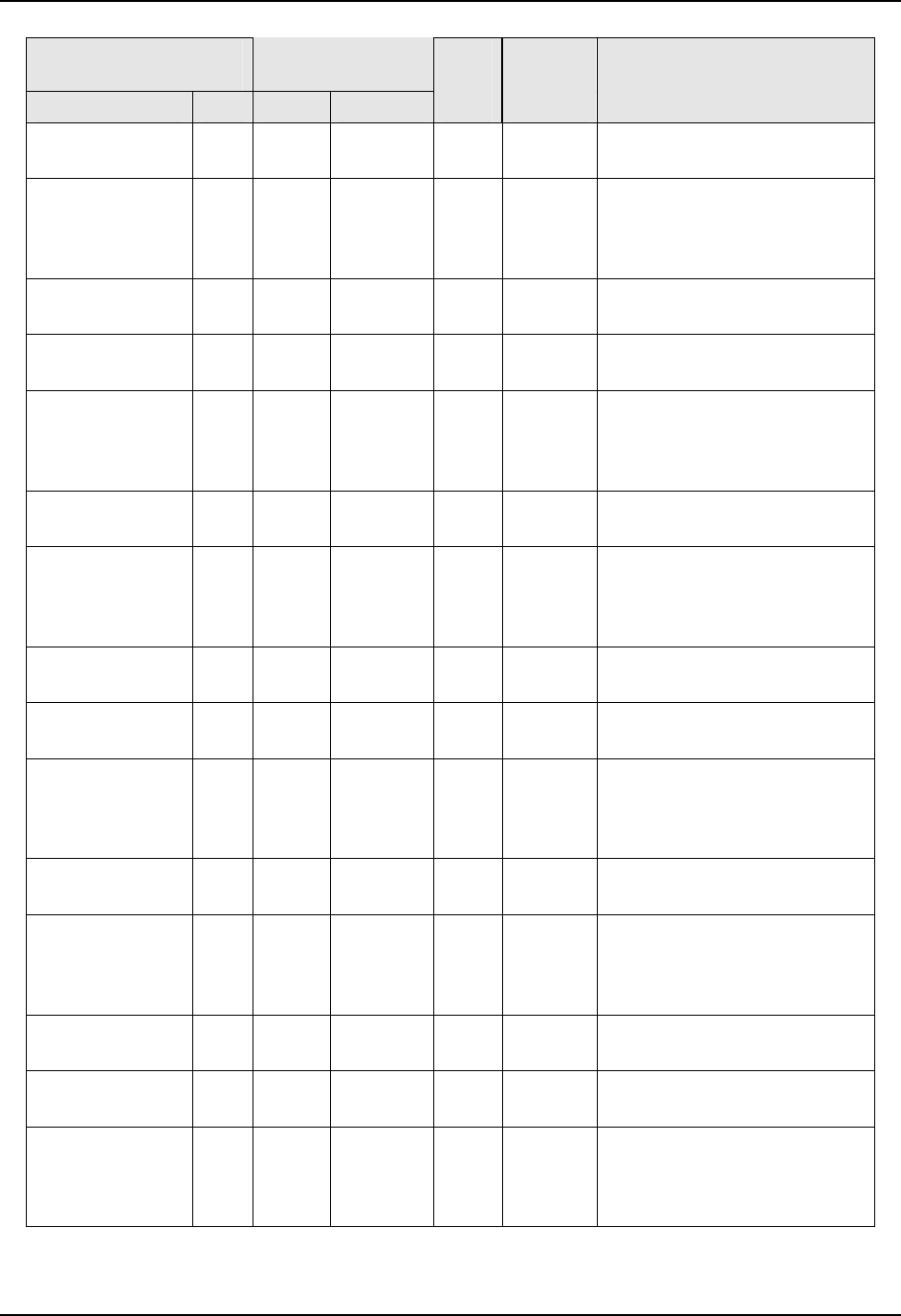
Modbus Read, Write and Override Parameters plus Exception Codes
March 2012 UDC3500 Universal Digital Controller Product Manual 399
Parameter
Register
Address
Data
Type
Access Data Range or
Enumerated Selection
Description ID Hex Decimal
Gate 2 InputA (B
LT A or B GT A)
173 40AD 16557 INT R/W Same as ID 171
Gate 2 InputB
(OR, NOR, AND,
NAND, X OR, X
NOR)
157 409D 16541 INT R/W Same as ID 153
Gate 2 InputB (B
LT A or B GT A)
174 40AE 16558 INT R/W Same as ID 172
Logic Gate2 K
Constant
101 4065 16485 FP R/W –999.0 to +9999
Gate 3 InputA
(OR, NOR, AND,
NAND, X OR, X
NOR)
160 40A0 16544 INT R/W Same as ID 152
Gate 3 InputA (B
LT A or B GT A)
175 40AF 16559 INT R/W Same as ID 171
Gate 3 InputB
(OR, NOR, AND,
NAND, X OR, X
NOR)
161 40A1 16545 INT R/W Same as ID 153
Gate 3 InputB (B
LT A or B GT A)
176 40B0 16560 INT R/W Same as ID 172
Logic Gate3 K
Constant
102 4066 16486 FP R/W –999.0 to +9999
Gate 4 InputA
(OR, NOR, AND,
NAND, X OR, X
NOR)
164 40A4 16548 INT R/W Same as ID 152
Gate 4 InputA (B
LT A or B GT A)
177 40B1 16561 INT R/W Same as ID 171
Gate 4 InputB
(OR, NOR, AND,
NAND, X OR, X
NOR)
165 40A5 16549 INT R/W Same as ID 153
Gate 4 InputB (B
LT A or B GT A)
178 40B2 16562 INT R/W Same as ID 172
Logic Gate4 K
Constant
103 4067 16487 FP R/W –999.0 to +9999
Gate 5 InputA
(OR, NOR, AND,
NAND, X OR, X
NOR)
168 40A8 16552 INT R/W Same as ID 152
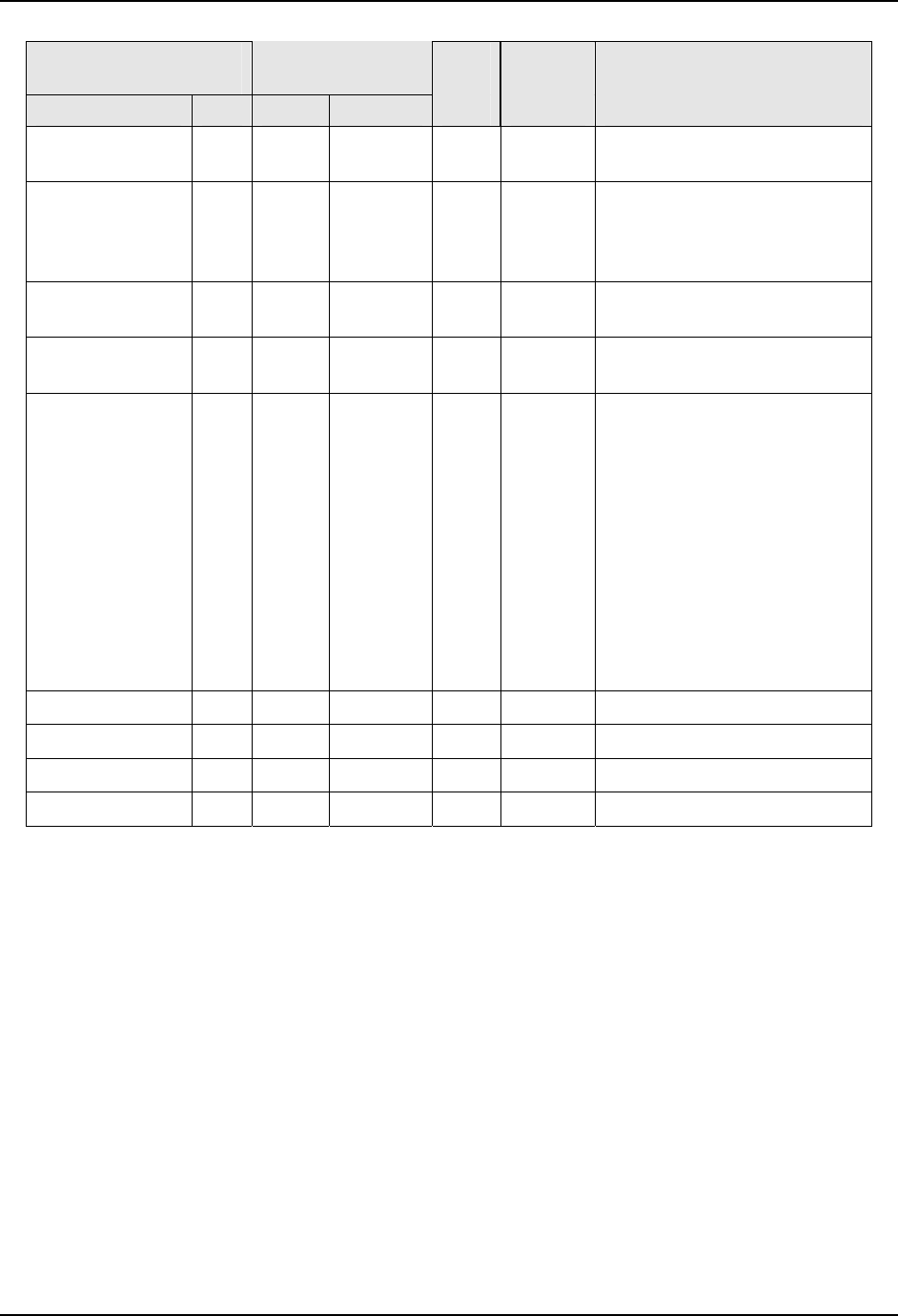
Modbus Read, Write and Override Parameters plus Exception Codes
400 UDC3500 Universal Digital Controller Product Manual March 2012
Parameter
Register
Address
Data
Type
Access Data Range or
Enumerated Selection
Description ID Hex Decimal
Gate 5 InputA (B
LT A or B GT A)
179 40B3 16563 INT R/W Same as ID 171
Gate 5 InputB
(OR, NOR, AND,
NAND, X OR, X
NOR)
169 40A9 16553 INT R/W Same as ID 153
Gate 5 InputB (B
LT A or B GT A)
180 40B4 16564 INT R/W Same as ID 172
Logic Gate5 K
Constant
104 4068 16488 FP R/W –999.0 to +9999
Gate 1 Out 154 409A 16538 INT R/W 0 = Relay 1
1 = Relay 2
2 = Relay 3
3 = Relay 4
4 = Relay 5
5 = Any Gate
6 = MA Mode
7 = LR SPL1
8 = ADAPT 1
9 = Reset Totalizer
10 = MA Mode Loop 2
11 = LR SP Loop 2
12 = Adapt Loop 2
Gate 2 Out 158 409E 16542 INT R/W Same as ID 154
Gate 3 Out 162 40A2 16546 INT R/W Same as ID 154
Gate 4 Out 166 40A6 16550 INT R/W Same as ID 154
Gate 5 Out 170 40AA 16554 INT R/W Same as ID 154
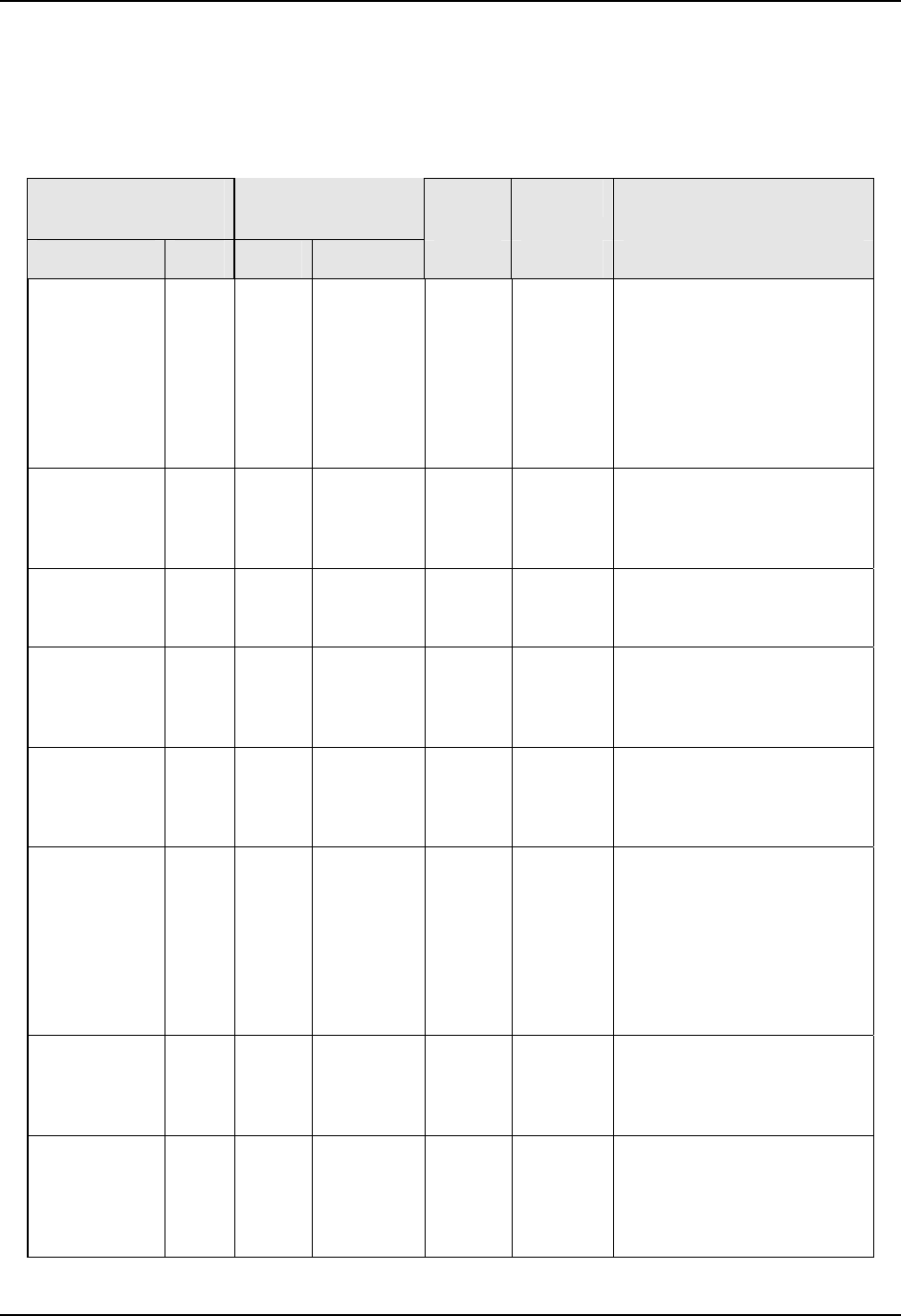
Modbus Read, Write and Override Parameters plus Exception Codes
10.7.11 Output Algorithms
Table 10-20 lists all the register addresses and ranges or selections for the function
parameters in Set-up Group Output Algorithms.
Table 10-20 Set-up Group – Output Algorithms
Parameter
Register
Address
Data
Type
Access Data Range or
Enumerated Selection
ID Hex Decimal Description
Output
Algorithm
160 00A0 160 INT R/W 0 = Time Simplex
1 = Current Simplex
2 = Three Position Step or
Position Proportioning
3 = Time Duplex
4 = Current Duplex
5 = Current/Time Duplex
6 = Time/Current Duplex
Relay Cycle
Time
Increments
190
00BE 190 INT R/W 0 = 1 second increments
1 = 1/3 second increments
Motor Time
for Positional
Proportional
75 004B 075 INT R/W 5 to 1800 seconds
Relay Output
Action
243 00F3 243 INT R/W 0 = 1 OFF 2 OFF
1 = 1 ON 2 OFF
2 = 1 OFF 2 ON
3 = 1 ON 2 ON
Current
Range for
Current
Duplex
153 0099 153 INT R/W 0 = Full (100%)
1 = Split (50%)
Output
Algorithm
Loop2
160 01A0 416 INT R/W 0 = Time Simplex
1 = Current Simplex
2 = None
3 = Not Used
4 = Current Duplex
5 = Current/Time
6 = Time/Current
7 = Time Duplex
Relay Output
Action Loop2
175 01AF 431 INT R/W 0 = 1 OFF 2 OFF
1 = 1 ON 2 OFF
2 = 1 OFF 2 ON
3 = 1 ON 2 ON
Current
Range for
Current
Duplex
Loop2
153 0199 409 INT R/W 0 = 100%
1 = 50%
March 2012 UDC3500 Universal Digital Controller Product Manual 401
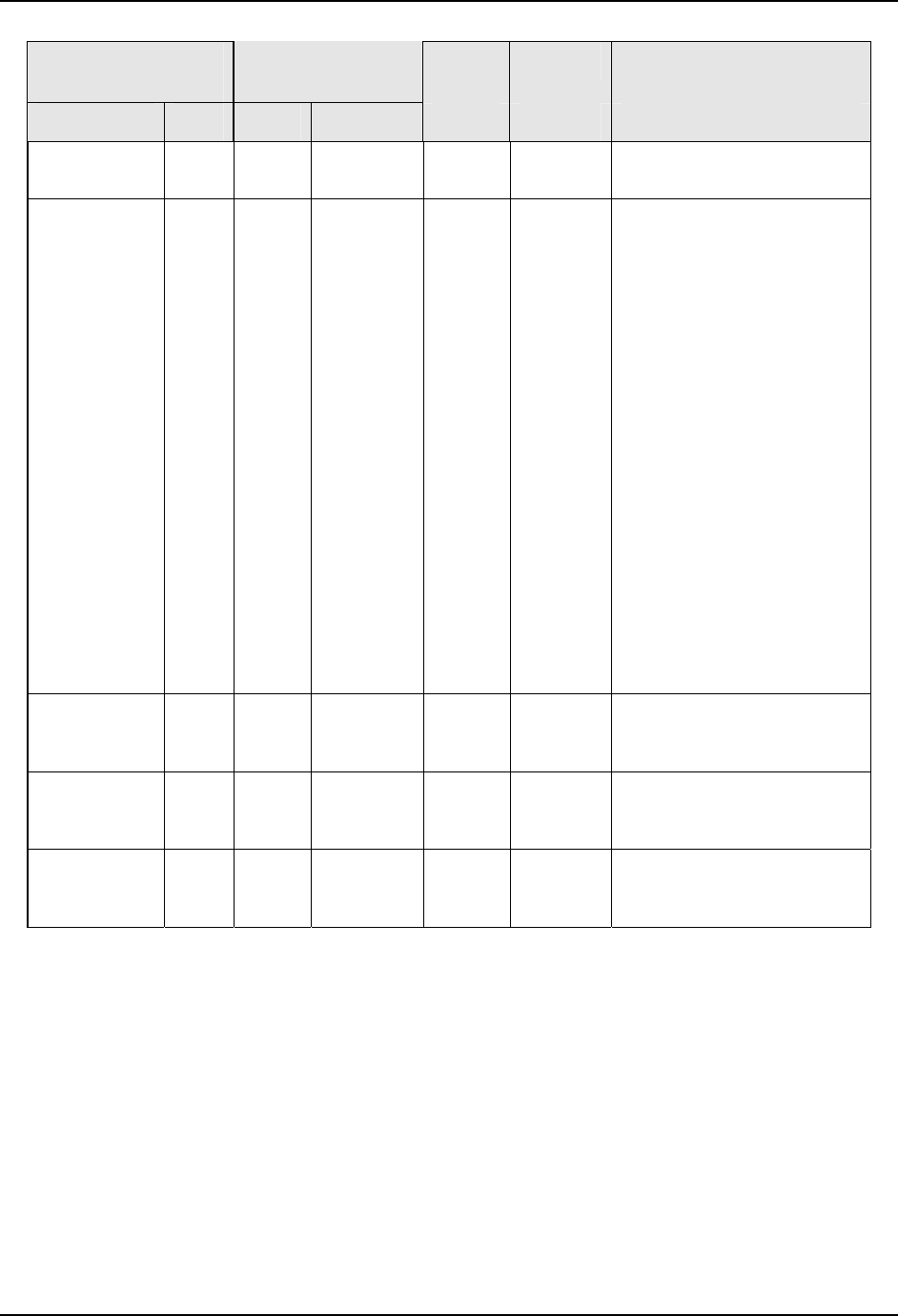
Modbus Read, Write and Override Parameters plus Exception Codes
402 UDC3500 Universal Digital Controller Product Manual March 2012
Parameter
Register
Address
Data
Type
Access Data Range or
Enumerated Selection
Description ID Hex Decimal
C2 Range 236 00EC 236 INT R/W 0 = 4-20 mA
1 = 0 -20 mA
Current
Output 1
242 00F2 242 INT R/W 0 = Disable
1 = Input 1
2 = Input 2
3 = Input 3
4 = Input 4
5 = Input 5
6 = PV
7 = CB Out
8 = DEV
9 = Output
10 = SP
11 = LSP
12 = RSP
13 = In Alg 1
14 = In Alg 2
15 = PV2
16 = CBOUT2
17 = DEV 2
18 = Output Loop 2
19 = SP Loop 2
20 = LSP1 Loop 2
21 = RSP Loop 2
Current
Output 1
Range
235 00EA 235 INT R/W 0 = 4-20 mA
1 = 0-20 mA
Current 1
Low Scaling
Factor
100 0064 100 FP R/W Within the range of the
selected variable in ID 242
Current 1
High Scaling
Factor
101 0065 101 FP R/W Within the range of the
selected variable in ID 242
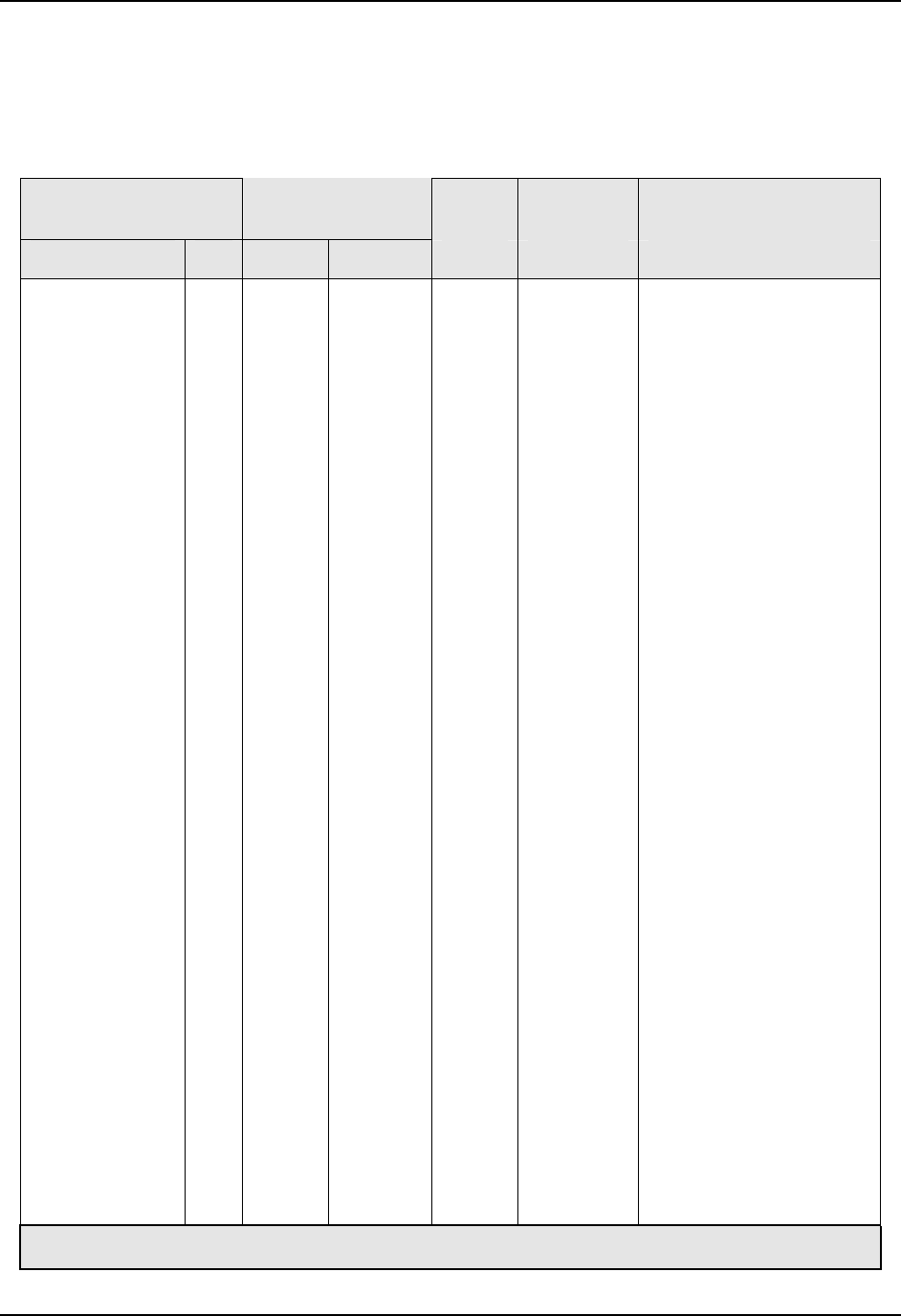
Modbus Read, Write and Override Parameters plus Exception Codes
10.7.12 Input 1
Table 10-21 lists all the register addresses and ranges or selections for the function
parameters in Set-up Group Input 1.
Table 10-21 Set-up Group – Input 1
Parameter
Register
Address
Data
Type
Access Data Range or
Enumerated Selection
ID Hex Decimal Description
Input 1 Type 168 00A8 168 INT R/W
1 = B TC
2 = E TC H
3 = E TC L
4 = J TC H
5 = J TC M
6 = J TC L
7 = K TC H
8 = K TC M
9 = K TC L
10 = NNM H
11 = NNM L
12 = Nicrosil H TC
13 = Nicrosil L TC
14 = Plat H
15 = Plat L
16 = R TC
17 = S TC
18 = T TC H
19= T TC L
20 = W TC H
21 = W TC L
22 = 100 PT RTD
23 = 100 PT LO RTD
24 = 200 PT RTD
25 = 500 PT RTD
26 = 1000PT
27 = Radiamatic RH
28 = Radiamatic RI
29 = 0-20 mA
30 = 4-20 mA
31 = 0-10 mV
32 = 0-50 mV
33 = 100 mV
34 = 0-500mV
35 = -10-10mV
36 = 0-1V
37 = 0-5 Vdc
38 = 1-5 Vdc
39 = 0-10 Vdc
40 = -1-1V
41 = Unused
42 = Carbon
43 = Oxygen
44 = Thermocouple
Differential
45 = Unused
46 = PR
ATTENTION
March 2012 UDC3500 Universal Digital Controller Product Manual 403
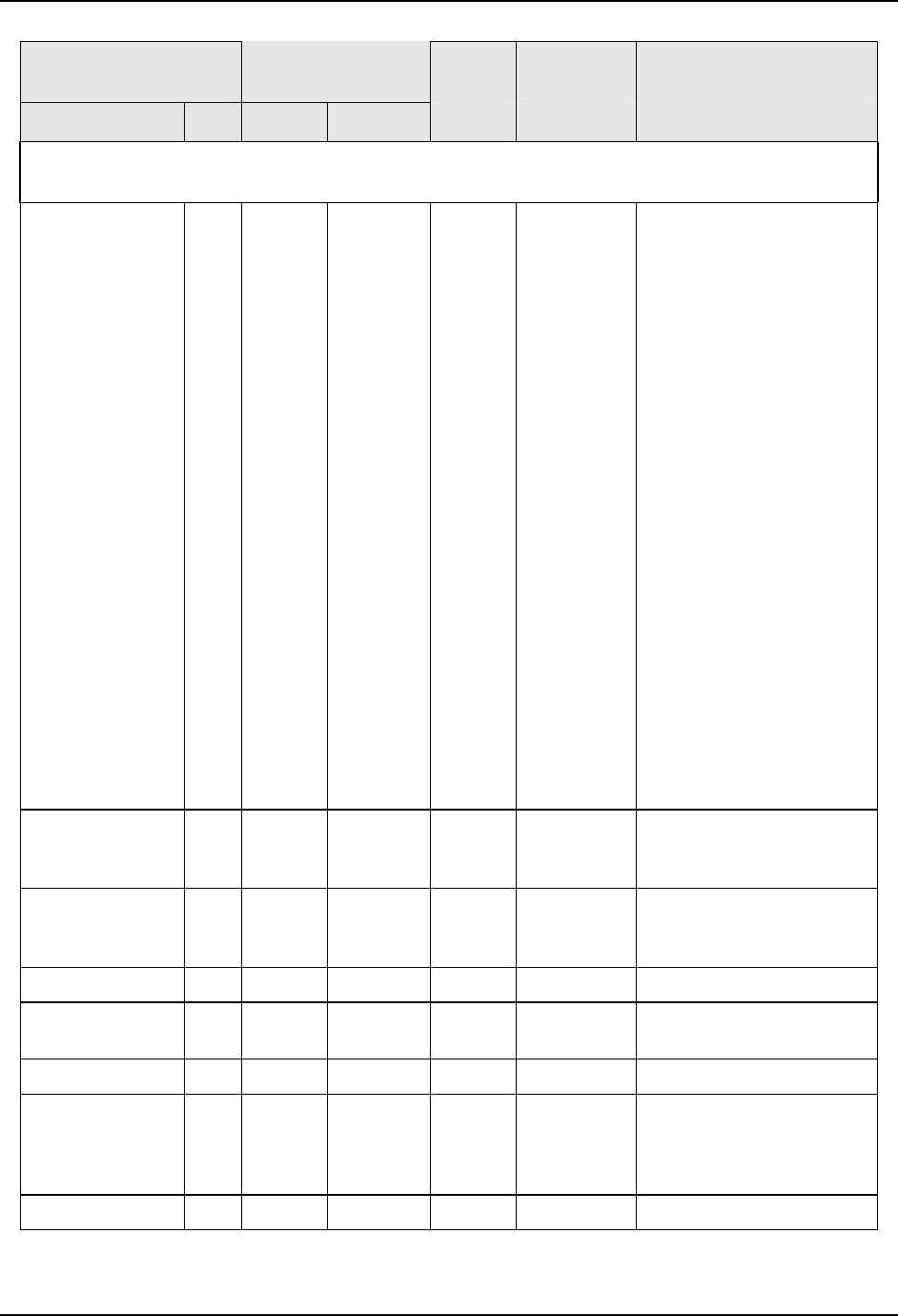
Modbus Read, Write and Override Parameters plus Exception Codes
404 UDC3500 Universal Digital Controller Product Manual March 2012
Parameter
Register
Address
Data
Type
Access Data Range or
Enumerated Selection
Description ID Hex Decimal
Changing the Input Type will result in the loss of Field Calibration values and will restore the
Factory Calibration values.
Input 1
Transmitter
Characterization
169 00A9 169 INT R/W
0 = B TC
1 = E TC H
2 = E TC L
3 = J TC H
4 = J TC M
5 = J TC L
6 = K TC H
7 = K TC M
8 = K TC L
9 = NNM H
10 = NNM L
11 = Nicrosil H TC
12 = Nicrosil L TC
13 = Plat H
14 = Plat L
15 = R TC
16 = S TC
17 = T TC H
18 = T TC L
19 = W TC H
20 = W TC L
21 = 100 PT RTD
22 = 100 PT LO RTD
23 = 200 PT RTD
24 = 500 PT RTD
25 = 1000PT
26 = Radiamatic RH
27 = Radiamatic RI
28 = Linear
29 = Square Root
Input 1 High
Range Value
29 001D 029 FP R/W –999. to 9999.
Engineering Units (Linear
types only)
Input 1 Low
Range Value
30 001E 030 FP R/W –999 to 9999.
Engineering Units (Linear
types only)
Input 1 Ratio 106 006A 106 FP R/W –20.00 to 20.00
Input 1 Bias 107 006B 107 FP R/W –999 to 9999.
Engineering Units
Input 1 Filter 42 002A 042 FP R/W 0 to 120 seconds
Burnout (Open
Circuit
Detection)
164 00A4 164 INT R/W 0 = None and Failsafe
1 = Upscale
2 = Downscale
3 = No Failsafe
Emissivity 23 0017 023 FP R/W 0.01 to 1.00
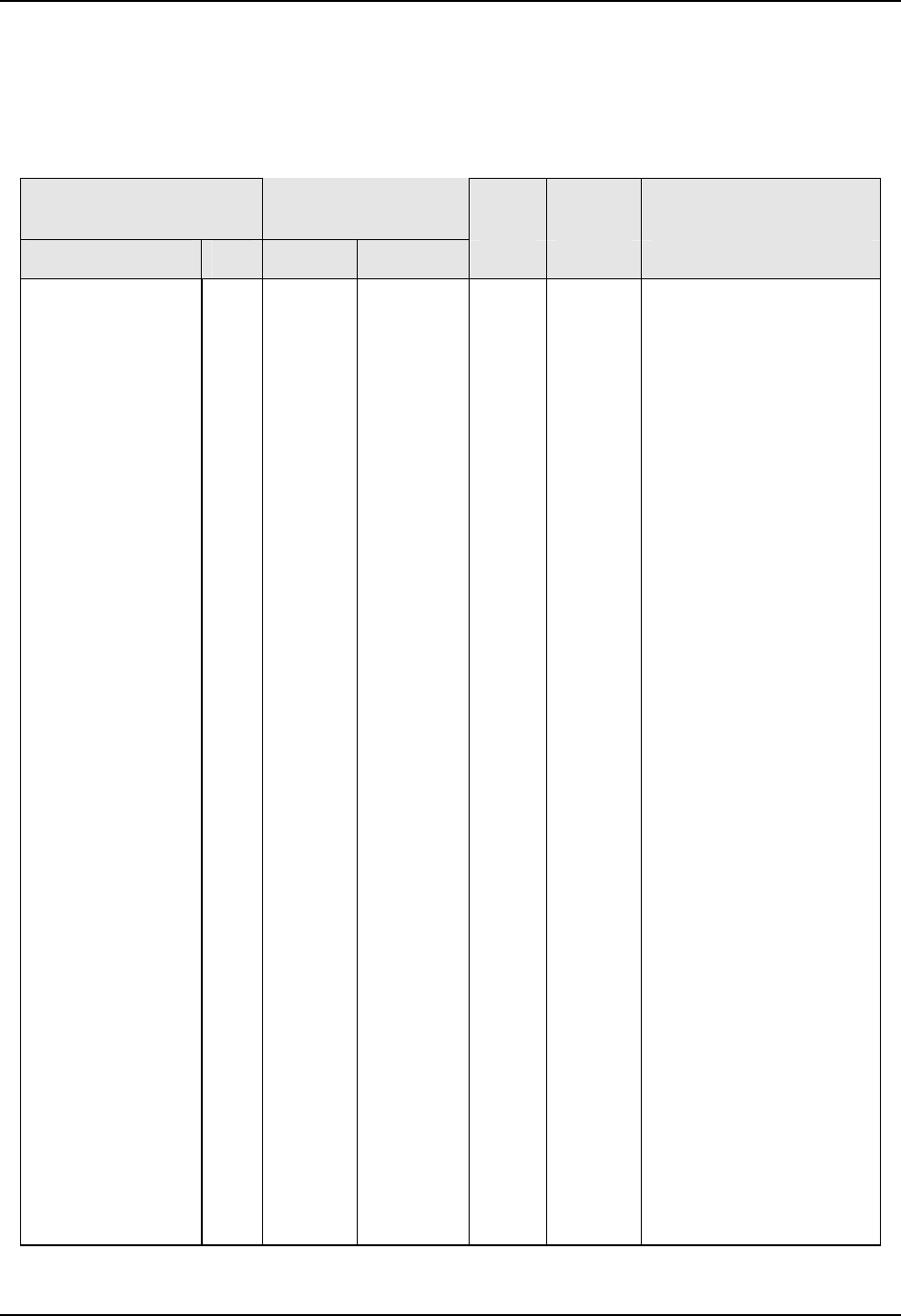
Modbus Read, Write and Override Parameters plus Exception Codes
10.7.13 Input 2
Table 10-22 lists all the register addresses and ranges or selections for the function
parameters in Set-up Group Input 2.
Table 10-22 Set-up Group – Input 2
Parameter Register
Address
Data
Type
Access Data Range or
Enumerated Selection
ID Hex Decimal Description
Input 2 Type 170 00AA 170 INT R/W
0 = Disable
1 = B TC
2 = E TC H
3 = E TC L
4 = J TC H
5 = J TC M
6 = J TC L
7 = K TC H
8 = K TC M
9 = K TC L
10 = NNM H
11 = NNM L
12 = Nicrosil H TC
13 = Nicrosil L TC
14 = Plat H
15 = Plat L
16 = R TC
17 = S TC
18 = T TC H
19 = T TC L
20 = W TC H
21 = W TC L
22 = 100 PT RTD
23 = 100 PT LO RTD
24 = 200 PT RTD
25 = 500 PT RTD
26 = 1000PT
27 = Radiamatic RH
28 = Radiamatic RI
29 = 0-20 mA
30 = 4-20 mA
31 = 0-10 mV
32 = 0-50 mV
33 = 0-100 mV
34 = 0-500mV
35 = -10-10mV
36 = 0-1V
37 = 0-5 Vdc
38 = 1-5 Vdc
39 = 0-10 Vdc
40 = -1-1V
41 = Unused
42 = Unused
43 = Unused
44 = Thermocouple
Differential
45 = Unused
46 = PR
March 2012 UDC3500 Universal Digital Controller Product Manual 405
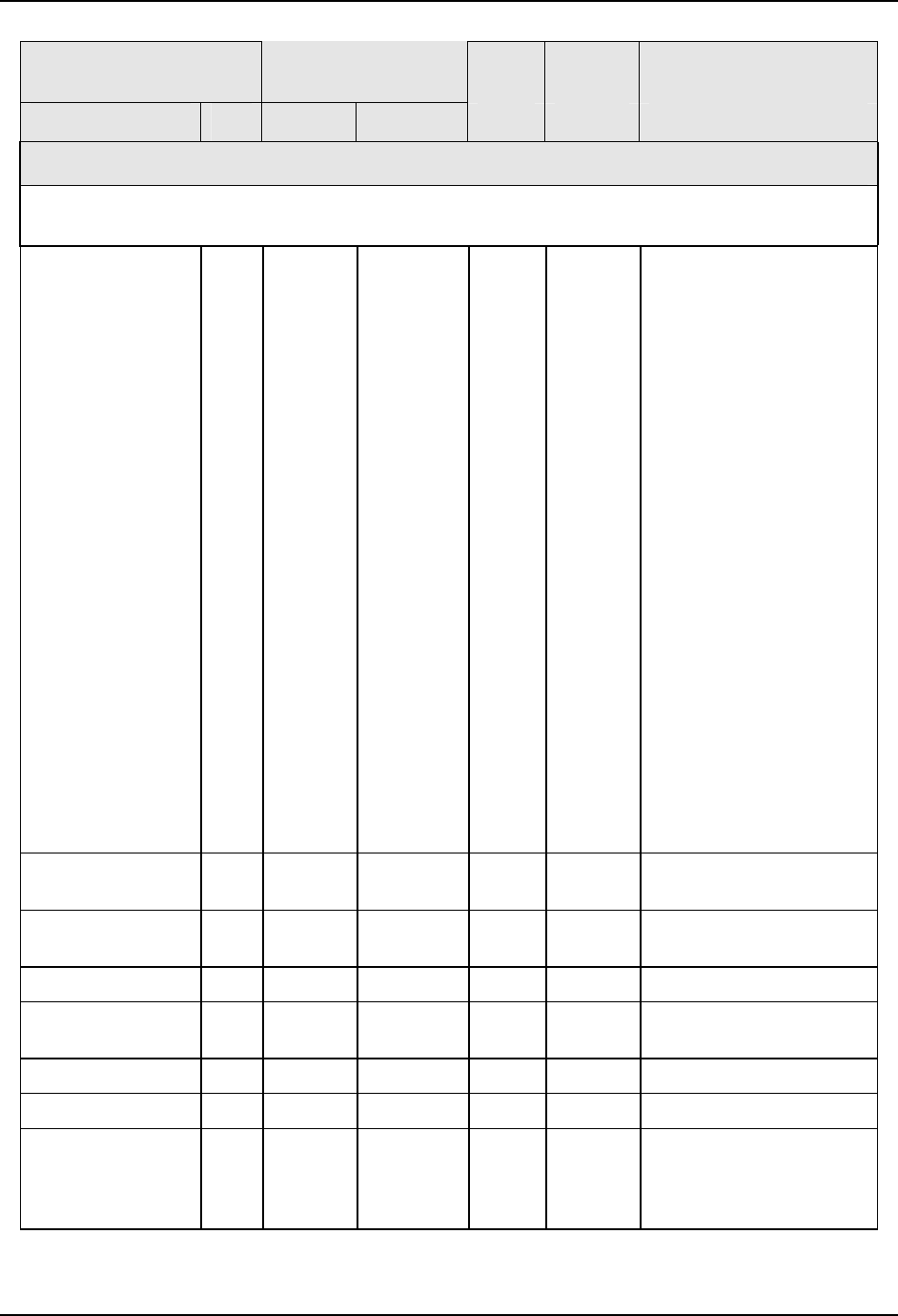
Modbus Read, Write and Override Parameters plus Exception Codes
406 UDC3500 Universal Digital Controller Product Manual March 2012
Parameter Register
Address
Data
Type
Access Data Range or
Enumerated Selection
Description ID Hex Decimal
ATTENTION
Changing the Input Type will result in the loss of Field Calibration values and will restore the
Factory Calibration values.
Input 2 Transmitter
Characterization
171 00AB 171 INT R/W
0 = B TC
1 = E TC H
2 = E TC L
3 = J TC H
4 = J TC M
5 = J TC L
6 = K TC H
7 = K TC M
8 = K TC L
9 = NNM H
10 = NNM L
11 = Nicrosil H TC
12 = Nicrosil L TC
13 = Plat H
14 = Plat L
15 = R TC
16 = S TC
17 = T TC H
18 = T TC L
19 = W TC H
20 = W TC L
21 = 100 PT RTD
22 = 100 PT LO RTD
23 = 200 PT RTD
24 = 500 PT RTD
25 = 1000PT
26 = Radiamatic RH
27 = Radiamatic RI
28 = Linear
29 = Square Root
Input 2 High
Range Value
035 0023 035 FP R/W –999. to 9999.
Engineering Units
Input 2 Low Range
Value
036 0024 036 FP R/W –999 to 9999.
Engineering Units
Input 2 Ratio 037 0025 037 FP R/W –20.00 to 20.00
Input 2 Bias 038 0026 038 FP R/W –999 to 9999.
Engineering Units
Input 2 Filter 43 002B 043 FP R/W 0 to 120 seconds
Input 2 Emissivity 44 002C 044 FP R/W 0.01 to 1.00
Input 2 Burnout 165 00A5 165 INT R/W 0 = None
1 = Up
2 = Down
3 = No Failsafe
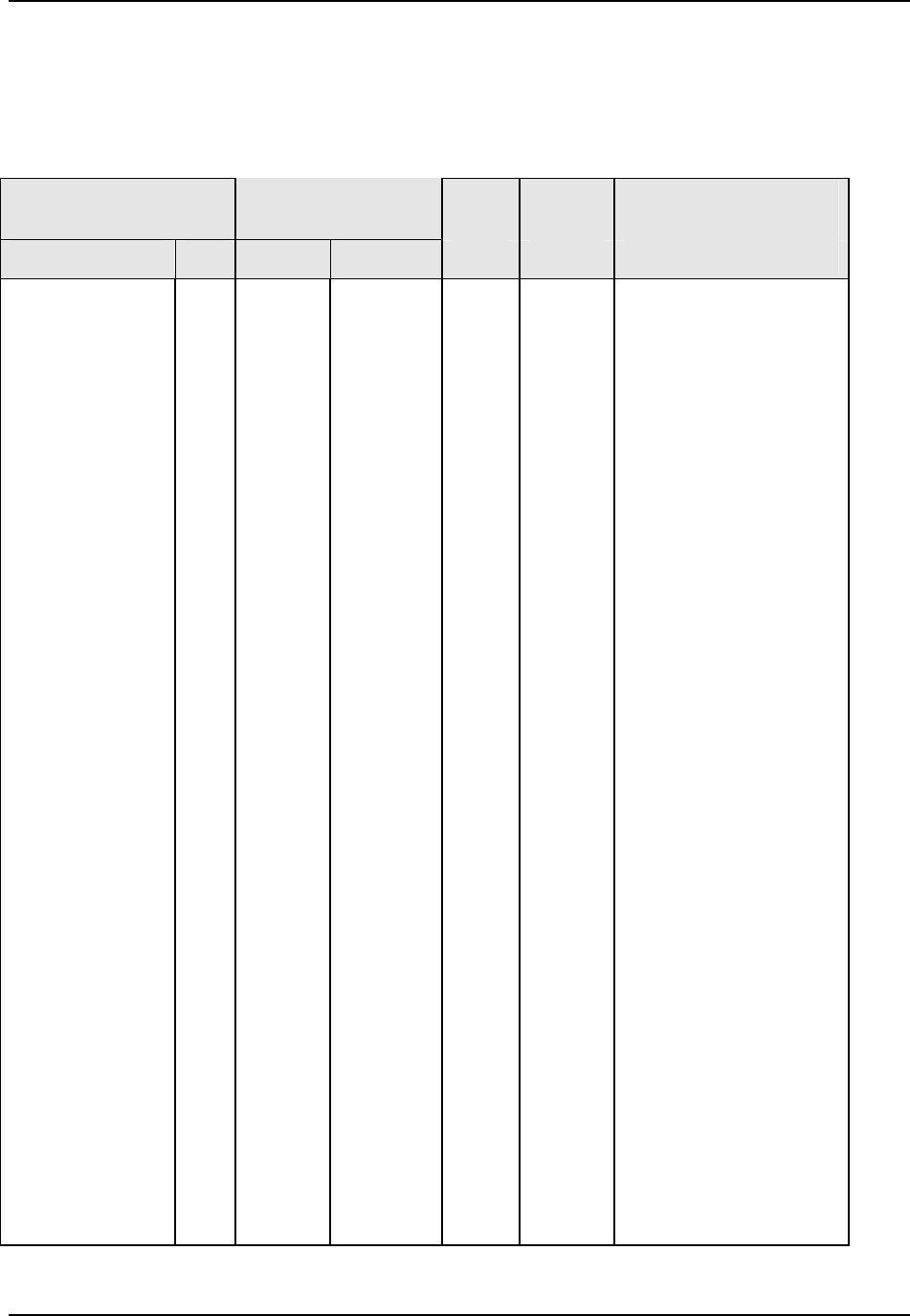
Modbus Read, Write and Override Parameters plus Exception Codes
March 2012 UDC3500 Universal Digital Controller Product Manual 407
10.7.14 Input 3
Table 10-23 lists all the register addresses and ranges or selections for the function
parameters in Set-up Group Input 3.
Table 10-23 Set-up Group – Input 3
Parameter
Register
Address
Data
Type
Access Data Range or
Enumerated Selection
Description ID Hex Decimal
Input 3 Type 128 4080 16512 INT R/W
0 = Disable
1 = B TC
2 = E TC H
3 = E TC L
4 = J TC H
5 = J TC M
6 = J TC L
7 = K TC H
8 = K TC M
9 = K TC L
10 = NNM H
11 = NNM L
12 = Nicrosil H TC
13 = Nicrosil L TC
14 = Plat H
15 = Plat L
16 = R TC
17 = S TC
18 = T TC H
19 = T TC L
20 = W TC H
21 = W TC L
22 = 100 PT RTD
23 = 100 PT LO RTD
24 = 200 PT RTD
25 = 500 PT RTD
26 = 1000PT
27 = Radiamatic RH
28 = Radiamatic RI
29 = 0-20 mA
30 = 4-20 mA
31 = 0-10 mV
32 = 0-50 mV
33 = 0-100 mV
34 = 0-500mV
35 = -10-10mV
36 = 0-1V
37 = 0-5 Vdc
38 = 1-5 Vdc
39 = 0-10 Vdc
40 = -1-1V
41 = Slidewire
42 = Unused
43 = Unused
44 = Thermocouple
Differential
45 = SW EMUL
46 = PR
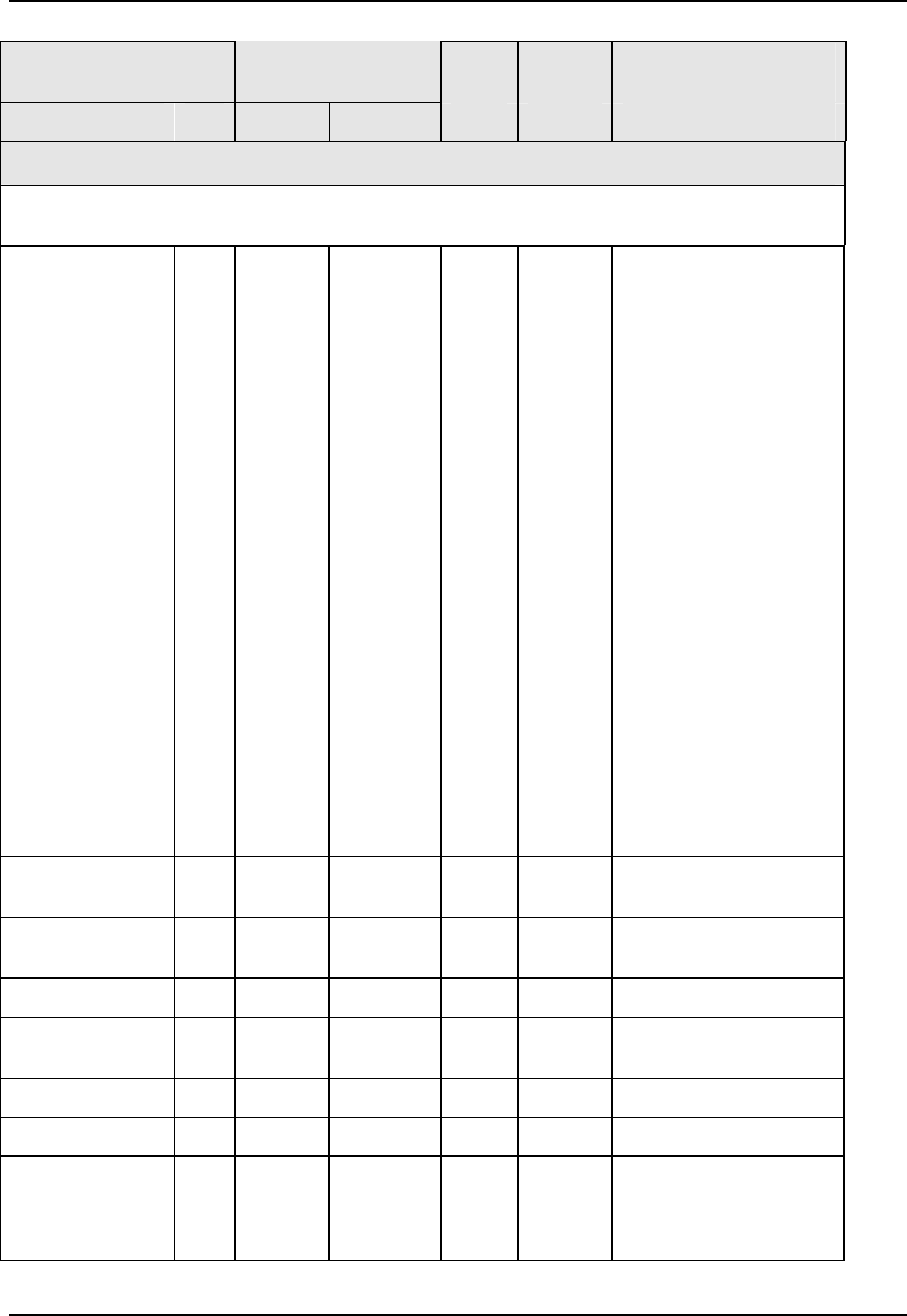
Modbus Read, Write and Override Parameters plus Exception Codes
Parameter
Register
Address
Data
Type
Access Data Range or
Enumerated Selection
Description ID Hex Decimal
ATTENTION
Changing the Input Type will result in the loss of Field Calibration values and will restore the
Factory Calibration values.
Input 3
Transmitter
Characterization
129 4081 16513 INT R/W
0 = B TC
1 = E TC H
2 = E TC L
3 = J TC H
4 = J TC M
5 = J TC L
6 = K TC H
7 = K TC M
8 = K TC L
9 = NNM H
10 = NNM L
11 = Nicrosil H TC
12 = Nicrosil L TC
13 = Plat H
14 = Plat L
15 = R TC
16 = S TC
17 = T TC H
18 = T TC L
19 = W TC H
20 = W TC L
21 = 100 PT RTD
22 = 100 PT LO RTD
23 = 200 PT RTD
24 = 500 PT RTD
25 = 1000PT
26 = Radiamatic RH
27 = Radiamatic RI
28 = Linear
29 = Square Root
Input 3 High
Range Value
27 001B 27 FP R/W –999. to 9999.
Engineering Units
Input 3 Low
Range Value
28 001C 28 FP R/W –999 to 9999.
Engineering Units
Input 3 Ratio 104 0068 104 FP R/W –20.00 to 20.00
Input 3 Bias 105 0069 105 FP R/W –999 to 9999.
Engineering Units
Input 3 Filter 33 0021 33 FP R/W 0 to 120 seconds
Input 3 Emissivity 23 4017 16407 FP R/W 0.01 to 1.00
Input 3 Burnout 130 4082 16514 INT R/W 0 = None
1 = Up
2 = Down
3 = No Failsafe
408 UDC3500 Universal Digital Controller Product Manual March 2012
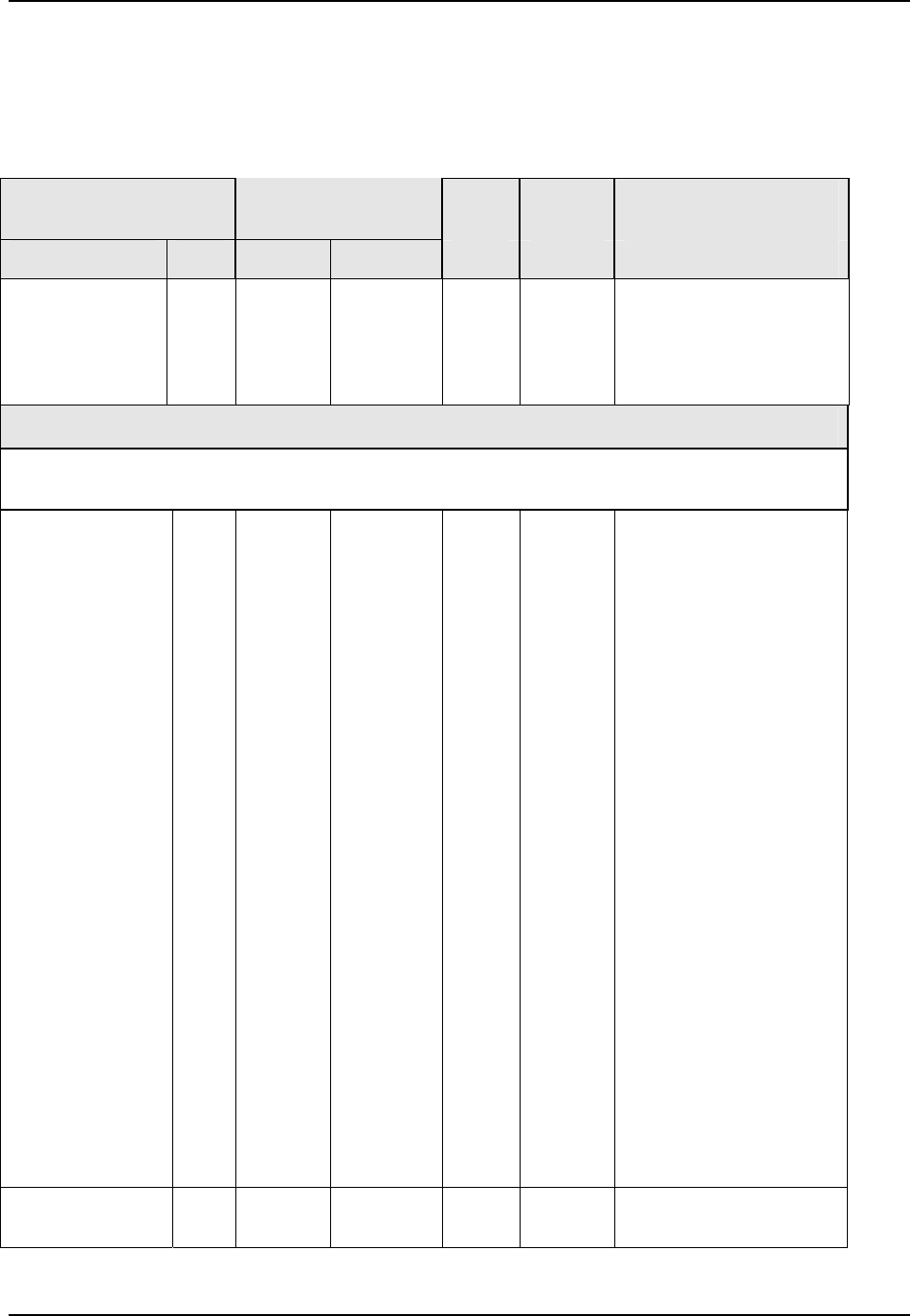
Modbus Read, Write and Override Parameters plus Exception Codes
10.7.15 Input 4
Table 10-24 lists all the register addresses and ranges or selections for the function
parameters in Set-up Group Input 4.
Table 10-24 Set-up Group – Input 4
Parameter
Register
Address
Data
Type
Access Data Range or
Enumerated Selection
ID Hex Decimal Description
Input 4 Type 131 4083 16515 INT R/W 0 = Disable
1 – 0-20mA
2 = 4-20mA
3 = 0-5V
4 = 1-5V
ATTENTION
Changing the Input Type will result in the loss of Field Calibration values and will restore the
Factory Calibration values.
Input 4
Transmitter
Characterization
132 4084 16516 INT R/W 0 = B TC
1 = E TC H
2 = E TC L
3 = J TC H
4 = J TC M
5 = J TC L
6 = K TC H
7 = K TC M
8 = K TC L
9 = NNM H
10 = NNM L
11 = Nicrosil H TC
12 = Nicrosil L TC
13 = Plat H
14 = Plat L
15 = R TC
16 = S TC
17 = T TC H
18 = T TC L
19 = W TC H
20 = W TC L
21 = 100 PT RTD
22 = 100 PT LO RTD
23 = 200 PT RTD
24 = 500 PT RTD
25 = 1000PT
26 = Radiamatic RH
27 = Radiamatic RI
28 = Linear
29 = Square Root
Input 4 High
Range Value
95 005F 95 FP R/W –999. to 9999.
Engineering Units
March 2012 UDC3500 Universal Digital Controller Product Manual 409
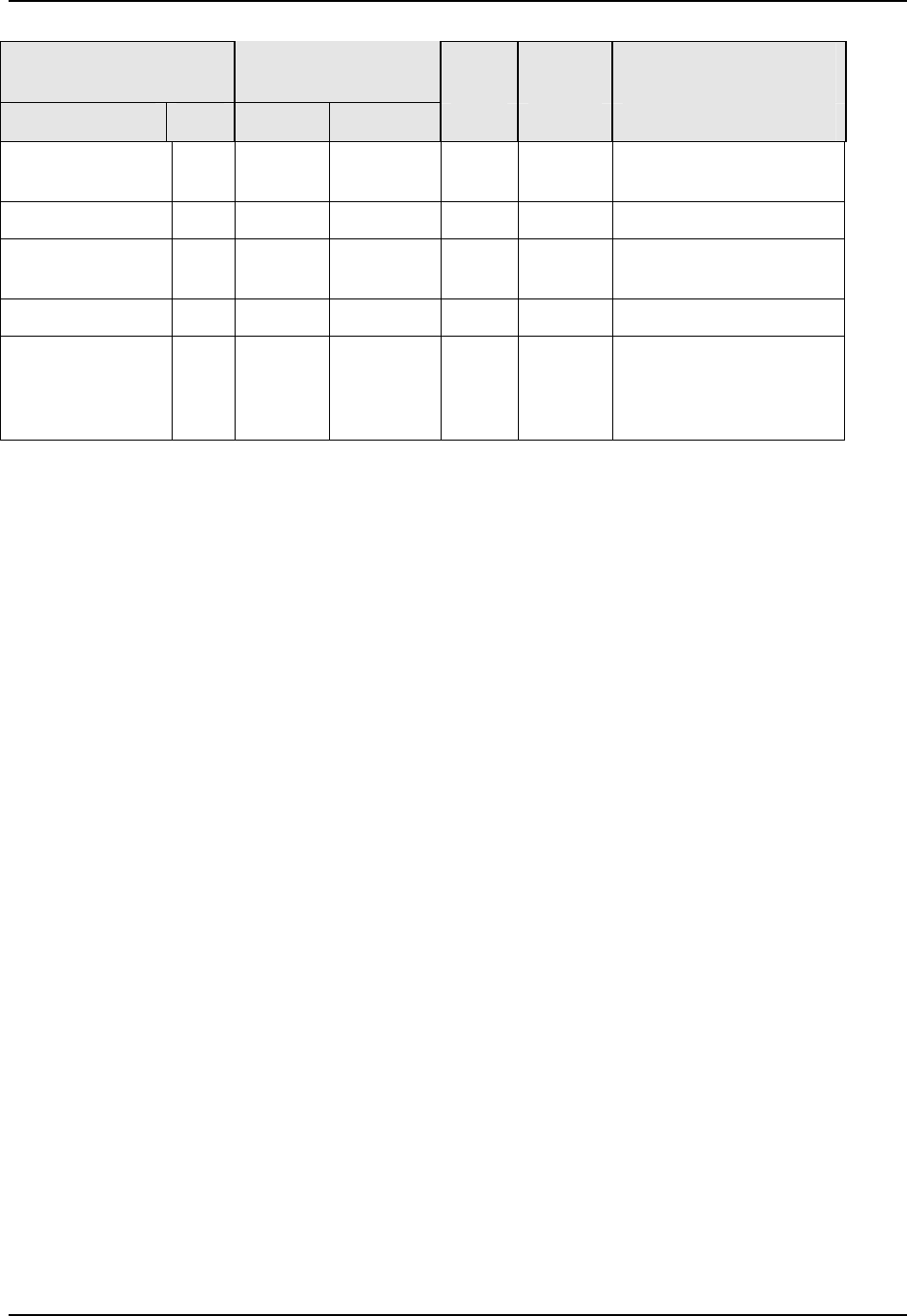
Modbus Read, Write and Override Parameters plus Exception Codes
410 UDC3500 Universal Digital Controller Product Manual March 2012
Parameter
Register
Address
Data
Type
Access Data Range or
Enumerated Selection
Description ID Hex Decimal
Input 4 Low
Range Value
96 0060 96 FP R/W –999 to 9999.
Engineering Units
Input 4 Ratio 97 0061 97 FP R/W –20.00 to 20.00
Input 4 Bias 98 0062 98 FP R/W –999 to 9999.
Engineering Units
Input 4 Filter 94 005E 94 FP R/W 0 to 120 seconds
Input 4 Burnout 133 4085 16517 INT R/W 0 = None
1 = Up
2 = Down
3 = No Failsafe
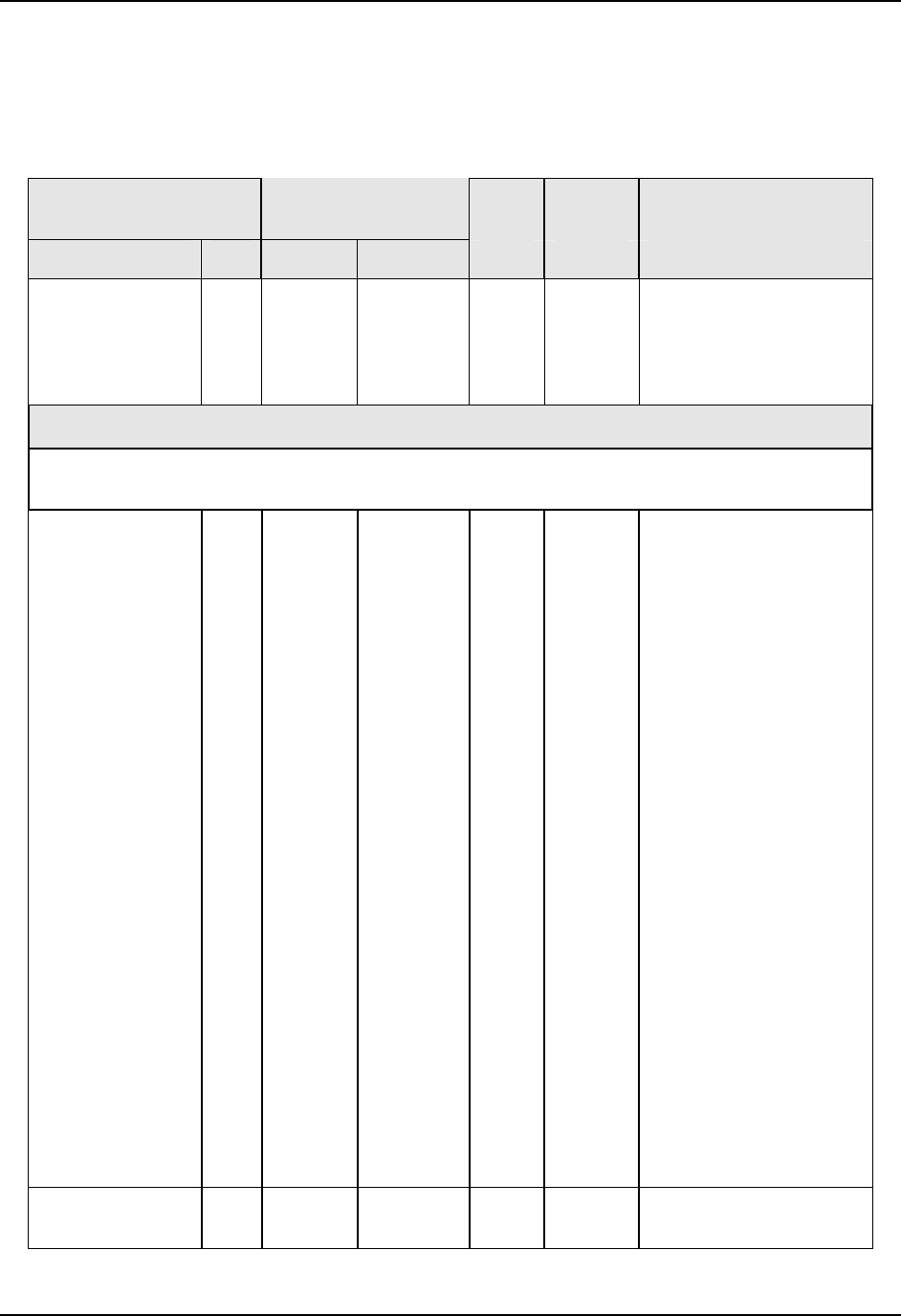
Modbus Read, Write and Override Parameters plus Exception Codes
10.7.16 Input 5
Table 10-25 lists all the register addresses and ranges or selections for the function
parameters in Set-up Group Input 5.
Table 10-25 Set-up Group – Input 5
Parameter
Register
Address
Data
Type
Access Data Range or
Enumerated Selection
ID Hex Decimal Description
Input 5 Type 134 4086 16518 INT R/W 0 = Disable
1 = 0-20mA
2 = 4-20mA
3 = 0-5V
4 = 1-5V
ATTENTION
Changing the Input Type will result in the loss of Field Calibration values and will restore the
Factory Calibration values.
Input 5
Transmitter
Characterization
135 4087 16519 INT R/W 0 = B TC
1 = E TC H
2 = E TC L
3 = J TC H
4 = J TC M
5 = J TC L
6 = K TC H
7 = K TC M
8 = K TC L
9 = NNM H
10 = NNM L
11 = Nicrosil H TC
12 = Nicrosil L TC
13 = Plat H
14 = Plat L
15 = R TC
16 = S TC
17 = T TC H
18 = T TC L
19 = W TC H
20 = W TC L
21 = 100 PT RTD
22 = 100 PT LO RTD
23 = 200 PT RTD
24 = 500 PT RTD
25 = 1000PT
26 = Radiamatic RH
27 = Radiamatic RI
28 = Linear
29 = Square Root
Input 5 High
Range Value
82 0052 82 FP R/W –999. to 9999.
Engineering Units
March 2012 UDC3500 Universal Digital Controller Product Manual 411
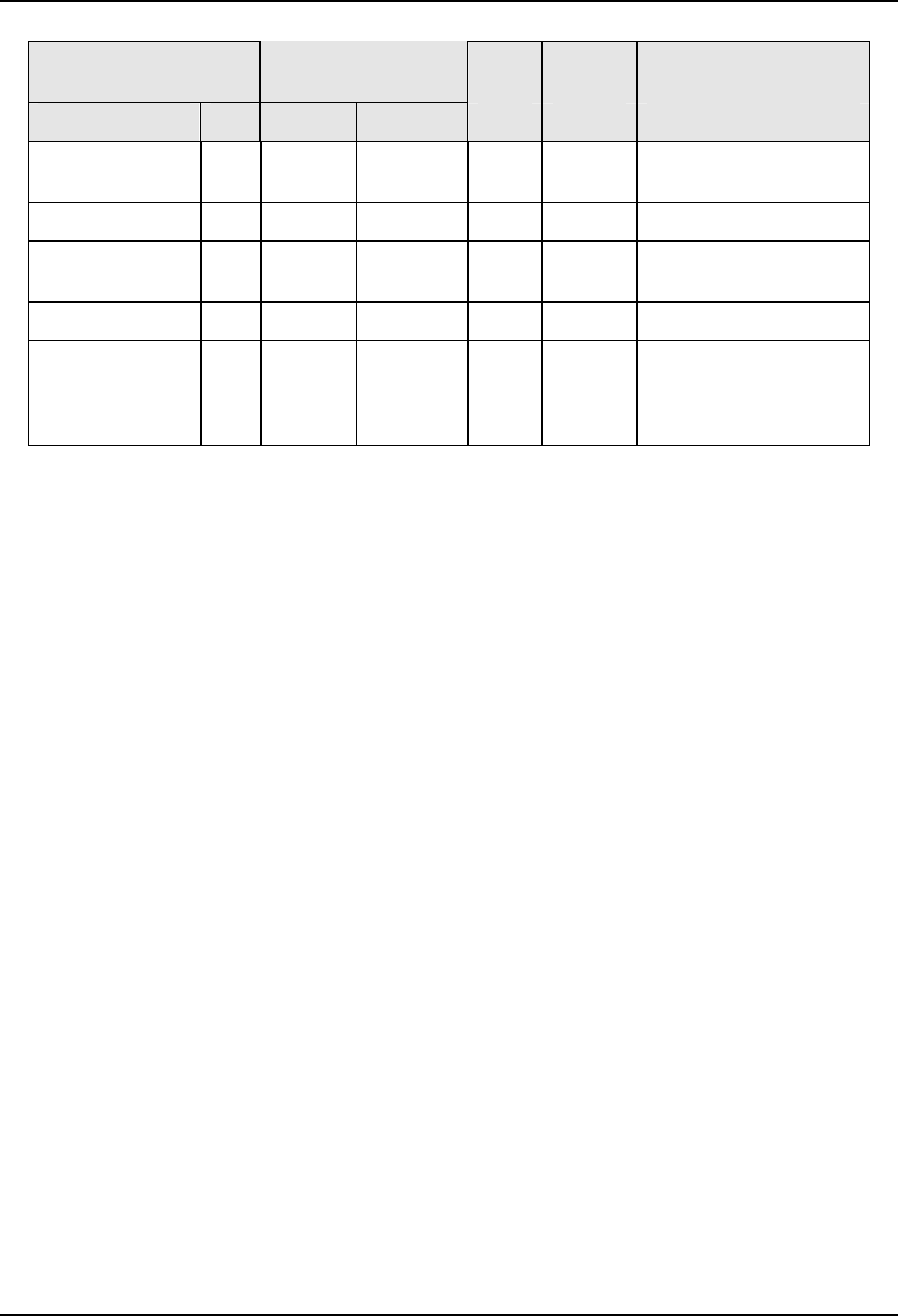
Modbus Read, Write and Override Parameters plus Exception Codes
412 UDC3500 Universal Digital Controller Product Manual March 2012
Parameter
Register
Address
Data
Type
Access Data Range or
Enumerated Selection
Description ID Hex Decimal
Input 5 Low
Range Value
83 0053 83 FP R/W –999 to 9999.
Engineering Units
Input 5 Ratio 84 0054 84 FP R/W –20.00 to 20.00
Input 5 Bias 85 0055 85 FP R/W –999 to 9999.
Engineering Units
Input 5 Filter 81 0051 81 FP R/W 0 to 120 seconds
Input 5 Burnout 136 4088 16520 INT R/W 0 = None
1 = Up
2 = Down
3 = No Failsafe
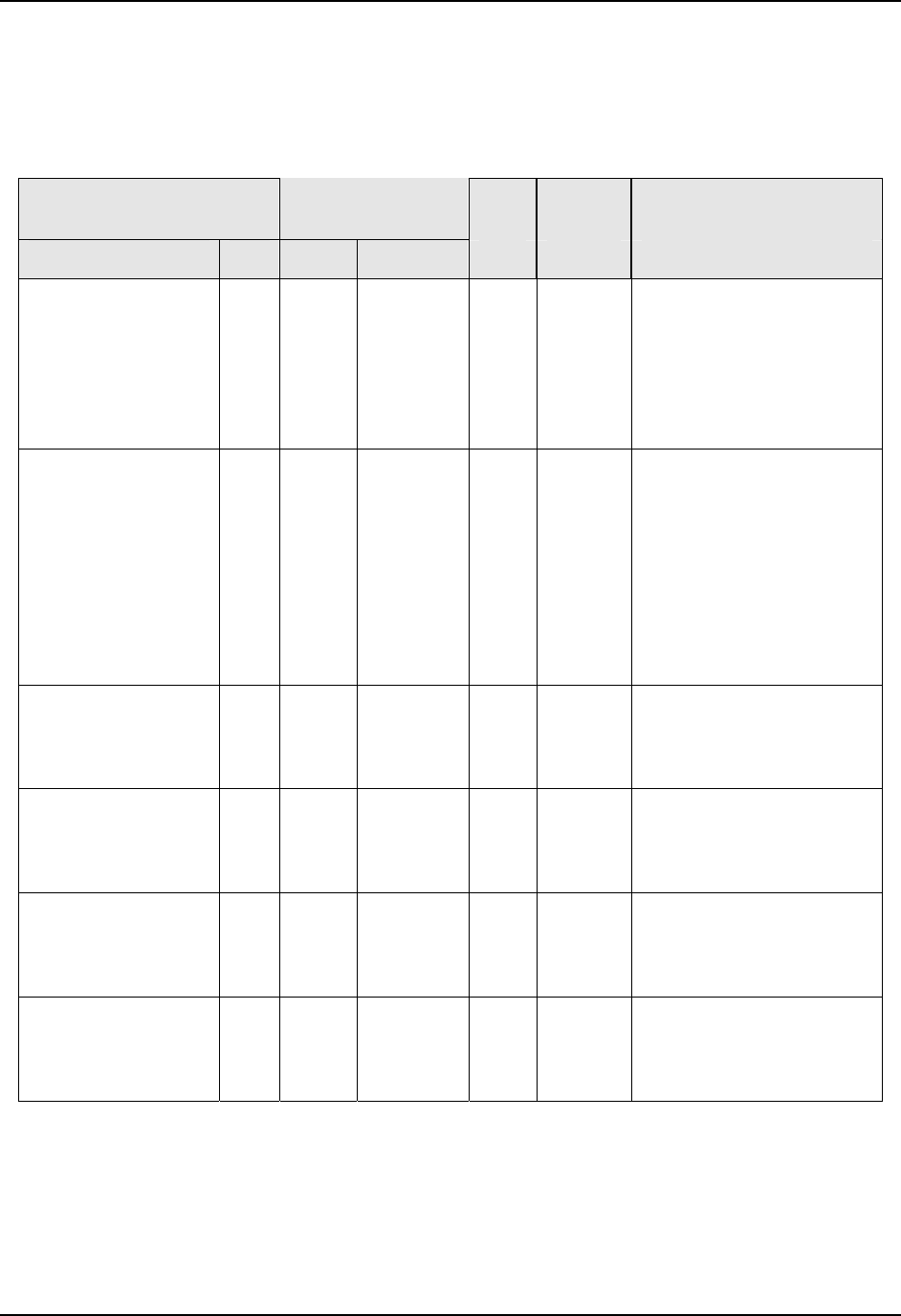
Modbus Read, Write and Override Parameters plus Exception Codes
10.7.17 Control
Table 10-26 lists all the register addresses and ranges or selections for the function
prompts in Set-up Group Control.
Table 10-26 Set-up Group – Control
Parameter
Register
Address
Data
Type
Access Data Range or
Enumerated Selection
ID Hex Decimal Description
PV Source 133 0085 133 INT R/W 0 = Input 1
1 = Input 2
2 = Input 3
3 = Input 4
4 = Input 5
5 = Input AL1
6 = Input AL2
Tuning Parameter
Selection
172 00AC 172 INT R/W 0 = One set only
1 = 2 sets keyboard
selected
2 = 2 sets with PV
automatic switchover
3 = 2 sets with setpoint
(SP) automatic switchover
4 = Four sets Keyboard
5 = Four sets PV switch
6 = Four sets SP switch
Automatic
Switchover Value
PID1 to PID2 (used
with ID172 )
56 0038 056 FP R/W Within the PV Range in
engineering units
Automatic
Switchover Value
PID2 to PID3 (used
with ID172 )
9 4009 16393 FP R/W Within the PV Range in
engineering units
Automatic
Switchover Value
PID3 to PID4 (used
with ID 172 )
10 400A 16394 FP R/W Within the PV Range in
engineering units
Local Setpoint
Source (Number of
LSPs)
173 00AD 173 INT R/W 0 = One Local Setpoint
1 = Two Local Setpoints
2 = Three Local Setpoints
3 = Four LSP
March 2012 UDC3500 Universal Digital Controller Product Manual 413
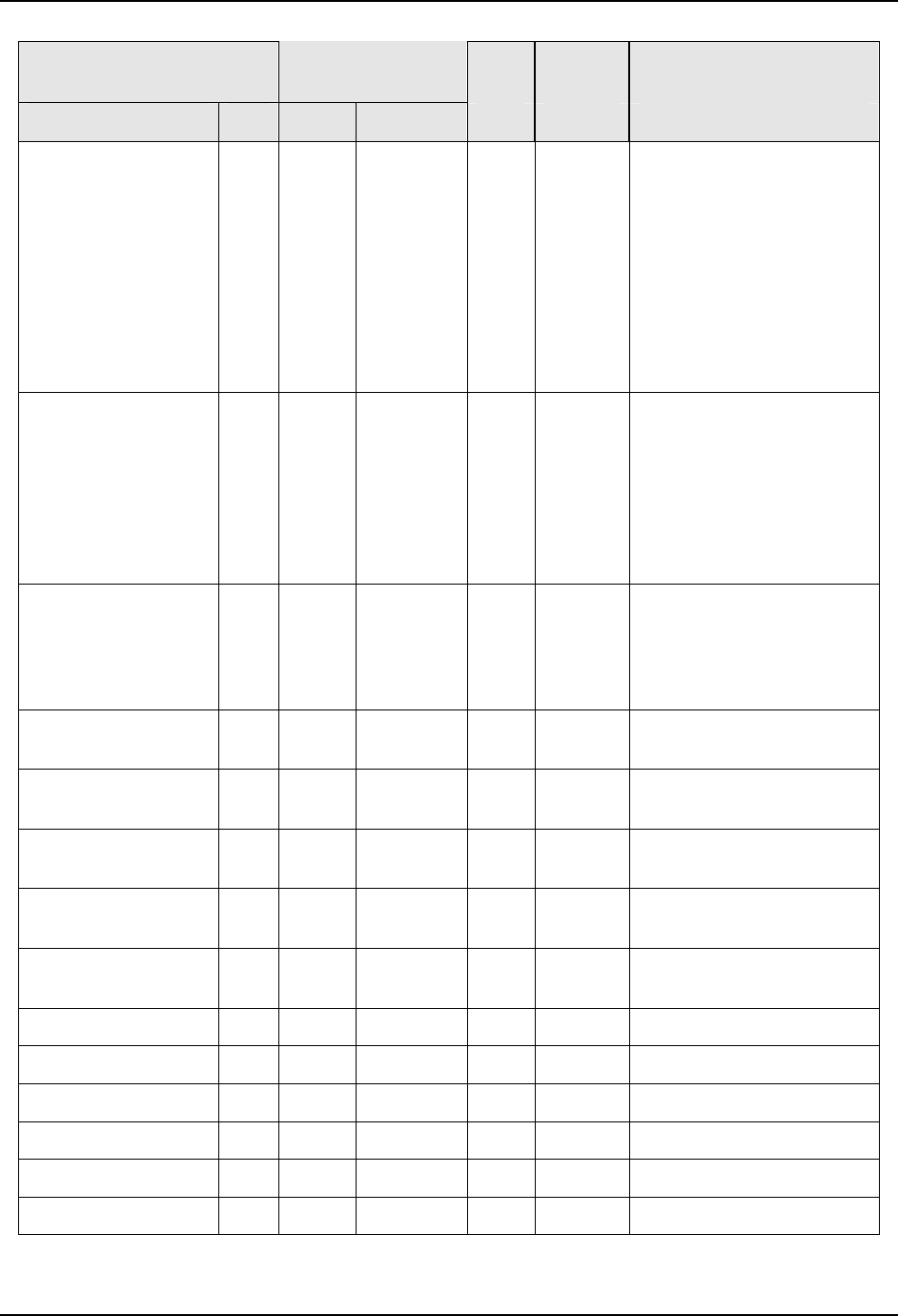
Modbus Read, Write and Override Parameters plus Exception Codes
414 UDC3500 Universal Digital Controller Product Manual March 2012
Parameter
Register
Address
Data
Type
Access Data Range or
Enumerated Selection
Description ID Hex Decimal
Power Up Mode
Recall
130 0082 130 INT R/W Control Setpoint
Mode Mode
0 = MAN LSP1
1 = AUTO LSP1
2 = AUTO Last
RSP
3 = LAST Last SP
4 = LAST Last
Local
SP
RSP Source 131 0083 131 INT R/W 0 = None
1 = Input 1
2 = Input 2
3 = Input 3
4 = Input 4
5 = Input 5
6 = Alg 1
7 = Alg 2
Setpoint Tracking 138 008A 138 INT R/W 0 = None
1 = LSP = PV (when in
Manual)
2 = LSP = RSP (when
switched)
Auto Bias 137 0089 137 INT R/W 0 = Disable
1 = Enable
Control Setpoint
High Limit
7 0007 007 FP R/W 0 to 100% of PV
(engineering units)
Control Setpoint Low
Limit
8 0008 008 FP R/W 0 to 100% of PV
(engineering units)
Control Output
Direction
135 0087 135 INT R/W 0 = Direct
1 = Reverse
Output Rate Enable 156 009C 156 INT R/W 0 = Disable
1 = Enable
Output Rate Up 110 006E 110 FP R/W 0.00 to 9999% per minute
Output Rate Down 111 006F 111 FP R/W 0.00 to 9999% per minute
High Output Limit 14 000E 014 FP R/W –5 to 105% of output
Low Output Limit 15 000F 015 FP R/W –5 to 105% of output
High Integral Limit 16 0010 016 FP R/W –5 to 105%
Low Integral Limit 17 0011 017 FP R/W –5 to 105%
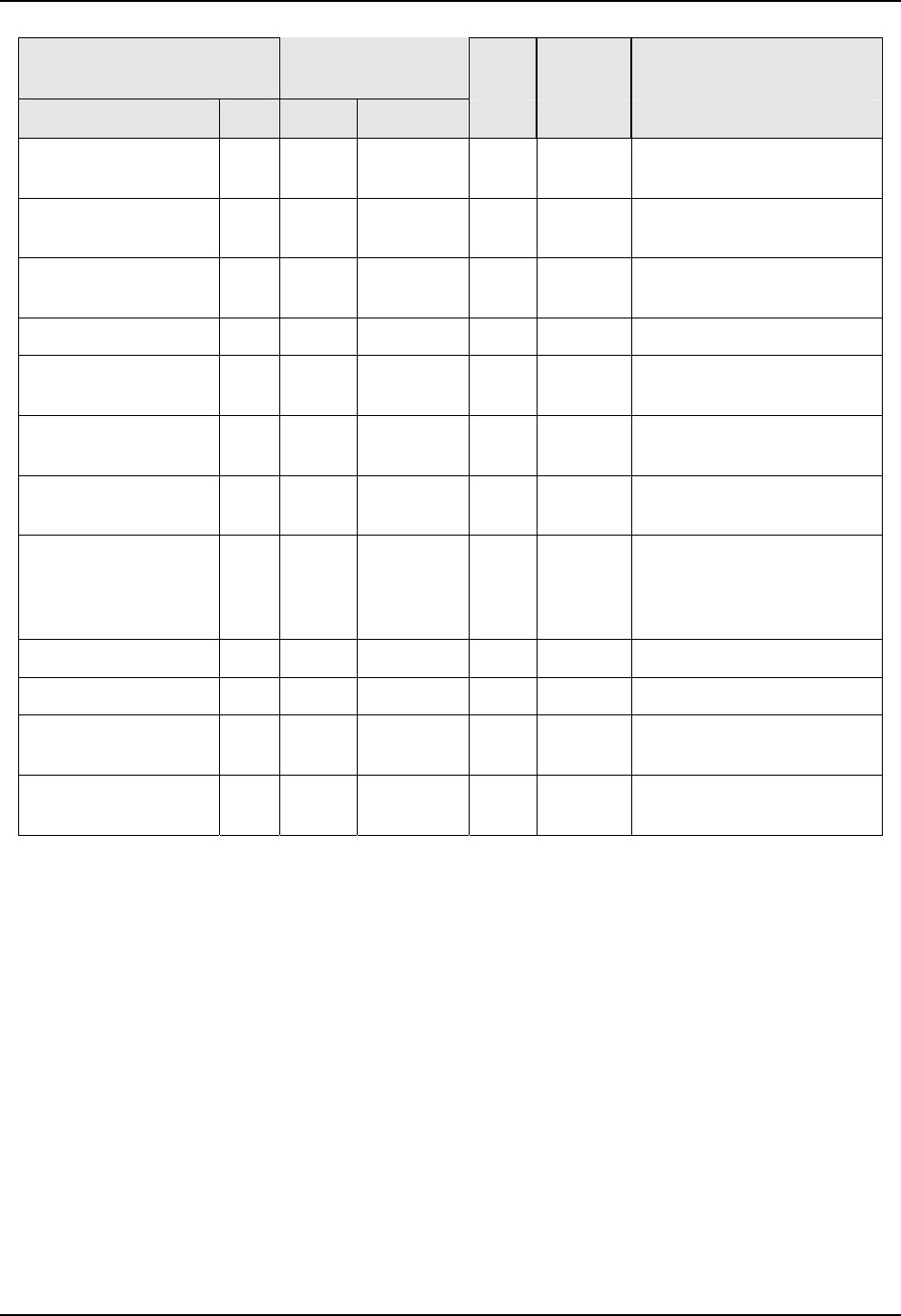
Modbus Read, Write and Override Parameters plus Exception Codes
March 2012 UDC3500 Universal Digital Controller Product Manual 415
Parameter
Register
Address
Data
Type
Access Data Range or
Enumerated Selection
Description ID Hex Decimal
Output Deadband for
Time Duplex
18 0012 018 FP R/W –5 to +25.0%
Output Deadband for
TPSC
76 004C 076 FP R/W 0.5 to 5.0%
Output Drop Off
Limit
20 0014 020 FP R/W –5 to 105%
Output Hysteresis 19 0013 019 FP R/W 0.0 to 100.0% of PV
Failsafe Mode 213 00D5 213 INT R/W 0 = Latching
1 = Non latching
Failsafe Output
Level
40 0028 040 FP R/W 0 to 100%
TPSC Power Output 183 00B7 183 INT R/W 0 = Last
1 = Failsafe
TPSC Failsafe
Output
184 00B8 184 INT R/W 0 = Motor goes to closed
position (0%)
1 = Motor goes to open
position (100%)
Manual Output 113 0071 113 FP R/W 0 to 100%
Automatic Output 114 0072 114 FP R/W 0 to 100%
Proportional Band
Units
148 0094 148 INT R/W 0 = Gain
1 = Proportional band
Reset Units 149 0095 149 INT R/W 0 = Minutes
1 = RPM
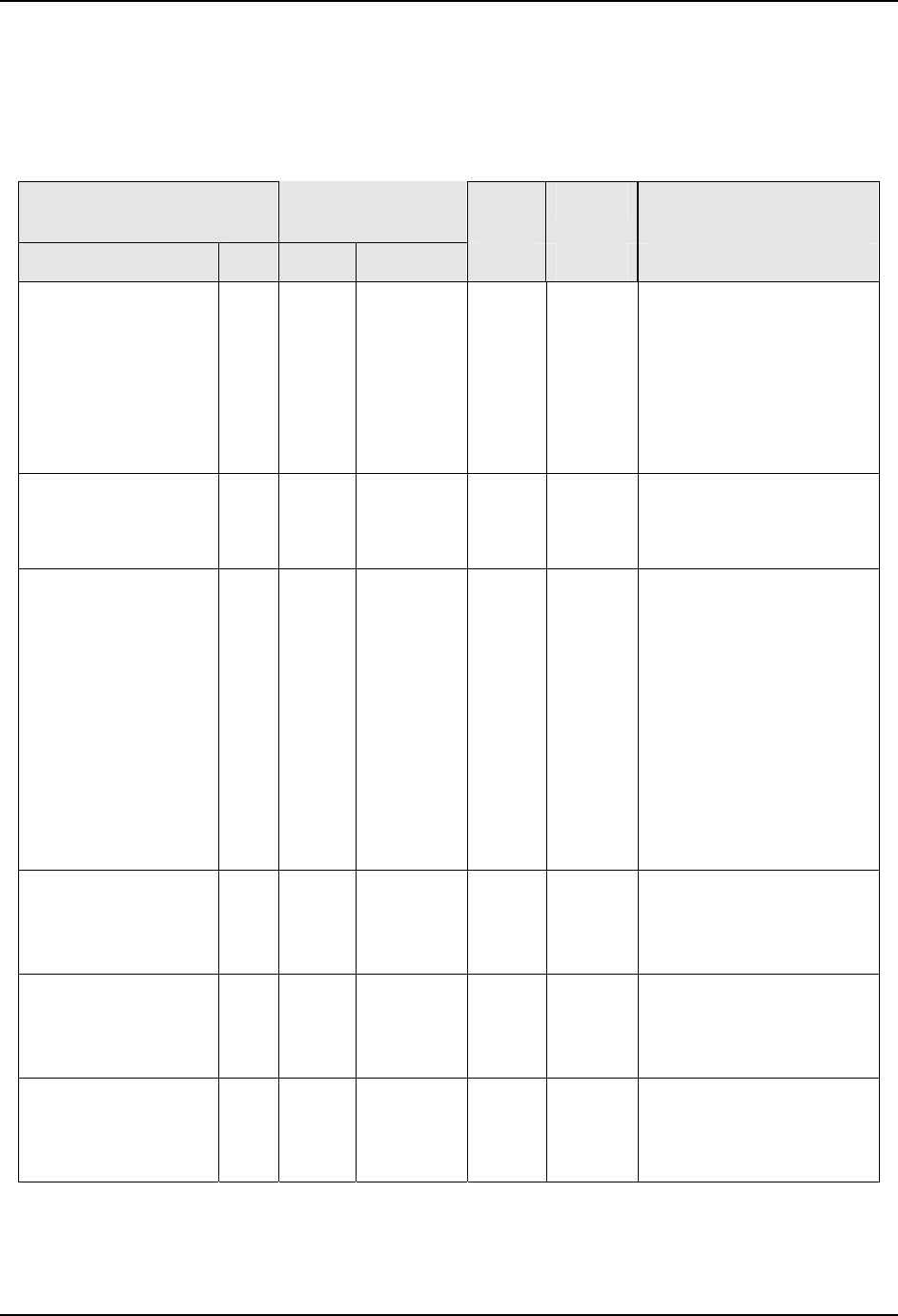
Modbus Read, Write and Override Parameters plus Exception Codes
10.7.18 Control Loop 2
Table 10-27 lists all the register addresses and ranges or selections for the function
prompts in Set-up Group Control2.
Table 10-27 Set-up Group – Control2
Parameter
Register
Address
Data
Type
Access Data Range or
Enumerated Selection
ID Hex Decimal Description
PV Source Loop2 133 0185 389 INT R/W 0 = Input 1
1 = Input 2
2 = Input 3
3 = Input 4
4 = Input 5
5 = Input Algorithm 1
6 = Input Algorithm 2
7 = None
132 0184 388 INT R/W
0 = Disable
1 = AutoMan
2 = SP1
3 = AM + SP1
Link Modes and Set
Point
Tuning Parameter
Selection Loop2
172 01AC 428 INT R/W 0 = One set only
1 = 2 sets keyboard
selected
2 = 2 sets with PV
automatic switchover
3 = 2 sets with setpoint
(SP) automatic
switchover
4 = Four sets Keyboard
5 = Four sets Auto Switch
PV
6 = Four sets Auto Switch
SP
Automatic Loop2
Switchover Value
PID1 to PID2 (used
with ID 172 )
9 0109 265 FP R/W Within the PV Range in
engineering units
Automatic Loop2
Switchover Value
PID2 to PID3 (used
with ID 172 )
10 010A 266 FP R/W Within the PV Range in
engineering units
Automatic Loop2
Switchover Value
PID3 to PID4 (used
with ID 172 )
11 010B 267 FP R/W Within the PV Range in
engineering units
416 UDC3500 Universal Digital Controller Product Manual March 2012
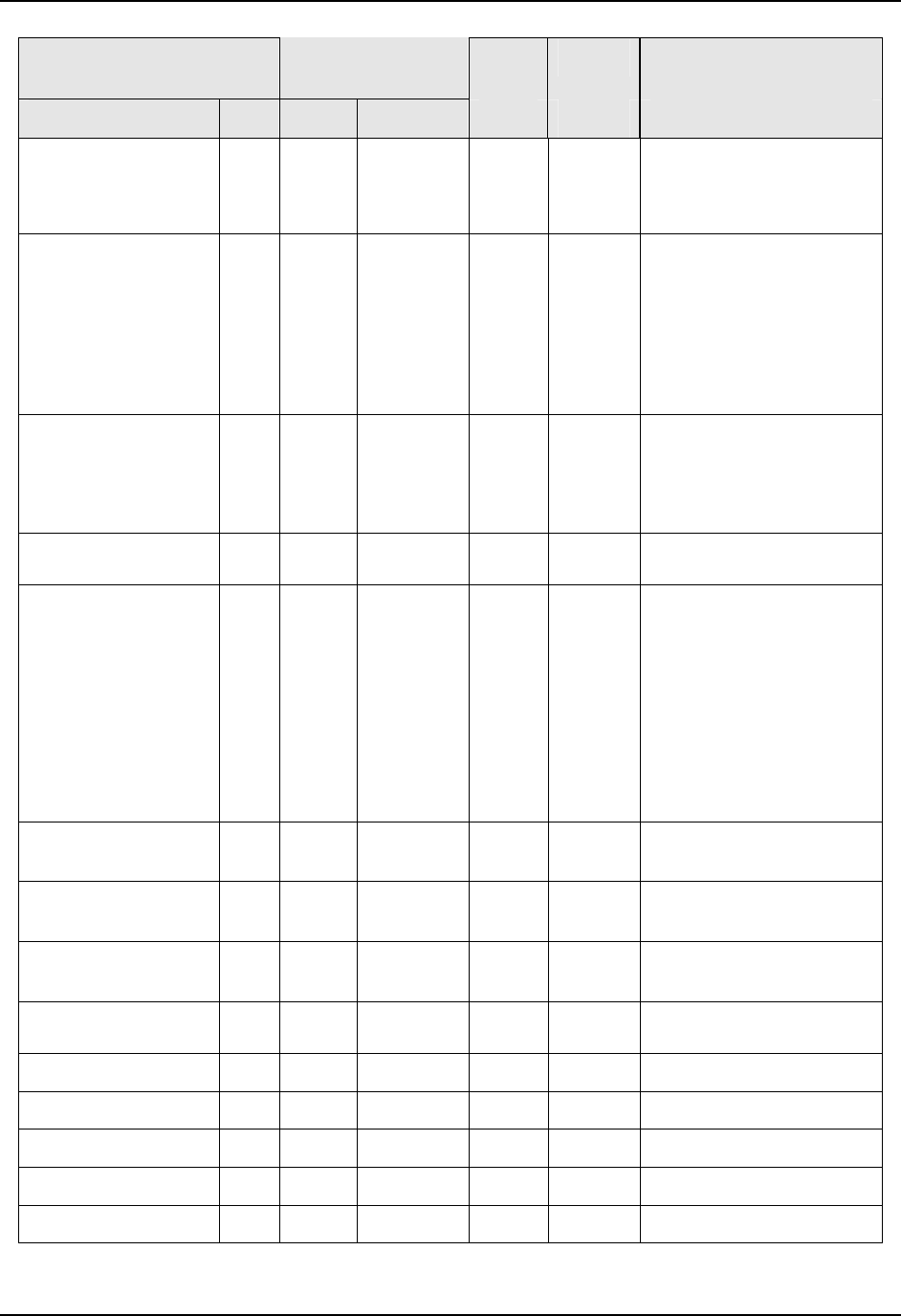
Modbus Read, Write and Override Parameters plus Exception Codes
March 2012 UDC3500 Universal Digital Controller Product Manual 417
Parameter
Register
Address
Data
Type
Access Data Range or
Enumerated Selection
Description ID Hex Decimal
Local Setpoint
Source (Number of
LSPs) Loop2
173 01AD 429 INT R/W
0 = One Local Setpoint
1 = Two Local Setpoints
2 = Three Local Setpoints
3 = Four Local Setpoints
RSP Source Loop2 131 0183 387 INT R/W
0 = None
1 = Input 1
2 = Input 2
3 = Input 3
4 = Input 4
5 = Input 5
6 = Input Algorithm 1
7 = Input Algorithm 2
Setpoint Tracking
Loop2
138 018A 394 INT R/W
0 = None
1 = LSP = PV (when in
Manual)
2 = LSP = RSP (when
switched)
Auto Bias Loop2 137 0189 393 INT R/W
0 = Disable
1 = Enable
Power Up Mode
Recall Loop2
130 0182 386 INT R/W
Control Setpoint
Mode Mode
0 = MAN LSP
1 = AUTO LSP
2 = AUTO Last
RSP
3 = LAST Last SP
4 = LAST Last
Local
SP
Control Setpoint
High Limit Loop2
7 0107 263 FP R/W
0 to 100% of PV
(engineering units)
Control Setpoint Low
Limit Loop2
8 0108 264 FP R/W
0 to 100% of PV
(engineering units)
Control Output
Direction
135 0187 391 INT R/W
0 = Direct
1 = Reverse
Output Rate Enable 156 019C 412 INT R/W
0 = Disable
1 = Enable
Output Rate Up 110 016E 366 FP R/W
0.00 to 9999% per minute
Output Rate Down 111 016F 367 FP R/W
0.00 to 9999% per minute
High Output Limit 14 010E 270 FP R/W
–5 to 105% of output
Low Output Limit 15 010F 271 FP R/W
–5 to 105% of output
High Integral Limit 16 0110 272 FP R/W
–5 to 105%
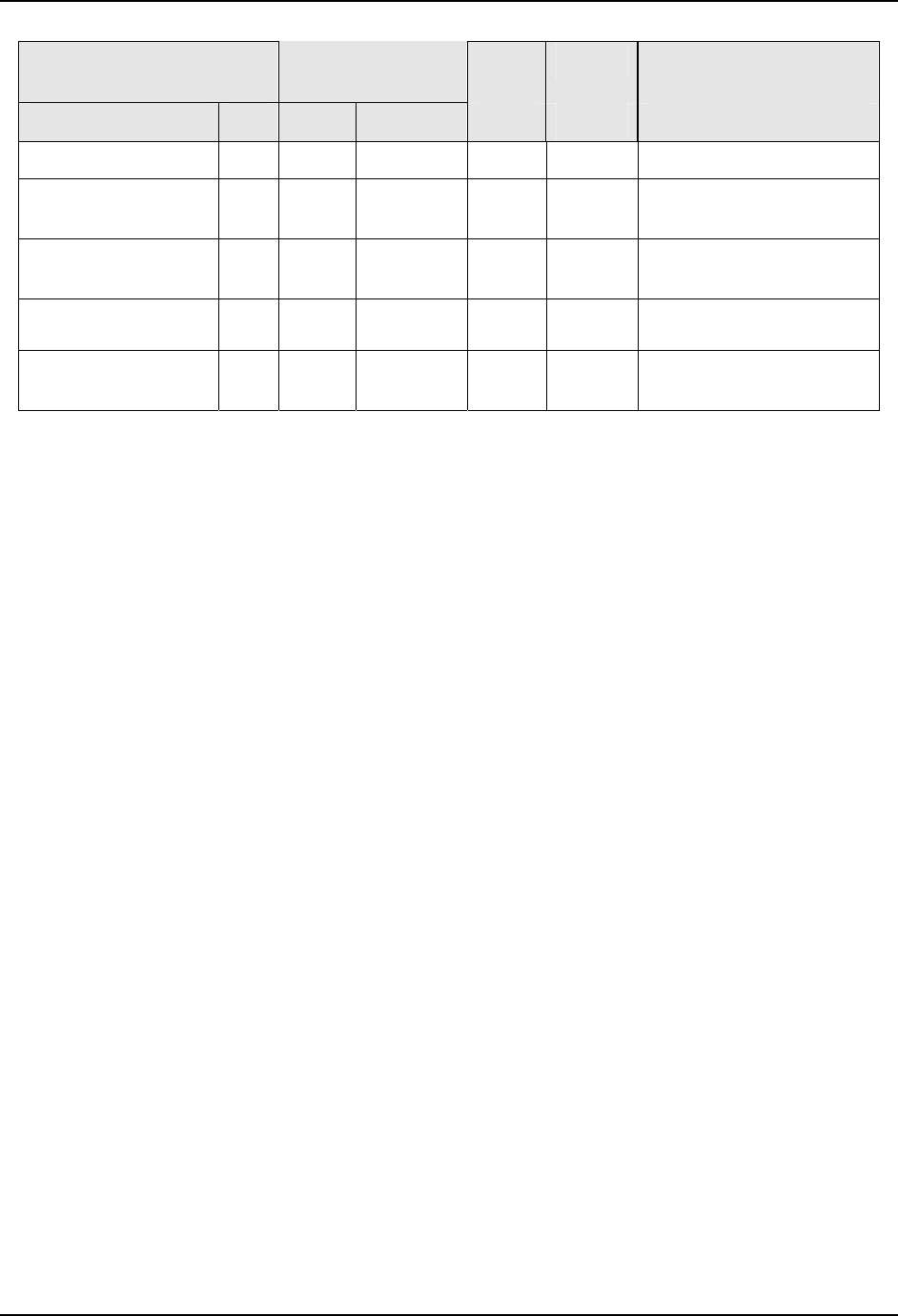
Modbus Read, Write and Override Parameters plus Exception Codes
418 UDC3500 Universal Digital Controller Product Manual March 2012
Parameter
Register
Address
Data
Type
Access Data Range or
Enumerated Selection
Description ID Hex Decimal
Low Integral Limit 17 0101 273 FP R/W
-5 to 105%
Output Deadband for
Time Duplex
18 0102 274 FP R/W
–5 to +25.0%
Output Drop Off
Limit
20 0114 276 FP R/W
–5 to 105%
Failsafe Mode 159 019F 415 INT R/W
0 = Latching
1 = Non latching
Failsafe Output
Level
40 0128 296 FP R/W
0 to 100%
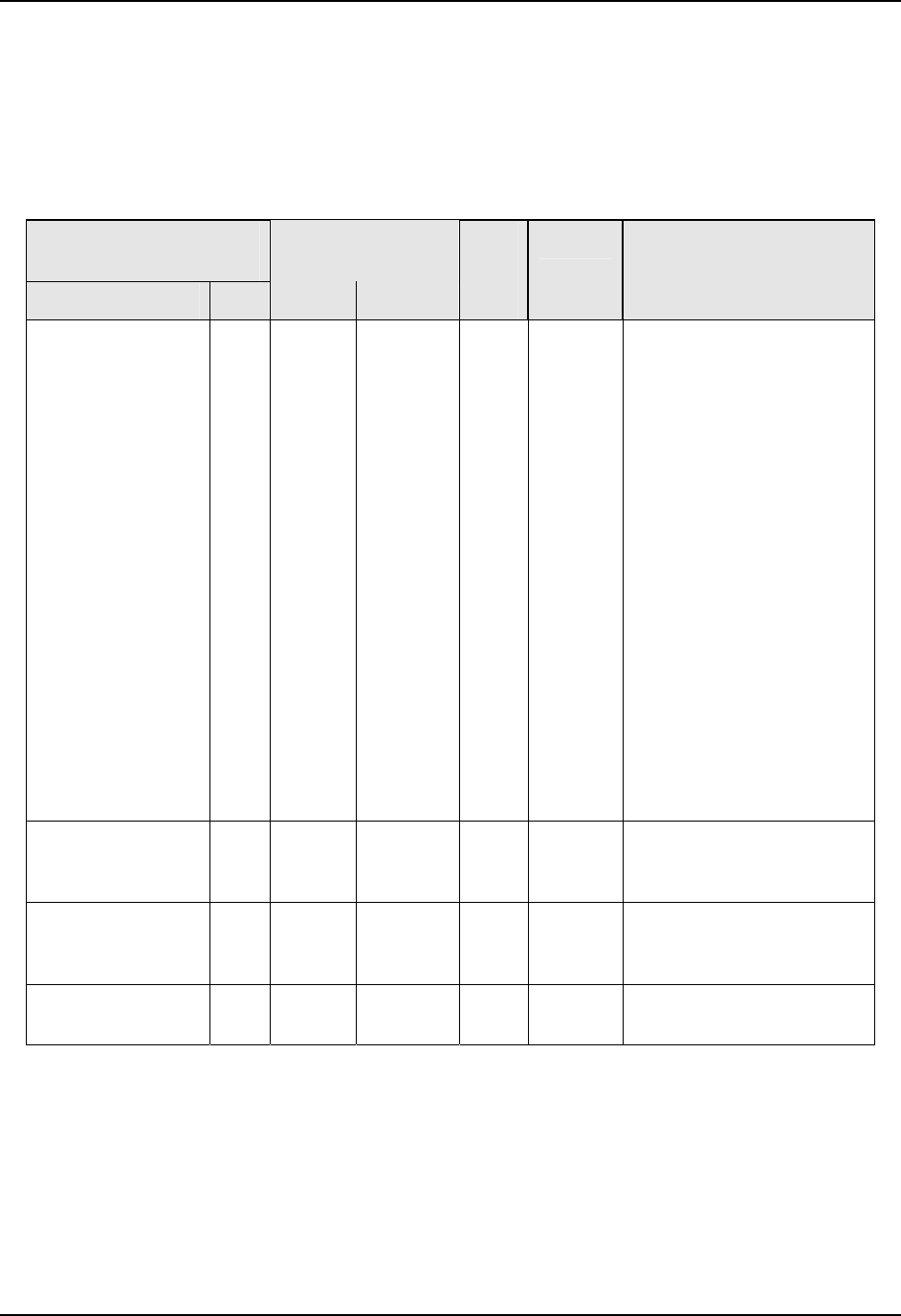
Modbus Read, Write and Override Parameters plus Exception Codes
10.7.19 Options
Table 10-28 lists all the register addresses and ranges or selections for the function
parameters in Set-up Group Options.
Table 10-28 Set-up Group – Options
Register
Address
Data
Type
Access Data Range or
Enumerated Selection
Parameter
ID Hex Decimal Description
Current Output2
(Aux Output)*
134 0086 134 INT R/W 0 = None
1 = Input 1
2 = Input 2
3 = Input 3
4 = Input 4
5 = Input 5
6 = PV
7 = CB OUT
8 = Dev
9 = Out
10 = SP
11 = LSP 1
12 = RSP
13 = Input ALG 1
14 = Input ALG 2
15 = PV 2
16 = CBOUTL2
17 = DEV2
18 = Output 2
19 = SP Loop 2
20 = LSP1 Loop 2
21 = RSP Loop 2
Current Output 2
Low Scaling
Factor
49 0031 049 FP R/W Within the range of the
selected variable in ID 134
Current Output 2
High Scaling
Factor
50 0032 050 FP R/W Within the range of the
selected variable in ID 134
Current Output 2
Range
236 00EB 236 INT R/W 0 = 4-20 mA
1 = 0-20 mA
March 2012 UDC3500 Universal Digital Controller Product Manual 419
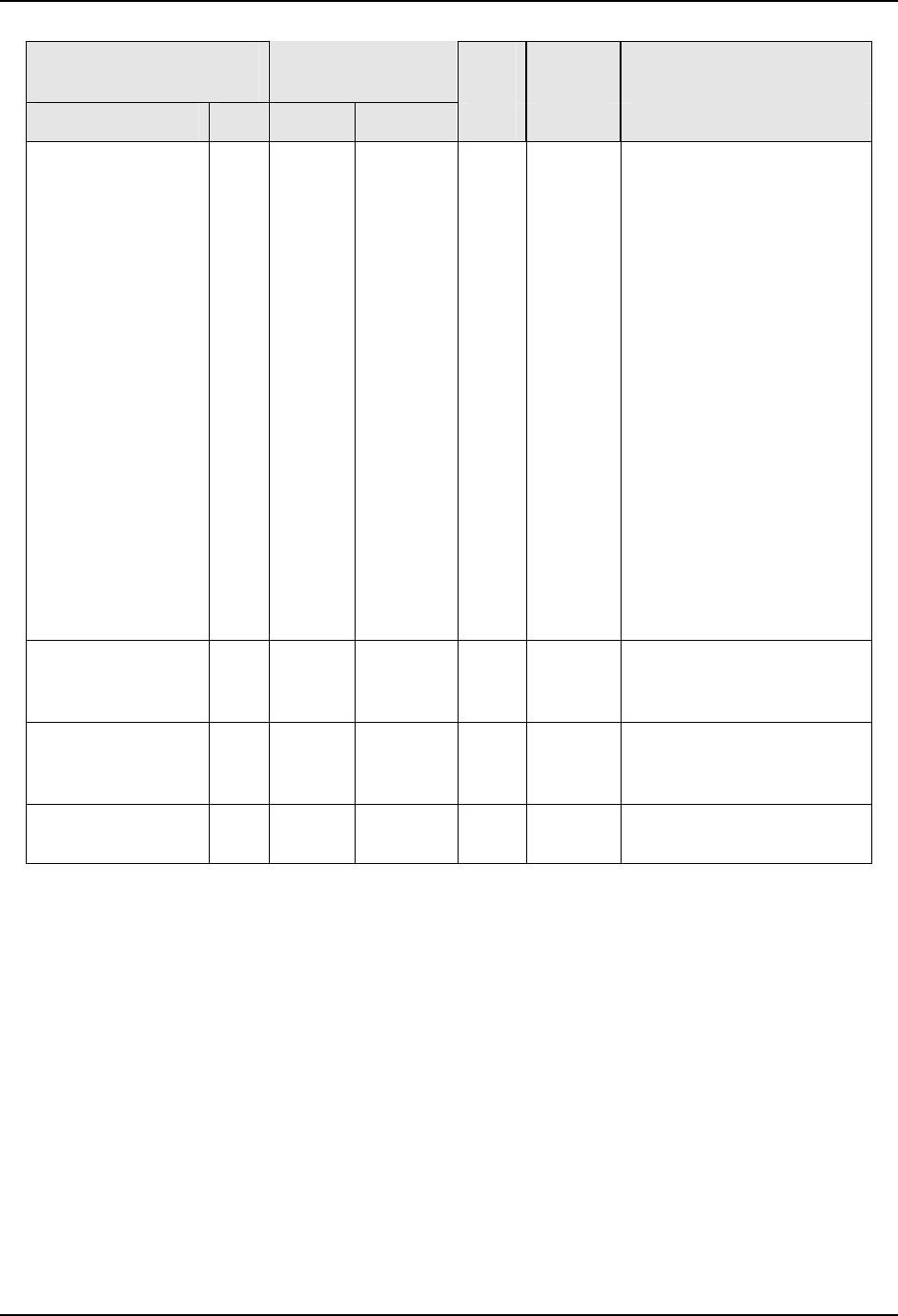
Modbus Read, Write and Override Parameters plus Exception Codes
420 UDC3500 Universal Digital Controller Product Manual March 2012
Parameter
Register
Address
Data
Type
Access Data Range or
Enumerated Selection
Description ID Hex Decimal
Current Output 3 246 00F6 246 INT R/W 0 = None
1 = Input 1
2 = Input 2
3 = Input 3
4 = Input 4
5 = Input 5
6 = PV
7 = CB OUT
8 = Dev
9 = Out
10 = SP
11 = LSP 1
12 = RSP
13 = Input ALG 1
14 = Input ALG 2
15 = PV 2
16 = CBOUTL2
17 = DEV2
18 = Output Loop 2
19 = SP Loop 2
20 = LSP1 Loop 2
21 = RSP Loop 2
Current Output 3
Low Scaling
Factor
86 0056 86 FP R/W Within the range of the
selected variable in ID 246
Current Output 3
High Scaling
Factor
87 0057 87 FP R/W Within the range of the
selected variable in ID 134
Current Output 3
Range
247 00F7 247 INT R/W 0 = 4-20 mA
1 = 0-20 mA
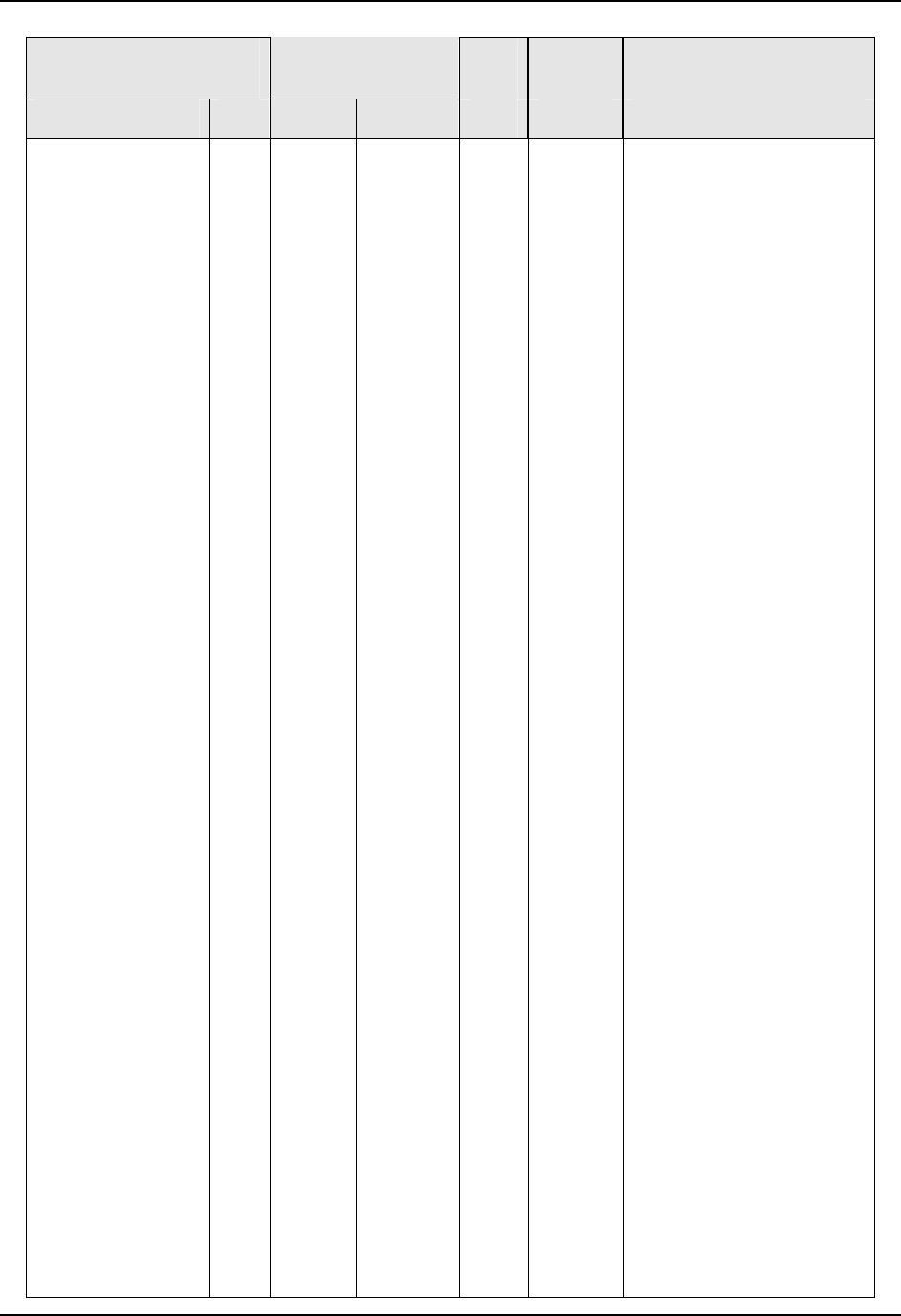
Modbus Read, Write and Override Parameters plus Exception Codes
March 2012 UDC3500 Universal Digital Controller Product Manual 421
Parameter
Register
Address
Data
Type
Access Data Range or
Enumerated Selection
Description ID Hex Decimal
Digital Input #1 186 00BA 186 INT R/W 0 = Disable
1 = To Manual
2 = To Local Setpoint #1
3 = To Local Setpoint #2
4 = To Local Setpoint #3
5 = To Local Setpoint #4
6 = To Direct Action
7 = To Hold Ramp
8 = To PID 2
9 = To PID 3
10 = To PID 4
11 = PV = Input 2
12 = PV = Input 3
13 = Rerun SPP Cycle
14 = To Run Ramp
15 = Reset SP Program
16 = Inhibit Reset
17 = To Manual/Failsafe
Output
18 = Disable Keyboard
19 = To Automatic Output
20 = To Timer
21 = To Auto/Man Station
22 = Initiate Limit Cycle
Tuning
23 = Setpoint Initialization
(SP=PV)
24 = Output Tracks Input 2
25 = Track 2
26 = To Out 2 (Output 2
overrides Output 1)
27 = To RSP
28 = Display Other Loop
on Closure
29 = External Reset
Feedback
30 = To Purge
31 = To Purge AX
32 = To Low Fire
33 = Manual Latching
34 = Rest Totalizer
35 = PV Hold
36 = Reset T1
37 = Reset T2
38 = Reset T3
39 = R All Timers
40 = Counter 1
41 = Counter 2
42 = Counter 3
43 = Reset all Counters
44 = Reset all Timers
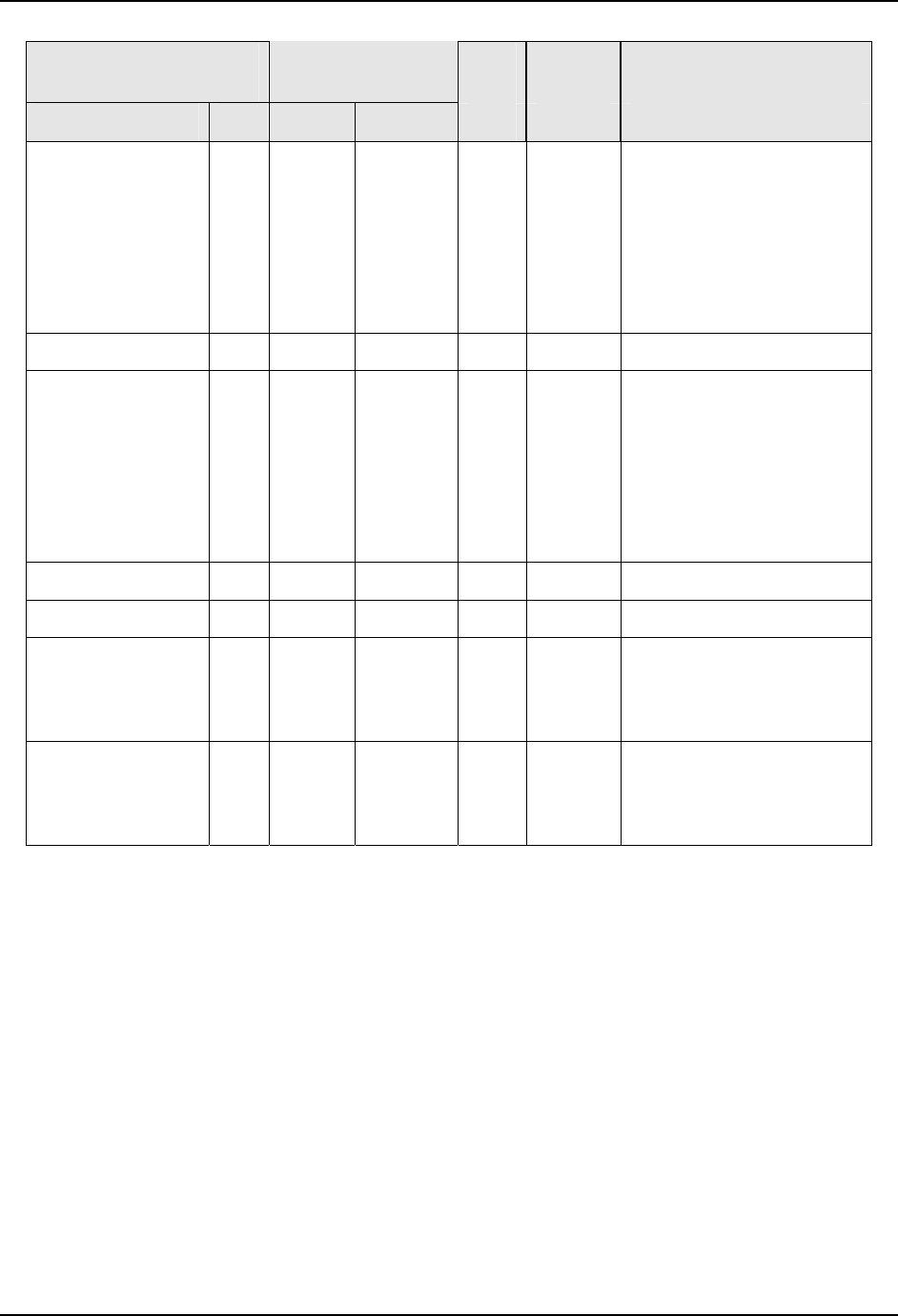
Modbus Read, Write and Override Parameters plus Exception Codes
422 UDC3500 Universal Digital Controller Product Manual March 2012
Parameter
Register
Address
Data
Type
Access Data Range or
Enumerated Selection
Description ID Hex Decimal
Digital Input #1
Combinations
188 00BC 188 INT R/W 0 = Disable
1 = +PID2
2 = +Direct
3 = +LSP2
4 = +Disable Accutune
5 = +LSP1
6 = +Run
7 = +ToSP3
Digital Input #2 187 00BB 187 INT R/W Same as Digital Input #1
Digital Input #2
Combinations
189 00BC 189 INT R/W 0 = Disable
1 = +PID2
2 = +Direct
3 = +LSP2
4 = +Disable Accutune
5 = +LSP1
6 = +Run
7 = +ToSP3
Digital Input #3 174 00AE 174 INT R/W Same as Digital Input #1
Digital Input #4 175 00AF 175 INT R/W Same as Digital Input #1
DI Loop
Assignment, DI on
Loop 2
136 0088 136 INT R/W 0 = None
1 = DI 2
2 = DI 2,3
3 = DI 2,3,4
Digital Inputs Loop
2 Assign
189 01BD 445 INT R/W 0 = None
1 = DI 2
2 = DI 2,3
3 = DI 2,3,4
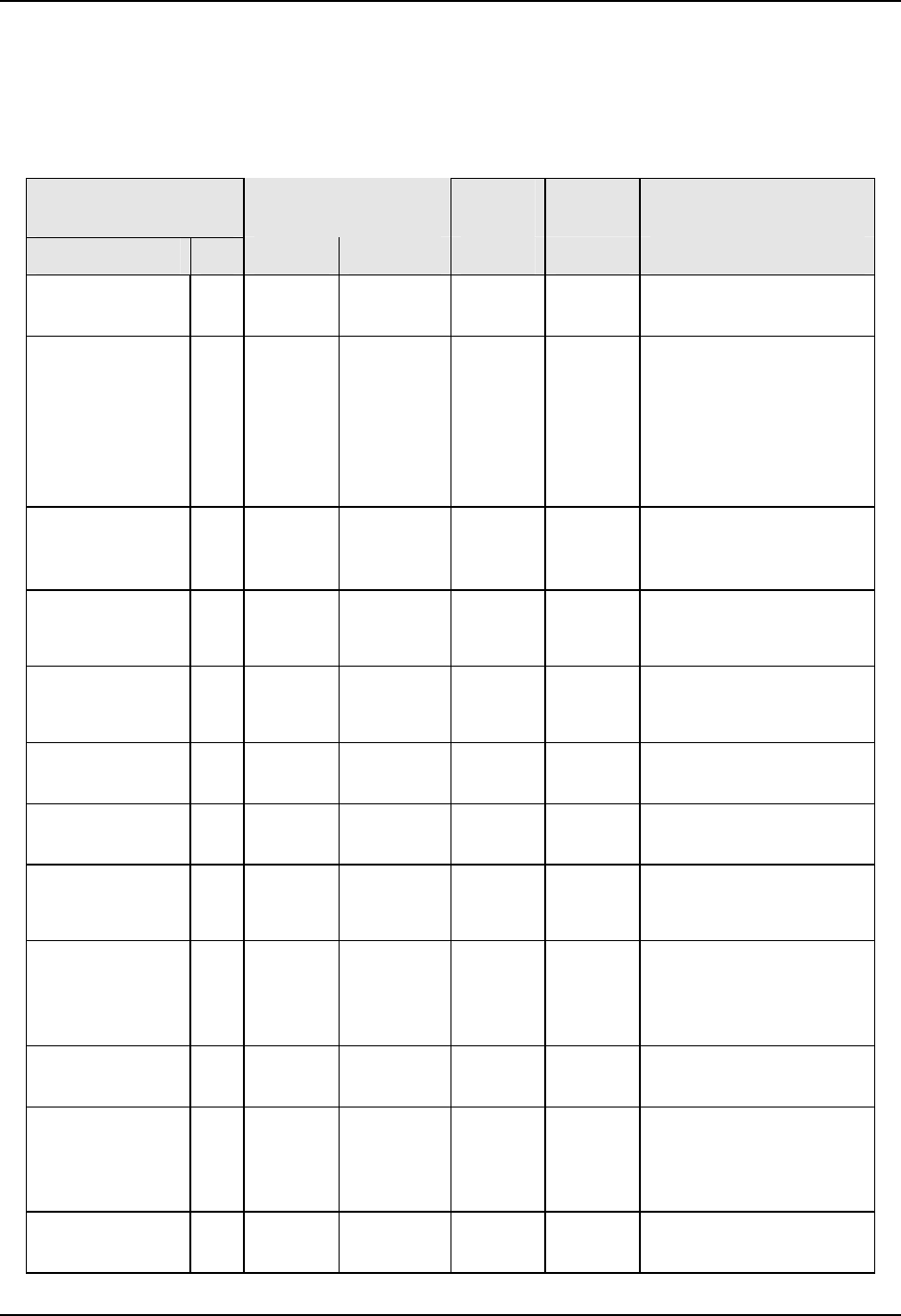
Modbus Read, Write and Override Parameters plus Exception Codes
10.7.20 Communications
Table 10-29 lists all the register addresses and ranges or selections for the function
parameters in Set-up Group Communications.
Table 10-29 Set-up Group – Communications
Parameter
Register
Address
Data
Type
Access Data Range or
Enumerated Selection
ID Hex Decimal Description
Shed Time 79 004F 79 INT R/W 0 = No Shed
1 = 255 sample periods
Shed Mode and
Output
162 00A2 162 INT R/W 0 = Last Mode and Last
Output
1 = Manual Mode, Last
Output
2 = Manual Mode, Failsafe
Output
3 = Automatic Mode
Shed Setpoint
Recall
163
00A3 163 INT R/W 0 = To Last Local Setpoint
used
1 = CSP
Computer Setpoint
Ratio
90
005A 90 FP R/W –20.00 to 20.00
Computer Setpoint
Bias
91
005B 91 FP R/W –999 to 9999.
Loop2 Computer
Setpoint Ratio
90 015A 346 FP R/W –20.00 to 20.00
Loop2 Computer
Setpoint Bias
91 015B 347 FP R/W –999 to 9999.
Communication
Address
77
004D 77 FP R/W 1 - 99
Communications
Type
231 00E7 231 INT R/W 0 = None
1 = Disable
2 = RS-485 Modbus
3 = Ethernet only if installed
IR Port Enable 241 00F1 241 INT R/W 0 = Disable
1 = Enable
Baud Rate 232 00E8 232 INT R/W 0 = 4800
1 = 9600
2 = 19200
3 = 38400
Transmit Delay 78 004E 78 FP R/W Response Delay in ms
(1 to 500) +6ms
March 2012 UDC3500 Universal Digital Controller Product Manual 423
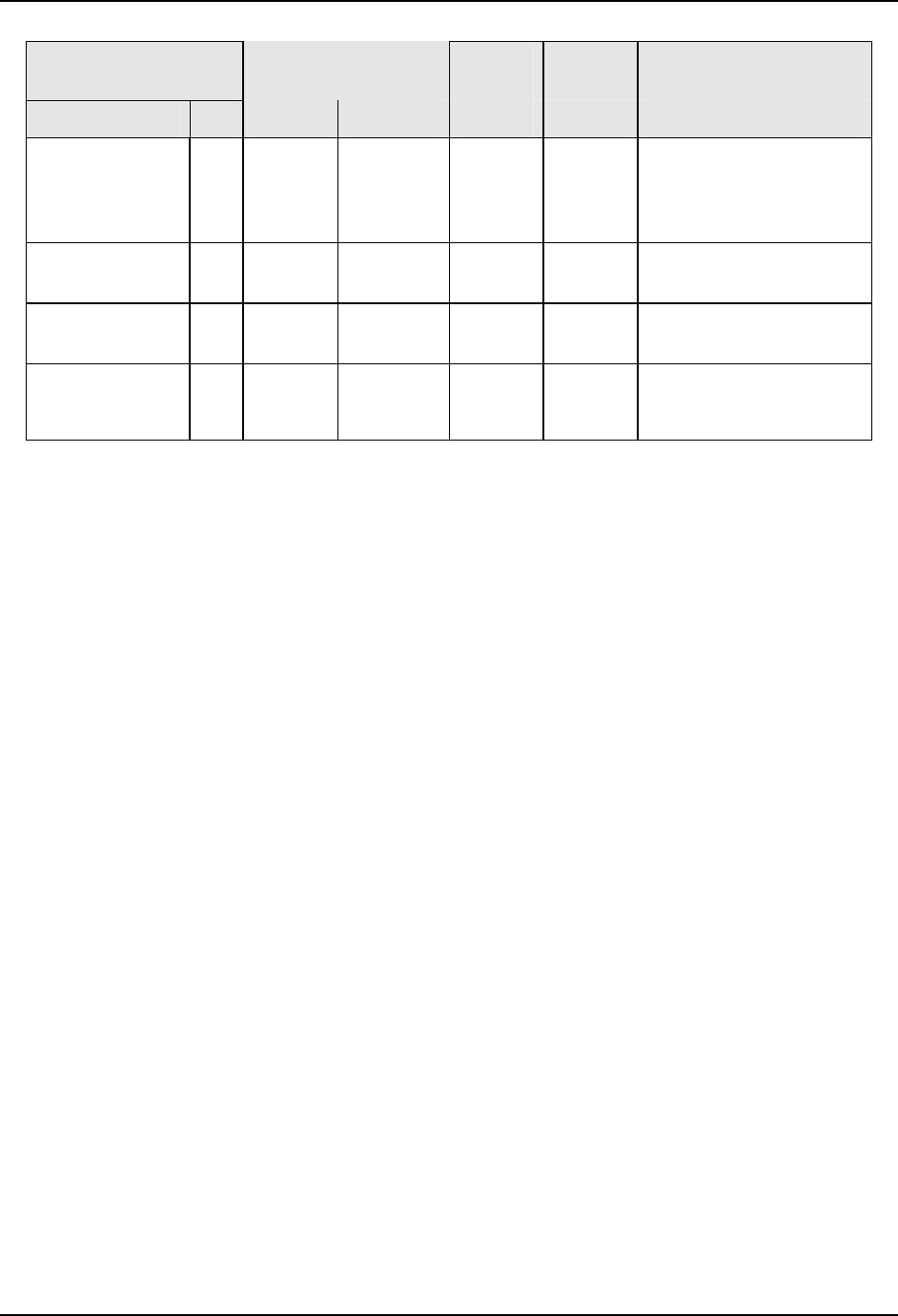
Modbus Read, Write and Override Parameters plus Exception Codes
424 UDC3500 Universal Digital Controller Product Manual March 2012
Parameter
Register
Address
Data
Type
Access Data Range or
Enumerated Selection
Description ID Hex Decimal
Floating Point Byte
Order
233
00E9 233 INT R/W 0 = Big Endian
1 = Big Endian Byte Swap
2 = Little Endian
3 = Little Endian Byte Swap
Shed Enable 234 00EA 234 INT R/W 0 = Enable
1 = Disable
Shed Time 79 004F 79 INT R/W 0 = No Shed
1 = 255 sample periods
Comm Data Units 161
00A1 161 INT R/W 0 = Percent
1 = Engineering Units
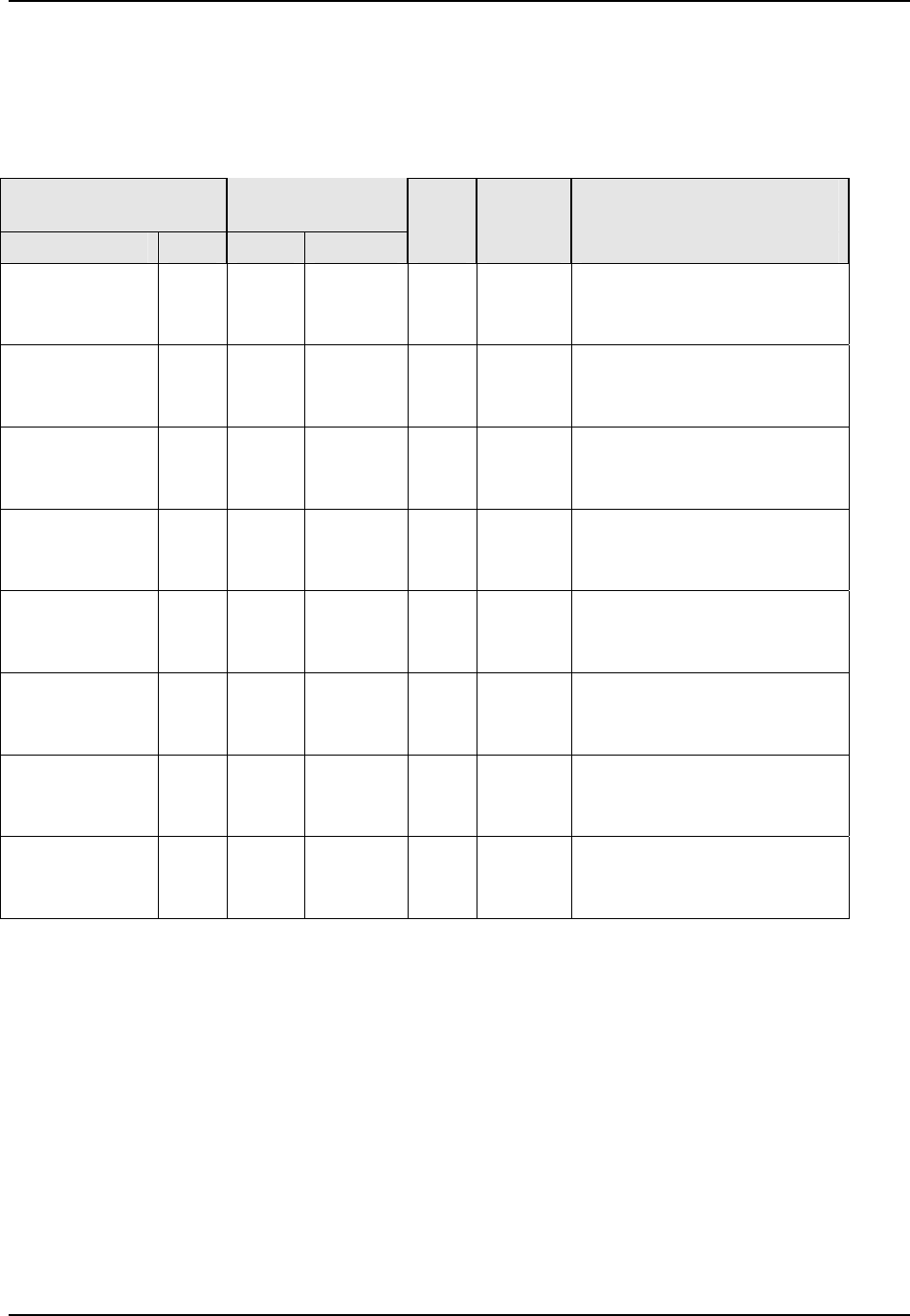
Modbus Read, Write and Override Parameters plus Exception Codes
10.7.21 Alarms
Table 10-30 lists all the register addresses and ranges or selections for the function
parameters in Set-up Group Alarms.
Table 10-30 Set-up Group – Alarms
Parameter
Register
Address
Data
Type
Access Data Range or
Enumerated Selection
ID Hex Decimal Description
Alarm 1 Setpoint 1
Value
009 0009 009 FP R/W Within the range of selected
parameter or PV span for
deviation alarm
Alarm 1 Setpoint 2
Value
010 000A 010 FP R/W Within the range of selected
parameter or PV span for
deviation alarm
Alarm 2 Setpoint 1
Value
011 000B 011 FP R/W Within the range of selected
parameter or PV span for
deviation alarm
Alarm 2 Setpoint 2
Value
012 000C 012 FP R/W Within the range of selected
parameter or PV span for
deviation alarm
Alarm 3 Setpoint 1
Value
117 0075 117 FP R/W Within the range of selected
parameter or PV span for
deviation alarm
Alarm 3 Setpoint 2
Value
118 0076 118 FP R/W Within the range of selected
parameter or PV span for
deviation alarm
Alarm 4 Setpoint 1
Value
119 0077 119 FP R/W Within the range of selected
parameter or PV span for
deviation alarm
Alarm 4 Setpoint 2
Value
115 0073 115 FP R/W Within the range of selected
parameter or PV span for
deviation alarm
March 2012 UDC3500 Universal Digital Controller Product Manual 425
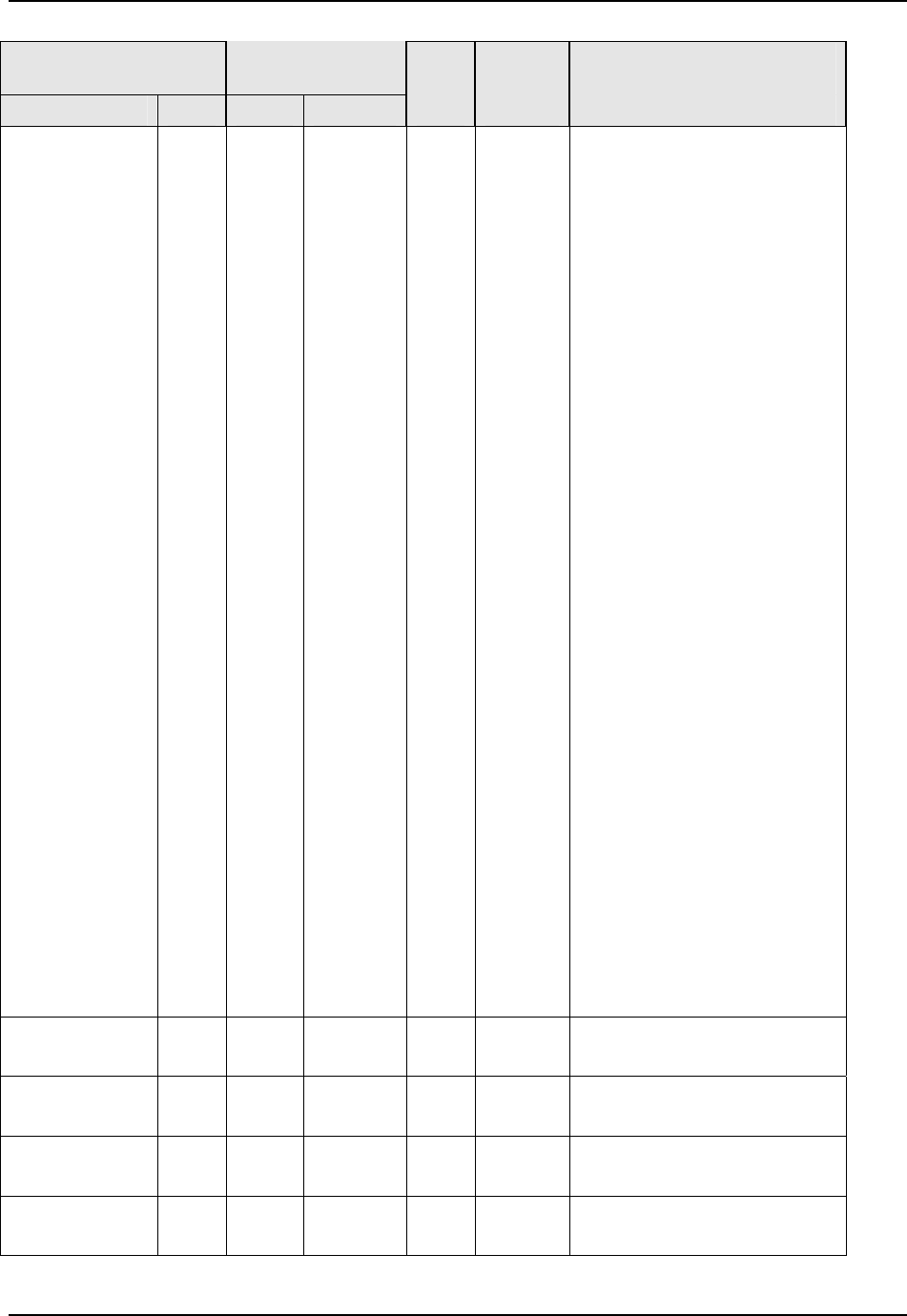
Modbus Read, Write and Override Parameters plus Exception Codes
426 UDC3500 Universal Digital Controller Product Manual March 2012
Parameter
Register
Address
Data
Type
Access Data Range or
Enumerated Selection
Description ID Hex Decimal
Alarm 1 Setpoint 1
Type
140 008C 140 INT R/W
0 = None
1 = Input 1
2 = Input 2
3 = Input 3
4 = Input 4
5 = Input 5
6 = PV
7 = Deviation
8 = Output
9 = Alarm on Shed
10 = SP Event On
11 = SP Event Off
12 = Manual
13 = Remote Setpoint
14 = Failsafe
15 = PV Rate of Change
16 = Alarm on Digital Input 1
17 = Alarm on Digital Input 2
18 = Alarm on Digital Input 3
19 = Alarm on Digital Input 4
20 = Loop Break
21 = T/C Warning
22 = T/C Fail
23 = PV Hold
24 = Total
25 = PV 2
26 = DEV 2
27 = OUT 2
28 = MAN 2
29 = RSP 2
30 = Failsafe 2
31 = PV Rate 2
32 = Break 2
33 = PV2Hold
34 = Timer 1
35 = Timer 2
36 = Timer 3
37 = Counter 1
38 = Counter 2
39 = Counter 3
Alarm 1
Setpoint 2 Type
142 008E 142 INT R/W Same as 140
Alarm 2
Setpoint 1 Type
144 0090 144 INT R/W Same as 140
Alarm 2
Setpoint 2 Type
146 0092 146 INT R/W Same as 140
Alarm 3
Setpoint 1 Type
140 408C 16524 INT R/W Same as 140
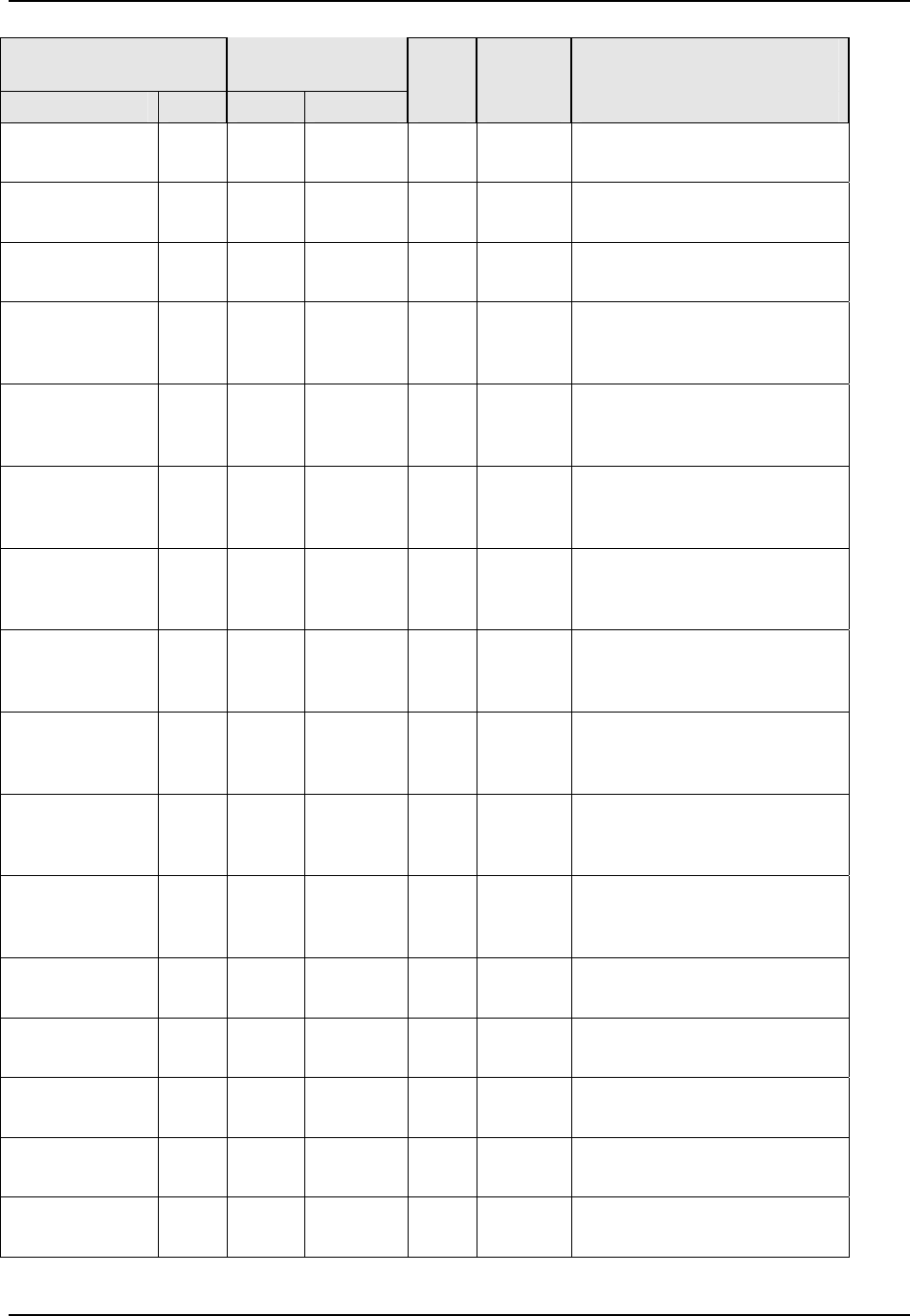
Modbus Read, Write and Override Parameters plus Exception Codes
March 2012 UDC3500 Universal Digital Controller Product Manual 427
Parameter
Register
Address
Data
Type
Access Data Range or
Enumerated Selection
Description ID Hex Decimal
Alarm 3
Setpoint 2 Type
142 408E 16526 INT R/W Same as 140
Alarm 4
Setpoint 1 Type
144 4090 16528 INT R/W Same as 140
Alarm 4
Setpoint 2 Type
146 4092 16530 INT R/W Same as 140
Alarm 1
Setpoint 1
Event
141 008D 141 INT R/W 0 = Low Alarm
1 = High Alarm
Alarm 1
Setpoint 2
Event
143 008F 143 INT R/W 0 = Low Alarm
1 = High Alarm
Alarm 2
Setpoint 1
Event
145 0091 145 INT R/W 0 = Low Alarm
1 = High Alarm
Alarm 2
Setpoint 2
Event
147 0093 147 INT R/W 0 = Low Alarm
1 = High Alarm
Alarm 3
Setpoint 1
Event
141 409D 16525 INT R/W 0 = Low Alarm
1 = High Alarm
Alarm 3
Setpoint 2
Event
144 4090 16527 INT R/W 0 = Low Alarm
1 = High Alarm
Alarm 4
Setpoint 1
Event
145 4091 16529 INT R/W 0 = Low Alarm
1 = High Alarm
Alarm 4
Setpoint 2
Event
147 4093 16531 INT R/W 0 = Low Alarm
1 = High Alarm
Alarm 1
Hysteresis
11 400B 16395 FP R/W 0.0 to 100% of output or span
Alarm 2
Hysteresis
12 400C 16396 FP R/W 0.0 to 100% of output or span
Alarm 3
Hysteresis
13 400D 16397 FP R/W 0.0 to 100% of output or span
Alarm 4
Hysteresis
14 400E 16398 FP R/W 0.0 to 100% of output or span
Alarm 1
Latching
200 00C8 200 INT R/W 0 = Non Latching
1 = Latching
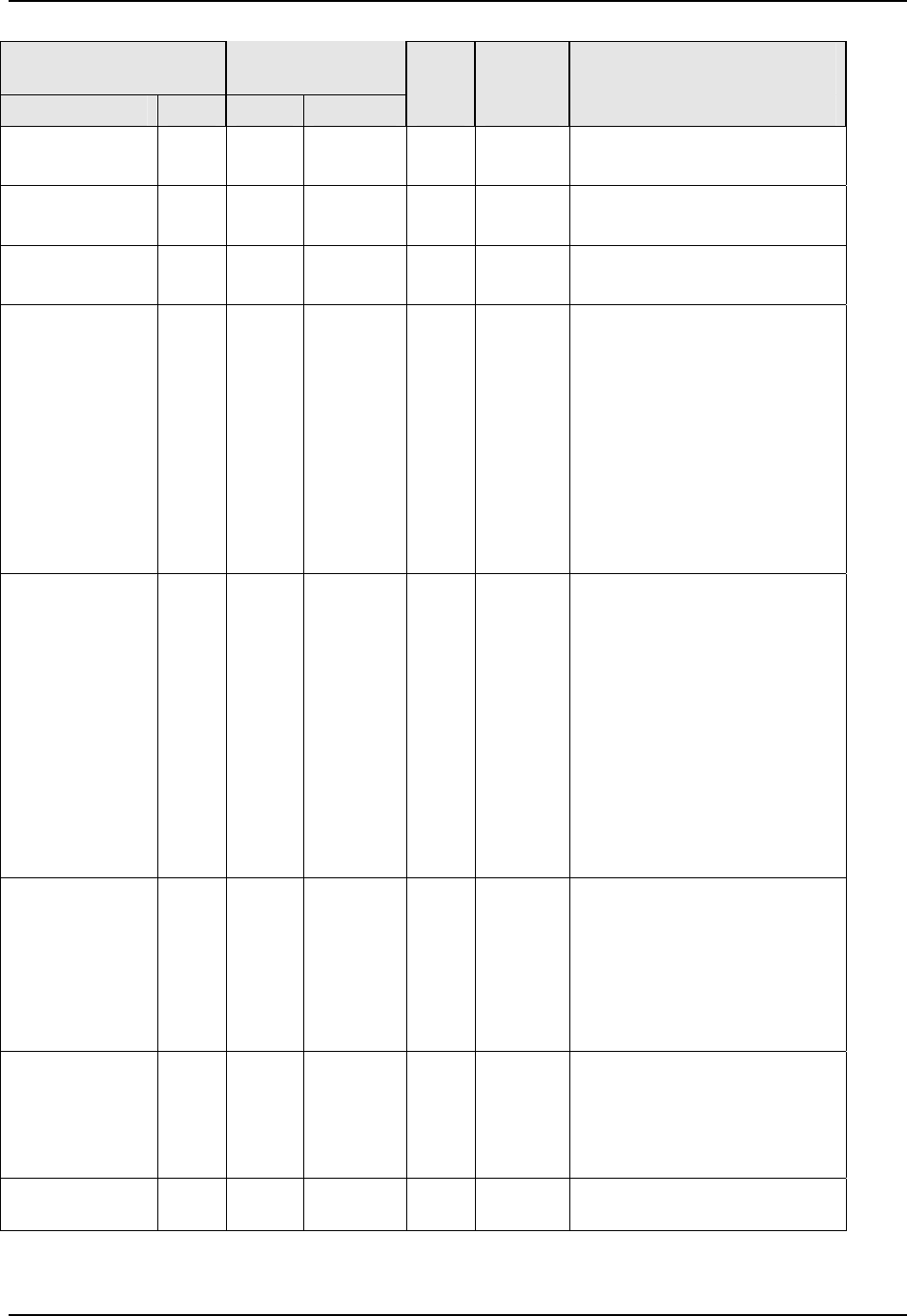
Modbus Read, Write and Override Parameters plus Exception Codes
428 UDC3500 Universal Digital Controller Product Manual March 2012
Parameter
Register
Address
Data
Type
Access Data Range or
Enumerated Selection
Description ID Hex Decimal
Alarm 2
Latching
228 00E4 228 INT R/W
0 = Non Latching
1 = Latching
Alarm 3
Latching
229 00E5 229 INT R/W
0 = Non Latching
1 = Latching
Alarm 4
Latching
230 00E6 230 INT R/W
0 = Non Latching
1 = Latching
Alarm 1 and 2
States (Read
Only)
201 00C9 201 INT R
State = 0 = Not in Alarm
State = 1 = In Alarm
Bit 0 = Alarm 1 SP1 State
Bit 1 = Alarm 1 SP2 State
Bit 2 = Alarm 2 SP1 State
Bit 3 = Alarm 2 SP2 State
Event = 0 = Low
Event = 1 = High
Bit 4 = Alarm 1 SP1 Event
Bit 5 = Alarm 1 SP2 Event
Bit 6 = Alarm 2 SP1 Event
Bit 7 = Alarm 2 SP2 Event
Alarm 3 and 4
States (Read
Only)
248 00F8 248 INT R
Event = 0 = Low
Event = 1 = High
Bit 0 = Alarm 3 SP1 Event
Bit 1 = Alarm 3 SP2 Event
Bit 2 = Alarm 4 SP1 Event
Bit 3 = Alarm 4 SP2 Event
State = 0 = Not in Alarm
State = 1 = In Alarm
Bit 4 = Alarm 3 SP1 State
Bit 5 = Alarm 3 SP2 State
Bit 6 = Alarm 4 SP1 State
Bit 7 = Alarm 4 SP2 State
Alarm Blocking 202 00CA 202 INT R/W
0 = Disable
1 = Block Alarm 1
2 = Block Alarm 2
3 = Block Alarm 3
4 = Block Alarm 4
5 = Block Alarms 1 and 2
6 = Block Alarms 1,2,3
7 = Block Alarms 1,2,3,4
Diagnostic
Alarm
154 009A 154 INT R/W
0 = Disable
1 = Alarm 1
2 = Alarm 2
3 = Alarm 3
4 = Alarm 4
5 = DISWARN
Alarm Message 239 00EF 239 INT R/W
0 = Disable
1 = Enable
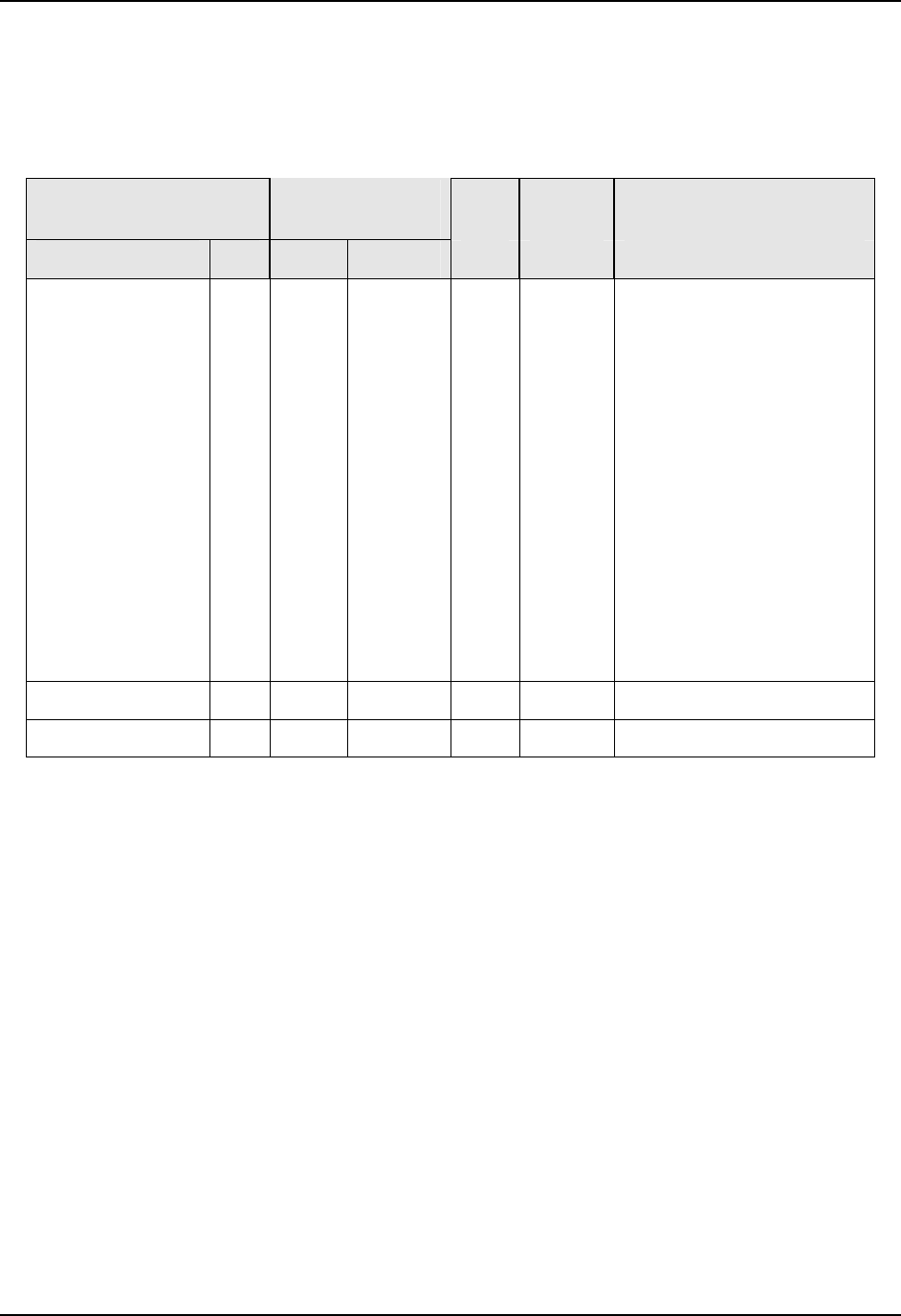
Modbus Read, Write and Override Parameters plus Exception Codes
10.7.22 Maintenance
Table 10-31 lists all the register addresses and ranges or selections for the function
parameters in Set-up Group Maintenance.
Table 10-31 Set-up Group – Maintenance
Parameter
Register
Address
Data
Type
Access Data Range or
Enumerated Selection
ID Hex Decimal Description
219 00DB 219 INT R/W
0 = Disable
1 = Last Reset
2 =
A1S1
3 = A1S2
4 = A2S1
5 = A2S2
6 = A3S1
7 = A3S2
8 = A4S1
9 = A4S2
10 = Man Loop 1
11 = Guaranteed Soak
12 = Sooting
13 = DI 1 Closed
14 = DI 2 Closed
15 = DI 3 Closed
16 = DI 4 Closed
17 = Man Loop 2
Timer 1
Timer 2 220 00DC 220 INT R/W Same as 219
Timer 3 221 00DD 221 INT R/W
Same as 219
March 2012 UDC3500 Universal Digital Controller Product Manual 429
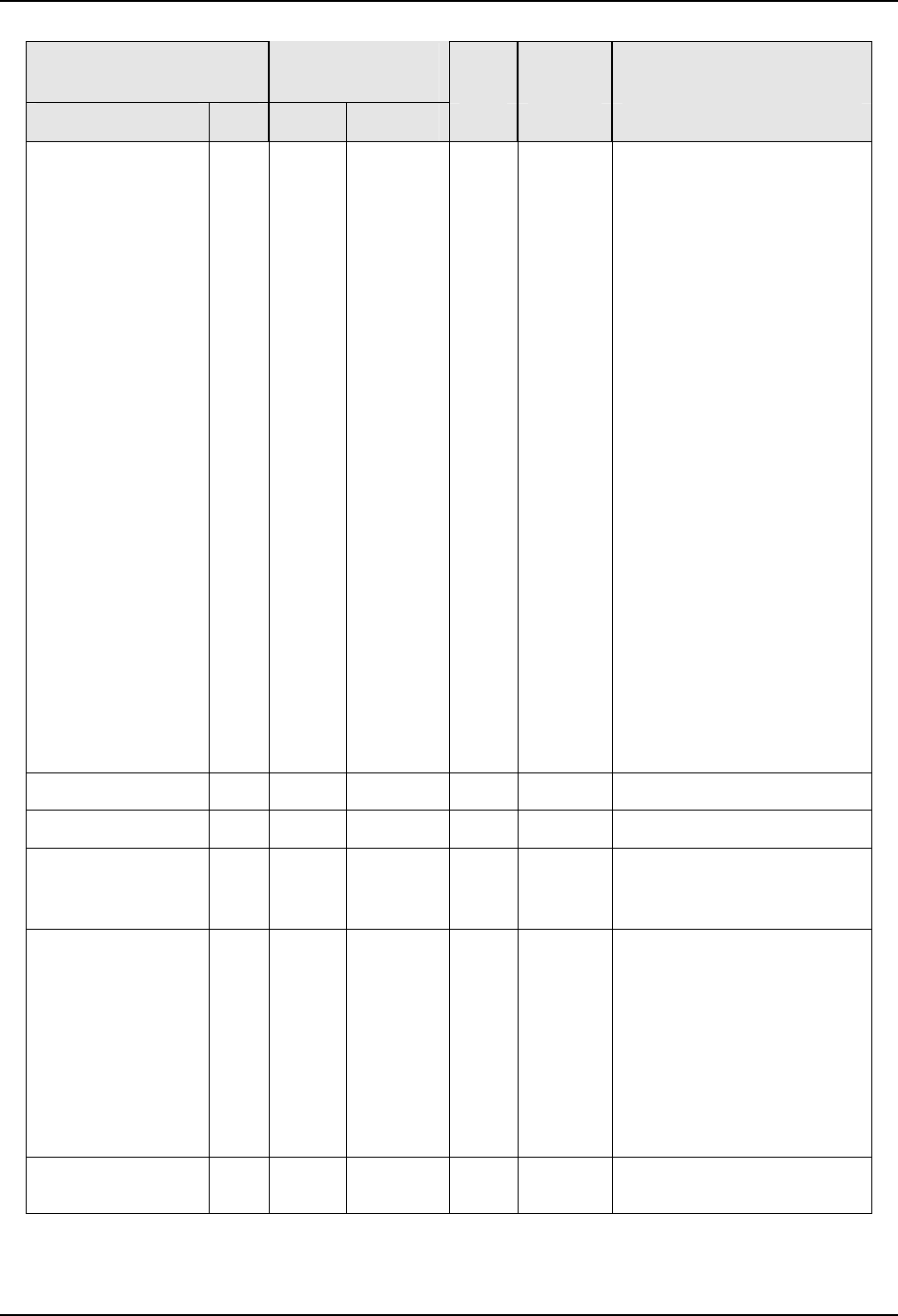
Modbus Read, Write and Override Parameters plus Exception Codes
430 UDC3500 Universal Digital Controller Product Manual March 2012
Parameter
Register
Address
Data
Type
Access Data Range or
Enumerated Selection
Description ID Hex Decimal
Counter 1 222 00DE 222 INT R/W 0 = Disable
1 = Man Loop1
2 = A1S1
3 = A1S2
4 = A2S1
5 = A2S2
6 = A3S1
7 = A3S2
8 = A4S1
9 = A4S2
10 = DI 1 Closed
11 = DI 2 Closed
12 = DI 3 Closed
13 = DI 4 Closed
14 = Output 1 Relay X 1K
15 = Output 2 Relay X 1K
16 = Output 3 Relay X 1K
17 = Output 4 Relay X 1K
18 = Output 5 Relay X 1K
19 = Guaranteed Soak
20 = PWR Cycle
21 = PV Range L1
22 = Failsafe L1
23 = Tune L1
24 = Man Loop 2
25 = PV Range Loop 2
26 = Failsafe Loop 2
27 = Tune Loop 2
Counter 2 223 00DF 223 INT R/W Same as 222
Counter 3 224 00E0 224 INT R/W Same as 222
Healthwatch
Maintenance
(HWM) Reset ID
48 0030 48 INT R/W 0 to 9999
Maintenance
Reset
227 00E3 227 INT R/W
0 = None
1 = Timer 1
2 = Timer 2
3 = Timer 3
4 = All Timers
5 = Counter 1
6 = Counter 2
7 = Counter 3
8 = All Counters
9 = All Timers and Counters
HWM Days 1 110 406E 16494 FP R
Shows elapsed time of
Timer 1 in Days. (0 – 9999)
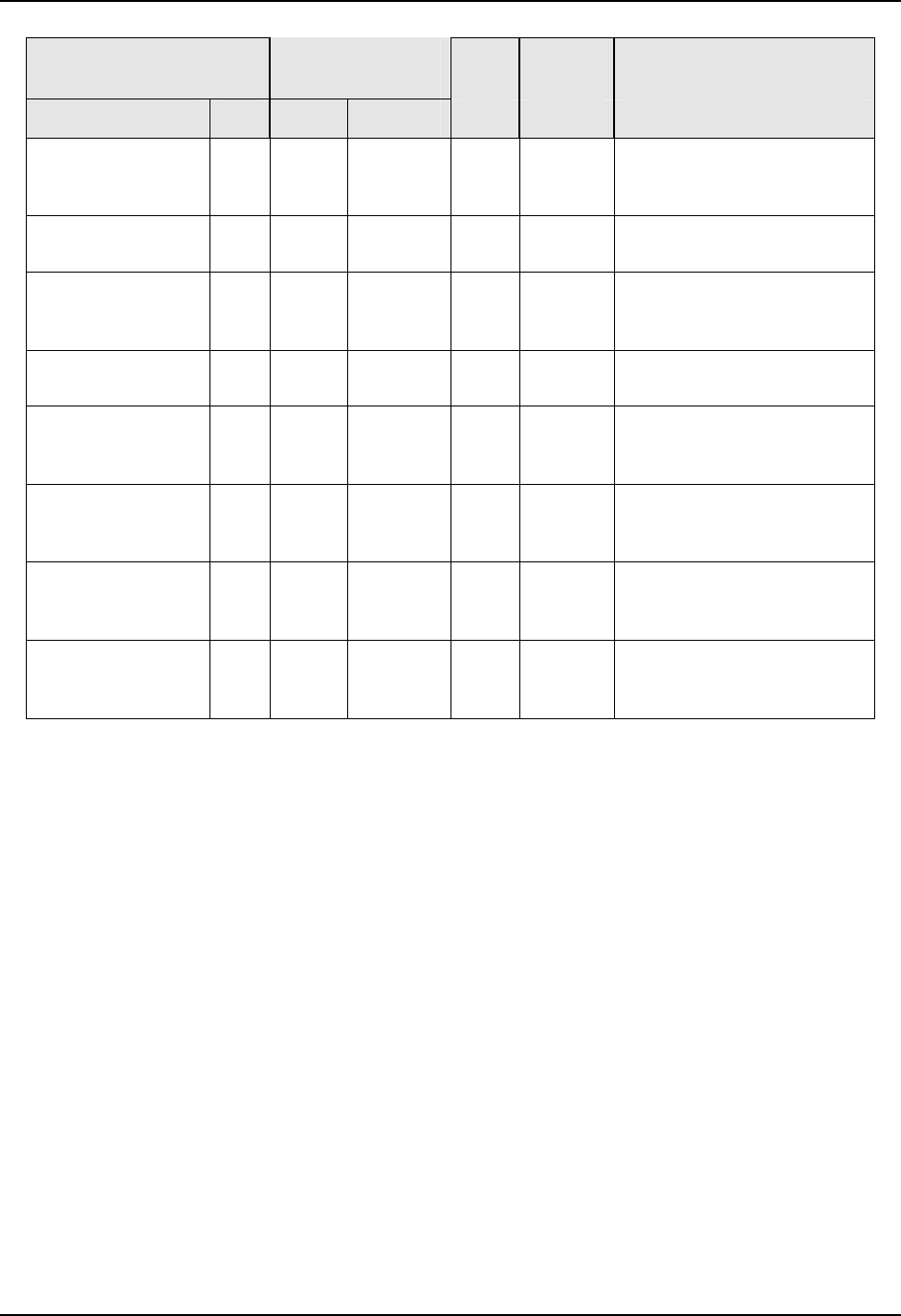
Modbus Read, Write and Override Parameters plus Exception Codes
March 2012 UDC3500 Universal Digital Controller Product Manual 431
Parameter
Register
Address
Data
Type
Access Data Range or
Enumerated Selection
Description ID Hex Decimal
HWM
Hours.Minutes 1
111 406F 16495 FP R
Shows elapsed time of
Timer 1 in Hours and
Minutes. (00.00 – 23.59)
HWM Days 2 112 4070 16496 FP R
Shows elapsed time of
Timer 2 in Days. (0 – 9999)
HWM
Hours.Minutes 2
113 4071 16497 FP R
Shows elapsed time of
Timer 2 in Hours and
Minutes. (00.00 – 23.59)
HWM Days 3 114 4072 16498 FP R
Shows elapsed time of
Timer 3 in Days. (0 – 9999)
HWM
Hours.Minutes 3
115 4073 16499 FP R
Shows elapsed time of
Timer 3 in Hours and
Minutes. (00.00 – 23.59)
HWM Counter 1 116 4074 16500 FP R
Shows the value of Counter
1. 0-9999 ( 1 = 1000 counts
for output relays 1 to 5)
HWM Counter 2 117 4075 16501 FP R
Shows the value of Counter
2. 0-9999 ( 1 = 1000 counts
for output relays 1 to 5)
HWM Counter 3 118 4076 16502 FP R
Shows the value of Counter
3. 0-9999 ( 1 = 1000 counts
for output relays 1 to 5)
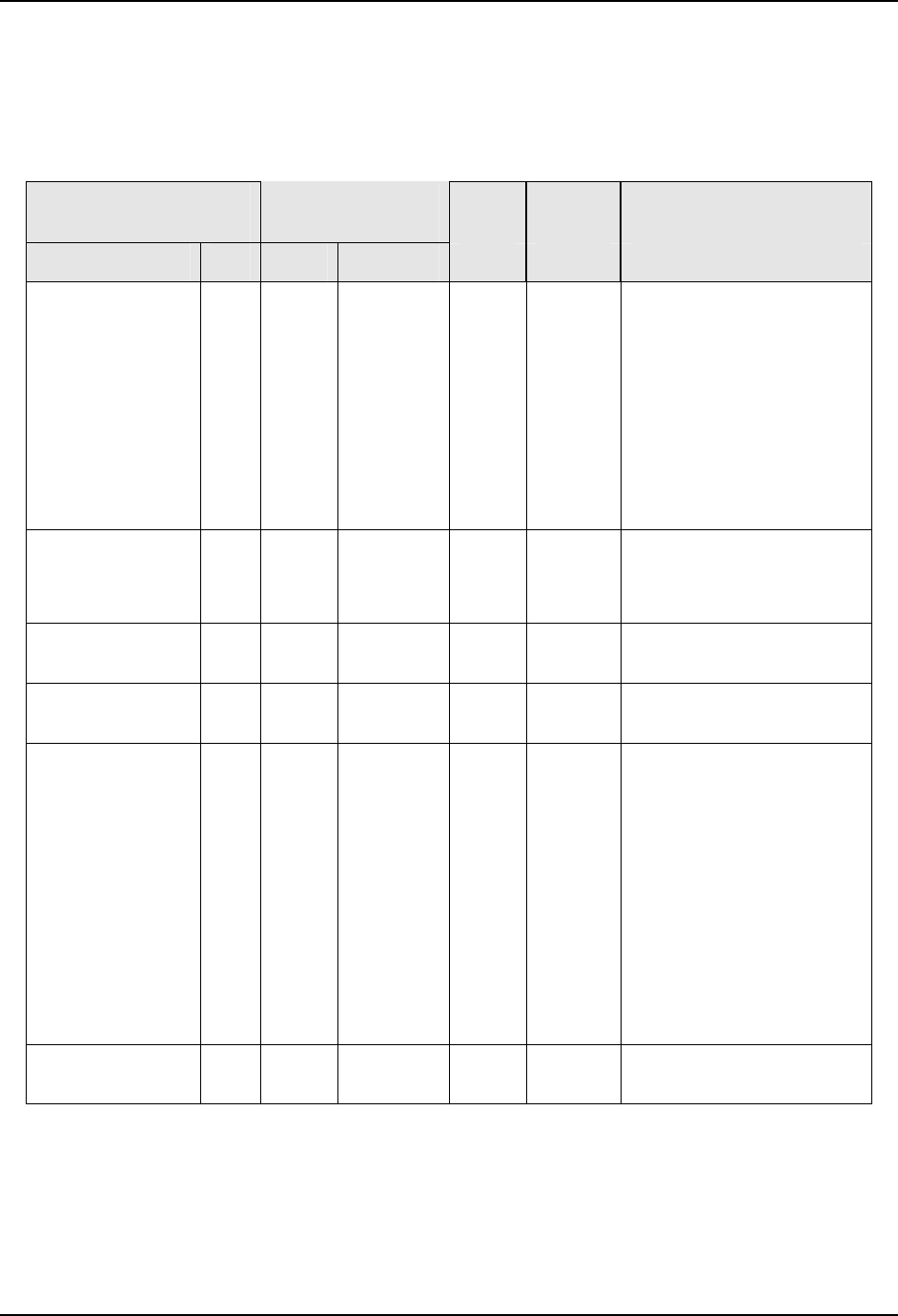
Modbus Read, Write and Override Parameters plus Exception Codes
10.7.23 Time Event
Table 10-32 lists all the register addresses and ranges or selections for the function
parameters in Set-up Group Time Event.
Table 10-32 Set-up Group – Time Event
Parameter
Register
Address
Data
Type
Access Data Range or
Enumerated Selection
ID Hex Decimal Description
184 40B8 16568 INT R/W
0 = None
1 = Alarm 1 SP2
2 = Alarm 2 SP2
3 = Alarm 3 SP2
4 = Alarm 4 SP2
5 =
STrSP/R
6 = Timer
7 = Auto
8 = MAN FS
9 = Use SP1
10 = Use SP2
Time Event 1
185 40B9 16569 INT R/W
0 = 5 Day Week
1 = 7 Day Week
2 = Day of Week
3 = Calendar
Time Event 1
Calendar Type
97 4061 16481 FP R/W
0 to 23
Time Event 1
Hour
Time Event 1
Minutes
98 4062 16482 FP R/W 0 to 59
Time Event 1
Month
186 40BA 16570 INT R/W 0 = Unused
1 = January
2 = February
3 = March
4 = April
5 = May
6 = June
7 = July
8 = August
9 = September
10 = October
11 = November
12 = December
Time Event 1
Days
99 4063 16483 FP R/W 1 to 31
432 UDC3500 Universal Digital Controller Product Manual March 2012
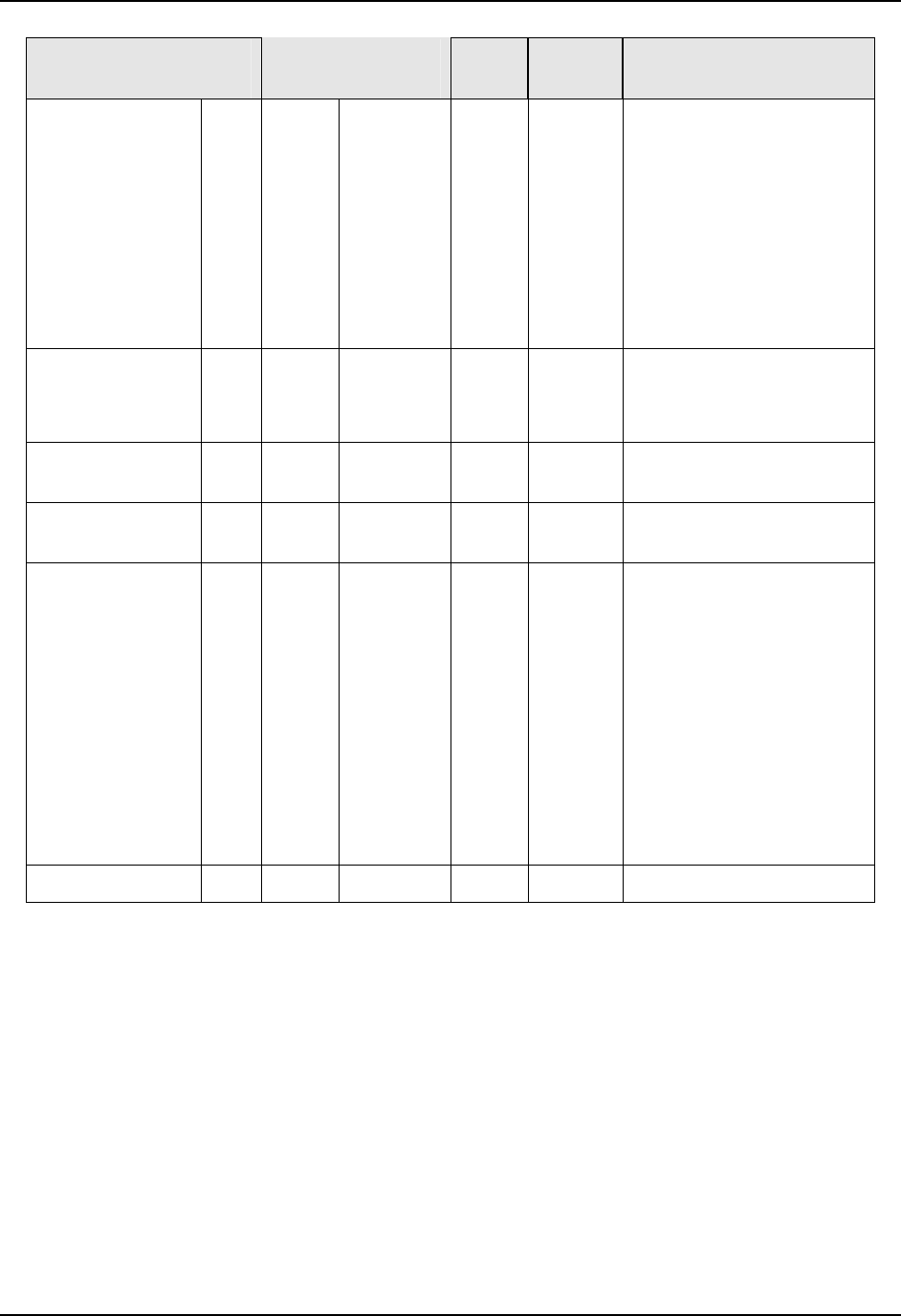
Modbus Read, Write and Override Parameters plus Exception Codes
March 2012 UDC3500 Universal Digital Controller Product Manual 433
Parameter
Register
Address
Data
Type
Access Data Range or
Enumerated Selection
Time Event 2 187 40BB 16571 INT R/W
0 = None
1 = Alarm 1 SP2
2 = Alarm 2 SP2
3 = Alarm 3 SP2
4 = Alarm 4 SP2
5 = STrSP/R
6 = Timer
7 = Auto
8 = MAN FS
9 = Use SP1
10 = Use SP2
Time Event 2
Calendar Type
188 40BC 16572 INT R/W
0 = 5 Day Week
1 = 7 Day Week
2 = Day of Week
3 = Calendar
Time Event 2
Hour
106 406A 16490 FP R/W
0 to 23
Time Event 2
Minutes
107 406B 16491 FP R/W 0 to 59
Time Event 2
Month
189 40BD 16573 INT R/W 0 = Unused
1 = January
2 = February
3 = March
4 = April
5 = May
6 = June
7 = July
8 = August
9 = September
10 = October
11 = November
12 = December
Time Event Days 108 406C 16492 FP R/W 1 to 31
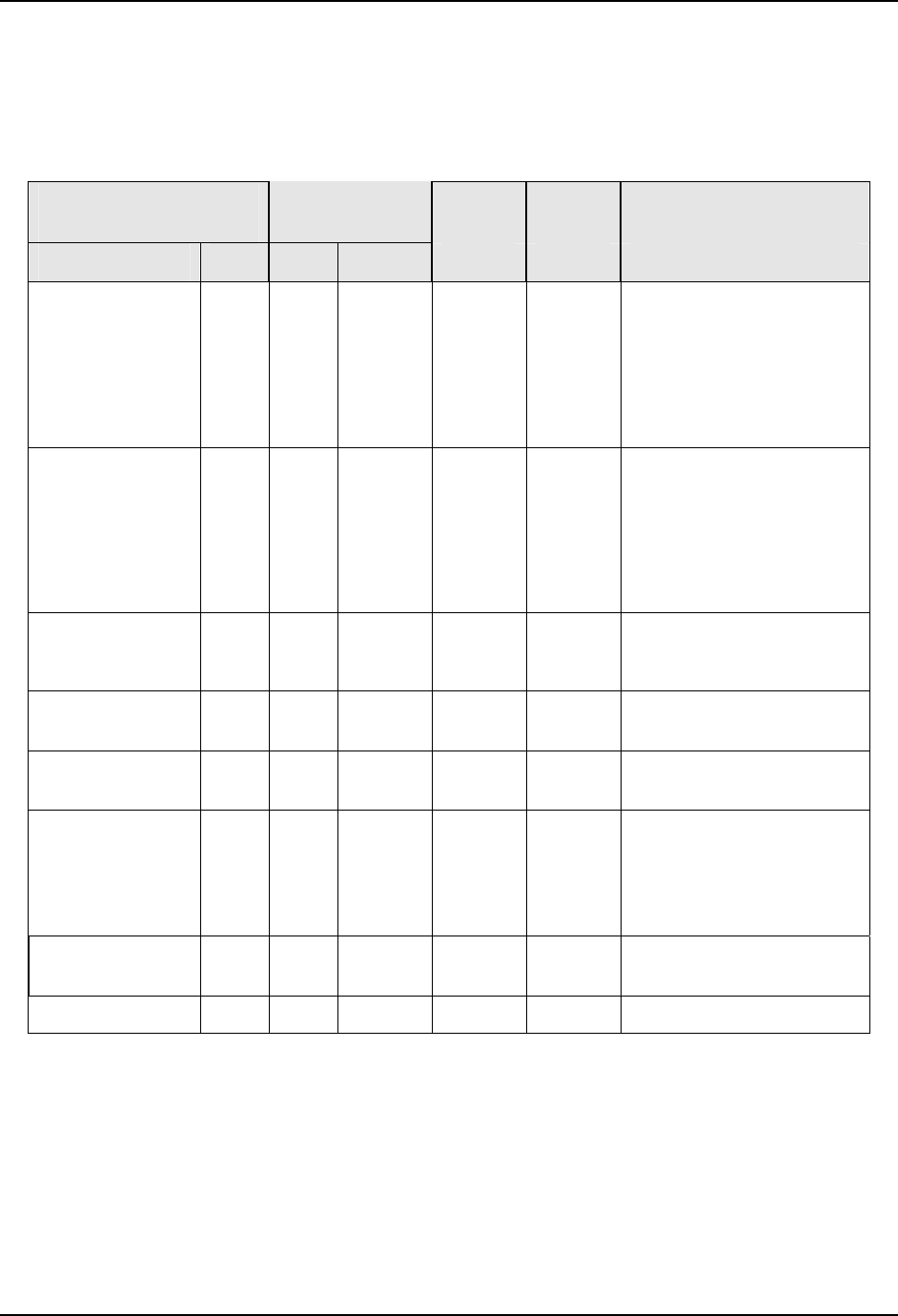
Modbus Read, Write and Override Parameters plus Exception Codes
10.7.24 Display
Table 10-33 lists all the register addresses and ranges or selections for the function
parameters in Set-up Group Display.
Table 10-33 Set-up Group – Display
Parameter
Register
Address
Data
Type
Access Data Range or
Enumerated Selection
ID Hex Decimal Description
155 009B 155 INT R/W
0 = None – Fixed
1 = One – Floating
decimal point to one
2 = Two – Floating
decimal point to two
3 = Three – Floating
decimal point to three
Decimal Point
Location
155 019B 411 INT R/W
0 = None – Fixed
1 = One – Floating
decimal point to one
2 = Two – Floating
decimal point to two
3 = Three – Floating
decimal point to three
Decimal Point
Location Loop2
129 0081 129 INT R/W
0 = °F
1 = °C
2 = None
Temperature
Units
Power Frequency 166 00A6 166 INT R/W 0 = 60 Hertz
1 = 50 Hertz
Ratio Input 2
from Front Panel
208 00D0 208 INT R/W 0 = Disable
1 = Enable
Language
(Displays)
192 00C0 192 INT R/W 0 = English
1 = French
2 = German
3 = Spanish
4 = Italian
TC Diagnostics 159 009F 159 INT R/W 0 = Enable
1 = Disable
Unit ID Number* 41 0029 41 INT R/W 0 to 255
* The Unit ID Number parameter can be used to uniquely identify a particular
instrument.
434 UDC3500 Universal Digital Controller Product Manual March 2012
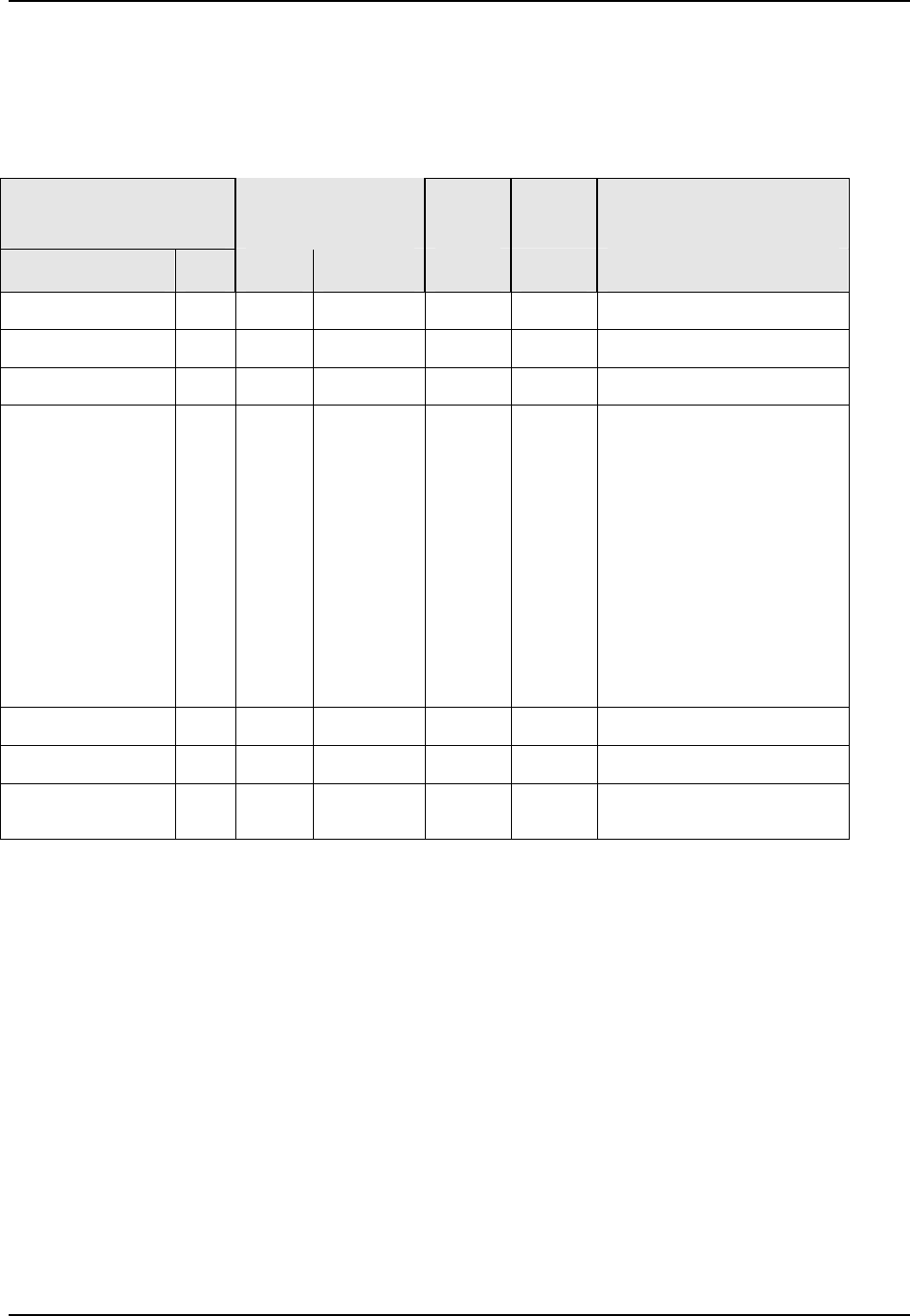
Modbus Read, Write and Override Parameters plus Exception Codes
10.7.25 Clock
Table 10-34 lists all the register addresses and ranges or selections for the function
parameters in Set-up Group Clock.
Table 10-34 Set-up Group – Clock
Parameter
Register
Address
Data
Type
Access Data Range or
Enumerated Selection
ID Hex Decimal Description
Clock Hours 16 4010 16400 FP R/W 0 to 23
Clock Minutes 17 4011 16401 FP R/W 0 to 59
Clock Seconds 18 4012 16402 FP R/W 0 to 59
Clock Month 137 4089 16521 INT R/W 0 = Unused
1 = January
2 = February
3 = March
4 = April
5 = May
6 = June
7 = July
8 = August
9 = September
10 = October
11 = November
12 = December
Clock Day 19 4013 16403 FP R/W 1 to 31
Clock Year 20 4014 16404 FP R/W 2005 to 2099
Time Zone (GMT) 21 4015 16405 FP R/W -1200 to +1300 (hours and
minutes away from GMT)
Note: The Time Zone setting is used only for Email purposes, it has no other function.
March 2012 UDC3500 Universal Digital Controller Product Manual 435
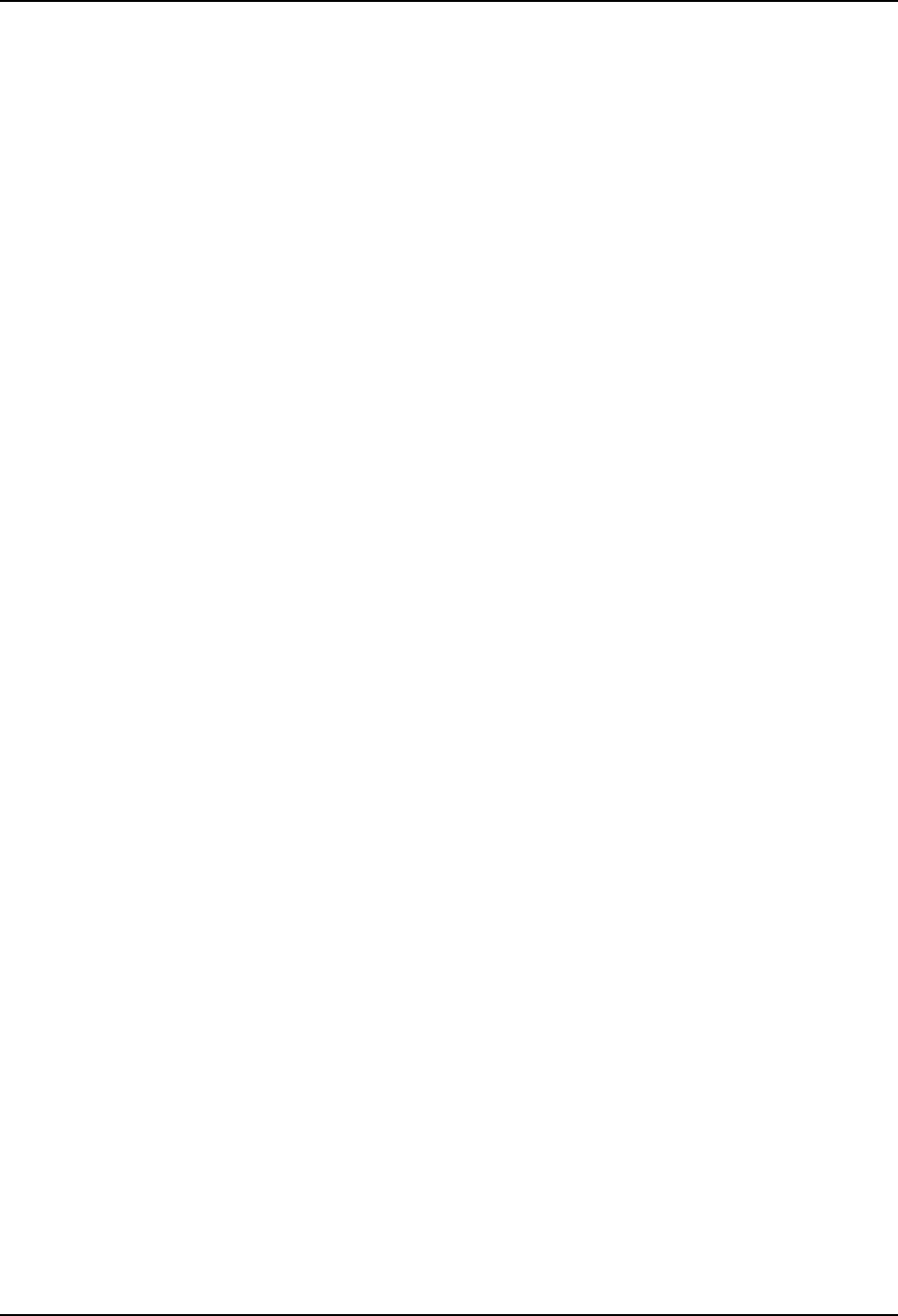
Modbus Read, Write and Override Parameters plus Exception Codes
10.8 Modbus RTU Exception Codes
Introduction
When a master device sends a query to a slave device it expects a normal response. One
of four possible events can occur from the master’s query:
Slave device receives the query without a communication error and can handle the
query normally.
It returns a normal response.
Slave does not receive the query due to a communication error.
No response is returned. The master program will eventually process a time-out
condition for the query.
Slave receives the query but detects a communication error (parity, LRC or CRC).
No response is returned. The master program will eventually process a time-out
condition for the query.
Slave receives the query without a communication error but cannot handle it (i.e.,
request is to a non-existent coil or register).
The slave will return with an exception response informing the master of the nature of
the error (Illegal Data Address.)
The exception response message has two fields that differentiate it from a normal
response:
Function Code Field:
In a normal response, the slave echoes the function code of the original query in the
function code field of the response. All function codes have a most-significant bit
(MSB) of 0 (their values are below 80 hex). In an exception response, the slave sets
the MSB of the function code to 1. This makes the function code value in an
exception response exactly 80 hex higher than the value would be for a normal
response.
With the function code’s MSB set, the master’s application program can recognize
the exception response and can examine the data field for the exception code.
Data Field:
In a normal response, the slave may return data or statistics in the data field. In an
exception response, the slave returns an exception code in the data field. This defines
the slave condition that caused the exception.
436 UDC3500 Universal Digital Controller Product Manual March 2012
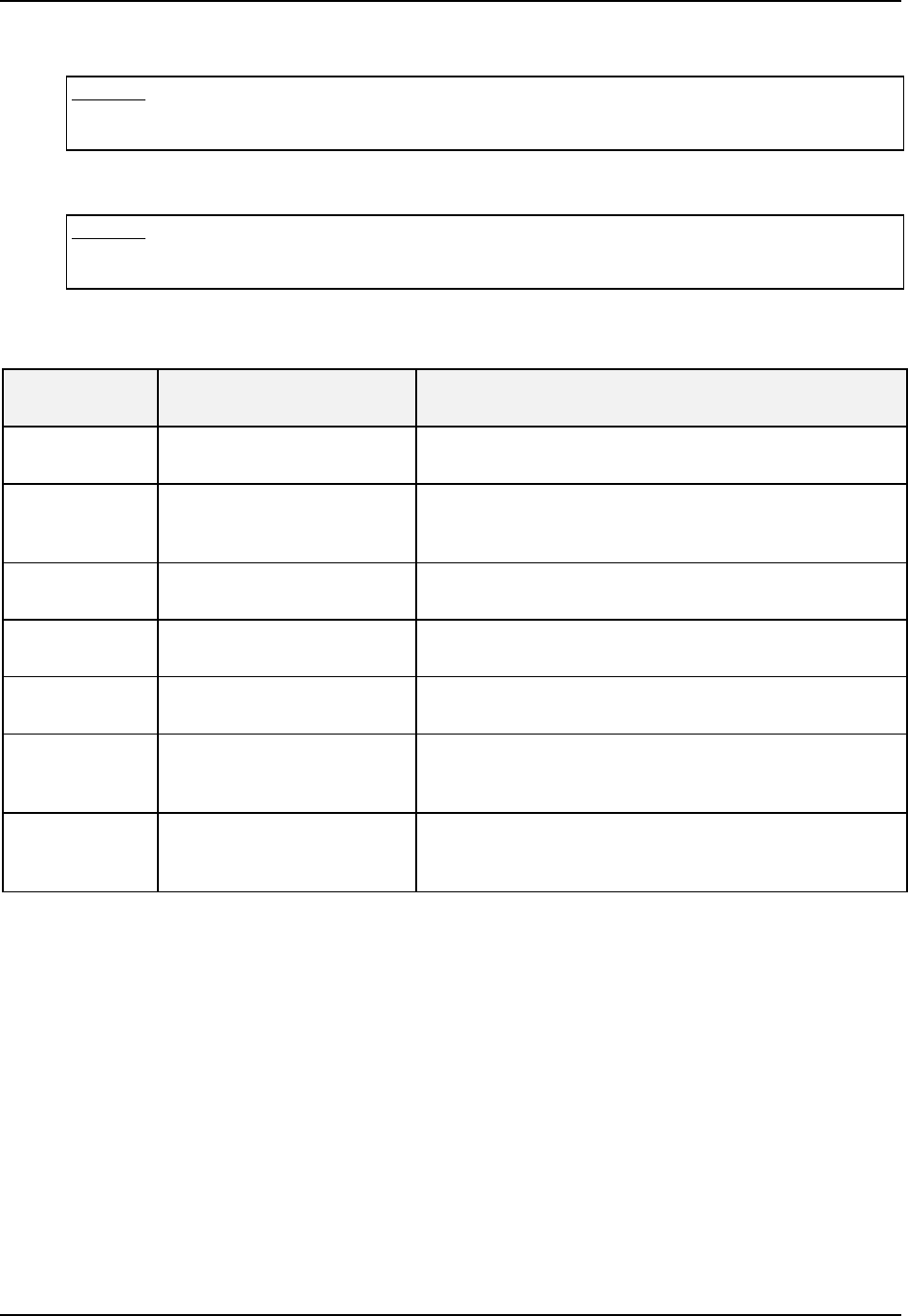
Modbus Read, Write and Override Parameters plus Exception Codes
March 2012 UDC3500 Universal Digital Controller Product Manual 437
Query
Example: Internal slave error reading 2 registers starting at address 1820h from slave at slave address 02.
02 03 18 20 00 02 CRC CRC
Response
Example: Return MSB in Function Code byte set with Slave Device Failure (04) in the data field.
02 83 04 CRC CRC
Table 10-35 Modbus RTU Data Layer Status Exception Codes
Exception
Code
Definition Description
01
Illegal Function The message received is not an allowable action for
the addressed device.
02
Illegal Data Address The address referenced in the function-dependent data
section of the message is not valid in the addressed
device.
03
Illegal Data Value The value referenced at the addressed device location
is no within range.
04
Slave Device Failure The addressed device has not been able to process a
valid message due to a bad device state.
06
Slave Device Busy The addressed device has ejected a message due to a
busy state. Retry later.
07
NAK,
Negative Acknowledge
The addressed device cannot process the current
message. Issue a PROGRAM POLL to obtain device-
dependent error data.
09
Buffer Overflow The data to be returned for the requested number of
registers is greater than the available buffer space.
Function Code 20 only.
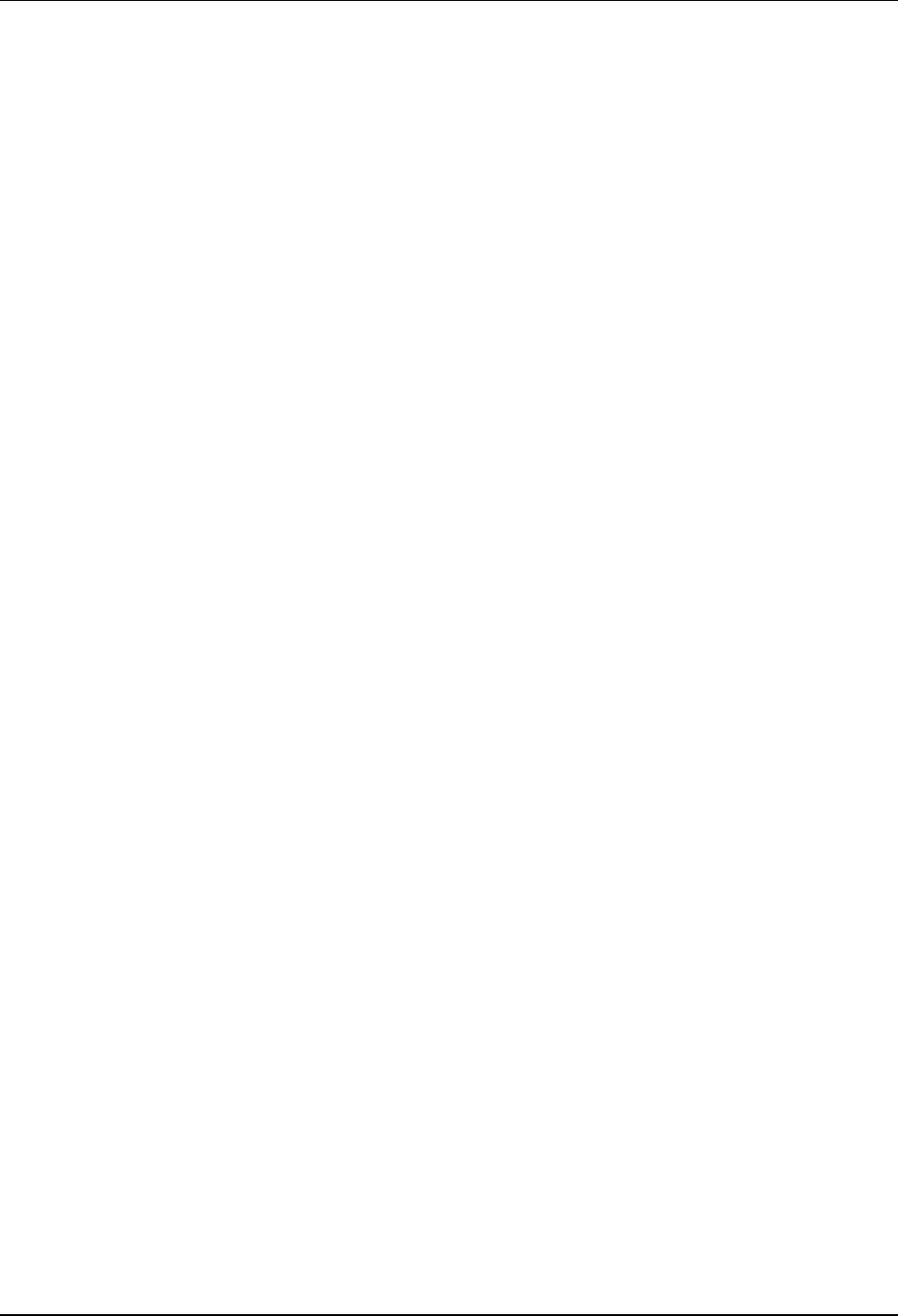
Further information
11 Further information
11.1 Modbus RTU Serial Communications
Refer to Honeywell document 51-52-25-66 Modbus RTU Serial Communications User
Manual.
11.2 Modbus Messaging on Ethernet TCP/IP
Refer to Honeywell document 51-52-25-121 MODBUS Messaging on Ethernet TCP/IP
Implementation Guide.
11.3 How to Apply Digital Instrumentation in Severe Electrical Noise
Environments
Refer to Honeywell document 51-52-05-01 How to Apply Digital Instrumentation in
Severe Electrical Noise Environments.
438 UDC3500 Universal Digital Controller Product Manual March 2012
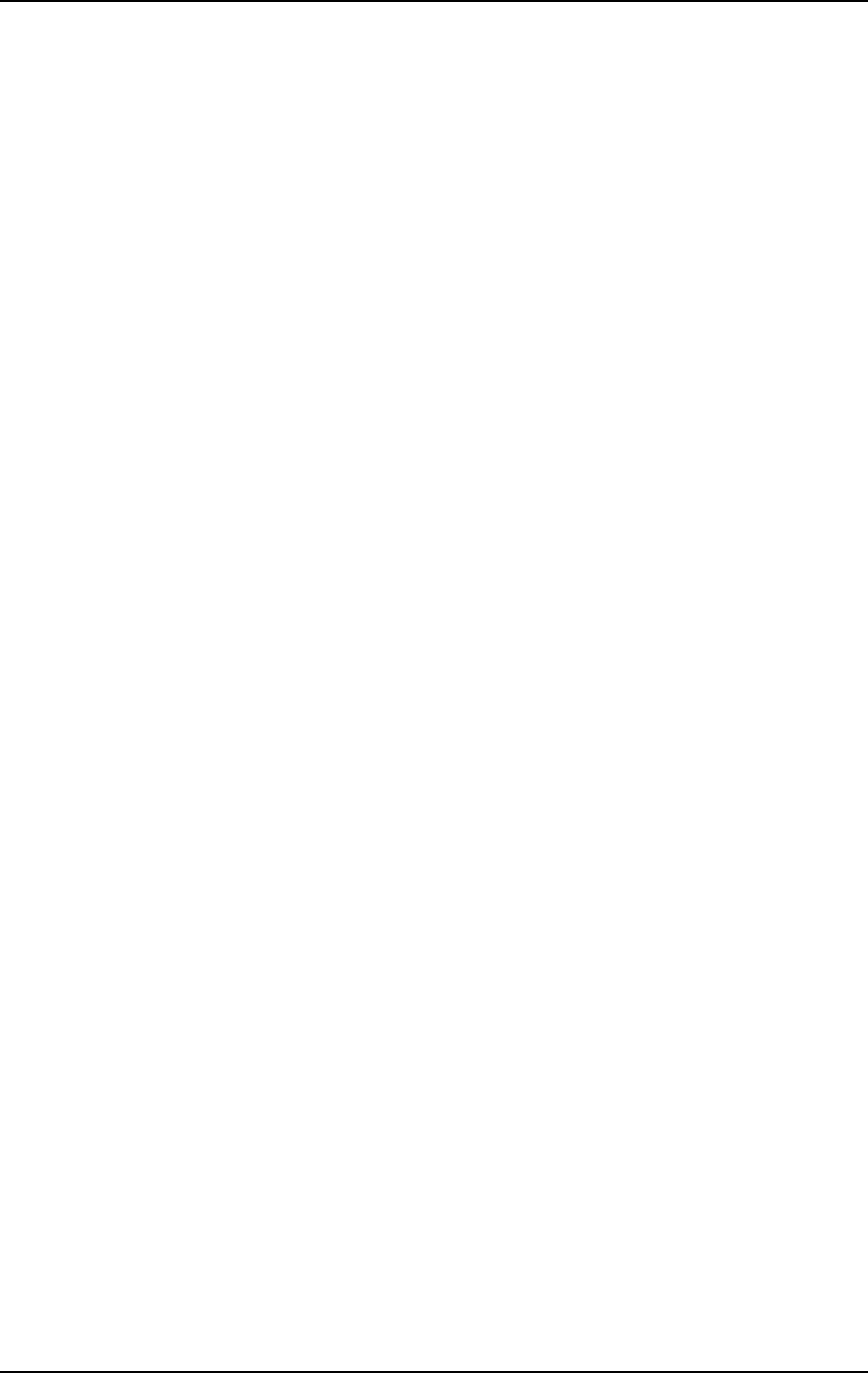
Index
12 Index
8 Segment Characterizers ..........................3, 216
A
Aborting Accutune...........................................212
Accutune – Register Addresses......................383
Accutune Error Codes.....................................211
Accutune III.................................................5, 204
Accutune Set Up Group....................................72
Alarm Blocking................................................171
Alarm Hysteresis.............................................168
Alarm Outputs...................................................15
Alarm Prompts For Healthwatch Option..........166
Alarm Prompts For Two Loops/Cascade Option
....................................................................165
Alarm Relay Output Failure.............................323
Alarm Relays.....................................................19
Alarm Setpoints...............................................234
Alarm Setpoints Display..................................234
Alarms.................................................................3
Alarms – Register Addresses..........................421
Alarms For Software Options..........................165
Alarms Set Up Group......................................164
Algorithm – Register Addresses......................385
Algorithm Set Up Group....................................77
Ambient Temperature .......................................16
Analog Input Failure........................................325
Analog Input Signal Failure Operation ..............13
Analog Inputs................................................2, 13
Annunciators...................................................196
Application Related Problems.........................306
Approval Body Options .......................................5
Atmospheric Pressure Compensation...............86
Auto Bias.........................................................145
Auto/Manual Key.............................................195
Auto/Manual Station............................................4
Auto/Manual Station Mode
..............................224
Automatic Cascade.........................................
200
Automatic Tune...............................................208
Automatic With Local Setpoint ........................200
Automatic With Remote Setpoint ....................200
Autotune Is Complete......................................212
Auxiliary Output...................................................4
Auxiliary Output Range ...................................152
B
Background Tests...........................................309
Baud Rate.......................................................161
Bias.................................118, 121, 124, 127, 130
Blended Tune..................................................209
Burnout Protection ..........118, 122, 125, 127, 130
C
Calibration Mode.....................................291, 303
Calibration Steps.............................................276
Carbon Potential ...............................86, 240, 241
Carbon Potential .....................................192, 238
Carbon Potential Selections..............................83
Cascade Control .............................................228
CE Conformity (Europe)....................................10
CE Mark............................................................. 5
Changing Control Modes.................................201
Changing The Local Setpoints ........................202
Characterizer...............................................92, 94
Clock – Register Addresses............................431
Combinational Inputs ......................................... 3
Communications ................................................ 4
Communications – Register Addresses ..........419
Communications Failure..................................326
Communications Selection..............................160
Communications Set Up Group.......................160
Comparator Gates...........................................217
Computer Setpoint ..........................................353
Computer Setpoint Bias ..................................162
Computer Setpoint Ratio.................................162
Computer Setpoint Units.................................162
Configuration.....................................................43
Configuration Data ..........................................345
Configuration Parameters ...............................356
Configuration Procedure ...................................49
Configuration Prompt Hierarchy........................45
Configuration Record Sheet............................184
Control – Register Addresses .........................409
Control 2 Set Up Group...................................141
Control Algorithm ..............................................77
Control And Alarm Relay Contact Information...19
Control Loop 2 – Register Addresses..............
412
Control Mode Definitions.................................200
Control Modes.................................................200
Control Relays...................................................19
Control Set Up Group......................................132
Control/Alarm Circuit Wiring..............................22
Controller Dropoff Value..........................138, 147
Controller Failure Symptoms...........................314
Controller Grounding.........................................22
Controller Output Types....................................14
Counter ...........................................................174
Current Duplex........................................106, 109
Current Output ....................................34, 36, 111
Current Output 2 .............................................148
Current Output 3 .............................................152
Current Output Calibration ..............294, 296, 298
Current Output Failure Symptoms...................316
Current Simplex ......................................106, 109
Current/Time Duplex...............................106, 109
Current/Time Or Time/Current Proportional
Output Failure .............................................322
Customer Support...........................................307
Cycle Number .................................................350
Cycle Time (Cool) .......................................52, 56
Cycle Time (Heat) .......................................52, 56
Cycles Remaining ...........................................350
March 2012 UDC3500 Universal Digital Controller Product Manual 439
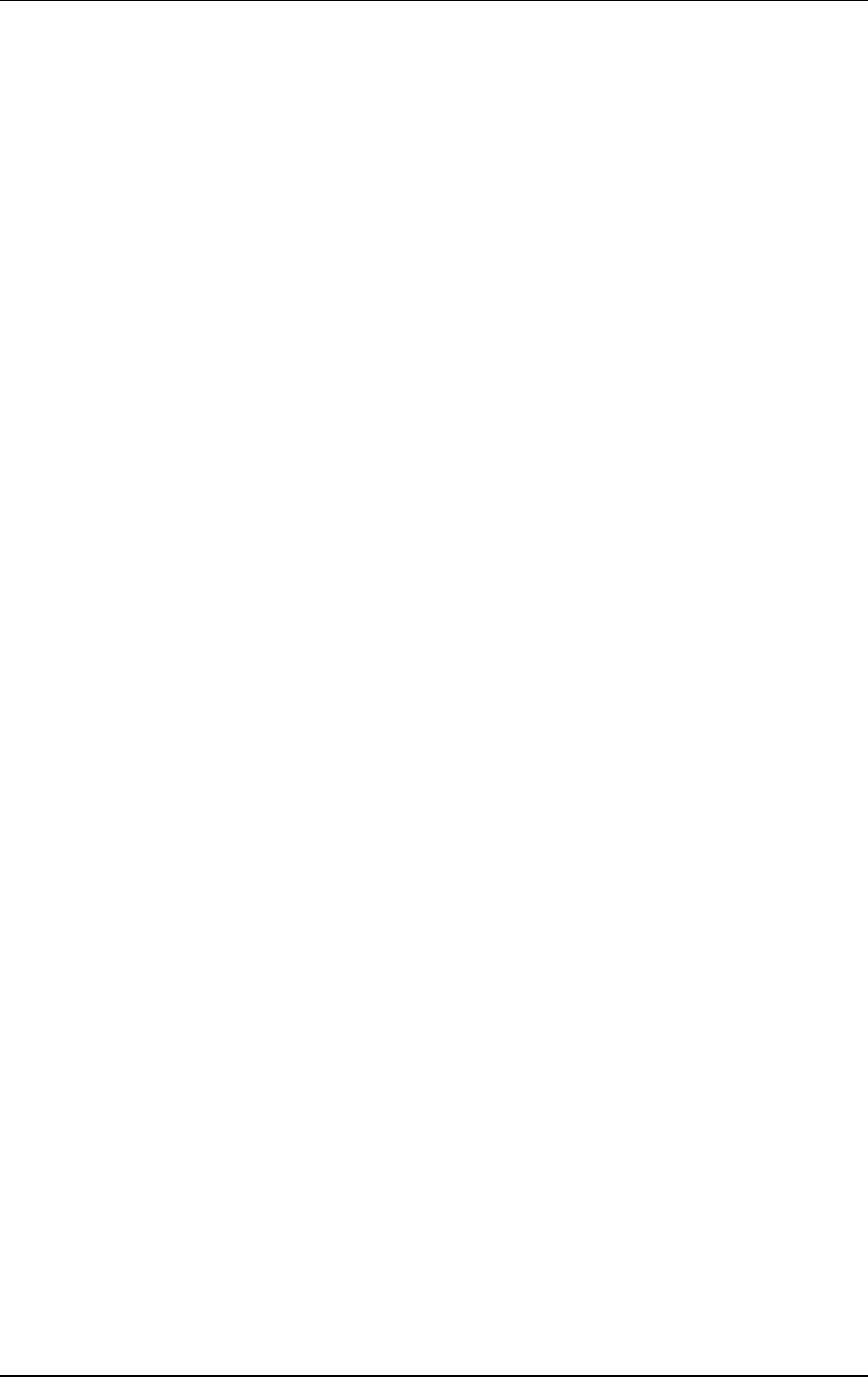
Index
D
Data Security ......................................................5
Data Transfer..................................................345
Deadband ...............................................138, 147
Decimal Point Location ...................................176
Declaration Of Conformity.................................10
Demand Tuning ................................................72
Dewpoint...........................................84, 192, 238
Diagnostic .......................................................171
Diagnostic Alarm.............................................171
Diagnostic Messages......................................198
Diagnostic/Failsafe Outputs ................................5
Digital Input (Remote) Operation ....................258
Digital Input Combinations ..............................158
Digital Input Option .........................................219
Digital Input Prompts For Multiple Set Point
Programs ....................................................158
Digital Input Selections....................................153
Digital Inputs .................................................3, 13
Digital Inputs Option Connections.....................40
Digital Output Status...............................108, 111
Dimensions .......................................................20
Direct Acting Control...............................137, 146
Display – Register Addresses.........................430
Display Indicators................................................7
Display Set Up Group .....................................176
Dual Relay Output For Time Duplex .................37
E
Eight Segment Characterizer......................92, 94
Elapsed Time..................................................203
Electrical Considerations...................................22
Electrical Noise Precautions .............................22
Electromechanical Relay Output.................35, 41
Email Configuration Screen ............................182
EMC Classification............................................10
Emissivity........................................119, 122, 125
Enclosure Rating...............................................10
End Segment Number.....................................245
Environmental And Operating Conditions .........16
Equipment You Will Need To Calibrate...........278
Error Codes.....................................................211
Error Messages...............................................198
Estimated Motor Position................................236
Ethernet ..............................................................8
Ethernet Communications Address.................272
Ethernet Communications Failure...........328, 329
Ethernet Communications Option With Adaptor
Board ............................................................38
Ethernet Communications Option Without
Adaptor Board...............................................39
Ethernet Configuration Screen........................181
Ethernet Connection .......................................269
Ethernet Status ...............................................264
Ethernet TCP/IP Communications Interface .....15
Ethernet TCP/IP Protocol................................160
External Interface Option Connections..............40
External Setpoint Program Reset....................155
External Wiring..................................................23
F
Factory Calibration..................................291, 303
Failsafe Function Prompt ........................237, 238
Failsafe Manual Mode.....................................308
Failsafe Mode..........................................139, 147
Failsafe Mode..................................................238
Failsafe Output Value..............................139, 147
Failsafe Output Value......................................237
Failsafe Output Value For Restart After A Power
Loss ............................................................237
Failure Modes .................................................... 5
Fast Tune........................................................... 5
Feedforward Multiplier.......................................82
Feedforward Multiplier........................................ 2
Feedforward Summer........................................82
Feedforward Summer......................................... 2
Field Wiring .....................................................278
Filter................................118, 121, 124, 127, 130
First Current Output Calibration Procedure.....295
Flow Totalizer..................................................216
Frequency (Hz) .................................................16
Function Code 20............................................338
Function Code 21............................................342
Function Codes 20 And 21..............................336
Function Prompts..............................................45
Fuzzy Logic........................................................ 6
Fuzzy Overshoot Suppression ..................72, 212
G
Gain ............................................................50, 54
Gain 2 .............................................51, 52, 55, 56
Guaranteed Soak............................................247
H
Healthwatch ................................................4, 241
Healthwatch Data............................................265
Healthwatch Data - Reset ...............................266
Healthwatch Timers And Counters..................178
Heat/Cool (Duplex Tune).................................... 6
High Scaling Factor...........................................85
High Select........................................................82
Hlai Inputs 2 And 4 Connections.......................32
Hlai Inputs 3 And 5 Connections.......................33
Hot Start..................................61, 64, 66, 70, 246
Hydrogen Content.............................................86
Hysteresis (Output Relay) ...............................139
I
Identification Number ......................................177
Infrared............................................................... 8
Infrared Communications................................... 9
Infrared Communications..................................15
Input 1 – Register Addresses..........................399
Input 1 Actuation Type ....................................116
Input 1 Calibration Procedure..........................289
Input 1 Connections ..........................................29
Input 1 High Range Value ...............................117
Input 1 Low Range Value........................118, 121
Input 1 Set Up Group ......................................116
Input 2 – Register Addresses..........................401
Input 2 Connections ..........................................30
Input 2 Set Up Group ......................................120
Input 3 – Register Addresses..........................403
440 UDC3500 Universal Digital Controller Product Manual March 2012
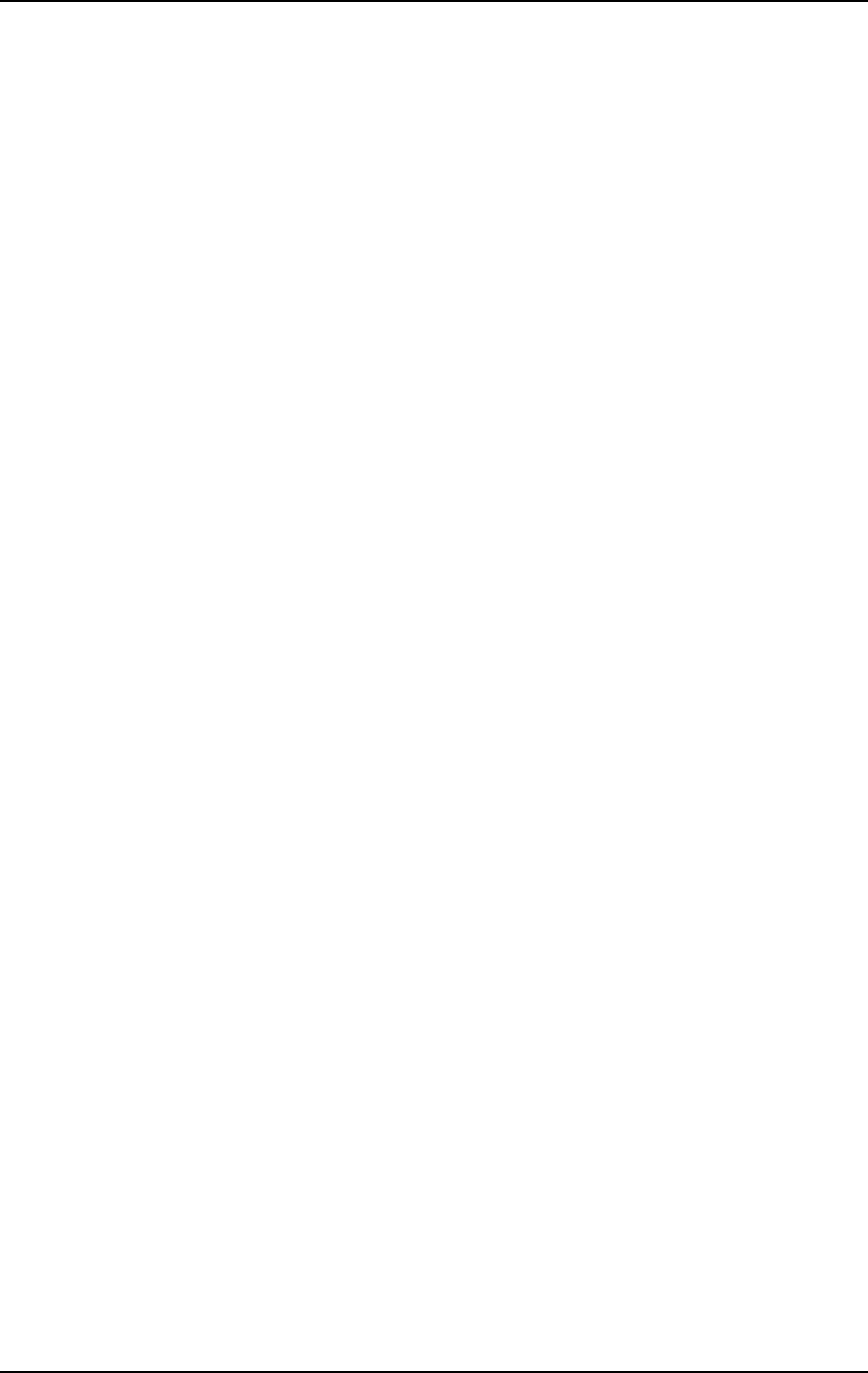
Index
Input 3 Actuation Type ....................................123
Input 3 Connections..........................................31
Input 3 Set Up Group......................................123
Input 4 – Register Addresses..........................405
Input 4 Actuation Type ....................................126
Input 4 Set Up Group......................................126
Input 5.............................................................407
Input 5 Actuation Type ....................................129
Input 5 Set Up Group......................................129
Input Algorithm Selections ..............................215
Input Calibration..............................................275
Input High/Low Select.........................................2
Input Math Algorithms.....................................215
Input Wiring Terminals ....................................278
Installation.........................................................11
Installation Category .........................................10
Installation Related Problems .........................306
Integration Rates.............................................216
Internal Cascade Control: ...............................229
IR Communications Port.................................160
Isolation.............................................................15
J
Jumper Positions ..............................................33
K
Key Error.........................................................195
Key Lockout ....................................................195
Key Lockout ......................................................53
Keyboard Failure.............................................324
Keys And Functions............................................7
L
Latching ..........................................................238
Line Voltage Wiring...........................................22
Local Area Network (Lan) Settings..................271
Local Setpoint Source.............................135, 144
Lockout .............................................................53
Lockout Feature..............................................194
Lockout Levels................................................194
Logic – Register Addresses ............................393
Logic Gate Function........................................217
Logic Gates.........................................................3
Logic Gates Constraints..................................217
Logic Gates Set Up Group................................98
Loop 2 Output Functionality And Restrictions ...26
Loop Break......................................................165
Loop Data – Alarm Details ..............................260
Loop Data – Digital Input Details.....................261
Loop Data Screen...........................................259
Loopback Test. ...............................................163
Low Fire..........................................................157
Low Scaling Factor............................................85
Low Select ........................................................83
Lower Display Key Parameter Prompts...........197
M
Mains Power Supply ...................................22, 28
Maintenance
Counters .....................................................173
Timers.........................................................173
Maintenance – Register Addresses ................425
Maintenance Set Up Group.............................173
Manual ............................................................200
Manual Cascade .............................................200
Manual Latching..............................................157
Manual Reset..............................................51, 55
Manual Tune ...................................................210
Mass Flow Example ..........................................90
Mass Flow Orifice Constant (K) For Math
Selections......................................................85
Math – Register Addresses.............................390
Math Functions................................................... 2
Math Set Up Group ...........................................92
Mechanical Shock.............................................16
Minimum And Maximum Range Values ..........276
Modbus ...........................................................160
Modbus Read, Write And Override Parameters
....................................................................345
Modbus RTU Exception Codes.......................432
Modbus RTU Function Codes.........................336
Model Number Interpretation.............................17
Moisture Protection ............................................ 5
Monitoring And Operating The Controller........192
Monitoring Two-Loop Control..........................232
Motor Position Display.....................................236
Motor Time......................................................300
Motor Time......................................................108
Mounting ...........................................................20
Mounting Method ..............................................21
Mounting Procedure..........................................21
Multiplier............................................................83
Multiplier Divider................................................83
Multiplier Divider With Square Root ..................83
Multiplier With Square Root
...............................83
Multiplier/Divider.................................................
2
N
Noise Immunity .................................................. 5
Non-Latching...................................................238
O
On/Off Algorithm ...............................................77
Open Collector Output ......................................36
Operating Parameters.....................................197
Operation Of Two-Loop Control ......................233
Operator Interface.......................................6, 193
Option Status ..................................................349
Options – Register Addresses.........................415
Options Set Up Group.....................................148
Output 2 Options...............................................14
Output Algorithm .....................................105, 108
Output Algorithms – Register Addresses ........397
Output Calibration ...........................................293
Output Change Rate ...............................138, 146
Output Override...............................................233
Output Override (2 Pid Loops Only)................198
Output Rate Down Value.........................138, 146
Output Rate Limiter............................................ 5
Output Rate Up Value.............................138, 146
Output Set Up Group ......................................105
Output Types...................................................... 3
Overriding Controller Setpoint.........................353
Oxygen..............................................84, 192, 238
March 2012 UDC3500 Universal Digital Controller Product Manual 441
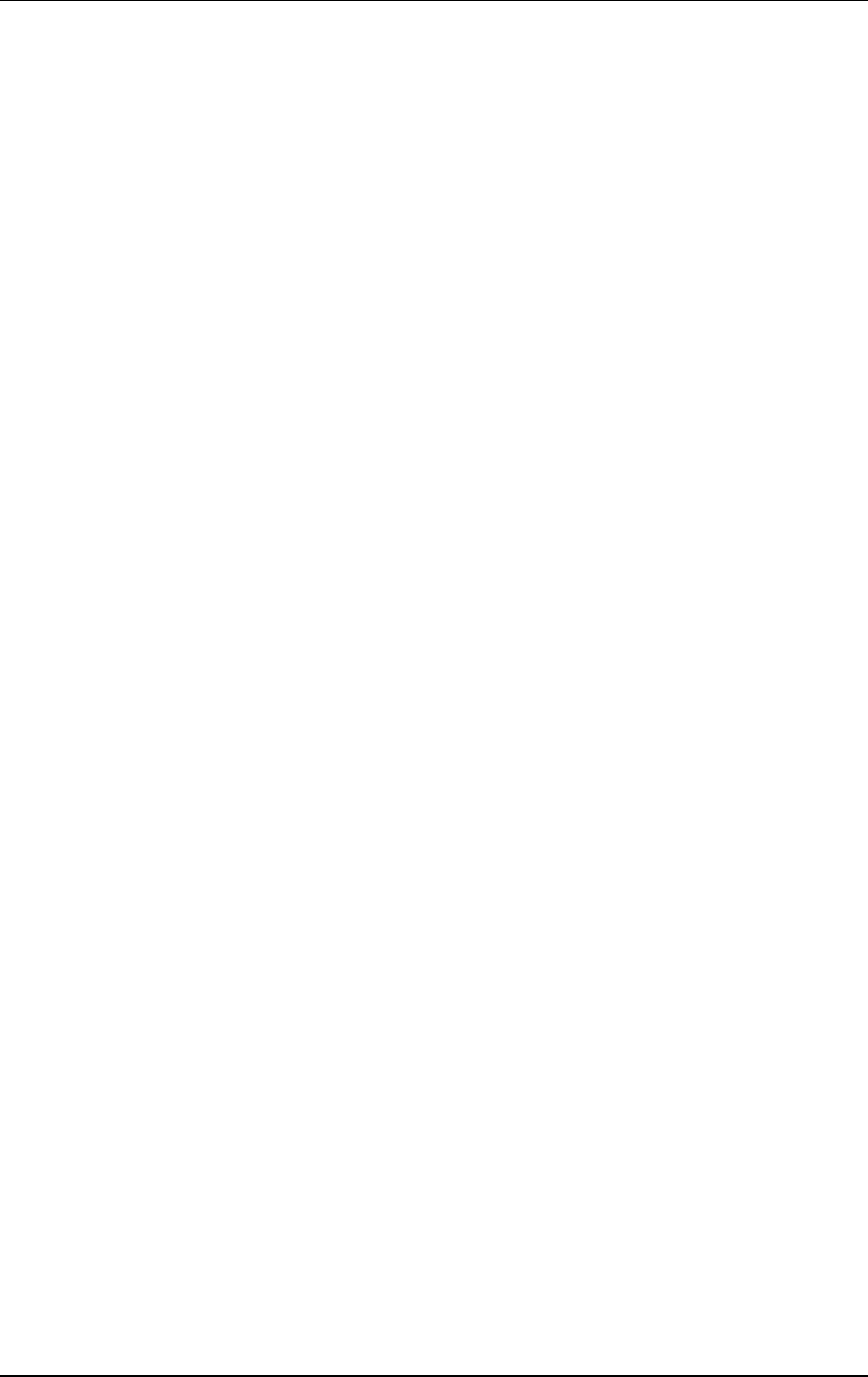
Index
P,Q
P.I.E. Tool.......................................................269
P.I.E. Tool Ethernet And Email Configuration
Screens.......................................................181
P.I.E. Tool Maintenance Screens....................259
Parts Identification ..........................................334
Parts List.........................................................333
Password ........................................................175
Pd With Manual Reset ......................................78
Permissible Wiring Bundling .............................23
Physical Considerations....................................20
PID A ................................................................78
PID B ................................................................78
Pollution Degree ...............................................10
Polynomial Curve Characterizer..........................3
Polynomial Equation .........................................96
Position Proportional Connections ..............11, 37
Position Proportional Control ..........................300
Position Proportional Output Failure ...............318
Position Proportional Simplex .........................106
Power Consumption..........................................15
Power Failure Symptoms................................316
Power Inrush Current........................................15
Power Line Frequency ....................................177
Power Outage.................................................258
Power Outage.................................................243
Power Outages ...............................................242
Power-Up Tests ..............................................308
Pre-Installation Information ...............................13
Process Instrument Explorer...............................8
Program Contents...........................................245
Program Record Sheet – Program #1.............249
Program Record Sheet – Program #2.............251
Program Record Sheet – Program #3.............253
Program Record Sheet – Program #4.............255
Program State.................................................
245
Program T
ermination State.............................245
Proportional Band .......................................50, 54
Proportional Band 2 ........................51, 52, 55, 56
Proportional Band Units ..................................139
Purge ..............................................................157
PV Hot Start....................................................242
PV Tuning .........................................................72
R
Ramp Time Or Rate Segments.......................246
Ramp/Soak Profile Example ...........................248
Rate ............................................................50, 54
Rate 2 .............................................51, 52, 55, 56
Rate Down Value ..............................................59
Rate Up Value...................................................59
Ratio ...............................118, 121, 124, 127, 130
Read Maintenance Set Up Group...................178
Read Onlys .....................................................350
Read Software Options Status........................349
Reading Control Data......................................348
Real Time Clock..........................................4, 268
Real Time Clock Set Up Group.......................172
Recycle Number..............................................245
Register Address Structure.............................337
Register Count................................................337
Relative Humidity........................................82, 86
Relative Humidity ..............................................16
Remote Setpoint Source.................................144
Remote Switching ...........................................219
Removing The Chassis...................................335
Rerun Current Segment ..................................246
Reset...........................................................51, 55
Reset 2............................................51, 52, 55, 56
Reset Program To Beginning..........................245
Reset Totalizer................................................157
Reset Totalizer Value......................................221
Reset Type......................................................175
Reset Units......................................................140
Restore Factory Calibration.............................291
Restore Factory Output Calibration.................303
Restoring Factory Configuration......................330
Reverse Acting Control
...........................137, 146
RS 485...............................................................
8
RS-422/485 Communications Option
Connections ..................................................38
RS422/485 Modbus Rtu Communications
Interface........................................................15
RS-485 And Ethernet Transaction Rates ..........15
RTD Inputs......................................................282
Run/Hold Key..................................................195
Run/Hold Key..................................................242
Run/Monitor The Program...............................257
S
Second Current Output Calibration Procedure297
Second Current Output Range........................152
Security.............................................................. 5
Security Code............................................52, 193
Segment Time Remaining In Hours ................350
Set Point Select Function Key.........................195
Set Up Group....................................................45
Set Up Wiring Procedure For Auxiliary Output296
Set Up Wiring Procedure For Third Current
Output .........................................................298
Setpoint Code Selections................................351
Setpoint High Limit..................................137, 146
Setpoint Low Limit...................................137, 146
Setpoint Program Event Alarms......................258
Setpoint Program Number...............................197
Setpoint Program Read Only ..........................350
Setpoint Program Selection.............................158
Setpoint Programming Event Alarms ..............235
Setpoint Programming-Enhanced ...................... 5
Setpoint Ramp ..................................................58
Setpoint Ramp ................................................242
Setpoint Ramp Final Setpoint............................58
Setpoint Ramp Time .........................................58
Setpoint Ramp/Soak Programming.............5, 244
Setpoint Rate ....................................................58
Setpoint Rate ..............................................5, 242
Setpoint Tracking ............................................145
Setpoints.............................................4, 201, 351
Shed Time.......................................................161
Shed Timer Reset ...........................................354
Slowtune ............................................................ 5
Soak Segments...............................................247
Software Type.................................................350
Software Upgrade Part Number......................332
Software Upgrades..................................331, 335
442 UDC3500 Universal Digital Controller Product Manual March 2012
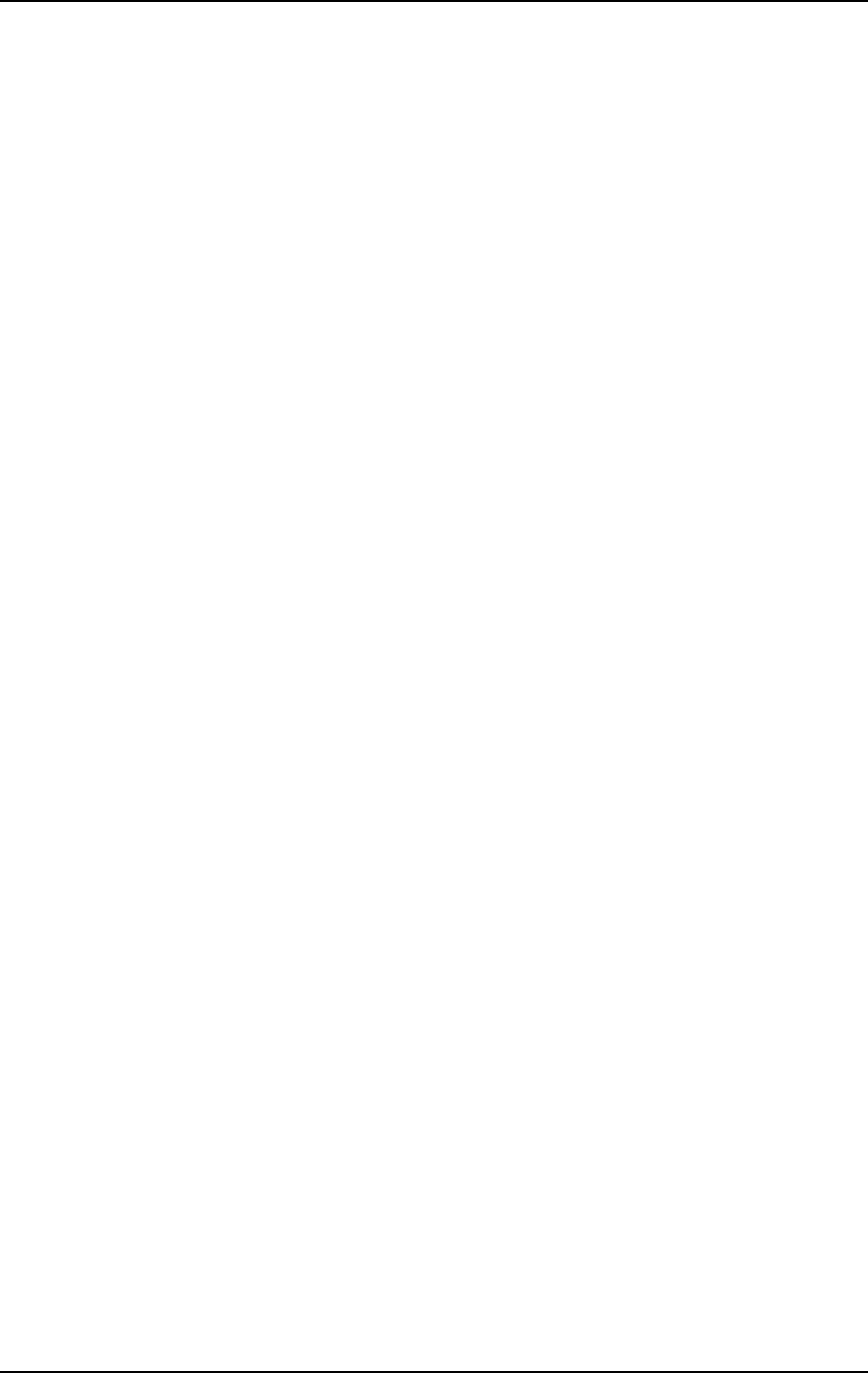
Index
March 2012 UDC3500 Universal Digital Controller Product Manual 443
Software Version.............................................350
Software Version Number...............................307
Solid State Relay Output...................................35
SP Ramp Set Up Group..................57, 63, 66, 69
SP Ramp/Rate/Program#1 – Register Addresses
....................................................................359
SP Ramp/Rate/Program#2 – Register Addresses
....................................................................365
SP Ramp/Rate/Program#3 – Register Addresses
....................................................................371
SP Ramp/Rate/Program#4 – Register Addresses
....................................................................377
SP Tuning .........................................................72
Specifications....................................................13
Start Segment Number ...................................245
Start Up Procedure For Operation ..................199
Status Data .....................................................262
Status Data – Diagnostics History...................263
Status Tests....................................................308
Stray Rejection..................................................13
Summer With Ratio And Bias............................82
Summer/Subtractor.............................................2
Suppression Devices ........................................23
Switch Between Two Sets Via Keyboard ........214
Switching Between Setpoints..........................202
Switchover Value ............................................144
T
Temperature Units ..........................................176
Test Failures ...................................................308
Thermocouple Diagnostic Messages ..............177
Thermocouple Health..........................................2
Thermocouple Inputs Using A Thermocouple
Source.........................................................281
Thermocouple Inputs Using An Ice Bath.........280
Third Current Output Calibration Procedure....299
Third Current Output Range............................152
Three Position Control Step Output Start-Up
Mode...........................................................137
Three Position Step ..........................................79
Three Position Step Control......................37, 300
Three Position Step Control Algorithm............236
Three Position Step Test Failures...................308
Three Relay Board............................................14
Time Current Duplex...............................106, 109
Time Duplex............................................106, 109
Time Event – Register Addresses...................428
Time Events Set Up Group.............................179
Time Proportional Output................105, 106, 109
Time Proportional Output Failure....................321
Time Remaining..............................................203
Time Simplex ..........................................105, 109
Time-Out.........................................................203
Timer.............................................4, 80, 173, 203
Totalizer ..............................................................3
Totalizer Data..................................................267
Totalizer Displays............................................216
Totalizer Function........................................80, 95
Totalizer Reset Via Digital Input......................217
Transmitter Characterization..117, 121, 124, 126,
129
Transmitter Power.............................................. 4
Transmitter Power For 4-20 Ma ............11, 41, 42
Troubleshooting Aids ......................................
306
T
roubleshooting Procedures ...........................315
Troubleshooting/Service..................................305
Tune................................................................205
Tune For Duplex (Heat/Cool) ..........................207
Tune For Simplex Outputs ..............................206
Tuning.........................................................50, 54
Tuning Constants............................................... 5
Tuning Indicators.............................................204
Tuning Loop 1 – Register Addresses ..............356
Tuning Loop 2 – Register Addresses ..............358
Tuning Parameter Sets ...................................132
Tuning Parameter Sets—Loop 2.....................141
Tuning Set Up Group ..................................50, 54
Two Loops Of Control .....................................228
Two Sets Of Tuning Constants .......................213
TX Delay .........................................................161
U
Universal Output Functionality And Restrictions
................................................................24, 25
Universal Switching Power................................. 4
V
Vibration............................................................16
Voltage And Resistance Equivalents For 0% And
100% Range Values....................................276
W,X,Y,Z
Weight...............................................................15
Weighted Average.............................................. 2
Weighted Average Ratio ...................................85
Wiring................................................................22
Wiring Bundling.................................................23
Wiring Connections For Calibrating The First
Current Output ............................................294
Wiring Connections For Calibrating The Second
Current Output ............................................296
Wiring Connections For Calibrating Third Current
Output .........................................................298
Wiring Connections For Dual High Level
Milliampere Inputs.......................................288
Wiring Connections For Radiamatic, Milliampere,
Millivolts, Or Volts (Except 0 To 10 Volts) ..283,
286, 287
Wiring Connections For RTD (Resistance
Thermometer Device) .................................282
Wiring Diagrams................................................24
Wiring The Controller ........................................27
Worksheet.......................................................244
WS Float .........................................................161
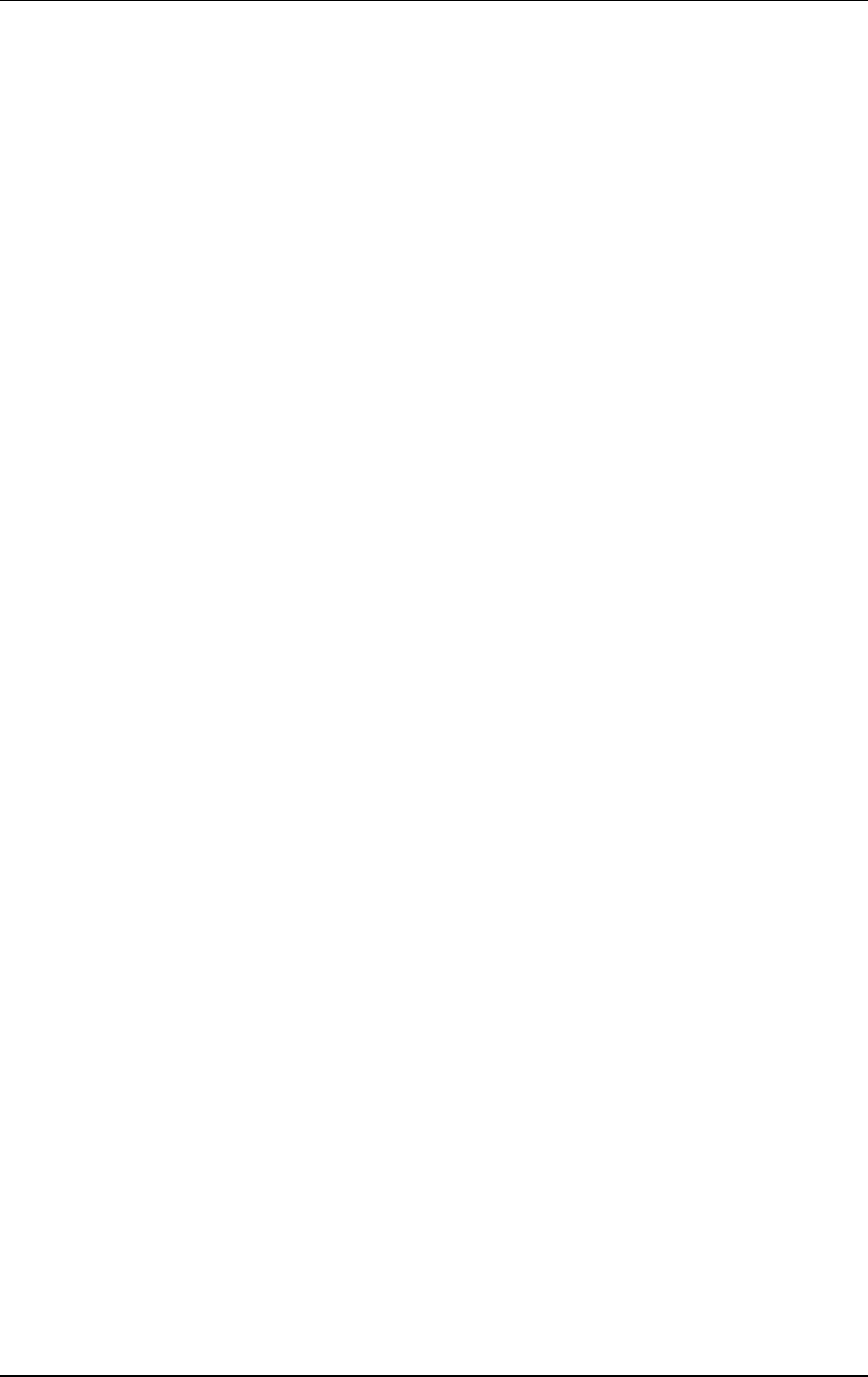
Index
444 UDC3500 Universal Digital Controller Product Manual March 2012
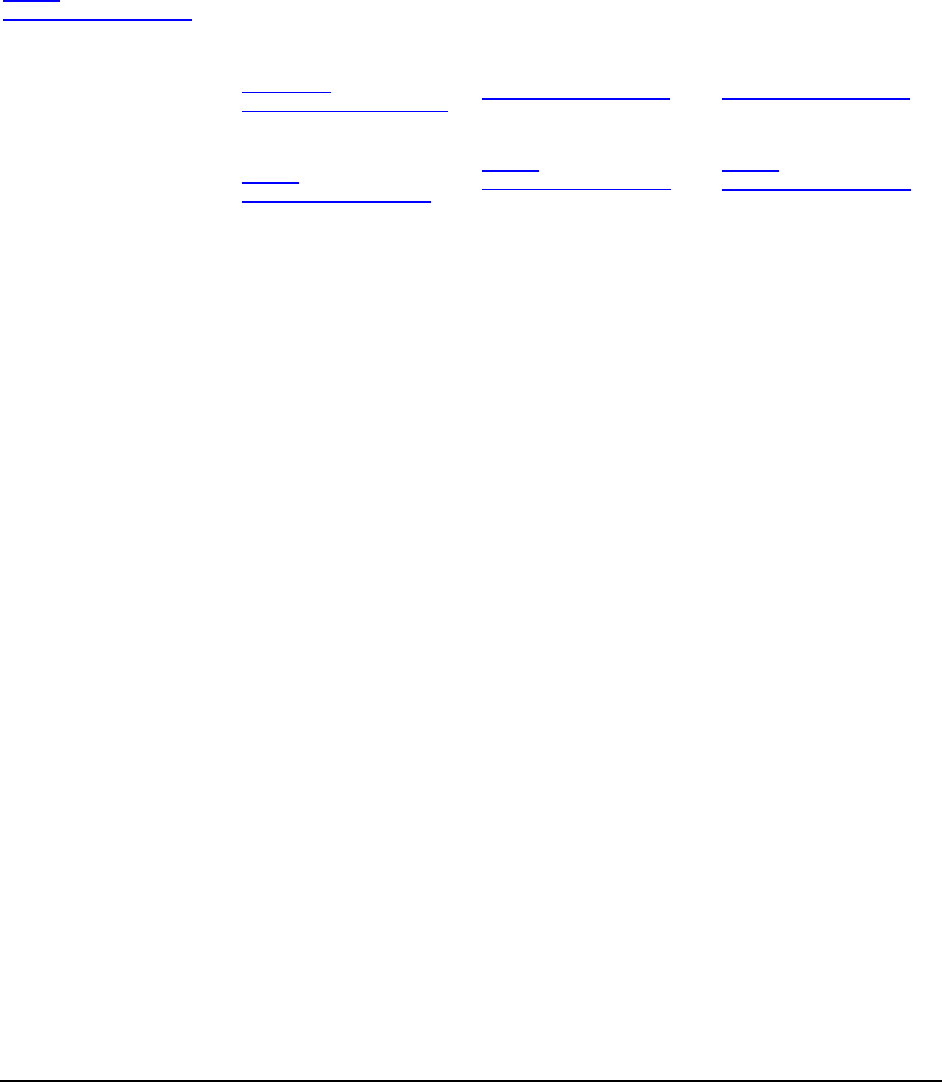
13 Sales & Service
Sales and Service
For application assistance, current specifications, pricing, or name of the nearest Authorized Distributor, contact one
of the offices below.
ASIA PACIFIC
(TAC)
hfs-tac-
Australia
Honeywell Limited
Phone: +(61) 7-3846 1255
FAX: +(61) 7-3840 6481
Toll Free 1300-36-39-36
Toll Free Fax:
1300-36-04-70
China – PRC - Shanghai
Honeywell China Inc.
Phone: (86-21) 5257-4568
Fax: (86-21) 6237-2826
Singapore
Honeywell Pte Ltd.
Phone: +(65) 6580 3278
Fax: +(65) 6445-3033
South Korea
Honeywell Korea Co Ltd
Phone: +(822) 799 6114
Fax: +(822) 792 9015
EMEA
Honeywell Process Solutions,
Phone: + 80012026455 or +44
(0)1202645583
FAX: +44 (0) 1344 655554
Email: (Sales)
sc-cp-apps-
or
(TAC)
hfs-tac-
NORTH AMERICA
Honeywell Process Solutions,
Phone: 1-800-423-9883
Or 1-800-343-0228
Email: (Sales)
or
(TAC)
hfs-tac-
SOUTH AMERICA
Honeywell do Brasil & Cia
Phone: +(55-11) 7266-1900
FAX: +(55-11) 7266-1905
Email: (Sales)
or
(TAC)
hfs-tac-
March 2012 UDC3500 Univ
ersal Digital Controller Product Manual 445

Honeywell Process Solutions
1860 West Rose Garden Lane 51-52-25-120 Revision 4
Phoenix, Arizona 85027 March 2012
www.honeywellprocess.com
2012 Honeywell International Inc.
